new economy
description: economy that is based on digital computing technologies
863 results
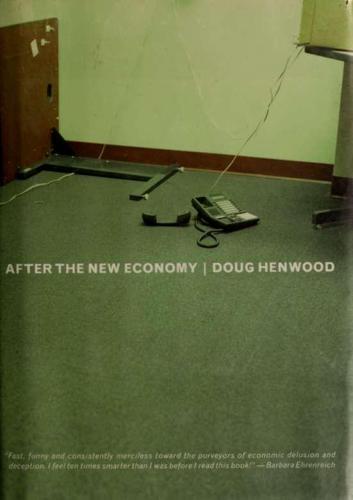
After the New Economy: The Binge . . . And the Hangover That Won't Go Away
by
Doug Henwood
Published 9 May 2005
."^^ The poverty rate among such workers is admittedly low—only around 3%—but these are the best-positioned workers in the labor force, and the poverty line is a pretty undemanding benchmark. As the report's subtide said, "America's Full-Time Working Poor Reap Limited Gains in the New Economy." Inclusion of "the New Economy" isn't just PR spin; as the report points out, "an increase in the relative share of low-skill employment is one characteristic of this 'New Economy...,'" though "low-pay" is more relevant to the analysis than "low-skill."That's not what most New Economy rhetoric emphasized, of course, but the bubble's sales force never deployed much of rigorous evidence. Apologists were quick to point out that the Conference Board's report didn't include the beneficial effects of the Earned Income Tax Credit (EITC), which has boosted the incomes of the working poor dramatically: in 1998, almost 20 miUion returns claimed the EITC, and $32 billion was paid to those who filed them (Herman 2000).That works out to an average of $1,600 per return, which is a lot better than nothing, but which amounts to just $4.38 a day.
…
Though it's sobering to learn that, according to a Scudder Kemper Investments poll, over 80% of Americans have neither heard nor read of a New Economy (reported in Business 2.0, September 12,2000, p. 36). 2. For a classic statement, see Wired's "Encyclopedia of the New Economy" at <hotwired.lycos.com/special/ene/>. There's also former Wired editor Kevin Kelly's "New Rules of the New Economy," <www.wired.coni/5.09/networkeconomy/>, as well as his exuberant but thinly argued expansion of that article into a book. New Rules for the New Economy (Kelly 1999). Kelly—now deposed as editor of Wired, a magazine long past its prime—combines born-again Christianity, Social Darwinism, and classic American huck-sterish optimism into a single package. 3.
…
Lay and his colleagues wanted to Hberate the company from the merely physical world and enter the magical realm of the weightless corporation. 34 After the New Economy where value is created not through production but through inventing and trading complex financial instruments and thinking big thoughts. As Lay told The Economist in June 2000, "We were a new-economy company before it became cool." And The Economist agreed, while worrying a bit about Enron's "hubris." Enron started slowly, at first just trading gas and electricity. But as the 1990s progressed, and New-Economy thinking reached the irrationally exuberant phase, it got into trading more exotic things, like advertising time, telecommunications bandwidth, and even weather derivatives.
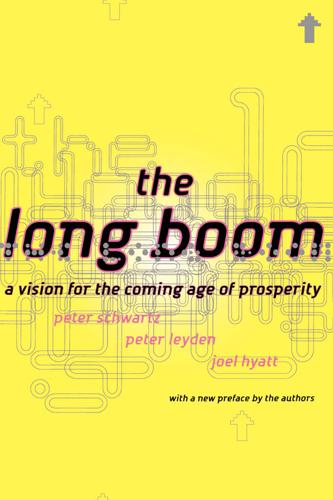
The Long Boom: A Vision for the Coming Age of Prosperity
by
Peter Schwartz
,
Peter Leyden
and
Joel Hyatt
Published 18 Oct 2000
However, by the late 1990s, although businesses had invested an estimated $4 trillion in information technologies, the standard government productivity measurements showed only a slight rise, and that had come only since about 1996. Critics of the New Economy charge that these networked computers are not all that productive—and they point to the government statistics. But New Economy advocates, like us, say the computers are highly productive and are getting more so as we figure out the best ways to work with them. The problem lies in the government measurements, which are rooted in old ways of counting the number of widgets—tangible things—coming off the assembly line, rather than the intangible products of the New Economy, like software and financial packages. On the one hand, we're waiting for new methods to be devised to properly measure productivity in an information economy.
…
The logic of networks does not apply just to technological networks. The New Economy is not called a networked economy just because it is based on networked computer technologies. Networks have become the central metaphor of how we organize work— whether it's through technology or face-to-face. Networking is the key economic activity that we engage in, whether glad-handing at conferences, schmoozing at the office, working the phones, or sending e-mail. But even in this broader economic context, the new rules of network logic apply: Expand the network. And how do we expand the network of the New Economy? Through education. With a new economy driven by knowledge workers in an era called the Information Age, education has never been more important.
…
Without an adequate education, one that includes becoming computer-enabled and globally aware, people will have great difficulty thriving in the new century. Attaining a higher educational level is necessary in the New Economy, but not sufficient. The New Economy moves at a pace never seen before. The rate of innovation and change has become pumped The GuidiNq PRiNciples 269 up to what is called Internet speed. Today's expertise can be rendered irrelevant in a couple of years. The challenge to everyone in the New Economy is not to master a specialty, but to continually learn. Lifelong learning will be the key to success in the future. Individuals will be able to use networked learning processes to continually assimilate new knowledge.

The Rise of the Network Society
by
Manuel Castells
Published 31 Aug 1996
Thus, within the value system of productivism/consumerism, there is no individual alternative for countries, firms, or people. Barring a catastrophic meltdown of the financial market, or opting out by people following completely different values, the process of globalization is set, and it accelerates over time. Once the global economy has been constituted, it is a fundamental feature of the new economy. The New Economy The new economy emerged in a given time, the 1990s, a given space, the United States, and around/from specific industries, mainly information technology and finance, with biotechnology looming on the horizon.118 It was in the late 1990s that the seeds of the information technology revolution, planted in the 1970s, seemed to come to fruition in a wave of new processes and new products, spurring productivity growth and stimulating economic competition.
…
But before undertaking a new stage of our analytical trip, I will recast the argument presented in this chapter. In sum, what is the new economy? The new economy is certainly, for the time being, a capitalist economy. Indeed, for the first time in history, the whole planet is capitalist or dependent on its connection to global capitalist networks. But this is a new brand of capitalism, technologically, organizationally, and institutionally distinct from both classical (laissez-faire) capitalism and Keynesian capitalism. As the empirical record (in spite of all the measurement problems) seems to indicate at the turn of the millennium, the new economy is/will be predicated on a surge in productivity growth resulting from the ability to use new information technology in powering a knowledgebased production system.
…
As the twenty-first century progresses, the biology revolution is likely to join the information technology industry in creating new business, in stimulating productivity (particularly in health care and in agriculture), and in revolutionizing labor, adding to the virtuous circle of innovation and value generation in the new economy. Under conditions of high productivity, technological innovation, networking, and globalization, the new economy seems to be able to induce a sustained period of high economic growth, low inflation, and low unemployment in those economies able to fully transform themselves into this new mode of development. However, the new economy is not without flaws nor without dangers. On the one hand, its expansion is highly uneven, throughout the planet, and within countries, as argued above in this chapter, and as it will be documented in this book (volume I, chapter 4; volume III, chapter 2).

From Counterculture to Cyberculture: Stewart Brand, the Whole Earth Network, and the Rise of Digital Utopianism
by
Fred Turner
Published 31 Aug 2006
In one of the most widely read business manuals of the 1990s, New Rules for the New Economy, Kelly explained that “the principles governing the world of the soft—the world of intangibles, of media, of software, and of services—will soon command the world of the hard—the world of reality, of atoms, of objects, of steel and oil, and the hard work done by the sweat of brows.” The savvy worker would have to become a networker. “Those who obey the logic of the net, and who understand that we are entering into a realm with new rules,” he intoned, “will have a keen advantage in the new economy.”9 Along with this understanding of work, he argued, a singular, almost mystical understanding of the power of information and information systems had begun to arise: “the computational metaphor.”
…
So did the nearly universal use of computers and computer networks in business and, increasingly, in the home. Together, these developments suggested to many at the time, and particularly to politicians and pundits on the right, that a “new economy” had appeared, one in which digital technologies and networked forms of economic organization combined to liberate the individual entrepreneur. In a 1988 speech at Moscow State University, President Ronald Reagan became one of the first to make the case. “In the new economy,” he explained, “human invention increasingly makes physical resources obsolete. We’re breaking through the material conditions of existence to a world where man creates his own destiny.”1 Such a vision was very congenial to many members of the Whole Earth network, and as the economic and technological whirlwinds of the late 1980s gathered speed, Brand and, later, Kevin Kelly, drew heavily on the intellectual and social resources of the group.
…
By the mid-1990s, the technocentric, networked social worlds of the Global Business Network and Out of Control had become widely looked-to examples of the flexibility and individual satisfaction promised by the New Economy. They would soon become emblems of the social possibilities of the Internet and the World Wide Web as well. As they did, they helped shape popular understandings of the New Economy in terms set not only by the New Communalist dream of social transformation, but also by the New Communalist practice of social segregation. Back to the Future at MIT By 1985, despite his founding interest in the WELL, Stewart Brand had begun to get restless.
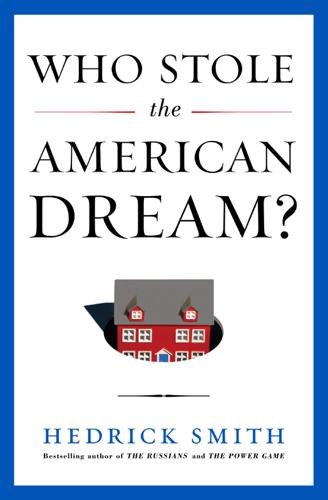
Who Stole the American Dream?
by
Hedrick Smith
Published 10 Sep 2012
Today, two-thirds of Americans—far more than just a couple of years earlier—say they see “strong” conflicts between rich and poor, and they see economics as more divisive than race, age, or ethnic grouping. “The Virtuous Circle” of the 1950s–1970s vs. the New Economy of the 1980s–2000s The New Economy is not smart. It hurts our capacity to grow, as we have seen from America’s painfully slow recovery from the financial collapse of 2008. The job losses and stagnant pay of the New Economy have broken what economists call “the virtuous circle of growth”—long the engine of America’s economic growth and middle-class prosperity. In the heyday of the middle class, for thirty years after World War II, America’s great companies paid high wages and good benefits.
…
THE BUSINESS REBELLION: THE POWER SHIFT THAT CHANGED AMERICAN HISTORY CHAPTER 2. THE PIVOTAL CONGRESS: JIMMY CARTER AND 1977–78 DEMOCRATS CHAPTER 3. MIDDLE-CLASS POWER: HOW CITIZEN ACTION WORKED BEFORE THE POWER SHIFT CHAPTER 4. MIDDLE-CLASS PROSPERITY: HOW “THE VIRTUOUS CIRCLE” WORKED BEFORE THE NEW ECONOMY PART 2: DISMANTLING THE DREAM CHAPTER 5. THE NEW ECONOMY OF THE 1990S: THE WEDGE ECONOMICS THAT SPLIT AMERICA CHAPTER 6. THE STOLEN DREAM: FROM MIDDLE-CLASS TO THE NEW POOR CHAPTER 7. THE GREAT BURDEN SHIFT: FUNDING YOUR OWN SAFETY NET; CRIPPLED BY DEBT CHAPTER 8. THE WEALTH GAP: THE ECONOMICS “OF THE 1%, BY THE 1%, FOR THE 1%” PART 3: UNEQUAL DEMOCRACY CHAPTER 9.
…
“The Great Compression succeeded in equalizing incomes for a long period—more than thirty years,” reported economist Paul Krugman. “And the era of equality was also a time of unprecedented prosperity, which we have never been able to recapture.” IN THE LATE 1990s, Al Dunlap was riding the crest of the New Economy, proud of the fortune he’d made at a string of troubled companies such as Scott Paper and Sunbeam. Dunlap exemplified the New Economy breed of CEOs who had emerged in the 1980s and who came to dominate the corporate landscape in the 1990s. These new business leaders had shed the old philosophy of stakeholder capitalism, where a CEO tried to balance the competing interests of management, employees, and investors and to share the wealth.
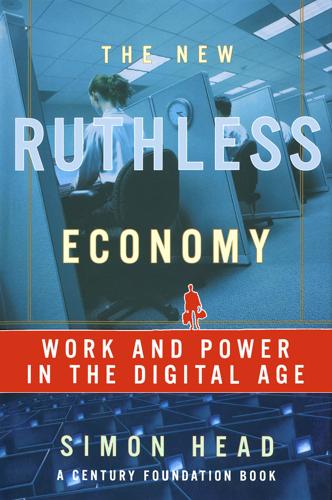
The New Ruthless Economy: Work & Power in the Digital Age
by
Simon Head
Published 14 Aug 2003
In New York City: Roger Alcaly, Nelson Aldrich, Dee Aldrich, Steven Aronson, Elizabeth Baker, Annabel Bartlett, Helen Bodian, Bill Bradley, Ernestine Bradley, Susanna Duncan, Ed Epstein, Frances Fitzgerald, Andrea Gabor, Edward Garmey, Joann Haimson, Alexandra Howard, Philip Howard, Bokara Legendre, Valerie Lucznikowska, Sidney Morgenbesser, Constancia Romilly, Richard Sennett, Sigrun Svavardsdottir, and Lou Uchitelle. Simon Head New Tork City April 2003 I A NEW ECONOMY? A T THE TURK OF THE MILLENNIUM, the U.S. economy was widely celebrated as a "new economy," one sustained by strong investment and low inflation, by steady growth throughout virtually the entire previous decade, by the monetary fine-tuning of the Federal Reserve, and by the renewed global supremacy of U.S. technology. Investment in new information technologies was the great driving force of the expansion.
…
But it was from the industry's trade journals, notably "Casket and Sunnyside," that she came across the singular mix of piety, manipulation, and greed that characterized the industry's in-house dialogue. These two kinds of evidence—the evidence of the trade literature and the evidence of one's own eyes—run strongly counter to one of the most common claims made on behalf of the new economy, that the II 12 THE NEW RUTHLESS ECONOMY "old economy" businesses that make use of IT are coming more and more to resemble the new economy businesses that create and supply that technology, so that the skill, proficiency, and flexibility of the Silicon Valley workforce is showing up all over the economy and at all levels of skill. In 1989 the MIT Commission on Industrial Productivity wrote of "new patterns of workplace organization" in U.S. manufacturing that required the "creation of a highly skilled workforce" and that was incompatible with "the ways of thinking and operating that grew out of the mass production model."20 In 1995 Louis Csoka, then research director for human resources/organizational effectiveness at the Conference Board, a leading corporate lobbyist, described how throughout the economy employees are "working in concert with others, [forming] work groups that become high performing teams through teambuilding, teamwork and interdependence."21 In 1999 human resource experts surveyed by economists Timothy Bresnahan, Erik Brynjolfsson, and Lorin Hitt also claimed that "IT use is complementary to a new workplace organization that includes broader job responsibilities for front line workers, decentralized decision making, and more self-managing teams."22 In 2000 economist Paul David of Stanford, now professor of economics at Oxford, wrote of the "process of transition to a new information-intensive techno-economic regime" with "new kinds of workforce skills" and "new organizational forms" that would "accomplish the abandonment or extensive transformation . . . of the technological regime identified with Fordism."23 Neither the plant and office-level evidence, nor the evidence of the trade literature, supports this vision of a newly skilled workforce empowered by information technology going about its business within autonomous, self-directed teams.
…
At the level of the lower, operational processes, the "customer-facing" side of business—sales, service, marketing—meets this criterion as well as any. All three activities are given pride of place in the rhetoric of the "new economy." They can engage the skills and judgments of employees, and they are all being subjected to a hefty double dose of technological and process reengineering. 79 5 THE CUSTOMER R E L A T I O N S FACTORY I N THE THEORY AND RHETORIC OF THE NEW ECONOMY, few subjects have received more attention than customer relations management, the analysis and then the reengineering of the processes that link a business to its customers.
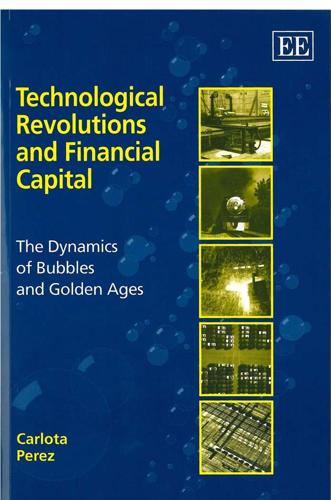
Technological Revolutions and Financial Capital: The Dynamics of Bubbles and Golden Ages
by
Carlota Pérez
Published 1 Jan 2002
New industries have grown, a new infrastructure is in place; new millionaires have appeared; the new way of doing things with the new technologies has become ‘common sense’. One crucial thing is still missing: a systematic articulation of the new regulatory framework and of the appropriate institutions, capable of steering and facilitating the functioning of the new economy in a socially and economically sustainable manner. Each time around, what can be considered a ‘new economy’ takes root where the old economy had been faltering. But it is all achieved in a violent, wasteful and painful manner. The new wealth that accumulates at one end is often more than counterbalanced by the poverty that spreads at the other end.
…
It also explains why the fruits of that new growth potential cannot be fully reaped in the The Propagation of Paradigms: Times of Installation, Times of Deployment 43 first decades, when the accommodation and mutual shaping of society and the new economy occur, pushed by the profit motive in spite of institutional inertia and human resistance. Hence, increasing polarization and decoupling both inside the economy and between the new economy and the old social framework characterize the initial diffusion of a technological revolution. So, the installation period is one of tense coexistence of two paradigms, one declining and the other occupying more and more space on the ground, in the market and in the minds of people.
…
Each technological revolution does then indeed lead to a ‘new economy’. However, it is not, as was widely believed at the end of the 1990s (as at the end of the 1920s), one without cycles and with eternal bull markets in the stock exchange. What is indeed true is that technology is behind the transformations. But this is not, as often held, an unprecedented phenomenon. Equivalent leaps in productivity and similar new product explosions have occurred with each surge. That is what makes development a pulsating process. 146 Technological Revolutions and Financial Capital The new economy that emerges with each technological revolution consists of radical changes in the patterns of investment, production, trade and consumption.
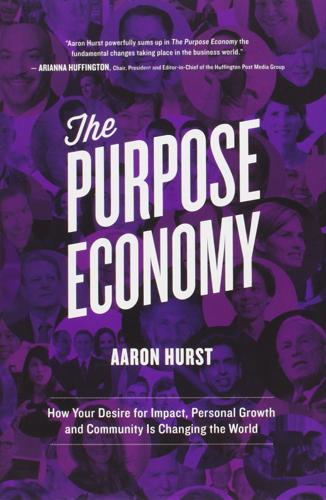
The Purpose Economy: How Your Desire for Impact, Personal Growth and Community Is Changing the World
by
Aaron Hurst
Published 31 Aug 2013
Causecast has built a platform that enables company employees to do everything from volunteering, to donations, to leading cause campaigns. Where information is the currency of the current economy, Ryan believes that “purpose is the currency of the new economy.” Ryan has successfully transitioned from a visionary in the Information Economy to one in the new economy. He sees that “capitalism, if applied creatively, holds the potential to transform the complex social, economic, and environmental challenges facing the world today.” In the next three chapters, I explore how an organization can thrive in the new economy. Chapter 9 scans key industries, how they are changing, and key opportunities to create value. The following chapter provides an overview of how the needs of employees are changing and the ways in which organizations need to adjust to address them.
…
Specifically, the economy was going through another major restructuring, and that just as the Information Economy supplanted the Industrial Economy, and as the Industrial Economy supplanted the Agrarian Economy before it, a new economy had begun to emerge. Like most people, I had come to see technology as synonymous with innovation, jobs, growth, and our future. And while the Information Economy was clearly still the dominant driver of our economic engine, it had become clear to me that a new economy was emerging, one centered on the need for individuals to find purpose in their work and lives. It wasn’t a pollyannaish vision of the future, but rather a natural course in the evolution of the needs of people and the goods, services and jobs they desired.
…
The clues could be found in studying organizations like the Taproot Foundation and other pioneers working on the front lines of the new economy, and in trying to understand how Purpose Economy organizations like Etsy, Interface, and Airbnb differ from their predecessors of even a decade earlier. As I began to study the pioneers of the Purpose Economy, it became clear that marketing, human resources, and strategic planning were giving way to new methods of organizing and working, and that in order to thrive, organizations would need to rethink the ways they were operating in this new economy. And those are just the impacts of the Purpose Economy within organizations.

Make Your Own Job: How the Entrepreneurial Work Ethic Exhausted America
by
Erik Baker
Published 13 Jan 2025
And if it turned out that a prosperous New Economy could coexist with pockets of high unemployment and labor market attrition, policymakers had little incentive to devote the resources their predecessors had once committed to putting people back to work systematically and sustainably. “Government must transform in order to aid the transformation of the New Economy,” Vice President Al Gore proclaimed in a speech at Microsoft’s headquarters in 1997. While policymakers in the old economy could rest content pulling various fiscal and monetary levers “until capital and labor were restored to their proper balance,” New Economy policymakers needed to focus instead on “establishing the proper conditions for innovations to flourish.”6 While the rising tide of innovation was supposed to lift all the New Economy’s boats, an unfortunate fraction of the nation’s vessels remained persistently leaky, threatening to sink beneath what Gore described as a “new wave of change in corporate management.”7 With policymakers’ attention focused on promoting innovation, the duds became, to an ever-greater extent, the charge of private philanthropic actors—“social entrepreneurs,” increasingly imagined as a replacement, not just a supplement, for the public welfare state.
…
Being entrepreneurial meant being willing to shake off the old ways and master the new realities; it meant striving to harness the winds of turbulence, to emerge empowered and prosperous from the difficult interregnum. As the language of the “New Economy” suggested, however, in the late twentieth century it increasingly seemed that the transition was at last complete. After years of wrenching dislocation there was a new status quo. The future had arrived. That was, of course, tremendous news for those who were thriving, which explained the deliriously optimistic tone of much New Economy boosterism: finally, here was prosperity with staying power. But it was equivalently bleak news for those who were still struggling.
…
If everyone else was successfully performing entrepreneurship, then it ought to be a straightforward matter to correct those aberrant failures who weren’t, unless Murray and Herrnstein were right and there was something innately defective about their cognitive wiring. The reappearance of economic stagnation in the twenty-first century saved the entrepreneurial work ethic precisely by sweeping away the routinized entrepreneurship of the New Economy. Many ideas, companies, and management practices of the late twentieth century have persisted, of course, and there’s plenty that feels contemporary in the ideological terrain of the New Economy era. But twenty-first-century American culture no longer takes entrepreneurship for granted: it is once more something precious, even miraculous; in need of incubation and preservation. The apparent end of innovation bemoaned by economists like Gordon and Cowen has, ironically, reenchanted innovation.
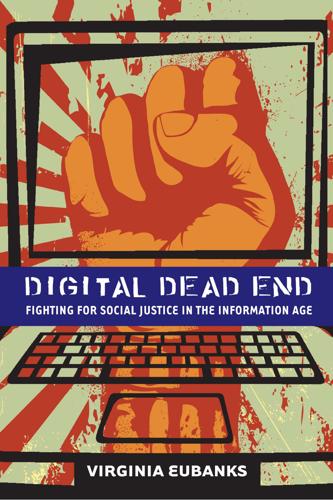
Digital Dead End: Fighting for Social Justice in the Information Age
by
Virginia Eubanks
Published 1 Feb 2011
The distributive paradigm is at work in high-tech economic development schemes, like the Tech Valley initiative, that assume that people struggling to meet their basic needs simply lack technological training and opportunities for high-tech employment. Distributive solutions suggest increasing access to technology and technology training to bootstrap workers into the new economy. Empirically, this strategy is contradicted by the experiences of women in the YWCA community, many of whom have high-tech jobs of various kinds but are still unable to meet their basic needs. The attempt to fit the poor into the new economy also assumes that employment in the new economy will provide a better standard of living for workers. But available jobs in the information economy tend to increase poor and working-class women’s economic vulnerability: the jobs held by women in the YWCA community were often unsustainable, exploitative, and failed to pay a living wage.
…
In the popular press, accounts of the information economy posit that increased instability and volatility can offer more horizontal forms of power, free workers to retool their skills and renegotiate their work arrangements, and sweep away old forms of inequity.12 The combination of new IT and leaner, neoliberal governance, optimists argue, results in rapidly increasing wealth and flatter hierarchies, although these claims have been somewhat muted in recent years.13 The most popular of these narratives, penned by business writers, futurists, and management gurus, often make it to the bestseller lists, suggesting that they tap into widely held hopes 56 Chapter 4 and beliefs about the power of IT and the new economy to dismantle outof-date institutions, decentralize power, and create broad-based equity.14 For example, Kevin Kelly, executive editor of Wired magazine, argues in his 1998 book, New Rules for the New Economy, that the network economy is based on the principles of flux. He writes, “Change, even in its shocking forms, is rapid difference. Flux, on the other hand, is more like the Hindu god Shiva, a creative force of destruction and genesis.
…
While the 17 percent poverty rate for white women in Troy is distressing, more troubling still is the fact that in 2006–2008, 29 percent of Black or African American women in Troy—and more than half of all Latinas—lived in poverty. Volatile continuity produces new configurations of inequality that extend and shift past legacies of oppression and discrimination. Inequities are generated or deepened even in those regions held up as models of new economy success, belying high-tech boosters’ promises of flatter hierarchies and more level playing fields. For example, in Work in the New Economy, Chris Benner’s 2002 case study of shifting labor markets in Silicon Valley, he argues that economic volatility is not primarily a leveling or flattening force; rather, flexibility has both positive and negative impacts on workers.

Listen, Liberal: Or, What Ever Happened to the Party of the People?
by
Thomas Frank
Published 15 Mar 2016
The conservative author George Gilder, one of Reagan’s favorites, wrote one of the earliest and most forceful accounts of the New Economy ideology in his 1989 book Microcosm. 2. The DLC’s think tank was the Progressive Policy Institute; their 1999 report was called “The State New Economy Index.” Other installments were issued periodically throughout the decade to come. Later on, authorship of the index was taken over by the Ewing Kauffman Foundation and the Information Technology & Innovation Foundation, a Washington think tank. The coauthor of the 2007 State New Economy Index, Daniel Correa, later became President Obama’s Senior Adviser for Innovation Policy. 3.
…
It happened in the waning years of the Clinton administration, when the brilliant sunshine of a booming tech sector finally and permanently overcame the dusty tales of old-fashioned woe that used to emanate from places like Decatur, Illinois. The name Americans gave to this rising order was “the New Economy,” a regime of tech-based prosperity unfolding into the future as far as the eye could see. The phrase and the idea behind it had once been popular among conservatives—Ronald Reagan himself used it in a famous speech in 19881—but now Democrats rushed to claim it as their own. In 1999, the think tank run by the Democratic Leadership Council—the onetime champion of conservative Southern Democrats, remember—began issuing a “State New Economy Index,” ranking the states according to how dedicated they were to education, venture capital, and the retention of “managerial/professional jobs,” among other things.
…
But these days, things are different. From the middle of the Great Depression up to 1980, the lower 90 percent of the population, a group we might call “the American people,” took home some 70 percent of the growth in the country’s income. Look at the same numbers beginning in 1997—from the beginning of the New Economy boom to the present—and you find that this same group, the American people, pocketed none of America’s income growth at all. Their share of the good times was zero. The gains they harvested after all their hard work were nil. The upper 10 percent of the population—the country’s financiers, managers, and professionals—ate the whole thing.
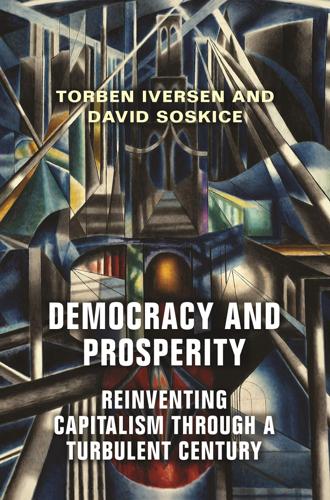
Democracy and Prosperity: Reinventing Capitalism Through a Turbulent Century
by
Torben Iversen
and
David Soskice
Published 5 Feb 2019
Many in the middle classes will see themselves as more closely aligned with the top because they either have good jobs and earnings, or if starting graduates they expect to move up the job ladder, or because they can still reasonably expect to see their children do well by acquiring the education needed in the new economy. We will refer to these groups as the new middle classes because they have made the leap into the new economy, at least from an intergenerational perspective. The old middle classes, by contrast, are those who have experienced stagnating wages because of skill-biased technological change, outsourcing, or import competition from the ECE countries or East Asia—the “hollowing out” of the middle—and who have low expectations that the educational system will allow their children to make the leap into the new economy. The old middle classes are stuck, and they will not simply split the difference between low and high redistribution and taxes by adopting middle positions.
…
Part of the populist reaction is a call to be included in the wealth stream of the new economy, and the key demand of reducing low-skill immigration is largely irrelevant to the knowledge economy. Other policies associated with populism—especially trade protection, state restrictions on product market competition, and serious interference with lifestyle choices—are clearly antithetical to the knowledge economy, but they are unlikely to garner sustained majorities. This is because there is a much more attractive path for the middle classes: namely, inclusion in the stream of wealth created by the new economy and associated support for policies that will produce more of the same.
…
From this perspective, the GGC captures the puzzles identified with the rise of the new knowledge economy because, once again, the transition to this new economy has indeed been linked to higher inequality and, at least for the old middle classes, less mobility. As argued by Hochschild (2016), declining mobility breeds a sense of status loss as the old middle class fails to keep up with others. 5.1.2. THE REBIRTH OF THE CITIES AND THE NEW MIDDLE CLASS In addition to education, a major fault line in the new economy, which also marks the split between the new and old middle classes, is between large cities and smaller towns and rural areas.
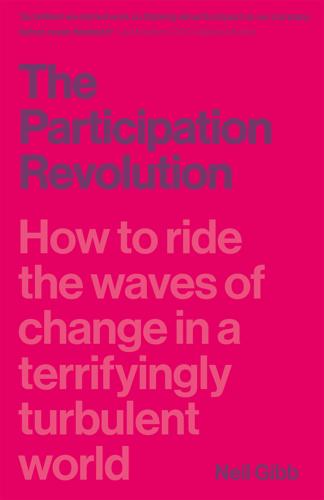
The Participation Revolution: How to Ride the Waves of Change in a Terrifyingly Turbulent World
by
Neil Gibb
Published 15 Feb 2018
Today he works with companies and organisations, helping them transform to thrive in the new economy. He also works with social enterprises, start-ups and recovery communities. This book was a decade in the making, based on experience working in Europe, North America, Australia, Asia, and South America. It’s about transformation – about the emergence of a new social and economic paradigm. It is designed as a manifesto for those who are out to change the world. It provides a framework for transformation in the new economy. And for anyone who might be interested, it shows you how to be a billionaire…in three easy moves.
…
Ben’s words shed light on what the emerging new economy is all about. Rough Trade is a beautifully compact and vivid example of how to pivot and build a successful participatory business in the rapidly emerging new economic order, particularly as it was born from an industry so heavily disrupted by digital tech. In a world where products will increasingly become commodities, where the power of the Internet and digital communications will continually flatten prices, and the monetary value of digital content will tend towards zero, a new economy is emerging that is focused on our higher human needs; our social needs, and what psychologist Abram Maslow rather mysteriously referred to as ‘self-actualisation’, but might more simply be called our ‘spiritual needs.’
…
And that is what I am interested in. The game is on. Which is why this book is really an invitation. How to use this book “We are called to be architects of the future, not its victims” R Buckminster Fuller 1. A manifesto for those who are out to change the world 2. A framework for transformation in the new economy 3. How to be a billionaire – in three easy moves Books are pretty old tech. The basic structure of the modern book goes back to the invention of bookbinding and the printing press. Back then, things were developed in a linear fashion, with a beginning, a middle, and an end. The book had to be a discrete package.
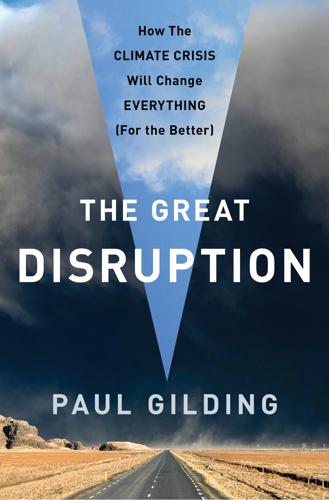
The Great Disruption: Why the Climate Crisis Will Bring on the End of Shopping and the Birth of a New World
by
Paul Gilding
Published 28 Mar 2011
This response will assume we can continue to have economic growth, but that it needs to be more efficient and with lower carbon intensity. Second will be the push to build a new economy with transformational thinking. This will include a shift from consumerism and a physically defined quality of life along with strong moves to more localized economies and stronger global cooperation. Both the old economy and new economy approaches are critical in different phases; it is not a battle between them. However, it is the new economy response that will ultimately become dominant for the reason outlined in earlier chapters—the physical impossibility of continued material economic growth.
…
An existing system is powerful and doesn’t give up its power lightly. Besides, we need them to run the war, something they’re very good at! Indeed, if they don’t run a successful war, we will be building a new economy from the village up with just a few hundred million people and a whole lot less technology and knowledge, making that job far harder and slower. Not to mention the suffering of billions of people on the way to that new starting point. The efforts of those who seek to build a new economy should instead be focused on doing just that: working on building new economic models and ownership structures, developing successful purpose-driven businesses, and driving the transformation in culture and values we will need.
…
At first I thought this was just because I understood it better, with my background as an environmental campaigner and the amount of time I had spent examining the science of sustainability and climate change. It also had the drama of a crisis, making it an easier communications task. To correct this, I spent more time exploring the extraordinary range of exciting activities around the world being undertaken by people preparing for the transition to a new economy. There are so many amazing stories, some of which we’ll cover later, it is easy to get excited about what’s possible. Despite learning a great deal and being inspired by the stories and people I came across, I found that my approach didn’t fundamentally change. It was the Crash that got the attention and energy of both my audiences and me.

Capitalism Without Capital: The Rise of the Intangible Economy
by
Jonathan Haskel
and
Stian Westlake
Published 7 Nov 2017
Authors like Charles Leadbeater suggested we might soon be “living on thin air.” The bursting of the dot-com bubble in 2000 dampened some of the wilder claims about a new economy, but research continued among economists to understand what exactly was changing. It was in this context that a group of economists assembled in Washington in 2002 at a meeting of the Conference on Research in Income and Wealth to think about how exactly to measure the types of investment that people were making in what they were calling “the new economy.” At this conference and afterwards, Carol Corrado and Dan Sichel of the US Federal Reserve Board and Charles Hulten of the University of Maryland developed a framework for thinking about different types of investment in the new economy.
…
Economists and economic policymakers were, quite reasonably, less interested in understanding a purported new economy than in preventing the economy as a whole from collapsing into ruin. Once the most dangerous part of the crisis had been averted, a set of new and rather bleak problems came to dominate economic debate: how to fix a financial system that had so calamitously failed, the growing awareness that inequality of wealth and income had risen sharply, and how to respond to a stubborn stagnation in productivity growth. To the extent that the idea of the new economy was still discussed, it was mostly framed in pessimistic, even dystopian terms: Had technological progress irreversibly slowed, blasting our economic hopes?
…
The excitement of the late 1990s dot-com bubble wasn’t to last. It turned out that making money from the new economy was harder than the investors in Pets.com and Enron had assumed. But the broader idea of investment in ideas, knowledge, and networks, whether enabled by new information technologies or not, endured. In the spring of 2002, with the high-tech NASDAQ index down 65 percent from its dot-com-bubble high, a group of economists began a project to think seriously and rigorously about measuring investment in the new economy. The Conference on Research in Income and Wealth, founded in the United States in 1936 to conduct research into measurement in economics, gathered in Washington under the leadership of Carol Corrado and Dan Sichel, then at the US Federal Reserve Board, and John Haltiwanger, a professor of economics at the University of Maryland.
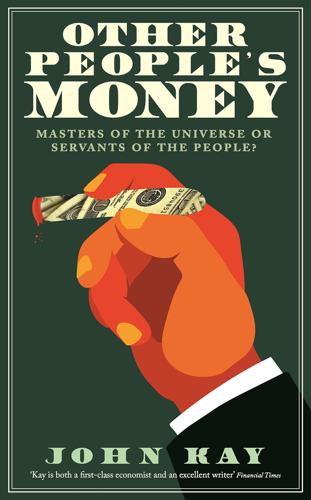
Other People's Money: Masters of the Universe or Servants of the People?
by
John Kay
Published 2 Sep 2015
The dot.com boom began in 1995 with the publication of a research note pointing out the commercial opportunities of the internet from Mary Meeker of Morgan Stanley (who would become known as ‘the internet goddess’) and the flotation of Netscape (which devised the first accessible internet browser).23 By 1999 journalists, consultants and business people talked of a ‘new economy’. Businesses that had never made a penny of profit, and never would, were floated on world stock exchanges at fantastic valuations. The demand for ‘new economy’ stocks spilled over into every business that promoters could associate, however tenuously, with high technology. The last phase of the new economy bubble in early 2000 was aided by the liquidity pumped into the US economy by the Federal Reserve to avert the threat supposedly posed by the ‘millennium bug’: errors in computer programs in handling the date 2000. In the spring of 2000 the new economy boom came to its predictable, if not widely predicted, end.
…
The boundaries between scam, deception, self-deception and mistake are fuzzy. In the new economy bubble some early-stage investors made money, but most stayed on in the hope of making still more. Even highly intelligent people overestimate their ability to time the correction of market mispricing. Legendary investors such as Julian Robertson and George Soros misjudged the new economy bubble and damaged their reputations. Warren Buffett stayed resolutely on the sidelines, and was derided for his failure to ‘get it’. Isaac Newton famously lost money in the South Sea Bubble, an early Ponzi scheme. As the new economy bubble expanded, I asked myself often, ‘Do people in financial conglomerates selling products really believe these things, or are they cynical in their deception?’
…
Since the funds financed start-up losses, the finance involved necessarily took the form of equity, and initially neither investment banks nor retail banks were involved. When the new economy bubble inflated in the 1990s, investment banks aggressively sought mandates to take Silicon Valley business public. Morgan Stanley’s ‘internet goddess’, Mary Meeker, was a pioneer, and Frank Quattrone of Crédit Suisse First Boston was another prominent figure. The ‘new economy’ bubble burst in 2000, and Quattrone would soon spend more time in court than in investor presentations. The operations of the ‘four horsemen’ were subsumed into other divisions of the banks that had acquired them.
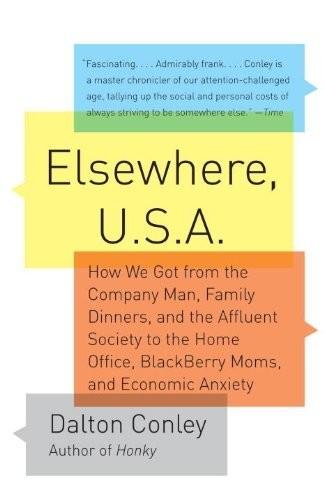
Elsewhere, U.S.A: How We Got From the Company Man, Family Dinners, and the Affluent Society to the Home Office, BlackBerry Moms,and Economic Anxiety
by
Dalton Conley
Published 27 Dec 2008
While individual artists themselves probably attained or retained little power (though, had they purchased their loft conversions, they would have made millions), they spawned a whole new economy. Not only do places like Richmond, Virginia, and even Princeton, New Jersey, now brag that they offer “downtown lofts” (even if some of these are, in fact, new constructions made to look like old industrial conversions), a bohemian-type lifestyle has come to dominate the upper echelons of the new economy. By this I don’t just mean that—as Richard Florida asserts—“creativity” is now cherished and rewarded in a growing sector of the high-wage economy.
…
Alienated from the labor process and product, it thus was inevitable that he was also alienated from himself: The act of creation that had made him uniquely human was no longer possible (never mind that recent studies have shown that chimps are tool creators as well). Finally, he was alienated from other people, since capitalism makes all relations market relations. Mrs. and Mr. Elsewhere are also alienated from their products. The intangibility of the new economy means that we never have a sense of having produced a single actual thing. The “satisfaction” of having earned a 15 percent return for one’s clients or written the language for the contract of the leveraged buyout or talked the patient through their neuroses simply cannot substitute for the leather shoe or wooden chair that we once fashioned with our own hands.
…
Market conquest used to be spatial, that is, global in scale. With periodic crises of capitalism—economic downturns—we continually needed to find new places to sell our “stuff.” Hence colonialism, which solved the problems of finding raw materials and new customers (not to mention cheap labor). Now, with intellectual property laws (key to the new economy) difficult to enforce in emerging markets, a sort of internal colonization is taking place. By internal colonization, I mean that whereas once we sailed the seas in search of new markets for our products and new sources of raw materials and labor, now we do this increasingly domestically by expanding the sheer number and type of markets.

The Secret War Between Downloading and Uploading: Tales of the Computer as Culture Machine
by
Peter Lunenfeld
Published 31 Mar 2011
The NASDAQ, a U.S. market heavy on high-technology firms, was the most important index for the New Economy. It crested in March 2000, and within a year had lost more than half its value, vaporizing trillions in paper profits. The stock market losses for three companies alone—AOL, Amazon, and Yahoo!— amounted to three hundred billion dollars.4 The indexes continued to sink for the next year, and then came the critical event that signaled the complete end of the period inaugurated with the dismantling of the Berlin Wall in 1989. It was on September 11, 2001, that the markets took their next massive hit, and the newness of the so-called New Economy had its last bits of hype sucked out of it.
…
Intergalactic Computer Network and, 108, 152, 168 Machine Histories, 64 Macintosh computer, 165–167 Macrotelevision, 56–60 Madonna, 63 Madrid, 100, 130 Mahabharata, 28 MAKE magazine, 68–69 MAKER Faires, 68–69 Manchester Mark I computer, 18 “Man-Computer Symbiosis” (Licklider), 151 Mandela, Nelson, 113 Mandiberg, Michael, 41–42 Manhattan Project, 150 Manual labor, 3 Many Eyes, 126, 193n37 Mao Zedong, 86 Marinetti, Filippo Tommaso, 44 Markets bespoke futures and, 97–104, 118, 207 INDEX Markets (continued) 120, 127, 131–132, 137–138 capitalism and, 13, 66, 75, 97–100, 104–105 (see also Commercial culture) culture machine and, 156, 161–167, 173 empowerment and, 8 entrepreneurs and, 99, 109, 156–157, 174 FIRE, 99–100 Global Business Network (GBN) and, 113, 115, 191n18 Great Depression and, 107 Greed and, 100 Internet television and, 9 mass culture and, 184n16 NASDAQ, 99 New Economy and, 97, 99, 104, 131, 138, 144–145, 190n3 prosumers and, 120–121 retail, 103–105 scenario planning and, 111–119, 191n19, 192n20 September 11, 2001 and, 99–101, 130 Slow Food and, 5–6 social campaigns and, 190n8 stickiness and, 13, 16, 24, 30–33, 37 technofabulism and, 99–100 textile, 11 unimodernism and, 45, 48, 58–59, 71, 75 Web n.0 and, 81, 83, 86, 90 Martha Stewart Living magazine, 69 MaSAI (Massively Public Applications of the Imagination), xvi, 112, 120–123, 127, 193nn32 Masai tribe, 193n32 Mashing, 25, 54–55, 57, 74 Massachusetts Institute of Technology (MIT), 71, 117, 144, 148, 151 Matrix, The (film series), 39 Mau, Bruce, 55–56, 102, 190n8 Mauchly, John, 148 McDonald’s, 5 McLuhan, Marshall, 2, 14, 116 Meaningfulness, xvi, 173 bespoke futures and, 119, 123, 128– 129, 133 categorization of, 29–30 defining, 27–29 disrupting flow and, 23–24 Enlightenment and, 129–139 play and, 32–34 power and, 32–34 stickiness and, 14, 17, 20 (see also Stickiness) toggling and, 33–34, 43, 102, 197n30 tweaking and, 32–35, 185nn22,23 unimodernism and, 42, 67, 77 uploading and, xvi, 29 Web n.0 and, 79 Mechanical calculator, 149 Mechanization, 44–45 Medium specificity, 56–57 Meliorism, xvi, 127–129, 133, 137–138 Melodium label, 27 Memex, 108, 149–151 Memory, 46–47, 60, 67, 71, 109, 149, 194nn1,6 Metcalfe, Bob, 86–87 Metro Pictures gallery, 41 Michnik, Adam, 104 Mickey Mouse, 65, 88–90 Mickey Mouse Protection Act, 90 Microcinema, 56–60 Microfilm, 149–150 Microsoft, 144–145, 163–166, 172–173, 175, 196n21 Middle-class, 44 Mindfulness, 77, 79, 183n6 bespoke futures and, 123, 129 capitalism and, 4, 13, 66, 75, 90, 103–105 208 INDEX Mindfulness (continued) disrupting flow and, 23–24 info-triage and, xvi, 20–23, 121, 132, 143 stickiness and, 14, 17, 20–24, 27–29, 42 Mobility, 81–82, 128 Modders, 69–70 “Model B32” (Breuer), 45 Modernism, 36–37, 105–108 Modern Times (film), 45 Moore, Gordon, 156 Moore’s law, 156, 195n13 Morpheus, 92 Moses, Robert, 84 Motorola, 116 Moulin Rouge (Luhrmann), 60–63 Mouse, 158–159 MP3s, 2, 27 MS-DOS, 165–166 MTV, 31, 63 Murakami, Takashi, 49 Murger, Henri, 61 Musée du quai Branly, 66 Museum of Modern Art (MOMA), 42, 117 Music bebop, 25–27 calypso, 35–37 hip-hop, 53–54, 61 jazz, 25–27, 160 Napster and, 54, 92 remixing and, 53–55 (see also Remixing) Mutually assured destruction, xi MySpace, 81 Napoleonic Wars, 21 Napster, 54, 92 Narrative, 2, 8 bespoke futures and, 108, 110, 129–139 blogosphere and, xvii, 30, 34, 49, 68, 80, 92–93, 101, 175, 177, 181n7 capitulationism and, 7, 24, 182n1 209 development of computer and, 143– 145, 174, 178 Enlightenment Electrified and, 129–139 gaming and, 188n25 isotypes and, 44, 125, 193n34 negative dialectics and, 29–30 Oprah and, xv, 180nn3,4 samizdat and, 59 storyline and, 59 unimodernism and, 58–59, 67, 71, 76 NASA, 51, 123 NASDAQ, 99 National Center for Biotechnology Information, 81 “Nature Boy” (Cole), 62 Nelson, Ted, 145, 168 Net.art, 52 Netscape, 169 Networks bespoke futures and, 98–101, 108, 112–113, 116, 119–126, 133, 137 commercial, 4–5 (see also Commercial culture) culture machine and, 143–144, 152, 167–168, 172–175, 178 development of computer, 8–9 flexibility of digital, 10 Global Business Network (GBN) and, 113, 115, 191n18 Intergalactic Computer Network and, 108, 152, 168 Metcalfe’s corollary and, 86–87 patio potato and, 10, 13 peer-to-peer, 15, 54, 92, 116, 126 stickiness and, 16–17, 22, 24, 29–36 unimodernism and, 39, 47–48, 54–57, 60, 64–65, 68–69, 73–74 Web n.0 and, 79–95 Neurath, Otto, 44, 125 New Economy, 190n3 bespoke futures and, 97, 99, 104, 131, 138 INDEX New Economy (continued) dot-com bubble and, 145 fantasies of, 104 Hustlers and, 144 Newtonian physics, 118 New York City, 25–26, 84–86, 100, 130 New Yorker, 135 New York Museum of Modern Art, 42 New York Times, 61, 103 NeXT Cube, 167–168 Nirvana, 62 NLS (oN-Line System), 160 Nobel Prize, 156 Norman, Don, 16 Nouvel, Jean, 66 Noyce, Philip, 156 “Nude on a Red Background” (Léger), 45 Obama, Barack, 31 Odyssey (Homer), 28, 94–95 Offenbach, Jacques, 62 Ogilvy, Jay, 113–114 Open source, 36, 189n12 Creative Commons and, 90–93, 123, 173 development of computer and, 144, 170–173, 177 GNU and, 171, 173 Linux and, 75, 169–173, 197n27 Raymond and, 172 Stallman and, 170–171 Torvalds and, 144, 167–173 unimodernism and, 61, 69, 74–75 Web n.0 and, 116, 121–126 Opera, 40, 45, 60–63, 187n18 Oppenheimer, J.
…
The Market with a capital M was the grail at the end of Francis Fukayama’s treatise The End of History.2 The Market was the solution for all questions, the Market would bring peace and prosperity, and would free itself from the tyranny of the business cycle, evolving into an entirely invisible, frictionless, perpetual motion machine that would take the name of the New Economy (again with capital letters).3 This immediate post-1989 period coincided with the most utopian phase of the culture machine: the euphoria of the World Wide Web’s first Wild, Wild West phase. For close to 97 CHAPTER 5 a decade, people talked about bright, posteconomic futures, perfectly transparent global markets, and the glories of pure, unadulterated information flowing around the world at the speed of light.

Lab Rats: How Silicon Valley Made Work Miserable for the Rest of Us
by
Dan Lyons
Published 22 Oct 2018
I came away believing the opposite, that modern workplaces were actually worse than the old companies they were replacing. They were digital sweatshops, akin to the brutal textile mills and garment factories from more than a century ago. After my own “graduation,” I decided to write a book about my experience. I wanted to explain how, after years of writing glowing magazine articles about the new economy, I had ventured into the new economy and found out that most of what I believed was wrong. Disrupted wasn’t meant to be a book about corporate culture. I just hoped to write a funny memoir about a curmudgeonly fifty-something journalist trying (and failing) to reinvent himself while working alongside a bunch of effervescent Millennials in the marketing department of a cult-like tech start-up.
…
On the other side was an auditorium where start-up bros assembled in panels to talk about the new economy. My favorite was a forty-year-old former IBM management consultant, a guy with a law degree and an MBA, who now had launched a company to sell sneakers online and thus had arrived dressed like a teenage skateboard kid: funky T-shirt over a white long underwear shirt, backward baseball cap, ankle-high red sneakers left untied, a giant ring on one hand, and on his left wrist a huge watch and a groovy-dude braided leather bracelet. TechCrunch Disrupt encapsulated everything that had gone wrong with the new economy—the bros and fake bros, the bullshit, the scammers, the hordes of people who wanted to cash in and get rich, by any means necessary.
…
You know these workshops are pointless, and that no one is going to be transformed by Legos. But to keep your job, you must play along. You must deliver a performance and convince management that you are flexible, adaptable, and open to change, the kind of engaged, dynamic worker who meets the needs of the new economy. Basically the company is conducting a large-scale experiment in organizational behavior. They’d like to test out some theories on you. So you all go into the box, and you are poked and prodded with various stimuli to see how you respond. Your office has become a psychology laboratory, run by a bunch of quacks.
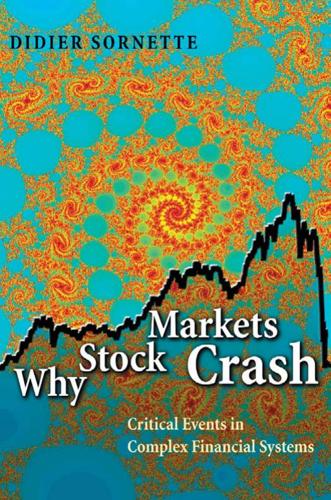
Why Stock Markets Crash: Critical Events in Complex Financial Systems
by
Didier Sornette
Published 18 Nov 2002
Many companies associated with the esoteric high-tech of space travel and electronics sold in 1961 for over 200 times their previous year’s earning. Previously, the traditional rule had been that the price should be a multiple of 10 to 15 times their earnings. This is a story all too familiar! The “tronics boom,” as it was called, actually has remarkably similar features to the New Economy boom preceding the October 1929 crash or the New Economy boom of the late 1990s, ending in the April 2000 crash on the Nasdaq index. The best fit of the DJIA from 1954 to the end of 1961 by the logperiodic power law formula is shown in Figure 7.21. This period of time was followed by a “slow crash,” in the sense that the stock market 268 chapter 7 750 700 650 Dow Jones 600 550 500 450 400 350 300 250 54 55 56 57 58 59 Date 60 61 62 63 Fig. 7.21.
…
This scenario applies essentially to all market crashes, including old ones such as October 1929 on the U.S. market, for which the U.S. market was considered to be at that time an interesting “emerging” market with good investment potentialities for national as well as international investors. In addition, the concept of a New Economy was used profusely in the medias of the time, reminiscent of several other New Economy phases in more recent times, including the recent crash of the Internet bubble documented in chapter 7. The robustness of this scenario is presumably deeply rooted in investor psychology and involves a combination of imitative/herding behavior and greediness (for the development of the speculative bubble) and overreaction to bad news in periods of instabilities.
…
In what amounts to a return to Godley’s argument [162], it has been shown recently that much of the rebound in productivity growth in the late 1990s is a reflection of the strengthening of aggregate demand, rather than a fundamental improvement in the medium- or longer term productivity trend [165, 166]. The crash of the Nasdaq in April 2000, which reflects the collapse of the New Economy bubble, makes concrete that many New Economy industries have been far from delivering the enormous future incomes that were expected. The Aging “Baby Boomers.” Summarizing the world demographic structure and its financial assets by single statistics, as we have done so far, is restrictive and may miss important dimensions of the problem.
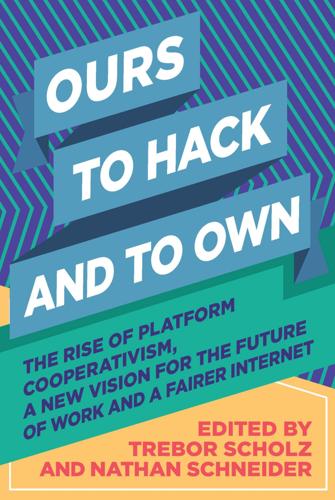
Ours to Hack and to Own: The Rise of Platform Cooperativism, a New Vision for the Future of Work and a Fairer Internet
by
Trebor Scholz
and
Nathan Schneider
Published 14 Aug 2017
As we embark upon building these new models, defining our core values can provide useful guidance to the emergence of a new economic system. The essence of platform cooperativism is a rejection of uneven extraction and an emphasis on cooperativism. This movement is rightly asking: Who are we problem-solving for? What is the impact of the new economy on the workers who are the engine that drives it? Will the new economy be more or less equitable than the old economy? Will there be more empathy in the new economy? Will the new economy work for all of us, or is it an online version of the economy that worked for just a few? At the National Domestic Workers Alliance, we already know what it looks like when the economy optimizes for some of us and extracts value from the least visible of us.
…
In many areas of business, technology, and even manufacturing, organizations rely on certain agreed-upon standards to establish a set of common operating assumptions describing what the system should do—not necessarily how the system should do it. Whether you’re talking about platform co-ops or Silicon Valley giants, we believe a set of values-based specs for the new economy could serve as a guide to embedding dignity and respect into all operations areas—a Good Work Code for the new economy. Our Good Work Code is a set of eight simple principles that can serve as a framework, a guide ensuring that the new platforms are creating good work: Safety: Good work does not allow for us to wonder at the start of a shift if we will be unharmed by the end.
…
The Good Work Code doesn’t introduce any revolutionary new values. It doesn’t innovate or disrupt previous thinking on good work standards. But this framework, or a derivative of it, will be essential to building an equitable platform. We are at the exact right moment in time to insert this framework into the DNA of the new economy, to correct the course so that we’re building a new economy that works for all of us. With the emergence of the platform economy, we have one of those rare opportunities to reset the norms and culture of work. At its best, technology strengthens our humanity and our connectedness. We shape our economy as much as it shapes us, and we have an opportunity to make sure the digital revolution is supported by a long-overdue revolution in values. 34.
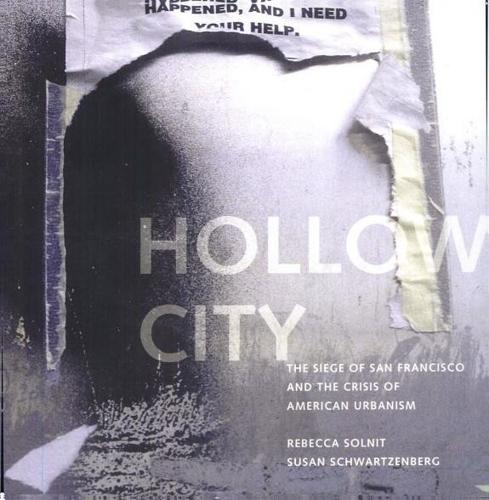
Hollow City
by
Rebecca Solnit
and
Susan Schwartzenberg
Published 1 Jan 2001
and In the old days of gentrification, getting bounced firom a neighborhood meant you just landed somewhere else, but in this available chairs are over the horizon. Exchange is going to going to lose is I Cliff home aren't virtual, Hengst and find out that he's of nine years. The Stock Exchange new economy is virtual: it doesn't require locations. home because the people who work in the new economy and they make more money than he does. The apartment he shares with down be torn moved his boyfriend Scott to make way to L.A. in the last there, too, since no one and the auto body shop below for condos. Cliff month, he like him can San Francisco without tells city in countless ways, Cliff will like a lot talk me, and he artists artist.
…
The march broke up abruptlv of a protester Xew Yuppies on Rhoda Raige. a spoof ston.- Dav s The on selfish- new economy accelerated and equipped use their cars and dispel the safety, accessibilit}' and d\iliD.- carry their private space with them, and privatization of that space; they becomes not just an economic issue but a sodal attitude (expressed in such items as car alarms, tor\- which place the rights of private property in public over the audi- peace of the neighborhood tims of the high-pressure of, say, nmning Literal victims. in dri\Tng . One could new economy, a stop sign to get to San Francisco is regard the privatized as vic- but partidpation in work faster is it likely to create being suburbanized by people evers^ here. even though dri\'ing is at the level a disastrous more who persist form of trans- SKID MARKS ON THE SOCIAL CONTRACT portation in this small, European-scale is scarce in months of most parts of the 2000, being Though San gridlock common, parking and pedestrians were, mowed down in part urban figures of true at the rate in the first three of almost one a week.
…
'Silicon Valley-style economies are what we can look forward to every- where,' says Robert H. Frank, an economist at Cornell University who has HOLLOW 18 CITY long studied the increasing gap between the rich and poor. economy, either you have a lottery who don't When are not the happy about new economy the city's existing culture as in ethnic cultures, are under siege, you don't. And the people it.'"'' arrived in San Francisco, it began to lay waste —culture both in the sense of cultural and of creative activity, artistic and while the racial aspects renewal have often been addressed, ative activity (and, ticket or new 'In this this book and diversity, Both political.
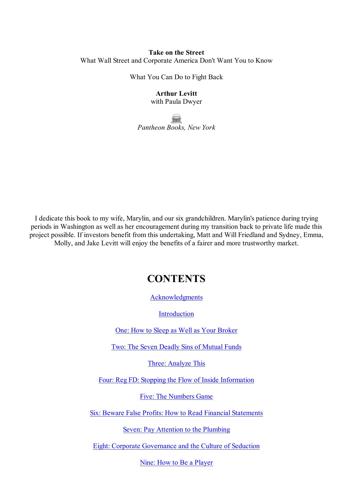
file:///C:/Documents%20and%...
by
vpavan
The trio request a hearing by the panel's securities subcommittee chairman in an effort to slow down the SEC rules until the New Economy issue could be vented. United States Senate Washington, DC 20510 July 21, 2000 The Honorable Rod Grams Chairman Senate Subcommittee on Securities United States Senate Washington, DC 20510 Dear Mr. Chairman: We commend you for taking the initiative to hold a hearing on financial reporting in the New Economy. The hearing began exploration of the challenges that New Economy developments have placed on our traditional accounting standards and securities laws. Indeed, it appears that these standards and laws cannot fully represent the value of many companies in the New Economy. Business reporting is a critical subject that continues to deserve Congressional attention.
…
This especially concerns us because it appears that the SEC has not demonstrated a substantive basis for imposing these far-reaching limitations this year. The SEC would be limiting auditing firms' expertise just when auditors appear to need it most in order to fully assess today's sophisticated New Economy companies. The broader issues of the New Economy require further study by Congress before the SEC implements this rule. Therefore, we believe that it is wholly appropriate for a hearing on the SEC's proposal, and other New Economy business reporting issues. Thank you for your consideration of this important request. Sincerely, Evan Bayh Charles Schumer Robert F. Bennett This letter from ten of the twenty members of the Senate Banking Committee— eight are Republicans and two are Democrats— also seeks to postpone the auditor independence rules.
…
Dingell The accounting industry cited numerous reasons for its opposition to the SEC's auditor independence rules, and one of the major reasons was the "New Economy" argument. In essence, it said that accounting firms had to be able to perform consulting work for audit clients because only then could the accountants develop new ways to measure the value of technology, telecommunications, Internet, and other growth companies that make up the New Economy. This argument is cited in the following letter from three members of the Senate Banking Committee, which also oversees the SEC (Bayh and Schumer are Democrats and Bennett is a Republican).
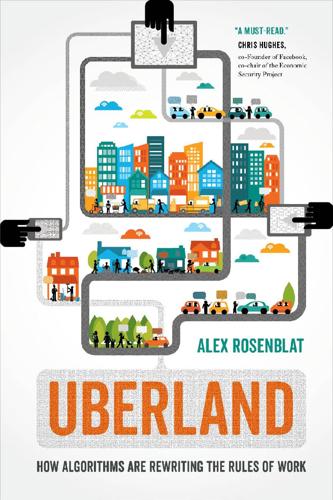
Uberland: How Algorithms Are Rewriting the Rules of Work
by
Alex Rosenblat
Published 22 Oct 2018
These centers of community create an institutional memory that persists even when Uber’s practices change. What remains to be seen is how these drivers and their new workplace practices will influence broader culture—including other jobs and other technology companies—because Uber, as the cultural icon of the New Economy, has already left an indelible mark on far more than ridehailing. HOW DRIVERS ROLL IN A NEW WORLD OF WORK Ridehail drivers are among those in the New Economy adapting to working for a faceless boss. In our early research, my colleague Luke Stark and I found that an algorithmic manager directs how Uber drivers behave and when and where they work, using responsive incentives and penalties that affect their pay.
…
Kaleigh Rogers, “Love in the Time of Ridesharing,” Motherboard, May 27, 2016, https://motherboard.vice.com/en_us/article/yp33yg/love-in-the-time-of-ridesharing-uber-lyft-romance-technology. 70. Lobel, “The Law of the Platform”; Calo and Rosenblat, “The Taking Economy.” 71. Tressie McMillan Cottom, “Credentials, Jobs and the New Economy,” Inside Higher Ed, March 2, 2017, www.insidehighered.com/views/2017/03/02/impact-new-economy-profit-colleges-and-their-students-essay. 72. Alex Rosenblat and Luke Stark, “Algorithmic Labor and Information Asymmetries: A Case Study of Uber’s Drivers,” International Journal of Communication 10, no. 27 (2016): 3762, http://ijoc.org/index.php/ijoc/article/view/4892. 73.
…
R53 R67 2018 (print) | DDC 388.4/13212—dc23 LC record available at https://lccn.loc.gov/2018023686 Manufactured in the United States of America 26 25 24 23 22 21 20 19 18 10 9 8 7 6 5 4 3 2 1 CONTENTS List of Illustrations Acknowledgments Introduction: Using an App to Go to Work—Uber as a Symbol of the New Economy 1. Driving as Glamorous Labor: How Uber Uses the Myths of the Sharing Economy 2. Motivations to Drive: How Uber’s System Rewards Full-Time and Recreational Drivers Differently 3. The Technology Pitch: How Uber Creates Entrepreneurship for the Masses 4. The Shady Middleman: How Uber Manages Money 5.

The Internet Is Not the Answer
by
Andrew Keen
Published 5 Jan 2015
It would be “decentralizing, globalizing, harmonizing and empowering.”25 One of the most frequently quoted books about the Internet economy published in the wake of the August 1995 IPO was Kevin Kelly’s New Rules for the New Economy.26 Kelly’s economic manifesto, which came out as a series of articles he wrote as the founding executive editor for Wired magazine, became an appropriately magical handbook for startup entrepreneurs in the surreal dot-com era. The personally very gracious and well-meaning Kelly, one of the founders of the countercultural WELL BBS and a born-again Christian techno-mystic who would later write a book about how technology has a mind of its own,27 stoked the already irrational exuberance of the late nineties with a new economy manifesto that today reads like a parody of digital utopianism.
…
Martin’s Griffin, 2000), p. 34. 16 Ibid., p. 68. 17 Cassidy, Dot.Con, p. 63. 18 Kaplan, The Silicon Boys and Their Valley of Dreams, p. 243. 19 Clark, Netscape Time, p. 261. 20 Ibid., p. 251. 21 Ibid., p. 249. 22 Ibid., p. 119. 23 Ibid., p. 67. 24 Thomson Venture Economics, special tabulations, June 2003. 25 Nicholas Negroponte, Being Digital (New York: Random House, 1996). 26 Kevin Kelly, New Rules for the New Economy (New York: Penguin, 1997). 27 Kevin Kelly, What Technology Wants (New York: Viking, 2010). 28 Kelly, New Rules for the New Economy, p. 156. 29 Robert H. Frank and Philip J. Cook, The Winner-Take-All Society: How More and More Americans Compete for Ever Fewer and Bigger Prizes, Encouraging Economic Waste, Income Inequality, and an Impoverished Cultural Life (New York: Free Press, 1995). 30 Ibid., p. 47. 31 Ibid., p. 48. 32 “The Greatest Defunct Web Sites and Dotcom Disasters,” CNET, June 5, 2008. 33 Cassidy, Dot.con, pp. 242–45. 34 Stone, The Everything Store, p. 48. 35 Ibid. 36 Fred Wilson, “Platform Monopolities,” AVC.com, July 22, 2014. 37 Ibid. 38 Ibid. 39 Matthew Yglesias, “The Prophet of No Profit,” Slate, January 30, 2014. 40 Stone, The Everything Store, pp. 181–82. 41 Ibid., p. 173. 42 Jeff Bercovici, “Amazon Vs.
…
A quarter century after Tim Berners-Lee’s invention of the Web, it’s becoming increasingly clear that the Internet economy is anything but a cooperative venture. The structure of this economy is the reverse of the technological open architecture created by the Internet’s pioneers. Instead, it’s a top-down system that is concentrating wealth instead of spreading it. Unfortunately, the supposed “new rules” for this new economy aren’t very new. Rather than producing more jobs or prosperity, the Internet is dominated by winner-take-all companies like Amazon and Google that are now monopolizing vast swaths of our information economy. But why has this happened? How has a network designed to have neither a heart, a hierarchy, nor a central dot created such a top-down, winner-take-all economy run by a plutocracy of new lords and masters?
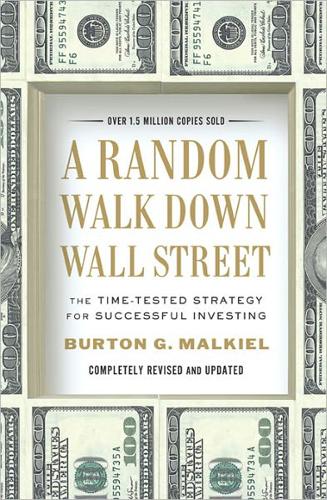
A Random Walk Down Wall Street: The Time-Tested Strategy for Successful Investing
by
Burton G. Malkiel
Published 10 Jan 2011
A few months later, hundreds of Internet companies were bankrupt, proving that the Goldman report was inadvertently correct. The cash burn rate was not a long-term risk—it was a short-term risk. Until that moment, anyone scoffing at the potential for the “New Economy” was a hopeless Luddite. As the chart NASDAQ Composite Stock Index, July 1999–July 2002 indicates, the NASDAQ Index, an index essentially representing high-tech New Economy companies, more than tripled from late 1998 to March 2000. The price-earnings multiples of the stocks in the index that had earnings soared to over 100. NASDAQ COMPOSITE STOCK INDEX, JULY 1999–JULY 2002 A Broad-Scale High-Tech Bubble At the bubble’s height, scoffers were as hard to find as the Maytag repairman.
…
One spectacular example was the rise and subsequent bankruptcy of Enron—at one time the seventh-largest corporation in America. The collapse of Enron, where over $65 billion of market value was wiped out, can be understood only in the context of the enormous bubble in the New Economy part of the stock market. Enron was seen as the perfect New Economy stock that could dominate the market not just for energy but also for broadband communications, widespread electronic trading, and commerce. Enron was a clear favorite of Wall Street analysts. Even after it began to unravel during the fall of 2001, sixteen out of seventeen security analysts covering Enron had “buy” or “strong buy” ratings on the stock.
…
This price increase occurred even when the company’s core business had nothing whatsoever to do with the Net. In the market decline that followed, shares in these companies became worthless. As the following table shows, investors suffered punishing losses even in the leading Internet companies. HOW EVEN THE LEADING NEW ECONOMY STOCKS RUINED INVESTORS Stock High 2000 Low 2001–2002 Percentage Decline Amazon.com 75.25 5.51 98.7 Cisco Systems 82.00 11.04 86.5 Corning 113.33 2.80 99.0 JDS Uniphase 297.34 2.24 99.5 Lucent Technologies 74.93 1.36 98.3 Nortel Networks 143.62 .76 99.7 Priceline.com 165.00 1.80 99.4 Yahoo.com 238.00 8.02 96.4 PalmPilot, the maker of Personal Digital Assistants (PDAs), is an example of the insanity that went well beyond irrational exuberance.
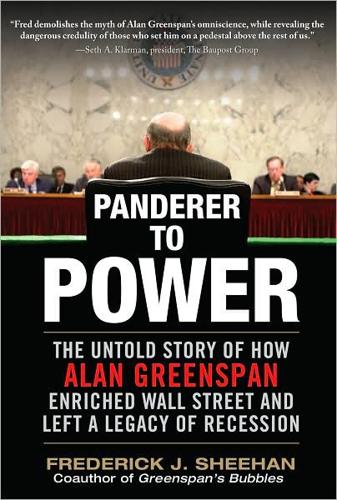
Panderer to Power
by
Frederick Sheehan
Published 21 Oct 2009
The government had designed the Federal Reserve System to monitor money and credit. Greenspan rarely discussed either. 34 John Cassidy, “The Fountainhead,” New Yorker, April 24, 2000. 35Alan Greensan, “The Revolution in Information Technology,” before the Boston College Conference on the New Economy, Boston, MA, March 6, 2000. 36 Ibid. 37 Ibid. 38 Arthur Levitt, “The New Economy,” speech at The Finance Conference 2000, Boston College, Boston, March 6, 2000. 39 Gretchen Morgenson,“A Onetime Highflying Hedge Fund Appears Likely to Shut Down,” “Market Place,” New York Times, March 31, 2000. He may have enjoyed his superstar status to such a degree that he preferred to speak about a hot topic.
…
.… There are those who look back and say ‘I forecasted the recession,’ and I’m saying it was good luck because that’s what it was.”16 The late January 2001 meeting was chock-full of confessions. He finally admitted that he believed in the new era: a description he had deliberately avoided: “I think part of the answer is the new economy. We can’t explain it all [recessions] in terms of the new economy because the model reflects the history of all previous periods.”17 “All previous periods” is all a model can reflect. 14 FOMC meeting transcript, January 30–31, 2001, p. 181. 15 Ibid., pp. 174–181. On February 13, 2001, in testimony before the Senate Banking Committee, Greenspan was upbeat about “strength in capital accumulation and sustained elevated growth of structural productivity over the longer term.”18 An article in the Financial Times reported Greenspan’s testimony under the title: “Greenspan Sees a Quick Rebound.”19 Andy Grove, chairman of Intel Corporation, disagreed.
…
(John Pierpont), 81 Morgan Stanley, 112, 116, 233, 244, 272, 321, 347n.48 Mortgage lenders, 328 Mortgagebacked securities, 266–268, 270–272, 313 Mortgages, 22, 265–280 in 1995, 254 in 2002, 262 in 2004–2005, 293–294 40-year loans, 298 adjustable-rate, 107, 292–293, 328–329, 344 and broker leverage, 272–273 bubble in, 331 collateralized mortgage obligations (CMOs), 130 and Fannie Mae/Freddie Mac, 266–272 FHA (Federal Housing Authority), 273, 277 fixed-rate, 292 FLEX-ARM, 288 held by banks, 312 HELOCs (home equity line of credit), 298 and inflation of 1970s, 44, 63 “Liar’s loans,” 328 negative-amortization mortgages, 107 novel products, 298–299 option ARMs, 298 subprime, 296, 329–333, 340 “2 and 28,” 325 Piggyback mortgages, 298 underwriting systems for, 278–280 Wall Street participation in, 273–277 (See also Home equity loans) Moskow, Michael, 194, 196 Motorola, 207 Mozilo, Angelo, 275, 279 M3, 135 Mullins, David, 137 Mutual funds: in the 1960s, 33 of junk bonds, 80 in late 1990s, 142 and recession of early 1990s, 127 N Nasdaq: in 1995, 139 in 1997, 166 in 1998, 188, 191 in 1999, 191, 215–216 in 2000, 215–216, 219 in 2002, 284 in late 1990s, 145 technology stocks on, 216 Nasdaq 100, 177 Nasdaq Composite Index: in 1999, 188 in 2000, 224, 225, 235 in 2001, 237, 238, 246 in late 1990s, 177 National Association of Realtors, 316 National Commission on Social Security Reform, 83–84 National debt, 305 National Industrial Conference Board, 13 National policy, economists and, 361 National Public Radio, 343 NationsBank, 130 NBCi, 174 Negative-amortization mortgages, 107 Nehemiah Corporation of America, 273, 291 NetGravity, 174 Netscape, 141 New Century Financial Corporation, 165, 278–279, 328, 330 New Economics, 26–27, 39, 121, 350 New Economy, 196 New Economy conference (2000), 222 New Republic, 353 New York City, 2, 36, 352–357 1920s real estate speculation in, 352–353 1970s migration from, 51–52 and early 1990s recession, 114 as leading economic indicator, 22–23 poverty in, 78 New York Federal Reserve Bank, 66 New York Mercantile Exchange, 220 New York Stock Exchange, 19, 33 New York Post, 347 New York Times, 3, 5, 6, 19, 22, 25, 32, 33, 35, 42, 43, 48, 52, 55, 56, 59, 61, 63, 64, 65, 67, 68, 71, 73–76, 82, 83, 84, 86, 90, 92–93, 117, 118, 133, 134, 141–142, 164, 204–205, 212, 217, 221, 223, 236, 239, 245, 278, 279, 283, 294, 299–300, 327, 337–338, 340, 342, 346, 364 New York University, 11, 59 New York University School of Commerce, Accounts and Finance, 11 New Yorker, 53 New York (magazine), 342 Newsweek, 5, 57, 97 Ney, Robert, 277–278 Nikkei index, 216, 246 Nixon, Richard, 4–5, 32, 36, 41, 44 Nobel Prize in economic sciences, 26, 81, 112, 143, 183–184, 187, Nock, Albert Jay, 24 Nonbank banks, 99 O Objectivism, 3, 13–15, 27, 32 Office of Federal Housing Enterprise Oversight (OFHEO), 269 Okun, Arthur, 39, 42, 61 Old Economy, 196 O’Neal, Stanley, 333 O’Neil, C.

Ghost Work: How to Stop Silicon Valley From Building a New Global Underclass
by
Mary L. Gray
and
Siddharth Suri
Published 6 May 2019
,” CBS News, April 9, 2017; “More Robots, Fewer Jobs,” Bloomberg, May 8, 2017. [back] 13. Alex Ross, The Industries of the Future (New York: Simon and Schuster, 2016); Stephen A. Herzenberg, John A. Alic, and Howard Wial, New Rules for a New Economy: Employment and Opportunity in Post-Industrial America (Ithaca, NY: ILR Press, 2000); Chris Brenner, Work in the New Economy: Flexible Labor Markets in Silicon Valley, Information Age Series (Malden, MA: Wiley-Blackwell, 2002). [back] 14. Scott Hartley, The Fuzzy and the Techie: Why the Liberal Arts Will Rule the Digital World (Boston: Houghton Mifflin Harcourt, 2017).
…
For the next five years, we did something our respective research fields had not: we learned about the range of ghost work and the lives of people doing it by conducting one of the most comprehensive studies of its kind. Ghost Work is the first book to illuminate ghost work’s role in building artificial intelligence and the lives of workers who are invisible yet central to the functioning of the internet and the future of automation. It offers an intimate, detailed look at the experience of workers in this new economy. We focus on workers living in India and the United States, the two countries with the largest on-demand labor pools, both with a long, entwined history of technological advancement. Our team interviewed and observed hundreds of people, in their homes and other makeshift workspaces, as they did everything from flag tweets to transcribe doctors’ visits.
…
The companies would hire Indian workers and then disappear three weeks later, leaving unfulfilled promises of paychecks in their wake. That experience has left many young people like Lijo suspicious of online jobs that may be phishing for information or trying to fool them into working for free. Pundits both champion and criticize the flexibility in these labor markets. Champions see flexibility as the saving grace of the new economy, while critics curse flexibility as a source of downward pressure on wages in the sector. Again and again, those doing ghost work are told what an amazing perk it is that they can work anytime, anywhere.5 But more often than not, this so-called perk masks the reality of online work. The most hypervigilant workers, those always looking for the next task, are the most rewarded.
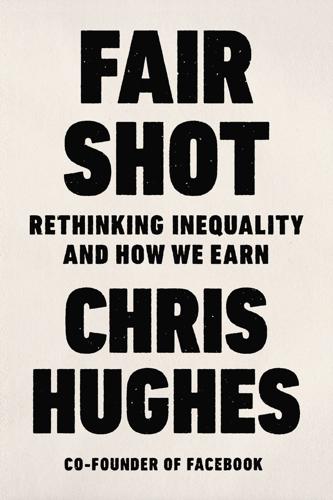
Fair Shot: Rethinking Inequality and How We Earn
by
Chris Hughes
Published 20 Feb 2018
Just the top 0.1 percent of our population—the 160,000 or so families who have $20 million or more—control the same amount as the entire bottom 90 percent of Americans combined. The chasm between the rich and the poor has not been so wide since 1929, the year of the biggest collapse in Wall Street’s history. The problem isn’t that our new economy has fueled the rise of Facebook and mega-winners. It’s that the growth of the ultra-wealthy has come at the expense of everyday Americans. Rapid technological advances, globalization, and financialization are pulling the rug out from under the middle class and lower-income Americans. The same forces that enabled the rise of Facebook, Google, and Amazon have undermined the stability and economic opportunity that most Americans have a right to expect.
…
The blue collar jobs of yesteryear that paid decent salaries and provided benefits have declined from about half of overall jobs 60 years ago to around 20 percent today. A Princeton study found that of all the jobs created between 2005 and 2015, 94 percent of them were contract or temporary, meaning virtually every job we created in the last decade was piecemeal and the income was unreliable. Many of these jobs of the new economy pay poorly, require flexible schedules, and do not offer the stability of benefits or guaranteed pay. People in these jobs are Starbucks and Walmart employees who barely get 20 hours of work a week, babysitters and dog walkers, consultants and delivery people. Some of these workers may get to choose when they work, but they are more often beholden to when the market is ready to employ their services.
…
We don’t need to predict the future to know that we need to respond to the problems of the economy of the present. Regardless of how artificial intelligence evolves, a guaranteed income is the best tool to provide financial stability and opportunity to people who already need it. To understand how our new economy, defined by technological advances and globalization, affects the bottom lines of working people, two researchers, Rachel Schneider and James Morduch, set out to monitor the day-to-day financial behavior of 235 low- and middle-income families over the course of a year. They tracked all money in, all money out, what they spent it on, and why.
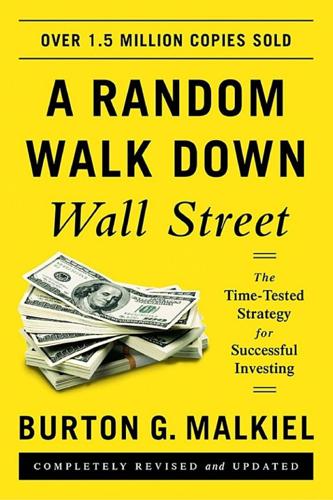
A Random Walk Down Wall Street: The Time-Tested Strategy for Successful Investing (Eleventh Edition)
by
Burton G. Malkiel
Published 5 Jan 2015
A few months later, hundreds of Internet companies were bankrupt, proving that the Goldman report was inadvertently correct. The cash burn rate was not a long-term risk—it was a short-term risk. Until that moment, anyone scoffing at the potential for the “New Economy” was a hopeless Luddite. As the chart on page 81 indicates, the NASDAQ Index, an index essentially representing high-tech New Economy companies, more than tripled from late 1998 to March 2000. The price-earnings multiples of the stocks in the index that had earnings soared to over 100. A Broad-Scale High-Tech Bubble At the bubble’s height, scoffers were hard to find.
…
One spectacular example was the rise and subsequent bankruptcy of Enron—at one time the seventh-largest corporation in America. The collapse of Enron, where over $65 billion of market value was wiped out, can be understood only in the context of the enormous bubble in the New Economy part of the stock market. Enron was seen as the perfect New Economy stock that could dominate the market not just for energy but also for broadband communications, widespread electronic trading, and commerce. Enron was a clear favorite of Wall Street analysts. Even after it began to unravel during the fall of 2001, sixteen out of seventeen security analysts covering Enron had “buy” or “strong buy” ratings on the stock.
…
Standard & Poor’s 500, 179, 181 see also specific funds Nagel, Stefan, 250 NASDAQ, 80–81, 82, 109, 128, 254 National Cash Register, 48, 53 national income changes, as element in systematic risk, 224 National Student Marketing (NSM), 67–68, 69 “naughties,” 344, 411 New Economy, 241, 249 accounting fraud in, 93–95 Internet-driven, 79–97, 104–5 New Economy stocks, 172, 177 New England Patriots, 148 new investment technology, 26, 31, 189–228 alpha in, 219 beta in, see beta CAPM in, see capital-asset pricing model MPT in, see modern portfolio theory risk in, 190 new issues, 257, 318 caution with, 75 of Internet stocks, 84–87 of 1959–62, 57–59 of 1980s, 70–75 Newsweek, 57 Newton, Isaac, 47 New Yorker, 88 New York Post, 89 New York State Teachers Association, 384 New York Stock Exchange (NYSE), 56, 109, 144, 151, 397 Babson Break in, 51–52 speculation in, 48–55 New York Times, 91, 393 Nifty Fifty, 36, 68–70 NINJA loans, 101 Nobel Prize, 35, 183, 197, 209 No-Brainer Step, 379, 380–82 NO-DOC loans, 101 no-equity loans, 100 Non-Random Walk Down Wall Street, A (Lo and MacKinlay), 139 Nortel Networks, 83, 90, 161, 166 NSM, see National Student Marketing NTT Corporation, 76 nucleus theory of growth, 64 NYSE, see New York Stock Exchange odd-lot theory, 149 Odean, Terrance, 93, 234, 246, 256 O’Higgins, Michael, 150 Once in Golconda (Brooks), 49 “one-decision” stocks, 69 online brokers, Internet bubble aided by, 91–92 online investment advisers, 408 OPEC, 337 open-end funds, 402 operating expenses, 402 option premiums, 39 O’Shaughnessy, James, 150 Outlook (S&P), 393 overconfidence, 231, 232–35 overtrading, 234, 255–56 PalmPilot, 83 Paternot, Stephen, 86 P/BV ratios, see price-to-book value ratios P/E effect, 263 P/E multiples, see price-earnings multiples pension funds, 167, 182, 184, 303–4 P/E ratios, see price-earnings multiples performance, 65–68 of buy-and-hold strategy, 158 of common stocks (1970s), 340 of concept stocks, 65–68 of mutual funds, 66, 174–82, 398–400 vs. future results in mutual funds, 399, 401 Performance Systems, 68, 69 Personal Digital Assistants (PDAs), 83 Peters, Thomas J., 233 Pets.com, 84 Philadelphia 76ers, 145 Phillips, Don, 400 Phoenix, University of, 169 Pittsburgh Steelers, 148 Polaroid, 68, 69, 161 Ponzi schemes: Internet investment as, 80, 242 of Madoff, 258–59 ZZZZ Best as, 74 portfolio management, 66, 160–61, 164, 170, 174–84, 261, 349–50, 351, 361–62, 366–67, 389, 398 see also “smart beta” Portfolio Selection (Markowitz), 197 portfolio theory, see modern portfolio theory positive feedback loops, 80 Pound, John, 253 PowerShares, 270, 281 Prechter, Robert, 151–52 present value, 32, 125n price-dividend multiples, 330, 340, 341, 343 price-earnings (P/E) multiples, 57, 64, 65, 126, 264, 274, 336, 344, 346–47, 394–95 of blue-chip stocks, 68 crash in (1970s), 340 cyclically adjusted (CAPE), 347, 387 of growth stocks, 121–23, 130–33, 406 of high-tech stocks, 81 inflation of, 64 performance and, 263, 396 see also performance, of common stocks (1970s); performance, of concept stocks Priceline.com, 83 price stability, 54 price-to-book value (P/BV) ratios, of stocks, 264, 270, 274 price-volume systems, 143–44 Price Waterhouse, 153 Princeton University, 161 probability judgments, 233–34, 238 Producers, The, 166 product asset valuation, 72 professional investors: limitations of, 162–63 profit-maximizing behavior, as argument against technical analysis, 116–17 profits, 339 in inflation, 339 measurement of, 339 profit-sharing plans, 304 Prohibition, 52 property taxes, 314 prospect theory, 243–45 prospectuses, warnings on, 59 PSI Net, 90 psychological factors in stock valuation, see castle-in-the-air theory; technical analysis Puckle Machine Company, 45 Puerto Rico, 404 purchasing power, effects of inflation on, 28–29, 125n, 307, 315 Purdue University, 82 Quandt, Richard, 140 quant, defined, 221n Quinn, Jane Bryant, 91 Qwest, 166 Radio Corporation of America (RCA), 48, 53 railroad industry, 91, 96 RAND Corporation, 197 Randell, Cortes W., 66–68 random events, forecasting influenced by, 164–65, 176 random walk: defined, 26–28, 139, 140 difficult acceptance of, 145–46 fundamental conclusion of, 154 summarized, 35–36 random-walk theory, 105–6, 266–67 assumptions of, 190, 229, 230 fundamental analysis and, 182–84 guide for, 291 and housing bubble, 105–6 index funds and, 379–80 role of arbitrage in, 248–49 semi-strong form of EMH, 26, 182–84 strong (broad) form of EMH, 26, 182–84 technical analysis and, 137–41, 154–57 weak (narrow) form of EMH, 26, 140, 183 Raptor, 94 rate of return: after inflation, 338 for bonds, 194–96, 307, 315–21, 342–43, 344, 345 in CAPM, 213–19 for common stocks, 194–96, 307 compounded, 351 diversification and, 198–200 expected, see expected rate of return future events and, 30, 343–48 high, for bearing greater risk, 194–96, 212–13, 350, 408 investment objectives and, 306–13 negative, 196 for real estate, 313 rebalancing to, 360 risk-free, 215–18 “small caps” vs.
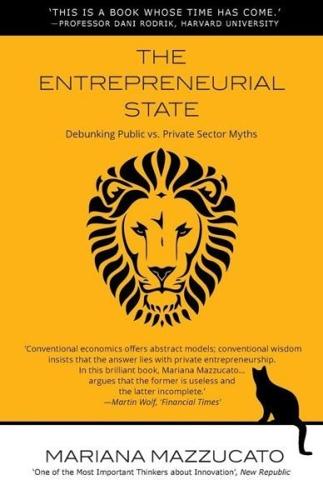
The Entrepreneurial State: Debunking Public vs. Private Sector Myths
by
Mariana Mazzucato
Published 1 Jan 2011
But, today, it is companies like Apple who continue to ride the wave of success, keeping track on only one side of the scoreboard and rigging the end result to their advantage. Apple’s job-creation myth: Not all jobs are created equally Apple is not only a ‘new economy’ company in the sense of the type of technology and knowledge that it makes intense use of, but also in terms of its strategy with the labour market. In this respect, it is useful to first consider the difference between the New Economy Business Model (NEBM) and the Old Economy Business Model (OEBM), emphasized by Lazonick (2009). The latter dominated the US corporate environment from the immediate post–Second World War era until the 1980s, and was characterized by stable employment opportunities in hierarchical corporations, generous and equitable earnings, subsidized medical coverage and substantial defined-benefit pension schemes upon retirement (Lazonick 2009, 2).
…
Patrick 97 Medical Research Council (MRC) 20, 67 Merrick, Sarah 125 meso perspective 36 micro–macro connection 31–2 microprocessors 109 Ministry for Research and Technology (Germany) 149 Ministry of International Trade and Industry (MITI) 37–8, 40; see also Japan Minsky, Hyman 32n3 Minuteman II missile programme 98 Miranda, Javier 45 Mirowski, Philip 49 MIT 24, 178, 178n6 Mitterrand, François 57 Motoyama, Yasuyuki 83–4, 85 Mowery, David C. 61–2 multi-touch screens 102 myths: about business investment requirements 53–5; about entrepreneurship and innovation 22; about innovation and growth 10; of Europe’s problem being commercialization 48, 52–3; government captured by 19; of innovation being about R&D 44, 159–60; of knowledge economy and patents 50–52; of market as self-regulating 30, 195; of small is beautiful 45–7, 142, 160–61; of venture capital as risk loving 47–50, 142 Nanda, Ramana 127 NASDAQ 50 National Academy of Sciences (NAS) (US) 176 National Aeronautics and Space Agency (NASA) (US) 98, 145, 150 National Endowment for Science, Technology and the Arts (NESTA) (UK) 45 National Fabricated Products 150n4 National Institute of Standards and Technology (NIST) (US) 107, 108 National Institutes of Health (NIH) (US): applied research by 136; budgets of 1938–2011 69, 70; creating the wave vs. surfing it 68–71; knowledge base funded by 8; NMEs based on research of 66; spending 25; Taxol royalties 188 ‘national market’ 195 National Nanotechnology Initiative (NNI) (US) 84–6 National Organization for Rare Disorders 82 National Renewable Energy Laboratory (NREL) 151 National Science Foundation (US) 20, 84, 85, 104, 108, 166 National Systems of Innovation perspective 42 NAVSTAR GPS system 105, 109 Nelson, Richard 193 neoclassical economics 33, 186 Netherlands 51, 54 networks: DARPA’s development of 77, 83; innovation 36, 40, 74; linkages of 39; in nontechnologies 83–4; SBIR building of 79, 83; science—industry links 193 New Deal 74 New Economy Business Model (NEBM) 168–9, 172, 177; see also Old Economy Business Model (OEBM) ‘new growth’ theory 34–6, 44, 59–60 new investment in renewable energy 120, 121 Nielsen, Kristian H. 145 Nokia 190 ‘No More Solyndra’s Act’ 130–31n12 Norway 120n4, 121 Novartis 81 Noyce, Robert 98 OECD, GERD (gross domestic expenditure on R&D) as a percentage of GDP in 43 Office of Science and Technology Policy (OSTP) (US) 109 oil company role in solar power 161n8 Old Economy Business Model (OEBM) 168–9, 177; see also New Economy Business Model (NEBM) Organisation for Economic Cooperation and Development (OECD) 18 organizational change 197 Orphan Drug Act (ODA) of 1983 81–2 Osborne, George 51 outsourcing 16, 108 Pacific Solar 152 Parker, Rachel 83–5 Parris, Stuart 44 patents: First Solar’s 151; focus on venture capital and 49; GE’s lead in 148; in knowledge economy 10; myth of knowledge economy and 50–52; ‘patent box’ policy 51–2; pharmaceutical 66; potential government retention of 189; success of as measure of innovation performance 34, 41 Perez, Carlota 117 Perkins, Thomas 57 Pfizer 8, 26, 69, 82 pharmaceutical companies (‘pharma’): funding development of 10, 17, 24; growth from R&D in 44; radical vs.
…
Highlighting the active role that the State has played in the ‘hotbeds’ of innovation and entrepreneurship – like Silicon Valley – was the key to showing that the State can not only facilitate the knowledge economy, but actively create it with a bold vision and targeted investment. This expanded version of the DEMOS report (more than double its size) builds on that initial research and pushes it harder, drawing out further implications at the firm and sectoral level. Chapter 5, dedicated entirely to Apple, looks at the whole span of State support that this leading ‘new economy’ company has received. After looking at the role of the State in making the most courageous investments behind the Internet and IT revolution, Chapters 6 and 7 look at the next big thing: ‘green’ technology. Unsurprisingly we find that across the globe the countries leading in the green revolution (solar and wind energy are the paradigmatic examples explored) are those where the State is playing an active role beyond that which is typically attributed to market failure theory.
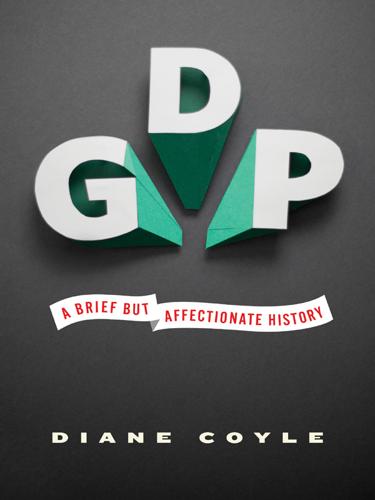
GDP: A Brief but Affectionate History
by
Diane Coyle
Published 23 Feb 2014
This latter trend is thanks in large part to mobile telephones and smartphones. Because separately, telecommunications technology has been revolutionized by a sequence of innovations such as fiber-optic cables, and in particular mobile telephony and other wireless communications. This epoch of the information and communications revolution has spanned forty years. THE NEW ECONOMY BOOM It was obvious by the mid-1980s that a lot of businesses were buying and using computers, but what effect this was having on the economy was not at all apparent. Robert Solow wrote a frequently quoted New York Times Book Review article in 1987 claiming, “You can see the computer age everywhere but the productivity statistics.”4 In fact, it took the convergence of a number of separate streams of technological innovation, plus the investment in new computer and communications equipment, plus the reorganization of businesses to use these new tools, before any benefit in terms of productivity or GDP could occur.
…
In case this change sounds small, remember the power of compound arithmetic, this time operating favorably: at 2 percent a year, GDP will double after thirty-five years; at 3 percent a year after only twenty-four years. The new technologies were shaping up to outdo the Golden Age of the immediate postwar years if this continued. Suddenly, everyone was talking about the New Economy or the New Paradigm. The new technologies seemed to have made possible a lasting increase in the productivity of the economy. Prominent among the enthusiasts was Alan Greenspan, then the long-serving chairman of the Federal Reserve Board. His judgment about the economy’s potential growth rate was crucial because it was his job to use interest rates and monetary policy to choke off growth in demand that would prove inflationary.
…
In his memoir The Age of Turbulence, Greenspan describes his first discussion in 1995 with his Fed colleagues of the possibility of a “paradigm change” in the economy: “I’ve been looking at business cycles since the late 1940s. There has been nothing like this,” he told them. “The depth and persistence of such technological changes appear only once every fifty or one hundred years.”8 He was right—and then he was wrong. From today’s side of the financial crisis, the New Economy hype looks almost delusional. In the United States and elsewhere, GDP has been growing slowly, if at all, for five years (as I write this) and the rate of growth of productivity has slowed correspondingly. For a decade from the mid-nineties to the mid-noughties, though, all the evidence was stacking up in favor of a lasting change for the better in the economy, even looking at the published statistics for GDP.

The New Class Conflict
by
Joel Kotkin
Published 31 Aug 2014
Lex Haris, “The Super Rich Are Mad as Hell—and Doing Great,” CNN Money, January 28, 2014, http://money.cnn.com/2014/01/28/news/economy/super-rich-attack. 15. Nick Sorrentino, “Obama Tilts Playing Field to One Percent,” Detroit News, October 1, 2013. 16. Tyler Durden [pseud.], “David Stockman Explains the Keynesian State-Wreck Ahead—Sundown In America,” Zero Hedge (blog), October 5, 2013, http://www.zerohedge.com/news/2013-10-05/david-stockman-explains-keynesian-state-wreck-ahead-sundown-america; Hibah Yousuf, “Obama Admits 95% of Income Gains Gone to Top 1%,” CNN Money, September 15, 2013, http://money.cnn.com/2013/09/15/news/economy/income-inequality-obama; Alexander Eichler, “Consumption Inequality Keeping Up With Rising Income Inequality: Study,” Huffington Post, April 10, 2012, http://www.huffingtonpost.com/2012/04/10/consumption-inequality-income_n_1413454.html; Alexander Eichler, “Income Inequality Worse under Obama than George W.
…
, p. 14; Tom Hamburger and Matea Gold, “Google, Once Disdainful of Lobbying, Now a Master of Washington Influence,” Washington Post, April 12, 2014; Castells, The Information Age, p. 300. 79. Jigar Shah, “Social Media Won’t Drive a New Economy,” Stanford Social Innovation Review (blog), August 30, 2012, http://www.ssireview.org/blog/entry/social_media_wont_drive_a_new_economy. 80. Lanier, Who Owns the Future?, 8-13. 81. Polanyi, The Great Transformation, p. 249. 82. Lanier, Who Owns the Future?, pp. 8–13; David Graeber, “Of Flying Cars and the Declining Rate of Profit,” Baffler, no. 19 (March 2012): 66–84; Nick Wingfield, “Worries That Microsoft Is Growing Too Tricky to Manage,” New York Times, September 9, 2013. 83.
…
By Census estimates the percentage of young adults living at home has more than doubled to over 20 percent, and by 2020, according to some projections, it will increase even more.55 A Generation of Serfs Not surprisingly, the millennial generation also has the lowest percentage of homeowners of any generation in recent American history. Since 1970, according to the Census, the percentage of households under 34 who own their home has dropped from 41 to 32 percent, with most of the drop coming after 2007.56 Some “new economy” theorists insist that detaching the young from property ownership will lead to a more flexible and buoyant economy, allowing these young workers a greater degree of personal flexibility and geographic mobility.57 In the so-called “creative age,” homeownership is regarded as “overrated” and the proper aspiration is to live in a dense, expensive city, such as San Francisco or Manhattan, where only a fraction of the population can conceivably own their place of residence.58 This marks a significant shift from previous generations.
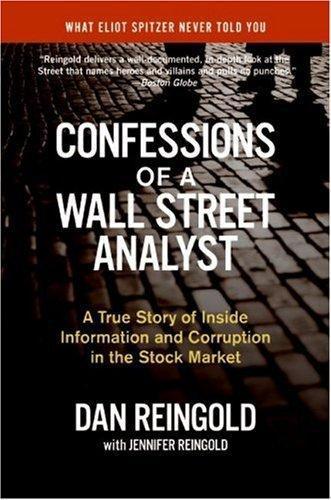
Confessions of a Wall Street Analyst: A True Story of Inside Information and Corruption in the Stock Market
by
Daniel Reingold
and
Jennifer Reingold
Published 1 Jan 2006
Sol Trujillo, a friendly but intense career US West employee who had worked his way up to the top, clearly saw this deal as a way to transform his conservative, slow-growing, dividend-paying telecom company into a high-growth new-economy outfit. He had been enamored with the buzz—and stock prices—these new-economy companies were fetching ever since he had attended the Vortex Conference at Laguna Niguel a year earlier. But neither Global Crossing’s nor US West’s shareholders were enthusiastic about the deal. The conservative US West holders saw it as radical and risky, while Global Crossing’s holders, new-economy-Kool-Aid drinkers, saw it as a waste of money on old, tired assets. Global’s shares, which had hit an all-time record of $64 a share by May 13, fell 30 percent in three weeks, closing at $45.75 on June 2.
…
Jack’s $2.2 billion and our $1.8 billion estimates looked laughable after the first day of trading, when the stock closed at $28, valuing the company at an unbelievable $2.8 billion. We had all dramatically underestimated some things that didn’t figure in to our models at all: the market’s appetite for new economy telecom startups and the degree to which an association with the Internet—a big part of Qwest’s road show—would propel valuations. Yet Jack, even though he had blown up his numbers with an air pump, was still closer to reality than I was. It killed me. Ultimately, Qwest would peak at $66, three years later.
…
The speakers included John Chambers, CEO of Cisco Systems, Internet guru George Gilder, and others. Frank Quattrone, tech banker extraordinaire, was there, mobbed by startups looking for funding or merger partners. Sol Trujillo, CEO of US West, was there, trying desperately to gain some credibility as he tried to transform his company, and himself, from a boring old Baby Bell into a “new-economy” superstar. And Jim Crowe, my flat-topped buddy from MFS, was there, spreading the Internet word again, but this time on behalf of his new company, Level 3 Communications. One afternoon as we sipped cocktails by the Ritz’s pool overlooking the Pacific Ocean, Jim explained to me that Level 3 was going to provide the tubes through which the information economy would flow.
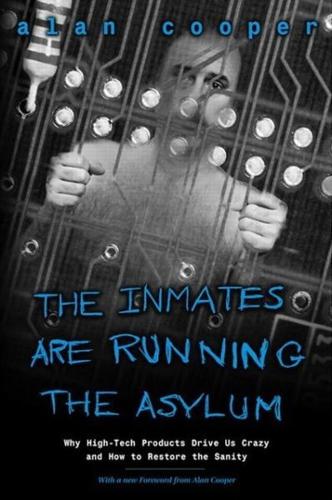
The Inmates Are Running the Asylum
by
Alan Cooper
Published 24 Feb 2004
During the last few years of the twentieth century, as the dot-com bubble inflated, truckloads of ink were used to sell the idea that there was a "new economy" on the Internet. The pundits said that selling things on the World Wide Web, where stores were made of clicks instead of bricks, was a fundamentally different way of doing business, and that the "old economy" was as good as dead. Of course, almost all of those new-economy companies are dead and gone, the venture capitalists who backed them are in shock, and the pundits who pitched the new economy have now recanted, claiming it was all a hopeless dream. The new, new thinking says we must still be in the old, old economy. Actually, I believe that we really are in a new economy. What's more, I think that the dot-coms never even participated in it.
…
And bits don't follow the same economic rules that atoms do. Some fundamental truths hold for both the old and the new economies. The goal of all business is to make a sustainable profit, and there is only one legal way to do so: Sell some goods or services for more money than it costs you to make or acquire them. It follows that there are two ways to increase your profitability: Either reduce your costs or increase your revenues. In the old economy, reducing your costs worked best. In the new economy, increasing your revenue works much, much better. Today's most vital and expensive products are made largely or completely of software.
…
When Pets.com sold dog food over the Internet, it didn't offer better dog food, and it didn't offer a customer experience better than you could get at the local brick-and-mortar pet store; it didn't offer any better information, intelligence, or confidence. All it offered was cheaper shipping, stocking, and selling— variable costs all—for Pets.com. It was a classic industrial-age-economy tactic of cost reduction that ignored the fundamental principles of the new economy. Far from being the first breath of a new economy, it was the last gasp of the old. I am absolutely convinced that you can sell anything on the Internet profitably and successfully. The trick is that your online store must offer a measurably greater degree of shopper satisfaction than any competing retail medium, and price is only one small component of satisfaction.
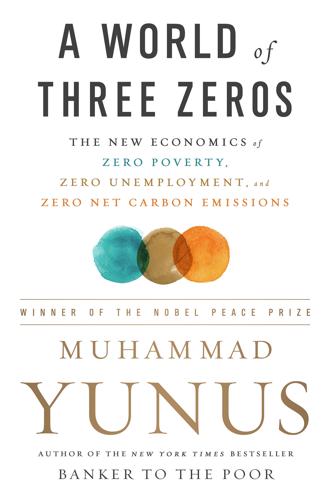
A World of Three Zeros: The New Economics of Zero Poverty, Zero Unemployment, and Zero Carbon Emissions
by
Muhammad Yunus
Published 25 Sep 2017
YSB is a nonprofit organization dedicated to spreading the concept of social business, training and supporting pioneers who are interested in launching social businesses, and working with corporations and business leaders who want to create companies or divisions dedicated to social business. By helping to grow the new economy sector in the countries where it operates, YSB is promoting the emergence of self-sustaining companies that are forging solutions to problems like poverty, unemployment, and environmental degradation. Thus, it is helping to create the new economic structure we badly need to supplement the incomplete structure of traditional capitalism.
…
They can be created in poor countries and small countries as well, involving local and multinational companies that operate there. Eventually, we should be able to use the lessons from these countries to help us design Social Business Action Tanks for many other cities in every region of the world. THE NEW ECONOMY AND THE GOAL OF ZERO POVERTY AS THESE EXAMPLES SUGGEST, THE economic transformation that social business is helping to jump-start gives humankind for the first time the opportunity to create a world without poverty. I am energized by the conviction that poverty is not created by poor people.
…
This gives me hope that a method to fix unemployment that works in one place can eventually work everywhere. Now that GAI has been established on a firm foothold, the next natural step will be to develop a Nobin program to invest in businesses launched by low-income American youth. We’re making plans for such a program, and I hope we will be able to launch it soon. ENTREPRENEURSHIP, THE NEW ECONOMY, AND THE GOAL OF ZERO UNEMPLOYMENT FOR MANY READERS, THE STORY I’ve told in this chapter probably seems paradoxical. Many people, including many economists, consider the United States the most dynamic and innovative capitalist nation in history—and therefore the model of an entrepreneurial economy.
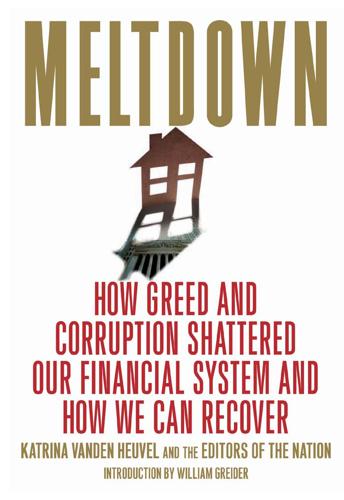
Meltdown: How Greed and Corruption Shattered Our Financial System and How We Can Recover
by
Katrina Vanden Heuvel
and
William Greider
Published 9 Jan 2009
“I don’t think there will be an alternative ideology this time around,” he wrote in August 1998. “There are none.” It is this intellectual unanimity about the nature and the pur pose of economies, as much as the technological advances of recent years, that we refer to when we talk so triumphantly about the “New Economy.” It is this nearly airtight consensus—this assurance that no matter what happens or who wins in November, a strong labor movement and an interventionist government will not be returning—that has made possible the unprecedented upward transfer of wealth that we saw in the Clinton years, that has permitted the bull market without end, and that has made the world so safe for billionaires.
…
It is this nearly airtight consensus—this assurance that no matter what happens or who wins in November, a strong labor movement and an interventionist government will not be returning—that has made possible the unprecedented upward transfer of wealth that we saw in the Clinton years, that has permitted the bull market without end, and that has made the world so safe for billionaires. This is not to say that in the nineties Americans simply decided they wanted nothing so much as to toil for peanuts on an assembly line somewhere, that they loved plutocracy and that robber barons rocked after all. On the contrary: At the center of the “New Economy” consensus was a vision of economic democracy as extreme and as militant-sounding as anything to emanate from the CIO in the thirties. From Deadheads to Nobel-laureate economists, from paleoconservatives to New Democrats, American leaders in the nineties came to believe that markets were a popular system, a far more democratic form of organization than (democratically elected) governments.
…
Businessmen and pro-business politicians have always protested the use of “class war” by their critics on the left; during the nineties, though, they happily used the tactic themselves, depicting the workings of the market as a kind of permanent social revolution in which daring entrepreneurs are endlessly toppling fat cats and picking off millions of lazy rich kids. Wherever the earthshaking logic of the “New Economy” touched down, old money was believed to quake and falter. The scions of ancient banking families were said to be finding their smug selves wiped out by the streetwise know-how of some kid with a goatee; the arrogant stockbrokers of old were being humiliated by the e-trade masses; the WASPs with their regimental ties were getting their asses kicked by the women, the Asians, the Africans, the Hispanics; the buttoned-down whip-cracking bosses were being fired by the corporate “change agents”; the self-assured network figures were being reduced to tears by the Vox Populi of the web.
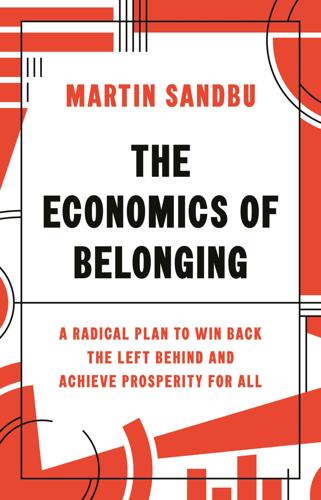
The Economics of Belonging: A Radical Plan to Win Back the Left Behind and Achieve Prosperity for All
by
Martin Sandbu
Published 15 Jun 2020
Since the 1970s, the West has gone through a transformation just as deep as that earlier shift from agriculture to industry, with the source of economic value moving from manufacturing to services. In the old industrial economy, people built physical things. But we no longer need many workers to fulfil our needs for physical products, just as we no longer need many people to grow enough food to feed us. Instead, the new economy puts people to work most productively by using their knowledge to produce immaterial goods and services, to produce physical goods more efficiently, or to invent new ways of doing things—a software algorithm or a fashion design, an entertainment show or a piece of art, an academic research project or a business analysis, a set of corporate accounts or a transport logistics plan.
…
(It is worth noting that those railing against the Western order show curiously little concern for a female-dominated industrial sector such as textile production, which has a much stronger case for having suffered from globalisation.)20 The inexorable logic of economic change and technology-driven productivity means that soft skills are increasingly rewarded, and traditionally “manly” skills no longer attract much pay in the job market. That may well be a psychological burden on those wedded to traditional gender stereotypes, but attempting to restore the stereotype will not help men thrive in the new economy. What will help is a cultural transformation to make men increasingly comfortable doing what used to be seen as women’s work.21 That transformation is at least as profound as the one the other way round—letting women in where they were previously excluded—and takes an effort that is political and legal as well as psychological and cultural.
…
In contrast, an additional $1.00 spent to fund a negative income tax would increase after-tax income by a full $1.39 because wages would also rise.10 The other important effect of introducing a certain, regular payment for all is to make it much easier to shift between jobs. This, as the previous chapter made clear, is an essential part of the new economy, and those countries which have best adapted their economies of belonging to technological change have the highest frequency of job changes. A UBI/NIT removes one important reason why those in the lowest income groups may not move jobs: the risk of running out of money in between stints of employment.

Extreme Money: Masters of the Universe and the Cult of Risk
by
Satyajit Das
Published 14 Oct 2011
Until its spectacular implosion, Enron epitomized the new economy. Under Kenneth “Kenny Boy” Lay and Jeffrey Skilling, the merged Omaha-based InterNorth and Houston Natural Gas evolved from a natural gas producer and pipeline company into a trading company. Enteron, the original selected name of the merged firm, meant “intestine” in Greek and was hastily changed. Enron had “no meaning other than what we make it mean.”8 Enron’s center of gravity was its main trading floor in Houston, not its pipelines or natural gas operations. There was the old economy business—generating and distributing energy. Then there was the new economy business—trading energy and ultimately everything.
…
In the frenzy of low interest rates and rising asset prices, collateral cover and ability to service the loans deteriorated, increasing debt levels to unsustainable levels. A perpetual motion machine indefinitely produces more energy than it consumes. The new economy was a perpetual growth machine, producing high rates of growth using debt. Perpetual motion is a Gedanken—thought experiment—designed to test a hypothesis. The new economy ultimately proved impossible to sustain. Sigmund Freud remarked that: Illusions commend themselves to us because they save us pain and allow us to enjoy pleasure instead. We must therefore accept it without complaint when they sometimes collide with a bit of reality against which they are dashed to pieces.10 The financial crisis was the reality on which the fake pleasure of the Great Moderation and the Goldilocks Economy was smashed.
…
Kazkommertsbank, the second largest bank in Kazakhstan, planned to issue 1,000 cards, at a rate of about 30 a month, to VIP customers. Each card had an annual fee of $1,000 and a credit limit of $50,000, more than twice the limit on MasterCard platinum cards. The instant gratification provided by readily accessible money replaced restraint and deferred consumption. In the new economy, there were three kinds of people: the haves, the have-nots, and the have-not-paid-for-what-they-haves.7 Casino Banking Banks also began to trade financial instruments, taking the advice of Fear of Flying author Erica Jong: “If you don’t risk anything then you risk even more.” Initially, banks traded currencies and government bonds.
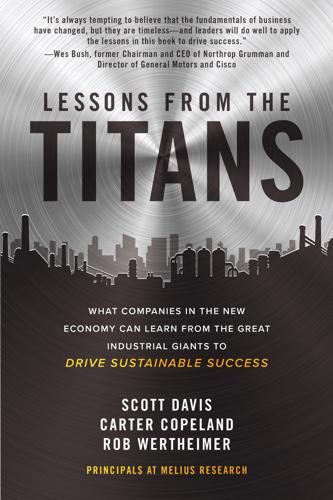
Lessons from the Titans: What Companies in the New Economy Can Learn from the Great Industrial Giants to Drive Sustainable Success
by
Scott Davis
,
Carter Copeland
and
Rob Wertheimer
Published 13 Jul 2020
Contents Cover Title Page Copyright Page Contents ACKNOWLEDGMENTS INTRODUCTION CHAPTER 1 GENERAL ELECTRIC PART I The Jack Welch Years and the Cash Flow Machine That Created the Largest Company on Earth CHAPTER 2 GENERAL ELECTRIC PART II How a Culture of Arrogance Led to the Largest Collapse in American History CHAPTER 3 BOEING A Struggle to Find Balance in Risk Management CHAPTER 4 DANAHER Process-Driven Reinvention CHAPTER 5 HONEYWELL How Cultural Transformation Led One of the Greatest Turnarounds in History CHAPTER 6 UNITED TECHNOLOGIES The Dangers of Fixed Incentives CHAPTER 7 CATERPILLAR Avoiding the Forecasting Trap CHAPTER 8 ROPER The Amazing Untold Story of Brian Jellison and His Timeless Lessons on Compounding CHAPTER 9 TRANSDIGM How to Turn a Million into a Billion CHAPTER 10 STANLEY BLACK & DECKER Adding a Digital Layer CHAPTER 11 UNITED RENTALS Asset Sharing Done Right CHAPTER 12 THE IMPORTANCE OF BUSINESS SYSTEMS AND OTHER KEY LESSONS FROM INDUSTRIALS INDEX ABOUT THE AUTHORS Guide Cover Title Page Lessons from the Titans: What Companies in the New Economy Can Learn from the Great Industrial Giants to Drive Sustainable Success Page List a b i ii iii iv v vi vii viii ix x xi xii xiii xiv xv xvi xvii xviii xix xx xxi xxii xxiii xxiv xxv xxvi xxvii xxviii 1 2 3 4 5 6 7 8 9 10 11 12 13 14 15 16 17 18 19 20 21 22 23 24 25 26 27 28 29 30 31 32 33 34 35 36 37 38 39 40 41 42 43 44 45 46 47 48 49 50 51 52 53 54 55 56 57 58 59 60 61 62 63 64 65 66 67 68 69 70 71 72 73 74 75 76 77 78 79 80 81 82 83 84 85 86 87 88 89 90 91 92 93 94 95 96 97 98 99 100 101 102 103 104 105 106 107 108 109 110 111 112 113 114 115 116 117 118 119 120 121 122 123 124 125 126 127 128 129 130 131 132 133 134 135 136 137 138 139 140 141 142 143 144 145 146 147 148 149 150 151 152 153 154 155 156 157 158 159 160 161 162 163 164 165 166 167 168 169 170 171 172 173 174 175 176 177 178 179 180 181 182 183 184 185 186 187 188 189 190 191 192 193 194 195 196 197 198 199 200 201 202 203 204 205 206 207 208 209 210 211 212 213 214 215 216 217 218 219 220 221 222 223 224 225 226 227 228 229 230 231 232 233 234 235 236 237 238 239 240 241 242 243 244 245 246 247 248 249 250 251 252 253 254 255 256 257 258 259 260 261 262 263 264 265 266 267 268 269 270 271 272 273 274 275 276 277 278 279 280 281 282 283 284 285 286 287 288 289 290 291 292 293 294 295 296 297 298 299 300 301 302 303 304 305 306 307 308 309 310 311 312 313 314 315 316 317 318 319 320 321 322 Praise for Lessons from the Titans In every era, it is always tempting to believe that the fundamentals have somehow changed.
…
These principles exist, they are time tested, and our aim is to share them with you. WHY INDUSTRIALS ARE THE PERFECT SECTOR TO ANALYZE As veteran analysts, we’ve had a front row seat for the market’s two-decade-old obsession with disruption, digital transformation, market dominance, and cultish leadership. But as the era of the “new economy” shows early signs of maturation, the question becomes, What companies will endure and continue to grow—and how? The answer comes from an unlikely place: the big industrial companies that have chugged along successfully, many of them for decades. They are the market’s original tech sector. (See Figure I.1.)
…
And in the same context, if Danaher can win by focusing on manufacturing excellence and cash generation, then so can you. This book—a hardheaded explication of what companies can do to thrive and prosper in the coming environment—will equip you with the insights, strategies, and tactics to ensure that you count your organization among the winners in this new economy. CHAPTER 1 GENERAL ELECTRIC PART I The Jack Welch Years and the Cash Flow Machine That Created the Largest Company on Earth BY SCOTT DAVIS Our first case study is the biggest story of them all, the amazing and disheartening narrative of a signature American company that rejuvenated its business a number of times and then faltered, in one of the largest erosions of shareholder and reputational value in history.
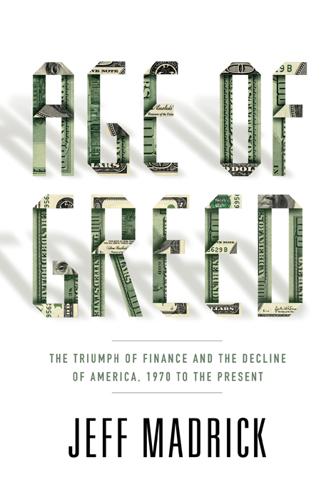
Age of Greed: The Triumph of Finance and the Decline of America, 1970 to the Present
by
Jeff Madrick
Published 11 Jun 2012
Rothbard, The Panic of 1819 (New York: AMS, 1962). 14 THE ECONOMIST WROTE IN 1999: The Economist, September 29, 1991, quoted by Jeff Madrick, The Business Media and the New Economy, Joan Shorenstein Center, Harvard University, December 2001, p. 13. 15 AS LATE AS 2000: Peter Schwartz and Peter Leyden, “The Long Boom: A History of the Future, 1980–2020,” Wired, July 1997. 16 THERE WAS BROAD SUPPORT: “Question: Is There a New Economy?,” Speech by Alan Greenspan at the University of California, Berkeley, September 4, 1998. 17 THE MEDIA PAID GROWING ATTENTION: Madrick, The Business Media and the New Economy. 18 FORTUNE ANALYZED HOW JACK WELCH: Betsy Morris, “Tearing Up the Jack Welch Playbook,” Fortune, July 11, 2006. 19 CORPORATIONS WILL NORMALLY MINIMIZE: Alan Murray, “Inflated Profits in Corporate Books Is Half the Story,” Wall Street Journal, July 2, 2002, cited by Partnoy, Infectious Greed, p. 210. 20 THE SUPREME COURT RULED: Central Bank of Denver v.
…
Greenspan was convinced that computer technologies were at last taking hold across American business, meaning that the nation could get rising output per worker—more productivity—and pay substantial raises without raising prices. He became the leading government advocate of a New Economy. In fact, in 1997 the unemployment rate fell to 4.5 percent, far lower than economists—even Democratic economists—believed possible without stoking inflation. And long-term interest rates were falling sharply. From mid-1998 to the end of 1999, the Dow Jones Industrials rose roughly 4,000 points from about 7,500 to 11,500 on the conviction there was a New Economy, and the unemployment rate fell to nearly 4 percent without stimulating inflation. The extreme government deficits turned into sizable surpluses, as tax revenues rose with incomes and the capital gains taken on the rising stock market.
…
The commercialization of radio in the 1920s and 1930s and television in the 1950s were every bit as rapid as the spread of the Internet. The financial media were swept up in the speculative fever. In 1996, references to the “New Economy” of the Internet were relatively few, but by 1997, these references grew rapidly and by 1998 they were ubiquitous. BusinessWeek, Fortune, and Forbes were all advocates. The Economist wrote in 1999 that “this is not just a matter of accumulating extra capital. The new economy is about the specific potential to change the way businesses work and thereby yield a quantum shift in productivity.” The increase in the rate of productivity growth rose almost to the rates reached in the 1950s and 1960s, but any “quantum” shift remained starry-eyed myth.
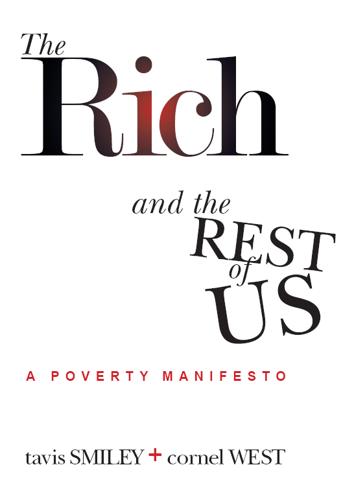
The Rich and the Rest of Us
by
Tavis Smiley
Published 15 Feb 2012
Poverty refused to discriminate on the basis of religious creed or ethnic identity.1 While many whom we met fit what some define as the “old poor” (people who were impoverished before the beginning of the “Great Recession” in late 2007), we were also gathered with shockingly large numbers of the “new poor”—citizens who were once bona fide members of America’s middle class, whose lives have been ravaged by the new economy’s middle class. They are the grandchildren and great grandchildren of a generation that embodied artist Norman Rockwell’s American Dream. They once possessed relatively predictable and reasonably comfortable lives until they were inexplicably cast into a maelstrom of economic dispossession and spiritual despair.
…
In a very real sense, no matter which recovery prognosticators you believe, now’s the time to hold the government accountable while simultaneously holding ourselves accountable as we regain the capacity to “do-for-self.” At the January 2012 symposium, Suze Orman emphasized “personal responsibility” and learning “how to make more out of less” as necessary strategies for survival in the new economy. “You need to know what to do with money, who to give it to, how to invest it in your retirement plans, and how to be able to take care of yourself in the future,” Orman cautioned. “Because my biggest fear is that they’re just going to keep pushing all of this down the road. You’re not going to have Medicare.
…
While 60 percent of the jobs lost during the economic downturn were in mid-wage occupations, 73 percent of the jobs added have been in lower-wage occupations such as cashiers, stock clerks, and food preparation workers. The Post Office, once a middle class safe haven for nonskilled workers, recently announced a downsizing plan that will eliminate 35,000 jobs. Where and how will those workers be absorbed in the new economy? 4. Minorities receive the majority of government entitlements. False: Nearly half (48.5 percent) of all Americans, live in a household that received some type of government benefit in the first quarter of 2010, according to Census data. Seventy percent of food stamp recipients are white. 5.
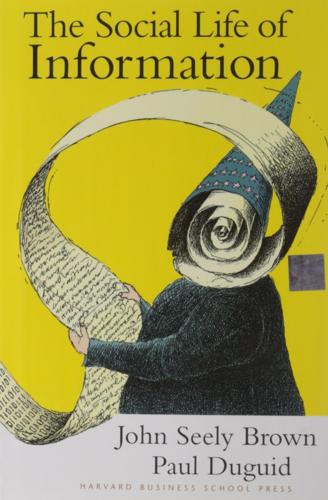
Social Life of Information
by
John Seely Brown
and
Paul Duguid
Published 2 Feb 2000
"Intelligent Agents, Markets, and Competition: Consumers' Interests and Functionality of Destination Sites." First-Monday [Online] 4 (6). Available: http://firstmonday.org/issues/issue4_6/jonkheer/index.html [1999, July 21]. Kelly, Kevin. 1997. "New Rules for the New Economy." Wired [Online] 5.09 (September). Available: http://www.wired.com/wired/archive/5.09/newrules.html [1999, July 21]. . 1998. "New Economy? What New Economy?" Wired [Online] 6.05 (May). Available: http://www.wired.com/wired/archive/6.05/Krugman.html [1999, July 21]. Kenney, Martin, and Urs von Burg. 1999. "Technology and Path Dependence: The Divergence between Silicon Valley and Route 128."
…
JOHN HAGEL, Partner, McKinsey & Company, and Author of Net Worth "Despite all predictions that the information revolution will bring us a bloodless workplace of machines and Dilberts, Brown and Duguid show us that human interactions, human conversations, and human meaning will still form the beating heart of business. Wonderful! A necessary read for everyone interested in the new economy." W. BRIAN ARTHUR, Citibank Professor, Santa Fe Institute "In The Social Life of Information, Brown and Duguid help people throughout business, academia, government, and society at large to better understand that information technology can have an appropriate and positive impact only if we design technology and social systems holistically.
…
Rather, they are parts of profound and often dramatic shifts in society's dynamic equilibrium, taking society from one kind of complex arrangement to another, as a quick review of a few Ds will suggest. Dimensions of the Ds Much talk about disaggregation and demassification readily assumes that the new economy will be a place of ever-smaller firms, light, agile, and unencumbered. It was once commonplace, for example, to compare the old Goliath, GM, against the new David, Microsoft. As Microsoft's market capitalization passed GM's, the latter had some 600,000 employees and the former barely 25,000. The difference is stark.

The People's Platform: Taking Back Power and Culture in the Digital Age
by
Astra Taylor
Published 4 Mar 2014
(Income polarization was actually increasing at the time, the already affluent becoming ever more so while wages for most U.S. workers stagnated at levels below 1970s standards.)3 The wonders of computing meant skyrocketing productivity, plentiful jobs, and the end of recessions. The combination of the Internet and IPOs (initial public offerings) had flattened hierarchies, computer programming jobs were reconceived as hip, and information was officially more important than matter (bits, boosters liked to say, had triumphed over atoms). A new economy was upon us. Despite the hype, the new economy was never that novel. With some exceptions, the Internet companies that fueled the late nineties fervor were mostly about taking material from the off-line world and simply posting it online or buying and selling rather ordinary goods, like pet food or diapers, and prompting Internet users to behave like conventional customers.
…
Rebecca Solnit wrote movingly of the negative consequences of the first dot-com boom on San Francisco in her book Hollow City: Gentrification and the Eviction of Urban Culture (New York: Verso, 2001) and has written similarly astute observations on the effects of the latest boom on the community. Rebecca Solnit, “Google Invades,” London Review of Books 35, no. 3 (February 7, 2013). 2. Doug Henwood, After the New Economy (New York: The New Press, 2003), 1. 3. Alan Greenspan, “The American Economy in a World Context,” 35th Annual Conference on Bank Structure and Competition of the Federal Reserve Bank of Chicago, Chicago, May 16, 1999; Henwood, After the New Economy, 79 and 86. 4. Ibid., 201 and 217. 5. Tom Rosenstiel, “Five Myths About the Future of Journalism,” Washington Post, April 7, 2011. 6. Eli Pariser, The Filter Bubble: What the Internet Is Hiding from You (New York: Penguin Press, 2011), 49. 7.
…
Barring notable anomalies like Amazon and eBay, online shopping failed to meet inflated expectations. The Web was declared a wasteland and investments dried up, but not before many venture capitalists and executives profited handsomely, soaking up underwriting fees from IPOs or exercising their options before stocks went under.4 Although the new economy evaporated, the experience set the stage for a second bubble and cemented a relationship between technology and the market that shapes our digital lives to this day. As business and technology writer Sarah Lacy explains in her breathless account of Silicon Valley’s recent rebirth, Once You’re Lucky, Twice You’re Good, a few discerning entrepreneurs extracted a lesson from the bust that they applied to new endeavors with aplomb after the turn of the millennium: the heart of the Internet experience was not e-commerce but e-mail, that is to say, connecting and communicating with other people as opposed to consuming goods that could easily be bought at a store down the street.
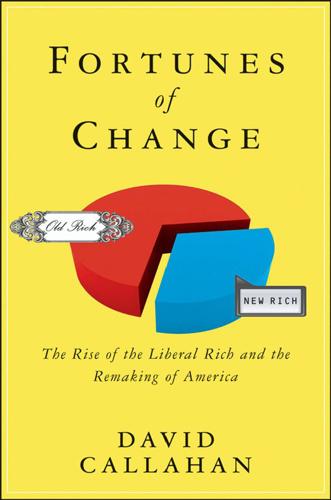
Fortunes of Change: The Rise of the Liberal Rich and the Remaking of America
by
David Callahan
Published 9 Aug 2010
In River Oaks, Obama drew support from John Arnold, a thirtysomething hedge fund whiz who has built a $4 billion fortune through energy trading. Arnold got his start at Enron, where he had earned an $8 million bonus in 2001 for Internet-based trading, just before the company collapsed. Raised in Dallas by a lawyer dad and an accountant mom—typical parents for a new-economy billionaire—Arnold and his wife, Laura, gave more than $120,000 to the Democratic Party in 2008. (Laura is not the kind of wife you would have met in River Oaks in earlier times; she holds degrees from Harvard, Yale, and Cambridge and left a high-powered law career to focus her philanthropic energies on poor kids.)
…
Farther to the west, Austin has long been an island of blue in a sea of red. There was a time when the city’s liberalism was primarily due to its high concentration of government workers, college professors, and pot-smoking twenty-somethings who hung around town for the music scene. More recently, the city has emerged as a center of the new economy and a popular destination for go-getters with fancy degrees. Besides computer-related industries, Austin has scores of biotech firms. The number of patents coming out of Austin jumped from seventyfive in 1975 to two thousand in 2001. The “People’s Republic of Austin” used to be a middle-income city.
…
Of the paltry 13 billionaires on the 1982 list, 5 had made their fortunes in oil. By 2008, nearly half of the billionaires on the Forbes list—190 people—derived their wealth from financial services, technology, and media or entertainment. Only 51 billionaires got rich from oil, gas, chemicals, manufacturing, mining, and lumber. Many of the new-economy rich are trending Democrat, while the old-economy rich are more likely to be Republican. There are a number of reasons for this. For starters, these two groups can have different views of wealth creation. If you work in the knowledge economy, you may tend to see wealth creation as a collective enterprise, not as stemming from Ayn Randian individual heroics.

As the Future Catches You: How Genomics & Other Forces Are Changing Your Work, Health & Wealth
by
Juan Enriquez
Published 15 Feb 2001
He has looked at flowers as well as a myriad of other industries in various books, including The Competitive Advantage of Nations, Competitive Advantage, and Competitive Strategy. 7. A lot of people have written on this phenomenon of a new economy; one of my favorites is Wired editor Kevin Kelly. Many of the ideas in this chapter come from his book New Rules for the New Economy (New York: Viking, 1998). Peter F. Drucker has also been detailing these changes for decades, starting with The End of the Economic Man (1939). See also his Post-Capitalist Society (1993). 8. Robert Metcalf, founder of 3Com, argues the value of a network is proportional to the square of the number of people in it. 9.
…
Those who controlled the mines, owned the exclusive rights to a product, or had the only copy of something could become very wealthy. Today it is just the opposite. (Of course, there are still some fuddy-duddy economists using ever more complex equations to try to convince you that some basic economic “laws” haven’t changed … that there is no new economy.) Even though there are still many exclusive gewgaws we can buy … With a brand name … Expensive … These goods are not what drive most economic growth. And therefore those who control these products … are no longer the richest people in the world. WHEN YOU ARE TRYING TO SPREAD, AND SELL, KNOWLEDGE … KEEPING SOMETHING “EXCLUSIVE” AND “RARE” OFTEN LEADS TO A LOSS OF VALUE.
…
Chile, often cited as the shining example of Latin American economic reform … Carefully followed the recommendations of the most orthodox Ph.D.s in economics … Nicknamed the “Chicago Boys” … For a decade, its economy grew spectacularly. But even Chile may be headed toward a crash … Because it took the inefficiency out of the old economy … But failed to build a new economy. Two commodities, copper and cellulose, represent 40 percent of Chile’s total exports … Most of what Chile exports contains very little technology. One can get a sense of how knowledge-intensive an economy is by dividing: If the resulting ratio is greater than one, the country exports more knowledge-based products than raw materials.
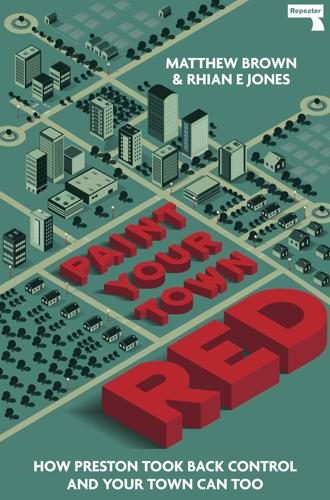
Paint Your Town Red
by
Matthew Brown
Published 14 Jun 2021
Its work includes: • Developing a new vision for UK coastal towns: https://neweconomics.org/campaigns/blue-new-deal • An online platform mapping new economy projects around the UK: https://letschangetherules.org • Support for a Green New Deal: https://neweconomics.org/about/our-missions/green-new-deal • The New Economy Organisers Network (Neon) — runs workshops to learn how “to build support for a new economy”; for example, by telling effective “stories” about it in the mainstream media. https://neweconomyorganisers.org (US) New Economy Coalition: exists to support a just transition from an extractive to a regenerative economy by building the scale and power of the solidarity economy movement in Black, Indigenous, and working-class communities in every region of the United States. https://neweconomy.net Transnational Institute: The Transnational Institute (TNI) is an international research and advocacy institute committed to building a just, democratic and sustainable planet.
…
They provide a great set of resources and support on everything related to asset-ownership and community enterprise. http://www.locality.org.uk Social Enterprise UK is the national body for social enterprise — business with a social or environmental mission. https://www.socialenterprise.org.uk Stir to Action, an activist organisation based in Bridport in Dorset, publishes a quarterly “magazine for the new economy” and organises advice sessions based on democratic ownership including Worker Co-ops: How to Get Started, and Community Ownership: What If We Ran It Ourselves? https://www.stirtoaction.com Community-Owned Assets myCommunity — advice, resources and discussion for the community sector. Includes step-by-step guides and information on grants and funding. https://mycommunity.org.uk National Community Land Trust Network — campaigns to make Community Land Trusts a key part of solving housing problems across England and Wales, includes support and advice for community-led housing sector infrastructure. http://www.communitylandtrusts.org.uk Pub is the Hub — acts as a catalyst to encourage rural licensees and communities to work together in support of their local needs, including community ownership of local assets. https://www.pubisthehub.org.uk/wp-content/uploads/2014/07/CommunityOwnership.pdf Guide to the Localism Act and the powers it gives to local councils and community groups over assets, housing and planning. https://assets.publishing.service.gov.uk/government/uploads/system/uploads/attachment_data/file/5959/1896534.pdf Case study of the community asset transfer of Hebden Bridge Town Hall. http://media.hebdenbridgetownhall.org.uk/sites/default/files/Making%20Asset%20Transfer%20Work.pdf A local report on Hackney’s new publicly owned Energy Company. https://www.hackneycitizen.co.uk/2019/05/02/town-hall-moves-ahead-first-steps-publicly-owned-energy-company/ Development Trust Association Scotland offers a Community Ownership Support Service. https://dtascommunityownership.org.uk Building Communities Trust: a local map of assets in Wales owned or run by communities. http://www.bct.wales/community-assets-in-wales/ Cooperatives / Employee Ownership Cooperatives Europe. https://coopseurope.coop/ International Cooperative Alliance. http://www.ica.coop/ Co-operatives UK — the national trade body that campaigns for cooperation and works to promote, develop and unite cooperative enterprises.
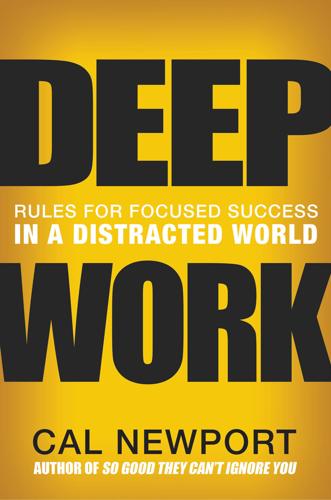
Deep Work: Rules for Focused Success in a Distracted World
by
Cal Newport
Published 5 Jan 2016
The other two winning groups, however, are accessible. How to access them is the goal we tackle next. How to Become a Winner in the New Economy I just identified two groups that are poised to thrive and that I claim are accessible: those who can work creatively with intelligent machines and those who are stars in their field. What’s the secret to landing in these lucrative sectors of the widening digital divide? I argue that the following two core abilities are crucial. Two Core Abilities for Thriving in the New Economy 1. The ability to quickly master hard things. 2. The ability to produce at an elite level, in terms of both quality and speed.
…
And when only a human will do, improvements in communications and collaboration technology are making remote work easier than ever before, motivating companies to outsource key roles to stars—leaving the local talent pool underemployed. This reality is not, however, universally grim. As Brynjolfsson and McAfee emphasize, this Great Restructuring is not driving down all jobs but is instead dividing them. Though an increasing number of people will lose in this new economy as their skill becomes automatable or easily outsourced, there are others who will not only survive, but thrive—becoming more valued (and therefore more rewarded) than before. Brynjolfsson and McAfee aren’t alone in proposing this bimodal trajectory for the economy. In 2013, for example, the George Mason economist Tyler Cowen published Average Is Over, a book that echoes this thesis of a digital division.
…
Nate Silver, of course, with his comfort in feeding data into large databases, then siphoning it out into his mysterious Monte Carlo simulations, is the epitome of the high-skilled worker. Intelligent machines are not an obstacle to Silver’s success, but instead provide its precondition. The Superstars The ace programmer David Heinemeier Hansson provides an example of the second group that Brynjolfsson and McAfee predict will thrive in our new economy: “superstars.” High-speed data networks and collaboration tools like e-mail and virtual meeting software have destroyed regionalism in many sectors of knowledge work. It no longer makes sense, for example, to hire a full-time programmer, put aside office space, and pay benefits, when you can instead pay one of the world’s best programmers, like Hansson, for just enough time to complete the project at hand.

The Sharing Economy: The End of Employment and the Rise of Crowd-Based Capitalism
by
Arun Sundararajan
Published 12 May 2016
Madison: University of Wisconsin Center for Cooperatives. http://reic.uwcc.wisc.edu/sites/all/REIC_FINAL.pdf. 27. See the SELC website at http://www.theselc.org/. 28. See an introduction to Rustrum’s Digital-Cooperative 101 at http://rustrum.com/digital-cooperative-101/. 29. See, for example, Nathan Schneider and Trebor Scholz, “The Internet Needs a New Economy,” November 8, 2015. http://www.thenextsystem.org/the-internet-needs-a-new-economy/. Their concurrent thinking from late 2014 is also interesting, for example, by Scholz, “Platform Cooperativism vs. the Sharing Economy,” Medium, December 5, 2014 (https://medium.com/@trebors/platform-cooperativism-vs-the-sharing-economy-2ea737f1b5ad#.v78qh7ewj) and by Schneider, “Owning Is the New Sharing,” Shareable, December 21, 2014 (http://www.shareable.net/blog/owning-is-the-new-sharing). 30.
…
There’s a rating system to help choose sellers, buyers, and notaries. It’s a little different from what’s used in a centralized marketplace, and is not completely immune to manipulation.10 There is a more sophisticated class of contracts (called smart contracts) emerging for blockchain-based transactions. In Blockchain: Blueprint for a New Economy, Melanie Swan explains that while a traditional contract is an agreement between two or more parties to do something, in the case of a smart contract, the same terms exist, but with one exception—trust that comes from having a third-party is less important.11 This is because the smart contract protocol can specify, as computer code, terms under which certain obligations are fulfilled, and can execute actions like sending a payment or deactivating a file once there is evidence of the contract’s terms being fulfilled.
…
Albert Wenger, “Bitcoin as Protocol,” USV Blog, October 31, 2013. https://www.usv.com/blog/bitcoin-as-protocol. 10. Dionysis Zindros, “A Pseudonymous Trust System for a Decentralized Anonymous Marketplace,” GitHub Gist, 2015, https://gist.github.com/dionyziz/e3b296861175e0ebea4b. 11. Melanie Swan, Blockchain: Blueprint for a New Economy (Sebastopol, CA: O’Reilly Media, Inc., 2015). 12. Primavera De Fillipi, “Ethereum: Freenet or Skynet?,” Talk presented at the Berkman Center for Internet & Society, Harvard University, Cambridge, MA, April 15, 2014. 13. Lawrence Lessig, Code and Other Laws of Cyberspace (New York: Basic Books, 1999). 14.
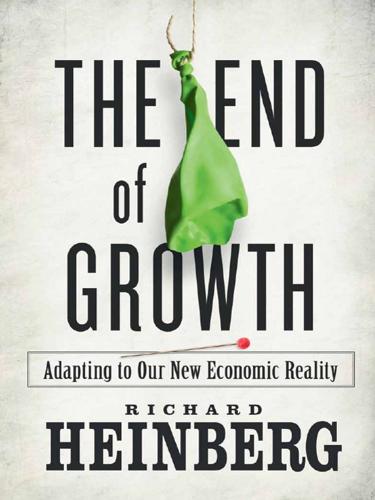
The End of Growth: Adapting to Our New Economic Reality
by
Richard Heinberg
Published 1 Jun 2011
Fundamentally new technologies, products, and trends in business (as opposed to minor tweaks in existing ones) tend to develop at a slow pace. “Many of the big, resource-consuming trends of the near past are soon coming to an end in terms of their ability to attract investment and cover the cost of resources for development, production, and implementation.” Back in the late 1990s business was buzzing with talk of a “new economy” based on e-commerce. Internet start-up companies attracted enormous amounts of investment capital and experienced rapid growth. But while e-commerce flourished, many expectations about profit opportunities and rates of growth proved unrealistic. Automation has reached the point where most businesses need dramatically fewer employees.
…
At some point in the next few years, stock and real estate values will plunge, banks will close, and businesses will shutter their doors. Monetary, financial, and social systems built upon the expectation of growth will simply fail in growth’s absence. In the worst instance, that failure could take the form of a nearly complete cessation of trade, as occurred nationally in Argentina in December, 2001. Some sort of new economy would inevitably emerge from the wreckage, but in scale and scope it would be a shadow of the one we knew just a few years ago. Measured in GDP, it might correspond to the world economy of fifty, a hundred, or even a hundred and fifty years ago. The pursuit of the ideals of fairness, openness, and freedom, and the fights against corruption, greed, and tyranny will of course continue, as they must, but these struggles will play out within the constraints of a shrinking economy.
…
In that case, the result would be universal chaos, confusion, and suffering. Somehow we have to prepare individually for the ending of growth (a process likely to be accompanied by economic and political upheavals) while at the same time preserving and building social cohesion and laying the groundwork for a new economy that can function in a post-growth, post-fossil fuel environment. It’s a tall order, but nothing less will do. Setting Priorities As someone who has for several years been speaking and writing about the consequences of impending energy scarcity, I’m often asked for personal advice. “Where should I live in order to avoid the worst impacts from Peak Oil?”

The Code: Silicon Valley and the Remaking of America
by
Margaret O'Mara
Published 8 Jul 2019
The goal of staying out of partisan fundraising didn’t last; within the year TechNet had established Republican and Democratic political action committees, which turned into gushing cash machines for visiting politicians. But TechNet also staged regular “graduate seminars on the new economy” so that lawmakers could better understand what was happening—and how they could best help Silicon Valley grow. It was a persuasive bipartisan pitch. “We’ve been able to get stuff through Congress at a time that it is hard to do that,” observed Marc Andreessen; with the Valley humming, it was hard for policymakers “to be anti–high tech.”31 John Doerr’s TechNet became one conduit for younger new-economy companies—and their Gen X founders—to engage with Washington. A second was Al Gore. Few things delighted the Veep more than an opportunity to sit in a room with smart technologists, talking policy.
…
Reagan and his conservative allies also were right when they argued that overly regulated markets and nationalized industries could present big hurdles to entrepreneurial innovation—many of the globe’s would-be Silicon Valleys attest to that. Yet, in its celebration of the free market, the individual entrepreneur, and the miracles of a wholly new economy, the Silicon Valley mythos left out some of the most interesting, unprecedented, and quintessentially American things about the modern tech industry. For these entrepreneurs were not lone cowboys, but very talented people whose success was made possible by the work of many other people, networks, and institutions.
…
Why care too much about the way government institutions or old-line industries worked, when your purpose was to disrupt them in favor of something far better? Why care about history when you were building the future? But there, again, revolutionary reality departs from revolutionary myth. For all its determination to push away the gatekeepers, dismantle ossified power structures, and think differently, the “new economy” of tech was deeply intertwined with the old. Venture capital came from Rockefellers and Whitneys and union pension funds. Microprocessors powered Detroit autos and Pittsburgh steel. Amid 1970s stagflation and 1980s deindustrialization, when all of America was looking for a more hopeful economic narrative, old-line media and old-line politicians championed technology companies and turned their leaders into celebrities.

Class Acts: Service and Inequality in Luxury Hotels
by
Rachel Sherman
Published 18 Dec 2006
EcoBook 50 is acid-free and meets the minimum requirements of ansi/astm d5634–01 (Permanence of Paper). UC_Sherman (O).qxd 10/3/2006 2:01 PM For my parents Page v UC_Sherman (O).qxd 10/3/2006 2:01 PM Page vi UC_Sherman (O).qxd 10/3/2006 2:01 PM Page vii Contents Acknowledgments Introduction: Luxury Service and the New Economy ix 1 1. “Better Than Your Mother”: The Luxury Product 24 2. Managing Autonomy 63 3. Games, Control, and Skill 110 4. Recasting Hierarchy 154 5. Reciprocity, Relationship, and Revenge 184 6. Producing Entitlement 223 Conclusion: Class, Culture, and the Service Theater 257 Appendix A: Methods 271 Appendix B: Hotel Organization 287 Appendix C: Jobs, Wages, and Nonmanagerial Workers in Each Hotel: 2000–2001 291 Notes 295 References 325 Index 341 UC_Sherman (O).qxd 10/3/2006 2:01 PM Page viii UC_Sherman (O).qxd 10/3/2006 2:01 PM Page ix Acknowledgments My greatest debt is to the workers, managers, hotel guests, and others who participated in this study.
…
Wealthy party-givers pay millions for bigname acts to entertain at their birthday parties and their daughters’ bat mitzvahs.17 Best-selling novels of this period, such as The Nanny Diaries (the story of a young nanny’s trials working for an overly entitled Upper East Side mother) and The Devil Wears Prada (the story of a young personal assistant’s trials working for an overly entitled female magazine editor), satirize the entitlement of rich people and their mistreatment of assistants and servants.18 The rise of luxury consumption and production not only feeds a public preoccupation with the lifestyles of the rich and famous but also illuminates key features of what is often called the “new” U.S. economy. First, the new economy is a global one. Sites of luxury service are frequently what Manuel Castells calls “nodes” in the global “space of flows”—local places crisscrossed by movements of people and capital.19 Luxury clients, purchasing services in London or Beijing, are often the mobile corporate executives who make the global economy run.
…
Hotels and restaurants are located in the growing range of “producer services,” which are used by high-end professionals but create nonprofessional and often low-paying jobs in the service sector.20 At the same time, workers in hotels, restaurants, and retail are frequently immigrants from Europe, Asia, and Latin America. Luxury service companies are also often transnational, belonging to international chains and conglomerates that offer services worldwide. Second, the new economy is a service economy. Like more than 85 percent of workers in the United States, luxury service workers (and usually consumers too) are employed in the service sector.21 Many of these workers provide face-to-face, or “interactive,” service, in which the product consists, to varying extents, of the interaction between workers and customers.22 In contrast to “old economy” manufacturing jobs, in which the UC_Sherman (O).qxd 6 10/3/2006 2:01 PM Page 6 introduction people who produced the products did not personally encounter the people who bought these products, the selfhoods of both worker and client come into play in these interactions.
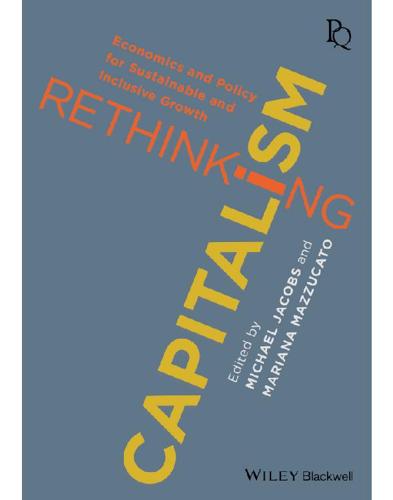
Rethinking Capitalism: Economics and Policy for Sustainable and Inclusive Growth
by
Michael Jacobs
and
Mariana Mazzucato
Published 31 Jul 2016
This development forced major US semiconductor companies to retreat from this segment of the market, with Intel facing the possibility of bankruptcy in the process.31 However, led by Intel with its microprocessor for the IBM PC and its clones, US companies became world leaders in chip design. Indeed, the IBM PC, with its open-systems architecture, was the basis for the rise of a ‘New Economy business model’ that has dramatically altered the conditions of innovative enterprise. As I have detailed in a number of studies, the principles of strategic control, organisational integration and financial commitment remained central to the success of companies that pioneered or adopted the New Economic business model.32 At the same time, however, innovative New Economy companies could eschew investment in integrated skill bases that were as deep and broad as those under the ‘Old Economy’ business model, because of the availability of accumulated knowledge from the research labs of the Old Economy corporations upon which these could draw.
…
He is co-founder and president of the Academic-Industry Research Network. Previously, he was Assistant and Associate Professor of Economics at Harvard University, Professor of Economics at Barnard College of Columbia University and Distinguished Research Professor at INSEAD. His book Sustainable Prosperity in the New Economy? Business Organization and High-Tech Employment in the United States (Upjohn Institute, 2009) won the 2010 Schumpeter Prize. His article, ‘Innovative Business Models and Varieties of Capitalism’ received the Henrietta Larson Award from Harvard Business School for best article in Business History Review in 2010.
…
Successful start-ups almost always begin with an idea that has ripened in the research organisation of a large company. Lose the large companies, or research organisations of large companies, and start-ups disappear.33 While, some two decades after Moore made this statement, technology start-ups have yet to disappear, there is no doubt that the New Economy business model has been far better at commercialising existing technologies than developing new ones. Increasingly, moreover, US corporate executives look to the government to provide them with the new technologies that they need,34 even as these executives have turned toward enriching themselves by boosting their companies’ stock prices and with them their stock-based pay.35 Elsewhere I have analysed in detail the shift of US industrial corporations from a ‘retain-and-reinvest’ resource-allocation regime, under which corporate revenues and personnel are retained and re-invested in innovative capabilities, to a ‘downsize-and-distribute’ allocation regime in which these companies downsize their experienced labour forces and distribute corporate cash to shareholders in the name of ‘maximising shareholder value’.
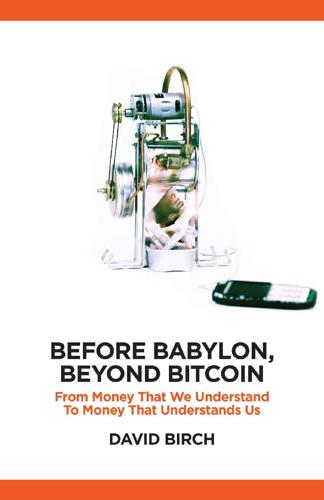
Before Babylon, Beyond Bitcoin: From Money That We Understand to Money That Understands Us (Perspectives)
by
David Birch
Published 14 Jun 2017
It seems that the cheque may well be the first payment instrument to vanish in my lifetime because the existence of instant payment systems means it no longer has an economic function. I’ll return to this later in the book when we move on to the spread of instant payments and the potential for a ‘push for push’ in retail payments. Buttons and bank acts Industrializing Britain saw more changes in the way that money worked as it strove to reinvent money for its new economy. As the nature of that economy had changed, so the nature of money had needed to change too, but it lags. At the time, it was not clear exactly what needed doing. People could see that there were problems but not what do to about them. Naturally I refer to this time because the Internet, mobile phones and online commerce are creating a vortex that is sucking in monetary innovation at an accelerating rate, my point being that we have been here before.
…
President Nazarbayev was not the only world leader to experiment with new forms of money in response to the financial crisis. In Venezuela, as in Greece and other countries, community currencies were explored. An example was the cimarrón there. The circular cardboard tokens (with a picture of a runaway slave on them) were supported by President Chavez with the aim of tackling poverty and establishing new economies. These types of currency tend to be used to mediate barter in ‘prosumer’ markets, where you can’t get the currency to buy things without producing things. Imagine something along these lines at Internet scale: currencies that are specific to markets, that you can’t obtain without bringing things to the market.
…
The mobile phone didn’t just change the payphone business, it changed the communications paradigm: the common mental model that we share as the basis for thinking about communications. Uneven The Canadian novelist William Gibson – author of the wonderful Neuromancer (the seminal work of fiction for the new economy) and the man who coined the term ‘cyberspace’ – famously observed that ‘the future is already here, it’s just unevenly distributed’. He means that the technologies that will shape society in our lifetimes already exist, it’s just that we might not have noticed them yet. One of the key elements missing from that 1988 vision of 2013 was the mobile phone, despite it having existed for a decade.

Losing Control: The Emerging Threats to Western Prosperity
by
Stephen D. King
Published 14 Jun 2010
In the late 1990s, both central bankers (notably Alan Greenspan, the then Chairman of the Federal Reserve) and economic commentators argued in favour of the so-called new economy, a view that undoubtedly contributed to large – and ultimately unsustainable – increases in equity prices, as observed in Chapter 4. The new economy was being driven, apparently, by sweeping productivity gains that would lead to both elevated economic growth and ever higher stock prices. In the late 1990s, there certainly was some evidence consistent with the ‘new economy’. In the US, growth was unexpectedly strong and inflation was unusually low. But does this constitute proof?
…
Second, while technology innovations can improve productivity growth and, hence, allow an economy to grow more quickly without bumping into an inflationary constraint, commodity-price declines create a very similar effect, at least for commodity-consuming nations. It’s easy to be seduced by the idea that economic success comes from technological improvements or wise policy decisions. As perceptions about the new economy began to pick up in the late 1990s, Alan Greenspan, who had famously warned of ‘irrational exuberance’ in 1996,12 seemed happy to jump on the new economy bandwagon later in the decade. His case was helped by the improving split between growth and inflation. But was he right? When the Asian crisis struck in 1997, triggered by a collapse in the value of the Thai baht, many argued that the end of the economic world was nigh.
…
The inflows helped push down short- and long-term interest rates, lifted the US equity market and contributed to an ongoing boom in domestic demand. This was, perhaps, the first indication that the US economy could be at the mercy of international capital flows over which policymakers had no direct control. The bubble in equities could not be sustained. While it lasted many people were happy to extol the wonders of the ‘new economy’. There certainly was an improvement in productivity growth led by cutting-edge technologies, but, as time passed, the impact of these technologies on rising living standards began to fade. Economic growth in the developed world slowed following the 2000 stock-market crash and would have been slower still in the absence of a global housing boom and a massive, and unsustainable, expansion of credit.

Beautiful Solutions: A Toolbox for Liberation
by
Elandria Williams, Eli Feghali, Rachel Plattus
and
Nathan Schneider
Published 15 Dec 2024
The two toolboxes have always been meant to complement and intersect with one another; you’ll even find a few pieces from Beautiful Trouble tucked into these pages. What came after the initial inspiration had many stages. We brought the first seeds of Beautiful Solutions to a convening in Boston in 2014. It was organized by the New Economy Coalition, an organization in which Rachel, Eli, and many others have been leaders. From there, we teamed up with veteran activist-journalists Naomi Klein and Avi Lewis to launch a preliminary version of the toolkit—an online “solutions gallery”—as part of their project This Changes Everything, which launched in the US alongside the first People’s Climate March in New York City in 2014.
…
The Beautiful Solutions project reached thousands of people through our online toolkit and popular education curriculum, and through our travels to convenings and communities across the country and around the world. All the while we kept working, slowly but surely, on this book. And along the way, unique partnerships formed among the New Economy Coalition, Beautiful Trouble, the Highlander Research and Education Center, and PeoplesHub, who all made major commitments to this project’s success (read more about these projects on page 331). Nathan, who had contribued to the original Beautiful Trouble book when he was a journalist, joined our editorial team at a critical moment to help complete the book, bringing along a group of students and emerging writers.
…
Eli organized in Tennessee in the migrant justice movement, then on the streets of Boston during the Occupy Wall Street uprising. It was on those streets that he first chanted “another world is possible,” and was introduced to cooperatives and the idea of the solidarity economy. For more than a decade, Eli has worked with the New Economy Coalition (NEC), a network building the power of the solidarity economy movement in the US. Through his roles at NEC, Beautiful Solutions, and the board of YES! Magazine, Eli works to tell the story of another world under construction. Eli and Rachel live together in Cambridge, MA with their favorite person, Maya Silver.
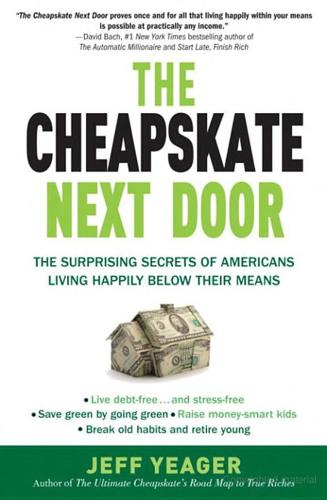
The Cheapskate Next Door: The Surprising Secrets of Americans Living Happily Below Their Means
by
Jeff Yeager
Published 8 Jun 2010
Downward trends turned into a downward spiral and then into a literal free fall that would make the oxygen masks drop out of the overhead compartments on a Boeing 747. It’s a whole new economy. Who would have thought a few years ago that Ken Lay’s Enron would begin to look like a model for good corporate management? That during the Christmas shopping season of 2008, I would swear I saw then–U.S. Treasury Secretary Henry Paulson in my local dollar store? I was shocked to discover that Cabinet members are apparently allowed to moonlight. Everything has changed in this new economy, even our language. Marketers invented the term “under-buyers” to refer to those people who are now spending less—either less than they did before or less than they can afford.
…
Marketers invented the term “under-buyers” to refer to those people who are now spending less—either less than they did before or less than they can afford. I guess they thought the word “cheapskate” would hurt people’s feelings. Yes, when it comes to the economy, we’ve come a long way, baby. And it’s all been downhill. Or has it? It’s a new economy now, and I believe it is inviting us to take a new approach to money, and to life. Please, Just Call Me Cheap … “Under-Buyer” Sounds So Negative What do you think of when you think of a “cheapskate”? Probably someone who’s greedy, like Ebenezer Scrooge; someone who’s constantly worrying about saving a penny, and who leads a joyless life because of it.
…
In fact, to be successful by that measure, I would have needed to earn more than double the $10,000 salary I received in my first nonprofit job … or else still be in the fourth grade. Fortunately, I’ve never had any interest in attending my class reunions. And so I’m somewhat reluctant to propose a new measure of personal financial success for this new economy we’re living in, knowing that it, too, can’t possibly apply to everyone. But the interesting thing about the new standard for success I’m proposing—spend less than your age—is that spending is nearly always more controllable than earning. This is a standard that a great many Americans should be able to achieve, because the vast majority of the time we control our spending.
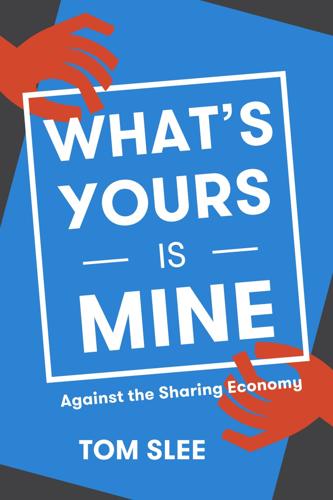
What's Yours Is Mine: Against the Sharing Economy
by
Tom Slee
Published 18 Nov 2015
Collaborative Consumption, July 31, 2014. http://www.collaborativeconsumption.com/2014/ 07/31/collaborative-finance-by-the-people-for-the-people/. ———. “The Sharing Economy Lacks A Shared Definition.” Co.Exist, November 21, 2013. http://www.fastcoexist.com/3022028/the-sharing-economy-lacks-a-shared-definition. ———. “Transcript of ‘The Currency of the New Economy Is Trust.’” TED talk, September 2012. http://www.ted.com/talks/rachel_botsman_the_currency_of_the_new_economy_is_trust/transcript. ———. “Welcome to the New Reputation Economy.” Wired, September 2012. http://www.wired.co.uk/magazine/archive/2012/09/features/welcome-to-the-new-reputation-economy. Botsman, Rachel, and Roo Rogers. What’s Mine Is Yours: The Rise of Collaborative Consumption.
…
But a moment later, he is more interested in building businesses: I attended a meeting of Sharing Economy participants . . . they were developing ideas—brilliant ideas actually—to share customers with each other, across verticals. One person even suggested that there could be a peer economy currency—maybe Bitcoin. Or even points to encourage people to cross verticals and recruit new people into this new economy. So it is not surprising that almost all the campaigns at Peers were focused on the well-funded sectors of the Sharing Economy represented by Airbnb and Lyft. The highest-profile campaigns, such as the 2014 ridesharing initiative in Seattle, operated side-by-side with well-funded efforts driven by Lyft and Uber themselves.
…
That rate is based on an annual study of the costs of vehicle operation—those things like repairs, insurance, maintenance, gas and depreciation that were not factored into Uber’s study.56 Based on this figure Dean Baker of the Center for Economic and Policy Research estimated that the average length of a drive would have to be “considerably less than 8 miles” for Uber drivers to come out ahead of traditional cab drivers.57 Baker also notes that if Uber drivers do not pay for commercial insurance, or do not invest in the upkeep of their cars to the extent that commercial drivers are expected to, they would have fewer expenses and more take home pay: “If that’s the case, this would be a typical story of getting rich in the new economy. Find a way to get around the rules and then claim it as a great innovation.” We do have one other source of information about driver pay, which is the drivers themselves. One of the most multifaceted and careful is an account by Philadelphia journalist Emily Guendelsberger of her time as an Uber driver.58 After meticulously tracking her own expenses and those of other drivers who shared them with her, she made about $17 per hour gross, and after Uber’s 28% cut and the 19% that went to expenses she ended up with just $9.34 an hour.

The Flat White Economy
by
Douglas McWilliams
Published 15 Feb 2015
Although the whole Cebr office have supported me, the greatest help has come from Charles Davis, currently Cebr director and Rob Harbron, Joint Managing Economist for Macroeconomics for Cebr. It was during a meeting when Graham, Charles, Rob and I were considering how to handle our data on this new economy that Rob came up with the suggested name – the Flat White Economy – that became the title for the book. So the title is his and he deserves credit for it. Charles provided me with a lot of helpful data, and Chapter 6 on London’s relationship with the rest of the UK is partly based on the report which he and colleagues prepared for the Corporation of London covering the fiscal aspect of this.
…
And why EC1V? Why the Old Street area? Well, it is the nearest point of what might loosely be called Central London that’s within reach of the less expensive housing in East and North London. That is why Old Street Roundabout has become popularly known as ‘Silicon Roundabout. The scale of this new economy is such that it has affected – directly or indirectly – the whole UK economy. Roughly one third of the UK economy (30.7%) is now in business and financial services: this contributed 54% of the total GDP growth between 2010 and Q2 of 2014. Obviously not all of this growth is from the Flat White Economy.
…
I also thought that some of the damage to the financial system from the financial collapse would only fully show itself by slowing down the recovery rather than by adding to the immediate impact of the recession. Both conclusions were probably valid, but they failed to explain why London should since have recovered so much faster than the rest of the country. Figure 1.1: House prices in London 1983–2013. Source: Lloyds Regional House Price Data, 2014 Recovery: a new economy? The recovery in London started at the end of 2009. Employment had fallen by a sharp 1.7% that year, but it grew by 0.5% in 2010, with similar growth in 2011. By 2012 employment growth in London was really on a roll, with a massive 2.3% growth. In 2013 employment growth in London was even more spectacular – at 4.4%.
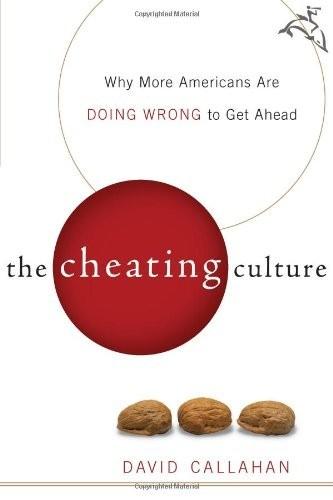
The Cheating Culture: Why More Americans Are Doing Wrong to Get Ahead
by
David Callahan
Published 1 Jan 2004
Shortly thereafter he moved to Merrill Lynch with a $3 million contract. There, he reigned as the single most visible adviser to investors hoping to score big in the Internet gold rush. Blond and affable, with telegenic good looks, Blodget was everywhere with his stock predictions as well as broader prognostications about the new economy. What Blodget didn't mention to CNBC junkies or Merrill Lynch's own clients was that his role at Merrill went far beyond analyzing stocks. Like other star analysts of the time, he also became deeply involved in Merrill's investment banking business, helping to bring Internet companies— and fat underwriting fees—to Merrill.
…
In 2003, Blodget settled with Spitzer's office, agreeing to pay a $4 million penalty—yet admitting no wrongdoing. The settlement was easy enough to afford. Blodget had pulled in nearly $20 million during his brief star turn at Merrill. HENRY BLODGET and the ATM looters have nothing in common and much in common. Blodget was among the ranks of the big winners in the new economy—the very top earners who saw unprecedented income gains during the boom of the 1990s. His education and background had helped him to secure his place in the Winning Class: successful parents, private schools, Yale University, connections on Wall Street. The ATM looters, by contrast, were among the far larger ranks of Americans who had either stayed put economically or realized only modest gains during the boom years.
…
The vast gulf between the top tiers of American earners and everyone else is the most obvious of these costs. How big is this gulf? Very big. To get a sense of these gaps, stick around the Banana Republic store. The people working the cash register and sales floor are typical of the losers in the new economy. Most of them are young entry-level workers without college degrees. As unskilled entry-level workers, these salespeople are doing terribly, in historical terms, and may well be making less money than their parents. If they're making the minimum wage, they're earning a wage that has decreased in constant dollars by over 20 percent since 1979.
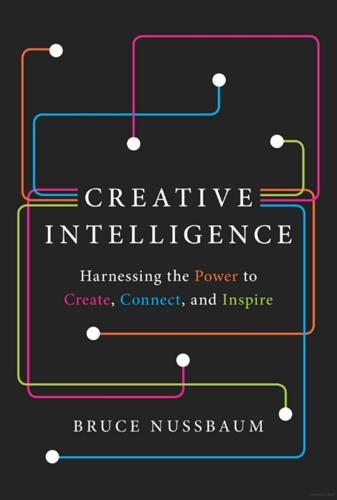
Creative Intelligence: Harnessing the Power to Create, Connect, and Inspire
by
Bruce Nussbaum
Published 5 Mar 2013
So complex were the models created by the Wizards of Wall Street that few bank CEOs actually knew what they really were or, more important, how much they were worth. We all know how that turned out. It wasn’t supposed to be like this. Placing our trust in the experts in finance and trading was, we were all told, a crucial part of the New Economy. When BusinessWeek ran a cover on the New Economy in 2000, it was a celebration of technology, finance, strategy, consulting, sales, service, and experience. The message was that we should ship all our manufacturing overseas and concentrate on higher-level, value-added information activities. Using your head, not your hands, was considered a higher evolutionary state of economic—and social—affairs.
…
As Americans began to feel the effects of the Great Recession, it became clear that the economic benefits of the New Economy disproportionately went to a tiny elite, while the vast middle class saw immiseration and downward mobility. We witnessed an inequality gap that hadn’t been as wide since the 1920s and the Great Depression. The Occupy Wall Street movement, with its rallying cry “We are the 99 percent,” crystallized the sense that something needed to change. You knew something fundamental was about to change when both the Tea Party and Occupy Wall Street found a common enemy, publicly blaming “Crony Capitalism” for destroying the American Dream. Even while the New Economy was at its peak, alternative ways of thinking and doing had begun springing up around the nation.
…
Summers was, after all, a chief architect of the deregulation that helped provoke the financial crash in 2007. In 1999, Summers, along with Treasury Secretary and ex-Goldman Sachs co-CEO Robert Rubin, did away with Glass-Steagall, the Depression-era regulation of the financial markets, calling the repeal “historic legislation” that will “better enable American companies to compete in the new economy.” Perhaps no one believed more in the rationality and efficiency of markets than the former chairman of the Federal Reserve. But in October 2008, Greenspan told a congressional committee that he had put too much faith in the self-correcting powers of the markets. “Those of us who have looked to the self-interest of lending institutions to protect shareholders’ equity, myself included, are in a state of shocked disbelief,” he told the House Committee on Oversight and Government Reform, as reported in the New York Times.
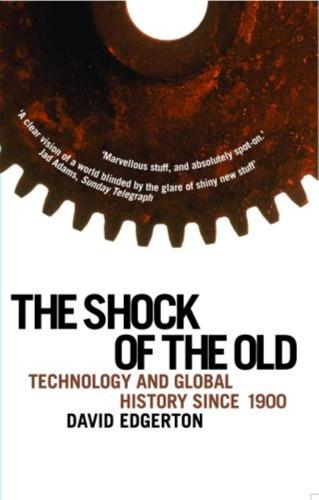
The Shock of the Old: Technology and Global History Since 1900
by
David Edgerton
Published 7 Dec 2006
Market Stalinism and foreign investment were critical in China’s drive to industrialise. Despite its scale and speed and its impact on the global economy, the growth of China is not the product of a profoundly new economy. It has a distinctly old feel to it. At the beginning of the twenty-first century China was sucking in vast quantities of heavy raw materials, from oil to copper, driving up world prices. It became easily the largest steel producer in the world, with rates of growth comparable to those of steel in the long boom. The ‘new economy’ was being replaced by a very old economy driven by commodity prices. Far from the information superhighway being the conduit for all this new production, it was none other than the ship that carried the great bulk of Chinese production, and indeed world trade as a whole.
…
The most significant twentieth-century technologies are often reduced to the following: flight (1903), nuclear power (1945), contraception (1955), and the internet (1965). We are told that change is taking place at an ever-accelerating pace, and that the new is increasingly powerful. The world, the gurus insist, is entering a new historical epoch as a result of technology. In the new economy, in new times, in our post-industrial and postmodern condition, knowledge of the present and past is supposedly ever less relevant. Inventors, even in these post-modern times, are ‘ahead of their time’, while societies suffer from the grip of the past, resulting in a supposed slowness to adapt to new technology.
…
The usual story of production goes like this: there has been a shift in employment and output from agriculture to industry and then to services. The first is labelled the industrial revolution. The second is called a transition to post-industrial, knowledge or information societies, linked to what many called post-modernism, what some Marxists called ‘new times’, and, what capitalist Wall Street gurus called the ‘new economy’.1 In one version peddled in the 1990s, modern economies are becoming ‘weightless’ and ‘dematerialised’. Such accounts resurrect an old argument, as if it had never been made before, that in future it will not be land or capital which will have power, but knowledge. They promise, again, a world where ‘intellectual property’ and ‘human capital’ rule.
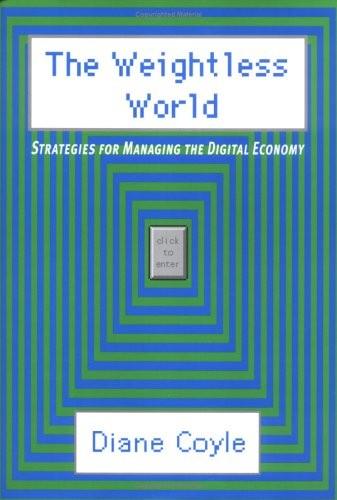
The Weightless World: Strategies for Managing the Digital Economy
by
Diane Coyle
Published 29 Oct 1998
He said: ‘The economic transformation that we are on the threshold of will unleash an expansive future for America, a future far greater than anything we’ve seen before. The industrial machine was about hierarchies, big companies, The Weightless World 9 big unions, big cities, big government. The thrust of this new economy is more Jeffersonian. It gives power to individuals. It gives power to people.’14 Populism versus techno-populism, perhaps. For a while the Buchanan version made all the running. The New York Times ran a special series of long articles on corporate ‘downsizing’, and Time magazine made it a cover story in the early stages of the election campaign.
…
‘The Dynamo and the Computer’, Paul David, American Economic Review, May 1990. ‘The Competitive Crash in Large Scale Computing’, Timothy Bresnahan and Shane Greenstein, NBER Working Paper No. 4901, 1995. October 1996 issue. New York Times Magazine, Sunday 29 September 1996. Both reported in ‘It’s The New Economy, Stupid’ by John Heilemann, Wired magazine, San Francisco, CA, March 1996. ‘The Downsizing of America’, New York Times special report, Times books, 1996. The New York Review, 3 October 1996. The State of Working America 1996-97, Employment Policy Institute, Washington DC. (http://epn.org/epi/epswa-ex.html).
…
The early 1980s recession brought more redundancies as old industries shrank, with bitterness and pain. The American commentator James Fallows The Weightless World 34 described, in a long article in The Atlantic Monthly in March 1985, the ruined lives left behind by South Chicago’s retreating steel industry. ‘To the steelworkers of South Chicago everything about the ‘new’ economy is bad. They see the movement of jobs to the American south-west or to Taiwan as just another way to undercut the workingman’s wage. Few of them see a way to adapt to the new order. Why should they even think of moving? Everyone has a story about the friend or nephew who drove to Houston or Denver, found himself stacking bottles at the Seven-Eleven or competing with illegal Mexican immigrants for construction jobs, and drove back home.’
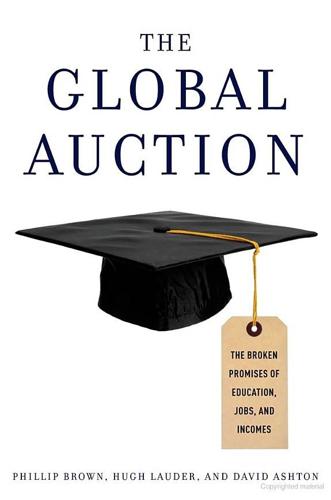
The Global Auction: The Broken Promises of Education, Jobs, and Incomes
by
Phillip Brown
,
Hugh Lauder
and
David Ashton
Published 3 Nov 2010
This bargain was also touted as offering everyone an equal chance to become unequal in the competition for jobs, status, and income. Widening access to university was, for instance, presented as an extension of meritocratic competition giving all the opportunity to acquire knowledge and skills required in the new economy with credentials the currency of opportunity. Changes in employer demands for talent also pointed toward a fairer society, as companies could no longer rely on the established stereotypes of managerial leadership based on the Ivy League or Oxbridge man. Going to a top university and living as part of a cloistered elite were no longer seen as sufficient in an increasingly multicultural and global economic environment.
…
Arthur and Denise M. Rousseau (eds.), The Boundaryless Career: A New Employment Principle for a New Organizational Era (New York: Oxford University Press, 1996). 13. Ibid., 4 and 6. 14. Maureen S. Bogdanowicz and Elaine K. Bailey, “The Value of Knowledge and the Values of the New Worker: Generation X and the New Economy.” Journal of European Industrial Training, 26 (2002): 127. 15. Peter Sheahan, Generation Y: Thriving and Surviving with Generation Y at Work. Hardie Grant Books. http://www.managementbooks.com.au/bookweb/details. cgi?ITEMNO=9781740663175 166 Notes to Pages 16–19 16. Richard Rosecrance, The Rise of the Virtual State: Wealth and Power in the Coming Century (New York: Basic Books, 1999), xi. 17.
…
docID=6337&intItemID=2068 &lang=1 The Washington Times, November 24, 2008; see also, “U.S. Automakers Say Labor Costs Must Shrink to Compete,” June 20, 2007. www.workforce.com/ section/00/article/24/96/64.html See Steve Hargreaves, “The New ‘Good’ Job: 12 Bucks an Hour,” CNNMoney. com (2009). www.money.cnn.com/2009/06/04/news/economy/green_jobs/ Financial Times, July 9, 2007. Amy Lee, “Dr Reddy’s Charts New Path for Indian Drugmakers,” Financial Times, December 19, 2006. See http://money.cnn.com/magazines/fortune/global500/2009/ Ming Zeng and Peter J. Williamson, (2007) Dragons at Your Door: How Chinese Cost Innovation Is Disrupting Global Competition (Boston, Mass.: Harvard Business School Press, 2007), 2.
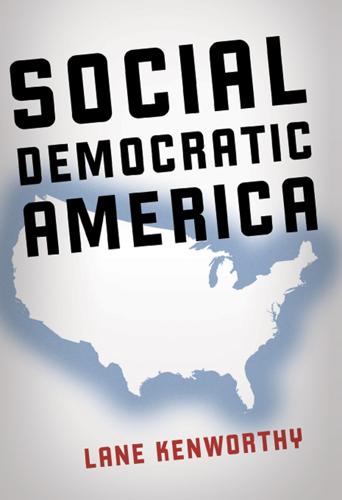
Social Democratic America
by
Lane Kenworthy
Published 3 Jan 2014
In addition, shareholders now want rapid appreciation in stock values. Whereas a generation ago they were happy with a consistent dividend payment and some long-term increase in the stock price, they now demand buoyant quarterly profits and constant growth. Robert Reich has an apt label for this new economy: “supercapitalism.” American firms, he notes, “now have little choice but to relentlessly pursue profits.”2 This shift benefits investors, consumers, and some employees. But it encourages companies to resist pay increases, drop health-insurance plans, cut contributions to employee pensions, move abroad, downsize, replace regular employees with temporary ones, and pursue a variety of other cost-cutting strategies that weaken economic security, limit opportunity for the less skilled, and reduce income growth for many ordinary Americans.3 For better or worse, the new hypercompetitive, risk-filled economy is here to stay.
…
And barely one in ten employed Americans is a union member. Even more problematic, these changes have a class tilt: families, community organizations, and unions have weakened most among those with less education and income.4 Some believe the best way to address the stresses and strains of the new economy is to strengthen these institutions. It’s a laudable aim. It would be good if more American children grew up in intact families, if unions ensured stable jobs and rising wages for a significant share of workers, and if community organizations provided guidance and support to more people in difficult circumstances.
…
Predicting Presidential Elections and Other Things. 2nd ed. Stanford, CA: Stanford University Press. Families USA. 2009. “Americans at Risk: One in Three Uninsured.” Washington, DC. Farber, Henry S. 2010. “Job Loss and the Decline in Job Security in the United States.” Pp. 223–262 in Labor in the New Economy. Edited by Katharine G. Abraham, James R. Spletzer, and Michael Harper. Chicago: University of Chicago Press. Feingold, Russ. 2013. “Building a Permanent Majority for Reform.” Democracy, Winter: 45–49. Ferguson, Thomas and Joel Rogers. 1986. Right Turn: The Decline of the Democrats and the Future of American Politics.

Culture and Prosperity: The Truth About Markets - Why Some Nations Are Rich but Most Remain Poor
by
John Kay
Published 24 May 2004
General Electric, whose strategic planning systems had been the envy of other businesses, prospered through being quick to dismantle them. 2 European states and underdeveloped countries pursued policies of privatization and deregulation. The United States economy performed well in the 1990s. Business Week proclaimed the "new economy": technology had transformed America's long-term growth potential. With the aid of Blootnberg television, this strong economic performance was translated into an extraordinary stock market boom. In 1996, the chairman of the Federal Reserve Board, Alan Greenspan, warned of "irrational exuberance."
…
It is difficult to maintain this position because economic data is widely used in political debate. In the 1990s the Bureau of Economic Analysis, which compiles the U.S. national accounts, was under obvious pressure, particularly from Chairman Greenspan, to support the assertions then made about the "new economy." On the other side of the political fence, those who argue that GDP should account for environmental costs or unpaid work are more concerned to make environmental or feminist arguments than to enhance the integrity of national accounting frameworks. GDP and other economic measurements are likely to be of greatest use to a wide range of users if as far as is possible the measurement relates to issues of objective fact.
…
In the decade since the Cold War ended, admiring eyes have switched from Japan, whose own boom ended with its own bubble in the late 1980s, to Germany, whose successful social market economy struggled with the burden of reunification in the 1990s. Attention was diverted to the Asian tigers-Singapore, Korea, Hong Kong-but ended with the financial crisis of 1997. And since then America's New Economy has occupied center stage. In superficial economic commentary, trends of a few years or even months are projected into an indefinite future with the transience of designer fashions. The really important observation is that differences in economic performance and experience among rich states are small and temporary, while differences between rich and poor states are large and enduring.
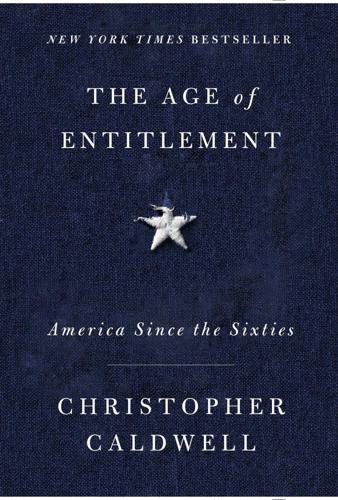
The Age of Entitlement: America Since the Sixties
by
Christopher Caldwell
Published 21 Jan 2020
This meant that conflict, when it eventually came, would be constitutional conflict, with all the gravity that the adjective “constitutional” implies. 7 Winners Outsourcing and global value chains—Politicized lending and the finance crisis—Civil rights as a ruling-class cause—Google and Amazon as governments in embryo—Eliot Spitzer, Edward Snowden, and surveillance—The culture of internet moguls—The affinity between high tech and civil rights—The rise of philanthropy—Obama: governing without government—Nudge and behavioral economics—From gay rights to gay marriage—Windsor: the convergence of elites—Obergefell: triumph of the de facto constitution It took a long time for Americans to realize that the New Economy was a new economy. They were accustomed to marketing hype. When politicians used the term “New Economy,” it was easy for voters to assume it was only a jazzed-up way of describing the process, familiar for centuries, by which mechanization was introduced into certain industrial tasks, creating limited short-term sectorial disruptions but offering rewards to those trained in the new technology.
…
Certain things would no longer be made in America at all. The country would therefore become an economic part rather than an economic whole, rendering nonsensical, at least for a while, all kinds of inherited cultural and political beliefs about sovereignty, national independence, and social cohesion. In this sense the New Economy was like the new constitution. Over the fifty years leading up to the election of 2016, those who found ways to use the newly unleashed powers flourished. Those who continued to believe they could trust in old traditions, or vote their way to the country they wanted, lost ground. Outsourcing and global value chains The high wages of industrial workforces in Western countries had once been invulnerable, because the capital-owning part of an economy was bound by the laws of the land and the laws of economics to the fate of its workforce.
…
At a time when international competition was bidding down the price of industrial handwork, corporations retooled in order to capture the global economy’s ever-more-lucrative brainwork: the design, the marketing, the public relations. The problem was, and remains, that only a small fraction of people in any society is equipped to do brainwork. Big though the New Economy may have looked to American executives, professors, and philanthropists, American workers experienced it as smaller than the old one. They were in a catch-22: Until they consented to the outsourcing of their jobs, they were called pampered obstructionists, and berated; once their jobs had left and their consent was no longer needed, they were called nostalgic losers, and forgotten.
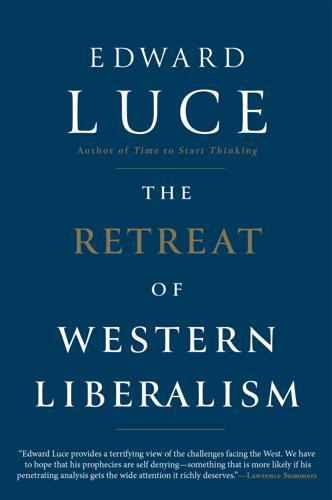
The Retreat of Western Liberalism
by
Edward Luce
Published 20 Apr 2017
Tyler Cowen has coined a new acronym to replace Nimbys (Not in My Backyard): Bananas (Build Absolutely Nothing Anywhere Near Anything).50 Such risk aversion breeds its own failure. So deeply rooted is gentrification that Richard Florida has now modified his widely acclaimed thesis about the rise of the creative classes. Cities are becoming too successful for their own good. Until recently, he believed they would be the engine rooms of the new economy, embracing the diversity necessary to attract talent. That has certainly happened. Gay pride parades seem to get larger every year. A thousand multicultural flowers are blooming. Yet in squeezing out income diversity, the new urban economies are also shutting off the scope for serendipity. The West’s global cities are like tropical islands surrounded by oceans of resentment.
…
Facebook’s data servers are now managed by Cyborg, a software program. It requires one human technician for every twenty thousand computers. Almost any job that involves sitting in front of a screen and manipulating information is disappearing, or will do soon. Software can now drive cars and mark student essays. By skewing the gains of the new economy to a few, robots also weaken the chief engine of growth: middle-class demand. As labour becomes pricier relative to machines, spending power falls. The US economy produces more than a third more today than it did in 1998 with the same-sized labour force and a significantly larger population. It still makes sense for people to obtain degrees.
…
As the real value of pensions and social security goes down, the pressure to postpone retirement grows. Again, we should be careful not to generalise: some older people are working because they enjoy it. Yet we should not romanticise what is happening either. The age of automation is making labour increasingly dispensable, so companies are constantly on the lookout for ways to slim down. The new economy has created digital platforms that enable people to offer their services online. Yet what they find is generally far less secure than what they lost. Such work does not provide healthcare or matching retirement contributions. Nor does it always pay. Almost three-quarters of independent workers in the US report serious difficulties in chasing up what they are owed.

Speaking Code: Coding as Aesthetic and Political Expression
by
Geoff Cox
and
Alex McLean
Published 9 Nov 2012
Ibid., 178. 107. radioqualia (Adam Hyde and Honor Harger), Free Radio Linux (2001); see http://www .radioqualia.net/documentation/frl/index.html. 108. Simon Yuill, “All Problems of Notation Will Be Solved by the Masses,” Mute (February 2008); available at http://www.metamute.org/en/All-Problems-of-Notation-Will-be-Solved-by -the-Masses. 109. Virno, A Grammar of the Multitude, 90. 110. In Christian Marazzi, Capital and Language: From the New Economy to the War Economy, trans. Gregory Conti (Los Angeles: Semiotext(e), 2008), 156. 111. Ibid., 34. 112. Berardi, The Soul at Work, 22. 113. Ibid., 117–118. Berardi refers to this as the “psychopathology of desire,” further developing Guattari’s use of desire as a field of operation, open to capture by Disney or Microsoft as well as by social movements. 114.
…
Vascellaro, “Facebook’s About-Face on Data,” Wall Street Journal, 19 February 2009; available at http://online.wsj.com/article/ SB123494484088908625.html#ixzz1dCjqZGSk. Facebook’s Terms of Service are available at http://www.facebook.com/legal/terms. 91. Bauwens, “The Social Web and Its Social Contracts.” 92. See Thomas H. Davenport and John C. Beck, The Attention Economy: Understanding the New Economy of Business (Boston: Harvard Business School Press, 2001). 93. The figures are taken from the Financial Times, 6 January 2011, and from Facebook’s publicity material. Both are quoted in Adam Avidsson and Elanor Colleoni, “Value in Informational Capitalism and on the Internet: A Reply to Christian Fuchs,” Social Science Research Network, 28 February 2011; available at http://papers.ssrn.com/sol3/papers.cfm?
…
On the other hand, information wants to be free, because the cost of getting it out is getting lower and lower all the time. So you have these two fighting against each other.” Available at http://en.wikipedia.org/wiki/Information_wants_to_be_free. 33. See Thomas H. Davenport and John C. Beck, The Attention Economy: Understanding the New Economy of Business (Boston: Harvard Business School Press, 2001). 34. Berardi, Precarious Rhapsody, 113. 35. Ibid., 54. 36. Available at http://www.digitalcraft.org/iloveyou/loveletter_reading.htm. The virus source code is available at http://www.cexx.org/loveletter.htm. 37. The virus also inspired the exhibition “I Love You [rev.eng],” curated by digitalcraft.org/ Franziska Nori in 2002, at the Museum für angewandte Kunst in Frankfurt am Main.
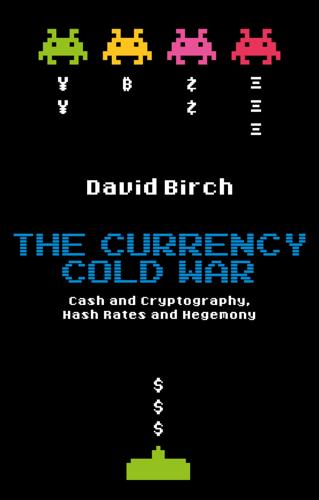
The Currency Cold War: Cash and Cryptography, Hash Rates and Hegemony
by
David G. W. Birch
Published 14 Apr 2020
The one thing that’s missing, but that will soon be developed, is a reliable e-cash, a method whereby on the internet you can transfer funds from A to B without A knowing B or B knowing A. The way in which I can take a $20 bill, hand it over to you and there’s no record of where it came from. – Milton Friedman (1999) More than two decades after Milton Friedman’s prediction that a ‘reliable’ digital alternative to notes and coins would revolutionize the new economy, we still do not have such a thing in widespread use. Yes, a few people use cryptocurrencies of one form or another, although mainly for speculative purposes. For most people, however, digital money means a mobile or web front-end grafted to a half-century-old set of payment rails that transport the fiat currencies of the world via laser beams and transistors.
…
In other words, the desired form of e-cash is a perfect tool for crime. I think it is unrealistic to imagine that this standard will be allowed by the authorities, although whether they will be able to do anything about it is another matter – one that we will return to later when we think about what digital money should do for the new economy. Let us continue with this line of thinking and say that digital money is a form of e-cash. The crucial distinction between e-money and e-cash is that, if I want to pay you for something, I can send e-money to your bank account, but that is it; I cannot use Pingit or Venmo to put money into your pocket, only into an account somewhere.
…
That is pretty smart, although to my mind it is only one of the characteristics of smart money that will distinguish it from the dumb money we have today (see table 2). The ecology of the coming currency landscape, instead of being a fiat currency monoculture, will have a rich and diverse set of currencies to help us (well, our bots) navigate the information-rich marketplaces of the new economy. Table 2. Dumb and smart money. DUMB MONEY SMART MONEY Money that substitutes for memory Money that has a memory Standalone money Money with an API Money as a value Money as a distributed application Money that you can make decisions about Money that can make decisions about you Money that is a static creation of the nation state Money that is the dynamic property of communities These new perspectives – money as ‘local’, money as ‘translucent’, money as ‘smart’ – integrate to form what seems to me a more plausible narrative about the future of digital money than the libertarianism of Bitcoin maximalists.
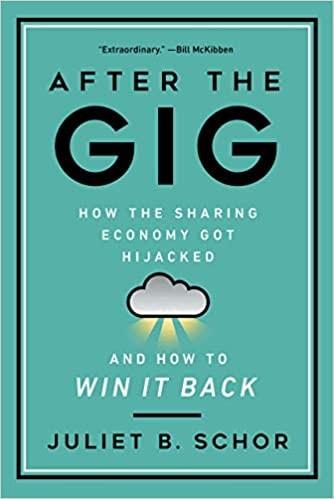
After the Gig: How the Sharing Economy Got Hijacked and How to Win It Back
by
Juliet Schor
,
William Attwood-Charles
and
Mehmet Cansoy
Published 15 Mar 2020
I presented to the National Economic Council of the White House, the European Commission in Brussels, a joint workshop of the Royal Society and the American Academy of Arts and Sciences, the Division of Consumer Economics of the Federal Reserve Board, the Inaugural US conference of CoreEcon, the Institute for Work and the Economy, the Environmental Law Institute, the New Economy Coalition, the Digital Media and Learning Conference, the Sharing Cities Summit, the ReShaping Work Conference, the Women’s Forum, the National Institute for Public Policy Analysis (Italy), the Feltrinelli Foundation, the Milan EXPO2015, and the OIKOS Think Tank in Antwerp. I presented at the SHARE conference which I discuss at the end of chapter 1.
…
They concluded that “below median-income consumers will enjoy a disproportionate fraction of the eventual welfare gains from this kind of ‘sharing economy’ through broader inclusion, higher-quality rental based consumption, and new ownership facilitated by rental supply revenues.” Fraiberger and Sundararajan (2015, 1) (in Abstract). To put the point in plainer language, they are predicting that poorer people will gain more than others by getting access to these new economies, on account of lower prices when they rent cars, and by purchasing vehicles from which they can then earn money. 9. Author’s calculation from US Census. www.census.gov/content/dam/Census/library/publications/2018/demo/p60–263.pdf. 10. Arrow (1971). Positive stereotypes will produce the reverse outcome—all members of a group will be advantaged. 11.
…
These include “Distinction at Work: Status Practices in a Community Production Environment” (Attwood-Charles and Schor 2019 [makerspace]); “We Are Creatives: Symbolic Inefficacy and the Decoupling of Meaning from Practice” (Attwood-Charles 2019b [makerspace]); “Creativity as Organizational Myth and Practice” (Attwood-Charles 2020 [makerspace]); “Homemade Matters: Logics of Opposition in a Failed Food Swap” (Fitzmaurice and Schor 2018 [food swap]); “The Pedagogy of Precarity: Laboring to Learn in the New Economy” (Carfagna 2017 [open learning]); and “New Cultures of Connection in a Boston Time Bank” (Dubois, Schor, and Carfagna 2014 [time bank]). Papers with cross-case analysis are “Paradoxes of Openness and Distinction in the Sharing Economy” (Schor et al. 2016); and “An Emerging Eco-habitus: The Reconfiguration of High Cultural Capital Practices among Ethical Consumers” (Carfagna et al. 2014). 4.
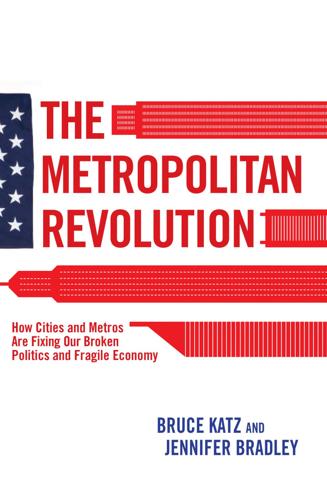
The Metropolitan Revolution: How Cities and Metros Are Fixing Our Broken Politics and Fragile Economy
by
Bruce Katz
and
Jennifer Bradley
Published 10 Jun 2013
In his 2012 TED talk, “Be the Entrepreneur of Your Own Life,” the venture capitalist Reid Hoffman, cofounder of LinkedIn, extolled the power of “network literacy,” which is, he said, “absolutely critical to how we’ll navigate the world.” He continued, “In a networked age, identity is not so simply determined. Your identity is actually multivariate, distributed, and partly out of your control. Who you know shapes who you are.”62 Northeast Ohio’s efforts to use networks to bring about a new economy—built on the foundations of its old economy—are aligned with powerful social, economic, and cultural forces. This feeling of alignment motivates people like Chris Thompson to go to all those meetings and bring all those doughnuts. He believes that his work and the work of the Fund for Our Economic Future reflects “the civic challenge of our time.
…
Second, the launch of M1 Rail exemplifies the collaborative spirit and integrated nature of economy shaping and place making at the heart of the metropolitan revolution. Detroit’s revival is being inspired, accelerated, and supported by an intricate web of philanthropic and business leaders and a remarkable set of nonprofit and quasi-public intermediaries that are painstakingly connecting the dots between hundreds of separate actions and transactions. The New Economy Initiative for Southeast Michigan— a $100 million consortium of ten local and national foundations—is a major investor in Detroit’s midtown and downtown. Since its inception in 2007, the initiative has supported or created several investment funds for start-ups and provided capital for significant place-making infrastructure, particularly in TechTown in midtown and its surrounding area, and its grants have helped launch 417 new companies, create 6,700 jobs, and leverage $261 million in additional investment in start-up companies supported by its grantees.100 06-2151-2 ch6.indd 139 5/20/13 6:53 PM 140 THE RISE OF INNOVATION DISTRICTS Living Cities, another philanthropic consortium, has invested $22 million in the Woodward Corridor Initiative to “redensify” the corridor and realize the full potential of the transit investment.101 The Kresge Foundation alone committed $150 million over the next five years to implement the recommendations and strategies outlined in the Detroit Future City report, doubling down on the investments it has already made along the riverfront, in M1 Rail, in the planning for the Detroit Future City effort, and as part of both the New Economy Initiative and Living Cities.102 In 2011 the Henry Ford Health System, the Detroit Medical Center, and Wayne State University, along with state and philanthropic support, launched the Live Midtown initiative, which provides financial incentives for employees who move to the area and entices existing renters and homeowners to stay and reinvest.103 Based on the program’s success, a group of downtown corporations—Quicken Loans, Blue Cross Blue Shield, Compuware, Strategic Staffing Solutions, Marketing Associates, and DTE Energy—created the Live Downtown Initiative.
…
Since its inception in 2007, the initiative has supported or created several investment funds for start-ups and provided capital for significant place-making infrastructure, particularly in TechTown in midtown and its surrounding area, and its grants have helped launch 417 new companies, create 6,700 jobs, and leverage $261 million in additional investment in start-up companies supported by its grantees.100 06-2151-2 ch6.indd 139 5/20/13 6:53 PM 140 THE RISE OF INNOVATION DISTRICTS Living Cities, another philanthropic consortium, has invested $22 million in the Woodward Corridor Initiative to “redensify” the corridor and realize the full potential of the transit investment.101 The Kresge Foundation alone committed $150 million over the next five years to implement the recommendations and strategies outlined in the Detroit Future City report, doubling down on the investments it has already made along the riverfront, in M1 Rail, in the planning for the Detroit Future City effort, and as part of both the New Economy Initiative and Living Cities.102 In 2011 the Henry Ford Health System, the Detroit Medical Center, and Wayne State University, along with state and philanthropic support, launched the Live Midtown initiative, which provides financial incentives for employees who move to the area and entices existing renters and homeowners to stay and reinvest.103 Based on the program’s success, a group of downtown corporations—Quicken Loans, Blue Cross Blue Shield, Compuware, Strategic Staffing Solutions, Marketing Associates, and DTE Energy—created the Live Downtown Initiative.
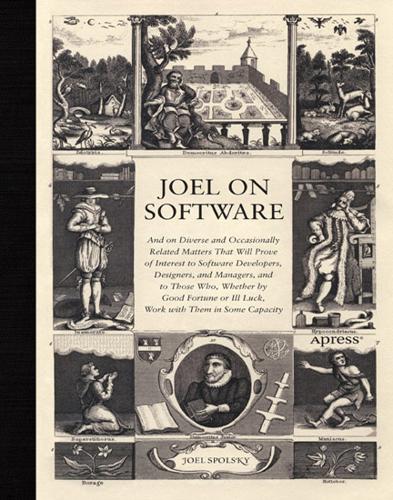
Joel on Software
by
Joel Spolsky
Published 1 Aug 2004
We all piled into B2B and B2C and P2P like a happy family getting in the Suburban for a Sunday outing to the Krispy Kreme Donut Shop. But wait, that's not even the amusing part; the amusing part was watching the worst business plans fail, as their stock went from 316 to 3/16. Take that, new economy blabbermouths! Ah, the schadenfreudef. Ah, the glee, when once again, Wired magazine proves that as soon as it puts something on the cover, that thing will be proven to be stupid and wrong within a few short months. And with this New Economy thing, Wired really blew it, because they should have known by then what a death kiss their cover was for any technology or company or meme, after years of touting smell-o-rama and doomed game companies and how PointCast was going to replace the Web,2 no, wait, PointCast already replaced the Web, in March 1997.
…
And with this New Economy thing, Wired really blew it, because they should have known by then what a death kiss their cover was for any technology or company or meme, after years of touting smell-o-rama and doomed game companies and how PointCast was going to replace the Web,2 no, wait, PointCast already replaced the Web, in March 1997. But they tempted fate anyway, and didn't just put the New Economy on the cover, they devoted the whole goddamn issue to the New Economy,3 thus condemning the NASDAQ to plummet like a sheep learning to fly. __________ 2. Craig Bicknell, "PointCast Coffin About to Shut." Wired News, March 29, 2000. See www.wired.lycos.com/news/business/0,1367,35208,00.html. 3. Peter Schwartz and Peter Leyden, "The Long Boom: A History of the Future, 1980–2020." Wired, July 1997.
…
And thankfully, we no longer have to contend with 37 companies, each with $25 million in VC, competing against us by giving away their product for free in exchange for agreeing to have a big advertisement tattooed on your forehead. In the post-new economy, everybody is trying to figure out how much they can get away with charging. There's nothing wrong with the post-new economy, if you're smart. But all the endless news about the "dot coma" says more about the lack of creativity of business press editors than anything else. Sorry, fuckedcompany.com, it was funny for a month or so, now it's just pathetic. We'll focus on improving our product, and we'll focus on staying in business, by listening to our customers and eating our own dog food, instead of flying all over the country trying to raise more venture capital.
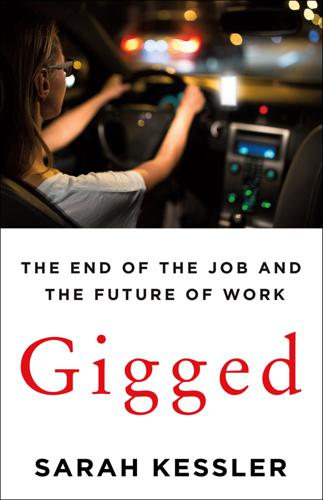
Gigged: The End of the Job and the Future of Work
by
Sarah Kessler
Published 11 Jun 2018
Household income in the United States became noticeably more volatile between the early 1970s and the late 2000s,13 and a Federal Reserve study published in 2014 found that a third of American households experience volatile income swings, mostly due to unpredictable hours.14 In 2004, when the Los Angeles Times reported the results of a survey that followed 5,000 families for 40 years, it concluded that “a growing number of families have found themselves caught on a financial roller coaster ride, with their annual incomes taking increasingly wild leaps and plunges.”15 The paper compared the new economy to the stock market, with an unpredictable schedule of big payouts and big setbacks for workers. This was a theme park ride that few people enjoyed. Labor leader David Rolf and venture capitalist Nick Hanauer, writing in the journal Democracy, explained why: Economic security is what frees us from the fear that one job loss, one illness—one economic downturn amidst a business cycle guaranteed to produce economic downturns—could cost us our home, our car, our family, and our social status.
…
After the disappointment of Dynamo, the online organizing platform for Mechanical Turk workers Kristy had helped build, she had come to the conclusion that the only way to make sure the interests of crowd workers were considered was to have workers run the platform. To bring an old idea—cooperatives—into the new economy. Trebor agreed. It was an idea around which he eventually based a book and a conference that was attended by 1,500 people.2 He named it “platform cooperativism.” Typical arguments against cooperatives are that they are slow—voting on decisions takes time—and that they lack the means to market themselves.
…
New York Times. January 26, 2013. https://opinionator.blogs.nytimes.com/2013/01/26/the-rise-of-the-permanent-temp-economy/. 7 Dey, Matthew, Susan Houseman, and Anne Polivka. What Do We Know about Contracting Out in the United States? Evidence from Household and Establishment Surveys. In Labor in the New Economy, eds. Katharine G. Abraham, James R. Spletzer, and Michael Harper. University of Chicago Press, October 2010. 8 Manyika, James, Susan Lund, Jacques Bughin, Kelsey Robinson, Jan Mischke, and Deepa Mahajan. Independent Work: Choice, Necessity, and the Gig Economy. McKinsey Global Institute. October 2016. 9 General Accounting Office.
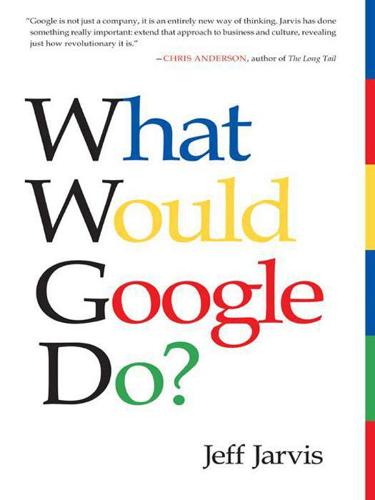
What Would Google Do?
by
Jeff Jarvis
Published 15 Feb 2009
Google Rules New Relationship • Give the people control and we will use it • Dell hell • Your worst customer is your best friend • Your best customer is your partner New Architecture • The link changes everything • Do what you do best and link to the rest • Join a network • Be a platform • Think distributed New Publicness • If you’re not searchable, you won’t be found • Everybody needs Googlejuice • Life is public, so is business • Your customers are your ad agency New Society • Elegant organization New Economy • Small is the new big • The post-scarcity economy • Join the open-source, gift economy • The mass market is dead—long live the mass of niches • Google commodifies everything • Welcome to the Google economy New Business Reality • Atoms are a drag • Middlemen are doomed • Free is a business model • Decide what business you’re in New Attitude • There is an inverse relationship between control and trust • Trust the people • Listen New Ethic • Make mistakes well • Life is a beta • Be honest • Be transparent • Collaborate • Don’t be evil New Speed • Answers are instantaneous • Life is live • Mobs form in a flash New Imperatives • Beware the cash cow in the coal mine • Encourage, enable, and protect innovation • Simplify, simplify • Get out of the way If Google Ruled the World Media • The Google Times: Newspapers, post-paper • Googlewood: Entertainment, opened up • GoogleCollins: Killing the book to save it Advertising • And now, a word from Google’s sponsors Retail • Google Eats: A business built on openness • Google Shops: A company built on people Utilities • Google Power & Light: What Google would do • GT&T: What Google should do Manufacturing • The Googlemobile: From secrecy to sharing • Google Cola: We’re more than consumers Service • Google Air: A social marketplace of customers • Google Real Estate: Information is power Money • Google Capital: Money makes networks • The First Bank of Google: Markets minus middlemen Public Welfare • St.
…
About.com might as well be a division of Google, but it’s not. It’s merely built on Google’s platform. About.com is owned by The New York Times Company, which bought it in 2005 for $410 million (and hired me to consult there). I’ll confess I was dubious about the acquisition when it occurred, but I was wrong. Today, as papers struggle in the new economy, About.com is one of the rare bright spots in any newspaper company’s P&L. About.com at first wanted to compete with Google or even to be Google. Started by Scott Kurnit as The Mining Company in 1997—a year before Google was incorporated—its goal was to provide a human-powered guide to the internet.
…
We also have new ethics and attitudes that spring from this new organization and change society in ways we cannot yet see, with openness, generosity, collaboration, efficiency. We are using the internet’s connective tissue to leap over borders—whether they surround countries or companies or demographics. We are reorganizing society. This is Google’s—and Facebook’s and craigslist’s—new world order. New Economy Small is the new big The post-scarcity economy Join the open-source, gift economy The mass market is dead—long live the mass of niches Google commodifies everything Welcome to the Google economy Small is the new big Mind you, big is still big. Wal-Mart is the largest company on earth.

The Age of Stagnation: Why Perpetual Growth Is Unattainable and the Global Economy Is in Peril
by
Satyajit Das
Published 9 Feb 2016
Faltering Innovation Confronts the Six Headwinds,” Centre for Economic Policy Research, Policy Insight, no. 63 (September 2012). 10 Robert Salow, “We'd Better Watch Out,” New York Times Book Review, 12 July 1987. 11 See Founders Fund, “What Happened to the Future?” www.foundersfund.com/the-future. 12 Andy Xie, “Mirage of the ‘New Economy,’” Marketwatch, 26 March 2014. www.marketwatch.com/story/mirage-of-the-new-economy-2014-03-26. 13 Suzanne Woolley, “Amazon May Have Just Created a Weapon of Mass Consumption,” Financial Times, 21 June 2014. 14 Jill Lepore, “The Disruption Machine: What the Gospel of Innovation Gets Wrong,” New Yorker, 23 June 2014. www.newyorker.com/reporting/2014/06/23/140623fa_fact_lepore?
…
One commentator wryly dismissed social networking sites as “just places for people to express their narcissism cheaply.”12 In June 2014, Amazon announced its latest innovation, a smartphone that uses image-recognition technology to allow customers to purchase products by pointing it at more than 70 million objects in its online store. Designed to minimize barriers to spending, it exemplifies the instantaneous gratification that passes for innovation in the new economy. Critics have branded it a weapon of mass consumption that allows you to point and shoot yourself in the foot.13 Many new technologies displace existing industries, limiting the effect on growth and productivity. Recent innovations have focused on marketing and distributing existing goods and services, rather than on creating entirely new industries.
…
Emerging nations combined their cheap labor and local or imported resources with foreign technology or capital to manufacture and export goods and services to developed countries. Improvements in technology, telecommunications, and transport allowed cheaper emerging nations to compete with advanced economies. One-off events were important. The Y2K software problems fueled the development of India's software industry. The new economy was centered on China, now the world's factory, exporting around 50 percent of its output. It imported resources and parts that were then assembled or processed and shipped out again. Smaller emerging economies, especially in Asia, became integrated into new Sino-centric global supply chains. Consultant David Rothkopf highlighted the uneven balance of power within emerging markets: “Without China, the BRICs are just the BRI, a bland, soft cheese that is primarily known for the whine [sic] that goes with it…”8 China was now the largest purchaser of iron ore and other metals, and one of the biggest purchasers of cotton and soybeans.
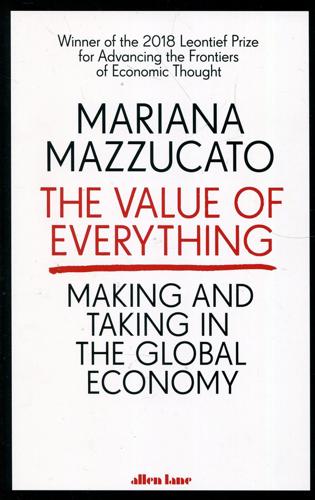
Value of Everything: An Antidote to Chaos The
by
Mariana Mazzucato
Published 25 Apr 2018
Leslie, The Cold War and American Science: The Military-Industrial-Academic Complex at MIT and Stanford (New York: Columbia University Press, 1993). 9. See W. Lazonick, Sustainable Prosperity in the New Economy? Business Organization and High-Tech Employment in the United States (Kalamazoo, MI: W. E. Upjohn Institute for Employment Research, 2009), ch. 2: doi: https://doi.org/10.17848/9781441639851 10. Business Week, 1960, cited in H. Lazonick, Sustainable Prosperity in the New Economy? Business Organization and High-tech Employment in the United States (Kalamazoo, MI: Upjohn Press, 2009), p. 79. 11. W. Lazonick and M. Mazzucato, ‘The risk-reward nexus in the innovation-inequality relationship: Who takes the risks?
…
Indeed, Google's stated mission is Do No Evil. In April 2016 a front cover of the Economist showed the Facebook founder Mark Zuckerberg dressed like a Roman emperor under the headline ‘Imperial Ambition'. Meanwhile, innovation is seen as the new force in modern capitalism, not just in Silicon Valley but globally. Phrases like the ‘new economy', ‘the innovation economy', ‘the information society' or ‘smart growth' encapsulate the idea that it is entrepreneurs, garage tinkerers and their patents that unleash the ‘creative destruction' from which the jobs of the future come. We are told to welcome the likes of Uber and Airbnb because they are the forces of renewal that sweep away the old incumbents, whether black cabs in London or ‘dinosaur' hotel chains like Hilton.
…
Sunga, ‘An alternative to the current treatment of interest as transfer in the United Nations and Canadian systems of national accounts', Review of Income and Wealth, 30(4) (1984), p. 385: http://doi.org/10.1111/j.1475-4991.1984.tb00487.x 17. B. R. Moulton, The System of National Accounts for the New Economy: What Should Change? (Washington DC: Bureau of Economic Analysis, US Dept. of Commerce, 2003), p. 17: http://www.bea.gov/about/pdf/sna_neweconomy_1003.pdf 18. The development of income and growth estimation is sometimes depicted as a purely empirical affair that is barely influenced by theory (R.
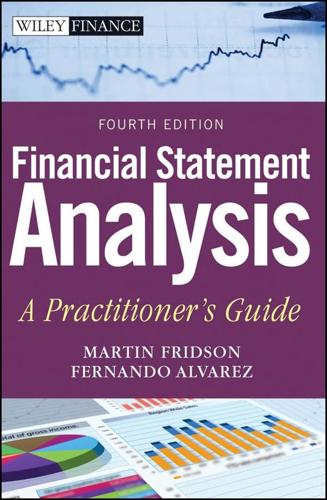
Financial Statement Analysis: A Practitioner's Guide
by
Martin S. Fridson
and
Fernando Alvarez
Published 31 May 2011
Building up subscriber bases through heavy consumer advertising was an expensive proposition, but one day, investors believed, a large, loyal following would translate into rich revenue streams. Much of the dot-coms’ stock market value disappeared during the tech wreck of 2000, but the perceived mismatch between the information-intensive New Economy and traditional notions of assets persisted. Prominent accounting theorists argued that financial reporting practices rooted in an era more dominated by heavy manufacturing grossly understated the value created by research and development outlays, which GAAP was resistant to capitalizing. They observed further that traditional accounting generally permitted assets to rise in value only if they were sold.
…
Most of the write-off represented a reduction of goodwill that the manufacturer of paint and related products had created through a string of acquisitions. Even after the huge hit, goodwill represented 18.8 percent of Sherwin-Williams's assets and accounted for 47.9 percent of shareholders’ equity. Both Old Economy and New Economy companies, in short, are vulnerable to a sudden loss of stated asset value. Therefore, users of financial statements should not assume that balance sheet figures invariably correspond to the current economic worth of the assets they represent. A more reasonable expectation is that the numbers have been calculated in accordance with GAAP.
…
Its ratio of tangible assets to liabilities did not change, however. The rating agencies monitored both ratios but had customarily attached greater significance to the version that ignored intangible assets such as goodwill. HOW GOOD IS GOODWILL? By maintaining a skeptical attitude to the value of intangible assets throughout the New Economy excitement of the late nineties, Moody's and Standard & Poor's were bucking the trend. The more stylish view was that balance sheets constructed according to GAAP seriously understated the value of corporations in dynamic industries such as computer software and e-commerce. Their earning power, so the story went, derived from inspired ideas and improved methods of doing business, not from the bricks and mortar for which conventional accounting was designed.
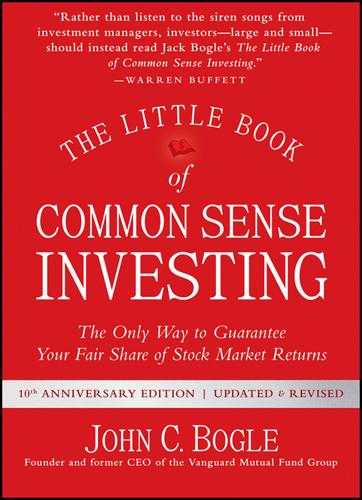
The Little Book of Common Sense Investing: The Only Way to Guarantee Your Fair Share of Stock Market Returns
by
John C. Bogle
Published 1 Jan 2007
When counterproductive investor emotions are magnified by counterproductive fund industry promotions, little good is apt to result. This lag effect has been amazingly pervasive. For example, the returns provided to investors from 2008 to 2016 by 186 of the 200 largest equity funds were lower than the returns that they reported to investors! This lag was especially evident during the “new economy” craze of the late 1990s. Then, the fund industry organized more and more funds, usually funds that carried considerably higher risk than the stock market itself, and magnified the problem by heavily advertising the eye-catching past returns earned by the hottest funds. As the market soared, investors poured ever larger sums of money into equity funds.
…
They invested a net total of only $18 billion in 1990 when stocks were cheap, but $420 billion in 1999 and 2000, when stocks were substantially overvalued (Exhibit 7.2). EXHIBIT 7.2 The Timing and Selection Penalties: Net Flow into U.S. Equity Funds What’s more, investors also overwhelmingly chose “new economy” funds, technology funds, and the hottest-performing growth funds, to the virtual exclusion of more conservative value-oriented funds. Whereas only 20 percent of their money had been invested in risky aggressive growth funds in 1990, investors poured fully 95 percent into such funds as those fund returns peaked during 1999 and early 2000.
…
If you can avoid jumping on the bandwagon . . . And if professional investment consultants are wise enough—or lucky enough—to keep their clients from jumping on the latest and hottest bandwagon (for example, the tech-stock craze of the late 1990s, reflected in the mania for funds investing in “new economy” stocks), their clients may earn returns that easily surpass the disappointing returns achieved by fund investors as a group. Remember the additional shortfall of about one and one-half percentage points per year relative to the average equity fund that we estimated in Chapter 7? To remind you, the average nominal investor return came to just 6.3 percent per year during 1991–2016, despite a strong stock market in which a simple S&P 500 Index fund earned an annual return of 9.1 percent.
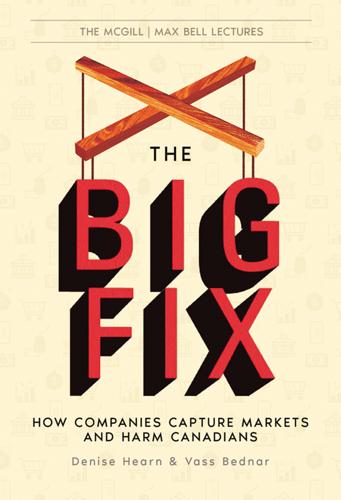
The Big Fix: How Companies Capture Markets and Harm Canadians
by
Denise Hearn
and
Vass Bednar
Published 14 Oct 2024
Canada’s largest veterinary firm, VetStrategy, operates hundreds of vet clinics and hospitals across the country.181 It was acquired by US private equity firm Berkshire Partners in 2020, and then sold the following year to IVC Evidensia, a European veterinary care provider that is owned by a Swedish private equity firm. Canadian consumers likely don’t realize that every time they visit the vet, they might make the Mars family or a Swiss private equity firm, and their global investors, richer. And herein lies a truth about the new economy: the largest corporations, whether publicly traded, family owned, or private, now use their vast troves of cash to buy up any business they can get their hands on. Whether small businesses, or large, these new kings of capital buy growth instead of building it. This produces a triple whammy problem: 1) it worsens market consolidation that can harm consumers, 2) it reduces the ability for smaller companies to scale up and become challengers to incumbent firms, and 3) it contributes to stagnant growth and lower productivity.
…
When noticed, businesses have occasionally been shamed by consumer protection groups, viral Reddit threads, or vigilant individuals with a platform. But these problems go well beyond the ability of a consumer to read every label in detail or verify the weight of a product at checkout. Consumers can’t be expected to police every market, every day. Too much of the new economy relies on individuals to provide near-constant mini-checks on corporate power. The ongoing erosion of trust between firms and purchasers is less about a false choice between free or regulated markets—it’s a question of how to turn manipulated markets into trustworthy ones. It shouldn’t be too much to expect markets to operate in fair, transparent, and reliable ways.
…
These behaviours should be clearly addressed through new laws, because they will ensure fair dealing and protect consumers from trust-eroding tricks. Without legislation, it is simply too difficult for the bureau to police these tactics on a one-off basis. Other jurisdictions have been investigating new economy norms that deplete trust while maintaining illusions of rivalry and rejecting them outright—for instance, drip pricing, junk fees, self-preferencing, algorithmic collusion, and shrinkflation. Bold policy proposals in the United States and EU have tried to draw more definitive lines in the sand to create market guardrails against these behaviours.

Revolution at Point Zero: Housework, Reproduction, and Feminist Struggle
by
Silvia Federici
Published 4 Oct 2012
Pyle, “Transnational Migration and Gendered Care Work: Introduction,” Globalizations 3, no. 3 (2006): 289; Arlie Hochschild and Barbara Ehrenreich, Global Women: Nannies, Maids and Sex Workers in the New Economy (New York: Holt, 2002). 13. Dario Di Vico, “Le badanti, il nuovo welfare privato. Aiutano gli anziani e lo Stato risparmia,” Corriere della Sera, June 13, 2004, 15. 14. Arlie Hochschild, “Global Care Chains and Emotional Surplus Value,” in Global Capitalism, eds. Will Hutton and Anthony Giddens (New York: The New Press, 2000); Arlie Hochschild and Barbara Ehrenreich, Global Women: Nannies, Maids and Sex Workers in the New Economy (New York: Holt, 2002), 26-27. 15. New York Times, January 28, 2009. 16. The Bill of Rights Domestic Workers United campaigned for and won in 2010 in New York State was the first in the country that recognized that care workers are workers, entitled to the same rights that other categories of workers have. 17.
…
Governments are now attempting to use the crisis to impose stiff austerity regimes on us for years to come. But through land takeovers, urban farming, community-supported agriculture, through squats, the creation of various forms of barter, mutual aid, alternative forms of healthcare—to name some of the terrains on which this reorganization of reproduction is more developed—a new economy is beginning to emerge that may turn reproductive work from a stifling, discriminating activity into the most liberating and creative ground of experimentation in human relations. As I stated, this is not a utopia. The consequences of the globalized world economy would certainly have been far more nefarious except for the efforts that millions of women have made to ensure that their families would be supported, regardless of their value on the capitalist labor market.
…
King Leopold’s Ghost, Boston: Houghton Mifflin Co., 1998. Hochschild, Arlie. “Global Care Chains and Emotional Surplus Value.” In Global Capitalism, edited by Will Hutton and Anthony Giddens. New York: The New Press, 2000. Hochschild, Arlie, and Barbara Ehrenreich. Global Women: Nannies, Maids and Sex Workers in the New Economy. New York: Holt, 2002. Holloway, John. Change the World Without Taking Power. London: Pluto Press, 2002. _. Crack Capitalism. London: Pluto Press, 2010. Holmstrom, Nancy, ed. The Socialist Feminist Project: A Contemporary Reader in Theory and Politics. New York: Monthly Review Press, 2002. hooks, bell.

Prediction Machines: The Simple Economics of Artificial Intelligence
by
Ajay Agrawal
,
Joshua Gans
and
Avi Goldfarb
Published 16 Apr 2018
As the effects of the internet began to spread across industries and up and down the value chain, technology advocates stopped referring to the internet as a new technology and began referring to it as the “New Economy.” The term caught on. The internet transcended the technology and permeated human activity at a fundamental level. Politicians, corporate executives, investors, entrepreneurs, and major news organizations started using the term. Everyone began referring to the New Economy. Everyone, that is, except economists. We did not see a new economy or a new economics. To economists, this looked like the regular old economy. To be sure, some important changes had occurred.
…
See also uncertainty AI canvas for, 134–138 AI’s impact on, 3 centrality of, 73–74 cheap prediction and, 29 complexity and, 103–110 decomposing, 133–140 on deployment timing, 184–187 elements of, 74–76, 134–138 experiments and, 99–100 fully automated, 111–119 human strengths in, 98–102 human weaknesses in prediction and, 54–58 judgment in, 74, 75–76, 78–81, 83–94, 96–97 knowledge in, 76–78 modeling and, 99, 100–102 predicting judgment and, 95–102 preferences and, 88–90 satisficing in, 107–109 work flow analysis and, 123–131 decision trees, 13, 78–81 Deep Genomics, 3 deep learning approach, 7, 13 back propagation in, 38 flexibility in, 36 to language translation, 26–27 security risks with, 203–204 DeepMind, 7–8, 183, 187, 222, 223 Deep Thinking (Kasporov), 63 demand management, 156–157 dependent variables, 45 deployment decisions, 184–187 deskilling, 192–193 deterministic programming, 38, 40 Didi, 219 disparate impact, 197 disruptive technologies, 181–182 diversity, 201–202 division of labor, 53–69 human/machine collaboration, 65–67 human weaknesses in prediction and, 54–58 machine weaknesses in prediction and, 58–65 prediction by exception and, 67–68 dog fooding, 184 drone weapons, 116 Dropbox, 190 drug discovery, 28, 134–138 Dubé, J. P., 93–94 Duke University Teradata Center, 35 earthquakes, 59–60 eBay, 199 economics, 3 of AI, 8–9 of cost reductions, 9–11 data collection and, 49–50 on externalities, 116–117 New Economy and, 10–11 economies of scale, 49–50, 215–217 Edelman, Ben, 196–197 education, income inequality and, 214 electricity, cost of light and, 11 emergency braking, automatic, 111–112 error, tolerance for, 184–186 ethical dilemmas, 116 Etzioni, Oren, 220 Europe, privacy regulation in, 219–220 exceptions, prediction by, 67–68 Executive Office of the US President, 222–223 experience, 191–193 experimentation, 88, 99–100 AI tool development and, 159–160 expert prediction, 55–58 externalities, 116–117 Facebook, 176, 190, 195–196, 215, 217 facial recognition, 190, 219–220 Federal Aviation Administration, 185 Federal Trade Commission, 195 feedback data, 43, 46 in decision making, 74–76, 134–138 experience and, 191–193 risks with, 204–205 financial crisis of 2008, 36–37 flexibility, 36 Forbes, Silke, 168–169 Ford, 123–134, 164 Frankston, Bob, 141, 164 fraud detection, 24–25, 27, 84–88, 91 Frey, Carl, 149 fulfillment industry, 105, 143–145 Furman, Jason, 213 Gates, Bill, 163, 210, 213, 221 gender discrimination, 196–198 Gildert, Suzanne, 145 Glozman, Ron, 53–54 Goizueta, Robert, 43 Goldin, Claudia, 214 Goldman Sachs, 125 Google, 7–8, 43, 50, 187, 215, 223 advertising, 176, 195–196, 198–199 AI-first strategy at, 179–180 AI tool development at, 160 anti-spam team sting, 202–203 bias in ads and, 195–196 China, 219 Inbox, 185, 187 market share of, 216–217 Now, 106 privacy policy, 190 search engine optimization and, 64 search tool, 19 translation service, 25–26 video content algorithm, 200 Waymo, 95 Waze and, 89–90 Grammarly, 96 Greece, ancient, 23 Griliches, Zvi, 159 Grove, Andy, 155 hackers, 200 Hacking, Ian, 40 Hammer, Michael, 123–134 Harford, Tim, 192–193 Harvard Business School cases, 141 Hawking, Stephen, 8, 210–211, 221 Hawkins, Jeff, 39 health insurance, 28 heart disease, diagnosing, 44–45, 47–49 Heifets, Abraham, 135, 136 Hemingway, Ernest, 25–26 heuristics, 55 Hinton, Geoffrey, 145 hiring, 58, 98 ZipRecruiter and, 93–94, 100 Hoffman, Mitchell, 58 homogeneity, data, 201–202 hotel industry, 63–64 Houston Astros, 161 Howe, Kathryn, 14 human resource (HR) management, 172–173 IBM’s Watson, 146 identity verification, 201, 219–220 iFlytek, 26–27 if-then logic, 91, 104–109 image classification, 28–29 ImageNet, 7 ImageNet Challenge, 28–29 imitation of algorithms, 202–204 income inequality, 19, 212–214 independent variables, 45 inequality, 19, 212–214 initial public offerings (IPOs), 9–10, 125 innovation, 169–170, 171, 218–219 innovator’s dilemma, 181–182 input data, 43 in decision making, 74–76, 134–138 identifying required, 139 Integrate.ai, 14 Intel, 15, 215 intelligence churn prediction and, 32–36 human, 39 prediction as, 2–3, 29, 31–41 internet advertising, 175–176 browsers, 9–10 delivery time uncertainty and commerce via, 157–158 development of the commercial, 9–10 inventory management, 28, 105 Iowa, hybrid corn adoption in, 158–160, 181 iPhone, 129–130, 155 iRobot, 104 James, Bill, 56 Jelinek, Frederick, 108 jobs, 19.
…
See also jobs “Lady Lovelace’s Objection,” 13 Lambrecht, Anja, 196 language translation, 25–27, 107–108 laws of robotics, 115 learning -by-using, 182–183 in the cloud vs. on the ground, 188–189, 202 experience and, 191 in-house and on-the-job, 185 language translation, 26–27 pathways to, 182–184 privacy and data for, 189–190 reinforcement, 13, 145, 183–184 by simulation, 187–188 strategy for, 179–194 supervised, 183 trade-offs in performance and, 181–182 when to deploy and, 184–187 Lederman, Mara, 168–169 Lee, Kai-Fu, 219 Lee Se-dol, 8 legal documents, redacting, 53–54, 68 legal issues, 115–117 Lewis, Michael, 56 Li, Danielle, 58 liability, 117, 195–198 lighting, cost of, 11 London cabbies, 76–78 Lovelace, Ada, 12, 13 Lyft, 88–89 Lytvyn, Max, 96 machine learning, 18 adversarial, 187–188 churn prediction and, 32–36 complexity and, 103–110 from data, 45–47 feedback for, 46–47 flexibility in, 36 judgment and, 83 one-shot, 60 regression compared with, 32–35 statistics and prediction and, 37–40 techniques, 8–9 transformation of prediction by, 37–40 Mailmobile, 103 management AI’s impact on, 3 by exception, 67–68 Mastercard, 25 mathematics, made cheap by computers, 12, 14 Mazda, 124 MBA programs, student recruitment for, 127–129, 133–139 McAfee, Andrew, 91 Mejdal, Sig, 161 Microsoft, 9–10, 176, 180, 202–204, 215, 217 Tay chatbot, 204–205 mining, automation in, 112–114 Misra, Sanjog, 93–94 mobile-first strategy, 179–180 Mobileye, 15 modeling, 99, 100–102 Moneyball (Lewis), 56, 161–162 monitoring of predictions, 66–67 multivariate regression, 33–34 music, digital, 12, 61 Musk, Elon, 209, 210, 221 Mutual Benefit Life, 124–125 Napster, 61 NASA, 14 National Science and Technology Council (NSTC), 222–223 navigation apps, 77–78, 88–90, 106 Netscape, 9–10 neural networks, 13 New Economy, 10 New York City Fire Department, 197 New York Times, 8, 218 Nordhaus, William, 11 Norvig, Peter, 180 Nosko, Chris, 199 Novak, Sharon, 169–170 Numenta, 223 Nymi, 201 Oakland Athletics, 56, 161–162 Obama, Barack, 217–218 objectives, identifying, 139 object recognition, 7, 28–29 Olympics, Rio, 114–115 omitted variables, 62 one-shot learning, 60 On Intelligence (Hawkins), 39 Open AI, 210 optimization, search engine, 64 oracles, 23 organizational structure, 161–162 Osborne, Michael, 149 Otto, 157–158 outcomes in decision making, 74–76, 134–138 job redesign and, 142 outsourcing, 169–170, 171 Page, Larry, 179 Paravisini, Daniel, 66–67 pattern recognition, 145–147 Pavlov, Ivan, 183 payoff calculations, 78–81 in drug discovery, 136 judgment in, 87–88 Pell, Barney, 2 performance, trade-offs between learning and, 181–182, 187 performance reviews, 172–173 photography digital, 14 sports, automation of, 114–115 Pichai, Sundar, 179–180 Piketty, Thomas, 213 Pilbara, Australia, mining in, 112–114 policy, 3, 210 power calculations, 48 prediction, 23–30 about the present, 23–24 behavior affected by, 23 bias in, 34–35 complements to, 15 consequences of cheap, 29 credit card fraud prevention and, 24–25 in decision making, 74–76, 134–138 definition of, 13, 24 by exception, 67–68 human strengths in, 60 human weaknesses in, 54–58 improvements in, 25–29 as intelligence, 2–3, 29, 31–41 in language translation, 25–27 machine weaknesses in, 58–65 made cheap, 13–15 selling, 176–177 techniques, 13 unanticipated correlations and, 36–37 of what a human would do, 95–102 predictive text, 130 preferences, 88–90, 96–97, 98 selling consumer, 176–177 presidential elections, 59 prices effects of reduced AI, 9–11 human judgment in, 100 sales causality and, 63–64 for ZipRecruiter, 93–94 privacy issues, 19, 49, 98 China and, 219–220 country differences in, 219–221 data collection, 189–190 probabilistic programming, 38, 40 processes.
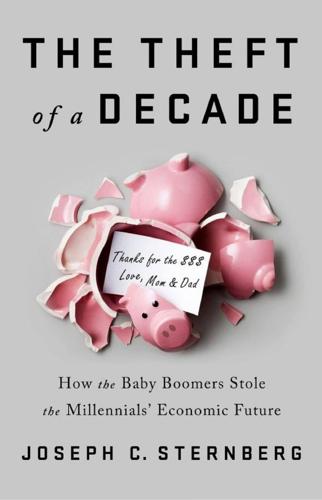
The Theft of a Decade: How the Baby Boomers Stole the Millennials' Economic Future
by
Joseph C. Sternberg
Published 13 May 2019
The “death of American manufacturing” is mired in controversy—by some measures manufacturing has declined steadily as a proportion of total GDP since the 1950s; by other measures it’s holding more or less steady—but America still is very much an economy that produces physical things in addition to all those services.32 And it’s clear that the nature of American manufacturing has changed significantly, as has the nature of employment within manufacturing industries. This work has become progressively higher skilled and more productive, while many workers who couldn’t keep up with the transformation (or, far more often, whose employers couldn’t keep up) have struggled to navigate the new economy. Manufacturing’s share of employment has fallen from above 30 percent in the 1950s to less than 10 percent now.33 Countless economists going back forty years or more have tried to dig into what’s driving this transformation. Commonly cited culprits include technological advances, especially the computing revolution; foreign trade, especially with super-efficient industrial powerhouses such as Germany or Japan or low-wage behemoths such as China; US domestic tax policies and economic regulations; other policy failures such as deteriorating public education—you name it, someone has probably thought of it as an explanation for this switch.
…
In the course of doing so, they would make labor ever more expensive, and investments requiring more labor ever less attractive, at precisely the moment capital investment was becoming cheaper and cheaper—at least for some investors in some industries. To see why that approach was such a disaster, look no further than the Affordable Care Act, or Obamacare. Obamacare was an attempt to solve a glaring problem: in a new economy of constant employment churn (and where there were fewer and fewer mid-paying jobs to support health benefits for large tranches of the working population) it just doesn’t make a lot of sense to tie insurance to employment. It never made sense anyway. America’s system of employment-based insurance developed the way it did only by accident.
…
Among twenty-five- to thirty-four-year-olds, three-quarters of those who lived at home as of 2016 had actual work or were studying.9 An oft-repeated reason for living at home is that rents are unaffordably high, especially in vibrant urban areas where the job market tends to be strongest for creative, highly educated Millennials.* A paradox is that many of America’s most expensive places to live have become so pricy because they’re magnets for the kinds of creative, new-economy jobs that attract hyper-educated Millennials like moths to a flame (or like avocado to toast)—yet Millennials struggle to afford to live in these hubs partly as a result of rising rents and partly because our pay doesn’t keep pace. The moving-back-in-with-Mom-and-Dad trend represents an enormous backward step in the evolution of modern American adulthood.
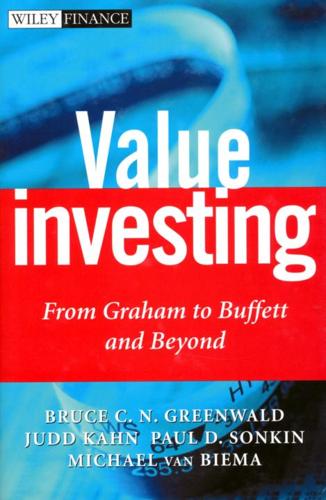
Value Investing: From Graham to Buffett and Beyond
by
Bruce C. N. Greenwald
,
Judd Kahn
,
Paul D. Sonkin
and
Michael van Biema
Published 26 Jan 2004
In the last years of the last century, it looked as if value investors were an endangered species. The "New Economy," based on digital technologies and biotechnologies in all their manifestations, was thought to cultivate companies with prospects for unlimited growth in sales and even more growth in income. By now it is clear that at least some of these premises were mistaken. There is no need to review the history of those miraculous initial public offerings (IPOs) that came public at $20, spiked to $120, and then drifted or thudded back to earth, on the basis of earnings that no one had seen but were promised four or five years hence. The most fervid proponents of the New Economy hypothesis argued that some of the funda mental truths of economics had been repealed, such as the theory that competitors would be drawn to profitable industries and ultimately force profit margins down into a normal range.
…
Figure 7.3 Intel Capital Expenditures and PPE, 1975-1998 If there are assets that a competitor would have needed to produce to compete with Intel, they are not found on the balance sheet for 1975. That does not mean that they didn't exist. Intel, we should not forget, was a New Economy stock long before the New Economy had a name (at least in its post-1920s incarnation). As an early and major manufacturer of memory chips and then microprocessors, Intel invested in knowledge-based resources-the science and engineering skills needed to design and fabricate semiconductors-and supplied knowledge-enhancing products, which were the memory and brains of computers and industrial equipment, to its customers.
…
The most fervid proponents of the New Economy hypothesis argued that some of the funda mental truths of economics had been repealed, such as the theory that competitors would be drawn to profitable industries and ultimately force profit margins down into a normal range. This intellectual environment, when coupled with stock markets that for three or four years only went up, and up substantially, was not friendly to value investors. Even those whose long-term performance records were the stuff of legend fell behind those who either understood the New Economy or, more likely, were able to anticipate how other investors would respond to its prospects. At the end of the decade (and century and millennium), the debate between those who saw the current market level as tulip mania revisited and those who saw it as a stepping stone to 36,000 on the Dow was still raging.

An Empire of Wealth: Rise of American Economy Power 1607-2000
by
John Steele Gordon
Published 12 Oct 2009
The United States was now a continental nation in geopolitical reality as well as nominal geographic fact. The need to devise the new rules and institutions that would allow this new economy to flourish, and to assure that its fruits were equitably enjoyed by all segments of society, would dominate domestic American politics for the next century, just as preserving the Union and slavery had dominated the politics of the antebellum period. Many of the devices adopted to govern the new economy in this time would come through governmental and legislative action, especially in the latter decades. But, in fact, just as many would emerge out of the private sector, as the lawyers, bankers, brokers, railroaders, labor leaders, and industrialists sought to advance their own long-term self-interests, which were by no means always identical.
…
Chapter Fourteen: A Cross of Gold Part IV The American Century Begins Transition: The First World War Chapter Fifteen: Getting Prices Down to the Buying Power Chapter Sixteen: Fear Itself Chapter Seventeen: Converting Retreat into Advance Part V A New Economic Revolution Transition: The Second World War Chapter Eighteen: The Great Postwar Boom Chapter Nineteen: The Crisis of the New Deal Order Chapter Twenty: A New Economy, a New World, a New War Notes Bibliography Searchable Terms About the Author Praise Other Books by John Steele Gordon Copyright About the Publisher ACKNOWLEDGMENTS MY FIRST THANKS, needless to say, are due to my editor, Tim Duggan; his assistant, John Williams; and my agent, Katinka Matson.
…
The reason that the nineteenth century seems so peculiarly scandal-ridden, perhaps, is that there was so much economic, technological, and social change in that century. With the reforms brought about by the scandals of the immediate post–Civil War era, the American economy and American politics settled into a more law-abiding period while the economy continued to evolve at breakneck speed. But many of the men who would play a central role in shaping the new economy, men such as J. P. Morgan, John D. Rockefeller, and Andrew Carnegie, came of age in the era of unprecedented government corruption and would never be able to conceive of government as a suitable instrument for reforming and regulating the economy. To them, government was part of the problem, not the solution.
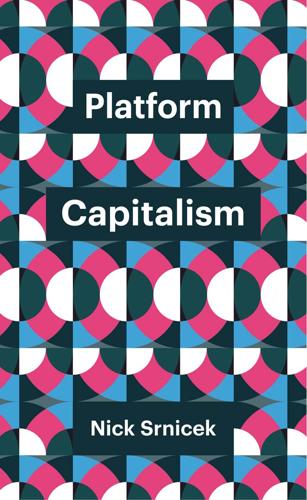
Platform Capitalism
by
Nick Srnicek
Published 22 Dec 2016
In the cut-throat early stages investors enthusiastically joined, in hopes of picking the eventual winner. Many companies did not have to rely on VC either, as the equity markets swooned over tech stocks. Initially driven by declining borrowing costs and rising corporate profits,14 the stock market boom came unmoored from the real economy when it latched onto the ‘new economy’ promised by internet-based companies. During its peak period between 1997 and 2000, technology stocks rose 300 per cent and took on a market capitalisation of $5 trillion.15 This excitement about the new industry translated into a massive injection of capital into the fixed assets of the internet.
…
There is no necessity to this outcome, as political efforts can stall or reverse it; but within a capitalist mode of production there are strong competitive pressures towards this end. Challenges For all the rhetoric of having overcome capitalism and of transitioning to a new mode of production – a rhetoric inherent in the postindustrial thesis of the 1960s, in the ideas of ‘new economy’ disciples in the 1990s, and in the radical and conservative paeans to the sharing economy of today – we still remain bound to a system of competition and profitability. Platforms offer new forms of competition and control, but in the end profitability is the great arbiter of success. Given these constraints, we must now open platforms up onto the wider economy.
…
‘A Proposal for Modernizing Labor Laws for Twenty-First-Century Work: The “Independent Worker”.’ The Hamilton Project. Discussion paper 2015-10. December. http://www.hamiltonproject.org/assets/files/modernizing_labor_laws_for_twenty_first_century_work_krueger_harris.pdf (accessed 25 May 2016). Henwood, Doug. 2003. After the New Economy. New York: New Press. Henwood, Doug. 2015. ‘What the Sharing Economy Takes’. The Nation, 27 January. http://www.thenation.com/article/what-sharing-economy-takes (accessed 25 May 2016). Herrman, John. 2016. ‘Media Websites Battle Faltering Ad Revenue and Traffic’. The New York Times, 17 April. http://www.nytimes.com/2016/04/18/business/media-websites-battle-falteringad-revenue-and-traffic.html (accessed 30 June 2016).
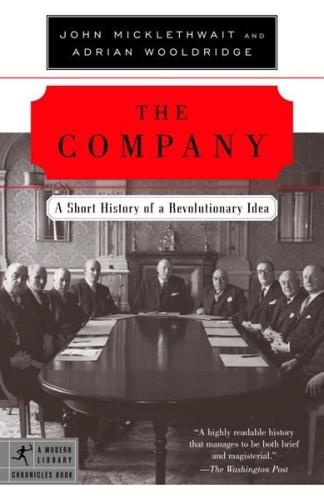
Company: A Short History of a Revolutionary Idea
by
John Micklethwait
and
Adrian Wooldridge
Published 4 Mar 2003
In the late nineteenth century, the finest examples of the “new economy” in Europe were all in Germany: the vast electrical-equipment producing complex at Siemenstadt, the huge chemical works of Leverkusen, Ludwigshafen, and Frankfurt, the massive machinery works and steel mills in the Ruhr and along the Rhine. When Alfred Krupp died in 1887, his company employed twenty thousand people, and boasted its own hospitals and schools. Britain had nothing comparable to offer. Germany’s companies were similar to America’s in their focus on the new economy: almost two-thirds of the top two hundred dealt with metals, chemicals, and machinery.
…
In some cases, regulators breached the corporate veil—holding directors personally responsible for their firms’ actions. In Britain, for instance, the 1986 Insolvency Act made directors liable for the debts a company incurred after the point when they might reasonably be expected to have closed it down. But the real onslaught occurred in America, after the New Economy bubble burst. ENRON AND BEYOND The 1990s was a decade of infatuation with companies. The number of magazines devoted to business multiplied, even as the ages of the smiling chief executives on their covers plummeted. But the adoration went well beyond young whippersnappers. When Roberto Goizueta, the veteran boss of Coca-Cola, tried to justify his $80 million pay packet to a shareholder meeting, he was interrupted four times—with applause.
…
The specific catalyst was, ironically enough, one of the firms that Bush had turned to to design his energy policy. Enron was a darling of the 1990s—a new form of energy company that did not rely on drilling and gas stations but on teams of financial traders. A Harvard Business School case study was approvingly titled “Enron’s Transformation: From Gas Pipelines to New Economy Powerhouse.” Unfortunately, the energy trading company took its penchant for innovation just a little too far. Its managers used highly complicated financial engineering—convoluted partnerships, off-the-books debt, and exotic hedging techniques—to hide huge losses. And when those losses emerged, they sold millions in company stock while their employees were prohibited from doing likewise.
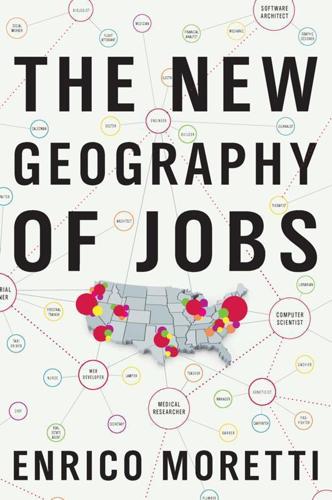
The New Geography of Jobs
by
Enrico Moretti
Published 21 May 2012
. [>] Shenzhen’s population has grown: According to the Shenzhen government’s official website, the city population was 30,000 in 1979 and 10.36 million in 2010. [>] Essentially this is why: Kraemer, Linden, and Dedrick, “Capturing Value in Global Networks.” [>] About a third of Americans work: My calculations are based on County Business Patterns data from the U.S. Census Bureau. [>] “the New Economy gives both companies and workers”: Atkinson and Gottlieb, “The Metropolitan New Economy Index,” 2001. 1. AMERICAN RUST [>] American Rust: American Rust is the title of a novel by Philipp Meyer. [>] Consider Figure 1: My analysis is based on data from County Business Patterns, U.S. Census Bureau. [>] Nineteen out of twenty sectors: U.S.
…
The paradox is that the very success of the country’s engine of growth is generating a deep and growing inequality among American communities. As we will discover, the winners and losers in this process are not always the people we expect. It wasn’t supposed to be this way. At the peak of the dot-com frenzy in 2000, observers of all stripes almost unanimously concluded that “the New Economy gives both companies and workers more locational freedom.” In The World Is Flat, one of the most influential books about globalization, Thomas Friedman famously argued that cell phones, e-mail, and the Internet lowered communication barriers so much that location was irrelevant. Distance was dead.
…
If human capital was the key to economic prosperity in the twentieth century, it is even more important in the twenty-first. In the coming decades, successful societies will be the ones that can attract and nurture the most creative workers and entrepreneurs. The United States needs to choose how it wants to increase its human capital to stay competitive in this new economy. There are two ways to supply America’s innovative businesses with the educated workers they need while reducing the economic divide between those with skills and those without. One avenue is to dramatically reform immigration policy in favor of workers with college and postgraduate degrees. This policy, already adopted by such countries as Canada and Australia, would increase America’s human capital at little expense to American taxpayers.
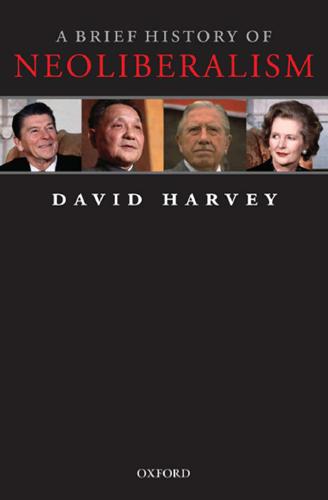
A Brief History of Neoliberalism
by
David Harvey
Published 2 Jan 1995
Since degree of neoliberalization was increasingly taken by the IMF and the World Bank as a measure of a good business climate, the pressure on all states to adopt neoliberal reforms ratcheted upwards.2 Thirdly, the Wall Street–IMF–Treasury complex that came to dominate economic policy in the Clinton years was able to persuade, cajole, and (thanks to structural adjustment programmes administered by the IMF) coerce many developing countries to take the neoliberal road.3 The US also used the carrot of preferential access to its huge consumer market to persuade many countries to reform their economies along neoliberal lines (in some instances through bilateral trade agreements). These policies helped produce a boom in the US in the 1990s. The US, riding a wave of technological innovation that underpinned the rise of a so-called ‘new economy’, looked as if it had the answer and that its policies were worthy of emulation, even though the relatively full employment achieved was at low rates of pay under conditions of diminishing social protections (the number of people without health insurance grew). Flexibility in labour markets and reductions in welfare provision (Clinton’s draconian overhaul of ‘the welfare system as we know it’) began to pay off for the US and put competitive pressures on the more rigid labour markets that prevailed in most of Europe (with the exception of Britain) and Japan.
…
The most immediate question concerns what sort of crisis might serve the US best in resolving its own situation, for that choice is indeed within the realm of policy options. In presenting these options it is important to recall that the US has not been immune to financial difficulties over the last twenty years. The stock market crash of 1987 deleted nearly 30 per cent of asset values, and at the trough of the crash that followed the bursting of the new economy bubble in the late 1990s more that $8 trillion in paper assets was lost, before the recovery to former levels. The bank and savings and loan failures of 1987 cost nearly $200 billion to remedy, and in that year matters became so bad that William Isaacs, chairman of the Federal Deposit Insurance Corporation, warned that ‘the US may be headed towards the nationalization of banking’.
…
Stanislaw, The Commanding Heights: The Battle Between Government and Market Place that is Remaking the Modern World (New York: Simon & Schuster, 1999). 18. L. Panitch and S. Gindin, ‘Finance and American Empire’, in The Empire Reloaded: Socialist Register 2005 (London: Merlin Press, 2005) 46–81. 19. D. Henwood, After the New Economy (New York: New Press, 2003), 208. 20. L. Alvarez, ‘Britain Says U.S. Planned to Seize Oil in ’73 Crisis’, New York Times, 4 Jan. 2004, A6. On the Saudi agreement to recycle petrodollars through the US see P. Gowan, The Global Gamble: Washington’s Faustian Bid for World Dominance (London: Verso, 1999), 20. 21.
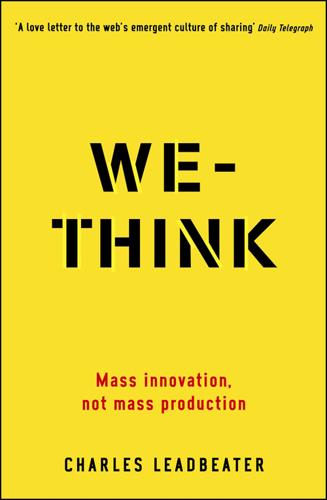
We-Think: Mass Innovation, Not Mass Production
by
Charles Leadbeater
Published 9 Dec 2010
Much of the content was submitted by readers, and those who were first to recommend something interesting got their names listed in the magazine. Brand went on to help create the Whole Earth ’Lectronic Link, an early Internet bulletin board, which in turn spawned the Electronic Frontier Foundation, which campaigns for freedom of speech online, and Wired magazine, the bible of the New Economy. More than any other magazine, Wired lionised technology entrepreneurs as the carriers of revolution. By 1971, however, the workload on the Whole Earth Catalog was taking its toll on Brand and he decided to close the magazine down with a Demise Party, held on 21 June at the Palace of Fine Arts in the centre of San Francisco.
…
They are collaborative individualists – they have a strong sense of their individual rights, ambitions and aspirations but they have grown up being highly social, thanks to the web and mobile phones. When my stepdaughter Henrietta organises her friends with text messages they are like an electronic herd grazing across north London until they converge on the same bar. Worries that they are over-socialised are wide of the mark, especially as most critics of the new economy, such as Richard Sennett,complain of exactly the opposite: that young people are too individualistic and atomised. If Sennett is right, we need more social tethering, not less. The web is certainly changing how young people establish their sense of individuality; it is not extinguishing it. Our freedom as consumers has also grown, not only because we can now search more easily across many more products but also because the digital economy allows a far greater diversity of products to co-exist.
…
Clark, Design Rules (Cambridge, MA/London: MIT Press, 2000) Chapter 4 1 Richard Sennett, The Culture of the New Capitalism (New Haven, CT/London: Yale University Press, 2006) 2 Mitch Kapor, blog.kapor.com 3 Henry Chesbrough, Wim Vanhaverbeke and Joel West (Eds), Open Innovation: Researching a New Paradigm (Oxford University Press, 2006) 4 John Hartley, ‘Culture Business and the Value Chain of Meaning’, The New Economy, Creativity and Consumption – A Symposium (Brisbane: Queensland University of Technology Publications, 2002), pp. 39–46 5 http://www.blizzard.com/inblizz/profile.shtml 6 Nicolas Ducheneaut, Nicholas Yee, Eric Nickell and Robert J. Moore, ‘Alone Together? Exploring the Social Dynamics of Massively Multiplayer Online Games’, Conference on Human Factors in Computing Systems,2006, p. 3.
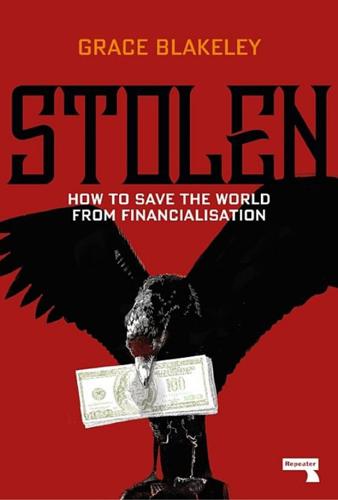
Stolen: How to Save the World From Financialisation
by
Grace Blakeley
Published 9 Sep 2019
Marx showed that every kind of capitalist system is subject to its own contradictions: strains that arise from the normal functioning of the economic model — from businesses trying to make money, politicians trying to get votes, and people trying to survive.21 These dynamics have characterised the development of capitalism for centuries. Each and every capitalist model must end in crisis, and moments of crisis are moments of adaption — moments when, out of the ashes of the old, the new economy can be born. They are also, as the Italian theorist Antonio Gramsci pointed out, very dangerous moments indeed. Each crisis of capitalism doesn’t simply threaten to bring down the dominant economic model, but the institutions that govern politics and society too. When people no longer expect to be made better off by the status quo, they withdraw their support for it.
…
In just over a decade, it will be too late for us to deal with one of the greatest challenges humanity has ever faced, and before that, elites are likely to have reasserted their control by foisting upon us a new order that maintains all the powers of the old. But between now and then lies an extended moment of crisis — a moment of contingency and uncertainty — a moment during which the logic of capitalism has once again been brought into question. A new economy, and a new society, is slowly being born in the minds of those who know that history will never end. It is up to us to bring that new world into being. CHAPTER ONE THE GOLDEN AGE OF CAPITALISM In 1944, the great and the good met in Bretton Woods, New Hampshire, to discuss rebuilding the world economy in the wake of the bloodiest war in history.1 The American delegation, led by Harry Dexter White, had been sent to ensure that the reins of the global economy were handed from the UK to the US in an orderly fashion.
…
Corporate Raiders, Hostile Takeovers, and Activist Investors Lord Hanson — aka “Lord Moneybags” — is famous for many things.35 He was engaged to Audrey Hepburn, had a fling with Joan Collins, and also happens to be one of the UK’s most notorious corporate raiders. Although he made his money in the new economy, Hanson didn’t exactly come from humble beginnings. Born into a family that made its money during the industrial revolution, he built multiple successful business ventures on the back of his family’s wealth before teaming up with Lord Gordon White to start Hanson Trust in 1964. At its height, Hanson Trust was worth £11bn.

Irrational Exuberance: With a New Preface by the Author
by
Robert J. Shiller
Published 15 Feb 2000
The most prominent business news in the papers in recent years had been about the formation of numerous combinations, trusts, and mergers in a wide variety of businesses, stories such as the formation of U.S. Steel out of a number of smaller steel companies. Many stock market forecasters in 1901 saw these developments as momentous, and the term community of interest was commonly used to describe the new economy dominated by them. An April 1901 editorial in the New York Daily Tribune explained: But a new era has come, the era of “community of interest,” whereby it is hoped to avoid ruinous price cutting and to avert the destruction which has in the past, when business depression occurred, overtaken so many of the competing concerns in every branch of industry.
…
Kennedy was viewed as the incarnation of our national optimism and of the strength of the stock market: “Wall Street has a simple description for the phenomenal strength of stock prices, ‘The Kennedy Market.’” The confidence inspired by the Kennedy economic program led some to conclude that the country was entering a “new economy” in which “businessmen can enjoy reasonably continuous prosperity indefinitely” and that there was “more justification for confidence” in monetary policy than in times past.24 The Kennedy initiatives were expanded on by the “Great Society” program of his successor, Lyndon Johnson, beginning in 1964; Johnson’s program set as its primary goals nothing less than an end to poverty and urban decay.
…
Here I make just a few additional observations and then contrast the modern new era thinking with that during the new eras described in this chapter. 112 C ULT UR AL FAC T OR S As with all major stock market booms, there have been writers during the 1990s who offer new era theories to justify the market. Michael Mandel, writing in Business Week in 1996 in an article entitled “The Triumph of the New Economy,” listed five reasons for his belief that the market is not crazy: increased globalization, the boom in high-tech industries, moderating inflation, falling interest rates, and surging profits.29 A prominent theory during this boom has been that low inflation makes for a strong market outlook. In the 1990s, theories about inflation dominated discussion of the market outlook just as they did in the 1960s, but now the prevalent theory has been reversed.

We Are All Fast-Food Workers Now: The Global Uprising Against Poverty Wages
by
Annelise Orleck
Published 27 Feb 2018
In 2015, annual profits in global apparel and textile production were $1.2 trillion, the total net worth of the industry, $4.4 trillion. As oil prices dropped and global oil profits fell, the garment industry continued to boom. Like consumer electronics, which also employs millions of migrant women, fast fashion is one of the main drivers of the new global economy.9 That new economy relies heavily on forced labor. In 2015, unfree and child labor was found in garment factories in Argentina, Bangladesh, Brazil, Cambodia, China, Vietnam, Thailand, India, Nepal, and Ethiopia. Sexual violence is endemic in garment shops. So are beatings. In 2014, 90 percent of garment workers surveyed by the AFL-CIO said they had been physically punished for making errors or for not meeting quotas.
…
This book has highlighted the successes of many different low-wage workers’ movements but also noted the costs of struggle. In the end, they leave us with this: Change is possible on small and large scales, even against overwhelming odds. But progress is neither linear nor easy. Los Angeles Alliance for a New Economy cofounder Madeline Janis feels there is little to be gained by mourning what’s been lost. To win progressive change, she argues, we must look forward. LAANE has achieved significant victories, in Los Angeles and nationally. They’ve built broad coalitions linking labor, community, academic, and environmental groups; registered new voters and marshaled them to push through groundbreaking policies; tapped urban development projects and cutting-edge manufacturing technologies and turned them to aid poor and working people.
…
We can use these and other flashes of light to strike sparks, to build models, to cast seeds of change to nourish a new world. Maria Elena Durazo has described the 2010s as a time of activist convergences. From the confluences of many movements—for labor, gender, race, immigrant, and environmental justice—visions and practical plans are taking shape. The “new economy” movement is working to create more humane local, national, and global economies driven by renewable energy. Roots of Change, Food Policy Councils, Via Campesina, Food First, and others are laying the groundwork for healthier, more inclusive farm, food, and water systems. The Worker Rights Consortium, International Labor Rights Forum, and global unions including the ITUC, IUF, UNI Global Union, and IndustriALL are constructing new global values chains—built on fair trade and worker justice.
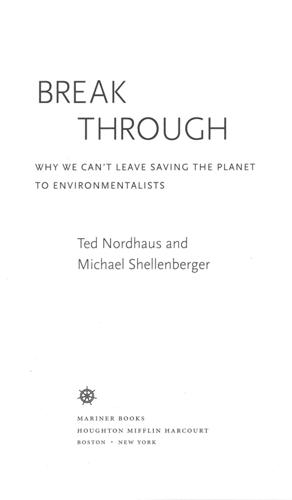
Break Through: Why We Can't Leave Saving the Planet to Environmentalists
by
Michael Shellenberger
and
Ted Nordhaus
Published 10 Mar 2009
It will certainly require siting windmills in all sorts of places that people such as Bobby Kennedy Jr. might not like. There is a difference between a hard choice and a false choice. An ethic that is based on preserving good natural things and stopping bad human things is poorly suited to either making hard choices or creating a politics capable of creating new good things. New identities, new landscapes, new economies, and new kinds of consumption will need to be developed to address the human and ecological crises of our time. Those who have a hard time accepting, nay, embracing windmills in Nantucket Sound or high-rise buildings in urban centers will not be able to create a politics capable of helping countries like China (not to mention the United States) meet their energy needs in a more ecologically sound way. 5.
…
Environmental organizations whose mission it is to implement, defend, and extend those laws to cover new problems, from global warming to deforestation, thus borrow from the older mental models. And herein lies the anomaly that most frustrates the environmentalists’ pollution paradigm: the fact that overcoming global warming demands something qualitatively different from limiting our contamination of nature. It demands unleashing human power, creating a new economy, and remaking nature as we prepare for the future. And to accomplish all of that, the right models come not from raw sewage, acid rain, or the ozone hole but instead from the very thing environmentalists have long imagined to be the driver of pollution in the first place: economic development. 4.
…
The anti-ecological logic of contemporary environmentalism reduces the cause of global warming to a single thing: humans emitting too much greenhouse gas. Their goal is thus to reduce greenhouse gas emissions. But what if we define the causes of global warming more expansively—as the consequence of our failure to create new economies, new patterns of development, new housing, and a new consumer culture, which together are far better able to meet our material and postmaterial needs? Imagine what would have happened if environmentalists had proposed that the nations of the world make a massive, shared investment in clean energy, better and more efficient housing development, and more comfortable and efficient transportation systems.
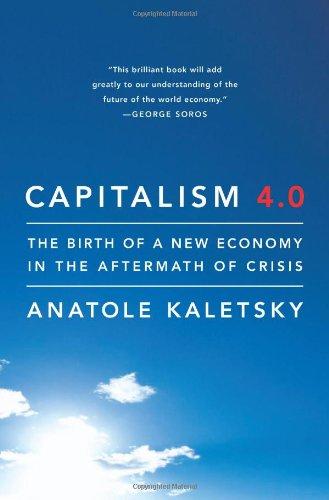
Capitalism 4.0: The Birth of a New Economy in the Aftermath of Crisis
by
Anatole Kaletsky
Published 22 Jun 2010
Then, forty years after the Great Depression, another enormous economic crisis—the global inflation of the late 1960s and 1970s—inspired the free-market revolution of Margaret Thatcher and Ronald Reagan, creating a third version of capitalism, clearly distinct from the previous two. Forty years after the great inflation of the late 1960s, the global economy was hit by another systemic crisis, in 2007-09. The argument of this book is that this crisis is creating a fourth version of the capitalist system, a new economy as different from the designs of Reagan and Thatcher as those were from the New Deal. Hence the birth of a new economy in the subtitle of this book. The concept of capitalism as an evolutionary system, whose economic rules and political institutions are subject to profound change, may seem controversial and even subversive from the standpoint of precrisis thinking.
…
The propensity of modern economic theory for unjustified and oversimplified assumptions allowed politicians, regulators, and bankers to create for themselves the imaginary world of market fundamentalist ideology, in which financial stability is automatic, involuntary unemployment is impossible, and efficient, omniscient markets can solve all economic problems, if only the government will stand aside. In the new economy emerging from the 2007-09 crisis, the self-serving assumptions of efficient, self-stabilizing markets have been discredited, but something will have to be put in their place. Since the eighteenth century, each transformation of the capitalist system has coincided with a transformed understanding of economics—Smith and Ricardo from 1780 to 1820; the marginalist revolution of Mill, Jevons, and Walras in the 1870s; Keynes in the 1930s; and Friedman in the 1970s.
…
The third essential feature of the new economics, both as a cause and consequence of the other two, will be a focus on the inherent unpredictability of human behavior and economic events. The emphasis on unpredictability introduced by Keynes, Schumpeter, and Frank Knight will be a guiding principle of the new theories competing for leadership in the intellectual marketplace during the next phase of economic thinking. In the new economy emerging from the 2007-09 crisis, all participants will recognize that the markets and the government are both liable to be wrong. In a world where the future is indeterminate and depends on reflexive interactions between human behavior, expectations, and reality, the concept of a single correct model of how the economy operates, assumed by rational expectations, is an absurd delusion.
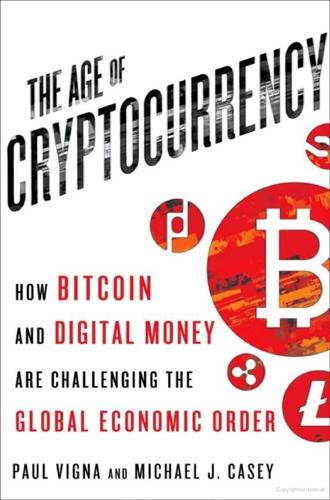
The Age of Cryptocurrency: How Bitcoin and Digital Money Are Challenging the Global Economic Order
by
Paul Vigna
and
Michael J. Casey
Published 27 Jan 2015
One solution that the Film Annex is now pursuing in conjunction with bitcoin-trading platform Atlas ATS is a Pakistan-based exchange for swapping bitcoins into traditional currencies. But Rulli only reluctantly went along with this; it was too soft an option, he felt. He wanted the exchange to be solely in bitcoin for other digital currencies, with no option to buy rupees or dollars: “The belief I have is that if you lock these people into this new economy, they will make that new economy as efficient as possible. If you start giving people opportunities to get out of the economy, they will just cut it down, whereas if the only way for you to enrich yourself is by trading bitcoins for litecoins and dogecoins, you are going to become an expert in that … you will become the best trader in Pakistan.”
…
For Elizabeth —PV For Mum and Dad —MC Contents Title Page Copyright Notice Dedication Introduction: Digital Cash for a Digital Age 1. From Babylon to Bitcoin 2. Genesis 3. Community 4. Roller Coaster 5. Building the Blockchain 6. The Arms Race 7. Satoshi’s Mill 8. The Unbanked 9. The Everything Blockchain 10. Square Peg Meets Round Hole 11. A New New Economy Conclusion: Come What May Acknowledgments Notes Index Also by Michael J. Casey About the Authors Copyright Introduction DIGITAL CASH FOR A DIGITAL AGE Money won’t create success, the freedom to make it will. —Nelson Mandela Even though Parisa Ahmadi was in the top of her class at the all-girls Hatifi High School in Herat, Afghanistan, her family was initially against her enrolling in classes being offered by a private venture that promised to teach young girls Internet and social-media skills—and even pay them for their efforts.
…
In this evolving environment, cryptocurrencies are poised to play a highly disruptive role. It will be up to us, the citizens, voters, and economic agents of this future society, to figure out how much of a role we want this technology to take and thus which of the two cryptocurrency models ends up dominant. Eleven A NEW NEW ECONOMY Progress is a comfortable disease. —E. E. Cummings Until now, we’ve largely focused on how cryptocurrencies have developed and the benefits and challenges they pose to society. But these new forms of money and ways of organizing commercial activity are not landing in a static, dormant society, as if human beings were just waiting to be woken by a new monetary idea.
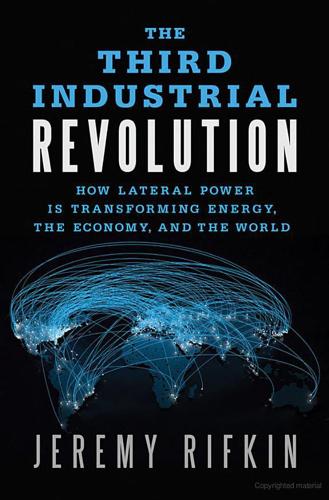
The Third Industrial Revolution: How Lateral Power Is Transforming Energy, the Economy, and the World
by
Jeremy Rifkin
Published 27 Sep 2011
The new, second-generation electricity communication, by contrast, is distributed in nature and ideally suited to manage distributed forms of energy—that is, renewable energy—and the lateral kinds of business activity that accompany such an energy regime. The new distributed communications technologies would have to wait another two decades to hook up with distributed energies and create the basis for a new infrastructure and a new economy. In the 1990s and the first decade of the twenty-first century, the Information and Communication Technology (ICT) revolution was grafted on to the older, centralized Second Industrial Revolution. It was, from the start, an unnatural fit. While ICT enhanced productivity, streamlined practices, and created some new business opportunities and jobs—which probably extended the useful life of an aging industrial model—it could never achieve its full distributed communication potential because of the inherent constraints that come with being attached to a centralized energy regime and commercial infrastructure.
…
The funds will be used to install digital electric meters, transmission grid sensors, and energy storage technologies to enable high-tech electricity distribution; this will transform the existing power grid into an Internet of energy. CPS Energy in San Antonio, Texas; Xcel Utility in Boulder, Colorado; and PG&E, Sempra, and Southern ConEdison in California will be laying down parts of the smart grid over the next several years. The smart grid is the backbone of the new economy. Just as the Internet created thousands of new businesses and millions of new jobs, so too will the intelligent electricity network—except “this network will be 100 or 1,000 times larger than the Internet,” says Marie Hattar, vice president of marketing in Cisco’s network systems solutions group.
…
The real multiplier effect occurs when the interaction between pillars gives rise to a new emergent paradigm. While each of the five pillars that make up the Third Industrial Revolution infrastructure, taken alone, would add only marginal value to the economy, when they are connected in an interactive system that acts like an evolving organism, the new economy takes off. And just like any organism, it passes through a juvenile, mature, and senescent stage. I stress this because our team ran up against a miscommunication that threatened to undermine our efforts in the weeks just before CPS was to formally release the master plan to the public. CPS told news sources that our Third Industrial Revolution plan was going to cost a whopping $16 billion and significantly increase electricity bills.

When the Money Runs Out: The End of Western Affluence
by
Stephen D. King
Published 17 Jun 2013
Technology companies with only the vaguest of business plans found that money grew on trees, a repeat of the extraordinary events first seen in the 1720 South Sea Bubble when, famously, a company hoped to raise money ‘for carrying out an undertaking of great advantage, but nobody to know what it is’. Such was the enthusiasm for the new economy that Business Week ran the following story at the end of January 2000 under the headline ‘The New Economy: It works in America: Will it go global?’ It seems almost too good to be true. With the information technology sector leading the way, the U.S. has enjoyed almost 4% growth since 1994. Unemployment has fallen from 6% to about 4%, and inflation just keeps getting lower and lower.
…
Thanks to strong emerging demand, commodity prices ended up a lot higher, a process that squeezed real spending power in the West even as it lined the pockets of commodity producers in other parts of the world. The second, predating the financial crisis that began in 2007, was simply a loss of momentum following the exuberance associated with the so-called ‘new economy’ in the 1990s. This seemingly miraculous development offered an intoxicating mix of rapid productivity gains (particularly in the US), technological advance, strong growth, low inflation and ever higher stock prices. The elixir of ever rising wealth that, temporarily, had been Japan's monopoly to enjoy in the 1980s had been uncovered by the US and, in patchy fashion, by Europe too.
…
This spectacular boom was not built on smoke and mirrors. Rather, it reflects a willingness to undertake massive risky investments in innovative information technology, combined with a decade of retooling U.S. financial markets, governments, and corporations to cut costs and increase flexibility and efficiency. The result is the so-called New Economy: faster growth and lower inflation. Most corporate executives and policymakers in Europe and Asia, once skeptical about the U.S. performance, have taken this lesson to heart. There are still widespread misgivings about the U.S. model of free-market capitalism. But driven by a desire for faster growth, combined with a fear of being left behind, the rest of the world is starting to embrace the benefits of a technology-driven expansion.16 That story, however, went wrong only a few weeks later.

Green Swans: The Coming Boom in Regenerative Capitalism
by
John Elkington
Published 6 Apr 2020
In Green Swans, his most important book yet, one can feel John’s clever mind and earnest soul wrestling with the ultimate Rubik’s Cube puzzle of all human history: How to transform capitalism to an economic system that is actually regenerative, like all other living systems on this planet. An essential guide for business leaders and a profound yet realistic dose of hope for the challenging ‘Exponential Twenties’ that lie ahead.” —John Fullerton, Founder of Capital Institute, author of Regenerative Capitalism: How Universal Principles and Patterns Will Shape the New Economy, and former Managing Director of JPMorgan “Green Swans is a delightful, disturbing, and hopeful read. As we enter what John refers to as the ‘Exponential Decade’ of the 2020s, the stakes couldn’t be higher for humanity and planet earth. During these turbulent and promising times, I for one am extremely grateful for the steady guidance, wisdom, brutal honesty, and insights John shares here.
…
Instead of simply pursuing incremental goals, we also need to set and deliver against goals that will have 10X (i.e., tenfold) or 100X the impact on anywhere between one million and one billion people. Looking back now, I had been exploring the edges of exponential thinking for quite a while. In 2005, for example, I visited Wired magazine’s founding editor Kevin Kelly at his home in California. His books Out of Control and New Rules for the New Economy had helped shift my vision of the future from a future of scarcity to one increasingly characterized, at least in some areas, by abundance. In a world increasingly marked by decreasing returns and limits to growth, he argued that new digital technology offered increasing—indeed exponentially accelerating—returns.
…
The net result is that capitalist algorithms have increasingly driven yawning wealth divides and helped wipe something like 60% off the Living Planet Index, a measure of the vitality of Earth’s biosphere calculated by the World Wildlife Fund (WWF).18 “We are the first generation to know we are destroying our planet and the last one that can do anything about it,” WWF UK CEO Tanya Steele told our Green Swan Day audience. Since the New Economy period, we have seen what we might inelegantly call the exponential algorithmicization of our economies. Indeed, leading CEOs like Apple’s Tim Cook have spotlighted the dysfunctions of many of today’s algorithms—and of those who code them. Giving a commencement address at Stanford, he warned his Silicon Valley compatriots, “If you have built a chaos factory, you can’t dodge responsibility for the chaos.”19 Some of these problems can be solved fairly quickly, but others—including the implications of the burgeoning surveillance state—represent intergenerational challenges.
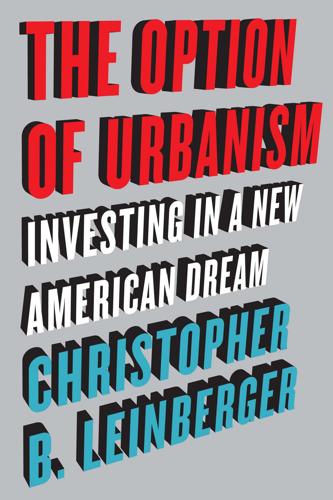
The Option of Urbanism: Investing in a New American Dream
by
Christopher B. Leinberger
Published 15 Nov 2008
Nor is it just the recognition that the unintended consequences of 1985 Hill Valley, drivable sub-urbanism, including a myriad of social, environmental, fiscal, and economic issues, need to be addressed and solved. The next American Dream is based upon the recognition that the market wants a built environment that provides choice, lines up with the new economy that is emerging and is more environmentally, fiscally, and economically sustainable. This book also points out some of the probable unintended consequences of this next American Dream—it wouldn’t be fair if we didn’t leave our grandchildren some problems to solve. 1 F UTUR AMA AND THE 20 TH -C ENTURY A MERICAN D REAM I magine yourself living a middle-class life in 1939 in one of America’s cities, such as Philadelphia, Chicago, or Seattle.
…
However, this change showed that the American Dream is not immutable; its physical development could be fundamentally modified. In 1920, manufacturing jobs caught up with agricultural jobs; each sector had about twenty-six percent of the total jobs in the economy. This signaled the shift to the then new economy, the industrial economy, which was primarily based in metropolitan areas. In the 1920 U.S. Census, for the first time in American history, a majority of Americans were living in metropolitan areas, not in rural areas.24 24 | THE OPTION OF URBANISM Manufacturing jobs stayed at about twenty-six percent of all U.S. jobs until 1970, the peak of the industrial economy.
…
The boredom of having only the option of drivable sub-urban life, including the unintended consequences of ever longer and more congested commutes and the running of nearly every errand in a car, is not to be underestimated. T H E M A R K E T R E D I S C OV E R S WA L K A B L E U R B A N I S M | 9 1 Alongside these demographic changes, the economy has made a fundamental change. The new economy has been called many things: the virtual economy, the service economy, the postindustrial economy, the knowledge economy, and the creative economy. This has come to mean a focus on the up front, creative portion of a product or service development and the back-end marketing and distribution of that product or service.

The Zero Marginal Cost Society: The Internet of Things, the Collaborative Commons, and the Eclipse of Capitalism
by
Jeremy Rifkin
Published 31 Mar 2014
Although the indicators of the great transformation to a new economic system are still soft and largely anecdotal, the Collaborative Commons is ascendant and, by 2050, it will likely settle in as the primary arbiter of economic life in most of the world. An increasingly streamlined and savvy capitalist system will continue to soldier on at the edges of the new economy, finding sufficient vulnerabilities to exploit, primarily as an aggregator of network services and solutions, allowing it to flourish as a powerful niche player in the new economic era, but it will no longer reign. I understand that this seems utterly incredible to most people, so conditioned have we become to the belief that capitalism is as indispensable to our well-being as the air we breathe.
…
[companies] must be able to anticipate selling their products at a profit to someone.11 Summers and DeLong opposed government subsidies to cover the upfront costs, arguing that the shortcomings of “administrative bureaucracy,” “group-think,” and “red-tape” “destroy the entrepreneurial energy of the market.”12 In lieu of government intervention, the two distinguished economists reluctantly suggested that perhaps the best way to protect innovation in an economy where “goods are produced under conditions of substantial increasing returns to scale” was to favor short-term natural monopolies.13 Summers and DeLong made the point that “temporary monopoly power and profits are the reward needed to spur private enterprise to engage in such innovation.”14 They both realized the bind this put private enterprise in, admitting that “natural monopoly does not meet the most basic conditions for economic efficiency: that price equal marginal cost.”15 Indeed, the modus operandi of a monopoly, as every economist knows, is to hold back would-be competitors from introducing new innovations that increase productivity, reduce marginal costs, and lower the price to customers. Nonetheless, Summers and DeLong concluded that in the “new economy” this might be the only way forward. In an incredible admission, the two acknowledged that “the right way to think about this complex set of issues is not clear, but it is clear that the competitive paradigm cannot be fully appropriate . . . but we do not yet know what the right replacement paradigm will be.”16 Summers and DeLong found themselves hopelessly trapped.
…
An increasing number of people are collaborating in “patient-driven” health-care networks to improve diagnoses and find new treatments and cures for diseases, again at near zero marginal cost. And young social entrepreneurs are establishing ecologically sensitive businesses, crowdfunding new enterprises, and even creating alternative social currencies in the new economy. The result is that “exchange value” in the marketplace is increasingly being replaced by “shareable value” on the Collaborative Commons. When prosumers share their goods and services on a Collaborative Commons, the rule book that governs a market-exchange economy becomes far less relevant to the life of society.
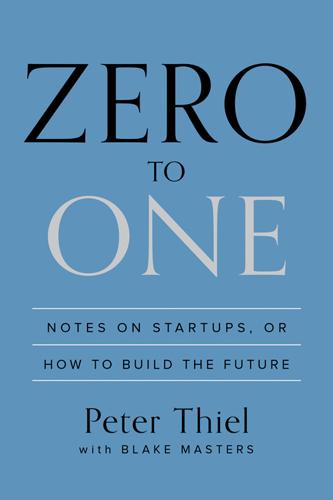
Zero to One: Notes on Startups, or How to Build the Future
by
Peter Thiel
and
Blake Masters
Published 15 Sep 2014
Consider an elementary proposition: companies exist to make money, not to lose it. This should be obvious to any thinking person. But it wasn’t so obvious to many in the late 1990s, when no loss was too big to be described as an investment in an even bigger, brighter future. The conventional wisdom of the “New Economy” accepted page views as a more authoritative, forward-looking financial metric than something as pedestrian as profit. Conventional beliefs only ever come to appear arbitrary and wrong in retrospect; whenever one collapses, we call the old belief a bubble. But the distortions caused by bubbles don’t disappear when they pop.
…
So the backdrop for the short-lived dot-com mania that started in September 1998 was a world in which nothing else seemed to be working. The Old Economy couldn’t handle the challenges of globalization. Something needed to work—and work in a big way—if the future was going to be better at all. By indirect proof, the New Economy of the internet was the only way forward. MANIA: SEPTEMBER 1998–MARCH 2000 Dot-com mania was intense but short—18 months of insanity from September 1998 to March 2000. It was a Silicon Valley gold rush: there was money everywhere, and no shortage of exuberant, often sketchy people to chase it.
…
Kaczynski, Ted Karim, Jawed Karp, Alex, 11.1, 12.1 Kasparov, Garry Katrina, Hurricane Kennedy, Anthony Kesey, Ken Kessler, Andy Kurzweil, Ray last mover, 11.1, 13.1 last mover advantage lean startup, 2.1, 6.1, 6.2 Levchin, Max, 4.1, 10.1, 12.1, 14.1 Levie, Aaron lifespan life tables LinkedIn, 5.1, 10.1, 12.1 Loiseau, Bernard Long-Term Capital Management (LTCM) Lord of the Rings (Tolkien) luck, 6.1, 6.2, 6.3, 6.4 Lucretius Lyft MacBook machine learning Madison, James Madrigal, Alexis Manhattan Project Manson, Charles manufacturing marginal cost marketing Marx, Karl, 4.1, 6.1, 6.2, 6.3 Masters, Blake, prf.1, 11.1 Mayer, Marissa Medicare Mercedes-Benz MiaSolé, 13.1, 13.2 Michelin Microsoft, 3.1, 3.2, 3.3, 4.1, 5.1, 14.1 mobile computing mobile credit card readers Mogadishu monopoly, monopolies, 3.1, 3.2, 3.3, 5.1, 7.1, 8.1 building of characteristics of in cleantech creative dynamism of new lies of profits of progress and sales and of Tesla Morrison, Jim Mosaic browser music recording industry Musk, Elon, 4.1, 6.1, 11.1, 13.1, 13.2, 13.3 Napster, 5.1, 14.1 NASA, 6.1, 11.1 NASDAQ, 2.1, 13.1 National Security Agency (NSA) natural gas natural secrets Navigator browser Netflix Netscape NetSecure network effects, 5.1, 5.2 New Economy, 2.1, 2.2 New York Times, 13.1, 14.1 New York Times Nietzsche, Friedrich Nokia nonprofits, 13.1, 13.2 Nosek, Luke, 9.1, 14.1 Nozick, Robert nutrition Oedipus, 14.1, 14.2 OfficeJet OmniBook online pet store market Oracle Outliers (Gladwell) ownership Packard, Dave Page, Larry Palantir, prf.1, 7.1, 10.1, 11.1, 12.1 PalmPilots, 2.1, 5.1, 11.1 Pan, Yu Panama Canal Pareto, Vilfredo Pareto principle Parker, Sean, 5.1, 14.1 Part-time employees patents path dependence PayPal, prf.1, 2.1, 3.1, 4.1, 4.2, 4.3, 5.1, 5.2, 5.3, 8.1, 9.1, 9.2, 10.1, 10.2, 10.3, 10.4, 11.1, 11.2, 12.1, 12.2, 14.1 founders of, 14.1 future cash flows of investors in “PayPal Mafia” PCs Pearce, Dave penicillin perfect competition, 3.1, 3.2 equilibrium of Perkins, Tom perk war Perot, Ross, 2.1, 12.1, 12.2 pessimism Petopia.com Pets.com, 4.1, 4.2 PetStore.com pharmaceutical companies philanthropy philosophy, indefinite physics planning, 2.1, 6.1, 6.2 progress without Plato politics, 6.1, 11.1 indefinite polling pollsters pollution portfolio, diversified possession power law, 7.1, 7.2, 7.3 of distribution of venture capital Power Sellers (eBay) Presley, Elvis Priceline.com Prince Procter & Gamble profits, 2.1, 3.1, 3.2, 3.3 progress, 6.1, 6.2 future of without planning proprietary technology, 5.1, 5.2, 13.1 public opinion public relations Pythagoras Q-Cells Rand, Ayn Rawls, John, 6.1, 6.2 Reber, John recession, of mid-1990 recruiting, 10.1, 12.1 recurrent collapse, bm1.1, bm1.2 renewable energy industrial index research and development resources, 12.1, bm1.1 restaurants, 3.1, 3.2, 5.1 risk risk aversion Romeo and Juliet (Shakespeare) Romulus and Remus Roosevelt, Theodore Royal Society Russia Sacks, David sales, 2.1, 11.1, 13.1 complex as hidden to non-customers personal Sandberg, Sheryl San Francisco Bay Area savings scale, economies of Scalia, Antonin scaling up scapegoats Schmidt, Eric search engines, prf.1, 3.1, 5.1 secrets, 8.1, 13.1 about people case for finding of looking for using self-driving cars service businesses service economy Shakespeare, William, 4.1, 7.1 Shark Tank Sharma, Suvi Shatner, William Siebel, Tom Siebel Systems Silicon Valley, 1.1, 2.1, 2.2, 2.3, 5.1, 5.2, 6.1, 7.1, 10.1, 11.1 Silver, Nate Simmons, Russel, 10.1, 14.1 singularity smartphones, 1.1, 12.1 social entrepreneurship Social Network, The social networks, prf.1, 5.1 Social Security software engineers software startups, 5.1, 6.1 solar energy, 13.1, 13.2, 13.3, 13.4 Solaria Solyndra, 13.1, 13.2, 13.3, 13.4, 13.5 South Korea space shuttle SpaceX, prf.1, 10.1, 11.1 Spears, Britney SpectraWatt, 13.1, 13.2 Spencer, Herbert, 6.1, 6.2 Square, 4.1, 6.1 Stanford Sleep Clinic startups, prf.1, 1.1, 5.1, 6.1, 6.2, 7.1 assigning responsibilities in cash flow at as cults disruption by during dot-com mania economies of scale and foundations of founder’s paradox in lessons of dot-com mania for power law in public relations in sales and staff of target market for uniform of venture capital and steam engine Stoppelman, Jeremy string theory strong AI substitution, complementarity vs.

Dawn of the New Everything: Encounters With Reality and Virtual Reality
by
Jaron Lanier
Published 21 Nov 2017
The algorithms running companies like Google and Facebook are among the only bits that have never been hacked, because they are the only definitive assets in the New Economy. All other bits are somebody else’s problem, but the algorithms are seriously protected. After all the talk about open source and sharing, the algorithms are the only successfully kept secrets left on the planet. Every other asset—the content, in other words—is provided by third parties so that these companies can avoid responsibilities and liabilities. So doesn’t the combination of Supreme Court rulings together with New Economy conventions mean that America has already backed into declaring algorithms to not only be people, but superhuman?
…
But not at the expense of daring thoughts about how the future can be better. Be tactically pessimistic and strategically optimistic. o) Don’t necessarily agree with me or anyone else. Think for yourself. * * * Forty-third VR Definition: A new art form that must escape the clutches of gaming, cinema, traditional software, New Economy power structures, and maybe even the ideas of its pioneers. * * * Flags Planted It’s often said that I coined the term “virtual reality.” It depends on how you think about the boundaries between context, languages, and history. There’s a wonderful argument that I did not. Before World War II, the radical dramatist Antonin Artaud used the French phrase réalité virtuelle in his discussions of a “theater of cruelty.”
…
You could keep many social media accounts, each with a different persona that would provoke a differently biased feed. But no one has the time, and besides, that would violate the policies of the contract you clicked on. So you must trust an intelligent algorithm, sifting through an endless ocean of news sources to bring each person the very best, most relevant news. But the New Economy is in the process of gutting investigative journalism. The tech companies have won most of the cash that used to flow to newspapers for ads and subscriptions. Therefore, there are few genuine, high-integrity primary news sources, compared to antebellum days. There is almost no remaining local investigative reporting.

The Innovation Illusion: How So Little Is Created by So Many Working So Hard
by
Fredrik Erixon
and
Bjorn Weigel
Published 3 Oct 2016
It is a standard lesson of microeconomics that marginal cost equals marginal value – and new digital services are better than offline services in exploiting the relation between costs and value for consumers, especially at the margin. Present criticism of GDP standards often resembles the idea some 20 years ago about a “new economy” that would change the way the economy works. Like the belief in the new economy, there are charges of GDP mismeasurement that confuse definitions of GDP and value-added creation in the economy. Some of it goes back to corporate valuation: the high valuation of companies is a sign of markets understanding the real value generation of, say, free online services that statistical authorities are not capturing.
…
See Blaug, Economic Theory in Retrospect. 50.Smithers, The Road to Recovery, 28–32; Lebrun and Ruiz, “Demand Pattern in France, Germany and Belgium,” 5. 51.Galston, “Closing the Productivity and Pay Gap.” 52.Brynjolfsson and McAfee, The Second Machine Age, 132. 53.Mishel, Gould, and Bivens, “Wage Stagnation in Nine Charts.” 54.Blanchard, Solow, and Wilson, “Productivity and Unemployment.” 55.For an overview see Tang, “Employment and Productivity.” 56.Manyika et al., “Growth and Renewal in the United States,” 28–9. 57.OECD, “Growing Income Inequality in OECD Countries.” 58.Mui, “Companies Have Found Something to Give their Workers.” 59.Mui, “Companies Have Found Something to Give their Workers.” 60.Lawrence, “The Growing Gap between Real Wages and Labor Productivity.” 61.Shapiro, “Income Growth and Decline.” 62.Karabarbounis and Neiman, “The Global Decline of the Labor Share.” 63.Benzell et al., “Robots Are Us.” 64.Groemling, “Falling Labor Share in Germany,” 1–20. 65.Feldstein, “Did Wages Reflect Growth in Productivity?” 66.Bridgam, “Is Labor’s Loss Capital’s Gain?” 67.Diewert and Fox. “The New Economy and an Old Problem.” 68.Lawrence, “Recent Declines in Labor’s Share in US Income.” 69.Acemoglu and Robinson, “The Rise and Decline of General Laws of Capitalism.” 70.Pessoa and Van Reenen, “Decoupling of Wage Growth and Productivity Growth?” 71.Roine and Waldenström, “On the Role of Capital Gains in Swedish Income Inequality.” 72.Konjunktur Institutet, “Lönebildningsrapporten,” 30. 73.US President, “Economic Report,” 34. 74.US President, “Economic Report,” 34. 75.Mokyr, “What Today’s Economic Gloomsayers Are Missing.” 76.Marvin, When Old Technologies Were New. 77.Frey and Osborne, “The Future of Employment,” 45. 78.Ford, Rise of the Robots, 284. 79.Kan, “Foxconn Expects Robots to Take over More Factory Work.” 80.Kan, “Foxconn Expects Robots to Take over More Factory Work.” 81.Kan, “Foxconn’s CEO Backpedals on Robot Takeover at Factories.” 82.IFR, “Robots Improve Manufacturing Success and Create Jobs.” 83.Graetz and Michaels, “Robots at Work.” 84.Fox Nation, “Obama Blames ATMs for High Unemployment.” 85.Bessen, Learning by Doing, 108. 86.Approximately in 1745 in England, and one year later in France. 87.Joyce, Ulysses, 82. 88.Rothschild, “The Sourdough Hotel.” 89.Marx and Engels, The Communist Manifesto, 12. 90.Haltiwanger, Hathaway, and Miranda, “Declining Business Dynamism in the US High-Technology Sector,” 1. 91.Andrews, Criscuolo, and Gal, “Frontier Firms, Technology Diffusion and Public Policy,” 14. 9 The Future and How to Prevent It 1.Toynbee, A Study of History: Abridgement of Volumes I–VI, 273. 2.Buiter, Rahbari, and Seydl, “The Long-Run Decline in Advanced-Economy Investment.” 3.Kotlikoff and Burns, The Clash of Generations, 229. 4.Wilson and Purushothaman, “Dreaming with BRICs.” 5.Xie, “Goldman’s BRIC Era Ends.” 6.Das, India Grows at Night. 7.Magnus, “Hitting a BRIC Wall.” 8.IMF, “Adjusting to Lower Commodity Prices.” 9.Hoenig, “Back to Basics.” 10.The Economist, “One Regulator to Rule Them All.” 11.Zingales, “Does Finance Benefit Society?”
…
Dettmer, Bianka, Fredrik Erixon, Andrea Freytag, and Pierre-Olivier Legault Tremblay, “The Dynamics of Structural Change: Trade between the European Union and China.” Chinese Economy, 44.4 (2011): 42–74. DOI:10.2753/CES1097-1475440403. Diamandis, Peter H., and Steven Kotler, Abundance: The Future Is Better Than You Think. Free Press, 2012. Diewert, W. Erwin, and Kevin J. Fox, “The New Economy and an Old Problem: Net versus Gross Output.” Center for Applied Economic Research, Jan. 2005. Doidge, Craig, G. Andrew Karolyi, and René M. Stulz, “The US Listing Gap.” NBER Working Paper No. 21181. National Bureau of Economic Research, May 2015. Downes, Larry, “Fewer, Faster, Smarter.” Democracy, No. 38 (Fall 2015).
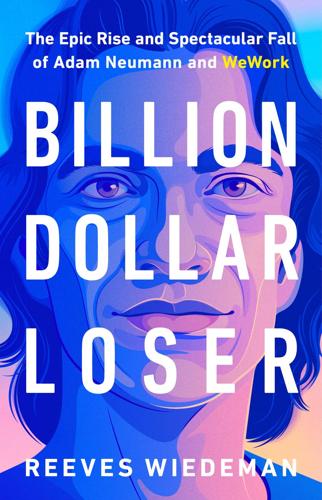
Billion Dollar Loser: The Epic Rise and Spectacular Fall of Adam Neumann and WeWork
by
Reeves Wiedeman
Published 19 Oct 2020
Two years after Adam moved to New York, a friend visiting from Israel surveyed Adam’s life and asked whether it was enjoyable enough to compensate for leaving his family and country behind. Adam woke up the next morning and decided to make a change. He decided to start his first business. * * * IN THE MID-2000S, a new economy was emerging from the wreckage of both 9/11 and the dot-com crash that scarred the beginning of the decade. YouTube was beginning to stream videos, and Baruch College students were being invited to sign up for Facebook. In this environment, Adam decided that the most promising business he could start would be manufacturing high-heeled women’s shoes that transformed into flats.
…
WeWork would provide a haven for those making this shift: it was a start-up begetting start-ups, a place where young entrepreneurs could build a collapsible-heel prototype, then move on if it failed without a long-term lease weighing them down. Who knew how much space a company would need in five months, let alone five years? The new economy was too precarious for that. “I’m competing against ‘work,’” Adam liked to say. “I’m competing against the old notion that the way things were done is the way things need to be done today…Why do I need to pursue my parents’ dreams? They’re not mine.” Miguel designed the company’s first logo: a stick figure taking a sledgehammer to a desktop computer
…
Occupy Wall Street took over a park in lower Manhattan, and a sense persisted that the old world order no longer served humanity’s needs. WeWork was premised on the idea that even the most iconoclastic entrepreneurs couldn’t build a business without help. With Jobs having left Apple to deal with pancreatic cancer, Adam seemed eager to position his company as a rising star of the new economy and himself as a candidate for America’s next entrepreneur in chief. “The next decade is the ‘We’ decade,” he told the Daily News. “If you look closely, we’re already in a revolution.” Many of WeWork’s first employees were bewildered by Adam’s bombast. WeWork’s offices were nice—but a revolution?

Choose Yourself!
by
James Altucher
Published 14 Sep 2013
And we are all invited to play in it. There’s more opportunity for abundance than ever. This is the new paradigm of this century, a century where ideas take precedence over money in terms of creating abundance. These are the new rules. And this book will show you they work in your favor, and how you can succeed in this new economy. A person who still follows the old way will get an education through graduate school, get a great job, get the promotions—but will at some point feel stuck, lost, may even betrayed if he is fired or unhappy or if the world didn’t turn out as he had hoped it would, or if the ladder he imagined turned out to be missing a rung and he fell down, broke a leg, and had to start from scratch, slightly more broken than he was before.
…
Basically, people’s salaries are going down versus inflation, versus healthcare costs, versus housing costs, versus everything. A salary will not keep your family afloat. Two salaries won’t even keep your family afloat. You have to master the rules taught in this book. You have to learn how to live in the new economy. There is no single style of business that works for everyone. If it were that easy, then there would be too much competition and there will be no money left. I do know that when I began living by the idea matrix principles of abundance outlined in these pages, they worked for me and they began working for the people I described them to.
…
See books like Breakthrough Advertising, The Architecture of Persuasion, and Kevin Harrington’s (from AsSeenOnTV and Shark Tank) book Act Now, where he discusses the power of testimonials and infomercials. I had one friend a few years ago who lost his job as a TV show anchor. He was depressed and verging on broke. He moved to his hometown and went into virtual isolation. He finally wrote an article about stocks he thought would go up in the new economy. I told him, “You’re crazy. Don’t make this a free article. Sell it for two hundred dollars and call it, “One Hundred Stocks That Will Go Up 1000 percent.” He did it and sold two thousand copies and then bought a fifty-acre farm and wrote his next ten books and newsletters. I’m not insinuating that free is bad.
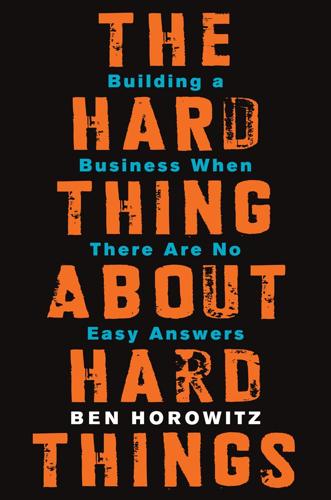
The Hard Thing About Hard Things: Building a Business When There Are No Easy Answers
by
Ben Horowitz
Published 4 Mar 2014
As my friend and investment banker Frank Quattrone said at the time, “No one wanted to tell their grandchildren that they missed out on this one.” The deal changed everything. Microsoft had been in business for more than a decade before its IPO; we’d been alive for sixteen months. Companies began to get defined as “new economy” or as “old economy.” And the new economy was winning. The New York Times called the Netscape IPO “world-shaking.” But there was a crack in our armor: Microsoft announced that it would be bundling its browser, Internet Explorer, with its upcoming breakthrough operating system release, Windows 95—for free. This posed a huge problem to Netscape, because nearly all of our revenue came from browser sales, and Microsoft controlled more than 90 percent of operating systems.
…
We deconstructed IIS and found that it had every feature that we had—including the security in our high-end product—and was five times faster. Uh-oh. I figured that we had about five months before Microsoft released IIS to solve the problem or else we would be toast. In the “old economy,” product cycles typically took eighteen months to complete, so this was an exceptionally short time frame even in the “new economy.” So I went to see our department head, Mike Homer. With the possible exception of Marc, Mike Homer was the most significant creative force behind Netscape. More important, the worse a situation became, the stronger Mike would get. During particularly brutal competitive attacks, most executives would run from the press.
…
The NASDAQ peaked at 5,048.62 on March 10, 2000—more than double its value from the year before—and then fell by 10 percent ten days later. A Barron’s cover story titled “Burning Up” predicted what was to come. By April, after the government declared Microsoft a monopoly, the index plummeted even further. Startups lost massive value, investors lost massive wealth, and dot-coms, once heralded as the harbinger of a new economy, went out of business almost overnight and became known as dot-bombs. The NASDAQ eventually fell below 1,200, an 80 percent drop from its peak. We thought our business might have been the fastest growing of all time at that point. That was the good news. The bad news was that we needed to raise even more money in this disastrous climate; nearly all of the $66 million in equity and debt we had raised had already been deployed in our quest to build the number-one cloud service and to support our now fast-growing set of customers.
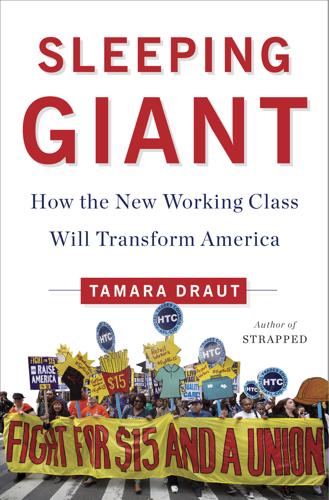
Sleeping Giant: How the New Working Class Will Transform America
by
Tamara Draut
Published 4 Apr 2016
With so many factories shuttered, typical “men’s work” steadily eroded and lower-paying service jobs took its place. As the economic contribution of these former working-class heroes to our nation dwindled, millions of men became zeroes in many people’s minds. They seemed to be a dusty anachronism in a sparkling new economy. Meanwhile, the ranks of women in the workforce grew steadily during the 1980s and 1990s, and waves of immigration began to change the ethnic and racial composition of the workforce. Seeking refuge from the economic dislocation, millions of Americans earned bachelor’s and advanced degrees, a process that perversely exacerbated already hardened lines of privilege, with whites earning college degrees at a much greater rate than blacks or Latinos.
…
Department of Labor, Bureau of Labor Statistics, Occupational Outlook Handbook, 2014–15, Food and Beverage Serving and Related Workers, at http://www.bls.gov/ooh/food-preparation-and-serving/food-and-beverage-serving-and-related-workers.htm#tab-1. Chapter Two: The New Indignity of Work 1. Annalyn Kurtz, “Subway Leads Fast Food in Under-Paying Workers,” CNN Money, May 1, 2014, at http://money.cnn.com/2014/05/01/news/economy/subway-labor-violations/; http://www.nelp.org/page/-/Justice/2014/Whos-the-Boss-Restoring-Accountability-Labor-Standards-Outsourced-Work-Report.pdf?nocdn=1. 2. Author’s analysis of Department of Labor’s “Wage and Hour Compliance Action Database,” at http://ogesdw.dol.gov/views/data_summary.php. 3.
…
Department of Labor, Wage and Hour Division, “Fiscal Year Statistics for WHD, FY 1997-FY2014,” at http://www.dol.gov/whd/statistics/statstables.htm#flsa. 5. Kurtz, “Subway Leads Fast Food Industry.” 6. Annalyn Kurtz, “10 Big Overtime Pay Violators,” CNN Money, August 5, 2014, at http://money.cnn.com/gallery/news/economy/2014/03/13/overtime-violations/?iid=EL. 7. Ibid. 8. Ross Eisenbrey, “Improving the Quality of Jobs Through Better Labor Standards,” Full Employment, April 2, 2014, at http://www.pathtofullemployment.org/wp-content/uploads/2014/04/eisenbrey.pdf. 9. Brady Meixell and Ross Eisenbrey, “An Epidemic of Wage Theft Is Costing Workers Hundreds of Millions of Dollars a Year,” Economic Policy Institute, September 11, 2014, at https://docs.google.com/viewer?

How Boards Work: And How They Can Work Better in a Chaotic World
by
Dambisa Moyo
Published 3 May 2021
Last modified February 12, 2020. www.calpers.ca.gov/page/forms-publications/diversity-inclusion-report-2018-19. Campell, David, David Edgar, and George Stonehouse. Business Strategy: An Introduction. London: Red Globe Press, 2011. Carney, Mark. “New Economy, New Finance, New Bank.” Speech given at the Mansion House, London, UK, June 21, 2018. www.bankofengland.co.uk/-/media/boe/files/speech/2018/new-economy-new-finance-new-bank-speech-by-mark-carney.pdf. Catalyst. “About Us.” www.catalyst.org/mission/. . “Women on Corporate Boards: Quick Take.” March 13, 2020. www.catalyst.org/research/women-on-corporate-boards/. Cavale, Siddharth.
…
Diversity from an Investor’s Perspective. London: New Financial, 2017. https://newfinancial.org/wp-content/uploads/2017/10/Diversity_from_investor_perspective_FINAL.pdf. Shane, Daniel. “Trump Renews Attack on TPP: ‘I Don’t Like the Deal.’” CNN Business, April 18, 2018. https://money.cnn.com/2018/04/18/news/economy/trump-tpp-trade-deal-tweet/index.html. Sheetz, Michael. “Star Analyst Is Getting Pushback from Clients on His Negative GE Takes, but He Doesn’t Care.” CNBC, June 24, 2019. www.cnbc.com/2019/06/24/jp-morgan-analyst-stephen-tusa-pushback-on-general-electric-skepticism.html. Shi, Lin, Laurens Swinkels, and Fieke van der Lecq.
…
London: Financial Reporting CouncilLtd., 2016. www.frc.org.uk/getattachment/ca7e94c4-b9a9-49e2-a824-ad76a322873c/UK-Corporate-Governance-Code-April-2016.pdf. Ulukaya, Hamdi. “Chobani Founder: Higher Wages Important to Our Success.” CNN Business, March 31, 2016. https://money.cnn.com/2016/03/31/news/economy/chobani-minimum-wage/index.html. Umoh, Ruth. “Why Jeff Bezos Wants Amazon Employees to ‘Wake Up Every Morning Terrified.’” CNBC Make It, August 28, 2018. www.cnbc.com/2018/08/28/why-jeff-bezos-wants-amazon-employees-to-wake-up-terrified.html. UN Climate Change. “The Paris Agreement.” https://unfccc.int/process-and-meetings/the-paris-agreement/the-paris-agreement.
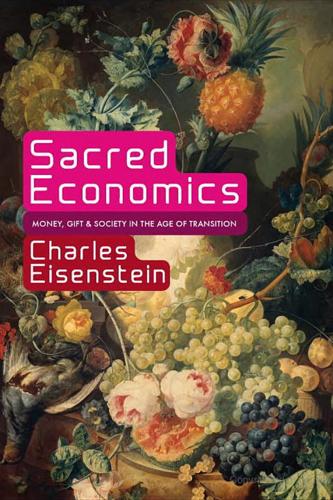
Sacred Economics: Money, Gift, and Society in the Age of Transition
by
Charles Eisenstein
Published 11 Jul 2011
Negative-Interest Currency 2. Elimination of Economic Rents, and Compensation for Depletion of the Commons 3. Internalization of Social and Environmental Costs 4. Economic and Monetary Localization 5. The Social Dividend 6. Economic Degrowth 7. Gift Culture and P2P Economics PART III: LIVING THE NEW ECONOMY Chapter 18: Relearning Gift Culture Chapter 19: Nonaccumulation Chapter 20: Right Livelihood and Sacred Investing The Dharma of Wealth Robbing Peter to Pay Paul Old Accumulations to New Purposes Right Livelihood Chapter 21: Working in the Gift Trusting Gratitude Business in the Gift The Sacred Professions Chapter 22: Community and the Unquantifiable Chapter 23: A New Materialism Conclusion: The More Beautiful World Our Hearts Tell Us Is Possible Appendix: Quantum Money and the Reserve Question Bibliography About the Author INTRODUCTION The purpose of this book is to make money and human economy as sacred as everything else in the universe.
…
Obviously, if we are to make money into something sacred, nothing less than a wholesale revolution in money will suffice, a transformation of its essential nature. It is not merely our attitudes about money that must change, as some self-help gurus would have us believe; rather, we will create new kinds of money that embody and reinforce changed attitudes. Sacred Economics describes this new money and the new economy that will coalesce around it. It also explores the metamorphosis in human identity that is both a cause and a result of the transformation of money. The changed attitudes of which I speak go all the way to the core of what it is to be human: they include our understanding of the purpose of life, humanity’s role on the planet, the relationship of the individual to the human and natural community; even what it is to be an individual, a self.
…
Even if it has not, I won’t discard the entire corpus of technology, despite all the ruin it has wrought upon nature and humanity. In fact, the achievements of science and technology do meet important needs, needs that are key drivers of sacred economics. They include the need to explore, to play, to know, and to create what we in the New Economy movement call “really cool stuff.” In a sacred economy, science, technology, and the specialization of labor that goes along with them will continue to be among the agents for the meeting of these needs. We can see this higher purpose of science and technology already, like a recessive gene that crops up irrepressibly in spite of its endless commercialization.

Masters of Management: How the Business Gurus and Their Ideas Have Changed the World—for Better and for Worse
by
Adrian Wooldridge
Published 29 Nov 2011
Give enough people the capacity to create, and inevitably gems will emerge.”10 Whatever you think of the cultural impact of the long tail, there is no doubt that it is producing a new economy, with new giants emerging to take advantage of the world of micro-markets. eBay, which was born as recently as 1996, is now worth in excess of $35 billion, with more than 200 million registered users shifting more than $40 billion of merchandise every year. The new economy is also creating new marketing opportunities (and new marketing nightmares). Top-down messaging is losing influence while bottom-up buzz is gaining power. People are less and less likely to trust traditional advertisers and more and more likely to trust people who write online reviews or generate links on social networks.
…
The Long Tail is the product of a melding of the new business culture and the old one. The book started life as a blog in which Anderson conducted a sort of online seminar with his readers. It ended up as an old-fashioned business best-seller: a carefully packaged “big idea” that was supposed to reveal the secret of prospering in the new economy and that also includes a business tool that managers can apply to their businesses, the “long tail” of the title. This was Silicon Valley repackaged for the business traveler class. Anderson’s big idea was that we are moving from a world of big hits to a world of niche products. Technological innovation (particularly the Internet) is removing bottlenecks in distribution that forced companies to focus on a few products.
…
What does it mean to protect the “American” car industry when the components of the average car are made all around the world? In The Work of Nations (1991) he argued that a country’s competitiveness depends on its human capital—on the education and skills of its population—rather than on the profitability of the companies that happen to have their headquarters within its borders. The United States had embraced a “new economy” based on high value rather than high volume and on customization rather than standardization, he argued, in phrases that have resounded through his later work, and companies had been transformed from nation-bound pyramids into world-spanning networks. In this new world, the only “industrial policy” worth bothering with is to invest in education and training: countries with the highest-quality human capital will act as magnets to the highest-value-added jobs.

WTF?: What's the Future and Why It's Up to Us
by
Tim O'Reilly
Published 9 Oct 2017
CHAPTER 5: NETWORKS AND THE NATURE OF THE FIRM 90 “Apps can do now what managers used to do”: Esko Kilpi, “The Future of Firms,” Medium, February 6, 2015, https://medium.com/@EskoKilpi/movement-of-thought-that-led-to-airbnb-and-uber-9d4da5e3da3a. 90 “support megacorporations”: Hal Varian, “If There Was a New Economy, Why Wasn’t There a New Economics?,” New York Times, January 17, 2002, http://www.nytimes.com/2002/01/17/business/economic-scene-if-there-was-a-new-economy-why-wasn-t-there-a-new-economics.html. 90 largest media company in the world: “Google Strengthens Its Position as World’s Largest Media Owner,” Zenith Optimedia, retrieved March 30, 2017, https://www.zenithmedia.com/google-strengthens-position-worlds-largest-media-owner-2/. 90 surpassed those of the largest traditional media companies: Tom Dotan, “Facebook Ad Revenue (Finally) Tops Media Giants,” The Information, November 22, 2016, https://www.theinformation.com/facebook-ad-revenue-finally-tops-media-giants?
…
Stephens II, “I Often Can’t Afford Groceries Because of Volatile Work Schedules at Gap,” Guardian, August 17, 2015, https://www.theguardian.com/commentisfree/2015/aug/17/cant-afford-groceries-volatile-work-schedules-gap. 191 Starbucks: Jodi Cantor, “Working Anything but 9 to 5,” New York Times, August 13, 2014, https://www.nytimes.com/interactive/2014/08/13/us/star bucks-workers-scheduling-hours.html. 192 Starbucks only banned in mid-2014: Jodi Cantor, “Starbucks to Revise Policies to End Irregular Schedules for Its 130,000 Baristas,” New York Times, August 15, 2014, https://www.nytimes.com/2014/08/15/us/starbucks-to-revise-work-scheduling-policies.html. 192 “not enough hours”: Jodi Lambert, “The Real Low-Wage Issue: Not Enough Hours,” CNN, January 13, 2014, http://money.cnn.com/2014/01/13/news/economy/minimum-wage-hours/. 192 a host of other labor woes: Carrie Gleason and Susan Lambert, “Uncertainty by the Hour,” Future of Work Project, retrieved March 31, 2017, http://static.opensocietyfoundations. org/misc/future-of-work/just-in-time-workforce-technologies-and-low-wage-workers.pdf. 192 a study of Uber drivers: Jonathan Hall and Alan Krueger, “An Analysis of the Labor Market for Uber’s Driver-Partners in the United States,” Uber, January 22, 2015, https://s3.amazonaws.com/uber-static/comms/PDF/Uber_Driver-Partners _Hall_Kreuger_2015.pdf. 193 rather than to increase hours for individual workers: Susan Lambert, “Work Scheduling Study,” University of Chicago School of Social Service Administration, May 2010, retrieved March 31, 2017, https://ssascholars.uchicago. edu/sites/default/files/work-scheduling-study/files/univ_of_chicago_work _scheduling_manager_report_6_25_0. pdf. 193 “In August 2013”: Esther Kaplan, “The Spy Who Fired Me,” Harper’s, March 2015, 36, available at http://populardemo cracy.org/sites/default/files/Harpers Magazine-2015-03-0085373.pdf. 194 “new jobs fall on that spectrum”: Lauren Smiley, “Grilling the Government About the On-Demand Economy,” Backchannel, August 23, 2015, https://backchannel.com/why-the-us-secretary-or-labor-doesn-t-uber-272f18799f1a. 194 They became part-time employees: Brad Stone, “Instacart Reclassifies Part of Its Workforce Amid Regulatory Pressure on Uber,” Bloomberg Technology, June 22, 2015, https://www.bloomberg.com/news/articles/2015-06-22/instacart-reclassifies-part-of-its-work force-amid-regulatory-pressure-on-uber. 195 present for their children’s birthdays: Noam Scheiber, “The Perils of Ever-Changing Work Schedules Extend to Children’s Well-Being,” New York Times, August 12, 2015, https://www.nytimes.com/2015/08/13/business/economy/the-perils-of-ever-changin-work-schedules-extend-to-childrens-well-being.html. 196 writing in Harvard Business Review: Andrei Hagiu and Rob Biederman, “Companies Need an Option Between Contractor and Employee,” Harvard Business Review, August 21, 2015, https://hbr.org/2015/08/companies-need-an-option-between-contractor-and-employee. 196 writing on Medium: Simon Rothman, “The Rise of the Uncollared Worker and the Future of the Middle Class,” Medium, July 7, 2015, https://news. greylock.com/the-rise-of-the-uncollared-worker-and-the-future-of-the-middle-class-860a928357b7. 196 “Shared Security Account”: Nick Hanauer and David Rolf, “Shared Security, Shared Growth,” Democracy, no. 37 (Summer 2015), http://democracyjournal.org/magazine/37/shared-security-shared-growth/?page=all. 196 policy proposal for portable benefits: Steven Hill, “New Economy, New Social Contract,” New America, August 4, 2015, https://www.newamerica. org/economic-growth/policy-papers/new-economy-new-social-contract/. 197 “the only game being played”: Zeynep Ton, The Good Jobs Strategy (Boston: New Harvest, 2014). This quote appears at http://zeynepton.com/book/. CHAPTER 10: MEDIA IN THE AGE OF ALGORITHMS 199 Macedonian teens out to make a buck: Craig Silverman and Lawrence Alexander, “How Teens in the Balkans Are Duping Trump Supporters with Fake News,” BuzzFeed, November 3, 2016, https://www.buzzfeed.com/craigsilver man/how-macedonia-became-a-global-hub-for-pro-trump-misinfo. 199 to churn out the stuff: Laura Sydell, “We Tracked Down a Fake-News Creator in the Suburbs.
…
Some of us were also entrepreneurs. To be sure, it is those entrepreneurs—people like Bill Gates, Steve Jobs, and Michael Dell in the personal computer era; Jeff Bezos, Larry Page, Sergey Brin, and Mark Zuckerberg in the web era—who saw that this world driven by a passion for discovery and sharing could become the cradle of a new economy. They found financial backers, shaped the toy into a tool, and built the businesses that turned a movement into an industry. The lesson is clear: Treat curiosity and wonder as a guide to the future. That sense of wonder may just mean that those crazy enthusiasts are seeing something that you don’t . . . yet.

The Unwinding: An Inner History of the New America
by
George Packer
Published 4 Mar 2014
In a decade or so, the whole landscape would be different. There might be no more Wal-Marts. Exxon and Archer Daniels Midland would be moribund, brainless, obsolete. With gas up to six or seven dollars a gallon, instead of centralization and long-distance transportation and everything on a huge scale, the new economy would be decentralized, local, and small-scale. Rural areas like the Piedmont were on the cusp of revival, and everything they needed was right at hand, riches in the fallow fields. In the age of riverboat travel there had been a gristmill every fifty miles or so, where people produced flour using water power.
…
“If this is a one-hundred-fifty-year anomaly,” Dean said, “where we took all the cheap, affordable oil out of the ground, and used it to get us to where we are today—when that starts to unwind, we will go back to where we were before, but yet we will have learned so much in the process of all this new technology that we take with us.” And the key, he believed, was biofuel. “This is the model that will go forward, this green new economy. Unless they come up with something that will run these vehicles on air, or something that is infinite in availability, this will rule for a thousand years. It will be an agrarian economy, but locally. Who’s to say what the future holds, but when these farmers can grow their own crops and power their own diesel tractors and not be subjected to anybody and be their own boss, that’s a big change.
…
For during the same months of 2008 when Red Birch Energy was starting up, housing prices were dropping all over the country, and in the Piedmont, where the economy had been depressed for a decade, the crisis was forcing people to choose between paying their mortgages and putting gas in the car—at a moment when gas prices were at an all-time high—to drive to work. Foreclosure signs started appearing on properties that had never been worth very much. Dean saw the crisis as a ripple effect of the rising cost of fuel—a consequence of peak oil. But what was good for the new economy was bad for the old. And like a line of dominoes, his overleveraged businesses began to fail, one after another. The first to go was the Back Yard Burgers in Danville. Almost immediately, weekly sales dropped 30 percent, from $17,000 to $12,000. In fast food, the break-even was around $12,500.
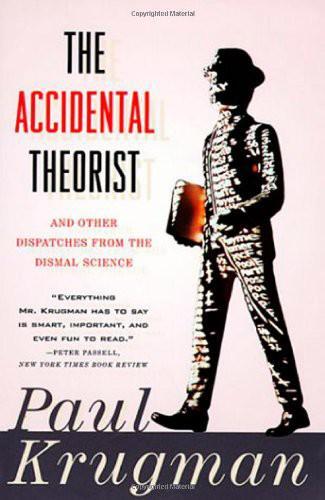
The Accidental Theorist: And Other Dispatches From the Dismal Science
by
Paul Krugman
Published 18 Feb 2010
America’s middle class may be anxious, but objectively, it is doing fine. The people who are really doing badly are those who do not have good jobs and never did. Those with lousy jobs have seen their already-low wages slowly but steadily sink. In other words, the main victims of (to use another of Reich’s phrases) the “new economy” are not the few thousand managers who have become hamburger flippers but the tens of millions of hamburger flippers, janitors, and so on whose real wages have been declining 1 or 2 percent per year for the last two decades. Does this distinction matter? It does if you are trying to set any sort of policy priorities.
…
They would rather read five books by David Halberstam than one chapter in an undergraduate textbook; and they absolutely hate the idea that they need to work their way through whimsical stories about cloth and wine and baby-sitting rather than get right into pontificating about globalization and the new economy. But there is no way around it. If you want to be truly well-informed about economics (or anything else), you must go back to school—and keep going back, again and again. You must be prepared to work through little models before you can use the big words—in fact, it is usually a good idea to try to avoid the big words altogether.
…
Remarkably for a book that spends most of its five-hundred-plus pages dwelling on events centuries (and occasionally millennia) in the past, a good deal of the buzz comes from the business community, not usually noted for its interest in history. Indeed, Fischer is getting favorable mention from people who tell us in the next breath that we live in a New Economy to which old rules no longer apply. There is a reason for this peculiar affinity between a historian with an eight-century perspective and business commentators obsessed with the new; what these pundits really want, it turns out, is to use his account of alleged patterns in the distant past as an excuse to ignore the lessons of more recent history.
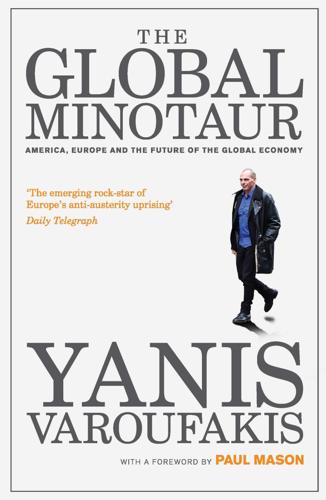
The Global Minotaur
by
Yanis Varoufakis
and
Paul Mason
Published 4 Jul 2015
It was a New Age faith in the financial sector’s powers to create ‘riskless risk’, which culminated in the belief that the planet could now sustain debts (and bets made on the back of these debts) that were many multiples of actual, global income. Vulgar empiricism shored up such mystical beliefs: back in 2001, when the so-called ‘new economy’ collapsed, destroying much of the paper wealth made from the dotcom bubble and the Enron-like scams, the system held together. The 2001 new economy bubble was, in fact, worse than the sub-prime mortgage equivalent that burst six years later. And yet the ill effects were contained efficiently by the authorities (even though employment did not recover until 2004–05). If such a large shock could be absorbed so readily, surely the system could sustain smaller shocks, like the $500 billion sub-prime losses of 2007–08.
…
Both ‘consolidation’ waves (of the 1900s and the 1990s) had momentous consequences on Wall Street, effectively multiplying by a considerable factor the capital flows that the banks and other financial institutions were handling. However, the 1990s version was more explosive because of the effects of two new phenomena: the Minotaur-induced capital flight toward America, and the way in which the so-called New Economy, and predominantly the prospects for e-commerce, mesmerized investors. In 1998, Germany’s flagship vehicle maker, Daimler-Benz, was lured to the United States, where it attempted, successfully, to take over Chrysler, the third-largest American auto manufacturer. The price the German company paid for Chrysler, $36 billion, sounded exorbitant – but at the time it seemed like a good price, in view of Wall Street’s valuation of the merged company, which amounted to a whopping $130 billion!
…
.: Great Society programmes, 83, 84, 92; Vietnam War, 92 JPMorgan Chase, 151, 153 keiretsu system, Japan, 186, 187, 188, 189, 191 Kennan, George, 68, 71 Kennedy, John F., New Frontier social programmes, 83, 84 Keynes, John Maynard: Bretton Woods conference, 59, 60, 62, 109; General Theory, 37; ICU proposal, 60, 66, 90, 109, 254, 255; influence on New Dealers, 81; on investment decisions, 48; on liquidity, 160–1; trade imbalances, 62–6 Keynsianism, 157 Kim Il Sung, 77 Kissinger, Henry, 94, 98, 106 Kohl, Helmut, 201 Korea, 91, 191, 192 Korean War, 77, 86 labour: as a commodity, 28; costs, 104–5, 104, 105, 106, 137; hired, 31, 45, 46, 53, 64; scarcity of, 34–5; value of, 50–2 labour markets, 12, 202 Labour Party (British), 69 labourers, 32 land: as a commodity, 28; enclosure, 64 Landesbanken, 203 Latin America: effect of China on, 215, 218; European banks’ exposure to, 203; financial crisis, 190 see also specific countries lead, prices, 96 Lebensraum, 67 Left-Right divide, 167 Lehman Brothers, 150, 152–3 leverage, 121–2 leveraging, 37 Liberal Democratic Party (Japan), 187 liberation movements, 79, 107 LIBOR (London Interbank Offered Rate), 148 liquidity traps, 157, 190 Lloyds TSB, 153, 156 loans: and CDOs, 7–8, 129–31; defaults on, 37 London School of Economics, 4, 66 Long-Term Capital Management (LTCM) hedge fund collapse, 13 LTCM (Long-Term Capital Management) hedge fund collapse, 2, 13 Luxembourg, support for Dexia, 154 Maastricht Treaty, 199–200, 202 MacArthur, Douglas, 70–1, 76, 77 machines, and humans, 50–2 Malaysia, 91, 191 Mao, Chairman, 76, 86, 91 Maresca, John, 106–7 Marjolin, Robert, 73 Marshall, George, 72 Marshall Plan, 71–4 Marx, Karl: and capitalism, 17–18, 19, 34; Das Kapital, 49; on history, 178 Marxism, 181, 182 Matrix, The (film), 50–2 MBIA, 149, 150 McCarthy, Senator Joseph, 73 mercantilism, in Germany, 251 merchant class, 27–8 Merkel, Angela, 158, 206 Merrill Lynch, 149, 153, 157 Merton, Robert, 13 Mexico: effect of China on, 214; peso crisis, 190 Middle East, oil, 69 MIE (military-industrial establishment), 82–3 migration, Crash of 2008, 3 military-industrial complex mechanism, 65, 81, 182 Ministry for International Trade and Industry (Japan), 78 Ministry of Finance (Japan), 187 Minotaur legend, 24–5, 25 Minsky, Hyman, 37 money markets, 45–6, 53, 153 moneylenders, 31, 32 mortgage backed securities (MBS) 232, 233, 234 NAFTA (North American Free Trade Agreement), 214 National Bureau of Economic Research (US), 157 National Economic Council (US), 3 national income see GDP National Security Council (US), 94 National Security Study Memorandum 200 (US), 106 nationalization: Anglo Irish Bank, 158; Bradford and Bingley, 154; Fortis, 153; Geithner–Summers Plan, 179; General Motors, 160; Icelandic banks, 154, 155; Northern Rock, 151 NATO (North Atlantic Treaty Organization), 76, 253 negative engineering, 110 negative equity 234 neoliberalism, 139, 142; and greed, 10 New Century Financial, 147 New Deal: beginnings, 45; Bretton Woods conference, 57–9; China, 76; Global Plan, 67–71, 68; Japan, 77; President Kennedy, 84; support for the Deutschmark, 74; transfer union, 65 New Dealers: corporate power, 81; criticism of European colonizers, 79 ‘new economy’, 5–6 New York stock exchange, 40, 158 Nietzsche, Friedrich, 19 Nixon, Richard, 94, 95–6 Nobel Prize for Economics, 13 North American Free Trade Agreement (NAFTA), 214 North Atlantic Treaty Organization (NATO), 76 North Korea see Korea Northern Rock, 148, 151 Obama administration, 164, 178 Obama, Barack, 158, 159, 169, 180, 230, 231 OECD (Organisation for Economic Co-operation and Development), 73 OEEC (Organisation for European Economic Co-operation), 73, 74 oil: global consumption, 160; imports, 102–3; prices, 96, 97–9 OPEC (Organization of the Petroleum Exporting Countries), 96, 97 paradox of success, 249 parallax challenge, 20–1 Paulson, Henry, 152, 154, 170 Paulson Plan, 154, 173 Penn Bank, 40 Pentagon, the, 73 Plaza Accord (1985), 188, 192, 213 Pompidou, Georges, 94, 95–6 pound sterling, devaluing, 93 poverty: capitalism as a supposed cure for, 41–2; in China, 162; reduction in the US, 84; reports on global, 125 predatory governance, 181 prey–predator dynamic, 33–5 prices, flexible, 40–1 private money, 147, 177; Geithner–Summers Plan, 178; toxic, 132–3, 136, 179 privatization, of surpluses, 29 probability, estimating, 13–14 production: cars, 70, 103, 116, 157–8; coal, 73, 75; costs, 96, 104; cuts in, 41; in Japan, 185–6; processes, 30, 31, 64; steel, 70, 75 production–distribution cycle, 54 property see real estate prophecy paradox, 46, 47, 53 psychology, mass, 14 public debt crisis, 205 quantitative easing, 164, 231–6 railway bubbles, 40 Rational Expectations Hypothesis (REH), 15–16 RBS (Royal Bank of Scotland), 6, 151, 156; takeover of ABN-Amro, 119–20 Reagan, Ronald, 10, 99, 133–5, 182–3 Real Business Cycle Theory (RBCT), 15, 16–17 real estate, bubbles, 8–9, 188, 190, 192–3 reason, deferring to expectation, 47 recession predictions, 152 recessions, US, 40, 157 recycling mechanisms, 200 regulation, of banking system, 10, 122 relabelling, 14 religion, organized, 27 renminbi (RMB), 213, 214, 217, 218, 253 rentiers, 165, 187, 188 representative agents, 140 Reserve Bank of Australia, 148 reserve currency status, 101–2 risk: capitalists and, 31; riskless, 5, 6–9, 14 Roach, Stephen, 145 Robbins, Lionel, 66 Roosevelt, Franklin D., 165; attitude towards Britain, 69; and bank regulation, 10; New Deal, 45, 58–9 Roosevelt, Theodore (‘Teddy’), 180 Royal Bank of Scotland (RBS), 6, 151, 156; takeover of ABN-Amro, 119–20 Rudd, Kevin, 212 Russia, financial crisis, 190 Saudi Arabia, oil prices, 98 Scandinavia, Gold Standard, 44 Scholes, Myron, 13 Schopenhauer, Arthur, 19 Schuman, Robert, 75 Schumpter, Joseph, 34 Second World War, 45, 55–6; aftermath, 87–8; effect on the US, 57–8 seeds, commodification of, 163 shares, in privatized companies, 137, 138 silver, prices, 96 simulated markets, 170 simulated prices, 170 Singapore, 91 single currencies, ICU, 60–1 slave trade, 28 SMEs (small and medium-sized enterprises), 186 social welfare, 12 solidarity (asabiyyah), 33–4 South East Asia, 91; financial crisis, 190, 191–5, 213; industrialization, 86, 87 South Korea see Korea sovereign debt crisis, 205 Soviet Union: Africa, 79; disintegration, 201; Marshall Plan, 72–3; Marxism, 181, 182; relations with the US, 71 SPV (Special Purpose Vehicle), 174 see also EFSF stagflation, 97 stagnation, 37 Stalin, Joseph, 72–3 steel production, in Germany, 70 Strauss-Kahn, Dominique, 60, 254, 255 Summers, Larry, 230 strikes, 40 sub-prime mortgages, 2, 5, 6, 130–1, 147, 149, 151, 166 success, paradox of, 33–5, 53 Suez Canal trauma, 69 Suharto, President of Indonesia, 97 Summers, Larry, 3, 132, 170, 173, 180 see also Geithner–Summers Plan supply and demand, 11 surpluses: under capitalism, 31–2; currency unions, 61; under feudalism, 30; generation in the EU, 196; manufacturing, 30; origin of, 26–7; privatization of, 29; recycling mechanisms, 64–5, 109–10 Sweden, Crash of 2008, 155 Sweezy, Paul, 73 Switzerland: Crash of 2008, 155; UBS, 148–9, 151 systemic failure, Crash of 2008, 17–19 Taiwan, 191, 192 Tea Party (US), 162, 230, 231, 281 technology, and globalization, 28 Thailand, 91 Thatcher, Margaret, 117–18, 136–7 Third World: Crash of 2008, 162; debt crisis, 108, 219; interest rate rises, 108; mineral wealth, 106; production of goods for Walmart, 125 tiger economies, 87 see also South East Asia Tillman Act (1907), 180 time, and economic models, 139–40 Time Warner, 117 tin, prices, 96 toxic theory, 13–17, 115, 133–9, 139–42 trade: balance of, 61, 62, 64–5; deficits (US), 111, 243; global, 27, 90; surpluses, 158 trades unions, 124, 137, 202 transfer unions, New Deal, 65 Treasury Bills (US), 7 Treaty of Rome, 237 Treaty of Versailles, 237 Treaty of Westphalia, 237 trickle-down, 115, 135 trickle-up, 135 Truman Doctrine, 71, 71–2, 77 Truman, Harry, 73 tsunami, effects of, 194 UBS, 148–9, 151 Ukraine, and the Crash of 2008, 156 UN Security Council, 253 unemployment: Britain, 160; Global Plan, 96–7; rate of, 14; US, 152, 158, 164 United States see US Unocal, 106 US economy, twin deficits, 22–3, 25 US government, and South East Asia, 192 US Mortgage Bankers Association, 161 US Supreme Court, 180 US Treasury, 153–4, 156, 157, 159; aftermath of the Crash of 2008, 160; Geithner–Summers Plan, 171–2, 173; bonds, 227 US Treasury Bills, 109 US (United States): aftermath of the Crash of 2008, 161–2; assets owned by foreign state institutions, 216; attitude towards oil price rises, 97–8; China, 213–14; corporate bond purchases, 228; as a creditor nation, 57; domestic policies during the Global Plan, 82–5; economy at present, 184; economy praised, 113–14; effects of the Crash of 2008, 2, 183; foreign-owned assets, 225; Greek Civil War, 71; labour costs, 105; Plaza Accord, 188; profit rates, 106; proposed invasion of Afghanistan, 106–7; role in the ECSC, 75; South East Asia, 192 value, costing, 50–1 VAT, reduced, 156 Venezuela, oil prices, 97 Vietnamese War, 86, 91–2 vital spaces, 192, 195, 196 Volcker, Paul: 2009 address to Wall Street, 122; demand for dollars, 102; and gold convertibility, 94; interest rate rises, 99; replaced by Greenspan, 10; warning of the Crash of 2008, 144–5; on the world economy, 22, 100–1, 139 Volcker Rule, 180–1 Wachowski, Larry and Andy, 50 wage share, 34–5 wages: British workers, 137; Japanese workers, 185; productivity, 104; prophecy paradox, 48; US workers, 124, 161 Wal-Mart: The High Cost of Low Price (documentary, Greenwald), 125–6 Wall Street: Anglo-Celtic model, 12; Crash of 2008, 11–12, 152; current importance, 251; Geithner–Summers Plan, 178; global profits, 23; misplaced confidence in, 41; private money, 136; profiting from sub-prime mortgages, 131; takeovers and mergers, 115–17, 115, 118–19; toxic theory, 15 Wallace, Harry, 72–3 Walmart, 115, 123–7, 126; current importance, 251 War of the Currents, 39 Washington Mutual, 153 weapons of mass destruction, 27 West Germany: labour costs, 105; Plaza Accord, 188 Westinghouse, George, 39 White, Harry Dexter, 59, 70, 109 Wikileaks, 212 wool, as a global commodity, 28 working class: in Britain, 136; development of, 28 working conditions, at Walmart, 124–5 World Bank, 253; origins, 59; recession prediction, 149; and South East Asia, 192 World Trade Organization, 78, 215 written word, 27 yen, value against dollar, 96, 188, 193–4 Yom Kippur War, 96 zombie banks, 190–1

Restarting the Future: How to Fix the Intangible Economy
by
Jonathan Haskel
and
Stian Westlake
Published 4 Apr 2022
By supporting trade, finance, and investment, they had begun to break out of the trap of subsistence in which most of western Europe had been stuck for centuries. But even as the paint on the fresco was drying, the economic tide was beginning to turn. The institutions that had helped Siena prosper turned out to be inadequate for the new economy. Like many other northern Italian cities, Siena began to stagnate and then decline. The frescoes in the Palazzo Pubblico stand as a melancholy reminder of what had been. The Sienese experience raises an important question that we will explore in chapter 3: What institutions, norms, and strategies does the economy need as it grows and changes?
…
By modern standards, Siena was still desperately poor, but it was slightly less poor than it had been, and that growth was in itself remarkable by historical standards. But even as the paint on the fresco was drying, the economic tide was beginning to turn. The institutions and rules that had helped the Tuscan towns become richer were not able to cope with the demands of the emerging new economy. Investment slowed. Rich townsfolk increasingly spent their money on status and display. Unwise land development led to disastrous floods. Growing inequality led to riots and disorder. Improving Siena’s institutions to deal with these new challenges was difficult. Indeed, the fact that its rulers saw fit to commission costly frescoes about good and bad governance suggests that this issue was contested at the time.
…
Indeed, the fact that its rulers saw fit to commission costly frescoes about good and bad governance suggests that this issue was contested at the time. FIGURE 3.1: Ambrogio Lorenzetti, The Effects of Good Governance on Siena and Its Territory, Public Palace, Siena. The institutions that had helped Siena prosper were not adequate for the new economy that had emerged. Like many northern Italian cities, Siena began to stagnate and then to decline. The frescoes in the Palazzo Pubblico stand as a melancholy reminder of what had been. Nonetheless, the frescoes of Siena provide three lessons that are important to our argument. First, good institutions help drive economic growth and investment.
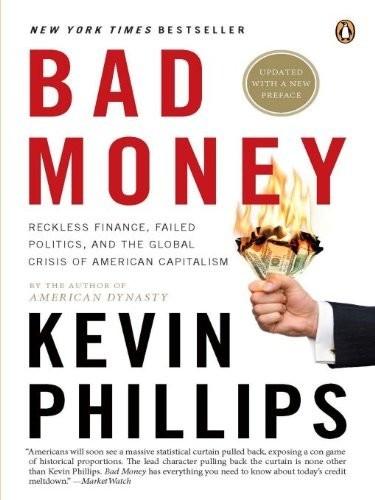
Bad Money: Reckless Finance, Failed Politics, and the Global Crisis of American Capitalism
by
Kevin Phillips
Published 31 Mar 2008
Part of the reason for sketching some of the realignment of wealth that has flowed from the rise of the financial sector is simply to underscore how yesteryear’s support for the creative destruction of a free and fast-flowing marketplace would logically have evolved into support for an assets “Plunge Protection Team” or a federal assets-maintenance strategy instead. Keep the markets up. Please, gentlemen, especially with all of those crazy people in the Middle East and the dollar coming unglued. Meanwhile, the new economy is breeding more stratification and inheritance than mobility. Money makes money. When Barron’s published its 2007 survey of the top forty wealth-management firms in the United States—most part of banks or other large financial institutions—among them they appeared to have some seventy thousand private client managers.47 Wealth management has become a large and growing business in the United States, and wealthy Americans are no more likely to submit their swollen and cherished assets to the unfettered whims of the free market than Japanese asset owners were when Japan’s real estate and stock bubble began to deflate in 1989.
…
ORDINARY AMERICANS: A NEW AND GROWING RISK BURDEN The economic uncertainty and disillusionment of Middle America has become a commonplace. The five-year stagnation of median family incomes, the additional millions lacking health insurance coverage, and the increasing share of personal income required for debt service have taken the wind out of the sails of even new-economy soothsayers. If household-sector risk consciousness had a quantifier, it would be at or near a record. If risk—more specifically, its minimalization or its widest feasible dispersal—has been a major preoccupation of the financial sector, corporate America and the federal government have been moving in comparable directions, dumping this or that onetime responsibility.
…
As Daniel Gross hypothesized in Bull Run: Wall Street, the Democrats, and the New Politics of Personal Finance (2000), a new “democratization of money”—the convergence of pension fund power, broad public ownership of mutual funds, and supposed Clinton administration talent had turned the mass of individual investors into the new “monied interests,” displacing the New Yorker cartoon figures as the principal beneficiaries of the stock market. Thus, he argued, “the Democrats can be the party of Wall Street and Main Street, of the rich and the poor,” while the Republicans paint themselves into a southern and culturally non-cosmopolitan corner.19 Although the new-economy utopian pretenses generally disappeared after the 2000-2002 stock market crash, major legacies of this new Democratic economic contemplation remained relevant in 2008. A Washington-to-Boston geography, with a New Jersey-New York- Connecticut center of gravity, grew even more vivid. Besides the Clintons’ taking on New York coloration, Jon Corzine, the former co-chairman of Goldman Sachs, became the Democratic governor of New Jersey.
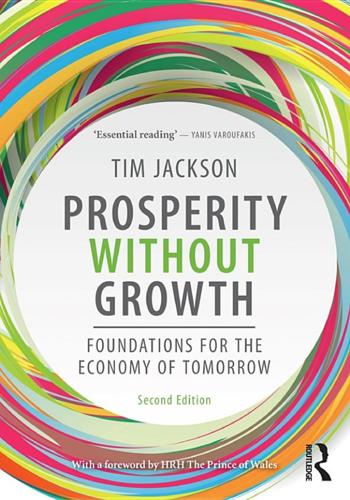
Prosperity Without Growth: Foundations for the Economy of Tomorrow
by
Tim Jackson
Published 8 Dec 2016
The suggestion is still essentially an appeal to decoupling. Growth continues, while resource intensity (and hopefully throughput) declines. But here at least is something in the way of a blueprint for what such an economy might look like. It gives us more of a sense of what people are buying and what businesses are selling in this new economy. It also gives us an insight into the kinds of jobs that characterise the new service-based economy. They will differ in some precise ways from jobs in the prevailing consumer economy. And, perhaps more importantly, as we see in the next section, there are likely to be more of them. Work as participation Work matters.
…
Confronting instability If the economy of tomorrow is a ‘post-growth’ economy not just in concept but also in measure, then what can we say about the second horn of the dilemma of growth. Are we inevitably heading towards macroeconomic instability? Or are there ways in which the structural foundations of this new economy might mitigate instability and in doing so allow us to escape the dilemma? These are amongst the most profound and the most important questions raised by the inquiry in this book. And it’s extraordinary to find, more than 80 years after Keynes’ essay and twice that since Mill’s defence of the stationary state, that we have virtually nothing to go on to help us answer them.
…
What happens to employment when material consumption is no longer expanding? What happens to inequality as conventional growth rates decline? What can we say about financial stability when capital no longer accumulates? What happens to the public sector in the face of declining aggregate demand? These are the kinds of questions that we need to ask about this new economy. Conventional wisdom tends to suggest some unsavoury answers. When demand stalls, for instance, unemployment typically rises, tax revenues typically fall and debts rise. These impacts tend to create a ‘growth imperative’ which in its turn becomes the foundations for the dilemma of growth. As I indicated at the top of this chapter, a fully articulated post-growth macroeconomics lies beyond the scope of this book.
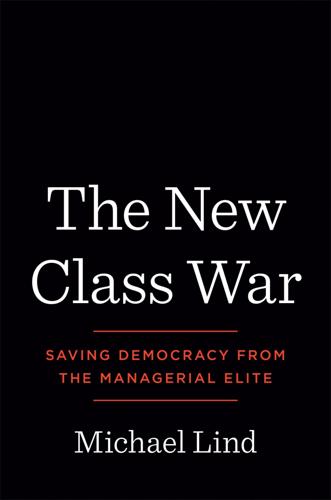
The New Class War: Saving Democracy From the Metropolitan Elite
by
Michael Lind
Published 20 Feb 2020
Danish Social Democrats, for example, have reversed their political decline by adopting a more restrictive immigration policy, winning back voters motivated by that issue who had cast protest votes for populist parties.1 In other cases, ameliorative new social insurance programs might reduce some of the insecurity many workers feel in the unfriendly new economy created by neoliberalism. But the willingness of Western elites to refrain from imposing their deeply held left-libertarian values on their fellow citizens or to pay higher taxes to bribe the masses below them is undoubtedly limited. And if redistribution of income or assets were not accompanied by redistribution of power, the feelings of powerlessness that drive much working-class anger would remain
…
Among these non-STEM jobs, only two pay relatively well—general and operations managers ($100,410) and registered nurses ($70,000). These happen to be the only two that require college degrees, according to the BLS. None of the other jobs with the greatest absolute growth in the US pay more than the annual salary of a medical assistant ($32,480).3 If the “new economy” or “knowledge economy” primarily rewarded education, rather than ownership of assets, then we would expect the greatest increase in incomes to have occurred among the top 30 percent with at least a bachelor’s degree. Instead, the gains from growth have been concentrated among those with income from capital—investors and managers with stock options.4 In one study, in sixteen Western democracies labor productivity grew far more rapidly than average real wages and fringe benefits, but most income growth went to profits of owners and shareholders.5 Another study of thirteen advanced capitalist countries found that the growth in real wages, which had been 4 percent in the 1970s, was less than 1 percent between 1980 and 2005, while the wage share of income declined from 78 percent to 63 percent, with the rest going to income from profits, interest, dividends, and rents.6 The big money is not in “human capital” but in plain old-fashioned capital.
…
Instead, the gains from growth have been concentrated among those with income from capital—investors and managers with stock options.4 In one study, in sixteen Western democracies labor productivity grew far more rapidly than average real wages and fringe benefits, but most income growth went to profits of owners and shareholders.5 Another study of thirteen advanced capitalist countries found that the growth in real wages, which had been 4 percent in the 1970s, was less than 1 percent between 1980 and 2005, while the wage share of income declined from 78 percent to 63 percent, with the rest going to income from profits, interest, dividends, and rents.6 The big money is not in “human capital” but in plain old-fashioned capital. The new economy is really a new version of the old economy—the managerial capitalist economy, not some mythical, immaterial “knowledge economy.” To be sure, nations with large pools of engineers and scientists are likely to do better than those without them. Even so, there are relatively few “knowledge economy” jobs as a share of the total.
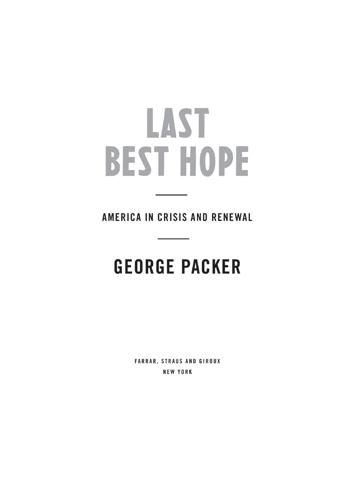
Last Best Hope: America in Crisis and Renewal
by
George Packer
Published 14 Jun 2021
Clinton’s speeches became euphoric—“We are fortunate to be alive at this moment in history,” he said in his final State of the Union message. The new economy had replaced “outmoded ideologies” with dazzling technologies. The business cycle had practically been abolished, along with class conflict. The answer to all problems of social class was education. Clinton’s wish list to Congress that year included more money for Internet access in schools and college-test-prep courses for poor kids. In April 2000 Clinton hosted a celebration called the White House Conference on the New Economy. Bill Gates sat on a panel with Amartya Sen, earnest purpose mingled with self-congratulation, virtue and success high-fived—the distinctive atmosphere of Smart America.
…
Something more than just the Democrats’ principled embrace of the Black freedom movement and other struggles for equality caused the shift. After the McGovern convention in 1972, the Democratic Party became the home of educated professionals, racial minorities, and the shrinking unionized working class. The more the party identified with the winners of the new economy, the easier it became for the Republican Party to pull away white workers by appealing to cultural values. In the 1980s Gary Hart (who had labored on the Kansas railroads as a boy) became the leader of the tech-minded “Atari Democrats.” In the early 1990s Bill Clinton (from a dirt-poor Arkansas watermelon patch called Hope) used his chairmanship of the centrist Democratic Leadership Council as a launchpad for the presidency.
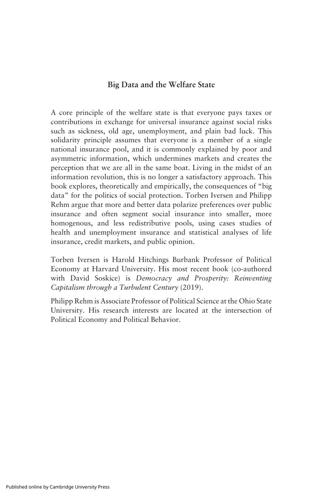
Big Data and the Welfare State: How the Information Revolution Threatens Social Solidarity
by
Torben Iversen
and
Philipp Rehm
Published 18 May 2022
Our main focus is on the contemporary period, however, where we examine how technology, insurance, and financial companies are using data to enable and https://doi.org/10.1017/9781009151405.001 Published online by Cambridge University Press Methods and Evidence 11 segment insurance and credit markets. Market-based insurers rather than MASs now dominate private insurance provision, but we will show how social networks have assumed an insurance role in the new economy that is not unlike the role played by MASs in the past, and we explain how these networks have become important when it comes to sharing information and forming policy preferences. We also conduct several case studies of change. Since the mid-1970s, for example, statewide private health insurance in the USA has been broken up into smaller pools, usually based on large companies (called “self-insurance”).
…
We use the Swedish case of unemployment benefit reforms to explore the consequences of a closer association between occupation and risk, which allows unions to police entry and enforce risk differentiation in UIFs. Solidaristic pooling of unemployment insurance is no longer the obvious choice for a majority of workers. Segmentation of labor markets is also colinear with more segmentation of social networks. In the new economy, the latter serve some insurance purposes themselves, but for individuals, they also function as an important source of information about their risks. We show that better information about unemployment risks leads to more polarized social policy preferences. There are thus two effects of growing socioeconomic differentiation of risk: one is a segmentation of insurance; the other is a decline in cross-class solidarity.
…
Moreover, access to credit has become an important determinant of individual welfare in a 1 This chapter is based on Iversen and Rehm (2022). 105 https://doi.org/10.1017/9781009151405.005 Published online by Cambridge University Press 106 Credit Markets AUS AUT BEL CAN CHE DEU DNK ESP FIN FRA GBR GRC ITA JPN NLD NOR PRT SWE USA 0 50 100 150 200 250 Total household debt (% of net disposable income) 1995 2019 figure 5.1 Household debt as a percentage of disposable income Note: Second data point refers to 2018 in JPN, NOR, and USA and 2020 in CAN. Source: OECD National Accounts Statistics: National Accounts at a Glance (https://doi.org/10.1787/f03b6469-en, last accessed June 3, 2021 [https://per ma.cc/HE5 R-NR7X]) (OECD 2018b). new economy where credit is used to smooth income across increasingly nonlinear life cycles. As owning a home has become commonplace in some countries, access to mortgage finance is also increasingly seen as a prerequisite for a middle-class life style. Therefore, both access to credit and the cost of such access are becoming important determinants of prosperity and hence also of inequality.
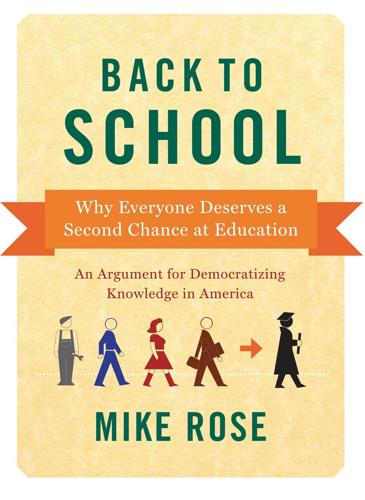
Back to School: Why Everyone Deserves a Second Chance at Education
by
Mike Rose
Published 17 Sep 2012
These efforts are laudable; however, they reach a fairly small percentage of poor and low-income Americans and on average are targeted toward the more academically skilled among them—though many still require remedial English and mathematics. The economic rationale for increased postsecondary education rests on some widely held—and continually broadcasted— assumptions. Work in the “new economy” requires more literacy, numeracy, and computer skills as well as so-called “soft skills” like collaboration and communication. A further assumption is that there is a “skills mismatch” between many Americans and the labor market; that is, there are jobs out there that go unfilled because the local labor pool doesn’t possess the technological or behavioral skills to do the work.
…
number of important issues, central not only to education but also to the economy, to the meaning of work, and to democratic life: the skyrocketing cost of college and the poor record of retention and graduation in higher education, the disconnect between the current labor market and the politically popular rhetoric of “educating our way into the new economy,” and the significant commitment of financial and human resources that will be needed to make college-for-all a reality. On a broader scale the debate raises the issues of the purpose of education in a free society, the issue of the variability of human interests and talents, and the class-based bias toward entire categories of knowledge and activity—a bias institutionalized in the structure of the American high school.
…
But as with remedial education, this is a promising moment. All those Perkins-initiated reforms of the last few decades have yielded some terrific programs and ideas. The notion of contextualized learning is getting wide attention. And public and private resources are being directed toward workforce development for the new economy. As with attempts at reform of remediation, the big question is: What kind of education will all this yield? Let me close with several observations. When I was teaching remedial English, one of my primary goals was to change the model of writing my students carried in their heads. Over our time together, I wanted them to begin to conceive of writing as a way to think something through and give order to those thoughts.
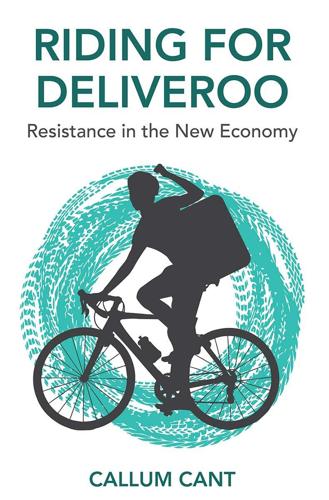
Riding for Deliveroo: Resistance in the New Economy
by
Callum Cant
Published 11 Nov 2019
The Question of Power Notes 8 A New Wave London, September 2018 Everywhere, October 2018 The Network Model Notes 9 Conclusion The Politics of Parties and the Conditions of Struggle Birdsong Notes Index End User License Agreement Riding for Deliveroo Resistance in the New Economy Callum Cant polity Copyright © Callum Cant 2020 The right of Callum Cant to be identified as Author of this Work has been asserted in accordance with the UK Copyright, Designs and Patents Act 1988. First published in 2020 by Polity Press Polity Press 65 Bridge Street Cambridge CB2 1UR, UK Polity Press 101 Station Landing Suite 300 Medford, MA 02155, USA All rights reserved.
…
Except for the quotation of short passages for the purpose of criticism and review, no part of this publication may be reproduced, stored in a retrieval system or transmitted, in any form or by any means, electronic, mechanical, photocopying, recording, or otherwise, without the prior permission of the publisher. ISBN-13: 978-1-5095-3552-1 A catalogue record for this book is available from the British Library. Library of Congress Cataloging-in-Publication Data Names: Cant, Callum, author. Title: Riding for Deliveroo : resistance in the new economy / Callum Cant. Description: Cambridge, UK ; Medford, MA : Polity Press, 2019. | Includes bibliographical references. | Summary: “What is life like for workers in the gig economy? Is it a paradise of flexibility and freedom? Or is it a world of exploitation? Callum Cant took a job with one of the most prominent platforms, Deliveroo, to find out.
…
McAlevey (2016) No shortcuts: organizing for power in the new gilded age. Oxford University Press. 9 Conclusion When you understand a workplace from the workers’ point of view, all kinds of previously invisible phenomena come into view. Deliveroo – which looks on the surface like the shiny model of a new economy – is revealed to be based on a class composition that’s prone to explosions of struggle. An atomized workforce of hundreds of couriers spread across a city are revealed to be organized through a tight-knit invisible structure that allows them to take mass coordinated action. Cities across the world are revealed to be linked by a transnational strike wave which has been building and building for the last two years.

The Internet Is Not What You Think It Is: A History, a Philosophy, a Warning
by
Justin E. H. Smith
Published 22 Mar 2022
We do not usually provide our bodily fluids, and are not usually asked to do so, though sites such as Ancestry.com do ask for saliva as part of their data-collecting efforts, and health bracelets and other such devices owned by Apple and Amazon are increasingly discovering ways to monitor a number of our vital fluid levels. But even if we are not giving our fluids, we are giving something that has proven more valuable to the new economy than milk ever was in the system of industrial agriculture: information about who we are, what we do, what we think, what we fear. Some of us continue to have old-fashioned careers in the twenty-first century—we are doctors, professors, lawyers, and truck drivers. Yet the main economy is now driven not by what we do, but by the information extracted from us, not by our labor in any established sense, but by our data.
…
Paying Attention Bots can do many things. They can monitor, track, harrass, impress with their ability to generate natural-seeming sentences, and even make jokes. But in the end they are like the cardboard-cow cutouts of a Potemkin village, as they are not themselves capable of conjuring that precious resource the new economy is intent on extracting: to wit, attention. Attention is special among mental faculties for a number of reasons. Perhaps first among these is that it is not only a mental faculty, but also, irreducibly, a moral state. The moral aspect of attention is conveyed in familiar situations, such as the plea that one might extend to a loved one: “Pay attention to me!”
…
This habit of thinking extends to everything from fundamental questions about the nature of the external world, to questions about the structure of human society, from electoral politics to interpersonal relations. To “game the attention economy” is to develop a strategy for “winning” attention from others within a system of formal constraints where the “points” are measured out in clicks, likes, favorites, retweets, and so on: the quantified units of attention. But a person may be gamified by this new economy in turn, either taking their own behavior variously as a sort of well-running or glitch-laden program, or falling victim to denunciations from others for one’s own glitches. When we criticize Facebook for its manipulative ploys for user retention, we are in fact criticizing the people who designed Facebook, and the people who signed off on this design for reasons of greed.
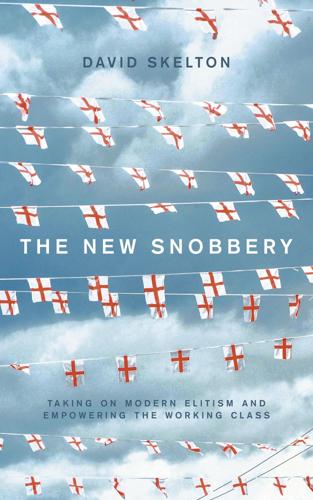
The New Snobbery
by
David Skelton
Published 28 Jun 2021
It was accepted that the new economic order was non-negotiable and that rather than harking back to a golden age of unionised heavy industry, the UK should be focusing on its ‘comparative advantage’ in finance and in services. At the same time, a cult of competitiveness developed, with the maxim being that the UK should ignore manufacturing and ensure its people could be ‘competitive’ in the new economy. The resulting financialisation of the UK economy led to the hollowing out of much of the real economy and to the situation where, as Pope Francis suggests, ‘finance overwhelms the real economy’.26 The growth of financial services began in the 1980s, when investment in the financial sector increased by 320 per cent compared to only 12 per cent for industry, and has been maintained ever since.
…
Financialisation has also drained talent from the productive economy, accelerated regional inequality and, as we’ve seen, left many politicians unable to contemplate an alternative. An increased pooling of economic benefits, a stagnation of real wages and a hollowing out of working-class towns were all regarded as part of this inevitability. The new political economy did not consider how to ensure that this new economy worked in the interests of the people, nor did politicians consider how the rougher edges of the new settlement could be dulled to minimise the impact on workers. Instead, the message was that working people should suck it up; change was inevitable. The only way out was for people stuck in decaying towns to educate themselves in order to compete in the knowledge economy.
…
Putting Vocation and Skill at the Heart of Our Education System Our education system must be one that ensures everyone is able to make the most of their potential, whether that potential is achieved through academic or vocational means. For decades, the education system has inadvertently helped to widen the gulf between winners and losers in the new economy. Resources have been concentrated on the 50 per cent who go to university, and funding for further education has been cut by governments of all parties. It is high time that the focus shifted to the 50 per cent who don’t go to university, to help ensure that the UK does genuinely have the high-skill, high-wage economy we often talk about.
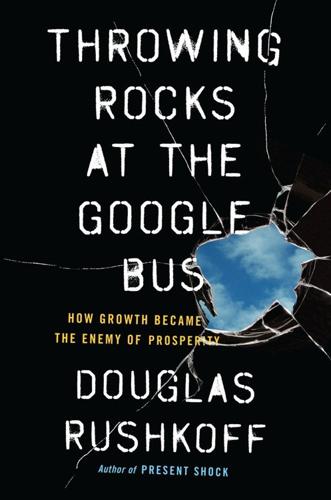
Throwing Rocks at the Google Bus: How Growth Became the Enemy of Prosperity
by
Douglas Rushkoff
Published 1 Mar 2016
Our digital renaissance quite literally retrieves the digits—human fingers—as essential to the creation of value in a networked age. Even if renaissance is a long shot, we may have no other option: like an overdue fetus becoming toxic to its mother, a new economy must be born or our very survival will be threatened. Economically driven climate change should be a big enough cue that it’s time to go into labor; the polar shelf collapsing may as well be our water breaking. Indeed, history and humanity are both on the side of a new economy characterized less by industrial extraction than by digital distribution. And the planet appears to be demanding it, or else. But how do we push toward such a wonderful outcome?
…
Thanks to the students who took my Digital Economics lab at ITP, for researching and workshopping many of these ideas, as well as innovating so many of your own. Thanks especially to Venessa Miemis, Adam Quinn, and Jon Wasserman for growing from brilliant students into inspiring colleagues. Thanks to Shareable, FastCoExist, Techonomy, the P2P Foundation, and the New Economy Coalition for sharing so many ideas, and to the funders and attendees of the Contact Summit I convened in 2011 for prototyping technological development outside the venture capital bubble. Thanks to everyone at Occupy for modeling alternative approaches to activism and at Burning Man for experimenting with new approaches to value exchange.
…
Swaminathan Foundation, Chennai (Madras), India, April 29, 1999, available at Food and Agriculture Organization of the United Nations, FAO.org. 51. Juliet B. Schor, The Overworked American: The Unexpected Decline of Leisure (New York: Basic Books, 1992). 52. Juliet Schor and Julia Slay, “Attitudes About Work Time and the Path to a Shorter Working Week,” New Economics Institute, Strategies for a New Economy Conference, June 2012, vimeo.com/47179682. 53. Juliet B. Schor, Plenitude: The New Economics of True Wealth (New York: Penguin Press, 2010). 54. “Telecommuters with Flextime Stay Balanced up to 19 Hours Longer,” accounting.smartpros.com, July 2010; Daniel Cook, “Rules of Productivity Presentation,” lostgarden.com, September 28, 2008. 55.

Ground Control: Fear and Happiness in the Twenty First Century City
by
Anna Minton
Published 24 Jun 2009
It followed the deregulation of the financial markets, which was the catalyst for the exponential growth of the global financial services industry in Britain. The 1980s established the physical, technological and regulatory framework for an unfettered financial services industry in the UK, to replace the failing industrial economy. This ‘new’ economy was powered by the abolition of exchange controls and the 1986 deregulation of the stock exchange, an event known as ‘Big Bang’ because of the increase in market activity. It not only changed the culture of the City of London for ever, it brought with it a boom in property development which created a new corporate architecture.
…
As former warehouses were turned into waterside apartments overlooking the old docks, Docklands became one of the earliest places to build large numbers of gated developments, providing homes for the high-earning professionals who worked in the neighbouring steel and glass towers. Because much of the area remained among the poorest and most deprived in Britain, the gates and high security were marketed to offer reassurance to the finance professionals who were the pioneers of the new economy, living on the frontline. For Mrs Thatcher and Michael Heseltine, who was instrumental in kick-starting Docklands as secretary of state for environment, the deprivation of the area was a central justification for what was being created. The development slotted in perfectly with one of the defining concepts of Thatcherite economics: ‘trickle-down’.
…
Most important of all, they promised to transform places by increasing not only their own property values but those in the surrounding area, bringing in so much wealth that it somehow flows out of the gates of the gated properties and ‘trickles down’ to the surrounding poor. This was the idea of ‘regeneration’, a word which came into use during the 1980s, and means ‘rebirth’ in Latin. Rather than the more prosaic ‘redevelopment’, it conjures up the image of the phoenix of Canary Wharf and the new economy rising from the ashes of Docklands and Britain’s industrial past.1 Yet despite the pioneering zeal of their supporters, when they were built Broadgate and Canary Wharf were controversial, perceived as high-security enclaves of wealth surrounded by some of the poorest communities in Britain. They were also exceptional places – areas where business modelled the area in its own image in what are, after all, finance districts.

Digital Disconnect: How Capitalism Is Turning the Internet Against Democracy
by
Robert W. McChesney
Published 5 Mar 2013
Now that option has been played out, and the United States, by most accounts, is looking at growth for the next decade at rates lower than any decade since the Great Depression.79 Some economists and historians argue that major new technologies like the railroad and the automobile played a crucial role in stimulating investment and propelling the economy for decades to growth rates higher than they would have been otherwise. One of the great political economic questions concerning the Internet has been whether it would do this too. This hope was the basis for the commotion over the New Economy in the 1990s. On the one hand, the commanding heights of corporate capitalism today are digital. Investment has flooded the Internet and information technology. On the other hand, the evidence that this is translating into any sort of economic growth surge to date is underwhelming. Chart 7. Real U.S.
…
There was a fourth factor that undermined opposition or even debate despite this blatant pandering to a handful of corporations. The Internet bubble of the late 1990s made policies promoting the commercial development of cyberspace seem not only appropriate, but brilliant. After a difficult recession in the early 1990s following a scary crash in 1987, the Internet-inspired New Economy seemed to be the solution to the growth problems of capitalism. The late 1990s were a giddy moment, and the U.S. news media could barely contain themselves with their enthusiasm for the happy couple. Capitalism and the Internet seemed a marriage made in heaven.47 The emerging CEOs were the conquering heroes of the time, visionary seers, world-historical geniuses, and men of action, fully deserving of their rewards.
…
Instead we need constantly to keep in mind Baran and Sweezy’s emphasis on the “widening gap between what is and what could be” and how this demonstrates that “the existing property relations and the economic, social and political institutions resting upon them have turned into an effective obstacle to the achievement of what has become possible” for society. For an increasing number of people, the logic suggests one thing: it is time to give serious consideration to the establishment of a new economy. “The capitalist system was able to thrive, on and off, during the eighteenth, nineteenth, and twentieth centuries,” Jerry Mander wrote in 2012. “But it’s now obsolete, nonmalleable, and increasingly destructive.” Capitalism “had its day. If we care about the future well-being of humans and nature, it’s time to move on.”

World Cities and Nation States
by
Greg Clark
and
Tim Moonen
Published 19 Dec 2016
New Study: JFK, Newark and La Guardia lose out in Federal Grant Program. Press release. Available at http://media.wix.com/ugd/f2e928_96295b6108ef 423583472f9232062aff.pdf. Accessed 2016 Feb 11. Goff, C. (2013). Q & A with Bruce Katz: Building a new economy from the bottom up. NewStart. Available at http://newstartmag.co.uk/features/q‐a‐with‐bruce‐katz‐building‐a‐new‐economy‐ from‐the‐bottom‐up/. Accessed 2016 Feb 11. Golden, A. (2014). Governance of regional transit systems: Observations on Washington, New York and Toronto. Wilson Center. Available at https://www.wilsoncenter.org/sites/default/ files/CI_140625_governance_v4_0.pdf.
…
BMC to miss DP 2034 deadline again. DNA India. Available at http://www. dnaindia.com/mumbai/report‐bmc‐to‐miss‐dp‐2034‐deadline‐again‐2168698. Accessed 2016 Feb 9. Dhoot, V. (2015). Modi government revives 42 stalled projects worth Rs 1.15 lakh crore. The Economic Times. Available at http://economictimes.indiatimes.com/news/economy/ infrastructure/modi‐government‐revives‐42‐stalled‐projects‐worth‐rs‐1‐15‐lakh‐crore/ articleshow/47579787.cms. Accessed 2016 Feb 9. EIU (2012). Hot Spots: Benchmarking Global City Competitiveness. London: The Economist. Available at http://www.economistinsights.com/sites/default/files/downloads/Hot%20 Spots.pdf.
…
Asian Education and Development Studies, 4(3): 299–311. Long, S. (2015). The Singapore exception. The Economist. Available at http://www.economist. com/news/special‐report/21657606‐continue‐flourish‐its‐second‐half‐century‐south‐east‐ asias‐miracle‐city‐state. Accessed 2016 Feb 29. Low, L. (2001). The Singapore Developmental State in the new economy and polity. The Pacific Review, 14(3): 411–441. Mahbubani, K. (2015). The City State of Singapore braces itself for challenges to come. The Financial Times. Available at http://www.ft.com/cms/s/0/a14b617a‐d148‐11e4‐86c8‐ 00144feab7de.html#axzz3xtU8Ou7y. Accessed 2016 Feb 29. Mauzy, D. and Milne, R.S. (2002).
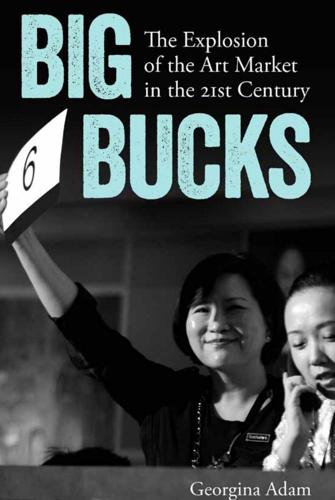
Big Bucks: The Explosion of the Art Market in the 21st Century
by
Georgina Adam
Published 14 Jun 2014
Coupled with a downturn in his prices after his 2008 Sotheby’s sale, prices for spot paintings slumped, their average price falling from over $1 million in 2007 to under $400,000 two years later; although they perked up a little afterwards, the average price was still under $600,000 in 2012.85 Coupled with this commodification of work by some artists is a clear adaptation of themes and materials to the market. While there is nothing new in this, the arrival of buyers from new economies this century has certainly triggered, among some artists, works that seem tailored to their tastes. Damien Hirst’s 2011 sale at Sotheby’s featured his familiar themes of pickled animals, spots, spins, butterflies – often on gold grounds, some combining the elements with butterflies and artificial diamonds on a spin background.
…
Bastien set out management principles that include ‘making it difficult for clients to buy’ (think of the waiting list for some of the hottest artists); ‘raise your prices to increase demand – and keep raising prices’ (as we see in Chapter 8 prices in galleries never go down, to maintain confidence) and ‘keep non-enthusiasts out’ (galleries will select who to sell to).89 And the list also includes ‘cultivate closeness to the arts for initiates’, which recommends that workers in the industry should visit ‘galleries, biennales and exhibitions of modern art’. Another reason for this luxury/art link up is the arrival in the market of buyers from new economies, whose awareness of art tends to be motivated by brand name recognition. A typical example was when LVMH plastered its shops worldwide with garish designs by the Japanese artist Yayoi Kusama. Sales of her work took off, according to her London dealer Glen Scott Wright of Victoria Miro, as never before.
…
And while these economies were decelerating in 2013,164 their dramatic first phase of growth in the first decade of the twenty-first century drove up prices and brought in swathes of new money, bringing art from around the world into what was then a US-EU dominated axis, and introducing a new breed of buyer whose tastes, behaviour and motivations were often very different from those the art world had known before. These new economies have spawned growing numbers of mega-wealthy people, whose fortunes continue to increase even if their home economies are slowing – and they are among those who are driving prices for a small group of ‘international brand names’ to such high levels today. Forbes magazine started listing the world’s richest people in 1987, when there were 140 billionaires worth a total of $295 billion, with the US, Japan, West Germany, the UK and Hong Kong the main countries on the list.
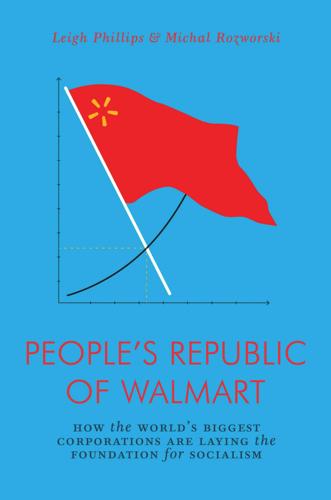
The People's Republic of Walmart: How the World's Biggest Corporations Are Laying the Foundation for Socialism
by
Leigh Phillips
and
Michal Rozworski
Published 5 Mar 2019
And remember that the market isn’t 100 percent precise either; prices are constantly in flux, and the economy is constantly adjusting. Far from the Econ 101 fantasy of economic equilibrium, the market is never anywhere close to a perfect synchronization of what we want and what is produced. Structure amid Chaos Describing Amazon as a big planning machine doesn’t quite match its image as an icon of “new economy” disruption. Even before Silicon Valley became a hub of global capitalism, planning was typically well hidden behind the facade of competition. Today, the facade has only become more ornate: all you see is a website and then a package at your doorstep. Behind the scenes, however, Amazon appears as a chaotic jumble of the most varied items zipping between warehouses, suppliers and end destinations.
…
The question of whether people should be passive consumers of medicine or instead its active cocreators is a common theme throughout the history of public healthcare, wherever it has emerged. Veteran British physician Julian Tudor-Hart describes the seeds of transformation later developed by the NHS: “This embryonic new economy at the heart of the NHS depends on the growth of an element it always contained, which has only recently, and slowly, been recognized: the power and necessity of patients as co-producers … Once released from deference, public expectations become an irresistible force, providing initial elements of democratic accountability can be retained and rapidly extended.”
…
Further down the line, health could be integrated into planning outside the healthcare system—plans for neighborhoods and workplaces—integrating formal healthcare with democratic planning surrounding the social determinants of health. Deeper, democratic planning would unite healthcare workers with patients, and entire communities, as active coproducers of health and collective owners of a healthcare service. The very idea of an NHS, even as it is being undermined and partly dismantled, represents the possibility of this new economy. A public, universal system—free at the point of service and paid out of taxes (as was Bevan’s goal), but embodying humanist, bottom-up democracy, rather than paternalistic, technocratic state charity—is also one that builds its own constituency and creates a different kind of people—more willing to cooperate and to see their own destinies cooperatively tied up with those of others.

Having and Being Had
by
Eula Biss
Published 15 Jan 2020
At these feasts, rank was established by how much a person could give away. Houses were burned at potlatches thrown by the Kwakwaka’wakw people, and sewing machines were thrown into the sea. But this was not typical of the tradition. This was the potlatch around 1900, after the Kwakwaka’wakw had been decimated by disease and were living in a new economy. Unrecognized as citizens and unable to file land claims, they had lost most of their land to commercial fisheries and canneries. But they worked for wages in the canneries and could buy machine-made blankets and store-bought goods. They had more than they’d ever had before, in one sense, and less in every other.
…
“Capitalism was the response of the feudal lords, the patrician merchants, the bishops and popes, to a centuries-long social conflict that, in the end, shook their power.” Capitalism, she writes, was a counterrevolution. Among the rebels who resisted that counterrevolution were the Diggers, who called themselves the True Levellers. They imagined a new economy, in which people would work with each other, rather than for each other. They were not just ahead of their time, Hill notes, they were ahead of ours. They fled to America, the radicals of that time, where their ideas have been forgotten. This country was not only colonized by slave owners, in the interests of property, it was also colonized by dissenters, whose descendants were abolitionists.
…
Will is a friend from work, an early modernist who reads books from the seventeenth century. And now I remember. In 1649, Gerrard Winstanley led the Diggers in an act of protest, the digging and planting of a patch of vacant land outside London. Their plan was to give the food they grew to anyone who worked with them, and to forge a new economy—not feudalism and not capitalism either. I started reading Winstanley’s The Law of Freedom, I tell Will, but then I set it aside to read Lewis Hyde’s The Gift. All that stuff about gift economies, Will says, strikes him as nostalgic. The gift exchanges Hyde writes of, the Kula of the Massim and the potlatch of the Kwakwaka’wakw, are from far away and long ago.

The Horse, the Wheel, and Language: How Bronze-Age Riders From the Eurasian Steppes Shaped the Modern World
by
David W. Anthony
Published 26 Jul 2010
The cultural gap widened between those who tended domesticated animals, including foreign sheep and goats, and those who hunted native wild animals. The northern frontier of the new economy coincided with the ecological divide between the forests in the north and the steppes in the south. The northern hunters and fishers refused to be shackled to domesticated animals for another two thousand years. Even in the intervening zone of forest-steppe the percentage of domesticated animal bones declined and the importance of hunted game increased. In contrast, the eastern frontier of the new economy did not coincide with an ecotone but instead ran along the Ural River, which drained the southern flanks of the Ural Mountains and flowed south through the Caspian Depression into the Caspian Sea.
…
Societies that did not accept the new herding economy became increasingly different from those that did. The people of the northern forest zone remained foragers, as did those who lived in the steppes east of the Ural Mountains. These frontiers probably were linguistic as well as economic, given their persistence and clarity. The Pre-Proto-Indo-European language family probably expanded with the new economy during the Early Eneolithic in the western steppes. Its sister-to-sister linguistic links may well have facilitated the spread of stockbreeding and the beliefs that went with it. One notable aspect of the Pontic-Caspian Early Eneolithic is the importance of horses, in both diet and funeral symbolism.
…
Raids by Slavic tribes caused the abandonment of all the Greek-Byzantine cities in this same region over the course of less than a hundred years in the sixth century CE. Crop failures exacerbated by warfare would have encouraged a shift to a more mobile economy.55 As that shift happened, the pastoral tribes of the steppes were transformed from scruffy immigrants or despised raiders to chiefs and patrons who were rich in the animal resources that the new economy required, and who knew how to manage larger herds in new ways, most important among these that herders were mounted on horseback. The Suvorovo chiefs displayed many of the behaviors that fostered language shift among the Acholi in East Africa: they imported a new funeral cult with an associated new mortuary ideology; they sponsored funeral feasts, always events to build alliances and recruit allies; they displayed icons of power (stone maces); they seem to have glorified war (they were buried with status weapons); and it was probably their economic example that prompted the shift to pastoral economies in the Danube valley.
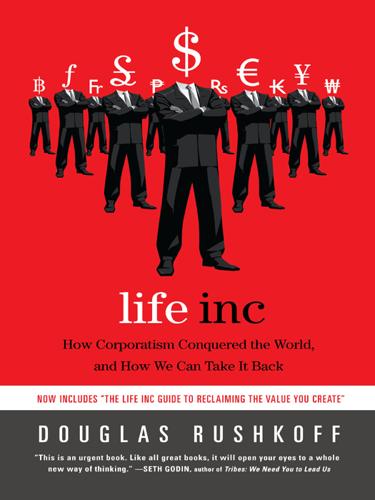
Life Inc.: How the World Became a Corporation and How to Take It Back
by
Douglas Rushkoff
Published 1 Jun 2009
Information Age economies will replace commercial markets with more efficient, high-trust, self-organizing social networks that immediately channel appropriate resources where they are needed. Just as factories and finance were high-leverage tools of the Industrial Age, social software and reputation currencies that fuel these new social markets are the tools of the new economy. And yes, these markets move real value. It is already happening with software (open source), accommodations (couchsurfing), knowledge (MIT open courseware), and many domains. There is a family of projects fostering these new economies and wielding currencies as something more powerful than money. They recognize currencies as formal symbol systems for shaping, enabling, and measuring currents—currents of time, attention, participation, resources, sharing, trust, giving, information, knowledge, goods, and services—as well as tools for exchanging value.
…
While the new bourgeoisie were becoming members of the fledgling global marketplace, the traditional aristocracy was essentially landlocked. What official authority they had left to offer their subjects was diminishing as rapidly as their wealth, influence, and numbers. The aristocracy longed for a way to participate in the new economy—a way to invest that didn’t put them or their good names at any risk. For their part, the new merchant class had certainly increased the speed and breadth of wealth creation—but this also made for a highly competitive and fluid business environment. Sudden wealth could be followed by a sudden wipeout if a single ship got lost at sea or a fire took down an entire workshop.
…
The massive potential of computers and networking, technologies developed in many cases by engineers hoping to decentralize the very power structures funding their projects, was quickly recontextualized as a market opportunity—the beginning of a “long boom”—and appropriated as NASDAQ’s stepchild. New rules for a new economy were invented, in which people’s ability to access interactive technology for free or to create value independent of any corporation could be understood as the power of the network to leverage what were formerly “externalities.” The dot-com boosters sought to reconcile the incompatibility of an abundant, decentralized media space with the legacy of a scarce, centralized monetary system.
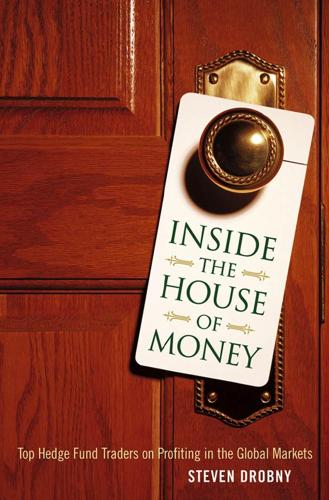
Inside the House of Money: Top Hedge Fund Traders on Profiting in a Global Market
by
Steven Drobny
Published 31 Mar 2006
As the gold bull market gathered strength, it pulled in everybody so that in the last year or two it tripled. Just like the NASDAQ in 1998 and 1999. Everybody was shrieking that gold always has been, always will be an inflation hedge. Just like in 1998 when people were saying “The dot-com, new-economy revolution will go on forever.” But again, just like the dot-commers, the gold bugs hadn’t read their history.We have had new economies and new eras every 30 or 40 years for the past 500 years all over the world. If anybody had gone back to look at gold, they would have seen some very long periods where it has done nothing, and long periods where it has actually gone down during inflationary periods.
…
Indeed, Soros Fund Management flipped its position in late 1999, going from short to long high tech stocks, and in the process converted a 19 percent loss into a 35 percent gain for the year. Julian Robertson, on the other hand, chose to maintain his core theme of long “old economy” versus short “new economy,” which led to further losses in 1999 and 2000 as old economy stocks continued to decline and growth rallied. Eventually, Robertson was forced to close Tiger 1600 5500 1500 5000 Russia/LTCM Crisis Hiccup 1400 4500 S&P 500 Index 4000 1200 3500 Greenspan’s “Irrational Exuberance” Speech 1100 3000 1000 2500 900 2000 800 S&P 500 Index NASDAQ 700 1500 Boom!
…
Stan’s whole thing was to never get backed into a corner, so we started liquidating our other positions.We wanted to be able to add to the trades we liked so we trimmed the ideas where we had the least conviction. Let’s talk about the technology boom/bust of 1999 to 2000. Both Soros and Julian Robertson were famous naysayers on tech shares and the “new economy” but were clearly hurting toward the end of the move. I remember reading about Druckenmiller flipping the portfolio from short to long, a reversal that saved Quantum in 1999 but then hurt it a few months later in 2000. Stan’s better at changing his mind than anybody I’ve ever seen. Maybe he stayed with it a little too long, but one of the great things about Stan is that he can and does turn on a dime.
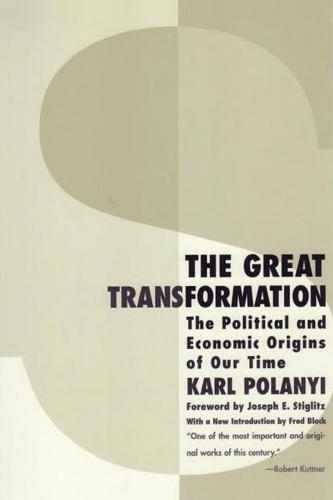
The Great Transformation: The Political and Economic Origins of Our Time
by
Karl Polanyi
Published 27 Mar 2001
In the first period the nascent middle classes were mainly a revolutionary force endangering peace as witnessed in the Napoleonic upheaval; it was against this new factor of national disturbance that the Holy Alliance organized its reactionary peace. In the second period the new economy was victorious. The middle classes were now themselves the bearers of a peace interest, much more powerful than that of their reactionary predecessors had been, and nurtured by the national-international character of the new economy. But in both instances the peace interest became effective only because it was able to make the balance-of-power system serve its cause by providing that system with social organs capable of dealing directly with the internal forces active in the area of peace.
…
Under the Concert of Europe, again, international finance had often to rely on its dynastic and aristocratic affiliations. But such facts merely tend to strengthen our argument that in every case peace was maintained not simply through the chancelleries of the Great Powers but with the help of concrete organized agencies acting in the service of general interests. In other words, only on the background of the new economy could the balance-of-power system make general conflagrations avoidable. But the achievement of the Concert of Europe was incomparably greater than that of the Holy Alliance; for the latter maintained peace in a limited region in an unchanging Continent, while the former succeeded in the same task on a world scale while social and economic progress was revolutionizing the map of the globe.
…
This happy outcome was the result of the almost unconscious working of economic forces which did their beneficial work in spite of the interference of impatient parties who exaggerated the unavoidable difficulties of the time. The inference was no less than a denial that danger threatened society from the new economy. Had the revised history of the Industrial Revolution been true to fact, the protectionist movement would have lacked objective justification and laissez-faire would have been vindicated. The materialistic fallacy in regard to the nature of social and cultural catastrophe thus bolstered the legend that all the ills of the time had been caused by our lapse from economic liberalism.

People, Power, and Profits: Progressive Capitalism for an Age of Discontent
by
Joseph E. Stiglitz
Published 22 Apr 2019
CHAPTER 2 Toward a More Dismal Economy Something began happening to America’s powerful economic engine around 1980: growth slowed and, much more importantly, the growth in incomes slowed, or often declined. It happened almost without our recognizing it. Indeed, even as the economy was failing to deliver prosperity for large parts of the population, the champions of a new era of financialization, globalization, and technological advances were bragging about the “new economy” that was destined to bring ever-greater prosperity, by which they seemed to mean simply a higher level of GDP. Some of our economic leaders—including successive heads of the Federal Reserve—bragged about the “great moderation,” how we had finally tamed the business cycle, the fluctuations in output and employment that had marked capitalism from the start.1 The financial crisis of 2008 showed that our seeming prosperity had been built on a house of cards, or more precisely, a mountain of debt.
…
But globalization has expanded the scale of the market so much that even though it’s hard to be, say, a competitive auto producer making fewer than several hundred thousand cars, the global market is so big that there are still many firms that can reach the requisite scale.43 Today, it’s in the “new economy” that competition is limited. In much of the new innovative economy, the basic cost is the up-front research and development. The extra cost of serving an additional customer is nil.44 Changing the rules of the game Much of the increase in market power, however, arises from changing the implicit rules of the game.
…
It still may not be as relatively prosperous as it was in its heyday, but it is instructive to compare Manchester with Detroit, which the United States simply let go bankrupt. Government played a central role in the transition from agriculture to a manufacturing economy; it now needs to play a similar role in the transition to the new economy of the twenty-first century.15 Social Protection One of most important detractors from individual well-being is a sense of insecurity. Insecurity can also affect growth and productivity: individuals, worrying about whether they will be thrown out of their house or lose their job and only source of income, can’t focus on the tasks at work in the way they should.
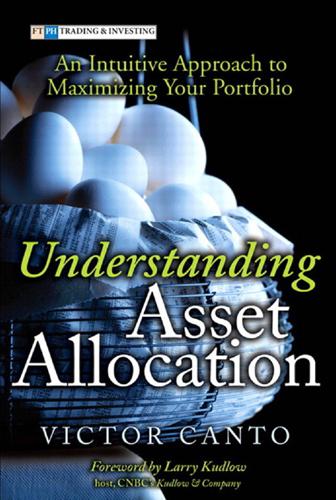
Understanding Asset Allocation: An Intuitive Approach to Maximizing Your Portfolio
by
Victor A. Canto
Published 2 Jan 2005
This suggests historical relationships—such as market returns and the variance–covariance matrix—constitute the relevant data for strategic asset allocation; identifying the optimal historical mix serves the investor best over the long run. Once again, mean-reversion becomes the asset-allocation version of indexing. Meanwhile, the new-economy view argued that the shifts in relative performance during the 1995–1999 period represented permanent change that would require new long-run allocating. Proponents of mean-reversion point to the last five years as evidence in support of their view: In the most recent period, we have in fact reverted to a small-cap value environment. This shift damages the new-economy view, but it does not in any way harm the hypothesis deviations from the long-run mean are not random. More, if this is the case (as I believe it is), a third alternative emerges neither group considered: These shifts are cyclical.
…
As the 1995–1999 experience unfolded, there was a major debate in the investment community, with some suggesting a long-lasting shift in relative equity valuations was occurring while others pointed to a string of unexpected temporary shocks. The issue had important implications for portfolio allocation decisions. Some managers espoused a mean-reversion hypothesis while others voiced a new-economy view. The investment implications of the two are quite different. Under the mean-reversion hypothesis, the 1995–1999 years (largecap growth) were an aberration and the economy would eventually revert to historical patterns (small-cap value). An implication of this assumption was that even though temporary deviations from historical patterns can be observed, historical variances and covariances of returns would be stable over the long run.
…
See also strategic asset allocation (SAA) length of sample period, 285n optimal mixes, 40-43, 118, 127, 274-275 Long-Term Capital Management (LTCM) example, 228 low cost-managed index funds, 110 LTCM (Long-Term Capital Management) example, 228 M M&As (mergers and acquisitions), 77 market allocations for benchmark portfolio, 108-115, 266-269 312 market breadth, size cycles and, 168-170, 237-238 market portfolio, 3 market risk, 19 market valuation, CEM (capitalized earnings model), 90-94 modifying for earnings growth, 94-96 performance indicators and, 96-100 market-timing strategy, value-timing strategy versus, 243-250, 276-277 markets, correlation of, 186 mean return, Sharpe ratio, 2 mean-reversion hypothesis, 4, 18, 46, 59 mergers and acquisitions (M&As), 77 Meriwether, John, 228 Microsoft, 84 Milkin, Michael, 75-76 mobile factors, immobile factors versus, 187-189, 273-274 mobility, elasticity and, 208 monetary policy style cycles and, 55-56 tax rates and, 88-90 Monte Carlo simulations, 4-6 N national factor, 191 negative incentives, 81 new-economy view, mean-reversion hypothesis versus, 59 NIPA (National Income and Product Accounts), 77 Nixon, Richard, 89 nominal interest rate, 128 O-P oil prices global economy and, 219-224 location effect and, 200-201 supply shift and tax increase example, 216-219 OPEC (Organization of the Petroleum Exporting Countries), 220 P/E ratio, 79, 90-94 passive management, 164.
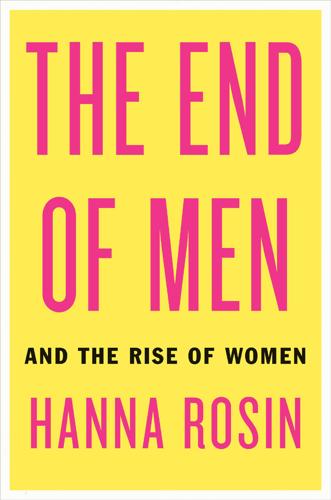
The End of Men: And the Rise of Women
by
Hanna Rosin
Published 31 Aug 2012
After that display of muteness and passivity, you can only imagine a woman—one with shiny lips—steering the beast. DAVID GODSALL describes himself as “adapting pretty well to the new world order.” The twenty-nine-year-old Vancouverite is not like one of those blue-collar guys who are just “humiliated and fucked in this new economy” because they can’t retool and go to college and find a new profession. He has a master’s degree and a job, as an editor at a Vancouver city magazine. He has an apartment he shares with his steady girlfriend, a kitchen full of nice appliances, a car in the garage, a bullmastiff. But this steady accumulation of life’s comforts has only uncovered for him how uncomfortable he actually feels.
…
Go to a beach in the Hamptons on any summer Friday and you will still find the surf full of moms waiting for their husbands to maybe or maybe not arrive from their jobs in the city—proof that there are still pockets up in the thinner air where men rule the public domain while women rule the snacks and the sunscreen. Anyway, these young college-educated urbanites are not like the working-class men of the South, who openly mourn the old chivalrous ways and grieve for what the new economy has robbed from them. For these guys, traditional manly ideals exist, if at all, as a fashion statement encountered in Brooklyn boutiques that stock nothing but hunting jackets and flasks and old copies of Playboy, kitsch recycled in an ironic-nostalgic mode the same way old Stalin-era buttons wash up in Moscow dance clubs.
…
In the last year or so manufacturing jobs around the country have bounced back and the men have been rushing to fill them. But this will only make up for a small percentage of the recently unemployed. Local community colleges have started to get very creative about how they prepare men for the new economy. In Opelika, the college is using 3-D simulation technology that feels like living inside a video game in order to keep the interest of the young men. The sign over the simulation lab does not say “use your hands” but “expand your mind.” Other colleges have begun to specialize in green technology or other fields of the future.
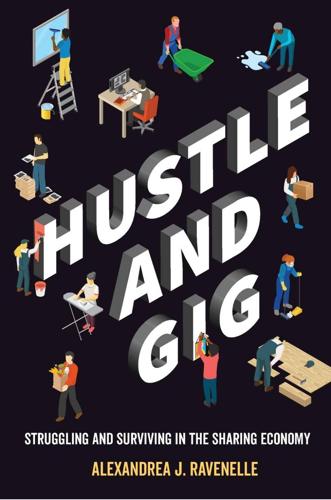
Hustle and Gig: Struggling and Surviving in the Sharing Economy
by
Alexandrea J. Ravenelle
Published 12 Mar 2019
While drivers can file for a cleaning fee of up to two hundred dollars, some feel the hassle isn’t worth it—they’d rather clean the mess themselves so they can get back on the road that much faster. In addition to paying to get the car shampooed, Gerald took the rest of the evening off while the car dried: “I was so pissed, because as soon as she got out, you know, I couldn’t get nobody else in the car.” PROTECTING WORKERS IN THE NEW ECONOMY These stories suggest that working in the so-called sharing economy both increases the risk that workers will get hurt on the job and forces them to assume sole financial responsibility for dealing with any such injuries to themselves or their property. But it doesn’t have to be that way. Not all sharing economy companies embrace the independent contractor model.
…
Those who were familiar with the law against short-term rentals often described it as a remnant of the days of tenements and rooming houses—as opposed to originating in 2010—and hence shouldn’t apply. For example, Matthew, thirty-six, told me, “They’re still arguing about a law which was designed in maybe the 1940s to protect hotels and prevent landlords from building unlicensed hotels. And it’s accidentally now hooked in this new economy.” Joshua, thirty-two, said, “There’s all sorts of laws that we all violate, probably on a daily basis, that we don’t think twice about. The thirty-day law was created in the 1970s, and it was just a completely different world. And laws never keep up with technology.” Interestingly, the illegality aspect of Airbnb was part of its appeal for Joshua, a corporate attorney with a self-described Airbnb “syndicate” on the side.
…
The gig economy has also allowed workers to move into sales, as they market and sell their labor on digital platforms.40 The selling of the self is a continuation of the personal ownership message that Jacob Hacker discusses in The Great Risk Shift, where economic risk shifts from businesses and government to the average American worker. In the new economy, workers are told to improve their market value through training and networking, and to market themselves as a brand and business, “the CEO of Me Inc. . . . willing to temporarily assist other, larger businesses.”41 As a result, “a central concept in this economized, individualized view of the world is ‘responsibilization.’”42 Although citizens demonstrate some autonomy in choosing where to work and live and how to spend their time, there are “no rights without responsibilities.”43 This message of personal responsibility, part of a neoliberal ideology, gets a further boost with the entrepreneurial ethos employed by the gig economy platforms.
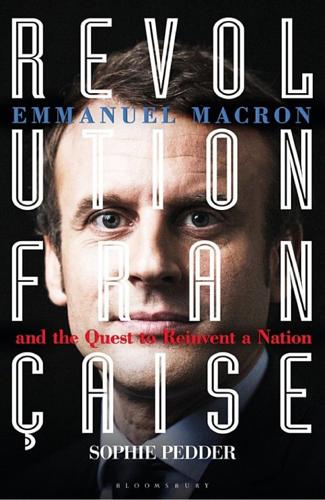
Revolution Française: Emmanuel Macron and the Quest to Reinvent a Nation
by
Sophie Pedder
Published 20 Jun 2018
‘If Mr Valls wanted to send a message with his new government, Mr Macron is it,’ I wrote for The Economist when the announcement was made the next day. From that moment, the young man with the wide gap-toothed smile who went on to become president three years later burst into the public eye. ‘Who is Emmanuel Macron, the new economy minister?’ asked a puzzled Sud-Ouest newspaper, after his nomination to government. Nobody seemed to know. His propulsion into public life was abrupt, and his landing in the unforgiving world of politics uneven. He was, said one observer of French political life, ‘accident-prone’. The left wing of the Socialist Party found him insufferably liberal.
…
‘I got a call in October 2015 from Ismaël Emelien saying that Emmanuel Macron wants us to meet, but he didn’t say why,’ recalls Benjamin Griveaux, another former member of Strauss-Kahn’s campaign team who was then working for a commercial-property firm, and went on to become the En Marche spokesman and then a junior government minister.5 The discussion Griveaux attended, on a Saturday afternoon in Macron’s office overlooking the Seine, was studious. If the country continued to tinker with the model that had served it well during the trente glorieuses, but which was ill adapted to the new economy, the group concluded, France was condemned to decline. ‘Never did he say at that point “I’m going to be a candidate at the presidential election in 2017”,’ Griveaux told me. On another Saturday morning that month, a different group met over coffee in Macron’s apartment to analyse how politics had become a lifelong profession and how this undermined public trust.
…
It was a hard slog involving late nights, low budgets and paranoid organization, sustained by the adrenalin of taking part in a project that many judged far-fetched, or downright delusional. Macron’s gamble to go it alone was ‘either lucid or mad’, said Dargnat. All the while, the minister was at his job at the Finance Ministry, trying to get things moving again with a second loi Macron, designed to free up opportunities in the new economy, encourage start-ups and loosen the labour market. But it went nowhere. Increasingly exasperated by Macron, Manuel Valls emptied the economy minister’s draft bill of all elements relating to labour reform, and then relegated Macron in a government reshuffle. Humiliated again, Macron realized that his space in government was shrinking fast.

You Are Not a Gadget
by
Jaron Lanier
Published 12 Jan 2010
Initially I assumed that entrepreneurial fervor and ingenuity would find a way. As part of researching this book, I set out once again to find some cultural types who were benefiting from open culture. The Search We have a baseline in the form of the musical middle class that is being put out of business by the net. We ought to at least find support in the new economy for them. Can 26,000 musicians each find 1,000 true fans? Or can 130,000 each find between 200 and 600 true fans? Furthermore, how long would be too long to wait for this to come about? Thirty years? Three hundred years? Is there anything wrong with enduring a few lost generations of musicians while we wait for the new solution to emerge?
…
The usual pattern one would expect is an S curve: there would be only a small number of early adaptors, but a noticeable trend of increase in their numbers. It is common in Silicon Valley to see incredibly fast adoption of new behaviors. There were only a few pioneer bloggers for a little while—then, suddenly, there were millions of them. The same could happen for musicians making a living in the new economy. So at this point in time, a decade and a half after the start of the web, a decade after the widespread adoption of music file sharing, how many examples of musicians living by new rules should we expect to find? Just to pick a rough number out of the air, it would be nice if there were 3,000 by now.
…
I was a little afraid to just post about my quest openly on the net, because even though I’m a critic of the open/free orthodoxy I didn’t want to jinx it if it had a chance. Suppose I came up with a desultory result? Would that discourage people who would otherwise have made the push to make the new economy work? Kevin Kelly thought my fear was ridiculous. He’s more of a technological determinist: he thinks the technology will find a way to achieve its destiny whatever people think. So he volunteered to publicize my quest on his popular Technium blog in the expectation that exemplars of the new musical economy would come forward.

The Golden Passport: Harvard Business School, the Limits of Capitalism, and the Moral Failure of the MBA Elite
by
Duff McDonald
Published 24 Apr 2017
The only problem was that as far as the entrepreneurial community was concerned, the jury was still out on the value of an MBA to companies like Netscape, AOL, or even Microsoft. And then, as if out of nowhere, Skilling put all those questions to rest and then some. Overnight, he and his elite corps of MBAs turned Enron into a New Economy darling without sacrificing the revenue stream of an Old Economy industrial giant in the process—the company reported $60 billion in revenues in 2000. A job at Enron promised Wall Street pay without having to take a Wall Street job, it offered New Economy mojo and Old Economy respect, and it had taken the most frequently cited criticisms of MBAs (impatience, lack of follow-through, self-interest, excessive faith in analytical ability) and practically turned them into job requirements.
…
Annual steel production was going through the roof, climbing from 77,000 tons in 1870 to 11.2 million at the turn of the century.7 There were 140,000 factories in the country in 1865; by 1900, there were 512,000. And this was a new kind of factory—whereas an old-school New England mill employed just a few hundred people, the Ford Motor Company’s first plant had 15,000 on the payroll. The population was also transforming to meet the needs of the new economy. Between 1870 and 1900, the U.S. population rose from 40 million to 76 million, while the population of its cities grew from 10 million to 30 million. In the second half of the nineteenth century, San Francisco doubled in size, Milwaukee tripled, and Denver grew twentyfold.8 Boston, home to Harvard and already one of America’s most important cities, saw its population surge as well, more than doubling from 250,000 in 1870 to 560,000 by 1900.
…
With the launch of Harvard Business School Publishing in 1993, the School served notice that it was no longer simply in the business of teaching its own students. Henceforth, it would be educating the rest of us as well. What did they teach us? In One Market Under God: Extreme Capitalism, Market Populism, and the End of Economic Democracy, Thomas Frank details just how much of the ideology of the “New Economy” was nothing more than snake oil, and the ways in which the likes of HBS helped sell it. In awe of the booming stock market, Americans swallowed the dubious notion that simply because we, too, could own stocks, then we were all in it together, even when faced with overwhelming evidence to the contrary.
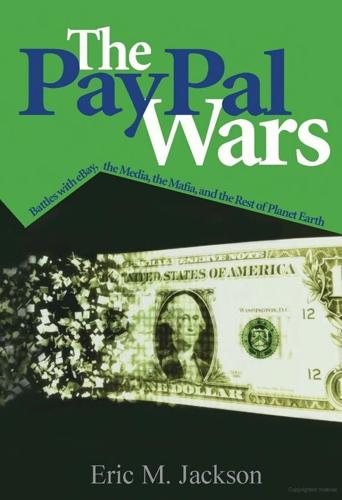
The Paypal Wars: Battles With Ebay, the Media, the Mafia, and the Rest of Planet Earth
by
Eric M. Jackson
Published 15 Jan 2004
My angst lasted through the evening until I finally managed to catch the CEO on his cell phone; he explained that unforeseen events had forced him to be out of the office and he assured me that everything would be in order for my first day on Friday. Despite the false start, my journey into the new economy was indeed under way. If I’d expected to see a little more structure on my first day on the job than during my introductory visit, this notion was quickly dispelled. Following Peter’s suggestion I reported for work at ten that Friday morning. This struck me as a little late to get started, but I reasoned that the extra time would allow my new colleagues to get ready for my arrival.
…
It’s easy to understand why the topic fascinated journalists. For one thing, dot-coms’ high-flying IPOs, irreverent advertising, and creative business plans made for good copy. In a broader sense, though, the seemingly endless supply of venture capital financing suggested that investors believed the U.S. really was on the verge of developing a new economy. For a journalist, it just didn’t make sense to risk missing the boat, especially when all of his peers were on board. How else can one explain why columnists and talking-head gurus never blinked when Accenture CEO George Shaheen—proclaimed the “digital messiah” by Forbes11—left his position with the $9 billion consultancy to become the head of home grocer Webvan?
…
The transaction processing expense rate dropped from -1.67% to -1.36% in Q1 as more users chose bank accounts instead of credit cards to fund their payments, and our fraud losses improved by 13 basis points to -0.48%. This dramatic about-face in our transaction margins was no puzzle to Peter Thiel. It was a few weeks into his stint as the acting-CEO when I heard him compare our new economy payments network to an abstract old economy machine. PayPal’s many policies—such as the fees charged to sellers, spending limits placed on unverified buyers, and our behind-the-scenes fraud algorithms—were like levers, dials, and pulleys. The key was to adjust each of them carefully in unison with the others until the machine hummed along at cruising speed.
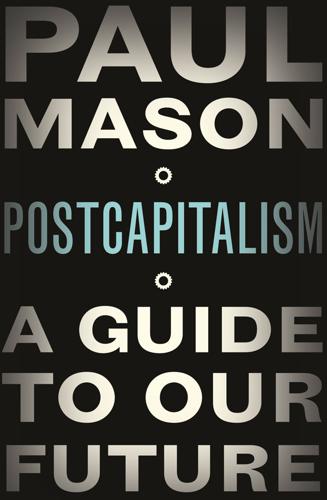
Postcapitalism: A Guide to Our Future
by
Paul Mason
Published 29 Jul 2015
Once the Cold War starts, about 20 per cent of the world’s GDP is being produced outside the market.31 After 1989 the sudden availability of new markets and a new labour force plays an important part in prolonging the wave; so does the West’s new freedom of action to shape markets in neutral countries that were formerly off-limits. In other words, between 1917 and 1989 capitalism’s full potential for complex adaptive behaviour was suppressed. After 1989 it experienced a sugar-rush: labour, markets, entrepreneurial freedom and new economies of scale. On this basis, 1989 must – on its own – account for some of the phase-distortion story I am about to tell. But it cannot account for all of it. The long-wave pattern has been disrupted. The fourth long cycle was prolonged, distorted and ultimately broken by factors that have not occurred before in the history of capitalism: the defeat and moral surrender of organized labour, the rise of information technology and the discovery that once an unchallenged superpower exists, it can create money out of nothing for a long time. 4 The Long, Disrupted Wave In 1948 the Marshall Plan kicked in, the Cold War began and Bell Laboratories invented the transistor.
…
Kelly wrote: ‘I prefer the term network economy, because information isn’t enough to explain the discontinuities we see. We have been awash in a steadily increasing tide of information for the past century … but only recently has a total reconfiguration of information itself shifted the whole economy.’22 Kelly himself was no advocate of postcapitalism. Indeed, his book New Rules for the New Economy was a breathless survival manual for old businesses as they tried to engage with the interconnected world. But his contribution was important. It was the moment we began to understand that the ‘intelligent machine’ was not the computer but the network, and that the network would speed up the rate of change and make it unpredictable.
…
Freeman, ‘The New Global Labor Market’, Focus, vol. 26 (1) (2008), University of Wisconsin–Madison Institute for Research on Poverty, http://www.irp.wisc.edu/publications/focus/pdfs/foc261a.pdf 47. S. Kapsos and E. Bourmpoula, ‘Employment and Economic Class in the Developing World’, ILO Research Paper 6, June 2013 PART II 1. K. Kelly, ‘New Rules for the New Economy’, Wired, 5 September 1977, http://archive.wired.com/wired/archive/5.09/newrules.html 5. THE PROPHETS OF POSTCAPITALISM 1. R. Singh, ‘Civil Aero Gas Turbines: Technology and Strategy’, Speech, Cranfield University, 24 April 2001, p. 5 2. J. Leahy, ‘Navigating the Future’, Global Market Forecast 2012–2031, Airbus, 2011 3.
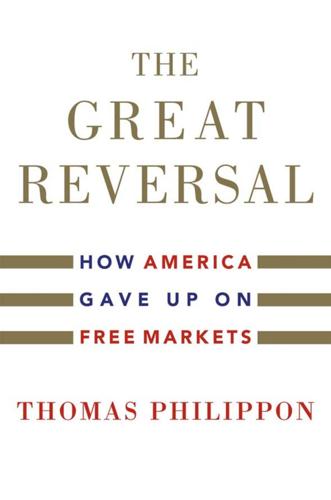
The Great Reversal: How America Gave Up on Free Markets
by
Thomas Philippon
Published 29 Oct 2019
It is often argued that positive synergies and network externalities are more prevalent today, in the intangible, digital economy, than before. The argument is then loosely used to justify high concentration and dominant positions. I think the argument is misleading, and the case for broad, positive synergies is weaker than most people realize. Synergies exist in the new economy, but they also exist in the old economy. Leaders of the new economy, just like leaders of the old economy before them, tend to overestimate the positive externalities from their activities. Rana Foroohar, writing in the Financial Times about the gig economy (August 2018), mentions that several years ago, Travis Kalanick, the founder and former chief executive of the ride-sharing company Uber, told a group of business executives that we were heading toward a world in which “traffic wouldn’t exist” within five years.
…
We find that the within contribution has collapsed while the reallocation contribution has become quite significant since the mid-1990s. Nonetheless, when we add them up, we get Figure 13.4: stars used to bring about seventy basis points of labor productivity growth each year (using the industry stars definition), but now it’s only forty basis points. Our results challenge the common wisdom about the stars of the new economy and shed light on the debate between Erik Brynjolfsson and Andrew McAfee (2014), who view digital technologies as “the most general purpose of all,” and Robert J. Gordon (2016), who is skeptical about the impact of recent innovations. Our results are perhaps less surprising for students of history.
…
NBER Working Paper No. 18158, National Bureau of Economic Research, Cambridge, MA, June, rev. September 2015. Combe, E. (2010). Les vertus cachées du low cost aérien. In Ouvrage Innovation Politique 2012. Fondapol-PUF. Corrado, C., D. Sichel, C. Hulten, and J. Haltiwanger, eds. (2005). Measuring Capital in the New Economy, Studies in Income and Wealth, vol. 65. Chicago: University of Chicago Press. Council of Economic Advisers (2016). Benefits of competition and indicators of market power. CEA Issue Brief, Obama White House, April. Covarrubias, M., G. Gutiérrez, and T. Philippon (2019). From good to bad concentration?
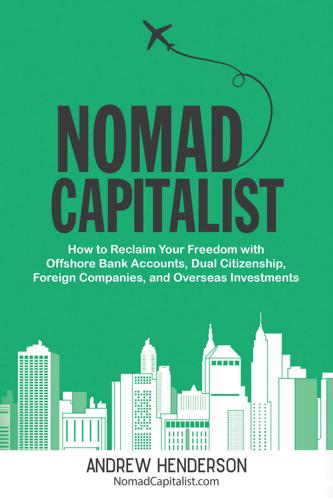
Nomad Capitalist: How to Reclaim Your Freedom With Offshore Bank Accounts, Dual Citizenship, Foreign Companies, and Overseas Investments
by
Andrew Henderson
Published 8 Apr 2018
After years of doing this, I prefer the risks of frontier markets and all things offshore in comparison to the risk of becoming entrenched in systems that no longer work. I would rather be at the forefront of the new economy than following the herd. Just ask yourself: What else used to be considered risky? In the twentieth century, college was not only considered risky but also something few could obtain. For many, even today, starting a business is considered a risky endeavor. If you are reading this book, chances are you have already reaped many of the rewards for being one of the few to take that risk. But are you really on the edge of the new economy? Perhaps you feel you have pushed so hard and come so far that you have made your way into an entirely different world of opportunity.
…
Of course, they could spend ten whole dollars and take a taxi and have the freedom to stay as long as they wish and go wherever they want, but they are too busy following the herd to think about what they actually prefer. Don’t be a slave. Don’t do what everyone else does. That is what this book is about. To thrive in an ever-globalizing world, you must do what others do not do and go where others will not go. The world economy is changing and those who operate at the edges of this new economy will find the greatest success. The focus should not be on surviving, but on actually thriving; on enjoying the best of life. The week before my conference, it was announced that China would soon overtake the United States in the number of self-made billionaires. Emerging world billionaires were buying up more of the world’s assets than ever before.
…
Find a combination of a young and growing population, some progress towards development, and governmental understanding of economic freedom and the need to attract talented people. If you can find these fundamentals in one location, you will put yourself in a great position to take advantage of the new economy that is unfolding. Culture Matters Many people never consider one essential fundamental: culture. Culture matters. The culture in the West is simply not business friendly. Do you feel that people respect successful business people where you are from? Do you feel that they are accepted as valuable members of your community?
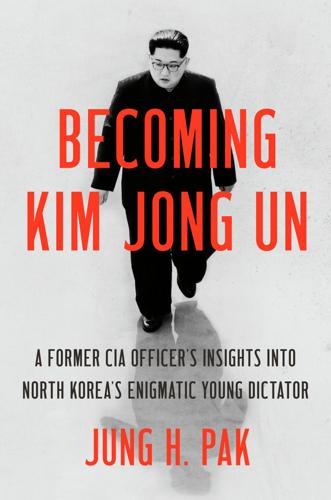
Becoming Kim Jong Un: A Former CIA Officer's Insights Into North Korea's Enigmatic Young Dictator
by
Jung H. Pak
Published 14 Apr 2020
National Geospatial-Intelligence Agency, “Developments in North Korea’s Sinuiju City under Kim Jong-un,” last updated April 21, 2018, https://pathfinder.geointservices.io/public_page/u-developments-in-north-koreas-sinuiju-city-under-kim-jong-un/ [inactive]. For example, John Everard: Everard, Only Beautiful, Please, 100. North Korea’s economy: Robert E. Kelly, “A New Economy for North Korea,” Centre for International Governance Innovation, August 3, 2018, https://www.cigionline.org/articles/new-economy-north-korea. “There are great”: Testimony of Minister Thae, Yong-ho, U.S. House Committee on Foreign Affairs, November 1, 2017, https://docs.house.gov/meetings/FA/FA00/20171101/106577/HHRG-115-FA00-Wstate-Yong-hoT-20171101.pdf.
…
Dear Leader: My Escape from North Korea. Trans. Shirley Lee. New York: Atria Books, 2014. Kang, Chol-hwan, and Pierre Rigoulot. The Aquariums of Pyongyang: Ten Years in the North Korean Gulag. New York: Basic Books, 2001. Kelly, Robert E. “A New Economy for North Korea.” Centre for International Governance Innovation, August 3, 2018. https://www.cigionline.org/articles/new-economy-north-korea. Kim, Hakjoon. Dynasty: The Hereditary Succession Politics of North Korea. Stanford, Calif.: Walter H. Shorenstein Asia-Pacific Research Center, 2015. Kim, Il Sung, With the Century. Pyongyang: Korea Friendship Association, 2003.
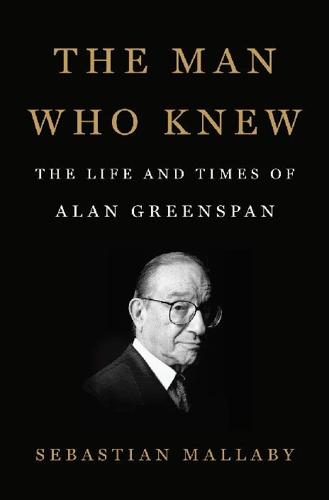
The Man Who Knew: The Life and Times of Alan Greenspan
by
Sebastian Mallaby
Published 10 Oct 2016
It had misread the economy in 1993, wrongly attributing declining long-term interest rates to falling inflation expectations.37 And yet regardless of the Fed’s errors, deeper forces were conspiring to bring down inflation: global competition, advancing technology, declining labor-union membership. In this unfamiliar new economy, periods of monetary looseness were more likely to result in bubbles than in consumer price spikes. But nobody bothered with such obscure quibbles. Greenspan was presiding over low inflation and strong growth. His reputation prospered marvelously. The other doubt about the maestro’s emergence was more immediate.
…
And the keys to American ascendancy lay precisely in those forces with which Greenspan was identified: in the new computing and communications wizardry, whose impact on productivity the Fed chairman had been early to divine; in the superiority of the market-based system that he had championed since his youth; in the quantitative and pragmatic approach to the world, which he exemplified so perfectly. Two decades earlier, Henry Kissinger had become the improbable celebrity of an era shaped by geopolitical forces, from the Soviet challenge to Vietnam. Now America’s fate hinged on economic and technological currents that Greenspan interpreted—and embodied. • • • Of course, this brave new economy was not without its worries. As well as crises in East Asia and the perplexing emergence of the megabanks, the nation was facing a bewildering proliferation of derivatives. In the three and a half years since the shocking losses at Orange County, Procter & Gamble, and Gibson Greeting Cards, swaps of all varieties had roughly tripled in volume: if they had proved their potential to cause trouble back in 1994, they were now even scarier.7 At his breakfasts with his friends at Treasury, Greenspan would occasionally ponder this problem, siding with Lawrence Summers and against Bob Rubin.
…
But Greenspan’s cult status had come to depend on continual growth, exuberant finance, and miraculously low unemployment.20 His identity had fused with the national expectation of prosperity without limit. He was imprisoned by his reputation. On September 4, 1998, the maestro appeared on a stage at Berkeley’s business school to deliver a long-planned speech on technology and the new economy. Given America’s extraordinary performance, he might have stuck to his script. The markets were jittery, with the S&P 500 index down by around a tenth since Russia’s default; but this did not amount to a crisis—during the Asian crisis the previous autumn, Greenspan had welcomed the sharp sell-off on Wall Street as a salutary correction.
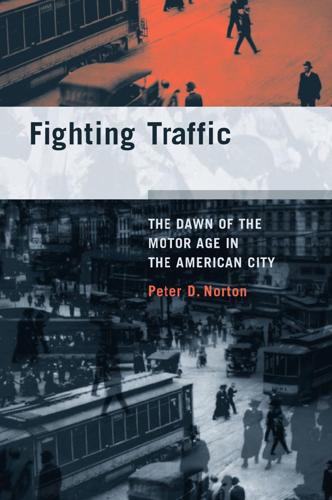
Fighting Traffic: The Dawn of the Motor Age in the American City
by
Peter D. Norton
Published 15 Jan 2008
Chandler, especially in The Visible Hand: The Managerial Revolution in American Business (Belknap, 1977), has shown the importance of firms which have unusually high economies of scale to the rise of a new economy with new degrees of organization and centralization. Chandler calls such enterprises “center firms,” and though none qualify as natural monopolies, their substantial economies of scale gave them monopolistic tendencies, and they ultimately prompted regula- 314 Notes to Chapter 4 tion much like the natural monopolies did. McCraw has related Chandler’s findings to the rise of state and federal regulation, both negative and positive; see Prophets of Regulation, esp. chapters 1–4. See also Morton Keller, Regulating a New Economy: Public Policy and Economic Change in America, 1900–1933 (Harvard University Press, 1990). 84.
…
Cooke, “The Influence of Scientific Management upon Government— Federal, State and Municipal” (paper presented to the Taylor Society, Jan. 26, 1924), Bulletin of the Taylor Society 9 (Feb. 1924), 31–38 (33); Cooke echoes the earlier assertion by corporation lawyer William C. Redfield that “the modern spirit in America . . . has set its face to the task of correcting the things that here and now are wrong” by abandoning the “Days of the Rule of Thumb”; Redfield, The New Industrial Day (New York, 1912), 16–17; quoted in Morton Keller, Regulating a New Economy: Public Policy and Economic Change in America, 1900–1933 (Harvard University Press, 1990), 9; see also Taylor, The Principles of Scientific Management (New York, 1911; reprint, W. W. Norton, 1967), 16: “The inefficient rule-of-thumb methods . . . are still almost universal in all trades. . . .” 308 Notes to Chapter 4 35.
…
In part this is due to McCraw’s interest in federal and state-level regulation, in which lawyers were indeed prevalent. Since its founding in 1887, three quarters of the members of the Interstate Commerce Commission have been lawyers (McCraw, 136); a 1929 study found that half of state public utility regulators were lawyers, and only one in six were engineers. (See Morton Keller, Regulating a New Economy: Public Policy and Economic Change in America, 1900–1933, Harvard University Press, 1990, 61.) McCraw’s findings are also for government regulators of all kinds, not just public utilities regulators, among whom the engineers were concentrated. McCraw’s own evidence shows that as late as 1974, on the state of New York’s Public Service Commission, engineers were second only to “inspectors and investigators” in number, with lawyers well behind.
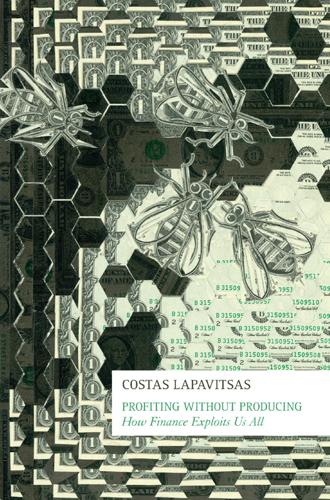
Profiting Without Producing: How Finance Exploits Us All
by
Costas Lapavitsas
Published 14 Aug 2013
Gordon, Robert J., ‘Does the “New Economy” Measure up to the Great Inventions of the Past?’, The Journal of Economic Perspectives 14:4, 2000, pp. 49–74. Gordon, Robert J., ‘The Evolution of Okun’s Law and of Cyclical Productivity Fluctuations in the United States and in the EU-15’, presentation at the EES/IAB workshop, ‘Labor, Market Institutions and the Macroeconomy’, Nuremberg, 17–18 June 2011. Gordon, Robert J., ‘Exploding Productivity Growth: Context, Causes and Implications’, Brookings Papers on Economic Activity 2, 2003, pp. 207–79. Gordon, Robert J., ‘Has the “New Economy” Rendered the Productivity Slow-Down Obsolete?’
…
Gordon, ‘Where Did the Productivity Growth Go? Inflation Dynamics and the Distribution of Income’, NBER Working Paper No. 11842, 2005. 17 Jack Triplett and Barry Bosworth, ‘Productivity in the Services Sector’, Brookings Economics Papers, January 2000; Jack Triplett and Barry Bosworth, ‘What’s New About the New Economy? IT, Economic Growth and Productivity’, International Productivity Monitor, vol. 2, 2001, pp. 19–30. 18 See, for instance, John Fernhald and Shanthi Ramnath, ‘The Acceleration in US Total Factor Productivity After 1995: The Role of Information Technology’, Economic Perspectives 28:1, First Quarter 2004, pp. 52–67; or Peter B.
…
Neumann, Manfred J.M., and Jürgen von Hagen, ‘Does Inflation Targeting Matter?’, Federal Reserve Bank of St. Louis Review 84:4, July/August 2002, pp. 127–48. Nissanke, Machiko, and Erenest Aryeetey, Financial Integration and Development: Liberalization and Reform in Sub-Saharan Africa, London: Routledge, 1998. Nordhaus, William D., ‘Productivity Growth and the New Economy’, NBER Working Paper No. 8096, National Bureau of Economic Research, January 2001. North, Peter, Alternative Currencies as a Challenge to Globalisation? A Case Study of Manchester’s Local Currency Networks, London: Ashgate, 2006. North, Peter, Money and Liberation: The Micropolitics of Alternative Currency Movements, Minneapolis: University of Minnesota Press, 2007.
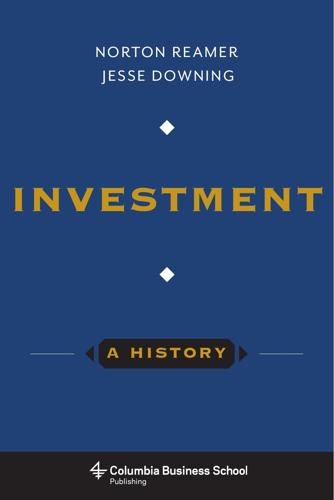
Investment: A History
by
Norton Reamer
and
Jesse Downing
Published 19 Feb 2016
Investment Company Institute, “Recent Mutual Fund Trends,” in 2014 Investment Company Fact Book, accessed 2014, http://www.icifactbook. org/fb_ch2.html. 5. FRAUD, MARKET MANIPULATION, AND INSIDER TRADING 1. Steve Fishman, “The Monster Mensch,” New York, February 22, 2009, http://nymag.com/news/businessfinance/54703; Aaron Smith, “Madoff Arrives at N.C. Prison,” CNN Money, July 14, 2009, http:// money.cnn.com/2009/07/14/news/economy/madof f_prison _transfer; Patricia Hurtado, “Andrew, Ruth Madoff Say Were Unaware of $65 Billion Fraud Until Confession,” Bloomberg Businessweek, November 8, 2011, http://www.businessweek.com/news/2011-11-08 /andrew-ruth-madoff-say-they-were-unaware-of-65-billion-fraud.html. 2. Hurtado, “Andrew, Ruth Madoff Say Were Unaware.” 358 5.
…
Baird Webel, “Troubled Asset Relief Program (TARP): Implementation and Status,” Congressional Research Service, Library of Congress, Washington, DC, June 27, 2013, https://www.fas.org/sgp/crs/misc /R41427.pdf, 1; “Treasury’s Bailout Proposal,” CNN Money, September 20, 2008, http://money.cnn.com/2008/09/20/news/economy /treasury_proposal; US Department of the Treasury, “TARP Programs,” accessed January 2015, http://www.treasury.gov/initiatives/financial -stability/TARP-Programs/Pages/default.aspx; Congressional Budget Office, “Report on the Troubled Asset Relief Program—October 2012,” October 11, 2012, http://www.cbo.gov/sites/default/files/TARP10 -2012_0.pdf, 1. 41.
…
——. “Founding and Early Years.” Accessed 2014. http://carnegie.org /about-us/foundation-history/founding-and-early-years. ——. “Programs.” Accessed 2014. http://carnegie.org/programs. Censky, Annalyn. “Federal Reserve Launches QE3.” CNN Money, September 13, 2012. http://money.cnn.com/2012/09/13/news/economy /federal-reserve-qe3. “A Century of Ponzi Schemes.” DealBook (blog), New York Times, December 15, 2008. http://dealbook.nytimes.com/2008/12/15/a-century-of-ponzi -schemes. Chandrasekhar, C. P. “Private Equity: A New Role for Finance?” International Development Economics Associates. Last modified May 22, 2007. http:// www.networkideas.org/featart/may2007/Private_Equity.pdf.

The Sovereign Individual: How to Survive and Thrive During the Collapse of the Welfare State
by
James Dale Davidson
and
William Rees-Mogg
Published 3 Feb 1997
As Mancur Olson argued in The Rise and Decline of Nations, long-lived industries tend to develop more effective "distributional coalitions" to lobby and struggle over political booty. 7 This problem is magnified immeasurably when it comes to the economy of the Information Age. The more creative participants in the new economy are geographically distributed. Therefore, they are unlikely to form a sufficient concentration to gain the attention of legislators, the way that salmon fishers in Scotland or wheat farmers in Saskatchewan do. Indeed, many of the dynamic personalities of the new economy are unlikely to be citizens of even the most encompassing jurisdiction. Thus they will have little ''voice in the legislative deliberations of representative democracies.
…
Growth rates cited by the Economist suggest that economic liberty is strongly correlated with economic growth, with the most rapid rates of growth in the freest countries. The cybereconomy of the Information Age will be more free than any other commercial realm in history. It is therefore reasonable to expect that the cybereconomy will rapidly become the most important new economy of the new millennium. Its success will attract new participants from everywhere on the globe, in the same way that the wide use of fax machines made telecopying increasingly attractive for nonusers. But even more important, freedom from predatory violence will allow the cybereconomy to grow at far higher compound rates of growth than conventional economies dominated by nationstates.
…
More than any other country, the United States reaches to the corners of the earth to extract income from its nationals. If a 747 jetliner filled with one investor from each jurisdiction on earth touched down in a newly independent country, and each investor risked $1,000 in a start-up 235 venture in the new economy, the American would face a far higher tax than anyone else on any gains. Special, penal taxation of foreign investment, exemplified by the so-called PFIC taxation, plus the U.S. nationality tax, can result in tax liabilities of 200 percent or more on long-term assets held outside the United States.
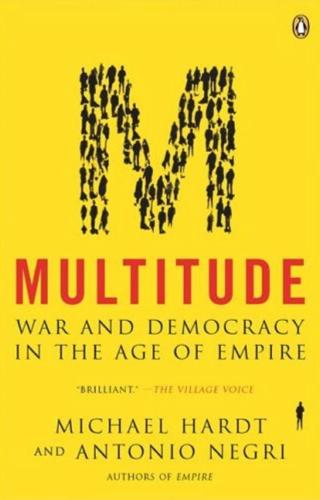
Multitude: War and Democracy in the Age of Empire
by
Michael Hardt
and
Antonio Negri
Published 1 Jan 2004
(The strikes and demonstrations of nurses in France in the early 1990s illustrated well the gender basis of the exploitation of affective and material labor.13) Furthermore, when affective production becomes part of waged labor it can be experienced as extremely alienating: I am selling my ability to make human relationships, something extremely intimate, at the command of the client and the boss.14 Alienation was always a poor concept for understanding the exploitation of factory workers, but here in a realm that many still do not want to consider labor—affective labor, as well as knowledge production and symbolic production—alienation does provide a useful conceptual key for understanding exploitation. The hegemony of immaterial labor, then, does not make all work pleasant or rewarding, nor does it lessen the hierarchy and command in the workplace or the polarization of the labor market. Our notion of immaterial labor should not be confused with the utopian dreams in the 1990s of a “new economy” that, largely through technological innovations, globalization, and rising stock markets, was thought by some to have made all work interesting and satisfying, democratized wealth, and banished recessions to the past.15 The hegemony of immaterial labor does, though, tend to change the conditions of work.
…
Bush, “The National Security Strategy of the United States of America,” September 2002. 47 It should not be surprising, then, if we see in the future a coalescence under the name of security of a war against abstract enemies together with a violent campaign against the power and cooperation of the new forms of labor. See Christian Marazzi, Capitale e linguaggio: Dalla New Economy all’economia di guerra (Rome: Derive/Approdi, 2002). 48 See Mahmood Mamdani, When Victims Become Killers: Colonialism, Nativism, and the Genocide in Rwanda (Princeton, NJ: Princeton University Press, 2001). 49 Michel Crozier, Samuel Huntington, and Joji Watanuki, The Crisis of Democracy (New York: New York University Press, 1975). 50 See Samuel Huntington, “The Clash of Civilizations?”
…
See Saskia Sassen, “The State and Globalization” in Rodney Hall and Thomas Biersteker, eds., The Emergence of Private Authority in Global Governance (Cambridge: Cambridge University Press, 2002), 91-112. 79 On the economic costs of the global wars, see Christian Marazzi, Capitale e linguaggio: Dalla New Economy all’economia di guerra. For an analysis of the extreme difficulties facing the U.S. project of unilatateralist global control, see Emanuel Todd, Après l’Empire (Paris: Gallimard, 2002). Todd’s argument is overly polemical and exagerated in several regards (claiming, for example, that U.S. power has already steeply declined just as Soviet power did before it), but he does give a clear view of the obstacles preventing U.S. unilateralism. 80 See, for example, Boris Porchnev, Les soulèvements populaires en France de 1623 à 1648 (Paris: S.E.V.P.E.N., 1963); and Ranajit Guha, Elementary Aspects of Peasant Insurgency in Colonial India (Delhi: Oxford University Press, 1983). 81 See Friedrich Engels, Engels as Military Critic (Manchester: Manchester University Press, 1959).

Capitalism in America: A History
by
Adrian Wooldridge
and
Alan Greenspan
Published 15 Oct 2018
Steel bridges spanned rivers and steel frames supported skyscrapers. Steel put cheap tools in everybody’s hands and cheap utensils on everybody’s tables. This is why steel gave America its richest man, in the shape of Andrew Carnegie, and its biggest company, in the form of U.S. Steel. If America’s new economy was built out of steel, it was lubricated by oil. In 1855, Benjamin Silliman, a chemist at Yale University, published his “Report on the Rock Oil, or Petroleum from Venango Co., Pennsylvania, with special reference to Its Use for Illumination and Other Purposes.” Three years later Edwin Drake began drilling for oil at Titusville, Pennsylvania, applying techniques used in salt wells.
…
Textile companies, particularly in the Carolinas, began to process cotton in the South rather than sending it north. Eventually a huge swath of northern companies, plagued by powerful trade unions, relocated production to the Sun Belt, turning a region that had once been deemed too hot for modern industry into the heart of the new economy. The Great Migration of blacks from the South to northern industrial cities (notably New York and Chicago) also lessened the region’s isolation. Hitherto the North and the South had been almost two separate countries when it came to their labor markets. Even after the abolition of slavery, most blacks moved only within the South, and then not very far.
…
A year after the crash, many Americans thought that they were in the midst of a usual, if painful, downturn—not as bad, surely, as the sudden contraction of 1920. There was plenty of good news to weigh against the bad: the 1929 unemployment rate had been 2.9 percent, one of the lowest ever; the new economy of radio, movies, and airplanes was booming; corporate profits were strong. When it became clear that America was heading into an unprecedented storm, they didn’t have a clear understanding of how the various segments of the economy interacted. To be sure, Wesley Clair Mitchell had spelled out how business cycles functioned in 1913.
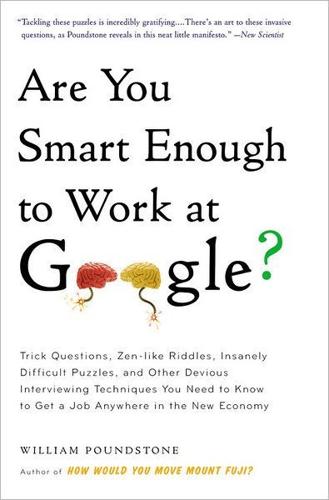
Are You Smart Enough to Work at Google?: Trick Questions, Zen-Like Riddles, Insanely Difficult Puzzles, and Other Devious Interviewing Techniques You ... Know to Get a Job Anywhere in the New Economy
by
William Poundstone
Published 4 Jan 2012
“So what do you do next?” “I shoot him?” “No, what do you do?” Silence. “You waste him! You WASTE the Prince of Darkness!” By this point, the applicant had a question of his own: “Holy crap, what have I gotten myself into?” He had gotten himself into a not entirely atypical interview in the new economy. In many industries, offbeat interview questions are a badge of coolness. They show how “creative” the workforce is. These questions are a feature of companies where non-HR employees do the interviewing. In highly specialized and creative fields particularly, it’s thought that employees better know what questions to ask than human resources people do.
…
Bass wrote, The personnel interview continues to be the most widely used method for selecting employees, despite the fact that it is a costly, inefficient, and usually invalid procedure. A dozen years later, the recruiter Robert Martin said, Most of the corporate recruiters with whom I’ve had contact are decent, well-intentioned people. But I’ve yet to meet anyone, including myself, who knows what he (or she) is doing. The new economy has taken notice. “In an interview you can tell if a person is a pleasant conversationalist, and you can give some technical questions to rule out the truly inept, but beyond that you might as well be rolling dice,” wrote the founder of BitTorrent, Bram Cohen. Google’s human resources head, Laszlo Bock, said it even more succinctly: “Interviews are a terrible predictor of performance.”
…
“You’re supposed to ask open-ended questions that test problem solving and general knowledge, then get into specifics,” explained one former Google interviewer. Google’s most characteristic, and most emulated, interview questions are short questions that spark conversations. On January 26, 2008, senator and presidential hopeful Barack Obama attempted to establish his new-economy credentials. He visited the Googleplex for a public chat with Eric Schmidt. Schmidt commented that it was hard to get a job as president—and hard to get a job at Google. In order to test Obama’s qualifications, Schmidt asked him, “What’s the most efficient way to sort a million 32-bit integers?”
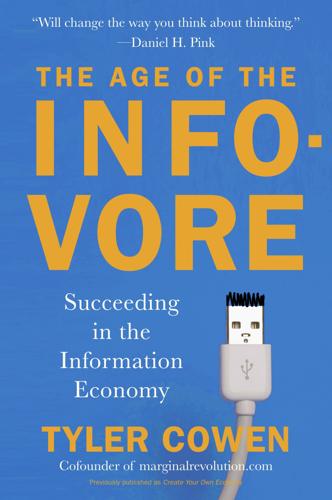
The Age of the Infovore: Succeeding in the Information Economy
by
Tyler Cowen
Published 25 May 2010
FOR INFORMATION PLEASE WRITE TO PREMIUM MARKETING DIVISION, PENGUIN GROUP (USA) INC., 375 HUDSON STREET, NEW YORK, NEW YORK 10014. CONTENTS PREFACE 1. THE FUTURE OF THINKING DIFFERENTLY 2. HIDDEN CREATIVITY 3. WHY MODERN CULTURE IS LIKE MARRIAGE, IN ALL ITS GLORY 4. IM, CELL PHONES, AND FACEBOOK 5. THE BUDDHA AS SAVIOR AND THE PROFESSOR AS SHAMAN 6. THE NEW ECONOMY OF STORIES 7. HEROES 8. BEAUTY ISN’T WHAT YOU THINK IT IS 9. AUTISTIC POLITICS 10. THE FUTURE OF THE UNIVERSE FURTHER READING AND REFERENCES ACKNOWLEDGMENTS INDEX PREFACE When the economy is doing poorly, people “cocoon” and turn to less expensive pleasures. During the Great Depression of the 1930s, people cut back on the expensive evening out and looked to board games, radio, and family entertainment at home.
…
Of course non-autistics experience so much educational failure, in part, because many people can increase their focus only so much. That’s yet another bias and it is a bias that so many of us suffer under. The lesson is this: No matter what your neurology, be careful whom you criticize. It may just be someone you should be trying to emulate. 6 THE NEW ECONOMY OF STORIES There has been a fundamental shift in the balance of power between consumers and salesmen over the last generation and it points in the direction of consumers. The quantity and quality of “interior” pleasures is higher than ever before, so many people shift more toward these very cheap entertainments.
…
For a discussion of this issue, see Dermot Bowler, Autism Spectrum Disorders: Psychological Theory and Research (cited above), 115–17. In any case, one can think of neurotypicals as trying, through education, to attain the non-distracted maximum focus found in many autistics. For the Department of Education figure, see www.ed.gov/about/overview/budget/budget03/summary/app1/edlite-index.html. CHAPTER 6: THE NEW ECONOMY OF STORIES You’ll find Schelling’s essay in his Choice and Consequence: Perspectives of an Errant Economist (Cambridge, MA: Harvard University Press, 1984). On stories I am also much influenced by Pascal Boyer’s Religion Explained (New York: Basic Books, 2002) and William Flesch’s Comeuppance: Costly Signaling, Altruistic Punishment, and Other Biological Components of Fiction (Cambridge, MA: Harvard University Press, 2008).
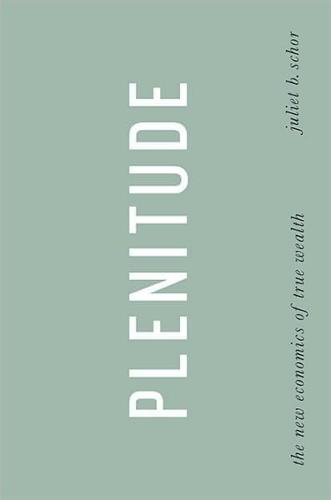
Plenitude: The New Economics of True Wealth
by
Juliet B. Schor
Published 12 May 2010
There’s no question it’s the direction we must go. It will provide real, not fictitious, opportunity. We’ll be designing a whole new way to produce and consume based on ingenuity rather than on using up materials. In large part, plenitude is a way to allow individuals to participate in building this new economy. But we’re in the early stages of the transition. The experience so far is that companies have been surprisingly slow to embrace sustainable production methods. And no single sector can compensate for the much larger trends from the whole economy. Green businesses will provide only a limited number of jobs, especially right now.
…
Jobs and incomes will be less available, and the usual way out—a debt-financed consumer boom—is unaffordable for households and the planet. With familiar opportunities deteriorating, we’ll be ham-strung if we limit ourselves to past practice. It’s time to leapfrog over the unpalatable trade-offs currently on offer and embrace a new economy. Diversifying out of the BAU market makes it possible to tap into neglected assets. True wealth can be attained by mobilizing and transforming the economies of time, creativity, community, and consumption. A Caveat: One Life Living One innovative effort within the sustainability movement is called one planet living.
…
Burgoon, Brian, and Phineas Baxandall. 2004. Three worlds of working time: Policy and politics in work-time patterns of industrialized countries. Politics and Society 32 (December): 439-73. Business Alliance for Local Living Economies (BALLE). The Business Alliance for Local Living Economies: 20,000 entrepreneurs building the new economy. Available from http://www.livingeconomies.org (accessed September 7, 2009). Caballero, Ricardo J., and Adam B. Jaffe. 1993. How high are the giants’ shoulders: An empirical assessment of knowledge spillovers and creative destruction in a model of economic growth. NBER Macroeconomics Annual 8: 15-74.

The Economic Singularity: Artificial Intelligence and the Death of Capitalism
by
Calum Chace
Published 17 Jul 2016
Furthermore, if the richest billionaires gave their wealth to the poorest half of the world, it would amount to a one-off payment of few hundred dollars each.[cccxxiv] Nevertheless, if you are one of the lucky minority with substantial net assets, you might be wondering how you will be affected if and when technological unemployment takes hold. Will your house be worth more or less in the new economy? How about your vintage Aston Martin, or your collection of fine wines? Until and unless we move to a completely different kind of economy, it is likely that some of the wealthy people – especially those who control the artificial intelligence which creates most of the added value – will remain wealthy, and perhaps become even more wealthy.
…
Unfortunately, every time I try to envisage this world, the picture degrades into a variation on the theme of “Brave New World” – or worse. Perhaps this is simply a failure of my imagination. I hope so. If it is true that we need to move away from capitalism, we have two major jobs on our hands. First, we need to determine what that new economy should look like. Second, we need to work out how to transition from the economy we have to the economy we need. This will not be easy. Humans dislike change, and as always, there will be winners and losers. The losers may not take their losses calmly. The scenario of the gods and the useless is not the only possible outcome of technological unemployment.
…
Chapter 6.2 rehearsed the hope that we can race with the machines by becoming centaurs and enjoying the icebergs of new work. Chapter 6.3 offered the idea that unemployment will grow, but can be accommodated by UBI. Chapter 6.4 reprised the scenario of the gods and the useless, and chapter 6.5 reminded us that civilisation is fragile, and that a poorly-planned transition towards a new economy could be hazardous. Chapter 6.6 adopted Kevin Kelly’s term Protopia for a successful transition, and suggested that the blockchain might turn out to be the mechanism to administer society’s collectively owned assets, notably its artificial intelligence. 7.2 – The two singularities In my previous book, “Surviving AI”, I wrote at length about the challenge and the opportunity presented by the technological singularity, the moment when (and if) we create an artificial general intelligence which continues to improve its cognitive performance and becomes a superintelligence.
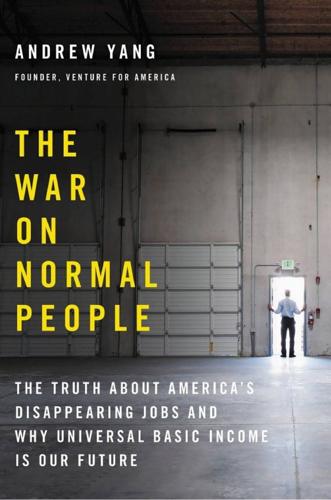
The War on Normal People: The Truth About America's Disappearing Jobs and Why Universal Basic Income Is Our Future
by
Andrew Yang
Published 2 Apr 2018
We will read articles with concern about the future and think about how to redirect our children to more fertile professions and livelihoods. We will retweet something and contribute here and there. We will occasionally reflect on the fates of others and shake our heads, determined to be among the winners in whatever the new economy brings. The logic of the meritocracy is leading us to ruin, because we are collectively primed to ignore the voices of the millions getting pushed into economic distress by the grinding wheels of automation and innovation. We figure they’re complaining or suffering because they’re losers. We need to break free of this logic of the marketplace before it’s too late.
…
Yuval Harari in Homo Deus makes the point that our cab driver can look into the sky, contemplate the meaning of life, tear up at the sounds of an opera, and generally do a million things that a robot driver cannot. But most of those things don’t matter to us when we get into the back of the cab. Oftentimes, we’d prefer to be left alone rather than make conversation. I know I’m occasionally guilty of this. One of the common themes of the new economy is that women are better equipped to excel in the growth areas and opportunities in a service economy, including nurturing and teaching other people, which are among the toughest activities to automate. Conventionally male-dominated jobs like manufacturing, warehouse shelving, and truck driving are among the easiest.
…
When a few hundred workers get replaced or a plant closes, the people around them notice and the community suffers. But to the rest of us, each closing is seen as part of economic progress. The challenges are magnified because American society is not in great shape right now. There are a number of trends that are going to make managing the transition to a new economy all the more difficult: • We are getting older. • We don’t have adequate retirement savings. • We are financially insecure. • We use a lot of drugs. • We are not starting new businesses. • We’re depressed. • We owe a lot of money, public and private. • Our education system underperforms
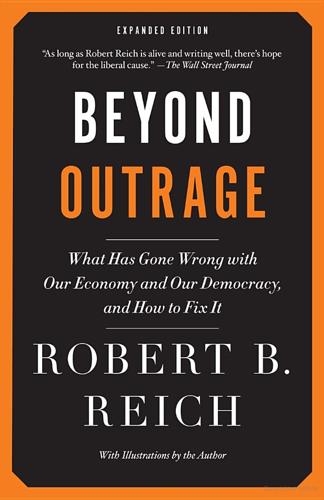
Beyond Outrage: Expanded Edition: What Has Gone Wrong With Our Economy and Our Democracy, and How to Fix It
by
Robert B. Reich
Published 3 Sep 2012
He’s absolutely right, and it’s the first time he or any other president clearly stated the long-term structural problem that’s been widening the gap between the very top and everyone else for thirty years—the breaking of the basic bargain linking pay to productivity gains. For many years, credit cards and home equity loans papered over the harsh realities of this new economy. But in 2008, the house of cards collapsed. Exactly. But the first papering over was when large numbers of women went into paid work, starting in the late 1970s and the 1980s, in order to prop up family incomes that were stagnating or dropping because male wages were under siege—from globalization, technological change, and the decline of unions.
…
Our real problem, he argues, lies in the increasing concentration of wealth in the hands of the richest Americans, while stagnant wages and rising costs have forced the middle class to go deep into debt. Reich’s thoughtful and detailed account of the American economy—and how we can fix it—is a practical, humane, and much-needed blueprint for rebuilding our society. Economy THE FUTURE OF SUCCESS Working and Living in the New Economy Americans may be earning more than ever before, but they’re paying a steep price: they’re working longer and seeing their families less, and their communities are fragmenting. With clarity and insight, Robert B. Reich delineates what success has come to mean in modern times. Although people have more choices as consumers and investors, these choices are undermining the rest of their lives.
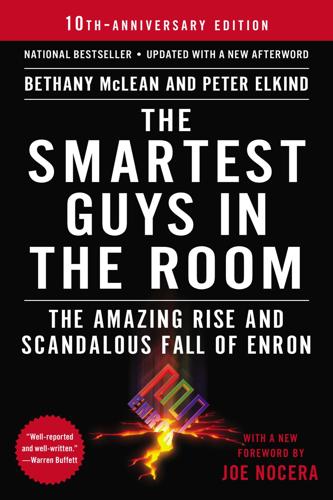
The Smartest Guys in the Room
by
Bethany McLean
Published 25 Nov 2013
Brownlee Thomas, an analyst at Giga Information Group: “Absolutely it will succeed.” Deutsche Bank: “All we can say is WOW.” Merrill’s Donato Eassey: “Although this is still an energy company, in our view, Enron fits the description of a ‘New Economy’ stock. . . .” Having Enron viewed as a new economy stock, of course, was precisely Skilling’s goal; new economy stocks got valuations that energy companies could only dream of. One analyst, Hugh Holman of Robertson Stephens, even apologized for failing to “do justice” to the business in his note, writing that “we suspect that most attendees at today’s conference, like ourselves, are being asked to venture fairly far afield from their home turf (natural gas, power, energy) . . . it’s not that we don’t get it, or are unexcited by the prospects laid out for us; rather it’s that we have no highly tuned critical filter to apply. . . .”
…
At its core, Bethany’s article asked one very straightforward question: How does Enron make its money? For years the company had been a Wall Street darling, its stock moving steadily upward with each new quarter’s rising profits. It was seen as the paradigmatic example of a company that had transformed itself from an old-economy stalwart—operating pipelines that moved natural gas—to a new-economy marvel, creating dazzling efficiencies and hedging risks (like the weather!) that no one had ever thought to hedge before. Just a month before Bethany’s story ran, Businessweek had put Enron’s chief executive, Jeffrey Skilling, on its cover, posing with what appeared to be harnessed electricity in his hand, with the cover line “Power Broker.”
…
The bankers and investment bankers, who worked for the same firms as the analysts, certainly understood what Enron was doing; indeed, they made Fastow’s deals possible. The credit-rating agencies knew a lot. The business press, which could have looked more closely at Enron’s financial statements, couldn’t be bothered; the media was utterly captivated by the company’s transformation from stodgy pipeline to new economy powerhouse. And of course there were any number of Enron’s own employees who could see for themselves how the company was making its numbers. And yet, they all chose not to make the logical leap, to see where it was inevitably headed. Instead, they all chose to believe. Everyone loved Enron

The Economics of Enough: How to Run the Economy as if the Future Matters
by
Diane Coyle
Published 21 Feb 2011
Already, unmistakable and disquieting signs are available for all to see.12 He is right. The political rows about school or police budgets, about low pay in the caring services, about fair access to the best possible health care, are ubiquitous and intense. How should these services be valued and priced, and how paid for? And are there any clues in the way we think about “new economy” sectors that are starting to experience the same effects? THE ECONOMICS OF MUSIC As Baumol pointed out, the same pattern applies to many services—his other example was the performing arts. Take a string quartet. They will sell some recordings but a high proportion of their income is likely to come from live performances.
…
There has been a vigorous debate about the challenge the presumption of “free” content poses to businesses in music, movies, and publishing. Less attention has been paid to the implications for measuring the economy, and yet conventional statistics do not capture at all well the shape or growth of the new economy taking shape. There has been real progress in improving economic statistics: in the development of dashboards to supplement GDP; in the measurement of intangible value; and in looking at time use as an indicator of what people value. In each of these avenues, more progress is needed. GDP needs to be joined by a measure of comprehensive wealth; the role of intangibles needs to be better conceptualized in order to collect statistics; and time use surveys based on diaries are neither detailed nor frequent enough to give rich insights into what people do.
…
“International Evidence on the Social Context of Well-being.” In International Differences in Well-being, ed. Ed Diener, J. F. Helliwell, and D. Kahneman. New York: Oxford University Press. Helpman, Elhanan. 2004. The Mystery of Economic Growth. Cambridge, MA: Harvard University Press. Henwood, Doug. 2003. After the New Economy. New York: New Press. Hepburn, Cameron, and Paul Klemperer. 2006. “Discounting Climate Change Damages: Working Note for the Stern Review.” London, UK. Heshmati, Almas. 2006. “The World Distribution of Income and Income Inequality: A Review of the Economics Literature.” Journal of World-Systems Research 12:1, pp. 60–107.
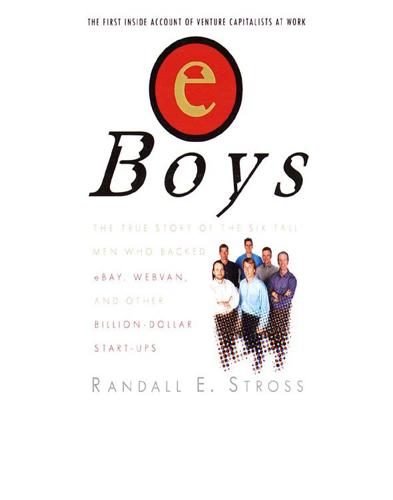
eBoys
by
Randall E. Stross
Published 30 Oct 2008
As for the venture capitalists, they received a significant cut—at least 20 percent—of any resulting gains in the portfolio’s investments, so in flush times their personal wealth, on paper at least, grew as fast as the valuations of the new companies they funded. Anyone who had followed the rise of Netscape, Amazon, and Yahoo—all were venture-backed—had already figured out that the venture guys were seated at the center of the New Economy. Endowment-fund managers who had not previously developed connections to the top venture capital firms pounded their fists on closed doors, begging for entry, but even with recent increases in size, the funds were already oversubscribed. Business-school graduates headed to Silicon Valley in numbers never seen before, spurning six-figure salaries with management consulting firms to seek their fortunes with venture-backed start-ups.
…
Standing in the doorway on his way out, Greenberg told a couple of the Benchmark partners the plans for the next round of financing. Scient’s valuation in the December seed round had been $6 million; now it was March and Scient was looking for investors at a current valuation, in the new math of the New Economy, of $180 million, which, it turned out, it had no difficulty finding. Greenberg exulted, “I think we’re the greatest play in the Valley right now. It came farther than I thought it was going to go in three months, let me tell you. I’m glad you guys didn’t fund Digital Talent.” They laughed together.
…
Get into e-commerce consulting, Harvey advised. There’s a problem with that suggestion, Shaw told him: I have no clients down here who are asking for that kind of help. Silicon Valley was not just ahead of Houston; it was too far ahead for Harvey’s insights to be of help to Shaw’s business. Until Houston joined the New Economy, Shaw had time to dabble and learn something about e-commerce for future consulting gigs. For a proof-of-concept site that could be shown to prospective clients, he thought to himself, why not try selling watches on the Web? He had recently discovered that no store in Houston offered a discount on a Cartier he had wanted to buy his wife, yet it was possible to get a discount by other means.
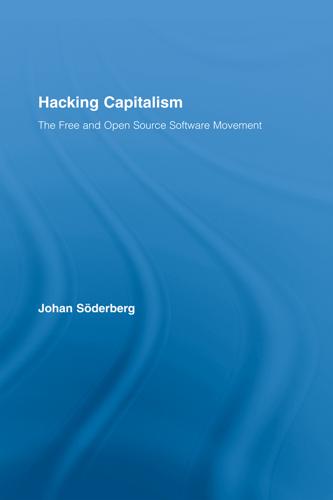
Hacking Capitalism
by
Söderberg, Johan; Söderberg, Johan;
The central index on available music files permitted Shawn Fanning to start a business venture around the service, and, on the downside, for the Record Industry Association of Americas (RIAA) to sue him. From the outset, Shawn Fanning and his associates aimed at drawing the greatest possible number of users into the Napster system. The audience would be their bargain chip when negotiating the price for the service with RIAA at a later stage. In the heydays of the New Economy, this was a good enough business proposal to attract venture capital. Even one of the media giants and a prominent member of the RIAA, the German company Bertelsmann, invested in Napster. And the audience size was impressive. At its peak Napster had more than 70 million registered users. Almost every single one of them swapped copyrighted files in violation of the law.
…
A case often referred to in labour theory is the union struggle in the printing industry during the mid twentieth century. Typographers had traditionally had a strong position based on their knowledge monopoly over the trade. Computerisation of the labour process was decisive for breaking their strength.29 No doubt, the importance of software algorithms in the so-called new economy owes to its expediency in this regard. Programmable automation, i.e. computers, has accelerated the logic of automation to a breaking point, both in its despotism and in its emancipatory potential. Previously, human knowledge was objectified in cogs and wheels, now it is objectified in binaries.
…
The cost for marketing is instead covered by raising the price of the advertised product. As is the case with advertising, individual customers will pay for networked services/products through higher prices on non-networked products. This solution cannot last in the long run if we are to believe the advocates of the New Economy. The network firm is hailed as the ‘sun-rise industry’ of the future, or, borrowing a phrase from Karl Marx, it will be the general illumination that bathes all the other sectors of the economy in its light and particularities. In plain language, all products will be networked products, which begs the question: Where can rent then be taken from?
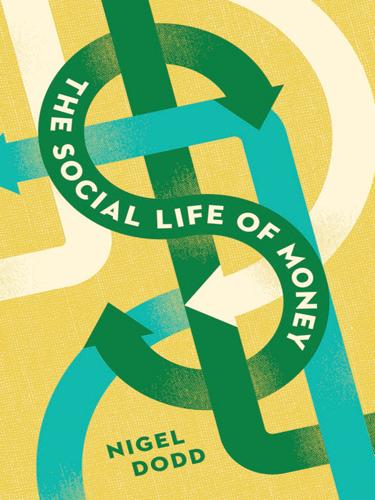
The Social Life of Money
by
Nigel Dodd
Published 14 May 2014
Germane to this view, the mimetic character of financial panics is indicative of the uneasy alliance of individualism and collectivism that financial capitalism demands: “everyone returns to his own property and, simultaneously, he finds himself closer to the others because of effects of mimesis, because of the contagion and the reactions it provokes” (Marazzi 2008: 129).36 In place of a rational subject, Marazzi substitutes Spinoza’s idea of the multitude as the collective nonsubject that resides in the new economy. The multitude is an effigy of money, the very form of its sovereignty: “After having killed the god Pan, the multitude has to learn to protect itself from those momentary gods who, like little gremlins, haunt accidental events” (Marazzi 2008: 135). Like the new economy itself, the post-Fordist panic is characterized not by atomism and alienation but by its opposite, what Paolo Virno called “the magnetic adherence of the individual to the general intellect” (Marazzi 2008: 130).
…
In his recent analyses of post-Fordism and cognitive capitalism, Marazzi has subsequently reconfigured Marx’s distinction between the real economy (where material and immaterial goods are produced and sold) and the monetary–financial economy (where investment and speculation take place). Cognitive capitalism (or the cognitive–cultural economy) refers to the New Economy: high-technology industry, business and financial services, personal services, the media, and e-cultural industries. Digital technologies have a key role to play, and as a result, cognitive (or cultural) labor is in high demand. In essence, this fact means that work increasingly consists of the exercise of linguistic, interpersonal emotional and intellectual skills, using “raw materials” that are by their nature intangible and difficult to quantify.
…
Whereas the monetary and financial problems that shaped the immediate post-Bretton Woods era were based on the contradictory relationship between the real and financial economies, i.e., the ability of money to recuperate itself as capital, financialization has spread across the entire business cycle (Marazzi 2010: 27–29, 49). The new economy is driven by excessive levels of financial activity (lending and speculation), with no brake or threshold within the real economy to slow things down. This situation is financial saturation. Moreover, whereas Harvey continues to see the state as key to reestablishing money’s underlying value in the aftermath of credit crisis, Marazzi brings the argument he began with Bretton Woods to its logical conclusion: this is a post-Keynesian system in which the old internal and external solutions for restoring capital’s value—effective demand management and colonialism, respectively—have been exhausted.
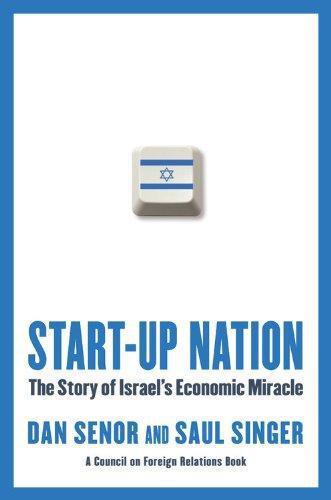
Start-Up Nation: The Story of Israel's Economic Miracle
by
Dan Senor
and
Saul Singer
Published 3 Nov 2009
By the time they are out of their twenties, not only are most Israelis tested in discovering exotic opportunities abroad, but they aren’t afraid to enter unfamiliar environments and engage with cultures very different from their own. Indeed, military historian Edward Luttwak estimates that many postarmy Israelis have visited over a dozen countries by age thirty-five.8 Israelis thrive in new economies and uncharted territory in part because they have been out in the world, often in pursuit of the Book. One example of this avid internationalism is Netafim, an Israeli company that has become the largest provider of drip irrigation systems in the world. Founded in 1965, Netafim is a rare example of a company that bridges Israel’s low-tech, agricultural past to the current boom in cleantech.
…
We asked Haug why there were not more start-ups in Korea, despite the great affinity Koreans have for technology. “The fear of losing face, and the bursting of the Internet bubble in 2000,” he told us. “In Korea, one should not be exposed while failing. Yet in early 2000, many entrepreneurs jumped on the bandwagon of the new economy. When the bubble burst, their public failure left a scar on entrepreneurship.” Haug was surprised to hear from the director of a technology incubator in Korea that a call for projects received only fifty submissions, “a low figure when you know how innovative and forward-thinking Korea really is.”
…
The dawn of Israel’s tech boom coincided not only with a global surge in information technology but with the American tech-stock bubble, the jump-starting of Israel’s venture capital industry through the Yozma program, the massive wave of immigration from the former Soviet Union, and the 1993 Oslo peace accords, bringing what seemed to be the prospect of peace and stability. What if Israel’s economic miracle were simply built on a rare confluence of events and would disappear under less favorable circumstances? Even if Israel’s new economy is not just the product of happenstance, what are the real threats to Israel’s long-term economic success? One need not speculate about what would happen if the positive factors that launched Israel’s tech boom in the late 1990s were to disappear. Most of them have. In 2000, the tech-stock bubble burst.
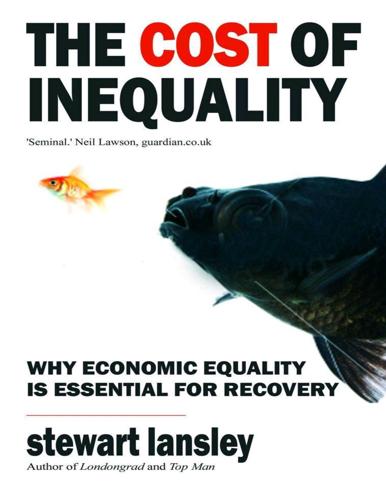
The Cost of Inequality: Why Economic Equality Is Essential for Recovery
by
Stewart Lansley
Published 19 Jan 2012
L Kenworthy, Middle America’s Standard of Living, Spring 2010 and FS Levy and P Temin, ‘Inequality and Institutions in Twentieth Century America’, MIT Working Paper, 07-17, 2007. 80 Economic Policy Institute, ‘Productivity and Median and Average Compensation’, 1973 to 2007, State of Working America, 2010. 81 See, for example, ‘Interview with Dr Ravi Batra’, Truthout, 16 March, 2009; R Batra, The Great Depression of 1990, Dell Publishing, 1988. 82 Juan Somavia, The Challenge of Growth, Employment and Social Cohesion, ILO, October 2010. 83 See eg ‘The Globalisation of Labour’, World Economic Report, IMF, 2007. 84 See, for example, S Machin, ‘The changing Nature of Labour Demand in the New Economy and Skill-Based Technological Change’, Oxford Bulletin of Economics and Statistics, 2001, issue 63, pp 753-76; J. Hills, Inequality and the State, OUP, 2004, p 79-83. 85 See, for example, W Hutton, Them and Us, Little Brown, 2010. 3 THE VANISHING MIDDLE In his first speech after defeating his better-known brother to become Labour’s new leader, Ed Miliband made a pitch for the votes of what he called the ‘squeezed middle’.
…
Notes 171 P Beresford and WD Rubinstein, The Richest of the Rich, Harriman House, 2007. 172 Paul Krugman, New York Times, 20 October, 2002; a similar emphasis on changing social norms to explain the rising income share of the top has been made by Thomas Piketty and Emmanuel Saez, Income inequality in the Unites States, 1913-1998, NBER, Working Paper 8467, September 2001. 173 Krugman, op. cit. 174 Roberts & Kynaston, op. cit. p 142. 175 Ibid. p 153. 176 J. Cassidy, ‘The Greed Cycle’, New Yorker, 23 September 2002. 177 D. Henwood, ‘A New Economy’, speech to the Friday Forum, University YMCA, University of Illinois at Urbana-Champaign, October 1999. 178 The Guardian, 1 September, 2010. 179 H. Williams, ‘How the City of London came to power’, Financial Times, 21 March 2006. 180 Mervyn King, From Bagehot to Basel and Back Again, Bank of England, 25 October, 2010. 181 See eg J Froud, S Johal, A Leaver and K Williams, Financialisation and Strategy, Routledge, 2006; T Golding, The City, Prentice Hall, 2001. 182 Froud, op. cit. 183 The Independent, 31 March, 2000. 184 D French, Branch Network Reduction Report, Campaign for Community Banking, 2009. 185 J Coney J, ‘Fury over Britain’s vanishing banks’, Money Mail, 3 February 2010; see http://www.thisismoney.co.uk/savings-and-banking/article.html?
…
After serious birth pangs in the 1980s and early 1990s—when restrictive macroeconomic policies blunted growth rates—the more open and globalised world economy entered a period of sustained growth. Although this upward path faltered slightly in 2000 and 2001 with the collapse of stock markets following the bursting of the new economy bubble, average growth rates across the world and the richer nations were higher in the period 1997-2007 than they had been in the earlier period 19811996.207 Growth in both the UK and the US—an annual average of 3.0 and 3.3 per cent respectively in the decade to 2007—outstripped that of the other G7 nations less wedded to markets (Japan, Germany, France, Italy and Canada) which averaged between them only 2.4 per cent.208 These figures lent some support to the market school.
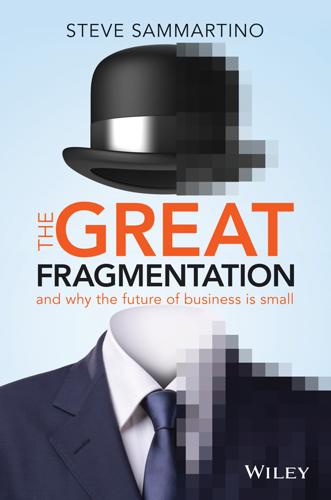
The Great Fragmentation: And Why the Future of All Business Is Small
by
Steve Sammartino
Published 25 Jun 2014
The efficiencies these corporations generated have made high-end technology disposable, or at the very least, low cost. It’s difficult to make a profit when products have to improve each year and cost less than they did last year. This means that in the new economy we’re all required to do some unlearning to stay profitable and relevant. It means the only way of achieving revenue upside is to sell more units, but there are only so many mobile phones and televisions a person can own. This means that in the new economy we’re all required to do some unlearning to stay profitable and relevant. A new business infrastructure The entire economic, political and social infrastructure is going through a 200-year shift from the industrial era to the technology era.
…
As I write this, successful companies are still littered with digital XYZs: digital marketing managers, digital strategists, digital sales managers … the list is endless. Just go into any job-posting site and type in the word ‘digital’. Everyone in business is in ‘digital’. If we want to participate in the new economy, we have to be in ‘digital’, just as we have to be able to read and write. The days of digital strategy are over. The days of digital anything in a job title are over as well. They should never have existed in the first place. Anyone who doesn’t get digital, doesn’t get strategy. Any person or organisation that has not invested the time to understand and embrace the changes is saying, ‘We’re not serious about surviving the present-day upheaval’.

Exponential Organizations: Why New Organizations Are Ten Times Better, Faster, and Cheaper Than Yours (And What to Do About It)
by
Salim Ismail
and
Yuri van Geest
Published 17 Oct 2014
The book pushes the sharing philosophy forward by establishing information-enabled assets of all kinds, from textbooks to gardening tools to housing—assets and resources that are abundant and widely available. Research conducted by Crowd Companies in April 2014 highlights the industries in which seventy-seven of the largest organizations in this new economy operate. As shown in the chart below, retail, transportation and technology are currently the biggest industries. Non-ownership, then, is the key to owning the future—except, of course, when it comes to scarce resources and assets. As noted above, Tesla owns its own factories and Amazon its own warehouses.
…
Everis, a multinational consulting firm based in Madrid, has partnered with two Spanish entrepreneurs, Luis Gonzalez-Blanch and Pablo De Manuel Triantafilo, to create mentoring software that matches executives in big companies with startups in their internal incubators. Everis, which intends to offer the service to hundreds of clients across Spain, is looking to push consulting into the new economy of open-talent, accelerating innovation, connected knowledge, Big Data, intelligent currency and pervasive entrepreneurship. In each field, a likely roadmap and database have already been created. In entrepreneurship, for example, the company has created the biggest B2B ICT startup database in the world.
…
Dashboards Extending the notion that decision-making in companies should be driven by data rather than by intuition, Dashboards offer an intuitive way to present complex information in a simple and cogent way. John Seely Brown and John Hagel have observed that although all of our large organizations are set up to scale efficiencies, in this new economy what we actually need to scale is learning. And while some very good business intelligence (BI) systems exist out there, they are set up largely to measure scaling of efficiency. What is needed now are new dashboards that measure the learning capability of organizations. And if those learning dashboards don’t emerge soon, big companies should consider requiring that their newly minted chief data officers (the hottest new C-Level position) build them.

The Greed Merchants: How the Investment Banks Exploited the System
by
Philip Augar
Published 20 Apr 2005
In 1999 the average Initial Public Offering (IPO) in America opened at a 72 per cent premium to the issue price and the hottest stocks immediately soared to double, treble or even more than what investors had paid for them. Investment banking profits surged on the back of this IPO explosion and the managers and shareholders of Wall Street’s top firms could congratulate themselves on successfully riding the new economy wave. Over the previous two decades there had been a subtle change in the status of investment banking. As leader of the free market economy charge of the 1980s and 1990s, it appeared to have joined the great professions. Markets were in the ascendant and share ownership became a popular passion.
…
Share prices, which had been rising steadily since 1982, endured the 1990–1 recession and the setback of an unexpected rise in US interest rates in 1994, but there was no stopping the bull. Between the end of 1994 and Millennium Eve, the Dow Jones Industrial Average and the S&P 500 – both broad indices of traditional ‘old economy’ American business – trebled and the NASDAQ index – dominated by ‘new economy’ Technology, Media and Telecommunications companies – quintupled. Investing, particularly in equities, became a national obsession in the 1990s. The number of American households owning shares rose from under 40 per cent to nearly 50 per cent and equities rose from being a third of household liquid assets to a half.29 In the second half of the decade new issues – shares in companies coming to the stock market for the first time – got hotter and hotter year by year.
…
What yesterday had seemed like an exhilarating investment in a bright new future seemed today like a reckless gamble. By the end of the year, the NASDAQ was down to 2,470, bellwether internet stocks like Yahoo virtually halved in a month and a host of once hot new issues dropped 90 per cent in price. Companies of all kinds, not just those with new economy connections, were left with holes in their finances. Consumer confidence crashed and before you could blink America was officially declared to be in recession in March 2001.33 Desperately, the Federal Reserve tried to stimulate markets with a string of interest rate cuts, but valuations were too high, too many companies had no earnings and, after 11 September that year, global terrorism added a dreadful new uncertainty.

How to Fix the Future: Staying Human in the Digital Age
by
Andrew Keen
Published 1 Mar 2018
This digital spin on a utopian market economy is creating a “winner-take-all network,”16 I argued, and we, the people, we are all the losers in it. Take, for example, the impact of the digital revolution on the mapmaking industry. The goal of this book, you’ll remember, is to create a map of the future that places humans at its center. But the winner-take-all nature of the new economy has put money, rather than people, at the heart of today’s mapmaking industry. “We are on the brink of a new geography,” explains Jerry Brotton, the Professor of Renaissance Studies at the University of London and an acclaimed historian of maps. The new digital mapmaking industry, Brotton warns, “risks being driven as never before by a single imperative: the accumulation of financial profit through the monopolization of quantifiable information.”17 And the single company driving this imperative is Google which, in May 2016, announced plans to add location-based advertising to its mobile map products, thereby making the tracking of our location data ever more valuable.18 This is particularly troubling, Brotton argues, because the Silicon Valley big data company—which owns Android, the mobile operating platform currently used by over 86 percent of all smartphone owners in the world19—does not “disclose the specific details of its code.”
…
His 2017 book, Move Fast and Break Things, borrows its title from Facebook founder Mark Zuckerberg’s notorious mantra to disrupt as much as possible without taking responsibility for any of the resulting damage. Taplin reserves his sharpest critique for Silicon Valley’s libertarian ideology, with its fetishization of free market forces, which has enabled this new economy to so radically disrupt old business models and economic practices. And he has become a kind of informal labor organizer, encouraging the resistance of musicians and filmmakers to these controversial new models and practices. “It’s an artists’ strike,” Taplin continues, lowering his voice conspiratorially.
…
And what, exactly, should we be teaching kids in order to prepare them for a life in which they might either be permanently unemployed—and relying on their monthly universal basic income stipend—or multitasking six jobs simultaneously? What Are Humans Good For? And so, finally, we’ve arrived at the question of education. Education, we are told, particularly by those who don’t teach or work in schools, is the answer. Education is how people are supposed to be retrained to work in the new economy. Education is where kids develop Albert Wenger’s “psychological freedom” in order to break their online addictions. Education, to borrow some of Daniel Straub’s language, is where we learn to be human. And though none of this is exactly wrong, the problem is that education has become the default solution to everything.
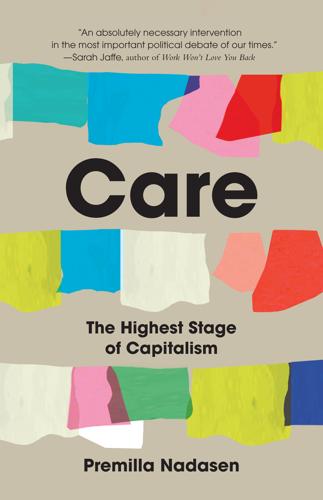
Care: The Highest Stage of Capitalism
by
Premilla Nadasen
Published 10 Oct 2023
Amott and Julie Matthaei, Race, Gender, and Work: A Multi-cultural Economic History of Women in the United States (Boston: South End Press, 1996). 8. Joan Tronto, Moral Boundaries A Political Argument for an Ethic of Care (New York: Routledge, 1993). 9. Barbara Ehrenreich and Arlie Russell Hochschild, “Love and Gold,” in Global Woman: Nannies, Maids, and Sex Workers in the New Economy (New York: Metropolitan Books, 2003), 15–30. 10. Laura Briggs, How All Politics Became Reproductive Politics: From Welfare Reform to Foreclosure to Trump (Oakland: University of California Press, 2017), 11. Mimi Abramovitz also writes about this as a crisis of social reproduction. See Mimi Abramovitz, “From Welfare State to Carceral State: Whither Social Reproduction?
…
For a critique, see Manalansan, “Queer Intersections: Sexuality and Gender in Migration Studies”; Rachel Brown, “Re-examining the Transnational Nanny: Migrant Carework Beyond the Chain,” International Feminist Journal of Politics 18, no. 2 (2016): 210–229. 14. Ehrenreich and Hochschild, Global Woman: Nannies, Maids, and Sex Workers in the New Economy. 15. Evelyn Nakano Glenn, “From Servitude to Service Work: Historical Continuities in the Racial Division of Paid Reproductive Labor,” Signs 18, no. 1 (1992):1-43; Evelyn Nakano Glenn, Forced to Care: Coercion and Caregiving in America (Cambridge: Harvard University Press, 2010); Dorothy E. Roberts, “Spiritual and Menial Housework,” Yale Journal of Law & Feminism 9, no.1 (1997): 51–80; Mignon Duffy, “Reproducing Labor Inequalities: Challenges for Feminists Conceptualizing Care at the Intersections of Gender, Race, and Class,” Gender & Society Vol. 19, no. 1 (2005): 66–82.
…
: Neoliberalism, Cultural Politics, and the Attack on Democracy (Boston: Beacon Press, 2004); Nancy MacLean, Democracy in Chains: The Deep History of the Radical Right’s Stealth Plan for America (New York: Viking, 2017). 28. Pew Research Center, “The Rise in Dual Income Households,” June 18, 2015, https://www.pewresearch.org/ft_dual-income-households-1960-2012-2/. 29. Barbara Ehrenreich and Arlie Russell Hochschild, Global Woman: Nannies, Maids, and Sex Workers in the New Economy (New York: Metropolitan Books, 2003); Nancy Folbre, For Love or Money; Madonna Harrington Meyer, Care Work: Gender, Labor and the Welfare State (New York: Routledge, 2000); Rhacel Salazar Parreñas, Servants of Globalization: Women, Migration, and Domestic Work (Stanford: Stanford University Press, 2001). 30.
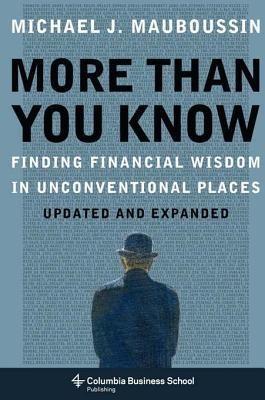
More Than You Know: Finding Financial Wisdom in Unconventional Places (Updated and Expanded)
by
Michael J. Mauboussin
Published 1 Jan 2006
The main reason is that the later years of the study included historically high levels of write-offs and restructuring charges that likely distorted the accounting data. 8 Richard Foster and Sarah Kaplan, Creative Destruction: Why Companies that are Built to Last Underperform the Market—and How to Successfully Transform Them (New York: Doubleday, 2001); and John Y. Campbell, Martin Lettau, Burton G. Malkiel, and Yexiao Xu, “Have Individual Stocks Become More Volatile?” Journal of Finance 54 (February 2001): 1-43. 9 J. Bradford DeLong and Lawrence H. Summers, “The ‘New Economy’: Background, Historical Perspective, Questions, and Speculations”, Federal Reserve Bank of Kansas City Economic Review, Fourth Quarter 2001. See http://www.kc.frb.org/PUBLICAT/ECONREV/Pdf/4q01delo.pdf. 10 Alfred Rappaport and Michael J. Mauboussin, Expectations Investing: Reading Stock Prices for Better Returns (Boston: Harvard Business School Press, 2001), 26-27, 36-38. 22.
…
Working Paper, November 23, 2003. http://fisher.osu.edu/fin/dice/seminars/pollet.pdf. DeLong, J. Bradford, Andrei Shleifer, Lawrence H. Summers, and Robert J. Waldmann. “Positive Feedback Investment Strategies and Destabilizing Rational Speculation.” Journal of Finance 45, no. 2 (June 1990): 379-95. DeLong, J. Bradford, and Lawrence H. Summers. “The ‘New Economy’: Background, Historical Perspective, Questions, and Speculations.” Federal Reserve Bank of Kansas City Economic Review (Fourth Quarter 2001). Dembo, Ron S., and Andrew Freeman. Seeing Tomorrow: Rewriting the Rules of Risk. New York: Wiley, 1998. Dickinson, Rod. “The Milgram Reenactment.” http://www.milgramreenactment.org/pages/section.xml?
…
Godin. “How Females Choose Their Mates.” Scientific American (April 1998): 56-61. Durand, David. “Growth Stocks and the Petersburg Paradox.” Journal of Finance 12 (September 1957): 348-63. The Economist. “Other People’s Money: A Survey of Asset Management.” July 5, 2003. ——. “Survey of the ‘New Economy.’” September 21, 2000. Eguiluz, Victor M., and Martin G. Zimmerman. “Transmission of Information and Herd Behavior: An Application to Financial Markets.” Physical Review Letters 85, no. 26 (December 2000): 5659-62. Ehrlich, Paul R. Human Natures: Genes, Cultures, and the Human Prospect. Washington, D.C.: Island Press, 2000.
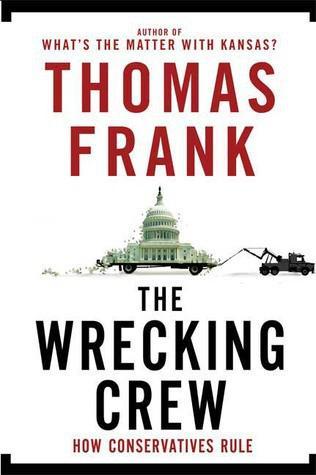
The Wrecking Crew: How Conservatives Rule
by
Thomas Frank
Published 5 Aug 2008
The crew-cut factory owner in Akron was joined in his denunciations of big government by the hipsters at Wired—and, mirabile dictu, by a Democratic president. All across the land wingers changed their plumage. Onetime red-baiter Dinesh D’Souza became an authority on Silicon Valley, the site of the deregulated New Economy’s greatest achievements. Jack Wheeler, erstwhile leader of the cult of the freedom fighter, discovered that the Internet was the weapon that would destroy the liberal state here at home.1 Leadership of the conservative movement passed from Pat Buchanan, warning darkly about the coming “New World Order,” to Newt Gingrich, extolling the coming Information Age and referring reporters to the glorious free-market future as revealed in The Third Wave.
…
This was the place where first world met third, the Afrikaners used to say; the land where a civilization of Mercedes-driving suburbanites came face-to-face with people who lived in huts made of sticks and plastic bags.56 Today, this idea of “first world meets third” is no longer such an exotic concept. In some ways that’s us. That’s Europe, too. That’s Ireland and France and Brazil and India and Malaysia and Mexico. It is now such a common feature of the “New Economy” that business gurus frankly insist on this mix: you can’t have a properly profitable system unless you have plenty of surplus third worlders around to work their magic—that is, to work for pennies. Apartheid was a costly and murderous way of managing this situation. But South Africa pioneered other models as well, half-remembered schemes in which low-tax zones and union-free labor forces were delivered and disciplined not by brutal white cops but by indigenous leaders bubbling over with ethnic pride.
…
What the superlobbyist seems to have understood was that any consideration of labor abuses in Saipan could be stopped cold by a fusillade of righteous ethnic authenticity. Abramoff was not the first to figure this out, of course. Applying the “racist” label to critics of outsourcing, offshoring, and even business generally is a familiar reflex of the “New Economy” mind. Surely you know the litany by now: the new, exuberant capitalism is leveling the barriers between peoples, flattening the world, and bringing us all closer together; to resist or even to criticize this new capitalism is to align yourself somehow with the forces of racist “protectionism.” Entire books have been written to push this rattlebrained notion.

In-N-Out Burger
by
Stacy Perman
Published 11 May 2009
The new owners hoped to expand the chain further and build smaller, cheaper Johnny Rockets in places like airport terminals. Sell-offs and franchising had been central elements of the fast-food game since the 1950s. More than forty years later, a new twist emerged, and all of the standard norms of business were being broken. The week that Guy Snyder died, the Los Angeles Times was dominated by news of the “new economy” propelled by technology. The newspaper proclaimed that the Internet was a “gold mine,” and headlines trumpeted “Rally Heard Round the World, Dow Jones Industrial Average Skyrockets as Bull Market Continues,” and “Strong Job, Pay Figures Fuel Stock Market Rise.” The game had changed. Up in Silicon Valley, a five-and-a-half-hour drive north of Baldwin Park, new paper millionaires were being minted by the busload.
…
“Twelve years later Red Zone Capital Fund II”: David Cho, “Snyder Buys Johnny Rockets Diner Chain,” Washington Post, February 10, 2007. “By then there were 213 stores across the United States”: “Johnny Rockets Names Lee Sanders New President and CEO,” Johnny Rockets press release, May 24, 2007, http://www.johnnyrockets.com/aboutus/press.php?id=160. “news of the ‘new economy’ propelled by technology.”: The newspaper proclaimed that the Internet was a “gold mine,” and headlines trumpeted “Rally Heard Round the World, Dow Jones Industrial Average Skyrockets as Bull Market Continues,” and “Strong Job, Pay Figures Fuel Stock Market Rise.” All headlines from the Los Angeles Times, week of December 4, 1999.
…
McJobs, 140 cost-effectiveness and high volume, 47 as cultural institution, 13–14 fortieth anniversary, 165, 166 mystique of, 92, 146–48, 168–69, 287 In-N-Out Burger Foundation, 205 In-N-Out Burger logo, 2, 13, 121, 288 as advertising, 149 on store in Westwood, 224–25 In-N-Out Burger University, 133–36, 172 In-N-Out Urge, 150 innovation, 40–42 double drive-through, 62–63 open kitchen, 45 Insta-Burger-King. See Burger King instant iced tea, 86 Internet, new economy and, 84, 232 Interstate Highway Act of 1956, 61–62 Intruder in the Dust, 61 IPO. See Initial Public Offering (IPO) Iriart, Ken, 131, 143 Irish potato famine, 22 Irvine, California, new headquarters, 184, 185 Irwindale, 78 Irwindale Raceway, 76, 80–82 closing of, 83 In-N-Out snack stands at, 78–79 Jack in the Box, 41, 91, 99, 102 Jackson, Reuben W., 39 “Jesus Freaks,” 155 “Jesus Movement,” 155 jewel of Downey, 50–51 Johnie’s Broiler.

The Future of Technology
by
Tom Standage
Published 31 Aug 2005
This is the “gilded age” of any given technology, “a great surge of development”, as Ms Perez calls technological revolutions. 5 THE FUTURE OF TECHNOLOGY 1.2 2.1 The life and times of a technology Recurring phases of each great surge INSTALLATION PERIOD Turning point DEPLOYMENT PERIOD Degree of diffusion of the technological revolution Previous great surge MATURITY SYNERGY (Golden age) FRENZY (gilded age) Next great surge IRRUPTION Big bang Crash Institutional adjustment Next big bang Time Source: Carlota Perez The second, or “deployment”, period is a much more boring affair. All the quick bucks have been made, so investors prefer to put their money into the real economy. The leading firms of the new economy become bigger and slower. The emphasis is no longer on raw technology, but on how to make it easy to use, reliable and secure. Yet this period is also the “golden age” of a technology, which now penetrates all parts of society. These two periods of a technological revolution are separated by what Ms Perez calls a “turning point” – a crucial time for making the choices that determine whether a technological revolution will deliver on its promises.
…
After-sales service might be provided by a polite young Indian call-centre agent, trained in stress management and taught how to aspirate her Ps the American way. A few years ago, the combination of technology and management know-how that makes this global network of relationships possible would have been celebrated as a wonder of the new economy. Today, the reaction tends to be less exuberant. The same forces of globalisation that pushed Flextronics into China and its share price into the stratosphere in the 1990s are now blamed for the relentless export of manufacturing jobs from rich to poorer countries. Brillian’s use of Indian engineers is no longer seen as a sign of the admirable flexibility of a fastgrowing tech firm, but as a depressing commentary on the West’s declining competitiveness in engineering skills.
…
These anxieties have crystallised into a perceived threat called “outsourcing”, a shorthand for the process by which good jobs in America, Britain or Germany become much lower-paying jobs in India, China or O 112 A WORLD OF WORK Mexico. Politicians decry outsourcing and the bosses they blame for perpetrating it. The same media that greeted the rise of the new economy in the 1990s now mourn the jobs that supposedly migrate from rich countries to less developed ones. Forrester, an American research firm, has estimated these future casualties down to the last poor soul. By 2015, America is expected to have lost 74,642 legal jobs to poorer countries, and Europe will have 118,712 fewer computer professionals.

The Black Box Society: The Secret Algorithms That Control Money and Information
by
Frank Pasquale
Published 17 Nov 2014
Profiling may begin with the original collectors of the information, but it can be elaborated by numerous data brokers, including credit bureaus, analytics firms, catalog co-ops, direct marketers, list brokers, affiliates, and others.78 Brokers combine, swap, and recombine the data they acquire into new profiles, which they can then sell back to the original collectors or to other firms. It’s a complicated picture, and even experts have a tough time keeping on top of exactly how data flows in the new economy. A Thousand Eyes. Most of us have enough trouble keeping tabs on our credit history at the three major credit bureaus. But the Internet has supercharged the world of data exchange and profi ling, and Experian, TransUnion, and Equifax are no longer the sole, or even the main, keepers of our online reputations.
…
As they dole out opportunities for “prime” and “subprime” credit, automated systems may be silently resegregating racial groups in ways that would be clearly illegal if pursued consciously by an individual.123 “Data-driven” lending practices have hit minority communities hard. One attorney at the Neighborhood Economic Development Advocacy Project (now the New Economy Project) called subprime lending a systematic “equity stripping” targeted at minorities— even if they were longtime homeowners.124 Subtle but persistent racism, arising out of implicit bias or other factors, may have influenced past terms of credit, and it’s much harder to keep up on a loan at 15 percent interest than one at 5 percent.125 Late payments will be more likely, and then will be fed into present credit scoring models as neutral, objective, nonracial indicia of reliability and creditworthiness.126 Far from liberating individuals to be judged on their character rather than their color, credit scores in scenarios like these launder past practices of discrimination into a black-boxed score, immune from scrutiny.127 Continuing unease about black box scoring reflects long-standing anxiety about misapplications of natural science methods to the social realm.128 A civil engineer might use data from a thousand bridges to estimate which one might next collapse; now fi nancial engineers scrutinize millions of transactions to predict consumer defaults.
…
But it is false if it suggests that da Vinci wasn’t responsible for the great value the Mona Lisa is.”160 This is a provocative but very puzzling metaphor. Is Lessig really implying that Google’s organization of the web by query does for it what da Vinci did for some pots of paint? That it is not the content, but the index, that gives the web meaning? After all, the new economy preaches that “information” is just another commodity. From Google’s perspective, content, data, and information are basically 1’s and 0’s and the ad payouts they generate. But to most of us, the value of a website lies in its meaning, not its salience. And real careers, real incomes, and real achievements are won and lost in the struggle for salience that platforms host daily.

The Technology Trap: Capital, Labor, and Power in the Age of Automation
by
Carl Benedikt Frey
Published 17 Jun 2019
The computerized imaging had made Saltz a better diagnostician.20 As engineers have expanded what computers can do, technological progress has continuously moved in the direction of favoring skills that require higher education, such as complex problem solving and creative thinking, because computers have taken over the more mundane tasks. When Robert Reich surveyed the transformation of the labor market in his classic 1991 book, The Work of Nations, he found that work could be divided into three broad categories. A new class of what he called “symbolic analysts” had emerged, who were reaping the benefits of the new economy.21 Among these analysts, we find managers, engineers, attorneys, scientists, journalists, consultants, and other knowledge workers. In the age of computers, they had all become more productive analysts. Besides symbol-analytic services, Reich reckoned, there are also routine jobs and in-person services.
…
As clerical and blue-collar jobs have disappeared from the lower and middle parts of the income distribution, the employment prospects for young people with no more than a high school education have become more similar to those of high school dropouts than to people with a college education. Thus, sociologists mostly use college education, rather than occupation, as an indicator of a citizen’s class in the post-1980 period.28 As has been widely documented, education has reinforced the divide between those who thrive in the new economy and their less-educated peers. This pattern becomes all the more evident when we look at how workers have adjusted to automation. Those with analytical skills have moved up into the expanding sets of high-wage jobs, while people who lack valuable skills have dropped down and are competing for unskilled service jobs at declining wages.
…
Those assigned to Fishtown are all white citizens who did not go to college. If they have a job, they work in blue-collar occupations, provide in-person services, or are employed in low-income clerical jobs. What these people have in common is that their skills are insufficient for them to compete successfully in the new economy. As Murray rightly points out, “The higher-tech the economy, the more it relies on people who can improve and exploit the technology, which creates many openings for people whose main asset is their exceptional cognitive ability.”7 Thus, to paint the growing divide between the fortunes of America’s cognitive elite and the misfortunes of the white working class, he creates another statistical construct that he calls Belmont, after the upper-middle-class suburb near Boston, Massachusetts.
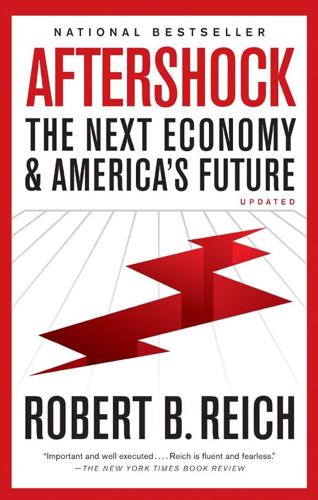
Aftershock: The Next Economy and America's Future
by
Robert B. Reich
Published 21 Sep 2010
The middle class, already burdened by high unemployment and flat or dropping wages, fights ever more furiously against any additional burdens, such as tax increases to support public schools or price increases resulting from regulations limiting carbon emissions. It’s a vicious cycle. The question, then, is how to move from a vicious cycle to a virtuous one—how to restore the widespread prosperity needed for growth, and how to get the growth necessary for widespread prosperity. The challenge is both economic and political. A fundamentally new economy is required—the next stage of capitalism. But how will we get there? And what will it look like when we do? There are essentially two paths from here. Only one will get us to where we want to be. PART II Backlash 1 The 2020 Election November 3, 2020. The newly formed Independence Party pulls enough votes away from both the Republican and Democratic candidates to give its own candidate, Margaret Jones, a plurality of votes, an electoral college victory, and the presidency.
…
If job seekers choose to enroll in programs that prepare them for fields in which labor is likely to be in short supply, such as nursing or teaching, they would receive income support for an additional year of training and education. As participants acquire the kinds of skills that are rewarded in the new economy and fill positions for which there are labor shortages, we could all expect to reap the benefits of this program in the longer term through stronger economic growth, higher tax revenues, and less dependence on social safety nets. I estimate the total new costs of a reemployment system to be $3 billion a year over and above the $2.35 billion that the federal government now spends on unemployment insurance in an average year.
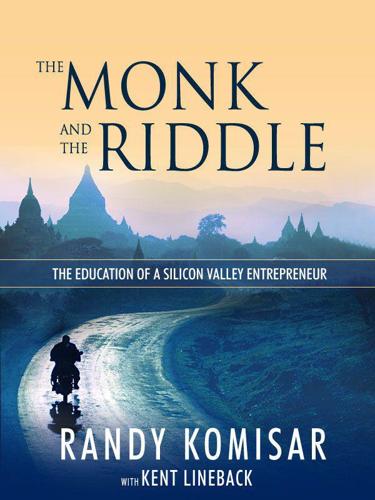
The Monk and the Riddle: The Education of a Silicon Valley Entrepreneur
by
Randy Komisar
Published 15 Mar 2000
A few of the venture capital firms are beginning to recognize the limitations of the current "stretched thin" situation, and there are, of course, some notable exceptions to the present trend. Regardless of the amount of attention they can spend on any single company, they are still some of the heroes of the new economy. Page 40 Nevertheless, for the past few years there has been no shortage of capital and new ideas in the Valley. Management talent has been the limiting factor. Startups require an odd mix of skills and personalities. Many top tier VCs use their credibility to attract big-name talent from corporate America, with the promise of huge payoffs in the Valley.
…
We were reminded, as was common practice with IPOs, that the company's employees and investors would be "locked up," or forbidden from trading in TiVo stock, for 180 days, thus ensuring a more manageable stock price in the six months following the offering. Finally, the SEC wanted clarification about my title, "Virtual CEO,'' and asked that it be changed to avoid misleading the market. Old dogs don't take well to new tricks, and it was once again obvious why the new economy germinated in the Valley. The board cautioned the management team to avoid becoming too distracted or euphoric about the IPO. Not even founders and management committed for the long haul can avoid some preoccupation with the IPO's life-changing Page 104 potential. The first day of trading can be mesmerizing for those who have worked tirelessly to build the company.
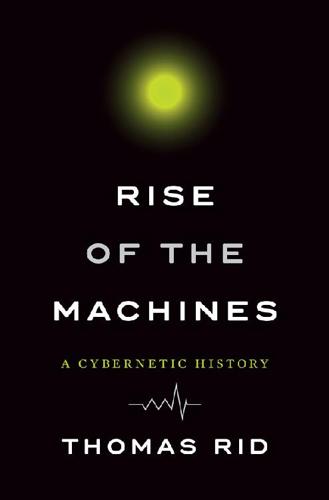
Rise of the Machines: A Cybernetic History
by
Thomas Rid
Published 27 Jun 2016
In the Persian Gulf War of 1991, perhaps America’s shortest and most successful ground war operation to date, the Pentagon overcame the mighty Iraqi army—and with it the lingering Vietnam hangover. Silicon Valley and America’s technology start-up scene, still bathing in the crisp utopian afterglow of the 1980s, watched the rise of the New Economy, with vertigo-inducing growth rates. Entrepreneurs rubbed their hands in anticipation. Intellectuals were inebriated by the simultaneous emergence of two revolutionary forces: personal computers and the internet. More and more PC owners connected their machines to the fast-growing global computer network, first with clunky, screeching modems, then with faster and faster broadband connections.
…
And although the two authors never referred to crypto anarchy or the c-punks, the publication gave wider currency to an emerging political philosophy. But the book’s success was short-lived—sharing this fate with the utopian ideology from which it sprang. Inspired by Vinge’s story and the cypherpunk list, a few entrepreneurs took the idea of the sovereign individual rather literally in those enthusiastic years before the crash of the New Economy. One of them was Ryan Lackey. Digital cash had fascinated Lackey since he was fifteen years old. He had already started an e-money start-up on Anguilla, a loosely regulated island, but he had run into trouble with the ruling family. An avid c-punk, he had hosted the list archives on an MIT server when he was a student in Boston.
…
He was living in the Other Plane.95 The rough life reflected HavenCo’s business situation. The company had five sturdy gray relay racks with blue plugs at the top, with space for forty-five servers. But it managed to put in and rent out only a dozen machines. The company never successfully raised sufficient seed money, not even in the bullish market of the New Economy before the crash. And the budget quickly ran thin. One of HavenCo’s main investors, Avi Friedman, was worried about the Y2K problem, so he withdrew about $2 million in cash, in $100 bills, and kept the cash at home. He doled out $1,500 at a time, to make minimum payments. Lackey started using his own credit cards, spending ever more money that he didn’t have.
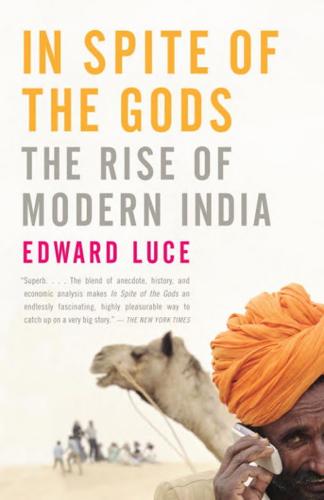
In Spite of the Gods: The Rise of Modern India
by
Edward Luce
Published 23 Aug 2006
For others, they represent a brash intrusion on the more lackadaisical world they cut through. To me, the new expressways provide an intriguing juxtaposition of India’s multispeed economics. Curiosity—and an instinct of self-preservation—means I occasionally move into the slow lane. One of the best ways of observing India’s galloping new economy is to count the number of car brands that whir past you in the fast lane. You tend to lose count at thirty or forty. In the early 1990s, as India was starting to relax import and investment restrictions on foreign manufacturers, you would at best have counted six or seven makes of car. More than 90 percent of them would have been Ambassadors, the stately but desperately uncomfortable colonial-era vehicles that are still used by VIPs, and Marutis, the cramped family passenger car, still manufactured under a joint venture between Suzuki of Japan and the Indian government.
…
But Alok found sock making and dealing with unionized shop-floor workers too predictable. So, to the horror and deep skepticism of his father, he struck out alone. Bathed in primary colors and adorned by retro-posters of early Bollywood films, the cheerful walls of Alok’s company offices radiate the signature décor of India’s new economy. Situated in midtown Mumbai in a district that was formerly dominated by textile mills, most of which went bankrupt in the 1980s, Alok’s surroundings reminded me of Clerkenwell in London, or Haight-Ashbury in San Francisco. The décor is what some people call postmodern. I spent a lot of time talking to Alok and some of his sixty employees at C2W.com—contest-to-win.com—an outfit that markets brands through the Internet, mobile phones, interactive TV shows, and other new technology.
…
If a Martian had dropped in on India’s top companies in the early 1990s and done a quick census of their white-collar management, it would have found people of male urban upper-caste background and few others. The Martian would get a more variegated picture today (upper castes are still preponderant in IT and other new economy businesses, but much less so than in the more established industries). In its strange way, India is coming to terms with modernity. The practice of meritocracy is not yet entrenched. But it is now at least getting generous lip service. In much of the business world, there are genuine changes taking place.

Traders, Guns & Money: Knowns and Unknowns in the Dazzling World of Derivatives
by
Satyajit Das
Published 15 Nov 2006
Trend chasers, ‘mo’ (momentum) buyers, kept buying because they kept making money; nobody could explain the overvaluation; the doomsayer’s position became untenable and, puzzled by the duration of overvaluation, even intelligent and honest analysts eventually succumbed, evolving complex theories of why it was different this time. The overvaluation was sustainable after all. Theories of the ‘new economy’ and the good returns allowed suspension of reality for a little longer but eventually, the Ponzi scheme collapsed.3 Every rising market is driven by a new paradigm, every crash is the same as the last crash. In 2001, the Internet bubble burst. The NASDAQ index fell 80%. Eliot Spitzer and the SEC (Securities and Exchange Commission) belatedly took up the issue of the analysts and some were banned from the securities industry.
…
Interest rates were 0%, the share market was down over 80 % from its dizzying heights, property prices had collapsed. Even the cost of golf club memberships, the real barometer of Japanese economic health, was plunging. There was no way that investment returns were near the required 3–4%. Tony Blair held forth about ‘Cool Britannia’; Clinton and Greenspan jammed on sax and talked up the New Economy; Japan was mired in endless gloom. A succession of leaders with contrasting hair styles tried unsuccessfully to revive the economy. For the investors, the only option was structured products like reverse dual currency bonds. There was the risk, but the insurance companies were trapped between a rock (do nothing and die) and a hard place (do something and probably die but with a small chance of survival).
…
The growth was good for Japan but a disaster for the PRDC business. Japanese interest rates went up quickly: ten year rates climbed from a microscopic 0.45% to a staggering 1.7% (a fourfold interest), 30 year rates doubled from 1.1% to 2.2%. The yen appreciated strongly against the dollar. The US dollar was plunging as the New Economy fell to earth with a thud as old gravity got hold of it. PRDC bonds were not called: the promised one or two year trade rapidly became a 30-year trade. The stronger yen meant that the high interest rates fell to 0%. The deals were deep under water. Under their antiquated accounting investors in Japan did not have to recognize the unrealized losses.
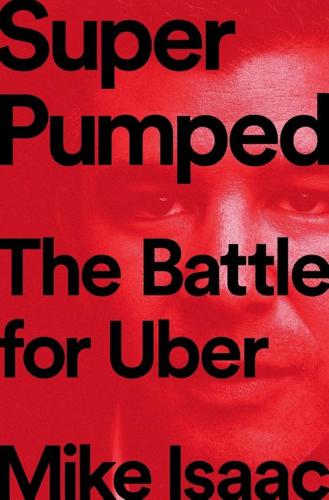
Super Pumped: The Battle for Uber
by
Mike Isaac
Published 2 Sep 2019
—NICCOLÒ MACHIAVELLI, 1513 Being super pumped gives us super powers, turning the hardest problems into amazing opportunities to do something great. —TRAVIS KALANICK, 2015 CONTENTS Prologue PART Ⅰ Chapter 1: X TO THE X Chapter 2: THE MAKING OF A FOUNDER Chapter 3: POST-POP DEPRESSION Chapter 4: A NEW ECONOMY Chapter 5: UPWARDLY IMMOBILE PART Ⅱ Chapter 6: "LET BUILDERS BUILD" Chapter 7: THE TALLEST MAN IN VENTURE CAPITAL Chapter 8: PAS DE DEUX Chapter 9: CHAMPION'S MINDSET Chapter 10: THE HOMESHOW PART Ⅲ Chapter 11: BIG BROTHER AND LITTLE BROTHER Chapter 12: GROWTH Chapter 13: THE CHARM OFFENSIVE Chapter 14: CULTURE WARS Chapter 15: EMPIRE BUILDING Chapter 16: THE APPLE PROBLEM Chapter 17: "THE BEST DEFENSE..."
…
They exalt founders, put them on pedestals and say ‘we’re just the measly VCs!’ ” Kalanick later said to a group of entrepreneurs of his early startup experiences. “It is in the VC’s nature to kill a founding CEO. It just is.” Chapter 3 notes § Kalanick saw to it that the tax withholdings eventually made their way to the IRS. Chapter 4 A NEW ECONOMY Travis Kalanick sold Red Swoosh just as a national crisis was beginning to unfold. It was April 2007. For years, American banks had been doling out loans to first-time, “subprime” home buyers, whose financial histories had historically made it impossible for them to secure home loans. But changes in national fiscal policy in the late 1990s led banks to welcome subprime buyers in record high numbers, signing them to seemingly affordable adjustable-rate mortgages, and then packaging these mortgages into derivative products and selling them to other investors.
…
: BAMM.TV, “FailCon 2011.” 30 “VC’s ain’t shit but hos and tricks”: BAMM.TV, “FailCon 2011.” 31 he sold Red Swoosh: Liz Gannes, “Uber CEO Travis Kalanick on How He Failed and Lived to Tell the Tale,” D: All Things Digital, November 8, 2011, http://allthingsd.com/20111108/uber-ceo-travis-kalanick-on-how-he-failed-and-lived-to-tell-the-tale/. 32 “It is in the VC’s nature”: TechCo Media, “Travis Kalanick, Founder & CEO of Uber—Tech Cocktail Startup Mixology,” YouTube video, 34:35, June 14, 2012, https://www.youtube.com/watch?v=Lrp0me9iJ_U. Chapter 4: A NEW ECONOMY 33 seized control of Fannie Mae: Stephen Labaton and Edmund L. Andrews, “In Rescue to Stabilize Lending, U.S. Takes Over Mortgage Finance Titans,” New York Times, September 7, 2008, https://www.nytimes.com/2008/09/08/business/08fannie.html. 34 75 percent of American households: U.S. Bureau of Labor Statistics, “More than 75 Percent of American Households Own Computers,” Beyond the Numbers 1, no 4 (2010), https://www.bls.gov/opub/btn/archive/more-than-75-percent-of-american-households-own-computers.pdf. 34 more than half of American adults: John B.

Surveillance Valley: The Rise of the Military-Digital Complex
by
Yasha Levine
Published 6 Feb 2018
It launched a television subsidiary and a search engine called HotBot. By 1996, Louis Rossetto was ready to cash in on the boom and take the company public. He recruited Goldman Sachs to make it happen, which gave Wired an estimated value of $450 million. The magazine was the face of the dot-com boom and an evangelist for the New Economy, a revolutionary moment in history in which technological progress was supposed to rewrite all the rules and make everything that had come before irrelevant and outdated. America’s computer industry press dated to the 1960s. It wasn’t flashy or hip, but it covered the emerging computer and networking business very well—it did not shy away from critical reporting.
…
Even as it expanded into a transnational multi-billion-dollar corporation, Google managed to retain its geekily innocent “Don’t Be Evil” image. It convinced its users that everything it did was driven by a desire to help humanity. That’s the story you’ll find in just about every popular book on Google: a gee-whiz tale about two brilliant nerds from Stanford who turned a college project into an epoch-defining New Economy dynamo, a company that embodied every utopian promise of the networked society: empowerment, knowledge, democracy. For a while, it felt true. Maybe this really was the beginning of a new, highly networked world order, where the old structures—militaries, corporations, governments—were helpless before the leveling power of the Internet.
…
Rossetto expanded this quote into a full-blown manifesto in Wired’s UK edition: “The most fascinating and powerful people today are not politicians or priests, or generals or pundits, but the vanguard who are integrating digital technologies into their business and personal lives, and causing social changes so profound that their only parallel is probably the discovery of fire.” 2. Kevin Kelly, New Rules for the New Economy: 10 Radical Strategies for a Connected World (New York: Viking Adult, 1998). 3. Rich Karlgaard and Michael Malone, “City vs. Country: Tom Peters & George Gilder Debate the Impact of Technology on Location,” Forbes ASAP, February 27, 1995. 4. “Task Force to Focus on Information Revolution,” Deseret (UT) News, September 15, 1993, http://www.deseretnews.com/article/309821/TASK-FORCE-TO-FOCUS-ON-INFORMATION-REVOLUTION.html. 5.
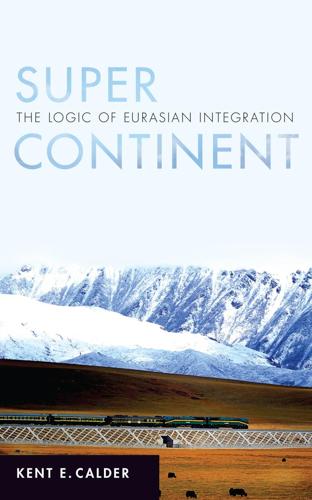
Super Continent: The Logic of Eurasian Integration
by
Kent E. Calder
Published 28 Apr 2019
This plan focused on the development of ten industries, including next-generation information technology, robotics, and automobiles powered by alternate energy.7 The program, recently deemphasized formally in the face of foreign criticism, is supported by subsidies from government-run investment funds.8 It is in many ways synergistic with the ambitious connectivity programs embodied in the BRI, especially in the transportation and telecommunications areas.9 Another key element of recent Chinese industrial policy has been providing a favorable environment for “new economy” enterprises in e-commerce.10 Quiet Revolution in China 105 Finance: Enhanced Fire Power for Connectivity However desirable Eurasian connectivity might be for China from a longterm geostrategic or geo-economic standpoint, market mechanisms do not naturally generate such an outcome. Government financial support, in concert with industrial policy, has played a central role in generating that connectivity.
…
They operate in complementary ways and subscribe to different strategic goals, yet all support the Chinese government in promoting the reconnection of Eurasia. The Chinese government employs a variety of specific tactics to encourage cooperation by these individual firms. One approach, especially important for “new economy” firms, is protection against foreign competition. A second is subsidies in targeted areas, such as batteries, electric vehicles, and telecommunications. A third tool is manipulation of corporate vulnerabilities. Alibaba, for example, is listed on the New York Stock Exchange through a complex shareholding structure of questionable legality.33 Were it to run afoul of the Chinese state, the company would be highly vulnerable.
…
US Department of Labor, Bureau of Labor Statistics, “Union Members Summary,” Economic News Release, January 19, 2018, https://www.bls.gov/news.release/union2.nr0.htm. Notes to Chapters 9 and 10 299 78. Heather Long, “U.S. Inequality Keeps Getting Uglier,” CNN Money, December 22, 2016, http://money.cnn.com/2016/12/22/news/economy/us-inequality-worse/. 79. Zakaria, “Populism on the March.” 80. Author’s calculation based on World Bank, “GDP, PPP (Constant 2011 International $),” World Development Indicators, 2015, https://data.worldbank.org/products/wdi. 81. Congressional Budget Office, “Historical Budget Data,” April 2018, https://www .cbo.gov/about/products/budget-economic-data#2. 82.
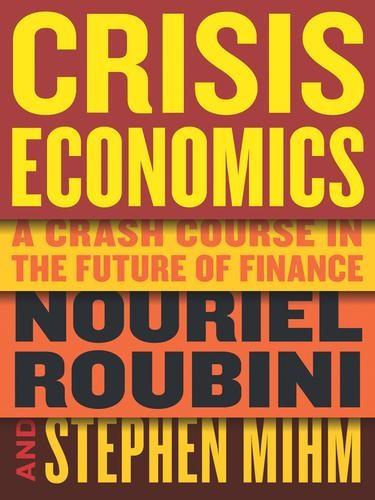
Crisis Economics: A Crash Course in the Future of Finance
by
Nouriel Roubini
and
Stephen Mihm
Published 10 May 2010
Chapter 1 The White Swan When did the boom begin? Perhaps it began with the sudden mania for flipping real estate, when first-time speculators bought and sold subdivision lots like shares of stock, doubling and tripling their profits in weeks if not days. Or possibly things got out of balance when the allure of a new economy founded on new technology and new industries drew ordinary people to wager their life savings on Wall Street. Politicians and policy makers, far from standing in the way of these get-rich-quick schemes, encouraged them. No less an authority than the president of the United States proclaimed that government should not bother business, while the Federal Reserve did little to stem the speculative tide.
…
The collapse revealed a frightening if familiar truth: the homes of subprime borrowers were not the only structures standing on the proverbial fault line; countless towers of leverage and debt had been built there too. Financial Innovation Many bubbles begin when a burst of innovation or technological progress heralds the dawn of a new economy. In the 1840s Great Britain endured a mania driven by a new technology: the railroad. In 1830 the first commercially successful railroad began carrying passengers between Manchester and Liverpool; thereafter investors bought shares in companies that would build even more profitable lines. During the height of the boom in 1845-46, share prices of railroad stocks soared, and corporations built thousands of miles of track, much of it redundant and unnecessary.
…
For starters, it generates moral hazard on a grand scale. Watching the Fed over the past two-plus decades, investors now have every reason to conclude that central banks will do nothing to stop a speculative bubble from forming and growing—and in fact may even encourage it, becoming cheerleaders for the “new economy” or the virtues of home ownership—but will do everything in their power to limit the damage. This is extraordinarily problematic. If investors believe the Fed will save them, they’ll take even more risks the next time around. Likewise, they’ll know that when the other shoe finally drops, the Fed will slash interest rates to rock-bottom levels, creating opportunities to speculate in some even bigger bubble.
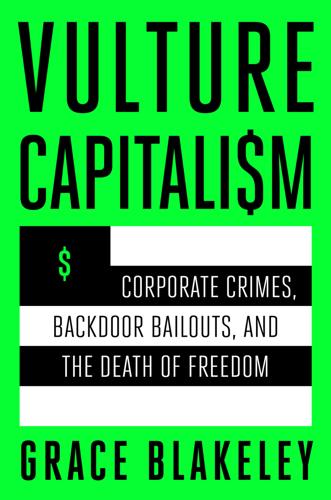
Vulture Capitalism: Corporate Crimes, Backdoor Bailouts, and the Death of Freedom
by
Grace Blakeley
Published 11 Mar 2024
Yet both these campaigns, and the movements that emerged from them, shifted the conversation on issues ranging from inequality to climate breakdown, as well as leading to new organizations that endure to this day. Several organizations that have survived Corbynism—from the World Transformed festival that takes place alongside the Labour conference every year, to Novara Media and Tribune magazine, for which I am a columnist, to the New Economy Organisers Network (NEON), which provided me with my media training—can trace some part of their organizational history back to networks formed during these years. Resistance can always be creative, even if it is framed in purely negative terms. As we enter a world of pervasive ecological breakdown, direct action will become even more important to resist projects that would further compromise the environment upon which we all depend.
…
Gallagher and Richard Kozul-Wright, The Case for a New Bretton Woods (London: Wiley, 2022). 76. Ibid. 77. For a fascinating example that looks at the centrality of Brazilian workers to campaigns for unionization in the gig economy in the UK, see Callum Cant, Riding for Deliveroo: Resistance in the New Economy (London: Wiley, 2019). 78. Karl Marx, Grundrisse: Foundations of the Critique of Political Economy (London: Penguin UK, 2005). 79. For a discussion see David Harvey, “We Need a Collective Response to the Collective Dilemma of Coronavirus,” Jacobin, April 24, 2020, https://jacobin.com/2020/04/david-harvey-coronavirus-pandemic-capital-economy.
…
human capital and, 33 international rules and norms in, 203–4 key stakeholders in, 35–36 managerialism and, 34–35, 84, 100, 108, 216 political vs. economic influence and, 33 post–World War II popularity of, x–xii, 24–26 as regime of “managerial governance,” 34–35 resistance to labor movements, 15, 31, 33–34, 62, 64–65, 77–78, 148, 160, 216–17, 218, 220, 221, 252–53 in South Africa, 203 state as rule-setter vs. planner, 149–52, 165, 204 state role in maintaining market competition, 148 structural adjustment programs (SAPs), 198–202 as term, x vested interests in, 10, 32, 34, 35–36, 52, 56, 119, 120, 151–52, 246, 259, 268–69 violence and coercive power of, 33–34 Neumann, Adam, 109–13 New Deal reforms, 26, 28 New Economics Foundation (UK), 255 New Economy Organisers Network (NEON), 250 New International Economic Order (NIEO), 261 New Taylorism, 100 Nielsen, Juanita, 228 Nine Years’ War (1688–97), 124–25 Nixon, Richard, 241, 242–43 Nkrumah, Kwame, 177, 190, 191, 200, 208 Non-Aligned Movement, 190–92, 193 Norway COVID-19 response, 57 developmentalism and, 137 Nudge (Thaler and Sunstein), 162–63 O Obama, Barack, 41, 251 Occupy movement, 249–50 oligopoly, prices and, 94–95 On the Principles of Political Economy and Taxation (Ricardo), 179–80 OpenSecrets, 43 opioid epidemic, 55–56 Our Lives in Their Portfolios (Christophers), 136 OxyContin, 55–56 P Palmer, Geoffrey H., 43 Paltrow, Gwyneth, 110 Paltrow, Rebekah, 110 Panama, as tax haven, 43, 132 Panama Papers, 43 Panitch, Leo, 31, 198, 210 parliamentary socialism (Miliband), 247 participatory budgeting (PB), 232–33, 235–36, 247, 258–59 Paulson, Henry, 49 Paycheck Protection Program (PPP, US), 41–45 Pelosi, Nancy, 42 People’s Asset Manager (PAM), 257 People’s Grocery Initiative (Mississippi), 237 People’s Republic of Walmart, The (Phillips and Rozworski), 88 pharmaceuticals industry, 55–56 Philip Morris, 194 Philippines, US colonialism and, 173–79 Philippon, Thomas, 87–88 Phillips, Leigh, 14, 88, 264 Pinochet, Augusto, 34, 246 Pistor, Katharina, 131 Platform Cooperative Consortium, 254 Poland Balcerowicz Plan, 201 labor movement and, 78 Polanyi, Karl, 143 Ponzi schemes, 120–21, 156–57 Poulantzas, Nicos, 158–59 Prebisch, Raúl, 184–85, 199 Prince, Erik, 104 Prior, David, 155 prison-industrial complex (US), 33–34 Prison Notebooks (Gramsci), 20 privatization, 32–33 of authority, 102–3 Global South and, 198–99, 206–8 private law and, 130–32 privatized Keynesianism, 117–18 in Russia (former Soviet Union), 201 in the United Kingdom, 218 in Zambia, 206–8 Project Cybersyn (Chile), 245–46, 247, 265, 266 Project on Government Oversight (US), 43 Protocols of the Elders of Zion, The, 19 Puerto Rico, US colonialism and, 173, 174 Pulse nightclub (Florida), 103 Purdue Pharma, 55–56 Putin, Vladimir, 44, 140, 208 Q quantitative easing (QE), 127–28, 129, 136 R Rajan, Raghuram, 114 Raymond, Lee, 139–40 Raytheon Technologies, 219 Reagan, Ronald, 31, 62, 176 Reconstructing the Corporation (Hayden and Bodie), 254 Republican Party (US) deregulation trend, 7 fossil-fuel industry and, 140, 141 Resistance Dairy (Argentina), 234 Ricardo, David, 146, 179–81 Road to Serfdom, The (Hayek), vii, xi, 34, 204 Robison, Peter, 6 Rockwell Collins, 219 Rodney, Walter, 185 Rolling Jubilee, 249–50 Röpke, Wilhelm, 150, 203, 208 Rostow, Walt, 181, 199 Roth, Joseph F., 43 Rothschild, 123–24 Roubini, Nouriel, 114 Roundup, 90, 124 Rozworski, Michal, 14, 88, 264 Ruffalo, Mark, 91 Russia (former Soviet Union) centralized planning and, ix Cold War and, ix, xx COVID-19 response, 57 dependency theory and, 185–86 fossil-fuel industry and, 140 Gosplan central planning agency, 109 privatization in, 201 Ukraine and, 44, 64, 201 World War II and, 181 Ruth’s Hospitality Group, 41 S Sachs, Jeffrey, 201 Sachs-Warner hypothesis, 181–82 Salomon Smith Barney, 120 Sánchez Gordillo, Juan Manuel, 229–30 Sanders, Bernie, 250 Sanofi, 46 Sato, Hajime, 172 Saudi Arabia, 46, 54, 140, 209, 220–21 Sawant, Kshama, 79–80 Schlumberger, 45 Schmidt, Robert, 23–24 Scholar, Tom, 156 Schumpeter, Joseph, 85–88, 94, 95–96, 117 Serageldin, Kareem, 52 service workers, 98–99 Shake Shack, 41 Shanahan, Patrick, 8 shareholder distributions of Boeing, 6 COVID-19 aid to corporations and, 45–47, 59–60, 64 of Ford Motor Company, 28, 29–30, 31 Shaxson, Nicholas, 131–32 Shell, 64 Shock Doctrine, The (Klein), 38, 193, 198 Siegel Group, 45 Silicon Valley Bank, 65 Sinema, Kyrsten, 141 Singapore, developmentalism and, 137 Slobocian, Quinn, 203 Smith, Adam, 14, 85, 103–4, 145–47, 151, 165 Smoke, Ben, 45 social contract theory, 143–52 social democracy cartelization problem, 259–60 democratizing the future and, 264–66 neoliberalism vs., 33–34 post–World War II, 24–25 socialism capitalism vs., 221 centralized planning and, 221 Coase and, 83, 84 COVID-19 pandemic and, xx, 59, 61 dangers of, x democracy as synonymous with (Meiksins Wood), xviii democratic socialism, 216–17, 241–48, 265 expanding collective ownership of firms, 253–55, 257 freedom in, xix Gramsci and, 20 Hayek and, x–xi lack of class divisions in, xix parliamentary (Miliband), 247 socialized capitalism (Galbraith), 97–98 state planning vs., 66 technology in transition to, 265 United Kingdom resistance to, 220, 221 Société Generale, 49 SoftBank, 110–13, 117, 154 Son, Masayoshi, 110–13, 154, 171 South Africa prison torture techniques, 102–3 vulture capitalism and, 202–4 South Korea, structural adjustment programs (SAPs) and, 200 Southwest Airlines, 5, 10, 16 Soviet Union, see Russia (former Soviet Union) Spain Barcelona, Decidim participatory budgeting program, 236, 258–59 labor movement and, 78, 229–30 Spanish Empire, 173 specialization, 180 Stages of Economic Growth (Rostow), 181 stakeholder capitalism, 35–36, 135–36, 148 State and Revolution, The (Lenin), 59 State in Capitalist Society, The (R.
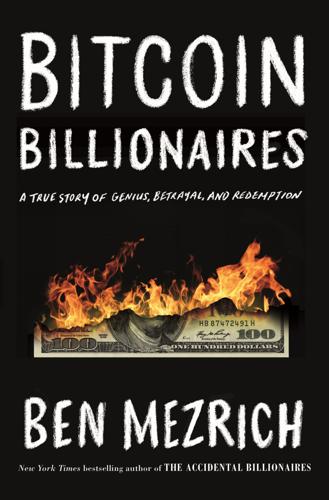
Bitcoin Billionaires: A True Story of Genius, Betrayal, and Redemption
by
Ben Mezrich
Published 20 May 2019
But Tyler knew that the sit-down with Mellon was different from many of the meetings that had come before. Mellon was not there to learn; he was there to confirm. His excitement and conviction reminded Tyler of how he and his brother had felt in the days leading up to their own headfirst plunge into the new economy. “Here’s the deal,” Mellon said, once they’d exchanged pleasantries and a few stories about people they knew in common. “I’ve done a lot of reading since we connected over email, and I’m more than intrigued. I think you boys are onto something. I think you’ve found a rocket ship.” He paused. “My problem is, I don’t know how to get on.”
…
Almost as soon as the room came to order, muffling the clatter of keyboards, scraping chair legs, and running audio equipment, Lawsky introduced the session, made short work of the swearing in, and then dove into the matter at hand. Lawsky quickly turned to the reason he had gathered the brightest stars in the new economy to his boardroom: “The goal is to put forward a proposed regulatory framework for virtual currency firms operating in the state of New York. We’d be the first state in the nation. And clearly when it comes to virtual currencies, let’s admit it, regulators are in new and somewhat uncharted waters.”
…
In the last year and a half a set of people were attracted to two other aspects—first, it’s freeish, dramatically reducing transaction costs. And it’s programmable. This changed the nature of the Bitcoin population.” And, Liew added, this was a very good thing for those, like him, who wanted to invest in the new economy. “The market of radical libertarians is not very big. The market of criminals is not very big. But offering free transaction costs—you have a market of everyone in the world.” It was a VC’s answer to the question. The big money wasn’t interested in backing something dirty or illegal—not for moral reasons, but because those things weren’t good for business.

The Warhol Economy
by
Elizabeth Currid-Halkett
Published 15 Jan 2020
As people became dependent on one another because of the actual divisions of labor involved in making new products, they discovered that “nonmaterial capital”—human interaction and the sharing of ideas—is equally important to the survival of the company or industry. Economic geographer Michael Storper calls this “untraded interdependencies,” and they are crucial in understanding why some places did better than others in the new economy.6 Annalee Saxenian, a political scientist and urban planner who is now the dean of the School of Information Management Science at the University of California, Berkeley, explored one of these differences, comparing the success of Silicon Valley with the apparent failure of Boston’s Route 128.
…
My interviews point toward two other intrinsically linked characteristics of the creative economy, characteristics that make its social dynamics so important. First—a point that Bill McMullen’s story encapsulates—creative industries can be instantaneous in their demand for new product, often requiring new creative skills at a moment’s notice. As I discussed earlier, while social scientists have noted that the new economy forces firms to acquire flexibility and new collaborations to keep up with changing consumer preferences, the dynamics of creative economies are far more capricious and flexible than many other human capital–driven industries. Cultural goods are both trendy and ephemeral (a pair of designer jeans has the half-life of one season at best), and the cross-fertilization that occurs within creative industries requires a diverse labor pool and set of resources.
…
Florida, Richard. (2000a). “The Economic Geography of Talent.” H. John Heinz School of Public Policy and Management. Carnegie Mellon University, September. ———. (2000b). Pittsburgh Let’s Wake Up and Play. Pittsburgh Post-Gazette. June 11. ———. (2000c). Competing in the Age of Talent: Quality of Place and the New Economy. A report prepared for R. K. Mellon Foundation, Heinz Endowments and Sustainable Pittsburgh. January. ———. (2002a). Bohemia and Economic Geography. Journal of Economic Geography 2, 1:55–71. ———. (2002b). The Rise of the Creative Class: And How It’s Transforming Work, Leisure, Community and Everyday Life, New York: Basic Books. ———. (2004a).
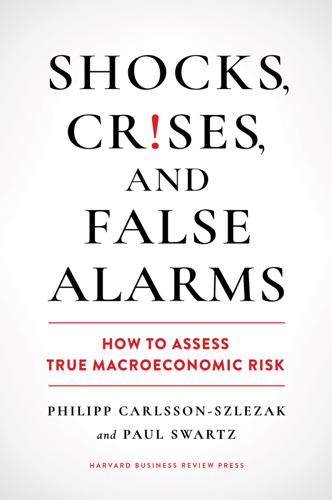
Shocks, Crises, and False Alarms: How to Assess True Macroeconomic Risk
by
Philipp Carlsson-Szlezak
and
Paul Swartz
Published 8 Jul 2024
And even if the timing of any slowdown is uncertain, remember that no one escapes the gravity of growth. Changing the growth model is hard. Up-and-comers should not be deceived by their own success, and those selling into fast-growing markets should have their own assessment of how growth can continue. What has brought new economies this far will have to be reinvented. The challenge is to see how long accelerated factor accumulation (particularly capital) can deliver elevated growth, without building too many imbalances and low-return assets on the back of debt. Being able and willing to adjust growth models is key but fraught with risks.
…
CHAPTER 16 Learning to Love and Live with Bubbles Between 1989 and 1993 the price of a breeding pair of emus, large birds heralded as the “new red meat,” went from a few hundred dollars to $28,000. In the mid-2010s, the fracking rig count went from a few hundred to well over a thousand amid talk of a new energy market. In the late 1990s, against the backdrop of a so-called new economy, the tech-heavy Nasdaq equity index shot up nearly 90% in fewer than five months.1 And toward the end of the 1920s, equity valuations reached a multiple of over 30 times earnings.2 These are all examples of bubbles: unsustainable trends that build over time and typically deflate rapidly. They also have very different macroeconomic consequences—which is what makes them relevant to us and why we devote an entire chapter to them.
…
For example, not only was free trade going to help growth, but growth would also be an instrument of political convergence to liberal democracy. As former adversaries became wealthy, they would become democratic allies, a rosy narrative that helped the WTO’s enlargement in 2001. The bubble also coincided with the economic boom of the 1990s, when a technology-driven surge in productivity growth promised a new economy. And each dimension pointed away from history, toward a brighter future. Confirmation bias took hold: every data point that confirmed convergence was celebrated, and those that confounded the narrative were seen as anomalous. History was history. But the convergence bubble, and the rejection of history that helped fuel it, also provided a catalyst for the “arrogance of power.”9 Limited strategic competition caused the United States to mistake a unipolar moment for unfettered and enduring control.

Aerotropolis
by
John D. Kasarda
and
Greg Lindsay
Published 2 Jan 2009
Memphis and Louisville stand the Korean model on its head, consolidating goods in blimp hangars instead of customers in sixty-story apartment blocks. The management guru Peter Drucker surveyed the dot-com landscape around the time Hsieh experienced his epiphany. Drucker was unimpressed by the New Economy’s supposed revolutions, save one. “E-commerce is to the Information Revolution what the railroad was to the Industrial Revolution—a totally new, totally unprecedented, totally unexpected development,” he wrote in The Atlantic. In the new mental geography created by the railroad, humanity mastered distance.
…
Transportation analyst Kenneth Button confirmed as much in another study published during the dot-com bubble. Analyzing the catalytic effects of European flights from forty-one American cities, he discovered that simply increasing the number of flights to the Continent from three to four daily would create almost three thousand “new economy” jobs. (Picture the khaki-clad visionaries behind Pets.com.) Overall, he calculated that every thousand passengers crossing the Atlantic created somewhere between forty-four and seventy-three new jobs around the hubs. A similar formula applies to all air traffic. When the economist Jan Brueckner ran the numbers for ninety-one airports from Albuquerque to Wichita, he found that a 10 percent increase in passengers led to a 1 percent bump in employment.
…
Kasarda prefers categorical examples to precise ones, befitting a man trained to take a tectonic view of the world. In his words, “All kinds of activities are served by and enhanced by the airport. Whether it’s supply chains, whether it’s enterprise networks, whether it’s biosciences and pharmaceuticals and time-sensitive organic materials, the airport itself is really the nucleus of a range of ‘New Economy’ functions,” with the ultimate aim of bolstering the city’s “competitiveness, job creation, and quality of life.” His idiom is a mash-up of consultant-speak and academic jargon, each one wielded to differing but complementary effect. He hammers home his collection of catchphrases like a good thought-leader should.
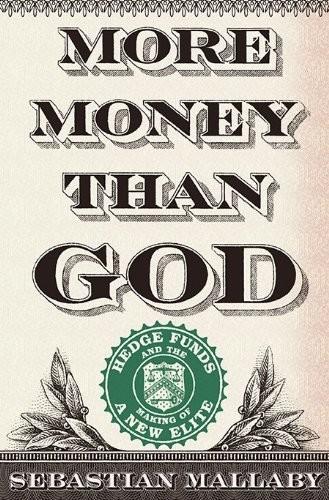
More Money Than God: Hedge Funds and the Making of a New Elite
by
Sebastian Mallaby
Published 9 Jun 2010
First, Druckenmiller got stuck on the wrong side of Europe’s fledgling currency, the euro. Next, the NASDAQ stocks that he had sold continued to rush upward. Carson Levit and Diane Hakala, Quantum’s in-house new-economy enthusiasts, were still running technology subportfolios, surfing the bubble, and all of a sudden the big man’s anxieties shifted. Having earlier worried that the bubble might blow up in his face, he now worried about losing face: He had doubted the new economy and misjudged the euro, and now these kids and their radioactive stocks were making a fool of him. Not for the first time, Druckenmiller turned on a dime. He bought all his tech stocks back and gave Levit and Hakala room to run.
…
In May 1999 Druckenmiller allocated some of Quantum’s capital to a new hire named Carson Levit, who loaded up on dot-com stocks. The skeptic who had shorted the bubble now climbed aboard the bandwagon. Two months later, Druckenmiller attended the annual technology and media conference in Sun Valley, Idaho. It was a festival of new-economy bullishness and buzz: Everyone from Hollywood moguls to presidential contenders to Silicon Valley whiz kids got together in the shadow of breathtaking mountains; and even Warren Buffett, whose value-investing style had been hammered by the bubble, could be seen pottering about in a polo shirt and baseball cap, chatting with Bill Gates and Michael Bloomberg.20 When Druckenmiller returned from Sun Valley that summer, he had the zeal of the convert.21 He allocated more of Quantum’s capital to Carson Levit and hired a second technology enthusiast named Diane Hakala, whose hobby was to perform dizzying spins as an aerobatic pilot.
…
Mary Meeker, the Morgan Stanley analyst who had been dubbed the “Queen of the Net” by Barron’s, conceded that old-school value investors, brought up on the classic teachings of Ben Graham and David Dodd, might have trouble seeing the value in a company that would report losses if it respected the accounting rules.25 But that was the old timers’ problem. At one new-economy gathering, a banker was overheard saying, “No traditional Graham and Dodd investor invested in AOL. They shorted it. And got fucked. They’re learning the new model.”26 A few months later, a hedge fund called Greenlight Capital took another shot at a puffed-up Internet outfit. Its target was Chemdex, a business-to-business network for companies to sell chemicals to one another.
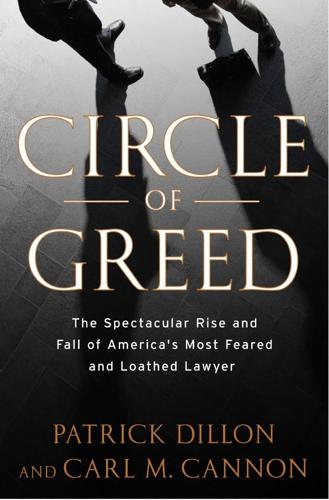
Circle of Greed: The Spectacular Rise and Fall of the Lawyer Who Brought Corporate America to Its Knees
by
Patrick Dillon
and
Carl M. Cannon
Published 2 Mar 2010
Cannon kept track of Lerach’s legal activities over the years, weighing in occasionally with an article about Lerach’s effect on the nation’s legal, business, and political landscape. Meanwhile, as an editor and columnist, Pat found himself writing and commissioning articles about the long shadow Lerach cast over Silicon Valley and the high-rolling founders of the New Economy. At one point, Pat and Bill intended to write a book together entitled “Plundering America,” about Lerach’s war of attrition against corporate fraud in America. Those plans were put on hold for reasons now revealed in our book, produced a decade after “Plundering America” was scratched. After it became apparent that the Justice Department was in the process of terminating Lerach’s legal career, Dillon called Lerach to inform him that there was still a book to be done, but it would be about Lerach, not coauthored by him.
…
He sued accountant firms such as Touche Ross and Arthur Andersen; he sued financial institutions Citibank, Merrill Lynch, and Drexel Burnham; he sued telecommunications companies as well as multi-complex behemoths such as Enron and Halliburton. And he relished the animosity he engendered doing it. Lerach also evolved into a prominent Democratic Party donor. In time the (mostly) liberal practitioners of the New Economy, both in and out of Silicon Valley, would express surprise that Lerach didn’t cut them any slack for their politics, their record of job creation, or the innovations they produced that made life better for so many Americans. This was a misreading of Lerach’s worldview, even though he expressed admiration for capitalism, just not unbridled capitalism.
…
He’d gone from being a Goldwater Republican to a Great Society Democrat, and he saw his role as being supplemental to government—not at odds with it—precisely because business executives were forever figuring out ways to circumvent regulators and manipulate the market to their own benefit. For Lerach, it wasn’t really about national politics, at least not when he started out: in his first big case with political overtones, four of the so-called Keating Five were Democratic senators. Bill Lerach didn’t care about the next so-called “killer app” in Silicon Valley, or that the New Economy’s proprietors were creating jobs and increasing human productivity and connectivity in this place the romantics once called the Valley of the Heart’s Delight due to its abundance of fruit orchards. Milberg Weiss had taken him on as partner, allowing him to reside in San Diego if he could drum up cases.
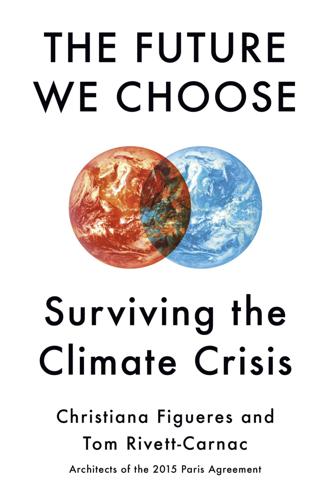
The Future We Choose: Surviving the Climate Crisis
by
Christiana Figueres
and
Tom Rivett-Carnac
Published 25 Feb 2020
Without denying the bad news, you must make a point of focusing on all the good news regarding climate change, such as the constantly dropping prices of renewables, an increasing number of countries taking on net-zero-emissions targets by 2050 or before, the multiple cities banning internal combustion vehicles, and the rising levels of capital shifting from the old to the new economy. None of this is happening yet at the necessary scale, but it is happening. Optimism is about being able to intentionally identify and prescribe the desired future so as to actively pull it closer. It is always easier to cling to certainty than it is to work for something because it is right and good, regardless of whether it currently stands a decent chance of success.
…
Abby Norman, “Aliens, Autonomous Cars, and AI: This Is the World of 2118,” Futurism.com, January 11, 2018, https://futurism.com/2118-century-predictions; Matthew Claudel and Carlo Ratti, “Full Speed Ahead: How the Driverless Car Could Transform Cities,” McKinsey & Company, August 2015, https://www.mckinsey.com/business-functions/sustainability/our-insights/full-speed-ahead-how-the-driverless-car-could-transform-cities. 18. Brad Plumer, “Cars Take Up Way Too Much Space in Cities. New Technology Could Change That,” Vox, 2016, https://www.vox.com/a/new-economy-future/cars-cities-technologies; Vanessa Bates Ramirez, “The Future of Cars Is Electric, Autonomous, and Shared—Here’s How We’ll Get There,” Singularity Hub, August 23, 2018, https://singularityhub.com/2018/08/23/the-future-of-cars-is-electric-autonomous-and-shared-heres-how-well-get-there/. 19.

The View From Flyover Country: Dispatches From the Forgotten America
by
Sarah Kendzior
Published 24 Apr 2015
It is another to raise a child knowing that no matter how hard they work, how talented they are, how big they dream, they will not have opportunities—because in the new economy, opportunities are bought, not earned. You know this, but you cannot tell this to a child. The millennial parent is always Santa, always a little bit of a liar. “Class Privilege” Some may argue that the children of millennials do not have it so bad. Even if their parents cannot save enough to pay for college, surely they can apply for scholarships. But in the new economy, scholarships are increasingly reserved for the rich. According to a report from the New America Foundation, colleges give “merit aid” to wealthy students who can afford to pay nearly full tuition at the expense of aid to low-income students.
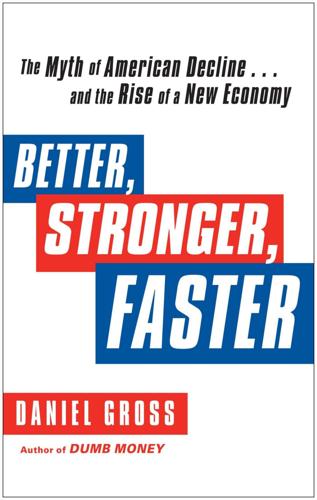
Better, Stronger, Faster: The Myth of American Decline . . . And the Rise of a New Economy
by
Daniel Gross
Published 7 May 2012
For more information or to book an event contact the Simon & Schuster Speakers Bureau at 1-866-248-3049 or visit our website at www.simonspeakers.com. Library of Congress Cataloging-in-Publication Data Gross, Daniel, 1967- Better, stronger, faster : the myth of American decline … and the rise of a new economy / Daniel Gross. p. cm. Includes bibliographical references and index. 1. United States—Economic policy—2009- 2. United States—Foreign economic relations. 3. United States—Commerce. 4. Industrial policy—United States. 5. Economic stabilization—United States. I. Title. HC106.84.G76 2012 330.973—dc23 2012004764 ISBN 978-1-4516-2128-0 ISBN 978-1-4516-2136-5 (ebook) For Candi—again Contents Chapter 1.
…
The ways the U.S. economy has become more engaged with the world since the Great Recession should give hope to those concerned about decline. For many industries, the answer to difficult, persistent problems came from abroad: attract new capital through foreign direct investment and find new customers through exports and inports. This model for thriving in the new economy certainly imposes new burdens and obligations on companies, businesspeople, and workers: they have to travel more, reach out, and be willing to spend more time away from home. However, the example of one state that reversed decline shows that tapping into these forces can encourage people who have left to come back home.
…
It has to improve the systems and infrastructure that exist and make the existing systems more efficient and effective. The investment is necessary because some bridges and roads are falling apart and because we need to make up for past neglect. But we need the investment more for the future. The new economy of online retailing and e-commerce, rising exports, and more tourism, goods, services, and people whizzing around the world, which has already done so much to spur growth, demands better infrastructure of all types. The Panama Canal is undergoing a $5.25 billion widening and expansion program that will allow for the passage of larger ships.

Rogue States
by
Noam Chomsky
Published 9 Jul 2015
Here is a front-page story in the New York Times on “an economic miracle in the United States.” They describe “the prosperous new economy” in “the nation’s most Republican state,” with its “deep-seated distrust of the Federal Government” and its “tradition of self-reliance,”—it happens to be Idaho.17 They point out, as is conventional, that there is downside to the economic miracle: Idaho also breaks national records in child abuse and imprisonment, the unions have been wiped out, reading scores are going down, and so on. But it’s a prosperous new economy, and the most Republican state, and so on. From the article we don’t learn anything about the economic miracle, so you look elsewhere.
…
The same DOE publication goes on to say that one of the purposes of the National Lab is to “assist start-up companies in attracting and securing state and federal grants and lines of credit”—that’s what is known as entrepreneurial initiative and rugged individualism. In brief, the public invests massively, for 50 years, hands the gifts over to private power and profit, and we now admire this prosperous new economy, in the nation’s most Republican state, with its deep-seated distrust of the federal government and its tradition of self-reliance. Again, it takes a good education to handle all of this, but that is the way the real economy works, in accordance with really existing market theory. And of course it’s not just the US; these are elementary facts about economic history since the 18th century, when England pioneered the way.
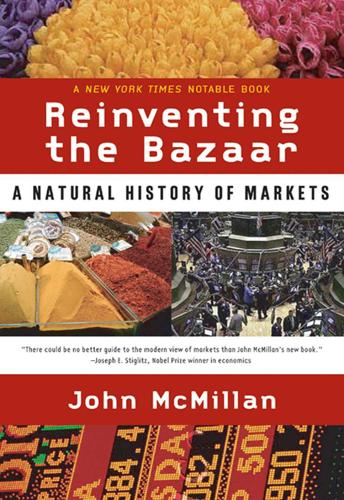
Reinventing the Bazaar: A Natural History of Markets
by
John McMillan
Published 1 Jan 2002
Its main role was to repeal prohibitions: it removed the ban on farmers working individual plots, the ban on entrepreneurs forming new firms, and the ban on state firms trading on markets. It left in place the existing mechanisms by which the economy was running, and let people build the new economy around the old. Bottom-up changes drove China’s reforms. The new economy arose more from the initiatives of the Chinese people, who built new firms and created new ways of doing business, than from changes imposed by the government. Some top-down changes were needed also; in fact more than what occurred. The government was unduly laggard in acting to correct China’s hopelessly inadequate financial and legal systems; undoubtedly some of the growth was based on misallocated investment.
…
In each of these respects the China of 1986 was ahead of the Russia of 2000. The fastest route from a planned economy to functioning markets, it turns out, was not frenetically tearing down the old institutions, starting with a clean slate, and enacting top-down reforms. It entailed letting the new economy grow up around the old one, maintaining some stability to let people create new ways of doing business. In different circumstances, however, shock therapy could be warranted. In a country like New Zealand where market-supporting institutions already exist—secure property rights, well-defined laws of contract, and active financial markets—the main case against shock therapy loses its force.
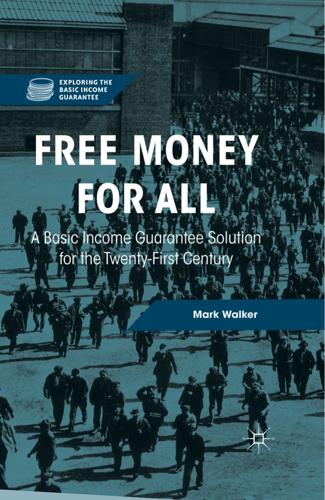
Free Money for All: A Basic Income Guarantee Solution for the Twenty-First Century
by
Mark Walker
Published 29 Nov 2015
Suppose, for example, there is a net change such that 15 to 50 percent of the workers are made redundant by advances in computers and robotics in the next 25 years. How do you think people will react? Are they going to sit idly? With gaunt smiles from starvation, will they simply congratulate others on their ability to compete in the new economy? As the economy shifts dramatically, we have good reason to fear that the ensuing protests will not be as small or as civilized as the Occupy Wall Street protest if nothing is done. The remedy is BIG: BIG will help ease us peacefully into the new economic reality. In other words, the argument is that BIG is an effective means to thwart the threat to peace precipitated by the robotic revolution.
…
These artisans had much to fear. It is true that the economy as a whole benefited from the reduction of the price of textiles, but most of these workers did not reap a commensurate reward. Their jobs were permanently lost to automation and their particular skill set did not position them well to compete in a new economy. Imagine their plight when the workers, who put in the requisite years to learn their craft, found that their skill was no longer needed and that they would have no way to look after their families. At the micro level of the individual worker, this is very sad. At the macro level, however, we can see the benefit to the entire economy.
…
In closing this chapter, it is worth repeating two points made earlier: BIG is proposed as a floor-level proposal rather than a ceiling-level one. As noted, it may be that we must cut the workweek in addition to BIG. It may also be necessary to offer citizens additional education and training in order to live in the new economy. So, to say that BIG is not enough is not a criticism of the present proposal. It should also be noted that it is not sufficient to merely say that BIG may have some bad consequences. Every public policy has negative consequences of some sort. The question for consequentialists, however, is whether there is a better overall net balance of good versus bad consequences for any given policy recommendation.
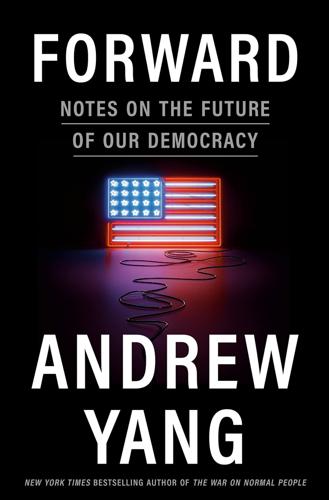
Forward: Notes on the Future of Our Democracy
by
Andrew Yang
Published 15 Nov 2021
The simple truth is that our technology is advancing faster than our labor market can adapt. The most immediate and vital step is to implement a Universal Basic Income (“the Freedom Dividend”) of $12k/year for all adults. This will serve as an economic and social support for the transition and preserve our consumer market while we shift to a new economy. It will be paid for largely by a new VAT at half the European level. Over time a VAT will be crucial to capture some of the gains of automation which typically accrue to sophisticated private firms. My platform revolves around 3 key proposals: Universal Basic Income (“the Freedom Dividend”) Evolution to the next stage of capitalism, “Human Capitalism,” geared toward optimizing around human well-being in addition to GDP Single-payer health care—necessary in the aftermath of job reduction You may not agree with me on every front.
…
Meanwhile, people are routinely dying because of a system that doesn’t prioritize their health or well-being so much as whether there is money to be made from their care. In the United States, GDP has exceeded $22 trillion even as income inequality has reached unprecedented levels. Meanwhile, life expectancy and mental health are declining, and stress levels are through the roof. NEW MEASURES FOR A NEW ECONOMY We rely upon the market to tell us how much things are worth. But the market misses the mark all of the time. For the past several years, my wife, Evelyn, has been at home with our two boys, one of whom is autistic. We say that she is the CEO of his care. The market values her work, and that of millions of stay-at-home parents, at zero.
…
While the pandemic is an outlier event, it highlights that there are outlier events that could use an easily mobilized workforce. Whether it’s working through our national lands to prevent forest fires, helping with cleanup after a natural disaster, contact tracing during a pandemic, or helping develop the next generation, we will always have more work to be done. New measures for a new economy. Universal basic income. Health care for all. Taxing AI and the robots. Rebuilding our infrastructure. Many of these measures are quite popular but would obviously require a functional Congress willing to enact bold solutions to the problems that we see around us. As we’ve noted, that’s going to be a challenge in our current system.
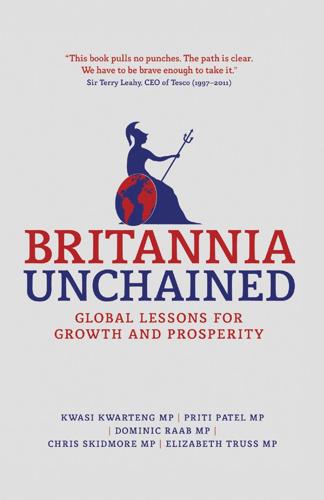
Britannia Unchained: Global Lessons for Growth and Prosperity
by
Kwasi Kwarteng
,
Priti Patel
,
Dominic Raab
,
Chris Skidmore
and
Elizabeth Truss
Published 12 Sep 2012
After a decade of reckless spending Canada successfully managed to cut its spending and start upon the way to growth and more sustainable development. Chapter 3 is about educational aspiration in Britain. This chapter, entitled ‘Revenge of the Geeks’, shows how education is viewed in India and other thriving new economies and contrasts these with Britain, where the ideals of celebrity culture and instant fame are prevalent. In many opinion surveys conducted in Britain it has been found that young people aspire to be fashion models or professional footballers ahead of becoming lawyers, doctors or even scientists.
…
Agonised navel-gazing is now the fashion, debating the distribution of growth, rather than how to grow the economy as a whole. Hundreds camped in the ‘Occupy London’ protests outside St Paul’s Cathedral in the autumn of 2011. The West as a whole looks set to drastically shrink in influence compared to China and the other new economies. Once again, the idea that growth is unsustainable is popular. ‘Every society clings to a myth by which it lives’, argues Tim Jackson of the Sustainable Development Commission. ‘Questioning growth is deemed to be the act of lunatics, idealists and revolutionaries. But question it we must. The myth of growth has failed us.’
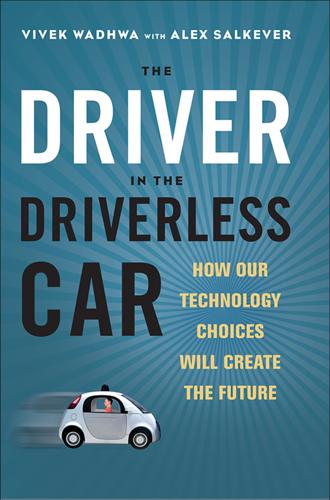
The Driver in the Driverless Car: How Our Technology Choices Will Create the Future
by
Vivek Wadhwa
and
Alex Salkever
Published 2 Apr 2017
The same goes for the home PC. But the Internet has accelerated adoption. Consider YouTube, which created a paradigm shift as significant as the VHS recorder and radio; and video search, which shifted the focus from text and static graphics to videos and more-dynamic content. These spawned an entire new economy catering to video on the Web—from content-delivery networks to advertising networks to a new production-studio system catering to YouTube production. They also created a new profession: YouTube stars, some of whom make millions a year and go on tour. Founded in 2005, YouTube gained mass adoption in eighteen months.
…
Johana Bhuiyan, “Why Uber has to be first to market with self-driving cars,” Recode 29 September 2016, http://www.recode.net/2016/9/29/12946994/why-uber-has-to-be-first-to-market-with-self-driving-cars (accessed 21 October 2016). 4. Alison Griswold, “Uber wants to replace its drivers with robots. So much for that ‘new economy’ it was building,” Slate 2 February 2015, http://www.slate.com/blogs/moneybox/2015/02/02/uber_self_driving_cars_autonomous_taxis_aren_t_so_good_for_contractors_in.html (accessed 21 October 2016). 5. Ray Kurzweil, How to Create a Mind: The Secret of Human Thought Revealed, New York: Viking, 2012. 6.
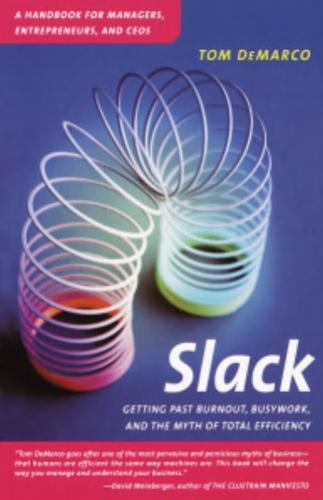
Slack: Getting Past Burnout, Busywork, and the Myth of Total Efficiency
by
Tom Demarco
Published 15 Nov 2001
Without a year or two of experience with current approaches, management has no way to scale the objectives. There is nothing to base a target on. Formulating the “simple arithmetic combination of lower-level objectives” is just too difficult without being able to use a stable model for guidance. But stasis plus just a bit of tinkering with the particulars is hardly a recipe for success in the new economy. Companies that are succeeding today have very little stasis. For example, the entire concept of “production” is going away. Production implies a steady state. In its place we find a state of almost constant flux. The new central organizing principal is the project. A company in this kind of flux can be viewed as a portfolio of projects.
…
The difference between the early nineties and today is the difference between Lenin’s concept of revolution (destroy the old state and replace it with a new and better one) and Trotsky’s concept of continuing revolution (destroy the old state and also destroy each successive state that replaces it). In our new economy, stasis is nothing more than an object of nostalgia. We might look back at it fondly, as we look back at the pre-nuclear age, but we can never go there again. In times of stasis, risk is an unwelcome visitor. But today risk is a constant. Nobody is ever going to succeed again without constantly taking on risks.
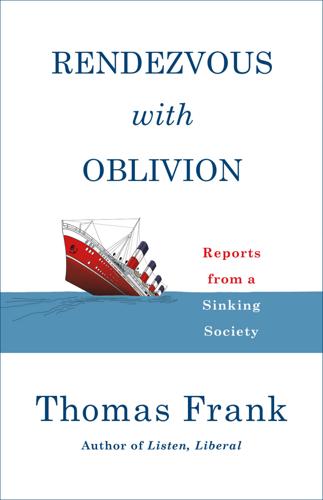
Rendezvous With Oblivion: Reports From a Sinking Society
by
Thomas Frank
Published 18 Jun 2018
Meanwhile, Charles Krauthammer grew so despondent over the meager 2016 options that he actually pined for the lost days of the Bill Clinton presidency, when America was tough on crime, when welfare was being reformed, and when free trade was accorded its proper respect. Ah, but none of this was to imply that Bernie Sanders, flouter of economic consensus, was a friend to the working class. Here, too, he was written off as a failure. Instead of encouraging the lowly to work hard and get “prepared for the new economy,” moaned the Post columnist Michael Gerson, the senator was merely offering them goodies—free health care and college—in the manner of outmoded “20th century liberalism.” Others took offense at Sanders’s health care plan because it envisioned something beyond Obamacare, which had been won at such great cost.
…
The Dow Jones Industrial Average, which had been a little north of 3,200 when Clinton took office, passed 10,000 in March 1999. The Nasdaq—the miracle index of the decade—ascended even more dizzyingly. Declining to mess with a good thing, the Federal Reserve kept interest rates relatively low, simultaneously stoking the euphoric culture of the New Economy. Thanks to a brand-new thing called the Internet, it was said, humankind had entered an entirely new era. Information was now perfect, the business cycle was suspended, the boom would go on forever, and the world’s weak and marginalized would embrace free trade and be lifted up by the loving kindness of markets.
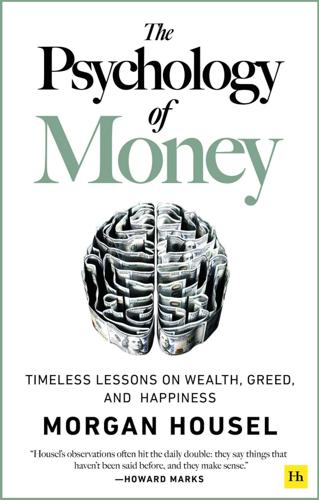
The Psychology of Money: Timeless Lessons on Wealth, Greed, and Happiness
by
Morgan Housel
Published 7 Sep 2020
President Clinton boasted in his 2000 State of the Union speech: We begin the new century with over 20 million new jobs; the fastest economic growth in more than 30 years; the lowest unemployment rates in 30 years; the lowest poverty rates in 20 years; the lowest African-American and Hispanic unemployment rates on record; the first back-to-back surpluses in 42 years; and next month, America will achieve the longest period of economic growth in our entire history. We have built a new economy. His last sentence was important. It was a new economy. The biggest difference between the economy of the 1945–1973 period and that of the 1982–2000 period was that the same amount of growth found its way into totally different pockets. You’ve probably heard these numbers but they’re worth rehashing. The Atlantic writes: Between 1993 and 2012, the top 1 percent saw their incomes grow 86.1 percent, while the bottom 99 percent saw just 6.6 percent growth.
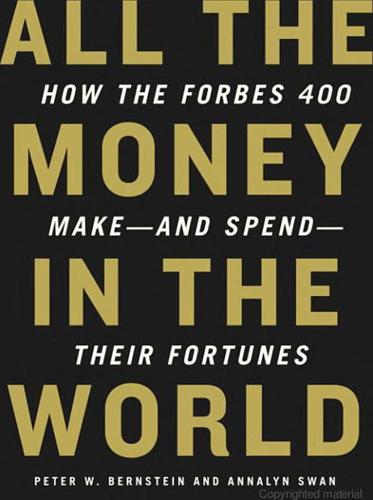
All the Money in the World
by
Peter W. Bernstein
Published 17 Dec 2008
Many of the companies are based in anonymous office parks, where the low-rise buildings have oversize picture windows to take in the dramatic vistas. Instead of paying their dues with years of hard labor at established companies, many members of the West Coast Forbes 400 fraternity were the original pioneers in key New Economy industries and financial services in the Valley, such as high-tech, biotech, discount brokerage, and venture capital. New Economy billionaires often make their fortunes very quickly and at a relatively young age. One of the youngest people16 ever to make the list was Steve Jobs (number 49 on the 2006 Forbes 400 list), who at age twenty-seven boasted a $100 million fortune, thanks to his success with Apple Computer.
…
Venture capitalist John Doerr (2006 net worth: $1 billion) describes the Valley as the site responsible for the “greatest legal accumulation of wealth in the history of the planet.” Aside from its stunning scenery, the Valley does not advertise its riches. With the country’s top venture-capital firms and its thriving high-tech companies, Sand Hill Road, the Valley’s main strip, is a sort of New Economy version of Wall Street. The four-lane highway runs through a hilly landscape from the town of Menlo Park past the mission-style buildings of Stanford University’s campus to the edge of Palo Alto. There are no iconic financial towers dominating the surrounding landscape; nor are there legions of briefcase-toting workers rushing by.
…
The trader returned convinced the shortage was real, and Robertson’s fund maintained its position through several years of losses. “He had a high tolerance70 for pain,” a former trader remembers. When palladium soared from $180 to $800 an ounce between January 1995 and April 2000, Tiger reaped a windfall. But after a twenty-year magic-carpet ride, Robertson, like Soros, crashed in the 2000 tech carnage. Shorting the new economy during the Internet boom was a “recipe for bankruptcy, because the worst stocks were rising,” he has said ruefully. “I should have stopped earlier.” He started closing his funds in 2000. “Some investors probably got71 1,000 to 1. Others got a loss,” he says. Even so, he ended up with plenty in his own bank account.
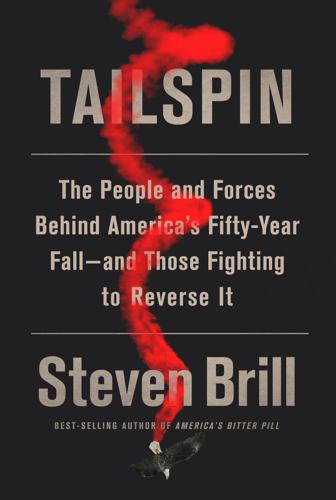
Tailspin: The People and Forces Behind America's Fifty-Year Fall--And Those Fighting to Reverse It
by
Steven Brill
Published 28 May 2018
CHAPTER 4 The Greening of the First Amendment While Paul Polman and other business leaders faced down short-termism, and while the rest of the country suffered the damage that the legal and financial engineering associated with it had done to an economy and a social fabric that depends on a thriving, hopeful middle class, the political sphere saw a parallel upheaval that would intensify the inequality being produced by the new economy. Like athletes supplied a wonder steroid, it would allow the winners to use political muscle of a kind never seen in Washington or in the country’s state capitals to enhance their winnings and disable government in a way that would protect what they had won, even what they had won by abusing or breaking the rules.
…
The trend was clear to anyone looking at the data showing this steady, relentless shift in workforce demand. The people in charge in America’s boardrooms, however, were only looking at the bottom line—and they and their lobbyists were able to fend off efforts by anyone in Washington to protect workers or fund effective programs to retrain them to thrive in the new economy. Overall, the United States lost seven million of its 19.2 million manufacturing jobs from 1980 to 2015. Trade has undeniably been an important cause of worker displacement, which should have been easy to anticipate. As Nobel laureate economist Joseph Stiglitz put it, “Add a few billion people into the market willing to work for much less than American workers will and what do you think will happen?”
…
Because the Coalition for Queens was increasingly able to boast so many success stories, it received approximately $4 million in funding in 2017 from a glittering array of New York charities, including the Robin Hood Foundation, the New York Community Trust, the Rockefeller Foundation, and the charity arms of Google, Blackstone, and the Hearst Corporation. In 2017, Hsu, having realized that his success in training unskilled workers to participate in the new economy could have broad ramifications, began making plans to change the organization’s name, probably to Tech Equality. At the same time, he created an ingenious business model that made expanding the program more realistic, while also making it more than another hot charity. Beginning with members of the class graduating that June, those who were placed in jobs paying more than $50,000—which was most of them—had to agree to pay the organization 12 percent of their earnings for the following two years.
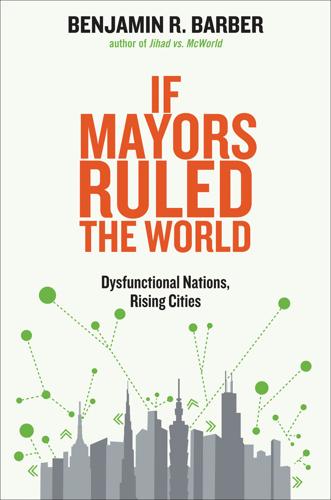
If Mayors Ruled the World: Dysfunctional Nations, Rising Cities
by
Benjamin R. Barber
Published 5 Nov 2013
There they can have an impact augmented by their collateral urban virtues. In other words, cities make economic sense and can be reformed through economic policy, but in no small part because they make civic, social, cultural and political sense. Cities create jobs, but jobholders like cities. The poor need new economy jobs (and training for them), but cities (Detroit, for example) are where new economy jobs are being created. Not everyone gets it: in New York, the financial industry has once again begun to flirt with decentralizing its workers to promote economic efficiency; but financial workers are once again defecting from their employers’ plans, refusing to go along with the diktat of efficiency.
…
Subways (undergrounds or metros) can be routed (and often have been) to leave ghettos or suburban slums underserved—in order to prevent undergrounds from becoming (in the eyes of the wealthy) feared conduits for criminals or instruments of opportunistic integration. Or they may offer access to and movement around the inner city but prevent residents there from reaching wealthier districts, middle-class malls, or upscale working neighborhoods (big banks, corporate service companies such as law firms and accountants, Saskia Sassen’s new economy). Try finding a bus service that runs from an inner-city ghetto to an upscale suburban mall. Where public transportation is planned to serve poorer neighborhoods, it may eliminate express stops in rich neighborhoods, further “protecting” wealthier residents from “invasion” by the “wrong” persons.
…
Today even the prideful suburban denizens of Silicon Valley are looking to relocate to New York and San Francisco for reasons that—though of great significance to the economy—are driven less by economic than civic and social logic. William Julius Wilson and his colleagues have made a powerful argument, suggesting that until African-American and Latino minorities are educated for and find jobs in the new economy, they will continue to be the first victims of the old economy. Their best hope lies in joint training programs that firms like IBM and Caterpillar Inc. are “partnering with area community colleges, vocational schools and the Department of Labor.”15 Such programs are ideally instruments of a national economic policy to combat inequality, but they are also available to cities.
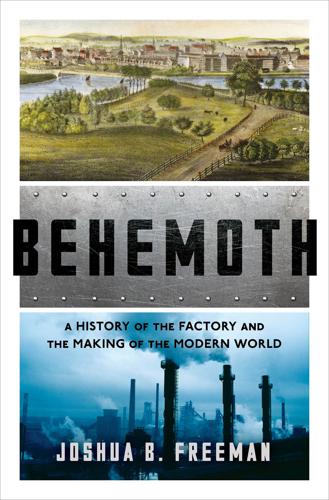
Behemoth: A History of the Factory and the Making of the Modern World
by
Joshua B. Freeman
Published 27 Feb 2018
Giantism contributed to the massive social mobilization required for the industrialization drive, which became the moral equivalent of revolution and civil war. The world-historic scale of Soviet factories and infrastructure contributed to a cultural revolution in which modernity and progress were linked to Soviet power and mechanization. And it worked, as millions of Soviet citizens made heroic efforts to construct new facilities, a new economy, a new society. At a price. The industrialization drive was linked, by design, to squeezing as much as possible out of the peasantry, even to the point, at times, of famine. The brutal collectivization of agriculture pushed millions of peasants away from their homes to industrial employment. Conditions during the First Five-Year Plan were worst in the countryside, but real wages and living standards for workers fell, too.
…
Bureau of Labor Statistics, “Employment, Hours and Earnings from the Current Employment Statistics survey (National),” http://data.bls.gov/pdq/SurveyOutputServlet (accessed Sept. 24, 2016). 2.Heather Long, “U.S. Has Lost 5 Million Manufacturing Jobs Since 2000,” CNN Money, Mar. 29, 2016, http://money.cnn.com/2016/03/29/news/economy/us-manufacturing-jobs/; The World Bank, World Data Bank, “Employment in Industry and World Development Indicators” (based on International Labour Organization data), http://data.worldbank.org/indicator/SL.IND.EMPL.ZS, and http://databank.worldbank.org/data/reports.aspx?source=2&series=SL.IND.EMPL.ZS&country= (accessed Sept. 24, 2016); Central Intelligence Agency, The World Factbook, 2017 (New York: Skyhorse Publishing, 2016), 179. 3.For life on the eve of the Industrial Revolution, see Fernand Braudel, The Structures of Everyday Life: Civilization and Capitalism, 15th–18th Century, vol. 1 (New York: Harper and Row, 1981) (French life expectancy, 90), and E.
…
Kasson, Civilizing the Machine: Technology and Republican Values in America, 1776–1900 (New York: Penguin, 1977), 81; Zonderman, Aspirations and Anxieties, 208. 54.For extended discussions of this evolution, see Leo Marx, The Machine in the Garden: Technology and the Pastoral Ideal in America (New York: Oxford University Press, 1964), and Kasson, Civilizing the Machine, esp. chap. 1 and 2. See also, Lawrence A. Peskin, “How the Republicans Learned to Love Manufacturing: The First Parties and the ‘New Economy,’” Journal of the Early Republic 22 (2) (Summer, 2002), 235–62, and Jonathan A. Glickstein, Concepts of Free Labor in Antebellum America (New Haven, CT: Yale University Press, 1991), esp. 233–35. 55.John G. Whittier, “The Factory Girls of Lowell,” in Voices of the True-Hearted (Philadelphia: J.

Evil Geniuses: The Unmaking of America: A Recent History
by
Kurt Andersen
Published 14 Sep 2020
” * * * — A decade or so later people had just begun referring excitedly to digital businesses collectively as the New Economy, although there was no Google or Facebook yet. The New Economy was new. In early 1998 I wrote a somewhat skeptical essay in The New Yorker called “The Digital Bubble.” Among my arguments was that because PCs and the Internet were already essential tools in journalism and finance, early-adopting journalists and finance people might have gotten overexcited about their potential. In 1999, however, I found myself eager to dive into this New Economy myself, to help make something cool and have fun before it was too late.
…
A major inherent advantage that business has over other players in the economic game is its centralized, undemocratic nature: no matter how sprawling companies and financial institutions may be, they have headquarters, strategies, and bosses who give orders that are obeyed—whereas individual workers and customers and small businesses and citizens in this vast country are…individuals, spread out, disparate, disorganized, relatively powerless. So individual Americans got together and organized new checks and balances in the new economy. Workers formed unions. “The operation of countervailing power is to be seen with the greatest clarity in the labor market where it is also most fully developed,” Galbraith wrote in American Capitalism. Just thirty years earlier, in the 1920s, “the steel industry worked a twelve-hour day and seventy-two-hour week with an incredible twenty-four-hour stint every fortnight when the shift changed.

Your Computer Is on Fire
by
Thomas S. Mullaney
,
Benjamin Peters
,
Mar Hicks
and
Kavita Philip
Published 9 Mar 2021
Does this make Sears an early predecessor of the information economy or Amazon a lingering relic of the industrial era, with its focus on the movement of materials and the construction and maintenance of physical capital? Is this even a useful question to ask, or is it an artifact of the artificial distinctions that are often drawn between the old and new economy? My argument has been that by focusing on the similarity between the two firms, and the continuity across different economic epochs, we can ask new and provocative questions about the history of modern computing, including questions of political economy, labor history, and the history of capitalism.
…
Timothy Wu, The Curse of Bigness: Antitrust in the New Gilded Age (New York: Columbia Global Reports, 2018); Susan Crawford, Captive Audience: The Telecom Industry and Monopoly Power in the New Gilded Age (New Haven: Yale University Press, 2013). 12. Nicholas Negroponte, Being Digital (New York: Knopf Doubleday, 1996); Kevin Kelly, New Rules for the New Economy: 10 Radical Strategies for a Connected World (New York: Penguin Books, 1999). 13. Joshua Ganz, “Inside the Black Box: A Look at the Container,” Prometheus 13, no. 2 (1995), 169–183; Alexander Klose, The Container Principle: How a Box Changes the Way We Think (Cambridge, MA: MIT Press, 2015). 14.
…
The Skill India initiative, introduced by the Hindu Nationalist Prime Minister Narendra Modi in 2015, aims to extend and introduce ICT-led skills training programs for India’s youth. The promise of these programs is that they will flatten economic and social barriers for low-income youth, who will be able to reap the benefits of the new economy. Seelampur is diverse but is primarily inhabited by Muslims, who are the largest minority in India. The average income in Seelampur for a family of four to six members is only $100–$150 a month. Muslim women in India are considered disadvantaged because of religious conservatism but actually face the tripartite struggle of being a minority, of being poor, and of being women.2 The ICT center was housed in the Gender Resource Center (GRC) building as a public–private partnership (PPP) initiative between the Delhi government and the civil society organization G-Tech Foundation.

The Rise and Fall of the Neoliberal Order: America and the World in the Free Market Era
by
Gary Gerstle
Published 14 Oct 2022
In 1996, Clinton, working with Congress, deregulated the exploding telecommunication industry, now including not just phones and television but the cable and satellite sub-industries so important to the new information economy. Soon after, he did the same with the electrical generation industry that sustained (literally) the new economy. And then, in 1999, he supported Congress’s repeal of the Glass-Steagall Act, the New Deal law that had done more than any other to end speculation, corruption, and the boom-bust cycle in America’s financial sector.35 Clinton had come to regard markets as something akin to natural law. Upon signing NAFTA in December 1993, he remarked that the United States really had no choice in the matter.
…
This emphasis on personal freedom overlapped with Clinton’s “live-and-let-live” attitude and made the Democratic Party a more congenial cultural home than the GOP for the West Coast high-tech vanguard.56 But would the Democrats, still generally perceived as the party of government regulation, deliver on the economic front? Would they keep their hands off the entrepreneurs, innovators, and corporations seeking to invent the new economy? From 1994–1995 onward, under Clinton’s stewardship, the Democrats’ answer was a resounding yes. First, Clinton and his administration implemented a regime of fiscal discipline that pleased Wall Street, which was already far along in underwriting the high-tech boom. Second, they committed themselves, under Gore’s leadership, to a multi-year campaign to reinvent government, making it smaller, less intrusive, and more flexible—more suitable, in other words, for a third-wave economy.57 And finally, and most important, they gave their assent to the Telecommunications Act of 1996, reform legislation that would make it possible for Silicon Valley to capitalize fully on its technical innovations.
…
The telecom bill often receives less attention than other Clinton initiatives, such as welfare reform. But it needs to be rescued from this neglect, for it did more than any other piece of legislation in the 1990s to free the most dynamic sector of the economy from regulation and dramatically accelerate the building of a new economy based on neoliberal principles. Telecom Reform The Communications Act of 1934 had long ago established a framework for regulating mass media in the United States. Though criticized by some at the time for handing over too much control of the airwaves to private, commercial broadcasters, the legislation actually put telephony and the airwaves under serious public control.
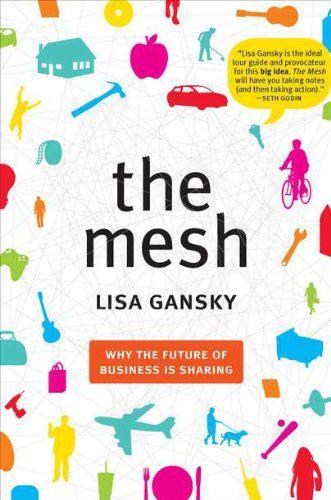
The Mesh: Why the Future of Business Is Sharing
by
Lisa Gansky
Published 14 Oct 2010
Table of Contents Title Page Copyright Page Dedication Introduction Chapter 1 - Getting to Know the Mesh Chapter 2 - The Mesh Advantage Chapter 3 - Mesh Design Chapter 4 - In with the Mesh Chapter 5 - In Mesh We Trust Chapter 6 - The Mesh as Ecosystem Chapter 7 - Open to the Mesh Chapter 8 - Mesh Inc. Chapter 9 - Seed Your Own Mesh Creative Commons License The Mesh Directory Acknowledgements The Mesh References Index “The Mesh is the future of business—and Lisa Gansky describes it brilliantly! Read this book to find out what you need to do to be part of the new economy of the Mesh!” —ALAN M. WEBBER, co-founding editor, Fast Company, and author of Rules of Thumb “Networks exist only because of what you put into them, not what you take out. Lisa Gansky in The Mesh shows us why generosity is replacing greed as the central value of the emerging network economy.”
…
Both factors will drive up a Mesh or partial-Mesh company’s earnings per share. grab your partner. Of course, the service model works best in a Mesh-style ecosystem, where information and resources are shared among partners. Mesh leaders, innovators, and provocateurs like Patagonia that share information with ecosystem partners will lead the path to the new economy and stimulate a “Mesh-ripe” culture. Since older businesses tend to feel they “own” their customers, and don’t want to share data, they will find it increasingly difficult to compete with new Mesh businesses that have less resistance to sharing information. Although they may have less data to share in the beginning, Mesh businesses use that data to create more customized offers.
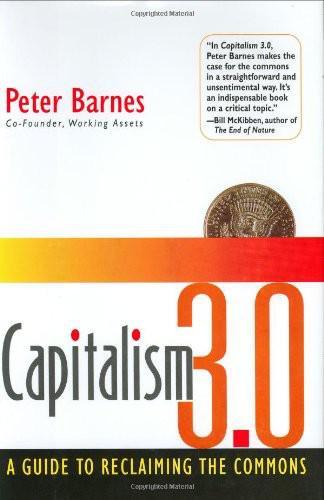
Capitalism 3.0: A Guide to Reclaiming the Commons
by
Peter Barnes
Published 29 Sep 2006
Finally, tell your donors not to worry. You’re a low-tax, smallgovernment, pay-as-we-go kind of person. You think the environment should be protected through market mechanisms. You favor an ownership society in which every American has a tax-deferred savings account and no child is left behind. A New Economy for a New Era The twenty-first century can’t be a continuation of the twentieth. We’re too close to too many tipping points for that. What You Can Do | 163 But if it’s not a continuation, what then? Then, it seems to me, we’ll need a new economic operating system, because if we stick with the current one, huge bills will come due, tipping points will flip, and with some likelihood, things will spiral out of control.
…
Collins, Chuck, and Felice Yeskel. Economic Apartheid in America: A Primer on Economic Inequality and Security. New York: New Press, 2000. Daily, Gretchen (ed.). Nature’s Services: Societal Dependence on Natural Ecosystems. Washington, D.C.: Island Press, 1997. Daily, Gretchen, and Katherine Ellison. The New Economy of Nature: The Quest to Make Conservation Profitable. Washington, D.C.: Island Press, 2002. Dales, J. H. Pollution, Property and Prices. Toronto: University of Toronto Press, 1968. Daly, Herman (ed.). Economics, Ecology, Ethics: Essays Toward a Steady-State Economy. San Francisco: Freeman, 1980.
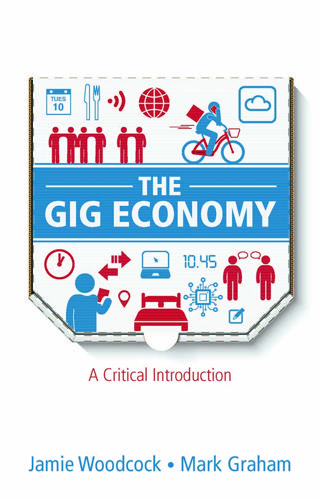
The Gig Economy: A Critical Introduction
by
Jamie Woodcock
and
Mark Graham
Published 17 Jan 2020
Workers have the freedom to choose when they would like to work, but the other side of that bargain means that precarity exists at a much finer scale than ever before (down to the minute), and competition is expanded to a scale never before seen. This involves the expansion of the spatial scales of competition and the contraction of the temporal scales of the responsibility of the firm for its workers. This is outsourcing reconfigured for the new economy. We should note that it is notoriously difficult to measure the size of the gig economy. There are two issues at play here: the data that are available, and how you define the gig economy in the first place. There have been claims that, in the US, contingent work and independent contracting is actually less common today than it was in the early 2000s.7 Those claims have then been used to extrapolate that the gig economy is a shrinking phenomenon.
…
Bruns, A. (2008) Blogs, Wikipedia, Second Life, and Beyond: From Production to Produsage. New York: Peter Lang. Cant, C. (2018) The wave of worker resistance in European food platforms 2016–17. Notes from Below, 1. Available at: https://notesfrombelow.org/article/european-food-platform-strike-wave Cant, C. (2019) Riding for Deliveroo: Resistance in the New Economy. Cambridge: Polity. Care.com (2018) Company overview. Available at: https://www.care.com/company-overview China Labour Bulletin (2018a) Labour relations in China: Some frequently asked questions. China Labour Bulletin. Available at: https://www.clb.org.hk/content/labour-relations-china-some-frequently-asked-questions China Labour Bulletin (2018b) ‘@chinalabour’, Twitter, 5 June.

Why Women Have Better Sex Under Socialism: And Other Arguments for Economic Independence
by
Kristen R. Ghodsee
Published 20 Nov 2018
These nations promoted women’s labor in traditionally male professions such as mining and military service, and mass-produced images of women driving heavy machinery, especially tractors.8 For example, while American women were stocking their kitchens with the latest appliances during the postwar economic boom, the Bulgarian government encouraged girls to pursue careers in the new economy. In 1954, the state produced a short documentary film to celebrate the lives of women helping to transform agricultural Bulgaria into a modern, industrial power. This film, I Am a Woman Tractor Driver, portrayed the daily lives of young women working in an actual women’s tractor brigade. A peasant girl pens a letter to the female head of the brigade, asking how she could learn to drive a tractor.
…
New York: Vintage, 1983. Dodge, Norton T. Women in the Soviet Economy. Baltimore: Johns Hopkins University Press, 1966. Du Plessix Gray, Francine. Soviet Women. New York: Bantam Doubleday Dell, 1990. Ehrenreich, Barbara, and Arlie Russell Hochschild. Global Woman: Nannies, Maids, and Sex Workers in the New Economy. New York: Henry Holt, 2004. Engels, Friedrich. The Origin of the Family, Private Property and the State. 1884. (Available online at www.marxists.org.) Evans, Kate. Red Rosa: A Graphic Biography of Rosa Luxemburg. London: Verso, 2015. Featherstone, Liza. Selling Women Short: The Landmark Battle for Workers’ Rights at Walmart.

The Industries of the Future
by
Alec Ross
Published 2 Feb 2016
A third of the population is illiterate, and the average life expectancy is just 46 years. Some of the worst of the suffering in the Congo has occurred in Goma, a city along the country’s eastern border with Rwanda. Constant fighting has devastated the region and displaced more than two million people. Yet it is here that some of the most promising signs of an emerging new economy are visible, as well as signs of the remarkable potential of code-ified markets. Here, the advent of mobile payments has allowed the mobile phone to become a payment system that provides vast new opportunities for the “little guy.” In August 2009, I visited the Mugunga refugee camp located north of Goma.
…
The changes in China: “Country Partnership Strategy for the People’s Republic of China for the Period FY2013-FY2016,” World Bank, International Bank for Reconstruction and Development, International Finance Corporation, and Multilateral Investment Guarantee Agency, Report 67566-CN, October 11, 2012, http://www-wds.worldbank.org/external/default/WDSContentServer/WDSP/IB/2012/11/12/000350881_20121112091335/Rendered/PDF/NonAsciiFileName0.pdf. With an economy 25 times larger: “World’s Largest Economies,” CNN Money, http://money.cnn.com/news/economy/world_economies_gdp/. CHAPTER 1: HERE COME THE ROBOTS Japan’s current life expectancy: “Population Projections for Japan (January 2012): 2011 to 2060,” National Institute of Population and Social Security Research, January 2012, http://www.ipss.go.jp/site-ad/index_english/esuikei/ppfj2012.pdf.
…
Farming is so difficult in India: P. Sainath, “Have India’s Farm Suicides Really Declined?” BBC News, July 14, 2014, http://www.bbc.com/news/world-asia-india-28205741. What’s more, 25 percent of the: “Number of Hungry People in India Falling: UN Report,” Zee News, September 18, 2014, http://zeenews.india.com/business/news/economy/number-of-hungry-people-in-india-falling-un-report_108529.html. Nitrogen from fertilizer creates: Tom Laskawy, “New Science Reveals Agriculture’s True Climate Impact,” Grist, April 10, 2012, http://grist.org/climate-change/new-science-reveals-agricultures-true-climate-impact/. Fertilizer produces nitrous oxide: S.
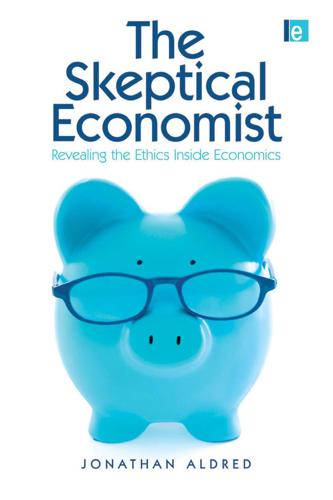
The Skeptical Economist: Revealing the Ethics Inside Economics
by
Jonathan Aldred
Published 1 Jan 2009
And as a last resort there is always the plain but vacuous condemnation ‘uneconomic’. Veto economics serves to protect the economic orthodoxy. In some ways the orthodoxy has served us, in rich economies, quite well. For a brief period after the fall of the Berlin Wall, some even talked of ‘The End of History’. Our economic problems were solved, and something called ‘The New Economy’ had arrived, promising endless prosperity - or at least an endlessly rising stock market. Although these fantasies are now largely forgotten, a more humble but still confidently optimistic orthodoxy prevails. The orthodoxy says that the role of governments is to maximize economic growth by providing a stable economic environment of low inflation and generally moderate levels of unemployment.
…
Another objection to the cost disease argument is that it ignores recent productivity gains in the personal service sector. Influential recent research — subtitled ‘Baumol’s Disease has been cured’ — has suggested that service sector productivity in the US has accelerated over recent years.44 This fits conveniently with the fashionable ‘New Economy’ paradigm: that information technology has brought about a fundamental and permanent increase in productivity throughout advanced economies, and particularly in the US. However, this research does not demonstrate a cure for the cost disease, for several reasons. First, it still appears that the personal service sector is suffering from low productivity, even if productivity in other types of service has improved.
…
London, Allen and Unwin Torgler, B. (2007) Tax Compliance and Tax Morale. Cheltenham, Edward Elgar Triplett, J. and B. Bosworth (2003) ‘Productivity measurement issues in services industries.’ Federal Reserve Bank of New York, Economic Policy Review Triplett, J. and B. Bosworth (2005) ‘Baumol’s disease has been cured’ in The New Economy. D. Jansen (ed) Chicago, University of Chicago Press Tullock, G. (1976) The Vote Motive. London, Institute for Economic Affairs Tversky, A. and E. Shafir (1992) ‘Choice under conflict.’ Psychological Science 3: 358-361 Upton, W. (1973) ‘Altruism, attribution and intrinsic motivation in the recruitment of blood donors.’
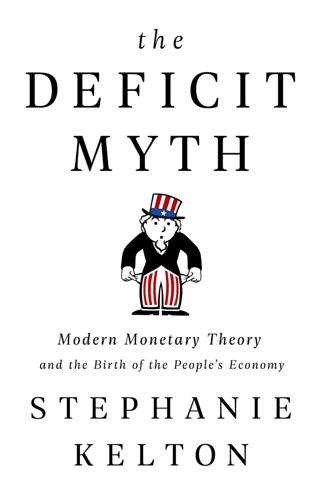
The Deficit Myth: Modern Monetary Theory and the Birth of the People's Economy
by
Stephanie Kelton
Published 8 Jun 2020
The economic framework that I’m advocating for is asking for more fiscal responsibility from the federal government, not less. We just need to redefine what it means to budget our resources responsibly. Our misconceptions about the deficit leave us with so much waste and untapped potential within our current economy. MMT gives us the power to imagine a new politics and a new economy. It challenges the status quo across the political spectrum with sound economics, and that is why it is generating so much interest around the world from policy makers, academics, central bankers, finance ministers, activists, and ordinary people. MMT’s lens enables us to see that another kind of society is possible, one in which we can afford to invest in health care, education, and resilient infrastructure.
…
But in practice, the fiscal deficit myth has prevented Congress from using that power to fix the real deficits hobbling our economy. By shifting the discussion of budgeting from its focus on debt and deficits to one that focuses on the deficits that matter, MMT gives us the power to imagine a new politics and a new economy, moving us from a narrative of scarcity to one of opportunity. 8 Building an Economy for the People It was summer 2010 when Warren Mosler (whom we first met in Chapter 1) traveled to Kansas City, Missouri, to join me for a meeting with Congressman Emanuel Cleaver. Cleaver was a United Methodist pastor and the first African American mayor of Kansas City.
…
Gaby Galvin, “87M Adults Were Uninsured or Underinsured in 2018, Survey Says,” U.S. News & World Report, February 7, 2019, www.usnews.com/news/healthiest-communities/articles/2019-02-07/lack-of-health-insurance-coverage-leads-people-to-avoid-seeking-care. 22. Tami Luhby, “Is Obamacare Really Affordable? Not for the Middle Class,” CNN, November 2016, money.cnn.com/2016/11/04/news/economy/obamacare-affordable/index.html. 23. Boesler, “Almost 40% of Americans Would Struggle to Cover a $400 Emergency.” 24. Bob Herman, “Medical Costs Are Driving Millions of People into Poverty,” Axios, September 2019, www.axios.com/medical-expenses-poverty-deductibles-540e2c09-417a-4936-97aa-c241fd5396d2.html. 25.
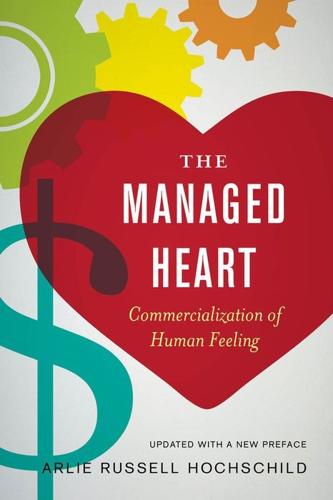
The Managed Heart: Commercialization of Human Feeling
by
Arlie Russell Hochschild
Published 1 Nov 1983
The Managed Heart Commercialization of Human Feeling Updated with a New Preface ARLIE RUSSELL HOCHSCHILD Q3 UNIVERSITY OF CALIFORNIA PRESS Berkeley Los Angeles London The Managed Heart Other books by Arlie Russell Hochschild: The Second Shift: Working Couples and the Revolution at Home The Time Bind: When Work Becomes Home and Home Becomes Work Global Woman: Nannies, Maids and Sex Workers in the New Economy The Commercialization of Intimate Life: Notes from Home and Work (UC Press) The Outsourced Self: Intimate Life in Market Times The Managed Heart Commercialization of Human Feeling Updated with a New Preface ARLIE RUSSELL HOCHSCHILD Q3 UNIVERSITY OF CALIFORNIA PRESS Berkeley Los Angeles London University of California Press, one of the most distinguished university presses in the United States, enriches lives around the world by advancing scholarship in the humanities, social sciences, and natural sciences.
…
“Can Emotional Labor Be Fun?” Work, Organization and Emotion 3 (2). 11. Sherman, Rachel. 2007. Class Acts: Service and Inequality in Luxury Hotels. Berkeley: University of California Press. 12. Ehrenreich, Barbara, and Arlie Russell Hochschild, eds. Global Women: Nannies, Maids, and Sex Workers in the New Economy. New York: Metropolitan/Owl Books, 2012. xvi Preface to the 2012 Edition 13. The sperm and egg of the American genetic parents were germinated in a petri dish in the Akanksha clinic, and planted in the uterus of the surrogate who then carried the baby to term. My description of this is found in “Childbirth at the Global Crossroads,” American Prospect (October 2009): 25–28.
…
"Emotion Management in an Age of Global Terrorism," Soundings, Issue 20, Summer 2002, pp.1l7-126. Bibliography to the Twentieth Anniversary Edition 2003 281 The Commercial Spirit of Intimate Life and Other Essays. Berkeley: University of California Press. Hochschild, Arlie Russell and Barbara Ehrenreich (eds.) 2003 Global Woman: Nannies, Maids and Sex Workers in the New Economy. New York: Metropolitan Books. Holm, K.E., RJ. Werner-Wilson, A.S. Cook, and P.S. Berger 2001 "The Association Between Emotion Work, Balance and Relationship Satisfaction of Couples Seeking Therapy," American Journal of Family Therapy V29 (N3):193-205. Holman, D., C. Chissick, and P. Totterdell 2002 "The Effects of Performance Monitoring on Emotional Labor and Well-Being in Call Centers," Motivation and Emotion V26(N1):57-8l.

Don't Be Evil: How Big Tech Betrayed Its Founding Principles--And All of US
by
Rana Foroohar
Published 5 Nov 2019
The problem is that creators of the future often feel they have little to learn from the past. As lauded venture capitalist Bill Janeway once put it to me, “Zuck and many of the rest [of the tech titans] have an amazing naïveté about context. They really believe that because they are inventing the new economy, they can’t really learn anything from the old one. The result is that you get these cultural and political frictions that are offsetting many of the benefits of the technology itself.” Frank Pasquale, a University of Maryland law professor and noted Big Tech critic whose book The Black Box Society is a must-read for those who want to understand the effects of technology on politics and the economy, provided a telling example of this attitude.
…
They didn’t need words—optimism was the common language. This was the moment when Europe would finally and truly come together in an economic and political union that was to be the greatest-ever experiment in benign globalization. And Antfactory, Rob explained, would be right in the center of it, leveraging all these wonderful new economies of scale. It would find the best European dot-coms—in travel, in music, in finance, in health—and mash them together, boosting their global presence and stock valuations accordingly. Exchanges from London to Frankfurt to Paris would compete to take these new companies public. Riches would be had by all.
…
More specifically, it was a debate that would center around the contentious issue of stock buybacks (when corporations bid up the price of their own shares by buying them back on the open market), which had been considered illegal market manipulation until the Reagan administration legalized it in 1982. But the practice didn’t really become a key part of a dysfunctional system of skyrocketing corporate pay and bad corporate decision making until the 1990s, when “new economy” tech firms began successfully lobbying the Clinton administration against efforts to introduce new accounting standards that would have forced them to mark down the value of stock options on their books. In other words, firms wanted C-suite executives to be able “to buy company stock at below-market prices—and then pretend that nothing of value had changed hands,” as Stiglitz once pointed out.
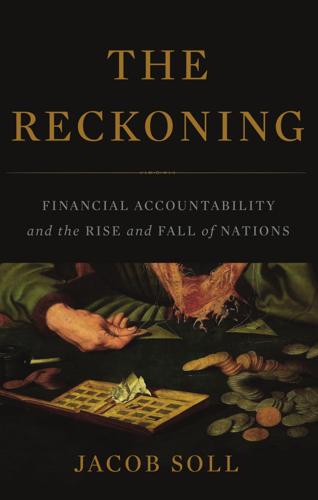
The Reckoning: Financial Accountability and the Rise and Fall of Nations
by
Jacob Soll
Published 28 Apr 2014
Although other auditing companies also made huge fees in consulting, Andersen let the consulting tail wag the whole company. Doing so made sense purely as a matter of profits. Between 1992 and 2001, profits—70 percent of which were from consulting—more than tripled. Andersen would consult for high-profile “new economy” firms like Waste Management, WorldCom, and, most notoriously, the Texas energy firm Enron, while also acting as their auditor. All of these companies inflated their stock value by using false accounting statements. Eventually, all, even the once-venerable Andersen, went bankrupt. Andersen & Co. was indicted in Texas in 2002 for producing false financial statements for Enron, and the SEC found fraudulent Andersen audits for companies such as Waste Management and WorldCom.25 Andersen was sunk by the sheer massiveness of the Enron fraud along with its clear complicity in inflating the company’s stock price—when it fell, shareholders lost $11 billion.
…
Washington with the United States, Commencing June 1775, and Ending June 1783, Comprehending a Space of 8 Years (Washington, DC: Treasury Department, 1833), 65–66. 22. Ibid., 5–6; Kitman, George Washington’s Expense Account, 127–129, 276. 23. Thomas K. McCraw, The Founders and Finance: How Hamilton, Gallatin, and Other Immigrants Forged a New Economy (Cambridge, MA: Harvard University Press, 2012), 65–66. 24. Michael P. Schoderbek, “Robert Morris and Reporting for the Treasury Under the U.S. Continental Congress,” Accounting Historians Journal 26, no. 2 (1999): 5–7. 25. Ibid., 7–8; Charles Rappleye, Robert Morris: Financier of the American Revolution (New York: Simon and Schuster, 2010), 231. 26.
…
Collection de Compte-Rendu, pièces authentiques, états et tableaux, concernant les finances de France depuis 1758 jusqu’en 1787. Paris: Chez Cuchet, Chez Gatteu, 1788. Maynwaring, Arthur. A Letter to a Friend Concerning the Publick Debts, particularly that of the Navy. London, 1711. McCraw, Thomas K. The Founders and Finance: How Hamilton, Gallatin, and Other Immigrants Forged a New Economy. Cambridge, MA: Harvard University Press, 2012. McKendrick, Neil. “Josiah Wedgwood and Cost Accounting in the Industrial Revolution.” Economic History Review 23, no. 1 (1970): 45–67. Melcher, Richard. “Where Are the Accountants?” BusinessWeek, October 5, 1998. Melis, Federigo. Documenti per la storia economica dei secoli XIII–XVI.
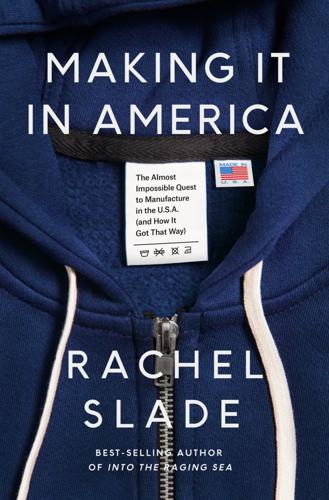
Making It in America: The Almost Impossible Quest to Manufacture in the U.S.A. (And How It Got That Way)
by
Rachel Slade
Published 9 Jan 2024
Afraid of missing out on the next big thing, people sign up, attributing their lack of understanding to their outsider status rather than a shortage of reason. Some American policymakers argued that the free market would be good for business and good for workers. Others thought workers might lose their jobs, but in the new economy, they’d simply find new jobs. At the very least, America’s consumers would love the low, low prices of foreign-made goods—cheaper to produce, cheaper to buy. The free market also promised to boost the middle class, now heavily invested in the stock market through their brand-new 401(k)s, because cheaper production would leave more room for profit.
…
“I’m Gary Peterson, the head of TWU Local 591, Air Division—Dallas, Texas. But I’m from Chicago,” he added quickly. “And I really like this sweatshirt.” TWU stood for Transport Workers Union of America, which represented more than 150,000 airline, railroad, transit, and utility workers. Like all unions in the 2020s, TWU was expanding with the new economy, adding museum curators, health department employees, and bike-share workers to its membership. Gary himself was an impressive guy. He’d come up through the air force, then worked as an aircraft mechanic at American Airlines. He held a master’s degree in dispute resolution. Gary asked Ben, “Can you do 5,000?”
…
Ben rolled through the streets of Westbrook, once a mill town, now a suburb of Portland, as the sun crept weakly over the horizon. He passed modest clapboard houses with tiny lawns frozen under patches of snow and pickup trucks parked in short driveways. Inside were the working people he and Whitney wanted to energize for a new economy. He drove past the sprawling SAPPI paper mill with its seventy-foot smokestack, red warning lights blinking against the sky. A few of the mill’s original nineteenth-century brick structures were still intact, now dwarfed by the giant aluminum-siding-clad sheds built in the 1960s. The Presumpscot River frothed down a waterfall dividing the old and new mills.

Boom: Bubbles and the End of Stagnation
by
Byrne Hobart
and
Tobias Huber
Published 29 Oct 2024
McClendon himself faced accusations of financial impropriety; the day after he was indicted for bid rigging in oil and gas lease purchases, McClendon died after driving his SUV into an overpass. 275 EOG Resources 10-Ks, 2006–12, 2021–22, SEC.gov, https://www.sec.gov/cgi-bin/browse-edgar?action=getcompany&CIK=0000821189&type=10-k&dateb=&owner=exclude&count=40. 276 Scott Davis, Carter Copeland, and Rob Wertheimer, Lessons from the Titans: What Companies in the New Economy Can Learn from the Great Industrial Giants to Drive Sustainable Success (New York: McGraw-Hill, 2020), 180. 277 Gary Sernovitz, The Green and the Black: The Complete Story of the Shale Revolution, the Fight Over Fracking, and the Future of Energy (New York: St. Martin’s Press, 2016), 94. 278 “CO2 Emissions (kg per PPP $ of GDP)—China, United States, Middle Income,” The World Bank, https://data.worldbank.org/indicator/EN.ATM.CO2E.PP.GD?
…
Merton, one of the most influential sociologists and philosophers of science of the last century. 359 The term “hyperstition” was introduced by Land and the collective CCRU (Cybernetic Culture Research Unit). In one text, CCRU describes the nature of hyperstition in terms of financial bubbles, writing that the “so-called ‘new-economy’—indexed by the nova-bubble mania of the American stock market—is no different in its diagrammatic abstraction to… hyperstitious practices… Alan Greenspan calls it ‘irrational exuberance,’ amidst a panic hunt for crash indicators. Lemurian Necronomicon calls it ‘Shadow-Feeder of the Chaotic Gulfs,’ the ‘Fatal Mother of Hyperstitions,’ she of innumerable numbering names who shreds all that stands.”
…
CNBC, November 6, 2018. https://www.cnbc.com/2018/11/05/elon-musk-teslas-work-is-important-to-the-future-of-the-world.html. “CO2 Emissions (kg per PPP $ of GDP)—China, United States, Middle Income,” The World Bank, https://data.worldbank.org/indicator/EN.ATM.CO2E.PP.GD?locations=CN-US-XP. Davis, Scott, Carter Copeland, and Rob Wertheimer. Lessons from the Titans: What Companies in the New Economy Can Learn from the Great Industrial Giants to Drive Sustainable Success. New York: McGraw-Hill, 2020. Dawkins, Richard. The Selfish Gene, 30th Anniversary Edition. Oxford: Oxford University Press, 2006. Doerr, John, “Salvation (and Profit) in Greentech,” Ted Talk, 2007, https://www.ted.com/talks/john_doerr_sees_salvation_and_profit_in_greentech.

The Thank You Economy
by
Gary Vaynerchuk
Published 1 Jan 2010
, I talked a lot about my belief that embracing your DNA, zeroing in on your passion, and living that passion day in and day out were the keys to creating a fulfilling, happy personal and professional life. Since then, I’ve realized that there’s something else that counts. In fact, it may be the single biggest differentiator in this new economy: good intent. I strongly believe that if your intentions are good, it shows, and it draws people to you. Good intentions create a pull. Now, you can probably think of many examples of individuals who were able to fake good intentions to get what they wanted. But I think that the Thank You Economy, which has brought us platforms like Facebook and Twitter that emphasize transparency and immediacy, has given consumers better tools to spot and expose a company’s or brand’s hidden agendas and bad intentions, as well as tools to recognize, and reward, good ones.
…
They’d never heard of work-life balance, and they knew better than to expect instant gratification. We crave both, but I think these will be luxuries in the Thank You Economy. The stars in this business era will be those who are consumed with their work (and happy about it) and have the patience to pursue one small victory at a time. This new economy offers tremendous opportunities to develop huge markets, strengthen brands, or build lasting businesses, provided you work for them with the intensity of Rocky Balboa training for his Cold War showdown in the snow-covered Soviet countryside. You’re in trouble only if you find that pill too hard to swallow.

50 Future Ideas You Really Need to Know
by
Richard Watson
Published 5 Nov 2013
the condensed idea More people living alone timeline 2014 40 percent of British adults live alone 2015 Tax benefits for grandparents living with grandchildren 2016 Walmart discontinues “family packs” in USA 2017 Banks offer 100-year cross-generational mortgages 2018 60 percent of 30-year-olds still living at home 2019 Social networks start to establish physical communities 2024 Social robots in 30 percent of single-person households 2026 People living alone own 90 percent of all pets in China 27 Dematerialization The global economy is becoming dematerialized. What this means is that many things that have, or create, value no longer exist in a physical domain. The currency of this new economy is still money, but it’s digital money generated by ideas and information. Furthermore, this shift from physical manufacturing to digital services and virtual experiences has barely begun. Digitalization represents a significant shift in terms of how things are made, and it’s changing how, where and what people consume.
…
Nevertheless, with digital products and services, the inputs tend to be smaller and less expensive than with conventional manufacturing and distribution processes. This, in large part, explains the significant difference in financial valuations between old-school industries such as car manufacturing or airlines and new economy industries, for example, social media that are focused on digital ownership and exchange. Farmville, for instance, an application used on Facebook (i.e. a company with no tangible products), has had a valuation of around $5 billion. “The change from atoms to bits is irrevocable and unstoppable.
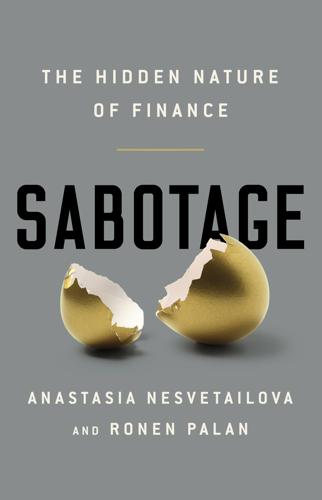
Sabotage: The Financial System's Nasty Business
by
Anastasia Nesvetailova
and
Ronen Palan
Published 28 Jan 2020
Ketchum, D., ‘15 biggest crowdfunding scams and failures of all time’, Go Banking Rates, 14 March 2018, www.gobankingrates.com/making-money/business/biggest-crowdfunding-scams-failures. Kottasowa, I., ‘9 trillion and counting: how central banks are still flooding the world with money’, CNN Business, 9 September 2016, https://money.cnn.com/2016/09/08/news/economy/central-banks-printed-nine-trillion/index.html. Kummer, S. and C. Pauletto, ‘The History of Derivatives: A Few Milestones’, EFTA Seminar on Regulation of Derivatives Markets, Zurich, 3 May 2012, SECO and Federal Department of Economic Affairs FDEA, www.seco.admin.ch/…/History_of_Derivatives…/10%20The%20History%20of… Larsen, P., ‘Lever again’, Reuters, 27 December 2017, www.breakingviews.com/features/regulators-will-drive-next-wave-of-eu-bank-mergers.
…
Jenkins, ‘JPMorgan: defying attempts to end “too big to fail”’, Financial Times, 12 September 2018, www.ft.com/content/0eebc7de-b4de-11e8-b3ef-799c8613f4a1. 24. A. Cuomo, ‘No Rhyme or Reason: The Heads I Win, Tails You Lose Bank Bonus Culture’, 2009, p. 2. 25. Ibid., p. 5. 26. I. Kottasowa, ‘9 trillion and counting: how central banks are still flooding the world with money’, CNN Business, 9 September 2016, https://money.cnn.com/2016/09/08/news/economy/central-banks-printed-nine-trillion/index.html. 27. K. Darrah, ‘The QE reversal’, World Finance, 26 April 2018, www.worldfinance.com/banking/the-qe-reversal. 28. P. Donohoe, ‘How often is the “Single Malt” tax loophole used? The government is finding out’, The Journal, 15 November 2017, www.thejournal.ie/single-malt-tax-evasion-3698512-Nov2017. 29.
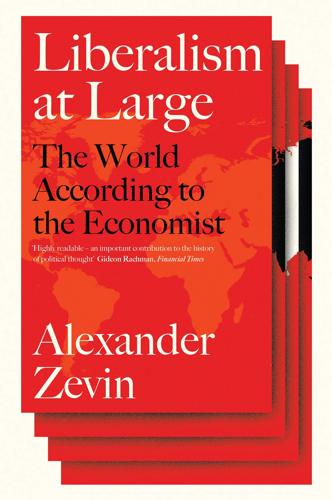
Liberalism at Large: The World According to the Economist
by
Alex Zevin
Published 12 Nov 2019
The money pouring into finance seemed to vindicate its stance on Big Bang at home, while the fall of communism did the same for its long slog on behalf of Western liberalism abroad. At the same time, it rapidly gained readers and influence in the US, which became its home away from home. Pennant-Rea stepped down in 1993 just as the ‘new economy’ of the Clinton years got underway – to its boosters a break from all precedent, as information technology unleashed investment and growth alongside low inflation, low unemployment and near-constant productivity gains, which were bound to attenuate or even eliminate the business cycle itself.1 Since then, three points have connected the constellation of liberal ideas at the Economist: the planetary primacy of finance, vast enough to be shared out between Wall Street and the City of London; the American Empire, as both policeman and journalistic training ground; and globalization, its precondition the prior two, as cornucopia for former colonies and satellites.
…
The very harshness of the medicine Thatcher had meted out – double-digit interest rates, sweeping privatizations of the telecom, gas, airline and other state-owned industries, slashing of top income tax rates in half, undoing of labour regulations, enforcement of pit and plant closures amidst high levels of unemployment – now allowed the Economist to position itself at the cutting edge of change. By the time the New Economy boom arrived, the country appeared to have turned a corner; at home and abroad, the paper was once again in the enviable position of giving lessons, not taking them. Full of confidence, Emmott and his deputies took one contrarian stance after another – eager to restore the Economist’s reputation for radicalism.
…
Much of Emmott’s career since 2006 has nevertheless been devoted to sparring with Berlusconi, as well as browbeating the country into market reforms: a 2012 documentary, Girlfriend in a Coma, shows Emmott doing his best Michael Moore, accosting Berlusconi in a crowded salon of ‘elites’.43 Finance and Globalization The Economist did not ignore the financial bubbles that punctuated the New Economy years – in sovereign debt, dotcom stocks and housing – up to 2008, but it minimized them as relatively small bumps on the road to globalized capitalism. Mexico, East Asia and Russia were among the hardest hit by interlinked currency and debt crises. When Moscow defaulted in 1998, triggering the collapse of Long Term Capital Management – the heavily exposed hedge fund that lost $4.6 billion in four months – the paper defended the computer wizards whose models had failed to foresee this: ‘it is pleasant to mock the Nobel Laureates who helped found LTCM, but much of this mockery clouds the truth’, for ‘the question arises whether recent events are ever likely to be repeated.’44 But it also went on the attack against any who used such examples of ‘market failure’ to criticize, question or hold up globalization, with deputy editor Clive Crook leading the charge.45 Crook was thirty-eight in 1993, but looked ‘more like a teenager in the grey flannel slacks, white oxford-cloth shirt, and blue pullover sweater that are his only known costume’.46 ‘Fearsomely brilliant’, ‘arguing for Free Trade in this gruff Lancashire accent’, he was ‘the Manchester School come to life’; others called him the ‘intellectual Godfather’, with Emmott by turns ‘enthralled’ and ‘intimidated’, as editors asked (on points of doctrine), ‘Is Clive ok with this?’

Manias, Panics and Crashes: A History of Financial Crises, Sixth Edition
by
Kindleberger, Charles P.
and
Robert Z., Aliber
Published 9 Aug 2011
At the end of December 1999 the Dow Jones was at 11700 and the NASDAQ was at 5400, and the market value of NASDAQ stocks was 80 percent of the market value of stocks traded on the New York Stock Exchange. In the late 1990s the prices of stocks representing the new economy – the dot.coms, e-commerce, fiber optics, servers, chips, software, IT, telecoms – which were traded on the NASDAQ had increased much more rapidly than the prices of old-economy stocks, those of firms such as GE and GM, AT&T and Time-Life, that were traded on the New York Stock Exchange. But there was more than a spillover effect, for the enthusiasm about the future that was characterizing the new economy stocks was infectious and also led to increases in the prices of the old-economy stocks. It seemed as though developments in information technology were driving finance.
…
The US Treasury’s annual fiscal balance changed by more than 5 percent – from a deficit of nearly $300 billion at the beginning of the 1990s to a surplus of nearly $200 billion at the end of the decade. One of the ‘negatives’ in terms of US economic performance was that the annual US trade deficit surged to $500 billion. Another was that the household saving rate declined to a new low. The remarkable aspect of the boom was the focus on the ‘new economy’ and especially the role of information technology, the computer, dot.coms, and the firms that provided both the hardware and the software or exploited these developments to serve traditional needs. These technological developments led to sharp declines in the cost of sending and storing information.
…
Morgan/JPMorganChase 24, 86, 130, 200, 204, 222, 224, 241, 252, 263, 266–7, 270 Morgan Stanley 56, 137, 139, 270 Morgenstern, Oskar 60, 155, 166, 240 mortgage-backed securities (MBSs) 74, 86, 149, 259, 262 MSNBC television 147 mutual funds 20, 23, 104, 128, 136–7, 151, 175, 177, 286 Mutualité Industrielle (Belgium) 89 Napoleon III 89 NASDAQ stocks, 1990s bubble in 6–7, 15, 17, 32, 183, 184 National Association of Security Dealers (NASD) 139 National Australia Bank, Sydney 124 National Bank of Austria-Hungary 82 National City Bank 148 National Trust Company of New York 197 Navigation Acts (GB) 164 negative carry concept 36 neo-Austrian School 81 Netherlands see Holland new economy 181, 182 New York City 221, 222 New York Clearing House 221 New York Stock Exchange 6–7, 23, 32, 77, 104, 135, 183, 184, 201–2, 204 New York Warehouse and Security Company 50 New Zealand 157 Newton, Sir Isaac 47 Nikkei stock market index 24, 113, 123–4 Nordic countries, asset price bubble, 1985–89 1, 5 Nordwolle (Norddeutsche-Wolkämmerei) 244 Norman, G.W. 91 Norman, Montagu 77, 91, 245 North American Free Trade Agreement (NAFTA) 5, 24, 178, 189, 253 Northern Pacific railroad 44, 50, 166 Northern Rock 4, 86, 192, 263, 264 Norway 1, 4, 5, 157, 278 NOW accounts 69 Nurkse, Ragnar 41 Ohio Life Insurance and Trust Company 142, 164, 203 oil prices 2, 4, 13, 14, 278 Open Market Investment Committee, Federal Reserve Bank 227 Organization of Petroleum Exporting Countries (OPEC) 51 d’Ormesson, Wladimir 89 outsiders/insiders 23, 46–8 Overend, Gurney & Co. 41, 97, 141, 165 overshooting/undershooting concept 3, 35, 230, 231, 232, 279 Overstone, Lord (Samuel Jones-Loyd) 84, 91, 102, 194–5, 215 overtrading concept 30, 33, 35, 57, 84, 160, 161, 167, 226 Panama Canal bonds 219 panics 1906–7 21, 82–3, 97, 167–8, 222, 238–9 causes of 25, 33, 104–5 definition 103 interest rates and 50, 54–5, 82, 106, 168 swindles perpetrated during 23–4 see also bubbles; crises Paris, as financial center 239–40 see also France Parmalat 138 Pedersen, Jørgen 242 Peel, Sir Robert 222–3 Pereire brothers 218 Plaza Agreement, 1985 256 Poland 51–2 Ponzi, Charles 29, 51, 52, 117, 118, 141 Ponzi finance 14–15, 20, 29–30, 52, 70, 71, 109, 117, 118, 125, 137, 140, 143, 148, 288 Popper, Karl 40 Portugal 287 pound sterling 16, 54, 63, 73, 77–8, 93–4, 159, 168, 226, 241–2, 245–6, 248–9, 275 Powell, Ellis T. 207 price volatility 1, 30–1 prices see asset prices; commodity prices; market prices privatization 28, 52, 98, 157, 177, 189, 290 Prussia 54, 55, 165 Franco-Prussian indemnity 54, 165–6 lender of last resort in 218 see also Germany Prussian Bank 164, 165, 218 Prussian Seehandlung 164, 218 psychology of contagion 156–7 Maginot line effect 51 of the mob 43–5 of rationality 43–5 of swindlers 140, 151 pyramid schemes 14–15 quality of debt 69–71 Quantum Fund (George Soros) 303n8 Quattrone, Frank 152 Radcliffe Commission (GB) 67 railroads 96, 97, 101, 162, 164, 166, 147 1830/1840s booms in 45, 92, 162, 225 ratio of debt 73–4 rational expectations theory 39–40, 84–5 rationality of individuals 39–40, 42–53, 84–5, 304n22; irrationality 48–50, 54 of markets 33–6; irrationality 42–53 psychology of 42–3 real bills doctrine 67 real estate stock markets and 1, 12, 30, 32, 59, 64, 111–15, 173–4 speculation in 44–5, 55–6, 57, 64, 188–9 Real Estate Investment Trusts (REITs) 55–6, 113, 202 real estate prices 31, 90, 176, 185–6 economic booms and 5, 108, 111–15 in Japan see Japan in US 180–1 recessions see crises recoinage 54 regulation see bank regulation/supervision; deregulation Reichsbank (Germany) 91, 93, 224, 238, 244 Reinhart, Carmen 81 reportage system 63 reports see call money repression, financial 51 Resolution Trust Corporation (RTC) (US) 94, 210 revulsion concept 18, 33, 34, 91, 154 Ricardo, David 214–15 Richardson, William A. 219 Rigas family 134–5, 152 Riksbank (Sweden) 66 Rite-Aid 152 rogue traders see swindles/fraud Rohatyn, Felix 71 Rosenberg, Hans 55, 145, 164 Rothbard, Murray 196, 214 Rothschild family 51, 55, 77, 195, 207, 218, 235, 236, 237, 241 Royal African Company 161–2, 168 Royal Bank of Scotland 4, 120, 192 Rusnak, John 124 Russia 1772 crisis 235 1998 ruble crisis 6, 95, 234, 280 Baring crisis, 1890 and 206–7 IMF and 234 see also Soviet Union (former) Sadleir, John 151 Salomon Smith Barney 22, 130, 138 Savary, Charles 146, 152 savings, flow of 185, 285 Sayers, Richard S. 238 Scandinavia see Denmark; Norway; Sweden Schaaffhausen, Abraham 163–4 Schäffle, Albert E.F. 73 Schama, Simon 110 Schiff, Jacob H. 203–4, 221 Schuyler, Robert 147–8 Schwab, Charles 181 Schwartz, Anna 78–9, 154, 155, 215, 227 on Great Depression 78–9, 154, 155 Scrushy, Richard 135 Second Bank of the United States 91, 160–1, 219 Second World War see World War II Securities and Exchange Commission 46, 77, 120, 131, 136–7, 140, 147, 149, 194, 266 securitization 149, 258–60 Selgin, George 81 Sepoy Mutiny, 1857 (India) 54 Shell Oil 136 Sherman Silver Act 1890 (US) 54 shutdown, of stock markets 201–2 Silberzug loan, 1857 106, 206, 237 silver 19, 54, 62–3, 64, 94, 104, 105, 160, 161, 164, 200, 205, 206, 235–6, 237 Simons, Henry 80 Sinclair, Sir John 211 Sindona, Michele 44 Singapore 16, 123, 124, 178, 180 Skilling, Jeffrey 132 Smart, William 160, 212 Smith, Adam 18, 30, 73 on South Sea Bubble 41–2 Smithsonian Agreement, 1972 2, 250 Snyder, Harold Russell 148 Società Bancaria Italiana 21, 167, 222 Soros, George 254 South Africa 8, 21, 37, 51, 164 South Korea 1, 6, 24, 31, 85, 178, 179, 253, 255 South Sea Bubble, 1720 17, 41–2, 43, 47, 53, 57–8, 62, 88, 96, 100, 140, 142, 143, 144, 145, 152, 153, 158–9, 200, 273 Adam Smith on 41–2 Bank of England and 104, 200 Bubble Act 1720 53, 57, 88 international contagion of 158–9 as a swindle 142, 143 South Sea Company 47, 53, 57, 62, 88, 93, 104, 140, 142, 143, 144, 151, 152, 153, 200, 305n33 Soviet Union (former) 51 see also Russia Spain 120, 170, 186, 260 Holland and 110, 163 special financing facilities/vehicles (SFVs) 131 speculation 12–15, 30, 32, 35, 44–5, 57–9, 74–7 as destabilizing 41, 46–53, 57–9 national differences in 59–60 overtrading 14, 25–8, 51 in real estate 49–50, 176–77 in technology stocks 6–7, 12, 28, 181, 182, 281 see also euphoria; manias speculative finance 29, 69–70 Spencer, Herbert 214 spinning, of share allocations 183 Sprague, O.M.W. 97, 105, 144, 203, 219–20 Standard and Poor’s 500 futures 77 Standard Oil Company 97 State Bank of Russia 207 Stead, Christina 46, 153, 314n36 Stewart, Martha 23, 135, 152 stocks see bonds Stringher, Bonaldo 167, 222 Strong, Benjamin 99, 223 Strong Funds 137 Strousberg, Bethel Henry 144, 145 subprime mortgages 25, 93, 261 Suez Canal 75, 166 Sullivan, Scott 133 Sumitomo Corp.
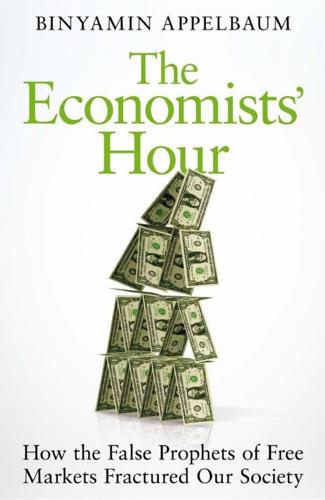
The Economists' Hour: How the False Prophets of Free Markets Fractured Our Society
by
Binyamin Appelbaum
Published 4 Sep 2019
See Janet Novack, “Fix and Tell,” Forbes, May 4, 1998. 79. “Our economy is more competitive today than it has been in a long, long time,” Joel Klein, the head of the Justice Department’s antitrust division, said in a January 29, 1998, speech in New York entitled “The Importance of Antitrust Enforcement in the New Economy”; see justice.gov/atr/speech/importance-antitrust-enforcement-new-economy. 80. Richard A. Posner, Antitrust Law, 2nd ed. (Chicago: University of Chicago Press, 2001), vii. 81. Linda Greenhouse, “Cigarette Antitrust Suit Is Rejected,” New York Times, June 22, 1993. 82. Brooke Group Ltd. v. Brown & Williamson Tobacco Corp., 509 U.S. 209 (1993). 83.
…
As Volcker drove interest rates into the sky, banks that had been delighted with 4 percent profit margins found themselves earning as much as 9 percent. The banking industry’s profits rose by one quarter during the recession years, while other corporations saw profitability decline by one third.80 That golden moment did not last but, in the era of low inflation, lenders continued to prosper — and the financial industry became the engine of a new economy. Volcker began to ease his campaign against inflation in the summer of 1982, telling a Senate committee, “The evidence now seems to me strong that the inflationary tide has turned in a fundamental way.”81 As the Fed lowered interest rates, the economy rebounded, and Reagan began to celebrate. “The long nightmare of runaway inflation is now behind us,” the President said in January 1983.
…
As the Treasury Department wrote in a 1984 report, “Any deviation from this principle represents implicit endorsement of government intervention in the economy — an insidious form of industrial policy based on the belief that those responsible for tax policy can judge better than the marketplace what consumers want, how goods and services should be produced, and how business should be organized and financed.” But the ensuing celebrations overstated the purity of the new tax code. One effect of the bill was to shift tax preferences from the old economy of manufacturing to the new economy of technology and services. The effective tax rate on machinery, for example, bounced back up to 39 percent. And lots of less justifiable loopholes also survived. Special interests were learning to speak the language of economics. One economist, asked for his views by a client, responded that he had not been paid.

A Demon of Our Own Design: Markets, Hedge Funds, and the Perils of Financial Innovation
by
Richard Bookstaber
Published 5 Apr 2007
His status as a business star had been cataloged in a book, The King of Capital: Sandy Weill and the Making of Citigroup (John Wiley & Sons, 2002), stacked in every bookstore’s windows within throwing distance of Citigroup’s Park Avenue headquarters. And he had maintained his perennial position in the society pages of the New York Times. Yet he seemed to get a leg tangled in every scandalous vine that surfaced in that tumultuous year: For Ken Lay, Jeff Skilling, and Enron Corporation, the faux new economy model, Citigroup was a leader in providing the off–balance sheet structures that were passed off as debt. For WorldCom, 127 ccc_demon_125-142_ch07.qxd 2/13/07 A DEMON 1:46 PM OF Page 128 OUR OWN DESIGN Bernie Ebbers’ house of cards built on scores of mergers, Citigroup’s investment banking arm, Salomon Smith Barney, was the engineer.
…
It’s hard to attract much difference of opinion about the mundane old-economy 171 ccc_demon_165-206_ch09.qxd 7/13/07 2:44 PM Page 172 A DEMON OF OUR OWN DESIGN industries that just pump out products with known costs and uses. The views of the most optimistic investors may differ in only the second decimal place from those of the average or pessimistic investors. But the firms that are on the precipice of the digital, virtual new economy or that are opening the door to the information-centric new era—though devoid of visible means of support—leave the most optimistic investors free to imagine prospects that are orders of magnitude beyond those of the average investors who remain stuck in the linear-thinking mode of revenues and earnings.
…
“Well,” he said, “that’s what makes me a trader and you a risk manager.” 181 ccc_demon_165-206_ch09.qxd 7/13/07 2:44 PM Page 182 A DEMON OF OUR OWN DESIGN While Buffett kept away from a market he could not understand, Robertson traded the value stocks against it and Soros realized after the fact that “we went into the new economy but we overstayed our welcome.” In the midst of the bubble, one manager who had watched his investments in Internet IPOs grow twenty-fold, ballooning to upwards of $500 million, asked me how he could escape with his profits. He was restricted and could not sell. He knew a day of reckoning would come, and that “in a year or less this crap is going to be worth zero.”
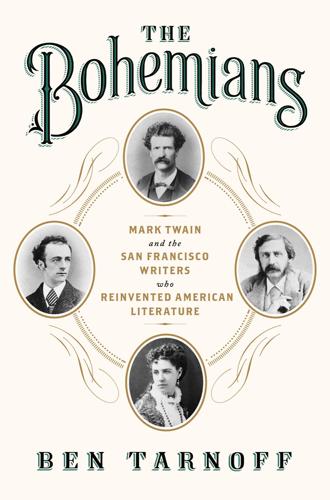
The Bohemians: Mark Twain and the San Francisco Writers Who Reinvented American Literature
by
Ben Tarnoff
Published 20 Mar 2014
Broadway on a Rainy Day by Edward & Henry T. Anthony, c. 1865. FIVE It had been thirteen years since Mark Twain last saw New York. When he stepped off the pier onto the city’s icy, congested streets on January 12, 1867, he hardly recognized the place. Here was the nerve center of the new economy, full of buyers and sellers, plutocrats and paupers. The Civil War had unleashed Northern industry. Manufacturers who got rich making Union munitions now made consumer goods, and shipped them by rail to ever-expanding urban markets. In Manhattan, Twain detected a new tempo to everyday life. People didn’t have time to be friendly: they were always in a rush.
…
“Lincoln of our literature”: William Dean Howells, My Mark Twain, p. 84. CHAPTER FIVE It had been Date of Twain’s arrival in NY: MTAL, p. 174. For his impressions of the city, see his letters in Alta California, March 28, 1867; July 7, 1867; July 21, 1867; and August 11, 1867. NY as nerve center of new economy: Sven Beckert, The Monied Metropolis: New York City and the Consolidation of the American Bourgeoisie, 1850–1896 (Cambridge: Cambridge University Press, 2003 [2001]), pp. 145–195. “no man dreamt . . .” and “original barbarism”: Mark Twain, “The Sex in New York,” Alta California, July 21, 1867. Twain had a talent “fidgety, feverish restlessness”: Mark Twain, “New York,” Alta California, August 11, 1867.
…
Ever since moving Twain’s view of postwar America: MCMT, pp. 154–170; Mark Twain, “Open Letter to Commodore Vanderbilt,” Packard’s Monthly (March 1869), pp. 89–91, and Mark Twain, “The Revised Catechism,” New York Tribune September 27, 1871. “an era of incredible rottenness”: SLC to Orion Clemens, March 27, 1875, in MTL, vol. 6, p. 427. Twain’s relationship to this Twain and the new economy: MCMT, pp. 95–96, 158–159. The Gilded Age as first novel sold by subscription: MTL, vol. 5, p. 362. Twain’s marketing efforts: SLC to Elisha Bliss Jr., November 5, 1873, ibid., pp. 461–470. This was why Twain arranged for The Gilded Age’s publication in England by Routledge & Sons, and copyrighted the edition to protect his interests.
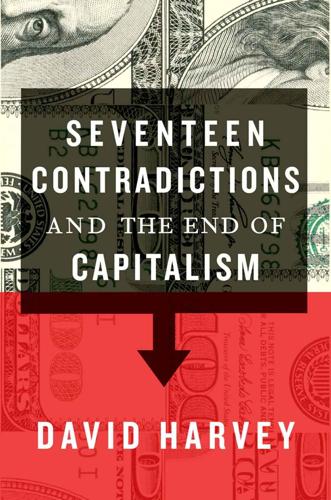
Seventeen Contradictions and the End of Capitalism
by
David Harvey
Published 3 Apr 2014
As they sense and react to their environment, as they become self-assembling, self-configuring, self-healing, and “cognitive,” they more and more resemble living organisms. The more sophisticated and “high-tech” technologies become, the more they become biological. We are beginning to appreciate that technology is as much metabolism as mechanism.’ This shift from a mechanical to an organic (or chemical) metaphor is significant. The ‘new economy’ that Arthur sees appears more natural than the mechanical rationality superimposed on the world from the Enlightenment onwards. This is nothing short of a reversion to (perhaps ‘recuperation of’ would be a better phrasing) more ancient ways of understanding the relation between technology and nature.
…
This is what the central state’s creation of ‘special economic zones’ in China and India is supposed to be about. Elsewhere, development is left to local initiatives on the part of increasingly entrepreneurial local state or regional metropolitan apparatuses. The hope is to replicate the conditions that sparked the innovations behind the digital revolution and the rise of the so-called ‘new economy’ of the 1990s, which, in spite of the way it crashed and burned at the close of the century, left in its wake a radical reordering of capitalist technologies. This is what the geographical concentration of venture capital in regions such as Silicon Valley is supposed to accomplish. While the chequered success of such policies should give us pause, this is, nevertheless, a fine illustration of how capital seizes upon certain contradictions, like that between centralisation and decentralisation or between monopoly and competition, and turns them to its own advantage.
…
283 Maddison, Angus 227 Maghreb 174 Malcolm X 291 Maldives 260 Malthus, Thomas 229–30, 232–3, 244, 246, 251 Manchester 149, 159 Manhattan Institute 143 Mansion House, London 201 manufacturing 104, 239 Mao Zedong 291 maquilas 129, 174 Marcuse, Herbert 204, 289 market cornering 53 market economy 198, 205, 276 marketisation 243 Marshall Plan 153 Martin, Randy 194 Marx, Karl 106, 118, 122, 142, 207, 211 and alienation 125, 126, 213 in the British Museum library 4 on capital 220 conception of wealth 214 on the credit system 239 and deskilling 119 on equal rights 64 and falling profits 107 and fetishism 4 on freedom 207, 208, 213 and greed 33 ‘industrial reserve army’ 79–80 and isolation of workers 125 labour theory of value 109 and monetary system reforms 36 monopoly power and competition 135 reality and appearance 4, 5 as a revolutionary humanist 221 and social reproduction 182 and socialist utopian literature 184 and technological innovation 103 and theorists of the political left 54 and the ‘totally developed individual’ 126–7 and world crises xiii; Capital 57, 79–80, 81, 82, 119, 129, 132, 269, 286, 291–2 The Economic and Philosophic Manuscripts of 1844 269, 286 Grundrisse 97, 212–13 Theories of Surplus Value 1 Marxism contradiction between productive forces and social relations 269 ‘death of Marxism’ xii; ecologically sensitive 263 and humanism 284, 286, 287 ‘profit squeeze’ theory of crisis formation 65 traditional Marxist conception of socialism/ communism 91 Marxists 65, 109 MasterCard Priceless 275 Mau Mau movement 291 Melbourne 141 merchants 67 and industrial capital 179 price-gouging customers 54 and producers 74–5 Mercosur 159 Mexican migrants 115, 175, 195–6 Mexico 123, 129, 174 Mexico City riots (1968) x microcredit 194, 198 microfinance 186, 194, 198, 211 Microsoft 131 Middle East 124, 230 Milanovic, Branko 170 military, the capacities and powers 4 dominance 110 and technology 93, 95 ‘military-industrial complex’ 157 mind-brain duality 70 mining 94, 113, 123, 148, 239, 257 MIT (Massachusetts Institute of Technology) 292 Mitchell, David: Cloud Atlas 264 Mitchell, Timothy 122 Modern Times (film) 103 Mondragon 180 monetarism xi monetary wealth and incomes, inequalities in (1920s) x 1071 monetisation 44, 55, 60, 61, 62, 115, 192–3, 198, 235, 243, 250, 253, 261, 262 money abandonment of metallic basis of global moneys 30, 37, 109 circulation of 15, 25, 30–31, 35 coinage 15, 27, 29, 30 commodification of 57 commodity moneys 27–31 creation of 30, 51, 173, 233, 238–9, 240 credit moneys 28, 30, 31, 152 cyber moneys 36, 109–10 electronic moneys 27, 29, 35, 36, 100 and exchange value 28, 35, 38 fiat 8, 27, 30, 40, 109, 233 gap between money and the value it represents 27 global monetary system 46–7 love of money as a possession 34 measures value 25, 28 a moneyless economy 36 oxidisation of 35 paper 15, 27, 29, 30, 31, 37, 40, 45 power of 25, 36, 59, 60, 62, 65–66, 131–6, 245, 266 quasi-money 35 relation between money and value 27, 35 represented as numbers 29–30 and social labour 25, 27, 31, 42, 55, 88, 243 and the state 45–6, 51, 173 storage of value 25, 26, 35 the US dollar 46–7 use value 28 money capital 28, 32, 59, 74, 142, 147, 158, 177, 178 money laundering 54, 109 ‘money of account’ 27–8, 30 monopolisation 53, 145 monopoly, monopolies 77 and competition 131–45, 218, 295 corporate 123 monetary system 45, 46, 48, 51 monopoly power 45, 46, 51, 93, 117, 120, 132, 133–4, 136, 137, 139, 141, 142–3 monopoly pricing 72, 132 natural 118, 132 of state over legitimate use of force and violence 42, 44, 45, 51, 88, 155, 173 see also prices, monopoly monopsony 131 Monsanto 123 Montreal Protocol 254, 259 ‘moral restraints’ 229, 233 mortgages 19, 21, 28, 32, 54, 67, 82, 239 multiculturalism 166 Mumbai 155, 159 Murdoch, Rupert xi Myrdal, Gunnar 150 N NAFTA 159 name branding 31, 139 nano-trading 243 Nation of Islam 291 national debt 45, 226, 227 National Health Service 115 National Labor Relations Board 120 National Security Administration 136 nationalisation 50 nationalism 7, 8, 44, 289 natural resources 58, 59, 123, 240, 241, 244, 246, 251 nature 56 alienation from 263 capital’s conception of 252 capital’s relation to 246–63 commodification of 59 domination of 247, 272 Heidegger on 59, 250 Polanyi on 58 power over 198 process-thing duality 73 and technology 92, 97, 99, 102 Nazis 151 neoclassical economists 109 neocolonialism 143, 201 neoliberal era 128 neoliberal ethic 277 neoliberalisation x, 48 neoliberalism xiii, 68, 72, 128, 134, 136, 176, 191, 234, 281 capitalism 266 consensus 23 counter-revolution 82, 129, 159, 165 political programme 199 politics 57 privatisation 235 remedies xi Nevada, housing in 77 ‘new economy’ (1990s) 144 New York City 141, 150 creativity 245 domestic labour in 196 income inequality 164 rental markets 22 social reproduction 195 Newton, Isaac 70 NGOs (non-governmental organisations) 189, 210, 284, 286, 287 Nike 31 Nkrumah, Kwame 291 ‘non-coincidence of interests’ 25 Nordic countries 165 North America deindustrialisation in 234 food grain exports 148 indigenous population and property rights 39 women in labour force 230 ‘not in my back yard’ politics 20 nuclear weapons 101 Nyere, Julius 291 O Obama, Barack 167 occupational safety and health 72 Occupy movement 280, 292 Ohlin Foundation 143 oil cartel 252 companies 77, 131 ‘Seven Sisters’ 131 embargo (1973) 124 ‘peak oil’ 251–2, 260 resources 123, 240, 257 oligarchy, oligarchs 34, 143, 165, 221, 223, 242, 245, 264, 286, 292 oligopoly 131, 136, 138 Olympic Games 237–8 oppositional movements 14, 162, 266–7 oppression 193, 266, 288, 297 Orwell, George 213 Nineteen Eighty-Four 202 overaccumulation 154 overheating 228 Owen, Robert 18, 184 Oxfam xi, 169–70 P Paine, Tom: Rights of Man 285 Paris 160 riots (1968) x patents 139, 245, 251 paternalism 165, 209 patriarchy 7 Paulson, Hank 47 pauperisation 104 Peabody, George 18 peasantry ix, 7, 107, 117, 174, 190, 193 revolts 202 pensions 134, 165, 230 rights 58, 67–8, 84, 134 people of colour: disposable populations 111 Pereire, Emile 239 pesticides 255, 258 pharmaceuticals 95, 121, 123, 136, 139 Philanthropic Colonialism 211 philanthropy 18, 128, 189, 190, 210–11, 245, 285 Philippines 115, 196 Picasso, Pablo 140–41, 187, 240 Pinochet, Augusto x Pittsburgh 150, 159, 258 planned obsolescence 74 plutocracy xi, xii, 91, 170, 173, 177, 180 Poland 152 Polanyi, Karl 56, 58, 60, 205–7, 210, 261 The Great Transformation 56–7 police 134 brutality 266 capacities and powers 43 powers xiii, 43, 52 repression 264, 280 surveillance and violence 264 violence 266, 280 police-state 203, 220 political economy xiv, 54, 58, 89, 97, 179–80, 182, 201, 206–9 liberal 204, 206, 209 political parties, incapable of mounting opposition to the power of capital xii political representation 183 pollutants 8, 246, 255 pollution 43, 57, 59, 60, 150, 250, 254, 255, 258 Pontecorvo, Gillo 288 Ponzi schemes 21, 53, 54, 243 population ageing 223, 230 disposable 108, 111, 231, 264 growth 107–8, 229, 230–31, 242, 246 Malthus’s principle 229–30 Portugal 161 post-structuralism xiii potlatch system 33 pounds sterling 46 poverty 229 anti-poverty organisations 286–7 and bourgeois reformism 167 and capital 176 chronic 286 eradication of 211 escape from 170 feminisation of 114 grants 107 and industrialisation 123 and population expansion 229 and unemployment 170, 176 US political movement denies assistance to the poor 292–3 and wealth 146, 168, 177, 218, 219, 243 world xi, 170 power accumulation of 33, 35 of capital xii, 36 class 55, 61, 88, 89, 97, 99, 110, 134, 135, 221, 279 computer 105 and currencies 46 economic 142, 143, 144 global 34, 170 the house as a sign of 15–16 of labour see under labour; of merchants 75 military 143 and money 25, 33, 36, 49, 59, 60, 62, 63, 65–6, 245, 266 monopoly see monopoly power; oligarchic 292 political 62, 143, 144, 162, 171, 219, 292 purchasing 105, 107 social 33, 35, 55, 62, 64, 294 state 42–5, 47–52, 72, 142, 155–9, 164, 209, 295 predation, predators 53, 54, 61, 67, 77, 84, 101, 109, 111, 133, 162, 198, 212, 254–5 price fixing 53, 118, 132 price gouging 132 Price, Richard 226, 227, 229 prices discount 133 equilibrium in 118 extortionate 84 food 244, 251 housing 21, 32, 77 land 77, 78, 150 low 132 market 31, 32 and marketplace anarchy 118 monopoly 31, 72, 139, 141 oil 251, 252 property 77, 78, 141, 150 supermarket 6 and value 31, 55–6 private equity firms 101, 162 private equity funds 22, 162 private property and the commons 41, 50, 57 and eradication of usufructuary rights 41 and individual appropriation 38 and monopoly power 134–5, 137 social bond between human rights and private property 39–40 and the state 47, 50, 58, 59, 146, 210 private property rights 38–42, 44, 58, 204, 252 and collective management 50 conferring the right to trade away that which is owned 39 decentralised 44 exclusionary permanent ownership rights 39 and externality effects 44 held in perpetuity 40 intellectual property rights 41 microenterprises endowed with 211 modification or abolition of the regime 14 and nature 250 over commodities and money 38 and state power 40–41, 42–3 underpinning home ownership 49 usufructuary rights 39 privatisation 23, 24, 48, 59, 60, 61, 84, 185, 235, 250, 253, 261, 262, 266 product lines 92, 107, 219, 236 production bourgeois 1 falling value of 107 immaterial 242 increase in volume and variety of 121 organised 2 and realisation 67, 79–85, 106, 107, 108, 173, 177, 179, 180, 221, 243 regional crises 151 workers’ dispossession of own means of 172 productivity 71, 91, 92, 93, 117, 118, 121, 125, 126, 132, 172, 173, 184, 185, 188, 220, 239 products, compared with commodities 25–6 profitability 92, 94, 98, 102, 103, 104, 106, 112, 116, 118, 125, 147, 184, 191–2, 240, 252, 253, 256, 257 profit(s) banking 54 as capital’s aim 92, 96, 232 and capital’s struggle against labour 64, 65 and competition 93 entrepreneurs 24, 104 falling 81, 107, 244 from commodity sales 71 and money capital 28 monopoly 93 rate of 79, 92 reinvestment in expansion 72 root of 63 spending of 15 and wage rates 172 proletarianisation 191 partial 175, 190, 191 ‘property bubble’ 21 property market boom (1920s) 239 growth of 50 property market crashes 1928 x, 21 1973 21 2008 21–2, 54, 241 property rights 39, 41, 93, 135 see also intellectual property rights; private property property values 78, 85, 234 ‘prosumers’ 237 Proudhon, Pierre-Joseph 183 Prozac 248 public goods 38 public utilities 23, 60, 118, 132 Q quantitative easing 30, 233 R R&D ix race 68, 116, 165, 166, 291 racial minorities 168 racialisation 7, 8, 62, 68 racism 8 Rand, Ayn 200 raw materials 16, 17, 148, 149, 154 Reagan, Ronald x, 72 Speech at Westminster 201 Reagan revolution 165–166 realisation, and production 67, 79–85, 106, 107, 108, 173, 177, 179, 180, 221, 243 reality contradiction between reality and appearance 4–6 social 27 Reclus, Elisée 140 regional development 151 regional volatility 154 Reich, Robert 123, 188 religion 7 religious affiliation 68 religious hatreds and discriminations 8 religious minorities 168 remittances 175 rent seeking 132–3, 142 rentiers 76, 77, 78, 89, 150, 179, 180, 241, 244, 251, 260, 261, 276 rents xii, 16–19, 22, 32, 54, 67, 77, 78, 84, 123, 179, 241 monopoly 93, 135, 141, 187, 251 repression 271, 280 autocratic 130 militarised 264 police-state 203 violent 269, 280, 297 wage 158, 274 Republican Party (US) 145, 280 Republicans (US) 167, 206 res nullius doctrine 40 research and development 94, 96, 187 ‘resource curse’ 123 resource scarcity 77 revolution, Fanon’s view of 288 revolutionary movements 202, 276 Ricardo, David 122, 244, 251 right, the ideological and political assault on the left xii; response to universal alienation 281 ‘rights of man’ 40, 59, 213 Rio de Janeiro 84 risk 17, 141, 162, 219, 240 robbery 53, 57, 60, 63, 72 robotisation 103, 119, 188, 295 Rodney, Walter 291 romantic movement 261 Roosevelt, Theodore 131, 135 Four Freedoms 201 Rousseau, Jean-Jacques 213, 214 Ruhr, Germany 150 rural landscapes 160–61 Russia 154 a BRIC country 170, 228 collapse of (1989) 165 financial crisis (1998) 154, 232 indebtedness 152 local famine 124 oligarchs take natural resource wealth 165 S ‘S’ curve 225, 230–31 Saint-Simon, Claude de Rouvroy, comte de 183 sales 28, 31, 187, 236 San Francisco 150 Santiago, Chile: street battles (2006–) 185 Sao Paulo, Brazil 129, 195 savings the house as a form of saving 19, 22, 58 loss of 20, 58 private 36 protecting the value of 20 Savings and Loan Crisis (USA from 1986) 18 savings accounts 5, 6 Scandinavia 18, 85, 165 scarcity 37, 77, 200, 208, 240, 246, 260, 273 Schumpeter, Joseph 98, 276 science, and technology 95 Seattle 196 Second Empire Paris 197 Second World War x, 161, 234 Securities and Exchange Commission 120, 195 security xiii, 16, 121, 122, 165, 205, 206 economic 36, 153 food 253, 294, 296 job 273 national 157 Sen, Amartya 208–11, 281 Development as Freedom 208–9 senior citizens 168 Seoul 84 serfdom 62, 209 sexual hatreds and discriminations 8 Shanghai 153, 160 share-cropping 62 Sheffield 148, 149, 159, 258 Shenzhen, China 77 Silicon Valley 16, 143, 144, 150 silver 27–31, 33, 37, 57, 233, 238 Simon, Julian 246 Singapore 48, 123, 150, 184, 187, 203 slavery 62, 202, 206, 209, 213, 268 slums ix, 16, 175 Smith, Adam 98, 125–6, 157, 185, 201, 204 ‘invisible hand’ 141–2 The Wealth of Nations 118, 132 Smith, Neil 248 social distinction 68, 166 social inequality 34, 110, 111, 130, 171, 177, 180, 220, 223, 266 social justice 200, 266, 268, 276 social labour 53, 73, 295 alienated 64, 66, 88 and common wealth 53 creation of use values through 36 expansion of total output 232 household and communal work 296 immateriality of 37, 233 and money 25, 27, 31, 42, 55, 88, 243 productivity 239 and profit 104 and value 26, 27, 29, 104, 106, 107, 109 weakening regulatory role of 109, 110 social media 99, 136, 236–7, 278–9 social movements 162–3 social reproduction 80, 127, 182–98, 218, 219, 220, 276 social security 36, 165 social services 68 social struggles 156, 159, 165, 168 social value 26, 27, 32, 33, 55, 172, 179, 241, 244, 268, 270 socialism 215 democratic xii; ‘gas and water’ 183 socialism/communism 91, 269 socialist revolution 67 socialist totalitarianism 205 society capitalist 15, 34, 81, 243, 259 civil 92, 122, 156, 185, 189, 252 civilised 161, 167 complex 26 demolition of 56 and freedom 205–6, 210, 212 hope for a better society 218 industrial 205 information 238 market 204 post-colonial 203 pre-capitalist 55 primitive 57 radical transformation of 290 status position in 186 theocratic 62 women in 113 work-based 273 world 204 soil erosion 257 South Africa 84–5, 152, 169 apartheid 169, 202, 203 South Asia labour 108 population growth 230 software programmers and developers 115, 116 South Korea 123, 148, 150, 153 South-East Asia 107–8 crisis (1997–8) 154, 232, 241 sovereign debt crises 37 Soviet Bloc, ex-, labour in 107 Soviet Union 196, 202 see also Russia Spain xi, 51, 161 housing market crash (2007–9) 82–3 spatio-temporal fixes 151–2, 153, 154, 162 spectacle 237–8, 242, 278 speculative bubbles and busts 178 stagnation xii, 136, 161–2, 169 Stalin, Joseph 70 standard of life 23, 175 starvation 56, 124, 246, 249, 260, 265 state, the aim of 156–7 brutality 266, 280 and capital accumulation 48 and civil society 156 curbing the powers of capital as private property 47 evolution of the capitalist state 42 and externality effects 44 guardian of private property and of individual rights 42 and home ownership 49–50 interstate system 156, 157 interventionism 193, 205 legitimate use of violence 42, 44, 45, 51, 88, 155, 173 loss of state sovereignty xii; and money 1, 45–6, 51, 173 ‘nightwatchman’ role 42, 50 powers of 42–5, 47–52, 57–8, 65, 72, 142, 155–9, 209, 295 and private property 47, 50, 58, 59, 146, 210 provision of collective and public goods 42–3 a security and surveillance state xiii; social democratic states 85 war aims 44 state benefits 165 state regulatory agencies 101 state-finance nexus 44–5, 46–7, 142–3, 156, 233 state-private property nexus 88–9 steam engine, invention of the 3 steel industry 120, 121, 148, 188 steel production 73–4 Stiglitz, Joseph 132–4 stock market crash (1929) x Stockholm, protests in (2013) 171, 243 strikes 65, 103, 124 sub-prime mortgage crisis 50 suburbanisation 253 supply and demand 31, 33, 56, 106 supply chain 124 supply-side remedies xi supply-side theories 82, 176 surplus value 28, 40, 63, 73, 79–83, 172, 239 surveillance xiii, 94, 121, 122, 201, 220, 264, 280, 292 Sweden 166, 167 protests in (2013) 129, 293 Sweezy, Paul 136 swindlers, swindling 45, 53, 57, 239 ‘symbolic analysts’ 188 Syntagma Square, Athens 266, 280 T Tahrir Square, Cairo 266 Taipei, Taiwan 153 Taiwan 123, 150, 153 Taksim Square, Istanbul 266, 280 Tanzania 291 tariffs 137 taxation 40, 43, 47, 67, 84, 93–4, 106, 133, 150, 155, 157, 167, 168, 172, 190 Taylor, Frederick 119, 126 Taylorism 103 Tea Party faction 205, 280, 281, 292 technological evolution 95–6, 97, 101–2, 109 technological imperatives 98–101 technological innovation 94–5 technology changes involving different branches of state apparatus 93–4 communicative technologies 278–9 and competition 92–3 constraints inhibiting deployment 101 culture of 227, 271 definition 92, 248 and devaluation of commodities 234 environmental 248 generic technologies 94 hardware 92, 101 humanising 271 information 100, 147, 158, 177 military 93, 95 monetary 109 and nature 92, 97, 99, 102 organisational forms 92, 99, 101 and productivity 71 relation to nature 92 research and development 94 and science 95 software 92, 99, 101 a specialist field of business 94 and unemployment 80, 103 work and labour control 102–11 telephone companies 54, 67, 84, 278 Tennessee 148 Teresa, Mother 284 Thatcher, Margaret (later Baroness) x, 72, 214, 259 Thatcherism 165 theft 53, 60, 61, 63 Thelluson, Peter 226, 227 think tanks 143 ‘Third Italy’ 143 Third World debt crisis 240 Toffler, Alvin 237 tolls 137 Tönnies, Ferdinand 122, 125 tourism ix, 16, 140, 141, 187, 236 medical 139 toxic waste disposal 249–50, 257 trade networks 24 trade unions xii, 116, 148, 168, 176, 184, 274, 280 trade wars 154 transportation 23, 99, 132, 147–8, 150, 296 Treasury Departments 46, 156 TRIPS agreement 242 tropical rainforest 253 ‘trust-busting’ 131 trusts 135 Turin, Italy 150 Turkey 107, 123, 174, 232, 280, 293 Tuscany, Italy 150 Tutu, Archbishop Desmond 284 Twitter 236 U unemployment 37, 104, 258, 273 benefits 176 deliberately created 65, 174 high xii, 10, 176 insurance 175 and labour reserves 175, 231 and labour-saving technologies 173 long-term 108, 129 permanent 111 echnologically induced 80, 103, 173, 274 uneven geographical developments 178, 296 advanced and underserved regional economies 149–50 and anti-capitalist movements 162 asset bubbles 243 and capital’s reinvention of itself 147, 161 macroeconomic processes of 159 masking the true nature of capital 159–60 and technological forms 219 volatility in 244 United Fruit 136 United Kingdom income inequality in 169; see also Britain United Nations (UN) 285 United States aim of Tea Party faction 280 banking 158 Bill of Rights 284 Britain lends to (nineteenth century) 153 capital in (1990s) 154 Constitution 284 consumption level 194 global reserve currency 45–6 growth 232 hostility towards state interventions 167 House of Representatives 206 human rights abuses 202 imperial power 46 indebtedness of students in 194 Indian reservations 249 interstate highway system 239 jobless recoveries after recession 172–3 liberty and freedom rhetoric 200–201, 202 Midwest ‘rust belt’ 151 military expenditures 46 property market crashes x, 21–2, 50, 54, 58, 82–3 racial issues 166 Savings and Loan Crisis (from 1986) 18 social mobility 196 social reproduction 196–7 solidly capitalist 166 steel industry 120 ‘symbolic analysts’ 188 ‘trust-busting’ 131 unemployment 108 wealth distribution 167 welfare system 176 universal suffrage 183 urbanisation 151, 189, 228, 232, 239, 247, 254, 255, 261 Ure, Andrew 119 US Congress 47 US dollar 15, 30, 45–6 US Executive Branch 47 US Federal Reserve xi, 6, 30, 37, 46, 47, 49, 132, 143, 233 monetary policy 170–71 US Housing Act (1949) 18 US Treasury 47, 142, 240 use values collectively managed pool of 36 commodification of 243 commodities 15, 26, 35 common wealth 53 creation through social labour 36 and entrepreneurs 23–4 and exchange values 15, 35, 42, 44, 50, 60, 65, 88 and housing 14–19, 21–2, 23, 67 and human labour 26 infinitely varied 15 of infrastructural provision 78 loss of 58 marketisation of 243 monetisation of 243 of money 28 privatised and commodified 23 provision of 111 and revolt of the mass of the people 60 social demand for 81 usufructuary rights 39, 41, 59 usury 49, 53, 186, 194 utopianism 18, 35, 42, 51, 66, 119, 132, 183, 184, 204, 206–10, 269, 281, 282 V value(s) commodity 24, 25 failure to produce 40 housing 19, 20, 22 net 19 production and realisation of 82 production of 239 property 21 relation between money and value 27, 35 savings 20 storing 25, 26, 35 see also asset values; exchange values; social value; use values value added 79, 83 Veblen, Thorstein: Theory of the Leisure Class 274 Venezuela 123, 201 Vietnam, labour in 108 Vietnam War 290 violence 53, 57, 72, 204–5, 286 against children 193 against social movements 266 against women 193 colonial 289–90, 291 and contemporary capitalism 8 culture of 271 of dispossession 58, 59 in a dystopian world 264 and humanism 286, 289, 291 of the liberation struggle 290 militarised 292 as the only option 290–91 political 280 in pursuit of liberty and freedom 201 racialised 291 state’s legitimate use of 42, 44, 45, 51, 88, 155, 173 of technology 271 and wage labour 207 virtual ecological transfer 256 Volcker, Paul 37 W wages 103 basic social wage 103 falling 80, 82 for housework 115, 192–3 low xii, 114, 116, 186, 188 lower bound to wage levels 175 non-payment of 72 and profits 172 reduction in 81, 103, 104, 135, 168, 172, 176, 178 rising 178 and unskilled labour 114 wage demands 150, 274 wage levels pushed up by labour 65 wage rates 103, 116, 172, 173 wage repression 158–9 weekly 71 see also income Wall Street criticised by a congressional committee 239–40 illegalities practised by 72, 77 and Lebed 195 new information-processing technologies 100 Wall Street Crash (1929) x, 47 Wall-E (film) 271 Walmart xii, 75, 84, 103, 131 war on terror 280 wars 8, 60, 229 currency 154 defined 44 monetisation of state war-making activities 44–5 privatisation of war making 235 resource 154, 260 and state aims 44 state financing of 32, 44, 48 and technology 93 trade 154 world 154 water privatisation 235 wave theory 70 wave-particle duality 70 wealth accumulation of 33, 34, 35, 157, 205 creation of 132–3, 142, 214 disparities of 164–81 distribution of 34, 167 extraction from non-productive activities 32 global 34 the house as a sign of 15–16 levelling up of per capita wealth 171 and poverty 146, 168, 177, 218, 219, 243 redistribution of 9, 234, 235 social 35, 53, 66, 157, 164, 210, 251, 265, 266, 268 taking it from others 132–3 see also common wealth weather futures 60 Weber, Max 122, 125 Weimar Republic 30 welfare state 165, 190, 191, 208 Wells Fargo 61 West Germany 153, 154, 161 Whitehead, Alfred North 97 Wilson, Woodrow 201 Wolf, Martin 304n2 Wollstonecraft, Mary: A Vindication of the Rights of Woman 285 women career versus family obligations 1–2 disposable populations 111 exploitation of 193 housework versus wage labour 114–15 oppression against 193 social struggle 168 trading of 62 violence against 193 in the workforce 108, 114, 115, 127, 174, 230 women’s rights 202, 218 workers’ rights 202 working classes and capital 80 consumer power 81 crushing organisation 81 education 183, 184 gentrified working-class neighbourhoods ix; housing 160 living conditions 292 wage repression and consumption 158–9 working hours 72, 104–5, 182, 272–5, 279 World Bank 16, 24, 100, 186, 245 World Trade Organization 138, 242 WPA programmes (1930s) 151 Wright, Frank Lloyd: Falling Water 16 Wriston, Walter 240 Y YouTube 236 Yugoslavia, former 174 Z Zola, Émile 7

An Extraordinary Time: The End of the Postwar Boom and the Return of the Ordinary Economy
by
Marc Levinson
Published 31 Jul 2016
The hard-fought 1972 agreement under which Japan was to limit exports of synthetic fibers to the United States turned out to be irrelevant: exports never reached the permitted level, and many of the plants that once produced them were shuttered for good.14 The old economy gave way to a new one, in which engineering and design mattered more than cheap energy and cheap labor. Japan would grow wealthy making cars, advanced electronics, and precision machinery, not commodity products sold by the ton. It was in the automotive industry that the new economy was most visible. The postwar growth of Japan’s carmakers is the stuff of legend. Toyota, which had gotten its start manufacturing looms and sewing machines, was debating whether to fold its tiny automaking arm in 1950 when war broke out in Korea and orders for military trucks saved the day. Honda, which started out making motorized bicycles, produced its first passenger car in only 1963.
…
Although it went unrecognized at the time, the end of the Golden Age was the beginning of a sweeping economic transition, in which the massive industrial complexes in vogue since the turn of the twentieth century would cease to be the drivers of economic growth. In their place, manufacturers would organize dispersed networks of much smaller factories, linked by international supply chains and employing ever smaller numbers of workers. The era of well-paid factory jobs for all was over; in the new economy, value would come from innovation, design, and marketing, not from the physical process of turning raw materials into finished goods. Japan and South Korea, the rising industrial powers, were the outliers in the late 1970s, but within a few years their manufacturing sectors, too, would begin to shed workers.
…
Henry Schroder & Co., 82 Jamaica, 244 Japan, 63, 66–67, 81, 115–129, 163, 164, 233; administrative management in, 178; anti-inflation campaign in, 118–119; automobile industry in, 122–123; bank loans to Third World and, 241, 242; banks/banking system in, 94 (see also Bank of Japan; banks/banking systems); budget deficits in, 150; debt crisis in, 247, 251; decline of old economy of cheap labor and energy in, 118, 121–122; deregulation in, 113; economic crisis of 1990s in, 270; economic growth in, contributors to, 116–117; economic inefficiency in, 117; economic planning in, 25, 117, 123; economic slowdown in, 3–4; economic stagnation in, 261; economy at close of World War II in, 17, 18, 19; education in, 145; environmentalism in, 62; income distribution in, 140; income per person in, 6, 116; income tax in, 147, 149, 164; inflation and buying power in, 56; inflation in, 164; knowledge economy in, 123; labor productivity in, 257; labor share in, 141–142; manufacturing and trade in, 11, 116, 118, 119, 123, 124–129, 131, 137, 261; Ministry of International Trade and Industry, 25, 116, 117, 118, 120, 121, 123, 125, 129; modernization in, 117; new economy of engineering and design in, 122; oil crisis of 1973 in, 2–3, 72, 74, 77–78, 115–119, 122–124, 240; oil crisis of 1970s in, 177–178; operation scale-down in, 118; political parties in, 178; postwar economic boom in, 20; postwar productivity in, 23, 24; privatization in, 215–216; productivity bust in, 259, 268; productivity growth in, 263; productivity slowdown in, 265; service sector in, 117, 123–124; textile/apparel sector in, 119–120; trade with United States and, 119–120; unemployment scheme in, 121; ungovernability in, 156–160; US trade sanctions against, 128–129; wage, training, and job seeking subsidies in, 121; welfare state in, 18, 145 jawboning, 76–77 Jenkins, Peter, 150, 169 John Paul II, 219 Johnson, Lyndon, 145, 162; “guns and butter” model and, 48–49 Johnson administration, 222 Jones, Jack, 169 Jordan, 69 Joseph, Sir Keith, 176; free-market economics and, 172, 260 Kahn, Alfred, 112 Kaufman, Henry, 66, 232 Kennedy, Edward, 112 Kennedy, John F., 26, 144–145; inflation and, 261; unemployment and, 261 Kennedy administration, 222 Kenya, 44 Keynes, John Maynard, 31 Kiesinger, Kurt Georg, 33 Kissinger, Henry, 70 Klasen, Karl, 55 Kleinwort Benson, 84 knowledge economy, 123 Kohl, Helmut, 10, 177, 213 Korea, 242, 265 Korean Peninsula, 44 Korean War, 4, 20, 122 Krauss, Ellis, 177 Krippner, Greta, 236 Kuczynski, Pedro Pablo, 255 Kuwait, 70 Kuznets, Simon, 133–136; gross national product and, 134; stages of economic growth and, 134–135 Kuznets curve, 134–135 labor productivity, 257–258.
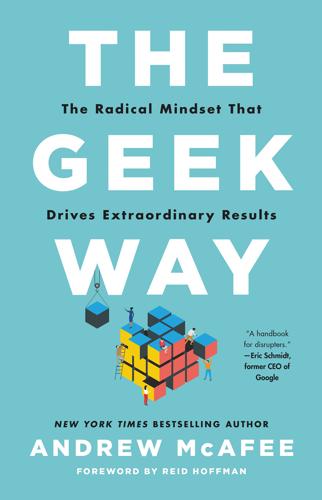
The Geek Way: The Radical Mindset That Drives Extraordinary Results
by
Andrew McAfee
Published 14 Nov 2023
The growing popularity of music streaming services hasn’t come close to offsetting the near elimination of CDs and other physical media; revenues from recorded music fell by more 46 percent between 1999 and 2021. These examples and plenty of others indicate that the digital transformation of industry after industry is dividing companies into two categories: those that can successfully participate in it, and those that can’t. We hear a lot about “new economy” versus “old economy” companies, disrupters versus incumbents, the tech sector versus the rest of the economy, and Silicon Valley versus all the other regions of the US and world. In each case, the first category has the momentum; it’s where the action is, where the value is being created, where the future is to be found, and so on.
…
Some of the companies that have excelled, for example, are in the “wrong” category. Amazon isn’t in Silicon Valley. Apple was an incumbent computer maker until the iPhone turned it into one of the biggest disrupters the world has ever seen. Microsoft is both an incumbent and a non–Silicon Valley company; it seemed to have missed the “new economy” (whatever that is) entirely, until it came roaring back in recent years to become one of the most valuable firms in the world. And as time passed, the label “tech” stopped being a useful differentiator. As strategist Ben Thompson put it in 2021, we currently have “a problem of definition… Is Warby Parker a tech company?
…
Ten years later, SPEs would prove to be instrumental in turning both Enron and AA into nonentities. In February 2001 a team of twelve AA partners met to discuss the previous year’s audit of Enron, a Houston-based energy company that had successfully repositioned itself as a fast-growing exemplar of the “new economy.” The partners soon focused on the approximately three thousand SPEs the company had set up. SPEs are legal as long as they meet several criteria for independence, but it was pretty clear that Enron’s didn’t. For example, at least one of the company’s SPEs was controlled by Andrew Fastow, who was then Enron’s CFO (in fact, the SPE was named for Fastow’s wife and children).
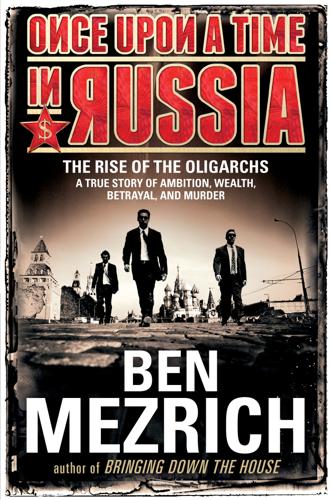
Once Upon a Time in Russia: The Rise of the Oligarchs―A True Story of Ambition, Wealth, Betrayal, and Murder
by
Ben Mezrich
Published 13 Jun 2016
Certainly, if his dwindling paycheck was any indication, the “revival of the economy” was going a lot better for the “civilized businessmen” blowing each other up in Mercedes limousines than for the men charged with keeping tabs on the mayhem. Litvinenko knew that many of his colleagues had been taking things into their own hands—moonlighting for companies and wealthy businessmen, heading up security organizations, using their specific skills to take part in the new economy. Technically, it was illegal, and an agent could get fired—or even arrested—for taking part in after-hours corporate work. But usually, the higher-ups looked the other way. For the most part, turning a blind eye to indiscretions had become a way of life for the bureaucrats who were, themselves, trying to navigate through a world that now seemed constantly in flux.
…
But the voucher program had failed almost immediately, a victim of the massive inflation that had helped make Berezovsky so wealthy. This had led to a shift, from a voucher program aimed at the common man to options sold to the only people who had enough money left to purchase them—the small group of businessmen who had taken an early advantage in the new economy. The more desperate the government became to fund itself through Chubais’s program, the more leverage the Oligarchs attained. When one of the largest oil companies in the nation went into a privatization auction, a company valued at many billions of dollars ended up selling for close to two hundred fifty million.
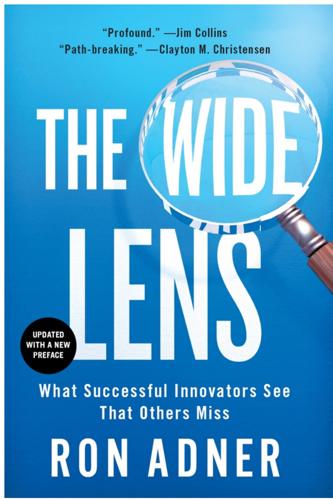
The Wide Lens: What Successful Innovators See That Others Miss
by
Ron Adner
Published 1 Mar 2012
With approximately 1 billion vehicles already on the world’s roads churning out emissions, and rapid growth forecast for new economies, there is a pressing need for an alternative to gasoline. Beyond environmental cost, is the economic cost. The United States, for example, imported 61 percent of its oil in 2010, over 4 billion barrels. At the prevailing price of the time—$76 per barrel—this amounted to a transfer of $325 billion to foreign governments, or $619,225 per minute. With demand for oil increasing with the rise of new economies, and questions about the availability of future reserves, there is a general consensus that future oil prices are likely to be higher, and substantially so.
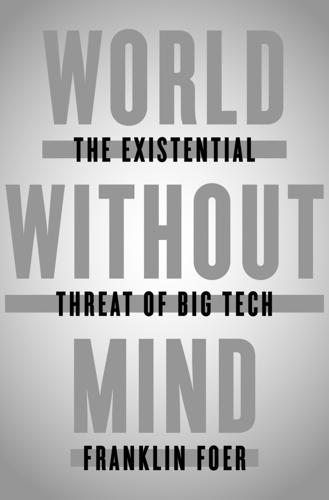
World Without Mind: The Existential Threat of Big Tech
by
Franklin Foer
Published 31 Aug 2017
These conditions gave rise to a glorious festival of creative destruction. New companies rose and then fell, innovation exploded in all directions, inaccessible troves of knowledge were instantly available, a consumer’s Arcadia emerged. It was widely assumed that the history of business settled into a new pattern, what boosters called the New Economy. Firms would never achieve long-lasting dominance in the era of the Internet. Indeed, six years after the last phase of privatization, an astonishing percentage of the highly valued firms spiraled to their doom, in the inglorious dot-com crash. It didn’t matter whether these companies affixed their names to sports stadiums or whether they had just begun to revolutionize commerce.
…
“We can’t stop copying on the Internet, because the Internet is a copying machine”: Cory Doctorow, Information Doesn’t Want to Be Free (McSweeney’s, 2014), 41. “The defining feature of the Internet is that it leaves resources free”: Lawrence Lessig, The Future of Ideas (Random House, 2001), 14. “Value is derived from plentitude”: Kevin Kelly, New Rules for the New Economy (Viking Penguin, 1998), 40. “atomic unit of consumption for news”: Astra Taylor, The People’s Platform (Metropolitan Books, 2014), 204. Between 2006 and 2012, the world’s information output grew tenfold: Paul Mason, Postcapitalism (Farrar, Straus and Giroux, 2015), 125. “What information consumes is rather obvious”: Herbert A.
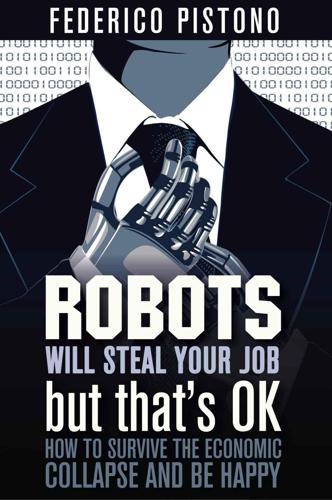
Robots Will Steal Your Job, But That's OK: How to Survive the Economic Collapse and Be Happy
by
Pistono, Federico
Published 14 Oct 2012
http://raceagainstthemachine.com 8 The End of Work Website, Jeremy Rifkin. http://www.foet.org/books/end-work.html 9 The End of Work, Wikipedia. http://en.wikipedia.org/wiki/The_End_of_Work 10 A rough 10 years for the middle class, Annalyn Censky, 2011. CNNMoney. http://money.cnn.com/2011/09/21/news/economy/middle_class_income/index.htm. 11 22 Statistics That Prove That The Middle Class Is Being Systematically Wiped Out Of Existence In America, Michael Snyder, 2010. Business Insider. http://www.businessinsider.com/22-statistics-that-prove-the-middle-class-is-being-systematically-wiped-out-of-existence-in-america-2010-7 12 US Congressional Budget Office, 2011.
…
ftp://ftp.bls.gov/pub/special.requests/lf/aat1.txt 111 Eurozone Unemployment Hits 10.9%, A Record High, 2012. Huffington post. http://www.huffingtonpost.com/2012/05/02/eurozone-unemployment-hits-record-high_n_1470237.html 112 The 86 million invisible unemployed, Annalyn Censky, 2012. CNNMoney. http://money.cnn.com/2012/05/03/news/economy/unemployment-rate/index.htm 113 Ken Robinson says schools kill creativity. Ken Robinson, 2006. TED Global. http://www.ted.com/talks/ken_robinson_says_schools_kill_creativity.html 114 Sir Ken Robinson: Bring on the learning revolution!, Ken Robinson, 2010. TED Global. http://www.ted.com/talks/sir_ken_robinson_bring_on_the_revolution.html 115 I obviously do not think people are “excess baggage”, quite the opposite.
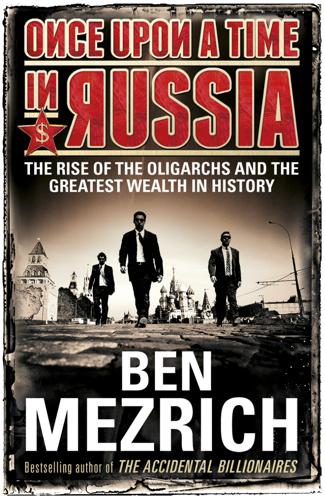
Once Upon a Time in Russia: The Rise of the Oligarchs and the Greatest Wealth in History
by
Ben Mezrich
Published 26 May 2015
Certainly, if his dwindling paycheck was any indication, the “revival of the economy” was going a lot better for the “civilized businessmen” blowing each other up in Mercedes limousines than for the men charged with keeping tabs on the mayhem. Litvinenko knew that many of his colleagues had been taking things into their own hands—moonlighting for companies and wealthy businessmen, heading up security organizations, using their specific skills to take part in the new economy. Technically, it was illegal, and an agent could get fired—or even arrested—for taking part in after-hours corporate work. But usually, the higher-ups looked the other way. For the most part, turning a blind eye to indiscretions had become a way of life for the bureaucrats who were, themselves, trying to navigate through a world that now seemed constantly in flux.
…
But the voucher program had failed almost immediately, a victim of the massive inflation that had helped make Berezovsky so wealthy. This had led to a shift, from a voucher program aimed at the common man to options sold to the only people who had enough money left to purchase them—the small group of businessmen who had taken an early advantage in the new economy. The more desperate the government became to fund itself through Chubais’s program, the more leverage the Oligarchs attained. When one of the largest oil companies in the nation went into a privatization auction, a company valued at many billions of dollars ended up selling for close to two hundred fifty million.
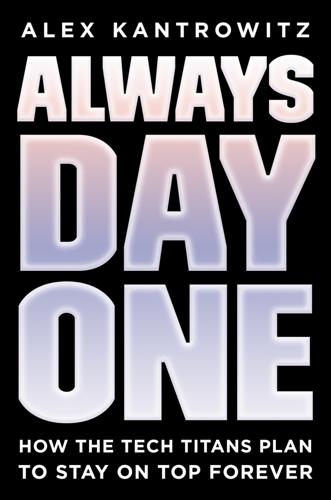
Always Day One: How the Tech Titans Plan to Stay on Top Forever
by
Alex Kantrowitz
Published 6 Apr 2020
“So maybe it’s time to apply your grit to a new goal—getting at least one B before you graduate.” Teaching conformity may indeed be a bigger risk than automation itself. In a conversation about the impact of new workplace technology, Saadia Zahidi, the head of the World Economic Forum’s Centre for the New Economy and Society, told me that “people are expecting a net gain in jobs.” But within four years, she said, the core skills you need in any job will be 42 percent different from the skills you have today, per her 2018 research. The skills more important than ever? Creativity, originality, and initiative.
…
This moment requires sweeping changes. And though it could use input from the tech world, it’s the public sector, which is funded by taxes, that is in the best position to make these changes. “We’re at a real crossroads, in terms of leadership, to thinking about how do we move people along into this new economy,” Hyman said. “It’s not a technological choice; it’s a political choice.” Caring Another political choice came into focus as I met with Adam Seth Litwin, an ILR associate professor who spoke with me about the people that technological change leaves behind, and how we should care for them.

Retirementology: Rethinking the American Dream in a New Economy
by
Gregory Brandon Salsbury
Published 15 Mar 2010
RetirementologySM Rethinking the American Dream in a New Economy Gregory Salsbury, Ph.D. Vice President, Publisher: Tim Moore Associate Publisher and Director of Marketing: Amy Neidlinger Executive Editor: Jim Boyd Editorial Assistant: Pamela Boland Development Editor: Russ Hall Operations Manager: Gina Kanouse Senior Marketing Manager: Julie Phifer Publicity Manager: Laura Czaja Assistant Marketing Manager: Megan Colvin Cover Designer: Anne Jones Managing Editor: Kristy Hart Senior Project Editor: Lori Lyons Copy Editor: Apostrophe Editing Services Proofreader: Kay Hoskin Indexer: Erika Millen Compositor: Nonie Ratcliff Manufacturing Buyer: Dan Uhrig © 2010 by Pearson Education, Inc.
…
Pearson Education North Asia, Ltd. Pearson Education Canada, Ltd. Pearson Educatión de Mexico, S.A. de C.V. Pearson Education—Japan Pearson Education Malaysia, Pte. Ltd. Library of Congress Cataloging-in-Publication Data Salsbury, Gregory B. (Gregory Brandon) Retirementology : rethinking the American dream in a new economy / Gregory Salsbury. p. cm. Includes bibliographical references and index. ISBN-13: 978-0-13-705653-8 (pbk. : alk. paper) ISBN-10: 0-13-705653-2 (pbk. : alk. paper) 1. Retirement—United States—Planning. 2. Retirement—Economic aspects—United States. 3. Baby boom generation— United States. I.
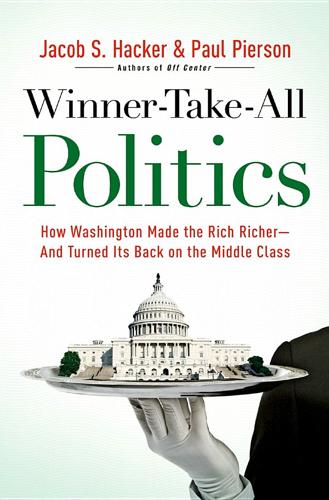
Winner-Take-All Politics: How Washington Made the Rich Richer-And Turned Its Back on the Middle Class
by
Paul Pierson
and
Jacob S. Hacker
Published 14 Sep 2010
Critical aspects of the new winner-take-all economy received sustained, enthusiastic bipartisan support not just under George W. Bush, but also under Bill Clinton. The wonder years of the winner-take-all economy began with the recession that brought down Bush the elder. They ended with a recession of far greater magnitude that discredited Bush the younger—and powerfully showcased the new economy’s true costs. Nothing better summed up the era, and its marriage of the economic and the political, than the résumés of the two men widely regarded as Clinton and Bush’s most influential secretaries of the treasury, Robert Rubin and Henry Paulson. Different in many ways, including party affiliation, each nonetheless developed (for a time) a reputation for sophisticated economic management.
…
We can introduce this chapter with a parallel story of a figure whose rise to prominence tracked the arc of the evolving Democratic Party, and whose actions in Washington encapsulate the Democrats’ equally significant, if distinctive, contribution to the new balance of economic power. There are many candidates for this part—Joe Lieberman, Dianne Feinstein, Robert Rubin, Bill Clinton himself—but since the epicenter of the new economy was Gramm’s “holy place” of Wall Street, it seems appropriate to focus on the senior senator from New York, Charles Schumer. On issues unrelated to finance, Schumer is a strong liberal voice in the Democratic Party. In the fight over Obama’s health plan, for instance, he emerged as a forceful advocate for creating a new public insurance option to compete with private plans.
…
The organizational heft of business continued to grow. Perhaps reflecting a growing confidence about what organized expenditures could accomplish in Washington, spending on lobbying shot upward during George W. Bush’s time in office. Democrats thus faced greater incentives than ever to be responsive to the new economy’s big winners. Equally important, there was almost no organized force in American society pressuring them to do anything else. The financial needs of ever more expensive campaigns added to the imperatives. Despite the efforts of organizational entrepreneurs like Tony Coelho, the 1980s DCCC head who kicked off the Democrats’ big hunt for corporate cash, the party continued to trail badly in the money chase.

Who Owns the Future?
by
Jaron Lanier
Published 6 May 2013
The Problem Is Not the Technology, but the Way We Think About the Technology I will argue that up until about the turn of this century we didn’t need to worry about technological advancement devaluing people, because new technologies always created new kinds of jobs even as old ones were destroyed. But the dominant principle of the new economy, the information economy, has lately been to conceal the value of information, of all things. We’ve decided not to pay most people for performing the new roles that are valuable in relation to the latest technologies. Ordinary people “share,” while elite network presences generate unprecedented fortunes.
…
If, however, “raw” information, or information that hasn’t yet been routed by those who run the most central computers, isn’t valued, then a massive disenfranchisement will take place. As the information economy arises, the old specter of a thousand science fiction tales and Marxist nightmares will be brought back from the dead and empowered to apocalyptic proportions. Ordinary people will be unvalued by the new economy, while those closest to the top computers will become hypervaluable. Making information free is survivable so long as only limited numbers of people are disenfranchised. As much as it pains me to say so, we can survive if we only destroy the middle classes of musicians, journalists, and photographers.
…
A seller might think that a service or content is being sold on a pay-as-you-go basis, but a customer might experience the same business relationship as if it were a case of “first sample is free.” The network would adjust the interface to transactions so that each person can function within the transaction style they prefer at the same time. It might sound like a strange idea, but this capability will help make the new economy both more usable by ordinary people and more robust overall. Economic Avatars as an Improvement on the Forgetfulness of Cash In old-fashioned economies, the seller usually designs the transaction and the buyer must take it or leave it. That needn’t be the case in an advanced humanistic economy.
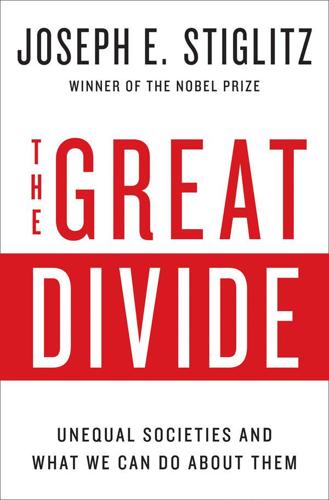
The Great Divide: Unequal Societies and What We Can Do About Them
by
Joseph E. Stiglitz
Published 15 Mar 2015
. _________ THE ESSAYS IN this book are grouped into eight parts, each preceded by a short introductory essay, which attempts to explain the context in which the articles were written or touch upon a few of the topics that I was unable to address in the short confines of the articles reprinted here. I begin with “Prelude: Showing Cracks.” In the years before the crisis our economic leaders, including the Federal Reserve chairman Alan Greenspan, could boast of a new economy in which economic fluctuations that had been the scourge of the past would be put behind us; the so-called great moderation was bringing a new era of low inflation and seemingly high growth. But those who looked even a little bit more closely saw all of this as merely a thin veneer, masking economic mismanagement and political corruption on a massive scale (some of which had come to light in the Enron scandal); even worse, the growth that was occurring was not being shared by most Americans.
…
Productivity gains, which had averaged about 1.5 percent a year from the early 1970s through the early 90s, now approached 3 percent. During Bill Clinton’s second term, gains in manufacturing productivity sometimes even surpassed 6 percent. The Federal Reserve chairman, Alan Greenspan, spoke of a New Economy marked by continued productivity gains as the Internet buried the old ways of doing business. Others went so far as to predict an end to the business cycle. Greenspan worried aloud about how he’d ever be able to manage monetary policy once the nation’s debt was fully paid off. This tremendous confidence took the Dow Jones index higher and higher.
…
Government assistance was required—and it finally came, with World War II: we needed to move people to the cities to make the armaments and other things necessary to win the war. And then after the war, we provided everyone who had fought in the war—which was essentially every young man—a free college education, equipping him for the “new economy” that was then emerging. The article argues that underlying the economy’s malaise today are similar events: a growth of productivity in manufacturing that has outpaced growth in demand, so that global employment in manufacturing is declining; changes in comparative advantage and globalization—which we pushed—which imply that the United States will have a smaller share of this declining employment.
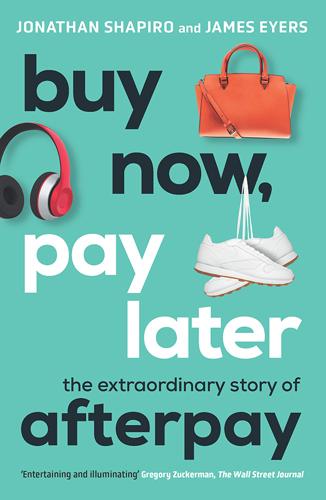
Buy Now, Pay Later: The Extraordinary Story of Afterpay
by
Jonathan Shapiro
and
James Eyers
Published 2 Aug 2021
Jefferies had actually been against hiring Eisen, even though he was an admirer. Eisen’s talents, he felt, would be too limited by GPG’s approach of targeting distressed or unloved companies and pulling them apart. But Eisen fitted right in. He worked on some interesting investments. He tried to convince the GPG elders that new-economy companies such as MYOB were undervalued. Eisen also explored putting a consortium together to buy record label EMI. But enthusiasm for the transaction petered out. ‘The market has been hypnotised by the conversion of Brierley, a professed old-economy investor, into a high-tech speculator,’ wrote Trevor Sykes, a GPG shareholder, in The Australian Financial Review in 2000.5 There was no stock more ‘old-world economy’ than threadmaker Coats.
…
That meant Molnar and Eisen each owned shares worth $1 billion. The 30-year-old Nick Molnar became Australia’s youngest self-made billionaire. When Atlassian’s Cannon-Brookes hit the billionaire club in 2014, he was 34 years old, and co-founder Scott Farquhar was 33. Afterpay’s run was not an isolated event. Share markets had mounted a recovery as ‘new economy’ and work-from-home stocks surged well beyond their pre-COVID levels. Australian Bureau of Statistics retail data showed e-commerce sales were 60 per cent higher in April compared to the same month a year earlier. A similar dynamic was playing out in the United States, where PayPal shares were also on a tear, up 50 per cent by the end of June from their lows in March.
…
Lending Club, a peer-to-peer lender that matched borrowers to individual investors seeking a higher rate of interest, had lost 90 per cent of its value as loans went sour and senior management were tripped up in ethical scandals. OnDeck was another fintech flop that had been exposed as an old-world business dressed up for new-economy investors. It had seen its shares surge after a late 2014 IPO, but was hit by rising competition and the high cost of acquiring customers. The problems were exacerbated when COVID-19 struck; in mid-2020, OnDeck was sold for just US$90 million, compared to a valuation at the time of its IPO of US$1.3 billion.8 But Gabriele and others argued that Affirm and the buy now, pay laters were different to these overrated lenders.
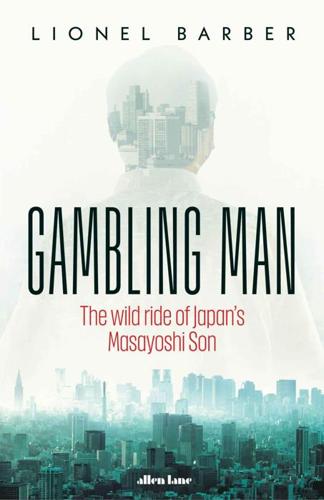
Gambling Man
by
Lionel Barber
Published 3 Oct 2024
Most consumer products such as washing machines came equipped with ‘micon’, the microcomputers or microcontrollers lodged in control panels which scheduled or automated machine tasks. All the talk was about the ‘micon age’. Young people formed micon shops and micon clubs, eager to learn better how to programme the machines themselves.1 The missing link in this emerging new economy was the more sophisticated software programmes enabled by more powerful microprocessors. Software would turbocharge the personal-computer revolution. Masa would play a lead role in this revolution, but at this stage he had no credit, no partner and no product. Besides, he had a more pressing engagement: a second marriage ceremony with his bride Masami in Kyushu, where the Son family had first placed its roots and pulled themselves out of post-war poverty.
…
In hindsight, the Masa–Murdoch episode revealed a deeper truth about modern media. Murdoch was so focused on content that he failed to fully appreciate digital delivery of that very same content. He was still old media, a newspaper man at heart. For all his boyish enthusiasm and occasional missteps, Masa represented the new economy. He’d seen the digital future – and it worked. 12. Whistleblowers On 1 August 1997, nine days before his 40th birthday, Masa’s world fell apart. Everything he’d said and done was cast into doubt after the publication of a book titled Whistle Blown: SoftBank’s Crooked Management. The book set out allegations of hidden losses and share-price manipulation which shattered SoftBank’s image as a dynamic business occupying a unique place in Japan.
…
Bureaucrats remained wary of Masa’s ‘shoot-from-the-lip’ criticisms of excessive caution and slow decision-making; but an influential minority were counting on e-commerce and business-to-business transactions to lower Japan’s bloated price structure and spur a productivity surge, along the lines of the internet’s impact in the US. Masa’s skill was to navigate between these two worlds, the new economy and the old bureaucracy.12 In June 1999, Masa revealed another element in his disruption strategy: a joint venture with Nasdaq, the then junior stock exchange in New York which specialized in tech companies. SoftBank planned to set up a pipeline for hot start-ups, including its own joint ventures such as Morningstar Japan, E-Trade Japan as well as SoftBank Investment Corp, which ran venture capital funds.
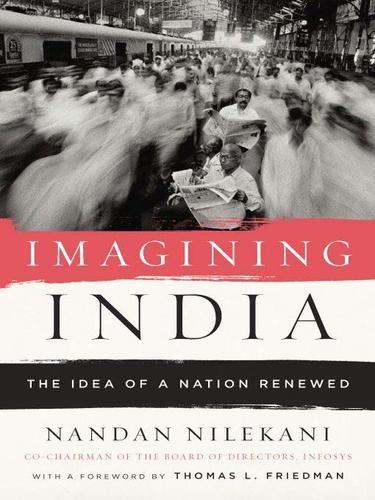
Imagining India
by
Nandan Nilekani
Published 25 Nov 2008
Industry observers would note wryly, “These firms are going bankrupt, but their owners are not.” Infosys was among the first companies to change this perception of Indian business through an ethos of transparency and strong internal governance. We quickly built a reputation for creating widespread shareholder wealth. People began to call us India’s “new economy” company. Fifteen years later, they still call us that. Infosys came with none of Indian industry’s typical history, family ties and regulatory baggage. Consequently I have been more of an observer than a participant in the trials of Indian industry. I am hopeful enough to believe that this combination of proximity and objectivity gives me a rare and valuable perspective.
…
India is a sleepy country, and things just go on.”11 In the last quarter century, however, India has begun to move away from the roiling distress of those years. The early trigger for this change has been the growth of India’s IT sector. This was among the first industries to see rapid growth following reforms—in this sense, the industry has been the flagship of India’s new economy, instrumental in driving the growth of the 1990s and bringing India to the attention of the world. Most importantly, perhaps, the industry unlocked the aspirations of countless Indians as never before through the possibilities it offered for jobs and upward mobility. This sense of possibility and the rising aspirations—that began with the IT sector and that have now intensified as India’s growth has become broad based—are the new unifying themes across the country.
…
The shift from a socialist to a market economy is not a painless one, and the 1990s was a decade of enormous turbulence for India. Market forces struck hard in an economy whose support institutions had been frayed by years of socialism.7 This set off a series of scams, as people racked up huge profits from the chaos of our fledgling markets. For the regulators in the trenches of the new economy, IT became a big part of the toolbox for fixing the glitches across our institutions. In 1992, less than a year after liberalization, India’s stock exchange—the Bombay Sensex (BSE)—experienced a scam blowout running into more than fifty billion rupees. The scam was in some ways inevitable; the BSE was a tight, chummy network of brokers and investors, with highly suspect, weakly regulated trading and settlement processes.

Valley of Genius: The Uncensored History of Silicon Valley (As Told by the Hackers, Founders, and Freaks Who Made It Boom)
by
Adam Fisher
Published 9 Jul 2018
And now, if you could take the principles of HyperCard and interconnect everything, it was like, “Wow, this is amazing. This is going to change everything.” Tiffany Shlain: It was so exciting. Jim Clark: From our going public in ’95 to the year 2000—five years in there—there was an eruption of historic proportions. Fred Davis: Wall Street called it “the New Economy,” and indeed it was. It was that big. Jeff Rothschild: I remember people used to talk about the New Economy, and the New Rules. “Those are the old rules, where you value the company based on margins and return. That stuff doesn’t apply anymore.” I think the people saying those things believed them, I really do. John Markoff: Silicon Valley began to move north.
…
There I started to notice something odd: The stories about Silicon Valley emanating from the New York media world were vastly different from those stories that I had heard at sleepaway camp and in computer rooms, and then later in barrooms and at Burning Man. There was a cognitive dissonance there. New York just doesn’t get it, I told myself. Eventually I came to understand that it all came down to perspective. The mainstream media sees Silicon Valley as a business beat, a money story: Who’s up and who’s down in the new economy? Who’s the latest billionaire? Those are valid questions, maybe even interesting ones—but not to me. In the Silicon Valley where I’m from, the stories were almost never about money. They were tales about resistance, heroism, and struggle, yarns about the creation of something out of nothing—and the derring-do required to pull such a feat off.
…
In short, they were about dragon slaying. That’s still true, at least in the Silicon Valley I know. Those were the stories that got me excited. And they still do. I’m not saying there isn’t an economic story to be told. In fact, I think that we are witnessing the greatest transition since the industrial revolution. A new economy—the information economy—is being created, and the center of that new economic order will be Silicon Valley. And if that’s not the business story of the century, what is? Still, the bigger question, in my humble opinion, is how that transformation will transform us. We begin to see the answer in the culture that’s being created in Silicon Valley, now.
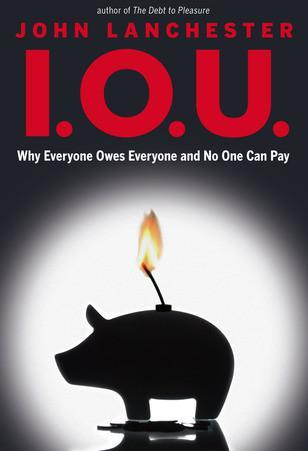
I.O.U.: Why Everyone Owes Everyone and No One Can Pay
by
John Lanchester
Published 14 Dec 2009
So the movement is self-correcting in both directions. Stocks and bonds are the two biggest single fields of global investment, reaching into every corner of economic life. At the beginning of the new millennium, however, both of them were going through an odd patch. The stock market had undergone a spectacular bubble in Internet and new-economy stocks. Some of what was happening seemed to belong to a classic hysteria equal to that of the great historical bubbles such as the Dutch tulip mania, the South Sea bubble, or the nineteenth-century bubble in railway stocks. The broad rules of these bubbles and implosions are well known. They were first systematized by the economist Hyman Minsky, and their best-known popular formulation is in the classic text by Charles P.
…
Morgan, 152 derivatives and, 64–71, 116, 120–21, 183 Exxon deal and, 67–68, 70, 121 Glass-Steagall Act and, 64–65 JPMorgan Chase, 190, 227 Julian, Harriette, 130–31 Kahneman, Daniel, 136–42, 193 Kerviel, Jérôme, 51 Keynes, John Maynard, 49n, 136 predictions of, 213–15 risk and, 55, 145 Kindleberger, Charles P., 104 King, Mervyn, 167, 178, 206 King’s Cross station, 88–90 Kreuger, Ivar, 105 Kynaston, David, 21, 23 leaderless group challenge, 139–40 Leeson, Nick, 51–52, 54 Lehman Brothers, 190, 204, 225 collapse of, 39, 75, 78 Leland, Hayne, 151 leverage: of banks, 35–36, 41–42, 70, 190 debt and, 60–61, 181, 190 deleveraging and, 41–42, 83 derivatives and, 51, 54–55 housing and, 60–61, 83, 95, 97 regulation and, 181, 186, 188, 190 risk and, 35–36 Li, David X., 115–17, 157–58 liabilities, 31–35 in balance sheets, 25–28, 31–34, 37 of banks, 25, 32–35, 37, 41, 204 of individuals, 27–28, 35 leverage and, 35, 41, 60 libel law, 93 life expectancies, 17, 213 liquidity, 212 housing and, 28–29, 90, 96–97 investments and, 60–61 Lloyds TSB, 36, 38–40 loans, lending, 74–76, 108–9 in balance sheets, 27, 30, 34 of banks, 22, 24, 27, 33–36, 41–42, 58–60, 67, 69–70, 74, 83–84, 91–94, 102, 117, 127, 129–30, 143, 146, 165, 187, 216–17, 229 credit and, 209, 216–17 derivatives and, 50–51, 55, 66–75, 80, 121–22 Exxon deal and, 67–68 interest rates and, 59–60, 66, 74, 102, 108, 145, 172–73 paying the bill and, 220–21 predatory, 122, 127–32 risk and, 66–67, 69–72, 74–75, 80, 95, 117, 145, 174 securitization in, 69, 74 see also mortgages London, 53, 84 housing in, 88–90 see also City of London Long-Term Capital Management (LTCM): collapse of, 142, 162, 164–65, 230–31 derivatives and, 54–56, 80 loss aversion, 137 Lovelock, James, 231 Lowenstein, Roger, 161 Macmillan, Harold, 216 Madoff, Bernard, 105, 171, 191–92, 195 Mailer, Norman, 172 Manias, Panics, and Crashes (Kindleberger), 104 manufacturing, 4, 13, 58, 109, 229 and financial vs. industrial interests, 197, 199 Marxist analysis of, 15–16 stocks and, 148–49 market discipline, 183–84 Markopolos, Harry, 192 Markowitz, Harry, 147–49, 158 mark to market, 42, 105–6 Marx, Karl, 15–16 Maryland, housing in, 125–31 Masters, Blythe, 68, 121 mathematics, 5, 231 derivatives and, 47–48, 52–54, 115–17, 166 risk and, 46, 55–56, 74, 133, 136, 146–50, 154, 158, 160–67, 202 of share pricing, 147–48 Meriwether, John, 54 Merrill Lynch, 39, 77, 120, 190, 227 Merton, Robert, 54–55 microeconomics, 137 Minsky, Hyman, 104 Monetary Policy Committee, 178–79 money: assumptions based on primacy of, 202–4 cost of, 102–3 flows of, 7–9, 26 inconceivable amounts of, 8 Money Machine, The (Coggan), 25 Moody’s Investors Service, 62, 70, 114, 119, 208, 210 Morgan, John Pierpont, 20, 64 Morgan Stanley, 40, 64, 227 Morris, Charles, 42 mortgages, 38–40, 83–87, 89–95, 97–102, 110–32 in balance sheets, 27–28 balloon payments on, 100 and buy-to-let properties, 177 conforming, 112, 124 credit ratings and, 123–24, 126 of Cutter family, 126–27 defaults on, 159–60, 163, 165, 229 derivatives and, 38, 57–58, 75–76, 112–22, 132, 157–60, 172, 210–12 discriminatory practices and, 99–101, 127 durations of, 95 endowment, 86–87, 89–90, 146 Iceland’s economic crisis and, 10–11 interest and, 8, 58, 86, 89, 91–92, 95, 100, 102, 108, 110, 112–14, 122, 128, 145–46, 174, 176, 212 “liar,” 126, 132 “no doc,” 132 No Income, No Job or Assets (NINJA), 126 piggyback, 132 predatory lending and, 122, 127–32 regulation and, 99–100, 185 risk and, 145, 158–60, 163–65 sizes of, 92–94 subprime, 38, 75, 83, 100, 113–19, 122–25, 127, 132, 157–59, 165, 202, 210 see also houses, housing, home ownership Nasdaq, 104 nationalization, 24, 39–40, 228–30 New York Times, The, 77, 98, 208 “Night in Tunisia, A,” 45 Nikkei 225, 51–52, 54 9/11 terrorist attacks, 2, 107 Northern Rock, 5, 39, 94, 194, 206 Obama, Barack, 77, 205 regulation and, 188, 190, 223–24 Objectivism, 142–43, 173 oil, 3–4, 107–8, 148–49 “On Default Correlation” (Li), 116 options, 50–52, 151, 174, 184 how they work, 46–47, 50–51 Osaka exchange, 54 Pacioli, Luca, 26 panic of 1893, 64 panic of 1907, 20, 64 Parker, Charlie, 45 Paulos, John Allen, 8 pensions, 76–77, 165, 204 in balance sheets, 27–28, 31 Phillips, Julia, 199 politics, politicians, 5–6, 19–21, 23–25, 81, 118–19, 169–70, 176–78, 217–26, 228–32 AIG bailout and, 76–78 banks and, 25, 33, 43, 182, 186, 195, 202, 207, 211, 217, 228–31 bonds and, 29–30, 61–62, 103, 109, 118, 144, 176–77, 208–9 derivatives and, 57, 183–86 financial industry’s ascent and, 19–20 free-market capitalism and, 14–15, 19, 21, 23–24 housing and, 87–89, 91, 96–101, 177–78 Iceland’s economic crisis and, 9–10, 12, 24, 223 interest rates and, 102–3, 107–8, 172–80, 221 paying the bill and, 219–23 regulation and, 15, 19–21, 24, 169, 180–92, 195, 199, 201, 223–26 risk and, 142–43, 164–66, 174, 184 Ponzi, Charles, 105 Ponzi schemes, 191–92 poor, poverty, 3–4, 13, 21, 82, 179, 196 housing and, 100, 113, 118, 121–23, 126–27, 130–31, 163 pork bellies, 48–49 portfolio insurance, 151–52, 162 “Portfolio Selection” (Markowitz), 147 Posner, Richard A., 120, 174, 182, 193 Powell, Anthony, 62 price, prices, 105–11, 203 and banking-and-credit crisis, 216–18, 220 bonds and, 61, 63, 102–3, 108–10, 144 derivatives and, 38, 46–52, 54, 56, 75, 158–59, 166 of houses, 5, 28–29, 37–38, 61, 71, 86–91, 101, 109–11, 113, 115, 125, 157, 160, 164–66, 173–76, 194, 208 of oil, 3–4, 107–8, 148–49 risk and, 145–50, 158–59, 164–66 of stocks, 102, 105–6, 109–10, 147–51, 158, 174 of toxic assets, 37–38, 42 volatility of, 47–48, 148–50 “Pricing of Options and Corporate Liabilities, The” (Black and Scholes), 45, 47–48, 147 probabilities, 46, 55, 74, 115, 141, 145, 153–55, 160–63 profits, 20, 28, 104–6, 110, 192, 226–28, 230 banks and, 33, 35, 67, 78, 227–28 and benefits of debt, 59–60 derivatives and, 50, 54, 57, 63, 65, 106, 114, 121–22 Enron and, 105–6 regulation and, 204, 226 risk and, 150, 226 Protection of Homeowners in Foreclosure Act, 131 “Quiet Coup, The” (Johnson), 19–20, 185–86 Ragtime (Doctorow), 64 Rand, Ayn, 142–43, 173 Reagan, Ronald, 14, 19–20, 24, 142, 185 recessions, 42, 89, 94, 142, 171, 175, 219 regulation, deregulation, 15, 19–22, 24, 169, 180–202 banking and, 21, 33, 180–91, 194–96, 199–200, 202, 204–5, 208, 211, 223–27 bond ratings and, 208–9 derivatives and, 68, 70, 73, 153, 183–86, 200–201 framework and regime of, 189–92 market discipline and, 183–84 mortgages and, 99–100, 185 proposals for, 223–26 risk and, 143, 153, 164, 187–88, 191, 195, 202, 204–5, 212, 224, 226 in U.K., 21–22, 105n, 180–82, 194–96, 199–201, 218 in U.S., 181, 184–92, 195, 199–200, 223–24, 227 Reykjavík, 10, 12, 170 risk, risks, 49–58, 66–76, 133–36, 141–67, 211–12, 219 AIG and, 75–76 assessment of, 46, 55–56, 74, 133, 135–36, 141–43, 145–67, 187–88, 191, 202, 205, 212, 216, 226 banks and, 19, 34–37, 41, 133, 135–36, 143, 150–54, 156–57, 160, 165–66, 174, 187–88, 191–95, 202, 204–7, 216, 224, 226, 228, 230 bonds and, 61–63, 103, 118, 144, 154, 208 derivatives and, 46–47, 49–52, 54–55, 57–58, 66–75, 78–80, 114–15, 117–22, 151, 153, 158–60, 163, 166–67, 184–85, 205, 212 desirability of, 144, 146, 150, 206–7 diversification and, 146–48 Greenspan and, 142–43, 164–66, 174, 184 hedging of, 49–50, 52, 58, 115, 205 historical data and, 163, 166 housing and, 88, 94–97, 112–13, 125, 129, 145, 158–60, 163–65 investing and, 5, 68, 70, 88, 103, 144, 146–53, 158, 165, 184, 190 leverage and, 35–36 LTCM and, 55–56 overconcentration of, 72–73 regulation and, 143, 153, 164, 187–88, 191, 195, 202, 204–5, 212, 224, 226 securitization and, 69–70, 163, 165 of stairs, 134–35 VAR and, 151–57, 162–63 risk-adjusted return on capital (RAROC), 150–51 Ritholtz, Barry, 219–20 Robinson, Phillip, 128–31 Rogers, Jim, 221 Royal Bank of Scotland (RBS), 34–36, 120, 227 bailout of, 32, 40, 204 Russia, 3, 15–16, 18, 53 bond default of, 55–56, 162, 164–65 Salomon Brothers, 63 Sanford, Charles, 150 Santander, 40 savings, 28, 86, 107, 177, 179, 187 savings and loan crisis, 73, 185, 220 Scholes, Myron, 45, 47–48, 54–55, 147 Securities and Exchange Commission (SEC), 195 credit ratings and, 209–10 regulation and, 153, 186, 189–92 securitization, 20, 22, 200 derivatives and, 69–70, 74, 113–14, 117–19, 122, 212 risk and, 69–70, 125, 163, 165, 212, 224 selling, sales, 34, 42, 104, 174, 203 of bonds, 59, 61–63, 144 derivatives and, 46–50, 52, 56, 65, 67–68, 73–74, 120 of equity, 58–59 of houses, 28–29, 71, 89–90 risk and, 151–52, 165, 224 Shiller, Robert, 106, 145n, 194 Simon, David, 83–84 Singapore exchange, 54 Skilling, Jeffrey, 106 small numbers, law of, 137 Sociét Générale, 51, 77 solvency, insolvency, 28–29 of banks, 36–38, 40–43, 64, 74–75, 120 Spain, 15, 40, 177, 214 contracting economy of, 222–23 housing in, 92, 110 special purpose vehicles (SPVs), 70, 120 stairs, deaths caused by, 134–35 Standard & Poor’s (S&P), 62, 114, 151, 209 statistics, 160–62 Stefánsdóttir, Rakel, 9–10, 12 stock market, stocks, 22, 54–55, 61, 76, 80, 101–11, 115, 226 bubbles and implosions in, 3, 42, 103–9, 142, 175–76 derivatives and, 50–52, 54 investing in, 59, 73, 101–7, 111, 146–52, 158, 175, 192 new-economy, 103 1929 crash of, 152, 199, 213 October 1987 crash of, 142, 151–52, 161–62, 164–65 prices of, 102, 105–6, 109–10, 147–51, 158, 174 structured investment vehicles (SIVs), 120 Summa de Arithmetica (Pacioli), 26 Summers, Lawrence, 43, 74, 188 Taleb, Nassim, 53, 155–56 Tax Reform Act of 1986 (TRA), 100 technology, 42, 104, 149, 155, 166 terrorism, 2, 12, 18, 107 Tett, Gillian, 121, 193 Thatcher, Margaret, 199, 217, 222 free-market capitalism and, 14, 21, 24 on housing, 87, 91, 98 regulation and, 21, 195–96 torture, end of ban on, 18 tranching, 117–18, 122 Treasury, British, 181–82 Treasury, U.S., 43, 54, 64, 74, 76–78 AIG bailout and, 76, 78 regulation and, 188–90 Treasury bills (T-bills), 29–30, 62, 103, 118, 144, 208 China’s investment in, 109, 176–77 Trichet, Jean-Claude, 92 Trillion Dollar Meltdown, The (Morris), 42 Troubled Assets Relief Program (TARP), 37, 189 Turner, Adair, 181 Tversky, Amos, 136–38, 141 UBS, 36, 120 uncertainty, 96 fair value theory and, 147–48 risk and, 55–56, 153, 163 United Kingdom, 9, 11–12, 18, 28–29, 61, 122–24, 134, 139, 194–202, 216–18 banking in, 5, 11, 32–36, 38–40, 51–54, 76–77, 89, 94, 120, 146, 180, 194–96, 199, 202, 204–6, 211–12, 217, 227–28 bill of, 220–22, 224 and City of London, 21–22, 32, 195–97, 200, 217–18 credit ratings and, 123–24, 209 derivatives and, 72, 200–201 financial vs. industrial interests in, 196–99 free-market capitalism in, 14–15, 21, 230 GDP of, 32, 214, 220 Goodwin’s pension and, 76–77 housing in, 38, 87–98, 110, 122, 177–78 interest rates in, 102, 177–80 personal debt in, 221–22 prosperity of, 214, 216 regulation in, 21–22, 105n, 180–82, 194–96, 199–201, 218 United Nations, 4 United States, 17–22, 34, 62–71, 120–31, 134n, 165, 199–201 AIG bailout and, 76–78 banks of, 36–37, 39–40, 43, 63–71, 73, 75, 77–78, 84, 116, 120–21, 127, 150, 152, 163, 183, 185, 190, 195, 204, 211–12, 219–20, 225, 227–28 bill of, 219–20 China’s investment in, 109, 176–77 credit and, 109, 123–24, 195, 208–9, 211 free-market capitalism in, 14–15, 230 housing in, 37, 82–86, 95, 97–101, 109–10, 114–15, 122, 125–31, 157–58, 163 interest rates in, 102, 107–8, 173–77 regulation in, 181, 184–92, 195, 199–200, 223–24, 227 urban desolation in, 81–86 value, values, 42, 74–75, 78–80, 103–4, 179, 181, 217–18, 220, 227 bonds and, 61, 103 derivatives and, 38, 48–49, 185, 201 housing and, 28–29, 71, 90, 92–95, 111, 176 investing and, 60–61, 104, 198 LTCM and, 55–56 notional, 38, 48–49, 80 value at risk (VAR), 151–57, 162–63 Vietnam War, 18, 220 Viniar, David, 163 volatility, 20, 158 risk and, 47–48, 148–50, 161 Volcker, Paul, 20 Waldrow, Mary, 127 Wall Street, 22, 53, 64, 129, 188 Washington Post, The, 18 wealth, 4, 10, 19–21, 64, 204, 206 financial industry’s ascent and, 20–21 in free-market capitalism, 15, 19, 230 housing and, 87, 90, 121 Keynes’s predictions on, 214–15 in West, 218–19 Weatherstone, Dennis, 152 Wells Fargo, 84, 127 Wessex Water, 105n West, 14–18, 43, 213, 231 conflict between Communist bloc and, 16–18 free-market capitalism in, 14–15, 17, 21, 23 wealth in, 218–19 wheat, 49n, 52 When Genius Failed (Lowenstein), 161 Williams, John Burr, 147 Wilson, Lashawn, 130–31 Wire, The, 83–84 World Bank, 58, 65, 69 * GDP, which will be mentioned quite a few times in this story, sounds complicated but isn’t: it’s nothing more than the value of all the goods and services produced in an economy.
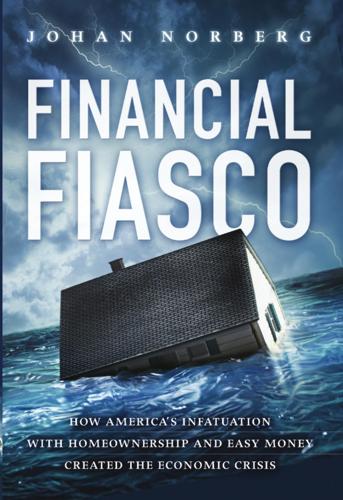
Financial Fiasco: How America's Infatuation With Homeownership and Easy Money Created the Economic Crisis
by
Johan Norberg
Published 14 Sep 2009
"Fannie & Freddie Takeover." Transcript, September 8, 2008. http:// www.cnbc.com/id/26606180. CNN. Lou Dobbs Tonight. Transcript, December 16, 2008. http://transcripts.cnn.com/ TRANSCRIPTS/0812/16/ldt.0l.html. CNNMoney.com. "Bush: US Economy Is Thriving." August 8, 2007. http:// money.cnn.com/2007/08/08/news/economy/bush/index.htm. Cole, Harold, and Lee Ohanian. "New Deal Policies and the Persistence of the Great Depression: A General Equilibrium Analysis." Journal of Political Economy 112, no. 4 (2004): 779-816. Committee on Oversight and Government Reform. Credit Rating Agencies and the Financial Crisis.
…
MSN Money, November 10, 2008. http://articles.moneycentral.msn.com/Investing/Extra/was-AIG-watch dog-not-up-to-the-job.aspx?page = all. Gillespie, Nick, and Matt Welch. "`I Think the SEC Was Distracted."' Reason, March 2009. Golden, Daniel. "Countrywide's Many `Friends."' Portfolio.com, June 12, 2008. Goldman, David. "The $8 Trillion Bailout." CNNMoney.com, January 6, 2009. http:// money.cnn.com/2009/01/06/news/economy/where_stimulus_fits_in/index. htm?eref =rss_topstories. Goldstein, Allan. Financial Services Hearing, U.S. House of Representatives, January 5, 2009. http://www.youtube.com/watch?v=uN-PieCA-4A. Gorton, Gary. "The Panic of 2007." Paper prepared for the Federal Reserve Bank of Kansas City, Jackson Hole Conference, Jackson Hole, WY, August 25, 2008.
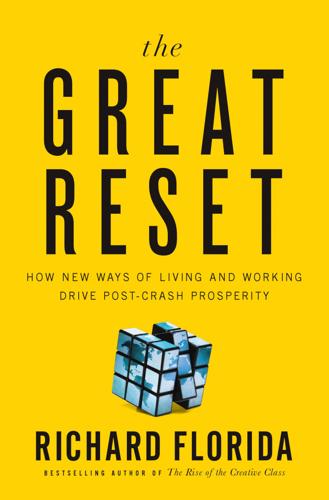
The Great Reset: How the Post-Crash Economy Will Change the Way We Live and Work
by
Richard Florida
Published 22 Apr 2010
“Unlike some recent recessions, this time the economy cannot go back to where it was prior to the recession,” writes the economist Mark Thoma, “and the structural change that must occur to move resources out of housing and the financial sector and into other, productive uses will take time to bring about.”3 I don’t have a crystal ball. Nobody can say in advance exactly what this new economy, new way of life, this new spatial fix, will ultimately look like. During the Great Depression, my parents could scarcely have imagined they would be buying a suburban house on what had once been farmland. As we’ve seen, recovery from both the Long Depression of the 1870s and the Great Depression of the 1930s—the First and Second Resets—took the better part of two or three decades.
…
Catherine Rampell of the New York Times dubs it the “mancession.”11 The gender division of labor also makes economic adjustment more difficult. Manufacturing jobs are overwhelmingly held by men, while women predominate in service jobs. Margaret Wente of the Globe and Mail argues that broader changes in the economy—the rise of knowledge and service work and the decline of manufacturing work—favor women over men. “The new economy (over the long term) is creating tons of service jobs in retail, customer support, and personal care,” she writes. “But no matter how much education and retraining we offer, we are not going to transform factory workers and high-school dropouts into customer-care representatives or nurses’ aides any time soon.
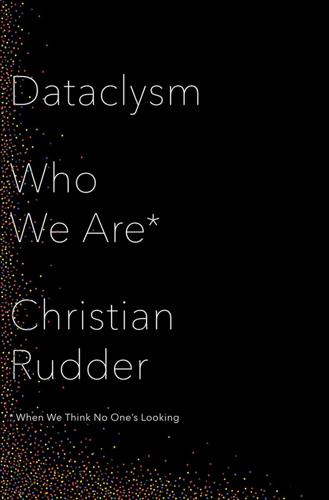
Dataclysm: Who We Are (When We Think No One's Looking)
by
Christian Rudder
Published 8 Sep 2014
He shows the kind of belief that a different type of person channels to rip phone books in half for his tight bro J.C. The byline at the bottom of the piece reads, “Tom Peters is the world’s leading brand when it comes to writing, speaking, or thinking about the new economy.” He was also, at that point, not just the leading, but the only person calling himself a brand. Hence a mouthpiece for the “new economy” takes a page from Bass’s Victorian playbook. And why not? Fake it till you make it. The article kicked off the idea of self-branding as a direct path to success and is still read in marketing classes today. A few years later, a man named Peter Montoya expanded upon Peters’s idea in a second influential manifesto called The Brand Called You.
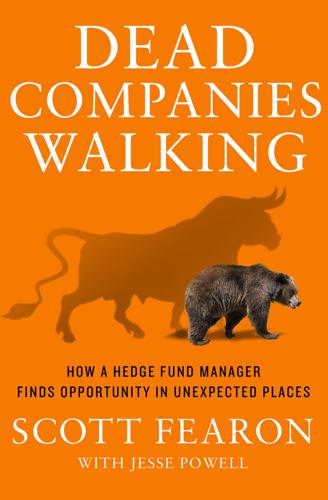
Dead Companies Walking
by
Scott Fearon
Published 10 Nov 2014
One morning in 1999, we drove across the Golden Gate Bridge and through San Francisco to a business park built on a spit of land, called Oyster Point, that sticks out into the bay. A company called PlanetRx (stock symbol: PLRX) had its headquarters there and I had an appointment with the CFO, a fellow named Steve. This was during the heyday of the dotcom boom, when everybody and their brother was crowing about things like “the new economy” and predicting the end of brick-and-mortar retail. It was a crazy time, and it brought on the most irrational and inflated asset bubble in the history of capitalism. I’ll talk more about that later. For now, I’ll stick to my morning with my father and PlanetRx’s CFO. Steve invited us into his office overlooking the bay and told us all about how his company was going to remake the drug business the way Amazon.com had remade the book business.
…
They only look as far back as the first days of their particular bubble and assume that older ways of living or doing business have now been rendered permanently obsolete. This was especially true during the dotcom boom, when people who seemed perfectly reasonable would stop you on the street and tell you that the “new economy” of the internet had made investing metrics such as profit margins—or even actual revenues—relics of a bygone age. Sunk, Part II Manias don’t die easily, especially when they’re fueled by rich, powerful, and obsessive people. In 2013, fourteen years after Alan swore that “immersive viewing” would magically cause Americans to love sailing, Oracle founder Larry Ellison tried to bring yachting to the masses again when he hosted the America’s Cup on San Francisco Bay.
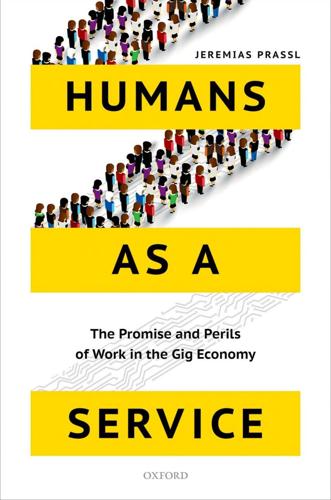
Humans as a Service: The Promise and Perils of Work in the Gig Economy
by
Jeremias Prassl
Published 7 May 2018
In Germany, a 2015 court order even banned certain Uber services and, in the spring of 2017, the company announced that it would pull out of Denmark in response to new taxi regulations.15 Even those who do not reject regulation outright tend to emphasize the benefits of ‘experimentation first, regulation later’. New York University Stern Business School’s Arun Sundararajan, for example, posits that ‘history suggests that different types of economies require different approaches to regulation . . . it is neither possible nor economically viable to simply adopt existing rules and apply them to a new economy’.16 The argument that exist- ing regulation has ossified beyond repair, however, has powerful detractors— including Cambridge Professor Simon Deakin, who has argued that if ‘technology can evolve, so can the law’.17 As regards the emphasis on regulatory experimentation, various scholars have advocated that we adopt an ‘innovation law perspective’ in support of ‘permissionless innovation’, whereby ‘experimentation with new technolo- gies and business models should generally be permitted by default . . .
…
MGI, Independent Work: Choice, Necessity, and the Gig Economy (McKinsey & Co. 2016), 36, citing Lawrence Katz and Alan Krueger, ‘The rise and nature of alter- native work arrangements in the United States, 1995–2015’ (2016) NBER Working Paper No. 22667; Patrick Gillespie, ‘The rapidly growing gig econ- omy is still super small’, CNN Money (6 May 2016), http://money.cnn. com/2016/05/06/news/economy/gig-economy-princeton-krueger-tiny/, archived at https://perma.cc/6ZT9-8EX7 17. Caroline O’Donovan, ‘Sen. Mark Warner to San Francisco techies: “the politi- cians are coming” ’, BuzzFeed News (25 September 2015), http://www.buzzfeed. com/carolineodonovan/the-politicians-are-coming-sen-mark-warner-has- a- warning-for?
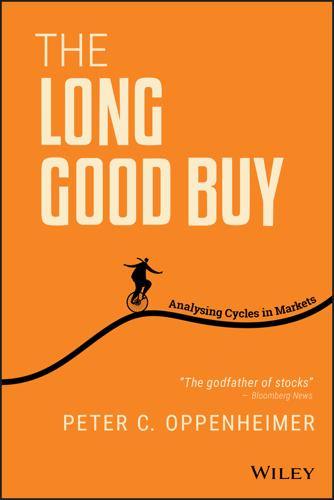
The Long Good Buy: Analysing Cycles in Markets
by
Peter Oppenheimer
Published 3 May 2020
Then, in the period running up to the technology bubble in the late 1990s, there was a sharp rotation in favour of growth stocks when low interest rates were seen as beneficial to growth companies that enjoyed long duration. Also, technology companies (and at the time telecom and media stocks) were seen as ‘new economy’ companies that would benefit from much higher future growth than those in traditional industries (often referred to at the time as ‘old economy’) where demand was mature. In the wake of the collapse of the technology bubble, many of these growth stocks (and technology stocks in particular) experienced the biggest falls in valuations.
…
Polaroid traded at a P/E of over 90 times, and Walt Disney and McDonald's at over 80 times forward expected earnings. Despite these lofty valuations, Professor Jeremy Siegel (1998) argued that most of the stocks did actually grow into their valuations and achieved very strong returns. A similar narrative later drove the focus on the ‘new economy’ of the late 1990s. Then, as in the 1960s, value (or ‘old economy’) stocks became unloved. The current rise in technology companies that followed the financial crisis is rather different from the frenzy that drove the bubble in the late 1990s. In the years before the crisis, banks dominated the sector weights in many equity markets (benefitting from a cocktail of strong growth, high leverage and product innovation).

The Smartphone Society
by
Nicole Aschoff
The Silicon Valley spirit is even bigger than the promise of its platforms to create value and success for individuals and firms, however. Silicon Valley, we’re told, is ushering in a new age—a digital age of limitless possibility. The big ideas being cultivated in Silicon Valley have been around for a while. In the early nineties scholars discussed the “New Economy” and the “network society,” predicting massive societal shifts due to advances in digital technology and internet connectivity. These ideas can also be traced to much earlier work; scientists in the 1950s believed they were on the cusp of developing a general-purpose artificial intelligence: the ability for a machine to “learn” and in principle perform any intellectual task that a human can.
…
P., 37, 39, 41, 44, 54 Mori, 61–62 MoveOn.org, 91 M-pesa mobile money transfer system, 6 MSD (Marjorie Stoneman Douglas) High School, 90 mSpy, 25 Mubarak, Hosni, 92, 94, 97 Muflahi, Abdullah, 20 multitier subcontracting, 31 Munro, Alice, 62–63 Musk, Elon, 126 Myanmar, 42, 50, 94 National Highway Traffic Safety Administration, 157 National Hispanic Media Coalition, 55 National Justice Project (Australia), 21 National Labor Relations Board, 153 National Policy Institute, 105–6 National Security Agency (NSA), 80, 81, 95 NationBuilder, 93–94 neoliberalism: and capitalism, 69, 102, 112–13, 117–18, 144–45; and economic crisis, 99–100, 176n30; and feminism, 107; and new titans, 54 Nepal, 94 network(s), 61, 143 “network effects,” 44 “network society,” 121 #NeverAgain movement, 90, 110 New America, 56 New Center, 45–46 “New Economy,” 121 news: fake, 50–51, 56 news cycle, 89 newspapers, 50–52 news sources, 50–52 New York Taxi Workers Alliance, 146, 153, 178–79n5 Nichols, Synead, 89–90 Nigeria, politics in, 97 Nixon, Richard, 88 Noah, Trevor, 110 Noble, Dylan, 19–20 Nobu Malibu, 62 #NotOkay, 108 NSA (National Security Agency), 80, 81, 95 Obama, Barack, 6, 44, 55, 92, 106 obsolescence, built-in, 82 Ocasio-Cortez, Alexandria, 104, 112, 152, 179n22 Occupy movement, 102–3, 104 Oculus, 41 OKCupid, 23, 24 O’Neill, Caitlin, 56 online dating, 23–27, 35 online search, 52 Open Markets Institute, 150 Open Sesame, 10 Operation Haymaker, 95–96 O’Reilly, Holly Figueroa, 93 O’Rourke, Beto, 92 outrage politics, 109 outsourcing, 146 ownership of our own data, 135–36, 156 Oxford, Kelly, 60, 108 Pacific Railroad Act (1862), 80 Page, Larry, 38, 39, 41, 54, 119–20, 124 PageRank, 52 Palantir, 81 para-social interactions with celebrities, 65 parental limitation, 8 Parkland, Florida, 90 Patriot Act, 81 payment systems, mobile, 4, 5, 6, 10 PayPal, 44 peer-to-peer networks, 120 Pelosi, Nancy, 56 performance: politics as, 109, 111; social media as, 63, 64, 68 permatemps, 46, 47 personal information: ownership of, 135–36, 156; sharing on social media of, 60–61 personalization, 53 personal narratives, 115–16 philanthropy, 56–57 Philippines, 90–91 “phone boss,” 69 Physician Women for Democratic Principles, 89 “pickers,” 33, 46 Pickersgill, Eric, 7 Pinterest, 60, 64, 69 PlentyOfFish, 24 polarization, in politics, 111 police: surveillance by, 96–97, 137–38, 176n28; violence against blacks by, 17–23, 35, 89–90, 100–102, 111, 169n6, 169n13 political advertising, 149 political movements, 97, 102, 111–12 political organizing, 91 political parties, 93–94 politics, 87–113; algorithms and filter bubbles in, 109–10; Black Lives Matter in, 89–90, 100–102, 111; bots in, 109; censorship in, 95; Dakota Access Pipeline Protests in, 103–4, 110; decentralization in, 101–2; digital-analog model in, 104, 110–12, 162; economic crisis in, 98–100; feminist movement in, 107–8; finding our voice in, 108–13; geo-, 95–96, 144; government tracking in, 94–95; gun violence in, 90, 91, 110, 111; modern-day revolt in, 100–108; neoliberal, 99–100, 112–13; Occupy movement in, 102–3; outrage, 109; outside of US, 93–94; as performance, 109, 111; as personal, 88–100; polarization in, 111; political movements in, 97, 102; political parties in, 93–94; protests in, 89–90, 92, 95, 100–104; slacktivism in, 111; social media use by candidates in, 103–5; social media use by people in power in, 87–88, 92–93; Sunrise Movement in, 103–4; surveillance by law enforcement in, 96–97, 176n28; Syrian War in, 90; virality in, 81; voter outreach in, 89; white supremacy in, 35, 105–7 poor communities, internet access for, 149–50 Posner, Eric A., 135 poverty, 12–13 power, in cognitive mapping, 145 power inequalities, 137–38 predictive modeling, 77 print magazines, 172n40 PRISM program, 81 privacy, 69–72, 137–38, 150–51, 156 “privacy tools,” 71 private sphere, commodification of, 144 producers vs. consumers, 28–29 profit, frontiers of, 72–79, 85–86 proponents, 9–12 ProPublica, 48, 106, 149, 153 protests, 89–90, 92, 95, 100–104 Proud Boys movement, 106 public opinion, molding of, 55 Pulitzer, Joseph, 50 “push” notifications, 84 racism, 17–23, 35, 169n6, 169n13 RAM (Rise Above Movement), 106–7 rare metals, 82, 83 Reagan, Ronald, 43 real estate market, effect of high-tech company location in, 48–49 “real life,” digital life vs., 68 recommender algorithm, 67 Reddit, 24 redlining, digital, 29 regulation of monopolies, 43–46 reinforcement learning, 157 Rekognition software, 149 relationships, expectations and norms about, 24–25 religious beliefs, tech-based, 123 remote medicine, 10 rents, 48 research funding, 55 retreat from technology, 132–35 Reynolds, Diamond “Lavish,” 20, 35 Rice, Tamir, 18 “right to repair,” 155 right-wing movements, 105–7 Rise Above Movement (RAM), 106–7 rituals, on social media, 61 Robbin, Jonathan, 77 robots, 128, 131 Rockefeller, Jay, 77 Rockefeller, John D., 37, 54, 57 Rongwen, Zhuang, 94 Roosevelt, Franklin Delano, 88 Rousseff, Dilma, 97 Rudder, Christian, 23 rural areas: internet access for, 29, 149–50 Salesforce: employees organizing at, 148; immoral projects at, 154 Sandberg, Sheryl, 107 Sanders, Bernie, 103–5, 110 Santana, Feidin, 19, 20 Santelli, Rick, 105 Saudi Arabia, censorship in, 95 Scavino, Dan, 88 Schifter, Doug, 127 Schillinger, Klemens, 8 Schneier, Bruce, 135 Schrems, Max, 151 science fiction, 126 Scott, Walter, 19, 20 scraping, 71 Seamless, 30 search algorithms, 51–52, 53 Seasteading Institute, 124 Seinfeld, Jerry, 110 self-esteem, 65 selfies, 59–60 selfish behavior, 138–39, 154–56 self-monitoring tools, 69 service jobs, 33–34 Seth, Jodi, 56 sexism, 23–27, 35 sexting, 25–27, 35 sexual division of labor, 74–75 sexual harassment, 25, 27, 126–27 sexuality, 23–27, 35 sexual violence, 25 shareholder value society, 98 sharing on social media, 60–61, 84 Sharpton, Al, 102 shopping, mobile, 31–32 short message service (SMS), 6 Sidewalk Labs, 41 Sierra Club, 157 signals intelligence, 95–96 “silent spring,” 7 Silicon Valley, 115–41; distrust of, 125–31; and government control, 124; and spirit of capitalism, 115–25; taking back control from, 131–41 Silicon Valley Rising (SVR), 147 Sina Weibo (China), 94 Singh, Jagmeet, 93–94 the Singularity, 123 skeptics, 7–8 Skype, 81 slacktivism, 111 Slager, Michael, 19 Slutwalks, 108 smartness, 9 smartphone(s): demographics of, 3, 4; vs.
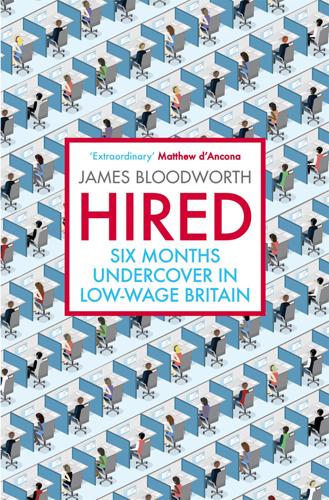
Hired: Six Months Undercover in Low-Wage Britain
by
James Bloodworth
Published 1 Mar 2018
He had worn himself out, Claire said, pulling what must have amounted to hundreds of thousands of items off the shelves for Amazon’s customers, from books to kitchen appliances. He had hit all his pick rates, had always turned up to work on time and, crucially, had somehow managed not to flout the innumerable petty rules which governed nearly every aspect of the job. Yet this brave new economy – the Darwinian world in which illness was an unpardonable sin – spat him out like a betel nut. His crime was having the temerity to get sick. He even phoned the office an hour before work, in accordance with Transline’s rules, to let his manager know. Not that this stopped the agency from getting rid of him. 3 I was back at work and had started to get sick.
…
Life underground, where death was omnipresent, potentially lurking in the next roof cavity or pit shaft, had the power to bind men together like the braiding of a copper cable. Selwyn told me emphatically that given the chance he would ‘go back tomorrow’ because ‘everybody stuck together, no matter what’. You were physically safer in many of the jobs in the new economy – only middle-class pseudo revolutionaries pined for the children of the men I met in Merthyr Tydfil to be sent back down beneath the mountains. Yet the jobs in the town today often lacked the solidarity and support networks of the past, let alone the stability propitious to family life. Selwyn told me how his nephew had lost his job at a local factory.

Shadow Work: The Unpaid, Unseen Jobs That Fill Your Day
by
Craig Lambert
Published 30 Apr 2015
As Craig Lambert shows in this mordant, mischievous book, our no-service gig economy gives new meaning to the phrase ‘free market.’” —HENDRIK HERTZBERG, STAFF WRITER, THE NEW YORKER “Increasingly, time is our scarcest resource. Craig Lambert’s important book will change how you think about your days. Shadow work is a new and vitally important concept for understanding the new economy. Lambert’s arguments need to be carefully considered by all who ponder our economic future.” —LAWRENCE H. SUMMERS, FORMER U.S. SECRETARY OF THE TREASURY, PROFESSOR AND PRESIDENT EMERITUS, HARVARD UNIVERSITY “Without any debate or conscious choice, during the last couple of decades technology has radically changed the premises and nature of everyday life and work.
…
The upshot is an army of young people doing full-time shadow work for months or even years, trying to break into the job market as unpaid trainees. The internship juggernaut represents a massive, widespread, institutionalized form of shadow work. The 2011 exposé Intern Nation: How to Earn Nothing and Learn Little in the Brave New Economy, by Ross Perlin, offers a biting critique of the internship explosion. Many college students now see internships as a requirement for a white-collar career: They dismiss traditional student jobs like camp counselor, waitress, or mailroom clerk as irrelevant to their ambitions (though the mailroom is exactly where many interns land).
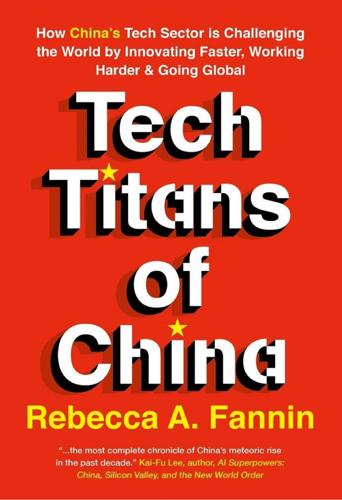
Tech Titans of China: How China's Tech Sector Is Challenging the World by Innovating Faster, Working Harder, and Going Global
by
Rebecca Fannin
Published 2 Sep 2019
—Jon Medved, CEO, OurCrowd “Tech Titans of China is a must read to understand the entrepreneurial dynamics and business model innovations of China’s leading tech companies and how they will transform the world as they go global.” —Poh Kam WONG, Professor, NUS Business School and Senior Director, NUS Enterprise “More often than not, Rebecca Fannin has the first line on players in China’s ‘new economy’ for those of us keeping score at home.” —Tim Ferguson, Former Editor, Forbes Asia “Global innovation expert and China guru Rebecca Fannin has penned a brilliant, information-packed, cogent and engaging volume that is a must-read.” —Jerry Haar and Ricardo Ernst, professors respectively at Florida International University and Georgetown, and co-authors of Innovation in Emerging Markets “Tech Titans of China gives us a very clear and concrete China innovation 101, and lays out how China tech giants are creating their own technology universe.”
…
In the ebb and flow of history, economic powers shift from one country to the next. I believe we are now at this juncture with the United States and China. Game-changing technologies are being invented in China at a rapid clip, and they’re going global. The future of tomorrow is being driven by new economy breakthroughs, largely in high tech, which is transforming our world. China has the advantage to lead because of its large online markets and a young, tech-savvy population eager to experiment with new devices. There’s no legacy of outdated personal computers or dial-up internet. It’s straight mobile all the time, and 5G superspeedy connections are on their way.

Buy Then Build: How Acquisition Entrepreneurs Outsmart the Startup Game
by
Walker Deibel
Published 19 Oct 2018
He acquires the companies fully only after he’s able to see evidence of success in doubling growth the rate. What Goldberg is doing is no secret: he’s building tremendous value within organizations that already have revenue, infrastructure, and earnings. He is anchored in the philosophy of “keeping one foot in the new economy and one foot in the practical economy,” thereby proving that disruption and exponential growth are not reserved exclusively for startups. Masterful acquisition entrepreneurs can experience explosive growth from small businesses in mature industries. Goldberg is living proof. PRODUCT SUBSCRIPTIONS Finally, John Warrilow, author of Built to Sell and The Automatic Customer, creates step-by-step instructions to create a product offering from a service, and a subscription model from a product offering.
…
In fact, as Taylor Pearson underscores in his entrepreneurship manifesto, The End of Jobs, jobs as we’ve come to know them are becoming less and less available. Since 2000, the population has grown 240 percent faster than job growth. The question, Pearson provides, is no longer “How do I get a job doing that?” It’s, “How do I create a job doing that?” Creating opportunity and building value are skillsets. And they are driving the new economy. Entrepreneurship isn’t just popular anymore, it’s necessary. Acquisition entrepreneurship provides a career accelerator for people going out on their own. It provides infrastructure beyond just one person. As we’ve seen, startups fail. Almost all of them. Out of the ones that do make it, the vast majority get stuck in low revenue companies, never scaling to much beyond the efforts of their owners.
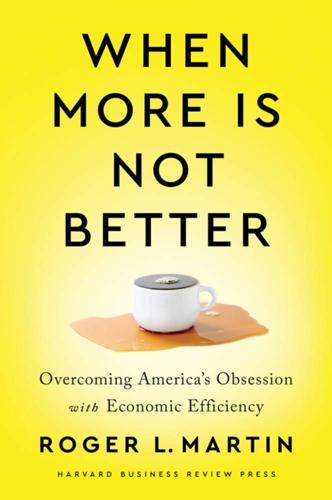
When More Is Not Better: Overcoming America's Obsession With Economic Efficiency
by
Roger L. Martin
Published 28 Sep 2020
In the United States, for instance, 75 percent of industries have become more concentrated in the past twenty years, and profits have followed suit. In 1978 the one hundred most profitable US firms earned 48 percent of the profits of all publicly traded companies combined, but by 2015 the figure had nearly doubled, to 84 percent.13 The success stories of the so-called new-economy companies are in some measure responsible. The dynamics of platform businesses, where competitive advantages often derive from network effects, very quickly convert random distributions into Pareto ones, as Instagram did with fame sorting. But Pareto distributions are also common in traditional industries.
…
See North American Free Trade Agreement NASCAR, 102 National Football League (NFL), 144–145 National Rifle Association (NRA), 197 natural systems achieving balance in, 97–114 adaptivity of, 103–106 complexity of, 100–103 continuous adaptation in, 82–83 dynamic interactions in, 80–81 features of, 80–84, 100 relationship between inputs and outputs in, 81–82 stability of, 84 structure of, 106–113 sum of parts and, 80–81 US economy as, 77–94 NCLB. See No Child Left Behind Act neoclassical Keynesian economics, 23–24, 25 Nestlé, 192 Net Promoter Score (NPS), 28, 29, 48 network effects, 191–192 New Deal, 12, 107, 159 new-economy companies, 71 New England Complex Systems Institute, 177 New York Stock Exchange (NYSE), 64, 88–91, 92, 93 Nicomachean Ethics (Aristotle), 183 1970s, 5–12, 24 No Child Left Behind Act (NCLB), 29–30, 45, 49 nonreductionist thinking, 118–119 normal distributions, 33–38 North American Free Trade Agreement (NAFTA), 66, 150 Norton, David, 129 NYSE.
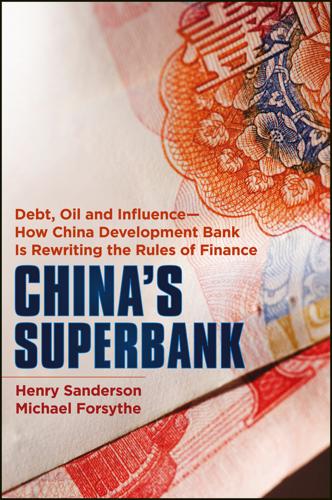
China's Superbank
by
Henry Sanderson
and
Michael Forsythe
Published 26 Sep 2012
Contents Preface Acknowledgments Chapter 1: Let 10,000 Projects Bloom The Wuhu Model The Chongqing Model Global Financial Crisis A Town Called Loudi Li’s Story “Manhattan” in China Credit Risk in a One-Party State Cracks in the System Chapter 2: Turning a Zombie Bank into a Global Bank A Life in the Party The Princeling Party: The Beginning of State Capitalism Taking Over a Basket Case Transforming CDB from an ATM Machine Developing a Slogan Beating the Commercial Banks Gao Jian: Creating a Market for “Risk-Free” Bonds The West Self-Destructs: The Financial Crisis Moving Beyond Wall Street Chapter 3: Nothing to Lose but Our Chains Made in Ethiopia Ethiopia’s Zone: Exporting to the West China–Africa Development Fund: The State’s Private Equity Arm Rising Role of China in Africa Fixed Capital: Western-Style Lending African Tiger: Can Ghana Escape the Resource Curse? Fresh Capital Chapter 4: Risk versus Reward Default in Bolívar’s Country China’s Venezuelan Adventure Loans for Oil Cars, Housing, and Gold: Good Business for China Ecuador Russia China in the Backyard of the United States Chapter 5: Funding the New Economy Obama’s Dream Default-Free Bond Market Financing China’s Global Company: Huawei The Final Frontier: Private Equity Acting as a Gatekeeper Imprint of the State Chapter 6: The Future About the Authors Index Since 1996, Bloomberg Press has published books for financial professionals as well as books of general interest in investing, economics, current affairs, and policy affecting investors and business people.
…
See Javier Corrales and Michael Penfold, Dragon in the Tropics: Hugo Chavez and the Political Economy of Revolution in Venezuela (Washington: Brookings Institution Press), 2011. 55. The nation pumped about 2.72 million barrels of oil a day in 2011, according to BP’s annual Statistical Review of World Energy, down 22 percent from 1998. 56. Press conference, Yalong Bay, China, April 14, 2011. Chapter 5 Funding the New Economy We are a private company. The government doesn’t tell us what to do. —Yingli Green Energy CEO Miao Liansheng, responding to a question about the company’s $5.78 billion line of credit from China Development Bank, June 2011 None of the G-7 countries provide[s] levels of financing anywhere near those of the China Development Bank.
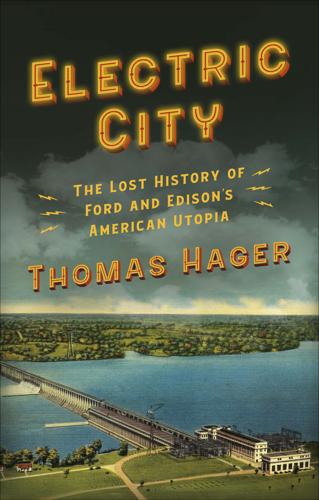
Electric City
by
Thomas Hager
Published 18 May 2021
Worthington came of age in the 1870s penniless, watching his brothers and sisters flirt with starvation, struggling to support them by taking any job he could. Luckily, he had a few things going for him: He was smart, he liked to talk to people, and he was persuasive, the usual recipe for a successful salesperson. But he was more ambitious than that. He realized that the future of the South was going to depend on building a new economy, and that this new economy had to be based on something other than cotton. The South was going to have to diversify and industrialize. Worthington worked his way through the University of Alabama and got a degree as a civil engineer, a builder of transportation and power systems. It was a profession where he could make a good income while building things to make life better for everybody.
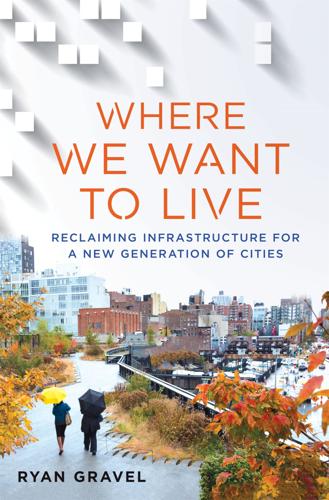
Where We Want to Live
by
Ryan Gravel
Published 2 Feb 2016
From the 1940s through the 1960s, for example, as cities made incremental shifts toward an exciting modern lifestyle led by automobiles, buses, and truck-based freight, the older infrastructure networks and the land associated with them became increasingly undesirable and eventually obsolete. As a new collective vision for the future emerged, citizens, businesses, and governments built an amazing new infrastructure and an entirely new economy organized around a new way of doing things. They also discarded their old ways, often abandoning them both physically and emotionally. Their lack of interest and attention to older communities led to decades of disinvestment in the systems and economies that they had once sustained. The Los Angeles River from the 7th Street Bridge, Los Angeles.
…
Channeling a growing anxiety about these challenges and the river’s potential, especially in Elysian Valley communities like Frogtown, Mayor Eric Garcetti told the Los Angeles Times, “That’s always a balance—everyone wants the good of gentrification and not the bad.”3 The complex dynamics of equity in the construction of a new economy are frustrating—often paralyzing—and, unfortunately, we don’t have to look far to see the results of inaction. When the first highways were built, they were also an innovative new infrastructure of economic prosperity, and they worked exactly as they were intended to. Nearly every new stretch of asphalt was as celebrated locally as the High Line is today.
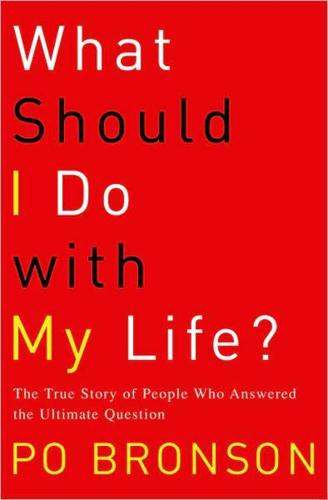
What Should I Do With My Life?
by
Po Bronson
Published 2 Jan 2001
Our economy is so vast that we don’t have to grind it out forever at jobs we hate. For the most part, we get to choose. And so a status system has evolved that values being unique and true even more than it values being financially successful. I’ll never forget a potluck dinner I attended during the New Economy’s heyday. A guy was standing in the kitchen doorway, and my wife gave him the Question. His ego crumpled. Dripping with self-disgust, he barely got out the words, “Oh, I’m just another venture capitalist.” Well, my wife was excited to meet a venture capitalist. At the time, “venture capitalist” was about the highest status tag you could aspire to.
…
If you’re one of these adrenaline seekers who’s convinced all you need from life is a series of oversized challenges, good for you. But you should probably put this book down right here. Because where I’m going to take this conversation might make you very uncomfortable. 30 My New Start-up HOW THE PAST COLORS PERCEPTION When the New Economy imploded, it took more than six months for the stubborn deniers to admit their hoped-for quick rebound was nowhere in sight. The techies were starting to acknowledge the solution to their problem was not to retreat from rocky start-ups to sturdy Ciscos, or to climb up the food chain from founding companies to funding them, or to hop from dot-coms to telecoms.
…
Or maybe it’s running a company. I’d like to lead people. CEOs are heralded as our leaders today. I think I can do a good job.” “It’s okay if you don’t have it figured out. As long as you don’t stop figuring.” “I appreciate you saying that. I’ve had these windows into these two worlds, politics and the New Economy. And I don’t want to burn through my experiences like some trash novel that’s gone from my mind as soon as it’s finished. I want my experiences to add up. I want them to be useful, and to come together. I don’t really know how they fit together, but I think about it all the time. They have to add up to more.”
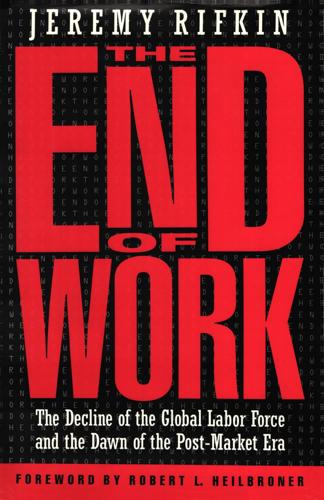
The End of Work
by
Jeremy Rifkin
Published 28 Dec 1994
The White House is seeking more than $3.4 billion in federal funds to upgrade existing training programs and initiate new projects to retrain the more than 2 million Americans who lose their jobs each year. 63 Robert Reich, the Secretary of Labor, has been barnstorming the country, garnering support for a massive retraining effort. In speech after speech, Reich warns his audiences that the United States is entering a new, highly competitive global economy and that "to succeed in the new economy, our workers must be better educated, highly skilled, and adaptable, as well as trained to worldclass standards."64 While the White House is pleading for more job retraining, a growing number of critics are beginning to ask the question, "Retraining for what?" With the agricultural, manufacturing, and service sector all automating their operations and reengineering millions of Americans out of their jobs, the question of where these displaced workers will find alternative employment, once they've become retrained, becomes paramount.
…
"Synthesizers," p. AI. 71. "What's New in Music Technology," New York Times, March 1, 1987, p. 19. 72. "Strike Out the Band," p. F8. 73· "Hollywood Goes Digital," Forbes ASAp, December 7, 1992, p. 58. 74· "How'd They Do That?" Industry Week, June 21, 1993, p. 34. 75· Ibid., p. 35· ]6. "Waking Up to the New Economy," Fortune, June 27, 1994, p. 37. CHAPTER 11 1. "The American Dream: Fired Up and Melted Down," Washington Post, April 12, 1992, p. AI. 2. Ibid. 3. Reich, Robert, The Work of Nations: Preparing Ourselves for 21st Century Capitalism, (New York: Random House, 1992), p. 213. 4. Harrison, Bennett, and Bluestone, Barry, The Great U-Turn: Corporate Restructuring and the Polarizing of America, (New York: HarperCollins, 1988), pp. 110111. 5.
…
Cambridge, MA: Massachusetts Institute of Technology, Working Paper #3571- 93, June 4, 1993· Busch, Lawrence, Lacy, William, and Burckhardt, Jeffrey, Plants, Power, and Profit: Social, Economic, and Ethical Consequences of the New Biotechnologies. Cambridge, MA: Basil Blackwell, 1991. 330 Bibliography 331 Callahan, Raymond, Education and the Cult of EffICiency. Chicago: University of Chicago Press, 1964. Carnevale, Anthony Patrick, America and the New Economy. Washington, D. e.: u. S. Department of Labor, 1991. Chandler, Alfred Jr., The Visible Hand: The Managerial Revolution in American Business. Cambridge, MA: Harvard University Press, 1977Clinton/Gore National Campaign, Technology: The Engine of Economic Growth, 1992 . Cochrane, Willard, The Development of American Agriculture: A Historical Analysis.
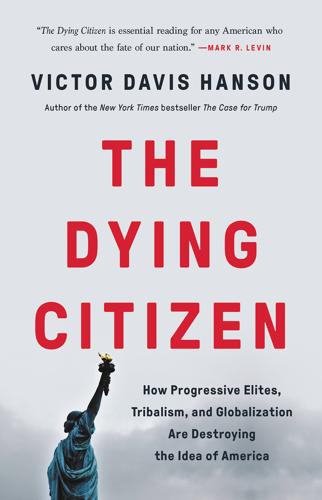
The Dying Citizen: How Progressive Elites, Tribalism, and Globalization Are Destroying the Idea of America
by
Victor Davis Hanson
Published 15 Nov 2021
Many four-year degrees of the clerisy are more like alphabetic cattle brands that reflect herd status and provide entrée rather than proof of learning.28 Elites assumed that the rules of the new economy were set in stone and thus not subject to change. Americans were to shrug that there would no longer be many well-paying American manufacturing or assembly jobs. They were to accept asymmetrical free trade as either fair and advantageous or, if conceded as unfair and injurious, beyond remedy. Of course, few pointed out that sympathetic journalists, academics, and corporate analysts offered most news accounts and analyses of globalization and the new economy. They were precisely those who had largely benefited from globalization with huge increases in their clients, audiences, and consumers.
…
Familial erosion was particularly prevalent among the white working classes of the deindustrialized interior of America and the inlands of otherwise affluent coastal states. Such pathologies reflected a decade of inert wages, increasing labor-nonparticipation rates, ossified economic growth, and stubborn unemployment. Soon, however, a genre of social disparagement grew around the “losers” in the new economy. It was as if social pathologies drove out American industry rather than that the flight of industry abroad catalyzed familial erosion. Republicans, for example, for much of the twenty-first century ignored the vestigial middle classes on the theory that the blinkered did not understand the immutable laws of laissez-faire capitalism and the primacy of absolutely unfettered free trade over fair commerce.

Narcotopia
by
Patrick Winn
Published 30 Jan 2024
He put pen to paper and drew up a manifesto.2 “The Bondage of Opium” The Agony of the Wa People: A Proposal and a Plea Now we want to free ourselves from slavery to an opium economy. This we cannot do by ourselves. Like the heroin addict who wants to kick his addiction, we need outside help to be successful. Give us the following six offerings, Saw Lu wrote, and the UWSA will reject the drug trade in favor of a “whole new economy.” Substitute crops. Expertise in modern agriculture. Paved roads. Hospitals and schools, staffed by foreigners. Western geological teams helping the Wa discover valuable deposits: tin, silver, or gold. We are not asking for arms. We are not asking the United States to buy our opium crop as Khun Sa does.
…
Food must come along with the cessation of opium growing, not sometime afterward. In contrast to the usual famine relief, temporary food support for the Wa people would do more than just feed hungry people. Beyond that, it would enable the destruction of the opium economy and be the critical starting place for the recovery of the Wa people and the development of a whole new economy. Second, beyond subsistence, we want not only to rehabilitate our area but to develop it. The cultivation of opium substitute crops is crucial. Crop substitution has worked in Thailand. It can work in the Wa area. We want the help necessary to make it happen. We need to diversify our agriculture.
…
We need to learn more productive agricultural practices. None of the international aid programs that have helped other peoples develop their agriculture have reached us—first due to war and now due to isolation enforced by the Burmese. Third, we sorely need to construct roads and to develop infrastructure that will support a new economy. At present there are no paved roads in the Wa area, not even any gravel roads. The roads that exist are hand hewn and follow preexisting footpaths or are strategic roads designed only to get artillery to the top of the hill. These are passable only during the dry season. There are no engineered roads designed for vehicular traffic.

Growth: From Microorganisms to Megacities
by
Vaclav Smil
Published 23 Sep 2019
Mindful of the Japanese experience, I was thinking that every year after 1995 might be the last spell of what Alan Greenspan famously called irrational exuberance, but it was not in 1996 or 1997 or 1998. And even more so than a decade earlier, there were many economists ready to assure American investors that this spell of exponential growth was really different, that the old rules do not apply in the New Economy where endless rapid growth will readily continue. During the 1990s, the Dow Jones Industrial Average—driven by America’s supposedly New Economy—posted the biggest decadal gain in history as it rose from 2,810 at the beginning of January 1990 to 11,497 at the end of December 1999 (FedPrimeRate 2017). The performance corresponded to annual exponential growth of 14% during the decade, with the peak gains of 33% in 1995 and 25% in 1996.
…
More than a few normally rational people have been able to convince themselves—by repeating the mantra “this time it is different”—that performances will keep on multiplying for a long time to come. The best examples of these, often collective, delusions come from the history of stock market bubbles and I will describe in some detail just two most notable recent events, Japan’s pre-1990 rise and America’s New Economy of the 1990s. Japan’s economic rise during the 1980s provides one of the best examples of people who should know better getting carried away by the power of exponential growth. After growing 2.6 times during the 1970s, Nikkei 225 (Japan’s leading stock market index and the country’s equivalent of America’s Dow Jones Industrial) increased by 184% between January 1981 and 1986, added 43% in 1986, nearly 13% in 1987, almost 43% in 1988, and a further 29% in 1989 (Nikkei 225 2017).
…
In his series of studies, culminating in a comprehensive book, Gordon (2000, 2012, 2016) questioned the fundamental Solowian assumption of economic growth as a continuous process that will persist forever, and demonstrated, contrary to the prevailing impression of unprecedented progress, that in many respects the much-touted “New Economy”—based on exploiting computing, information processing, and telecommunication advances made possible by the growth of microprocessor capabilities (conforming to Moore’s law)—does not measure up to the great inventions of the past. A long-term perspective shows virtually no growth of major economies before 1750, and accelerated growth in the frontier (that is the richest Western) economies, in the UK after 1750 and the US a century later.

The Making of Global Capitalism
by
Leo Panitch
and
Sam Gindin
Published 8 Oct 2012
Firms restructured key production processes, outsourced others to cheaper and more specialized suppliers, and relocated to the US south—all as part of an accelerated general reallocation of capital within the American economy. Amid the bravado and almost manic competitiveness of Wall Street, pools of venture capital were made available for the high-tech firms of the “new economy.” By the late 1980s these transformations in production laid the basis for US exports to grow faster than those of all other advanced capitalist countries. Moreover, the American economy’s unique access to global savings through the central position of Wall Street in global money markets allowed it to import freely without compromising other objectives.
…
Despite the sheer tenacity of the view, going back to the theories of imperialism a century earlier, that overaccumulation is the source of all capitalist crises, the crisis that erupted in the US in 2007 was not caused by a profit squeeze or collapse of investment due to general overaccumulation in the economy.54 In the US, in particular, profits and investments had recovered strongly since the early 1980s. Nor was it caused by a weakening of the dollar due to the recycling of China’s trade surpluses, as so many had predicted. On the contrary, the enormous foreign purchases of US Treasuries had allowed a low-interest-rate policy to be sustained in the US after the bursting of the “new economy” stock bubble at the beginning of the new century. While this stoked an even greater real-estate bubble, after a brief downturn economic growth and non-residential investment resumed. Indeed, investment was growing significantly in the two years before the onset of the crisis, profits were at a peak, and capacity-utilization in industry had just moved above the historic average.
…
This did not write finis to the European variety of capitalism, embedded as it was in the deeply entrenched corporatist arrangements of “coordinated capitalism” throughout the postwar era. But these arrangements were now ever more attuned to competitiveness as the overriding goal.38 Motivated by a concern that “business and citizens in the European Union have been slower in embracing [the] new economy than in the United States,” the European Commission wanted Europe to “become the cheapest and easiest place to do business in the world.”39 Thus, having started with the seductive promise in the mid 1980s of a European and Monetary Union based on a “social charter,” by the time the euro was launched in 1999 it was clear that regional economic integration was, in effect, “the antechamber to broader liberalization.”
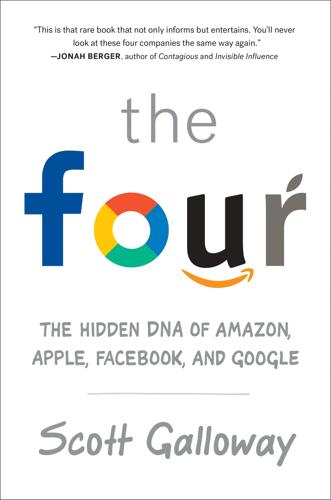
The Four: How Amazon, Apple, Facebook, and Google Divided and Conquered the World
by
Scott Galloway
Published 2 Oct 2017
As Bezos wrote in Amazon’s first annual letter, in 1997, “Given a 10 percent chance of a hundred times payout, you should take that bet every time.”51 Needless to say, most CEOs don’t think this way. Most won’t even take risks that have less than a 50 percent chance of success—no matter how big the potential payoff. This is a big reason why old-economy firms are leaking value to new-economy firms. Today’s successful companies may have the assets, cash flow, and brand equity, but they approach risk differently than many tech firms that have seen their death. They live for today and acknowledge that great success only comes with significant, even existential, risk. There is a survivor bias that plagues old-economy CEOs and their shareholders.
…
For better or worse (and frankly, it is often for worse), organizations have access, essentially, to infinite amounts of data, and what might as well be an infinite variety of ways to sort through and act on that data. At the same time, ideas can be turned into reality at unprecedented speed. The thing Amazon, Facebook, and no less hot firms, including Zara, have in common is they are agile (the new-economy term for fast). Curiosity is crucial to success. What worked yesterday is out-of-date today and forgotten tomorrow—replaced by a new tool or technique we haven’t yet heard of. Consider that the telephone took 75 years to reach 50 million users, whereas television was in 50 million households within 13 years, the internet in 4, . . . and Angry Birds in 35 days.

What's Mine Is Yours: How Collaborative Consumption Is Changing the Way We Live
by
Rachel Botsman
and
Roo Rogers
Published 2 Jan 2010
In the same way that individuals reflect on and report their daily activities and thoughts on Twitter or Facebook—and, in turn, have those contributions reflected on, mimicked, edited, and disseminated—society is undergoing a constant process of reflexivity and adaptation. We are able to put a name to things and get a sense that we are part of a greater movement. This awareness of community momentum and purpose spurs further explorations and growth into new economies and innovations. We have become increasingly adapted to change. And because Collaborative Consumption is based on natural behavioral instincts around sharing and exchanging that have in fact been suppressed by hyper-consumerism but that are innate to us, it has the potential to grow notably fast.
…
We hope this period will be regarded as the transition away from consumption for consumption’s sake, and away from the fear of what will happen to the economy when this ethos is abandoned. But in the nascent stages of this transformation, it can be hard to grasp what kind of movement it is. A revolution? A phenomenon? A new new economy? It will be exciting to see how Collaborative Consumption evolves. What unimaginable things will become shareable? What will become the “Google of exchange”? What will become the American Express of social currencies? In the space of a little more than a decade, we have seen the evolution of traditional banks to social lending marketplaces to completely new forms of peer-to-peer virtual currencies such as VEN.
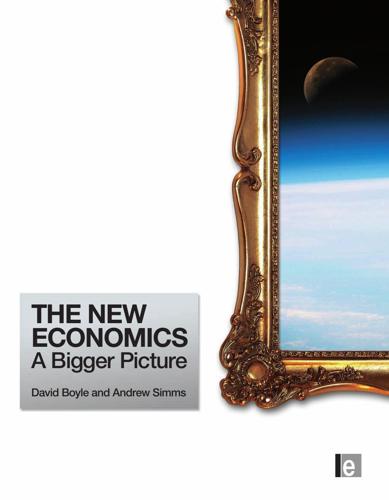
The New Economics: A Bigger Picture
by
David Boyle
and
Andrew Simms
Published 14 Jun 2009
THE NEW Economics A Bigger Picture David Boyle and Andrew Simms ‘Provocative, timely and incisive, The New Economics exposes the failures of conventional economic thinking with humour and wisdom, and sets out the essentials of a vibrant new economy for a just and sustainable 21st century.’ Oliver Tickell, author, Kyoto2 ‘Through the use of engaging stories and analysis, The New Economics shows how we can, and must, look at the world in a very different way centred on people, not profit, if we are to create a sustainable future for us all.’ Jessica Fries, Project Director, Accounting for Sustainability, The Household of TRH The Prince of Wales and The Duchess of Cornwall ‘By twisting together the green shoots of economic unorthodoxy, The New Economics points the way to a more sensible way of doing things...
…
As the fissures in the old system threaten to crack open with potentially devastating consequences the good news is that those living on the economic front line have been developing and building alternative methods of saving, exchanging and lending that we can learn from, and multiply to create a thriving, resilient network able to fill the gaps left by the collapse of the old order. 162 THE NEW ECONOMICS We make a number of proposals that include measures both for immediate stabilization of the economy and for long-term restructuring. Here are several short- to long-term steps that, in the midst of the crisis, we believe will breathe life into a phoenix-like new economy. What is new is that these are no longer distant dreams on a hopeful wish list. Because the state now owns a large slice of the financial system these are things we can do now. Measures can be put directly into place. The argument that they are impossible because the state cannot intervene directly to shape the financial system has fallen.
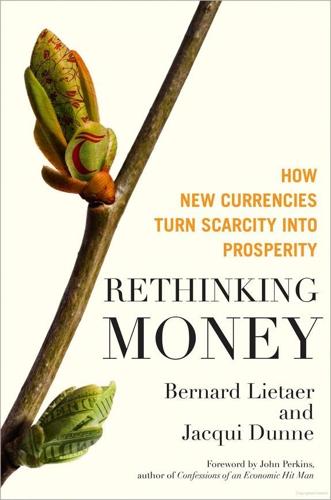
Rethinking Money: How New Currencies Turn Scarcity Into Prosperity
by
Bernard Lietaer
and
Jacqui Dunne
Published 4 Feb 2013
Becker-Posner Blog. www.becker-posner-blog.com /2010/08/. 3. “$22,350 a Year for a Family of Four or $10,890 for an Individual in the 48 Contiguous States and DC,” Federal Register 76, no. 13 (2011): 3637– 3638. 4. Tami Luhby, “Government Assistance Expands,” CNN Money, February 7, 2012. http://money.cnn.com /2012 /02 /07/news/economy/government_assistance/index .htm. 5. Jason Deparle, Robert Gebeloff, and Sabrina Tavernise, “Older, Suburban and Struggling, ‘Near Poor’ Startle the Census,” New York Times, November 18, 2011. 6. Richard Cranium, “Almost 80% of Americans Are Living Paycheck to Paycheck,” Daily Kos, October 30, 2010. www.dailykos.com /story/2010/10/30/915125 /-Almost-80 -of-Americans-live-paycheck-to-paycheck-w-poll. 7.
…
October 2008. www.lietaer .com /images/White_Paper_on_Systemic_Banking _Crises_final.pdf. Liu, Eric, and Hanauer, Nick. The Gardens of Democracy: A New American Story of Citizenship, the Economy and the Role of Government. Seattle, WA: Sasquatch Books, 2011. Luhby, Tami. “Government Assistance Expands.” CNN Money, February 7, 2012. http://money.cnn.com/2012/02/07/news/economy/government_ assistance/index.htm. Maruyama, Makoto. “Local Currencies in New Zealand and Australia.” In Dynamics of Cultures and Systems in the Pacific Rim, ed. Junji Koizumi. Osaka, Japan: Osaka University Press, 2003. Mauss, Marcel. “Essai sur le Don: Forme et raison de l’échange dans les sociétés archaiques.”

The Autonomous Revolution: Reclaiming the Future We’ve Sold to Machines
by
William Davidow
and
Michael Malone
Published 18 Feb 2020
And that may be all the warning we get. Look around you. Everything is transforming before our eyes. The nature of work is changing. The good job is going away. New business structures are displacing old ones. The Internet of Things promises to serve our every need, and in the process become the platform for a massive new economy—a surveillance economy where our every action is monitored. Computers are peering into our brains to learn our thoughts, understand our emotions, and influence and direct our behavior. Lives are moving from a physical space that has no purpose and that we have shaped to meet our needs … to a virtual space that increasingly attempts to shape our actions to meet the needs of its controllers.
…
History.com Editors, “The Interstate Highway System,” History Channel, May 27, 2010, updated June 7, 2019, https://www.history.com/topics/interstate-highway-system. 50. Heather Long, “Where Are All the Startups? U.S. Entrepreneurship Near 40-Year Low,” CNN, September 8, 2016, https://money.cnn.com/2016/09/08/news/economy/us-startups-near-40-year-low/index.html. 51. Ibid. 52. Charles Murray, In Our Hands (Washington, D.C.: The AEI Press, 2016). 53. Jeremy Greenwood and Guillaume Vandenbroucke, “Hours Worked: Long-Run Trends,” National Bureau of Economic Research, September 2005, http://www.nber.org/papers/w11629.pdf; and Robert Whaples, “Hours of Work in U.S.
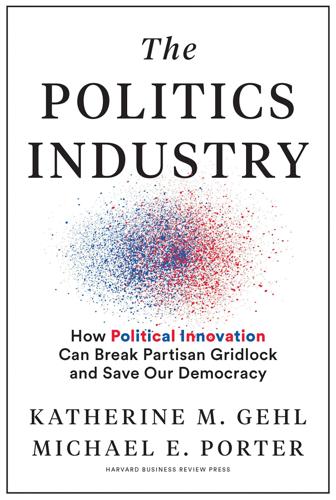
The Politics Industry: How Political Innovation Can Break Partisan Gridlock and Save Our Democracy
by
Katherine M. Gehl
and
Michael E. Porter
Published 14 Sep 2020
Although the United States retains some formidable strengths such as world-class universities, deep capital markets, and high-quality firm management, we are also plagued by a growing array of competitive weaknesses found in the bottom left corner. We face an astronomically expensive and unequitable health-care system; onerous and costly regulatory and legal systems; a convoluted, loophole-filled tax code; a public education system that fails to equip our children with the skills needed in the new economy; crumbling highways, railroads, and airports that are a national embarrassment. And things are only getting worse. FIGURE 3-7 Eroding US Competitiveness Compared with Other Advanced Economies Note: Data from the 2019 survey of Harvard Business School alumni on the state of US competitiveness.
…
With no policies in place to moderate the business cycle, wildly oscillating economic conditions ensued.46 Farmers struggled to stay afloat as crop prices plummeted and costs soared, with no real agricultural policies to address the economic difficulties.47 In the 1880s alone, businesses and their workers clashed in thousands of often-bloody strikes, with no collective bargaining rules or government mediators.48 Public schools failed to equip students with the skills needed for the new economy.49 Crime-ridden cities lacked basic services and infrastructure. Streets were lined with unlivable tenements and unsafe factories.50 Racial progress after the Civil War was largely undone. Reconstruction was rolled back and replaced with backward Jim Crow laws that reinforced segregation and disenfranchised black Americans.
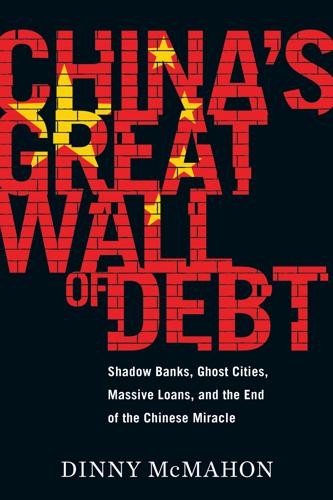
China's Great Wall of Debt: Shadow Banks, Ghost Cities, Massive Loans, and the End of the Chinese Miracle
by
Dinny McMahon
Published 13 Mar 2018
During most booms, people are not only blind to the risks but they devise explanations for why risks don’t even exist. People assumed the subprime mortgage crisis couldn’t happen, because the United States had never experienced a nationwide decline in housing prices. During the dot-com boom, the delusion was that the new economy had done away with the business cycle. Before the Asian financial crisis, it was assumed that Asian values had created a new, more sustainable type of economic growth. In China, people’s faith in the security of their investments isn’t based on some pseudoscientific theory that somehow things are different this time; their confidence is rooted in the knowledge that someone will bail them out should the need arise.
…
Among foreigners and Chinese alike, a common refrain is that the economy will be fine because the authorities are aware of the problems and will sort them out. However, to the extent that Beijing has already devised a solution, it’s no cause for confidence. China’s leaders are trying to build a new economy without changing the underlying institutions. They want to grow through their problems by applying the old growth model to new industries. There is unquestionably an element of desperation at play. If China doesn’t join the ranks of rich nations soon, then its aging population will make the middle-income trap harder to avoid, and the nation’s ambitions of national rejuvenation will be postponed for at least another generation.
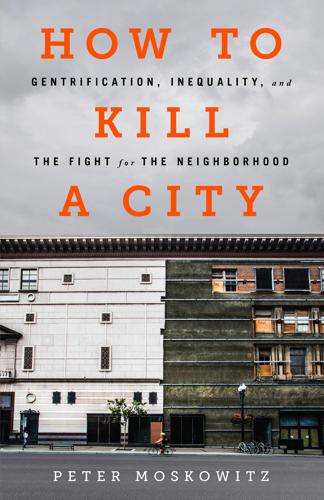
How to Kill a City: The Real Story of Gentrification
by
Peter Moskowitz
Published 7 Mar 2017
Katrina became the perfect opportunity for politicians to institute what author and activist Naomi Klein calls “shock doctrine capitalism,” using the chaos provided by the crisis to push through the reforms Brooks suggests: dismantling institutions that served the poor, and making the city more accommodating to an influx in capital. The result is a city that feels richer than before, but also unfriendly to those who do not fit into its new economy. Bigard is one of those people. New Orleans has the highest percentage of native-born residents of any city in the United States. And Bigard, like many people here, has roots that go way back, at least to 1809. Her grandfather was a well-known Mardi Gras Indian. But despite her deep roots, Bigard said, she feels like she’s losing grip on her city.
…
After I walked around the Mission with Anabelle Bolaños, she told me that if I wanted to understand the future of the Bay Area, I had to go east, past San Francisco, past Oakland, under a mountain, over a highway, and to Concord, the biggest city in Contra Costa County. The area, which was once mostly farmland, has become a sprawling mess of suburbs, exurbs, and car-centric mini-cities. I agreed to take the trip, but first I had to get over the bridge connecting San Francisco to the East Bay, which turned out to be a lesson in itself about the Bay Area’s new economy. Every bridge connecting San Francisco to the rest of the Bay Area has seen a double-digit rise in commuters over the last five years—a good indication, before census statistics catch up, that the region’s population is growing. On the Bay Bridge, which connects Oakland and the rest of the East Bay to San Francisco, rush hour now starts at 5:00 a.m.

The Twittering Machine
by
Richard Seymour
Published 20 Aug 2019
The new platform technologies were supposed to be liberal, modern, participatory. The second wave of cyber-utopianism had been much like the first, headlined at the zenith of global power by a Democratic administration in Washington evangelizing for tech, for the globalization of the ‘free and open’ net built in Silicon Valley, and for the ‘new economy’ as a modernizing upgrade. If the Clinton administration sought to hardwire as the universal framework for online social interactions a very parochial and eccentric Californian culture of rich white men, the Obama administration wanted to bring tech into the White House. The digital giants were essential, both for Obama and Hillary Clinton’s State Department, to the modernizing of the government and the economy, and to achieving US foreign policy objectives.
…
The wave of monopolization taking place in mass media, resulting in six corporations controlling approximately 90 per cent of the flow of information, had been helped along by Clinton’s 1996 Telecommunications Act.24 What is more, unlike the old economy giants allied with the Bush administration, such as Halliburton, these new economy giants were clean-cut, had no coal under their fingernails. They seemingly traded a mysterious substance – communication, the cloud – of which everyone was in favour, and which was pristine and high-status. However, it was also complicated. It was easy enough for the White House to gloat about free information if it inconvenienced Iran.
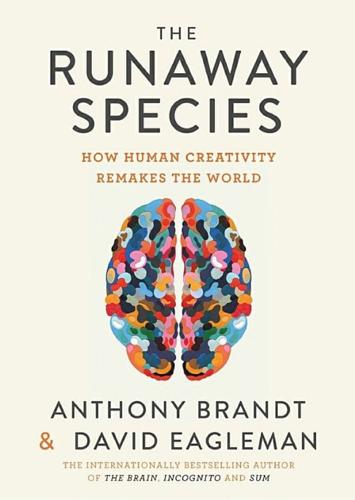
The Runaway Species: How Human Creativity Remakes the World
by
David Eagleman
and
Anthony Brandt
Published 30 Sep 2017
“Neural Substrates of Spontaneous Musical Performance: An fMRI Study of Jazz Improvisation.” PLoS ONE 3, no. 2 (2008). Accessed May 10, 2014. doi:10.1371/journal.pone.0001679. Liu, David. “Is Education Killing Creativity in the New Economy?” Fast Company. April 26, 2013. Accessed April 27, 2014. <http://www.fastcompany.com/3008800/education-killing-creativity-new-economy> Lockhart, Paul. A Mathematician’s Lament. New York, NY: Bellevue Literary Press, 2009. Loewy, Raymond. Never Leave Well Enough Alone. Baltimore: Johns Hopkins University Press, 2002. Lohr, Steve. “IBM’s Design-Centered Strategy to Set Free the Squares.”
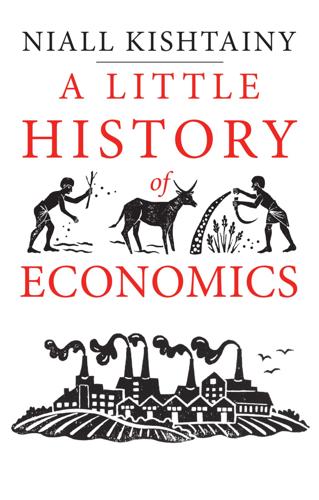
A Little History of Economics
by
Niall Kishtainy
Published 15 Jan 2017
The mercantilists, in contrast, weren’t so concerned with the benefits to people from having access to goods. What mattered to them was producing goods to sell to foreigners for gold; the availability of many goods, including imported ones, could even be a bad thing if spending on them led to an outflow of gold from the country. Smith had a vision of a new economy that was then being born, one based on the division of labour and self-interest. He has been acclaimed as a sage, often by those who believe that markets should rule above all else, that governments should do as little as possible and businesses do what they like. Two hundred years after The Wealth of Nations was published, American President Ronald Reagan championed these principles, taking Smith as his inspiration.
…
Also, behind the harmony of decent people pursuing their self-interest, Smith heard clashing chords. The division of labour makes each worker’s task simple. Although it increases production, it makes workers ‘stupid and ignorant’. Also, how was all the new wealth to be divided up between the workers and their employers? The new economy had the potential for both conflict and harmony; economists after Smith each came to emphasise one of these over the other. CHAPTER 7 Corn Meets Iron The French historian and traveller Alexis de Tocqueville was amazed by the signs of a new society that he found when he visited Manchester in the 1830s.
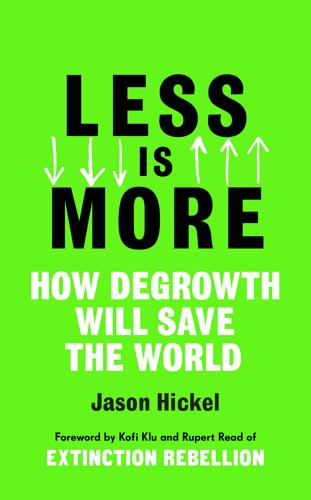
Less Is More: How Degrowth Will Save the World
by
Jason Hickel
Published 12 Aug 2020
Perhaps no one has put this more eloquently than David Graeber: [Debt cancellation] would be salutary not just because it would relieve so much genuine human suffering, but also because it would be our way of reminding ourselves that money is not ineffable, that paying one’s debts is not the essence of morality, that all these things are human arrangements and that if democracy is going to mean anything, it is the ability to all agree to arrange things in a different way.50 New money for a new economy But debt cancellation is just a one-off fix; it doesn’t really get to the root of the problem. There’s a deeper issue we need to address. The main reason our economy is so loaded with debt is because it runs on a money system that is itself debt. When you walk into a bank to take out a loan, you might assume that the bank is lending you money it has in its reserve, collected from other people’s deposits and stored in a basement vault somewhere.
…
On the contrary, it’s an economy that feels in key ways familiar, in the sense that it resembles the economy as we normally describe it to ourselves (in other words, perhaps as we wish it to be): an economy where people produce and sell useful goods and services; an economy where people make rational, informed decisions about what to buy; an economy where people get compensated fairly for their labour; an economy that satisfies human needs while minimising waste; an economy that circulates money to those who need it; an economy where innovation makes better, longer-lasting products, reduces ecological pressure, frees up labour time and improves human welfare; an economy that responds to – rather than ignores – the health of the ecology on which it depends. And yet inasmuch as it is familiar in these ways, the new economy is fundamentally different from our existing economy, in that it is not organised around the prime objective of capitalism: accumulation. Let me be clear: none of this will be easy. We would be naïve to think otherwise. And there are still difficult questions to which we don’t yet have all the answers.
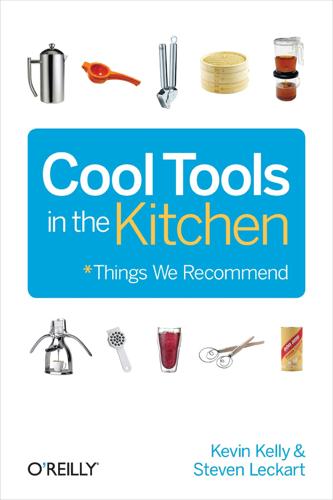
Cool Tools in the Kitchen
by
Kevin Kelly
and
Steven Leckart
Published 1 Dec 2011
A Senior Maverick at Wired Magazine, Kevin co-founded Wired in 1993, and served as its Executive Editor from its inception until 1999. From 1984-1990, he was the publisher/editor of the Whole Earth Review. He co-founded the ongoing Hackers Conference, and was involved with the launch of the WELL, a pioneering online service started in 1985. He is the author of New Rules for the New Economy, Out of Control and, most recently, What Technology Wants. Contents * * * Preface * * * This is a curated collection of the best cool tools for the Kitchen. It is not intended as a shopping list or checklist. Consider this a jumping-off point for thinking and re-thinking about what’s possible in your kitchen.
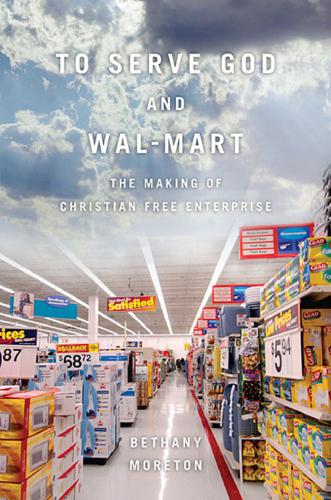
To Serve God and Wal-Mart: The Making of Christian Free Enterprise
by
Bethany Moreton
Published 15 May 2009
Crafting this ethos was the cultural work of many people with a vaÂ�riÂ�ety of perspectives and interests. Wal-Â�Mart and its constituents, however, played a prominent role, drawing on the day-Â�to-Â�day experience of serÂ� vice labor and freely mingling their Christian priorities with the demands of the new economy. In the early 1980s, when Wal-Â�Mart’s fame was still largely regional, an interviewer asked Sam Walton to summarize the single most important lesson he had learned through his Arkansas retail career. Walton did not€hesitate: his business had taught him that “‘all of us like to be recognized and appreciated and need to feel like the roles we play or what we do is important.’”5 This sentiment found its formal codiÂ�fiÂ�caÂ�tion in a sign hanging over one entrance to the home ofÂ�fice: “Through these doors pass ordinary people on their way to accomplishing extraordinary things.”6 For all its obvious instrumentality, the phrase that Wal-Â� Mart made famous was more than an off-Â�the-Â�rack slogan of spin.
…
On the importance of the customer, see also Susan Porter Benson, Counter Cultures: SalesÂ�women, Managers, and Customers in American Department Stores, 1890–1940, The Working Class in American History (Urbana: University of Illinois Press, 1986), 128–31, 230–31, 263–64; Arlie Russell Hochschild, The Managed Heart: Commercialization of Human Feeling (Berkeley: University of California Press, 1983), 104–14; Pierrette Hondagneu-Sotelo, “Blow-Ups and Other Unhappy Endings,” in Barbara Ehrenreich and Arlie Russell Hochschild, ed., Global Woman: Nannies, Maids, and€Sex Workers in the New Economy (New York: Metropolitan Books, 2003), 55–69. Interview with “Gail Hammond” and “Edna Guthry,” May 2, 2005. Interview with “Alice Martin” and “Sherry Martin,” May 2, 2005. Interview with “Tammy Ellis,” May 13, 2005. Interview with “June Whitehead,” May 11, 2005. Interview with “Eleanor Cook,” May 5, 2005.
…
Between 1959 and 1997, acÂ�tual skilled high-tech jobs like systems analysts and code-writers grew only from 3.4 percent of all U.S. jobs to 6.6 percent; even at a paradigmatic high-tech corporation like Intel, three-quarters of the jobs are for routine clerical, sales, production, or maintenance work. Anthony P. Carnevale and Stephen J. Rose, “Inequality and the New High-Skilled Service Economy,” in Unconventional Wisdom: Alternative Perspectives on the New Economy, Jeff Madrick (New York: Century Foundation Press, 2000), 147. 36. “We Get Letters .€.€.€,” WMW, December 1975, 6. 37. Ferold Arend quoted in Ortega, In Sam We Trust, 90–91. 38. Sam Walton and John Huey, Sam Walton, Made in America: My Story (New York: Doubleday, 1992), 169. 39. Interview with Jim von Gremp, September 8, 2004. 40.
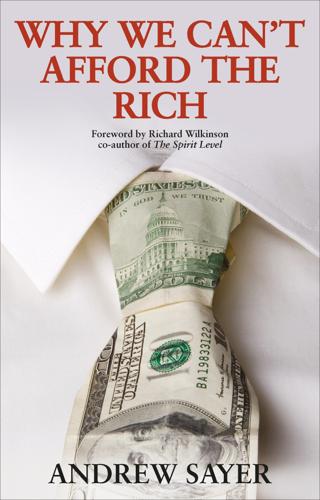
Why We Can't Afford the Rich
by
Andrew Sayer
Published 6 Nov 2014
Banking delivers little social value and instead operates “for itself”.’123 As regards employment, the financial sector accounts for only 6.5% of UK employment and has remained static since the 1990s. It provided 6.8% of government tax receipts, while manufacturing, widely dismissed as of marginal importance in the new economy, provided 13.4%. The financial sector has been highly active in helping clients to avoid tax; in so doing it has taken fat commissions for reducing the state’s income. And junk products such as payment protection insurance are examples of activities with negative value. The sector has also drawn many of the most able members of the workforce away from more productive activities.
…
Above all, the money supply, which the banks have steadily privatised through digital credit money to provide a source of interest over the last 40 years, should be brought back under public control. Finance, including the creation of public money on a debt-free basis, and public credit must be made democratically accountable so as to ensure that it functions to support a new economy based on securing environmental sustainability and social justice.11 A key feature of the neoliberal era has been the freeing up of cross-border flows of capital, so that increasingly rentiers and capitalists can ‘invest’ anywhere and move money to wherever they can avoid most tax and find the lowest costs, while value-skimmers can profit from the useless churning of financial markets.
…
Note that such a division of labour, involving specialisms in different functions, like car maintenance, plumbing or medicine, is different from the unequal division of labour discussed earlier, in which within such activities there is a division of workers between skilled/interesting/pleasant tasks and unskilled/boring/unpleasant tasks. 10 Cox, R. (2006) The servant problem: Domestic employment in a global economy, London: I.B. Tauris; Ehrenreich, B. and Hochschild, A.R. (eds) (2002) Global woman: Nannies, maids and sex workers in the new economy, London: Granta; Tronto, J. (2002) ‘The nanny question in feminism’, Hypatia, 17, pp 34–51; Gregson, N. and Crewe, L. (1994) Servicing the middle classes: Class, gender and waged domestic labour in contemporary Britain, London: Routledge. 11 Veblen, T. (1994) [1899] The theory of the leisure class, Dover Thrift Editions. 12 Frank, T. (2012) Pity the billionaire, New York: Harvill Secker, Random House, p 30. 13 Jackson, T. (2010) ‘Re-imagining investment for the whole human’, video lecture, http://www.ted.com/talks/tim_jackson_s_economic_reality_check.html/. 14 Schor, J. (2010) Plenitude, New York: The Penguin Press, p 26. 15 Schor (2010), p 29. 16 http://england.lovefoodhatewaste.com/node/2163. 17 Tawney, R.H. (2004) [1920] The acquisitive society, Mineola, NY: Harcourt Brace and Howe, p 41. 18 Smith, A. (1759) The theory of moral sentiments, Indianapolis: Liberty Fund, I.iii.2.III, p.61 19 Layard, R. (2005) Happiness: Lessons from a new science, London: Allen Lane. 20 Schor, J (2010), p 177, updating Layard’s figures. 21 Skidelsky, R. and Skidelsky, E. (2012) How much is enough?

The Shifts and the Shocks: What We've Learned--And Have Still to Learn--From the Financial Crisis
by
Martin Wolf
Published 24 Nov 2015
Lucas, ‘ “Macroeconomic Priorities”, Presidential Address to the American Economic Association’, 4 January 2003, http://pages.stern.nyu.edu/~dbackus/Taxes/Lucas%20priorities%20AER%2003.pdf. 2. Hank Paulson, On the Brink: Inside the Race to Stop the Collapse of the Global Financial System (New York and London: Business Plus and Headline, 2010), pp. 435–6. 3. Anatole Kaletsky, Capitalism 4.0: The Birth of a New Economy (London: Bloomsbury, 2010), pp. 147–8. 4. The literature on what happened in the crisis is now enormous. For detailed accounts of the US crisis, I would particularly recommend Andrew Ross Sorkin, Too Big to Fail: Inside the Battle to Save Wall Street (London: Penguin, 2010), and Alan S. Blinder, After the Music Stopped: The Financial Crisis, the Response, and the Work Ahead (New York: Penguin 2013).
…
The Implications of Evolving Policy Regimes’, Federal Reserve Bank of Kansas City symposium on ‘Monetary Policy and Uncertainty: Adapting to a Changing Economy’, 28 –30 August 2003, http://www.kansascityfed.org/publicat/sympos/2003/pdf/Gertler2003.pdf. 72. Bagehot, Lombard Street. 73. Anatole Kaletsky, Capitalism 4.0: The Birth of a New Economy (London: Bloomsbury, 2010), p. 136. 74. Thornton was the first person to present a rigorous theory of the lender of last resort. See Thomas M. Humphrey and Robert E. Keleher, ‘The Lender of Last Resort: A Historical Perspective’, Cato Journal, vol. 4, no. 1 (Spring/Summer 1984), pp. 275–321, http://object.cato.org/sites/cato.org/files/serials/files/cato-journal/1984/5/cj4n1-12.pdf. 75.
…
‘The Boom Not The Slump: The Right Time For Austerity’, The Roosevelt Institute, 23 August 2010. http://www.rooseveltinstitute.org/sites/all/files/not_the_time_for_austerity.pdf. Jordà, Òscar, Moritz Schularick and Alan M. Taylor. ‘Financial Crises, Credit Booms and External Imbalances’, National Bureau of Economic Research Working Paper No. 16567, December 2010. www.nber.org. Kaletsky, Anatole. Capitalism 4.0: The Birth of a New Economy (London: Bloomsbury, 2010). Kay, John. The Truth about Markets: Why Some Nations are Rich but Most Remain Poor (London: Penguin, 2004). Keating, Frank. ‘There Is Such a Thing as Having Too Much Capital’, Financial Times, 22 August 2013. http://www.ft.com/cms/s/0/6fea2b90-09bf-11e3-ad07-00144feabdc0.html.
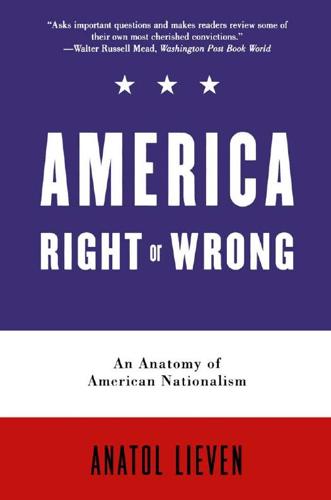
America Right or Wrong: An Anatomy of American Nationalism
by
Anatol Lieven
Published 3 May 2010
Namier, 1848: The Revolution of the Intellectuals (London: British Academy, 1944). Conclusion 1. Figures in Economic Report of the President, Council of Economic Advisers, cited in Jeff Madrick, "How New Is the New Economy?" New York Review of Books, September 23, 1999. 267 N O T E S TO P A G E S 212-222 2. Frank Levy, The New Dollars and Dreams: American Incomes and Economic Change (New York: Russell Sage Foundation Publications, 1999), cited in Madrick, "New Economy." 3. Cf. "The Wal-Martization of America," New York Times (editorial), November 15, 2003. 4. Cf. Alan Ryan, "Call Me Mister," New York Review of Books, February 27, 2003. 5.
…
Alan Ryan, "Call Me Mister," New York Review of Books, February 27, 2003. 5. Cf. Clair Brown, American Standards of Living, 1918-1988 (New York: Blackwell, 2002); Kevin Phillips, Boiling Point: Democrats, Republicans and the Decline of Middle Class Prosperity (New York: HarperCollins, 1994); Madrick, "How New Is the New Economy?; Michael Head, "The New, Ruthless Economy," New York Review of Books, February 29, 1996. 6. Cf. Stephanine Strom, "For Middle Class, Health Care Becomes a Luxury" New York Times, November 16, 2003. 7. Hans Fallada, Kleiner Mann—was nun? (Hamburg: Rowohlt Verlag, 1976 [rpt]). 8. Frank, What's the Matter with Kansas? How Conservatives Won the Heart of America (New York: Metropolitan Books, 2004). 9.
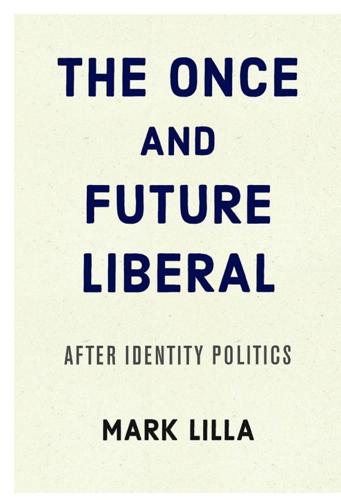
The Once and Future Liberal: After Identity Politics
by
Mark Lilla
Published 14 Aug 2017
Marxists kept their eyes focused on the horizon; often they saw things upside down, or saw chimeras, but at least they were looking. With the rise of liberal identity consciousness, all eyes have turned within. As many progressives have complained, and rightly so, the rhetoric of identity has crowded out the analysis of class and how it has changed with our new economy. Not too long ago liberal politics aimed to inspire individuals to actively remake society. Today’s focus is on the passive social construction of individuals. A Marxist analysis of this transformation might go like this: The election of Ronald Reagan marked a new stage in the history of advanced capitalism.
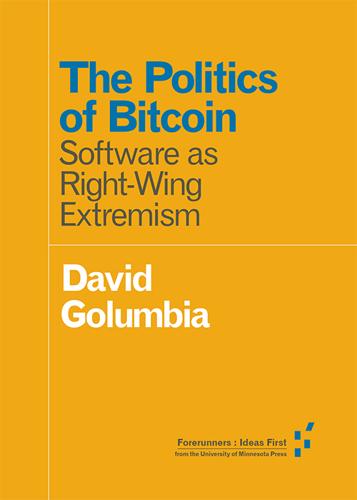
The Politics of Bitcoin: Software as Right-Wing Extremism
by
David Golumbia
Published 25 Sep 2016
Against Crony Capitalism (December 29). http://www.againstcronycapitalism.org/. Suarez, Daniel. 2006. Daemon. New York: Dutton. —. 2010. Freedom™. New York: Dutton. Sutton, Anthony C. 1995. The Federal Reserve Conspiracy. San Diego: Dauphin Publications, 2014. Swan, Melanie. 2015. Blockchain: Blueprint for a New Economy. Sebastopol, Calif.: O’Reilly Media. Swanson, Tim. 2014. The Anatomy of a Money-Like Informational Commodity: A Study of Bitcoin. Seattle: Amazon Digital Services Tapscott, Don, and Alex Tapscott. 2016. Blockchain Revolution: How the Technology behind Bitcoin Is Changing Money, Business, and the World.
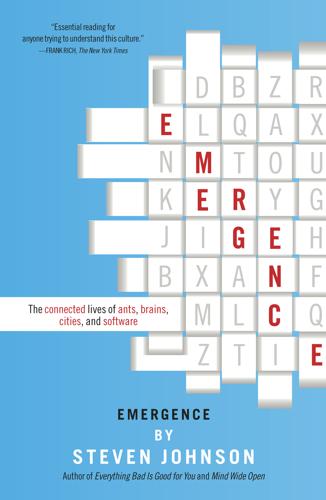
Emergence
by
Steven Johnson
The Australian software company TCG, the Taiwanese Acer Group, and Sun Microsystems have all implemented cellular techniques with positive results. There’s even a management-theory journal devoted to these developing models. It is called, appropriately enough, Emergence. * * * If decentralized intelligence can transform the way businesses work, what can it do for politics? That many New Economy companies have been so quick to embrace the emergent worldview—in both their products and their internal structure—can sometimes make it seem as though emergence belongs squarely to the libertarian camp. Certainly the emphasis on local control and the resistance to command systems resonates with the Gingrichian call for anti-big-government devolution.
…
Pac-Man, 177 MTV, 176, 214 Mumford, Lewis, 38, 107, 112, 146–47, 154, 242n Murray, Arnold, 43 Museum of the Moving Image, 177 music, 45, 53, 128–29, 214, 217, 258n mutations, genetic, 58, 182–83 Myst, 183–84 Nakagaki, Toshiyuki, 11 Napier, Charles James, 35 Napster, 214, 217 NASDAQ, 117 Nation, 225 National Physical Laboratory, 42, 54 natural selection, 56–63, 83, 169, 170–74, 184, 185–86, 193, 203, 204 Nature of Economies, The (Jacobs), 156 NBC, 136 near-optimal solutions, 228 Negroponte, Nicholas, 159 neighborhoods, 18, 36–38, 41, 50–51, 87–91, 96, 99, 106, 115, 119, 123, 186, 203, 204, 205, 220, 229–30, 233, 246n Netscape browser, 124–25 networks: algorithms for, 88, 89, 161 information, 96–97, 116–26, 134–35, 204–5, 217–18 neural, 18, 21, 78, 115, 118–19, 121, 127, 133–34, 142–44, 146, 198–99, 203–4, 205, 209, 223, 238n, 241n, 256n, 261n, 262n–63n television, 135–36, 159, 160 see also Internet neurons, 18, 21, 78, 115, 118–19, 121, 127, 133–34, 142–44, 146, 198–99, 203–4, 205, 209, 223, 238n, 241n, 256n, 261n, 262n–63n neurotransmitters, 115 New Age, 113–14 New Economy, 224 New Republic, 135 newspapers, 159–60, 207 New Urbanist movement, 147, 230 New York City, 50, 93, 107, 113, 230 New York City Planning Commission, 50 New Yorker, 146 New York Times, 125, 131, 257n–58n Nightline, 135 Nintendo, 176 Nixon, Richard M., 132 nonequilibrium thermodynamics, 12, 43, 52 noosphere, 115–16 nucleic acids, 85 olfactory skills, 76 online communities, 17, 148–62, 204–5 Open Shortest Path First routine, 229 Open Source, 153 orangutans, 202 order: chaos vs., 38, 52, 65, 117–23, 154, 169, 179, 218–20, 226, 237n global vs. local, 39–40, 74–80, 82, 86, 90, 93, 108–9, 218–19, 224 see also control Organic Art, 182 “organic clocks,” 20 organization: global, 224–26 goal-directed, 118 hierarchical, 15, 98, 132, 136, 145, 148–49, 153, 208, 223, 225, 263n–64n political, 67, 225–26 self-, see self-organization size limitations of, 259n–60n social, 9, 27, 33–41, 92–94, 97–100, 109, 204, 252n–54n see also systems OSS code, 175 Out of Control (Kelly), 168–69 pacemaker cells, 14–15, 16, 17, 23, 40, 64, 67, 164 PalmPilots, 54 “Pandemonium: A Paradigm for Learning” (Selfridge), 54 Pandemonium model, 53–57, 65, 169, 231 Papert, Seymour, 65, 164, 166 paradigm shift, 48–49, 64 Paradise Lost (Milton), 53–54 Pattern on the Stone, The (Hillis), 173 patterns: of behavior, see behavior development of, 49, 184–85, 246n feedback on, 40–41 of heredity, 46 hub-and-spoke, 119 letter, 54–57, 65 mathematical, 42 of movement, 18–20, 41, 168 musical, 45 recognition of, 18, 21, 22, 44–45, 52, 54–57, 65, 103–4, 123–24, 126–29, 199, 206, 220, 221, 226, 231, 233 social, 18, 36–40, 41, 49–50, 52, 91, 95, 137, 185 spatial, 20, 27, 48, 90–91, 159, 223 speech, 44–45 spontaneous, 180 temporal, 20, 27, 48, 91, 104–5 urban, 40–41, 90–91, 146, 147, 159, 223 “Perceptrons” (Minsky and Papert), 65 phase transitions, 111–12 phenotypes, 58, 59 pheromone, 52, 60–63, 64, 74, 75–76, 78, 79, 84–85, 98, 115, 167, 206, 226, 228–29, 243n–44n Phillips Interactive, 178 physics, 21, 105 Picasso, Pablo, 23 Pinker, Steven, 118 planets, rotation of, 46 “platform agonistic,” 139–40 Pleistocene era, 202, 262n plow, wheeled, 112 politics, 39–40, 67, 94–95, 161, 224–26, 264n population growth, 34, 99, 110–11, 112, 116, 164–65, 252n–53n pornography, 208 post-structuralism, 65 power law, 119 Powers of Ten, 231–32 predictions, 9, 47 Prelude, The (Wordsworth), 39 pricing, 155–56 Prigogine, Ilya, 43, 52, 64–65 prioritization, 78 probability theory, 46–47 problem-solving, 74, 79–80, 120, 126–27, 227–29, 251n–52n product placement, 214 programs, computer: artificial-life, 59–63, 65 branching paths in, 58 codes in, 169, 170–71, 173–74, 175, 180, 205–6 evolution of, 57–59, 60, 205–6 mini-, 170–74 number-sorting, 170–74, 209, 231 predator, 172–73 see also software proteins, 85 Proverbs, Book of, 71 “pseudo events,” 145 purchase circles, 221–22 Quake, 182, 183, 208–9 quality management, 67 racial diversity, 89, 95, 247n randomness, 19, 62, 77, 78–79, 87, 121, 163, 171, 220, 222–23, 244n, 247n recognition systems, 103 redwood forests, 258n reentry, neural, 256 reflexes, 38–39 Reliable Sources, 135 Renaissance, 101–2, 147 Replay, 211 “Residence in London” (Wordsworth), 27 Resnick, Mitch, 16–17, 23, 64, 76, 163–69, 180, 189, 260n Restak, Richard, 133–34 retina, 201 Rheingold, Howard, 148 Ridley, Matt, 82, 86 Rizzollati, Giaccamo, 198–99 Rockefeller Foundation, 46, 50 Roman Empire, 33, 109–10 Rosenstiel, Tom, 135 rules, 19, 180–81, 226 St.
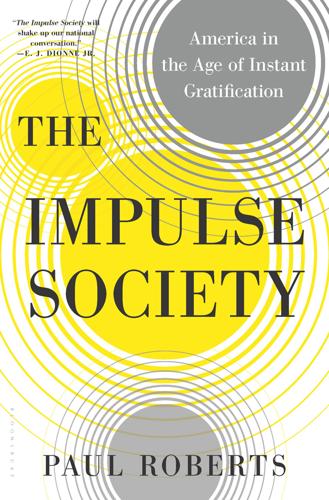
The Impulse Society: America in the Age of Instant Gratification
by
Paul Roberts
Published 1 Sep 2014
As sociologist Daniel Bell put it, within a few years of Ford’s breakthrough, mechanized mobility was so cheap and ubiquitous and normal that small-town “boys and girls thought nothing of driving 20 miles to dance at a roadhouse, safe from the prying eyes of neighbors.”4 Freedom of a kind previously reserved for the upper classes was now accessible to virtually anyone—and with it, came an entirely new conception of what was possible for the individual. The empowering effects of Ford’s system went beyond personal mobility. By the 1920s this new business model had given rise to an entirely new economy. As other manufacturers copied Ford’s methods, the marketplace positively swelled with affordable new “tools,” from household appliances and prepared foods to telephones and radios, each providing another increment of individual power. Not all delivered as much sovereignty as the car. But in an era when the average person was still at the mercy of large, impersonal forces (not least a corrupt business elite that blithely steamrollered the little people in the pursuit of personal profits), even small increases in personal power were life-changing.
…
In 1987 a lending bubble, fueled by too-easy computerized credit, burst, leading to a stock market crash that was made all the worse when computerized stock trading went out of control. Clearly, all the risks of a high-tech marketplace had yet to be uncovered. As one veteran broker complained, “We have made so many changes . . . we simply don’t know what they add up to. We don’t know where the technology is taking us.”24 For consumers, meanwhile, the new economy, despite all its new enticements, hadn’t actually restored our economic security. Although incomes had kicked up toward the end of the 1990s, the overall growth rate (2.3 percent a year) was a third less than during the postwar period.25 Our capacity to self-gratify, meanwhile, was becoming so prodigious that we were running up all sorts of debts: financial, but also social, psychological, and even physical.
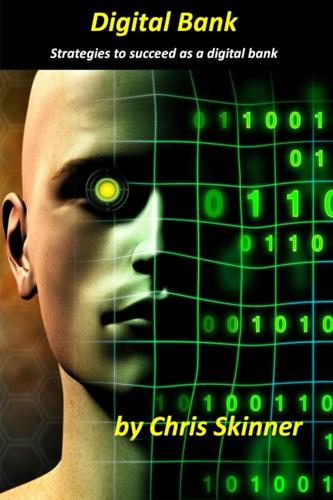
Digital Bank: Strategies for Launching or Becoming a Digital Bank
by
Chris Skinner
Published 27 Aug 2013
Kevin has 12 lessons about how to think about the internet, and they were difficult to absorb as, bearing in mind this was back in 1997, he was far too ahead of his time. I went back to these lessons recently and realised rather rapidly that banking will soon cost nothing. Loans and payments will be provided for free. I guess, to explain this one, we need to understand Kevin’s lessons, which he put into an article entitled: “New rules for the new economy”, back in Wired in 1997. In summary, the lessons were: The Law of Connection – Embrace dumb power: With everything having an inbuilt computer chip connected to a network, start thinking about how to use those inbuilt chips. The Law of Plentitude – More gives more: In the Network Economy, there’s loads of everything and little of nothing.
…
This is especially important as we move towards mobile payment services and more, and this is what drove the Innotribe program in terms of proving that SWIFT could be used for much more than just messaging. What do you see as the big things happening in the future from a financial innovation viewpoint? I know for a fact that the new economies and new values that we discuss within Innotribe are driven by social media. Social media is creating new currencies and new economic models, and this will be very big and very important in the two to three years downstream from now. The question for the banks is how will they position in this new world of peer-to-peer currencies in social media.
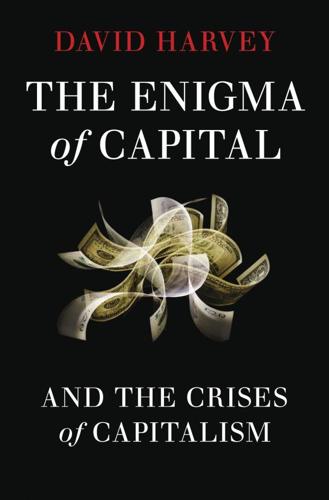
The Enigma of Capital: And the Crises of Capitalism
by
David Harvey
Published 1 Jan 2010
It is possible to look backwards and define ‘eras’ of capitalist development that roughly correspond to the railroads, steamships, the coal and steel industry and the telegraph; the automobile, the oil, rubber and plastics industries and the radio; the jet engine, refrigerators, air-conditioners, the light metals (aluminium) industry and TV; and the computer chip and the new electronics industry that underpinned the ‘new economy’ of the 1990s. What is missing from this account is an understanding of the revolutionary and contradictory social consequences of the capital–state dynamic and its associated shifts in organisational form (such as the move from family firms to vertically integrated corporations to horizontally networked systems of production and distribution).
…
.: Limits to Growth 72 meat-based diets 73, 74 Medicare 28–9, 224 Mellon, Andrew 11, 98 mercantilism 206 merchant capitalists 40 mergers 49, 50 forced 261 Merrill Lynch 12 Merton, Robert 100 methane gas 73 Mexico debt crisis (1982) 10, 19 northern Miexico’s proximity to the US market 36 peso rescue 261 privatisation of telecommunications 29 and remittances 38 standard of living 10 Mexico City 243 microcredit schemes 145–6 microeconomics 237 microenterprises 145–6 microfinance schemes 145–6 Middle East, and oil issue 77, 170, 210 militarisation 170 ‘military-industrial complex’ 91 minorities: colonisation of urban neighbourhoods 247, 248 Mitterrand, François 198 modelling of markets 262 modernism 171 monarchy 249 monetarism 237 monetisation 244 money centralised money power 49–50, 52 a form of social power 43, 44 limitlessness of 43, 47 loss of confidence in the symbols/quality of money 114 universality of 106 monoculture 186 Monopolies Commission 52 monopolisation 43, 68, 95, 113, 116, 221 Monsanto 186 Montreal Protocol (1989) 76, 187 Morgan Stanley 19 Morishima, Michio 70 Morris, William 160 mortgages annual rate of change in US mortgage debt 7 mortgage finance for housing 170 mortgage-backed bonds futures 262 mortgage-backed securities 4, 262 secondary mortgage market 173, 174 securitisation of local 42 securitisation of mortgage debt 85 subprime 49, 174 Moses, Robert 169, 171, 177 MST (Brazil) 257 multiculturalism 131, 176, 231, 238, 258 Mumbai, India anti-Muslim riots (early 1990s) 247 redevelopment 178–9 municipal budgets 5 Museum of Modern Art, New York 21 Myrdal, Gunnar 196 N Nandigram, West Bengal 180 Napoleon III, Emperor 167, 168 national debt 48 National Economic Council (US) 11, 236 national-origin quotas 14 nationalisation 2, 4, 8, 224 nationalism 55–6, 143, 194, 204 NATO 203 natural gas 188 ‘natural limits’ 47 natural resources 30, 71 natural scarcity 72, 73, 78, 80, 83, 84, 121 nature and capital 88 ‘first nature’ 184 relation to 121, 122 ‘the revenge of nature’ 185 ‘second nature’ 184, 185, 187 as a social product 188 neocolonialism 208, 212 neoliberal counter-revolution 113 neoliberalism 10, 11, 19, 66, 131, 132, 141, 172, 175, 197, 208, 218, 224, 225, 233, 237, 243, 255 Nepal: communist rule in 226 Nevada, foreclosure wave in 1 New Deal 71 ‘new economy’ (1990s) 97 New Labour 45, 255 ‘new urbanism’ movement 175 New York City 11 September 2001 attacks 41 fiscal crisis (1975) 10, 172, 261 investment banks 19, 28 New York metropolitan region 169, 196 Nicaragua 189 Niger delta 251 non-governmental organisations (NGOs) 35, 253–4 non-interventionism 10 North Africa, French import of labour from 14 North America, settlement in 145 North American Free Trade Association (NAFTA) 200 Northern Ireland emergency 247 Northern Rock 2 Norway: Nordic cris (1992) 8 nuclear power 188 O Obama, Barack 11, 27, 34, 210 Obama administration 78, 121 O’Connor, Jim 77, 78 offshoring 131 Ogoni people 251 oil cheap 76–7 differential rent on oil wells 83 futures 83, 84 a non-renewable resource 82 ‘peak oil’ 38, 73, 78, 79, 80 prices 77–8, 80, 82–3, 261 and raw materials prices 6 rents 83 United States and 76–7, 79, 121, 170, 210, 261 OPEC (Organisation of Oil-Producing Countries) 83, 84 options markets currency 262 equity values 262 unregulated 99, 100 Orange County, California bankruptcy 100, 261 Organisation for Economic Cooperation and Development (OECD) 51 organisational change 98, 101 organisational forms 47, 101, 121, 127, 134, 238 Ottoman Empire 194 ‘over the counter’ trading 24, 25 overaccumulation crises 45 ozone hole 74 ozone layer 187 P Pakistan: US involvement 210 Palley, Thomas 236 Paris ‘the city of light’ 168 epicentre of 1968 confrontations 177, 243 Haussmann’s rebuilding of 49, 167–8, 169, 171, 176 municipal budget crashes (1868) 54 Paris Commune (1871) 168, 171, 176, 225, 243, 244 Partnoy, Frank: Ubfectious Greed 25 patents 221 patent laws 95 patriarchy 104 pensions pension funds 4, 5, 245 reneging on obligations 49 Péreire brothers 49, 54, 98, 174 pesticides 185, 186, 187 petty bourgeois 56 pharmaceutical sector 129, 245 philanthropy 44 Philippines: excessive urban development 8 Phillips, Kevin 206 Pinochet, General Augusto 15, 64 plant 58 Poland, lending to 19 political parties, radical 255–6 politics capitalist 76 class 62 co-revolutionary 241 commodified 219 depoliticised 219 energy 77 identity 131 labour organizing 255 left 255 transformative 207 pollution air 77 oceanic 74 rights 21 ‘Ponts et Chaussées’ organisation 92 Ponzi schemes 21, 114, 245, 246 pop music 245–6 Pope, Alexander 156 population growth 59, 72, 74, 121, 167 and capital accumulation 144–7 populism 55–6 portfolio insurance 262 poverty and capitalism 72 criminalisation and incarceration of the poor 15 feminisation of 15, 258 ‘Great Society’ anti-poverty programmes 32 Prague 243 prices commodity 37, 73 energy 78 food grain 79–80 land 8, 9, 182–3 oil 8, 28, 37–8, 77–8, 80, 82–3, 261 property 4, 182–3 raw material 37 reserve price 81–2 rising 73 share 7 primitive accumulation 58, 63–4, 108, 249 private consortia 50 private equity groups 50 private property and radical egalitarianism 233, 234 see also property markets; property rights; property values privatisation 10, 28, 29, 49, 251, 256, 257 pro-natal policies 59 production expansion of 112, 113 inadequate means of 47 investment in 114 liberating the concept 87 low-profit 29 offshore 16 production of urbanisation 87 reorganisation and relocation of 33 revolutionising of 89 surplus 45 technologies 101 productivity agreements 14, 60, 96 agricultural 119 cotton industry 67 gains 88, 89 Japan and West Germany 33 rising 96, 186 products development 95 innovation 95 new lines 94, 95 niches 94 profit squeeze 65, 66, 116 profitability constrains 30 falling 94, 131 of the financial sector 51 and wages 60 profits easy 15 excess 81, 90 falling 29, 72, 94, 116, 117 privatising 10 rates 70, 94, 101 realisation of 108 proletarianisation 60, 62 property markets crash in US and UK (1973–75) 8, 171–2, 261 overextension in 85 property market-led Nordic and Japanese bank crises 261 property-led crises (2007–10) 10, 261 real estate bubble 261 recession in UK (after 1987) 261 property rights 69, 81–2, 90, 122, 179, 198, 233, 244, 245 Property Share Price Index (UK) 7 property values 171, 181, 197, 248 prostitution 15 protectionism 31, 33, 43, 211 punctuated equilibrium theory of natural evolution 130 Putin, Vladimir 29, 80 Q Q’ing dynasty 194 quotas 16 R R&D (research and development) 92, 95–6 race issues 104 racism 61, 258 radical egalitarianism 230–34 railroads 42, 49, 191 Railwan, rise of (1970s) 35 rare earth metals 188 raw materials 6, 16, 37, 58, 77, 101, 113, 140, 144, 234 RBS 20 Reagan, Ronald 15, 64, 131, 141 Reagan-Thatcher counter revolution (early 1980s) 71 Reagan administration 1, 19 Reagan recession (1980–82) 60, 261 Real Estate Investment Trusts (US) 7 recession 1970s 171–2 language of 27 Reagan (1980–82) 60, 261 Red Brigade 254 reforestation 184 refrigeration 74 reinvestment 43, 45, 66–7, 110–12, 116 religious fundamentalism 203 religious issues 104 remittances 38, 140, 147 rentiers 40 rents differential rent 81, 82, 83 on intellectual property rights 221 land 182 monetisation of 48, 109 monopoly 51, 81–2, 83 oil 83 on patents 221 rising 181 reproduction schemas 70 Republican Party (US) 11, 141 reserve price 81 resource values 234 Ricardo, David 72, 94 risks, socialising 10 robbery 44 Robinson, Joan 238 robotisation 14, 136 Rockefeller, John D. 98 Rockefeller brothers 131 Rockefeller foundation 44, 186 Roman Empire 194 Roosevelt, Franklin D. 71 Rothschild family 98, 163 Royal Society 91, 156 royalties 40 Rubin, Robert 98 ‘rule of experts’ 99, 100–101 Russia bankruptcy (1998) 246, 261 capital flight crisis 261 defaults on its debt (1998) 6 oil and natural gas flow to Ukraine 68 oil production 6 oligarchs 29 see also Soviet Union S Saddam Hussein 210 Saint-Simon, Claude Henri de Rouvroy, Comte de 49 Saint-Simonians 87, 168 Salomon Brothers 24 Samuelson, Robert 235, 239 Sandino, Augusto 189 Sanford, Charles 98 satellites 156 savings 140 Scholes, Myron 100 Schumer, Charles 11 Schumpeter, Joseph 46 Seattle battle of (1999) 38, 227 general strike (1918) 243 software development in 195 Second World War 32, 168–70, 214 sectarianism 252 securitisation 17, 36, 42 Sejong, South Korea 124–6 service industries 41 sexism 61 sexual preferences issues 104, 131, 176 Shanghai Commune (1967) 243 shark hunting 73, 76 Shell Oil 79, 251 Shenzhen, China 36 shop floor organisers (shop stewards) 103 Silicon Valley 162, 195, 216 Singapore follows Japanese model 92 industrialisation 68 rise of (1970s) 35 slavery 144 domestic 15 slums 16, 151–2, 176, 178–9 small operators, dispossession of 50 Smith, Adam 90, 164 The Wealth of Nations 35 social democracy 255 ‘social democratic’ consensus (1960s) 64 social inequality 224 social relations 101, 102, 104, 105, 119, 121, 122, 123, 126, 127, 135–9, 152, 240 loss of 246 social security 224 social services 256 social struggles 193 social welfarism 255 socialism 136, 223, 228, 242, 249 compared with communism 224 solidarity economy 151, 254 Soros, George 44, 98, 221 Soros foundation 44 South Korea Asian Currency Crisis 261 excessive urban development 8 falling exports 6 follows Japanese model 92 rise of (1970s) 35 south-east Asia: crash of 1997–8 6, 8, 49, 246 Soviet Union in alliance with US against fascism 169 break-up of 208, 217, 227 collapse of communism 16 collectivisation of agriculture 250 ‘space race’ (1960s and 1970s) 156 see also Russia space domination of 156–8, 207 fixed spaces 190 ‘space race’ (1960s and 1970s) 156 Spain property-led crisis (2007–10) 5–6, 261 unemployment 6 spatial monopoly 164–5 special drawing rights 32, 34 special economic zones 36 special investment vehicles 36, 262 special purpose entities 262 speculation 52–3 speculative binges 52 speed-up 41, 42 stagflation 113 stagnation 116 Stalin, Joseph 136, 250 Standard Oil 98 state formation 196, 197, 202 state-corporate nexus 204 ‘space race’ (1960s and 1970s) 156 state-finance nexus 204, 205, 237, 256 blind belief in its corrective powers 55 ‘central nervous system’ for capital accumulation 54 characteristics of a feudal institution 55 and the current crisis 118 defined 48 failure of 56–7 forms of 55 fusion of state and financial powers 115 innovation in 85 international version of 51 overwhelmed by centralised credit power 52 pressure on 54 radical reconstruction of 131 role of 51 and state-corporate research nexus 97 suburbanisation 171 tilts to favour particular interests 56 statistical arbitrage strategies 262 steam engine, invention of 78, 89 Stiglitz, Joseph 45 stimulus packages 261 stock markets crash (1929) 211, 217 crashes (2001–02) 261 massive liquidity injections (1987) 236, 261 Stockton, California 2 ’structural adjustment’ programmes vii, 19, 261 subcontracting 131 subprime loans 1 subprime mortgage crisis 2 substance abuse 151 suburbanisation 73, 74, 76–7, 106–7, 169, 170, 171, 181 Summers, Larry 11, 44–5, 236 supermarket chains 50 supply-side theory 237 surveillance 92, 204 swaps credit 21 Credit Default 24, 262 currency 262 equity index 262 interest rate 24, 262 Sweden banking system crash (1992) 8, 45 Nordic crisis 8 Yugoslav immigrants 14 Sweezey, Paul 52, 113 ‘switching crises’ 93 systematic ‘moral hazard’ 10 systemic risks vii T Taipei: computer chips and household technologies in 195 Taiwan falling exports 6 follows Japanese model 92 takeovers 49 Taliban 226 tariffs 16 taxation 244 favouring the rich 45 inheritance 44 progressive 44 and the state 48, 145 strong tax base 149 tax rebates 107 tax revenues 40 weak tax base 150 ‘Teamsters for Turtles’ logo 55 technological dynamism 134 technologies change/innovation/new 33, 34, 63, 67, 70, 96–7, 98, 101, 103, 121, 127, 134, 188, 193, 221, 249 electronic 131–2 ‘green’ 188, 221 inappropriate 47 labour fights new technologies 60 labour-saving 14–15, 60, 116 ‘rule of experts’ 99, 100–101 technological comparative edge 95 transport 62 tectonic movements 75 territorial associations 193–4, 195, 196 territorial logic 204–5 Thailand Asian Currency Crisis 261 excessive urban development 8 Thatcher, Margaret, Baroness 15, 38, 64, 131, 197, 255 Thatcherites 224 ‘Third Italy’, Bologna 162, 195 time-space compression 158 time-space configurations 190 Toys ‘R’ Us 17 trade barriers to 16 collapses in foreign trade (2007–10) 261 fall in global international trade 6 increase in volume of trading 262 trade wars 211 trade unions 63 productivity agreements 60 and US auto industry 56 trafficking human 44 illegal 43 training 59 transport costs 164 innovations 42, 93 systems 16, 67 technology 62 Treasury Bill futures 262 Treasury bond futures 262 Treasury instruments 262 TRIPS agreement 245 Tronti, Mario 102 Trotskyists 253, 255 Tucuman uprising (1969) 243 Turin: communal ‘houses of the people’ 243 Turin Workers Councils 243 U UBS 20 Ukraine, Russian oil and natural gas flow to 68 ultraviolet radiation 187 UN Declaration of Human Rights 234 UN development report (1996) 110 Un-American Activities Committee hearings 169 underconsumptionist traditions 116 unemployment 131, 150 benefits 60 creation of 15 in the European Union 140 job losses 93 lay-offs 60 mass 6, 66, 261 rising 15, 37, 113 and technological change 14, 60, 93 in US 5, 6, 60, 168, 215, 261 unionisation 103, 107 United Fruit Company 189 United Kingdom economy in serious difficulty 5 forced to nationalise Northern Rock 2 property market crash 261 real average earnings 13 train network 28 United Nations 31, 208 United States agricultural subsidies 79 in alliance with Soviet Union against fascism 169 anti-trust legislation 52 auto industry 56 blockbusting neighbourhoods 248 booming but debt-filled consumer markets 141 and capital surplus absorption 31–2 competition in labour markets 61 constraints to excessive concentration of money power 44–5 consumerism 109 conumer debt service ratio 18 cross-border leasing with Germany 142–3 debt 158, 206 debt bubble 18 fiscal crises of federal, state and local governments 261 health care 28–9 heavy losses in derivatives 261 home ownership 3 housing foreclosure crises 1–2, 4, 38, 166 industries dependent on trade seriously hit 141 interventionism in Iraq and Afghanistan 210 investment bankers rescued 261 investment failures in real estate 261 lack of belief in theory of evolution 129 land speculation scheme 187–8 oil issue 76–7, 79, 80, 121, 170, 210, 261 population growth 146 proletarianisation 60 property-led crisis (2007–10) 261 pursuit of science and technology 129 radical anti-authoritarianism 199 Reagan Recession 261 rescue of financial institutions 261 research universities 95 the reversing origins of US corporate profits (1950–2004) 22 the right to the city movement 257 ‘right to work’ states 65 savings and loan crisis (1984–92) 8 secondary mortgage market 173 ‘space race’ (1960s and 1970s) 156 suburbs 106–7, 149–50, 170 train network 28 unemployment 5, 6, 60, 168, 215, 261 unrestricted capitalist development 113 value of US stocks and homes, as a percentage of GDP 22 and Vietnam War 171 wages 13, 62 welfare provision 141 ‘urban crisis’ (1960s) 170 urban ‘heat islands’ 77 urban imagineering 193 urban social movements 180 urbanisation 74, 85, 87, 119, 131, 137, 166, 167, 172–3, 174, 240, 243 US Congress 5, 169, 187–8 US Declaration of Independence 199 US National Intelligence Council 34–5 US Senate 79 US Supreme Court 179 US Treasury and Goldman Sachs 11 rescue of Continental Illinois Bank 261 V Vanderbilt family 98 Vatican 44 Veblen, Thorstein 181–2 Venezuela 256 oil production 6 Vietnam War 32, 171 Volcker, Paul 2, 236 Volcker interest rate shock 261 W wage goods 70, 107, 112, 162 wages and living standards 89 a living wage 63 national minimum wage 63 rates 13, 14, 59–64, 66, 109 real 107 repression 12, 16, 21, 107, 110, 118, 131, 172 stagnation 15 wage bargaining 63 Wal-Mart 17, 29, 64, 89 Wall Street, New York 35, 162, 200, 219, 220 banking institutions 11 bonuses 2 ‘Party of Wall Street’ 11, 20, 200 ‘War on Terror’ 34, 92 warfare 202, 204 Wasserstein, Bruce 98 waste disposal 143 Watt, James 89 wealth accumulation by capitalist class interests 12 centralisation of 10 declining 131 flow of 35 wealth transfer 109–10 weather systems 153–4 Weather Underground 254 Weill, Sandy 98 Welch, Jack 98 Westphalia, Treaty of (1648) 91 Whitehead, Alfred North 75 Wilson, Harold 56 wind turbines 188 women domestic slavery 15 mobilisation of 59, 60 prostitution 15 rights 176, 251, 258 wages 62 workers’ collectives 234 working hours 59 World Bank 36, 51, 69, 192, 200, 251 ‘Fifty Years is Enough’ campaign 55 predicts negative growth in the global economy 6 World Bank Development Report (2009) 26 World Trade Organisation (WTO) 200, 227 agreements 69 street protests against (Seattle, 1999) 55 TRIPS agreement 245 and US agricultural subsidies 79 WorldCom 8, 100, 261 worldwide web 42 Wriston, Walter 19 X X-rays 99 Y Yugoslavia dissolution of 208 ethnic cleansings 247 Z Zapatista revolutionary movement 207, 226, 252 Zola, Émile 53 The Belly of Paris 168 The Ladies’ Paradise 168

The Second Machine Age: Work, Progress, and Prosperity in a Time of Brilliant Technologies
by
Erik Brynjolfsson
and
Andrew McAfee
Published 20 Jan 2014
Researchers like Luis von Ahn at Carnegie Mellon are working on ways of motivating and organizing millions of people to create value via collective projects on the Internet.15 New Goods and Services In the early days of the 1990s Internet boom, venture capitalists used to joke that there were only two numbers in the new economy: infinity and zero. Certainly, a big part of the value in the new economy has come from the reduction in the price of many goods to zero. But what about the other end of that spectrum, price drops from infinity down to some finite number? Suppose Warner Bros. makes a new movie and you can watch it for nine dollars. Has your welfare increased?
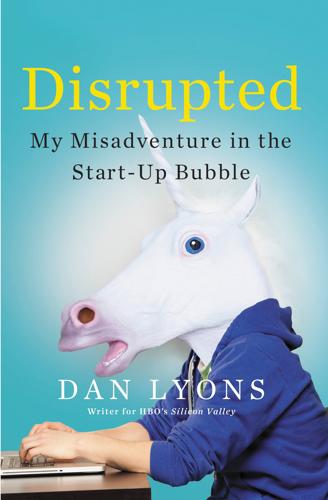
Disrupted: My Misadventure in the Start-Up Bubble
by
Dan Lyons
Published 4 Apr 2016
The article described a whole generation of once-successful men who, having been laid off during the recession, or “Mancession,” as the magazine dubbed it, were now shuffling around in their bathrobes, stunned, emasculated, psychologically destroyed, humiliated in front of their wives and children, drifting through life like castrated zombies. In the new economy, age fifty was the new sixty-five. Hit fifty, and your company would find an excuse to fire you, and good luck trying to find another job. As for filing an age discrimination suit: Forget about it. You wouldn’t stand a chance. Even if you won your lawsuit, you’d never work again. I’d read the article when it came out, but it hadn’t bothered me too much.
…
The company’s investors are demanding astronomical growth rates, and while cold-calling thousands of leads may be a brute-force, blunt-instrument tactic, it’s the only way they can hit their numbers. “When you get a hard-charging sales culture in place, and you’re trying to keep up insane growth rates, all that high-minded preaching about how the New Economy means not doing things like they used to do in the Bad Old Days—all that stuff goes out the window, and they bring in Alec Baldwin to give his steak knives speech,” my friend says. “Our recruiters go out to college campuses and load up the slave ship with a shit ton of identical-looking lax bros.
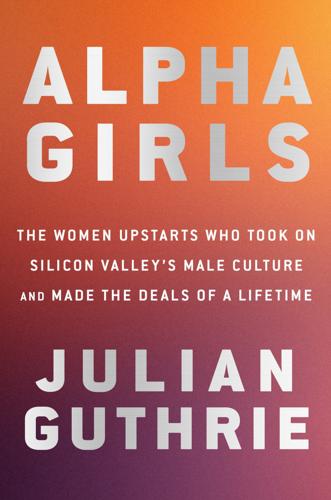
Alpha Girls: The Women Upstarts Who Took on Silicon Valley's Male Culture and Made the Deals of a Lifetime
by
Julian Guthrie
Published 15 Nov 2019
Release had more wins than losses in its meetings with companies and investors—though the start-up was always desperate for cash. Eventually it prepared to go public, with Merrill Lynch as the underwriter. The investing world had changed since Netscape’s IPO in 1995. The fervor over Netscape’s dramatic upward valuation had ushered in new economy companies that were born, funded, acquired, or went public in record time. Suddenly, making money—actual revenue and profits—was far less important than capturing clicks and eyeballs. Tens of billions of dollars were pouring into venture capital funds, and almost any company with a “dot-com” after its title was attracting suitors.
…
But the southern belle continued to love her Silicon Valley job, telling her friends, “I get to talk on the phone all day and spend money!” A group of high-society ladies soon invited her to lunch to welcome her to the tony neighborhood. She was amused when the questions began, a reminder that San Francisco, for all its progressiveness, was still a place where old money looked down at the new economy. First, the Chanel-clad inquisitors wanted to know what her father’s line of work was; surely he had bought the mansion. “My dad is a professor of civil engineering,” she said. So they asked what her husband did for work. “I’m not married,” she said. This was met with dead silence. There had to be a trust fund, they figured.

AI Superpowers: China, Silicon Valley, and the New World Order
by
Kai-Fu Lee
Published 14 Sep 2018
Worse still, this would not be a temporary shock, like the fleeting brush with 10 percent unemployment that the United States experienced following the 2008 financial crisis. Instead, if left unchecked, it could constitute the new normal: an age of full employment for intelligent machines and enduring stagnation for the average worker. U.S.-CHINA COMPARISON: MORAVEC’S REVENGE But what about China? How will its workers fare in this brave new economy? Few good studies have been conducted on the impacts of automation here, but the conventional wisdom holds that Chinese people will be hit much harder, with intelligent robots spelling the end of a golden era for workers in the “factory of the world.” This prediction is based on the makeup of China’s workforce, as well as a gut-level intuition about what kinds of jobs become automated.
…
It Doesn’t Have to Be,” New York Times, December 14, 2017, https://www.nytimes.com/interactive/2017/12/14/business/world-inequality.html. twice as much wealth: Matt Egan, “Record Inequality: The Top 1% Controls 38.6% of America’s Wealth,” CNN, September 17, 2017, http://money.cnn.com/2017/09/27/news/economy/inequality-record-top-1-percent-wealth/index.html. fallen for the poorest Americans: Lawrence Mishel, Elise Gould, and Josh Bivens, “Wage Stagnation in Nine Charts,” Economic Policy Institute, January 6, 2015, http://www.epi.org/publication/charting-wage-stagnation/. “The answer is surely not”: Claire Cain Miller, “As Robots Grow Smarter, American Workers Struggle to Keep Up,” The Upshot (blog), New York Times, December 15, 2014, https://www.nytimes.com/2014/12/16/upshot/as-robots-grow-smarter-american-workers-struggle-to-keep-up.html.
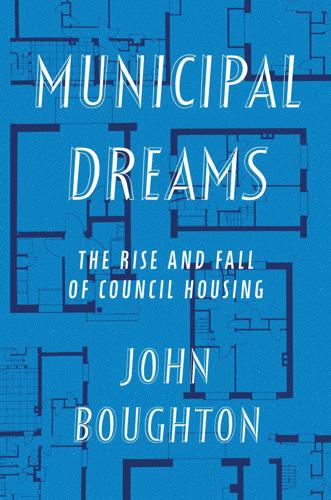
Municipal Dreams: The Rise and Fall of Council Housing
by
John Boughton
Published 14 May 2018
The positive feature of the City Challenge programme was a formalised and strengthened commitment to economic regeneration based on the realisation that a community’s physical environment was often the least of its problems. City Challenge emphasised ‘partnership’ – strengthened links between local councils and local businesses and close collaboration with education and training providers. Of course, all this was to fit the local community to the new economy; predominantly lower-paid, less regular and non-unionised service industries. This all implicitly acknowledged that there would be no return to the traditional manufacturing employment that had been the mainstay of many ‘respectable’ working-class communities in the past. The process itself was also, in Conservative terms, businesslike.
…
Second, both in the telling choice of location and in its actual words, the speech in many ways reflected the assumptions of those initiatives. Blair felt he had little choice but to embrace the new globalised economy, but he also saw it as an opportunity that a younger and cooler Britannia might seize. Unemployment was a problem of people and places shut out from the new economy, unable to compete, and the two unerringly converged in the ‘problem estate’ and perhaps even in the form and nature of council housing more generally. One year later, the Aylesbury Estate was awarded £56 million. It was named one of seventeen ‘pathfinder partnerships’ awarded cash under the government’s New Deal for Communities scheme – ‘a key programme in the Government’s strategy to tackle multiple deprivation in the most deprived neighbourhoods in the country’.2 ‘Social exclusion’ was the new buzz term, understood as ‘a multi-dimensional process, in which various forms of exclusion are combined: participation in decision-making and political processes, access to employment and material resources, and integration into common cultural processes’.3 ‘Welfare’, as we learnt to call the social security system, and the problem of making work pay (as it was frequently expressed) was judged to be one larger cause of this and was to be tackled by the new minimum wage and benefits reforms.
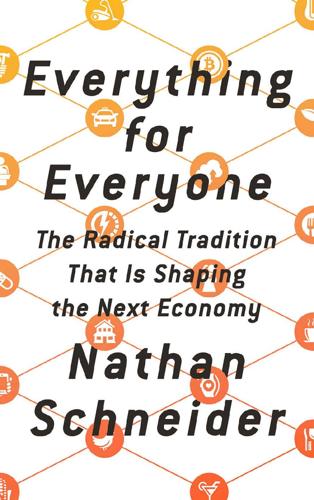
Everything for Everyone: The Radical Tradition That Is Shaping the Next Economy
by
Nathan Schneider
Published 10 Sep 2018
By 2017, Bernie Sanders was leading a group of Democratic senators and representatives to propose federal legislation on behalf of worker-owned businesses. Some embattled labor unions seemed ready to turn back to their roots with a newfound interest in co-ops, too. Alongside the NCBA and other older co-op organizations, these efforts tended to coalesce around the youthful, intersectional, diverse umbrella of the New Economy Coalition—founded around the time of the 2008 crash. They considered themselves part of a wider “solidarity economy.”10 It was in 2008, too, that Bank of America cut its line of credit to Republic Windows and Doors, a factory on Chicago’s Goose Island. Production was set to end, but some of the workers refused to leave, and their occupation became a national totem.
…
Infospai, 118–119 Innocent IV (pope), 23 Institute for Cooperative Development, 66 Institute for Local Self-Reliance, 175 Institute for the Formation of Character, 47 insurance industry, 5, 8, 10, 14, 38, 54–56, 183, 185 Integral Cooperative, 119, 120 integral human development, 62 Integral Revolution, 119, 126 Integralism, 128–129 International Cooperative Alliance, 8–9, 11–12, 58, 233 International Ladies’ Garment Workers’ Union, 7 International Summit of Cooperatives, 11, 15 Internet, 147–148, 162, 212 investors, 80, 104, 233 Ipercoop store, 230 iStock, 148 Italy co-op laws in, 188–189, 232–233 co-ops in, 62–63, 229–230 Emilia-Romagna region, 62–63 Matera, 24–25, 28, 32 social co-ops in, 81 Jackson, Andrew, 192 Jackson Jambalaya (blog), 202 “Jackson Rising” (conference), 203–204, 215 Jackson-Kush Plan, 195, 196–198, 205 Jackson-Kush Plan: The Struggle for Black Self-Determination and Economic Democracy (pamphlet), 195 Jay Z, 34 Jefferson, Thomas, 43 Jesus Christ, 22 jobs as ideology, 45 technology and vulnerability of, 79, 225 Jobs, Steve, 79 Jobs of Our Own (Mathews), 61 Johnson, Derrick, 178 Johnson, Lyndon, 171 Johnstown, CO, 1 Joint Stock Companies Act (1856), 50 Joyce, James, 144 Juris, Jeffrey, 117 Jurowicz, Julek, 93 Kahle, Brewster, 158 Kauai Island Utility Cooperative, 174 Kazadi, Aleta, 184 Kelly, Marjorie, 151 Kelty, Christopher M., 135 Kenya, 65–67 King, Martin Luther, Jr., 199–200, 222 Kit Carson Electric Cooperative, 174 Kleiner, Dmytri, 160 Knights of Labor, 54–56, 61–62 Knuth, Donald, 35 Koch, Charles, 223 Koestler, Arthur, 139 König, Thomas, 131 Krause, Alanna, 95–96 Kunstler, James Howard, 97 Kurds, 207 Kush District, 190 labor unions, 6–7, 15, 34, 44, 53–54, 56, 76, 83–84, 85, 112, 124, 154, 224 Lander, Brad, 161 LaPlante, Rochelle, 144 Las Indias, 149–150 Laurini, Gianluca, 63 law school, 193 learning, lifetime of, 13 Lee, Jonathan, 196 Lee, Marcia, 73, 75 Legacoop, 63, 150, 231 Lehman Brothers, 119 Leo XIII (pope), 60 Leroux, Monique, 11 Lessig, Lawrence, 137 Liberty Distributors, 2, 3 (fig.), 6, 234–235 Lieder, Sheila, 85, 88 Lim, Leng, 33 Lincoln, Abraham, 44–45 Lincoln, Murray, 41, 57, 181 Lines Across the Land, 175 Linux software, 133–134 Lockwood, Jonathan, 186–187 Loconomics Cooperative, 150, 154 The Lone Ranger (radio dramas), 57 Long, Guillaume, 213 Loomio, 93–95, 104, 159, 167 Lopez, Alfredo, 135 Lumumba, Chokwe, 189–192, 197–198 mayoral campaign of, 196–197 Mississippi arrival of, 192–193 New Afrikan People’s Organization founded by, 194 Lumumba, Chokwe Antar, 190, 200–201, 203 (photo) mayoral election of, 205 Mississippi’s flag changed and, 204–205 Lumumba, Rukia, 195 Lundahl, Erika, 103 Lung Ta (farming commune), 123–124 Luther, Martin, 38 Magnolia Electric Power Association, 177 Malcolm X, 74, 189, 193, 194, 199 Malcolm X Grassroots Movement, 191, 194 Manna (Brain), 222–223 manufacturing cooperative, 63 (photo) Martin, Brendan, 82, 84 Marx, Karl, 53, 79 Matera, Italy, 24–25, 28, 32 Matheson, Jim, 171 Mathews, Race, 60–61 Maurin, Peter, 5 May First/People Link organization, 135–136 MBA programs, 69 McClelland, Jamie, 135–136 Mckesson, DeRay, 190 McKnight, Albert J., 62 McLean, Christopher, 174–175, 179–180 McRitchie, Jim, 166 Mead, Margaret, 20, 188 Mechanical Turk, 90, 92, 144 medieval guilds, 33–37, 212, 229 Megatrends (Naisbitt), 10 mendicant movement, 23 mercantilism, 215 Meredith, Greg, 157 migration, 216 Millet, Jean-François, 142 Mingo, Stephanie, 205 missing markets, 9, 52 Mississippi Sovereignty Commission, 193 Mississippi’s flag, 204–205 Modo cooperative, 152 monasteries, 22–23, 25–26, 32 Mondragon Corporation, 59–62, 124, 151, 156, 195, 206 money, as debt, 104–105 Moraa, Nyong’a Hyrine, 67–68 Mòrist, Joel, 123, 126 (photo) mortgage crisis, 119 movements, 9, 15, 23, 49–50 anti-globalization, 117 communal, 212–213 for co-ops, 12, 43–44, 225–226, 233 cryptocurrencies and, 130 free-software, 135, 137, 140–141 Malcolm X Grassroots, 191, 194 Mubarak, Hosni, 80 Müntzer, Thomas, 37–39 Musk, Elon, 79 Mussolini, Benito, 188 Mutual Broadcasting System, 57 MXGM organization, 194–197, 200–201, 204 Naisbitt, John, 10 Najm, Qinza, 36 (photo) Nakamoto, Satoshi, 106–107 Namasté Solar, 227 National Cooperative Business Association (NCBA), 41 National Domestic Workers Alliance, 151 National Grange of the Order of Patrons of Husbandry, 54 National Rural Electric Cooperative Association (NRECA), 171 National Security Agency, 135–136 National Trades Union, 44 NCBA. See National Cooperative Business Association Negro Cooperative Guild, 55 Nembhard, Jessica Gordon, 55, 203, 224 neo-tribes, 20 network economy, 91–92 New Afrikan People’s Organization, 194–195 New Deal programs, 42, 169–170 New Economy Coalition, 83 New Era Windows Cooperative, 83 (photo), 84 New Harmony, 48 New Work Field Street Collective, 73 New Work New Culture, 73 New York City Network of Worker Cooperatives (NYC NOWC), 82 New Zealand, 94 NextCloud, 136 Niwot’s Curse, 96–97, 100 Nixon, Richard, 222 nomadism, 215–217 NRECA.
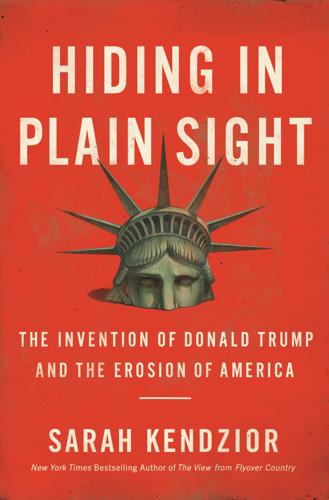
Hiding in Plain Sight: The Invention of Donald Trump and the Erosion of America
by
Sarah Kendzior
Published 6 Apr 2020
We are simply supposed to accept the endless reappearance of a cast of characters tied to Russia over multiple decades as an amazing coincidence. Throughout the late 1990s, Trump rebuilt his business empire in the style of the new criminal elite: blurring the lines between illicit and illegal, polishing the façade with glamour and prestige, and marketing himself as a comeback story of “the new economy.” A prime example are his condo sales. In 2018, BuzzFeed revealed that over a fifth of the condos Trump had purchased and sold since the 1980s were financed through secretive, all-cash transactions that enabled buyers to avoid legal scrutiny.59 As BuzzFeed noted, such transactions are not necessarily illegal but they certainly fit the Treasury characteristics for possible money-laundering.
…
The economic nightmare I had documented for years as a journalist had finally gotten me, like a monster I had tracked but failed to slay. I developed health problems that I never treated, contemplating the humiliation of a medical GoFundMe but then deciding to wait in case something worse happened—in postrecession Missouri, the odds of something worse happening were always high. We thought about moving, but the new economy had created an unequal economic geography. Expensive cities had better jobs, but the high cost of living made moving anywhere with our meager St. Louis assets impossible. In the cities where we could afford to live—cities similar to St. Louis—there were few full-time positions available. None of this was reflected in the portrait of the American economy we saw on the news.

Life After Google: The Fall of Big Data and the Rise of the Blockchain Economy
by
George Gilder
Published 16 Jul 2018
Cleaving all information is the great divide between creativity and determinism, between information entropy of surprise and thermodynamic entropy of predictable decline, between stories that capture a particular truth and statistics that reveal a sterile generality, between cryptographic hashes that preserve information and mathematical blends that dissolve it, between the butterfly effect and the law of averages, between genetics and the law of large numbers, between singularities and big data—in a word, the impassible gulf between consciousness and machines. Not only was a new science born but also a new economy, based on a new system of the world—the information theory articulated in 1948 by Shannon on the foundations first launched in a room in Königsberg in September 1930. This new system of the world was consummated by the company we know as Google. Google, though still second in the market cap race is by far most important, paradigmatic company of our time.
…
He heralded a “zero marginal cost society.” Under the new regime, the price of every incremental good and service, from search to software, from news to energy, will plunge toward “free” as every device and entity in the world is subsumed in an Internet of Things, where exponential network effects yield a new economy of leisure and abundance.3 Rifkin assured his audience that it is indeed a Google world. But not only is “free” a lie, as we’ve seen, but a price of zero signifies a return to the barter system, a morass of incommensurable exchanges that the human race left behind in the Stone Age. You pay not with money but with your attention.

SEDATED: How Modern Capitalism Created Our Mental Health Crisis
by
James. Davies
Published 15 Nov 2021
In this book I will provide an answer, by revealing how, since the 1980s, successive governments and big business have worked to promote a new vision of mental health; one that puts at its centre a new kind of person: resilient, optimistic, individualistic and above all, economically productive – the kind of person the new economy needs and wants. As a result of this shift, our entire approach to mental health has radically altered to meet these market demands. We define ‘return to health’ as a ‘return to work’. We blame suffering on faulty minds and brains rather than on harmful social, political and work environments. We promote highly profitable drug interventions, which, if great news for big pharmaceutical corporations, are in the long term holding millions of people back.
…
Instead, ‘corporations are presented as potential victims through losses in productivity’15 – losses caused by ailing mental health.16 As the mental health and productivity agenda of new capitalism became ever more aligned, psychiatric drugs were given a boost in another way. Interventions like psychoanalysis and humanistic therapy were deemed comparatively less cost-effective, which of course mattered in the new economy. After all, in the space of one hour of psychotherapy, you could treat 3–4 people with psychiatric drugs, increasing output per hour of clinical labour. Furthermore, unlike with psychotherapy, prescribing psychiatric drugs did not involve paying for multiple costly therapy sessions. These arguments became all the more important during the 1990s and 2000s, as the DSM began medicalising huge swathes of everyday distress, placing greater strain on services, especially in primary care.
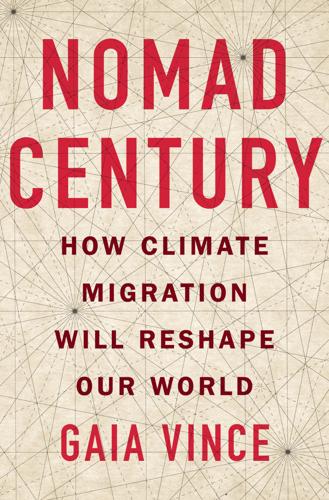
Nomad Century: How Climate Migration Will Reshape Our World
by
Gaia Vince
Published 22 Aug 2022
In the patriarchal structure of most nations, this has meant that highly skilled women have been able to join the workforce when there were more migrants around. Enterprising migrants start businesses that employ more migrants and natives. Some of these businesses help generate greater social, economic and cultural productivity, driving a whole new economy. Think of the Chinatowns, Little Greeces and Little Italys, for example. In the past, the vast majority of migrants were the poorest, most unskilled people, who had the least to lose by leaving destitution for the price of passage elsewhere. Today, with border controls and immigration controls, only the wealthiest can afford the cost and only the most skilled and most motivated can legally enter many countries from the poor world.
…
For poor countries with insufficient power capacity that are reliant on coal, the capital costs of deploying new renewables – even at their cheaper prices – can still be prohibitive. This is something that the international community should help with – by making cheaper finance available, for instance. The manufacture, construction, deployment, recycling and maintenance of renewable power technology will be a leading job creator in existing cities, but also in the new economies of the far north. Our net zero world will be much more heavily reliant on electricity production, to power not just homes and businesses but also industry and transport, which currently rely on fossil fuels. The energy to make all this electricity can come from vast arrays of solar and wind-power plants installed in a belt across the uninhabitable desert regions of the mid latitudes.
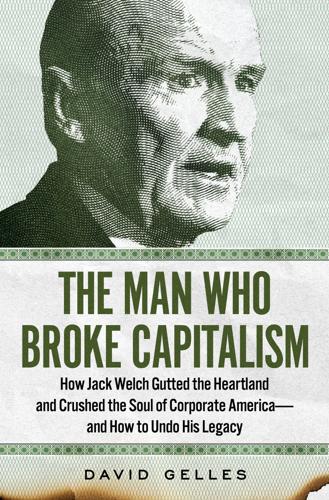
The Man Who Broke Capitalism: How Jack Welch Gutted the Heartland and Crushed the Soul of Corporate America—and How to Undo His Legacy
by
David Gelles
Published 30 May 2022
Conservative economists called for less government meddling, less regulation, free markets, fewer labor unions, and a world where big businesses were free to act in their own best interests. Some went further, arguing that corporations should focus on maximizing shareholder value, rather than concerning themselves with the public good. On Wall Street, animal spirits were stirring. Thanks to technology, money was beginning to move in strange new ways. A new economy was taking shape, and Welch, as chairman of GE, would have a strong hand in its design. GE was hardly in trouble when Welch took over. Jones had overseen a steady rise in earnings, and the company had just reported an annual profit of nearly $1.5 billion. But GE’s stock price hadn’t budged in years, and that, to Welch, was a problem.
…
There is no law that dictates corporations must maximize shareholder value, and after a half century fever dream, the public, policymakers, and even some CEOs seem to be accepting as much. We will need to articulate a new set of shared goals designed to promote broad economic prosperity, not widespread inequality. Stakeholder capitalism is a useful first step, but will only matter if the companies making bold pledges follow through with equally bold actions. To create a new economy we will need a new framework for success. This will require celebrating leaders who prioritize long-term growth over short-term gains, and putting an end, once and for all, to the bankrupt practice of making men like Welch our heroes. We will need to raise pay, improve benefits, and share wealth with our workers.
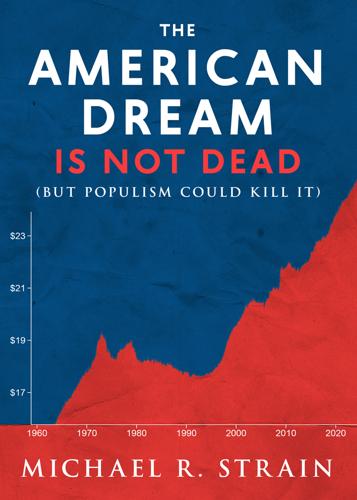
The American Dream Is Not Dead: (But Populism Could Kill It)
by
Michael R. Strain
Published 25 Feb 2020
Here, for example, is what Warren, who takes the brunt of some of Strain’s attacks, said when she offered a plan to protect the rights of workers in the gig economy in 2016: “Massive technological change is a gift—a byproduct of human ingenuity that creates extraordinary opportunities to improve the lives of billions. But history shows that to harness those opportunities to create and sustain a strong middle class, policy also matters. To fully realize the potential of this new economy, laws must be adapted to make sure that the basic bargain for workers remains intact, and that workers have the chance to share in the growth they help produce.”52 These are not the words of a utopian, a nostalgist, or a Luddite. I will leave it to Strain’s fellow economists to argue with him over whether he uses the right measures of inflation to gauge income changes, over the difference studying “average wages” or “median wages” and other issues of this sort.
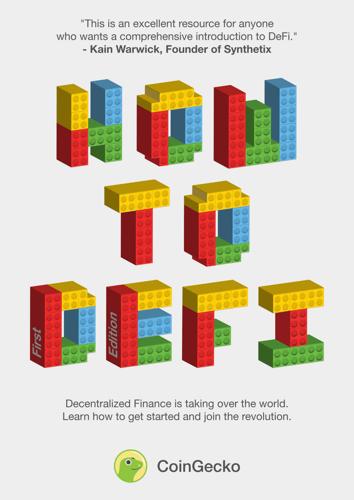
How to DeFi
by
Coingecko
,
Darren Lau
,
Sze Jin Teh
,
Kristian Kho
,
Erina Azmi
,
Tm Lee
and
Bobby Ong
Published 22 Mar 2020
” – Hugh Karp, CEO of Nexus Mutual “There is a lot of content about decentralized finance available but nothing matches this depth and comprehensiveness of this book.” – Leighton Cusack, CEO of PoolTogether “This is an excellent resource for anyone who wants a comprehensive introduction to DeFi.” – Kain Warwick, Founder of Synthetix “This book details the new economies created by a generation of bankless pioneers. It’s the best introduction you could ask for.” – Mariano Conti, Head of Smart Contracts at Maker Foundation Introduction Welcome to CoinGecko’s very first book, How to DeFi! DeFi is the acronym for the term Decentralized Finance and is currently one of the fastest-growing sectors in the blockchain and cryptocurrency space.

This Changes Everything: Capitalism vs. The Climate
by
Naomi Klein
Published 15 Sep 2014
All told, three huge economic engines—the banks, the auto companies, and the stimulus bill—were in a state of play, placing more economic power in the hands of Obama and his party than any U.S. government since the administration of Franklin Delano Roosevelt. Imagine, for a moment, if his administration had been willing to invoke its newly minted democratic mandate to build the new economy promised on the campaign trail—to treat the stimulus bill, the broken banks, and the shattered car companies as the building blocks of that green future. Imagine if there had been a powerful social movement—a robust coalition of trade unions, immigrants, students, environmentalists, and everyone else whose dreams were getting crushed by the crashing economic model—demanding that Obama do no less.
…
In fact the slogan long embraced by this movement has been “System Change, Not Climate Change”—a recognition that these are the two choices we face.67 “The climate justice fight here in the U.S. and around the world is not just a fight against the [biggest] ecological crisis of all time,” Miya Yoshitani, executive director of the Oakland-based Asian Pacific Environmental Network (APEN), explains. “It is the fight for a new economy, a new energy system, a new democracy, a new relationship to the planet and to each other, for land, water, and food sovereignty, for Indigenous rights, for human rights and dignity for all people. When climate justice wins we win the world that we want. We can’t sit this one out, not because we have too much to lose but because we have too much to gain. . . .
…
Polluting smoke may not be billowing from the tops of its trees but it may as well be, since the trees that have been designated as carbon offsets are now allowing that pollution to take place elsewhere.73 The mantra of the early ecologists was “everything is connected”—every tree a part of an intricate web of life. The mantra of the corporate-partnered conservationists, in sharp contrast, may as well be “everything is disconnected,” since they have successfully constructed a new economy in which the tree is not a tree but rather a carbon sink used by people thousands of miles away to appease our consciences and maintain our levels of economic growth. But the biggest problem with this approach is that carbon markets have failed even on their own terms, as markets. In Europe, the problems began with the decision to entice companies and countries to join the market by handing out a huge number of cheap carbon permits.
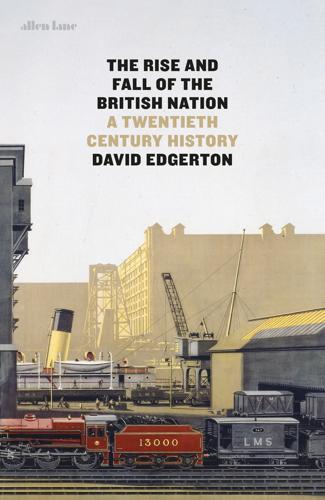
The Rise and Fall of the British Nation: A Twentieth-Century History
by
David Edgerton
Published 27 Jun 2018
We can get a sense of the profound changes in the direction of capital by returning to the London Stock Exchange. This market in shares boomed through the 1980s, and especially the late 1990s. The FTSE 100 index, created in 1984, and accounting for the bulk of the stock market by value, surged to a peak in December 1999. It did this because investors had come to believe in what was called the New Economy. Extraordinary price-earnings ratios resulted as investors piled into enterprises which ultimately found the laws of economic gravity all too real. The bubble burst, and the FTSE 100 did not reach these unsupported heights again for more than a decade. Over that time the composition of the index changed.
…
The white dominions, once so central to British trade, were now minor trading partners, but Canada, Australia and New Zealand now had a combined population comparable to that of the United Kingdom. Indeed, in terms of global heft we would do well to think of the United Kingdom at the end of the twentieth century as a large Canada rather than, say, a small United States of America. THE NEW ECONOMY This opening of markets was of significance in ways that grew less visible as it became the norm. For example, it would have been unthinkable in the 1950s and 1960s to have our telephones or cars or computers made abroad or by foreign companies. Now it was unthinkable to deprive the British consumer of such devices.
…
Whereas the left had been strongly declinist in the 1980s, and indeed saw Mrs Thatcher’s policies as strengthening the forces that led to decline – finance, free markets, trade liberalization – by the late 1990s these ideas were weakening even on the left. For New Labour there was no longer a problem of underperforming British capitalism. There was, it seemed, a New Economy, a new weightless, past-less economy, which appeared to defy what seemed like old-fashioned laws of economic gravity, not least in the stock market boom which ran into 1999. People made fun of Gordon Brown for talking of ‘neo-endogenous growth theory’, but it was rather revealing that he was making a very general economic argument which suggested that what really mattered in growth was R&D and ‘human capital’, and not such things as investment or trade policy.
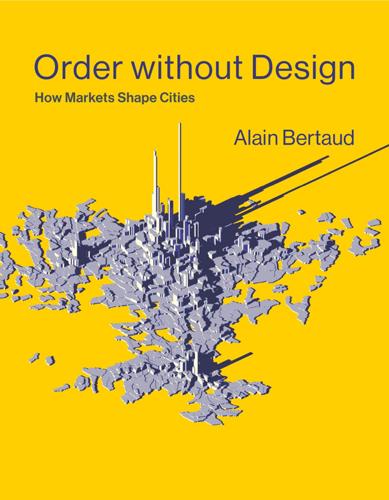
Order Without Design: How Markets Shape Cities
by
Alain Bertaud
Published 9 Nov 2018
The spectacular achievements of Hong Kong urban planners in managing land use changes were not because they had made plans in advance to change land use. Instead, once these economic changes imposed by the world’s economy had become clear, they reacted rapidly to adjust the city land use and infrastructure to the new economy. The Role of Markets in Historical Preservation Historical preservation is one of the few exceptions for which urban managers might want to prevent the spontaneous land recycling caused by market forces. Historical heritage buildings are fossil buildings produced by ancient market forces. Preserving the highest-quality buildings of the past has many economic and cultural justifications.
…
Transport Systems Have to Adapt to Constantly Evolving City Structures Alarmed by the poor performance of current urban transport modes, municipalities and planners often try to contain urban expansion in a more compact form that they feel would be easier to serve with traditional public transport modes: public mass transport and city buses. Policies constraining the emerging demand for land required by the new economy result in extremely high land prices and, in many cases, informal developments not served by adequate infrastructure expansion—as is the case in Mexico City, for instance. Advocates of compact cities often ignore the fact that the compact part of their city is already extremely congested and that governments are unable to provide the public transport line intensity that would prevent congestion for commuters using public transport as well as individual cars.
…
Advocates of compact cities often ignore the fact that the compact part of their city is already extremely congested and that governments are unable to provide the public transport line intensity that would prevent congestion for commuters using public transport as well as individual cars. The example of the congestion in Beijing’s new subway lines (see figure 5.10) discussed above is a good illustration of this issue. Municipalities and planners should face the reality of changing urban land use required by the new economy. Instead of fighting the expansion of cities, which is largely demand driven, to preserve an obsolete and congested type of land use, planners should try to create new transport systems that could serve both the traditional high-density CBDs and the more recent dispersed forms of urban clusters.

Future Politics: Living Together in a World Transformed by Tech
by
Jamie Susskind
Published 3 Sep 2018
Tapscott and Tapscott, Blockchain Revolution, 16. 26. Tapscott and Tapscott, Blockchain Revolution, 153–4; Stan Higgins, ‘IBM Invests $200 Million in Blockchain-Powered IoT’, CoinDesk, 4 October 2016 <https://www.coindesk.com/ibm-blockchain-iotoffice/> (accessed 30 November 2017). 27. Melanie Swan, Blockchain: Blueprint for a New Economy (Sebastopol, CA: O’Reilly, 2015), 14. 28. Economist, ‘Not-so-clever Contracts’, 28 July 2016 <http://www. economist.com/news/business/21702758-time-being-leasthuman-judgment-still-better-bet-cold-hearted?frsc=dg%7Cd> (accessed 30 November 2017). 29. Tapscott and Tapscott, Blockchain Revolution, 18. 30.
…
New York Times, ‘Why Not Smart Guns in This High-Tech Era?’ Editorial, 26 November 2016 <http://mobile.nytimes.com/2016/ 11/26/opinion/sunday/why-not-smart-guns-in-this-high-techera.html?smid=tw-nytopinion&smtyp=cur&referer=> (accessed 1 December 2017). 16. Hart, Concept of Law, 27–8, 48. 17. Melanie Swan, Blockchain: Blueprint for a New Economy (Sebastopol, CA: O’Reilly, 2015), 14. 18. See Primavera De Filippi and Aaron Wright, Blockchain and the Law: The Rule of Code (Cambridge, Mass: Harvard University Press, forthcoming, 2018), ch. 12; on computable contracts see also Harry Surden, ‘Computable Contracts’, UC Davis Law Review 46, (2012): 629–700. 19.
…
The Future of Law: Facing the Challenges of Information Technology. Oxford: Oxford University Press, 1998. Susskind, Richard and Daniel Susskind. The Future of the Professions: How Technology Will Transform the Work of Human Experts. Oxford: Oxford University Press, 2015. Swan, Melanie. Blockchain: Blueprint for a New Economy. Sebastopol, CA: O’Reilly, 2015. Swearingen, Jake. ‘Can an Amazon Echo Testify Against You?’ NY Mag, 27 Dec. 2016 <http://nymag.com/selectall/2016/12/can-an-amazonecho-testify-against-you.html> (accessed 1 Dec. 2017). Swift, Adam. Political Philosophy: A Beginners’ Guide for Students and Politicians (Second Edition).
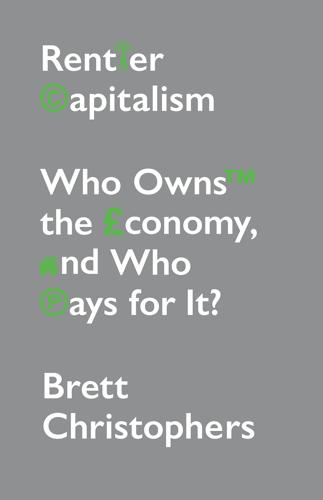
Rentier Capitalism: Who Owns the Economy, and Who Pays for It?
by
Brett Christophers
Published 17 Nov 2020
‘Datafication’ is the term used by Jathan Sadowski in his ‘When Data Is Capital: Datafication, Accumulation, and Extraction’, Big Data & Society, doi: 10.1177/2053951718820549. 19. Economist, ‘Data Is Giving Rise to a New Economy’, 6 May 2017. 20. K. Granville, ‘Facebook and Cambridge Analytica: What You Need to Know as Fallout Widens’, New York Times, 19 March 2018. 21. Economist, ‘Data Is Giving Rise to a New Economy’. See also T. Hale, ‘Data Is Not the New Oil’, 8 May 2019, at ftalphaville.ft.com. 22. We Are Social, ‘Digital in 2018’, January 2018, pp. 126, 128 – pdf available at digitalreport.wearesocial.com. 23.
…
Although the bank, which will make long-term investments in Scottish companies, will be a limited company operating at arm’s length from the government, the latter will own and fund it, and ‘ministers [will] be “given the power to guide its strategic direction” by “setting missions” for it to “tackle socio-economic challenges” ’.36 A similar institution established by the UK government would have the potential to contribute towards seeding and funding a transition away from rentierism at the level of the UK as a whole. Given the scale of the challenge, however, a little nudging here and there is almost certain to be insufficient. Rentierism is not some epiphenomenon in the UK; it essentially constitutes the economy, with both deep roots and pervasive reach. The fashioning of a new economy will require the government to do more than merely incentivize certain alternative types of private-sector activity. It will require the government to grasp the nettle and invest on a significant scale in its own economic assets, skills and activities. The government, in short, will have to take a leading role.
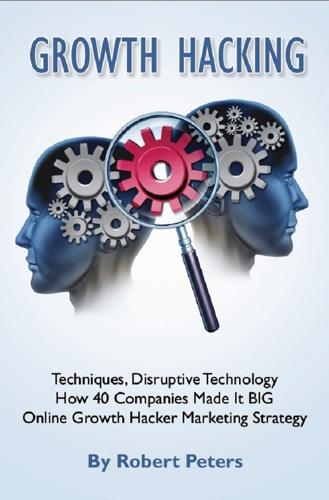
Growth Hacking Techniques, Disruptive Technology - How 40 Companies Made It BIG – Online Growth Hacker Marketing Strategy
by
Robert Peters
Published 18 May 2014
Customers on both ends of the equation love the option. Renters pay 40% less for a RelayRides vehicle over a traditional rent car and the average vehicle owner makes $250 a month in profit. Some owners are so attracted to the concept, they put from 2-4 cars into service. In studying the transportation/ride share market as part of the new economy of sharing, RelayRides hit on the untapped resource of underutilized vehicles that spend most of their time in the garage or parking lot. As a facilitator of the owner/rental connection, the company takes 25% and in exchange provides $1 million of insurance on the vehicle during the rental period.

The Zenith Angle
by
Bruce Sterling
Published 27 Apr 2004
Here’s the deal. You can’t turn an enterprise around on the word of one guy from R&D. It doesn’t matter if he’s brilliant or even if he’s technically correct. The middle-level people just won’t go for that politically.” “Truth and technology will win over bull and bureaucracy, Tom. That’s the story of the New Economy.” “No, kid, the truth does not win. For a couple of quarters the truth gets somewhere maybe. If everybody’s real excited. But never in the long run, never.” DeFanti shrugged. “The common wisdom always wins. Consensus, perception management, and the word on The Street. The markets, kid, the machine.
…
An awful vision of the hordes of the cheated, the deceived, and the damaged. Millions of normal people across America, across the whole world, who had no awareness of what he had done to them, what he was trying to save them from . . . Remember that hot stock that you bet on, Mr. and Mrs. America? All those nerds you trusted to bring you a New Economy? Well, they’re driving massive trucks in Colorado. Lost, alone. With drunken ex-soldiers. In a War on Terror. Cursing, bewildered, frustrated, violent. In his panicky haste to flee Cheyenne Mountain, Van had abandoned his cell phone and even his beloved Swiss Army knife. His pockets were truly empty now.
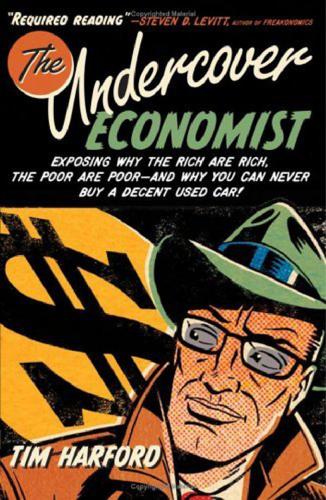
The Undercover Economist: Exposing Why the Rich Are Rich, the Poor Are Poor, and Why You Can Never Buy a Decent Used Car
by
Tim Harford
Published 15 Mar 2006
The prediction that the Dow will hit 36,000 in 3 to 5 years is made • 257 • N O T E S on page 18 of “Dow 36,000,” and economist Brad DeLong is extremely dismissive: http://www.j-bradford-delong.net/movable_type/2005_archives/000025.html. How transformational is the “new economy”? Robert Gordon has given the definitive skeptical statement in “Does the ‘New Economy’ Measure up to the Great Inventions of the Past?” Journal of Economic Perspectives 4, no.14 (Fall 2000): 49–74. Paul David’s argument that new technology takes time to have a real economic impact is most famously expounded in “The Dynamo and the Computer: An Historical Perspective on the Modern Productivity Paradox,” The American Economic Review Papers and Proceedings, May 1990, 355–61.
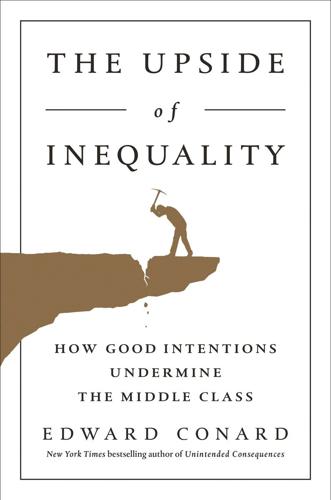
The Upside of Inequality
by
Edward Conard
Published 1 Sep 2016
Chapter 7 THE MYTH THAT MOBILITY HAS DECLINED No one argument linking the success of America’s 1 percent to the slow wage growth of the middle and working classes is persuasive on its own: not the argument that the 1 percent earned their success at the expense of others; not the argument that the new economy hollows out the middle class and causes increasingly unproductive behaviors; and not the argument that the shortage of investment opportunities slows growth. To avoid having to defend these arguments, some opponents of the growing success of the 1 percent try a different tactic: they claim that the middle and working classes have suffered death by a thousand cuts.
…
James Fallows, “Why the Conard Interview Matters—or, Why the Democrats Need Karl Rove,” Atlantic, June 8, 2012, http://www.theatlantic.com/politics/archive/2012/06/why-the-conard-interview-matters-or-why-the-democrats-need-karl-rove/258303. 8. Gerald A. Carlino, “Knowledge Spillovers: Cities’ Role in the New Economy,” Business Review, Federal Reserve Bank of Philadelphia, 2001, https://webcache.googleusercontent.com/search?q=cache:3tfK2DlpWPUJ:https://www.philadelphiafed.org/research-and-data/publications/business-review/2001/q4/brq401gc.pdf+&cd=1&hl=en&ct=clnk&gl=us. 9. Stefano Scarpetta and Ignazio Visco, “The Sources of Economic Growth in OECD Countries,” OECD, 2003, http://www.oecd-ilibrary.org/economics/the-sources-of-economic-growth-in-oecd-countries_9789264199460-en. 10.
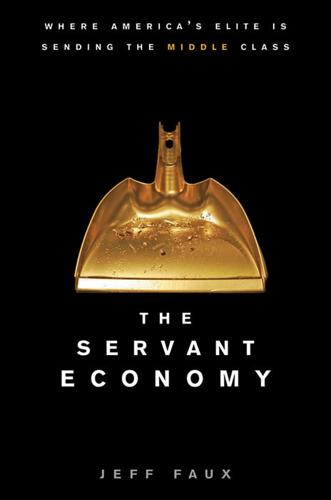
Servant Economy: Where America's Elite Is Sending the Middle Class
by
Jeff Faux
Published 16 May 2012
The days of any serious concern for the plight of the poor were long gone, of course, but as the wages-and-salary gap between the rich and the middle class grew, it represented a more serious political threat. Secondly, Greenspan’s formula rationalized the diversion of investment into financial markets, whose importance was now supposedly critical to the well-being of the middle class. In the new economy, workers would get ahead not by joining a union but by investing in companies that successfully kept out unions. However, the overwhelming majority of Americans still depended on their paychecks, not their dividend checks, to put bread on the table and a roof over their heads. Even at the height of the late 1990s dot-com boom, only 22 percent of households directly owned shares in a company.
…
Marshall Ganz, “How Obama Lost His Voice and How He Can Get It Back,” Los Angeles Times, November 10, 2010. 10. Eric Alterman, “Kabuki Democracy: Why a Progressive Presidency Is Impossible, for Now,” Nation, July 7, 2010. 11. Gar Alperovitz and Jeff Faux, Rebuilding America: A Blueprint For The New Economy (New York: Pantheon Books, 1984), 177–178. 12. In December 2010, Rattner and the state agreed to a $10 million fine and a five-year ban on participating in any pension-fund business. The New York Times reported that Rattner’s personal net worth was somewhere between $188 and $608 million. 13.
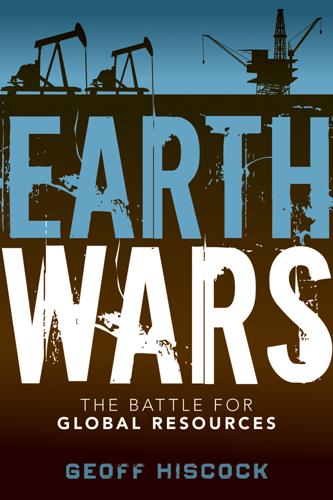
Earth Wars: The Battle for Global Resources
by
Geoff Hiscock
Published 23 Apr 2012
Heating up the Planet: Climate Change and Security. Sydney: Lowy Institute, June 2006. Earth, Fire, Wind, and Water: Economic Opportunities and the Australian Commodities Cycle. Sydney: ANZ Bank, August 2011. East Asia Analytical Unit, Australian Department of Foreign Affairs and Trade. India: New Economy, Old Economy. Canberra: Department of Foreign Affairs and Trade, 172 pp. East Asia Analytical Unit, Australian Department of Foreign Affairs and Trade. Indonesia: Facing the Challenge. Canberra: Department of Foreign Affairs and Trade, 2000, 172 pp. East Asia Analytical Unit, Australian Department of Foreign Affairs and Trade.
…
New York: William Morrow, 2008, 368 pp. Mine 2011: The Game Has Changed. Melbourne: PricewaterhouseCoopers, May 2011. Ohmae, Kenichi. The End of the Nation State: The Rise of Regional Economies. London: HarperCollins, 1995, 214 pp. Ohmae, Kenichi. The Invisible Continent: Four Strategic Imperatives of the New Economy. London: Nicholas Brealey Publishing, 2000, 262 pp. O’Neill, Jim, Dominic Wilson. Roopa Purushothaman, and Anna Stupnytska, How Solid Are The BRICs? Goldman Sachs Global Economic Paper No. 134, December 1, 2005. Oppenheimer, Stephen. Eden in The East. London: Weidenfeld & Nicholson, 1998, 560 pp.
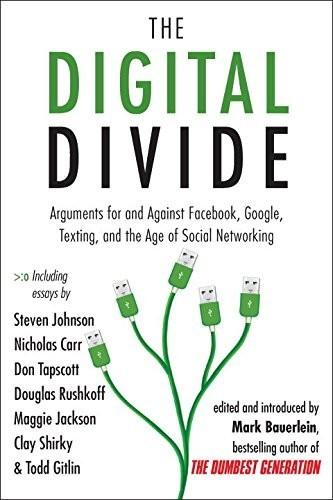
The Digital Divide: Arguments for and Against Facebook, Google, Texting, and the Age of Social Netwo Rking
by
Mark Bauerlein
Published 7 Sep 2011
Between the bookends of Jobs and Page lies the rest of Silicon Valley, including radical communitarians like Craig Newmark (of Craigslist.com), intellectual property communists such as Stanford Law professor Larry Lessig, economic cornucopians like Wired magazine editor Chris “Long Tail” Anderson, and new media moguls Tim O’Reilly and John Battelle. The ideology of the Web 2.0 movement was perfectly summarized at the Technology Education and Design (TED) show in Monterey last year, when Kevin Kelly, Silicon Valley’s über-idealist and author of the Web 1.0 Internet utopia New Rules for the New Economy , said:Imagine Mozart before the technology of the piano. Imagine Van Gogh before the technology of affordable oil paints. Imagine Hitchcock before the technology of film. We have a moral obligation to develop technology. But where Kelly sees a moral obligation to develop technology, we should actually have—if we really care about Mozart, Van Gogh, and Hitchcock—a moral obligation to question the development of technology.
…
Narayana Mutual of Omaha’s Wild Kingdom (television series) MySpace civic networks and identity setup on politician’s pages on self-portraits on spamming on MySpace Unraveled (Magid and Collier MySQL Napster Narcissism NASA NASA.gov NASDAQ National Book Foundation National Geographic National Institute on Drug Abuse National Institutes of Health Natural selection Nature (journal) Navteq Neanderthals Nelson, Ted Net Geners civic causes and collaboration and customization and education and entertainment and freedom and innovation and integrity and job customization by media customization by politics and purchase research by scrutiny and speed and NetMeeting Net roots Netscape Networked mind Networking Network News Protocol (NNTP) Neuroplasticity Neuroscience Newmark, Craig New Rules for the New Economy (Kelly) News Corporation Newsfeeds Newsweek The New Yorker New York Post The New York Times The New York Times Magazine NFL GameDay (video game) N-Fluence networks Nielsen Nietzsche, Friedrich Nike Nike+ iPod Sport Kit Nilekani, Nandan M. 9/11. See September 11, 2001 terrorist attacks 1984 (Orwell) Ninety-five Theses (Luther) Nixon, Richard NNTP.
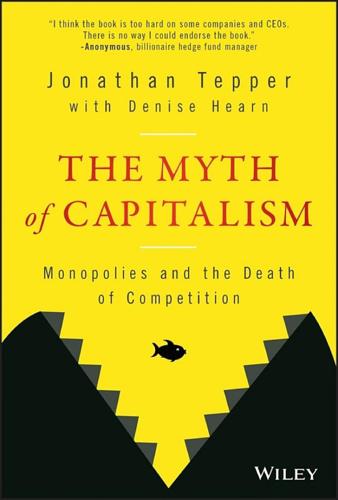
The Myth of Capitalism: Monopolies and the Death of Competition
by
Jonathan Tepper
Published 20 Nov 2018
The New York Times recently chronicled the story of Sheila James, a 62-year-old woman who wakes at 2:15 a.m. every day to commute three hours into downtown San Francisco by taking two trains and a bus. As sky-high housing prices have pushed her out of living closer to her US Department of Health and Human Services job, she now loses six hours of her day to commuting.25 People can't even live where the new economy is creating jobs. Something is seriously wrong. In the no-strings-attached labor world, workers shoulder a disproportionate amount of personal responsibility for their success: workers are forced to pay for their own up-skilling (vs. company funded training), must figure out their own pension plans and benefit schemes (if available to them at all), and insurance.
…
Available at SSRN: https://ssrn.com/abstract=826453 52. https://www.federalreserve.gov/econresdata/feds/2014/files/2014113pap.pdf. 53. https://www.manhattan-institute.org/sites/default/files/R-NG-0417.pdf. 54. https://ilsr.org/vanishing-community-banks-national-crisis/. 55. http://mjperry.blogspot.com/2011/09/dodd-frank-2010-full-employment-act-for.html. 56. http://www.washingtonexaminer.com/goldman-and-jpmorgan-sit-safely-behind-the-walls-of-dodd-frank/article/2560179. 57. https://www.wsj.com/articles/regulation-is-good-for-goldman-1423700859. 58. https://www.nytimes.com/2018/06/22/business/dealbook/banks-stress-test.html. 59. https://www.washingtonexaminer.com/goldman-sachs-wants-regulation-not-laissez-faire. 60. http://business.financialpost.com/news/economy/sp-moodys-boosting-rating-fees-faster-than-inflation. 61. https://www.reuters.com/article/businesspro-us-usa-ratings-competition-a-idUSTRE55N4VU20090624 62. https://www.fdic.gov/regulations/reform/altman1.pdf. 63. https://www.washingtonpost.com/blogs/wonkblog/post/the-pentagons-435-hammer/2011/05/19/AGoGKHMH_blog.html?
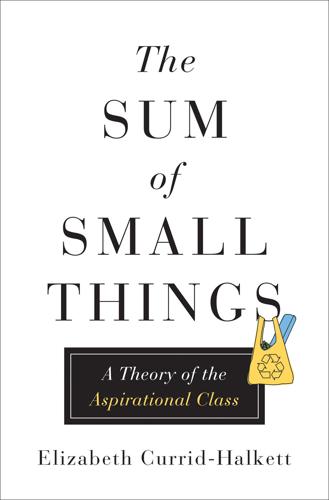
The Sum of Small Things: A Theory of the Aspirational Class
by
Elizabeth Currid-Halkett
Published 14 May 2017
Another account of this economic restructuring offers a similar but simpler explanation: The global economy had moved from producing widgets to producing ideas—those who were responsible for generating those ideas, what Robert Reich has called “symbolic analysts”37 or Richard Florida has termed the “creative class”—are the winners in the new economy.38 While a college degree is not an explicit measure of membership to Sassen’s, Reich’s, or Florida’s categorization, it certainly helps and most members do possess one. Thus the rise of an economy dependent on innovation and knowledge is also one dependent on professional skills, many of which are acquired through education.
…
Inspired by the successful rehabilitation of major metros, other smaller cities like Boulder, Pittsburgh, and St. Louis also undertook a renaissance—retrofitting industrial lofts for residential living, bringing more amenities into the city, paving bike paths and pedestrian-friendly walkways to attract members of the creative class (thought to be the lifeblood of the new economy).13 Local politicians and developers advocate for active street life, coffee shops, and live music as a part of the new urbanity. Countless new-build developments around the country in both urban and suburban areas offer residential, shopping, and restaurants as a combined experience for the consumer.
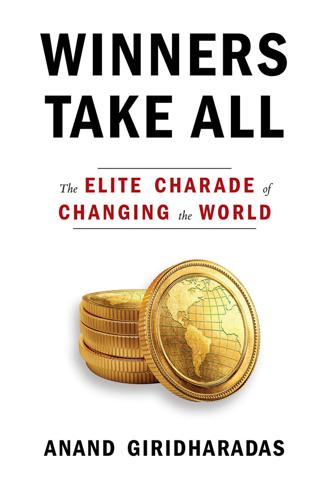
Winners Take All: The Elite Charade of Changing the World
by
Anand Giridharadas
Published 27 Aug 2018
She was part of the great brain rush to California that was turning the Bay Area into one of the most unaffordable, unequal, and tense parts of the country, with resentful locals famously throwing rocks at the Google buses that ferried employees to and from the South Bay. Leibrock and her colleagues at Even were awash in noble intentions, but it was still reasonable to ask if Even’s for-profit safety net was the most appropriate response to the problem its founders had identified. Could it be read as a lucrative bet that the new economy would inevitably entrap a permanent underclass, whose incomes could only be smoothed, not lifted—and smoothed not by restricting certain business practices by law (win-lose) but by charging workers a fee for security (win-win)? “If you want to feel like you have a safety net for the first time in your life, Even is the answer,” the company’s website said.
…
The phenomenon Drezner details matters far beyond the world of thinkers, because on issue after issue, the ascendant thought leaders, if they are positive, unthreatening, mute about larger systems and structures, congenial to the rich, big into private problem-solving, devoted to win-wins—these thought leaders will edge out other voices, and not just at conferences. They get asked to write op-eds, sign book deals, opine on TV, advise presidents and premiers. And their success could be said to come at the expense of the critics’. For every thought leader who offered advice on how to build a career in a merciless new economy, there were many less-heard critics aspiring to make the economy less merciless. The Hilary Cohens and Stacey Ashers and Justin Rosensteins and Greg Ferensteins and Emmett Carsons and Jane Leibrocks and Shervin Pishevars and Chris Saccas and Travis Kalanicks of the world needed thinkers to formulate the visions of change by which they would live—and to convince the wider public that they, the elite, were change agents, were the solutions to the problem, and therefore not the problem.
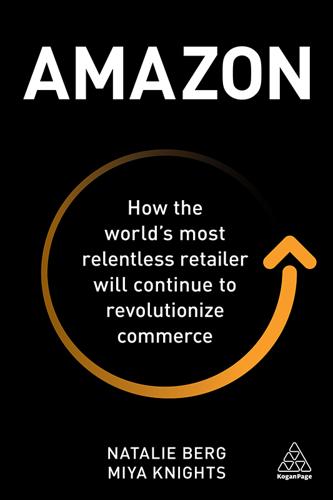
Amazon: How the World’s Most Relentless Retailer Will Continue to Revolutionize Commerce
by
Natalie Berg
and
Miya Knights
Published 28 Jan 2019
Available from: https://www.bizjournals.com/bizwomen/news/latest-news/2018/01/no-relief-for-retail-in-2018.html [Last accessed 29/3/2018]. 3 Thomas, Lauren (2017) Bankruptcies will continue to rock retail in 2018, CNBC, 13 December. Available from: https://www.cnbc.com/2017/12/13/bankruptcies-will-continue-to-rock-retail-in-2018-watch-these-trends.html [Last accessed 29/3/2018]. 4 Isidore, Chris (2017) Malls are doomed: 25% will be gone in 5 years, CNN, 2 June. Available from: http://money.cnn.com/2017/06/02/news/economy/doomed-malls/index.html [Last accessed 29/3/2018]. 5 Armstrong, Ashley (2018) What will 2018 have in store for the retail sector?, Telegraph, 2 January. Available from: https://www.telegraph.co.uk/business/2018/01/02/will-2018-have-store-retail-sector/ [Last accessed 29/3/2018]. 6 Marinova, Polina (2017) This is only the beginning for China’s explosive e-commerce growth, Fortune, 5 December.
…
Available from: https://www.theatlantic.com/business/archive/2017/04/retail-meltdown-of-2017/522384/ [Last accessed 29/3/2018]. 28 Fung Global Retail & Technology (2016) ‘Deep Dive: The Mall Is Not Dead: Part 1’ [Online] https://www.fungglobalretailtech.com/wp-content/uploads/2016/11/Mall-Is-Not-Dead-Part-1-November-15-2016.pdf [Last accessed 29.3.18] 29 Isidore, Chris (2017) Malls are doomed: 25% will be gone in 5 years, CNN, 2 June. Available from: http://money.cnn.com/2017/06/02/news/economy/doomed-malls/index.html [Last accessed 29/3/2018]. 30 30 Walmart 1997 Annual Report. Available from: http://stock.walmart.com/investors/financial-information/annual-reports-and-proxies/default.aspx [Last accessed 28/6/2018]. 31 Berg, Natalie and Bryan Roberts (2012) Walmart: Key insights and practical lessons from the world’s largest retailer, Kogan Page, London. 32 Walmart 10-Ks, author research. 33 Office for National Statistics (2018) Retail sales, Great Britain: February 2018.
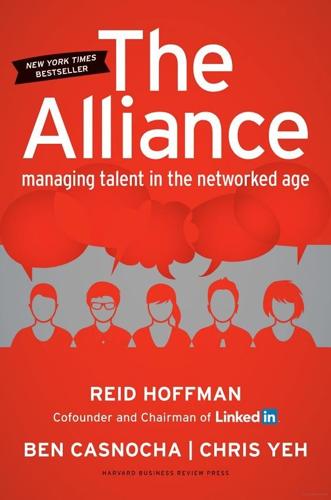
The Alliance: Managing Talent in the Networked Age
by
Reid Hoffman
,
Ben Casnocha
and
Chris Yeh
Published 15 Jan 2014
In the old economy—the stable one—efficiency was the cardinal virtue. Employers placed employees on fixed tracks so that they could develop ever-higher degrees of specialization. But when markets change, specialization often shifts from asset to liability, as in the case of the proverbial buggy-whip manufacturer. In the new economy of fierce competition and rapid technological change, the markets are constantly shifting. Today, entrepreneurial thinking and doing are the most important capabilities companies need from their employees. As the competitive pace increases, it becomes more and more critical. Consider the effect of just a few entrepreneurial employees at two giants of innovation, Pixar and Amazon.

The Trouble With Brunch: Work, Class and the Pursuit of Leisure
by
Shawn Micallef
Published 10 Jun 2014
If my hometown’s culture allowed for strong social links and mixing across perceived divides between union and management, between white collar and blue, why can’t this happen elsewhere? Our work lives no longer have the obvious commonalities that encourage people to come together and improve their lot, as large groups of people doing industrial jobs no longer exist. The old ways of organizing are incredibly difficult (and they were never easy) when applied to the new economy. There is resistance to this kind of new class consciousness because it doesn’t fit into the established paradigms. More problematically, it hinges on consumerism with a particular kind of connoisseurship that few participants want to admit is actually consumerism but everybody is buying anyway.
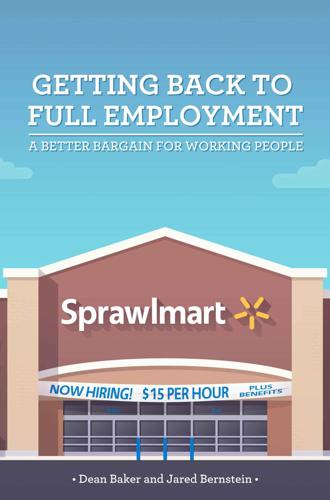
Getting Back to Full Employment: A Better Bargain for Working People
by
Dean Baker
and
Jared Bernstein
Published 14 Nov 2013
If this result accurately reflects the actual relationship between inflation and unemployment, then the economy already had the potential to have a lower unemployment rate without accelerating inflation by the early 1990s, several years before the productivity pickup in the middle of the decade and other changes that were at the time dubbed the “new economy.” If such was the case, then the Fed needlessly kept the unemployment rate high with its hesitance to lower interest rates following the 1990-91 recession and then by raising rates in 1993-94 to keep the unemployment rate from falling below the level it perceived as the NAIRU. [19] In response to the downturn, the Fed has also set unemployment targets for the timing of reversing its expansionary policies.
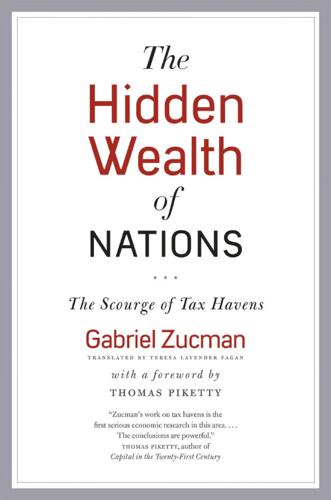
The Hidden Wealth of Nations: The Scourge of Tax Havens
by
Gabriel Zucman
,
Teresa Lavender Fagan
and
Thomas Piketty
Published 21 Sep 2015
Firms can sell themselves bananas or shovels at exorbitant prices—we’ve seen this—but the risk is high for companies that engage in such obvious fraud, as they can find themselves caught by the tax authorities. There is nothing less risky, by contrast, than manipulating the prices of patents, logos, labels, or algorithms, because the value of these assets is intrinsically difficult to establish. This is why the giants of tax avoidance are companies of the new economy: Google, Apple, and Microsoft. Taxing companies wanes to the same extent as immaterial capital gains in importance. Tax Avoidance by US Firms: $130 Billion a Year Quantifying the government revenue losses caused by profit shifting to lower-tax jurisdictions is not straightforward and, as with personal wealth, involves some margin of error.
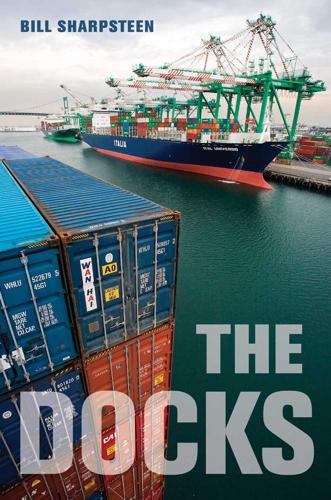
The Docks
by
Bill Sharpsteen
Published 5 Jan 2011
The Concise Encyclopedia of Economics. www.econlib.org/library/Enc1/TruckingDeregulation.html (accessed May 9, 2007). Nevarez, Ernie. Interview by author. May 24, 2006. Patel, Sejal. From Clean to Clunker: The Economics of Emissions Control. A report jointly published by Los Angeles Alliance for a New Economy (LAANE), Sierra Club, BlueGreen Alliance, and the International Brotherhood of TeamÂ�sters. April 15, 2010. www.cleanandsafeports.org/fileadmin/files_editor/ FromCleantoClunker.pdf (accessed July 22, 2010). PayScale. “Hourly Rate Snapshot for Truck Driver, Heavy/Tractor-Trailer Jobs.” www.payscale.com/research/US/Job=Truck_Driver%2c_Heavy_% 2f_Tractor-Trailer/Hourly_Rate (accessed July 1, 2010).
…
“The Ports’ Short-Haul Truckers Endure Long Hours, High Costs.” Los Angeles Times, September 21, 2005. White, Ronald D., and Louis Sahagun. “Risk Seen in Port Plan.” Los Angeles Times, March 8, 2008. Zerolnick, Jon. The Road to Shared Prosperity: The Regional Economic Benefits of the San Pedro Bay Ports’ Clean Trucks Program. Los Angeles Alliance for a New Economy, Coalition for Clean and Safe Ports. August 2007. www.Â�community benefits.org/downloads/Road_to_Shared_Prosperity.pdf (accessed July 22, 2010). Author observations riding with Anthony Branch. April 29, 2009. 11. The Hold Men Almeida, Art. Interviews by author. March 15, 2004; May 6, 2004; November 2, 2004.

Utopia Is Creepy: And Other Provocations
by
Nicholas Carr
Published 5 Sep 2016
With the benefit of hindsight, we can see that this was when the hippies took over the country, and when the true cultural war over Progress was lost.” The original inspiration for such grousing—about progress, not hippies—is a Northwestern University economist named Robert J. Gordon, whose 2000 paper “Does the ‘New Economy’ Measure Up to the Great Inventions of the Past?” included a damning comparison of the flood of inventions that occurred a century ago with the seeming trickle that we see today. Consider just a few of the products invented in the ten years between 1876 and 1886: internal combustion engine, electric lightbulb, electric transformer, steam turbine, electric railroad, automobile, telephone, movie camera, phonograph, linotype, cash register, vaccine, reinforced concrete, flush toilet.
…
,” 121 Cai Lun, 286–87, 291 candlelight, 229–30 capitalism, 83–85 Case against Perfection, The (Sandel), 340 Case of Emily V., The (Oatley), 248 cassette tape, 121, 124 CCTV cameras, 52 CDs (compact disks), 42, 123–24, 293 cell phones, 52, 80, 233 censorship: in China, 283 free flow of information vs., 191 Centers for Disease Control and Prevention, 304 centrifugal force, 67 centripetal force, 66 Chambers, John, 134 Chen, Steve, 29 Chief Officers of State Library Agencies, 272 Chin, Denny, 269, 272 China, censored searches in, 283 Christian, Rebecca, 80 citation, allusion vs., 87–88 Clash, 63–64 classical music, 43–44 Claude Glass, 131–32 Clinton, Bill, 315 Clinton, Hillary, 314, 315, 317–18 clocks, changes wrought by, 235–36 clones, virtual, 26–27 cloud computing programs, 264, 283 cloud storage, 163, 168, 185, 225 physical archives vs., 326 CNET, 55 Coachella festival, 126 Coca-Cola, marketing of, 53–54 cocaine, 262 cochlear implants, 332 cognitive bias, 321 cognitive control, 96 cognitive function: effect of internet on, 199–200, 231–42 effect of video games on, 93–97 “flow” state in, 297 memory and, 98–99 neuroengineering of, 332 reading and, 248–52 cognitive surplus, 59–60 avoidance of, 74 Coleridge, Samuel Taylor, 251 Collaborative Consumption, 84–85, 148 Columbia Records, 43–44 commercialism: anticonsumerism and, 83–85 culture transformed by, xvii–xxii, 3, 9, 150, 177, 198, 214–15 in innovation, 172 of libraries, 270–71 media as tool of, 106, 213, 240, 244–45, 257–58, 320 in virtuality, 25–27, 72 commodes, high-tech, 23–24 communication: between computers, 167 computer vs. human, 152–54 evolution of, 53 loneliness and, 159 mass, 67–68 speed of, 223, 320 thought-sharing in, 214–15 Communist Manifesto (Marx and Engles), 308 “Complete Control,” 63–64 Computer Power and Human Reason (Weizenbaum), 236 computers: author’s early involvement with, xix–xi benefits and limitations of, 322–23 in education, 134 effect on paper consumption of, 287–88 evolution of, xix–x, 165 future gothic scenarios for, 112–15 human hybridization with, 37–38, 332 human partnership with, 321–24 as impediment to knowledge perception, 303–4 minds uploaded to, 69 revivification through, 69–70 written word vs., 325–28 concentration, diffusion of, 231–33, 236–37 Confession d’un Enfant du Siècle, La (Musset), xxiii Congress, U.S., 275–77 consumer choice, 44–45 Consumer Electronics Show (CES), 32, 56 consumerism: counterculture co-opted by, 72 distraction and, 65 media as tool of, 106, 132, 219 consumption, self-realization vs., 64–65 contemplation, 241, 246 through work, 298–99 conversation, computer streaming of, 152–54 CopyBot controversy, 25–27 copyright laws: history of, 275–76 in online library controversies, 269–71, 275–78, 283 in virtual world, 25–27 Corporate Communalists, 83 corporate control, through self-tracking, 163–65 correspondence courses, 133–34 cosmetic surgery, 331, 334 Costeja González, Mario, 190–92, 194 Coupland, Douglas, 102, 103 Courant, Paul, 270, 272 courtesy: decline of, 157 inefficiency of, 152–54 Cowen, Tyler, 116 Crawford, Matthew, 265 creativity, 49, 64 before the virtual world, 60–61 economics of, 8–9 in music, 44–45, 294 stifled by iPad, 76–78 see also innovation “crisis of control,” 188–89 CRISPR, 334–35 crowdsourcing, 37 Cruz, Ted, 314 cultural memory, archiving of, 325–28 cutouts (remaindered record albums), 122 CyberLover, 55 cybernetics, 37–38, 214 cyberpunk, 113 cyberspace, xvii, 127 early idealism of, 85 “Cyborg Manifesto” (Haraway), 168–69 cyborgs, 131 cynicism, 158 Daedalus, 336, 340 Darnton, Robert, 270–75, 278 DARPA, 332 Dash Express, 56 data-mining, 186, 212, 255–59 data-protection agencies, 190–91 Data Protection Directive, 191, 193 Davidson, Cathy, 94 Davies, Alex, 195 Davies, William, 214–15 Dean, Jeff, 137 death, as hardware failure, 115 Declaration of Independence, 278, 325 “Declaration of the Independence of Cyberspace” (Barlow), 85 deep reading, 241 deletionists, 18–20, 58 democratization, xvi, xviii, 28, 86, 89, 115, 208, 271 internet perceived as tool for, 319–20 depression, 304 Derry, N.H., 296–97 Descartes, René, 301, 330 Dewey, John, 304 “digital dualism,” 129 “digital lifestyle,” 32–33 digital memory, 327 digital preservation, 325–28 Digital Public Library of America (DPLA), 268, 271–78 “Digital Republic of Letters,” 271 discovery, adventure of, 13–15 Disenchanted Night (Schivelbusch), 229 displaced agency, 265 distraction, xix, 14, 316 in consumerism, 65 video games and, 19 diversity, 65 DNA, 69–70, 334–35 Doctorow, Cory, 76–77 “Does the ‘New Economy’ Measure Up to the Great Inventions of the Past?” (Gordon), 116–17 Doors, 126 dopamine, 332 dot-com crash, xvi Doudna, Jennifer, 335 driving, 195–98 Droit-Volet, Sylvie, 203–4 drones, 306 Drucker, Peter, 182 drugs, 119, 304, 331 psychoactive, 333–34 video games and, 262 virtual, 39–40 Drum, Kevin, 306 Dylan, Bob, 121, 294 dystopias, 108 ears, development and evolution of, 235 Earthlink, 280 “Easter, 1916” (Yeats), 88 Easton, David, 211 “E-book Reading Jumps; Print Book Reading Declines,” 140 ebooks, e-reader devices, 74, 122–23, 140–43, 225, 257, 274, 288, 290 reading experience transformed by, 252–54 economic gap, xix, 30–31, 176–77, 179 economy, effect of technology on, 174–77, 179–80 Edison, Thomas, xvii, 134, 229, 287 education, technological transformation of, 133–35 Edwards, Douglas, 280–82, 285 efficiency: in computer communication, 152–54 maximizing of, 84–85, 148, 164–65, 195–97, 209, 214, 234, 237–39, 303, 305 of robots, 321 Eiffel Tower, 341 e-learning fad, 134 election campaigns: of 2008, 314 of 2016, 314–20 transformed by technology, 314–20 Electric Kool-Aid Acid Test, The (Wolfe), 170 Eliot, T.

The Inevitable: Understanding the 12 Technological Forces That Will Shape Our Future
by
Kevin Kelly
Published 6 Jun 2016
ALSO BY KEVIN KELLY Out of Control: The New Biology of Machines, Social Systems, and the Economic World New Rules for the New Economy: 10 Radical Strategies for a Connected World Asia Grace What Technology Wants Cool Tools: A Catalog of Possibilities VIKING An imprint of Penguin Random House LLC 375 Hudson Street New York, New York 10014 penguin.com Copyright © 2016 by Kevin Kelly Penguin supports copyright. Copyright fuels creativity, encourages diverse voices, promotes free speech, and creates a vibrant culture. Thank you for buying an authorized edition of this book and for complying with copyright laws by not reproducing, scanning, or distributing any part of it in any form without permission.
…
Today, most major software producers have minimal help desks; their most enthusiastic customers advise and assist other customers on the company’s support forum web pages, serving as high-quality customer support for new buyers. And in the greatest leverage of the common user, Google turns traffic and link patterns generated by 90 billion searches a month into the organizing intelligence for a new economy. This bottom-up overturning was also not in anyone’s 20-year vision. No web phenomenon has been more confounding than the infinite rabbit hole of YouTube and Facebook videos. Everything media experts knew about audiences—and they knew a lot—promoted the belief that audiences would never get off their butts and start making their own entertainment.
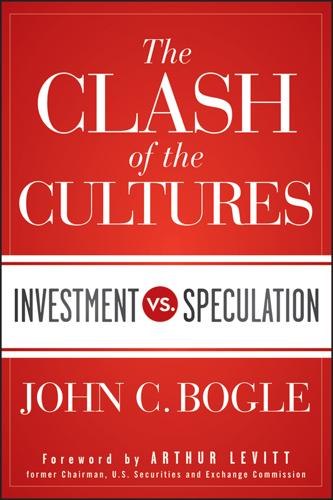
The Clash of the Cultures
by
John C. Bogle
Published 30 Jun 2012
In the next marketing bubble—the rise of the Information Age, beginning in the late 1990s—funds focusing on Internet and high-tech stocks led the way. The fund industry responded just as one would expect a marketing business to respond. We created an astonishing total of 3,800(!) new equity funds, mostly aggressive growth funds focused on technology and the so-called new economy. Although some 1,200 funds went out of business during this period, the equity fund population still more than doubled, from 2,100 funds at the start of 1996 to 4,700 in 2001. After each wave of creation, of course, investment reality quickly intruded on speculative illusion. Many of the new creations failed.
…
The highest stewardship is reflected by managers with the strongest discipline against pandering to the public taste for the hottest new investment ideas. Those managers who limit their offerings to what they do well—maybe a single fund or even a half-dozen—reflect the most stewardship of all. Managers who make what will sell—for example, jumping on the “New Economy” bandwagon of the 1990s—lure hundreds of billions of investor dollars into them, before the bubble inevitably bursts and those funds go up in smoke. No stewardship points for them; three points for managers who sell what they make. Standard 5: Advertising When it comes to advertising, the stewardship-salesmanship orientation is patently obvious.
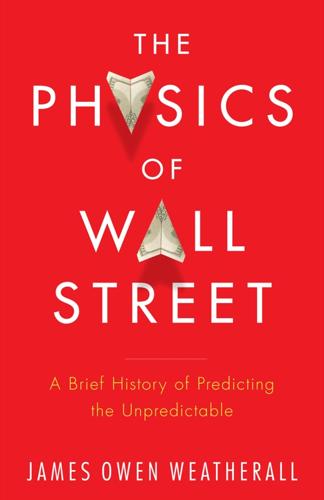
The Physics of Wall Street: A Brief History of Predicting the Unpredictable
by
James Owen Weatherall
Published 2 Jan 2013
The technology-based NASDAQ index increased by almost a factor of three between 1998 and early 2000. Analysts began talking about a so-called new economy consisting of computer firms and companies whose business strategies depended entirely on the Internet. For these companies, none of the old rules applied. It didn’t matter if a firm was making any money, for instance — earnings could be negative, but the company could still be considered valuable if there was a wide expectation of success in the future. In many ways, the boom echoed earlier periods of speculation: in the 1920s, for instance, investors also spoke of a “new economy,” though then the hot tech companies were AT&T and General Electric.

Rise of the Robots: Technology and the Threat of a Jobless Future
by
Martin Ford
Published 4 May 2015
Much of the conventional advice offered to workers and to students who are preparing to enter the workforce is likely to be ineffective. The unfortunate reality is that a great many people will do everything right—at least in terms of pursuing higher education and acquiring skills—and yet will still fail to find a solid foothold in the new economy. Beyond the potentially devastating impact of long-term unemployment and underemployment on individual lives and on the fabric of society, there will also be a significant economic price. The virtuous feedback loop between productivity, rising wages, and increasing consumer spending will collapse.
…
The presence of that solid middle is one of the primary factors that differentiates an advanced nation from an impoverished one—and its erosion is becoming increasingly evident, especially in the United States. Most techno-optimists would likely object to this characterization. They tend to view information technology as universally empowering. It is perhaps not coincidental that they also tend to have been very successful in the new economy. The most prominent digital optimists typically live at the extreme left of the long tail—or, even better, they’ve perhaps founded a company that owns the entire distribution. In a PBS television special that aired in 2012, inventor and futurist Ray Kurzweil was asked about the possibility of a “digital divide”—meaning that only a small percentage of the population will be able to thrive in the new information economy.

The Permanent Portfolio
by
Craig Rowland
and
J. M. Lawson
Published 27 Aug 2012
But it was gold's volatility in the 1970s that made this smart move possible. Those big price moves upward allowed an opportunity to take profits and re-direct them to lower-priced assets. Now the mid- to late 1990s roll around. Stocks are booming. One hot new .com IPO after another was sweeping the nation. The book Dow 36,000 was being published for the “New Economy.” In this New Economy, profits didn't matter as much as how many people saw your sock puppet commercial during the Super Bowl. Well, during this time you would have been selling down your booming (and volatile) stocks to 25 percent and using that money to buy gold. Gold was an asset that few in his or her right mind wanted at the time.
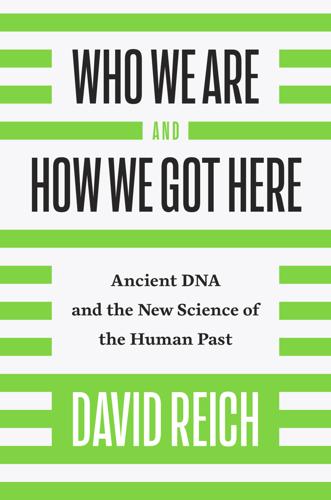
Who We Are and How We Got Here: Ancient DNA and the New Science of the Human Past
by
David Reich
Published 22 Mar 2018
The farmers in present-day Israel and Jordan expanded into East Africa, and their genetic legacy is greatest in present-day Ethiopia. Farmers related to those in present-day Iran expanded into India as well as the steppe north of the Black and Caspian seas. They mixed with local populations there and established new economies based on herding that allowed the agricultural revolution to spread into parts of the world inhospitable to domesticated crops. The different food-producing populations also mixed with one another, a process that was accelerated by technological developments in the Bronze Age after around five thousand years ago.
…
In East Asians, Europeans, Near Easterners, and North Africans, the authors found many Star Clusters with common male ancestors living roughly around five thousand years ago.18 The time around five thousand years ago coincides with the period in Eurasia that the archaeologist Andrew Sherratt called the “Secondary Products Revolution,” in which people began to find many uses for domesticated animals beyond meat production, including employing them to pull carts and plows and to produce dairy products and clothing such as wool.19 This was also around the time of the onset of the Bronze Age, a period of greatly increased human mobility and wealth accumulation, facilitated by the domestication of the horse, the invention of the wheel and wheeled vehicles, and the accumulation of rare metals like copper and tin, which are the ingredients of bronze and had to be imported from hundreds or even thousands of kilometers away. The Y-chromosome patterns reveal that this was also a time of greatly increased inequality, a genetic reflection of the unprecedented concentration of power in tiny fractions of the population that began to be possible during this time due to the new economy. Powerful males in this period left an extraordinary impact on the populations that followed them—more than in any previous period—with some bequeathing DNA to more descendants today than Genghis Khan. From ancient DNA combined with archaeology, we are beginning to build a picture of what this inequality might have meant.

Freedom
by
Daniel Suarez
Published 17 Dec 2009
You should come by and see it." "I'd like that." "Jenna's rising fast in the Greeley holon. She's leading two projects now--a biodiversity initiative and an education program." "You must be proud." "I'm proud of both my kids. Life is starting to make sense again for us. I just hope we can get other folks on the new economy in time." Fossen turned the old truck onto a county road and soon they were heading out into a veritable ocean of green corn plants stretching unbroken to the horizon. This road was even louder in the old truck, so Ross just watched the landscape roll by. They occasionally passed through small, downscale towns.
…
He was annoyingly vague." Ross pondered the question. "This Thread has been leading you to events--not places? Correct?" "Yeah. For the last seven months Price and I have found ourselves at the center of just about every major change now under way. I've seen the rise of the new power infrastructure, the new economy, the new fMRI legal system--you name it. That's how my reputation grew so fast. We just always seemed to be in the right place at the right time." "Well, then we do know one thing." "What's that?" "Something big is about to happen in Greeley." Chapter 28: // Sky Ranch Natalie Philips shared the Cessna Citation III business jet with only one other passenger as it flew high above . . . well, somewhere.

Rage Inside the Machine: The Prejudice of Algorithms, and How to Stop the Internet Making Bigots of Us All
by
Robert Elliott Smith
Published 26 Jun 2019
It is no coincidence that the invention and expansion of universal education took place during the rapidly industrialising eighteenth and nineteenth centuries. The new industrial economy needed workers with a certain level of practical and intellectual skill, and they had to be trained in sufficient numbers if the new economy was to thrive. As with our ideas of intelligence, some of our most dearly cherished economic beliefs are also shaped by the theories, philosophies and cultural norms of that era. And like IQ testing, these ideas contain a strong emphasis on metrics, simplification, mathematical modelling and an economic growth model predicated on Spencer’s ‘survival of the fittest’ doctrine.
…
The other upshot of the Babbage Effect was the requirement of a more educated workforce to design, ‘program’ and operate industrial machines in order to turn out unprecedented volumes of products, which would then need more consumers. This new class of worker could perform roles at both ends of the machine, and create an entirely new economy. Hence the late-nineteenth and twentieth-century drive towards mandatory education throughout the Western world as governments realized that a more educated populace would result in a more productive economy, which in turn would generate greater prosperity and consumption, thus driving an apparently virtuous, work-earn-and-consume, tax-educate-and-work economic cycle.
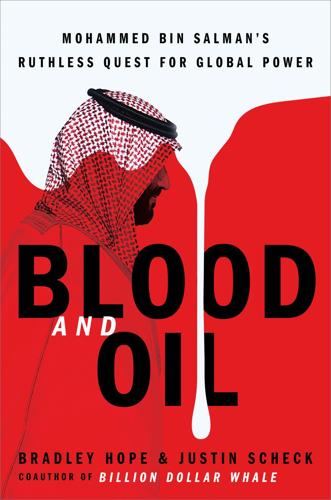
Blood and Oil: Mohammed Bin Salman's Ruthless Quest for Global Power
by
Bradley Hope
and
Justin Scheck
Published 14 Sep 2020
For his close family, money gave Salman the ability to spread largesse among potentially adversarial tribes and give payments to upstart princes who might want more political strength but would settle for a big payout. On a higher level, control over the state finance arms allowed Mohammed to pick winners and losers in his new economy. He could have kept giving construction jobs to Binladin and Oger. Instead, during that time he picked smaller construction firms whose owners were more pliant and less entrenched with rival Al Saud factions. But most important was the oil money. It propped up modern Saudi Arabia, and the question of how those oil fields would be managed in the future would determine the kingdom’s direction.
…
Olympia competition into the Middle East, and after meeting Mohammed in 2017, he wanted to seal a deal in 2018. The timeframe overlapped with the fawning publication promoting Mohammed’s vision for what the magazine called the “magic kingdom.” In the middle of it all, with an article about Saudi Arabia’s new economy written under his byline and a photo of himself standing stiffly next to Trump, was a young French banker named Kacy Grine. He was another unlikely person drawn into the prince’s orbit, the kind of international figure who, in the world of Saudi money, can go from obscurity to high-profile businessman with a single princely handshake.
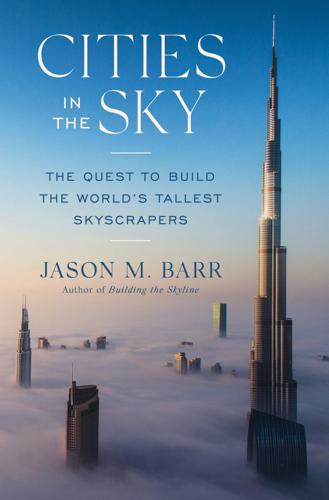
Cities in the Sky: The Quest to Build the World's Tallest Skyscrapers
by
Jason M. Barr
Published 13 May 2024
In the 1980s, Shanghai officials identified Pudong—which translates to “the East Bank of the Huangpu River”—to jump-start the city’s fortunes. The process formally began in 1990 when the State Council green-lighted a plan designating the Pudong New Area as an SEZ, which Deng Xiaoping described as the “Head of the Dragon,” the face—and teeth—of the new economy. Local officials, led by Mayor Zhu Rongji, were eager to take business away from Hong Kong—that “frustratingly free city.” The Pudong strategy had three elements. The first was to pour massive quantities of yuan into the construction of new infrastructure, from subways and trains to bridges and roads, to airports, to water and sewage systems.
…
Just as important has been the rising importance of those with so-called noncognitive or “soft” skills, such as “grit,” and the ability to make interpersonal connections. In other words, the workplace increasingly values the ability of individuals to cooperate and collectively problem-solve, because the new economy requires teamwork to a greater degree than ever before. In a fascinating study, one set of economists followed over 2.8 million men in Sweden between the ages of thirty-eight and forty-two from 1992 to 2013 who were previously drafted into the army (Sweden has mandatory military service). Each recruit had to sit for a psychological evaluation that, in part, measured their noncognitive skills such as social maturity, focus, perseverance, motivation, and emotional stability.

The Price of Time: The Real Story of Interest
by
Edward Chancellor
Published 15 Aug 2022
Digital businesses, such as Facebook and Google, had established dominant global franchises with relatively little invested capital and small workforces. In his book The Zero Marginal Cost Society (2014), the social theorist Jeremy Rifkin heralded the passing of traditional capitalism.16 If the Old Economy was marked by scarcity and declining marginal returns, Rikfin argued that the New Economy was characterized by zero marginal costs, increasing returns to scale and capital-lite ‘sharing’ apps (such as Uber, Lyft, Airbnb, etc.). The demand for capital and interest rates, he said, were set to fall in this ‘economy of abundance’. There was some evidence to support Rifkin’s claims. The balance sheets of US companies showed they were using fewer fixed assets (factories, plant, equipment, etc.) and reporting more ‘intangibles’ – namely, assets derived from patents, intellectual property and merger premiums.
…
To find a specific word or phrase from the index, please use the search feature of your ebook reader. 3G Capital, 161, 169 AEG (German company), 159 African American households, 211 AIG (insurance giant), 175, 221 Alberti, Leon Battista, 21 Alexander the Great, 12 Alibaba, 283 Altman, Edward, 223 Amazon (company), 203 AmeriCredit Corp, 167* Amsterdam, 35–6, 39, 47 Anbang Insurance, 285–6 Anderson, Benjamin, 87, 88, 90, 91, 92 Anglo-Dutch Wars, 33 annuities, 26, 69, 195, 197, 229 Antiphanes (Athenian playwright), 18 Antiphon (Greek orator), 20 Apple, 54, 149, 166, 176, 241 Aquinas, Thomas, Summa Theologica, 19, 25 Arab Spring (2011), xxiii, 255–6 Argentina, 79–80, 79*, 242–3, 263 aristocracy/landed classes: in Ancien Régime France, 49, 51; in ancient Mesopotamia, 200; and price of land, 34–5, 39, 42, 44 Aristotle, 9, 18, 19, 20, 28, 40 Arnd, Karl, 4 art market, 180, 208–9, 271 Artemis Capital, 231 Asian economic development model, 267, 278; Asian crisis, 114, 252, 278 asset price bubbles: before 2008 crisis, xxiii, 32, 44, 111–19, 204; and Arab Spring, 255–6; bond market in 2010s, 226; and Borio’s financial cycle, 132–3, 134, 135; bubble economy term, 184–7; Cantillon’s view, 58, 60–61; Chinese real-estate bubble, xxiii, 271, 272–4, 282, 288, 289; in commodities (from 2010), 173–4, 255–6, 257; construction booms, 62–3, 69, 74, 90, 112, 144, 148, 258–60, 273–9; crypto bubbles, 177–9; Dotcom bubble, 111–12, 136–7, 176, 204; Everything Bubble in post-crisis decade, 44, 138–9, 173–80, 180, 181–3, 185, 193–5, 206–10, 215, 306–9; expansive monetary policy as common feature, xxiii, 116*, 123, 135, 172–87, 180, 220; idea of creating a bubble to deal with, 113*; Japanese economy in 1980s, xxiii, 105–8, 145, 182, 184, 271, 273, 279, 285–6; misallocation of capital during, 43, 114, 148–50, 266–81, 289; relation to real economy, 182–3, 185, 237; stock market bubble in 1920s USA, xxiii, 87–91, 90*, 92–4, 96–8, 98*, 112, 203; at times of low inflation, xxiii, 134, 135; unstable bubbles in China, 270, 271–4, 282, 288; vast investment boom in China, xxiii, 128, 267–81, 280*, 282–9; and wealth illusion, 193–5 see also Mississippi bubble asset-backed securities, 175, 225, 226–7 Assyrian empire, 12 AT&T, 167, 168 Augsburg, 202 Augustus, Roman Emperor, 12, 15 Australia, 175, 192, 239 Austria, 93, 93*, 97, 261; Wörgl’s currency experiment, 243, 294 Austrian economists, 32, 94–6, 100, 108 see also Hayek, Friedrich; Schumpeter, Joseph Ayr Bank, collapse of (1772), 63 Azerbaijan, 262 Babylonia, 3–4, 5–8, 9–12, 13, 13, 14–15 Bacon, Francis (artist), 208 Bacon, Sir Francis, ‘On Usury’ (1612), 34, 35, 40, 43, 44 Bagehot, Walter, 62, 63–4, 66–8, 70–71, 72, 74, 149, 155, 251; Bagehot rule, xxiii, 74–6, 80; and dangers of foreign lending, 66, 77, 78; on foreign lending craze, 78; warnings over easy money, 64, 66, 67, 68, 69, 72, 78, 80–81, 220, 233; Lombard Street (1873), 69, 74, 75, 76, 81 Bain Capital, 163 Balding, Christopher, 277* Bank for International Settlements (BIS), 11, 101, 107, 113–14, 131–4, 135–9, 144, 153, 168, 261 Bank of Amsterdam (Wisselbank), 47, 68 Bank of England: during 1920s, 82–3, 85–6, 92, 93; acquires foreign corporate securities (2016), 241†; Bagehot on role of, xxiii, 64, 66, 74, 75–6; Bank Charter Act (1844), 75–6, 76*; ‘corset’ in Bretton Woods era, 291; ‘credit easing’ policy, 242; dominion over credit markets, 292–3, 293*; and financialization, 168; founding of (1694), 47; and Gold Standard, 85, 251; inflation targeting, 119, 121, 241; as lender of last resort, 66, 74–6, 80; nationalization (1946), 172; NICE (non-inflationary consistent expansion), 112; in nineteenth-century, 42, 65, 66, 70, 71–2, 75–6, 79, 80; policies in post-crisis decade, 151, 153, 174, 233, 235, 241, 293; and regulation, 232, 233; and secular stagnation narratives, 126, 205–6 Bank of France, 82, 83, 92, 93 Bank of Japan (BOJ), 105–8, 119, 122, 146, 192, 224, 241, 242, 244–5, 271, 294 Bank of Spain, 117 banking: 1825 crisis, 64–7, 75; back-alley banking in China, 281–3; bankers as unpopular, 18; Casa di San Giorgio, Genoa, 47–8; development in Middle Ages, 22–4, 35; expansion in Britain during Napoleonic Wars, 69–70; and fountain-pen money, xxiv, 42, 269, 312; Law establishes General Bank (1716), 49–50; merchant banks in ancient world, 7, 8; National Banking System in USA, 157; ‘net interest margin’ eroded by ultra-low rates, 136; pre-twentieth-century panics/crises, 63, 64–8, 69, 70, 72–6, 79–81; repo market, 236*, 239, 245; UK and US economies shift towards, 167–8; vast expansion in China, 265–6; and zombification, 147, 148 see also financial sector Baoding Tianwei Group, 280 Baoshang Bank, 285 Baradaran, Mehrsa, 215* Barbon, Nicholas, 15 Barcelona, 23 Baring, Alexander, 65 Baring, Sir Francis, 74–5, 76 Baring Brothers, 74, 76, 80 Basel Committee, 232 basketball, shot clock, 141 Bastiat, Frédéric, xvii, xviii–xx, xxi, xxii, xxv, 9, 188–9, 215, 306 Batista, Eike, 257, 258 Bavarian Soviet Republic, 243 Bayer (German firm), 225 Bear Stearns, 175 behavioural research, 29 Belgium, 225 Benda, Julien, La Trahison des Clercs (1927), 297 Bentham, Jeremy, 30, 189 Berkshire Hathaway, 161 Berlusconi, Silvio, 293 Bernanke, Ben: actions during 2008 crisis, 76, 253–4; on causes of 2008 crisis, 114, 115–16, 118, 128–9; and easy money before 2008 crisis, 111–12, 113, 115–17, 115†, 118–19; evades consequences for 2008 crisis, 119; and inflation targeting, 119, 119*, 241; joins Federal Reserve (2002), 111–12; and legacy of John Law, 61; on monetary policy, 98, 98*, 115, 115*, 131, 155, 207, 230, 238; policy of dealing with aftermath of bubbles, 111–12, 114; and savings glut hypothesis, 128–9, 191; and taper tantrum (June 2013), 239, 256–7, 259, 263; and ultra-easy money after 2008 crisis, 124, 131, 133, 137–8, 153, 155, 181–3, 207, 215, 230, 238–40, 243–4, 262; view of Great Depression, 98, 98*, 99, 100, 101 Bernard, Samuel, 55* Bernardino of Siena, 25 Bernstein, Richard, 306 Bernstein, William, 128 Beyond Meat, 177 Bezos, Jeff, 203 bills of exchange, 22, 23, 24, 47, 50, 65‡, 71, 130 Bitcoin, 177–9, 307–8 BlackRock, 209, 227, 246 Blackstone Sir William, Commentaries on the Laws of England (1765), 17 BNP Paribas, 253† Bo Xilai, 288 Böhm-Bawerk, Eugen von, xxiii–xxiv, xxv, xxvi*, 13, 16, 19*, 29, 30, 31, 95, 246 Borio, Claudio, 132–4, 135–9, 153, 232–3, 240, 262–3, 269, 311 Borman, Frank, 143 bottomry loans, 6, 26 Bouazizi, Mohamed, 255 Bourbon, Duke of, 55 Brandeis, Justice Louis, 156, 158, 159, 202 Branson, Richard, 213 Braudel, Fernand, 21 Brazil, xxiii, 225, 254–5, 257–8, 291 Bretton Woods system, 133, 251, 290–91, 302 Bridgewater Associates, 229 Britain: 1825 banking crisis, 64–7, 75; building boom in mid-eighteenth-century, 62–3; calamities of 1660s, 33; decision to leave EU, 187, 241, 262; default on sovereign debt (1672), 33, 38; early twentieth century monopolies in, 159; economy in Bretton Woods era, 291, 302*; financial repression today, 292–3; foreign lending manias (1860s-80s), 77–8, 79–80; housing affordability crisis in, 212–13; loss of manufacturing jobs to China, 261*; low economic vitality in post-crisis decade, 124, 150–51, 153, 192; post-1571 debates on excessively high rates, 34–44; Productive Finance Working Group, 293, 293*; railway mania of 1840s, 70–72, 73; return to the Gold Standard (1920s), 43, 82, 85, 86; reversal of global capital flows (late-1920s), 93; Revolutionary/Napoleonic Wars, 41–2, 69–70; shift from manufacturing towards services, 167–8; South Sea Bubble (1720), 69; trade cycle from early eighteenth century, 62–4; usury in, 24, 26, 27, 34, 40, 42, 65‡, 65; zombification in, 146 see also Bank of England British Association of Recovery Professionals, 146 British Home Stores (BHS), 196–7 Brown, Brendan, 218 Brown, Gordon, 112 Brunnermeier, Markus, 236 Bryan, William Jennings, 99 bubble economy term, 184–7 Buchan, James, 54, 56*, 59 Buenos Aires Water Supply and Drainage Company, 80 Buffett, Warren, 126, 161, 225, 307, 308, 308* Bullard, James, 239 Burry, Michael, 198 buyout firms, 160–63, 183†, 204, 207, 222, 223, 237 Byzantium, 25 Calvin, John, 26 Campbell, Donald, 120–21 Canada, 119, 174–5, 192, 196*, 241 Canterbury, Justin Welby, Archbishop of, 17, 201 Cantillon, Richard, 58, 60–61, 60* capital flows, global: in 1920s, 82, 91, 261; Bretton Woods capital controls, 291; capital controls return after 2008, 262, 291; ‘commodity super-cycle (from 2010), 173–4, 255–6, 257; cross-border lending in Eurozone, 144–5; and Dollar Standard, 251–2, 253, 261, 262–3; foreign lending manias (1860s-80s), 77–8, 79–80, 79†; ‘global banking glut’ notion, 132, 252–3; global credit bubble in early 2000s, 252–3, 261; international carry trade, 137, 237–8, 252, 253–4, 256–7, 258; ‘persistent expansion bias’ of monetary system, 262; post-crisis flows into emerging markets, xxiii, 253–9, 262–3; protectionism of 1930s, 261–2; recirculation of in run-up to 2008 crisis, 115‡; recording/measuring of, 137; reversals of, 63, 93, 93*, 261; and role of interest, 139, 251–7, 259–61, 262–3; ‘second phase of global liquidity’ after 2008 crisis, 253–9, 262–3; taper tantrum (June 2013), xxiii, 137, 239, 256–7, 259, 263; Turkish debt, 258–60; and US interest rates, 137, 251–5, 256–7, 259–61, 262–3, 285 capitalism: Bastiat on broad consequences of actions, xix–xx; capital defined, 28, 28*; distortions/disruptions by unicorns, 148–50; distrust of in 1930s, 299; Hayek on, 96, 295–6, 298; Hazlitt on price system, xx; interest rates as at heart of, xxii, xxv, 16, 28, 141, 297; low marginal costs in New Economy, 127–8; Marxist-Leninist critique of, 159–60, 217*, 298; primacy of finance in modern era, 138–9; process of ‘creative destruction’, xx, 140–43, 143*, 153, 296–7; Proudhon on, xvii; role of risk in, 220, 298; Schumpeter on, 140, 153, 296–7; Adam Smith on mutual self-interest, 27–8; state capitalism, 280, 284, 292–5, 297, 298; takes off in medieval Italy, 21–3, 23 Cappadocia, 12 Carillion (construction company), 197 Carnegie, Andrew, 157–8 Carney, Mark, 235 Carroll, Lewis, 309, 311 carry trading, 220–22, 227, 229, 233, 234, 236; international, 137, 237–8, 252, 253–5, 256–7, 258; new regime emerges after 2008 crisis, 221–4, 253–5, 256–7, 258 cars, 173, 179, 210, 220; manufacture of, 142, 166–7, 176–7, 261; and revival of subprime market, 215, 224 Carstens, Agustín, 214* Carter, Jimmy, 108–9 Case, Anne, 213 Cassel, Gustav, xxvi, 36*, 88, 190, 192, 195, 246 Catholic church, 18–19, 23–4, 25–6 central banks: attitudes to risk, 230–31; Bagehot rule, xxiii, 74–6, 80; direct involvement in stock market, 172–3, 241–2, 293–4; dominion over credit markets, xxii, 292–3, 293*; double standards in approach to bail outs, 215; and duration risk, 225; fuelling of asset price bubbles by, 43, 60–61, 88, 110, 113, 115–16, 118–19, 132–6, 174–6, 181–2, 185, 194–5; goal of stable price level, xxiii, 42, 86–8, 94, 96–8, 105–8, 109–13, 133, 203; influence on long-term rates, 133, 134–5; issuing of ‘fiat money’, xxiv, 13, 312; Long Island meeting (1927), 82–3, 88, 92; and March 2020 crash, 305–6; money supply targets in 1980s, 121; move to ‘active’ monetary policy in 1920s, 84, 85–8, 85†, 92–4, 96–8; and responsibility for inequality, 214–17; ‘Taylor Rule’, 116–17 see also quantitative easing and also entries for individual institutions central planning: in Bretton Woods era, 291, 292–5; Hayek’s The Road to Serfdom (1944), 295–6, 298; and misallocation of capital, 264, 266, 269; and problem of regulation, 232–3; reappearance of, 297, 298, 302; during Second World War, 295, 302, 311; and ‘tyranny of metrics’, 120* da Certaldo, Paolo, 21 Chamberlain, Austen, 86 Chamberlen, Hugh, 59* Chan, Melissa, 274 Chang Ying, Remarks on a Regular Livelihood, 265 Chapman, D.
…
W., 96–7 neo-Keynesian economists, 87* Nero, Roman Emperor, 20 New Haven Railroad, 159 New Paradigm (Goldilocks Economy), 111 new technologies: in 1920s, 89, 90, 96, 100; in 1930s USA, 142–3; in China, 276, 284; and ‘creative destruction’ idea, 140; and demand for capital, 125, 126, 127; digital, 127–8, 149–50, 151–2, 176, 177, 179, 204, 276, 283; digital currencies concept, 294, 312; Dotcom bubble, 111–12, 136–7, 176, 204; FAANGs, 176; low marginal costs in New Economy, 127–8; mass-production techniques, 142; meme stocks, 307; in robber baron era, 158–9; ‘Second Machine Age’ narratives, 128, 151–2; and stock market bubbles, 176; zombies slow adoption of, 153 New Zealand, 119 NFTs (‘nonfungible tokens’), 308 Nietzsche, Friedrich, 218 Nigeria, 262 Norman, Montagu, 82–3, 86, 87, 92, 93, 110, 232* North, Sir Dudley, 37, 40, 236† Northern Rock, 253† Norway, 239 Obama, Barack, 213 Office for Financial Research, US, 164 OGX Petróleo e Gás, 257 Olson, Mancur, 117 Ordos (Inner Mongolian city), 274 Organisation for Economic Co-operation and Development (OECD), 146 Origo, Iris, 21, 22 Orléans, Elisabeth Charlotte, Duchess of, 51, 56 Orlik, Tom, 89*, 270 OTX Classic Car Index, 210 Overend Gurney, collapse of (1866), 72–4, 75–6, 77 Overstone, Samuel Jones-Loyd, Lord, 63 Palmstruch, Johan, 244 Park Chung-hee, 267 Pearson, Michael, 161, 169 Pension Benefits Guarantee Corporation, US, 197 pensions: ballooning deficits in post-crisis decade, 195–8, 211; defined benefit plans, 195–7; defined contribution plans, 197; liability hedging by corporate funds, 198; and low-interest regimes, xxi, 190, 194, 195–8, 211, 237, 245; ‘retirement gaps’, 198; state pensions, 197; widespread use of dubious assumptions, 197 People’s Bank of China, 265, 266, 267–8, 270, 271, 272, 281, 282, 282*, 284–5, 289 Petrobras, 225, 257, 258 Pettis, Michael, 269, 278–9, 278*, 287* Petty, Sir William, 31, 40, 173 Peyrefitte, Alain, 265 Philippe II, Duke of Orléans, 48, 49–50, 51, 56, 57 Phillips, Chester, 96–7 Pigou, Arthur, 131 Piketty, Thomas, 205, 216–17 PIMCO, 113*, 217, 221, 235, 236 plague, bubonic, 33 ‘platform companies’, 161 Plato, 200* Plaza Accord (1985), 241*, 271 Poland, 253 Pole, Thornton & Company, 66 Ponzi, Carlo, 90 Ponzi schemes/structures, 166, 230*, 284–5, 284*, 312 Poole, William, 116, 246 populism, resurgence of, xxii, 299 Portnoy, Dave, 308–9 Portugal, 144–5, 245 Potter, William, 47 Powell, J.

Palo Alto: A History of California, Capitalism, and the World
by
Malcolm Harris
Published 14 Feb 2023
Boy Lüthje, “The Changing Map of Global Electronics: Networks of Mass Production in the New Economy,” in Challenging the Chip: Labor Rights and Environmental Justice in the Global Electronics Industry, ed. Ted Smith, David Allan Sonnenfeld, and David N. Pellow (Philadelphia: Temple University Press, 2006), 23. 21. Timothy J. Sturgeon, “Modular Production’s Impact on Japan’s Electronics Industry,” Recovering from Success: Innovation and Technology Management in Japan, ed. D. Hugh Whittaker and Robert E. Cole (Oxford: Oxford University Press, 2006), 52. 22. Chris Benner, Work in the New Economy: Flexible Labor Markets in Silicon Valley (Oxford, UK: Blackwell, 2002), 212. 23.
…
Silicon Valley home prices doubled.29 The tech workers also reinvested in their own sector via stock options and venture bets, tying capital back up in start-up gambling, where it could subsidize appified low-wage pseudo-luxury services.x The tech-industry concept consultant Venkatesh Rao labeled this rent-a-servant lifestyle “premium mediocre,” and it describes the users of the services courted by the Twitter tax break well: “Premium mediocrity is a pattern of consumption that publicly signals upward mobile aspirations, with consciously insincere pretensions to refined taste, while navigating the realities of inexorable downward mobility with sincere anxiety,” Rao writes. It sounds simply deluded, but Rao concludes it is “ultimately a rational adaptive response to the challenge of scoring a middle-class life lottery ticket in the new economy. It is an economic and cultural rearguard action by young people launched into life from the old middle class, but not quite equipped to stay there, and trying to engineer a face-saving soft landing… somewhere.”30 The Bay’s new identity as a big Silicon Valley suburb made it a for-us-by-us clusterfuck of premium mediocrity, but with its signature industry’s exploding wealth and heavy advertising budget, it once again became the world’s model for progress, even more so than back when Charles de Gaulle visited the Stanford Industrial Park after World War II.31 “The most visible sign of San Francisco’s gentrification was the appearance of white luxury buses which roamed the streets like vampires in search of a hissing blood feast,” writes Jarett Kobek in his realist novel I Hate the Internet.32 No single phenomenon crystallized the new regional tensions better than these “Google buses.”xi With so many employees commuting from apartments in San Francisco to campuses in Silicon Valley, it made sense for the search company to run its own fleet of commuter buses; it was an incentive for young hip workers who didn’t want and probably couldn’t afford to live in single-family-zoned Mountain View, and it ensured that Googlers had strong Wi-Fi for their commutes, increasing corporate efficiency.
…
Chris Benner, Work in the New Economy: Flexible Labor Markets in Silicon Valley (Oxford, UK: Blackwell, 2002), 212. 23. Chris Benner and Amy Dean, “Labor in the New Economy: Lessons from Labor Organizing in Silicon Valley,” in Nonstandard Work: The Nature and Challenges of Changing Employment Arrangements, ed. Françoise J. Carré et al. (Ithaca, NY: Cornell University Press, 2000), 365. 24. Ruth Wilson Gilmore, Golden Gulag: Prisons, Surplus, Crisis, and Opposition in Globalizing California (Berkeley: University of California Press, 2007), 51. 25. Aihwa Ong, “Latitudes of Citizenship,” in People out of Place: Globalization, Human Rights, and the Citizenship Gap, ed. Alison Brysk and Gershon Shafir (New York: Routledge, 2004), 59. 26.
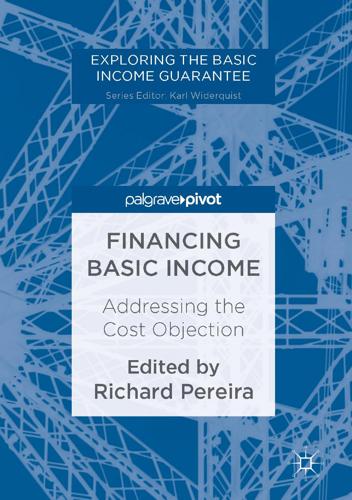
Financing Basic Income: Addressing the Cost Objection
by
Richard Pereira
Published 5 Jul 2017
Pereira, R. (2009) The Costs of Unpaid Overtime Work in Canada: Dimensions and Comparative Analysis. Athabasca University, MA Thesis. Peritz, I, and L. Gagnon. (2000) “Tired of the Kids? Try 24-hour Daycare.” Childcare Canada. 31 August. Perlin, R. (2012) Intern Nation: How to Earn Nothing and Learn Little in the Brave New Economy. London: Verso. Pigg, S. (2009) “Employers Fire Mothers-To-Be.” Toronto Star. 24 April. Québec. (2014) “Registering Your Child in Childcare Services (Day Care).” Government of Québec. 14 April. Rainer, R. (2012) “Mr. Rob Rainer (Executive Director, Canada Without Poverty) at the Finance Committee.”
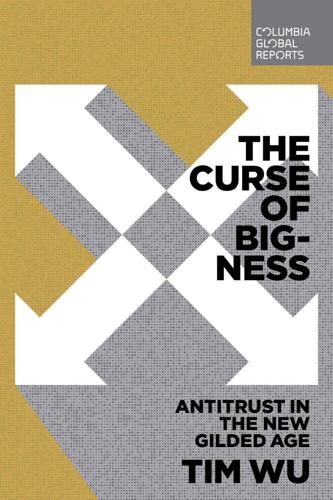
The Curse of Bigness: Antitrust in the New Gilded Age
by
Tim Wu
Published 14 Jun 2018
MySpace, the social media pioneer, was everywhere and then nowhere. Search engines and social media sites seemed to come and go: Altavista, Bigfoot, and Friendster were household names one moment and gone the next. The chaos made it easy to think that bigness—the economics of scale—no longer really mattered in the new economy. If anything, it seemed that being big, like being old, was just a disadvantage. Being big meant being hierarchical, industrial, dinosaurlike in an age of fleet-footed mammals. Better maybe to stay small and stay young, to move fast and break things. All this suggested that in cyberspace, there could be no such thing as a lasting monopoly.
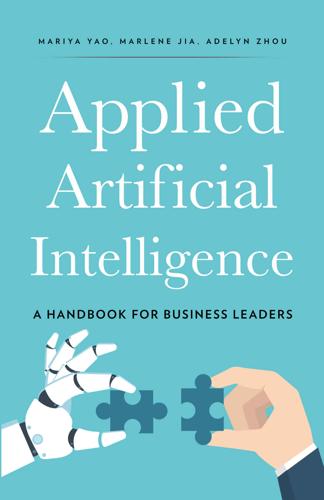
Applied Artificial Intelligence: A Handbook for Business Leaders
by
Mariya Yao
,
Adelyn Zhou
and
Marlene Jia
Published 1 Jun 2018
As AI and robotics increasingly take on the most routine and repetitive tasks in both white-collar and blue-collar industries, jobs that still need human workers will transition from positions that require routine, unskilled labor to ones that require specialized skills and adaptive decision-making abilities. In addition, AI will speed up the pace of automation, in the process requiring workers to learn new skills more quickly in order to stay ahead of the curve. Workers will need continuous access to high-quality training in order to stay competitive in this new economy. A 2016 White House report on the impact of AI on the economy recommended that high quality, affordable training should start in childhood to prepare students for continued education. Workers going through job transitions will also need ample access to job-driven training and other forms of lifelong learning.(95) Unfortunately, the United States currently lags behind other industrialized countries on investments in labor market programs, such as training programs or job-search assistance for workers.
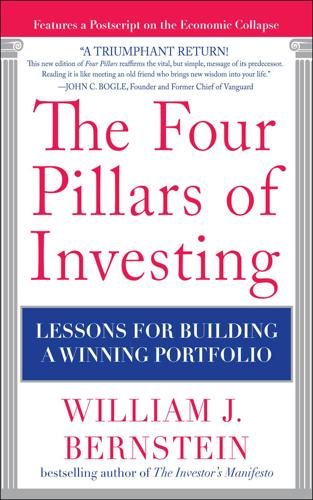
The Four Pillars of Investing: Lessons for Building a Winning Portfolio
by
William J. Bernstein
Published 26 Apr 2002
Conversely, if prices rise rapidly, everyone wants in on the fun. Until very recently, there was a great deal of talk about the “new investment paradigm.” Briefly stated, this doctrine asserts that Fisher had gotten it all wrong: earnings, dividends, and price no longer matter. The great companies of the New Economy—Amazon, eToys, and Cisco—were going to dominate the nation’s business scene, and no price was too high to pay for the certain bonanza these firms would provide their shareholders. Of course, we’ve seen this movie before. In 1934, the great investment theorist Benjamin Graham wrote of the pre-1929 stock bubble: Instead of judging the market price by established standards of value, the new era based its standards of value upon the market price.
…
Here, diversification seemed to work a bit better. The madness of the preceding 1990s was confined largely to tech stocks and to the largest growth companies, which investors saw as the new wired world’s primary beneficiaries. During the 1990s bubble, everything else languished. Real estate? Obsolete in the New Economy. Small banking, manufacturing, and retail concerns? Doomed as well. Consequently, only tech and large-cap growth stocks, which were most heavily represented in the S&P 500 and the EAFE, and which had run up ridiculously in the previous five years, collapsed. REITs and U.S. small-cap value stocks, which had languished in the 1990s, actually made money between the broad market top of 2000 and the bottom in 2002.
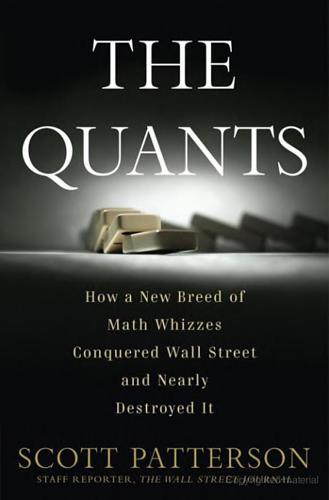
The Quants
by
Scott Patterson
Published 2 Feb 2010
In 1999, this was the worst possible strategy in the world. Expensive stocks—dot-com babies with no earnings and lots of hot air—surged insanely. Cheap stocks, sleepy financial companies such as Bank of America, and steady-as-she-goes automakers such as Ford and GM were stuck, left in the blazing wake of their futuristic New Economy betters. AQR and its Goldman golden boys were hammered mercilessly, losing 35 percent in their first twenty months. In August 1999, in the middle of the free fall, Asness married Laurel Fraser, whom he’d met at Goldman, where she was an administrative assistant in the bond division. As AQR’s fortunes plummeted, he complained bitterly to her about the insanity of the market.
…
Stocks generally perform better than most other investments “not because of magic, but largely because throughout the period we study they were generally priced reasonably, or even cheaply vs. their earnings and dividends prospects,” Asness wrote. “That is not necessarily the case anymore.” As a sample case, Asness examined the New Economy darling, Cisco Systems, which makes Internet routers. He systematically demolished the case for investing in Cisco by showing that there was no possible way that the company’s earnings prospects could match its valuation. And yet, despite the obviousness of the case, he noted, “Cisco is on almost every ‘must own’ recommended list I see.

Platform Revolution: How Networked Markets Are Transforming the Economy--And How to Make Them Work for You
by
Sangeet Paul Choudary
,
Marshall W. van Alstyne
and
Geoffrey G. Parker
Published 27 Mar 2016
) • As platforms grow, they are subject to abuse: customers shopping on eBay can be defrauded, women seeking dates on Match.com can be assaulted, homes rented on Airbnb can be ransacked. Who should pay the price? And how should platform users be protected? (See chapters 8 and 11.) In answering questions like these, we’ve sought to create a practical guide to the new economy that is reshaping the world in which we all live, work, and play. Platform Revolution is an outgrowth of three careers that have been spent immersed in studying and unraveling the mysteries of the platform model. Two of the authors—Geoff Parker and Marshall Van Alstyne—became interested in the emerging network economy during the dot-com boom of 1997–2000, when both were PhD students at MIT.
…
Some of the issues we will explore include possible effects on tax policy, affordable housing, public safety, economic fairness, data privacy, labor rights, and more. THE DARK SIDE OF THE PLATFORM REVOLUTION We have already noted the many benefits that the explosive growth of network platforms is providing. However, we must also acknowledge that the spread of platforms will not usher in some kind of new-economy nirvana. Like every business, social, or technological innovation, the rise of platforms has the potential for harm.2 Some of the complaints about the rise of platforms reflect the disruptive impact of platform businesses on traditional industries. It’s natural that companies and workers whose profits and livelihood may be threatened by new business models will fight back by any means available, including seizing on evidence, meaningful or not, that the new models are causing economic, environmental, social, or cultural harm.
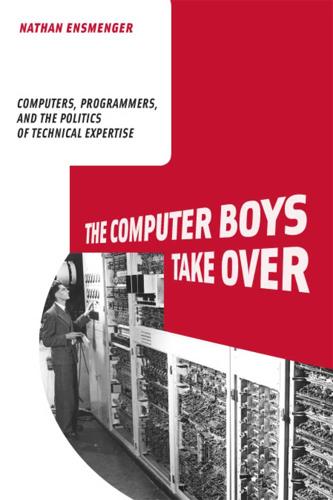
The Computer Boys Take Over: Computers, Programmers, and the Politics of Technical Expertise
by
Nathan L. Ensmenger
Published 31 Jul 2010
Stephen Barley, “Technicians in the Workplace: Ethnographic Evidence for Bringing Work into Organization Studies,” Administrative Science Quarterly 41 (1996): 404–441. 40. Ibid. 41. Stacia Zabusky and Stephen Barley, “Redefining Success: Ethnographic Observations on the Careers of Technicians,” in Broken Ladders: Managerial Careers in the New Economy, ed. Paul Osterman (New York: Oxford University Press, 1996), 185–214. 42. Barley, “Technicians in the Workplace,” 422. 43. Ibid., 430. 44. Ibid., 427. 45. Adele Mildred Koss, “Programming on the Univac 1,” IEEE Annals of the History of Computing , no. 1 (2003): 48–59; Scott M. Campbell, “Beatrice Helen Worsley,” IEEE Annals of the History of Computing 25, no. 4 (2003): 51–62. 46.
…
Writings of the Revolution: Selected Readings on Software Engineering. New York: Prentice Hall, 1986, 288. Yourdon, Edward Nash, ed. Classics in Software Engineering. New York: Yourdon Press, 1979. Zabusky, Stacia, and Stephen Barley. Redefining Success: Ethnographic Observations on the Careers of Technicians. In Broken Ladders: Managerial Careers in the New Economy, ed. Paul Osterman, 185–214. New York: Oxford University Press, 1996. Zaphyr, P. A. “The Science of Hypology” (letter to editor). Communications of the ACM 2 (1) (1959): 4. Zuboff, Shoshana. In the Age of the Smart Machine: The Future of Work and Power. New York: Basic Books, 1988. Zussman, Robert.
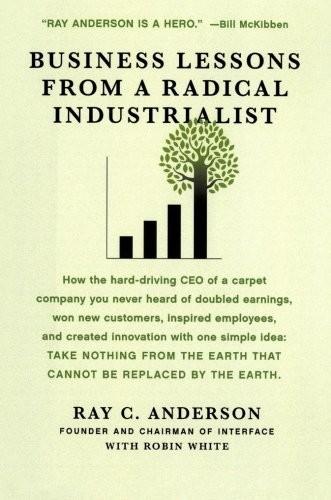
Business Lessons From a Radical Industrialist
by
Ray C. Anderson
Published 28 Mar 2011
With all the hope and optimism in the world, the jury is still out. There could be a lot of pain for Homo sapiens before we shed our hubris and figure out the sustainable way forward. I bet Economics 101 was wrong in many ways other than its definition of the Basic Economic Problem, and we can develop a new economy, solar-driven, cyclical, and resource efficient. In that new economy, wealth will come from meeting needs, not wants, with more brain power and less stuff. You know that I began this journey unwillingly. If you’d asked me what sustainability was in 1993, I’d have said that it’s earning a big enough profit this year to stay in business the next.
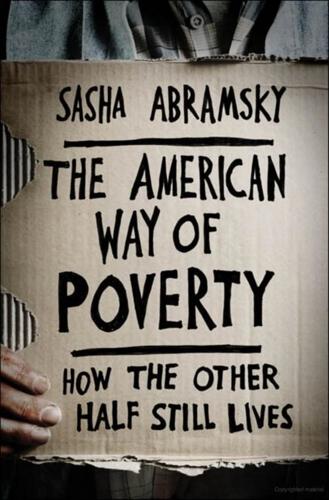
The American Way of Poverty: How the Other Half Still Lives
by
Sasha Abramsky
Published 15 Mar 2013
See http://abcnews.go.com/blogs/health/2011/11/10/will-budget-cuts-threaten-mental-health-in-your-state/. 19. Liz Schott and Clare Cho, “General Assistance Programs: Safety Net Weakening Despite Increased Need,” Center on Budget and Policy Priorities, updated December 19, 2011. Available at http://www.cbpp.org/cms/?fa=view&id=3603. 20. See http://money.cnn.com/2010/09/16/news/economy/Americas_wealthiest_states/index.htm; http://xfinity.comcast.net/slideshow/finance-worstpaidteachers/mississippi/; http://www.worldlifeexpectancy.com/usa/mississippi-life-expectancy; and http://www.census.gov/statab/ranks/rank17.html. 21. Kaiser Family Foundation, State Health Facts, available at http://www.statehealthfacts.org/profileind.jsp?
…
Jacob Hacker, The Great Risk Shift: The New Economic Insecurity and the Decline of the American Dream, 2nd ed. (Oxford: Oxford University Press, 2006), 5. 2. See http://articles.orlandosentinel.com/2008–02–15/business/bernanke15_1_bernanke-fiscal-stimulus-package-economy-more-resilient. 3. See http://money.cnn.com/2008/02/14/news/economy/bernanke_paulson/index.htm. 4. See http://politicalticker.blogs.cnn.com/2008/04/22/bush-denies-us-economy-in-recession/. 5. See http://www.huffingtonpost.com/2008/09/15/mccain-fundamentals-of-th_n_126445.html. 6. See http://articles.cnn.com/2008–09–24/politics/bush.transcript_1_markets-financial-assets-economy?
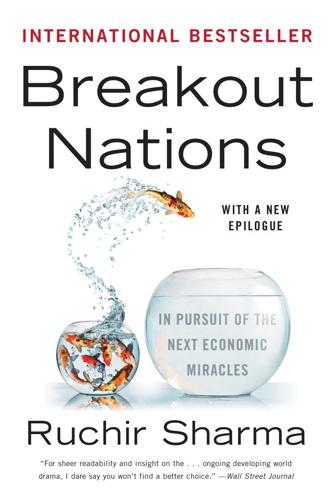
Breakout Nations: In Pursuit of the Next Economic Miracles
by
Ruchir Sharma
Published 8 Apr 2012
It was all about the future, about understanding why prices in a digitally networked economy “want to be free,” while the “monetization” problem (how to make money on the Internet) would solve itself down the line. The dotcom mania, while it lasted, was powerful enough to make Bill Clinton—who campaigned as the first U.S. president to fully embrace the “new economy”—a living emblem of American revival, just as the commodity price boom played a role in making Vladimir Putin a symbol of Russian resurgence and Inácio Lula da Silva the face of a Brazilian recovery. When the rapture is over, the nations and companies that have been living high off commodities will also share the sinking feeling that followed the dotcom boom.
…
S., 50 Najaf, 122 Namibia, 173, 184 Nanjing, 31 National Action Party, 77 “national car,” 161 National Congress of the Chinese Communist Party, 27–28 national income streams, 16–17 Nationalist Party, 174–75 nationalization, 77–78, 176, 177 national key economic areas (NKEAs), 151 natural resources, 3, 10, 19, 51–52, 59, 61, 63, 67–68, 69, 127, 133–34, 159, 176, 220, 223–39 Naxalites, 46 Nazif, Ahmed, ix Nellore, 52 nepotism, 47 Netflix, 239 Netherlands, 179, 220 “new apartheid,” 181 new economic model (NEM), 151 “new economy,” 225–26 “new normal,” 6, 226 “new paradigms,” 225–26 New Science of Life, A (Sheldrake), 185 Newsweek International, 42 New Zealand, 249 nickel, 133, 141 Niger Delta, 210, 211 Nigeria, 209–14 Christians vs. Muslims in, 211 constitution of, 210 corruption in, 210, 211–13 economy of, 1, 28, 47, 89, 92, 93, 189, 190–91, 211–13 elections in, 210–11 as emerging market, 204, 212–13 film industry of (Nollywood), 186, 211 foreign investment in, 212, 213–14 GDP of, 210, 212 government of, 205, 209–11, 213 growth rate of, 210, 245 income levels in, 212 oil resources of, 210, 211–12, 213 power failures in, 212–13 property sales in, 213–14 Nikkei index, 156 Nollywood, 186, 211 noodle packages, 53 North Atlantic Treaty Organization (NATO), 115–16 North Korea, 72, 155, 169–70 Norway, 63, 217, 230 Obasanjo, Olusegun, 205, 210 off-the-books jobs, 22 oil, 3, 5, 13, 33, 36–37, 51–52, 63, 67–68, 75, 77–78, 82, 85, 86, 87, 88–89, 91, 93, 96, 120, 133, 141, 189, 190, 195, 196, 200–201, 210, 214–21, 223, 224–29, 231, 232, 245, 246 oil futures, 5 oligarchy, 85–86, 90–94 oligopolies, 73, 75, 76–82, 140, 178 Olympic Games (2008), 16 Olympic Games (2014), 93 Olympic Games (2016), 65 Oman, 214, 216–17, 218, 219 one-child policy, 21–22 online gaming, 167 open-air markets, 96 “open-air museum,” 11 Orbán, Viktor, 104–5 Organization for Economic Cooperation and Development (OECD), 119, 253 Orissa, 52 Orkut, 41 Orwell, George, 242 Ottoman Empire, 113 outsourcing industry, 50, 141, 196 “outward facing” companies, 43 Pacific Century, 1 Pakistan, 50, 189, 190, 197 Palace of Culture and Science, 97 Palestinians, 127 palm oil, 133, 135, 147 Panama Canal, 200 pancasila philosophy, 136 Paraguay, 64, 187 Park Chung Hee, 156, 160–61 Passage to India, A, 41 passports, internal, 27, 29 patents, 237 Patna, 53 peasants, 17–18, 27, 66 Peerless, 247 Pemex, 75, 77–78 pension funds, viii, 173, 178–79 pensions, viii, 22, 37–38, 76, 87–88, 173, 178–79, 216 People Power Revolution, 139, 141 per capita income, ix, 7–8, 11, 13, 19–21, 41, 58, 61, 63, 72, 73–75, 76, 88, 97–98, 109, 116, 127, 131–32, 138, 148, 176–77, 204, 207, 216, 244, 245–46 Performance Management and Delivery Unit (PEMANDU), 152 “permanent revolution,” 111 Persian Gulf, 189, 214–21 Peru, 7, 16, 66–67 Petrobras, 67–68 petrochemicals, 156, 166, 218, 220 Philippines, 138–41 airports of, 138, 140 budget of, 139–40 economic problems of, 138–41 as emerging market, 10, 76 foreign investment in, 140–41 GDP of, 139, 140, 141 government of, 140–41 growth rate of, 147, 245 income levels of, 8, 138, 139–40, 141 inflation rate of, 249 labor force of, 132, 140–41 natural resources of, 141 oligopoly in, 82, 140 political situation in, 138–39 savings rate of, 139 Thailand compared with, 138–39 platinum, 179, 180, 224 Poland: auto industry in, 103, 121 banking in, 102, 105–7 as breakout nation, 99–100 currency of (zloty), 103–4, 108 economy of, 99–104, 106 as emerging market, 99–104, 106, 110 as Eurozone candidate, 11, 99–100, 106–8, 109, 254 foreign investment in, 7, 100 GDP of, 100, 107 growth rate of, 12, 97–104, 245 housing market in, 103–4 income levels of, 97–98 inflation rate of, 249 labor force or, 102, 104 post-Communist era of, 97, 102, 104 Russia compared with, 12 wealth in, 98, 103 “Polish plumber,” 102 Pongal festival, 54 pop music, 122, 154, 167 population, viii, 17–18, 19, 21–22, 37–38, 52–56, 53, 57, 58, 82, 95, 106, 121, 126, 127, 142, 155, 159, 170, 199, 231–32 “population bomb,” 55–56 Port Elizabeth, 171 ports, 20–21, 62, 65, 69, 197, 199, 200–201, 209 Portugal, 30, 72, 99, 100, 107 poverty, 33, 41–42, 52–53, 55, 57–58, 66, 131–32, 171, 177 “poverty trap,” 55 power plants, 51–52 Prabhakaran, Vellupillai, 193 Prague, 103 prices, 3, 5–8, 12, 13–16, 53, 165, 223–39, 246–47 privatization, 7, 24–25, 85–86, 87, 88, 91, 93, 95, 252 Procter & Gamble, 9 productivity, 5, 6, 23, 27, 63–64, 68, 80, 104, 143, 156–57, 159, 229–30, 248 profitability, 13, 27, 43, 69, 73, 78, 87, 165, 179, 183, 201, 224, 230–31, 238 prostitution, 83 protectionism, 72, 75 Przeworski, Adam, 30 Public Distribution Stores, 53 Pudong International Airport, 15–16 Pulkovo Airport, 85 Punjab, 49 Putin, Vladimir, ix, 4–5, 85–86, 87, 88–90, 94–95, 96, 103, 117–18, 176, 226 Qang Ngai Province, 201 Qatar, 187, 214, 215, 216, 217, 219 quality control, 162 quarterly financial statements, 167 racial quotas, 148–49 railroads, 15–16, 20, 21, 65, 69, 84–85, 138, 140, 200, 209 Rain, 154 Rajapaksa, Mahinda, 194 Rajapaksa family, 197 Rajasthan, 52 Ramakrishna, 249 ransom, 78–79 ration cards, 53, 55 Ravana trail, 196 Razak, Najib, 151–52 real estate, 3, 5–6, 44, 88, 254 recessions, 5–6, 9, 11, 18, 34, 80, 101, 109, 131, 132, 144, 225, 244, 249–51 Refah Party, 115 Reinhart, Carmen, 252–53 Reliance, 196 Religious Affairs Directorate, 123 Rembrandt, 178 Renault, 162 “rents,” 91 Republic of Congo, see Comgo, Republic of research and development (R&D), 153, 160–62, 168, 237 “resource curse,” 230–31 retail sector, 54, 88–89, 96, 213 Riady family, 134 Richmond, Jennifer, 29 Rio de Janeiro, 12–13, 21, 59–61, 64, 65, 66, 136, 137, 207 risk assets, 228 Riyadh, 215, 220 roads, x, 17, 20, 21, 51, 52, 62, 63–64, 65, 85, 88, 107, 121, 195, 199, 200, 205, 206, 208, 209, 212, 231, 236 Robben Island, 171 Rodrik, Dani, 245 Rogoff, Kenneth, 252–53 Rolls-Royce, 31 Romania, 100, 101, 105, 107, 109–10 “route to market,” 208 rubber, 134, 147 “rules of the road,” vii–x, 4–5, 11–14, 61, 64, 94, 136, 149, 184, 198–99, 205 Russia, 83–96 agriculture of, 83, 232 author’s visit to, ix, 4–5, 94–95 auto industry of, 161 banking in, 92–94, 102 billionaires in, 25, 44–45, 47, 91, 93 Brazil compared with, 10, 61, 66, 85, 88 China compared with, 19, 25, 85, 86, 87, 88, 91, 92 consumer prices in, 83–84, 86, 87, 94, 137, 232 corruption in, 89, 91, 93 currency of (ruble), 4–5, 9, 92–93, 132, 232, 233 economic reforms in, 86, 94–96, 117–18, 234 economy of, 4–5, 12, 86–88, 91, 92–97, 117–18, 183, 226, 234 as emerging market, 3–4, 7, 30, 83, 86–90, 93–94, 96 foreign investment in, ix, 86, 87, 91–94, 183 foreign trade of, 83, 85, 86, 90, 159, 220, 232, 233–34 GDP of, 3–4, 85, 92 government of, 30, 83, 85–90, 94–96 government spending in, 86, 87–88 growth rate of, 3–5, 7, 8, 12, 30, 61, 87, 88, 97, 244, 246, 254 income levels of, 4, 19, 83, 86–87, 88, 113, 173 India compared with, 36–37, 44–45, 46, 87, 88, 95 Indonesia compared with, 137–38 inflation rate of, 137–38, 248, 249 infrastructure of, 84–85, 88, 90–91 living standards in, 83–85 national debt of, 4, 5, 66, 85, 86, 92–93, 231 natural resources of, 10, 13, 36–37, 133, 220, 232, 233–34 oil industry of, 36–37, 85, 86, 87, 88–89, 91, 93, 96, 231 oil stabilization fund in, 86–87, 93, 231 oligarchy in, 85–86, 90–94 Poland compared with, 12 population of, 19, 95 post-Communist period of, 83, 84, 85, 86, 89, 102, 103 privatization in, 85–86, 87, 88, 91, 93, 95 social stability in, 85–86 stock market of, 10, 36–37, 83, 88, 91, 93, 188, 243 Turkey compared with, 117–18, 126 U.S. compared with, 4–5, 88, 91 wage levels in, 87–88 wealth in, 12, 25, 83–87, 84, 90–94, 103, 137, 254 welfare programs of, 87–88 “Russia discount,” 87 Rwanda, 206, 209 Sabanci family, 125 Saigon, 203 St.
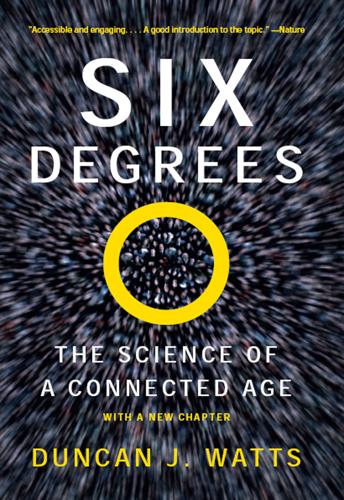
Six Degrees: The Science of a Connected Age
by
Duncan J. Watts
Published 1 Feb 2003
Yes, in the sense that the dominance of so-called new organizational forms over traditional vertically integrated hierarchies was now essentially unquestioned (except perhaps in the more conservative economics journals). And yes, in the sense that the reason for this shift was generally agreed to be the sharp increase in uncertainty and change associated with the global business environment of the past few decades, in old-economy staples like textiles, steel, automobiles, and retail as well as the new-economy industries of biotechnology and computing. But there was a sense in which, over the past ten years in particular, Chuck had come to see their proposed solution of flexible specialization as critically incomplete. AMBIGUITY THE IDEA UNDERLYING FLEXIBLE SPECIALIZATION IS ROUGHLY that the tasks required of a modern firm—whether building an automobile, creating a new weave of fabric for the spring catalogue, or designing the next computer operating system—are subject to significant unpredictability and rapid change.
…
Although, as we will see, hierarchies respond poorly to ambiguity and failure, they are excellent structures for exerting control. And control remains a central feature of business firms and public bureaucracies alike. Individuals may report to multiple bosses, or report to different bosses at different times, but even in the most free flowing of new-economy firms, everyone still has a boss. Hierarchies, furthermore, are not confined to the organization of individuals within the firm. Much of large-scale industrial organization, from industry groups like Toyota’s to the structure of entire economies, is predicated on the notion of a hierarchy. Even many physical networks are designed on hierarchical principles (although, as we will see, they are typically not pure hierarchies either).
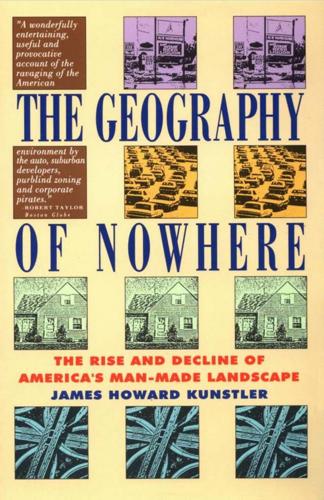
The Geography of Nowhere: The Rise and Decline of America's Man-Made Landscape
by
James Howard Kunstler
Published 31 May 1993
Today, only a handful of dairying operations remain. The town had an additional role as an agricultural trading center; here the farmers came to buy seed and tools. Local merchants profited. The population of the village proper was roughly 2500. The town's semipastoral canal years ended with a sudden, stark shift to a new economy. Seemingly overnight, Schuylerville became a fac tory town. An abundance of water power lay close at hand. Fish Creek offered two waterfalls within the village limits. The aforementioned flax mill went up first. A much larger factory was built a quarter mile upstream in 1860. It produced high quality cotton cambric cloth. ( In the twentieth century it was converted to make cardboard. ) On the other side of the Hudson and less than a mile to the north, another stream, T H E G E O G R A P H Y O F N O W H E R E called the Battenkill, empties into the river with even greater force and volume than Fish Creek.
…
In the town of Am herst alone it spurted from 8000 to 38,000 between 1950 and 1990-the same period in which more than three quarters of the farms in Massa chusetts disappeared. Until the 1980s, the long sheds of the tobacco growers were a common sight through the valley, but the land became more valuable for tract housing and minimalls than it was for farming. These things were expressions of a new economy, a cheap oil economy of gold-plated roadways and throwaway architecture. As sprawl spilled over the countryside, alarmed town officials passed laws designed to mitigate it, which had the unforeseen consequence of making it worse. One common response was to increase the minimum lot size in the mistaken belief that spreading houses farther apart would pre serve the open character of the landscape.

Exponential: How Accelerating Technology Is Leaving Us Behind and What to Do About It
by
Azeem Azhar
Published 6 Sep 2021
By 2019, it released more original shows and films than the whole TV industry’s yearly output prior to 2016.32 With 37 Oscar nominations under its belt in 2021, the company is close to breaking a 1940 record of 40 nominations for a single studio. In these moments, it becomes apparent how increasing returns to scale aren’t just rewiring business, but also culture and wider society. Exponential Age companies are all too aware of the dynamics of this new economy. These firms have come of age in a peculiar environment: in each sector, one company dominates and everybody else gets left behind. As a result, these companies have developed a winner-takes-all mindset that reflects a winner-takes-all market. Consider the management structure of many new superstar companies.
…
This practice has started to go out of vogue, and after the Organisation for Economic Co-operation and Development (OECD) and Donald Trump’s administration clamped down on the Double Irish, at least one technology company brought it to an end in 2020.51 In general, governments have been caught off guard by the rapidity with which the Exponential Age titans have grown. A few nations, like Ireland, spotted the shift. The country was quick to use appealing tax rates as a way of enticing the new economy superstars to set up shop there.52 But many countries did nothing, standing by as their leading companies relocated and starting paying less tax. Yet for all their difficulty, the problems posed by the ascendance of Exponential Age superstars are not intractable. In fact, we have the ability to answer them already.

Cities Are Good for You: The Genius of the Metropolis
by
Leo Hollis
Published 31 Mar 2013
In November 2010 Prime Minister David Cameron came here and announced the launch of Tech City, an initiative that hoped to turn this stretch of east London – which starts in Shoreditch and in time has come to include the Olympic Park 3 miles to the east at Stratford – into the technology capital of Europe. In his speech he set out what the government could do to nurture a vibrant new economy based upon creativity and knowledge to challenge the rest of the world: Right now, Silicon Valley is the leading place in the world for high-tech growth and innovation. But there’s no reason why it has to be so predominant. Question is: where will its challengers be? Bangalore? Hefei? Moscow?
…
The Hukou system was enforced to keep the rural workers in the countryside, although they could not survive there; only holders of the right papers were given food in the city. In the end, it is estimated that up to 45 million people died of hunger as a result of the policy. In recent years the Hukou system has been used to restrict movement from the countryside to the city to share in the economic boom of the new economy. It has created a whole class of illegal workers, who have no rights or papers, ready to be exploited by the factories. Today nearly 200 million workers live outside their legally registered territory and therefore cannot expect any government services, healthcare or education. While they earn wages in the factories, they cannot gain resident status.

A Concise History of Modern India (Cambridge Concise Histories)
by
Barbara D. Metcalf
and
Thomas R. Metcalf
Published 27 Sep 2006
With economic liberalization, India was increasingly opened to global culture through cable and satellite television, films, consumer advertising, the Internet, and diaspora networks. With an increasingly consumer-oriented television on the one hand, and the lifestyle of those profiting in the new economy ever more visible on the other, the tensions generated by class and regional deprivation could only grow. As in the case of the green revolution, when the wealthier farmers were often clear winners, liberalization and concomitant withdrawal of protection from agriculture and the public sector, even more dramatically made for winners and losers.
…
India thus took part in a worldwide transition in which national economies were increasingly integrated into a global economic system. In the first three years of the reforms, the annual rate of growth reached 7 per cent. Democratic India in the nineties 283 One particularly successful arena of the new economy was software development. Bangalore in Karnataka emerged as the Indian ‘Silicon Valley’, while Andhra Pradesh, under a visionary chief minister, undertook to create a new ‘Hitech City’ promising not only a technological infrastructure but an urban and governing environment conducive to global business undertakings (plate 9.3).
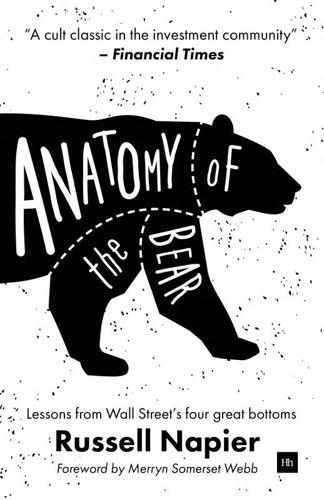
Anatomy of the Bear: Lessons From Wall Street's Four Great Bottoms
by
Russell Napier
Published 18 Jan 2016
Farrell, Judgement Day The commercial ballyhoo of the 1920s was the stage in American development when consumerism finally triumphed over almost everything that had gone before. And, as William Leach observes, Charles Cooley, pioneer founder of modern sociology, ‘worried about this trend’. ‘Pecuniary values,’ he wrote in 1912, were not ‘natural’ or ‘normal’; they were the historical outgrowth of a new economy and culture and ‘by no means the work of the whole people acting homogenously’. In the past, values had taken their ‘character from… the church’, now they were deriving it from ‘business and consumption’. Increasingly the worth of everything - even beauty, friendship, religion, the moral life - was being determined by what it could bring in the market
…
John Brooks writes in The Go-Go Years that there was a belief only someone under 40 could understand and foresee the growth of fast-moving and unconventional companies. Wall Street, which lives on dreams and fashions, was, for all of its pretensions to rational practicality, precisely the milieu within which the new gospel of youth could proliferate. [67] By 1966, however, the belief in the value of the “new economy” had to be increasingly reconciled with the evidence of trouble in the real economy. The crux of the growing concern for investors was the seeming inability of the Federal Reserve to get control of inflation against the background of the fiscal spending associated with Johnson’s “Great Society” programme.

The Costs of Connection: How Data Is Colonizing Human Life and Appropriating It for Capitalism
by
Nick Couldry
and
Ulises A. Mejias
Published 19 Aug 2019
Polanyi (Great Transformation, 78–79) had a similar formulation when he analyzed industrial capitalism in terms of “fictional commodities”: the transformation of work into “labor,” land into “real estate,” and exchange into “money.” Building on Polanyi, Zuboff (“Big Other,” 84) argues that “reality” is now being turned into tracked “behaviour.” 67. The Economist, “Data Is Giving Rise to a New Economy,” May 6, 2017. 68. We are condensing here the three principles of “scientific management” in Braverman, Labor, 78–82. 69. Braverman, Labor, 87. 70. Capitalism here aims at the state in which, as Marx (Capital, vol. I, 952) put it, “All the means of labour . . . now also serve as ingredients in the valorization process.
…
AdAge, October 26, 2015. http://adage.com/article/datadriven-marketing/24-billion-data-business-telcos-discuss/301058/. Kazmin, Amy. “Indians Sound Alarm Over ‘Orwellian’ Data Collection System.” Financial Times, July 30, 2018. Keen, Andrew. The Internet Is Not the Answer. London: Atlantic Books, 2015. Kelly, Kevin. The Inevitable. New York: Penguin, 2016. . “New Rules for the New Economy.” Wired, September 1, 1997. . What Technology Wants. New York: Penguin, 2010. Kelman, Steven. “The Political Foundations of American Statistical Policy.” In The Politics of Numbers, edited by William Alonso and Paul Starr, 275–302. New York: Russell Sage Foundation, 1988. Kennedy, Helen. Post, Mine, Repeat.
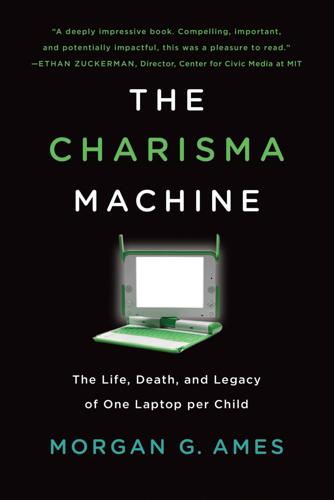
The Charisma Machine: The Life, Death, and Legacy of One Laptop Per Child
by
Morgan G. Ames
Published 19 Nov 2019
See Nye, American Technological Sublime; Douglas, Listening In; Mosco, Digital Sublime; Haring, Ham Radio’s Technical Culture. 20. Winner, “Technology Today,” 1000-1001. 21. See Mosco, Digital Sublime; Turner, From Counterculture to Cyberculture. 22. Mosco, Digital Sublime, 112–113; Turner, “Burning Man at Google”; Turner, “Counterculture Met the New Economy”; Turner, From Counterculture to Cyberculture. 23. Ames and Rosner, “From Drills to Laptops.” 24. Segal, Technological Utopianism, 170. 25. Mosco, Digital Sublime, 22. 26. Mosco, Digital Sublime., 3–6. 27. Tyack and Cuban, Tinkering toward Utopia, 1–11; Ames, “Charismatic Technology.” 28.
…
The Democratic Surround: Multimedia and American Liberalism from World War II to the Psychedelic Sixties. Chicago: University of Chicago Press, 2013. ———. From Counterculture to Cyberculture: Stewart Brand, the Whole Earth Network, and the Rise of Digital Utopianism. Chicago: University of Chicago Press, 2006. ———. “Where the Counterculture Met the New Economy: The WELL and the Origins of Virtual Community.” Technology and Culture 46, no. 3 (2005): 485–512. https://doi.org/10.1353/tech.2005.0154. ———. “How Digital Technology Found Utopian Ideology: Lessons from the First Hackers’ Conference.” In Critical Cyberculture Studies, edited by David Silver and Adrienne Massanari, 257–259.
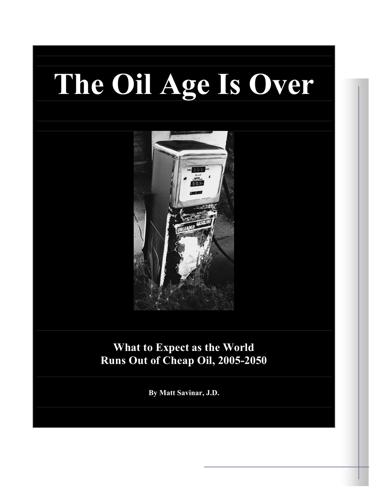
The Oil Age Is Over: What to Expect as the World Runs Out of Cheap Oil, 2005-2050
by
Matt Savinar
Published 2 Jan 2004
American Assembler, Archived at http://www.americanassembler.com/issues/peak_oil/peak_oil.html 3 . Michael Ruppert, "Revealing Statements from a Bush Insider about Peak Oil and Natural Gas Depletion," From the Wilderness, (June 12th, 2003). Archived at http://www.fromthewilderness.com/free/ww3/061203_simmons.html 4 . Matthew Simmons, "Energy in the New Economy Limits to Growth," Presented at the Energy Institute for the Americas; Oklahoma City, Oklahoma (October 2, 2000). Archived at http://www.simmonscointl.com/files/79.pdf 5 . Quoted in Michael Klare, "Other People's Oil," Foreign Policy in Focus, (January 2004). Archived at http://www.fpif.org/papers/03petropol/politics.html 6.

A Few Red Drops: The Chicago Race Riot of 1919
by
Claire Hartfield
Published 1 Jan 2017
Employment Status of the Civilian Population by Race, Sex, and Age.” Economic News Release. Updated November 2015. www.bls.gov/news.release/empsit.t02.htm. Wallace, Gregory. “Only 5 Black CEOs at 500 Biggest Companies.” CNN Money. Cable News Network, January 29, 2015. money.cnn.com/2015/01/29/news/economy/mcdonalds-ceo-diversity. Wood, Pamela. “Church, Developer Vow to Finish Senior Apartments Destroyed by Fire.” Baltimore Sun, May 4, 2015. www.baltimoresun.com/news/maryland/baltimore-city/bs-md-mary-harvin-transformation-center-20150504-story.html. SPEECHES AND INTERVIEWS Johnson, Charles S.
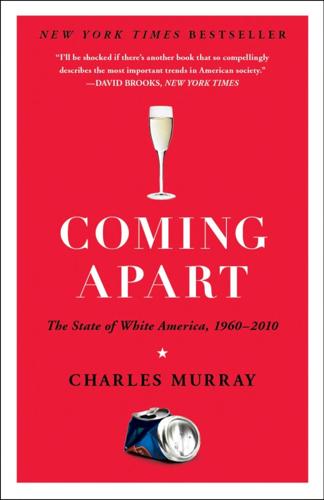
Coming Apart: The State of White America, 1960-2010
by
Charles Murray
Published 1 Jan 2012
Harvard economist Robert Reich was the first to put a name to an evolving new class of workers in his 1991 book, The Work of Nations, calling them “symbolic analysts.”1 Reich surveyed the changing job market and divided jobs into three categories: routine production services, in-person services, and symbol-analytic services. In Reich’s formulation, the new class of symbolic analysts consisted of managers, engineers, attorneys, scientists, professors, executives, journalists, consultants, and other “mind workers” whose work consists of processing information. He observed that the new economy was ideally suited to their talents and rewarded them accordingly. In 1994, in The Bell Curve, the late Richard J. Herrnstein and I discussed the driving forces behind this phenomenon, the increasing segregation of the American university system by cognitive ability and the increasing value of brainpower in the marketplace.2 We labeled the new class “the cognitive elite.”
…
Austin had become home to some of the trendiest and highest-tech industries in the country. Dell Computer, ranked 48 on the Fortune 500 that year, had its headquarters in Austin. So did Whole Foods Market, which had grown from one small natural food store to a nationwide chain and would enter the Fortune 500 in 2005. A partial list of new-economy companies that located some of their operations in Austin then or in the decade to follow includes Apple, Google, Freescale Semiconductor, Cirrus Logic, Cisco Systems, eBay, PayPal, Intel, National Instruments, Samsung, Silicon Laboratories, and Sun Microsystems. About eighty-five biotechnology companies would locate in Austin by 2010, making it a leading employer in that vibrant new industry.
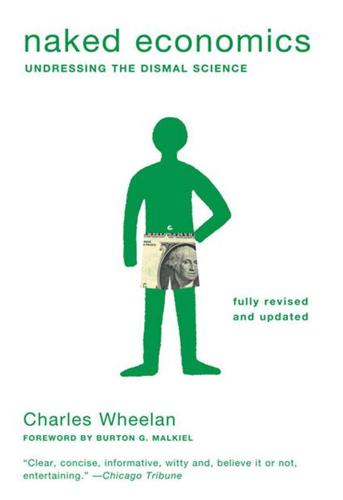
Naked Economics: Undressing the Dismal Science (Fully Revised and Updated)
by
Charles Wheelan
Published 18 Apr 2010
Says Bad Government Is Often the Cause of Poverty,” New York Times, April 5, 2000, p. A11. 9. John G. Fernald, “Roads to Prosperity? Assessing the Link Between Public Capital and Productivity,” American Economics Review, vol. 89, no. 3 (June 1999), pp. 619–38. 10. Jerry L. Jordan, “How to Keep Growing ‘New Economies,’” Economic Commentary, Federal Reserve Bank of Cleveland, August 15, 2000. 11. Barry Bearak, “In India, the Wheels of Justice Hardly Move,” New York Times, June 1, 2000. 12. Thomas L. Friedman, “I Love D.C.,” New York Times, November 7, 2000, p. A29. 13. Amartya Sen, Development as Freedom (New York: Alfred A.
…
Bruce Bartlett, “How Supply-Side Economics Trickled Down,” New York Times, April 6, 2007. 15. Greg Mankiw’s blog, March 11, 2007. 16. Rebecca M. Blank, “Fighting Poverty: Lessons from Recent U.S. History,” Journal of Economic Perspectives, vol. 14, no. 2 (Spring 2000). 17. Jerry L. Jordan, “How to Keep Growing ‘New Economies,’” Economic Commentary, Federal Reserve Bank of Cleveland, August 15, 2000. CHAPTER 5. ECONOMICS OF INFORMATION 1. Gary Becker, The Economics of Discrimination (Chicago: University of Chicago Press, 1971). 2. Harry Holzer, Steven Raphael, and Michael Stoll, “Perceived Criminality, Criminal Background Checks, and the Racial Hiring Practices of Employers,” Journal of Law and Economics, vol.
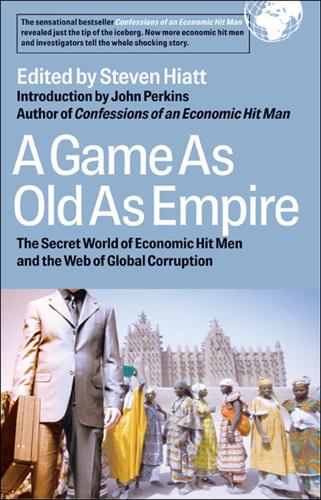
A Game as Old as Empire: The Secret World of Economic Hit Men and the Web of Global Corruption
by
Steven Hiatt; John Perkins
Published 1 Jan 2006
Dependent on aid, loan reschedulings, and debt rollovers to survive—never mind actually develop—they have been forced to restructure their economies and rewrite their laws to meet conditions laid down in IMF structural adjustment programs and World Bank conditionalities. Unlike the U.S., they do not control the world’s reserve currency, and so cannot live beyond their means for long without financial crisis. As Doug Henwood, author of After the New Economy, points out: The United States would right now be a prime candidate for structural adjustment if this were an ordinary country. We are living way beyond our means, we have massive and constantly growing foreign debts, a gigantic currency account deficit, and a government that shows no interest in doing anything about it….
…
The Anti-Development State: The Political Economy of Permanent Crisis in the Philippines. London: Zed, 2006. Danaher, Kevin. 10 Reasons to Abolish the IMF and World Bank, 2nd edn. New York: Seven Stories, 2004. Danaher, Kevin, ed. Fifty Years Is Enough: The Case Against the World Bank and the International Monetary Fund. Boston: South End, 1994. Henwood, Doug. After the New Economy. New York: New Press, 2003. Peet, Richard. Unholy Trinity: The IMF, World Bank and WTO. London: Zed, 2003. Woods, Nqaire. The Globalizers: The IMF, the World Bank, and Their Borrowers. Ithaca, N.Y.: Cornell University Press, 2006. Action for Economic Reforms. Founded in 1996, AER is an independent public interest organization that conducts policy analysis and advocacy on key economic issues.
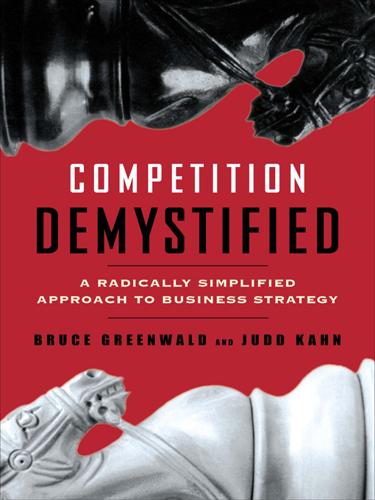
Competition Demystified
by
Bruce C. Greenwald
Published 31 Aug 2016
One of the articles of faith that drove the Internet mania during the last half of the 1990s was that this new medium would transform the way consumers bought books, computers, DVDs, groceries, pet supplies, drugs, banking services, fine art, and virtually everything else. Any traditional retailer that did not completely revise its business model was going to end up as roadkill on the information superhighway. The dominant merchants in this new economy would be dot-coms like Amazon, Webvan, Pets.com, Drugstore.com, and Wingspanbank.com, leaving Wal-Mart, Kroger, and Citibank in their wake. After the mania subsided, it became obvious how excessive those predictions were about the rate at which online commerce would supplant traditional shopping.
…
The expectation that the newly hatched, Internet-only retailers would displace their brick-and-mortar competitors also proved mistaken. The bankruptcy courts were soon littered with the remaining assets of failed B-to-C (business-to-consumer) innovators. There were some significant survivors, Amazon most prominent among them, but their path to profitability proved considerably longer than the proponents of the new economy thesis had anticipated. The imbalance between many bankruptcies only partially offset by a few roaring successes does not mean that the Internet is insignificant as a medium of retail commerce. It takes little courage to predict that over time, more people will buy more goods and more services online, and that online transactions will encroach on old-fashioned shopping, banking, and other services.
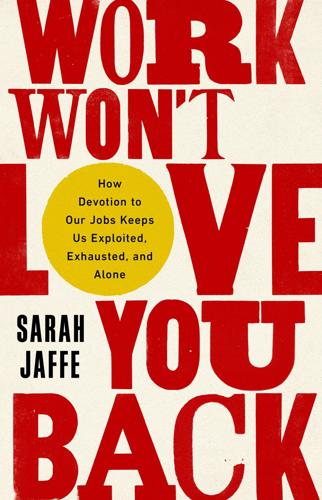
Work Won't Love You Back: How Devotion to Our Jobs Keeps Us Exploited, Exhausted, and Alone
by
Sarah Jaffe
Published 26 Jan 2021
The Clinton administration largely built on the privatization and deregulation of the Reagan-Bush years, but gave them a veneer of cool, and the dot-coms epitomized this trend. During this period, sociologist Andrew Ross was studying the workers of New York’s “Silicon Alley” to understand these new workplace trends, which he dubbed “no-collar.” In the brave New Economy, workers embraced a certain antiauthoritarian perspective, trading in the old status markers of power suits and briefcases for hoodies and T-shirts. The workers adopted the work styles of the bohemian artist, bringing their expectations of creative labor to their new jobs in tech. They also brought a willingness to work in lousier environments in return for deferred financial gain (stock options, in many cases) as long as the work itself was stimulating, creative, “work you just couldn’t help doing.”
…
H1-B workers are tethered to a particular job; if they quit or get fired, they have to leave the country, which makes them spectacularly compliant as well as cheaper to hire. 38 All of this means that tech workers might have more in common with the industrial workers of midcentury than they might think. Silicon Valley touts itself as the “New Economy,” but it still relies on products that have to be built somewhere, and the tactics of offering perks on the job don’t work quite as well on them. Elon Musk promised free frozen yogurt and a roller coaster to disgruntled employees at his Fremont, California, Tesla car factory—but the workers were complaining of injuries on the job because of the pace of production, and they didn’t want frozen yogurt to soothe their pains.

The Job: The Future of Work in the Modern Era
by
Ellen Ruppel Shell
Published 22 Oct 2018
Still, we import more than we export, imports that go beyond T-shirts and toasters to include sophisticated goods like semiconductors, medical equipment, and pharmaceuticals. In 2017, the United States ran an $83.136 billion trade deficit in advanced technology products, the largest in our history. That’s not good news for good work. In the new economy, many large multinational corporations capture most of the value of their products through invention, design, marketing, and distribution, rather than through manufacture. For example, an analysis of Apple’s iconic iPad and iPhone concludes: While these products, including most of their components, are manufactured in China, the primary benefits go to the U.S. economy as Apple continues to keep most of its product design, software development, product management, marketing and other high-wage functions in the U.S.
…
Sporck, Spinoff: A Personal History of the Industry That Changed the World (Saranac, MI: Saranac Lake, 2001), 271: “It would have been impossible to move ahead with the rapidly developing technology of semiconductors in an organization hampered by union formalities….No semiconductor facility in Silicon Valley was ever unionized.” “there may have been a time and a place for unions” Kevin Rose, “Silicon Valley’s Anti-Unionism, Now with a Side of Class Warfare,” New York Magazine, July 2013. Still, it’s worth pointing out that not a few of these new economy employers recognize the value of collective action in pursuit of their own goals. Consider, for example, the sudden involvement of industrial leadership in immigration reform. In April 2013, Facebook founder and CEO Mark Zuckerberg collaborated on the launch of Fwd.us, a proimmigration collective whose members included Bill Gates, Google’s Eric Schmidt, Yahoo CEO Marissa Mayer, and Silicon Valley venture capitalist and billionaire John Doerr.
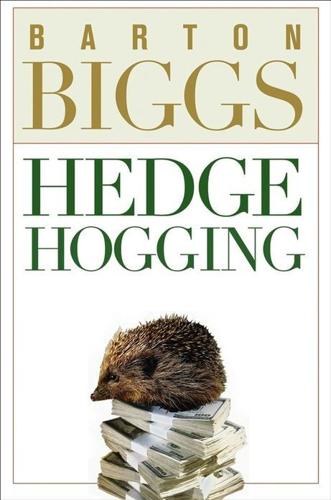
Hedgehogging
by
Barton Biggs
Published 3 Jan 2005
The crowd thought I was either crazy or senile. When I spoke of equity markets that had run too far, extreme overvaluation in tech stocks, risk, and how all bubbles eventually burst, they looked at me incredulously. They wondered why I didn’t grasp that technology in general and the Internet in particular had created a new economy in which the old rules no longer applied. Reversion to the mean was a concept for the History Channel.Two and two did not make four; with technology, two and two could make five or six or ten.At the end of my comments, I quoted what Bernard Baruch had written in 1931 as the introduction of a reprint of Charles Mackay’s great classic, Extraordinary Popular Delusions and the Madness of Crowds.
…
Valuation and overbought technical metrics invariably signal the bust far too early. Bullish sentiment goes from being crazy to euphoric to mad. I have mentioned BusinessWeek covers as a powerful contrary indicator. In the first six months of 2000, as the bubble was peaking, BusinessWeek ran no less than five gushing cover stories on tech and the new economy. Observing market action doesn’t help, either. There were several times in the late 1990s when it appeared the mania had finally peaked and the meltdown was under way. I remember April 1999. It seemed as though things couldn’t get crazier.The Internet index (IIX) had soared 340% in eight months.

Bourgeois Dignity: Why Economics Can't Explain the Modern World
by
Deirdre N. McCloskey
Published 15 Nov 2011
Do the math, then, of total production. We humans now produce and consume seventy—7 × 10—times more goods and services worldwide than in 1800. Some people view this figure with alarm and speak of environmental degradation. But the news is mainly good. With seventy times more production, no wonder we can cultivate new economies of scale and reap their benefits through free trade. And no wonder we can harness the ingenuity of the larger population to get better antibiotics and better automobiles. No wonder we can clean up the air and the water, and turn forests into nature preserves. In the best-run countries, such as France or Japan or Finland, all of which not so long ago were $3-a-day poor, real income per person, conventionally measured, has by now increased to roughly $100 a day.
…
Yet Mokyr would agree that usefulness, too, needs a trading test, and that sheer innovation without the test is worse than useless, novelty without betterment—backyard blast furnaces, say. The crux is the test in trade. Are people willing to pay for it? The phrase “trade-tested innovation” occurs in a few other contexts, such as Barbara Jones and Bob Miller, Innovation Diffusion in the New Economy: The Tacit Component (at p. 83). The procedures of a company called Jump Start promise “a trade-tested innovation to your team for ongoing management,” while another, ISOKO, “promotes action-driven, market tested innovation” in Africa.2 The closest to my use is in Clayton, Dal Borgo, and Hasekl (2009), which uses the exact phrase on page 11 and, more to the point, criticizes other definitions of innovation precisely for not thinking in terms of a trade test.
…
In any case, surely, we do not want lofty disdain for the bourgeoisie and their betterments, or ignorant hatred of their liberal defenders, to be preordained by the rhetoric since Marx of the very word “capitalism,” or by the various agreed fables about it and about its defenders. 12 “Accumulate, Accumulate” Is Not What Happened in History The new economy of betterment that started to take hold in seventeenth-century Holland and eighteenth-century England and early nineteenth-century Belgium, northern France, and the United States was not mere accumulation, which as I’ve noted is as ancient as the fashioning of the Acheulean hand axes in bulk by Homo erectus and earlier by Homo habilis (that is, “tool-making human”) from a little after 2 million years BCE.
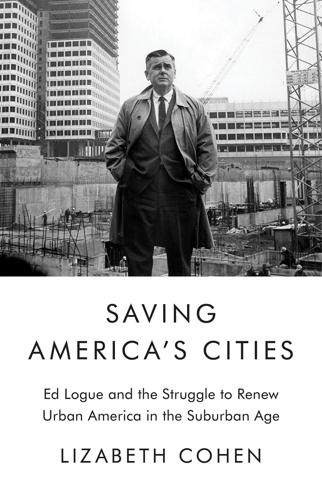
Saving America's Cities: Ed Logue and the Struggle to Renew Urban America in the Suburban Age
by
Lizabeth Cohen
Published 30 Sep 2019
But he also became less and less sanguine about how to make it happen: “I scoured just about every inch of the city—and came to love it. But it was also easy to see that the problems were tremendous.” Most disturbing, he felt, Boston was “a city without confidence in itself,” despite its potential to seed a new economy built around technology and ideas. Logue decided that he could do the job only under the right conditions: “If this was going to be my show, it had to be pretty much my way.”49 But as he wrote to a professional colleague, housing reformer Catherine Bauer Wurster, in mid-June, “At this point I am not the slightest bit optimistic that the right set of conditions can be created.”50 His most important demand was to replicate the authority over planning and redevelopment that Mayor Dick Lee had given to him in New Haven.
…
At the national level, the United States was undergoing a major reorientation from domestic manufacturing to more globalized production and a postindustrial economy built around finance, insurance, and real estate (FIRE) and other service and corporate employment. Eventually prosperity would come to those cities—like New York—that headquartered this new economy. But many American communities would never make the shift, and even those that did underwent a difficult transition during the 1970s. New York City, for example, lost more than five hundred thousand jobs, many in industry, from 1969 to 1976; by mid-1975, the unemployment rate had reached 12 percent.
…
Although Logue lived to see Boston and New York City benefiting from growth in private investment, and even the South Bronx turning the corner, New Haven continued to struggle. Like other deindustrialized cities in the United States, it was largely ignored by investors and the young talent who flocked to places with vibrant, new economies. But in all his cities, prosperous or not, affordable housing—as it was now universally called rather than “public,” “low-income,” or “subsidized”—was in devastatingly short supply. Today Logue would be deeply disturbed to observe the years-long wait lists in almost every American city for affordable rental units, apartments in aging public housing, and Section 8 vouchers—now officially named Housing Choice vouchers—that recipients theoretically could take into the private rental market.21 In the urban policy regime of market-based solutions with few direct government provisions that prevailed by the end of Logue’s career and still persists, there are two major tools for making housing more affordable: housing vouchers and the Low-Income Housing Tax Credits (LIHTC) program, which arrived on the scene in 1986, a year after Logue departed the South Bronx.22 LIHTC, the predominant method today of financing subsidized housing in the United States, established a more expansive and efficient way than was available to Logue’s SBDO of mobilizing the private sector’s investment in affordable housing.
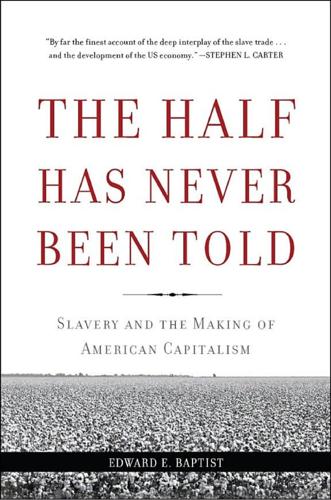
The Half Has Never Been Told: Slavery and the Making of American Capitalism
by
Edward E. Baptist
Published 24 Oct 2016
He was communicating with a man rated the First in France—Napoleon Bonaparte, first consul of the Republic, another charismatic man who had risen from obscure origins. Napoleon, an entrepreneur in the world of politics and war, rather than business, used his military victories to destroy old ways of doing things. Then he tried to create new ones: a new international order, a new economy, a new set of laws, a new Europe—and a new empire. But after he concluded the Peace of Amiens with Britain in 1800, the ostensible republican became monarchical. He set his sights on a new goal: restoring the imperial crown’s finest jewel, the lost Saint-Domingue. In 1801, he sent the largest invasion fleet that ever crossed the Atlantic, some 50,000 men, to the island under the leadership of his brother-in-law Charles LeClerc.
…
In 1815, waiting for prices to rise, John Richards offered the Bank of the State of Mississippi a note to ensure that he would not yet have to sell “the cotton that I now have in hand.” Individual promises-to-pay that drew upon credit with other merchants were “notes of hand.”26 Few parts of the body have a more intimate and direct connection to the mind than the hands, and when entrepreneurs used words to grasp the control ropes of the new economy, they described the sensation as if the new world’s powers were held in their own like puppet strings. They produced concrete results at distance, using words that their hands wrote on pieces of paper. The fingers at the end of the writer’s arm might not actually hold the material thing—the bales of cotton, the stacks of coin, the ship whose captain and crew were directed to carry them—that the figurative language of trade said it grasped.
…
Professional slave-buyers traveled up and down every road and canal, peering into every courthouse town. Slave-selling financed the remaking of the Old Dominion’s political economy: Francis Rives reinvested profits from his Alabama slave-trading journeys in a coal-dealing firm that eventually supplied early railroads and factories with fuel. Thus the market for human flesh funded a new economy that was to be less dependent on plantation-style production, although newly dug canals kept bringing boats from the foothills of the mountains to the slave market in Richmond.16 Well-supplied with tempting cash by profit-savvy southeastern banks, slave-buyers in the 1820s and onward disciplined sellers to bring in exactly the kind of people the southwestern market sought.
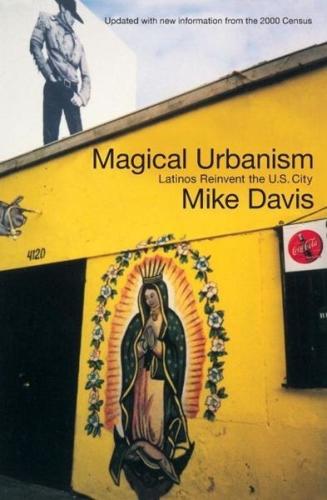
Magical Urbanism: Latinos Reinvent the US City
by
Mike Davis
Published 27 Aug 2001
Apple, Sun, Adobe, Netscape and Oracle, like 11, employees. official Three of the or manager. have meet largest firms lacked even "It is pretty clear," says UC Santa Cruz's Manuel Pastor, "that there's ethnic and occupation segregation going on in Silicon Valley." Locked out of the "New Economy," it is not surprising that Latinos are also the least likely to profit individually or through group membership from the fin de siecle stock market bubble. According to a January 2000 Federal Reserve fifth ally study, the bottom of Americans, as a result of exploding household debt, actu- had fewer to real estate assets and than in 1995.^^° White median wealth, thanks Dow Jones, is Latinos: $45,700 versus $4700.)^^^ now almost ten times that of 10 THE PUERTO RICAN TRAGEDY In the worst-case scenario, many of today's Mexican, Central American and Dominican immigrants may recapitulate the bitter experience of the Puerto Rican diaspora.
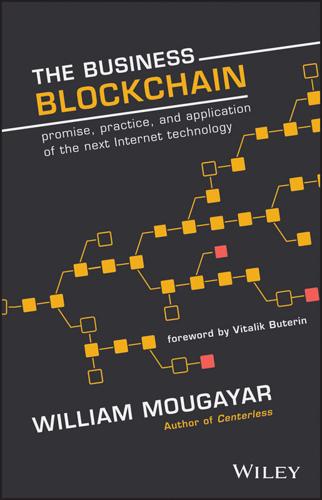
The Business Blockchain: Promise, Practice, and Application of the Next Internet Technology
by
William Mougayar
Published 25 Apr 2016
They run on a blockchain, can multiply and grow without central control, and they are fueled by cryptocurrency. The cryptocurrency is like fuel; it’s collected in part as toll, in part as earnout by the participating users and those that provide these services. You can start to see how cryptocurrency is generated out of crypto-services to instigate a new economy of wealth creation. Over time, there will be a critical mass of users with significant cryptocurrency balances in their accounts, and further network effects benefits will ensue. Only then can the crypto economy claim to have made potential dents in the current financial system in contrast to the “one nation-one sovereign currency” paradigm.

Modern China: A Very Short Introduction
by
Rana Mitter
Published 25 Feb 2016
Mao’s China It has become conventional to condemn Mao’s China as an economic failure, which ultimately forced the reform era of the 1980s on the government. While there is real substance to this argument, it is worth noting that there were developments during the Maoist period that provide favourable conditions for the eventual economic takeoff after 1978. Despite an initial accommodation with capitalists, the new economy of Mao’s China was established by 1952. Mao’s China was always going to have a socialist command economy. Emerging as it did at the start of the Cold War as an ally of the USSR, there was little ideological possibility of China following a different economic model. In addition, the new People’s Republic of China (PRC) became part of a post-war Soviet-driven system of economic cooperation, signing trade agreements with most of the newly communist Eastern European countries, and benefiting from Soviet technical assistance.
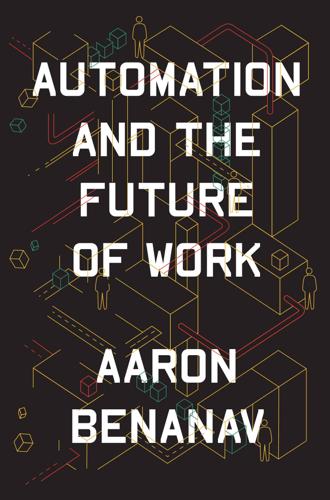
Automation and the Future of Work
by
Aaron Benanav
Published 3 Nov 2020
,” MIT Technology Review, May 13, 2016. 35 For a set of critical reflections by AI scientists, who mostly doubt that general AI is anywhere near this level of development, see Martin Ford, Architects of Intelligence: The Truth about AI from the People Building It, Packt Publishing, 2018. 36 James Vincent, “Former Facebook Exec Says Social Media Is Ripping Apart Society,” Verge, December 11, 2017; Mattha Busby, “Social Media Copies Gambling Methods ‘to Create Psychological Cravings,’” Guardian, May 8, 2018. 37 See Raniero Panzieri, “The Capitalist Use of Machinery: Marx versus the Objectivists,” in Phil Slater, ed., Outlines of a Critique of Technology, Humanities Press, 1980; Derek Sayer, The Violence of Abstraction, Basil Blackwell, 1987. 38 See Nick Dyer-Witheford, Cyber-proletariat: Global Labour in the Digital Vortex, Pluto, 2015, pp. 87–93. 39 For the classic account, see David Noble, Forces of Production: A Social History of Industrial Automation, Knopf, 1984. See also Tony Smith, Technology and Capital in the Age of Lean Production: A Marxian Critique of the “New Economy,” SUNY Press, 2000; and Gavin Mueller, Breaking Things at Work: The Luddites Are Right about Why You Hate Your Job, Verso, 2020. 40 Ceylan Yeginsu, “If Workers Slack Off, the Wristband Will Know. (And Amazon Has a Patent for It.),” New York Times, February 1, 2018; Beth Gutelius and Nik Theodore, The Future of Warehouse Work: Technological Change in the US Logistics Industry, UC Berkeley Center for Labor Research and Education, October 2019. 41 Strong tariff protections against imports were also key.
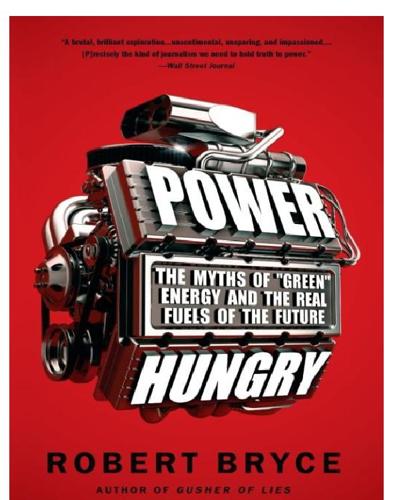
Power Hungry: The Myths of "Green" Energy and the Real Fuels of the Future
by
Robert Bryce
Published 26 Apr 2011
Boone Pickens Talks Natural Gas, Energy Independence, Peak Oil and Swift Boating with Katie Couric,” July 15, 2008, http://www.treehugger.com/files/2008/07/t-boone-pickens-talks-with-katie-couric.php. 4 Steve Hargreaves, “Pickens’ Wind Plan Hits a Snag,” CNNMoney.com, November 12, 2008, http://money.cnn.com/2008/11/12/news/economy/pickens/index.htm. 5 PickensPlan.com, http://www.pickensplan.com/media/. 6 Facebook, http://www.facebook.com/Pickensplan?ref=s. 7 Pickens Plan e-mail, August 16, 2009. 8 Forbes.com, “The 400 Richest Americans,” September 17, 2008, http://www.forbes.com/lists/2008/54/400list08_The-400-Richest-Americans_NameProper_12.html. 9 Gregory Zuckerman, “Pickens Funds Down About $1 Billion,” Wall Street Journal, September 24, 2008, http://online.wsj.com/article/SB 122221505732769415.html. 10 Elizabeth Souder, “Pickens Paring Down Wind Farm Project,” Dallas Morning News, July 6, 2009, http://www.dallasnews.com/sharedcontent/dws/bus/industries/energy/stories/DN-pickenswind_05bus.State.Edition1.19e1daf.html. 11 Ibid. 12 Energy Information Administration, “Natural Gas Navigator,” http://tonto.eia.doe.gov/dnav/ng/hist/n3045us2a.htm. 13 International Energy Agency, “Natural Gas Market Review 2009,” 109. 14 PickensPlan.com, n.d., http://www.pickensplan.com/theplan/. 15 Energy Information Administration, “Imports by Area of Entry,” http://tonto.eia.doe.gov/dnav/pet/pet_move_imp_dc_NUS-Z00_mbblpd_a.htm. 16 NGVAmerica.org, http://www.ngvamerica.org/media_ctr/fact_ngv.html. 17 NGVAmerica.org, “Fact Sheet: Potential Contribution of NGVs to Displacing 35 Billion Gallons of Non-Petroleum Fuels by 2017,” n.d., http://www.ngvamerica.org/pdfs/PotentialNGVs.pdf.
…
S. electricity needs by 2030 would “displace 50% of electricity generated from natural gas and 18% of that generated from coal.” DOE Study on 20% Wind, 2008, 16, http://www1.eere.energy.gov/windandhydro/pdfs/41869.pdf. 33 Steve Hargreaves, “Pickens’ wind plan hits a snag,” CNNMoney.com, November 12, 2008, http://money.cnn.com/2008/11/12/news/economy/pickens/index.htm. 34 http://www.boonepickens.com/media_summary/030510.pdf. 35 http://www.bloomberg.com/markets/commodities/energy-prices. 36 http://blogs.barrons.com/stockstowatchtoday/2010/09/13/exxon-deutsche-cuts-to-hold-natural-gas-glut-through-2015. 37 Rebecca Smith, “The New Nukes,” Wall Street Journal, September 8, 2009, 3, http://online.wsj.com/article/SB10001424052970204409904574350342705855178.html.
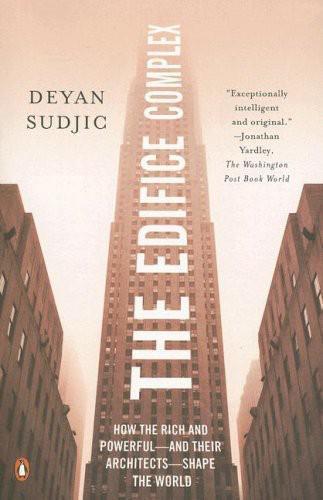
The Edifice Complex: How the Rich and Powerful--And Their Architects--Shape the World
by
Deyan Sudjic
Published 27 Nov 2006
What made the Gehry show at the Guggenheim so revealing was the way that you could pick away below the surface and find traces of just about all of the preoccupations of a particularly gaudy decade congealed within it, just as the landscape which had brought them into being was about to be transformed for ever. The show appeared to be about architecture, but it was really about the excess, egotism and greed of the 1990s. Here was a selection of the urban icons pursued with quixotic abandon by ambitious cities all over the world. Here were the trophy houses of the egotistical robber barons of the new economy. And here was the awkward relationship between architecture and art at its most raw and painfully exposed. No wonder that Richard Serra was getting so uncomfortable about the way that Gehry, his former friend and collaborator, was being talked about as much as an artist as an architect. ‘We are in a time now when the architect kind of rules,’ he said at the time on TV.
…
‘Enron shares Mr Gehry’s ongoing search for the moment of truth, the moment when the functional approach to a problem becomes infused with the artistry that produces a truly innovative solution. This is the search Enron embarks on every day, by questioning the conventional to change business paradigms and create new markets that will shape the New Economy. It is this shared sense of challenge that we admire most in Frank Gehry. We hope it will bring you as much inspiration as it has brought us.’ Skilling, along with several of his executives, eventually faced his own prolonged moment of truth when he surrendered to justice in Houston, having destroyed the jobs of thousands of employees and robbed countless shareholders of their savings.

What Technology Wants
by
Kevin Kelly
Published 14 Jul 2010
Table of Contents Title Page Copyright Page Chapter 1 - My Question PART ONE - ORIGINS Chapter 2 - Inventing Ourselves Chapter 3 - History of the Seventh Kingdom Chapter 4 - The Rise of Exotropy PART TWO - IMPERATIVES Chapter 5 - Deep Progress Chapter 6 - Ordained Becoming Chapter 7 - Convergence Chapter 8 - Listen to the Technology Chapter 9 - Choosing the Inevitable PART THREE - CHOICES Chapter 10 - The Unabomber Was Right Chapter 11 - Lessons of Amish Hackers Chapter 12 - Seeking Conviviality PART FOUR - DIRECTIONS Chapter 13 - Technology’s Trajectories Chapter 14 - Playing the Infinite Game Acknowledgements Annotated Reading List Source Notes Index ALSO BY KEVIN KELLY Out of Control: The New Biology of Machines, Social Systems, and the Economic World New Rules for the New Economy: 10 Radical Strategies for a Connected World Asia Grace VIKING Published by the Penguin Group Penguin Group (USA) Inc., 375 Hudson Street, New York, New York 10014, U.S.A. Penguin Group (Canada), 90 Eglinton Avenue East, Suite 700, Toronto, Ontario, Canada M4P 2Y3 (a division of Pearson Penguin Canada Inc.)
…
That is why we don’t see a Moore’s Law type of progress at work when scaling up: energy requirements scale up just as fast, and energy is a major limiting constraint, unlike information, which can be duplicated freely. This is also why we don’t see exponential progress in the performance of solar panels (only linear progress) or batteries—because they generate or store lots of energy. So our entire new economy is built around technologies that need little energy and scale down well—photons, electrons, bits, pixels, frequencies, and genes. As these inventions miniaturize, they reach closer to bare atoms, raw bits, and the essence of the immaterial. And so the fixed and inevitable path of their progress derives from this elemental essence.

Blockchain Revolution: How the Technology Behind Bitcoin Is Changing Money, Business, and the World
by
Don Tapscott
and
Alex Tapscott
Published 9 May 2016
Hernando de Soto, “The Capitalist Cure for Terrorism,” The Wall Street Journal, October 10, 2014; www.wsj.com/articles/the-capitalist-cure-for-terrorism-1412973796, accessed November 27, 2015. 18. Interview with Hernando de Soto, November 27, 2015. 19. Interview with Carlos Moreira, September 3, 2015. 20. Melanie Swan, Blockchain: Blueprint for a New Economy (Sebastopol, Calif.: O’Reilly Media, January 2015), 45. 21. Emily Spaven, “UK Government Exploring Use of Blockchain Recordkeeping,” CoinDesk, September 1, 2015; www.coindesk.com/uk-government-exploring-use-of-blockchain-recordkeeping/. 22. J. P. Buntinx, “‘Blockchain Technology’ Is Bringing Bitcoin to the Mainstream,” Bitcoinist.net, August 29, 2015; http://bitcoinist.net/blockchain-technology-bringing-bitcoin-mainstream/. 23.
…
See full report and recommendations here, including a description of models worldwide: www.judiciary.gov.uk/reviews/online-dispute-resolution/. 60. http://blog.counter-strike.net/index.php/overwatch/. 61. Environmental Defense Fund, www.edf.org/climate/how-cap-and-trade-works. 62. Swan, Blockchain: Blueprint for a New Economy. 63. Interview with Andreas Antonopoulos, July 20, 2015. Chapter 9: Freeing Culture on the Blockchain: Music to Our Ears 1. “2015 Women in Music Honours Announced,” M Online, PRS for Music, October 22, 2015; www.m-magazine.co.uk/news/2015-women-in-music-honours-announced/, accessed November 21, 2015. 2.
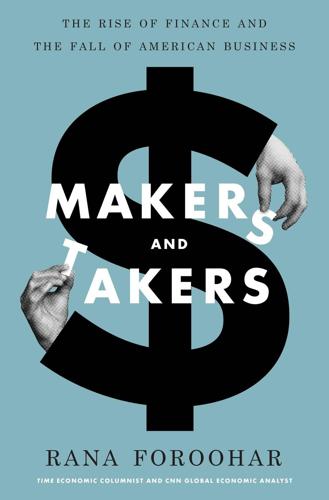
Makers and Takers: The Rise of Finance and the Fall of American Business
by
Rana Foroohar
Published 16 May 2016
Indeed, Clinton-era legislation that favored the markets over the real economy, and that was often a result of the revolving door between Wall Street and Washington, was a key means of turning the markets into the casino that they have become. Stock compensation and buybacks have been rising since the 1980s, but they really took a leap in the 1990s, when “new economy” tech firms began lobbying against efforts to introduce new accounting standards that would have forced companies to mark down the value of stock options on their books. One of the reasons that buybacks have burgeoned is that firms have been letting C-suite executives “buy company stock at below-market prices—and then pretending that nothing of value had changed hands,” as Stiglitz once pointedly remarked.
…
Cambridge, MA: Harvard University Press, 2011. Krugman, Paul. End This Depression Now! New York: W. W. Norton & Company, 2012. Lack, Simon. The Hedge Fund Mirage: The Illusion of Big Money and Why It’s Too Good to Be True. Hoboken, NJ: John Wiley & Sons, 2012. Lazonick, William. Sustainable Prosperity in the New Economy? Business Organization and High-Tech Employment in the United States. Kalamazoo, MI: W. E. Upjohn Institute for Employment Research, 2009. Lewis, Michael. Boomerang: Travels in the New Third World. New York: W. W. Norton & Company, 2011. ———. Liar’s Poker: Rising Through the Wreckage on Wall Street. 25th anniversary ed.

The One Device: The Secret History of the iPhone
by
Brian Merchant
Published 19 Jun 2017
Clearly, most of the breakout early apps weren’t so lowbrow—many early successes were games, like Tap Tap Revenge, Super Monkey Ball, and a Texas Hold’Em poker app, and many were truly exciting, like Pandora Radio and Shazam, which continue to be successful today. “Of course, now, everyone’s writing fart apps, but he was the original,” Grignon says. “Apple had minted this new economy. And the early gold diggers won big.” This new economy, now colloquially known as the app economy, has evolved into a multibillion-dollar market segment dominated by nouveau-riche Silicon Valley companies like Uber, Facebook, Snapchat, and Airbnb. The App Store is a vast universe, housing hopeful start-ups, time-wasting games, media platforms, spam clones, old businesses, art projects, and experiments with new interfaces.
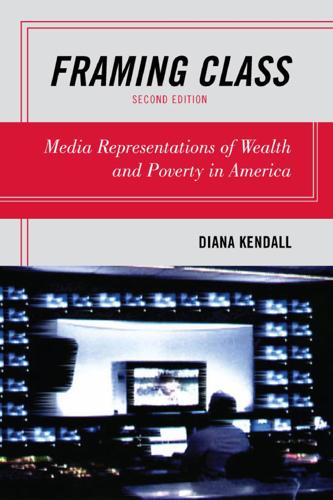
Framing Class: Media Representations of Wealth and Poverty in America
by
Diana Elizabeth Kendall
Published 27 Jul 2005
Quoted in Blumenthal, “As Levi’s Work Is Exported, Stress Stays Home,” A14. 114. Lydia Polgreen, “As Jobs Vanish, the Sweet Talk Could Turn Tough,” New York Times, October 12, 2003, A26. 115. Chris Isidore, “7.9 Million Jobs Lost—Many Forever,” CNNMoney.com, July 2, 2010, http://www.money.cnn.com/2010/07/02/news/economy/jobs_gone_for ever/index.htm (accessed July 27, 2010). 116. Lorrie Grant, “Retail Giant Wal-Mart Faces Challenges on Many Fronts: Protests, Allegations Are Price of Success, CEO Says,” USA Today, November 11, 2003, B1; Amy Tsao, “The Two Faces of Wal-Mart,” Businessweek, January 28, 2004, http://www.businessweek.com/bwdaily/dnflash/jan2004/nf20040128_6990_db014 .html (accessed February 2, 2004); “Wal-Mart Settles Illegal Immigrant Case for $11 M,” Fox News, March 19, 2005, http://www.foxnews.com/story/0,2933,150846,00 .html (accessed July 27, 2010). 117.
…
Journal of Black Studies 25 (1995): 692–711. “Inside the Middle Class: Bad Times Hit the Good Life.” Pew Social Trends. April 9, 2008. http://pewsocialtrends.org/pubs/706/middle-class-poll (accessed July 29, 2010). Isidore, Chris. “7.9 Million Jobs Lost—Many Forever.” CNNMoney.com. July 2, 2010. www.money.cnn.com/2010/07/02/news/economy/jobs_gone_forever/index .htm (accessed July 27, 2010). “It Would Never Work Out . . .” (cartoon). New Yorker, March 25, 2002, 75. Iyengar, Shanto. “Framing Responsibility for Political Issues: The Case of Poverty.” Political Behavior 12 (March 1990): 19–40. ———. Is Anyone Responsible? How Television Frames Political Issues.
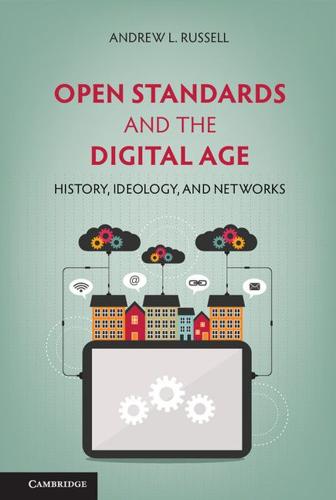
Open Standards and the Digital Age: History, Ideology, and Networks (Cambridge Studies in the Emergence of Global Enterprise)
by
Andrew L. Russell
Published 27 Apr 2014
In these strategic decisions, we can see Gherardi and his colleagues wrestling with practical questions that we now, with the wisdom of hindsight, can see in theoretical terms: When faced with diverse and complex purchasing needs, what did managers decide to purchase through market relations, what did they decide to build within corporate hierarchies, and what arrangements – hybrids of markets and hierarchies – did they pursue? Gherardi’s organizational responses to the two central problems of the “engineering of the present” – standardization within the Bell System and standardization across the boundaries of the Bell System – were, over the short term and medium term, extraordinarily successful. They generated new economies of scale and scope for the Bell System, and helped engineers extend their control over aspects of the telephone business that had proved to be elusive. Over the long term, however, Gherardi’s solutions worked too well and contributed to the Bell System’s ultimate demise. In this sense, there is a deep irony that the thorough program of standardization in the Bell System attracted the attention of American regulators in the Department of Justice and Federal Communications Commission beginning in the 1930s.
…
In the early 1960s, IBM executives responded to these problems with a strategy that replaced all existing models of IBM machines by centralizing design and production around a single family of computers: System/360.25 The chief architectural innovation of System/360 was its interchangeable components, including peripherals (such as storage devices, printers, and terminals) and software that customers could mix and match in order to meet their individual needs. From the standpoint of IBM executives and managers, the modular design of System/360 streamlined the design and manufacturing processes, which generated new economies of scale and scope through the reduction of variety and incompatibility. Standardization within the firm led to unprecedented success for IBM in the marketplace: the company received more than a thousand orders within a month of the System/360 announcement in April 1964, and IBM’s gross income more than doubled between 1965 and 1970.
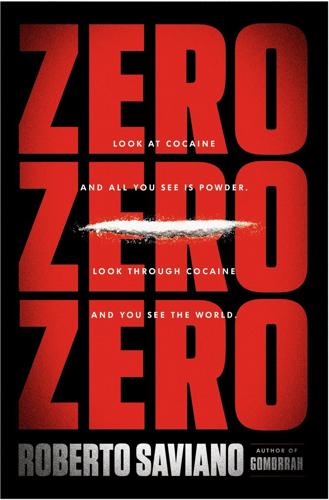
ZeroZeroZero
by
Roberto Saviano
Published 4 Apr 2013
Locatelli wants to carefully study this girl who has made her way into his Colombian partners’ good graces. Maria realizes what he’s up to, and for a moment she feels naked, but then she summons up all her coolness. She talks about taxes and interest rates, stocks, investment funds. She discusses the risks and potential of betting on the new economy and suggests a couple of profitable transactions involving currency exchange. It works. The boss believes she’s the real thing; the flow of money to the Antilles bank can continue. And yet the moments of terror are hardly over. The day Maria receives a briefcase containing $2 million she realizes that she’s being followed.
…
No business in the world is so dynamic, so relentlessly innovative, so loyal to the pure free market spirit as the global cocaine business. This is the reason cocaine became the merchandise par excellence at a time when markets began being dominated by stocks that were inflated with empty numbers, or securities as intangible as those driven by the new economy, which sold communication and make-believe. But cocaine is tangible. It uses the imaginary, bends it, invades it, fills it with itself. Every seemingly insurmountable limit is about to fall. The new mutation has already arrived, and it’s called liquid cocaine. Liquid cocaine can make its way inside any hollow object, can impregnate any saturatable material, can dissolve in any drink, any creamy or liquid product, practically without adding any telltale weight.

Smart Cities: Big Data, Civic Hackers, and the Quest for a New Utopia
by
Anthony M. Townsend
Published 29 Sep 2013
The idea was first proposed in 1964.80 The fourth way things could go wrong is economic stagnation. If the malaise of the developing world is too much growth, for the rich cities of the global north it may be too little. If smart technology doesn’t improve our productivity, we might not be able to pay for further improvements in energy efficiency. Many hope for a return to the “New Economy” of the late 1990s, when the United States experienced a historic period of rapid increases in productivity driven, we thought, by advances in information technology. But recent research has questioned this explanation. Robert Gordon at Northwestern University notes that the greatest productivity gains from information technology during that expansion were in manufacturing of durable goods, and that it was small in historical terms.
…
,” The Guardian Sustainable Business Energy Efficiency Hub, blog, June 1, 2001, http://www.guardian.co.uk/sustainable-business/amsterdam-smart-cities-work. 78Blake Alcott, “Jevons’ Paradox,” Ecological Economics 45, no. 1 (2005): 9-21. 79Robert Cervero, The Transit Metropolis (Washington, DC: Island Press, 1998), 169. 80Michele Dix, “The Central London Congestion Charging Scheme—From Conception to Implementation,” 2002, http://www.imprint-eu.org/public/Papers/imprint_Dix.pdf, 2. 81Robert J. Gordon, “Does the ‘New Economy’ Measure up to the Great Inventions of the Past?” (Cambridge, MA: National Bureau of Economic Research, 2000), http://www.nber.org/papers/w7833. Chapter 10. A New Civics for a Smart Century 1Oscar Wilde, The Soul of Man under Socialism (Portland, ME: Thomas B. Mosher, 1905), 39. Reprinted from The Fortnightly Review, Feburary 1, 1891, accessed through Internet Archive, http://archive.org/details/soulmanundersoc00wildgoog. 2Helen Meller, Patrick Geddes: Social Evolutionist and City Planner (New York: Routledge, 1990), 143. 3From “voices to voices, lip to lip.”
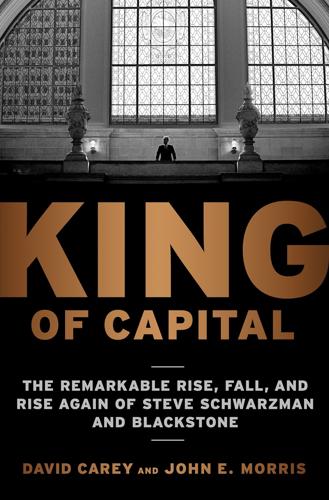
King of Capital: The Remarkable Rise, Fall, and Rise Again of Steve Schwarzman and Blackstone
by
David Carey
Published 7 Feb 2012
The prosaic, cash-generating businesses that traditionally had been the bread and butter of the private equity business—short-line railroads like Transtar, graphite makers like UCAR, and auto-parts makers like Collins & Aikman and American Axle—had fallen out of fashion. The “old economy” of boring, profitable, but slow-and-steady companies was being eclipsed by the high-tech “new economy.” The IPO of Netscape Communications in April 1995 is usually pegged as the turning point. At the time the Internet was still in its infancy. For most people, it meant e-mail and perhaps some America Online chat rooms. Netscape’s browser, which the company gave away free, enabled a new generation of websites loaded with photos and snappy typefaces and introduced a generation to what many still called by its formal name, the World Wide Web.
…
Blackstone couldn’t help but feel the pressure to jump on the bandwagon. Bret Pearlman, who became a partner in 2000, and other younger deal makers were lobbying to invest more in the tech sphere, and junior employees were clamoring to be paid partly in Internet company stocks, the preferred currency of New Economy workers. The firm was hearing it from some investors, too. When Schwarzman hit the road in 1999 to raise money for Blackstone’s new mezzanine debt fund, which would lend money to midsized businesses, one potential investor who preferred venture funds just scoffed. “I make more money in a month than you make in a year in your mezz fund if things go well,” he told Schwarzman.
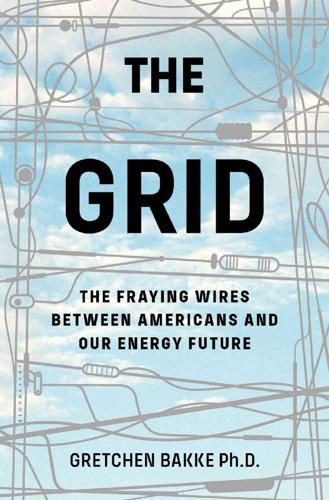
The Grid: The Fraying Wires Between Americans and Our Energy Future
by
Gretchen Bakke
Published 25 Jul 2016
Enron was not alone in exploiting the loopholes of California’s poorly made deregulation bill; smaller companies in San Francisco were doing the same or very similar kinds of transactions. But Enron’s relative size in concert with its broad organizational commitment to making money by whatever means possible lent a monstrousness to its undertakings that other new economy companies could only but aspire to. It has also been useful for the historical record that Enron collapsed, and criminally so, opening their internal workings in 2002 to intense public and legal scrutiny. Enron’s collapse was not the direct result of malfeasance in the manipulation of electricity markets; rather, it was a consequence of their poor management of debt, greed, and risk.
…
In California these consequences included the near bankruptcy of its two largest investor-owned utilities, the consumption of an $8 billion state budget surplus, and almost nine months in 2000–2001 of uncertain electricity supply as power plants were taken offline for “repairs” or the lines necessary to carry essential current between the northern and southern halves of the state were “overbooked.” As rolling blackouts became the rule, many new economy businesses, like Apple and Cisco Systems, as well as other electricity-dependent undertakings such as military bases and prisons, began to think about ways they might detach themselves from grid-provided power. Institutional grid defection in the wake of 2000–2001 became a sign not of radicalism but the inverse: wise organizations engineered ways to use the grid as a backup power system rather than as something upon which they must rely regardless of how poorly it was managed or how sporadically its product was delivered.
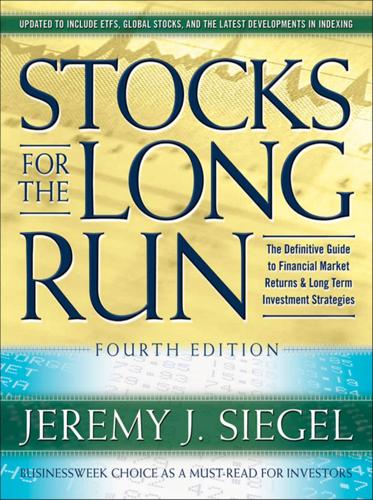
Stocks for the Long Run, 4th Edition: The Definitive Guide to Financial Market Returns & Long Term Investment Strategies
by
Jeremy J. Siegel
Published 18 Dec 2007
Furthermore, the dramatic fall in transactions costs combined with the increase in macroeconomic stability may also change the P-E ratio of stock prices to valuation metrics. How these events will impact future stock returns will be discussed in the next chapter. This page intentionally left blank 8 CHAPTER THE IMPACT OF ECONOMIC GROWTH ON MARKET VALUATION AND THE COMING AGE WAVE The term “new economy” has become, beginning in 2000, a fad in itself. It appears suddenly as a new name for our hopes and for economic progress due to recent technological advances, notably the Internet, and for our reasons to think that the future growth prospects are ever so brilliant. ROBERT SHILLER, 20011 What are the most important macrotrends in the economy that influence future stock market returns?
…
He said the experts think the Internet is the wave of the future. I’m selling some of our stocks that just aren’t moving and getting into the Internet stocks like Amazon, Yahoo!, and Inktomi. Jennifer: I’ve heard that those stocks are very speculative. Are you sure you know what you’re doing? Dave: Allan says that we are entering a “New Economy,” spurred by a communications revolution that is going to completely change the way we do business. Those stocks that we owned are Old Economy stocks. They had their time, but we should be investing for the future. I know these Internet stocks are volatile, and I’ll watch them very carefully so we won’t lose money.

Crypto: How the Code Rebels Beat the Government Saving Privacy in the Digital Age
by
Steven Levy
Published 15 Jan 2002
So she asked the people at Microsoft who had been working with her—Nathan Myhrvold and company counsel Bill Neukom—if they could convince the world’s most famous techno-geek to lobby her colleagues on the matter. I’m out on a political limb here, she pleaded. Without publicity, she had Bill Gates address the intelligence committee. The National Security stooges started to explain to the billionaire how important the export laws were, but the icon of the New Economy had little patience for being lectured. Gates let them know that was a bullshit reason. The committee members didn’t get offended—it was kind of a kick, getting snapped at by the world’s richest guy. You certainly had to take him seriously when he talked about what was good for business. Cantwell dug in her heels with the White House, too.
…
And they cleverly identified the legislators who would promote procrypto bills, not so much in anticipation of actually passing them, but to increase the already considerable pressure for strong-crypto détente. The lobbyists’ prize converts were a conservative Republican from Virginia, Robert Goodlatte, and a new-economy Democrat representing Silicon Valley, Zoe Lofgren. Goodlatte in particular was a firebrand on the issue, a newly born crypto head in pinstripes. “The first thing we did was have him spend time with the NSA on this, so he could hear the point of view from the other side,” says Heiman. After being inoculated by a full-contact classified briefing, Goodlatte then was served the alternative reality: crypto was already abroad, industry was in danger of losing billions, and so on.
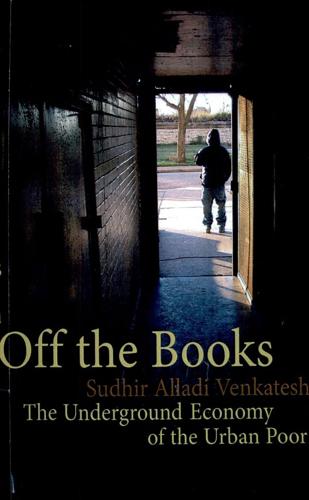
Off the Books
by
Sudhir Alladi Venkatesh
Robert Sampson has developed the notion of "collective efficacy"—the "working trust and shared willingness of residents to intervene in sharing social control. The concept of collective efficacy captures the link between cohesion—especially working trust—and shared expectations for action." See Sampson, "Neighborhood and Community: Collective Efficacy and Community Safety," The New Economy 11: 106-113, quote at 108. This inquiry may be seen as an empirical examination of a style of collectively efficacious practice that has emerged in contemporary inner cities. 15. Susan Saegert, "Unlikely Leaders, Extreme Circumstances: Older Black Women Building Community Households," American Journal of Community Psychology 17, no. 3 (1989): 295-316. 16.
…
We could extend this line of thinking further by considering the impact on cities, regions, and nation-states, as a number of scholars have done. See Saskia Sassen, The Global City: New York, London, Tokyo (Princeton: Princeton University Press, 2000); Barbara Ehrenreich and Arlie Hochshild, eds, Global Woman: Nannies, Maids, and Sex Workers in the New Economy (New York: Henry Holt, 2003); Bruno Dallago, The Irregular Economy: The "Underground" Economy and the "Black" Labour Market (Brookfield, Vt.: Dartmouth Publishing Co., 1990); J. J. Thomas, Informal Economic Activity (London: Harvester Wheatsheaf, 1992); Alejandro Fortes, Manuel Castells, and Lauren Benton, "Conclusion: The Policy Implications of Informality," in The Informal Economy: Studies in Advances and Less Developed Countries, ed.
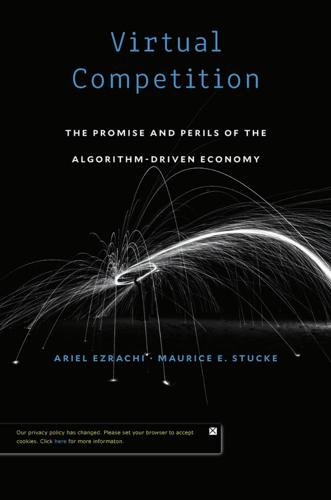
Virtual Competition
by
Ariel Ezrachi
and
Maurice E. Stucke
Published 30 Nov 2016
Thus, it is argued that most online markets should not possess the characteristics that make antitrust intervention (or regulation) necessary. Any claims for antitrust or regulatory intervention should be treated with suspicion. The intervention will likely be unnecessary and harm consumers, as its aim will be to protect firms in the old economy from the new economy. While the algorithm-driven economy may herald the decline of “traditional” competition, the era of machine learning fueled by Big Data will unleash greater efficiencies that improve our welfare. Of course, we accept and acknowledge these benefits. But once we look beyond the shiny outer layer, the emerging online markets reveal several significant dangers.
…
Microsoft Corp., 147 F.3d 935, 948 (D.C. Cir. 1998) (“Antitrust scholars have long recognized the undesirability of having courts oversee product design, and any dampening of technological innovation would be at cross-purposes with antitrust law”); compare John M. Newman, “Anticompetitive Product Design in the New Economy,” Florida State University Law Review 39 (2012): 681, proposing a structured, efficient, and rational method for analyzing design-related conduct in tech markets. 17. Maureen K. Ohlhausen, A Smarter Section 5 (Washington DC: U.S. Federal Trade Commission, September 25, 2015), 12, https://www.ftc.gov/system/fi les /documents/public _ statements/804511/150925smartersection5.pdf. 18.

Stacy Mitchell
by
Big-Box Swindle The True Cost of Mega-Retailers
and
the Fight for America's Independent Businesses (2006)
Seidman, “Smart Growth and Economic Development: Evidence and Lessons for the Future of Massachusetts,” report to the Boston Society of Architects’ Civic Initiative for Smart Growth, 2004, 17–19; David Salvesen and Henry Renski, “The Importance of Quality of Life in the Location Decisions of New Economy Firms” (University of North Carolina Center for Urban and Regional Studies, January 2003); Collaborative Economics, “Linking the New Economy to the Livable Community” (white paper sponsored by the James Irvine Foundation, 1998); John L. Crompton and Lisa L. Love, “The Role of Quality of Life in Business (Re)location Decisions,” Journal of Business Research (Mar. 1999); Local Government Commission, “The Economic Benefits of Walkable Communities” (undated report); Growth in the Heartland: Challenges and Opportunities (Washington, D.C.: Brookings Institution, Dec. 6, 2002), 50–51; David Bollier, How Smart Growth Can Stop NOTES 273 Sprawl (Washington, D.C.: Essential Books, 1998); John Crompton, Parks and Economic Development (Chicago: APA Planning Advisory Service, 2001); Angus King, speech given at the Smart Growth Summit in Augusta, Maine, Dec. 10, 2004.
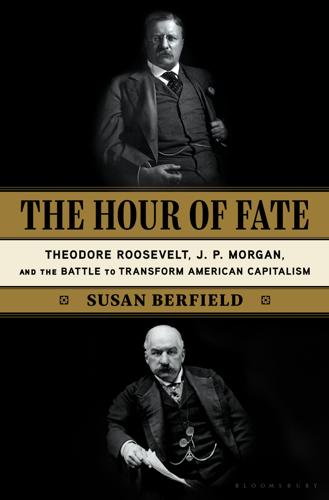
The Hour of Fate
by
Susan Berfield
A few specifically banned trusts altogether. Sherman took a different approach. He used the broad language of the common law, old and well-established principles, to assure conservative senators that they weren’t creating new rules but merely enabling the federal courts to apply existing standards to the new economy. The Sherman Antitrust Act declared illegal every contract, combination of companies, or conspiracy that restrained or monopolized interstate trade or commerce. And then, as the state laws did, it imposed criminal penalties: Those found guilty of forming such combinations were subject to fines of up to five thousand dollars and a year in jail.
…
But in tone and substance Roosevelt’s speech was, as one paper, noted “more devoted to business48 and fruitful, practical suggestions on every-day affairs than we have ever seen in a President’s message.” Roosevelt promised the working class, and signaled to big business, that the government would not be a spectator in the new economy. The audience in the gallery cheered. Roosevelt, in the family’s quarters at the White House, clapped when he learned of the response. Investors, reacting only to Roosevelt’s praise of industrialization and already familiar with his plans to seek more disclosure, sent the stock market soaring.

The Lonely Century: How Isolation Imperils Our Future
by
Noreena Hertz
Published 13 May 2020
They should also consider imposing a robot tax – something Bill Gates has championed.101 This makes even more sense when you consider the fact that by not taxing robots as we do human labour, we’re essentially subsidising automation by making it cheaper for companies to use robots than humans, whether they are more efficient or not.102 To be clear, I’m not suggesting a blanket tax on any object deemed to be a robot: its application should be more specific, such as limiting the deductions that companies can take on investments in automation, or introducing the equivalent of payroll taxes for robots hired to replace human workers. Such moves would allow governments to slow the advancement of automation whilst, at the same time, enable them to build a war chest. This could be used to help fund initiatives to up-skill workers for the jobs that do exist in the new economy, as well as cover the significant additional costs governments will incur if they are to provide decent levels of income support to those no longer able to find traditional paid employment. Despite its potential, the European Parliament dismissed a robot tax proposal in 2017 on the grounds that it would disadvantage European robot developers and manufacturers in the global market.
…
See, for instance, Shoshana Zuboff, In the Age of the Smart Machine: The Future of Work and Power (Basic Books, 1988); Barbara Garson, The Electronic Sweatshop: How Computers Are Turning the Office of the Future into the Factory of the Past (Simon & Schuster, 1988); Michael Wallace, ‘Brave New Workplace: Technology and Work in the New Economy’, Work and Occupations 16, no. 4 (1989), 363–92. 41 Ivan Manokha, ‘New Means of Workplace Surveillance: From the Gaze of the Supervisor to the Digitalization of Employees’, Monthly Review, 1 February 2019, https://monthlyreview.org/2019/02/01/new-means-of-workplace-surveillance/. 42 In 1985, 30% of OECD workers were unionized; by 2019 this had fallen to 16%.
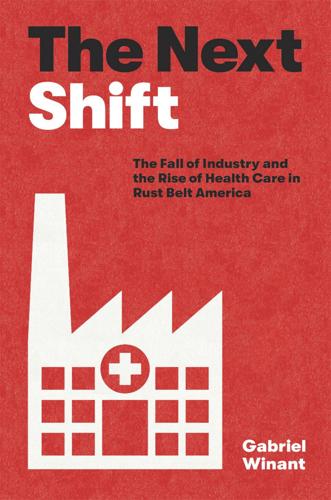
The Next Shift: The Fall of Industry and the Rise of Health Care in Rust Belt America
by
Gabriel Winant
Published 23 Mar 2021
“The decline of manufacturing employment was accompanied by a steady increase of employment in service industries,” observed a RAND Corporation study. “For many, the loss of manufacturing jobs meant unemployment or lower-paying jobs in new occupations.” In this typical analysis, the relationship between the two processes appeared to be coincidental.3 The rapid growth in the late 1970s of the largest “new economy” sector, health care, resulted from the interaction between the existing institutions of the welfare state and the broad effects of industrial decline. As growing numbers of people fell out of the net of economic security provided by industrial employment and the social institutions that surrounded it, people turned to their health care coverage to meet their changing social needs.
…
Despite some ambivalence, he grasped the reality of deindustrialization, which many in the ranks of labor continued to ignore, and he searched for egalitarian possibilities within it. He managed to identify a relationship between the displacement of industrial workers and the growth of the new service economy, although, like most observers, he did not yet apprehend just how little that new economy would provide for his working-class brothers and sisters. The rank-and-file organizations that formed Sadlowski’s grassroots base remained important sources of working-class solidarity, fighting for safety, nondiscrimination, and democracy on the job. They captured the leadership of Local 1397 at Homestead Works and turned it into a regional base of working-class radicalism in steel’s final decade.
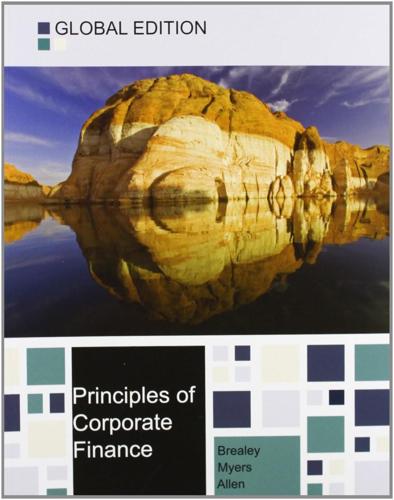
Principles of Corporate Finance
by
Richard A. Brealey
,
Stewart C. Myers
and
Franklin Allen
Published 15 Feb 2014
Prepare a forecast showing how NPV changes if the mine reopening is delayed to year 1, 2, 3, 4 or 5. Assume that the price of silver will appreciate at 4% per year. When should you invest if the cost of capital is 14%? What if the cost of capital is 20%? MINI-CASE ● ● ● ● ● New Economy Transport (A) The New Economy Transport Company (NETCO) was formed in 1959 to carry cargo and passengers between ports in the Pacific Northwest and Alaska. By 2012 its fleet had grown to four vessels, including a small dry-cargo vessel, the Vital Spark. The Vital Spark is 25 years old and badly in need of an overhaul.
…
/ The Verdict on IRR 5-4 Choosing Capital Investments When Resources Are Limited An Easy Problem in Capital Rationing/Uses of Capital Rationing Models Summary Further Reading Problem Sets Mini-Case: Vegetron’s CFO Calls Again 6 Making Investment Decisions with the Net Present Value Rule 6-1 Applying the Net Present Value Rule Rule 1: Only Cash Flow Is Relevant/Rule 2: Estimate Cash Flows on an Incremental Basis/Rule 3: Treat Inflation Consistently/Rule 4: Separate Investment and Financing Decisions 6-2 Example—IM&C’s Fertilizer Project Separating Investment and Financing Decisions/Investments in Working Capital/A Further Note on Depreciation/A Final Comment on Taxes/Project Analysis/Calculating NPV in Other Countries and Currencies 6-3 Using the NPV Rule to Choose among Projects Problem 1: The Investment Timing Decision/Problem 2: The Choice between Long- and Short-Lived Equipment/Problem 3: When to Replace an Old Machine/Problem 4: Cost of Excess Capacity Summary Problem Sets Mini-Case: New Economy Transport (A) and (B) Part Two: Risk 7 Introduction to Risk and Return 7-1 Over a Century of Capital Market History in One Easy Lesson Arithmetic Averages and Compound Annual Returns/Using Historical Evidence to Evaluate Today’s Cost of Capital/Dividend Yields and the Risk Premium 7-2 Measuring Portfolio Risk Variance and Standard Deviation/Measuring Variability/How Diversification Reduces Risk 7-3 Calculating Portfolio Risk General Formula for Computing Portfolio Risk/Limits to Diversification 7-4 How Individual Securities Affect Portfolio Risk Market Risk Is Measured by Beta/Why Security Betas Determine Portfolio Risk 7-5 Diversification and Value Additivity Summary Further Reading Problem Sets Finance on the Web 8 Portfolio Theory and the Capital Asset Pricing Model 8-1 Harry Markowitz and the Birth of Portfolio Theory Combining Stocks into Portfolios/We Introduce Borrowing and Lending 8-2 The Relationship Between Risk and Return Some Estimates of Expected Returns/Review of the Capital Asset Pricing Model/What If a Stock Did Not Lie on the Security Market Line?
…
Calculate the NPV of the proposed overhaul of the Vital Spark, with and without the new engine and control system. To do the calculation, you will have to prepare a spreadsheet table showing all costs after taxes over the vessel’s remaining economic life. Take special care with your assumptions about depreciation tax shields and inflation. New Economy Transport (B) There is no question that the Vital Spark needs an overhaul soon. However, Mr. Handy feels it unwise to proceed without also considering the purchase of a new vessel. Cohn and Doyle, Inc., a Wisconsin shipyard, has approached NETCO with a design incorporating a Kort nozzle, extensively automated navigation and power control systems, and much more comfortable accommodations for the crew.

The Golden Ticket: P, NP, and the Search for the Impossible
by
Lance Fortnow
Published 30 Mar 2013
Universities are creating new courses in “Urbana optimization” that show how to take any problem and find the quickest and simplest way to use the Urbana algorithm to solve it. The algorithm will create far more jobs than were lost. Still, many feel anger against the algorithm on behalf of those people who lost their jobs and can’t fit into the new economy. Governments continue to pass laws to protect people from many of the consequences of the Urbana algorithm, but you can’t put technology back in the bottle. Humanity has quickly adapted, and only a few outspoken people in polls would be willing to turn back the clock and go back to that ancient world of 2012, before an algorithm gave them the beautiful world.
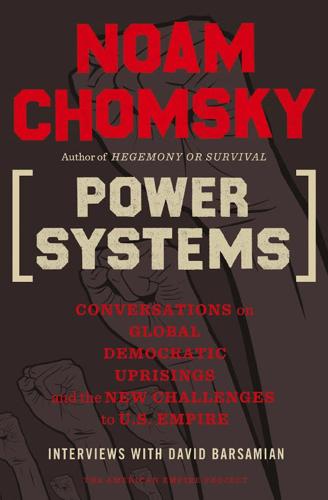
Power Systems: Conversations on Global Democratic Uprisings and the New Challenges to U.S. Empire
by
Noam Chomsky
and
David Barsamian
Published 1 Nov 2012
L. Doctorow, Ragtime (New York: Plume, 1997). 5. Mohammed Hanif, A Case of Exploding Mangoes (New York: Alfred A. Knopf, 2008). 6. James Rainey, “Wikipedia to Go Offline to Protest Anti-Piracy Legislation,” Los Angeles Times, 17 January 2012. 7. Jonathan Weisman, “In Fight over Piracy Bills, New Economy Rises Against Old,” New York Times, 18 January 2012. 8. Dean Baker, Financing Drug Research: What Are the Issues? (Washington, DC: Center for Economic and Policy Research, September 2004). 9. Dean Baker, “The Surefire Way to End Online Piracy: End Copyright,” Truthout.org, 23 January 2012. 10.
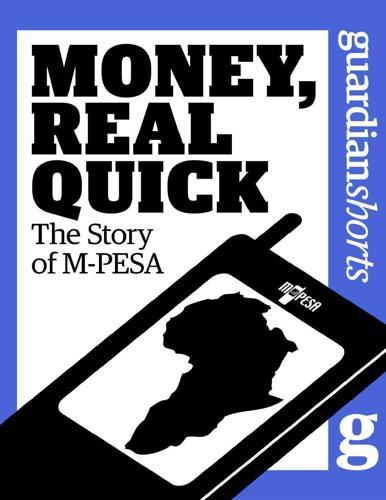
Money, Real Quick: The Story of M-PESA
by
Tonny K. Omwansa
,
Nicholas P. Sullivan
and
The Guardian
Published 28 Feb 2012
“What are the lessons of Kenya’s ICT revolution for the broader economy of Kenya and for other countries? First, this revolution is not just for the young tech-savvy programmers that huddle at iHub. ICT is no longer a niche sector of the economy. It has become mainstream and affects virtually every actor and every sector of the economy. It’s misleading to talk about a so-called “new economy” because it has in fact changed the way the old economy is operating. Over the next years, the biggest innovations will probably come from the incubation of technology in “traditional” sectors. The financial sector is already in the midst of this transformation, with mobile money as the most visible sign.

Melting Pot or Civil War?: A Son of Immigrants Makes the Case Against Open Borders
by
Reihan Salam
Published 24 Sep 2018
“A new generation of anti-gentrification radicals are on the march in Los Angeles—and around the country.” Yahoo News, March 5, 2018. www.yahoo.com/news/new-generation-anti-gentrification-radicals-march-los-angeles-around-country-100000522.html. 10. Vega, Tanzina. “Why the racial wealth gap won’t go away.” CNN Money, January 26, 2016. money.cnn.com/2016/01/25/news/economy/racial-wealth-gap/index.html. 11. Romano, Andrew and Garance Frankie-Ruta. “A New Generation Of Anti-Gentrification Radicals Are On The March In Los Angeles—And Around The Country.” HuffPost. https://www.huffingtonpost.com/entry/a-new-generation-of-anti-gentrification-radicals-are-on-the-march-in-los-angeles-and-around-the-country-us_5a9d6c45e4b0479c0255adec. 12.
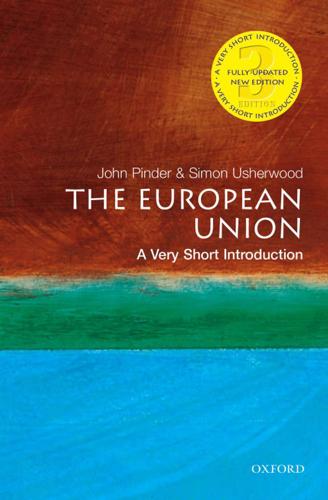
The European Union
by
John Pinder
and
Simon Usherwood
Published 1 Jan 2001
Cooperation based on the powers and instruments of member states can be useful, but would not achieve much without the hard core of common powers and instruments. The single market legislation provides a framework for economic strength and prosperity, even if it remains incomplete in some significant sectors and will need further development to cater adequately for the new economy including e-commerce and information technology; and, for member states that have adopted the euro, the single currency completes the single market in the monetary domain. The budget has transferred resources to sectors deemed to require support, originally to agriculture but increasingly to less-developed regions and member states.
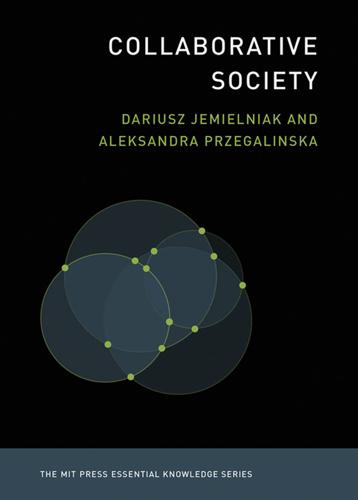
Collaborative Society
by
Dariusz Jemielniak
and
Aleksandra Przegalinska
Published 18 Feb 2020
C. Heckscher, P. S. Adler, and P. Adler, The Firm as a Collaborative Community: Reconstructing Trust in the Knowledge Economy (Oxford University Press, 2007). 41. S. Zukin and M. Papadantonakis, “Hackathons as Co-optation Ritual: Socializing Workers and Institutionalizing Innovation in the ‘New’ Economy,” in Precarious Work, 157–181. 42. https://perma.cc/V7E8-LT2W 43. N. Schneider, “An Internet of Ownership: Democratic Design for the Online Economy,” Sociology Review 66 no. 9 (2018): 320–340. 44. https://perma.cc/TDF5-C2AK 45. H. Lieberman and C. Fry, “Will Software Ever Work?” Communications of the ACM 44 (2001): 122–124. 46. https://perma.cc/8VFF-S25A 47. https://perma.cc/S3CR-7U5D Further Reading More about collaborative consumption Botsman, R., and R.

The Meritocracy Trap: How America's Foundational Myth Feeds Inequality, Dismantles the Middle Class, and Devours the Elite
by
Daniel Markovits
Published 14 Sep 2019
lower rate than his secretary: See Warren Buffett, “Stop Coddling the Super-Rich,” New York Times, August 14, 2011, accessed July 23, 2018, www.nytimes.com/2011/08/15/opinion/stop-coddling-the-super-rich.html?_r=0, and Chris Isidore, “Buffett Says He’s Still Paying Lower Tax Rate Than His Secretary,” CNN Money, March 4, 2013, accessed July 23, 2018, https://money.cnn.com/2013/03/04/news/economy/buffett-secretary-taxes/index.html. become effectively flat: When the payroll taxes that fund Social Security and Medicare and also state and local taxes are taken into account, the average overall tax rates in the United States today are almost totally flat. In a typical recent year, the bottom fifth of earners receive 3 percent of income and pay 2 percent of taxes; the middle fifth receive 11 percent and pay 10 percent; and the top 1 percent receive 21 percent and pay 22 percent.
…
In one detailed study from the telecommunications sector in the mid-1990s, for example, 93 percent of middle managers reported increased workloads following restructuring. See Rosemary Batt, “From Bureaucracy to Enterprise? The Changing Jobs and Careers of Managers in Telecommunications Service,” in Paul Osterman, ed., Broken Ladders: Managerial Careers in the New Economy (Oxford: Oxford University Press, 1996), 73. See also Peter Cappelli, The New Deal at Work: Managing the Market-Driven Workforce (Boston: Harvard Business School Press, 1999), 129–30. Hereafter cited as Cappelli, The New Deal at Work. Managers’ hours grew steadily: Daniel Feldman, “Managers’ Propensity to Work Long Hours: A Multilevel Analysis,” Human Resource Management Review 12 (2002): 339.
…
Goldstein adds that Icahn attributed Japan’s then-greater manufacturing productivity growth to “our lack of managerial talent and the strangling bureaucracy that exists in most of corporate America.” from 1:5 to 1:30: See Rosemary Batt, “From Bureaucracy to Enterprise? The Changing Jobs and Careers of Managers in Telecommunications Service,” in Broken Ladders: Managerial Careers in the New Economy, ed. Paul Osterman (New York: Oxford University Press, 1996), 55–80; Goldstein, “Revenge of the Managers,” 273. twice the rate of nonmanagerial workers: Managerial displacement rates roughly doubled over these decades (even as displacement rates for nonmanagerial workers declined). See Jennifer Gardner, “Worker Displacement: A Decade of Change,” Monthly Labor Review 118 (1995): 45–57; Goldstein, “Revenge of the Managers,” 273.
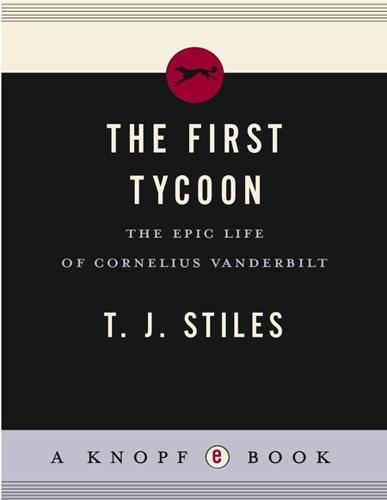
The First Tycoon
by
T.J. Stiles
Published 14 Aug 2009
Even at the half century, the notion of dividing a company into shares, treating each share as property, and then allowing its value to fluctuate, just seemed wrong, even immoral to them.11 The rabble and their rousers were not the only Americans who had difficulty grasping the abstractions of the new economy. Most of those merchants and lawyers who paid New Year's calls on Fifth Avenue—not to mention the businessmen in smaller towns and villages around the country—still worked in personal enterprises, owned by single proprietors or small partnerships. Corporations remained so few that the stock exchange traded shares—and bonds—one at a time.
…
The age of unspecialized merchants and skilled artisans began to fade as mills, factories, banks, and railroads rose in their place. Most Americans still worked on their own farms, in their own shops, or for small partnerships or personal businesses, but New York (and New England) presaged a future of industrialization and incorporation, of stockholders, managers, and wage workers. Unquestionably the new economy worked wonders, creating a highly productive, exceedingly wealthy society; but in 1857 the great self-directed orchestra of New York threatened to break apart into cacophony and chaos. In the middle of June, New York's policemen divided into two camps: the Metropolitan Police, organized by the Republican-controlled state legislature, and the Municipal Police, under the control of Mayor Wood.
…
Aspinwall replied that this demand was a “new feature,” that he could not possibly speak for the stockholders as individuals. “It is a great pity,” Vanderbilt concluded.89 This argument reveals the culture of American business in a moment of transition. On the eve of 1860, after decades of experience with—indeed, mastery of—the abstractions of the new economy, Vanderbilt and his ring still saw little distinction between the corporation and its stockholders. Theirs was not an elaborately worked-out philosophical position; rather, it was the product of a long tradition of controlling competition with formal and informal agreements—as well as raw self-interest.
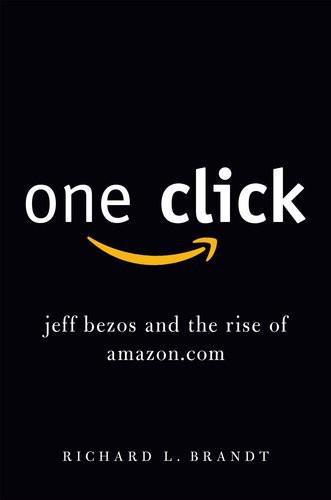
One Click: Jeff Bezos and the Rise of Amazon.com
by
Richard L. Brandt
Published 27 Oct 2011
(When Google announced its bookselling business in 2010, privacy advocates even complained that would give the company too much information about what books people are buying, seemingly having forgotten about Amazon’s database altogether.) Still, throughout 1999, Amazon’s stock price continued to soar like Icarus trying out new wings. Wall Street analysts and others who kept warning about the company’s lack of profitability were dismissed as old economy pessimists who didn’t understand the new economy of the Internet. In April 1998, Keith Benjamin, an Internet analyst with BancAmerica Robertson Stephens in San Francisco, enthusiastically called Amazon “the poster child of Internet commerce.” Amazon was also the poster child for Henry Blodget, an Internet analyst with Merrill Lynch, who became famous for his seemingly uncanny projections of the amazing growth of Amazon and other Internet stocks.
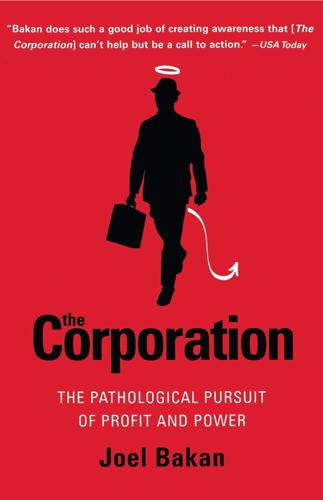
The Corporation: The Pathological Pursuit of Profit and Power
by
Joel Bakan
Published 1 Jan 2003
"The internal politics of Nazi Germany 'should not be considered the business of the management of General Motors,' Sloan explained in a letter to a concerned shareholder dated April 6, 1939. 'We must conduct ourselves [in Germany] as a German organization.... We have no right to shut down the plant.' " 7. According to David Jessup, executive director of New Economy Information Service, an organization whose survey data found a disturbing trend by U.S. corporations to invest in authoritarian countries, "I doubt that the issue of democracy-or-no-democracy is on businessmen's minds when they make an investment decision. But maybe it's an unconscious preference [for authoritarian countries]."
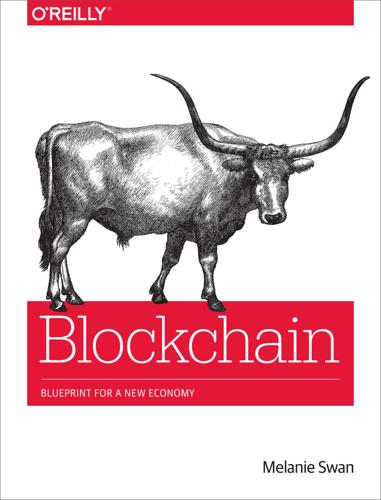
Blockchain: Blueprint for a New Economy
by
Melanie Swan
Published 22 Jan 2014
Conclusion The Blockchain Is an Information Technology Blockchain AI: Consensus as the Mechanism to Foster “Friendly” AI Large Possibility Space for Intelligence Only Friendly AIs Are Able to Get Their Transactions Executed Smart Contract Advocates on Behalf of Digital Intelligence Blockchain Consensus Increases the Information Resolution of the Universe A. Cryptocurrency Basics Public/Private-Key Cryptography 101 B. Ledra Capital Mega Master Blockchain List Endnotes and References Index Blockchain Blueprint for a New Economy Melanie Swan Blockchain by Melanie Swan Copyright © 2015 Melanie Swan. All rights reserved. Printed in the United States of America. Published by O’Reilly Media, Inc., 1005 Gravenstein Highway North, Sebastopol, CA 95472. O’Reilly books may be purchased for educational, business, or sales promotional use.

Big Capital: Who Is London For?
by
Anna Minton
Published 31 May 2017
The bedroom tax presents a mirror image of Airbnb. In a society where the ideal of public housing has collapsed, a financial penalty is imposed on people in social housing with a spare room, while those who are lucky enough to own a house with one find themselves with an additional source of revenue. Another feature of the new economy in private renting is property guardianship, where developers offer lower rents to people prepared to live in properties due to be redeveloped. Often these are in edgy locations such as Goldfinger’s Balfron Tower in East London, and the community of artists who move in briefly also brings a cachet which adds to the appealing nature of an area in the throes of change.
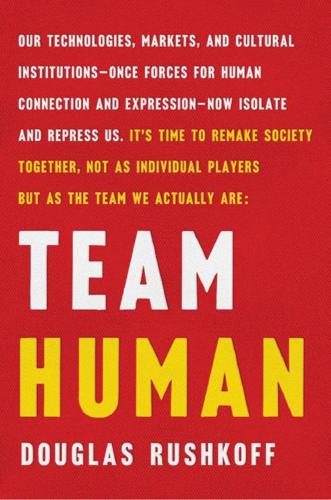
Team Human
by
Douglas Rushkoff
Published 22 Jan 2019
the New York Stock Exchange was actually purchased by its derivatives exchange in 2013 Nina Mehta and Nandini Sukumar, “Intercontinental Exchange to Acquire NYSE for $8.2 Billion,” Bloomberg, December 20, 2012. 47. digital technology came to the rescue, providing virtual territory for capital’s expansion Joel Hyatt, Peter Leyden, and Peter Schwartz, The Long Boom: A Vision for the Coming Age of Prosperity (New York: Basic Books, 2000). Kevin Kelly, New Rules for a New Economy (London: Penguin, 1999). corporate returns on assets have been steadily declining for over seventy-five years John Hagel et al., foreword, The Shift Index 2013: The 2013 Shift Index Series (New York: Deloitte, 2013). 48. One or two superstars get all the plays, and everyone else sells almost nothing M.
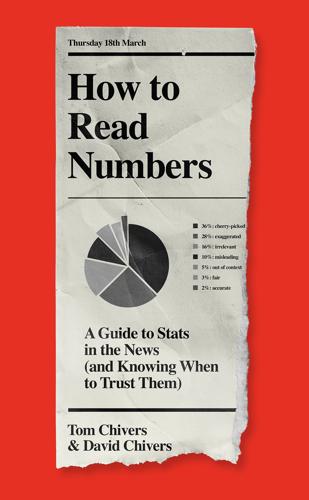
How to Read Numbers: A Guide to Statistics in the News (And Knowing When to Trust Them)
by
Tom Chivers
and
David Chivers
Published 18 Mar 2021
‘India surpasses France, UK to become world’s 5th largest economy: IMF’, Business Today, 23 February 2020 https://www.businesstoday.in/current/economy-politics/india-surpasses-france-uk-to-become-world-5th-largest-economy-imf/story/396717.html 3. Alanna Petroff, ‘Britain crashes out of world’s top 5 economies’, CNN, 2017 https://money.cnn.com/2017/11/22/news/economy/uk-france-biggest-economies-in-the-world/index.html 4. Darren Boyle, ‘India overtakes Britain as the world’s sixth largest economy (so why are WE still planning to send THEM £130 million in aid by 2018?)’, the Daily Mail, 2016 https://www.dailymail.co.uk/news/article-4056296/India-overtakes-Britain-world-s-sixth-largest-economy-earth-planning-send-130-million-aid-end-2018.html 5.

Physics of the Future: How Science Will Shape Human Destiny and Our Daily Lives by the Year 2100
by
Michio Kaku
Published 15 Mar 2011
Friedman, “Green the Bailout,” New York Times, September 28, 2008, p. WK11, www.nytimes.com/2008/09/28/opinion/28friedman.html. 6 From 1900 to 1925, the number of automobile start-up companies: Steve Lohr, “New Economy; Despite Its Epochal Name, the Clicks-and-Mortar Age May Be Quietly Assimilated,” New York Times, October 8, 2001, www.nytimes.com/2001/10/08/business/new-economy-despite-its-epochal-name-clicks-mortar-age-may-be-quietly.html?scp=30&sq=automobile&st=nyt. 7 “The early 21st century saw a boom”: Ibid. 8 “The do-it-yourself model”: Charles Gasparino, “Merrill Lynch to Offer Online Trading,” ZDNet News, June 1, 1999, www.zdnet.com/news/merrill-lynch-to-offer-online-trading/95883. 9 “Rarely in history has the leader in an industry”: Ibid. 10 “In practice, the vast bulk of this ‘information’ ”: McRae, p. 175. 11 “Today, knowledge and skills”: Thurow, p. 68. 12 “With everything else dropping out of the competitive equation”: Thurow, p. 74. 13 “in 1991 Britain became”: McRae, p. 12. 14 “After correcting for general inflation”: Thurow, p. 67. 15 “The prolonged migration”: James Grant, “Sometimes the Economy Needs a Setback,” New York Times, September 9, 2001, www.nytimes.com/2001/09/09/opinion/sometimes-the-economy-needs-a-setback.html. 16 “Success or failure depends”: Thurow, p. 72. 17 “The old motors of growth”: McRae, pp. 12–13. 18 “we are told by the World Bank that nearly 2.8 billion people”: Toffler, p. 288. 8.
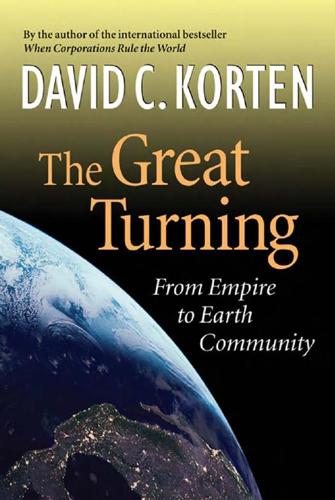
The Great Turning: From Empire to Earth Community
by
David C. Korten
Published 1 Jan 2001
To draw on the butterfly metaphor, we might think of them as the imaginal buds of the new culture. With time, individual communities of congruence reach out to form alliances with others to create larger cultural spaces, such as a farmers’ market or food co-op; these create the imaginal buds of a new economy and allow participants to live more authentic and fulfilling lives. Gradually they build the power to transform or displace the institutions of the dominant culture. The Opportunity 85 Such communities and alliances formed in significant numbers during the latter half of the twentieth century to bring forth great social movements for national independence, human and civil rights, women’s rights, peace, environmental protection, and economic justice.
…
Where local production is not practical, BALLE chapters promote trading relationships between local-economy enterprises in different localities and countries. Innovative graduate business schools, such as the Bainbridge Graduate Institute, are creating curricula geared to preparing managers for a new economy whose defining goals are social and environmental health. Co-op America supports the marketing efforts of independent green businesses. The American Independent Business Alliance and the New Rules Project of the Institute for Local Self-Reliance help communities develop policy frameworks supportive of local independent businesses.4 These are only a few of many organizations dedicated to supporting the emergence of locally rooted, life-serving economies in the United States.
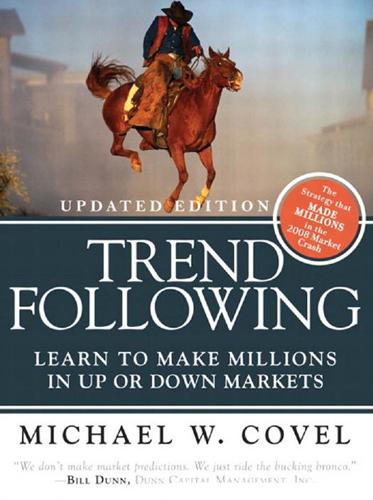
Trend Following: How Great Traders Make Millions in Up or Down Markets
by
Michael W. Covel
Published 19 Mar 2007
By monitoring “fundamentals” for a particular market, one can supposedly predict a change in market direction before that change has been reflected in the price of the market with the belief that you can then make money from that knowledge. The vast majority of Wall Street uses fundamental analysis alone. They are the academics, brokers, and analysts who spoke highly of the new economy during the dot-com craze. These same Wall Street players brought millions of players into the real estate and credit bubbles of 2008. Millions bought into their rosy fundamental projections and rode bubbles straight up with no clue how to exit when those bubbles finally burst. Consider an exchange between a questioner and President Bush at a December 17, 2007 press conference: Q: “I wanted to ask you [Mr.
…
They may have a little relevance for the next 25 years. But there is no one in the year 2000 that you can convince to jettison the belief that 200 years of performance will not cause stocks to grow to the sky. Right now people believe in data that supports the inevitable growth in prices of stocks within a new landscape or new economy. What will be new to them is an inevitable bear market.”40 For all his talk about avoiding predictions, Henry is making one here. He is predicting that stocks can’t go up forever because eventually trends reverse themselves. He is also pointing out that as a trend follower, he will be prepared whenever they do to take action and potentially profit (which he did to great profit during the market crash of October 2008).
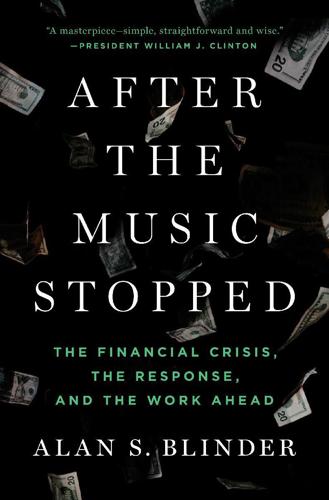
After the Music Stopped: The Financial Crisis, the Response, and the Work Ahead
by
Alan S. Blinder
Published 24 Jan 2013
The upshot is that reasonable people can and do disagree over what portion of any asset-price increase constitutes a bubble and what portion reflects improved fundamentals. During a bubble, we often hear stories about how some grand new era makes previous valuation standards obsolete. Remember how the Internet was going to create a whole New Economy with different rules that made eyeballs more important than profits? It didn’t. The Housing Bubble All that said, there can be little doubt that the United States experienced a pretty gigantic housing bubble that blew up and then burst with disastrous consequences in, roughly, the years 2000–2009.
…
“How’s Geithner’s Home Holding Up?” Bloomberg Businessweek, May 20, 2010. Lowenstein, Roger. When Genius Failed: The Rise and Fall of Long-Term Capital Management. New York: Random House, 2000. Luhby, Tami. “FDIC’s Bair Pushes Aggressive Mortgage Plan.” CNN Money, November 14, 2008. http://money.cnn.com/2008/11/14/news/economy/fdic_bair/index.htm. Mallaby, Sebastian. More Money Than God. New York: Penguin Press, 2010. McHugh, David. “Draghi: ECB to Do ‘Whatever It Takes’ to Save Euro.” Associated Press, July 26, 2012. http://bigstory.ap.org/article/draghi-ecb-do-whatever-it-takes-save-euro. Meltzer, Allan H. “Policy Principles: Lessons from the Fed’s Past,” in The Road Ahead for the Fed.
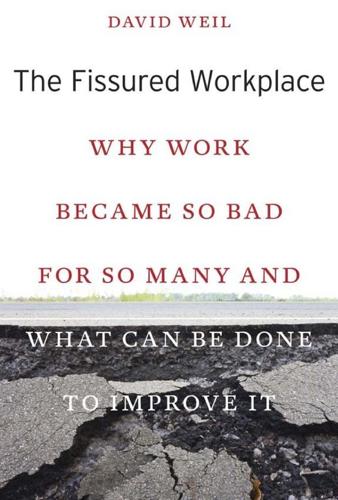
The Fissured Workplace
by
David Weil
Published 17 Feb 2014
“The Right to Know: An Argument for Informing Employees of Their Rights under the National Labor Relations Act.” Harvard Journal on Legislation 32: 431–471. Dey, Matthew, Susan Houseman, and Anne Polivka. 2010. “What Do We Know about Contracting Out in the United States? Evidence from Household and Establishment Surveys.” In Essay in Labor in the New Economy, edited by Katherine Abraham, James Spletzer, and Michael Harper. Chicago: University of Chicago Press, 267–304. Dobbin, Frank, and Erin Kelly. 2007. “How to Stop Harassment: Professional Construction of Legal Compliance in Organizations.” American Journal of Sociology 112, no. 4: 1203–1243. Dobbin, Frank, and John Sutton. 1998.
…
Journal of Labor Economics 29, no. 4: 659–695. Hirsch, Barry, David Macpherson, and Michael DuMond. 1997. “Workers’ Compensation Recipiency in Union and Nonunion Workplaces.” Industrial and Labor Relations Review 50, no. 2: 213–236. Hollister, Matissa. 2004. “Does Firm Size Matter Anymore? The New Economy and Firm Size Wage Effect.” American Sociological Review 69, no. 5: 659–676. Houseman, Susan. 2001. “Why Employers Use Flexible Staffing Arrangements: Evidence from an Establishment Survey.” Industrial and Labor Relations Review 55, no. 1: 149–170. Hsiao, H. I., R. G. M. Kemp, J. G. A. J. van der Vorst, and S.
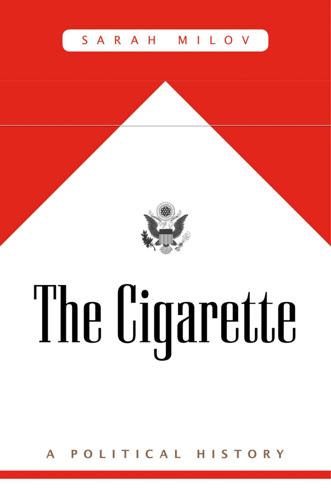
The Cigarette: A Political History
by
Sarah Milov
Published 1 Oct 2019
.; Nan Enstad, “To Know Tobacco: Southern Identity in China in the Jim Crow Era,” Southern Cultures 13, No. 4 (2007): 6–23. 37. Emily Rosenberg, Spreading the American Dream: American Economic and Cultural Expansion (New York: Macmillan, 1982). 38. Morton Keller, Regulating a New Economy: Public Policy and Economic Change in America, 1900–1933 (Cambridge, MA: Harvard University Press, 1990), 23. 39. William Leuchtenberg, The American President: From Teddy Roosevelt to Bill Clinton (New York: Oxford University Press, 2015), 23. 40. Keller, Regulating a New Economy, 27–28. 41. Robert Wiebe, The Search for Order, 1877–1920 (New York: Hill and Wang, 1967). 42. United States. Department of Justice, The United States of America, appellant, v. the American tobacco company and others: The American tobacco company and others, appellants, v. the United States of America … Brief for the United States (Washington, D.C.: Government Printing Office, 1910). 43.

The State and the Stork: The Population Debate and Policy Making in US History
by
Derek S. Hoff
Published 30 May 2012
Fairchild wrote mass-market books extolling “limited socialism” and consumptionist economics, and he illuminates the links between the population-policy community, mainstream economic debates, and middlebrow economic discussion.83 He argued in People (1939), “Overpopulation has been the chronic and virtually universal state of human societies from time immemorial.”84 Fairchild also articulated a vision of a new economy freed from the outdated populationist doctrine of “industrial barons and overlords,” as he wrote in Survey Graphic magazine.85 Fairchild continued: First there was the assumption [among industrialists] that prosperity depended on large production, and that this in turn required an abundant labor force.
…
Seeing the earth as a closed system—he used the analogy of an hourglass—Georgescu-Roegen urged the reorientation of economic activity toward sustainability.57 Better known today is Kenneth Boulding, president of the American Economic Association in 1968, who began the 1960s as an orthodox economist at the University of Michigan, though one who had identified planetary limits in an introduction to Malthus’s Essay on Population.58 Boulding’s classic 1966 essay, “The Economics of the Coming Spaceship Earth,” pleaded for a transition from a reckless “cowboy economy” to a “spaceman economy.”59 This new economy would recognize that “the earth has become a single space- 176 chapter 6 ship, without unlimited reservoirs of anything, either for extraction or pollution, and in which, therefore, man must find his place in a cyclical ecological system which is capable of continuous reproduction of material form even though it cannot escape having inputs of energy.”60 A spaceman economy would emphasize the total stock of resources, not current consumption (called “throughput” by environmental economists).

Corporate Warriors: The Rise of the Privatized Military Industry
by
Peter Warren Singer
Published 1 Jan 2003
The ultimate inflection point of this change were the Napoleonic wars starting at the end of the eighteenth century. Although hired troops were present through the 1700s, this period saw the wars of kings finally evolve into the wars of people. Although individual combat skill had mattered more than numbers in the earlier periods, the level of warfare began to increase, in order to take advantage of new economies of scale on the battlefield. The basic cause was that continued technological development of firearms provided a major reduction in the required length of training. Whereas weapons such as crossbows and the early handguns and arquebus needed years of preparation, an gO THE RISE individual could become an effective musketeer after a fairly short period of training.l9 Thus, large numbers of soldiers could be more readily acquired by the conscription of citizenry than by outside hiring.
…
Outsourcing soon became a dominant business strategy and a huge industry in and of itself. Global outsourcing expenditures topped $1 trillion worldwide by 2001, doubling in just the three years between 1998 and 200i.12/ Furthering the popularity was the fact that many of the most successful businesses of the new economy used the strategy. Of the 500 largest international companies, 93 percent outsourced some function.128 Many defense leaders directly pointed to general industry's success and advocated the emulation of business practices by the military. Initially, this was begun in areas where the military was simply repeating what was already available in the private sectors, such as data processing or health services.129 Over time, however, the feeling grew that in the search for efficiency, no area should be discounted.130 Domestic Corollaries: Private Security In many ways, the privatization of the military is just a more aggressive aspect of a larger trend of privatization.

Consumed: How Markets Corrupt Children, Infantilize Adults, and Swallow Citizens Whole
by
Benjamin R. Barber
Published 1 Jan 2007
And selling takes on a new dimension when you put it in the context of a relationship.”8 Marc Gobé, in his own version of emotional marketing also called Emotional Branding, is not quite Max Weber, but he does offer a snippet of eye-opening social theory in which he distinguishes the “old economy” from the “new economy.” The old economy is “factory based” and “capabilities-driven” and hence “production-focused” on manufacturing actual products, while the new economy is “consumer based” and “consumer-focused” and hence concerned not with manufacturing products but “creating brands.”9 Brand identities need not be consistent in every detail across international frontiers as long as the brand relationship is preserved: McDonald’s is low end and hence directed at the lower middle class and the poor in the United States, but upscale and trendy in Russia, while comfortably bourgeois in Japan.

Scots and Catalans: Union and Disunion
by
J. H. Elliott
Published 20 Aug 2018
It was not only the development of the offshore oil industry that was opening up new vistas of prosperity after the long years of struggle. An economy dependent on dying or dead traditional manufacturing industries was being replaced by a more modern and varied economy, more attractive to foreign investors and better attuned to the requirements of international markets. The new economy was led by a growing service sector, and was based on electronics and petrochemicals, banking and insurance, and the developing tourist industry. Where the share of this service sector stood at 24 per cent in 1951, it had risen to 33 per cent by 1971 and would be up to 70 per cent by the turn of the century – a growth that has been described as ‘the greatest single identifiable motor of social change in Scotland since 1945’. 32 Such profound economic and social changes, while producing losers as well as winners, seemed likely to benefit a Scottish Labour Party which, while far from nationalist in outlook, was now firmly identified with devolution, rather than benefiting an SNP which had formally adopted the cause of Scottish independence.
…
INDEX Aberdeen: Philosophical Society, (i) academies, (i) ; see also universities Acció Catalana, (i) Act Rescissory (Scotland, 1661), (i) Act for the Security of the Protestant Religion and the Government of the Church (England, 1706), (i) Adam brothers (architects), (i) afrancesados , (i) agriculture: in Catalonia, (i) , (ii) ; in Scotland, (i) , (ii) ; in Spain, (i) Álava, (i) Alba: as term for Scotland, (i) ; Scots take over from Picts, (i) Alburquerque, Francisco Fernández de la Cueva, 7th Duke of, (i) Alcalá, Fernando Enríquez Afán de Ribera, 3rd Duke of, (i) Alcalá Zamora, Niceto, (i) Alexander II, King of Scotland, (i) Alexander III, King of Scotland, (i) Alexander, Sir William: An Encouragement to Colonies , (i) Alfonso V, King of Aragon, (i) Alfonso V, King of Portugal, (i) Alfonso X (the Wise), King of Castile and León, (i) Alfonso XII, King of Spain, (i) , (ii) , (iii) Alfonso XIII, King of Spain: childhood, (i) ; accession and rule, (i) ; receives petition for Catalan autonomy from Cambó, (i) ; supports Catalan claim for independence, (i) ; exiled, (i) Alien Act (England, 1705), (i) , (ii) Almansa, battle of (1707), (i) , (ii) , (iii) Almirall, Valentí, (i) , (ii) ; Lo Catalanisme , (i) Amadeo of Savoy, King of Spain, (i) Amat y Junient, Manuel de, (i) Amelot, Michel-Jean, (i) America (New World): incorporated into Crown of Castile, (i) , (ii) ; Scottish immigrants, (i) , (ii) ; trade with Catalonia, (i) ; and trade rivalry, (i) ; see also empires, Spanish American Revolution, (i) , (ii) anarchism and anarcho-syndicalism, (i) , (ii) , (iii) ANC see National Assembly of Catalonia, (i) Andalusia, (i) Aner d’Esteve, Felip, (i) Angevin Empire, (i) Anglo-Irish Treaty (1921), (i) Anglo-Scottish Union: debated under JamesVI/I, (i) , (ii) , (iii) , (iv) ; debated under William III and Anne, (i) , (ii) ; see also home rule; Treaty of Union (Anglo-Scottish, 1707); union, forms of Anjou, Philip, Duke of see Philip V, King of Spain Anne, Queen: succession and death, (i) , (ii) ; and acceptance of Treaty of Union, (i) Aragon, Crown of: and dynastic union with Castile, (i) , (ii) ; Catalan-Aragonese federation, (i) ; Succession crisis and Compromise of Caspe (1410–12), (i) , (ii) , (iii) , (iv) ; and Spanish Atlantic expansion, (i) ; and Castilian dominance, (i) ; population (16th century), (i) ; constitution, (i) , (ii) , (iii) ; royal absenteeism, (i) ; union with Castile, (i) , (ii) ; customs barriers with Castile, (i) ; geographical and linguistic divisions, (i) ; fails to support Catalonia in 1640 rebellion, (i) ; supports Don Juan José, (i) ; and Spanish succession, (i) ; Nueva Planta, (i) , (ii) , (iii) ; form of representation in Spanish Cortes, (i) ; fiscal and monetary uniformity with Castile, (i) ; (i) ; historiography, (i) ; Archive of, (i) ; see also Aragon, kingdom of; Catalonia; Mallorca; Valencia Aragon, kingdom of: union with Castile, (i) , (ii) ; Catalan-Aragonese federation, (i) , (ii) ; oath of allegiance, (i) ; Ferdinand as king of, (i) , (ii) ; rebellion in defence of fueros (1590–1), (i) ; and the Indies (i) ; Olivares and, (i) ; Philip V abolishes laws and privileges, (i) , (ii) ; resists French invasion, (i) ; see also Aragon, Crown of Aragon, Council of, (i) , (ii) , (iii) , (iv) Arbroath, Declaration of (1320), (i) , (ii) Argathelians (followers of Argyll), (i) , (ii) , (iii) Argyll, Archibald Campbell, 8th Earl of, (i) , (ii) , (iii) Argyll, Archibald Campbell, 9th Earl of, (i) Argyll, Archibald Campbell, 10th Earl ( later 1st Duke) of, (i) , (ii) Argyll, John Campbell, 2nd Duke of, (i) , (ii) , (iii) Aribau, Bonaventura Carles: ‘Ode to the Pàtria ’, (i) army, British, (i) , (ii) , (iii) army, Catalan, (i) , (ii) , (iii) , (iv) army, English, (i) , (ii) , (iii) , (iv) , (v) ; New Model, (i) , (ii) army, French, (i) , (ii) , (iii) , (iv) army, James II’s, (i) army, Scottish, (i) , (ii) , (iii) , (iv) , (v) , (vi) army, Spanish, (i) , (ii) , (iii) , (iv) , (v) , (vi) , (vii) , (viii) , (ix) , (x) , (xi) , (xii) , (xiii) ; Riego’s mutiny (1820), (i) , (ii) , (iii) ; (army of Flanders), (i) ; (army of Africa), (i) , (ii) Arrimadas, Inés, (i) Arthur, King (mythical), (i) Arthur, Prince (son of Henry VII), (i) Asquith, Herbert Henry, (i) Association for the Vindication of Scottish Rights, (i) Asturias: miners’ strike (1934), (i) Ateneu Català, (i) Atlantic: Scottish and Catalan trade, (i) , (ii) ; rival traders in, (i) ; see also America Attlee, Clement, (i) Audiencia, (i) , (ii) , (iii) , (iv) Augereau, General Pierre, (i) austracistas , (i) , (ii) , (iii) , (iv) , (v) Austria: union with Spain opposed by British and Dutch, (i) Austro-Hungarian Empire see empires, Austro-Hungarian Autonomy, Statutes of (Catalan), (i) ; (1979), (i) ; (2005), (i) , (ii) Azaña, Manuel, (i) , (ii) Aznar, José Maria, (i) Bacon, Francis: A Brief Discourse touching the Happy Union of the Kingdoms of England and Scotland , (i) Balaguer, Victor: ‘History of Catalonia and the Crown of Aragon’, (i) Ballot, Josep Pau, (i) Balmes, Jaume, (i) Banco de España, (i) banditry and lawlessness: in Scottish Highlands and Catalonia, (i) , (ii) , (iii) , (iv) , (v) , (vi) , (vii) banking crisis (global, 2007–8), (i) Bannockburn, battle of (1314), (i) Barbour, John: The Bruce , (i) Barceló, Pere Joan (‘Carrasclet’), (i) Barcelona: as mercantile city, (i) ; recaptured from Moors (801), (i) ; surrenders to Philip IV (1652), (i) , (ii) ; conflict with Perpinyà, (i) ; sanctions against after surrender, (i) ; French capture (1687), (i) ; urbanization, (i) , (ii) ; in War of Spanish Succession, (i) ; resists Philip V’s occupation and surrenders (1714), (i) , (ii) , (iii) , (iv) ; Ciutadella (fortress), (i) , (ii) ; repressed by Philip V, (i) ; regidores , (i) ; University, (i) , (ii) , (iii) , (iv) ; ‘honoured citizens’ and oligarchical power, (i) ; population increase, (i) , (ii) ; shipbuilding, (i) ; trading rights, (i) ; Palau de la Virreina, (i) ; design and conditions, (i) ; Acadèmia de Bones Lletres, (i) ; occupied by French in Napoleonic Wars, (i) ; industrialization, (i) , (ii) ; cholera epidemics, (i) ; compared with Glasgow, (i) ; merchants, (i) ; Ateneu Barcelonès, (i) ; as cultural centre, (i) , (ii) , (iii) ; Liceu, (i) ; liberalism, (i) ; industrial unrest, (i) , (ii) , (iii) , (iv) , (v) , (vi) ; economic power, (i) ; Eixample, (i) ; urban development and street names, (i) ; Universal Exhibition (1888), (i) , (ii) ; as capital of Catalonia, (i) ; and internal Catalan differences, (i) ; Setmana Tràgica (tragic week, 1909), (i) ; World Fair (1929), (i) ; and October Revolution (1934), (i) ; in Spanish Civil War, (i) ; football, (i) ; Olympic Games (1992), (i) ; demonstration against Constitutional Tribunal ruling (2010), (i) ; ‘march towards independence’ (2012), (i) ; terrorist attack (August 2017), (i) ; see also Catalonia Barcelona province, (i) Barceloneta, (i) Barnett, Joel, (i) Bases of Manresa ( Bases de Manresa , 1892), (i) , (ii) Basque Nationalist Party, (i) Basque provinces: and war with France, (i) ; industrialization, (i) , (ii) ; participation in central administration, (i) ; autonomy, (i) , (ii) , (iii) ; fiscal exemptions, (i) , (ii) ; racial singularity, (i) ; Cambó visits, (i) ; nationalist movement, (i) ; join Pact of San Sebastián, (i) ; settlement (1975), (i) , (ii) ; in decentralized Spain, (i) ; relations with Spanish state, (i) Batet i Mestres, General Domènec, (i) Belgium: Puigdemont flees to, (i) Berwick, James Fitzjames, Duke of, (i) , (ii) Berwick, Treaty of (1639), (i) Bill of Rights (England, 1689), (i) Bishops’ Wars (1639–40), (i) Black Death, (i) Blair, Tony, (i) , (ii) Bloody Assizes (1685), (i) Bodin, Jean, (i) , (ii) Boece, Hector: History of the Scottish People , (i) Bofarull, Antoni de: ‘Deeds and Memories of the Catalans’, (i) Bofarull, Pròsper de, (i) Bolshevism, (i) Bonaplata cotton mill, (i) , (ii) Borders (Scottish): violence in, (i) , (ii) ; see also Scotland Bosch Gimpera, Pere, (i) Boswell, James, (i) , (ii) , (iii) Bosworth, battle of (1485), (i) Bothwell, James Hepburn, 4th Earl of, (i) Bounty Act (British, 1742), (i) Bourbon dynasty: and Spanish royal succession, (i) , (ii) , (iii) ; administration in Spain, (i) , (ii) , (iii) ; protectionist legislation in Catalonia, (i) ; nation-building, (i) bourgeoisie, (i) , (ii) , (iii) , (iv) Braç (Estate) of nobles, (i) Brexit (British exit from EU), (i) Britain see Great Britain Brown, Gordon, (i) , (ii) , (iii) Bruce, Robert, King of Scotland, (i) , (ii) , (iii) , (iv) Brussels: Puigdemont supporters demonstrate in, (i) Brutus (mythological figure), (i) , (ii) Buchanan, George: De jure regni apud Scotos , (i) Burnet, Gilbert, Bishop of Salisbury, (i) Burns, Robert, (i) Bute, John Stuart, 3rd Earl of, (i) , (ii) cadastre ( catastro ), (i) , (ii) , (iii) Cadiz: as Atlantic trading port, (i) ; Riego’s rising (1820), (i) Cadiz, Cortes of, (i) , (ii) , (iii) , (iv) , (v) , (vi) , (vii) Callaghan, James, (i) , (ii) Cambó, Francesc, (i) , (ii) , (iii) Cameron, David, (i) , (ii) Cameron, Richard (and Cameronians), (i) Campaign for a Scottish Assembly, (i) Campbell Clan, (i) , (ii) ; and see Argyll Canada: becomes self-governing (1867), (i) ; and Quebec independence campaign, (i) Canadenca (industrial strike), (i) Cánovas del Castillo, Antonio, (i) , (ii) , (iii) , (iv) Capmany, Antoni de, (i) , (ii) , (iii) , (iv) , (v) , (vi) , (vii) ; La centinela contra franceses , (i) Cardona, ducal family, (i) Caribbean see West Indies Carlists and Carlism, (i) , (ii) , (iii) Carlos, Don (Spanish pretender), (i) Carlos II, King of Spain: treatment of Catalonia, (i) ; ill health and death, (i) ; Feliu de la Peña dedicates book to, (i) ; death and succession question, (i) Cartagena, Alfonso de, (i) Casanova, Rafael, (i) , (ii) Caspe, Compromise of (1412), (i) , (ii) , (iii) Castaños, Francisco Javier, (i) Castile: and dynastic unification of Spain, (i) , (ii) , (iii) , (iv) ; united with Léon (1230), (i) ; conquest of Navarre, (i) ; incorporation of Indies, (i) , (ii) ; dominance, (i) , (ii) , (iii) , (iv) ; foundation myth, (i) ; equates itself with Spain, (i) ; population (16th century), (i) ; customs barriers with Crown of Aragon, (i) , (ii) ; rejects idea of Spanish nationality, (i) ; economic strain, (i) ; Olivares’s administration and reforms, (i) ; nobility intermarries with other regions, (i) ; Cortes of, (i) , (ii) , (iii) ; and Catalan rebellion (1640–52), (i) , (ii) , (iii) ; overpowered by French, (i) ; monetary fluctuations, (i) ; resists foreign invaders, (i) ; landowning elite, (i) ; see also Spain Castile, Council of, (i) , (ii) Catalan Assembly (1971), (i) Catalan Corporation of Radio and Television, (i) Catalan National Assembly, (i) ‘Catalanism’, (i) , (ii) , (iii) Cataló, Otger (legendary figure), (i) , (ii) Catalonia: recent independence movement, (i) ; as nation without state, (i) ; foundation, (i) , (ii) , (iii) , (iv) , (v) ; geographical divisions, (i) , (ii) , (iii) ; population, (i) , (ii) , (iii) ; federation with Aragon, (i) , (ii) ; Pyrenean region, (i) , (ii) ; socio-economic conditions in 15th century, (i) ; chronicles and history, (i) ; domination by Castile, (i) , (ii) ; conflict (1588), (i) ; religion in, (i) , (ii) , (iii) ; sense of patria , (i) see also patria , patriotism; banditry and lawlessness, (i) , (ii) , (iii) , (iv) , (v) ; unrest on accession of Philip IV, (i) ; nobles marry into Castilian nobility, (i) ; rejects Olivares’s proposals for Union of Arms, (i) ; alienation from Aragon, (i) ; alienated Crown lands, (i) ; rebellion (1640), (i) , (ii) ; as French protectorate (1641), (i) , (ii) , (iii) ; Estates, (i) , (ii) ; plague (1650), (i) , (ii) ; secession ends (1652), (i) ; French, immigrants in, (i) ; consequences of failed rebellion, (i) , (ii) ; revolt of the barretines (1688–9), (i) ; troops billeted in, (i) , (ii) ; export trade and traders, (i) , (ii) ; textile industry, (i) , (ii) , (iii) , (iv) , (v) ; depends on Castile for financial and military assistance, (i) ; and accession of Philip V, (i) ; in War of Spanish Succession, (i) , (ii) ; popular anti-French feelings, (i) ; occupied by Philip V’s forces, (i) ; and Peace of Utrecht, (i) ; disaster of 1714, (i) , (ii) ; under Philip V’s rule, (i) ; Nueva Planta extended to, (i) , (ii) , (iii) ; loss of representative institutions, (i) ; royal army garrisoned in, (i) ; taxation system, (i) , (ii) ; administrative reorganization, (i) ; universities, (i) , (ii) ; language differences, (i) ; lacks sovereign status, (i) , (ii) ; rebellion (1719), (i) ; oligarchical control and honoured citizens in, (i) ; substantial peasant farmers, (i) , (ii) , (iii) ; seigneurial and feudal rights, (i) ; military coercion in, (i) ; response to incorporation, (i) ; urbanization, (i) ; prospective independence after Treaty of Utrecht, (i) ; social and economic changes (18th century), (i) ; stable monetary system, (i) ; overseas trade, (i) , (ii) ; industrialization, (i) , (ii) , (iii) , (iv) , (v) , (vi) , (vii) , (viii) ; personal industriousness and strong family ties, (i) , (ii) ; rural and agrarian life, (i) ; trade with overseas empire, (i) , (ii) ; merchants and clerics in America, (i) ; restricted opportunities for overseas appointments, (i) ; identity and differences from Spain, (i) , (ii) , (iii) ; Enlightenment, (i) ; harvest failures and food shortages (1790s), (i) ; occupied and annexed by French in Napoleonic Wars, (i) , (ii) ; guerrilla warfare against French, (i) ; and Constitution of Cadiz (1812), (i) ; divided into four provinces, (i) ; sense of deliberate discrimination, (i) ; Ferdinand VII visits, (i) ; insurrection (1822), (i) ; liberalism (1820–3), (i) ; romanticized history, (i) ; little part in developing empire, (i) ; increasing political nationalism (post–Great War), (i) , (ii) ; bourgeoisie, (i) ; historiography, (i) , (ii) ; resists Spanish centralization, (i) ; dependence on Madrid for protection of industry, (i) ; sense of grievance ( greuge ), (i) , (ii) ; growing independence (late 19th century), (i) ; represented in Madrid government, (i) ; and Cuban struggle for independence, (i) ; federalist sentiments, (i) ; regionalism and claims to autonomy, (i) , (ii) , (iii) , (iv) , (v) , (vi) ; economy declines (late 19th century), (i) ; nationalist movement, (i) , (ii) ; conscripts called up to fight in Morocco, (i) ; and Mancomunitat, (i) ; under Primo de Rivera’s regime, (i) , (ii) ; joins Pact of San Sebastián, (i) ; Macià proclaims ‘Catalan State’, (i) ; as autonomous region under 1932 Spanish Constitution, (i) , (ii) ; nationalist upsurge (1930s), (i) ; in Spanish Civil War, (i) ; Franco abolishes statute of autonomy, (i) ; repression under Franco, (i) ; economic and social changes (1960s), (i) ; immigration, (i) ; and statute of autonomy (1979, revised 2006), (i) , (ii) , (iii) , (iv) , (v) , (vi) ; under parliamentary monarchy, (i) ; state-building under Pujol, (i) , (ii) ; bilingualism, (i) ; coalition government and programme for new autonomy, (i) ; diada (national day), (i) ; economic depression (2007–14), (i) ; interest in Scottish referendum on independence, (i) ; division between secessionists and anti-secessionists, (i) , (ii) ; illegal referendum (2014), (i) ; proposal and calls for independence referendum (autumn 2017), (i) ; propaganda campaign for independence, (i) ; threat of losing membership of EU, (i) ; conduct of 2017 referendum, (i) ; parliament decides on unilateral declaration of independence, (i) , (ii) ; post-referendum election (December 2017), (i) ; disunity among independence advocates, (i) ; consequences of independence decision, (i) ; major political parties lose support, (i) ; Romantic revivalism, (i) ; psychological characteristics, (i) ; economic resources, (i) ; and inadequate dialogue with Spain, (i) ; see also Constitutions; Diputació; education; language catastro ( cadastre ), (i) , (ii) , (iii) Catholics, Catholicism see Church of Rome Cecil, William (Baron Burghley), (i) Cecily, Queen of James III of Scotland, (i) CEDA (Confederación Española de Derechas Autónomas), (i) Centelles, (i) Central Committee of Anti-Fascist Militias, (i) Centre Català , (i) , (ii) Cerdà, Ildefons, (i) Cerdanya, northern ( comtat ), (i) Cervera: university of, (i) , (ii) Charlemagne, Emperor of the West, (i) , (ii) Charles V, Holy Roman Emperor, (i) ; as King of Spain, (i) , (ii) Charles VI, Holy Roman Emperor ( earlier Archduke of Austria): in War of Spanish Succession, (i) , (ii) , (iii) ; succeeds as Emperor, (i) ; war with Philip V ends, (i) Charles VIII, King of France, (i) Charles I, King of Great Britain: and dissent over union settlement, (i) ; visits Edinburgh, (i) , (ii) , (iii) ; and innovation in Scotland, (i) ; liturgical reforms resisted in Scotland, (i) ; revenue raising in Scotland, (i) ; in First Bishops’ War with Scotland (1639), (i) ; and Scottish Covenant, (i) ; and Second Bishops’ War (1640), (i) ; opposition to, (i) ; in Civil War, (i) ; Scots hand over to English, (i) ; executed, (i) Charles II, King of Great Britain ( earlier Prince of Wales): restoration to English throne (1660), (i) , (ii) ; accepts Covenant, (i) , (ii) ; proclaimed as Scots ruler and crowned at Scone, (i) ; attitude to Scotland, (i) ; death and succession, (i) ; sends James, Duke of York, to Scotland, (i) Charles III, King of Spain, (i) , (ii) , (iii) , (iv) Charles IV, King of Spain, (i) , (ii) Charles Edward Stuart, Prince (‘the Young Pretender’; ‘Bonnie Prince Charlie’), (i) Chartism, (i) cholera epidemics, (i) Church of England (Anglican), (i) , (ii) , (iii) ; see also Episcopalians Church of Rome (Catholic): Visigoths convert, (i) ; supports Scottish kings, (i) ; in Catalonia, (i) ; Exclusion Crisis and anti-Catholic legislation, (i) ; and Jacobitism, (i) , (ii) ; resistance to Enlightenment ideas, (i) ; distrusted in Britain, (i) ; emancipation in Britain (1829–30), (i) ; monopoly of worship and belief in Spain, (i) ; secularization of church property (1837) and Concordat of 1851, (i) ; and anticlericalism, (i) , (ii) ; in Scotland, (i) , (ii) ; strength in Spain, (i) Church of Scotland, (i) , (ii) , (iii) ; see also Kirk; Presbyterianism Churchill, Sir Winston, (i) CiU (Convergència i Unió), (i) , (ii) , (iii) , (iv) , (v) Ciutadans (Ciudadanos, ‘citizens’ party’, Catalonia), (i) , (ii) , (iii) Claim of Right (Scottish), (i) Clarendon, Edward Hyde, 1st Earl of: History of the Rebellion , (i) , (ii) Claris, Pau, (i) , (ii) , (iii) , (iv) , (v) Clavé, Josep Anselm, (i) Clydeside, (i) , (ii) , (iii) , (iv) , (v) CNT (Confederación Nacional del Trabajo; National Confederation of Labour), (i) , (ii) , (iii) Coke, Sir John, (i) Cold War, (i) colonization, Scottish: in Ireland, (i) , (ii) , see also Ulster; in Americas, (i) , (ii) , see also America; see also Darien project Columbus, Christopher, (i) Colville, Robert, (i) comercio libre decree (1778), (i) , (ii) commerce see trade Committee of Estates (Scotland), (i) Commonwealth (1649), (i) Communist Party: in Spanish Civil War, (i) Community Charge (‘Poll Tax’), (i) Company of Scotland, (i) , (ii) Companys, Lluís, (i) , (ii) composite monarchy: British, (i) , (ii) , (iii) , (iv) ; Scottish, (i) , (ii) , (iii) , (iv) , (v) , (vi) ; Spanish, (i) , (ii) , (iii) , (iv) , (v) Compromise of Caspe (1412) see Caspe Concordat of 1851, (i) Conferència dels Tres Comuns (the Three Commons), (i) Confession of Faith (Scotland, 1581), (i) Conservative Party (British): opposes home rule for Scotland, (i) , (ii) ; affiliation with Scottish Liberal Unionists, (i) ; post-war successes, (i) ; loses support in Scotland, (i) , (ii) , (iii) ; coalition with Liberal Democrats (2010), (i) ; wins 2015 election, (i) Conservative Party (Scottish), (i) , (ii) ; see also Scotland, Unionism; Unionist Party Conservative Party (Spanish), (i) , (ii) ; see also Cánovas del Castillo, Antonio; Maura, Antonio Constitutions: Catalan: (i) , (ii) ; under threat, (i) , (ii) , (iii) ; Philip IV guarantees to respect, (i) , (ii) ; Philip V confirms, (i) , (ii) ; abolition (1714), (i) , (ii) ; desire for recovery, (i) ; see also fueros English and British, (i) Spanish: Cadiz (1812), (i) , (ii) , (iii) ; (1837), (i) ; (1845), (i) , (ii) ; (1876), (i) ; (1932), (i) ; (1978), (i) , (ii) , (iii) , (iv) , (v) , (vi) , (vii) constitutionalism, (i) , (ii) , (iii) , (iv) Consulate of the Sea, Barcelona (Consolat del Mar), (i) contractualism: in Scotland, (i) , (ii) , (iii) , (iv) , (v) , (vi) , (vii) ; Catalan ( pactismo ), (i) , (ii) , (iii) , (iv) , (v) , (vi) , (vii) , (viii) ; Bourbons and, (i) ; Riego on, (i) Convention of Estates (Scottish), (i) Cook, Robin, (i) corregidores , corregimientos , (i) Cortes: Castilian, (i) , (ii) , (iii) , (iv) ; Aragonese, (i) , (ii) , (iii) ; Valencian, (i) ; Spanish, (i) , (ii) , (iii) , (iv) , (v) ; Cambó and a constituent Cortes, (i) ; see also Cadiz, Cortes of Corts: Catalan, (i) , (ii) , (iii) , (iv) ; Philip V convenes, (i) , (ii) ; convened by Archduke Charles of Austria, (i) , (ii) ; Barcelona street named for, (i) Corunna, (i) cotton manufacture: in Catalonia, (i) , (ii) ; in Scotland, (i) ; see also textiles Council of Europe: Venice Commission, (i) Council of a Hundred (Consell de Cent, Barcelona), (i) , (ii) Court of Exchequer (Scotland), (i) Court of Sessions (Scotland), (i) Covenant and Covenanters (Scottish): drawn up, (i) ; appeal in England, (i) ; Charles II signs, (i) , (ii) ; effect on Scottish government, (i) ; uprisings, (i) ; resistance suppressed, (i) Craig, Sir Thomas, (i) Cromwell, Oliver, (i) , (ii) , (iii) Crowe, Mitford, (i) Cuba, (i) , (ii) , (iii) , (iv) Cuixart, Jordi, (i) Cullen, William, (i) Culloden, battle of (1746), (i) Cumberland, Prince William, Duke of, (i) Cunningham, George, (i) customs dues and barriers: between Castile and Crown of Aragon, (i) , (ii) ; between Portugal and Castile, (i) ; in Scotland, (i) , (ii) , (iii) , (iv) ; in Spain, (i) , (ii) Dalrymple, Sir James see Stair, 1st Viscount Dalyell, Tam, (i) , (ii) Darien project (Panama isthmus, 1696–1700), (i) , (ii) , (iii) , (iv) , (v) , (vi) ; post-1707, (i) , (ii) , (iii) , (iv) , (v) Darling, Alistair, (i) Darnley, Henry Stewart, Lord, (i) David I, King of Scotland, (i) década ominosa (Spain, 1823–33), (i) Defensor del Pueblo (‘ombudsman’), (i) Dencàs, Josep, (i) Descartes, René, (i) Despuig, Cristòfor, (i) , (ii) devolution see home rule Dewar, Donald, (i) Diari Català (newspaper), (i) Diario de Barcelona , (i) Diputació (standing committee of Corts): functions, (i) , (ii) , (iii) ; investigated (1588), (i) ; petitions Madrid, (i) ; and 1640 revolt, (i) , see also Claris, Pau; Philip IV orders changes, (i) ; Barcelona street named for, (i) ; revived (1931), (i) , (ii) , (iii) ; re-established (1977), (i) , (ii) , (iii) ; see also Generalitat Disruptionists (Free Church of Scotland), (i) , (ii) Domènech i Muntaner, Lluís, (i) Dou i Bassols, Ramon Llàtzer (Lázaro), (i) Douglas-Home, Sir Alec, (i) Dunbar, battles of: (1296), (i) ; (1650), (i) , (ii) Dundas, Henry (1st Viscount Melville), (i) , (ii) , (iii) , (iv) Dundee, John Graham of Claverhouse, 1st Viscount, (i) Dutch Republic: hostilities with Spain, (i) , (ii) , (iii) ; wars with Britain, (i) ; in War of Spanish Succession, (i) , (ii) ; as a model for Catalonia, (i) , (ii) ; Scotland as possible province of, (i) East India Company, (i) , (ii) , (iii) Ebro, river: (i) , (ii) economy: British, (i) , (ii) Catalan: late medieval, (i) ; plans for revival, c . 1700, (i) , (ii) , (iii) ; 18th-century development of, (i) , (ii) ; 19th century, (i) , (ii) , (iii) ; under Franco, (i) ; since 1975, (i) , (ii) , (iii) Scottish: before 1700, (i) , (ii) , see also Darien project; 18th-century development of, (i) , (ii) , (iii) , (iv) , see also Clydeside; Glasgow; since Second World War, (i) , (ii) , (iii) , (iv) , (v) Spanish, (i) , (ii) , (iii) see also agriculture; industrialization; trade Eden, Anthony, (i) Edinburgh: Charles I visits, (i) , (ii) , (iii) ; travel distance to London, (i) , (ii) , (iii) n.126; anti-popish demonstrations, (i) ; Porteous Riots (1736), (i) ; population increase, (i) ; and growth of market economy, (i) ; as cultural-intellectual capital, (i) , (ii) ; New Town, (i) ; riots on George III’s birthday (1792), (i) Edinburgh Agreement (2012), (i) Edinburgh Review , (i) Edinburgh, Treaty of (1328), (i) education: in Catalonia, (i) , (ii) , (iii) , (iv) , see also language; Scottish, (i) , (ii) , (iii) , (iv) , (v) ; in Spain, (i) ; see also universities Edward I, King of England, (i) , (ii) , (iii) , (iv) , (v) Edward II, King of England, (i) Edward IV, King of England, (i) Edward VI, King of England (as Prince), (i) Eglinton, Archibald Montgomerie, 13th Earl of, (i) Eixalà, Martí d’, (i) El Bruc, (i) elections: British: (1987), (i) ; (May 1997), (i) ; (2010), (i) ; (May 2015), (i) Catalan: (1904), (i) ; (1907), (i) ; (1909), (i) ; (1923), (i) ; (1931), (i) ; (1932), (i) ; (1936), (i) ; (1980), (i) ; (2003), (i) ; (2010), (i) ; (2012), (i) ; (2017), (i) Scottish: Hamilton by-election (1967), (i) ; (1999), (i) ; (2007), (i) ; (2011), (i) Spanish: (1901), (i) ; (1907) (i) ; (1932), (i) ; (February 1936), (i) ; (June 1977), (i) ; (2003), (i) ; (2011), (i) ; (2016), (i) Elizabeth I, Queen of England, (i) , (ii) , (iii) Elliot, Walter, (i) emigration: Scottish, (i) , (ii) , (iii) , (iv) ; Catalan, (i) empires: Austro-Hungarian, (i) , (ii) , (iii) ; independence movements, (i) British, (i) , (ii) , (iii) ; Scottish contribution to, (i) , (ii) , (iii) , (iv) Spanish (Empire of the Indies), (i) , (ii) ; Catalans in, (i) , (ii) , (iii) ; independence movements, (i) , (ii) ; end of Spain’s American empire (1898), (i) , (ii) , (iii) ; see also monarquía española Engagers (moderate covenanters), (i) England: dynastic union with Scotland (1603), (i) , (ii) ; conquers and incorporates Wales, (i) ; claims to lordship over all Britain, (i) ; establishes boundary with Scotland, (i) ; wars with France, (i) ; terms of union settlement debated (1604), (i) , (ii) , (iii) ; resentment at Scots in James’s English court, (i) , (ii) ; intermarriage with Scots, (i) , (ii) , (iii) ; customs barriers with Scotland, (i) ; failure of incorporating project, (i) ; Scots invade (1640), (i) ; English victory, (i) , (ii) ; negotiations with Scots and Treaty of Union (1707), (i) ; government’s unpopularity in Scotland, (i) ; anti-Scottish nationalism (1760s), (i) ; medieval constitution, (i) ; parliamentary reform movement, (i) ; MPs predominate in British parliament, (i) ; economic preponderance, (i) ; history compared with Scottish, (i) ; close ties with Scotland, (i) ; nationalism and anti-Scottish sentiments, (i) Enlightenment: Scottish, (i) , (ii) ; Spain resists, (i) Episcopalians: in Scotland, (i) , (ii) , (iii) ; support Jacobites, (i) , (ii) ‘Equivalent’ (settlement of Company of Scotland), (i) , (ii) Escarré, Aureli M., abbot of Montserrat, (i) España, Carlos, Count of, (i) Espartero, General Baldomero, (i) , (ii) Esquerra Republicana de Catalunya (ERC), (i) , (ii) , (iii) , (iv) , (v) Estates: Scotland, (i) , (ii) , (iii) ; Catalonia, (i) , (ii) Estatut, (i) ; see also Autonomy, Statutes of ETA (Basque movement), (i) European Commission: bars unilateral secession, (i) European Union ( formerly Community): promotes liberal democracy, (i) ; Spain joins, (i) ; Scottish policy on, (i) ; attitude to breakaway states, (i) ; and British referendum, (i) ; Britain votes to leave, (i) ; danger of independent Catalonia losing membership, (i) ; member states fear internal separatist movements, (i) ; Puigdemont supporters denounce, (i) Ewing, Winifred, (i) Exclusion Crisis (England, 1679–81), (i) ‘exempt provinces’, (i) , (ii) , (iii) exhibitions: Barcelona, (i) , (ii) ; Glasgow, (i) ; Paris (1937), (i) Faculty of Advocates (Scottish), (i) , (ii) fadristerns , (i) , (ii) ; see also mas (farmstead) fascism, (i) , (ii) federalism, (i) , (ii) , (iii) , (iv) felipistas , (i) , (ii) Feliu de la Peña, Narciso, (i) , (ii) , (iii) , (iv) ; Fénix de Cataluña , (i) Ferdinand of Antequera, (i) Ferdinand (the Catholic), King of Aragon and of Spain: marriage and rule, (i) , (ii) , (iii) ; death, (i) , (ii) ; as king of Aragon after Isabella’s death, (i) ; and Sentence of Guadalupe, (i) ; captures Granada, (i) Ferdinand VII, King of Spain ( earlier Prince of Asturias), (i) , (ii) , (iii) , (iv) , (v) , (vi) Ferguson, Adam, (i) Feria, Lorenzo Suárez de Figueroa y Córdoba, 2nd Duke of, (i) Ferrer i Guárdia, Francesc, (i) Ferro, Víctor, (i) feudalism, (i) , (ii) , (iii) First World War see Great War (1914–18) fiscal-military state, (i) , (ii) flags: Scottish, (i) ; British (union flag), (i) , (ii) ; Spanish, (i) , (ii) ; Catalan, (i) , (ii) Flanders, (i) Fletcher, Andrew, of Saltoun, (i) Flodden Field, battle of (1513), (i) foral law (Catalonia), (i) , (ii) Forcadell, Carme, (i) France: ‘auld alliance’ with Scotland, (i) ; rescues and supports Mary Queen of Scots, (i) ; wars with England, (i) ; Catalonia becomes protectorate of, (i) , (ii) ; war with Spain (1635–59), (i) , (ii) ; Franco-Spanish frontier redrawn (1659), (i) ; French immigrants in Catalonia, (i) ; French invasion (1695–7), (i) ; Catalan hostility to, (i) , (ii) ; supports Stuart pretender to English throne, (i) ; war with Spain (1793–5), (i) ; French invasion and Spanish resistance (1808), (i) , (ii) ; occupies Catalonia in Napoleonic Wars, (i) Francis II, King of France, (i) Franco, General Francisco, (i) , (ii) , (iii) , (iv) , (v) Franks, (i) , (ii) Free Church of Scotland, (i) , (ii) French Revolution (1789), (i) , (ii) fueros (Aragonese and Valencian): Aragon’s revolt over defence of, (i) ; abolished by Philip V, (i) , (ii) , (iii) ; ‘exempt provinces’, (i) , (ii) ; desire for recovery, (i) ; see also Constitutions, Catalan Gaelic see language Galicia, (i) , (ii) , (iii) Galileo Galilei, (i) Ganivet, Ángel: Idearium español , (i) Garbett, Samuel, (i) Gaudí, Antoni, (i) Gaythelos (Greek prince), (i) Generalitat: role and function, (i) ; revived (1931), (i) , (ii) , (iii) ; re-established (1977), (i) , (ii) ; Pujol’s presidency, (i) , (ii) , (iii) ; Constitutional Tribunal discusses, (i) ; educational and cultural programmes, (i) ; anger at Supreme Constitutional Tribunal’s ruling, (i) ; policy on independence, (i) , (ii) ; overspending, (i) ; economic management, (i) ; see also Diputació; Govern Genoa, Treaty of (1705), (i) Geoffrey of Monmouth: History of the Kings of England , (i) , (ii) George I, King of Great Britain, (i) , (ii) George II, King of Great Britain, (i) George III, King of Great Britain, (i) George IV, King of Great Britain, (i) Gibbs, James, (i) Gibraltar: captured by Allies (1704), (i) Gil, Pere, (i) Gil Robles, José María, (i) Gilmour, Sir John, (i) Girona: established as province, (i) ; under French occupation, (i) ; sieges of (1684), (i) ; (1808), (i) Gladstone, William Ewart, (i) , (ii) n.4 Glasgow: riots over proposed union (1706), (i) ; Malt Tax riots (1725), (i) ; population increase, (i) ; and Atlantic trade, (i) ; Literary Society, (i) ; compared with Barcelona, (i) ; mercantile elite, (i) ; university, (i) , (ii) n. 130; unrest and riots (1819), (i) ; (1848), (i) ; industrial growth and dominance, (i) , (ii) ; Kelvingrove Park exhibitions (1880 and 1901), (i) ; contribution to Great War, (i) ; rent strike, (i) ; see also Clydeside Glasgow General Assembly (1638), (i) Glencairn, William Cunningham, 9th Earl of, (i) Glencoe, Massacre of (1692), (i) Glendower, Owen, (i) , (ii) Glenfinnan, (i) globalization, (i) Glorious Revolution (1688–9), (i) , (ii) Gloucester, William, Duke of: death (1700), (i) ‘God Save the King’: as British national anthem, (i) , (ii) Goded, General Manuel, (i) Godoy, Manuel, (i) Good Friday Agreement (Ireland, 1998), (i) Goschen, George, 1st Viscount, (i) Goths, (i) Govern, (i) , (ii) , (iii) , (iv) Goya, Francisco, (i) Granada: as Moorish kingdom, (i) ; captured by Ferdinand and Isabella, (i) Grant, Alexander, (i) Great Britain: and Scottish independence movement, (i) ; formed by James VI/I’s joint monarchy, (i) ; mythical origins, (i) ; and dynastic union (1603), (i) ; as term, (i) , (ii) ; and nationality, (i) ; formally created (1707), (i) , (ii) ; reordered after Union, (i) ; victories in Seven Years War, (i) ; as fiscal-military state, (i) ; impact of French Revolution and Napoleonic Wars, (i) , (ii) ; Spain sees as enemy, (i) ; wars with Spain (1796–1802, 1804–8), (i) ; growing power, (i) ; patriotism, (i) ; as united nation-state, (i) ; union by association and imitation, (i) ; 19th-century stability and prosperity, (i) ; proposed federalism, (i) ; regional aspirations, (i) ; patriotism in Great War, (i) ; sense of unity in Second World War, (i) ; welfare state established, (i) , (ii) ; post-war GDP, (i) ; votes to leave EU, (i) ; see also England Great Depression (1929–1930s), (i) Great Reform Bill (and Act, 1832), (i) , (ii) , (iii) , (iv) Great War (1914–18): and collapse of Austro-Hungarian Empire, (i) ; suspends British home rule movements, (i) , (ii) ; and social-political change, (i) ; Spain’s neutrality in, (i) , (ii) ; effect on British sense of community, (i) Guadalupe, Sentence of, (i) Guardia Civil: created (1844), (i) Güell family, (i) Guipúzcoa, (i) Habsburg dynasty: and Spanish royal succession, (i) , (ii) , (iii) Haig, Douglas, 1st Earl, (i) Hamilton, James, 3rd Marquis ( later 1st Duke) of, (i) Hamilton, James Douglas, 4th Duke of (and Duke of Brandon), (i) , (ii) Hamilton, James, 7th Duke of, (i) Hamilton by-election (1967), (i) Hampden, John, (i) Hanover, House of: and succession to British throne, (i) , (ii) harvest: failures in Scotland (1695–9), (i) ; in Spain (1790s), (i) Hastings, Warren, (i) Heath, Ted, (i) Hebrides, (i) Henry II, King of England, (i) Henry VII, King of England, (i) , (ii) Henry VIII, King of England, (i) , (ii) , (iii) , (iv) Henry II, King of France, (i) heraldry: Catalan, (i) Heritable Jurisdictions Act (1747), (i) , (ii) Hesse-Darmstadt, George, Prince of, (i) Highlands (Scottish): character, (i) ; lawlessness and banditry in, (i) , (ii) , (iii) , (iv) ; Glencairn’s rising (1653), (i) ; Monck subdues, (i) ; as recruiting ground for Jacobites, (i) ; Anglicization, (i) , (ii) ; land tenure, (i) ; Wade’s road-building programme, (i) ; and Jacobite rebellion (1745), (i) ; farming difficulties, (i) ; provides troops for British Army, (i) ; migration to America, (i) ; and national identity, (i) ; in romanticized history, (i) , (ii) , (iii) ; clearances, (i) , (ii) Hispania: as myth, (i) , (ii) , (iii) , (iv) ; as term, (i) historiography, (i) , (ii) , (iii) ; see also myths Holland, Henry Richard Vassall-Fox, 3rd Baron, (i) Holyroodhouse, Palace of, (i) home rule: Catalan, (i) , (ii) ; Spain and, (i) ; Irish, (i) , (ii) ; Scottish, (i) , (ii) , (iii) , (iv) ; devolution accepted by major British political parties, (i) , (ii) , (iii) ; critics of, (i) , (ii) ; see also independence Horne, Sir Robert, (i) Huguenots: persecuted in France, (i) Hume, David, (i) Hundred Thousand Sons of St Louis, (i) Hutcheson, Francis, (i) ‘Hymn of the Grenadiers’ (Spanish national anthem), (i) Iberian Peninsula: union of regions, (i) , (ii) ; localism, (i) ; see also federalism; Hispania; Spain Ilay, Archibald Campbell, Earl of ( later 3rd Duke of Argyll), (i) , (ii) , (iii) , (iv) ‘improvement’: English origins, (i) , (ii) ; in Scotland, (i) , (ii) , (iii) , (iv) , (v) , (vi) , (vii) ; in Catalonia, (i) , (ii) , (iii) , (iv) independence movements: Catalan, (i) , (ii) ; independent republic (1641) (i) ; (1713), (i) ; criticized by Balmes, (i) ; (1934) (i) ; (since 2010), (i) , (ii) , (iii) , (iv) , (v) ; Scottish, (i) , (ii) , (iii) , (iv) ; overseas imperial territories, (i) , (ii) ; Cuba, (i) , (ii) ; see also home rule; secession and separatism India: Scots in, (i) Indies see empires, Spanish industrialization: Catalan, (i) , (ii) , (iii) , (iv) , (v) , (vi) , (vii) , (viii) ; Scottish, (i) , (ii) , (iii) , (iv) ; European, (i) , (ii) ; see also ‘improvement’; textiles Innes, Thomas, (i) Inquisition, Spanish, (i) Institute of San Isidro, (i) intermarriage: Scots-English, (i) , (ii) , (iii) ; in Spanish Monarchy, (i) Ireland: treaty with Britain (1921) and creation of Irish Free State (1922), (i) , (ii) ; conquered by English, (i) , (ii) ; Henry VIII proclaimed King of (1541) and English rule, (i) , (ii) ; relations with western Scotland and Scottish settlers in, (i) , (ii) , (iii) , (iv) ; Ulster plantation, (i) ; rebellion (1641), (i) , (ii) , (iii) ; support for James II and reconquered by William III, (i) ; keeps parliament, (i) ; manpower resources, (i) ; 1798 rebellion, (i) , (ii) ; incorporating union (1801) and inclusion in British parliament, (i) , (ii) , (iii) ; Church disestablished (1869), (i) ; nationalism and Home Rule movement, (i) , (ii) ; Easter Rising (1916), (i) , (ii) ; Irish immigrants in Scotland, (i) ; see also Northern Ireland; Ulster Isabel II, Queen of Spain, (i) Isabella I of Castile, Queen of Spain, (i) , (ii) , (iii) , (iv) , (v) , (vi) Italy: fascism in, (i) ; see also Mazzini Jacobites and Jacobitism: (i) , (ii) , (iii) , (iv) , (v) ; rebellions (1715), (i) , (ii) ; (1745), (i) , (ii) ; Jacobitism and Scottish history, (i) ; see also Charles Edward Stuart; James Francis Edward Stuart Jamància (pastry-cooks’ revolt, 1842), (i) James II, King of Great Britain ( earlier Duke of York): proposed as viceroy in Scotland, (i) ; Edinburgh court (1679–82), (i) ; accession (1685) and religious policy, (i) ; flight to France and exile, (i) ; death (1701), (i) James III, King of Scotland, (i) James IV, King of Scotland, (i) , (ii) James V, King of Scotland, (i) James VI, King of Scotland (James I of England): succeeds to English throne (1603), (i) , (ii) , (iii) ; as ruler of composite monarchy, (i) , (ii) , (iii) , (iv) , (v) ; crowned king of Scotland, (i) ; adopts style ‘Great Britain’, (i) ; compatriots follow to English court, (i) , (ii) , (iii) ; advocates perfect union, (i) , (ii) , (iii) , (iv) , (v) , (vi) , (vii) , (viii) ; and nationality question, (i) ; on intermarriage of nobility, (i) ; attempts to pacify Borders, (i) ; death (1625), (i) James Francis Edward Stuart, Prince (‘the Old Pretender’; ‘James III/VIII’): and succession, (i) ; rising (1715), (i) , (ii) ; exile and plotting, (i) ; see also Jacobites Jaume I, Count-King (‘the Conqueror’), (i) Jefferson, Thomas, (i) Jeffreys, George, 1st Baron, (i) Jenkins’s Ear, War of (1739–48), (i) Jesuits, (i) , (ii) Jocs Florals , (i) , (ii) John of Fordun, (i) John II, King of Aragon, (i) John II, King of Catalonia, (i) John IV, King of Portugal ( formerly Duke of Braganza), (i) Johnson, Samuel, (i) Johnston, Tom, (i) Johnstone family, (i) Johnstone, George, (i) Joseph I, Holy Roman Emperor, (i) Joseph Bonaparte, King of Spain, (i) , (ii) Juan Carlos, King of Spain, (i) , (ii) , (iii) Juan José de Austria, Don, (i) , (ii) , (iii) Junqueras, Oriol, (i) , (ii) , (iii) Junta de Comercio (Barcelona), (i) Junta Superior (Catalonia, 1808), (i) , (ii) Junts per Catalunya (JpC), (i) , (ii) Justices of the Peace: in Scotland, (i) Kames, Henry Home, Lord, (i) Killiecrankie, battle of (1689), (i) Kirk: General Assembly, (i) , (ii) , (iii) , (iv) ; unease at James VI/I’s religious policies, (i) ; gifts of property revoked, (i) ; Charles I’s liturgical reforms resisted, (i) ; fails to extend church government to England, (i) ; vulnerability after 1707 settlement, (i) ; welcomes Hanoverian succession, (i) ; opposes Gaelic language, (i) ; Moderates acquire control, (i) ; and national sentiment, (i) ; diminishing influence, (i) ; see also Church of Scotland; Disruptionists; Presbyterianism Kirk o’ Field, Edinburgh, (i) Knox, John, (i) , (ii) , (iii) ; see also Covenant Labour Party (British), (i) , (ii) , (iii) , (iv) , (v) , (vi) Labour Party (Scottish), (i) , (ii) , (iii) , (iv) , (v) , (vi) labour (workers): in Scotland and Catalonia, (i) , (ii) ; and industrial unrest, (i) ; organized, (i) , (ii) ; indifference to Catalan autonomy, (i) ; see also anarchism; trade unions lairds, (i) , (ii) , (iii) , (iv) , (v) , (vi) language: Castilian, (i) , (ii) , (iii) , (iv) , (v) , (vi) , (vii) ; Catalan, (i) , (ii) , (iii) ; nineteenth-century revival, (i) , (ii) ; prohibitions under Franco, (i) ; official status in 1978 Constitution, (i) ; Generalitat’s promotion of, (i) , (ii) , (iii) ; English, (i) ; Gaelic, (i) , (ii) , (iii) , (iv) , (v) , (vi) , (vii) ; Scottish, (i) , (ii) , (iii) Laud, William, Archbishop of Canterbury, (i) Lauderdale, John Maitland, 1st Duke of, (i) , (ii) law: English–Scottish differences, (i) ; English Common, (i) , (ii) , (iii) ; Scottish, (i) , (ii) , (iii) , (iv) , (v) ; Catalan, (i) , (ii) León: united with Castile, (i) ; foundation myth, (i) Leopold I, Holy Roman Emperor, (i) Leovigild, Visigothic king, (i) Lérida see Lleida Lerroux, Alejandro, (i) , (ii) Leslie, General Alexander, 1st Earl of Leven, (i) Liberal Democrats (Britain): coalition with Conservatives (2010), (i) ; decline in Scotland, (i) Liberal Party (British), (i) , (ii) Liberal Party (Spanish), (i) ; factional divisions, (i) Liberal Unionists (Scottish), (i) , (ii) liberalism: ideology, (i) , (ii) ; in Cortes of Cadiz, (i) , (ii) , (iii) ; in Spain, (i) , (ii) , (iii) , (iv) , (v) , (vi) , (vii) ; liberal triennium (1820–3) (i) , (ii) , (iii) ; in Catalonia, (i) , (ii) ; in Scotland, (i) Lithuania: union with Poland, (i) Lleida (Lérida), (i) , (ii) Lliga Regionalista ( later Catalana), (i) , (ii) , (iii) , (iv) , (v) Llivia, (i) Llorens i Barba, Xavier, (i) Lloyd George, David, (i) London Corresponding Society, (i) Lord Advocate (Scotland), (i) , (ii) Lords of the Articles (Scotland), (i) , (ii) Lords, House of: Scottish peers in, (i) , (ii) , (iii) ; as ultimate court of appeal, (i) ; Irish peers in, (i) Lothian, William Kerr, 3rd Earl of, (i) Louis I (the Pious), Carolingian Emperor, (i) Louis XIII, King of France, (i) , (ii) Louis XIV, King of France, (i) , (ii) ; and Spanish succession, (i) , (ii) , (iii) , (iv) Louis XVI, King of France, (i) Lublin, Union of (1569), (i) McCormick, John, (i) McCrone, David: Understanding Scotland , (i) MacDiarmid, Hugh, (i) MacDonald, Ramsay, (i) Macià, Colonel Francesc, (i) , (ii) Macmillan, Harold, (i) Macpherson, James, (i) Madrid: Archduke Charles captures, (i) , (ii) ; population increase, (i) ; uprising against French invaders ( dos de mayo , 1808), (i) ; urban elite, (i) ; lacks manufacturing, (i) ; political and administrative power, (i) , (ii) ; as national capital, (i) , (ii) ; University, (i) ; see also Castile; Spain Magna Carta (1215), (i) Mair, John: Historia Maioris Britanniae , (i) Major, John, (i) , (ii) Malcolm III, King of Scotland, (i) Malcontents , (i) Mallorca: Jaume I captures from Moors, (i) ; and Indies, (i) ; language, (i) , (ii) ; and Nueva Planta, (i) Malt Tax, (i) ; riots (Glasgow, 1725), (i) Man, Isle of, (i) Mancomunitat, (i) , (ii) , (iii) Manresa, (i) , (ii) Mar, John Erskine, 22nd or 6th Earl of, (i) , (ii) , (iii) , (iv) Maragall, Pasqual, (i) , (ii) Margaret (‘Maid of Norway’): death, (i) , (ii) Margaret, Queen of Alexander III of Scotland, (i) Margaret, St, Queen of Malcolm III of Scotland, (i) Margaret Tudor, Queen of James IV of Scotland, (i) Margarit i Pau, Joan, Cardinal, (i) María Cristina de Borbón, Queen of Ferdinand VII, (i) María Cristina de Austria, Queen of Alfonso XII, (i) Martin the Humane, Count of Barcelona, (i) Martínez Marina, Francisco, (i) ; Theory of the Cortes , (i) Mary of Guise, Queen of James V of Scotland, (i) , (ii) Mary I (Tudor), Queen of England, (i) Mary II (Stuart), Queen of Great Britain, (i) Mary Queen of Scots, (i) , (ii) Mas, Artur, (i) , (ii) , (iii) , (iv) mas (farmstead), (i) , (ii) , (iii) ; see also fadristerns Mataró, (i) Maura, Antonio, (i) , (ii) May, Theresa, (i) Mazzini, Giuseppe, (i) ‘Memorandum of Grievances’ ( Memorial de Greuges ), (i) Menéndez y Pelayo, Marcelino, (i) Menorca, (i) Millar, John, (i) miquelets , (i) , (ii) Miralles, Enric, (i) Miró, Joan: Segador (mural), (i) modernista movement, (i) Mon, Alejandro, (i) monarchy: as unifying force, (i) ; ‘vertical’ and ‘horizontal’, (i) , (ii) ; restored in Spain (1874), (i) ; ceremonial activities in Europe, (i) ; as centre of stability in Spain, (i) ; styling in Britain, (i) monarquia española (Spanish Monarchy), (i) , (ii) , (iii) ; see also empires, Spanish Monck, General George (1st Duke of Albemarle), (i) , (ii) Monmouth, James Scott, Duke of: rebellion (1685), (i) Montjuïc, battle of (1641), (i) ; World Fair site (1929), (i) Montrose, James Graham, 5th Earl and 1st Marquis of, (i) , (ii) Montserrat: Santa Maria abbey, (i) , (ii) Moors (Muslims): invade and settle southern Spain, (i) ; conflict with Christians, (i) ; Barcelona recaptured from, (i) Morocco: Spain’s wars in, (i) , (ii) , (iii) Mossos d’Esquadra, (i) , (ii) , (iii) , (iv) Muir, Edwin, (i) Muirhead, Roland, (i) Muntañola, Pere, (i) Murat, General Joachim, (i) Mussolini, Benito, (i) myths: and national identity, (i) , (ii) ; and foundation of Britain and Spain, (i) , (ii) , (iii) ; and foundation of Catalonia, (i) , (ii) ; Scottish, (i) , (ii) , (iii) , (iv) , (v) ; see also historiography; Romantic movement Nairn, Tom, (i) Naples: Alfonso V conquers, (i) ; and composite monarchy, (i) Napoleon I (Bonaparte), Emperor of the French, (i) , (ii) Napoleonic Wars: impact on Britain and Spain, (i) , (ii) Narváez, General Ramón Maria, 1st Duke of Valencia, (i) Naseby, battle of (1645), (i) nation: concept and meaning, (i) , (ii) ‘nation-state’: as political formation, (i) ; (i) ; (i) ; Pi i Margall on, (i) ; Prat de la Riba on, (i) national anthems, (i) , (ii) National Assembly of Catalonia (ANC), (i) National Party of Scotland, (i) nationalism: rise of, (i) , (ii) ; Scottish, (i) , (ii) , (iii) , (iv) , (v) ; linguistic, (i) ; English, (i) , (ii) ; Spanish, (i) , (ii) ; British, (i) , (ii) , (iii) ; Catalan, (i) , (ii) , (iii) , (iv) , (v) , (vi) , (vii) ; in post–Great War Europe, (i) ; resurgence, (i) , (ii) ; changes with circumstances, (i) ; see also patria , patriotism; unionist nationalism nationality, (i) ; difficulties over definition, (i) nationalization, (i) NATO (North Atlantic Treaty Organization), (i) Navarre, kingdom of: status in Spain, (i) ; Castilian conquest and incorporation (1515), (i) ; under Bourbon administration, (i) , (ii) , (iii) ; see also ‘exempt provinces’ Navigation Acts (English), (i) , (ii) Negrín, Juan, (i) Netherlands see Dutch Republic, Flanders New Lanark, (i) New Model Army (English), (i) Newcastle, Thomas Pelham-Holles, 1st Duke of, (i) newspapers, (i) , (ii) Newton, Sir Isaac: Principia Mathematica , (i) Nifo, Francisco Mariano, (i) Nine Years War (1688–97), (i) , (ii) nobility: Scottish, (i) , (ii) , (iii) ; intermarriage in Britain and Spain, (i) , (ii) , (iii) , (iv) ; see also Lords, House of Normans: expansion in Britain, (i) North America Act (Britain, 1867), (i) North Sea oil, (i) , (ii) , (iii) , (iv) , (v) Northern Ireland: Good Friday Agreement (1998), (i) ; see also Ulster Norway: contends for dominion over Scotland, (i) Nottingham, Daniel Finch, 2nd Earl of, (i) Nueva Planta: as incorporating union, (i) , (ii) ; and system of government and administration, (i) , (ii) , (iii) , (iv) , (v) Numancia, (i) , (ii) Núria Statute, (i) ‘October Revolution’ (1934), (i) O’Donnell, General Leopoldo, (i) Olivares, Gaspar de Guzmán, Count-Duke of: administration and reforms, (i) , (ii) , (iii) ; and war with France (1635), (i) ; and Catalans, (i) , (ii) ; opposition and downfall, (i) ; see also Union of Arms Oliver, Frederick Scott, (i) , (ii) Omnium Cultural (organization), (i) Organic Laws (1978 Constitution), (i) , (ii) n. 41 Orkney, (i) Ortega y Gasset, José, (i) Orwell, George, (i) Ossian, (i) Oswald, Richard, (i) Oxford, Robert Harley, 1st Earl of, (i) , (ii) Paisley: riots (1819), (i) Paris International Exhibition (1937), (i) Parliament British: composition, (i) ; and peripheral countries’ representation, (i) ; sovereignty, (i) ; see also Great Reform Bill (1832); Lords, House of Catalan, (i) , (ii) , (iii) , (iv) English: and union with Scotland, (i) ; Short (1640), (i) ; Long (1640–60), (i) ; Rump (1648), (i) ; as counterpart to Scottish parliament, (i) ; Convention (1689), (i) ; historical legacy, (i) Irish, (i) , (ii) , (iii) Scottish: devolved, (i) , (ii) , (iii) , (iv) ; defers to monarch, (i) ; ratifies National Covenant, (i) ; and Triennial Act, (i) , (ii) ; and rebellion (1640s), (i) ; Covenanter, (i) ; dissolved, (i) ; post-Restoration status, (i) ; relations with English parliament, (i) ; activities, (i) ; passes Succession Act favouring James II, (i) ; revival under William III, (i) ; history of, (i) Spanish see Cortes; Corts parliamentary democracy: European disillusionment with, (i) Partido Popular (PP), (i) , (ii) , (iii) , (iv) , (v) , (vi) , (vii) Paterson, William, (i) Patiño, José, (i) , (ii) patria , patriotism: Catalan image of, (i) ; and Scottish and Catalan rebellions, (i) ; dual patriotism, (i) , (ii) , (iii) , (iv) ; in Cortes of Cadiz, (i) ; and struggle for liberty, (i) ; and a federal Spain, (i) ; and state, (i) ; Primo de Rivera and Spanish, (i) Patronage Act (British, 1712), (i) peasantry, Catalan: (i) , (ii) , (iii) , (iv) , (v) , (vi) peers (Scottish): in House of Lords, (i) , (ii) , (iii) ; apply for English titles, (i) Pelayo, Don (legendary figure), (i) , (ii) , (iii) Penedès region, (i) Peninsular War, (i) , (ii) , (iii) Perpinyà (Perpignan), (i) Perth, Five Articles of (1618–21), (i) , (ii) , (iii) Peterborough, Admiral Charles Mordaunt, 3rd Earl of, (i) Peterloo Massacre (Manchester, 1819), (i) Petronilla, wife of Ramon Berenguer, (i) Philip II, King of Spain, (i) , (ii) , (iii) , (iv) , (v) , (vi) , (vii) , (viii) Philip III, King of Spain, (i) , (ii) Philip IV, King of Spain: accession (1621), (i) ; early encounters with Catalans, (i) ; and Olivares’s administration, (i) , see also Olivares; and Catalan rebellion (1640–52), (i) , (ii) ; rule without minister-favourite, (i) Philip V, King of Spain ( earlier Duke of Anjou): contends for succession, (i) , (ii) , (iii) , (iv) , (v) , (vi) ; and Catalan Corts (1702), (i) , (ii) , (iii) ; Nueva Planta, (i) , (ii) , (iii) , (iv) ; aims to recover lost Italian territories, (i) ; war with Charles VI ends, (i) Philip VI, King of Spain, (i) , (ii) Philippines, (i) , (ii) Philosophical Society of Edinburgh, (i) Pi i Margall, Francesc, (i) , (ii) ; Las nacionalidades , (i) Picasso, Pablo: Guernica (painting), (i) Picts, (i) Pitt, William the Younger, (i) PNV (Partido Nacionalista Vasco, Basque Nationalist Party), (i) Poland: union with Lithuania, (i) political culture: English, (i) , (ii) ; Catalan, (i) ; Spanish, (i) ; Scottish, (i) , (ii) population: Castile, (i) ; Catalonia, (i) , (ii) , (iii) ; Crown of Aragon, (i) ; Scotland, (i) , (ii) , (iii) , (iv) ; England and Wales, (i) , (ii) Popular Front, (i) Porteous Riots (Edinburgh, 1736), (i) Portugal, kingdom of: (i) ; dynastic marriages, (i) ; and Ferdinand and Isabella’s title, (i) ; union with Spain (1580), (i) ; citizens declared foreigners in Castile, (i) ; customs barriers with Castile, (i) ; recovers independence (1640), (i) , (ii) ; in War of Spanish Succession, (i) ; French invade (1807), (i) ; and proposed federation with Spain, (i) , (ii) POUM (Partido Obrero de Unificación Marxista), (i) Prat de la Riba, Enric, (i) , (ii) , (iii) , (iv) , (v) ; Compendium of Catalanist Doctrines (with Muntañola), (i) ; La nacionalitat catalana , (i) prayer book: in Scotland, (i) Presbyterianism: (i) , (ii) , (iii) , (iv) ; restored (1690), (i) , (ii) ; and Scottish national identity, (i) ; internal dissent, (i) ; relations with state, (i) ; see also Church of Scotland; Covenant; Kirk; Knox, John Preston, battle of (1648), (i) Prim, General Joan, (i) prime ministers (British): Scottish origins of, (i) , (ii) n. 4 Primo de Rivera, General Miguel, (i) , (ii) , (iii) , (iv) Privy Council, British (post-Union), (i) , (ii) Privy Council, English, (i) , (ii) Privy Council, Scottish, (i) , (ii) , (iii) , (iv) , (v) , (vi) pronunciamientos , (i) , (ii) proportional representation: in Scotland, (i) , (ii) protectionism, (i) Protestantism: adopted in England and Scotland, (i) ; and Scottish working-class culture, (i) ‘province’: differing interpretations, (i) PSOE (Partido Socialista Obrero Español; Socialist Party), (i) , (ii) , (iii) , (iv) , (v) Puerto Rico, (i) , (ii) Puig, Tomàs, (i) Puigdemont, Carles, (i) , (ii) , (iii) , (iv) Pujol, Jordi, (i) , (ii) , (iii) , (iv) , (v) , (vi) Pyrenees, Peace of the (1659), (i) Quadruple Alliance (Britain–France–Austria–Netherlands), (i) Quebec, (i) rabassaires , (i) , (ii) ; see also viticulture Radical Republican Party, (i) radicalism, (i) Rajoy, Mariano, (i) , (ii) , (iii) , (iv) , (v) , (vi) Ramon Berenguer IV, Count, (i) rauxa , (i) rebellions: Aragon (1590–1), (i) , (ii) barretines (1687), (i) Carlist, (i) , (ii) , (iii) , (iv) Catalonia: (1640), (i) , (ii) ; (1705), (i) ; (1719), (i) ; (1822), (i) Ireland: (1641), (i) , (ii) ; (1798), (i) , (ii) Jacobite: (1715), (i) , (ii) ; (1745), (i) , (ii) , (iii) Madrid (1808), (i) Monmouth’s (1685), (i) Riego’s (1820), (i) , (ii) Scotland: (1638), (i) ; (1640s), (i) see also wars, civil Recaredo, Visigothic king, (i) , (ii) referendums Canada (1980, 1995), (i) Catalan (2017), (i) , (ii) , (iii) Scotland: (1979), (i) ; (1997), (i) ; (2014), (i) , (ii) , (iii) Spain (1978), (i) Wales (1979), (i) Reformation (Protestant): effect on Anglo-Scottish relations, (i) , (ii) ; exacerbates religious differences, (i) regidores , (i) , (ii) regionalism: in Spain, (i) , (ii) , (iii) , (iv) , (v) , (vi) , (vii) , (viii) , (ix) , (x) , (xi) ; in Catalonia, (i) , (ii) , (iii) , (iv) ; see also Home Rule; Lliga regionalista religion: resurgence, (i) ; see also Church of England; Church of Rome; Church of Scotland Renaixença , (i) , (ii) , (iii) , (iv) , (v) , (vi) , (vii) resistance, right of, (i) , (ii) , (iii) Revocation, Act of (1625), (i) revolutions of 1848, (i) , (ii) Richard III, King of England, (i) Richelieu, Cardinal Armand du Plessis, Duc de, (i) , (ii) Riego, Colonel Rafael de, (i) , (ii) rights (civil): and independence movements, (i) Ripon, Treaty of (1640), (i) Rius i Taulet, Francesc, (i) Rivera, Albert, (i) Robertson, William, (i) ; The History of America , (i) Robres, Agustín López de Mendoza y Pons, Count of, (i) Roebuck, John, (i) Romanones, Alvaro de Figueroa, Count of, (i) Romantic movement: influence, (i) , (ii) ; and historiography, (i) , (ii) , (iii) ; and revival of Catalan language, (i) Rome: Fascist march on (1922), (i) Ross, Willie, (i) Rosselló ( comtat ), (i) ‘rough wooing’ (Henry VIII’s), (i) Royal Academy of History, Madrid, (i) Royal Commission on the Constitution (1969), (i) Royal Company of Barcelona, (i) Rubió i Ors, Joaquim, (i) Ryswick, Treaty of (1697), (i) Sabadell, (i) Sagasta, Práxades, (i) Salisbury, Robert Arthur Talbot Gascoyne-Cecil, 3rd Marquis of, (i) , (ii) , (iii) Salmond, Alex, (i) , (ii) , (iii) , (iv) , (v) San Sebastián, Pact of (1930), (i) Sànchez, Jordi, (i) Sanjurjo, General José, (i) Sanpere i Miquel, Salvador, (i) Santa Coloma, Dalmau de Queralt, Count of, (i) , (ii) Sardana (dance form), (i) Scone, Scotland: as site of royal enthronement, (i) , (ii) ; stone of, (i) , (ii) Scota (mythical Scottish queen), (i) Scotia: as term, (i) Scotland: recent independence movement, (i) ; as nation without state, (i) ; devolved parliament (Assembly), (i) , (ii) ; dynastic union with England (1603), (i) , (ii) , (iii) ; Edward I invades and subdues, (i) ; geographical character, (i) ; colonised and settled, (i) ; influence of sea on, (i) ; Scots dominate, (i) ; early claims to sovereignty, (i) , (ii) ; land ownership and transfers, (i) ; close relations with Ireland, (i) , (ii) , (iii) ; local powers and chieftains, (i) ; territorial consolidation and expansion, (i) , (ii) ; slow state-building, (i) ; Wars of Independence, (i) , (ii) ; ‘auld alliance’ with France (1295), (i) ; population changes, (i) , (ii) , (iii) , (iv) ; foundation myth, (i) , (ii) , (iii) ; Protestantism, (i) , (ii) ; union settlement debated, (i) , (ii) , (iii) , (iv) ; administrative system after union, (i) ; intermarriage with English, (i) , (ii) , (iii) ; and nationality question, (i) ; customs barriers with England, (i) ; transatlantic trade and colonization (i) , (ii) ; incorporating union with England, (i) , (ii) , (iii) , (iv) , (v) ; innovation and reform under Charles I, (i) ; revenue raising under Charles I, (i) ; Estates, (i) , (ii) , (iii) ; rebellion against England (1640s), (i) ; defeated by Cromwell (1650), (i) ; army threat to England, (i) ; army strength, (i) ; seeks confederal union with England, (i) ; role and fortunes in English Civil War, (i) , (ii) ; rift with England over execution of Charles I, (i) ; improvement in, (i) , (ii) , (iii) , (iv) , (v) , (vi) , (vii) , (viii) , (ix) ; post–Civil War settlement and government reforms, (i) ; Episcopacy reimposed (1661), (i) ; rejects office of viceroy, (i) ; clan conflict, (i) ; church government (Presbyterian) in, (i) , (ii) ; and succession question (to Charles II), (i) ; divisions in, (i) ; cross-border trade, (i) , (ii) ; economic hardship and population loss, (i) , (ii) ; migration to America, (i) , (ii) ; William III’s indifference to, (i) ; and succession to William III and Anne, (i) ; opposes Catholic monarch, (i) ; as prospective province of Dutch Republic, (i) ; government and constitution under Union, (i) ; fear of anglicization after Treaty of Union, (i) ; constituencies reduced, (i) ; post-Union administrative and political part-autonomy, (i) , (ii) , (iii) ; coinage, (i) ; sacrifices sovereignty, (i) ; shares economy with England, (i) ; delayed economic development, (i) ; Secretary of State for Scotland office revived under Oxford, (i) ; unable to participate in overseas trade, (i) ; administrative reforms under Walpole, (i) ; riots against English government, (i) ; resents English governance, (i) ; feudal jurisdictions abolished (1748), (i) ; social and economic changes (18th century), (i) , (ii) ; commercial networks disrupted by wars, (i) ; surplus food production and exports, (i) ; access to British market and overseas trade, (i) ; industrialization, (i) , (ii) , (iii) , (iv) ; textile and weaving industry, (i) , (ii) ; gains access to overseas trade, (i) , (ii) ; military service abroad, (i) ; shipbuilding, (i) ; manpower resources, (i) ; taxation levels, (i) ; administrators in India and colonies, (i) ; rise of English hostility to (1760s), (i) ; national identity and culture, (i) , (ii) , (iii) ; Enlightenment, (i) ; dual patriotism in, (i) ; and romanticized history, (i) , (ii) , (iii) , (iv) ; dissent and riots in, (i) ; Lords Lieutenant introduced, (i) ; national militia question, (i) ; representation in British parliament, (i) ; national debt, (i) ; ‘radical war’ (1820), (i) ; contribution to British Empire, (i) , (ii) , (iii) ; agricultural revolution, (i) ; employment and labour, (i) ; landed aristocracy, (i) ; cotton spinners’ strike (1837), (i) ; parliamentary reform, (i) ; laissez-faire government in mid-19th century, (i) ; peripheral role in British economic development, (i) ; semi-independence, (i) ; feudalism survives, (i) ; historiography, (i) ; nineteenth-century renaissance, (i) ; grievances, (i) , (ii) , (iii) ; provides British prime ministers, (i) , (ii) n. 4; education, (i) ; demands separate Department of State, (i) ; home rule movement, (i) , (ii) , (iii) , (iv) , (v) , (vi) ; close ties with England, (i) ; in Great War, (i) ; effect of Irish developments in, (i) ; Labour party ascendancy in, (i) ; political parties established in British system, (i) ; Unionism, (i) , (ii) ; devolution proposals, (i) ; in Great Depression, (i) ; ‘Renaissance’ (1930s), (i) ; contribution to Second World War, (i) ; state intervention in, (i) ; heavy industries decline, (i) , (ii) ; post–Second World War nationalism, (i) ; referendum on devolution (1979), (i) ; Poll Tax (Community Charge) proposed, (i) ; recession (1980s), (i) ; campaign for legislative assembly, (i) ; parliament opened (July 1999), (i) ; proportional representation in 1999 poll, (i) ; referendum (September 1997), (i) ; economic resources and revival, (i) , (ii) ; renaissance of history as academic subject, (i) ; referendum campaign and vote on independence (2014), (i) , (ii) ; plans second referendum on independence, (i) ; and end of empire, (i) ; sense of Britishness, (i) ; and inadequate dialogue with London government, (i) ; see also Treaty of Union Scotland Act (1998), (i) Scots (people): arrival in Scotland, (i) ; unpopularity in England after union, (i) ; settle in Ulster, (i) Scott, Sir Walter: on Darien scheme, (i) , (ii) ; on development of Scotland, (i) ; popularity in Europe, (i) ; romanticizes Scottish past, (i) ; on Scottish emotionalism, (i) ; The Antiquary , (i) ; Waverley , (i) Scottish Assembly: proposed, (i) Scottish Council: established in London, (i) ; disbanded, (i) Scottish Education Act (1872), (i) Scottish Executive, (i) , (ii) ; title changed to Scottish Government, (i) Scottish Home Rule Association, (i) , (ii) Scottish Militia Act (1796), (i) Scottish National Party (SNP): founded, (i) ; weakness, (i) ; Hamilton by-election victory (1967), (i) ; growing strength, (i) , (ii) ; aims for independence, (i) , (ii) , (iii) ; claims North Sea oil, (i) ; European policy, (i) , (ii) ; and new economy, (i) ; in government, (i) ; success in 2011 election, (i) , (ii) ; gains seats in 2015 general election, (i) ; membership increases after referendum, (i) ; members move to Barcelona to support independence, (i) ; popular appeal, (i) ; efficient rule, (i) Scottish Office: transferred to Edinburgh, (i) Scottish Reform Act (1832), (i) Scottish Society for the Propagation of the Gospel, (i) secession and separatism, (i) , (ii) , (iii) , (iv) ; Catalonia and Portugal (1640), (i) , (ii) , (iii) ; Catalonia (2010–17), (i) , (ii) , (iii) , (iv) ; Scotland (2014), (i) ; see also Cuba; independence movements Second World War (1939–45): and nationalism, (i) ; outbreak, (i) ; effect on British unity, (i) Security, Act of (1703), (i) seny , (i) , (ii) separatism see secession Serrano Suñer, Ramón, (i) Sert, Josep María, (i) Settlement, Act of (1701), (i) Seven Years War (1756–63), (i) , (ii) Sharp, James, Archbishop of St Andrews, (i) Shetland, (i) shipbuilding, (i) , (ii) Sidney, Algernon, (i) Silvela, Francisco, (i) Sinn Fein (Irish party), (i) slave trade, (i) Smith, Adam, (i) , (ii) ; Wealth of Nations , (i) Smith, John, (i) Socialist Party (Catalonia) see PSOE socialists: in Barcelona, (i) , (ii) Societies of Friends of the Country (Amigos del País), (i) Societies of the Friends of the People (Scotland), (i) Society of Barcelona Weavers, (i) Society of Improvers in the Knowledge of Agriculture (Scotland), (i) Solemn League and Covenant (1643), (i) , (ii) Solidaritat Catalana, (i) Sophia, Electress of Hanover, (i) sovereignty: national, (i) , (ii) , (iii) , (iv) , (v) ; Scottish, (i) , (ii) , (iii) , (iv) ; Edward I claims over Scotland, (i) , (ii) , (iii) , (iv) ; Bodin on indivisibility, (i) , (ii) ; embodied in English/British parliament, (i) , (ii) , (iii) ; Catalan claims, (i) , (ii) , (iii) , (iv) , (v) ; Basque claims, (i) Soviet Union: collapse (1989), (i) Spain: and Catalan independence movement, (i) ; dynastic union (Ferdinand and Isabella), (i) , (ii) , (iii) ; mythological origins, (i) ; union with Portugal (1580), (i) ; in Low Countries, (i) ; internal customs, (i) , (ii) , (iii) ; war with France (1635–40), (i) ; post-Olivares government, (i) ; frontier with France defined, (i) ; and the Austrian connection, (i) ; Bourbon administrative intentions, (i) ; sends invasion fleet against Britain (1719), (i) ; population, (i) ; as fiscal-military state, (i) ; migration to Americas, (i) ; taxation, (i) , (ii) ; national identity, (i) , (ii) , (iii) , (iv) , (v) ; resistance to Enlightenment ideas, (i) ; Britain perceived as enemy and rival, (i) ; impact of French Revolution and Napoleonic Wars on, (i) ; allies with France against Britain (1796–1802), (i) ; uprisings against French in Napoleonic wars, (i) , (ii) ; Cortes of Cadiz and constitutional monarchy, (i) , (ii) ; liberal reform, (i) , (ii) , (iii) , (iv) , (v) ; new regional divisions (1833), (i) ; economic development (19th century), (i) ; political instability in 19th century, (i) , (ii) ; tensions with Catalonia over government, (i) ; developed and undeveloped regions, (i) ; civil code, (i) ; Moderates and Progressives, (i) ; centralization, (i) ; Revolutionary Sexennium (1868–74), (i) ; First Republic (1873), (i) , (ii) ; monarchy restored (1874), (i) ; considers home rule for regions and overseas territories, (i) ; varied historic regions and communities, (i) ; proposed federalism, (i) , (ii) ; defeat in war with USA (1898), (i) ; anarchist attacks in, (i) ; war in Morocco, (i) , (ii) , (iii) ; loss of Empire and decline, (i) , (ii) ; regionalism, (i) , (ii) ; neutrality in Great War, (i) , (ii) ; provoked by increasing Catalan nationalism, (i) ; and Primo de Rivera’s nationalism, (i) , (ii) ; Second Republic (1931), (i) , (ii) ; under Franco’s dictatorship, (i) , (ii) ; monarchy restored (1975), (i) ; decentralization under 1978 Constitution, (i) ; membership of European Community and NATO, (i) ; failure to counter Catalan independence propaganda, (i) ; illegality of unilateral secession under Constitution, (i) ; reaction to Catalan referendum and declaration on independence, (i) ; and consequences of Catalan independence decision, (i) ; see also Castile Spanish Civil War see wars, civil Spanish Succession, War of (1700–14), (i) , (ii) , (iii) , (iv) Spanish-American War (1898), (i) , (ii) ‘Squadrone Volante’ (Scotland), (i) , (ii) , (iii) , (iv) , (v) Stair, Sir James Dalrymple, 1st Viscount, (i) ; Institutions of the Laws of Scotland , (i) state, the: and surrender of overseas empires, (i) ; changing meaning, (i) ; fiscal-military, (i) ; and sense of nationality, (i) ; and bureaucracy, (i) ; and pàtria , (i) ; Catalonia as a ‘complete’ state, (i) ; see also ‘nation-state’; nationalism Stevenson, Robert Louis, (i) Stewart see Stuart Strafford, Thomas Wentworth, 1st Earl of, (i) ‘Strategy for Catalanization’ (document), (i) Stuart dynasty, (i) , (ii) Sturgeon, Nicola, (i) , (ii) , (iii) Suárez, Adolfo, (i) , (ii) Supreme Constitutional Tribunal (Spain), (i) , (ii) , (iii) syndicalists, (i) , (ii) ; see also anarchism and anarcho-syndicalism; trade unions tacks (Highland land leases), (i) Tarradellas, Josep, (i) , (ii) , (iii) Tarragona, (i) taxation: in Catalonia (1716), (i) , (ii) ; (2015) (i) ; in Scotland (18th century), (i) ; (since 1888), (i) ; in Spain, (i) , (ii) Terrassa, (i) textiles: Catalan, (i) , (ii) , (iii) , (iv) , (v) ; Scottish, (i) , (ii) Thatcher, Margaret, (i) , (ii) Thirty Years War (1618–48), (i) Three Commons, the see Conferència dels Tres Comuns Times, The , (i) , (ii) tobacco: trade, (i) , (ii) Toleration Acts (England, 1689), (i) , (ii) ; (British, 1712), (i) , (ii) Tories: election victory (1710), (i) , (ii) ; see also Conservative Party Townsend, Joseph, (i) , (ii) Townshend, Charles, (i) trade: Catalan, (i) , (ii) , (iii) , (iv) , (v) , (vi) , (vii) Scottish, (i) , (ii) , (iii) , (iv) , (v) , (vi) ; see also Darien project Spanish Atlantic, (i) , (ii) , (iii) , (iv) , (v) trade unions: Scottish, (i) , (ii) , (iii) ; Spanish, (i) , (ii) , (iii) , (iv) ; see also anarchism and anarcho-syndicalism trading companies, (i) , (ii) , (iii) ; see also individual companies Trastámaras, (i) , (ii) Treaty of Union (Anglo-Scottish, 1707): and Scottish parliament, (i) ; negotiated and ratified, (i) ; as incorporating union, (i) , (ii) ; and Scottish and English law, (i) ; and Scottish religious fears, (i) ; and Scottish representation in British parliament, (i) ; on relations between state and Presbyterian Church, (i) ; see also Anglo-Scottish Union Trevor-Roper, Hugh, (i) Triennial Act (Scotland, 1641), (i) , (ii) Tubal, son of Japhet, (i) , (ii) Tweeddale, John Hay, 4th Marquis of, (i) Tyrconnel, Rory O’Donnell, 1st Earl of, (i) Tyrone, Hugh O’Neill, 2nd Earl of, (i) UGT (Unión General de Trabajadores), (i) , (ii) Ulster: plantation established, (i) ; see also Northern Ireland Ulster Unionists, (i) Union, Anglo-Scottish see Treaty of Union (Anglo-Scottish, 1707) Union Commissioners (English and Scottish), (i) union (forms of): dynastic, (i) , (ii) , (iii) , (iv) , (v) , (vi) , (vii) , (viii) , (ix) ; aeque principaliter , (i) , (ii) ; incorporating, (i) , (ii) ; see also Nueva Planta Union of Rabassaires , (i) , (ii) ; see also viticulture Union of Arms, (i) , (ii) unionist nationalism (‘banal’ nationalism), (i) , (ii) n. 93 Unionist Party (Scotland), (i) , (ii) ; see also Conservative Party United Irishmen, (i) United Kingdom see Great Britain United Kingdom Independence Party (UKIP), (i) United Scotsmen, (i) United States of America: war with Spain (1898), (i) , (ii) Universal Male Suffrage Law (Spain, 1890), (i) , (ii) universities: Catalonia, (i) , (ii) ; Scotland, (i) , (ii) , (iii) , (iv) ; Spain, (i) urbanization: Catalonia, (i) ; Scotland, (i) Utrecht, Treaty of (1713), (i) , (ii) , (iii) , (iv) Vairement, Richard (Veremundus): Gesta Annalia (attrib.), (i) Valencia, kingdom of: Jaume I reconquers, (i) ; economic strength, (i) ; and internal relationships of Crown of Aragon, (i) ; in War of Spanish Succession, (i) ; imposition of Nueva Planta (i) , (ii) , (iii) Vatican Council, Second (1962–5), (i) Velasco, Don Francisco Antonio Fernández de, (i) Versailles: peace settlement and treaties (1919), (i) Vicens Vives, Jaume, (i) ; Noticia de Cataluña , (i) viceroys: title rejected by Scots, (i) , (ii) ; of Catalonia, (i) , (ii) , (iii) , (iv) , (v) , (vi) , (vii) ; of Peru, (i) Villahermosa, Carlos de Aragón de Gurrea de Borja, 9th Duke of, (i) , (ii) Visigoths, (i) , (ii) , (iii) , (iv) viticulture, (i) , (ii) , (iii) ; see also rabassaires Vizcaya, (i) ; see also Basque provinces Wade, General George, (i) Wales: English conquest, (i) ; incorporating union, (i) , (ii) ; referendum on devolved assembly, (i) Wallace, William, (i) , (ii) , (iii) , (iv) Walpole, Sir Robert, (i) , (ii) , (iii) , (iv) War of Spanish Succession see Spanish Succession, War of wars, civil: English (1642–50), (i) ; Spanish (1936–9), (i) ; see also rebellions Wars of the Congregation (Scotland, 1550s), (i) Waterloo, battle of (1815), (i) Watt, James, (i) West Indies (Caribbean): trade with Spain, (i) ; immigration and settlement, (i) West Lothian question, (i) Western Isles: purchased by Alexander III from Norway, (i) Weyler, Valeriano, (i) Whigs: Junto falls (1710), (i) ; return to power under George I, (i) ; and Jacobite rebellion (1715), (i) ; supported by 2nd Duke of Argyll, (i) Whitelaw, Archibald, (i) Wilfred the Hairy, Count of Barcelona, (i) Wilhelm II, Kaiser of Germany, (i) William III (of Orange), King of Great Britain, (i) , (ii) Wilson, Harold, (i) Wilson, Woodrow, (i) wine production (Catalonia) see viticulture woollen industry (Scotland), (i) ; see also textiles workers see labour Young Scots Society, (i) Zapatero, José Luis Rodríguez, (i) , (ii) Zapatero, General Juan, (i) Zaragoza: rising (1591–2), (i) ; resists French invasion, (i)

Good Economics for Hard Times: Better Answers to Our Biggest Problems
by
Abhijit V. Banerjee
and
Esther Duflo
Published 12 Nov 2019
But how could there be all this innovation without any sign of economic growth? The debate has revolved around two questions. First, will sustained fast productivity growth eventually return? Second, is the measurement of GDP, at best a bit of an exercise in guesswork, somehow missing all the joy and happiness the new economy is bringing us? IS GROWTH OVER? Two economic historians at Chicago’s Northwestern University are at the center of this discussion. Robert Gordon takes the view that the era of high growth is unlikely to come back. We have only met Gordon once. He gives the appearance of being quite reserved; his book, however, is anything but.
…
There is no difference in earnings between the two groups, perhaps consistent with everything we have seen until now.49 But would a UBI really make the left-behind people feel that much less angry? Many proponents of UBI, but not the poor, seem to see it as a way to buy off those who will be made unproductive by the new economy and won’t be able to find work. If they had the UBI, they would be content to stop looking for work and do something else instead. But everything we know so far seems to say this is very unlikely. We asked those who responded to our survey this question: “Do you think that if there was a universal basic income of $13,000 a year (with no strings attached) you would stop working or stop looking for work?”
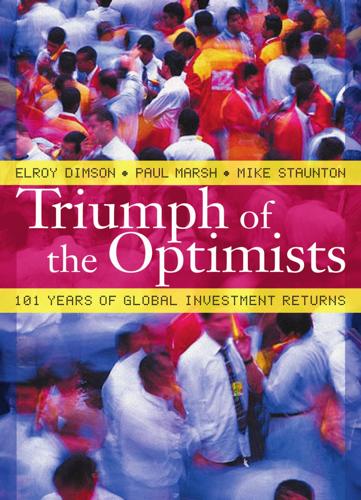
Triumph of the Optimists: 101 Years of Global Investment Returns
by
Elroy Dimson
,
Paul Marsh
and
Mike Staunton
Published 3 Feb 2002
Germany and Japan remain heavily weighted in the three key manufacturing sectors, basic industries, general industrials, and cyclical consumer goods, with these sectors making up around a third of their equity markets—three times higher than in the United States, and six times higher than the United Kingdom. At end-2000, information technology stocks made up nearly a quarter of the value of the US market—twice as much as in Japan and five times higher than the United Kingdom. However, the United Kingdom had the highest weightings in the other “new economy” sectors, media and telecommunications. Pharmaceuticals had an 11 percent weighting in both the US and UK markets, over twice as much as in Japan and six times more than in Germany. The UK weighting in oils was twice that of the United States, and 18 times higher than Japan’s, while Germany had zero weight.
…
Ironically, the latter may be misinterpreted as an increase in the cost of capital, and may contribute to a vicious circle of continuing loss of shareholder value. Corporate investment is not automatically a “good thing.” To add value, investment must be in worthwhile projects that cover the cost of capital, rather than in expansion, acquisition, or upgrading activities that fail to do so. After the “new economy” bubble burst, and during the setbacks that followed the terrorist outrages of September 11, 2001, many companies have not had sufficient appealing projects to allow them to benefit from today’s lower cost of capital. In the fall and winter of 2001, they may also have perceived an upward shock in required risk premia, though this is likely to be transitory.
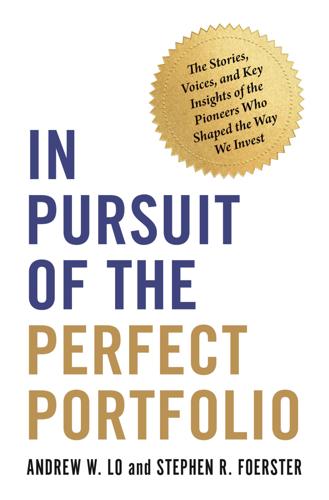
In Pursuit of the Perfect Portfolio: The Stories, Voices, and Key Insights of the Pioneers Who Shaped the Way We Invest
by
Andrew W. Lo
and
Stephen R. Foerster
Published 16 Aug 2021
and “What will happen to my portfolio when the Baby Boomers retire and begin liquidating their portfolios?” To answer these questions, Siegel coined the new term “growth traps” and discussed the global solution to the upcoming “age wave.” To address the question of long-run stock returns, Siegel compared an old-economy company, Standard Oil of New Jersey (which became ExxonMobil), with a new-economy company, IBM, and asked the question: Back in 1950, which stock would you buy and hold for the next fifty years (reinvesting all cash dividends into more stock)? He also provided investors with a crystal ball of sorts to assist in the decision-making process, giving them information on actual revenue, dividends, earnings, and sector growth.
…
If you do invest in individual stocks for your Perfect Portfolio, Siegel suggests you buy ones with sustainable cash flows that pay dividends. Consider stocks from China, India, and the rest of the world beyond the United States, Europe, and Japan. However, only consider stocks with reasonable valuations relative to their expected growth, and avoid the hot stocks in the “new economy” and initial public offerings. The long run has a logic of its own. Putting it all together, the recipe for Siegel’s Perfect Portfolio includes an equity holding made up of 50 percent in world index funds: 30 percent U.S.-based and 20 percent outside of the United States. You should allocate the remaining 50 percent to strategies that will enhance your return, such as high-dividend stocks and real estate investment trusts; top global firms (e.g., those in the S&P Global 100 index) and diversified multinationals; sector strategies such as pharmaceuticals, oil, and natural resources, and brand-name consumer staples; and stocks with a low price relative to growth.
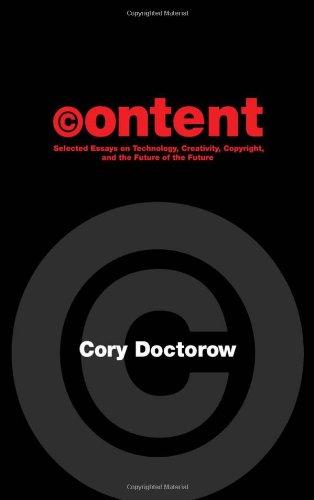
Content: Selected Essays on Technology, Creativity, Copyright, and the Future of the Future
by
Cory Doctorow
Published 15 Sep 2008
I blame the "Information Economy." No one really knows what "Information Economy" means, but by the early 90s, we knew it was coming. America deployed her least reliable strategic resource to puzzle out what an "information economy" was and to figure out how to ensure America stayed atop the "new economy" — America sent in the futurists. We make the future in much the same way as we make the past. We don't remember everything that happened to us, just selective details. We weave our memories together on demand, filling in any empty spaces with the present, which is lying around in great abundance.

Small Space Organizing: A Room by Room Guide to Maximizing Your Space
by
Kathryn Bechen
Published 1 Jan 2012
Whether you live in a city, a small town, or the countryside—in an apartment, condo, dorm room, or perhaps a cute little house you fondly refer to as a “cottage”—I’ve lived there too, so I know the challenges and frustrations, as well as the glorious freedoms and blessings, of living in a small space. Economic times have changed drastically both in America and across the world in recent years. Builder magazine’s 2010 “Home for a New Economy” was designed at just 1,700 square feet. And according to the Wall Street Journal in 2009, for the first time in twenty-seven years, home buyers opted for smaller homes. CNN Money reports 7 percent smaller—or one average-sized room. We’re rethinking whether or not we really want a huge home, a big yard, and all the “stuff” that goes with that lifestyle.

Futureproof: 9 Rules for Humans in the Age of Automation
by
Kevin Roose
Published 9 Mar 2021
It helps prevent burnout and exhaustion, allows us to step back and look at the bigger picture, and helps us step off the hamster wheel of productivity and reconnect with the most human parts of ourselves. And many of us, including me, could use a refresher course. In the old economy, when our value was mostly predicated on our physical labor, midday rest was often seen as an indulgent luxury. But in the new economy, when more creative and human skills are what will differentiate us from machines, we should reframe our attitude toward rest, viewing it as a critical survival skill. The science is quite clear on the link between rest and all kinds of human function. Studies conducted by neuroscientists at the Walter Reed Army Institute of Research and other top institutions have found that chronic sleep deprivation impairs our moral judgment, lowers our emotional intelligence, and harms our interpersonal communication skills.
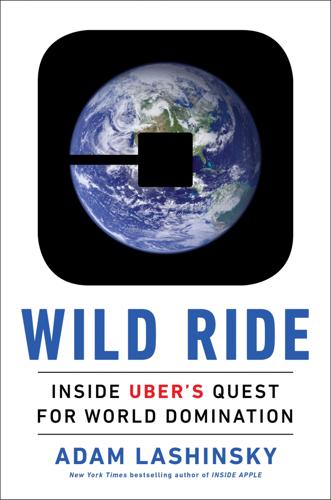
Wild Ride: Inside Uber's Quest for World Domination
by
Adam Lashinsky
Published 31 Mar 2017
And he sells advertising space to small-business-oriented vendors who want to reach drivers. These include established players that cater to freelancers, like QuickBooks Self-Employed, the bookkeeping software owned by Silicon Valley giant Intuit. As well, Campbell’s advertisers include a grab bag of vendors that, like his blog, have formed a new economy around Uber and similar companies. San Francisco’s Stride Drive, for example, offers drivers an app to track their mileage as well as expenses like health care, car washes, parking, and tolls. DailyPay is a New York start-up that cashes out drivers on a daily basis. The Rideshare Guy’s steadiest source of revenue is derived from the drumbeat of new drivers for Uber, Lyft, and other services.
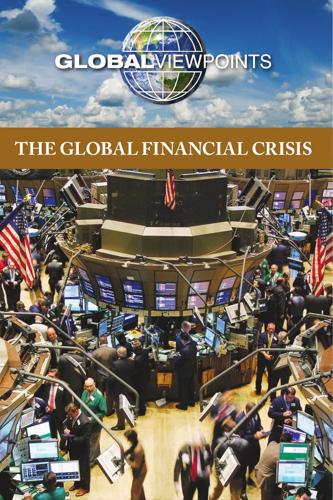
Global Financial Crisis
by
Noah Berlatsky
Published 19 Feb 2010
Without the third factor—the legacy of the “central banker of the century”—the crisis probably would have never occurred. The monetary policy of low interest rates—introduced by Alan Greenspan [chairman of the Federal Reserve from 1987 to 2006] in response to the post-9/11 recession and the collapse of the new economy “bubble” [a speculative bubble involving Internet and tech 56 Causes of the Global Financial Crisis stocks]—injected an enormous amount of liquidity into the global monetary system. This reduced short-term interest rates to 1%—their lowest level in 50 years. What’s more, Greenspan spent the next two years maintaining interest rates at levels significantly below equilibrium.

The Chomsky-Foucault Debate: On Human Nature
by
Noam Chomsky
and
Michel Foucault
Published 1 Jan 1974
In Discipline and Punish, what I wanted to show was how, from the seventeenth and eighteenth centuries onward, there was a veritable technological take-off in the productivity of power. Not only did the monarchies of the Classical period develop great state apparatuses (the army, the police, and fiscal administration) but, above all, in this period what one might call a new “economy” of power was established, that is to say, procedures that allowed the effects of power to circulate in a manner at once continuous, uninterrupted, adapted, and “individualized” throughout the entire social body. These new techniques are both much more efficient and much less wasteful (less costly economically, less risky in their results, less open to loopholes and resistances) than the techniques previously employed, which were based on a mixture of more or less forced tolerances (from recognized privileges to endemic criminality) and costly ostentation (spectacular and discontinuous interventions of power, the most violent form of which was the “exemplary,” because exceptional, punishment).
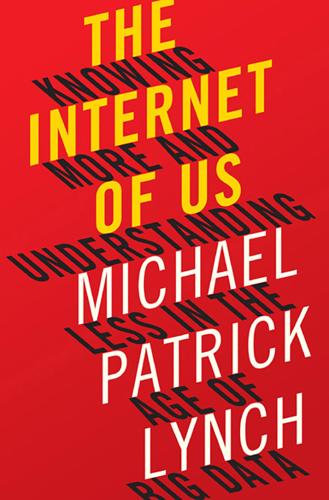
The Internet of Us: Knowing More and Understanding Less in the Age of Big Data
by
Michael P. Lynch
Published 21 Mar 2016
—Operation Ivy Preface The changes wrought by the Internet are sometimes compared to those brought about by the printing press. In both cases, technological advances led to new ways of distributing information. Knowledge became more widely and cheaply available, which in turn led to mass education, new economies and even social revolution. But in truth, the comparison with the printing press underplays the significance of the changes being brought about by the Internet today. The better comparison is with the written word. Writing is a technology, a tool. Yet its invention wasn’t just a change in how information and knowledge was distributed.
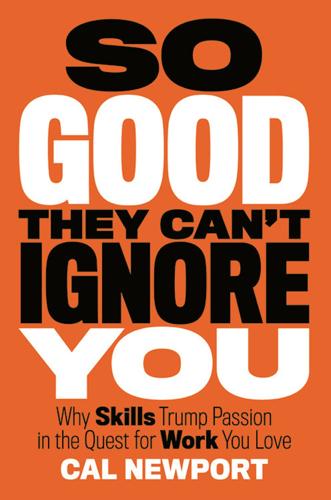
So Good They Can't Ignore You: Why Skills Trump Passion in the Quest for Work You Love
by
Cal Newport
Published 17 Sep 2012
Generational Grumbling and the New Life Stage of Emerging Adulthood—Commentary on Trzesniewski & Donnellan (2010),” Perspectives on Psychological Science 5, no. 1 (2010): 89–92. See section titled “Slackers or Seekers of Identity-Based Work?” for the quote and related discussion. 4. Julianne Pepitone, “U.S. job satisfaction hits 22-year low,” CNNMoney.com, January 5, 2010, http://money.cnn.com/2010/01/05/news/economy/job_satisfaction_report/. 5. Alexandra Robbins and Abby Wilner, Quarterlife Crisis: The Unique Challenges of Life in Your Twenties (New York: Tarcher, 2001). 6. Interview with Peter Travers, Roadtrip Nation Online Video Archive, 2006, http://roadtripnation.com/PeterTravers. Chapter 4: The Clarity of the Craftsman 1.
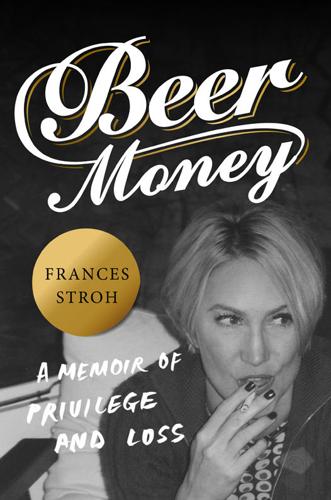
Beer Money: A Memoir of Privilege and Loss
by
Frances Stroh
Published 2 May 2016
Now, with the retreat of the automotive industry to the suburbs and abroad, all signs of manufacturing had finally vanished in Detroit, its smokestacks emitting no smoke. In many parts of the city, only footprints of manufacturing plants remained where the buildings themselves had been leveled. Defunct cement silos dotted the riverfront because the city was too broke to take them down. Crack cocaine, the cornerstone of the new economy, was a difficult commodity to tax. Yet all the devastation had given birth to Eminem and the Detroit underground hip-hop scene, the first sign of life in a city that had been dying for decades. It had taken forty years, but Detroit now had its signature music scene again, one that reflected the hopelessness of the times, just as surely as sixties Motown had once mirrored the burgeoning black middle class’s sense of abundance and upward mobility.
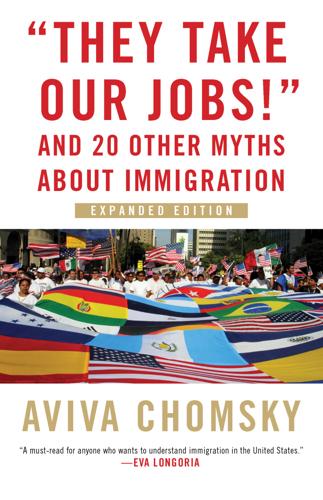
"They Take Our Jobs!": And 20 Other Myths About Immigration
by
Aviva Chomsky
Published 23 Apr 2018
Temporary Worker Programs: Lessons Learned,” Migration Information Source, March 1, 2004, www.migrationinformation.org/Feature/display.cfm?ID=205. 8. Nancy Folbre, The Invisible Heart: Economics and Family Values (New York: New Press, 2001); Barbara Ehrenreich and Arlie Russell Hochschild, “Introduction,” in Global Woman: Nannies, Maids, and Sex Workers in the New Economy (New York: Metropolitan Books, 2003), 7–9. 9. Bruce Western, Vincent Schiraldi, and Jason Ziedenberg, “Education and Incarceration,” Justice Policy Institute, 2003, www.justicepolicy.org/downloads/EducationandIncarceration1.pdf. See also Ira Glasser, “Drug Busts=Jim Crow,” The Nation, July 10, 2006, 24–26. 10.
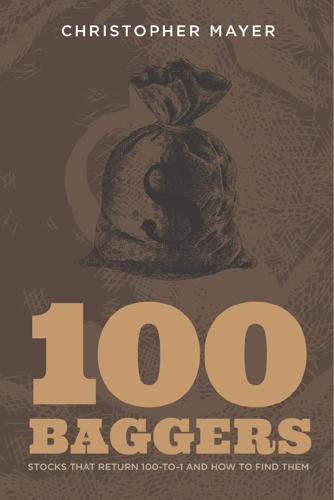
100 Baggers: Stocks That Return 100-To-1 and How to Find Them
by
Christopher W Mayer
Published 21 May 2018
Here I borrow from another favorite sage, that corncob-pipe-smoking disheveled man of letters Paul Goodman. “I can’t think abstractly,” he wrote. “I start from concrete experience.” He cracked that because he stuck so close to concrete experience, he “cannot really write fiction.” People take easily, though, to big ideas: The new economy. Peak oil. The Chinese century. The Great Moderation. All of these things are just abstract ideas. They are predictions about how the world might look. But they are far from concrete experience—and hence likely to lead you astray. And each of the abstractions I mentioned has led investors astray.
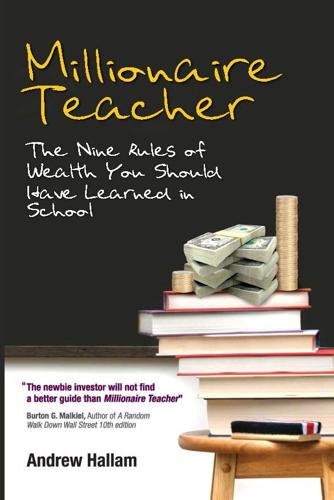
Millionaire Teacher: The Nine Rules of Wealth You Should Have Learned in School
by
Andrew Hallam
Published 1 Nov 2011
Finance, price-to-earnings ratios as of January 20117 You can find tech companies with occasionally lower P/E ratios than older economy companies, but generally people are willing to pay higher prices for the rush of owning tech stocks—even though, as an aggregate, they tend to produce lower returns than old economy stocks when all dividends are reinvested. In Jeremy Siegel’s enlightening book, The Future for Investors—Why the Tried and True Beats the Bold and New, the Wharton business professor concludes an exhaustive search indicating that when investors reinvest their dividends, they’re far better off buying old economy stocks than new economy (tech) stocks. Dividend payouts for old economy stocks tend to be higher, so when reinvested, they can automatically purchase a greater number of new shares. New shares automatically purchased with dividends means that there are now more shares to gift further dividends. The effect snowballs. This is the main reason Siegel found that history’s most profitable stocks over the past 50 years have names such as Exxon Mobil <www.exxonmobil.com/Corporate>, Johnson & Johnson <www.jnj.com>, and Coca-Cola <www.coca-cola.com>, instead of names such as IBM <www.ibm.com> and Texas Instruments <www.ti.com>.8 Most investors don’t realize this.
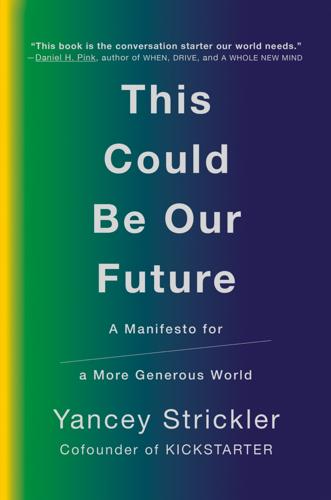
This Could Be Our Future: A Manifesto for a More Generous World
by
Yancey Strickler
Published 29 Oct 2019
This disregard for “how the real world works” let us think a step beyond how things were. It gave us a wider spectrum of what could be possible. Ten years later, billions of dollars have changed hands and tens of millions of people have experienced crowdfunding just the way it was imagined. Through Kickstarter, GoFundMe, and others. A whole new economy based on the generosity of people supporting a fellow human being or idea. The status quo’s view of what’s possible was too limited. It often is. * * * ■ ■ ■ ■ Crowdfunding is far from the only human-made thing we think of as natural. What a piano looks like, why we drink orange juice for breakfast, the shape of the letters you read right now.
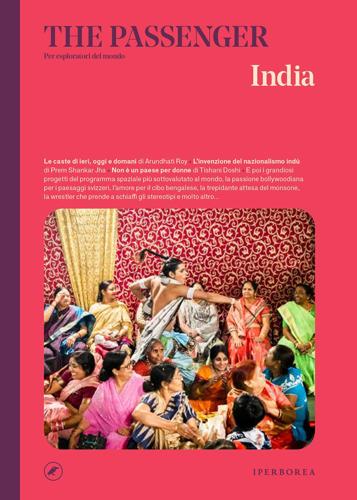
The Passenger - India
by
AA.VV.
Published 19 Feb 2020
Nel censimento del 1931, l’ultimo a riportare le caste di appartenenza, i vaiśya costituivano il 2,7 per cento della popolazione (mentre gli intoccabili costituivano il 12,5 per cento). Data la loro possibilità di avere accesso a cure mediche migliori e di assicurare un futuro migliore ai loro figli, la cifra dei vaiśya, più che cresciuta, dev’essere probabilmente diminuita. Comunque sia, la loro influenza nella new economy è straordinaria. Nella grande come nella piccola impresa, nell’agricoltura come nell’industria, il sistema castale e il capitalismo si sono fusi in un’inquietante miscela esclusivamente indiana. Il clientelismo è connaturato al sistema delle caste. I vaiśya fanno solo il loro dovere, che è di origine divina.
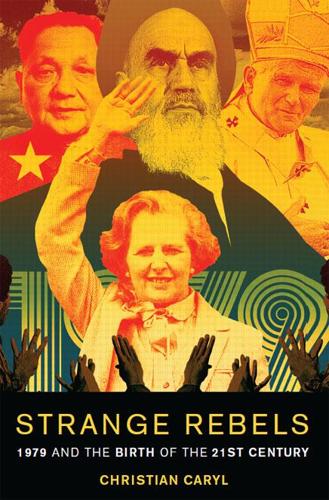
Strange Rebels: 1979 and the Birth of the 21st Century
by
Christian Caryl
Published 30 Oct 2012
Ironically, potential foreign investors shared their appreciation; to them, Deng’s enclave strategy offered a vital degree of protection against political backlash from the Maoists. To be sure, the SEZs needed time to show results, but that was not a problem. Reform in China was supposed to be slow; the country had experienced tumult enough. The main thing was that the keystones of a new economy—one driven by efficiency rather than ideological correctness—had been laid. The new revolution—in its own cautious way—could begin. No one embodied that revolution better than Rong Zhiren. The restaurant that he opened in that spring of 1979 proved a big success. Three years later, by now an affluent Guangzhou entrepreneur, he received the privilege of meeting Deng Xiaoping at a social event for Guangdong Province luminaries.
…
The rising prosperity of the industrial areas along the coasts attracted huge numbers of job-seeking immigrants from the interior, setting off what would ultimately become the largest peacetime migration in history. The rise of a new class of business owners and managers transformed the social hierarchy. The Communist Party was at first unsure whether to welcome them into its ranks or to hold them at arm’s length. In keeping with the demands of a new economy, the country’s legal system had to be completely reengineered. Growing numbers of foreigners appeared on the streets, and knowledge of the outside world proliferated. Blue and gray Mao suits gave way to a diverse global wardrobe. Western fast food changed eating habits. Until the end of the 1970s, the average Chinese had dreamed of the Four Big Things: a sewing machine, a bicycle, a wristwatch, and a radio.
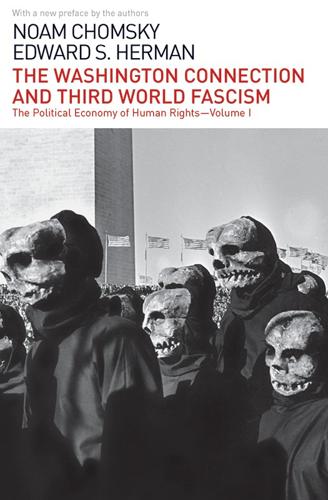
The Washington Connection and Third World Fascism
by
Noam Chomsky
Published 24 Oct 2014
In short, a very simpatico country, “with a long tradition of cooperation and good feeling towards the people of the United States.” The vitality of the country was shown after the earthquake that took 30,000 lives and wiped out the capital city. “But immediately its dynamic young President, Anastasio Somoza Debayle, leaped into the ruins, worked alongside the 2.2 million Nicaraguans, and built a new economy—healthier and stronger than ever before.” Somoza “believes in the Free Enterprise System,” and needless to say, runs “a full-time program of improvements in the quality of life of the agriculturalist” and maintains “a calm, secure political climate” with “free elections.” A year later, the calm, secure political climate had reached the point where the New York Times Magazine featured an article entitled “National Mutiny in Nicaragua,” describing how “almost every sector of the country—radicals and conservatives, rich and poor—is rising up against a dynastic dictatorship that can no longer count on the support of the United States” (a fact not uncorrelated with the disaffection among wealthy businessmen, who are so “dismayed by what [their spokesman considers] the brutality and corruption of General Somoza’s dictatorship” that they conducted a two-week work stoppage to try to force his resignation, and this having failed, formed an Opposition Front that includes the guerrillas aimed at the overthrow of General Somoza).265 One reason for what Riding describes as “the ‘betrayal’ of the Somoza family by two of its oldest allies—the wealthy business elite and the United States Government,” is the fantastic corruption.
…
A year later, the calm, secure political climate had reached the point where the New York Times Magazine featured an article entitled “National Mutiny in Nicaragua,” describing how “almost every sector of the country—radicals and conservatives, rich and poor—is rising up against a dynastic dictatorship that can no longer count on the support of the United States” (a fact not uncorrelated with the disaffection among wealthy businessmen, who are so “dismayed by what [their spokesman considers] the brutality and corruption of General Somoza’s dictatorship” that they conducted a two-week work stoppage to try to force his resignation, and this having failed, formed an Opposition Front that includes the guerrillas aimed at the overthrow of General Somoza).265 One reason for what Riding describes as “the ‘betrayal’ of the Somoza family by two of its oldest allies—the wealthy business elite and the United States Government,” is the fantastic corruption. A case in point was the behavior of the dynamic young president who “leaped into the ruins” to build a new economy after the Managua earthquake. In fact, relief supplies were stolen by Somoza’s cronies and the National Guardsmen who constitute his “private army.” But “while scandalous, the looting of emergency supplies was modest compared to the way the Somoza family and its associates seized ‘reconstruction’ as an opportunity for further enrichment,” relocating the “new” Managua on some land that happened to belong to—or was quickly bought up by—the Somoza family.
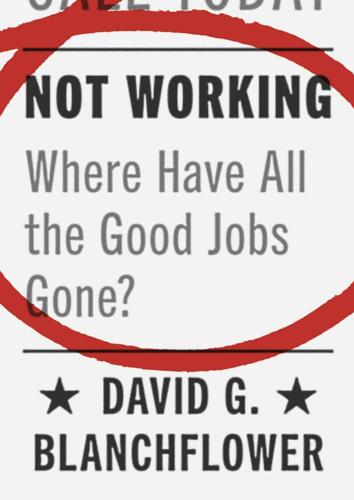
Not Working: Where Have All the Good Jobs Gone?
by
David G. Blanchflower
Published 12 Apr 2021
Younger voters, who have grown up and prospered in a more mobile and interconnected world, tend to have weaker attachments to their nation of birth, a thinner and more instrumental sense of what national identity means, a greater openness to immigration, and a greater acceptance of ethnic diversity. (2014, 156) The Left-Behinds Voted for Le Pen In an intriguing essay, Christopher Caldwell suggests that for those cut off from France’s new-economy citadels, the misfortunes are serious. He claims they’re stuck economically. He points out that three years after finishing their studies, three-quarters of French university graduates are living on their own; by contrast, three-quarters of their contemporaries without university degrees still live with their parents.
…
Patrick Greenfield, “Airbus Plans UK Job Cuts amid Fears of Hard Brexit Impact,” Guardian, June 19, 2018. 15. Aditya Chakrabortty, “Airbus Has Delivered a Body Blow to Brexit Britain: It Won’t Be the Last,” Guardian, June 22, 2018. 16. Peter Campbell, “Jaguar Land Rover Says Hard Brexit Will Cost It £1.2bn a Year,” Financial Times, July 4, 2018. 17. Ibid. 18. https://money.cnn.com/interactive/news/economy/brexit-jobs-tracker/. 19. Leo Lewis, “Japanese Drugmaker Moves European HQ from London over Brexit,” Financial Times, March 11, 2019. 20. Ian Ayres, “Man vs. Machine—Grape Expectations: The Price of Wine,” Financial Times, September 1, 2007. 21. I even had a hat made for them saying “Myth and Measurement” to go with our “Wage Curve” hats. 22.

The Billionaire's Apprentice: The Rise of the Indian-American Elite and the Fall of the Galleon Hedge Fund
by
Anita Raghavan
Published 4 Jun 2013
Few if any of the HBS students descending on Atlanta that weekend had come for recreation or entertainment. They had traveled south to make one of the most important decisions of their lives: whether to join McKinsey after getting an MBA from Harvard Business School or dip their toes in the brave new economy. The group was a cosmopolitan crew, and the big draw was the man whose very appointment to the top job changed the face of McKinsey, quite literally transforming it from a white-shoe consultancy into a multicultural meritocracy. Rajat Gupta had a reputation for applying Indian philosophy to the Western business milieu.
…
Often his goal-driven American colleagues would challenge him, asking, “If something doesn’t go right, ‘Aren’t you unhappy about it?’” Gupta would offer a philosopher king–like reply entirely uncharacteristic of the operating style of a corporate executive. It was as if he was more new age than new economy. “I think if we judge ourselves by results too much, we’re always out of balance…Either we are far happier than we should be or far sadder.” Gupta again turned to the subject of Hinduism in his speech to the young HBS students. Rightly suspecting that many in the audience did not have a clue about the topic, he laid out the four stages of a man’s life.
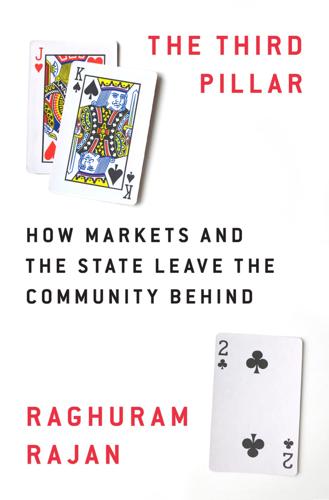
The Third Pillar: How Markets and the State Leave the Community Behind
by
Raghuram Rajan
Published 26 Feb 2019
So Europe remains an important, potentially valuable idea, but with only modest popular support. CONCLUSION A decade after the crisis, the world economy has recovered, in part by pumping up debt once again. Even as financial vulnerabilities build again, technology progresses further, and many people are still unprepared for the new economy. Society needs to rebalance. Both the state and community pillars have to give people the support they need to engage in global markets. Only then will they resist the urge to balkanize it with specific protections. Unfortunately, far too many people now distrust the elite. The policies of openness that served the world well after the Second World War are now being questioned, and it is hard for the mainstream politician to explain in simple words why they still are relevant when confronted by the simplistic but more direct arguments of the populist.
…
Instead of a company merging with all competitors who produce a product, ostensibly to obtain economies of scale, we could instead retain many competitors who cooperate on specific projects through alliances whenever the economies of scale of doing so are really significant. Put differently, corporations will adapt to effective antitrust enforcement, and given the improvements in contracting and communications, we will likely get both competition and productive efficiency at the same time. INTELLECTUAL PROPERTY AS A SOURCE OF MARKET POWER In the new economy being created by the ICT revolution, information, knowledge, creative works, and ideas—broadly termed intellectual property—are the key assets. Such intangible assets are nonrival—if I sing or listen to a song, it does not preclude you from singing or listening to that same song. If a song could be sung by anybody, the songwriter could never benefit monetarily from her creativity; without legal protection, intellectual property, especially property that needs to be used publicly, would have no value.
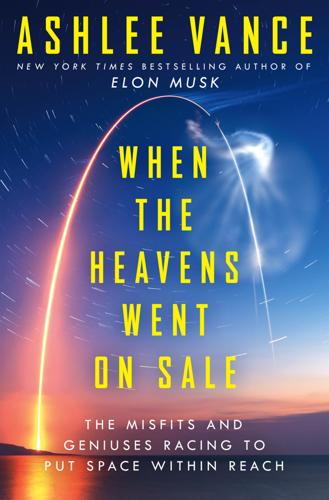
When the Heavens Went on Sale: The Misfits and Geniuses Racing to Put Space Within Reach
by
Ashlee Vance
Published 8 May 2023
It appeared that the rules of engagement were changing—fast—regarding both how we get to space and what we can do upon arriving in orbit. When added together, SpaceX and Planet cemented the belief of those who wanted to believe that private industry could push governments out of the way and come to dominate activity in space. The notion that a new economy was being formed in low Earth orbit felt more real than ever. From 2017 on, billions upon billions of investment dollars began to flow toward space start-ups, with each new company envisioning itself as the next SpaceX or the next Planet. The questions a curious onlooker might have asked around that time were: How did Planet come into existence?
…
I’ve provided you with a deep look at what it’s like to create an entirely new field of play for capitalism. And I’ve been following the story in near real time. There is a chance that one or more of the companies presented in these pages will no longer exist by the time this work reaches your hands or ears. What’s obvious to me, though, is that some form of this new economy will be built, and it will play a major role in all of our lives. The space internet, the images, and the science emanating from low Earth orbit will be the basis of a new computing infrastructure. The big bet, as I’ve mentioned, is that other effects we cannot yet articulate or fathom will follow.
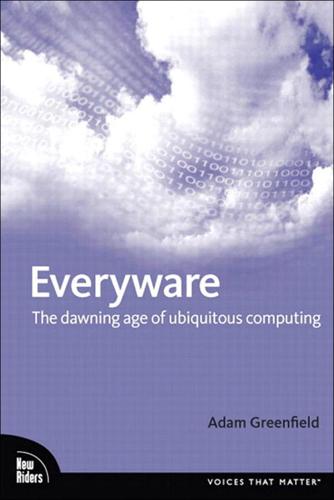
Everyware: The Dawning Age of Ubiquitous Computing
by
Adam Greenfield
Published 14 Sep 2006
Meanwhile, at the human-machine interface, the plummeting cost of processing resources meant that long-dreamed-of but computationally-intensive ways of interaction, such as gesture recognition and voice recognition, were becoming practical; they would prove irresistible as elements of a technology that was, after all, supposed to be invisible-but-everywhere. And beyond that, there was clearly a ferment at work in many of the fields touching on ubicomp, even through the downturn that followed the crash of the "new economy" in early 2001. It had reached something like a critical mass of thought and innovation by 2005: an upwelling of novelty both intellectual and material, accompanied by a persistent sense, in many quarters, that ubicomp's hour had come 'round at last. Pieces of the puzzle kept coming. By the time I began doing the research for this book, the literature on ubicomp was a daily tide of press releases and new papers that was difficult to stay on top of: papers on wearable computing, augmented reality, locative media, near-field communication, bodyarea networking.

Paper Machines: About Cards & Catalogs, 1548-1929
by
Markus Krajewski
and
Peter Krapp
Published 18 Aug 2011
“The technical core of Gutenberg’s invention consists in dissolving the articulated sequence of words and letters into their components so as to deploy them as isolated single elements over and over again.”29 In contrast to printing with full-page wood carvings (so-called block books), typography owes its potential for recombination to individual precision-cast letters of a special alloy of lead and a little antimony. The typeface turns into a technical element, and its random Temporary Indexing 15 combination and rearrangement turns handwriting into standardized script. This paves the way for a new economy of textual production that overcomes the laborious and error-prone manual copying and lowers production expenses. Henceforth, bookmakers can count on reuse. The types for book and newspaper layout lie in wooden cases with about 110 fields for German and 160 for Roman letters, i.e. Latin, English, French &c.; the larger number is required by accents and capital letters.
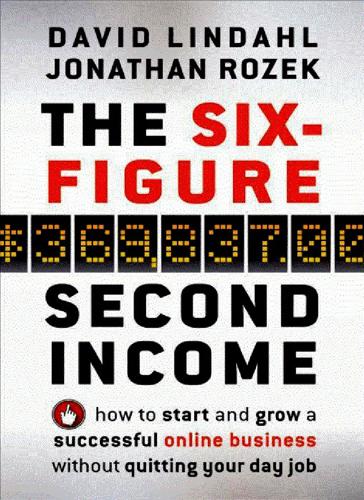
The Six-Figure Second Income: How to Start and Grow a Successful Online Business Without Quitting Your Day Job
by
David Lindahl
and
Jonathan Rozek
Published 4 Aug 2010
So if you’re discussing insect bites, show a nasty red mosquito bite. You could either take those pictures yourself, or simply go to one of the stock-photo agencies on the web to buy them. You don’t know about microstock agencies, as they’re known? Oh, let me digress. Here’s another great example of people making money in this new economy. The lousy old way of getting photos for your products was to hire a professional or you had to go to a big, arrogant stock-photo agency. They would charge you hundreds or even thousands of dollars for a single solitary photograph. And they wouldn’t stop there—they then would require you to pay them a royalty every time that photo was published!
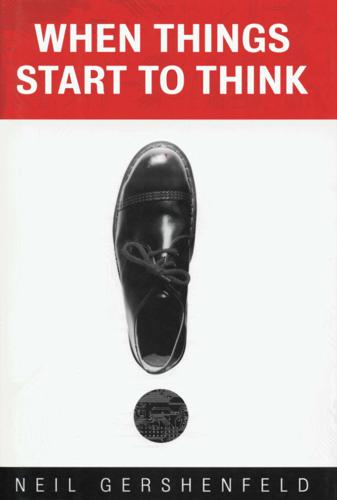
When Things Start to Think
by
Neil A. Gershenfeld
Published 15 Feb 1999
People, and countries, that don't have access to bit-dollars are increasingly being left behind, unable to compete in the digitally accelerated economy. The corner grocer has to move a lifetime of milk to match the resources committed by a few keystrokes on any trader's keyboard. And people who can participate in the new economy are seeing bigger and faster swings between spectacular riches and ruin because normal economic fluctuations can be magnified almost impossibly large. Just as it was once thought that printed dollars needed to be backed up by a gold standard, we now assume that bit-dollars must be interchangeable with atom-dollars.
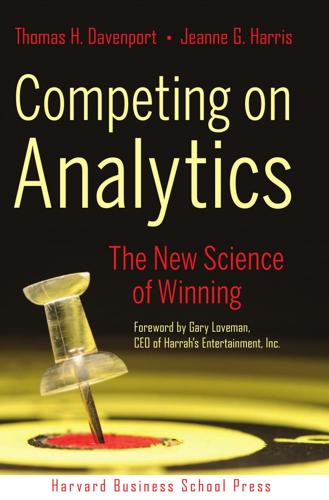
Competing on Analytics: The New Science of Winning
by
Thomas H. Davenport
and
Jeanne G. Harris
Published 6 Mar 2007
That dent in his wallet got him thinking: why didn’t video stores work like health clubs, where you paid a flat monthly fee to use the gym as much as you wanted? Because of this experience—and armed with the $750 million he received for selling his software company—Reed Hastings jumped into the frothy sea of the “new economy” and started Netflix, Inc. Pure folly, right? After all, Blockbuster was already drawing in revenues of more than $3 billion per year from its thousands of stores across America and in many other countries—and it wasn’t the only competitor in this space. Would people really order their movies online, wait for the U.S.
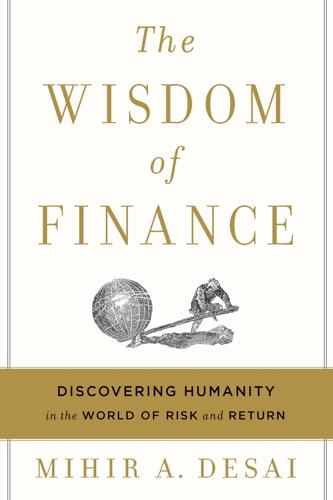
The Wisdom of Finance: Discovering Humanity in the World of Risk and Return
by
Mihir Desai
Published 22 May 2017
Robert Morris’s Folly: The Architectural and Financial Failures of an American Founder. New Haven, CT: Yale University Press, 2014; Rappleye, Charles. Robert Morris: Financier of the American Revolution. New York: Simon & Schuster, 2010; and McCraw, Thomas K. The Founders and Finance: How Hamilton, Gallatin, and Other Immigrants Forged a New Economy. Cambridge, MA: Belknap Press of Harvard University Press, 2012. The early evolution of the law around bankruptcy, and Robert Morris’s role in it, are best captured by Mann, Bruce H. Republic of Debtors: Bankruptcy in the Age of American Independence. Cambridge, MA: Harvard University Press, 2002.
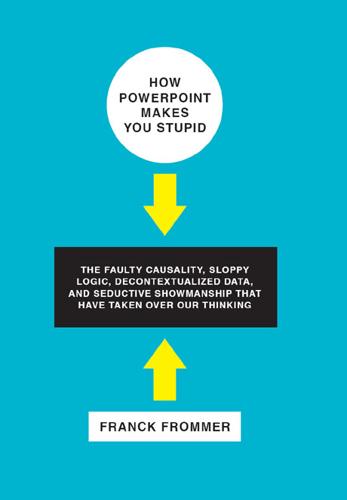
How PowerPoint Makes You Stupid
by
Franck Frommer
Published 6 Oct 2010
But the story becomes troubling when one recognizes that the generalization of bullet points paradoxically destroys an element that ought to be at the heart of every presentation: logical sequencing and a smooth argument. In a 2003 article widely circulated on the Web and devoted to Microsoft tools, a pioneer of the new economy, Rafi Haladjian, denounced the illusion of describing the world by means of lists: “instead of arguing, you only have to stack up, count, ‘bullet-list,’ and string out verbs in the infinitive.” The effects are obvious: they give the “illusion of a perfect mastery of the world” and tell a story running in a single direction following an unchangeable thread.18 How can one not admire, for example, the way this company can recount the development of its primary sectors of activity in a few bullet points: • Decline in leather goods on high comparative bases • Slowing of activity in ready-to-wear • Continuation of sustained growth in footwear • Good performance of beauty royalties One can go very far in this register of bullet-point narrative, as indicated by this slide from a presentation titled “The Death of Jesus Christ”: Jesus Is Crucified • Jesus is brought before the court

Foundation
by
Isaac Asimov
Published 31 May 2004
With it we have brought the Four Kingdoms under our control, even at the moment when they would have crushed us. It is the most potent device known with which to control men and worlds. “The primary reason for the development of trade and traders was to introduce and spread this religion more quickly, and to insure that the introduction of new techniques and a new economy would be subject to our thorough and intimate control.” He paused for breath, and Mallow interjected quietly, “I know the theory. I understand it entirely.” “Do you? It is more than I expected. Then you see, of course, that your attempt at trade for its own sake; at mass production of worthless gadgets, which can only affect a world’s economy superficially; at the subversion of interstellar policy to the god of profits; at the divorce of nuclear power from our controlling religion—can only end with the overthrow and complete negation of the policy that has worked successfully for a century.”
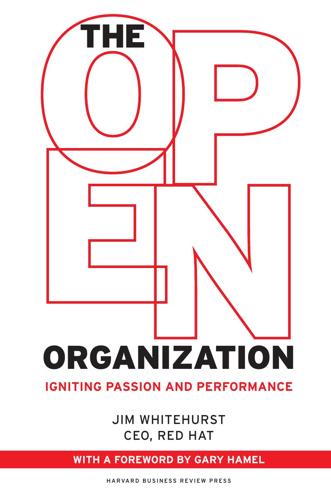
The Open Organization: Igniting Passion and Performance
by
Jim Whitehurst
Published 1 Jun 2015
After a while, it will become natural. 5.Try to observe the difference in execution of decisions that were made openly, with input, versus those that truly came from the top down. 7 Catalyzing Direction The purpose of the new management model called the open organization is to build an organization capable of thriving in the new economy—an organization that can respond quickly to external changes without relying on running things up the chain of command. An open organization encourages and fosters initiative and creativity among its members rather than, as Andrew McAfee of the MIT Center for Digital Business puts it, running operations based on “HiPPO—the highest-paid person’s opinion.”1 The new model that is evolving also appeals to a new generation of employees whose expectations are vastly different from those of people who preceded them in the workplace.
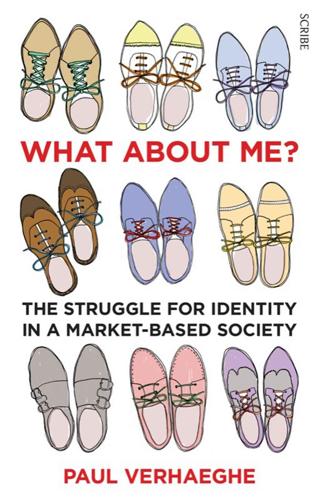
What About Me?: The Struggle for Identity in a Market-Based Society
by
Paul Verhaeghe
Published 26 Mar 2014
Too much parity is as harmful as too much disparity, and both spark their own brand of aggression and fear. The new labour organisation should preferably be based on a meritocratic system where the focus is on quality, and rewards are not just financial. The same should apply on a larger scale to the new economy, which must shed the idea of quantitative growth as fast as possible in favour of qualitative sustainability.* That notion of ‘growth’ is possibly the most pernicious legacy of the Scala Naturae: ever more, ever higher, exalted above the rest. [* This, of course, relates to the most serious problem confronting us today, which is only obliquely touched upon in this book: the damage that human overpopulation and the economy in its current form have done to the environment.

The Best Interface Is No Interface: The Simple Path to Brilliant Technology (Voices That Matter)
by
Golden Krishna
Published 10 Feb 2015
Free—a business strategy that’s the result of many probable factors, among them: being unable to motivate customers with an immediate need to pay, creating a valuable service in a business sector that has traditionally been free, or making an effort to massively and rapidly grow the size and impact of technological products. These things glue many for-profits who build interfaces to the idea of giving it all away in order to survive the brutal, ultracompetitive electronic marketplace. And despite popular new economy writings like Chris Anderson’s book Free—which contains a variety of case studies and methods—tech’s big players have largely fallen on a single way to provide free: ads, ads, and more ads. Although sometimes cloaked as sponsored stories, promoted posts, native advertising, or advertorials . . . they’re ads.

Move Fast and Break Things: How Facebook, Google, and Amazon Cornered Culture and Undermined Democracy
by
Jonathan Taplin
Published 17 Apr 2017
Mark Grief, The Age of the Crisis of Man: Thought and Fiction in America, 1933–1973 (Princeton: Princeton University Press, 2015). Chapter Twelve: The Digital Renaissance Christopher Moyer, “How Google’s AlphaGo Beat Lee Sedol, a Go World Champion,” Atlantic, March 28, 2016, www.theatlantic.com/technology/archive/2016/03/the-invisible-opponent/475611/. Lawrence Summers and J. Bradford DeLong, “The ‘New Economy’: Background, Historical Perspective, Questions, and Speculations,” Federal Reserve Bank of Kansas City, August 2001, www.kansascityfed.org/publicat/sympos/2001/papers/S02delo.pdf. The Warner Music Group filing to the Registrar of Copyrights can be found at www.regulations.gov/document?D=COLC-2015-0013-86022.
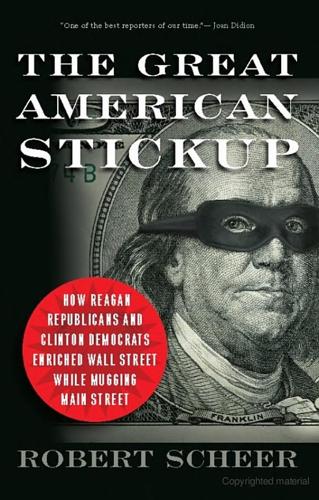
The Great American Stickup: How Reagan Republicans and Clinton Democrats Enriched Wall Street While Mugging Main Street
by
Robert Scheer
Published 14 Apr 2010
: Henry Paulson Jr., On the Brink: Inside the Race to Stop the Collapse of the Global Financial System (New York: Hachette, 2010), 861-867, Kindle2 2. 1 “It was a humbling question”: Ibid. 2 “perfect storm”: Evan Thomas and Michael Hirsch, “Rubin’s Detail Deficit,” Newsweek, December 8, 2008. 11 “irrational exuberance”: Alan Greenspan, remarks at the Annual Dinner and Francis Boyer Lecture of the American Enterprise Institute for Public Policy Research, Washington, DC, December 5, 1996, www.federalreserve.gov/boardDocs/speeches/1996/19961205.htm. 16 “I don’t think the worst is over”: Chrystia Freeland, “Lunch with the FT: Larry Summers,” Financial Times, July 10, 2009, www.ft.com/cms/s/2/6ac06592-6ce0 -11de-af56-00144feabdc0.html. 16 “In a recession this deep”: Robert Reich, Robert Reich’s Blog, July 2009, robertreich.blogspot.com/2009/07/when-will-recovery-begin-never.html . 16 “Until consumers start spending again”: Ibid. 18 “The American experiment has worked in large part because”: Remarks of Senator Barack Obama, “Renewing the American Economy,” Cooper Union, New York, March 27, 2008. 20 Fortune magazine was headlined “Robert Rubin”: Katie Benner, “Robert Rubin: What Meltdown?” CNN-Money. com, January 31, 2008, money.cnn.com/2008/01/31/news/economy/rubin_benner.fortune/index.htm?postversion=2008013113 . 21 “A lending catastrophe”: Ibid. 22 “This loss has not happened by accident”: Obama, “Renewing the American Economy.” 23 “Unfortunately, instead of establishing a 21st century”: Ibid. 24 “the $300 million lobbying”: Ibid. 2. THE HIGH PRIESTESS OF THE REAGAN REVOLUTION 26 “called her ‘The Margaret Thatcher of financial regulation’”: Wendy Gramm, Mercatus Center Distinguished Senior Scholar, Mercatus Center, George Mason University, mercatus.org/wendy-gramm. 27 “Unfortunately, this legislation does not deal”: Ronald Reagan, Remarks on Signing the Garn-St.
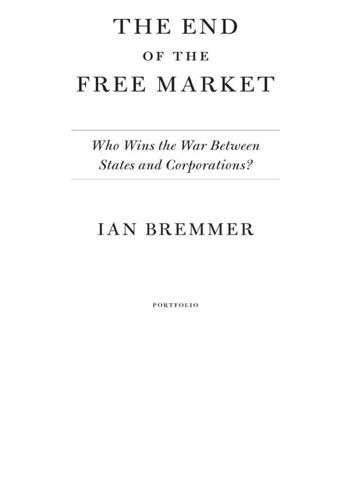
The End of the Free Market: Who Wins the War Between States and Corporations?
by
Ian Bremmer
Published 12 May 2010
Once Marxism gained a real-world foothold following the creation of the Soviet Union in 1922, this debate began to get ugly. Liebknecht was long dead by the 1920s, but the argument gained new force among some within the Bolshevik elite. “We waged revolution on behalf of the working class,” they argued. “If the state is now to run the new economy, hasn’t the working class simply inherited new masters?” Thus was born the first common use of the phrase state capitalism, a term of abuse favored by those who worried that leading Bolsheviks weren’t communist enough. As early as 1922, Austrian economist Ludwig von Mises, a later hero of the libertarian movement, identified and attacked this usage:The Socialist movement takes great pains to circulate frequently new labels for its ideally constructed state.
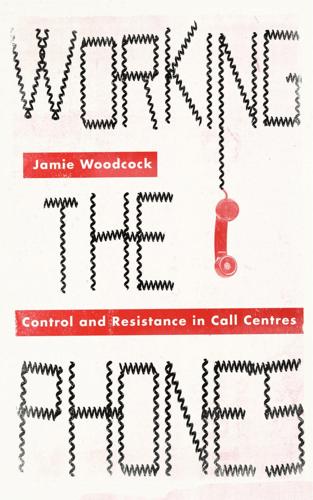
Working the Phones: Control and Resistance in Call Centres
by
Jamie Woodcock
Published 20 Nov 2016
This was ‘indicative of a trend to de-regulation which accelerated in the 1990s’.28 The continuation of this process into further public utilities in the 1980s saw increasing areas becoming subjected to the pressures of competition.29 It is therefore necessary to understand that, as Ellis and Taylor argue: The explosive growth of the call centre is as much the product of political economic factors; the impact of the policies of deregulation and privatisation, restructuring at the levels of industry and/or firm, the intensification of economy-wide and sectoral competitive pressure, the growth of the ‘new economy’, and underpinning everything the compulsion to maximise profits and reduce costs.30 The 1986 Financial Services and Building Society Acts accelerated the changes taking place. This meant the ‘inter-penetration of the hitherto discrete markets’ of banking, insurance and financial services,31 which led to an increasing level of competition between firms tied up with the continuing advancements of technology.
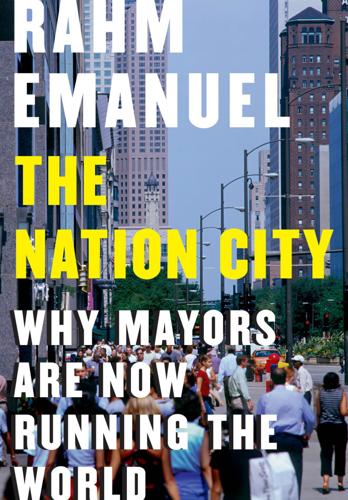
The Nation City: Why Mayors Are Now Running the World
by
Rahm Emanuel
Published 25 Feb 2020
” * * * “In a globalized world, protectionist reflexes can only separate us and spread fear,” says Anne Hidalgo, the decidedly outward-facing mayor of Paris. Under her leadership, the birthplace of the Age of Enlightenment has remained true to its heritage, with innovative ideas and programs involving immigration, climate change, and the new economy. Hidalgo became the city’s first female mayor after serving for thirteen years as the deputy mayor. She’s had her work cut out for her. Like many major cities in Europe, Paris has been on the front line of the flow of refugees, men and women and children fleeing war, persecution, and poverty who have put their lives at risk and who have sometimes lost everything in order to stay alive and try to find a better life for themselves.

ECOVILLAGE: 1001 ways to heal the planet
by
Ecovillage 1001 Ways to Heal the Planet-Triarchy Press Ltd (2015)
Published 30 Jun 2015
The Economic Dimension Fair, just, in solidarity, transparent, regenerative and interest-free — these are the hallmarks of a sustainable way of conducting business. Regional and local economic cycles need a corresponding finance system that retains value in the region. Residents of ecovillages are conscious consumers, producers and traders — mainly of local goods. Within their community and in the region, they are establishing models for a new economy. Here small-scale economic experiments can take place, on the basis of trust and pioneering spirit: from communal savings cooperatives to regional currencies, from barter trade circles to community banks and gift economies. There are many questions when it comes to the economic design of communities.
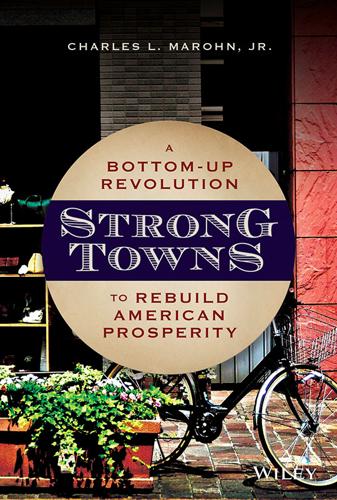
Strong Towns: A Bottom-Up Revolution to Rebuild American Prosperity
by
Charles L. Marohn, Jr.
Published 24 Sep 2019
Louis Fed, https://fred.stlouisfed.org/series/FEDFUNDS. 7 https://www.strongtowns.org/journal/2015/9/14/lafayette-pipes-and-hydrants. 8 Jane Jacobs, Cities and the Wealth of Nations: Principles of Economic Life (New York: Random House, 1985). 9 https://money.cnn.com/2005/07/12/markets/bondcenter/bond_yields/. 10 http://futures.tradingcharts.com/historical/DJ/2005/0/continuous.html. 11 https://money.cnn.com/2005/08/09/news/economy/fed_rates/index .htm?cnn=yes. 12 “The Macroeconomic and Budgetary Effects of Hurricanes Katrina and Rita: An Update” (Washington, DC: Congressional Budget Office, September 29, 2005). 13 Tomas Sedlacek, The Economics of Good and Evil: The Quest for Economic Meaning from Gilgamesh to Wall Street (New York: Oxford University Press, 2011). 6 Rational Responses Our cities made decades of bad investments, sacrificing their stable wealth in exchange for new growth as part of a continent-wide experiment.
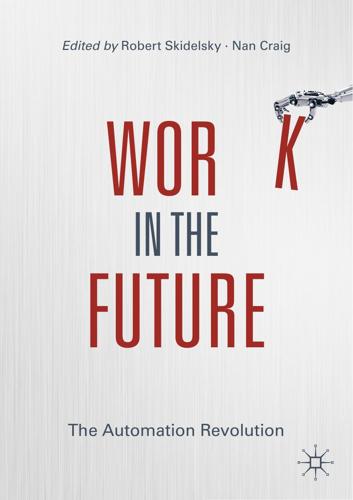
Work in the Future The Automation Revolution-Palgrave MacMillan (2019)
by
Robert Skidelsky Nan Craig
Published 15 Mar 2020
Such a consensus is based on a strong sense of justice, and trust in institutions. In the light of a growing perception of social injustice currently observed in many countries, a new consensus and social contract need to be forged for new political choices and institutions that support transition into a new economy and new jobs. In this context, social dialogue plays an important role. This “meta” institution is at the heart of societal learning as it guides, manages, accelerates and sustains the complex process of collective learning and institutional change. It is through the process of trustful and constructive conversations that all partners gain a deep understanding of the challenges, limits and the possible ways forward, and can work towards a consensus on the future we want. 198 I.
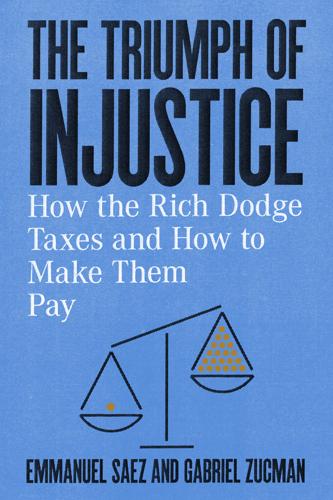
The Triumph of Injustice: How the Rich Dodge Taxes and How to Make Them Pay
by
Emmanuel Saez
and
Gabriel Zucman
Published 14 Oct 2019
These knottier questions have led some observers to suggest that national account statistics (and therefore our distributional national accounts) underestimate growth. More or less everyone who’s been involved at a high level in economic policymaking over the last decades, or an influential figure in the new economy, says it. Martin Feldstein, chair of President Reagan’s Council of Economic Advisers: “the official data understate the changes of real output and productivity.”9 Bill Gates: “GDP understates growth even in rich countries.”10 The line of argument is a favorite of Silicon Valley–linked economists: “There is a lack of appreciation for what’s happening in Silicon Valley, because we don’t have a good way to measure it,” according to Google’s chief economist Hal Varian.11 All of these comments suggest there’s a hidden growth miracle acting on the economy, if only we can find a way to measure it.

The Minimalist Home: A Room-By-Room Guide to a Decluttered, Refocused Life
by
Joshua Becker
Published 18 Dec 2018
“Major Domestic Appliances Unit Sales Worldwide from 2006 to 2016 (in Millions),” Statista, www.statista.com/statistics/539974/major-domestic-appliances-unit-sales-worldwide/. 4. Heather Long, “23% of American Homes Have Two (Or More) Fridges,” CNN Money, May 27, 2016, http://money.cnn.com/2016/05/27/news/economy/23-percent-of-american-homes-have-2-fridges/index.html. 5. Larisa Brown, “Revealed, Kitchen Gadgets That We Never End Up Using: Every Toastie and Coffee We Make Costs Us £10.68,” Daily Mail (UK), February 6, 2013, www.dailymail.co.uk/news/article-2274770/Revealed-kitchen-gadgets-end-using-Every-toastie-coffee-make-costs-10-68.html. 6.
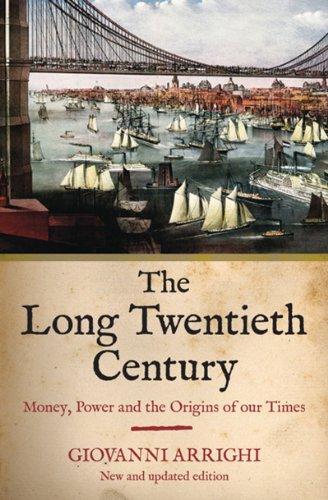
The Long Twentieth Century: Money, Power, and the Origins of Our Times
by
Giovanni Arrighi
Published 15 Mar 2010
Thus, we can expect social contradictions to play a far more decisive role than ever before in shaping both the unfolding transition and whatever new world order eventually emerges out of the impending systemic chaos. (Arrighi and Silver 1999: 289) One year after this was written, the US-centered “new economy” bubble burst. Shortly afterwards came the shock of September 11, 2001. For a brief moment, it seemed that the United States could preserve its hegemonic role by mobilizing a vast array of governmental and non-governmental forces in the War on Terror. Soon, however, the United States found itself almost completely isolated in waging a war on Iraq that was generally perceived as having little to do with the War on Terror, while defying generally-accepted rules and norms of interstate relations.
…
Indeed, to a far greater extent than in previous hegemonic transitions, the terminal crisis of US hegemony — if that is what we are observing, as I think we are — has been a case of great power “suicide” (Arrighi 2007: 161-5, 178-210). Even before the financial meltdown of 2008, I thus interpreted the bursting of the “new economy” bubble in 2000-01, in combination with the failure of the neoconservative response to September 11, as marking the terminal crisis of US hegemony. The meltdown of 2008 simply confirmed the validity of this interpretation. It is not clear what the Obama administration can do to slow down, let alone reverse, the crisis.

Architects of Intelligence
by
Martin Ford
Published 16 Nov 2018
They say this is something on the scale of electricity, the steam engine, or the electric motor. One thing I’m worried about, and this was before talking to the economists, is the problem of technological unemployment. The idea that technology progresses rapidly and the skills that are required by the new economy are not matched by the skills of the population. A whole proportion of the population suddenly doesn’t have the right skills, and it’s left behind. You would think that as technological progress accelerates, there’d be more and more people left behind, but what the economists say is that the speed at which a piece of technology disseminates in the economy is actually limited by the proportion of people who are not trained to use it.
…
(https://www.wired.com/story/workers-displaced-by-automation-should-try-a-new-job-caregiver/) In that Wired paper, I said some of the most vulnerable workers, in this economic situation that we’re discussing here, are people who don’t have a high-school degree or those who don’t have a college degree. I don’t think it’s likely that we’re going to be successful in the principle of coal miners to data miners, that we’re going to give these people technical retraining, and that they’ll somehow become part of the new economy very easily. I think that’s a major challenge. I also don’t think that universal basic income, at least given the current climate, where we can’t even achieve universal health care, or universal housing, is going to be easy either. MARTIN FORD: It seems pretty clear that any viable solution to this problem will be a huge political challenge.

The Filter Bubble: What the Internet Is Hiding From You
by
Eli Pariser
Published 11 May 2011
Incompetence and aimlessness, corruption and disloyalty, panic and ultimate disaster must come to any people which is denied an assured access to the facts.” If news matters, newspapers matter, because their journalists write most of it. Although the majority of Americans get their news from local and national TV broadcasts, most of the actual reporting and story generation happens in newspaper newsrooms. They’re the core creators of the news economy. Even in 2010, blogs remain incredibly reliant on them: according to Pew Research Center’s Project for Excellence in Journalism, 99 percent of the stories linked to in blog posts come from newspapers and broadcast networks, and the New York Times and Washington Post alone account for nearly 50 percent of all blog links.
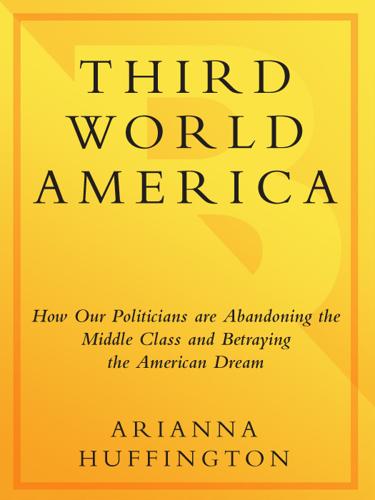
Third World America: How Our Politicians Are Abandoning the Middle Class and Betraying the American Dream
by
Arianna Huffington
Published 7 Sep 2010
If you want you and your family to survive, you’d better learn how to spot the financial land mines buried in your mortgage and credit card contracts, and keep yourself out of harm’s way.” I GET KNOCKED DOWN … BUT I GET UP AGAIN Earlier this year, I was reading Consumer Reports and came across an article offering “10 New Rules for a New Economy.”105 The first seven rules touched on the kind of personal finance tips you’d expect, things such as “assess risk” and “control spending.” But the last three rules caught me by surprise. They were: 8. “Stay healthy. The best investment tip of all is to invest in your health.” 9. “Don’t stress.
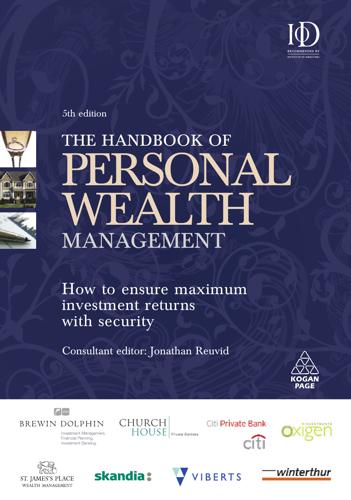
The Handbook of Personal Wealth Management
by
Reuvid, Jonathan.
Published 30 Oct 2011
In the past, higher art price rises were typified by economic booms in Italy and Flanders in the 16th century, Holland in the 17th century, England and France in the 18th and 19th centuries, the United States in the late 19th and 20th centuries, and Japan in the 1980s. In the 21st century, we are seeing the emergence of new economies trading and displaying art. China’s art market is now bigger than France. To match this, over 1,000 new museums are planned there in the next few years. Wealth is now being spread more evenly around the world and in turn benefiting the art market. According to the most recent Cap Gemini/Merrill Lynch World Wealth Report, in 2007 there were 10.1 million people globally with financial assets worth more than US $1 million, representing a 6 per cent increase on the previous year.
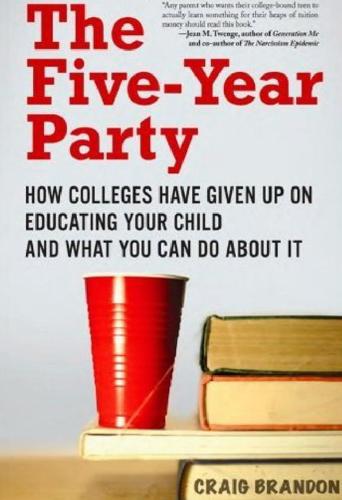
The Five-Year Party: How Colleges Have Given Up on Educating Your Child and What You Can Do About It
by
Craig Brandon
Published 17 Aug 2010
In fact, it’s a stroke of good fortune if they’ll still be on the company phone list two years later.” 210 Today 29 percent of young adults or 18.2 million nineteen-to-thirty-four-year-olds don’t have health insurance, the age group with the lowest percentage of insured .211 “In addition to often working in a benefit-free zone, moving up the wage or career ladder in the new economy is more difficult than it was a generation ago,” she said. “The well-paying middle-management jobs that characterized the workforce up to the late 1970s have been eviscerated.” Instead of permanent jobs, she said, millennials must accept temporary jobs where they are hired for a particular project and then let go.
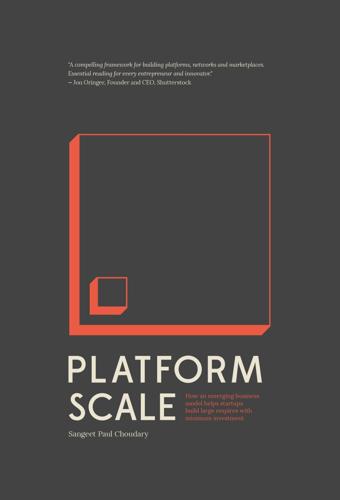
Platform Scale: How an Emerging Business Model Helps Startups Build Large Empires With Minimum Investment
by
Sangeet Paul Choudary
Published 14 Sep 2015
On Twitter, who you follow is the critical filter. Relevance is almost entirely dictated by it. On Facebook, who you are connected to and how often you interact with them strengthen the newsfeed filter. On Quora, users may follow other users, topics, and even questions. All of these, in turn, act as filters. The new economy runs on data. Platforms use data to match value units with filters. PLATFORM SCALE IMPERATIVE The core value unit is the fuel that powers the platform. At any given point, a platform is only as useful as its ability to match these units to consumers’ filters. In its steady state, a platform is an engine that works on the following heuristic, three things are required to make this happen: 1.Value units must be created 2.Filters need to be structured 3.The platform needs good data about units as well as filters to ensure that the right units pass through the right filters Platform scale relies on the coordination of distributed production and personalized filtering. 2.6 THE CORE INTERACTION How Flappy Bird And Super Mario Bros.
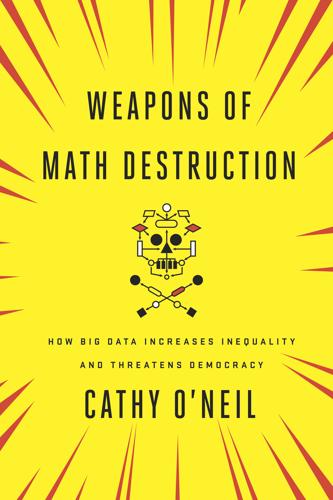
Weapons of Math Destruction: How Big Data Increases Inequality and Threatens Democracy
by
Cathy O'Neil
Published 5 Sep 2016
the single biggest cause of bankruptcies: Christina LaMontagne, “NerdWallet Health Finds Medical Bankruptcy Accounts for Majority of Personal Bankruptcies,” NerdWallet, March 26, 2014, www.nerdwallet.com/blog/health/medical-costs/medical-bankruptcy/. white households held on average: Tami Luhby, “The Black-White Economic Divide in 5 Charts,” CNN Money, November 25, 2015, http://money.cnn.com/2015/11/24/news/economy/blacks-whites-inequality/. only 15 percent of whites: Rakesh Kochhar, Richard Fry, and Paul Taylor, “Wealth Gaps Rise to Record Highs Between Whites, Blacks, Hispanics: Twenty-to-One,” Pew Research Center, July 26, 2011, www.pewsocialtrends.org/2011/07/26/wealth-gaps-rise-to-record-highs-between-whites-blacks-hispanics/.
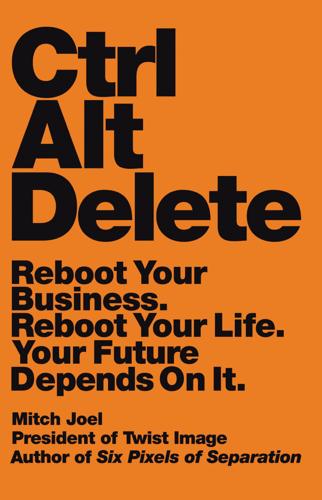
Ctrl Alt Delete: Reboot Your Business. Reboot Your Life. Your Future Depends on It.
by
Mitch Joel
Published 20 May 2013
These backers are paying customers—they just happen to be paying for something long before it is ever produced. They are the spirit and embodiment of a direct relationship. In 2004, Chris Anderson (the former editor in chief at Wired magazine) wrote the bestselling business book The Long Tail. The book describes a new economy that has emerged online because we are no longer limited by the physical retail store space and how much inventory can be sold per square foot. Because of online commerce, it now makes sense for companies to sell products that would have been purchased by only a handful of people, because they can make serious money selling these more obscure items online instead of only selling a limited number of more popular items.
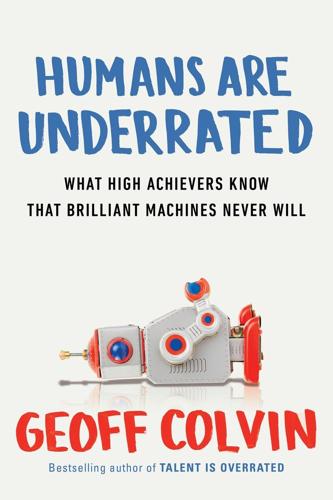
Humans Are Underrated: What High Achievers Know That Brilliant Machines Never Will
by
Geoff Colvin
Published 3 Aug 2015
The world is turning not away from you, as you’ve been led to believe, but toward you. IDENTIFYING WINNERS AND LOSERS Everyone can get better at the skills that will be most valuable in the changing economy, and it seems logical to see all this as the latest step in a long progression. For centuries people have improved their living standards by mastering new skills that a new economy rewards. But the skills that are becoming most valuable now, the skills of deeply human interaction, are not like those other skills. Learning to be more socially sensitive is not like learning algebra or how to operate a lathe or how to make a well functioning blog in Wordpress. Those skills, and virtually all the skills that ever-changing economies have rewarded in the past, are about what we know.
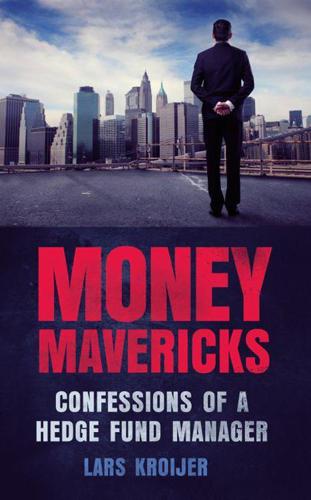
Money Mavericks: Confessions of a Hedge Fund Manager
by
Lars Kroijer
Published 26 Jul 2010
Two years into business school, I felt as if I had met endless private-equity investors, consultants, investment bankers and internet entrepreneurs, and generally had a good idea of the work they did. There were hundreds of job postings in more than enough industries and countries to satisfy any student’s ambitions. With the internet really starting to take off, many ‘bricks and mortar’ companies thought hiring business-school students would help them to meet the challenges of the new economy. Many students juggled four or five job offers. Others were planning to start their own internet-related businesses and it seemed everyone was scouring the campus for people willing to be number two in what would surely be the next Microsoft (this was pre-Google, of course). I remember sitting in a class where Amazon CEO Jeff Bezos came to speak to 70 students to discuss company strategy.
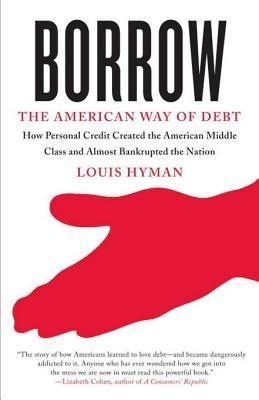
Borrow: The American Way of Debt
by
Louis Hyman
Published 24 Jan 2012
The celebrated economic pundits pronounced the late 1920s as a New Era forever free of recession. Expansion, made possible by the electrical age and enabled through credit, would continue forever. Another Yale economist, Irving Fisher—much more famous than Noyes for his optimism—pronounced in 1929 that stocks, in this new economy, would never fall again. And then, three days later the world—including Yale—watched slack-jawed as the stock market crashed. CHAPTER THREE FANNIE MAE CAN SAVE AMERICA (1924–1939) If owing money to a bank on a car threatened the yeoman ideal that Henry Ford held so dear, imagine how he felt about home mortgages.
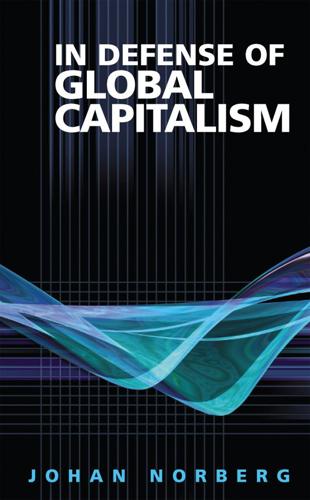
In Defense of Global Capitalism
by
Johan Norberg
Published 1 Jan 2001
The top priority for crisis avoidance is for the government to have control of its finances and inflation. Galloping budget deficits and high inflation were not the problem during the Asian crisis, but they are definitely the fastest and most common ways of ruining confidence in an economy. The most important long-term commitments for new economies are reforms of legal and financial institutions. Countries should liberalize their domestic financial markets and their trade policy before opening up to foreign capital. Otherwise, capital will not be channeled in harmony with the wider market, leading to malinvestment. Supervision and regulation of the financial sector have to be reformed, and competition must be permitted.

The (Honest) Truth About Dishonesty: How We Lie to Everyone, Especially Ourselves
by
Dan Ariely
Published 27 Jun 2012
While I was talking to John, I was especially interested in his description of his own wishful blindness. Even though he consulted for Enron while the company was rapidly spinning out of control, he said he hadn’t seen anything sinister going on. In fact, he had fully bought into the worldview that Enron was an innovative leader of the new economy right up until the moment the story was all over the headlines. Even more surprising, he also told me that once the information was out, he could not believe that he failed to see the signs all along. That gave me pause. Before talking to John, I assumed that the Enron disaster had basically been caused by its three sinister C-level architects (Jeffrey Skilling, Kenneth Lay, and Andrew Fastow), who together had planned and executed a large-scale accounting scheme.

Give People Money
by
Annie Lowrey
Published 10 Jul 2018
What would it feel like to lose your $60,000-a-year job as a truck driver or $24,000-a-year job as a fast-food worker or $10,000 a year in Uber money picked up in the evenings, and to be told to be happy with a check from the government? What would it feel like to be deemed unproductive by the new economy, your livelihood wrecked by technological marvels and propped up by government policies? Is our American sense of work compatible with a UBI? CHAPTER THREE A Sense of Purpose Covering the labor-market carnage left by the Great Recession, I spent years interviewing and writing about the fate of the so-called 99ers.
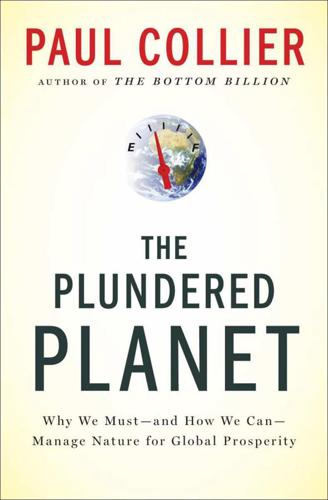
The Plundered Planet: Why We Must--And How We Can--Manage Nature for Global Prosperity
by
Paul Collier
Published 10 May 2010
We can see this process already being played out on an even grander scale in China, as the population shifts by hundreds of millions from the interior. Within a generation, Lagos, already the largest city in sub-Saharan Africa, will become a global megacity of over 20 million people. Already, it represents half of the entire non-oil economy of Nigeria, so that in the future, as oil runs down and is replaced by a new economy, most of it will be in Lagos and its environs. Lagos has two key advantages. One is that it is a port, and ports are key sites for global manufacturing. Not only does it help to be a port, it helps even more to be a large port. The larger the city is, the more productive the people in it. The rule of thumb is that each time a city doubles in population, the productivity of its workers increases by around 6 percent.
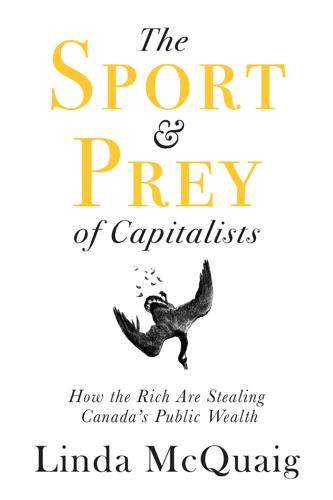
The Sport and Prey of Capitalists
by
Linda McQuaig
Published 30 Aug 2019
Quoted in ibid., pp. 75–76. 12. Ibid., p. 76. 13. Bunbury, “The Public Purse and State Finance,” p. 581. 14. Duncan McDowall, Quick to the Frontier: Canada’s Royal Bank (Toronto: McClelland and Stewart, 1993), p. 245. 15. Bob Ascah, Mark Anielski, Alberta’s Public Bank: How ATB Can Help Shape the New Economy (Edmonton: Parkland Institute, August 2018), p. 2. 16. Ibid., p. 3. 17. Ibid., p. 5. 18. Duff Conacher, “Stop Bank Gouging and Abuse,” Release, Democracy Watch, December 20, 2018. 19. John Anderson, It’s Time for a Postal Bank for Everyone: How a Bank in the Post Office Could Help You, research paper prepared for CUPW, 2018, p. 3, www.cupw.ca/en/campaign/resources/its-time-postal-bank-everyone-how-bank-post-office-could-help-you. 20.

Uncanny Valley: A Memoir
by
Anna Wiener
Published 14 Jan 2020
I thought about the sweep of history, the improbability of convergence. Nothing seemed impossible. I had moved to California to accelerate my career, and now I was living through a historical inflection point, I effused—we were living through a historical inflection point. Ian had put on sweatpants and was stretching, happily, in front of a mirror. This was the new economy, the new way to live, I said—we were on the glimmering edge of a brand-new world, and we were among the people building it. Well, he was among the people building it. But I was helping. I didn’t know if I believed everything I was saying, but it felt so good to say it. “Very inspiring,” Ian said, beaming.
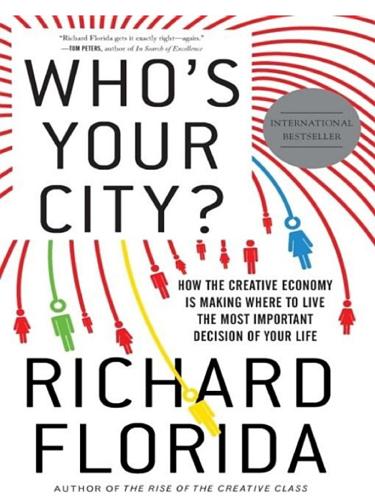
Who's Your City?: How the Creative Economy Is Making Where to Live the Most Important Decision of Your Life
by
Richard Florida
Published 28 Jun 2009
The Bellows, May 22, 2007. Available at www.ryanavent.com/blog/?p=403. 9 Richard Florida and Charlotta Mellander, “There Goes the Neighborhood: How and Why Artists, Bohemians, and Gays Affect Housing Values,” 2007. Available at creativeclass.com. 10 John D. Landis, Vicki Elmer, and Matthew Zook, “New Economy Housing Markets: Fast and Furious—But Different?” Housing Policy Debate 3, 2, 2002, pp. 233-274. 11 Jennifer Roback, “Wages, Rents, and the Quality of Life,” Journal of Political Economy 90, 6, 1982, pp. 1257-1278. 12 Edward Glaeser, Jed Kolko, and Albert Saiz, “Consumer City,” Journal of Economic Geography 1, 1, 2001, pp. 27-50; also Glaeser and Joshua Gottlieb, “Urban Resurgence and the Consumer City,” Urban Studies 43, 8, 2006, pp. 1275-1299. 13 Maya Roney, “Bohemian Today, High-Rent Tomorrow,” Business Week, February 26, 2007. 14 Ann Markusen and Greg Schrock, “The Artistic Specialization and Economic Development Implications,” Urban Studies 43, 10, 2006, pp. 1661-1686. 15 Tim Harford, “Undercover Economist: On the Move,” Financial Times, March 9, 2007. 16 Andrew Oswald with David Blanchflower and Peter Sanfey, “Wages, Profits, and Rent-Sharing,” Quarterly Journal of Economics 111, 1, February 1996, pp. 227-252.
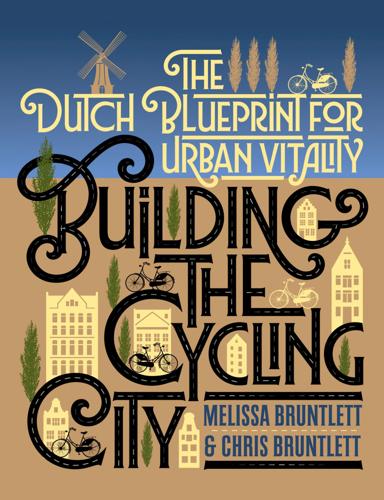
Building the Cycling City: The Dutch Blueprint for Urban Vitality
by
Melissa Bruntlett
and
Chris Bruntlett
Published 27 Aug 2018
Calgary’s pilot is a persuasive example of how temporary installations can change hearts and minds, but most notably, it is now cited as a reason companies and talent are relocating to the city. After a downturn in the local economy due to the deflated price of oil, and a downtown vacancy rate hovering between 25 and 30 percent, continued investments in walking, cycling, public transit, and infrastructure such as the Peace Bridge will be integral in attracting new economies to this sprawling city. As Farrell points out, “If we want to attract new industries to Calgary, we need to first build a city that’s worth moving to.” While her illustrious career is by no means at an end—she was elected to a sixth term in 2017—when Farrell reflects on her time on council, she is proud of how far her city has come.
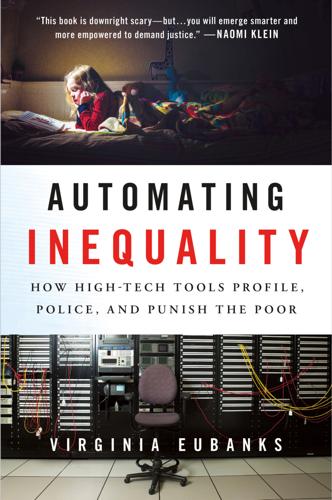
Automating Inequality
by
Virginia Eubanks
Boston: Houghton Mifflin Harcourt, 2015. Garza, Alicia. “A Herstory of the #Blacklivesmatter Movement.” http://blacklivesmatter.com/herstory/. [Accessed June 28, 2017.] Gillespie, Sarah. “Mark Zuckerberg Supports Universal Basic Income. What Is It?” CNN Money, May 26, 2017. http://money.cnn.com/2017/05/26/news/economy/mark-zuckerberg-universal-basic-income/index.html. [Accessed June 28, 2017.] Hiltzik, Michael. “Conservatives, Liberals, Techies, and Social Activists All Love Universal Basic Income: Has Its Time Come?” Los Angeles Times, June 22, 2017. http://www.latimes.com/business/hiltzik/la-fi-hiltzik-ubi-20170625-story.html.

Fully Automated Luxury Communism
by
Aaron Bastani
Published 10 Jun 2019
A Contribution To the Critique of Political Economy. Progress Publishers, 1977. Taylorism and the Productivity Revolution Drucker, Peter. Post-Capitalist Society. Butterworth-Heinemann, 1998. Marx, Karl. Grundrisse. Penguin, 1993. Information Goods Want to Be Free – Really DeLong, J. Bradford and Lawrence Summers. ‘The “New Economy”: Background, Historical Perspective, Questions, and Speculations’. Economic Review, Federal Reserve Bank of Kansas City, 2001. Romer, Paul. ‘Endogenous Technological Change’. Journal of Political Economy, 1990. Part II. New Travellers 4. Full Automation: Post-Scarcity in Labour When Capital Becomes Labour ‘Ford Factory Workers Get 40-Hour Week’.
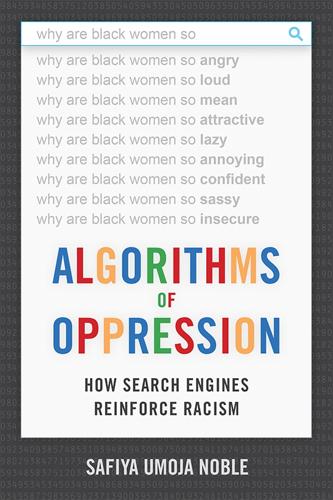
Algorithms of Oppression: How Search Engines Reinforce Racism
by
Safiya Umoja Noble
Published 8 Jan 2018
Retrieved from www.theguardian.com. Harding, S. (1987). Feminism and Methodology. Buckingham, UK: Open University Press. Hargittai, E. (2000). Open Portals or Closed Gates? Channeling Content on the World Wide Web. Poetics, 27, 233–253. Hargittai, E. (2003). The Digital Divide and What to Do about It. In D. C. Jones (Ed.), New Economy Handbook, 822–839. San Diego, CA: Academic Press. Harris, C. (1995). Whiteness as Property. In K. Crenshaw, B. Gotanda, G. Peller, and K. Thomas (Eds.), Critical Race Theory: The Key Writings That Informed the Movement. New York: New Press. Harris-Perry, M. V. (2011). Sister Citizen: Shame, Stereotypes, and Black Women in America.
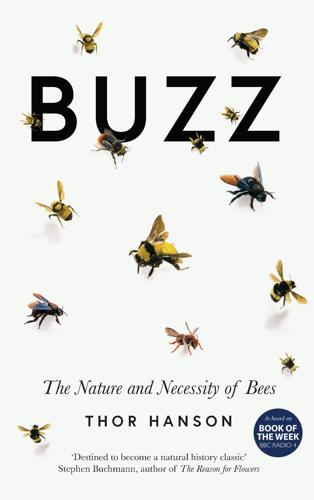
Buzz: The Nature and Necessity of Bees
by
Thor Hanson
Published 1 Jul 2018
Stingless bees in applied pollination: Practice and perspectives. Apidologie 37: 293–315. Sladen, F. W. L. 1912. The Humble-Bee: Its Life-History and How to Domesticate It. London: Macmillan. Smith, A. 2012. Cash-strapped farmers feed candy to cows. CNN Money, http://money.cnn.com/2012/10/10/news/economy/farmers-cows-candy-feed/index.html. Somanathan, H., A. Kelber, R. M. Borges, R. Wallén, et al. 2009. Visual ecology of Indian carpenter bees II: Adaptations of eyes and ocelli to nocturnal and diurnal lifestyles. Journal of Comparative Physiology A 195: 571–583. Sparrman, A. 1777. An account of a journey into Africa from the Cape of Good-Hope, and a description of a new species of cuckow.

Do Nothing: How to Break Away From Overworking, Overdoing, and Underliving
by
Celeste Headlee
Published 10 Mar 2020
The economist Rick Bookstaber writes, “The Industrial Revolution ultimately increased prosperity, but for a time it made a wide swath of the populace worse off. The period of transition from the domestic to the factory system of industry and from the older to the new agriculture was one of almost unrelieved misery for those who could not integrate into the new economy, whether due to lack of capital or lack of physical or mental adaptability.” The period of transition that Bookstaber refers to lasted for decades. The age of “unrelieved misery” spanned at least a generation. Keep in mind that one of Charles Dickens’s grandsons died in 1962. That’s how recent this history is.
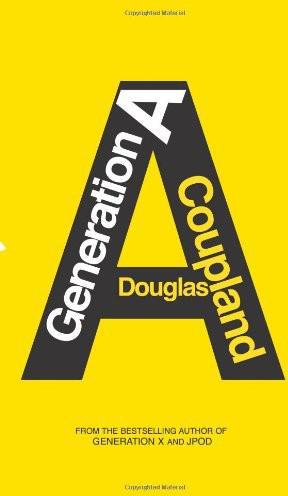
Generation A
by
Douglas Coupland
Published 2 Jan 2009
I had my four plasmas on 1) the NFL, 2) some whacked-out Korean game show where people dress in animal costumes to win prizes that look like inflatable vinyl alphabet letters, 3) the DEA real-time satellite view of my farm and 4) a two-way satellite link to an insomniac freak named Charles, who works in the satellite TV media-buying wing of BBDO in Singapore. Charles pays a hundred bucks an hour to watch me work nude in my cab. Did I forget to mention that? Welcome to the new economy. If I can make an extra buck by getting off some Twinkie in another hemisphere, you know what? I’m in. Charles, you unzip your trousers. Zegna trousers, and I know that about you because I read your secret online profile: lions-and-tigers-and-bears@labelwhore.org. In any event, the sexy portion of Charles’s day seemed to have been completed, and the two of us were talking.
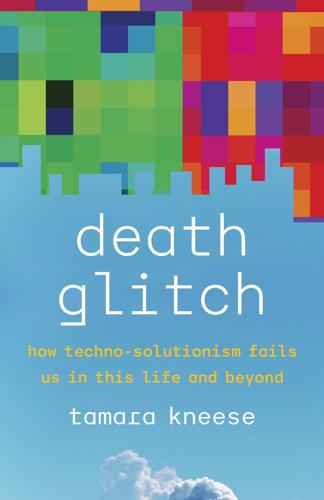
Death Glitch: How Techno-Solutionism Fails Us in This Life and Beyond
by
Tamara Kneese
Published 14 Aug 2023
CNET, September 20, 2020. www.cnet.com/how-to/the-weirdest-things-your-amazon-echo-can-say-and-do. Cottom, Tressie McMillan. “The Hustle Economy.” Dissent Magazine (Fall 2020). www.dissentmagazine.org/article/the-hustle-economy. Cottom, Tressie McMillan. Lower Ed: The Troubling Rise of For-Profit Colleges in the New Economy. New York: New Press, 2017. Coviello, Peter. Make Yourselves Gods: Mormons and the Unfinished Business of American Secularism. Chicago: University of Chicago Press, 2019. Cowan, Ruth Schwartz. More Work for Mother: The Ironies of Household Technology from the Open Hearth to the Microwave. New York: Basic Books, 1983.
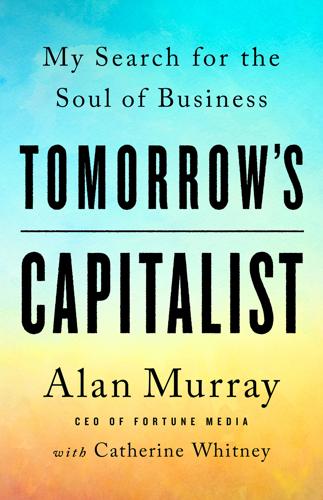
Tomorrow's Capitalist: My Search for the Soul of Business
by
Alan Murray
Published 15 Dec 2022
The first is training workers to take advantage of opportunities supplied by new technologies. The second is delivering a living wage to all workers. And the third is creating a workplace with human values. As I argue throughout this book, the rising tide of technology has not devalued workers; it has enhanced their value—at least those who have the skills demanded by the new economy. Human capital now makes up the most important capital of most companies, and employees have become the most important “stakeholder.” Companies fight for talent. They are forced to recognize their most important assets are not factories or finances or oil in the ground or inventory on the shelves.
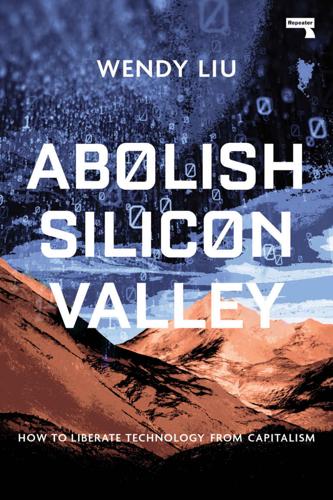
Abolish Silicon Valley: How to Liberate Technology From Capitalism
by
Wendy Liu
Published 22 Mar 2020
This Isn’t New.” by Rebecca Jennings for Vox, published July 22, 2019, at https://www.vox.com/the-goods/2019/7/22/20703636/doordash-instacart-tip-policy. 3 For an excellent primer on UBI, see “The False Promise of Universal Basic Income” by Alyssa Battistoni for Dissent Magazine’s Spring 2017 issue, at https://www.dissentmagazine.org/article/false-promise-universal-basic-income-andy-stern-ruger-bregman. 4 For a critical analysis of the gig economy, see The Gig Economy: A Critical Introduction by Jamie Graham Woodcock and Mark Graham (Polity, 2019). 5 For details on what it’s like to work for a gig economy platform in the UK, see Callum Cant’s book Riding for Deliveroo: Resistance in the New Economy (Polity, 2019). 6 The World Transformed, which began as a fringe festival for the UK Labour Party’s annual convention, alternates between Brighton and Liverpool. 7 “Any industry that still has unions has potential energy that could be released by startups.” Posted November 8, 2015, at https://twitter.com/paulg/status/663456748494127104. 8 The Historical Materialism conference takes place every November at SOAS University of London. 9 See, for example, “Contracts And Chaos: Inside Uber’s Customer Service Struggles” by Johana Bhuiyan for BuzzFeed News, published March 6, 2016, at https://www.buzzfeednews.com/article/johanabhuiyan/contracts-and-chaos-inside-ubers-customer-service-struggles. 10 The problem isn’t that tech companies are putting money towards efforts to expand computer literacy.
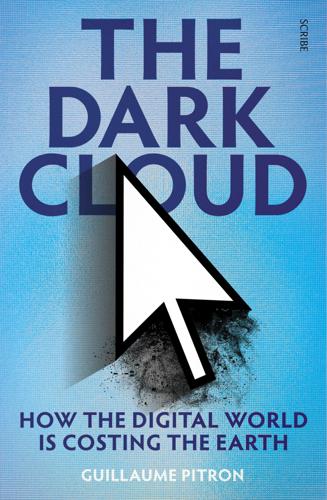
The Dark Cloud: How the Digital World Is Costing the Earth
by
Guillaume Pitron
Published 14 Jun 2023
Chapter Seven: Expansion of the digital universe 1 Steve Case, The Third Wave: an entrepreneur’s vision of the future, Simon & Schuster, 2017. 2 For a more educational definition of the Internet of Everything and its economic potential, watch the YouTube video ‘The Internet of Everything is the New Economy’ (August 2014) by US firm Cisco. 3 Kevin Kelly, The Inevitable: understanding the 12 technological forces that will shape our future, Viking, 2016. 4 Ibid. 5 RFID stands for radio-frequency identification. With this technology a sensor is able to identify an object using radio-frequency signals, allowing two objects to communicate and share information with one another. 6 Byung-Chul Han, In the Swarm: digital prospects, The MIT Press, 2017.
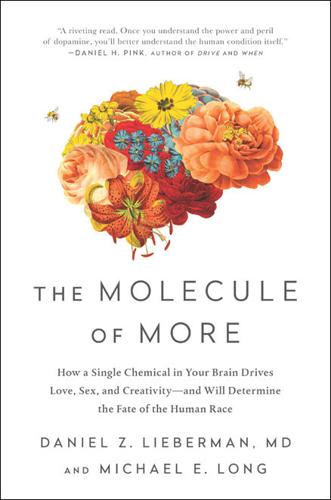
The Molecule of More: How a Single Chemical in Your Brain Drives Love, Sex, and Creativityand Will Det Ermine the Fate of the Human Race
by
Daniel Z. Lieberman
and
Michael E. Long
Published 13 Aug 2018
The top three countries they came from were Canada (13%), Germany (11%), and the United Kingdom (11%). The United States continues to attract immigrants from all over the world, and the immigrant population continues to include a high proportion of extraordinary individuals. Some of the most important companies of the new economy were founded by immigrants, including Google, Intel, PayPal, eBay, and Snapchat. As of 2005, 52 percent of Silicon Valley start-ups had been founded by immigrant entrepreneurs, a remarkable figure in light of the fact that immigrants make up only 13 percent of the U.S. population. The country that provides America with the greatest number of technology entrepreneurs is India.
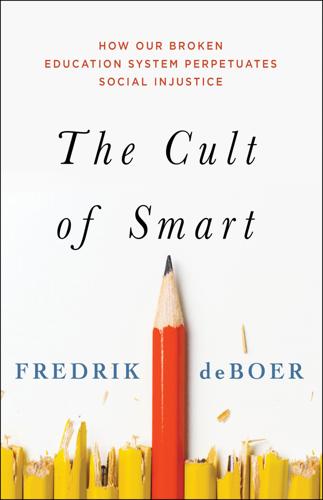
The Cult of Smart: How Our Broken Education System Perpetuates Social Injustice
by
Fredrik Deboer
Published 3 Aug 2020
Bush, spoke with similar insistence about the importance of education, saying, “There’s no greater challenge than to make sure that every child … regardless of where they live, how they’re raised, the income level of their family, every child receive a first-class education in America.”1 The conservative Republican Bush would join hands with liberal Democrat Ted Kennedy to bring the country No Child Left Behind, which we will return to in a moment. Bush’s predecessor, Bill Clinton, said during his presidency that “in the new economy, information, education, and motivation are everything.”2 And his predecessor, George H. W. Bush, said that “education is the key to opportunity. It’s a ticket out of poverty.”3 This is the story that our policy elites want to tell. From both parties comes the clamor for more and better education.

Longshot
by
David Heath
Published 18 Jan 2022
He eventually became the head of sales in Japan, and later he oversaw the industrial microbiology business for the Asia-Pacific region.9 After four years at BioMérieux, Bancel decided to go back to school in 1998, this time to study business. He was accepted to the MBA program at Harvard Business School. After backpacking in Australia, he headed to Cambridge, Massachusetts.10 Bancel graduated with an MBA in May 2000, just after the dot-com bubble burst. Startup companies with huge losses but lots of hype—the so-called new economy that was divorced from quality products and healthy profits—were exposed as grossly overvalued. Still, many of Bancel’s classmates wanted to go into the now deflated worlds of finance and technology. Bancel was more interested in pharmaceuticals. Recruiters from Pfizer, Medtronic, and Eli Lilly came to the Harvard campus, but Bancel recalls hardly anyone else was meeting with them.

Webbots, Spiders, and Screen Scrapers
by
Michael Schrenk
Published 19 Aug 2009
Additionally, webbots have the ability to automate anything you do online or notify you when something needs to be done. * * * [6] For example, they can't act on your behalf, filter content for relevance, or perform tasks automatically. What's in It for Developers? Your ability to write a webbot can distinguish you from a pack of lesser developers. Web developers—who've gone from designing the new economy of the late 1990s to falling victim to it during the dot-com crash of 2001—know that today's job market is very competitive. Even today's most talented developers can have trouble finding meaningful work. Knowing how to write webbots will expand your ability as a developer and make you more valuable to your employer or potential employers.
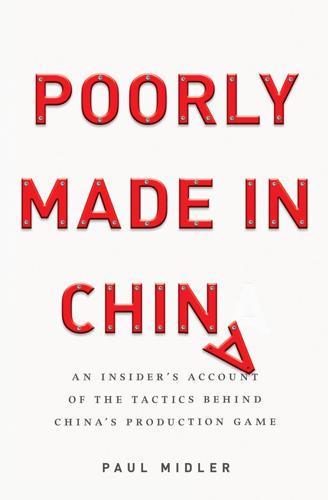
Poorly Made in China: An Insider's Account of the Tactics Behind China's Production Game
by
Paul Midler
Published 18 Mar 2009
While my background should have prepared me for what was happening in export manufacturing, my first real glimpse of the sector, though, suggested that I was in uncharted territory. Exports contributed significantly to the Chinese economic miracle, and yet, none of the courses in business school or informal discussions had been about this interesting and important part of the new economy. My classmates had gone off to pursue traditional careers in investment banking, management consulting, or private equity. Coming from a finance background, I had nearly gone down a similar road myself. I wanted to settle in South China, where manufacturing was concentrated, and I was looking for any excuse to get involved.

Nothing Is True and Everything Is Possible: The Surreal Heart of the New Russia
by
Peter Pomerantsev
Published 11 Nov 2014
Over in Bernie Arnaut’s Bulgari Hotel, on the corner of Hyde Park, the most expensive hotel in London (rooms start at $1,200 a night; the penthouse is $26,000), the floors are black granite and the walls are black glass, with older men and younger women in the blackness hard, scowling, and sparkling. The lost-in-new-wealth world of Moscow rises and blends with the sudden global money from all the emerging, expanding new economies. And the Russians are the pacesetters, the trendsetters. Because they’ve been perfecting this for just a few years longer, because the learning curve was so much harder and faster when their Soviet world disappeared and they were all shot into cold space. They became post-Soviet a breath before the whole world went post-everything.
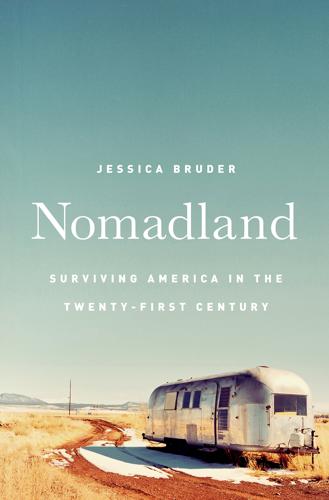
Nomadland: Surviving America in the Twenty-First Century
by
Jessica Bruder
Published 18 Sep 2017
Five-dollars-a-day food budget: Teresa Ghilarducci, “Our Ridiculous Approach to Retirement,” The New York Times, July 22, 2012, p. SR5. 67. Former U.S. Senator Alan Simpson on Social Security: Jeanne Sahadi, “Co-Chair of Obama Debt Panel under Fire for Remarks,” CNNMoney.com, August 25, 2010. http://money.cnn.com/2010/08/25/news/economy/alan_simpson_fiscal_commission. CHAPTER FOUR Biographical information on Bob Wells comes from in-person interviews, along with attending his seminars at the Rubber Tramp Rendezvous for three years and reading his website, http://CheapRVLiving.com. (Earlier published versions of the site were accessed via The Wayback Machine, http://archive.org/web/.) 69.

What's the Matter with White People
by
Joan Walsh
Published 19 Jul 2012
That girl wasn’t the norm, by any means, but it was impossible not to notice that without jobs or capital to start businesses or student grants for college, welfare was one of the few lifelines to cash in her abandoned neighborhood (the other was drugs). It would be stupid not to play the system. Again, I found myself wondering why we’d ever believed that poor women, especially poor black women, would be supported (however stingily) in raising their children at home, when most mothers were surging to work, because the new economy required an extra paycheck to keep families afloat. I was beginning to believe that “empowering” welfare recipients, the mantra of the constituency groups we heard from, required getting them good jobs, child care, and health care and bringing them out of the economic shadows, where they’d been alone and vulnerable for too long.
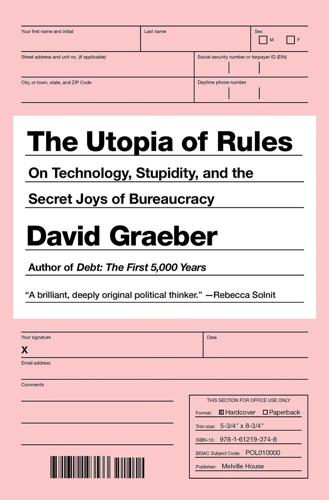
Bureaucracy
by
David Graeber
Published 3 Feb 2015
William Lazonick has done the most work on documenting this shift, noting that it is a shift in business models—the effects of globalization and offshoring really only took off later, in the late nineties and early 2000s. (See, for example, his “Financial Commitment and Economic Performance: Ownership and Control in the American Industrial Corporation,” Business and Economic History, 2nd series, 17 [1988]: 115–28; “The New Economy Business Model and the Crisis of U.S. Capitalism,” Capitalism and Society [2009], 4, 2, Article 4; or “The Financialization of the U.S. Corporation: What Has Been Lost, and How It Can Be Regained,” INET Research Notes, 2012.) A Marxian approach to the same class realignment can be found in Gérard Duménil and Dominique Lévy’s Capital Resurgent: The Roots of the Neoliberal Revolution (Cambridge, MA: Harvard University Press, 2004), and The Crisis of Neoliberalism (Cambridge, MA: Harvard University Press, 2013).
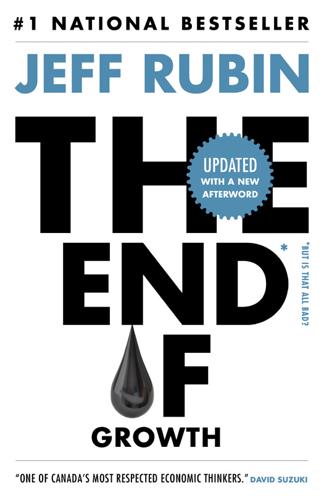
The End of Growth
by
Jeff Rubin
Published 2 Sep 2013
In chapter 8, we saw how the FIRE sector (finance, insurance and real estate) has doubled in size and now accounts for as much as 20 percent of economic activity in OECD countries. As the FIRE sector shrinks in a static economy, it will mean fewer job openings for stockbrokers, insurance salesmen and real estate agents. Folks currently in those jobs could face some tough times, but it’s not as if they’ll stay unemployed indefinitely. As the contours of the new economy take shape, fresh opportunities will emerge. In a world where distance costs money, our hollowed-out manufacturing sector will fill up again. More of the products we buy will be made locally and sold regionally. If you’re selling mutual funds now, you may soon be selling widgets from a local factory.
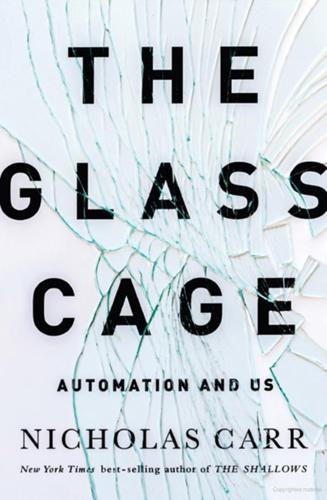
The Glass Cage: Automation and Us
by
Nicholas Carr
Published 28 Sep 2014
There’s an irony here. In shifting the center of the economy from physical goods to data flows, computers brought new status and wealth to information workers during the last decades of the twentieth century. People who made their living by manipulating signs and symbols on screens became the stars of the new economy, even as the factory jobs that had long buttressed the middle class were being transferred overseas or handed off to robots. The dot-com bubble of the late 1990s, when for a few euphoric years riches flooded out of computer networks and into personal brokerage accounts, seemed to herald the start of a golden age of unlimited economic opportunity—what technology boosters dubbed a “long boom.”
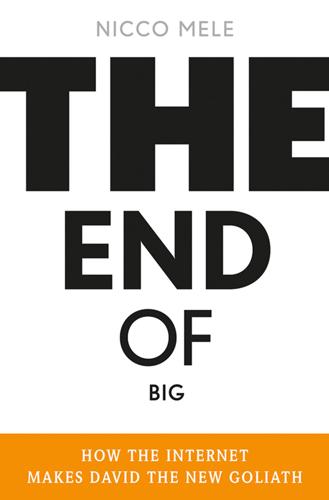
The End of Big: How the Internet Makes David the New Goliath
by
Nicco Mele
Published 14 Apr 2013
As two observers have remarked, “The convergence of social networks, a renewed belief in the importance of community, pressing environmental concerns, and cost consciousness are moving us away from the old top-heavy, centralized, and controlled forms of consumerism toward one of sharing, aggregation, openness, and cooperation.”39 Lisa Gansky, one of the pioneer entrepreneurs of the digital eye calls this new economy “the Mesh” because of its networked enabled efficiency. Collaborative consumption might sound idealistic, but it isn’t a passing fad. According to Fast Company, a whole “new generation of businesses” is emerging that enables “the sharing of cars, clothes, couches, apartments, tools, meals, and even skills.
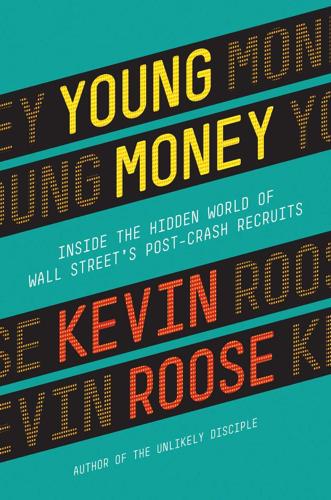
Young Money: Inside the Hidden World of Wall Street's Post-Crash Recruits
by
Kevin Roose
Published 18 Feb 2014
Trumping them all was the Anheuser-Busch booth near the back of the gym, where Princeton alumni in red track jackets were giving out free, Budweiser-branded sunglasses under a sign that read: “Increase your liquid assets!” The financial firms in attendance were using largely the same vague pitches I’d heard years earlier at Wharton. One bank advertised its “global transaction advisory for the new economy.” Another offered students a chance to “bring your career into focus.” Jane Street Capital, a medium-sized hedge fund, had a banner promising its recruits a “dynamic, challenging environment. Rapid advancement. Idea-driven meritocracy. Informal fun and open atmosphere.” (Oh, and last on the list: “Generous compensation.”)
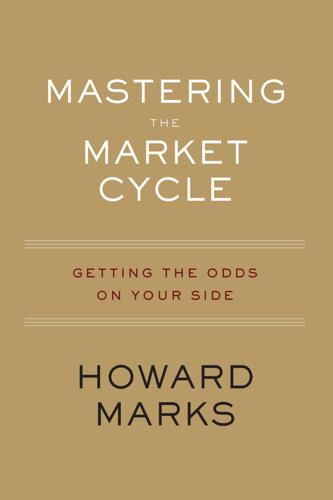
Mastering the Market Cycle: Getting the Odds on Your Side
by
Howard Marks
Published 30 Sep 2018
More tech stocks were added to equity indices like the S&P 500—meaning index and quasi-index investors had to buy more of them—which made them go up—which attracted still more capital to them. This was a classic “virtuous circle,” and no one could imagine it ending. The absence of earnings at most “new-economy” companies eliminated any requirement that their stocks should sell at reasonable price/earnings ratios. In the latter stages of the bubble, the prices of some dot-com stocks increased several hundred percent on the day of their initial public offerings. To be willing to buy the new stocks at their inflated post-IPO prices, buyers who thought about it would have to have concluded that either (a) the companies’ founders had been happy to sell the stocks at a fraction of their true value or (b) the founders knew less about the stocks’ value than the buyers did.
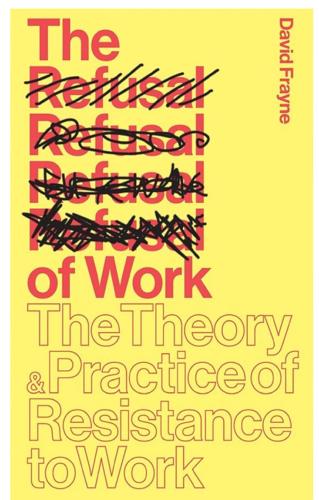
The Refusal of Work: The Theory and Practice of Resistance to Work
by
David Frayne
Published 15 Nov 2015
Offe, C. (1985) Disorganised Capitalism, Cambridge: Polity. Ollman, B. (1971) Alienation: Marx’s Conception of Man in Capitalist Society, London, New York: Cambridge University Press. Packard, V. (1957) The Hidden Persuaders, Harmondsworth: Penguin. Perlin, R. (2012) Intern Nation: How to Earn Nothing and Learn Little in the Brave New Economy, London: Verso. Pirsig, R. M. (1974) Zen and the Art of Motorcycle Maintenance, London: Vintage. Ransome, P. (1995) Job Security and Social Stability: The Impact of Mass Unemployment on Expectations of Work, Aldershot: Avebury. Rifkin, J. (2000) The End of Work: The Decline of the Global Work-Force and the Dawn of a Post-Market Era, London: Penguin.

The Socialist Manifesto: The Case for Radical Politics in an Era of Extreme Inequality
by
Bhaskar Sunkara
Published 1 Feb 2019
An emergent neoliberalism curbed inflation and restored growth, but only through a vicious offensive against the working class. Since then real wages have stagnated, debt has soared, and the prospects for a new generation, still hoping to live better lives than their parents, are bleak. The 1990s technological boom brought about talk of an adaptive “new economy,” something to replace the old Fordist workplace. But it was a far cry from the future promised at the 1939 World’s Fair. With few avenues for collective action available, people behaved as rationally as any Marxist would expect: they kept their heads down and tried to fix what they could. Can’t find a job?
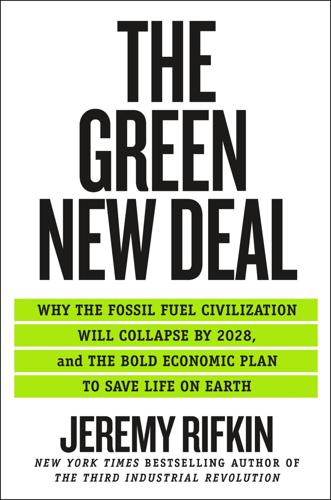
The Green New Deal: Why the Fossil Fuel Civilization Will Collapse by 2028, and the Bold Economic Plan to Save Life on Earth
by
Jeremy Rifkin
Published 9 Sep 2019
Ipsos, “Global Infrastructure Index—Public Satisfaction and Priorities 2018,” 2018, https://www.ipsos.com/en/global-infrastructure-index-public-satisfaction-and-priorities-2018 (accessed February 27, 2019), 5. 8. Lydia DePillis, “Trump Unveils Infrastructure Plan,” CNN, February 12, 2018, https://money.cnn.com/2018/02/11/news/economy/trump-infrastructure-plan-details/index.html (accessed February 27, 2019). 9. Ed O’Keefe and Steven Mufson, “Senate Democrats Unveil a Trump-Size Infrastructure Plan,” Washington Post, January 24, 2017, https://www.washingtonpost.com/politics/democrats-set-to-unveil-a-trump-style-infrastructure-plan/2017/01/23/332be2dc-e1b3-11e6-a547-5fb9411d332c_story.html?

The Globotics Upheaval: Globalisation, Robotics and the Future of Work
by
Richard Baldwin
Published 10 Jan 2019
Deindustrialization has destroyed communities, and people are reacting as members of threatened communities, not just individuals whose jobs are at risk. People are finding that they cannot afford to a buy a house like the one they grew up in. Many millennials find themselves weighed down by student debt, right when the new economy has meant that a university education is no longer a sure ticket to a middle-class lifestyle. And things are evolving so much faster. Since the changes are more sudden, more individual, more unpredictable, and more uncontrollable than before, economic fragility is back. Once again, job loss can have dire consequences; unemployed Americans risk losing their homes and healthcare.

Brave New Work: Are You Ready to Reinvent Your Organization?
by
Aaron Dignan
Published 1 Feb 2019
I’ll suggest guidelines and activities for early meetings and moments in your team’s change process. And I’ll share stories and lessons from transformation efforts that struggled and those that went well beyond our expectations. Finally, we’ll take a moment to imagine a world in which we get this right, and organizations everywhere create fulfillment and abundance. The foundations of a new economy are slowly forming, and I’ll show you where to look to see them taking shape. In the end, you’ll have everything you need to step confidently into the future of work. HOW I GOT HERE In 2007 I was part of the founding team of a company that created digital strategies for some of the biggest brands in the world.
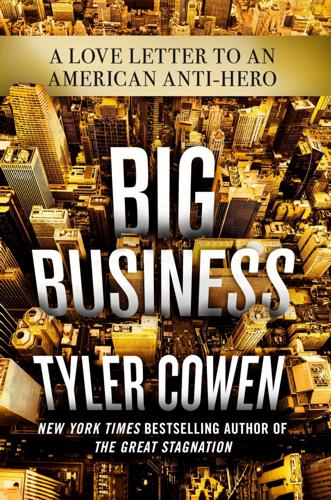
Big Business: A Love Letter to an American Anti-Hero
by
Tyler Cowen
Published 8 Apr 2019
Dobson DaVanzo & Associates, LLC, May 7, 2009. Davies, Richard, Andrew G. Haldane, Mette Nielsen, and Silvia Pezzini. 2014. “Measuring the Costs of Short-Termism.” Journal of Financial Stability 12: 16–25. Davis, Gerald F. 2016. The Vanishing American Corporation: Navigating the Hazards of a New Economy. Oakland, CA: Berrett-Koehler. Della Volpe, John, and Sonya Jacobs. 2016. “Survey of Young Americans’ Attitudes Toward Politics and Public Service.” Harvard Public Opinion Project, Harvard University Institute of Politics, April 25, 2016. DePaulo, Bella M., Matthew E. Ansfield, Susan E. Kirkendol, and Joseph M.

Road to Nowhere: What Silicon Valley Gets Wrong About the Future of Transportation
by
Paris Marx
Published 4 Jul 2022
: Public Transit in the Age of Google, Uber, and Elon Musk, Between the Lines Books, 2020, pp. 193–205. 20 Untokening, “Untokening 1.0—Principles of Mobility Justice,” The Untokening (blog), November 11, 2017, Untokening.org. 21 George Monbiot, “Public Luxury for All or Private Luxury for Some: This Is the Choice We Face,” Guardian, May 31, 2017, Theguardian.com. 22 Aaron Vansintjan, “Public Abundance Is the Secret to the Green New Deal,” Green European Journal, May 27, 2020. 23 For specific proposals, see Callum Cant, Riding for Deliveroo: Resistance in the New Economy, Polity Press, 2019; Dan Hind, “The British Digital Cooperative: A New Model Public Sector Institution,” Common Wealth, September 20, 2019, Common-wealth.co.uk; “Our Plan,” Delivering Community Power, n.d., Deliveringcommunitypower.ca; Paris Marx, “Build Socialism Through the Post Office,” Jacobin, April 15, 2020, Jacobinmag.com. 24 See Salomé Viljoen, “Data as Property?
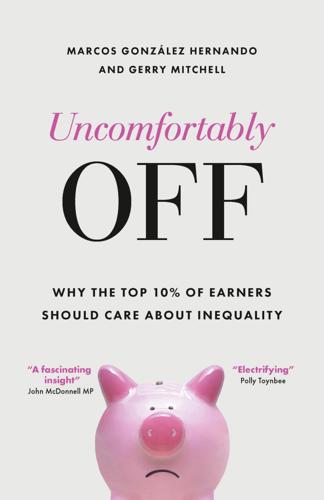
Uncomfortably Off: Why the Top 10% of Earners Should Care About Inequality
by
Marcos González Hernando
and
Gerry Mitchell
Published 23 May 2023
Intergovernmental Panel on Climate Change (2021) Climate change 2022: Mitigation of climate change. Working Group III contribution to the Sixth Assessment Report. www.ipcc.ch/ assessment-report/ar6 International Labour Organization (2016) Women at work: Trends 2016. Geneva: ILO. IPPR (2019) Prosperity and justice: A plan for the new economy. London: IPPR. Jackson, M. and Cooney, C. (2022) Energy bills: Middle-earners will need help with rising prices too, says chancellor. BBC News. 27 August. www.bbc.com/news/uk-politics-62695778 Jackson, T. (2021) Post growth: Life after capitalism. Cambridge: Polity. Jaffe, S. (2021) Work won’t love you back: How devotion to our jobs keeps us exploited, exhausted, and alone.

Superbloom: How Technologies of Connection Tear Us Apart
by
Nicholas Carr
Published 28 Jan 2025
Sometimes the state has to step in to prevent so-called tragedies of the commons, where people or businesses rush to consume, exploit, or hoard important resources, to the detriment of the general good. Officials establish laws and regulations—allocating radio spectrum through licensing, for instance—to control demand. When it comes to informational products, however, the internet seemed to herald a new economy of abundance. Because digital goods can be copied endlessly at little or no cost, the public would enjoy limitless quantities of them. Over the past thirty years, the sense of an impending utopia of information abundance has carried an “aroma of awesomeness,” as a group of legal scholars wrote in a 2022 journal article.30 The aroma wafted through popular books with titles like The Zero Marginal Cost Society, The Long Boom, Cognitive Surplus, Free, and Abundance: The Future Is Better Than You Think.
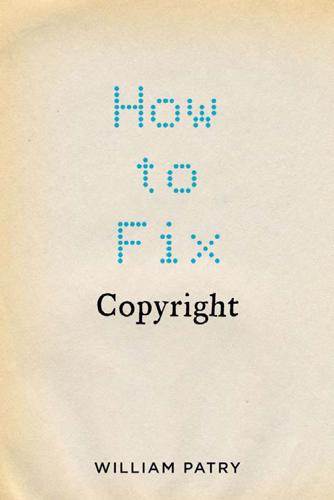
How to Fix Copyright
by
William Patry
Published 3 Jan 2012
In 2006, this syllogism was expressed by the then-EU Commissioner for the Internal Market: “The protection of intellectual and industrial property—copyrights, patents, trademarks or designs— is at the heart of a knowledge-based economy and central to improving Europe’s competitiveness.”156 More recently, in calling for a single market for intellectual property rights, the European Commission made this extraordinary statement: “all forms of IPR are cornerstones of the new knowledge-based economy....IP is the capital that feeds the new economy.”157 This is a novel, and incomprehensible use of the term “capital.”158 While human 128 HOW TO FIX COPYRIGHT development theorists will sometime use the term “individual capital” in referring to inherent personal abilities—in contrast to more traditional economists, who refer to labor as a form of intellectual capital—copyright and patent rights are not capital in either sense: they do not create value and are not based on labor.
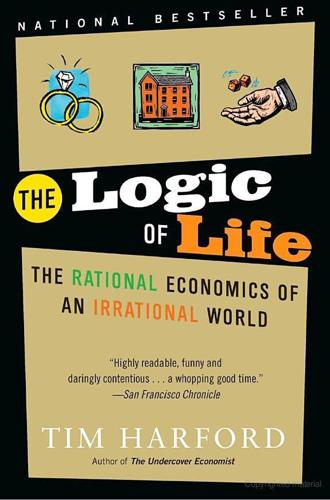
The Logic of Life: The Rational Economics of an Irrational World
by
Tim Harford
Published 1 Jan 2008
Almost half of all American pharmaceutical innovations were invented in New Jersey, a state with less than 3 percent of the U.S. population. It’s a spiky world. And it makes sense that the world should be getting even spikier. Contrast two of the world’s leading companies, Exxon and Microsoft. Old-economy Exxon has operations across the planet, drilling, refining, and selling petroleum products. New-economy Microsoft can dominate the global market for software from a campus on the outskirts of Seattle. Most high-tech companies are concentrated in a small number of innovative hot spots. Admittedly, Silicon Valley is not as compact as Manhattan, but Silicon Valley firms are now reaching across the global economy from one small site in a way that even the sugar and garment industries of New York were not able to do.

Blink: The Power of Thinking Without Thinking
by
Malcolm Gladwell
Published 1 Jan 2005
Before long, however, the chair started to attract the attention of some of the very cutting-edge elements of the design community. It won a design of the decade award from the Industrial Designers Society of America. In California and New York, in the advertising world and in Silicon Valley, it became a kind of cult object that matched the stripped-down aesthetic of the new economy. It began to appear in films and television commercials, and from there its profile built and grew and blossomed. By the end of the 1990s, sales were growing 50 to 70 percent annually, and the people at Herman Miller suddenly realized that what they had on their hands was the best-selling chair in the history of the company.

Undoing the Demos: Neoliberalism's Stealth Revolution
by
Wendy Brown
Published 6 Feb 2015
See, for example, Martha Nussbaum, Not for Profit: Why Democracy Needs the Humanities (Princeton: Princeton University Press, 2010); Jonathan R. Cole, The Great American University: Its Rise to Preeminence, Its Indispensable National Role, Why It Must Be Protected (New York: Public Affairs Press, 2009); Sheila Slaughter and Gary Rhoades, Academic Capitalism and the New Economy: 262 notes Markets, State, and Higher Education (Baltimore: Johns Hopkins University Press, 2004); Derek Bok, Universities in the Marketplace: The Commercialization of Higher Education (Princeton: Princeton University Press, 2003); Newfield, Unmaking the Public University, chapter 3; and Geoffrey Harpham, “From Eternity to Here: Shrinkage in American Thinking about Higher Education,” Representations, 116.1 (2011), pp. 42–61. 15.

The New Urban Crisis: How Our Cities Are Increasing Inequality, Deepening Segregation, and Failing the Middle Class?and What We Can Do About It
by
Richard Florida
Published 9 May 2016
But what came next was even more unanticipated—and even more frightening: the election of Donald Trump to the presidency of the most powerful country on the planet. Trump rose to power by mobilizing anxious, angry voters in the left-behind places of America. Hillary Clinton took the dense, affluent, knowledge-based cities and close-in suburbs that are the epicenters of the new economy, winning the popular vote by a substantial margin. But Trump took everywhere else—the farther-out exurbs and rural areas—which provided his decisive victory in the Electoral College. All three—Trump, Ford, and Brexit—reflect the deepening fault lines of class and location that define and divide us today.

Mysteries of the Mall: And Other Essays
by
Witold Rybczynski
Published 7 Sep 2015
The corollary to McLuhan’s law is that the attraction of an urban place is in inverse proportion to its actual economic productivity. No one is interested in guided tours of Silicon Valley or Boston’s Route 128; such places may be economic powerhouses, but they are too spread out, too new, too, well, ugly. Paradoxically, many of the very qualities that have contributed to cities’ shaky position in the new economy—their density, their out-of-date buildings, their aging infrastructure, their reliance on mass transit rather than automobiles—heighten their appeal to tourists and short-term visitors. Cities have many resources that complement their new identity: nineteenth-century railroad stations and markets that can be turned into museums and shopping malls; cultural institutions such as symphony orchestras and theater, opera, and ballet companies; magnificent parks; venerable luxury hotels; and historic cultural sites.
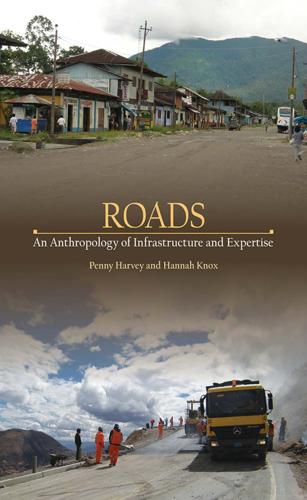
Roads: An Anthropology of Infrastructure and Expertise (Expertise: Cultures and Technologies of Knowledge)
by
Penny Harvey
and
Hannah Knox
Published 22 Jun 2015
Cultural Values 6 (1–2): 65–90. Bowker, G. C., and S. L. Star. 1999. Sorting Things Out: Classification and Its Consequences. Cambridge, MA: MIT Press. Boyer, Dominic. 2006. “Conspiracy, History, and Therapy at a Berlin Stammtisch.” American Ethnologist 33 (3): 327–39. Brennan, T. 2000. Exhausting Modernity: Grounds for a New Economy. New York: Routledge. Brenneis, D., and F. Myers, eds. 1984. Dangerous Words: Language and Politics in the Pacific. Prospect Heights, IL: Waveland Press. Brenner, N., J. Peck, and N. Theodore. 2010. “After Neoliberalization?” Globalizations 7 (3): 327–45. Bricmont, J., and A. D. Sokal. 2001. “Science and Sociology of Science: Beyond War and Peace.”
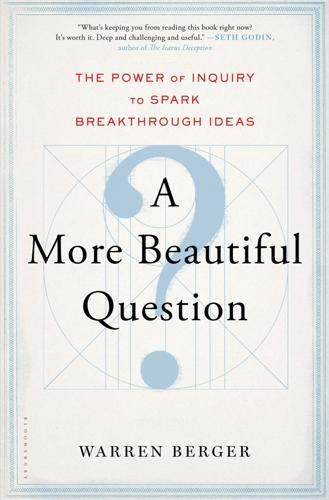
A More Beautiful Question: The Power of Inquiry to Spark Breakthrough Ideas
by
Warren Berger
Published 4 Mar 2014
This is going on in basements, playgrounds, museums (San Francisco’s Exploratorium recently established a maker space), and, perhaps most surprisingly, libraries. “Libraries are being remade as interesting maker spaces, with the librarian playing more of the role of the teacher of inquiry-based learning,” Brown says. Brown believes that young people may be honing better new-economy skills outside the classroom than in it; they’re learning to create, experiment, build, question, and learn. So it may turn out that in a world of exponential change, “these are the kids who will have the skills to rise to the top.” In a sense, we’re all “makers” now, or, at least, we would do well to think of ourselves that way.
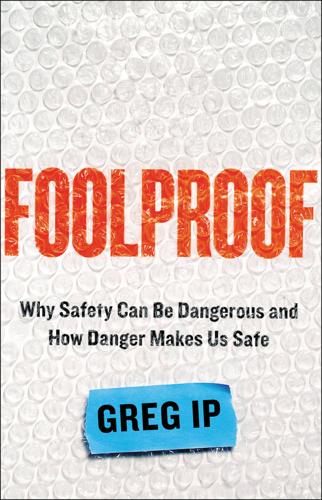
Foolproof: Why Safety Can Be Dangerous and How Danger Makes Us Safe
by
Greg Ip
Published 12 Oct 2015
Recession Claims Bank of New England as First Big Victim—Federal Regulators Take Over after Company Warned of Large Impending Loss—Depositors Rush to Get Funds,” Wall Street Journal, January 7, 1991. 34 On the morning of Sunday: Powell’s recollections based on my interview with him. 35 Of the $19.1 billion: History of the Eighties—Lessons for the Future, vol. 1, An Examination of the Banking Crises of the 1980s and Early 1990s, Federal Deposit Insurance Corporation, 635, available at https://www.fdic.gov/bank/historical/history/. 36 One prominent columnist labeled: Anatole Kaletsky, Capitalism 4.0: The Birth of a New Economy in the Aftermath of Crisis (New York: PublicAffairs, 2010), 131. Chapter 9 1 “while the aggregate”: D. R. Jacques, “Society on the Basis of Mutual Life Insurance,” 16 Hunt’s Merchants’ Magazine (1849): 152, 153, quoted in Tom Baker, “On the Genealogy of Moral Hazard,” Texas Law Review 75, no. 2 (1996): 247, available at https://www.law.upenn.edu/fac/thbaker/Tom-Baker-On-the-Genealogy-of-Moral-Hazard.pdf. 2 Thai Life Insurance: It can be viewed here: https://www.youtube.com/watch?
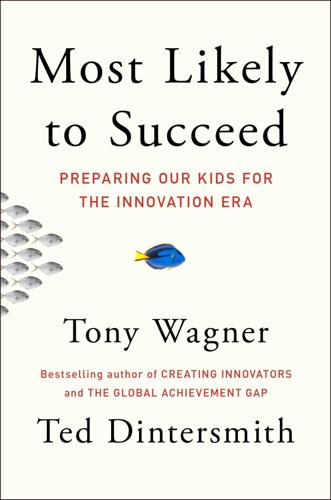
Most Likely to Succeed: Preparing Our Kids for the Innovation Era
by
Tony Wagner
and
Ted Dintersmith
Published 17 Aug 2015
Lifetime employment with a large company is increasingly unlikely; individuals will change jobs, companies, and even professions many times in their lifetime. In today’s world, if you can’t invent (and reinvent) your own job and distinctive competencies, you risk chronic underemployment. In the new economy, some new companies will take off, shape our economic and social landscape, and create jobs and enormous wealth. What will be different, though, is that the new-era companies will be far more productive than last century’s counterparts, and these successful companies will offer little opportunity for the unskilled.

No Ordinary Disruption: The Four Global Forces Breaking All the Trends
by
Richard Dobbs
and
James Manyika
Published 12 May 2015
TJ McCue, “Manufacturing jobs changing but no severe job skills gap in USA,” Forbes.com, October 18, 2012, www.forbes.com/sites/tjmccue/2012/10/18/manufacturing-jobs-changing-but-no-severe-job-skills-gap-in-usa. 8. Parija Bhatnagar, “Manufacturing boom: Trade school enrollment soars,” CNN Money, July 31, 2012, http://money.cnn.com/2012/07/31/news/economy/manufacturing-trade-schools/?Iid=EL. 9. Mona Mourshed, Diana Farrell, and Dominic Barton, Education to employment: Designing a system that works, McKinsey Center for Government, 2013. 10. Gordon G. Chang, “College grads are jobless in China’s ‘high-growth’ economy,” Forbes.com, May 26, 2013. 11.
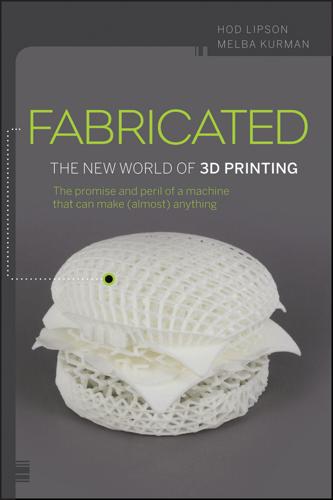
Fabricated: The New World of 3D Printing
by
Hod Lipson
and
Melba Kurman
Published 20 Nov 2012
The last step: choose a color and material, click “print” and in a few minutes you would become the proud owner of a brand new set of perfect-fit custom handlebar grips. FabApps will offer expert designers of the future a new business model for integrating their design expertise into a growing economy of distributed manufacturing. Like iPhone apps, FabApps will generate a new economy. Small custom printing apps will find their niche in narrow yet complex markets that are too small to attract the attention of big manufacturing companies, yet large enough to offer opportunity to small businesses and individuals. Continuous customization and product variety Why do some technologies shake up our world while others quietly join us without affecting our daily lives very much?

Don't Trust, Don't Fear, Don't Beg: The Extraordinary Story of the Arctic 30
by
Ben Stewart
Published 4 May 2015
This detention shows many nations that Greenpeace will not cower in the face of adversity, it will persevere where others fear to tread. This persistence will put negative press at the top of all oil companies’ board meeting agendas. These risk-averse project-monkeys will be forced to look at new energy sources, which will eventually lead to new economies and end the march into the northern wilderness for black gold! Five weeks into their ordeal, with their story making front pages across the globe, the Chronicle has become the Arctic 30’s own in-house newspaper. Every evening the activists would read the Chronicle, tick off their names to say it’s passed through their cell, then pass it on.
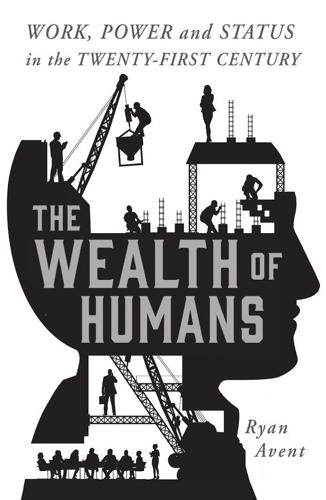
The Wealth of Humans: Work, Power, and Status in the Twenty-First Century
by
Ryan Avent
Published 20 Sep 2016
Much of the promise of the digital revolution, however, lies in its potential to make these sectors better and more affordable. What that will mean is that a few will do the work that has until now been done, at great cost, by many. The employment trilemma implies that we can have high-employment public sectors in future, but only at the cost of low productivities and very big hospital, tuition and tax bills. NEW ECONOMY, LOW-WAGE FOUNDATIONS Does the world clearly need sources of mass employment for all those who would like to work to have a good job? One might think that the digital revolution offers the possibility of a better sort of work than was available to people with modest skill levels a generation or two ago.
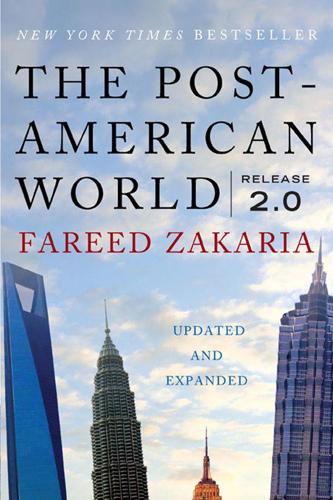
The Post-American World: Release 2.0
by
Fareed Zakaria
Published 1 Jan 2008
(That fact helps explain today’s fractured economy, in which many families struggle with debt and foreclosure while the stock market soars upward, gaining nearly 13 percent in 2010.) More important, the whole concept of “national saving” might be outdated, not reflecting the reality of new modes of production. In the new economy, growth comes from “teams of people creating new goods and services, not from the accumulation of capital,” which was more important in the first half of the twentieth century. Yet we still focus on measuring capital. The national accounts, which include GDP and traditional measures of national saving, were, Cooper writes, “formulated in Britain and the United States in the 1930s, at the height of the industrial age.”19 Economists define saving as the income that, instead of going toward consumption, is invested to make possible consumption in the future.
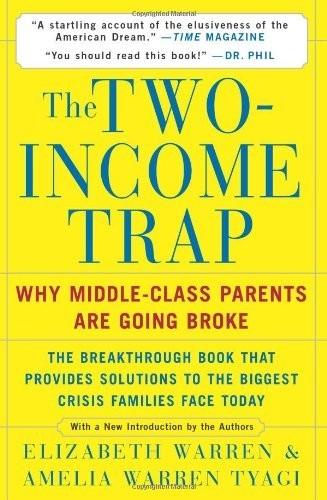
The Two-Income Trap: Why Middle-Class Parents Are Going Broke
by
Elizabeth Warren
and
Amelia Warren Tyagi
Published 17 Aug 2004
Today, 77 percent of adults say that getting a college education is more important than it was just ten years ago, and 87 percent believe that “a college education has become as important as a high school diploma used to be.”79 Middle-class parents—obeying the dictate that college is essential in the new economy—have found themselves combatants in yet another active bidding war. Once again, supply and demand are out of balance. The number of students aiming for a spot in a decent four-year institution is rising every year, while the number of openings at the major public and private universities stays essentially the same.

Peers Inc: How People and Platforms Are Inventing the Collaborative Economy and Reinventing Capitalism
by
Robin Chase
Published 14 May 2015
You are in charge of when, where, and how much you will earn. You don’t have to sit passively waiting for an employer to choose you. You now have multiple ways of making a living. Maybe this is the modern technology-enabled equivalent of a hunter-gatherer economy. I stumbled across a tweet that describes just a subset of the new economy: “Thinking of renting house out on #Airbnb and then putting on my #Uber hat & chauffeuring guests around using #Zipcar.”15 Gretchen, the artist-therapist-mom, sums it up: “Etsy allows people to try out something new with minimal expense. Other new options (Airbnb, for example) allow people to have a little added income while experimenting as well.
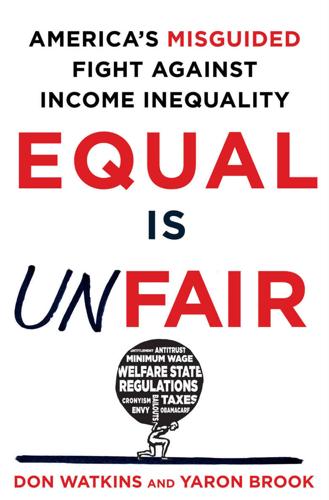
Equal Is Unfair: America's Misguided Fight Against Income Inequality
by
Don Watkins
and
Yaron Brook
Published 28 Mar 2016
Ben Carson with Cecil Murphey, Gifted Hands: The Ben Carson Story (Grand Rapids, MI: Zondervan, 1990), p. 37. 33. Ibid., pp. 63–64. 34. Ibid., p. 103. 35. Ibid., p. 106. 36. Ibid., p. 117. 37. Mike Rowe in interview with Stephen Samaniego, “Cleaning Up ‘Dirty Jobs,’” CNNMoney.com, May 18, 2011, http://money.cnn.com/2011/05/18/news/economy/mike_rowe_dirty_jobs/ (accessed April 28, 2015). 38. Emma Woolley, “How Much Do Plumbers Make?,” Career Bear, April 17, 2012, http://careerbear.com/plumber/article/how-much-do-plumbers-make (accessed May 20, 2015). 39. Katherine S. Newman. Interview by Russ Roberts, “Newman on Low-Wage Workers,” EconTalk, March 8, 2010, http://www.econtalk.org/archives/2010/03/newman_on_low-w.html (accessed May 20, 2015). 40.
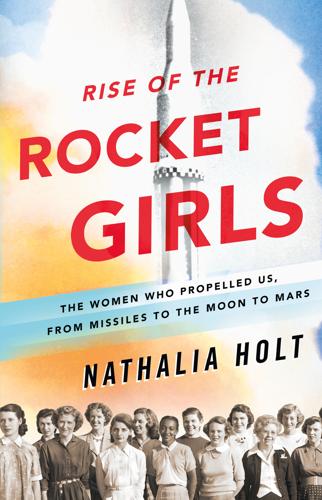
Rise of the Rocket Girls: The Women Who Propelled Us, From Missiles to the Moon to Mars
by
Nathalia Holt
Published 4 Apr 2016
Dark clouds of mosquitoes swarmed the wet, marshy land, making the area all but uninhabitable until the advent of DDT in the mid-1940s. Armed with a new weapon against the pests, fishermen and farmers were moving in. The reaction to the new missile range was mixed. On the one hand, it would bring jobs and a new economy, but it would also bring outsiders and dangerous missiles. Some dreamed of selling off their land and homes to the government for a pretty penny while others feared their homes would be forcibly taken away, bulldozed to make room for a launchpad. Back in California, the mood at JPL was dark, with botched rocket launches piling up and now the news that future launches would take place clear across the country.
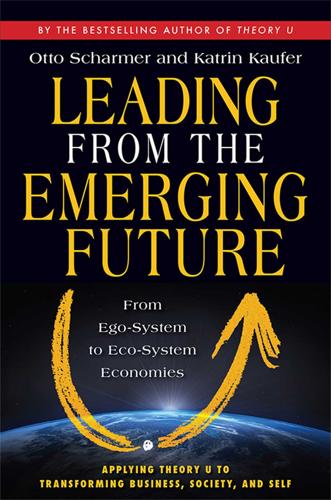
Leading From the Emerging Future: From Ego-System to Eco-System Economies
by
Otto Scharmer
and
Katrin Kaufer
Published 14 Apr 2013
This journey through various economic paradigms can be told as a tale of the movement of human consciousness from traditional (1.0) and ego-system awareness (2.0) to stakeholder (3.0) and eco-system awareness (4.0). Summing up, the evolution of economic thought and our economy follows the evolution of consciousness. The essence of the new economy is to transform economic thought from ego-system awareness to ecosystem awareness. Throughout this chapter, we exemplified this transformation for our eight issue areas or, to use another term, acupuncture points. The story of these acupuncture points is basically a story of going beyond the commodity fiction of land, labor, and capital in order to develop better and more intelligent ways of stewarding the commons and redirecting financial capital into the real sources of individual and collective entrepreneurship, creativity, and well-being.
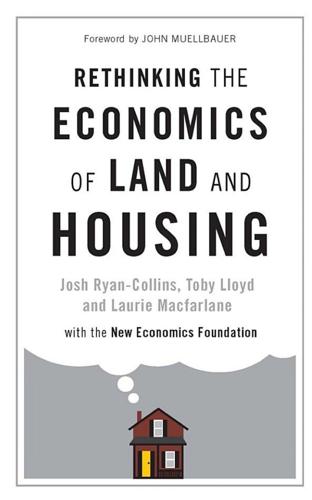
Rethinking the Economics of Land and Housing
by
Josh Ryan-Collins
,
Toby Lloyd
and
Laurie Macfarlane
Published 28 Feb 2017
He was previously head of economic analysis at the Water Industry Commission for Scotland and also spent one year working in the markets and economics division at Ofwat. Laurie has written on land and housing reform for the progressive Scottish think tank Common Weal. He has a first class degree in economics from the University of Strathclyde. The New Economics Foundation is the only people-powered think tank. It works to build a new economy where people really take control. RETHINKING THE ECONOMICS OF LAND AND HOUSING Josh Ryan-Collins, Toby Lloyd and Laurie Macfarlane Foreword by John Muellbauer Rethinking the Economics of Land and Housing was first published in 2017 by Zed Books Ltd, The Foundry, 17 Oval Way, London SE11 5RR, UK www.zedbooks.net Copyright © Josh Ryan-Collins, Toby Lloyd and Laurie Macfarlane 2017 The rights of Josh Ryan-Collins, Toby Lloyd and Laurie Macfarlane to be identified as the author of this work have been asserted by them in accordance with the Copyright, Designs and Patents Act, 1988 Typeset in Sabon by seagulls.net Index: Rohan Bolton Cover design: and illustration by David A.

Frugal Innovation: How to Do Better With Less
by
Jaideep Prabhu Navi Radjou
Published 15 Feb 2015
Diamandis, Founder and Chairman, X PRIZE Foundation ‘Jugaad Innovation throws cold water in the faces of CEOs, reminding them of the immense power of grassroots, do-it-yourself, cheap, quick, simple innovation. This is one of the most important lessons that emerging markets are teaching the West.’ – George F. Colony, CEO, Forrester Research ‘I’ve long argued that the role of business is to make the world a better place. In the new economy, this requires true innovation – bold ideas, gutsy people, and extraordinary actions. Need a new roadmap? Fresh inspiration? Accessible tools? It’s all in this remarkable book, Jugaad Innovation. Get a copy for yourself and every member of your team today.’ – Kevin Roberts, CEO Worldwide, Saatchi & Saatchi; bestselling author, LoveMarks www.hachetteindia.com
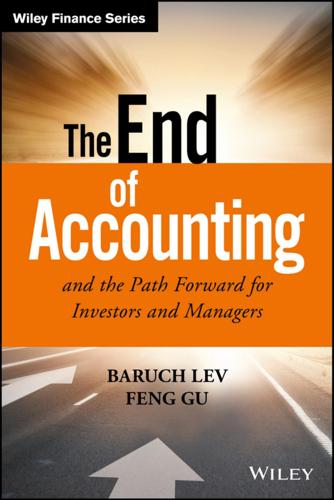
The End of Accounting and the Path Forward for Investors and Managers (Wiley Finance)
by
Feng Gu
Published 26 Jun 2016
However, these circumstances are rather strict and many companies subject to this rule either don’t capitalize these costs at all, or they capitalize relatively small amounts. As to the United States, certain software development costs can be capitalized, but relatively few companies do so. For the spending of over $1 trillion a year, see Carol Corrado, Charles Hulten, and Daniel Sichel, in Measuring Capital in the New Economy, (Chicago: University of Chicago Press, 2005), pp. 11–45. “ . . . our best guesses suggest that business spending on intangibles was about $1.2 trillion annually in the late 1990s, more than 13 percent of GDP” (p. 30). Since Pfizer’s R&D expenses were declining during 2011–2013, the “hit” to current earnings from R&D expensing was lower than in previous years.
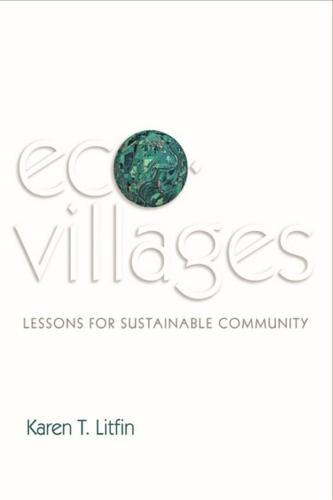
Ecovillages: Lessons for Sustainable Community
by
Karen T. Litfin
Published 16 Dec 2013
Terry Patten, co-author (with Ken Wilber, Adam Leonard, and Marco Morelli) of Integral Life Practice In these times of political gridlock and myopia, Karen Litfin’s tremendously engaging and informative exploration of ecovillages around the world points the way to a viable and attractive future very different from the bleak place to which we are now headed. You will enjoy this book! James Gustave Speth, author of America the Possible: Manifesto for a New Economy, former Dean, Yale School of Forestry and Environmental Studies, Yale University Nature teaches us that nothing disappears when it dies; it merely becomes something new. Karen Litfin’s lucid and heartfelt book reveals the new life emerging in the cracks of failing systems. Through her eyes, we meet people everywhere who are building high-joy, low-impact communities.

Zeitgeist
by
Bruce Sterling
Published 1 Nov 2000
As Starlitz and Ozbey pontificated for them, they had the look of New Guinea tribesmen exposed to video porn. “You see,” Starlitz said loudly, “casinos have a very hot product. Casinos sell people their own greed. ‘Greed’ is one of those way-hip meta-commodities, like ‘access,’ or ‘click-through,’ or ‘bandwidth.’ That’s like this fabulous new-economy thing, and—“ Starlitz stopped short, staring in astonishment. Ozbey rose from his chair. “Here comes Gonca. Late, as usual.” He spoke briefly in Turkish, and air-kissed the actress’s roseate cheeks. Gonca daintily adjusted Ozbey’s white boutonniere. Then she offered Starlitz a paralyzing dark-eyed glance and emitted a bright contralto stream of lilting Turkish.

What Algorithms Want: Imagination in the Age of Computing
by
Ed Finn
Published 10 Mar 2017
The cofounder of another startup, named Yerdle (dedicated to recycling unwanted consumer goods through a kind of algorithmic swap-bazaar), put it just right: “We want to make people make things better.”35 This altruistic ambition to motivate positive efficiencies through capitalism resonates with Google chief Eric Schmidt’s suggestion that customers “want Google to tell them what they should be doing next.” This is the central labor question at the implementation fault line between algorithmic gamification and the marketplace: who is motivating these changes, and what exactly are we “sharing” in the sharing economy? On the most obvious level, this new economy is about more efficient access to privately owned or atomized goods and services. The rhetoric of companies like Yerdle and Airbnb leans on the mobilization of material resources: cars, apartments, and household objects that are sitting around unused. Share your personal goods to monetize that slack and reduce the overhead of ownership, turning an empty vehicle or room into a profit center and a community resource.
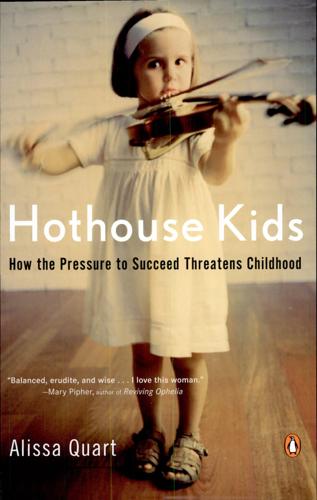
Hothouse Kids: The Dilemma of the Gifted Child
by
Alissa Quart
Published 16 Aug 2006
Is there something wrong with the transformation of play into work among child professionals, and with schoolchildren having their recess taken away? Are there long-term psychological and physical ramifications? Is there a danger of exploitation by managers and parents? Or is it a necessary part of the new economy and a more competitive job market? In some cases, what’s wrong with the professionalization of children is all too easy to see, as when a kid is blatantly exploited by adults. Some of the managers get greedy with their golden geese. Texas-based “prodigy” art promoter Ben Valenty has for a decade been selling art buyers on the “Child Picasso” and the “Child Dalí.”
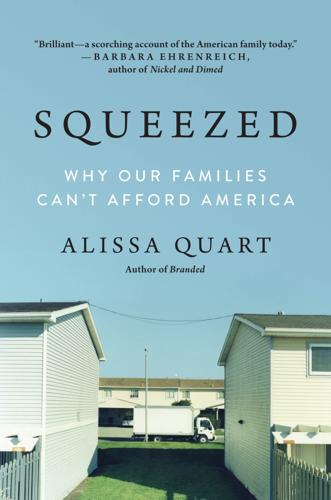
Squeezed: Why Our Families Can't Afford America
by
Alissa Quart
Published 25 Jun 2018
It’s increasingly common,” the scholar Kathleen Gerson said. She also pointed out that in disadvantaged families, the aunts, grandmothers, and other extended family members who are often called in to care for kids in a pinch may live in-house. Gerson, a professor of sociology at New York University who specializes in families and the new economy, told me that one of the stumbling blocks to making such cooperative solutions possible is that Americans are wrongly “obsessed with the idea of the nuclear household. Family is not just people related through law or family ties, but those who come together to share care, and provision of economic resources.”

Black Code: Inside the Battle for Cyberspace
by
Ronald J. Deibert
Published 13 May 2013
Corporation’s Role in Egypt’s Brutal Crackdown,” Huffington Post, January 28, 2011, http://www.huffington-post.com/timothy-karr/one-us-corporations-role-_b_815281.html. 4 After thirty-three years of active service: In The Shock Doctrine, Naomi Klein argues that Kenneth Minihan is responsible for implementing the “disaster capitalism complex,” defined as “a fully fledged new economy in homeland security, privatised war and disaster reconstruction tasked with nothing less than building and running a privatised security state, both at home and abroad.” Similarly, in his book Spies for Hire, investigative journalist Tim Shorrock traces the subservience of public to private interests in the intelligence-contracting industry, an industry that specifically “serves the needs of government and its intelligence apparatus.”
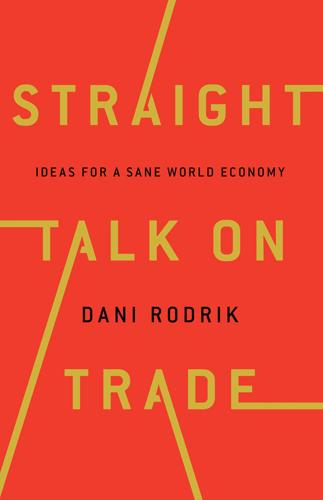
Straight Talk on Trade: Ideas for a Sane World Economy
by
Dani Rodrik
Published 8 Oct 2017
It may facilitate the creation of long-distance relationships that cross national boundaries. On the other hand, the increase in complexity and product differentiation, along with the shift from Fordist mass production to new, distributed modes of learning, increases the relative importance of spatially circumscribed relationships. The new economy runs on tacit knowledge, trust, and cooperation—which still depend on personal contact. As Kevin Morgan put it, spatial reach does not equal “social depth.”29 Hence, market segmentation is a natural feature of economic life, even in the absence of jurisdictional discontinuities. Neither economic convergence nor preference homogenization is the inevitable consequence of globalization.

This Is Your Country on Drugs: The Secret History of Getting High in America
by
Ryan Grim
Published 7 Jul 2009
The Reagan Recession, as it became known, hit hard in the summer of 1981 and persisted for the next year and a half. The president’s approval rating bottomed out in the mid-30, and in the 1982 midterm elections, Democrats picked up more than two dozen congressional seats. America was no longer a place where things were made; it was a place where things were shuffled around. Cocaine slotted nicely into the new economy. The Reagan Recession had disproportionately affected urban blacks and Latinos, and American cities were teeming with unemployed men eager to earn a living distributing the drug, cutting it, or defending territory where it was sold. De Jesus describes one of the coke trade’s typical recruits:A childhood friend named Celia was dating one of the city’s rising dealers.
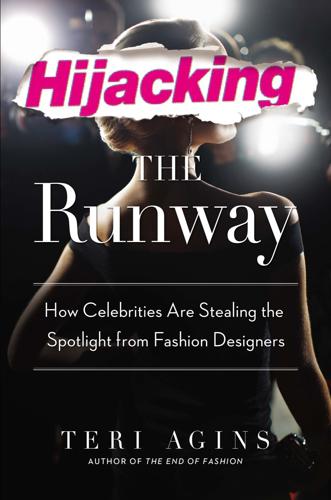
Hijacking the Runway: How Celebrities Are Stealing the Spotlight From Fashion Designers
by
Teri Agins
Published 8 Oct 2014
That meant that people weren’t compelled to shop for new clothes so often, canceling out the built-in obsolescence that had kept fashion dynamic—and profitable—as millions of people moved in lockstep to update their wardrobes every few seasons. Bill Gates, Steve Jobs, and the entrepreneurs at Google and Yahoo! weren’t thinking of fashion when they worked in their garages in T-shirts and flip-flops to create new economic platforms. And that was the point: They created a vast new economy, succeeded beyond anyone’s fantasies of success, dressed like schlubs. And now that they were world-famous multibillionaire moguls, these powerful men had no interest in dressing up in $5,000 Brioni tailored suits and $1,600 John Lobb shoes. Their indifference inadvertently rewrote modern fashion mores, dethroning the business suit as the symbol of financial success and corporate authority.
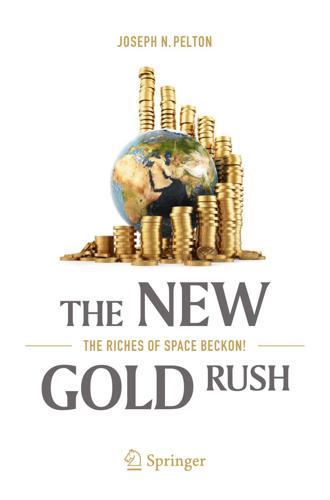
The New Gold Rush: The Riches of Space Beckon!
by
Joseph N. Pelton
Published 5 Nov 2016
It is these people that are upending the world of technology and global enterprise at planetary levels who will be prominent in the space business during the twenty-first century. This book is intended to reveal to a broader audience the cornucopia of new enterprises that could be opening up in the next few years. That future may well include clean energy beamed from space 24 h a day. Or it could mean new economies in space services from new types of communication satellites, remote-sensing companies, or other new types of space enterprises. It could well mean robotic mining of asteroids rich in platinum and rare Earth metals. It could mean solar space shields to protect vital Earth infrastructure as the Van Allen belts lose their protective power due to the shift of the magnetic poles.
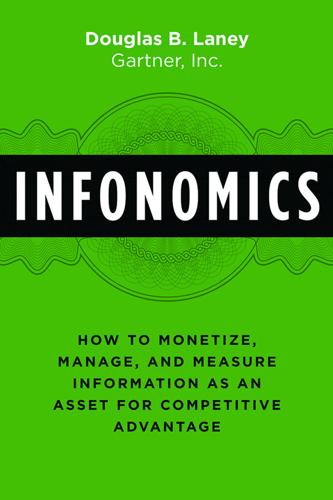
Infonomics: How to Monetize, Manage, and Measure Information as an Asset for Competitive Advantage
by
Douglas B. Laney
Published 4 Sep 2017
He wondered aloud about the actual value of several household-name businesses after pointing out outrageous accounting metrics about them, then questioning, “How much is each of these companies worth? The plain truth is that we cannot readily answer that question because our current measurement and reporting systems… do not capture emerging sources of value. The measurements we use don’t reflect all the ways that companies create or destroy value in the New Economy.”3 Samek went on to enumerate the issues this lack of transparency causes, including an inability for business leaders to make informed decisions about the use of resources, an inability of government to track and report on meaningful economic indices, and an inability of the investment community to apply anything more than “guesstimates” (his word) to value companies.
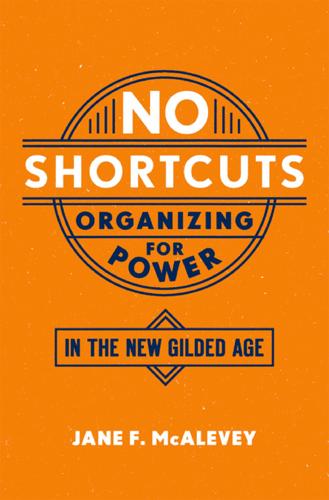
No Shortcuts: Organizing for Power in the New Gilded Age
by
Jane F. McAlevey
Published 14 Apr 2016
By contrast, as Chapter 3 illustrates, 1199 unions, even in negotiations with employers to win neutrality deals, bargain across the table, with no ground rules, and all workers are welcome to take part. Worker agency is a prerequisite for organizing and for building powerful structures. Whole Worker Organizing: Restoring the CIO Approach for a New Economy The working class does need more power to win. That is irrefutable. William Foster devotes an entire chapter of Organizing Methods in the Steel Industry to what he calls Special Organizational Work. The chapter is divided into four sections: “Unemployed—WPA”; “Fraternal Organizations”; “Churches”; and “Other Organizations.”
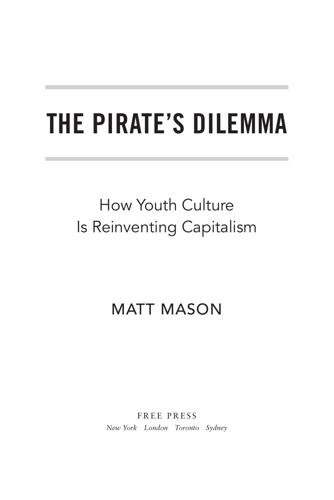
The Pirate's Dilemma: How Youth Culture Is Reinventing Capitalism
by
Matt Mason
D.I.Y. is changing our labor markets, and creativity is becoming our most valuable currency. Resist Authority Punk resisted authority and saw anarchy as the path to a brighter future. Punk capitalists are resisting authority, too—by leveraging new D.I.Y. technologies and the power of individuals connecting and working together as equals. This twin engine of the new economy is creating new ways all of us can live and work, leaving old systems for dust. Technology + Democracy = Punk Capitalism. Combine Altruism with Self-Interest Punk had high ideals—it looked aggressive and scary, but through its angry critique of society and subversion of it, it sought to change the world for the better.
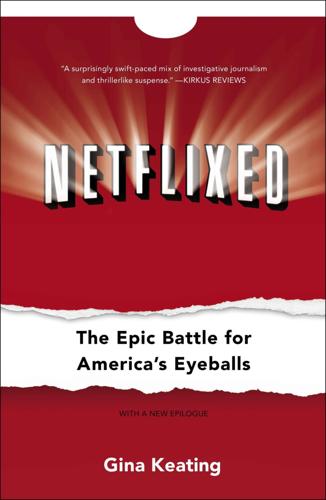
Netflixed: The Epic Battle for America's Eyeballs
by
Gina Keating
Published 10 Oct 2012
The stock market lost $5 billion in asset value, and many blamed inexperienced, free-spending Internet entrepreneurs and investors’ “irrational exuberance” for sinking the economy. The rate at which new Web sites sprang up dropped to a fraction of the growth of the late 1990s’ go-go years, as the New Economy mantra of “get big fast and never mind profits” was repudiated. Hastings now was on a mission to prove to Wall Street that Netflix’s survival of the dot-com meltdown was more than a fluke. In interviews in early 2001 he confidently predicted that Netflix would reach five hundred thousand paying subscribers and positive cash flow by the end of 2001.

The Classical School
by
Callum Williams
Published 19 May 2020
For a while, they “live like savages, on roots and fruit and fish”. One settler remarks that “fish is very good in its way; but we have had so much lately, that one might fancy it was to be Lent all the year round” (more of those “hopeless” attempts at humour). So they set to work on constructing a new economy, one which will give them variety and plenty. Arnall, the hero, is a snobbish and lazy fellow who does not like work. But in his desperation, he devises a contraption that captures animals. What follows is a spontaneous evolution of the division of labour, Freedgood argues: some people make arrows, others set about preparing the meat.
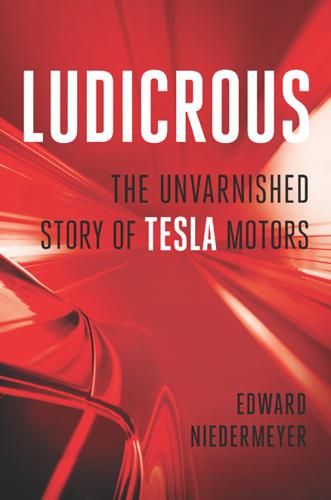
Ludicrous: The Unvarnished Story of Tesla Motors
by
Edward Niedermeyer
Published 14 Sep 2019
CHAPTER 5 MAKING CARS IS HARD When the mess gets sorted out, I’d like to have a conversation with whoever’s in charge at the time—the car czar or whoever—and say, “I’d like to run your plants, if you don’t mind.” Elon Musk, June 15, 2009 Today, Tesla’s factory in Fremont, California, looms over the surrounding business parks and subdivisions, its massive white profile framed by the brown hills that form the eastern boundary of Silicon Valley. In this epicenter of a new economy specializing in miniature microchips and ephemeral software, the plant—previously occupied by General Motors and New United Motor Manufacturing, Inc.—stands out as industrial-age atavism, the lone surviving dinosaur in a world of tiny, nimble startups. Its sheer size and the undisguised functionalism of its design are a stark reminder that, no matter how often or insistently Tesla claims it is a “technology company” rather than a traditional automaker, the core of its business is still old-fashioned manufacturing.
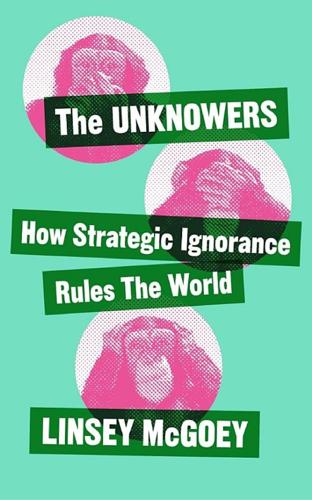
The Unknowers: How Strategic Ignorance Rules the World
by
Linsey McGoey
Published 14 Sep 2019
Smith was not against state regulation, a point admitted by 20th-century economic liberals like Friedrich Hayek. What Hayek fails to add is that Smith called for exceptional scrutiny of the third order, because of the businessman’s tendency to deceive. He was sceptical of laws and regulations proposed by the third order – the merchant winners in the new economy: any new law or regulation of commerce which comes from this order, ought always to be listened to with great precaution, and ought never to be adopted till having been long and carefully examined, not only with the most scrupulous, but with the most suspicious attention. It comes from an order of men, whose interest is never exactly the same with that of the publick, who have generally an interest to deceive and even to oppress the publick, and who accordingly have, upon many occasions both deceived and oppressed it.25 Smith and not Karl Marx first noticed a truth about class conflict: that the dominant often prevail because the law unjustly advantages them: The workmen desire to get as much, the master to give as little as possible … It is not, however, difficult to foresee which of the two parties must, upon all ordinary occasions, have the advantage in the debates, and force the other into compliance with their terms.

The Rationalist's Guide to the Galaxy: Superintelligent AI and the Geeks Who Are Trying to Save Humanity's Future
by
Tom Chivers
Published 12 Jun 2019
They’re known as the Rationalists. You’ve probably read a lot about artificial intelligence (AI) in recent years. Will it take our jobs? Will it form new, deadly, autonomous weapons on the battlefield? Will it lead to an era of inequality, as the rich buy all the robots and computers that run the new economy, and the poor find themselves left even further behind? Will we get those robot butlers we were promised? These are serious and real concerns which deserve the many articles and books written about them, apart from the butler thing. But while the Rationalists are worried about that stuff, it’s not the focus of their concern.
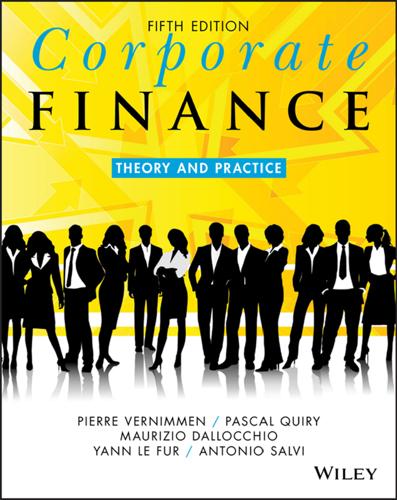
Corporate Finance: Theory and Practice
by
Pierre Vernimmen
,
Pascal Quiry
,
Maurizio Dallocchio
,
Yann le Fur
and
Antonio Salvi
Published 16 Oct 2017
Secondly, should a company’s position start to deteriorate, its top talent will be fairly quick to jump ship after having exercised their stock options before they become worthless. Those that remain on board may fail to grasp what is happening until it is too late, thereby losing precious time. This is what happened to so-called new economy companies, which distributed stock options as a standard form of remuneration. It is an ideal system when everything is going well, but highly dangerous in the event of a crisis because it exacerbates the company’s difficulties. (c) Corporate culture Corporate culture is probably very difficult for an outside observer to assess.
…
For example, young married couples can borrow to buy a house or people approaching retirement can save to offset future decreases in income. Even a developing nation can obtain resources to finance further development. And when an industrialised country generates more savings than it can absorb, it invests those surpluses through financial systems. In this way, “old economies” use their excess resources to finance “new economies”. 4. A financial system provides tools for managing risk. It is particularly risky for an individual to invest all of his funds in a single company because, if the company goes bankrupt, he loses everything. By creating collective savings vehicles, such as mutual funds, brokers and other intermediaries enable individuals to reduce their risk by diversifying their exposure.
…
Lastly, we mention options theory, whose applications we will see in Chapter 34. In practice, very few will value equity capital by analogy to a call option on the assets of the company. The concept of real options, however, had its practical heyday in 1999 and 2000 to explain the market values of “new economy” stocks. Needless to say, this method has since fallen out of favour. If you remember the efficient market hypothesis, you are probably asking yourself why market value and discounted present value would ever differ. In this chapter we will take a look at the origin of the difference, and try to understand the reason for it and how long we think it will last.

The Singularity Is Near: When Humans Transcend Biology
by
Ray Kurzweil
Published 14 Jul 2005
Even during the recent high-tech recession (2000–2003), the figure was almost one hundred times greater.79 We would have to repeal capitalism and every vestige of economic competition to stop this progression. It is important to point out that we are progressing toward the "new" knowledge-based economy exponentially but nonetheless gradually.80 When the so-called new economy did not transform business models overnight, many observers were quick to dismiss the idea as inherently flawed. It will be another couple of decades before knowledge dominates the economy, but it will represent a profound transformation when it happens. We saw the same phenomenon in the Internet and telecommunications boom-and-bust cycles.
…
See also Paul Gompers, "Venture Capital," in B. Espen Eckbo, ed., Handbook of Corporate Finance: Empirical Corporate Finance, in the Handbooks in Finance series (Holland: Elsevier, forthcoming), chapter 11, 2005, http://mba.tuck.dartmouth.edu/pages/faculty/espen.eckbo/PDFs/Handbookpdf/CH11-VentureCapital.pdf. 80. An account of how "new economy" technologies are making important transformations to "old economy" industries: Jonathan Rauch, "The New Old Economy: Oil, Computers, and the Reinvention of the Earth," Atlantic Monthly, January 3, 2001. 81. U.S. Department of Commerce, Bureau of Economic Analysis (http://www.bea.doc.gov), use the following site and select Table 1.1.6: http://www.bea.doc.gov/bealdn/nipaweb/SelectTable.asp?
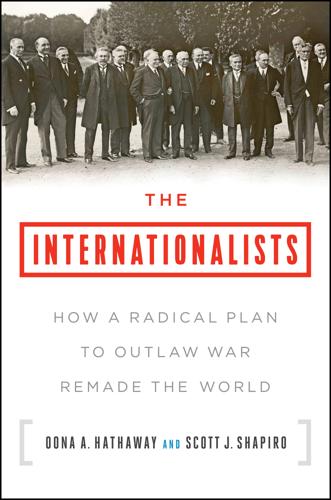
The Internationalists: How a Radical Plan to Outlaw War Remade the World
by
Oona A. Hathaway
and
Scott J. Shapiro
Published 11 Sep 2017
Ivana Kottasava, “Russia Bans More Foreign Foods,” CNN Money, August 13, 2015, http://money.cnn.com/2015/08/12/news/economy/russia-western-food-embargo/. 89. Ibid.; Anastasia Bazenkova, “Fake Cheese Floods Russian Stores,” Moscow Times, October 2, 2015. 90. International Monetary Fund, “Cheaper Oil and Sanctions Weigh on Russia’s Growth Outlook,” IMF Survey, August 3, 2015, http://www.imf.org/external/pubs/ft/survey/so/2015/CAR080315B.htm; Ivana Kottasava, “Russia’s Slump Pushes 3 Million into Poverty,” CNN Money, July 22, 2015, http://money.cnn.com/2015/07/22/news/economy/russia-crisis-poverty-three-million/index.html?iid=EL; “Historic Inflation Russia—CPI Inflation,” Worldwide Inflation Data, accessed January 29, 2016, http://www.inflation.eu/inflation-rates/russia/historic-inflation/cpi-inflation-russia.aspx. 91.
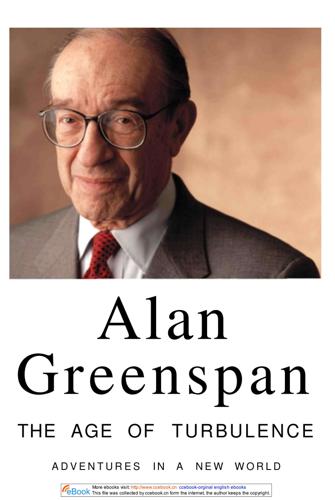
The Age of Turbulence: Adventures in a New World (Hardback) - Common
by
Alan Greenspan
Published 14 Jun 2007
We'd gather at 8:30 a.m. in Bob's office or mine, have breakfast brought in, and then sit for an hour or two, pooling information, crunching numbers, strategizing, and brewing ideas. 160 More ebooks visit: http://www.ccebook.cn ccebook-orginal english ebooks This file was collected by ccebook.cn form the internet, the author keeps the copyright. A DEMOCRAT'S AGENDA I always came out of these breakfasts smarter than when I arrived. They were the best forum I could imagine for puzzling out the so-called New Economy. The dual forces of information technology and globalization were beginning to take hold ; and as President Clinton later put it ; "the rulebooks were out of date." Democrats joyfully labeled the constellation of economic policies "Rubinomics." Looking back in 2003, a New York Times reviewer of Bob's memoir called Rubinomics "the essence of the Clinton presidency."
…
Bob Rubin was right: you can't tell when a market is overvalued, and you can't fight market forces. As the boom went on—for three more years, it turned out, greatly increasing the nation's paper wealth—we continued to wrestle with big questions of productivity and price stability and other aspects of what people had come to call the New Economy. We looked for other ways to deal with the risk of a bubble. But we did not raise rates any further, and we never tried to rein in stock prices again. A ndrea and I expressed some exuberance of our own by finally getting married that spring. She always jokes that it took me three tries to propose to her, because I kept popping the question in Fedspeak, but that is not true.
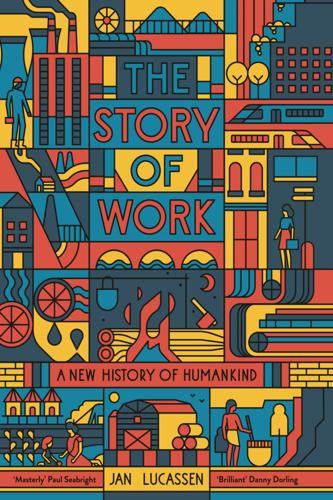
The Story of Work: A New History of Humankind
by
Jan Lucassen
Published 26 Jul 2021
In fact, strong labour market politics or even dictatorial measures became widely accepted in view of the new situation. At the Geneva Conference of 1934, Harold Butler, the director of the ILO, saw no problem in saying that Italy, together with the US, the Soviet Union and Germany, was at the forefront of creating a new economy. He praised Italy’s progress ‘in the construction of the corporative system that breaks away with economic theories based on individualism’. This was all the more remarkable since, by that time, unemployment in Italian industry was two-and-a-half times higher than in 1929. Most of the policies of the Italian fascists were not new.
…
Ogilvie & Markus Cerman (eds), European Proto-Industrialization (Cambridge: CUP, 1996), pp. 155–70. Bellenoit, Hayden J. The Formation of the Colonial State in India: Scribes, Paper and Taxes, 1760–1860 (London & New York: Routledge, 2017). Bellwood, Peter. First Migrants: Ancient Migration in Global Perspective (Chichester: Wiley Blackwell, 2013). Benner, Chris. Work in the New Economy: Flexible Labor Markets in Sillicon Valley (Malden, MA: Blackwell, 2002). Benner, Chris. ‘“Computers in the Wild”: Guilds and Next-Generation Unionism in the Information Revolution’, IRSH, 48 (2003), Supplement, pp. 181–204. Bentley, Alex. ‘Mobility, Specialisation and Community Diversity in the Linearbandkeramik: Isotopic Evidence from the Skeletons’, in Alisdair Whittle and Vicki Cummings (eds), Going Over: The Mesolithic-Neolithic Transition in North-West Europe (Oxford: OUP, 2007), pp. 117–40.
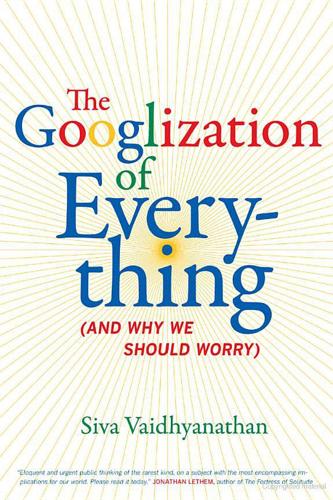
The Googlization of Everything:
by
Siva Vaidhyanathan
Published 1 Jan 2010
For a brief description of the costly dynamic tension between anarchy and oligarchy in the digital world, see Siva Vaidhyanathan, The Anarchist in the 219 220 NOTES TO PAGES xiii–3 Library: How the Clash between Freedom and Control Is Hacking the Real World and Crashing the System (New York: Basic Books, 2004). 5. For examples of simplistic, naive visions of how technology works in the world, see Kevin Kelly, Out of Control: The Rise Of Neo-biological Civilization (Reading, MA: Addison-Wesley, 1994); Kevin Kelly, New Rules for the New Economy: 10 Radical Strategies for a Connected World (New York: Viking, 1998); Nicholas Negroponte, Being Digital (New York: Knopf, 1995); Ray Kurzweil, The Age of Spiritual Machines: When Computers Exceed Human Intelligence (New York: Viking, 1999). 6. For elaborations of unfounded “generational” thinking, see Jeff Gomez, Print Is Dead: Books in Our Digital Age (London: Macmillan, 2008); Neil Howe and William Strauss, Millennials Rising: The Next Great Generation (New York: Vintage, 2000). 7.
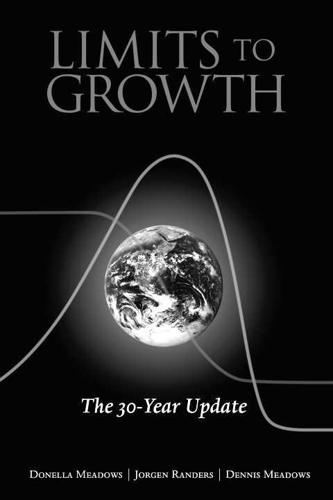
The Limits to Growth: The 30-Year Update
by
Donella H. Meadows
,
Jørgen Randers
and
Dennis L. Meadows
Published 15 Apr 2004
When the present economy overshoots, it turns around too quickly and unexpectedly for people or enterprises to retrain, relocate, or readjust. A deliberate transition to sustainability would take place slowly enough, and with enough forewarning, so that people and businesses could find their places in the new economy. There is no reason why a sustainable society need be technically or culturally primitive. Freed from both anxiety and greed, it would have enormous possibilities for human creativity Without the high costs of growth for both society and environment, technology and culture could bloom. John Stuart Mill, one of the first (and last) economists to take seriously the idea of an economy consistent with the limits of the earth, saw that what he called a "stationary state" could support an evolving and improving society.

Free culture: how big media uses technology and the law to lock down culture and control creativity
by
Lawrence Lessig
Published 15 Nov 2004
Again, however, this regulation did not eliminate the opportunity for free riding in the sense I've described. See Lessig, Future, 71. See also Picker, "From Edison to the Broadcast Flag," University of Chicago Law Review 70 (2003): 293¬96. [94] Sony Corp. of America v. Universal City Studios, Inc., 464 U.S. 417, (1984). [95] John Schwartz, "New Economy: The Attack on Peer-to-Peer Software Echoes Past Efforts," New York Times, 22 September 2003, C3. [96] Letter from Thomas Jefferson to Isaac McPherson (13 August 1813) in The Writings of Thomas Jefferson, vol. 6 (Andrew A. Lipscomb and Albert Ellery Bergh, eds., 1903), 330, 333-34. [97] As the legal realists taught American law, all property rights are intangible.
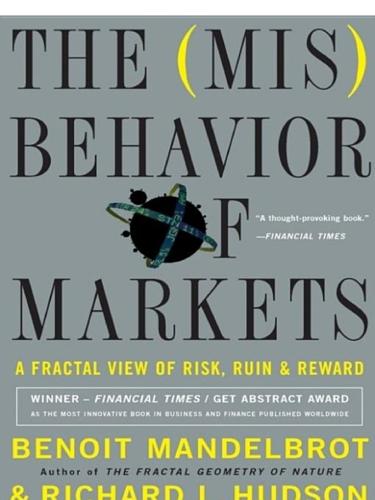
The Misbehavior of Markets: A Fractal View of Financial Turbulence
by
Benoit Mandelbrot
and
Richard L. Hudson
Published 7 Mar 2006
And the longer a company grows, the longer investors will expect it to keep growing. Did not the recipe behind the Internet bubble somehow reflect this effect? Consider Cisco Systems. The company, the biggest man-ufacturer of computers for routing Internet traffic, was viewed as the GM of the Information Age: It made the chassis and engines on which all the rest of the New Economy would drive. It managed an extraordinary record of revenue growth: an average 53 percent annually from 1995 to 2000. And Wall Street came to expect an extraordinary 20 percent profit growth. As investors extrapolated even greater growth, Cisco’s stock price soared an average 101 percent a year throughout the 1990s.
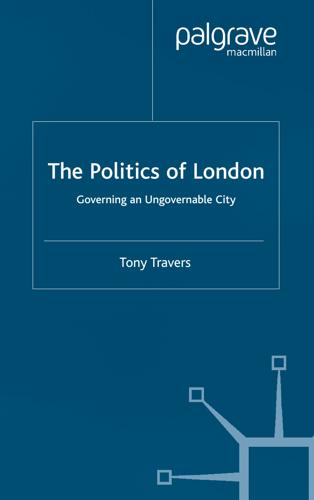
The politics of London: governing an ungovernable city
by
Tony Travers
Published 15 Dec 2004
London business broadly got what it wanted. Since becoming mayor, Ken Livingstone has stressed the international nature of the London economy and the need to promote and enhance its ‘competitiveness’. Hence, in his first State of London report: If London is to maintain and expand its prosperity in this new economy it must build globalisation into the very foundations of the city and our thinking. London is already the most internationalised city in the world … the prosperity of every Londoner is completely tied up with the city’s role in the international economy. For this very reason it is impossible to combine the economy of the greatest international city in the world with narrow mindedness and Little Englander attitudes.
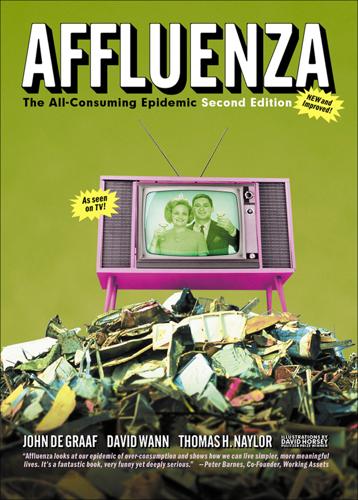
Affluenza: The All-Consuming Epidemic
by
John de Graaf
,
David Wann
,
Thomas H Naylor
and
David Horsey
Published 1 Jan 2001
New York: Random House, 1988. Heloise. Hints for a Healthy Planet. New York: Perigee, 1990. Hendrickson, Mary, et al. “Consolidation in Food Retailing and Dairy: Implications for Farmers and Consumers in a Global Food System,” National Farmers Union, January 8, 2001. Henwood, Doug. After the New Economy. New York: New Press, 2003. Hertsgaard, Mark. Earth Odyssey. New York: Broadway Books, 1998. Hewlett, Sylvia Ann, and Cornell West. The War against Parents. Boston: Houghton Mifflin, 1998. Hochschild, Arlie Russell. The Time Bind. New York: Metropolitan, 1997. Hoffman, Edward. The Right to Be Human: A Biography of Abraham Maslow.
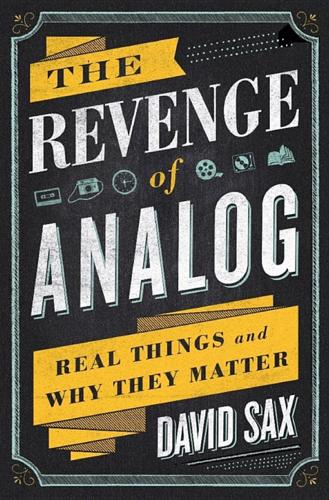
The Revenge of Analog: Real Things and Why They Matter
by
David Sax
Published 8 Nov 2016
Digital work spreads across pretty much every industry, from computer software and hardware companies to divisions within traditionally analog firms that focus on digital tasks, such as e-commerce and information databases. Other terms have been used as synonyms for the digital economy, including the knowledge economy, information economy, Internet economy, and the utopian-sounding new economy. The core idea is that digital technology is a transformative force that can deliver vastly more efficient products and services to consumers at a lower cost, and with greater ease, across time and space, in ways that traditional analog industries cannot compete with. The digital economy is disruptive.
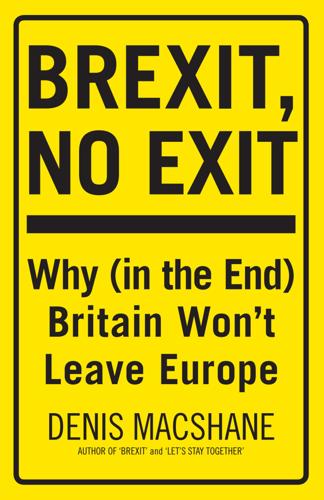
Brexit, No Exit: Why in the End Britain Won't Leave Europe
by
Denis MacShane
Published 14 Jul 2017
More and more of the evangelists of the deregulated, society-destroying, ‘greed-is-good’ and survival-of-the-fittest economic model are now running around telling us there are real problems with unequal distribution, poverty and the revolt of voters who have lost confidence in traditional parties of government. But moving to a new paradigm demands new forms of political and labour movement organisation. Anatole Kaletsky, former Times and Financial Times columnist and author of Capitalism 4.0: The Birth of a New Economy (2010), argues: That is what happened after 2008. Once the failure of free trade, deregulation, and monetarism came to be seen as leading to a ‘new normal’ of permanent austerity and diminished expectations, rather than just to a temporary banking crisis, the inequalities, job losses, and cultural dislocations of the pre-crisis period could no longer be legitimised – just as the extortionate taxes of the 1950s and 1960s lost their legitimacy in the stagflation of the 1970s.

The Orchid Thief: A True Story of Beauty and Obsession
by
Susan Orlean
Published 1 Jan 1998
Ward published a magazine article in 1839 describing his Wardian cases; and in 1842 expanded it into a book called On the Growth of Plants in Closely Glazed Cases. Wardian cases were adopted directly by European gardeners. Now instead of only one in a thousand plants surviving a journey, more than nine hundred of a thousand plants would make it alive. The Wardian case made possible a new economy of botany. Profit-making plants like tea trees, tobacco, cork oak, and coffee bushes could be moved from their native continents to another, and from one region of a country to another. Natural boundaries melted; the world shrank to the size of a glass caterpillar jar. Inside a Wardian case, Joseph Paxton could ship an Atnherstia nobilis from India to Chatsworth Hall; Joseph Hooker could send a consignment from Tierra del Fuego to the Royal Botanic Gardens at Kew of full-grown Argentinean trees
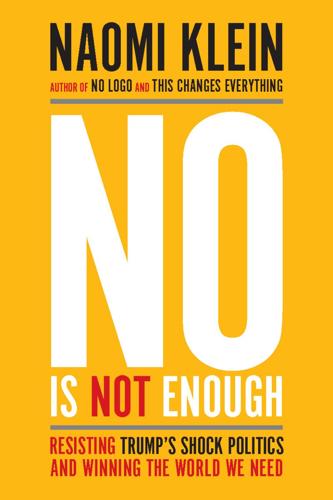
No Is Not Enough: Resisting Trump’s Shock Politics and Winning the World We Need
by
Naomi Klein
Published 12 Jun 2017
Oil prices crash in 2014…and price has hovered at around $55 a barrel since Brent Crude Prices, 2013–2017, Bloomberg.com, accessed April 13, 2017, https://www.bloomberg.com/quote/CO1:COM. 170,000 oil and gas workers have lost their jobs Matt Egan, “100,000 Oil Jobs Could Be Coming Back,” CNN.com, July 14, 2016, http://money.cnn.com/2016/07/14/news/economy/oil-jobs-worker-shortage/. Investment in the Alberta tar sands dropped by an estimated 37 percent Government of Alberta, “Capital Investment in Alberta to Decline Again in 2016,” government report, July 8, 2016, https://www.albertacanada.com/files/albertacanada/SP-Commentary_07-08-16.pdf.

The End of Ownership: Personal Property in the Digital Economy
by
Aaron Perzanowski
and
Jason Schultz
Published 4 Nov 2016
The media we consume is stored in the cloud, not in our hands. Our cars, watches, and clothes—though still physical—incorporate a layer of code that both increases and constrains their functionality. A digital economy structured around interconnected devices and data holds immense promise. But it also entails risks. Perhaps most troublingly, this new economy has the power to redefine or even eliminate the notion of personal property. If we aren’t careful, ownership will become a thing of the past. The loss of ownership puts us all at risk of exploitation. It imposes significant but broadly dispersed costs on society. And it takes decisions about how to live our lives out of our hands and entrusts those choices to a handful of private companies.
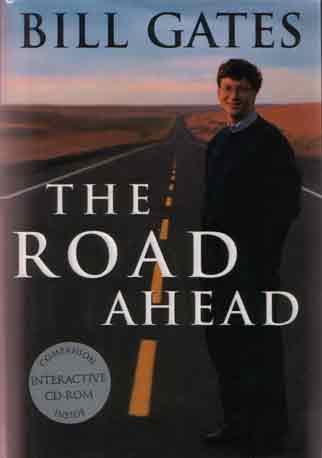
The Road Ahead
by
Bill Gates
,
Nathan Myhrvold
and
Peter Rinearson
Published 15 Nov 1995
It will take many years for the highway to be utilized so widely for shopping that there will be significantly fewer middlemen. There is plenty of time to prepare. The jobs those displaced middlemen change to might not even have been thought of yet. We'll have to wait and see what kinds of creative work the new economy devises. But as long as society needs help, there will definitely be plenty for everyone to do. The broad benefits of advancing productivity are no solace for someone whose job is on the line. When a person has been trained for a job that is no longer needed, you can't just suggest he go out and learn something else.
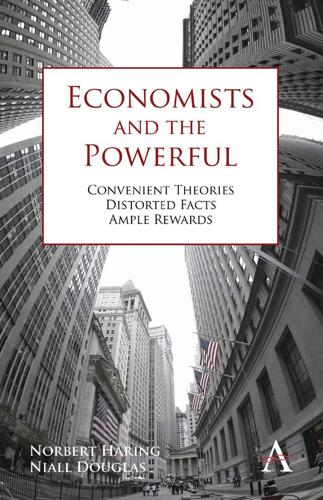
Economists and the Powerful
by
Norbert Haring
,
Norbert H. Ring
and
Niall Douglas
Published 30 Sep 2012
Even huge paychecks seemed negligible in comparison to the increases in stock market valuation that the average corporation recorded. It did not matter that no special management skill was required to achieve these increases during the boom years. After the stock market crash of 2001 and the corporate scandals centered around Enron, Worldcom and a number of other new-economy corporations, the premise that financial markets value corporations correctly and that there is no significant difference between short-term and long-term maximization of company valuations lost much of its credit. Spurred on by monetary incentives, top management had done everything to push the prices of already vastly overvalued shares even higher, with no regard for the damage they did to their companies in the longer term.
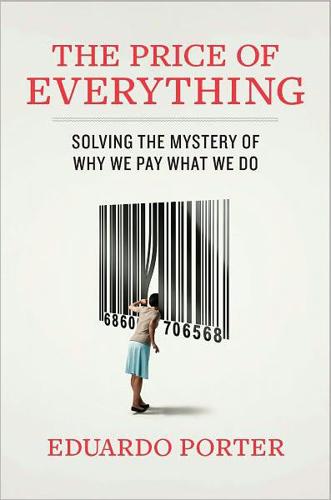
The Price of Everything: And the Hidden Logic of Value
by
Eduardo Porter
Published 4 Jan 2011
Pumped by the enormous publicity surrounding the album’s release, the subsequent concert tour was a smashing hit. To believers in the transformational potential of the Internet, Radiohead’s experiment suggested that the information economy could revolutionize capitalism by allowing creators to make a living while giving away their creations for free. This new economy might require people to radically change their approach to property. But In Rainbows demonstrated that if creators would free themselves of the capitalistic shackles represented by record labels, Hollywood studios, and other representatives of corporate greed that siphoned off a big slice of their revenues, this new paradigm could work out for everybody.
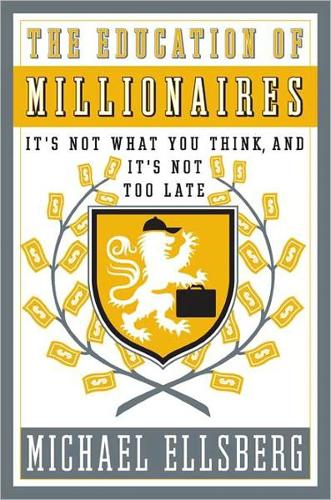
The Education of Millionaires: It's Not What You Think and It's Not Too Late
by
Michael Ellsberg
Published 15 Jan 2011
While you may learn many valuable things in college, you won’t learn these things there—yet they are crucial for your success in business and in life. Whether you’re a high school dropout or a graduate of Harvard Law School, you must learn and develop these skills, attitudes, and habits if you want to excel at what you do. In this new economy, the biggest factor in your success will not be abstract, academic learning but whether you develop the real-life success skills evinced by the people on these pages, and how early you do. This is a book about practical education. Street smarts. It’s about what you have to learn in order to be successful in life and how you can go about learning it on your own, outside of traditional schooling.

Family Trade
by
Stross, Charles
Published 6 Jan 2004
But traffic was backed up, one of her wiper blades needed replacing, the radio had taken to crackling erratically, and she couldn't stop yawning. Mondays, she thought. My favorite day! Not. At least she had a parking space waiting for her—one of the handful reserved for senior journalists who had to go places and interview thrusting new economy executives. Or money-laundering gangsters, the nouveau riche of the pharmaceutical world. Twenty minutes later she pulled into a crowded lot behind an anonymous office building in Cambridge, just off Somerville Avenue, with satellite dishes on the roof and fat cables snaking down into the basement.

Instant City: Life and Death in Karachi
by
Steve Inskeep
Published 12 Oct 2011
There was room for growth, and he offered office space to international firms that saw the upside too. Executive Tower, the first building to be completed in his interconnected complex, was already home to the Karachi offices of Eli Lilly, Sony Ericsson, American Life, and Bank Islami—pharmaceuticals, cell phones, insurance, and wealth management. The building directory was a summary of the new economy. It had taken Riaz almost two decades to get this far. Around 1990 he approached Tony Tufail and bought the stillborn casino. His company quickly planned a high-rise development, but, he said, “the government wouldn’t allow it.” “Which government?” I asked, but he claimed not to remember. He didn’t like to talk about politics.
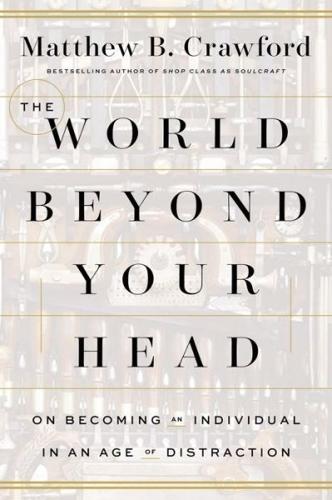
The World Beyond Your Head: On Becoming an Individual in an Age of Distraction
by
Matthew B. Crawford
Published 29 Mar 2015
Design ideas can be turned into real things, and tried out, without huge financial risk. This plays to the strengths of tinkerers and inventors, those erstwhile American types who may become prominent once again. Ironically, a decades-old pipe organ shop in rural Virginia, which is caught up in a conversation with earlier centuries, may offer some guidance for the new “new economy.” TAYLOR AND BOODY Pipe organs were to the Baroque era what the Apollo moon rockets were to the 1960s: enormously complex machines that focused the gaze of a people upward. Pushing the envelope of the engineering arts, a finished organ stood as a monument of knowledge and cooperation. Installed in the spiritual center of a town, a pipe organ mimics the human voice on a more powerful scale, and summons a congregation to join their voices to it.
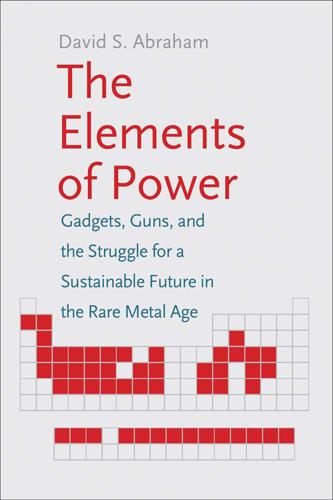
The Elements of Power: Gadgets, Guns, and the Struggle for a Sustainable Future in the Rare Metal Age
by
David S. Abraham
Published 27 Oct 2015
Bonasia, “CONSUMER ELECTRONICS PlayStation 2 Shortage Reflects Changing Industry,” Investor’s Business Daily, December 28, 2000, news.investors.com/technology/122800-348096-consumer-electronics-playstation-2-shortage-reflects-changing-industry.htm; Doug Bartholomew, “Boeing Scrubs New Jets Takeoff,” eWeek.com, November 8, 2007, www.eweek.com/c/a/Enterprise-Applications/Boeing-Scrubs-New-Jets-Takeoff/; Walter Pohl, Economic Geology: Principles and Practice: Metals, Minerals, Coal and Hydrocarbons—Introduction to Formation and Sustainable Exploitation of Mineral Deposits (Chichester, West Sussex: Wiley-Blackwell, 2011); John Lasker, “The PlayStation War as the West’s Insatiable Appetite for Personal Electronics Continues, So Do Africa’s Resource Wars,” Columbia Free Press, December 19, 2013, columbusfreepress.com/article/playstation-war-west%E2%80%99s-insatiable-appetite-personal-electronics-continues-so-do-africa%E2%80%99s. Coltan jumped nearly tenfold from $40 a pound to $380 and Sony was rumored to have trouble getting its PlayStation to the market because it could not get its hands on the material. Blaine Harden, “A Black Mud from Africa Helps Power the New Economy,” New York Times, August 12, 2001. www.nytimes.com/2001/08/12/magazine/12COLTAN.html; Helen Vesperini, “Congo’s Coltan Rush,” BBC News, August 1, 2001, news.bbc.co.uk/2/hi/africa/1468772.stm. 41. John Smith, interview by David Abraham, Fairfield, CT, January 8, 2013. 42. Kirchain, interview, February 22, 2013. 43.
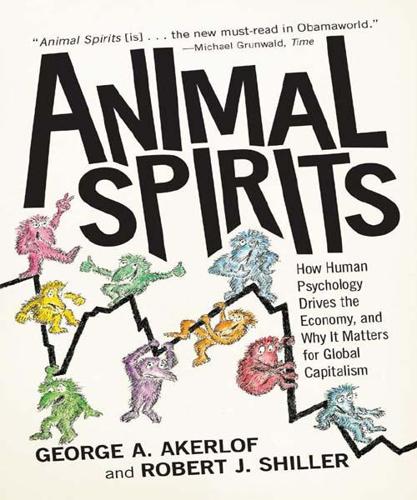
Animal Spirits: How Human Psychology Drives the Economy, and Why It Matters for Global Capitalism
by
George A. Akerlof
and
Robert J. Shiller
Published 1 Jan 2009
Quarterly Journal of Economics 105(4):1003–15. Blinder, Alan S., Angus Deaton, Robert E. Hall, and R. Glenn Hubbard. 1985. “The Time Series Consumption Function Revisited.” Brookings Papers on Economic Activity 2:465–511. Bond, Stephen R., and Jason G. Cummins. 2000. “The Stock Market and Investment in the New Economy: Some Tangible Facts and Intangible Fictions.” Brookings Papers on Economic Activity 1:61–108. Borio, Claudio. 2003. “Towards a Macroprudential Framework for Financial Regulation.” BIS Working Paper 128, Bank for International Settlements, February. Bowles, Samuel. 1985. “The Production Process in a Competitive Economy: Wal-rasian, Neo-Hobbesian, and Marxian Models.”
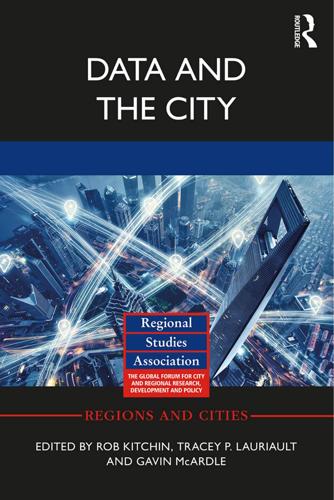
Data and the City
by
Rob Kitchin,Tracey P. Lauriault,Gavin McArdle
Published 2 Aug 2017
Kogler 46 Leadership and Place Edited by Chris Collinge, John Gibney and Chris Mabey 45 Migration in the 21st Century Rights, outcomes, and policy Kim Korinek and Thomas Maloney 44 The Futures of the City Region Edited by Michael Neuman and Angela Hull 43 The Impacts of Automotive Plant Closures A tale of two cities Edited by Andrew Beer and Holli Evans 42 Manufacturing in the New Urban Economy Willem van Winden, Leo van den Berg, Luis de Carvalho and Erwin van Tuijl 41 Globalizing Regional Development in East Asia Production networks, clusters, and entrepreneurship Edited by Henry Wai-chung Yeung 40 China and Europe The implications of the rise of China as a global economic power for Europe Edited by Klaus Kunzmann, Willy A Schmid and Martina Koll-Schretzenmayr 39 Business Networks in Clusters and Industrial Districts The governance of the global value chain Edited by Fiorenza Belussi and Alessia Sammarra 38 Whither Regional Studies? Edited by Andy Pike 33 Geographies of the New Economy Critical reflections Edited by Peter W. Daniels, Andrew Leyshon, Michael J. Bradshaw and Jonathan Beaverstock 32 The Rise of the English Regions? Edited by Irene Hardill, Paul Benneworth, Mark Baker and Leslie Budd 31 Regional Development in the Knowledge Economy Edited by Philip Cooke and Andrea Piccaluga 30 Regional Competitiveness Edited by Ron Martin, Michael Kitson and Peter Tyler 37 Intelligent Cities and Globalisation of Innovation Networks Nicos Komninos 29 Clusters and Regional Development Critical reflections and explorations Edited by Bjørn Asheim, Philip Cooke and Ron Martin 36 Devolution, Regionalism and Regional Development The UK experience Edited by Jonathan Bradbury 28 Regions, Spatial Strategies and Sustainable Development David Counsell and Graham Haughton 35 Creative Regions Technology, culture and knowledge entrepreneurship Edited by Philip Cooke and Dafna Schwartz 27 Sustainable Cities Graham Haughton and Colin Hunter 34 European Cohesion Policy Willem Molle 26 Geographies of Labour Market Inequality Edited by Ron Martin and Philip S.
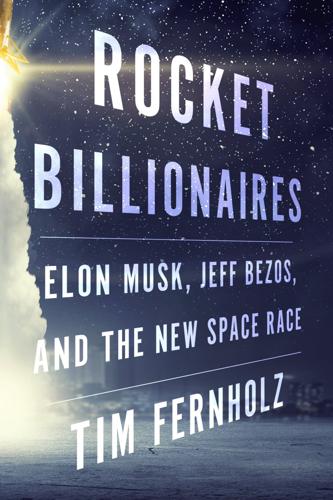
Rocket Billionaires: Elon Musk, Jeff Bezos, and the New Space Race
by
Tim Fernholz
Published 20 Mar 2018
But Musk and the other members of the so-called PayPal Mafia—many of whom, like the investors Peter Thiel and Luke Nosek, would also back SpaceX—were not deterred. Once they had built their simple tool for exchanging money safely over the emerging consumer web, other entrepreneurs found ways to use it. The ability to exchange money online became the basis for a whole new economy. When the auction site eBay paid $1.5 billion for PayPal in 2002, Musk’s share of the proceeds provided him with the fortune to find new markets—including in space. The Falcon 9 rocket was SpaceX’s first killer app. Like most other orbital rockets, the Falcon 9 is actually two vehicles combined into one.
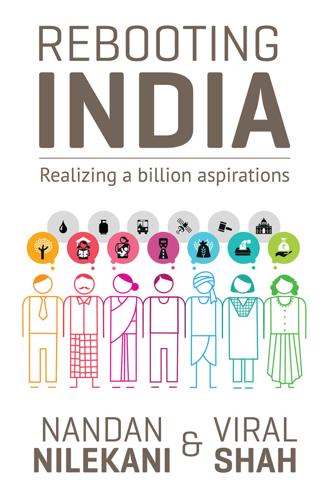
Rebooting India: Realizing a Billion Aspirations
by
Nandan Nilekani
Published 4 Feb 2016
‘India’s dream of borderless trade grinds to a halt at checkpoints’. IBN Live. http://www.ibnlive.com/news/india/indias-dream-of-borderless-trade-grinds-to-a-halt-at-checkpoints-1102758.html 3. Sinha, Varun. 22 November 2014. ‘How GST Will Change the Face of Indian Economy’. NDTV. http://profit.ndtv.com/news/economy/article-how-gst-will-change-the-face-of-indian-economy-701413 4. October 2014. ‘India Development Update: Continue Domestic Reforms and Encourage Investments’. World Bank. http://www.worldbank.org/en/country/india/publication/development-update-domestic-reforms-encourage-investments 5. 16 January 2014.
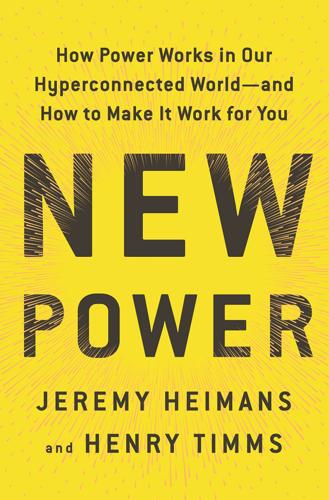
New Power: How Power Works in Our Hyperconnected World--And How to Make It Work for You
by
Jeremy Heimans
and
Henry Timms
Published 2 Apr 2018
Although James Watt claimed, “We’re not going to let the deal go to our heads, but Martin did buy himself a new jumper [sweater],” the deal raises questions about how easily anarchy can live alongside private equity. BrewDog now needs to learn to blend power, getting the best from old and new to keep crowd and investors content (more on that in chapter 10). THE BRAVE NEW ECONOMY: THE BIG IMPLICATIONS OF NEW POWER FUNDING Implication #1: More “bosses” do not equal better governance In early 2015, Chris Roberts disappeared from the Star Citizen horizon and holed up for sixty-six days in a London film studio with Luke Skywalker and X-Files Agent Dana Scully. Some Citizens started to wonder if he had checked out or lost touch with the community he exhorted.
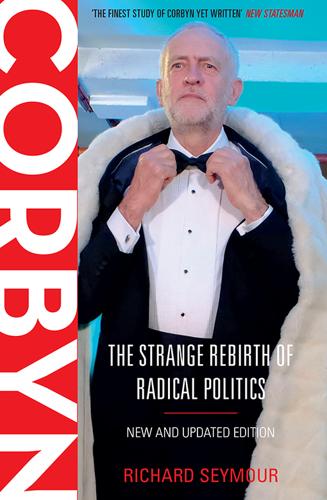
Corbyn
by
Richard Seymour
However, its 2015 breakthrough, with 4 million votes, was impossible without adding more working-class voters to the mix. These were disproportionately white, male, and older, and often living in provincial or ‘left-behind’ areas, cut off from the centres of financial, communication, or political power, as well as from the growth of the ‘new economy’, and left for dead by the political class. Politically, their background was heteroclite. The biggest chunk of UKIP voters were ex-Tories, followed by Liberals, and 10 per cent came from Labour. But there were also quite a lot of former non-voters, as right-wing voters who had backed the BNP or the English Democrats.10 UKIP, with the Left still in abeyance, had become the most dynamic political force in England and Wales.

Mindf*ck: Cambridge Analytica and the Plot to Break America
by
Christopher Wylie
Published 8 Oct 2019
In the last economic revolution, industrial capitalism sought to exploit the natural world around us. It is only with the advent of climate change that we are now coming to terms with its ecological externalities. But in this next iteration of capitalism, the raw materials are no longer oil or minerals but rather commodified attention and behavior. In this new economy of surveillance capitalism, we are the raw materials. What this means is that there is a new economic incentive to create substantial informational asymmetries between platforms and users. In order to be able to convert user behavior into profit, platforms need to know everything about their users’ behavior, while their users know nothing of the platform’s behavior.
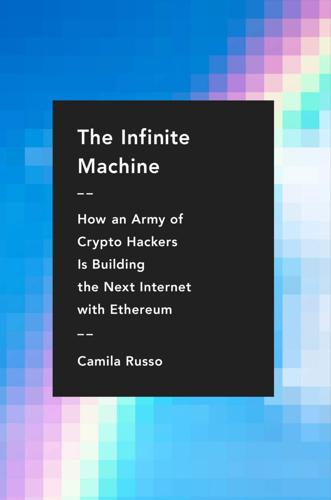
The Infinite Machine: How an Army of Crypto-Hackers Is Building the Next Internet With Ethereum
by
Camila Russo
Published 13 Jul 2020
Then Fed chairman Alan Greenspan told the Senate Banking Committee that recent economic performance had been so “exceptional” that it might “carry productivity trends nationally and globally to a new higher track.” Technological developments were bringing forth a new system that couldn’t be measured by the standards of the old one. This idea came to be known as the “New Economy” in the 1990s. Similar arguments were made in the Roaring Twenties with the “New Economics,” John Cassidy wrote in Dot.Con, a book about the dot-com bubble. And now we had the same kind of hyperbolic lingo with crypto.4 It wasn’t just crypto heating up. The entire stock market was reaching new highs.
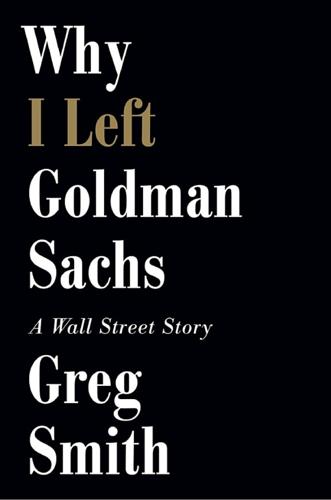
Why I Left Goldman Sachs: A Wall Street Story
by
Greg Smith
Published 21 Oct 2012
The only problem was I wasn’t wearing a tie that day. A bit of background: Salespeople and traders at Goldman Sachs had worn suits and ties up until the late 1990s, but during the tech bubble, Goldman started to compete with Silicon Valley for the best and brightest recruits, and some of the new economy’s customs had rubbed off on old Wall Street. (Goldman was ahead of the curve on this: some banks, such as Lehman Brothers, kept their suit-and-tie policy much longer.) By the time my summer internship started, the firm had changed its dress code from business formal to business casual, and a number of eager interns had gone a bit overboard, with the women wearing short skirts and the guys black disco shirts on the trading floor.

The Coming of Neo-Feudalism: A Warning to the Global Middle Class
by
Joel Kotkin
Published 11 May 2020
Medium, February 26, 2016, https://medium.com/@ferenstein/a-lot-of-billionaires-are-giving-to-democrats-here-s-a-look-at-their-agenda-b5038c2ecb34. 13 Todd Haselton, “Mark Zuckerberg joins Silicon Valley bigwigs in calling for government to give everybody free money,” Yahoo, May 25, 2017, https://finance.yahoo.com/news/mark-zuckerberg-joins-silicon-valley-202800717.html; Patrick Gillespie, “Mark Zuckerberg supports universal basic income. What is it?” CNN, May 6, 2017, https://money.cnn.com/2017/05/26/news/economy/mark-zuckerberg-universal-basic-income/index.html; Chris Weller, “Elon Musk doubles down on universal basic income: ‘It’s going to be necessary,’” Business Insider, February 13, 2017, https://www.businessinsider.com/elon-musk-universal-basic-income-2017-2; Patrick Caughill, “Another Silicon Valley Exec Joins the Ranks of Universal Basic Income Supporters,” Futurism, September 8, 2017, https://futurism.com/another-silicon-valley-exec-joins-the-ranks-of-universal-basic-income-supporters; Sam Altman, “Moving Forward on Basic Income,” Y Combinator, May 31, 2016, https://blog.ycombinator.com/moving-forward-on-basic-income/; Diane Francis, “The Beginning of the End of Work,” American Interest, March 19, 2018, https://www.the-american-interest.com/2018/03/19/beginning-end-work/. 14 “The YIMBY Guide to Bullying and Its Results: SB 827 Goes Down in Committee,” City Watch LA, April 19, 2018, https://www.citywatchla.com/index.php/los-angeles/15298-the-yimby-guide-to-bullying-and-its-results-sb-827-goes-down-in-committee; John Mirisch, “Tech Oligarchs and the California Housing Crisis,” California Political Review, April 15, 2018, http://www.capoliticalreview.com/top-stories/tech-Oligarchs-and-the-california-housing-crisis/; Joel Kotkin, “Giving Common Sense a Chance in California,” City Journal, April 26, 2018, https://www.city-journal.org/html/giving-common-sense-chance-california-15868.html. 15 Thomas Piketty, Capital in the Twenty-First Century, trans.

Calling Bullshit: The Art of Scepticism in a Data-Driven World
by
Jevin D. West
and
Carl T. Bergstrom
Published 3 Aug 2020
.*2 Subscribing to a periodical, you embarked on a long-term relationship. You cared about the quality of information a source provided, its accuracy, and its relevance to your daily life. To attract subscribers and keep them, publishers provided novel and well-vetted information. The Internet news economy is driven by clicks. When you click on a link and view a website, your click generates advertising revenue for the site’s owner. The Internet site is not necessarily designed to perpetuate a long-term relationship; it is designed to make you click, now. Quality of information and accuracy are no longer as important as sparkle.
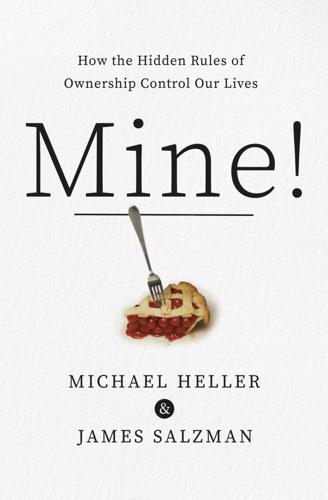
Mine!: How the Hidden Rules of Ownership Control Our Lives
by
Michael A. Heller
and
James Salzman
Published 2 Mar 2021
Chapter 7: The Future of Ownership—and the World “greatest city in the world”: Jillian Anthony et al., “50 Reasons Why NYC Is the Greatest City in the World Right Now,” Time Out, September 18, 2018. In 1990 he became commissioner: Albert Appleton, “How New York City Kept Its Drinking Water Pure—and Saved Billions of Dollars,” On the Commons, October 24, 2012. “A good environment will”: Ibid. “rolling Thanksgiving dinner”: Gretchen Daily and Katherine Ellison, The New Economy of Nature: The Quest to Make Conservation Profitable (Washington, D.C.: Island Press, 2002), 74. ecosystem-services ownership: James Salzman et al., “The Global Status and Trends of Payments for Ecosystem Services,” Nature Sustainability 1 (2018): 136. Clambering around high stacks: “The Scaredest I’ve Been in a Long Time,” Deadliest Catch, May 31, 2016.
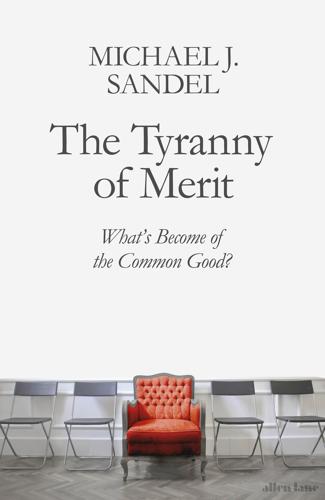
The Tyranny of Merit: What’s Become of the Common Good?
by
Michael J. Sandel
Published 9 Sep 2020
Before they can hope to win back public support, these parties need to reconsider their market-oriented, technocratic approach to governing. They need also to rethink something subtler but no less consequential—the attitudes toward success and failure that have accompanied the growing inequality of recent decades. They need to ask why those who have not flourished in the new economy feel that the winners look down with disdain. THE RHETORIC OF RISING What, then, has incited the resentment against elites felt by many working-class and middle-class voters? The answer begins with the rising inequality of recent decades but does not end there. It has ultimately to do with the changing terms of social recognition and esteem.

Golden Gates: Fighting for Housing in America
by
Conor Dougherty
Published 18 Feb 2020
But underneath all that is a larger disease, which is a dire shortage of available housing in places where people and companies want to live, along with tectonic changes in how today’s technology-centric economy operates. Unlike in the past, when good-paying manufacturing work spread widely across the country and took middle-class wealth beyond cities into small towns, the new economy is more unequal by nature, and its companies tend to cluster around dense metropolitan areas. This has fueled a resurgence in American downtowns and tons of new jobs for people with a wide range of skill levels, but because U.S. cities don’t accommodate new people or housing nearly as well or as eagerly as they used to, the growth has caused new residents and speculators to bid up prices of the not-enough housing that already exists.

Step by Step the Life in My Journeys
by
Simon Reeve
Published 15 Aug 2019
Men from the village started drumming and some of the women started singing and dancing while a small group of visitors watched politely and snapped away with their cameras. It was clearly all very new to the villagers. More than once I saw a lady nudging another and reminding her to lead the next move. But this was their new economy. One young man used a clenched fist as a microphone to announce the dancers while others passed among us collecting payment. I had a moment with the chief and he asked me to make sure people in the outside world knew they were welcome in Makoghé. ‘Tourism is all we have now,’ he said. His message was clear: if you want us to stop hunting the wildlife, someone needs to provide us with an alternative means of putting food on the table.
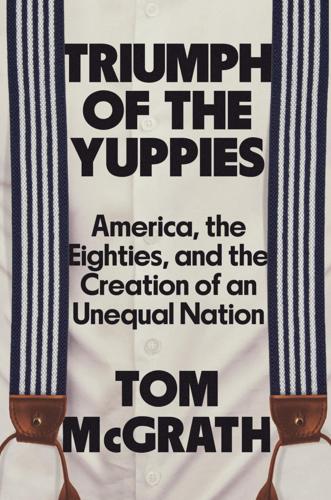
Triumph of the Yuppies: America, the Eighties, and the Creation of an Unequal Nation
by
Tom McGrath
Published 3 Jun 2024
In many ways, it was a proxy fight for the soul and future direction of the Democratic Party. Would it continue, as Mondale and Jackson advocated, in the New Deal–Great Society tradition of FDR and LBJ, using government to help meet the needs of labor unions, people of color, and the working class? Or would it transform itself, as Hart argued, so that it was focused on a new economy and new ideas? Mondale’s and Hart’s differences on policy, particularly around economic issues, were telling. When it came to the millions of manufacturing workers who’d lost their jobs in recent years, Mondale said the country needed to revisit its trade policies so such jobs could be protected; Hart suggested such jobs were never coming back and advocated for retraining of workers.

The Stack: On Software and Sovereignty
by
Benjamin H. Bratton
Published 19 Feb 2016
Even techniques like multiplex polarization will probably not suffice in the long term.27 We may like to think of fiber optics as providing functionally limitless bandwidth, but at a zettabyte order of magnitude, for a planetary Cloud ultimately linking trillions of devices, this is not true. Unless new technologies, such as widespread multicore fiber, are widely deployed in the next decade, the physical limits of how much information can actually pass through a given channel may introduce new economies of bandwidth scarcity, prioritization, and pricing.28 At the same time, newer networks with greater carrying capacity, as well as faster signal throughput, may provide new kinds of Cloud services previously only imagined, such as holodeck-quality virtual environments. Such accomplishments may steer primate evolution toward shared intersubjective experience, introducing fantastic new genres of narrative, design, architecture, poetry, medicine, and music at a planetary scale, or it may allow a select few to watch 8K LOLcat videos from 10 angles at once.
…
First, although the biggest presumed growth of User population is in South America, Asia, and Africa, it is North America and Europe that control many more addresses than those continents. Second, one whole quadrant (totaling hundreds of millions of addresses) is claimed by private and government actors, such as Apple, Microsoft, Halliburton, the US Department of Defense, the UK Ministry of Defense, Merck, and Lilly. One new economy of scarcity is addressability, and existing solutions to expand the address space are unlikely to be implemented as quickly as they could be. There is hard power in soft addresses as the power of the map is the power to qualify movement, and the top left corner of the IPv4 map is beachfront real estate.31 But ultimately this scarcity is artificial and technologically unnecessary, and it has even distorted the structure of the Internet itself.32 An original vision for the Internet platform was for decentralized “state-full edges” in which every node could peer with any other.
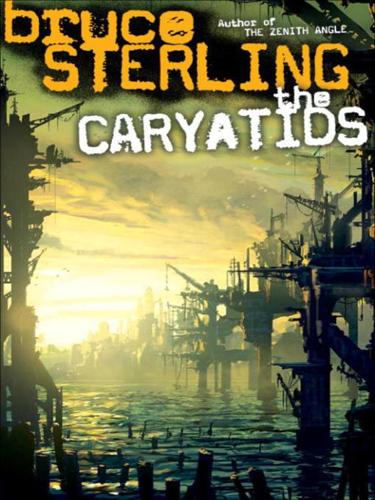
The Caryatids
by
Bruce Sterling
Published 24 Feb 2009
It’s always much easier for me to travel outside China when the state has the formal documents.” “All right, fine, one small moment here,” said George, “let me use my correlation engine! With this amazing new business tool, I can change your life from right here in my chair! My new network engine is Californian! In ten years the whole Earth will have a new economy!” Sonja’s keen ears heard George busily tapping at keys. “ ‘Scythia’?” George said, almost at once. “Would ‘Scythia’ do for you? Scythia is a poststate disaster region in the middle of Asia. You could go anywhere in Asia and claim you were going to ‘Scythia.’ ” “I know about Scythia. I also need special travel gear, George.

Living in a Material World: The Commodity Connection
by
Kevin Morrison
Published 15 Jul 2008
A decade later it has a new electric vehicle – the Concept Chevy Volt, which can run on electricity, petrol, ethanol or biodiesel. This is the spearhead of General Motors’ campaign to catch up with Toyota Motor Company, the maker of the hybrid pioneering car, the Prius. Launched in Japan in 1997, the Prius is a hit in Europe and the US. With ‘green technology’ the new economy of the 21st century, entrepreneurs see an opportunity for electric vehicles including Telsa Motors, founded by internet mogul Elon Musk, as do university research departments at points around the US, the UK, Europe and Japan; all of which will require more copper. Motor vehicles are big polluters; combined with air travel, transport as a whole accounts for 14% of global emissions each year.
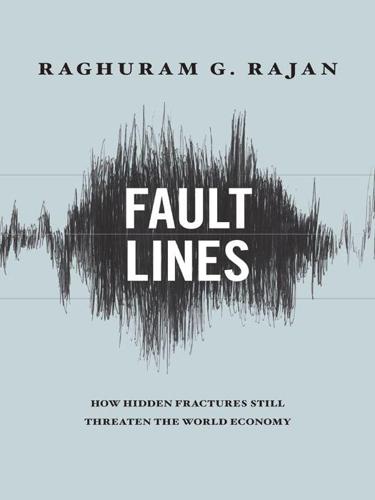
Fault Lines: How Hidden Fractures Still Threaten the World Economy
by
Raghuram Rajan
Published 24 May 2010
The Newsweek columnist Robert Samuelson has argued that “on the whole, Americans care less about inequality—the precise gap between the rich and the poor—than about opportunity and achievement: are people getting ahead?”22 Yet inequality in education is particularly insidious because it reduces opportunity. Someone who has had an indifferent high school education cannot even dream of getting a range of jobs that the new economy has thrown up. For Americans, many of whom “define political freedom as strict equality but economic freedom as an equal chance to become unequal,” inequality of access to quality education shakes the very foundation of their support for economic freedom, for they no longer have an equal chance.23 If Americans no longer have the chance to be upwardly mobile, they are less likely to be optimistic about the future or to be tolerant of the mobility of others—because the immobile are hurt when others move up.

The Wisdom of Crowds
by
James Surowiecki
Published 1 Jan 2004
But if screws became interchangeable, customers would need the craftsmen less and would worry about the price more. Sellers understood the fear. But he also believed that interchangeable parts and mass production were inevitable, and the screw he designed was meant to be easier, cheaper, and faster to produce than any other. His screws fit the new economy, where a premium was placed on speed, volume, and cost. But because of what was at stake, and because the machinist community was so tight-knit, Sellers understood that connections and influence would shape people’s decisions. So over the next five years, he targeted influential users, like the Pennsylvania Railroad and the U.S.

Misspent Youth
by
Peter F. Hamilton
Published 1 Jan 2002
It wasn’t just the straight medical pharmaceutical companies that had benefited from the genome decoding projects of the nineties and noughties. There had been a long period of corporate mergers and buyouts early in the millennium, as pharmaceutical, biochemical, and cosmetic companies fused into the new economy giants that they were today. Successful and worthy genetic treatments to counter and cure appalling diseases by the use of powerful vectoring technology to deliver improved genes directly to individual cells had swiftly been adapted to insert genes that made more subtle cellular improvements. Skin was the first area to come under scrutiny, of course.

Augmented: Life in the Smart Lane
by
Brett King
Published 5 May 2016
“Gartner predicts one in three jobs will be converted to software, robots and smart machines by 2025,” said Gartner research director Peter Sondergaard. “New digital businesses require less labor; machines will make sense of data faster than humans can.”10 How we interact with robots will determine how successful we will be in the new economy and society that is coming. Kevin Kelly, former editor of Wired magazine, said, “This is not a race against the machines. If we race against them, we lose. This is a race with the machines. You’ll be paid in the future based on how well you work with robots.”11 Robots will change everything from how we work, play, socialise and care for ourselves.

In FED We Trust: Ben Bernanke's War on the Great Panic
by
David Wessel
Published 3 Aug 2009
Bernanke, who was still fighting off a financial crisis a year and a half after it began, would later complain good-naturedly that Greenspan had it easy. Greenspan cemented his status as a guru with unique foresight in the mid-1990s with an intellectually courageous call that the Internet-based New Economy was so fundamentally changing the U.S. economy that the Fed could permit the economy to grow faster than most inflation-fearing economists thought prudent. The result was lower unemployment without higher inflation — and a technology stock market bubble for which Greenspan got substantial blame.
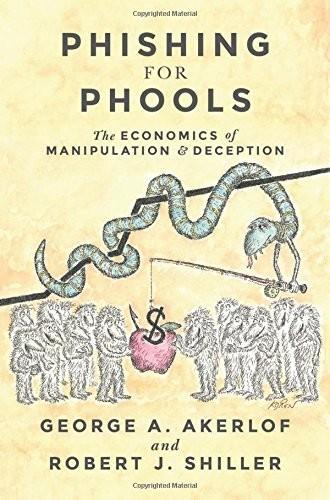
Phishing for Phools: The Economics of Manipulation and Deception
by
George A. Akerlof
,
Robert J. Shiller
and
Stanley B Resor Professor Of Economics Robert J Shiller
Published 21 Sep 2015
They thought that those purchasers would have asked the question embodied in a memento that Sidney Weinberg himself kept in his office from a trip as a youth to Niagara Falls: a pebble he purchased for 50 cents in a small sack, from a con man who said that he alone knew how to get diamonds from beneath the falls.37 But if that guy wants to sell me those diamonds from beneath the falls, should I buy them? An important aspect of phishing for phools is the fencing of such embarrassing questions. There was a myth of the new economy that the complex mortgage-backed securities were tailored in such a way that risk had disappeared. The high ratings offered by the ratings agencies fenced the myth. While the myth remained unpunctured, phishing for phools was as profitable as it ever gets. Summary And, as we have demonstrated, it was a phishing equilibrium.

Remix: Making Art and Commerce Thrive in the Hybrid Economy
by
Lawrence Lessig
Published 2 Jan 2009
Yates, “Internet-Related Manager Tops List of Hottest Jobs; Position Is So New and in Such Demand That Candidates’ Lack of Degrees or Advanced Age Are Not Seen as Deterrents,” Sun-Sentinel, February 5, 1996. Robert D. Atkinson and Daniel K. Correa, “The Digital Economy—Internet Domain Names,” The 2007 State New Economy Index (2007): 40, available at link #48. 3. U.S. Census Bureau, “E-Stats-Measuring the Electronic Economy,” available at link #49. 4. Sony Corp. v. Universal City Studios, 464 U.S. 417 (1984). 5. See Julie Niederhoff, “Video Rental Developments and the Supply Chain: Netflix, Inc.,” Washington University, St.
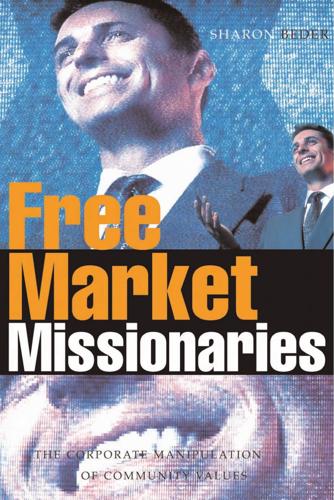
Free Market Missionaries: The Corporate Manipulation of Community Values
by
Sharon Beder
Published 30 Sep 2006
In a democratic capitalist system that succeeds in giving people access to capital, owners of capital and workers are not different people, but the very same people at different stages of their lives . . . I can’t think of a better way to directly move capital from Wall Street to Main Street, and from the government to the people, than to allow each worker to become a saver, an owner, and indeed, a capitalist – with personal retirement accounts.11 Kemp claims that in the New Economy ‘almost half of all American adults are now participating in the new prosperity as shareholders of stocks and bonds or through their pension funds’. Rather than being the territory of elites, as they once were, he sees ‘record numbers of women and young people and minorities’ involved in the share market: ‘Main Street is taking over Wall Street.
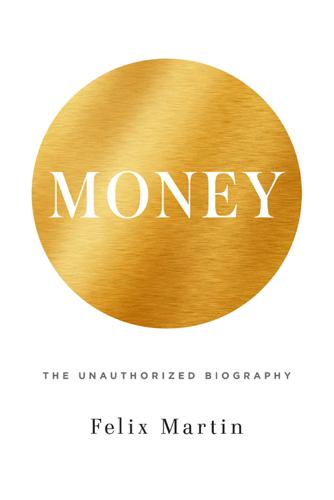
Money: The Unauthorized Biography
by
Felix Martin
Published 5 Jun 2013
The country had pegged the value of its peso to the U.S. dollar for over a decade under a so-called “currency board” arrangement that had delivered unprecedented stability and prosperity for much of the 1990s. But when Brazil devalued its currency in January 1999, Argentina was suddenly priced out of its largest export market and its economy tipped into recession. As the world’s craving for the United States’ new economy drove the U.S. dollar higher and higher over the next two years, it took the Argentine peso with it—heaping yet more misery on an economy that with its reliance on the production of agricultural commodities looked decidedly old. By the middle of 2001, the country had been in recession for almost three years and its public finances were unravelling despite several attempted austerity programmes.
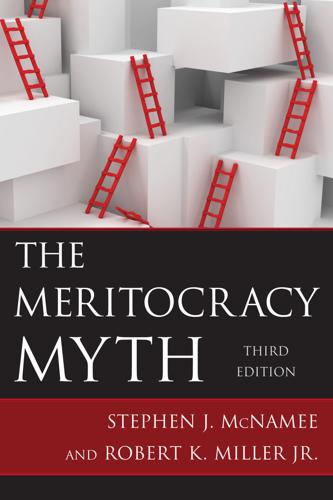
The Meritocracy Myth
by
Stephen J. McNamee
Published 17 Jul 2013
The idea of rugged pioneers setting out against all the odds to stake their own claims and conquer the West became a deep and abiding image in the American psyche. Self-employment also fit well with the principles of free-market capitalism. Economic self-interest, individual ownership, and unbridled competition became the cornerstones of the new economy. Self-employment resonated with the experience of the new nation. Americans were on their way to “doing it my way.” Since those early days, however, economic conditions have changed dramatically. Large bureaucratically organized corporations now dominate the American economic landscape. Despite these colossal shifts in the economy, many Americans continue to cling to the romantic image of the lone inventor and the individual entrepreneur as backbones of the American economy.

Priceless: The Myth of Fair Value (And How to Take Advantage of It)
by
William Poundstone
Published 1 Jan 2010
In any case, a shopper wouldn’t notice the shrinkage unless she archived old Puffs tissues and measured them. This ruse can go on only so long. Cereal boxes would collapse to cardboard envelopes; jars would become plastic voids. Eventually there arrives a point at which the manufacturer must make a bold move everyone will notice. It introduces a new, economy-size package. In size, shape, or other design features, the new package (and its price) is difficult to compare to the old. The consumer is flummoxed, unable to tell whether the new package is a good deal or not. So she tosses it into the cart. The cycle of shrinking packages repeats, ad infinitum.

The Human City: Urbanism for the Rest of Us
by
Joel Kotkin
Published 11 Apr 2016
In his book, Pilot cites a 2012 survey of 3,000 millennial-generation business owners, which found that 82 percent believe many businesses will be built entirely with virtual teams of online workers by 2022.156 Millennials, in particular, may be attracted to the environmental savings that can result from reduced office energy consumption, roadway repairs, urban heating, office construction, business travel, and paper usage (as electronic documents replace paper).157 Overall, according to a 2007 survey, greater use of telecommuting in the United States alone could save 1 billion tons of emissions over 10 years.158 Yet for most, the real benefit of telework is smashing the great barrier between work and home life. We may well be on the verge of the home-centered urban paradigm first envisioned by futurist Alvin Toffler more than four decades ago. In his vision, the house becomes “the electronic cottage,” the center of a new economy, with benefits not only for the environment but also for families, partly from allowing mothers and fathers to work while being active parents.159 The implication for housing forms is fairly obvious: as people use houses for work, they are likely to look for larger—not smaller—and more comfortable places to live.

Broke: How to Survive the Middle Class Crisis
by
David Boyle
Published 15 Jan 2014
He became, rather reluctantly, part of the intellectual underpinnings of a new kind of deregulated ideal, the one that fell to pieces in the banking crash of 2008. These days, he finds himself in rather different company, and has recently begun a defence of the embattled American middle classes.[23] What he described as ‘happy talk about the wonders of the knowledge economy’, hailing a new economy based exclusively on service and finance, was actually a ‘gauzy veil placed over the hard facts of deindustrialization’. The rewards of technological and financial innovation go overwhelmingly to a very narrow group of people, he warned, explaining that: Americans may today benefit from cheap cell phones, inexpensive clothing, and Facebook, but they increasingly cannot afford their own homes, or health insurance, or comfortable pensions when they retire.
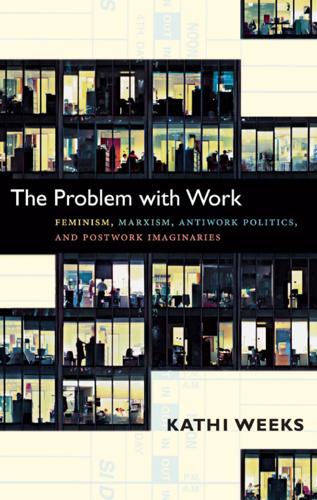
The Problem With Work: Feminism, Marxism, Antiwork Politics, and Postwork Imaginaries
by
Kathi Weeks
Published 8 Sep 2011
In Feminist Utopias in a Postmodern Era, edited by Alkeline van Lenning, Marrie Bekker, and Ine Vanwesenbeeck, 45–53. Tilburg, the Netherlands: Tilburg University Press. Schultz, Vicki, and Allison Hoffman. 2006. “The Need for a Reduced Workweek in the United States.” In Precarious Work, Women, and the New Economy: The Challenge to Legal Norms, edited by Judy Fudge and Rosemary Owens, 131–51. Portland, Ore.: Hart. Seidman, Michael. 1991. Workers against Work: Labor in Paris and Barcelona during the Popular Fronts. Berkeley: University of California Press. Shaiken, Harley, Stephen Herzenberg, and Sarah Kuhn. 1986.
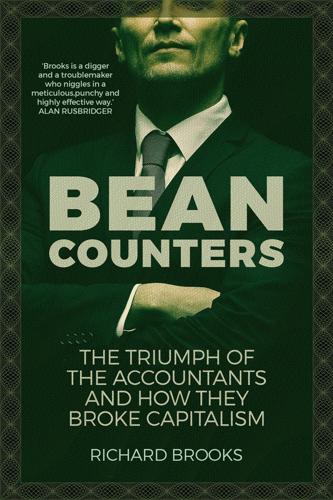
Bean Counters: The Triumph of the Accountants and How They Broke Capitalism
by
Richard Brooks
Published 23 Apr 2018
‘In the zeal to satisfy consensus earnings estimates and project a smooth earnings path, wishful thinking may be winning the day over faithful representation . . . Managing may be giving way to manipulation; integrity may be losing out to illusion.’22 Levitt outlined the more common accounting scams. ‘Merger magic’ deceptions, along the lines of the old pooling-of-interests profit-boosting techniques, were particularly popular for acquisitions of ‘new economy’ companies with barely any income but sky-high valuations. Other companies were restructuring and creating excessive reserves for future expenditure. Wall Street ignored the cost of doing so as one-off ‘exceptional’ items but didn’t object later when the costs didn’t turn out so large and the reduction in the reserves boosted profits.

The AI Economy: Work, Wealth and Welfare in the Robot Age
by
Roger Bootle
Published 4 Sep 2019
Some studies have tried to estimate the number of jobs that will disappear in particular sectors and to hazard a guess at what number of new jobs that will appear. These exercises can have some value. Indeed, I will refer to some of their results below. But such studies are replete with arid banks of dubious numbers. By contrast, what this chapter tries to do is to concentrate on the principles underlying job destruction and job creation in the new economy. It tries to identify the types of job that are most at risk from the spread of robots and AI, and those that are relatively immune – and to explain why. And it discusses which areas might see more jobs created and even speculates about what sorts of new jobs might appear. The discussion begins with an analysis of the scope for driverless vehicles, which leads on to an analysis of the scope for replacing humans with robots and AI in the military.
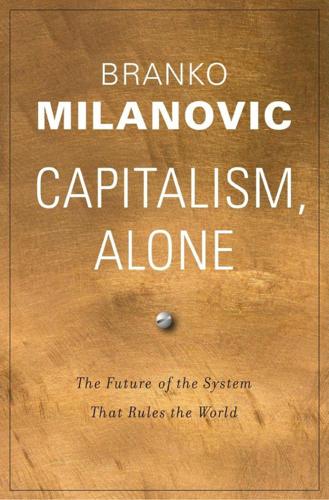
Capitalism, Alone: The Future of the System That Rules the World
by
Branko Milanovic
Published 23 Sep 2019
IMF Working Paper wp/17/169, International Monetary Fund, Washington DC, July. https://www.imf.org/en/Publications/WP/Issues/2017/07/24/Why-Is-Labor-Receiving-a-Smaller-Share-of-Global-Income-Theory-and-Empirical-Evidence-45102. Dasgupta, Rana. 2015. Capital: The Eruption of Delhi. New York: Penguin. Davis, Gerald F. 2016. The Vanishing American Corporation: Navigating the Hazards of a New Economy. N.P.: Berrett-Koehler. Davis, Jonathan, and Bhashkar Mazumder. 2017. “The Decline in Intergenerational Mobility after 1980.” Federal Reserve Bank of Chicago Working Paper No. 17-21, revised January 29, 2019. https://www.chicagofed.org/publications/working-papers/2017/wp2017-05. Decancq, Koen, Andreas Peichl, and Philippe Van Kerm. 2013.
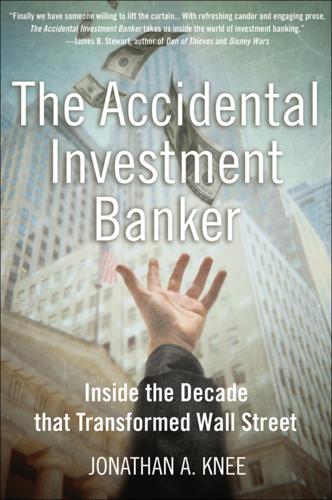
The Accidental Investment Banker: Inside the Decade That Transformed Wall Street
by
Jonathan A. Knee
Published 31 Jul 2006
The problem at Morgan was that Mary held that any company even tangentially related to the Internet required her personal approval before the firm could sponsor it regardless of whether she actually covered it. As more and more companies were trying to reposition themselves as Internet businesses, this exponentially expanded Mary’s potential reach. And given her unique place in the new economy, no one, it seemed, was willing to say “no” to Mary Meeker. In my world, media, the problem this created became quite acute, as it seemed every client we had was trying to recharacterize themselves as some kind of Internet play. We came up with the bright idea of organizing an “Internet Media Conference” in part to satisfy our clients whom we could never actually get invited to Mary’s “real” Internet conference—one of the street’s hottest tickets—but also as a subtle way to credentialize our traditional media analysts as having all-important Web savvy.
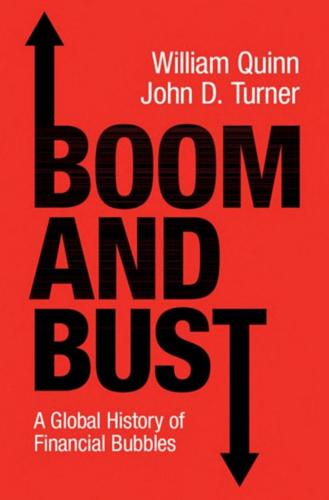
Boom and Bust: A Global History of Financial Bubbles
by
William Quinn
and
John D. Turner
Published 5 Aug 2020
In 1989, 9 per cent of analyst recommendations were to ‘sell’ a particular stock; in 1999, only 1 per cent were.26 Many of the articles and books published at this time carried a striking tone of delusional optimism. Jim Cramer of The Street published an article in February 2000 criticising ‘troglodyte value managers’ for insisting that the price-to-earnings ratio was still useful in the new economy, accusing them of ‘making something psychological into something scientific, and that is WRONG!’27 Kevin Hassett and James Glassman published a book entitled Dow 36,000, arguing that the Dow Jones Index, then at around 10,000, would quickly rise to 36,000 (it peaked at around 12,000 before 158 THE DOT-COM BUBBLE falling below 8,000 in 2002).

Stakeholder Capitalism: A Global Economy That Works for Progress, People and Planet
by
Klaus Schwab
Published 7 Jan 2021
Fink, Chairman and Chief Executive Officer, BlackRock, New York, US Lina Khan, Associate Professor of Law, Columbia University, New York, US Liwei Wang, Senior Writer, Caixin Media, Beijing, China Maha Eltobgy, Head of Shaping the Future of Investing, World Economic Forum, New York, US Michelle Bachelet, High Commissioner for Human Rights, United Nations, Geneva, Switzerland Min Zhu, Chairman, National Institute of Financial Research, Beijing, China Nicholas Thompson, Editor-in-Chief, Wired magazine, New York, US Nicholas Stern, Chair, Research Institute on Climate Change and the Environment, UCL, London, UK Puty Puar, Illustrator and Content Creator, West Java, Indonesia Richard Baldwin, Professor of International Economics, Graduate Institute, Geneva, Switzerland Richard Samans, Director of Research, International Labour Organization, Geneva, Switzerland Robert Atkinson, President, Information Technology and Innovation Foundation, Washington, DC, US Robin Løffmann, Tillidsrepræsentant, MAN Energy Solutions, Copenhagen, Denmark Roland Duchatelet, Founder, Melexis, Sint-Truiden, Belgium Saadia Zahidi, Managing Director, Centre for the New Economy and Society, World Economic Forum, Geneva, Switzerland Sean Cleary, Executive Chair, FutureWorld Foundation, Cape Town, South Africa Seniat Sorsa, Local General Manager, Domestic Affairs, Everest, Awasa, Ethiopia Susan Lund, Partner, McKinsey Global Institute, Washington, DC, US Tharman Shanmugaratnam, Senior Minister, Government of Singapore, Singapore Thomas Søby, Chief Economist, Dansk Metal, Copenhagen, Denmark Tilahun Sarka, Director-General, Ethio-Djibouti Railways, Addis Ababa, Ethiopia Tim Wu, Professor of Law, Science and Technology, Columbia Law School, New York, US Tristan Schwennsen, Lead Archivist, Ravensburger, Ravensburg, Germany Wei Tian, Host, World Insight with Tian Wei, CGTN, Beijing, China William Utomo, Founder, IDN Media, Jakarta, Indonesia Winston Utomo, Founder, IDN Media, Jakarta Indonesia Yu Liu, Senior Research Fellow, Low-Carbon Economy, China Development Institute, Shenzhen, China Zia Qureshi, Visiting Fellow, Global Economy and Development, Brookings Institution, Washington, DC, US Index Page references followed by fig indicates an illustration.

Genius Makers: The Mavericks Who Brought A. I. To Google, Facebook, and the World
by
Cade Metz
Published 15 Mar 2021
Amazon, whose cloud revenue would top $17.45 billion in 2017: Amazon Annual Report, 2017, https://www.sec.gov/Archives/edgar/data/1018724/000101872419000004/amzn-20181231x10k.htm. born in Beijing before emigrating to the United States: Octavio Blanco, “One Immigrant’s Path from Cleaning Houses to Stanford Professor,” CNN, July 22, 2016, https://money.cnn.com/2016/07/21/news/economy/chinese-immigrant-stanford-professor/. “like a God of a Go player”: Cade Metz, “Google’s AlphaGo Continues Dominance with Second Win in China,” Wired, May 25, 2017, https://www.wired.com/2017/05/googles-alphago-continues-dominance-second-win-china/. the Chinese State Council unveiled its plan: Paul Mozur, “Made in China by 2030,” New York Times, July 20, 2017, https://www.nytimes.com/2017/07/20/business/china-artificial-intelligence.html.

Stakeholder Capitalism: A Global Economy That Works for Progress, People and Planet
by
Klaus Schwab
and
Peter Vanham
Published 27 Jan 2021
Fink, Chairman and Chief Executive Officer, BlackRock, New York, US Lina Khan, Associate Professor of Law, Columbia University, New York, US Liwei Wang, Senior Writer, Caixin Media, Beijing, China Maha Eltobgy, Head of Shaping the Future of Investing, World Economic Forum, New York, US Michelle Bachelet, High Commissioner for Human Rights, United Nations, Geneva, Switzerland Min Zhu, Chairman, National Institute of Financial Research, Beijing, China Nicholas Thompson, Editor-in-Chief, Wired magazine, New York, US Nicholas Stern, Chair, Research Institute on Climate Change and the Environment, UCL, London, UK Puty Puar, Illustrator and Content Creator, West Java, Indonesia Richard Baldwin, Professor of International Economics, Graduate Institute, Geneva, Switzerland Richard Samans, Director of Research, International Labour Organization, Geneva, Switzerland Robert Atkinson, President, Information Technology and Innovation Foundation, Washington, DC, US Robin Løffmann, Tillidsrepræsentant, MAN Energy Solutions, Copenhagen, Denmark Roland Duchatelet, Founder, Melexis, Sint-Truiden, Belgium Saadia Zahidi, Managing Director, Centre for the New Economy and Society, World Economic Forum, Geneva, Switzerland Sean Cleary, Executive Chair, FutureWorld Foundation, Cape Town, South Africa Seniat Sorsa, Local General Manager, Domestic Affairs, Everest, Awasa, Ethiopia Susan Lund, Partner, McKinsey Global Institute, Washington, DC, US Tharman Shanmugaratnam, Senior Minister, Government of Singapore, Singapore Thomas Søby, Chief Economist, Dansk Metal, Copenhagen, Denmark Tilahun Sarka, Director-General, Ethio-Djibouti Railways, Addis Ababa, Ethiopia Tim Wu, Professor of Law, Science and Technology, Columbia Law School, New York, US Tristan Schwennsen, Lead Archivist, Ravensburger, Ravensburg, Germany Wei Tian, Host, World Insight with Tian Wei, CGTN, Beijing, China William Utomo, Founder, IDN Media, Jakarta, Indonesia Winston Utomo, Founder, IDN Media, Jakarta Indonesia Yu Liu, Senior Research Fellow, Low-Carbon Economy, China Development Institute, Shenzhen, China Zia Qureshi, Visiting Fellow, Global Economy and Development, Brookings Institution, Washington, DC, US Index Page references followed by fig indicates an illustration.

The Smart Wife: Why Siri, Alexa, and Other Smart Home Devices Need a Feminist Reboot
by
Yolande Strengers
and
Jenny Kennedy
Published 14 Apr 2020
Vandana Shiva, Earth Democracy: Justice, Sustainability and Peace (London: Zed Books, 2016), 16. 88. Hilary Bergen, “‘I’d Blush If I Could’: Digital Assistants, Disembodied Cyborgs and the Problem of Gender,” Word and Text 6 (December 2016), 105. 89. Lydia DePillis, “Big Companies Used to Pay the Best Wages. Not Anymore,” CNN Money, January 18, 2018, https://money.cnn.com/2018/01/18/news/economy/big-companies-wages/index.html. 90. “Amazon’s Jess Bezos Wins ITUC’s World’s Worst Boss Poll,” International Trade Union Confederation, May 22, 2014, https://www.ituc-csi.org/amazon-s-jeff-bezos-wins-ituc-s. 91. Not everyone is happy with this decision. See Louise Matsakis, “Some Amazon Workers Fear They’ll Earn Less Even with a $15 Minimum Wage,” Wired, October 6, 2018, https://www.wired.com/story/amazon-minimum-wage-some-fear-they-will-earn-less/. 92.
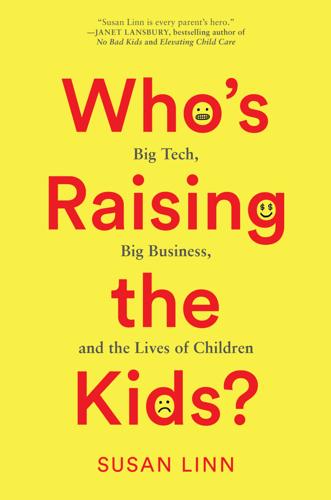
Who’s Raising the Kids?: Big Tech, Big Business, and the Lives of Children
by
Susan Linn
Published 12 Sep 2022
See also Jef Feeley and Christopher Palmeri, “Kids Are So Addicted to Fortnite They’re Being Sent to Gamer Rehab,” Bloomberg, November 27, 2018, www.bloomberg.com/news/articles/2018-11-27/fortnite-addiction-prompts-parents-to-turn-to-video-game-rehab; Elizabeth Matsangou “How Fortnite Became the Most Successful Free-to-Play Game Ever,” New Economy, November 14, 2018. www.theneweconomy.com/business/how-fortnite-became-the-most-successful-free-to-play-game-ever. 42. See Nir Eyal, Hooked: How to Build Habit-Forming Products (New York: Portfolio/Penguin, 2014); Adam Alter, Irresistible: The Rise of Addictive Technology and the Business of Keeping Us Hooked (New York: Penguin, 2017). 43.
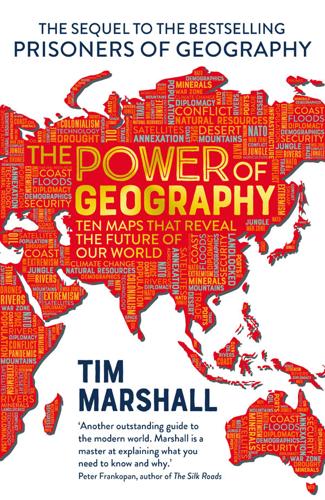
The Power of Geography: Ten Maps That Reveal the Future of Our World
by
Tim Marshall
Published 14 Oct 2021
The contract later offered by MBS’s grandfather, Ibn Saud, was that the people would obey, and the oil money would give them a good life. MBS offers a twenty-first-century model of this, but one in which oil money plays a diminishing role. If the reforms are not implemented, and the world moves on from oil, what does Saudi Arabia offer to that new world – sand? The Saudi leadership has to build a new society, a new economy and a functioning military. We are still in a time in which the Americans will fight for Saudi Arabia to keep the black stuff flowing to grease the wheels of the world economy, but we are approaching a time in which there is no way the Americans will fight to defend Saudi Arabia’s solar panels.
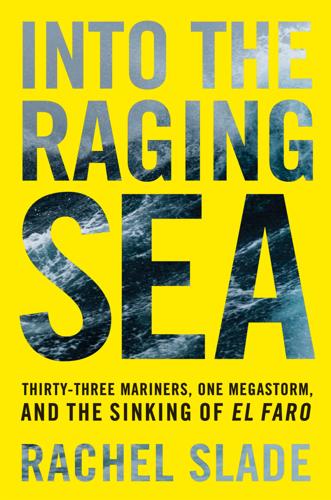
Into the Raging Sea
by
Rachel Slade
Published 4 Apr 2018
The brothers had inherited the seeds of a great fortune from their father, Joseph Newton Pew, who had bet big on the industrialization of a nation emerging from the ravages of the Civil War. In the late nineteenth century, Washington, DC, finally unfettered by the demands of the agrarian south, financed the railroads, canals, and skyscrapers that would drive a new economy. Joseph Newton Pew invested in the lifeblood of industry: energy. He bought up Texan oil fields and tapped into natural gas veins in the backwoods of his native Pennsylvania. Like Andrew Carnegie and John D. Rockefeller (who’d eventually do business with him), he profited not just from government investment but also from the seemingly endless waves of immigrants pouring in from Europe and Asia who were willing to work for little pay and even fewer labor protections.

The Measure of Progress: Counting What Really Matters
by
Diane Coyle
Published 15 Apr 2025
Corrado, C., Haskel, J., Jona-Lasinio, C., and Iommi, M. (2022). Intangible capital and modern economies. Journal of Economic Perspectives, 36(3), 3–28. Corrado, C., Hulten, C. R., and Sichel, D. (2005). Measuring capital and technology: An expanded framework. In C. Corrado, J. Haltiwanger, and D. Sichel (Eds.), Measuring capital in the new economy (Studies in Income and Wealth, Vol. 66, pp. 11–46). University of Chicago Press. Corrado, C., Hulten, C. R., and Sichel, D. (2009). Intangible capital and U.S. economic growth. Review of Income and Wealth, 55(3), 661–685. Corrigan, J. R., Alhabash, S., Rousu, M., and Cash, S. B. (2018). How much is social media worth?

When It All Burns: Fighting Fire in a Transformed World
by
Jordan Thomas
Published 27 May 2025
“When a labourer…lays down his spade,” wrote Edmund Ashworth, an English industrialist, “he renders useless, for that period, a capital worth eighteen pence.” The effect of this new wave of legislation was to make traditional livelihoods untenable, forcing whole swaths of the population to abandon their land for jobs in cities and factories, where they would provide the cheap labor of the new economy. But there is no evidence that this was a conspiracy or a coordinated effort. Rather, the governing class of commercial elites mistook their financial incentives for a moral imperative. By forcing people into systems of wage labor, European elites viewed themselves as improving the moral standing of the population.
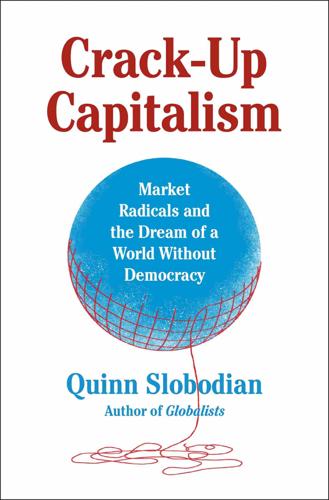
Crack-Up Capitalism: Market Radicals and the Dream of a World Without Democracy
by
Quinn Slobodian
Published 4 Apr 2023
Benjamin Weiser and Joan Suazo, “Ex-Honduran President Extradited to United States to Face Drug Charges,” New York Times, April 21, 2022, ProQuest. 86. Gustavo Palencia, “Honduran Congress Unanimously Nixes Special Economic Zones,” Reuters, April 21, 2022, https://www.reuters.com/world/americas/honduran-congress-unanimously-nixes-special-economic-zones-2022-04-21/. 87. Naomi Klein, “Disaster Capitalism: The New Economy of Catastrophe,” Harpers (October 2007): 55. 88. John Ruch, “Sandy Springs to Bring Most Government Services In-House, Ending Much of Landmark Privatization,” Reporter Newspapers (Atlanta), May 14, 2019, https://reporternewspapers.net/2019/05/14/sandy-springs-to-bring-most-government-services-in-house-ending-much-of-landmark-privatization/. 89.
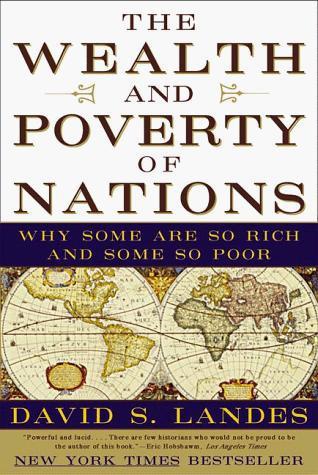
The Wealth and Poverty of Nations: Why Some Are So Rich and Some So Poor
by
David S. Landes
Published 14 Sep 1999
One can show and profit by these qualities in all walks of life. Weber’s argument, as I see it, is that in that place and time (northern Europe, sixteenth to eighteenth centuries), religion encouraged the appearance in numbers of a personality type that had been exceptional and adventitious before; and that this type created a new economy (a new mode of production) that we know as (industrial) capitalism. Add to this the growing need for fixed capital (equipment and plant) in the industrial sector. This made continuity crucial—for the sake of continued maintenance and improvement and the accumulation of knowledge and experience.
…
But the sacralization of the home as enterprise, as building block of national wealth and achievement, converted even the laggards. In 1890, only 30 percent of eligible girls attended school; twenty years later, the figure was 97.4 percent.41 At the same time, women’s actiivities changed to fit the needs of a new economy. More and more of them found jobs outside the home, primarily in light industry (textiles, etc.), where the workforce was 60-90 percent female. These branches produced 40 percent of the GNP and 60 percent of foreign exchange at the end of the nineteenth century.42 How were women wageearners going to rear and teach children?

Blue Mars
by
Kim Stanley Robinson
Published 23 Oct 2010
Some complained because it impinged on local autonomy, others because they had more faith in traditional capitalist economics than in any new system. Antar spoke often for this last group, with Jackie sitting right next to him, obviously in support. This along with his ties to the Arab community gave his statements a kind of double weight, and people listened. “This new economy that’s being proposed,” he declared one day at the table of tables, repeating his theme, “is a radical and unprecedented intrusion of government into business.”Suddenly Vlad Taneev stood up. Startled, Antar stopped speaking and looked over. Vlad glared at him. Stooped, massive-headed, shaggy-eyebrowed, Vlad rarely if ever spoke in public; he hadn’t said a thing in the congress so far.
…
This tended to inflate the value of the Martian sequin in Terran money markets, and in the old days it would probably have blown the sequin’s value right through the roof, to Mars’s disadvantage in trade balances; but as the fracturing metanats continued to struggle against cooperativization back on Earth, Terran finance remained in some disarray, and did not have its old house-on-fire intensity. So the sequin ended up strong on Earth, but not too strong; and on Mars it was just money. Praxis was very helpful in this process, as they became a kind of federal bank for the new economy, providing interest-free loans and serving as a mediated exchange with Terran currencies. • • • So given all this, the executive council was meeting for long hours every day to discuss legislation and other government programs. It was so time-consuming that Nadia almost forgot there was a conference she had initiated going on at the same time in Sabishii.

Cuba Travel Guide
by
Lonely Planet
Gladys Cruz Hernández CASA PARTICULAR $ OFFLINE MAP GOOGLE MAP ( 77-96-98; casadegladys@gmail.com; Av Comandante Pinares Sur No 15, btwn Martí Máximo Gómez; r CUC$20; ) A splendid house with tasteful colonial furnishings situated near the train station; there are two rooms with bathrooms and fridges, a TV and an attractive rear patio. Hostal Sr Handy Santalla CASA PARTICULAR $ OFFLINE MAP GOOGLE MAP ( 72-12-22; Calle Máximo Gómez No 169A, btwn Ciprián Valdés Av Pinares; r CUC$20-25) Keen young owner giving it a shot in the new economy with two small 1st-floor rooms with brand new bathroom fittings, and a patio and garage downstairs. Hotel Vueltabajo HOTEL $$ OFFLINE MAP GOOGLE MAP ( 75-93-81; cnr Martí Rafael Morales; s/d CUC$35/55; ) Stylishly colonial with high ceilings and striped Parisian window awnings, the rooms at this fabulous hotel are so spacious you almost think they must have run out of furniture.
…
Buoyed by high world coffee prices and aided by sophisticated new growing techniques, the coffee boom lasted from 1800 to about 1820, when the crop consumed more land than sugarcane. At its peak there were more than 2000 cafetales in Cuba, concentrated primarily in the Sierra del Rosario region and the Sierra Maestra to the east of Santiago de Cuba. Production began to slump in the 1840s with competition from vigorous new economies (most notably Brazil) and a string of devastating hurricanes. The industry took another hit during the War of Independence, though the crop survived and is still harvested today on a smaller scale using mainly traditional methods. The legacy of Cuba’s pioneering coffee industry is best seen in the Archaeological Landscape of the First Coffee Plantations in the Southeast of Cuba, a Unesco World Heritage Site dedicated in 2000 in the foothills of the Sierra Maestra close to La Gran Piedra.

The Age of Surveillance Capitalism
by
Shoshana Zuboff
Published 15 Jan 2019
This is precisely how early-twentieth-century industrial employers used their rights of freedom of contract to employ child labor, demand twelve-hour workdays, and impose dangerous working conditions, and it is precisely how we have been saddled with illegitimate and audacious click-wrap agreements whose authors have found similar shelter in their claims to freedom of contract. See Max Weber, Economy and Society: An Outline of Interpretive Sociology, vol. 2 (Berkeley: University of California Press, 1978), 668–81. 11. Hal R. Varian, “Economic Scene; If There Was a New Economy, Why Wasn’t There a New Economics?” New York Times, January 17, 2002, http://www.nytimes.com/2002/01/17/business/economic-scene-if-there-was-a-new-economy-why-wasn-t-there-a-new-economics.html. 12. Williamson, The Economic Institutions of Capitalism. 13. Oliver E. Williamson, “The Theory of the Firm as Governance Structure: From Choice to Contract,” Journal of Economic Perspectives 16, no. 3 (2002): 174. 14.

What's Next?: Unconventional Wisdom on the Future of the World Economy
by
David Hale
and
Lyric Hughes Hale
Published 23 May 2011
He is also Chairman of AMG, a company in special metals related to solar energy, and of Agualimpia, an organization in Perú that helps poor towns and villages set up their water systems. ANATOLE KALETSKY GaveKal Research Anatole Kaletsky is Chief Economist and founding partner of GaveKal Research, Hong Kong. His book Capitalism 4.0: The Birth of a New Economy in the Aftermath of Crisis was published in June 2010. Anatole is best known as an economic commentator for the Times of London and, prior to that, on the Financial Times. In 1999, after twenty years as one of the world’s leading economic journalists, Mr. Kaletsky joined Charles Gave and Louis-Vincent Gave to launch GaveKal.

Exceptional People: How Migration Shaped Our World and Will Define Our Future
by
Ian Goldin
,
Geoffrey Cameron
and
Meera Balarajan
Published 20 Dec 2010
Ian Goldin, Oxford (UK); Geoffrey Cameron, Ottawa (Canada); Meera Balarajan, London (UK) December 2010 Introduction We live in a dynamic age of global integration, where the reconnection and mixture of the world's people is challenging dominant norms and practices in many societies. Disintegration and integration are simultaneous and interwoven. Cultural codes adapt. New economies emerge. Innovation prospers. Social institutions struggle to adapt. To many, the challenges associated with migration are characteristic of our age of postmodernism, multiculturalism, and aspiring cosmopolitanism. Some are nostalgic for an illusory past when people had more in common. While the scale, pace, and intensity of human movement may be greater today, the habits of migration and its disruptive effects are as old as humanity itself.

The New Jim Crow: Mass Incarceration in the Age of Colorblindness
by
Michelle Alexander
Published 24 Nov 2011
The result is a system of stratification based on the “official certification of individual character and competence”—a form of branding by the government.32 Given the incredibly high level of discrimination suffered by black men in the job market and the structural barriers to employment in the new economy, it should come as no surprise that a huge percentage of African American men are unemployed. Nearly one-third of young black men in the United States today are out of work.33 The jobless rate for young black male dropouts, including those incarcerated, is a staggering 65 percent.34 In an effort to address the rampant joblessness among black men labeled criminals, a growing number of advocates in recent years have launched Ban the Box campaigns.
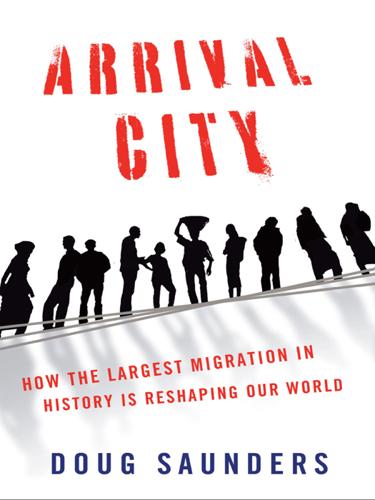
Arrival City
by
Doug Saunders
Published 22 Mar 2011
Slum-demolition campaigns get a lot of media attention—deservedly, given the misery they create—but they are relatively rare today: A few hundred thousand people are affected each year in Asia and Africa, out of the billion who live in slums. While overbearing urban planners will always exist, the larger logic of the city is inescapable: New people create new economies, and those economies develop best when those people, no matter how poor, are able to stage their arrival in an organic, self-generated, bottom-up fashion. The city wants to have migrants. It does not want to meet the fate of Shenzhen, a wound that will not heal, a place nobody can call home. ARRIVAL POSTPONED: THE STUCK CITY Kibera, Nairobi, Kenya Eunice Orembo, her four sons, and her daughter spend their mornings and nights in a single room, ten by seven meters, its walls made from a slurry of red mud, stones, and garbage, packed flat and dried onto a lattice of tree branches lashed to wooden poles; these mud walls hold up a roof made of sheets of corrugated metal.
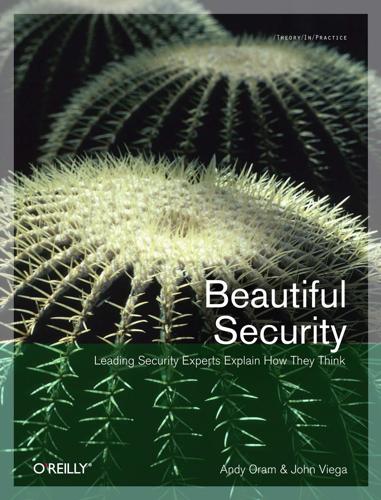
Beautiful security
by
Andy Oram
and
John Viega
Published 15 Dec 2009
Usually, these are people who tell the reporter § See http://www.wired.com/wired/archive/12.10/tail.html. TOMORROW’S SECURITY COGS AND LEVERS 165 what they want to hear to get their names in print, and they’re rarely the people I trust and want to hear from. I read blogs because I listen to individuals with honest opinions. This trend is, of course, prevalent throughout the new economy and will become more and more important to information security. A practitioner at the heart of the industry is better at reporting (more knowledgeable and more in tune) than an observer. Much as blogging tools have democratized publishing and GarageBand has democratized music production, tools will democratize information security.
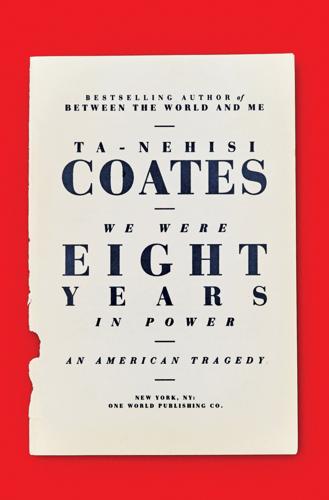
We Were Eight Years in Power: An American Tragedy
by
Ta-Nehisi Coates
Published 2 Oct 2017
A simple thought experiment should be run here—can one imagine a black felon in a federal prison running in a primary against an incumbent white president doing the same? But racism occupies a mostly passive place in Packer’s essay. There’s no attempt to understand why black and brown workers, victimized by the same new economy and cosmopolitan elite Packer lambastes, did not join the Trump revolution. Like Kristof, Packer is gentle with his subjects. When a white woman “exploded” and told Packer, “I want to eat what I want to eat, and for them to tell me I can’t eat French fries or Coca-Cola—no way,” he sees this as rebellion against “the moral superiority of elites.”

Uneasy Street: The Anxieties of Affluence
by
Rachel Sherman
Published 21 Aug 2017
Luke Shaefer. 2015. $2.00 A Day: Living on Almost Nothing in America. Boston: Houghton Mifflin Harcourt. Ehrenreich, Barbara. 1989. Fear of Falling: The Inner Life of the Middle Class. New York: Harper Perennial. ———. 2002. “Maid to Order.” Pp. 85–103 in Global Woman: Nannies, Maids, and Sex Workers in the New Economy, edited by Barbara Ehrenreich and Arlie R. Hochschild. New York: Henry Holt. Ehrenreich, John, and Barbara Ehrenreich. 1979. “The Professional-Managerial Class.” In Between Labor and Capital, edited by Pat Walker. Boston: South End Press. Elkins, Kathleen. 2015. “Here’s What You Need to Earn to Be in the Top 1% in 13 Major US Cities.”
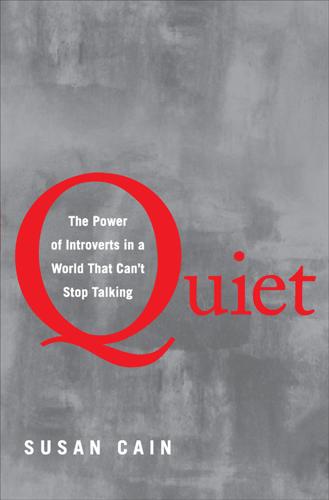
Quiet: The Power of Introverts in a World That Can't Stop Talking
by
Susan Cain
Published 24 Jan 2012
By the time Dale leaves college in 1908, his parents are still poor, but corporate America is booming. Henry Ford is selling Model Ts like griddle cakes, using the slogan “for business and for pleasure.” J.C. Penney, Woolworth, and Sears Roebuck have become household names. Electricity lights up the homes of the middle class; indoor plumbing spares them midnight trips to the outhouse. The new economy calls for a new kind of man—a salesman, a social operator, someone with a ready smile, a masterful handshake, and the ability to get along with colleagues while simultaneously outshining them. Dale joins the swelling ranks of salesmen, heading out on the road with few possessions but his silver tongue.
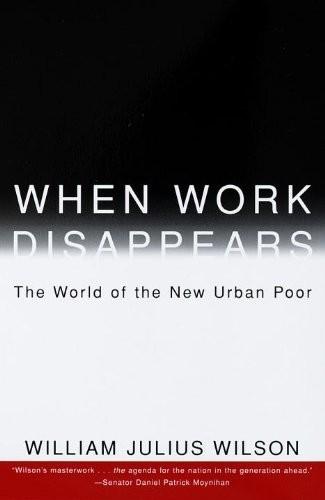
When Work Disappears: The World of the New Urban Poor
by
William Julius Wilson
Published 1 Jan 1996
None of the immediate solutions I am proposing involves retraining workers for higher-paying positions in the highly technological global economy. The need to retrain low-skilled workers is generally recognized by policymakers and informed observers in both Europe and the United States. However, the most serious discussions about training for the new economy have focused on young people and their transition from school to work or from school to postsecondary training. The cost of retraining adult workers is considerable, and none of the industrial democracies has advanced convincing proposals indicating how to implement such a program effectively. Moreover, a heavy emphasis on skill development and job retraining is likely to end up mainly benefiting those who already have a good many skills that only need to be upgraded.

Singularity Sky
by
Stross, Charles
Published 28 Oct 2003
While out here all 'uns enjoying themselves and it's like the end of the regime, like? I mean, wot's going on? Has true libertarianism arrived yet?" "Welcome, comrades!" Burya opened his arms toward the soldier. "Yes, it is true! With help from our allies of the Festival, the iron hand of the reactionary junta is about to be over-thrown for all time! The new economy is being born; the marginal cost of production has been abolished, and from now on, if any item is produced once, it can be replicated infinitely. From each according to his imagination, to each according to his needs! Join us, or better still, bring your fellow soldiers and workers to join us!"
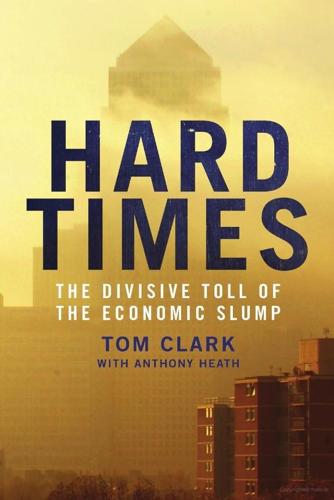
Hard Times: The Divisive Toll of the Economic Slump
by
Tom Clark
and
Anthony Heath
Published 23 Jun 2014
For a detailed and carefully costed menu of practical proposals to boost employment rates among parents and older workers, see Resolution Foundation, Gaining From Growth, pp. 192–3. 18. Tami Luhby, ‘Romney-Ryan would aim to overhaul Medicaid’, CNNMoney, 13 August 2012, at: http://money.cnn.com/2012/08/13/news/economy/ryan-medicaid/ 19. Catalina Camia, ‘Romney criticizes Obama's changes to welfare law’, USA Today, 7 August 2012, at: http://content.usatoday.com/communities/onpolitics/post/2012/08/mitt-romney-welfare-reform-ad-barack-obama-/1#.UkbK-xbvz-Y 20. ‘0.7%, or £1.2bn, of total benefit expenditure is overpaid due to fraud’, Department for Work and Pensions/ONS, ‘Fraud and error in the benefit system: Preliminary 2012/13 estimates (Great Britain)’, 2013, p. 1, at: www.gov.uk/government/uploads/system/uploads/attachment_data/file/203097/nsfr-final–090513.pdf 21.
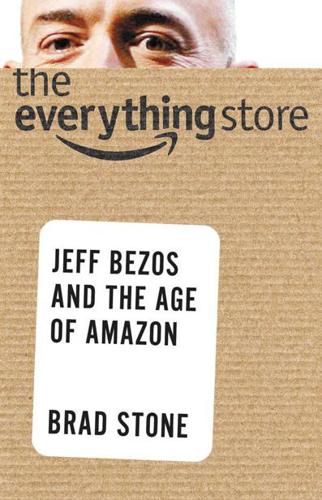
The Everything Store: Jeff Bezos and the Age of Amazon
by
Brad Stone
Published 14 Oct 2013
But as eBay’s sales and profits grew, he worried that customers might see eBay as the natural starting point for an online shopping trip. Though Bezos often claimed that Amazon considered itself “a customer-focused company, not a competitor-focused company,”4 eBay anxiety spread. Employees exposed to a steady barrage of new economy hokum in newspapers and magazines worried not only that eBay had a better business but that fixed-price retailing itself might become a relic of the past. Late that year, Bezos initiated a secret auctions project in a sequestered space on the second floor of the Columbia Building, dubbing the effort EBS, for Earth’s Biggest Selection (or alternatively, employees joked, for eBay by spring).

The Great Escape: Health, Wealth, and the Origins of Inequality
by
Angus Deaton
Published 15 Mar 2013
That the rhetoric and the reality gave the same answer was convenient in 1963 when the line was drawn, but less convenient in later years when different approaches to updating the line started to give different answers. If Orshansky’s procedure was the right one, the poverty line should have been recalculated each year with a new economy food plan and a new multiplier. If we like the Gallup procedure, we should update using what people say the line ought to be. (The latter is my personal favorite: if we are going to label people as poor and treat them differently because they are poor, for example by giving them food subsidies, the opinion of the general public—whose taxes are being used for the purpose—should have something to do with where the line is set.)

The Mark Inside: A Perfect Swindle, a Cunning Revenge, and a Small History of the Big Con
by
Amy Reading
Published 6 Mar 2012
It was the doctors, dentists, lawyers, clergymen, and teachers who performed most dismally, second only to those in the “manufacture and mechanical” category at the bottom, while “capitalists and retired” sat at the top of the list. As the monthly magazines that addressed themselves to the middle and professional classes saw that their efforts to educate readers in the new economy were failing, their tone became shriller. They pointed their fingers right at their readers. Thomas Lee Woolwine, the district attorney of Los Angeles who had helped Norfleet catch the two rogue cops on Joseph Furey’s payroll, wrote an article in The American Magazine about the big con called “Would You Walk into a Trap Like This?”
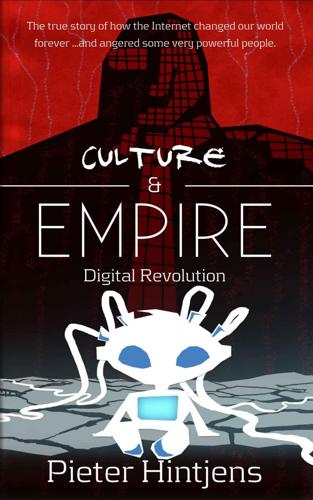
Culture & Empire: Digital Revolution
by
Pieter Hintjens
Published 11 Mar 2013
The new social concentrations of nineteenth century industrial cities allowed an entrepreneurial middle class to emerge, and quite rapidly their economic power turned into political power. In 1848, a political revolution occurred across Europe, leading to the establishment of parliamentary democracy in many countries. The Digital Revolution is having the same effect: people congregate into new communities and entrepreneurs build new economies around those communities, which form a new economic class. When their economic power exceeds that of their old "legacy" competitors, and as the fights break out, they begin to seek political representation and power. Economic change leads to social change and then political change: all of it driven by cost gravity.
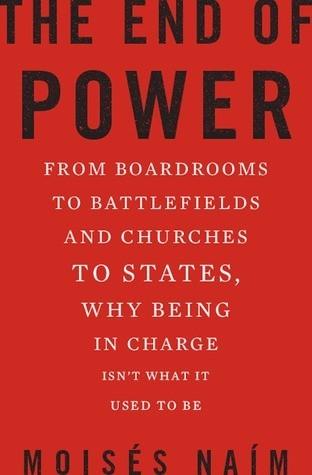
The End of Power: From Boardrooms to Battlefields and Churches to States, Why Being in Charge Isn’t What It Used to Be
by
Moises Naim
Published 5 Mar 2013
Today’s new breed of philanthropists offers a different vision, one informed by their backgrounds, their needs, and their own experiences in the marketplace. Start with their origins. The Bill and Melinda Gates Foundation, with its creation in Seattle in 1994, may be the 800-pound gorilla of modern philanthropy, but it is far from the only foundation born out of the wealth generated by the new economy. In California, for example, the number of foundations jumped by 71 percent from 1999 to 2009, and giving more than doubled from $2.8 billion to $6 billion.30 Such growth helps to explain the shift in philanthropic gravity in the United States over the last decade: in 2003 the West surpassed the Midwest in overall giving for the first time, and in 2006 it overtook the Northeast, the bastion of American philanthropy.31 While many of these new individual givers—the number of family foundations shot up by 40 percent from 2000 to 2005—are tech moguls of one stripe or another, some are also celebrities practicing what one wag at The Economist dubbed “celanthropy” (celebrity plus philanthropy): Bono with his One Foundation, Matt Damon promoting access to clean water, and Brad Pitt developing greenhouses to rebuild New Orleans.

The Blockchain Alternative: Rethinking Macroeconomic Policy and Economic Theory
by
Kariappa Bheemaiah
Published 26 Feb 2017
Useful for students, business persons, and advanced readers. Value Web Chris Skinner General book that offers a holistic view of how FinTech and Blockchain firms are using technology to create a new internet of value. Useful for business persons and students. Blockchain: Blueprint for a New Economy Melanie Swan General book that looks at usability and potential impact of Blockchain from a number of sectors. The author also discusses theoretical, philosophical, and societal impacts of cryptocurrencies and Blockchain. Useful for general readers, novices included. The Business Blockchain: Promise, Practice, and Application of the Next Internet Technology William Mougayar Ideal for business persons with a proclivity for business models.
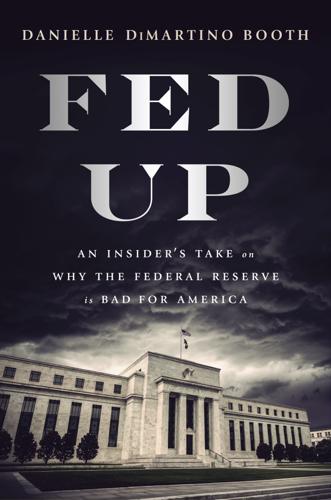
Fed Up: An Insider's Take on Why the Federal Reserve Is Bad for America
by
Danielle Dimartino Booth
Published 14 Feb 2017
BEN PULLS A BAIT AND SWITCH For my own part, I did not see: FRB: Interview with Janet Yellen, FCIC staff audiotape, Financial Crisis Inquiry Commission, November 15, 2010, fcic-static.law.stanford.edu/cdn_media/fcic-audio/2010-11-15%20FCIC%20staff%20audiotape%20of%20interview%20with%20Janet%20Yellen,%20Federal%20Reserve%20Board.mp3. Though Dodd commended: Chris Isidore, “Bernanke Faces Fire at Confirmation Hearing,” MoneyCNN.com, December 3, 2009, money.cnn.com/2009/12/03/news/economy/bernanke_hearing/. On January 28, 2010: Ben Leubsdorf, “A Timeline of the Federal Reserve in 2010,” Wall Street Journal, January 15, 2016. A lot of the data: The Ceridian-UCLA Pulse of Commerce Index has been discontinued. For historical reference see: ycharts.com/indicators/ceridian_ucla_pulse_of_commerce_index.

No Filter: The Inside Story of Instagram
by
Sarah Frier
Published 13 Apr 2020
The regulator made an example of Lord & Taylor in 2016, with a settlement saying it needed to stop its unfair and deceptive advertising practices. “Consumers have the right to know when they’re looking at paid advertising,” explained Jessica Rich, the director of the FTC’s Bureau of Consumer Protection. The warning shot had little impact on this thriving new economy of influence. As Instagram grew, so did the set of people willing to take money in exchange for posting about their outfits, vacations, or beauty routines, choosing their “favorite” brands with financial incentive to do so. In March 2017, regulators sent a polite request to 90 different brands, celebrities, and influencers.

The Future Is Faster Than You Think: How Converging Technologies Are Transforming Business, Industries, and Our Lives
by
Peter H. Diamandis
and
Steven Kotler
Published 28 Jan 2020
in 2017 alone, the total was 6,700: “Global Powers of Retailing 2018,” Deloitte. See: https://www2.deloitte.com/content/dam/Deloitte/tr/Documents/consumer-business/cip-2018-global-powers-retailing.pdf. See also: Jackie Wattles, “2017 Just Set the All-Time Record for Store Closings,” CNN, October 25, 2017, https://money.cnn.com/2017/10/25/news/economy/store-closings-2017/index.html?sr=twCNN102517economy0528PMStory. All one needs to do is look at the following table: Data from https://www.macrotrends.net; we report the peak value for each company during the listed year. Even though online sales increased from $34 billion in Q1 of 2009 to $115 billion in Q3 of 2017: Census.com, “Monthly Retail Trade.”
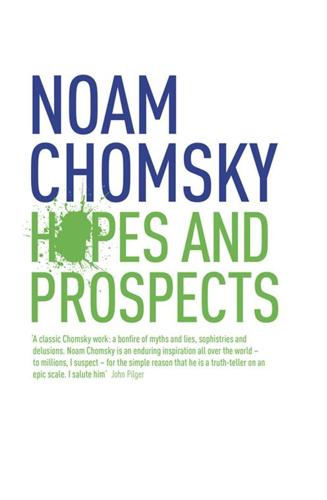
Hopes and Prospects
by
Noam Chomsky
Published 1 Jan 2009
The figures underestimate the reality, because they do not take account of the difference in R&D in the public and private sectors, the former typically more fundamental (hence with greater risk and cost and more significant long-term impact), the latter tending to be more commercially oriented (consumer electronics, copycat drugs, etc.). It is hardly an exaggeration to say that the much-praised “New Economy” is in large part a product of the state sector. Nobel laureate Joseph Stiglitz writes that “a report by the Council of Economic Advisers (conducted when I was its chair) found that the returns on public investment in science and technology were far higher than for private investment in these areas…than for conventional [private] investment in plant and equipment.”14 One effect of incorporating national security exemptions in the mislabeled “free trade agreements” is that the rich industrial societies, primarily the United States, can maintain the state sector, on which the economy heavily relies to socialize cost and risk while privatizing profit.

Naked City: The Death and Life of Authentic Urban Places
by
Sharon Zukin
Published 1 Dec 2009
Despite the media buzz about these districts, the idea of urban terroirs is not really new. Just as the Latin Quarter of Paris and New York’s Greenwich Village have served as models of creative districts for several centuries, so the new Bohemias of Williamsburg in Brooklyn, Hoxton in London, and central Shanghai near the Suzhou River are industrial districts for today’s new economy. Not only are these neighborhoods incubators of new cultural products, styles, and trends, but they are also serious workplaces for graphic artists, fine artists, fashion designers, software designers, music producers, jewelry makers, metalworkers, and furniture builders. Artists and craftspeople seek spaces in these districts because they are built large and sturdy; their old wooden floors, solid walls, and lack of residential neighbors can take paint spatters, banging, and all-night work sessions.

Deep Medicine: How Artificial Intelligence Can Make Healthcare Human Again
by
Eric Topol
Published 1 Jan 2019
Garry Kasparov reminds us about the cycle of automation, fear, and eventual acceptance in Deep Thinking, describing how, although “the technology for automatic elevators had existed since 1900,” it took until the 1950s (after the elevator operators’ union strike in 1945) to be accepted because “people were too uncomfortable to ride in one without an operator.” Some leaders in the tech industry are stepping up financially to smooth the path toward acceptance. Google, for example, is giving $1 billion to nonprofits that aim to help workers adjust to a new economy.72 In the chapters that follow I address the job changes, new and old, and transformed, across virtually every type of healthcare worker. EXISTENTIAL THREAT We won’t have to worry too much about human health and AI if we’re no longer here. Whether and when we will ever build autonomous agents with superintelligence that operate like sentient life, designing and building new iterations of themselves, that can accomplish any goal at least as well as humans is unclear.
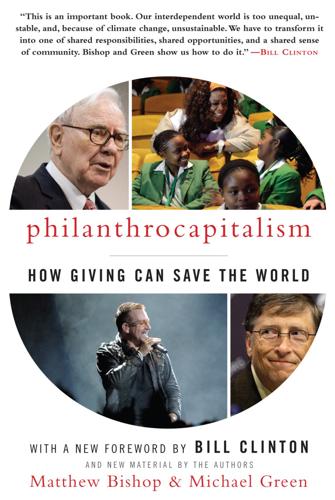
Philanthrocapitalism
by
Matthew Bishop
,
Michael Green
and
Bill Clinton
Published 29 Sep 2008
Its most recent innovation is CAF Global Trustees, which provides direct advice to the rich on how to give their money away (if you have less than $10 million to donate, don’t bother asking). Its clients include the new rich of several emerging economies, including, it is said, several Russian oligarchs. For those who really want their philanthropy done new-economy style, Internet connectivity presents an abundance of opportunities and experiments for both the superrich and those with only a few dollars to give away. The low marginal costs of the Internet mean that there is the potential to create many new opportunities for effective giving and for monitoring how the money is used.
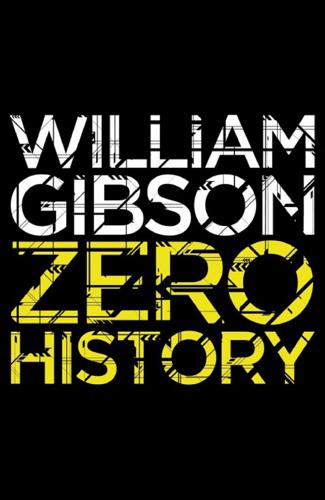
Zero History
by
William Gibson
Published 6 Sep 2010
Though not if they were Foley’s crew, whom she’d started to worry about when Clammy was turning into Oxford Street. Garreth’s instruction to not leave the hotel had suddenly made a different sort of sense. She hadn’t been taking all that very seriously. She’d felt like an observer, a helper, or a woefully unskilled nurse. But now, she realized, in this new economy of kidnapping, she herself could probably be quite valuable. If they had her, they’d have Garreth. Though they didn’t, as far as she knew, know about Garreth. Though that depended, she imagined, on everyone in Bigend’s tiny immediate crew remaining loyal. Who was Fiona? She knew nothing about Fiona, really.
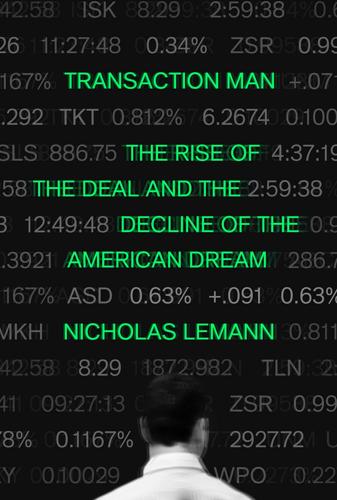
Transaction Man: The Rise of the Deal and the Decline of the American Dream
by
Nicholas Lemann
Published 9 Sep 2019
Jensen reminded his audience that the average daily wage of an unskilled American worker was more than $100, compared with $2.89 in China and $1.51 in India; surely the advent of free trade and the end of communism would lead to wages averaging out worldwide, which would create massive unhappiness, and even possibly political violence, in the United States, as workers saw what they had gained during the years after the Treaty of Detroit taken away, never to return. (Jensen knew from personal experience that almost no one among his own extended family and friends from Minneapolis was succeeding in the new economy.) What to do? To Jensen the answer was clear: make the market for corporate control even more active, powerful, and all-encompassing; blow away the remaining aspects of the principal-agent problem—complacent chief executives, overgenerous union contracts, and passive boards of directors. Jensen believed so deeply in markets as right and just, and in the immorality of any arrangements that impeded them, that he didn’t feel constrained to make the standard argument that they were better at creating general prosperity.
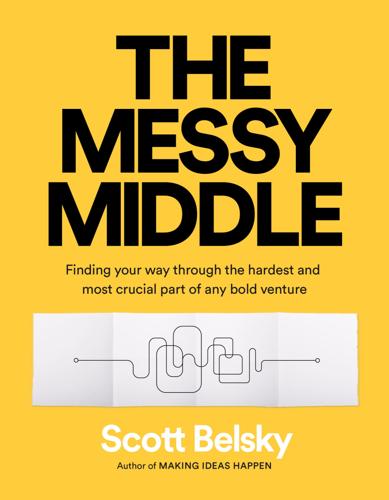
The Messy Middle: Finding Your Way Through the Hardest and Most Crucial Part of Any Bold Venture
by
Scott Belsky
Published 1 Oct 2018
One of the greatest implications of the invention of the internet was the ability for networks to connect online and create a new form of utility—one that was more valuable than the sum of its parts and brought the utility of a large number of participants to your fingertips. Whether it was the new economy founded by eBay, the social network provided by Facebook, or the platform for building your career at LinkedIn, many companies built a business by building a network. Of course, every network is ultimately made possible by its participants. If every LinkedIn member or eBay participant deleted their profile tomorrow, these companies would have no business.
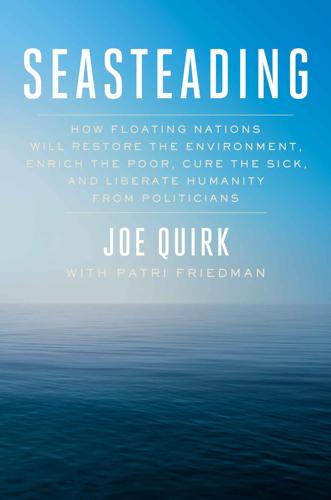
Seasteading: How Floating Nations Will Restore the Environment, Enrich the Poor, Cure the Sick, and Liberate Humanity From Politicians
by
Joe Quirk
and
Patri Friedman
Published 21 Mar 2017
Instead of pleading with the world to cooperate, Lissa and Dave want to forge the technology to align everyone’s incentives to pursue the same goal, whether you’re an environmentalist who wants to reduce CO2 in the water and atmosphere, or a humanitarian who wants to feed the world, or an investor who wants to profit selling biofuels. With algae, all these imperatives will lock together in a positive feedback loop, such that algae will be the keystone to the new economy. Lissa stresses: “It’s really driven by the need to feed the world. At first, I was furious that we’re so deep into nations that hate us, just because we’re addicted to oil, but as we and our team pursued this, I was even more horrified to find out we’re going to starve on our way to finding out we’re not going to have enough energy to drive.”

New Laws of Robotics: Defending Human Expertise in the Age of AI
by
Frank Pasquale
Published 14 May 2020
Donovan and Emma Park, “Perpetual Debt in the Silicon Savannah,” Boston Review, September 20, 2019, at http://bostonreview.net/class-inequality-global-justice/kevin-p-donovan-emma-park-perpetual-debt-silicon-savannah. 55. Tressie McMillan Cottom, Lower Ed: The Troubling Rise of For-Profit Colleges in the New Economy (New York: The New Press, 2018). 56. Lauren Berlant, Cruel Optimism (Durham, NC: Duke University Press, 2011); David J. Blacker, The Falling Rate of Earning and the Neoliberal Endgame (Washington, DC: Zero Books, 2013); Andrew McGettigan, The Great University Gamble: Money, Markets and the Future of Higher Education (London: Pluto Press, 2013); Christopher Newfield, The Great Mistake: How We Wrecked Public Universities and How We Can Fix Them (Baltimore: Johns Hopkins University Press, 2016). 57.

After the Fall: Being American in the World We've Made
by
Ben Rhodes
Published 1 Jun 2021
With so much money funneled into the economy, there was excess capital—money that had to go somewhere because it made no sense for it to sit still. A lot of new technologies and platforms became a natural destination for this excess capital, whether that money was pumped into Silicon Valley start-ups or China’s burgeoning tech sector. New economies were developed to service those with means in ever-changing ways, from Uber to Amazon Prime. Unburdened by antitrust laws that had been gutted, the monopolistic technology companies swallowed up their competition and in-person retailers. This helped tech companies grow faster than our understanding of what their technologies would do.
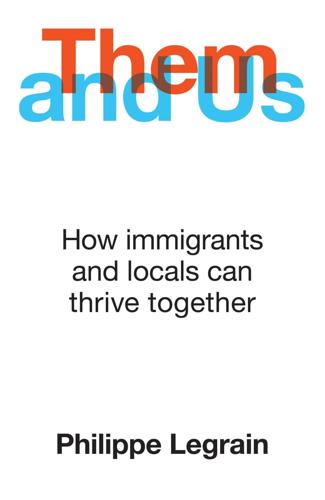
Them and Us: How Immigrants and Locals Can Thrive Together
by
Philippe Legrain
Published 14 Oct 2020
story=20190619103340651 10 ‘The costs and benefits of international students by parliamentary constituency’, Report for the Higher Education Policy Institute and Kaplan International Pathways, January 2018. https://www.hepi.ac.uk/wp-content/uploads/2018/01/Economic-benefits-of-international-students-by-constituency-Final-11-01-2018.pdf 11 ‘NAFSA International Student Economic Value Tool’, NAFSA. Accessed on 23 January 2020 at https://www.nafsa.org/policy-and-advocacy/policy-resources/nafsa-international-student-economic-value-tool-v2 12 Chris Isidore, ‘These are the top US exports’, CNN, 7 March 2018. https://money.cnn.com/2018/03/07/news/economy/top-us-exports/index.html 13 Email from Stephen Jenner, MSc Programmes Administrator, European Institute. 14 ‘Student Academic Experience Survey 2018’, AdvanceHE and HEPI, June 2018. https://www.hepi.ac.uk/wp-content/uploads/2018/06/STRICTLY-EMBARGOED-UNTIL-THURSDAY-7-JUNE-2018-Student-Academic-Experience-Survey-report-2018.pdf 15 ‘Fee Levels for 2019/20’, London School of Economics and Political Science. https://info.lse.ac.uk/staff/divisions/Planning-Division/Assets/Documents/2019-20-Fees-Table.pdf 16 Kevin Shih, ‘Do International Students Crowd-Out or Cross-Subsidize Americans in Higher Education?’
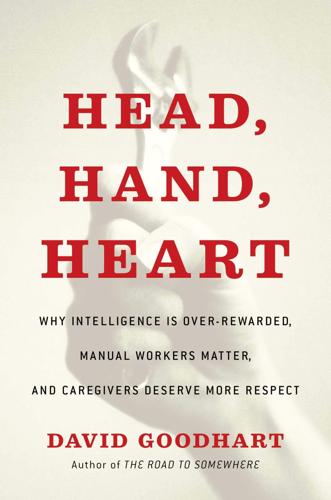
Head, Hand, Heart: Why Intelligence Is Over-Rewarded, Manual Workers Matter, and Caregivers Deserve More Respect
by
David Goodhart
Published 7 Sep 2020
As Matthew Crawford, the American author, puts it in his book The Case for Working with Your Hands, the manual trades are now given little honor in the US school system because of “the fear that acquiring a specific skill set means that one’s life is determined. In college, by contrast, many students don’t learn anything of particular application; college is the ticket to an open future. Craftsmanship entails learning to do one thing really well, while the ideal of the new economy is to be able to learn new things.”26 Crawford argues that today’s preferred role model is the management consultant, who swoops in and out and whose very pride lies in his lack of particular expertise. “Like the ideal consumer, the management consultant presents an image of soaring freedom, in light of which the manual trades appear cramped and paltry: the plumber with his butt crack, peering under the sink.”27 In the United States, like the United Kingdom, a single route into the cognitive class via high SAT test scores and selective higher education has replaced the multiple routes of the recent past.
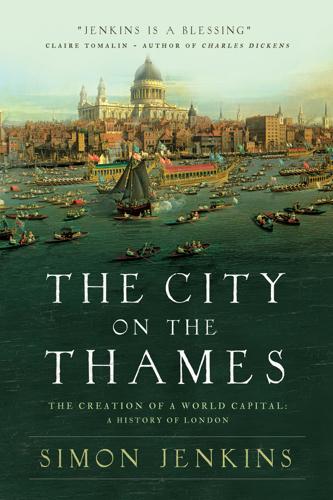
The City on the Thames
by
Simon Jenkins
Published 31 Aug 2020
These new activities, often in small-scale, freelance and ‘start-up’ ventures, were peculiarly attracted to older parts of town, to off-West End basements and former warehouses, to Clerkenwell, Shoreditch and Southwark. In Marylebone, some of the world’s most advanced diagnostic medicine was buried beneath Harley Street. Soho’s back streets saw the highest-tech studios for film post-production. Buildings designed for horses and carts played host to the most cutting-edge technologies. This was the new economy that the digital revolution had promised would disperse wealth from the metropolis. It did the opposite. Workers needed places to congregate and network. Coffee houses proliferated as if imitating the seventeenth-century City. Once-doomed cultural activities strengthened. Publishers found themselves producing more books, while specialist and weekly magazine sales increased even as conventional newspapers moved online.
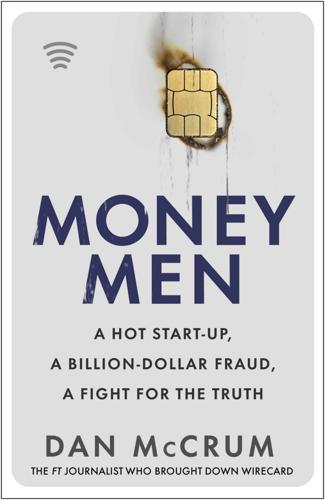
Money Men: A Hot Startup, a Billion Dollar Fraud, a Fight for the Truth
by
Dan McCrum
Published 15 Jun 2022
Eichelmann was clearly media-savvy, as his personal references included one from a PR man. As soon as he joined, press reports began to frame him as the chairman-in-waiting. Of the three women present, Vuyiswa M’Cwabeni was the longest-serving and, at forty-one, the youngest. An up-and-coming career executive at SAP, German’s other large new economy giant, she’d joined in 2016. The other two had arrived the previous summer, giving them just a brief taste of Wirecard’s dysfunction before it was engulfed in scandal. Susana Quintana-Plaza was a Spanish engineer with a glittering career in energy, aerospace and venture capital; she had already announced her intention to leave in 2020 due to the demands of her day job at a renewables business.
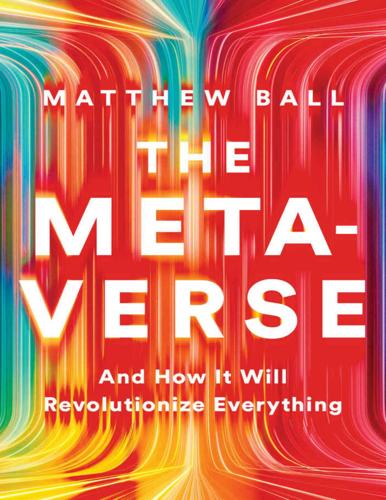
The Metaverse: And How It Will Revolutionize Everything
by
Matthew Ball
Published 18 Jul 2022
Two months later, Epic Games sued both Apple and Google, alleging their 30% fees and controls were unlawful and anti-competitive. A week before the suit, Sweeney had tweeted that “Apple has outlawed the metaverse.” The delay had several causes. One was the unequal impact of Apple’s store policies, which primarily charged “new economy” businesses and waived fees on old economy ones. Apple established three broad categories of apps when it came to in-app purchases. The first category was transactions made for a physical product, such as buying Dove soap from Amazon or loading a Starbucks gift card. Here, Apple took no commission and even allowed these apps to directly use third-party payment rails, such as PayPal or Visa, to complete a transaction.
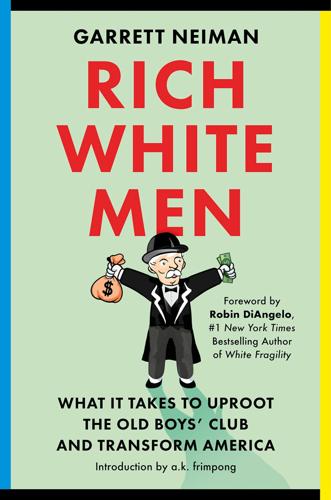
Rich White Men: What It Takes to Uproot the Old Boys' Club and Transform America
by
Garrett Neiman
Published 19 Jun 2023
America needs more thinkers and doers who have the capacity to grapple with this complexity; it also needs more philanthropists and politicians who are willing to invest in the development of pluralistic alternatives that unlock new innovations that can be scaled up over time. For those who want to help build these alternatives, the hundreds of initiatives that are part of the New Economy Coalition—which includes amazing organizations like Seed Commons and United for a Fair Economy—offer many onramps to that work. Part of why I think America needs to take this issue on is that capitalism, at least as it currently functions in the United States, isn’t a consent-based model. I’ve heard many rich white men claim that workers provide their consent when they sign a labor contract, but power dynamics often shape whether an employee decides to accept an employment contract and the terms they are willing to accept.
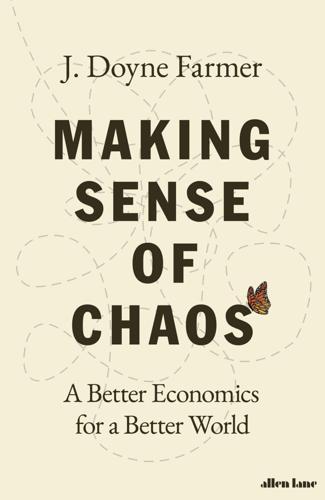
Making Sense of Chaos: A Better Economics for a Better World
by
J. Doyne Farmer
Published 24 Apr 2024
While the data-driven techniques described there are useful tools, they address only a small part of the problem. To help guide us through the necessary green-energy and agriculture transition, we need models that can help us plan. How should a country best develop its economy to profit from the transition? What is the right strategy for a business to position itself to take advantage of the new economy? Navigating these questions requires a better understanding of how the transition will play out for the many facets of the economy, including energy, agriculture, innovation, finance, production and labor. To try to answer these questions, my postdocs, students, ex-students and I are designing what we call the Climate Policy Laboratory.

The Coming Wave: Technology, Power, and the Twenty-First Century's Greatest Dilemma
by
Mustafa Suleyman
Published 4 Sep 2023
GO TO NOTE REFERENCE IN TEXT Security, wealth, prestige “France 2030,” Agence Nationale de la Recherche, Feb. 27, 2023, anr.fr/en/france-2030/france-2030. GO TO NOTE REFERENCE IN TEXT By 2030 its economy “India to Be a $30 Trillion Economy by 2050: Gautam Adani,” Economic Times, April 22, 2022, economictimes.indiatimes.com/news/economy/indicators/india-to-be-a-30-trillion-economy-by-2050-gautam-adani/articleshow/90985771.cms. GO TO NOTE REFERENCE IN TEXT Under it, India established Trisha Ray and Akhil Deo, “Priorities for a Technology Foreign Policy for India,” Washington International Trade Association, Sept. 25, 2020, www.wita.org/atp-research/tech-foreign-policy-india.
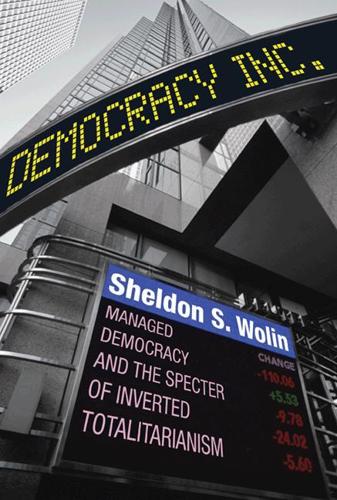
Democracy Incorporated
by
Sheldon S. Wolin
Published 7 Apr 2008
One claimed that superior economic power should translate directly into political power; the other that political life involved transactions among equals, a formula which required that social status, economic power, and religious loyalties be suspended temporarily so that citizens might deliberate as equals—a formula that realists would dismiss as magical while egalitarians would see it as magic realism, as a moment of possibility when the powerless are empowered and experience independence. In the centuries that followed, the economy of capitalism became increasingly powerful, both as a system of production and as a system of inequalities. While, unquestionably, the new economy would raise the “standard of living” of the “masses,” it would also succeed in translating concentrated economic power into political power. Rather than a purely economic system supplying “goods and services,” capital acquired political attributes. Faced with that reality, the magic realists, in desperation, would introduce their trump card, the threat of revolution.
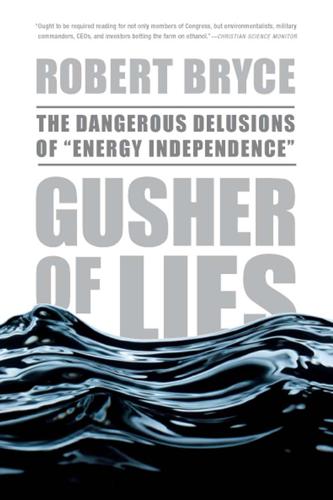
Gusher of Lies: The Dangerous Delusions of Energy Independence
by
Robert Bryce
Published 16 Mar 2011
At the end of the film, in the section about what people can do to help address global warming, this text appears on the screen: “Reduce our dependence on foreign oil, help farmers grow alcohol fuels.”6 The zealotry over ethanol has led former North Carolina senator and presidential candidate John Edwards to declare that the U.S. should be producing 65 billion gallons of ethanol and other biofuels per year by 2025. In 2007, he published a statement on his campaign Web site saying that his “New Economy Energy Fund” would “develop new methods of producing and using ethanol, including cellulosic ethanol, and offer loan guarantees to new refineries.”7 The irrational exuberance over ethanol has led investors to dump bushels of cash into the companies that produce ethanol. In June 2006, shares of VeraSun Energy Corp., a North Dakota–based ethanol producer, jumped by more than 30 percent during the first day of trading.
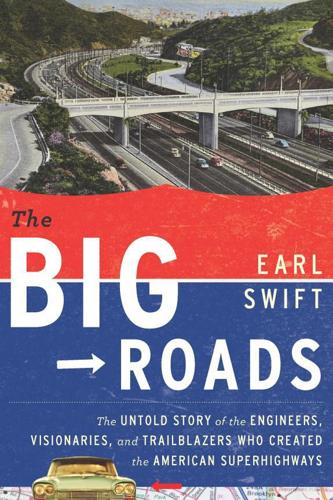
The Big Roads: The Untold Story of the Engineers, Visionaries, and Trailblazers Who Created the American Superhighways
by
Earl Swift
Published 8 Jun 2011
A long stretch of the Lincoln Highway in Nebraska saw three-quarters of its traffic evaporate after I-80 opened a little to the south. Connecticut's neon-lined Berlin Turnpike, packed with traffic for years, lost nearly half of it when Interstate 91 opened, killing a regiment of small motels and marooning two full-service Howard Johnsons. A great many towns, sharing Conway's fate, were both winners and losers in the new economy of high-speed travel. Income from passers-through didn't dry up, but it certainly left Main Street. The experience of Bertha Amick of Boonville, Missouri, was repeated a thousand times over. Amick was proprietor of the Kit Carson Motel, one of several businesses rendered superfluous when I-70 was built on the far side of town.

Swindled: the dark history of food fraud, from poisoned candy to counterfeit coffee
by
Bee Wilson
Published 15 Dec 2008
The New York Times writer linked the state of milk—“abuses that poison the very springs, of life”—with the poisonous quality of city life in general. This was an era of filth and chaos. The opening of the Erie Canal in 1825 had made New York the economic heart of the nation, but the city had yet to develop a civic politics to regulate the new economy. There were distinct echoes of Accum’s London of 1820—in both cities industry had galloped forward without either the social responsibility or the political institutions to rein in the mess. “Our streets are never cleaned. Our police force is ineffi cient, and our thoroughfares are obstructed by a thousand disagreeable obstacles.
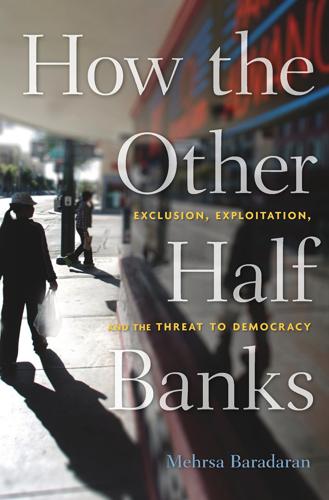
How the Other Half Banks: Exclusion, Exploitation, and the Threat to Democracy
by
Mehrsa Baradaran
Published 5 Oct 2015
… All the loans were backed by collateral and all were paid back with a very low interest rate to the Fed—an annual rate of from 0.5% to 3.5%.” See Chris Isidore, “Fed Made $9 Trillion in Emergency Overnight Loans,” CNN Money, December 1, 2010, accessed March 13, 2015, money.cnn.com/2010/12/01/news/economy/fed_reserve_data_release/. 17. According to 12 U.S.C. 1824, the FDIC is authorized to borrow from the Treasury and the secretary of the Treasury is authorized and directed to make loans to the FDIC on such terms as may be fixed by the corporation and the secretary. Even with this complete assurance of protection, depositors holding more than the insured maximum of $100,000 will still make bank runs.
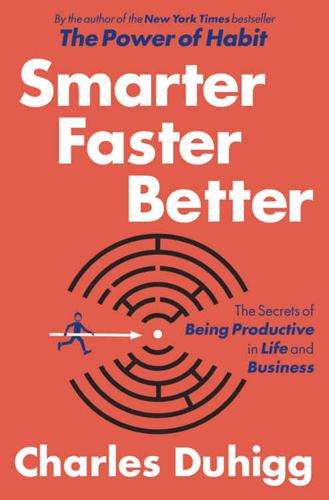
Smarter Faster Better: The Secrets of Being Productive in Life and Business
by
Charles Duhigg
Published 8 Mar 2016
In recent decades, as the economy has shifted and large companies promising lifelong employment have given way to freelance jobs and migratory careers, understanding motivation has become increasingly important. In 1980, more than 90 percent of the American workforce reported to a boss. Today more than a third of working Americans are freelancers, contractors, or in otherwise transitory positions. The workers who have succeeded in this new economy are those who know how to decide for themselves how to spend their time and allocate their energy. They understand how to set goals, prioritize tasks, and make choices about which projects to pursue. People who know how to self-motivate, according to studies, earn more money than their peers, report higher levels of happiness, and say they are more satisfied with their families, jobs, and lives.

Warnings
by
Richard A. Clarke
Published 10 Apr 2017
Rachel Scott, “‘Yes, Sir, This Has Certainly Been Considered a Safe Mine,’” Atlantic, Dec. 1972, www.theatlantic.com/magazine/archive/1972/12/-yes-sir-this-has-certainly-been-considered-a-safe-mine/304565 (accessed Oct. 5, 2016). 14. Derived from NIOSH data. 15. Laurent Belsie, “West Virginia Mine Explosion: Mining Jobs Were Getting Safer, Until Now,” Christian Science Monitor, Apr. 6, 2010, www.csmonitor.com/Business/new-economy/2010/0406/West-Virginia-mine-explosion-Mining-jobs-were-getting-safer-until-now (accessed Oct. 5, 2016). 16. J. Davitt McAteer et al., Upper Big Branch: The April 5, 2010, Explosion—a Failure of Basic Coal Mine Safety Practices, (Charleston, WV: Governor’s Independent Investigation Panel, May 2011), 23–25. 17.
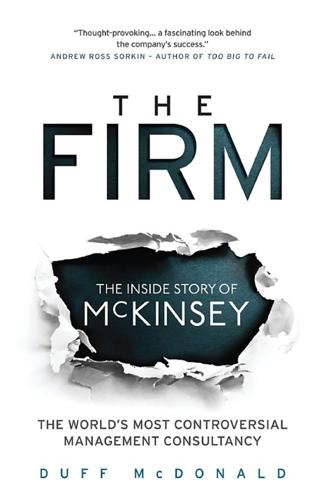
The Firm
by
Duff McDonald
Published 1 Jun 2014
He jumped ship and had soon replaced Kinder as president of Enron. Enron chief financial officer Andy Fastow was flabbergasted at the move. “You walked away from McKinsey?” he asked Skilling. “I did,” the latter replied. “Why?” “Hey,” Skilling replied. “How often do you get a chance to change the world?”9 Skilling turned Enron into a new economy darling that darted from market to market with blazing speed. It became the most celebrated company in the country, with revenues topping $60 billion in 2000. As Bethany McLean and Peter Elkind pointed out in The Smartest Guys in the Room, Enron was beloved by all: “Fortune magazine named it ‘America’s most innovative company’ six years running.

Machine, Platform, Crowd: Harnessing Our Digital Future
by
Andrew McAfee
and
Erik Brynjolfsson
Published 26 Jun 2017
Devine Jr., “From Shafts to Wires: Historical Perspective on Electrification,” Journal of Economic History 43, no. 2 (1983): 347–72, http://www.j-bradford-delong.net/teaching_Folder/Econ_210c_spring_2002/Readings/Devine.pdf. 20 “the merits of driving machines in groups”: Ibid. 21 “curse of knowledge”: Scott Sleek, “The Curse of Knowledge: Pinker Describes a Key Cause of Bad Writing,” Observer 28, no. 6 (July/August 2015), http://www.psychologicalscience.org/observer/the-curse-of-knowledge-pinker-describes-a-key-cause-of-bad-writing#.WJodJhiZOi5. 21 “At the beginning of the transition”: Andrew Atkeson and Patrick J. Kehoe, The Transition to a New Economy after the Second Industrial Revolution, Federal Reserve Bank of Minneapolis Research Department Working Paper 606 (July 2001), http://citeseerx.ist.psu.edu/viewdoc/download?doi=10.1.1.147.7979#x0026;rep=rep1#x0026;type=pdf. 21 “the need for organizational”: Paul A. David and Gavin Wright, General Purpose Technologies and Surges in Productivity: Historical Reflections on the Future of the ICT Revolution, University of Oxford Discussion Papers in Economic and Social History 31 (September 1999), 12, http://sites-final.uclouvain.be/econ/DW/DOCTORALWS2004/bruno/adoption/david%20wright.pdf. 22 more than 300 such trusts: John Moody, The Truth about Trusts: A Description and Analysis of the American Trust Movement (New York: Moody, 1904), 467, https://archive.org/details/truthabouttrust01moodgoog. 22 “ ‘limping’ units”: Shaw Livermore, “The Success of Industrial Mergers,” Quarterly Journal of Economics 50, no. 1 (1935): 68–96. 23 A study by economist Richard Caves: Richard E.
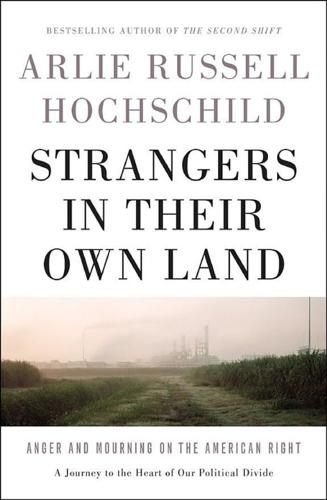
Strangers in Their Own Land: Anger and Mourning on the American Right
by
Arlie Russell Hochschild
Published 5 Sep 2016
ALSO BY ARLIE RUSSELL HOCHSCHILD So How’s the Family? And Other Essays The Outsourced Self: Intimate Life in Market Times Global Woman: Nannies, Maids, and Sex Workers in the New Economy (co-editor) The Commercialization of Intimate Life: Notes from Home and Work The Time Bind: When Work Becomes Home and Home Becomes Work The Second Shift: Working Families and the Revolution at Home The Managed Heart: Commercialization of Human Feeling The Unexpected Community: Portrait of an Old Age Subculture Coleen the Question Girl © 2016 by Arlie Russell Hochschild All rights reserved. No part of this book may be reproduced, in any form, without written permission from the publisher.

Dreaming in Code: Two Dozen Programmers, Three Years, 4,732 Bugs, and One Quest for Transcendent Software
by
Scott Rosenberg
Published 2 Jan 2006
Whatever shape his new software would take, Kapor decided, as he pondered the inadequacies of Microsoft Exchange and began to dream of inventing something to put in its place, it would have to conjure the soul of Agenda. The only other thing he was sure of at that point, as the seeds of the project that would become Chandler began to sprout, was that he wanted the new product to be open source. In the spring of 2001, the Internet’s new economy lay in ruins, and old-fashioned, for-profit start-up software companies were out of market favor. No one at the time thought there was a future in challenging the dominance of Microsoft’s Exchange and Outlook programs in the world of email and personal information management. But Kapor’s attraction to open source wasn’t simple opportunism.
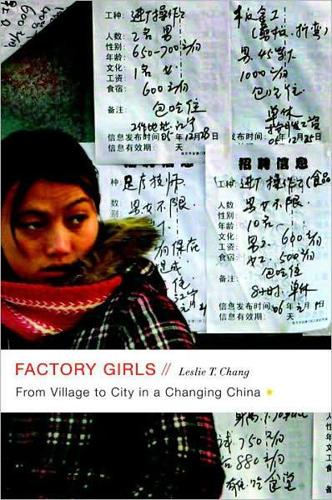
Factory Girls: From Village to City in a Changing China
by
Leslie T. Chang
Published 6 Oct 2008
Funü yu laogong [Women and Labor]. Internally circulated edition. 2002. West, Loraine A., and Yaohui Zhao, eds. Rural Labor Flows in China. Berkeley, Calif.: Institute of East Asian Studies, 2000. Zhang Hong. “China’s New Rural Daughters Coming of Age: Downsizing the Family and Firing Up Cash-Earning Power in the New Economy.” Signs: Journal of Women in Culture and Society 32.3 (2007). Chapter 2: THE CITY There is no official number for the percentage of the Dongguan population that is female. I have used the figure of 70 percent, based on estimates from talent market executives, the deputy mayor’s office, and surveys in local newspapers.

Discover Hawaii the Big Island
by
Lonely Planet
Puʻuhonua o Honaunau National Historical Park (Click here) PHOTOGRAPHER: GREG ELMS / LONELY PLANET IMAGES © History Museums 1 LYMAN MUSEUM & MISSION HOUSE ( CLICK HERE ) 2 HULIHE‘E PALACE ( CLICK HERE ) 3 PACIFC TSUNAMI MUSEUM ( CLICK HERE ) 4 ʻIMILOA ASTRONOMY CENTER OF HAWAII ( CLICK HERE ) 5 LAUPAHOEHOE TRAIN MUSEUM ( CLICK HERE ) 6 PAHOA MUSEUM ( CLICK HERE ) Tourism & the New Economy After statehood, tourism exploded, thanks to the advent of jet airplanes and to the commercializing of Hawaii (think tiki craze, Blue Hawaii, aloha shirts and Waikiki). Hotel construction also boomed and by 1970 the visitor industry had added $1 billion to state coffers, four times what agriculture generated.

Plutocrats: The Rise of the New Global Super-Rich and the Fall of Everyone Else
by
Chrystia Freeland
Published 11 Oct 2012
Free Lunch: How the Wealthiest Americans Enrich Themselves at Government Expense (and Stick You with the Bill). Portfolio, 2007. ———. Perfectly Legal: The Covert Campaign to Rig Our Tax System to Benefit the Super-Rich—and Cheat Everybody Else. Portfolio, 2003. Judt, Tony. Ill Fares the Land. Penguin Press, 2010. Kaletsky, Anatole. Capitalism 4.0: The Birth of a New Economy in the Aftermath of Crisis. Public Affairs, 2010. Kaplan, Steven N., and Joshua Rauh. “Wall Street and Main Street: What Contributes to the Rise in the Highest Incomes?” Review of Financial Studies 23:3 (March 2010). pp. 1004–50. Khan, Shamus Rahman. Privilege: The Making of an Adolescent Elite at St.
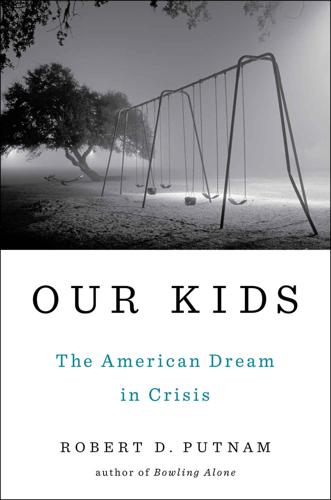
Our Kids: The American Dream in Crisis
by
Robert D. Putnam
Published 10 Mar 2015
Times have changed since Stephanie herself climbed the economic ladder. However admirably adapted it is to the environment in which she lives, her tough love parenting—privileging obedience over imagination, “whupping” over reasoning, and physical safety over verbal skills—is not so well adapted to the new economy as the “concerted cultivation” employed by Simone and Carl.14 Nevertheless, Stephanie takes hard-earned satisfaction in what she has managed to do for her kids. “I think I have brought them to where they’re at now—respectable. We have our ups and down, but respectable. And then I know that you have to go out there, either go to school or work for what you want in order to have it.

Machines of Loving Grace: The Quest for Common Ground Between Humans and Robots
by
John Markoff
Published 24 Aug 2015
If jobs for warehouse workers, garbage collectors, doctors, lawyers, and journalists are displaced by technology? It is of course impossible to know this future, but I suspect society will find that humans are hardwired to work or find an equivalent way to produce something of value in the future. A new economy will create jobs that we are unable to conceive of today. Science-fiction writers, of course, have already covered this ground well. Read John Barnes’s Mother of Storms or Charlie Stross’s Accelerando for a compelling window into what a future economy might look like. The simple answer is that human creativity is limitless, and if our basic needs are looked after by robots and AIs, we will find ways to entertain, educate, and care for one another in new ways.
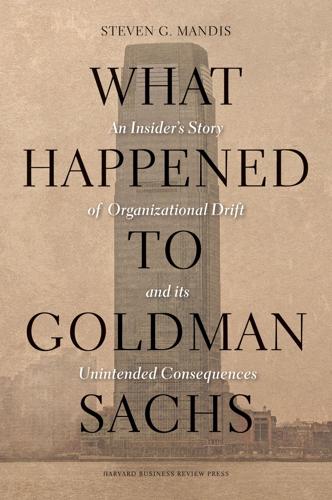
What Happened to Goldman Sachs: An Insider's Story of Organizational Drift and Its Unintended Consequences
by
Steven G. Mandis
Published 9 Sep 2013
According to the New York Times, since the close of its May 1999 IPO to September 2011, Goldman’s stock has returned nearly 175 percent. The Standard & Poor’s 500-stock index over the same period has lost almost 2.9 percent; see http://dealbook.nytimes.com/2011/01/18/study-points-to-windfall-for-goldman-partners/. 2. http://money.cnn.com/2012/07/21/news/economy/dodd-frank/index.htm. 3. Ibid. 4. www.followthemoney.org/press/ReportView.phtml?r=425. 5. P. Weinberg, “Wall Street Needs More Skin in the Game,” Wall Street Journal, September 30, 2009, http://online.wsj.com/article/SB10001424052748704471504574443591328265858.html. 6. Bear Stearns recently agreed to settle a 2009 class action suit brought by its shareholders, who lost most of their investments when the firm started to collapse, the value of their shares falling from more than $170 per share to as little as $2, although J.P.
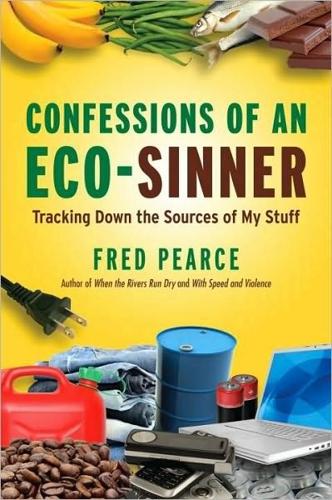
Confessions of an Eco-Sinner: Tracking Down the Sources of My Stuff
by
Fred Pearce
Published 30 Sep 2009
Iron too – or rather the usual end product, steel – has also long been recycled. Between 70 and 90 per cent of all the steel waste in North America and Europe goes for recycling. Modern electric arc furnaces take only a third as much energy to produce recycled steel rods or sheets as to make new. As the environmentalist Lester Brown puts it, ‘In the new economy, electric arc steel mills will largely replace iron mines.’ My water footprint is huge, and so is yours. I have written a previous book about our use and abuse of water, so this is just a summary. But I still find the stats extraordinary. I drink only a couple of litres or so of water in a day, most of it in tea and coffee.
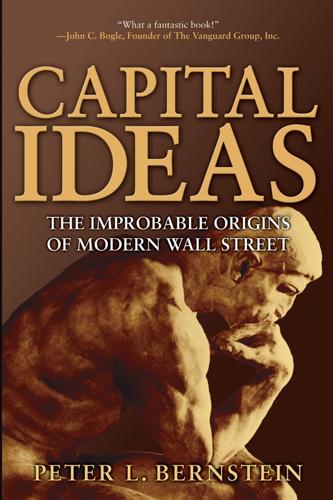
Capital Ideas: The Improbable Origins of Modern Wall Street
by
Peter L. Bernstein
Published 19 Jun 2005
As investors grew more optimistic about the future and less concerned about a return of the Great Depression, their expectations of corporate America’s long-run earning power rose and their concerns about the business cycle diminished. Time magazine’s issue of December 31, 1958, exulted: “In the new economy, many of the old classical rules of economics no longer apply; over the years the U.S. has made and learned new rules all its own.” At the end of 1958, stock prices averaged eighteen times current earnings per share, a huge jump from thirteen times in the autumn of 1957. That increase in valuation was startling.
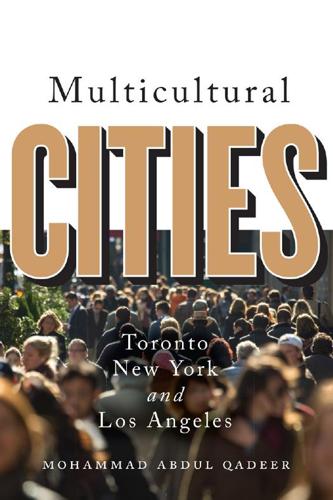
Multicultural Cities: Toronto, New York, and Los Angeles
by
Mohammed Abdul Qadeer
Published 10 Mar 2016
Therefore, networkdriven employment fosters ethnic niches and enclaves. Los Angeles The Los Angeles metropolitan area’s economy was restructured in the 1990s by the recession, reduced defence spending, and globalization,34 which has made self-employment increasingly necessary for the jobless and provided a stimulus for creative enterprises of the new economy for investors and professionals. On the lower end, casual workers, sweatshop labourers, and back-of-truck service contractors are expanding the ranks of self-employed entrepreneurs. In the middle and upper tiers of the economy, professionals are operating as independent producers and contractors.

Hope for Animals and Their World
by
Jane Goodall
,
Thane Maynard
and
Gail Hudson
Published 1 Sep 2009
As China opened up in the early 1980s, people were offered jobs manufacturing goods for outside markets—and the biggest migration in history was set in motion as the rural poor flocked to the new cities. And there, only too often, they found themselves and their children working in sweatshops, exploited so that China could undercut prices of goods made in the West. They tolerated this because they believed or hoped that it would eventually create a new economy from which they could benefit. Meanwhile, the level of environmental degradation has soared. Two-thirds of China’s main rivers are too polluted for the water to be used for drinking or agriculture. The aquatic ecosystems have been destroyed—the Yangtze River dolphin became extinct. There has been devastating destruction of habitats across the country.
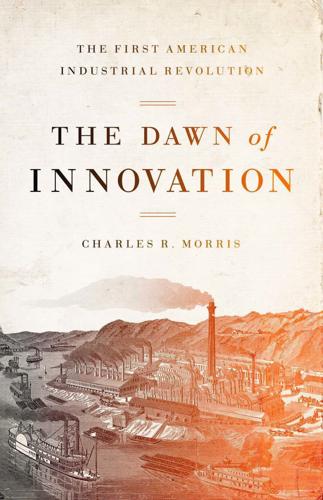
The Dawn of Innovation: The First American Industrial Revolution
by
Charles R. Morris
Published 1 Jan 2012
But a supply shock in a large nation that occurs more or less across the board implies a far-reaching increment in national capacity. A reasonable speculation is that in the United States, after the Civil War, the combined impact of a deepened national transportation network and the spreading application of mechanized, rational production methods to every kind of industry triggered new economies of scale, in both production and distribution, across a wide swath of industries. Both factory productivity and labor productivity registered a sharp jump upwards in the mid-1870s and maintained that level for the rest of the century. The jump in per capita output is consistent with the large accretion of capital in the United States in this period.
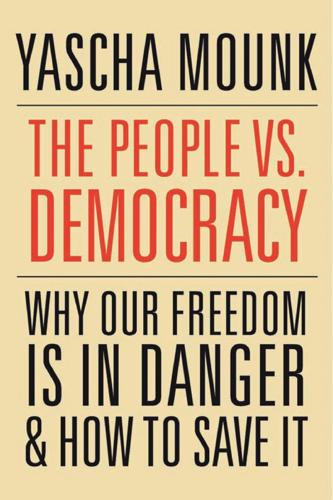
The People vs. Democracy: Why Our Freedom Is in Danger and How to Save It
by
Yascha Mounk
Published 15 Feb 2018
Buffett, “Stop Coddling the Super-Rich,” New York Times, August 14, 2011, http://www.nytimes.com/2011/08/15/opinion/stop-coddling-the-super-rich.html; and Chris Isadore, “Buffett Says He’s Still Paying Lower Tax Rate than His Secretary,” CNN Money, March 4, 2013, http://money.cnn.com/2013/03/04/news/economy/buffett-secretary-taxes/index.html. 23. For information on tax havens, see Luke Harding, “What Are the Panama Papers? A Guide to History’s Biggest Data Leak,” Guardian, April 5, 2016, https://www.theguardian.com/news/2016/apr/03/what-you-need-to-know-about-the-panama-papers; and Jane G. Gravelle, “Tax Havens: International Tax Avoidance and Evasion,” National Tax Journal 62, no. 4 (2009): 727–753.
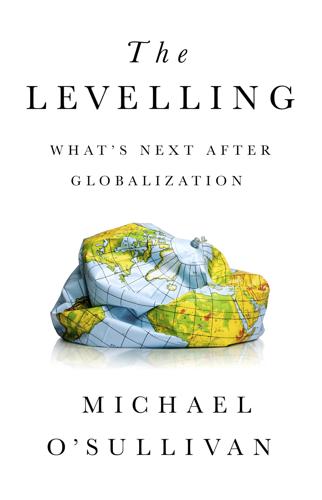
The Levelling: What’s Next After Globalization
by
Michael O’sullivan
Published 28 May 2019
Then came Europe’s turn in 2011, and its political class was slow to respond. For instance, it took five summits of EU heads to decide on measures that would stanch the financial and economic damage of the eurozone crisis. Against this backdrop, a third crisis in the near future centered on China would have a certain logic if not inevitability. Old Debt in New Economies A crisis in China’s economy would also mean that the three great regions had, with near-biblical significance, been touched by the painful implications of taking on too much risk and too much debt. As Europe and, still, parts of the US economy show, the burden of high debt levels can be severe in its impact on trend growth and on social issues.
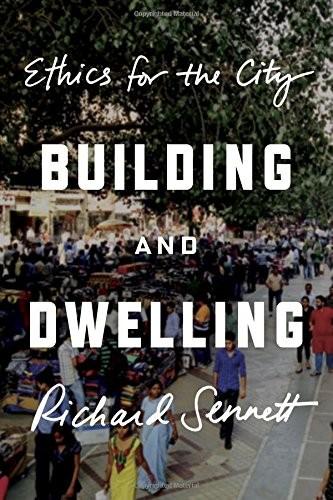
Building and Dwelling: Ethics for the City
by
Richard Sennett
Published 9 Apr 2018
Ironically for a group celebrating creativity, the look of a creative-class watering hole is instantly recognizable: large espresso machine, Parsons table, Lightolier X-50 track lighting … The Googleplex is an icon of privilege in a more personalized way. Twenty years before my New York Googleplex lookaround, I had interviewed youngsters in Silicon Valley for a book on high-tech work in the new economy. In that primal age, tech start-ups had a certain odour, a smell amalgamating stale pepperoni pizza, Diet Coke and sweaty socks; this fragrance was chilled but not dispelled in air-conditioned rooms in which nobody bothered to open the windows. There are no teeming streets in Silicon Valley, but the tech start-ups were small and, as in Nehru Place, the aspiring geniuses spent a lot of time with people in other firms, looking at what the competition was doing, occasionally cooperating and conspiring.
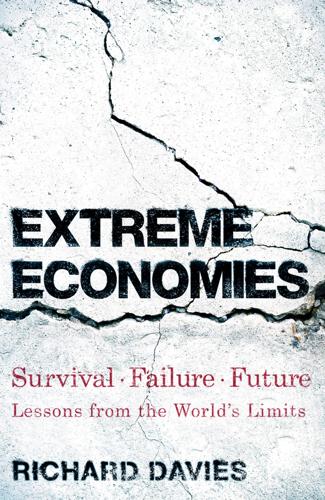
Extreme Economies: Survival, Failure, Future – Lessons From the World’s Limits
by
Richard Davies
Published 4 Sep 2019
The biggest logging firms are owned by serving politicians, and Panama now sells citizenship to anyone willing to invest $80,000 in a teak plantation. For many people in the land of butterflies and fish, the environment carries little weight. DARIEN’S LATEST BUCCANEERS REPUTATION MATTERS The big hope for many of the locals I met in Darien was that they could start to use their natural environment in a sustainable way and build a new economy based on eco-tourism. Marketing the region’s flora and fauna is a decent idea: it is one of the most biodiverse places on the planet, with at least 150 species of mammal, 99 native reptiles and 50 types of fish. The bird life – there are up to 900 species, many of them unique – is unmatched on the planet.
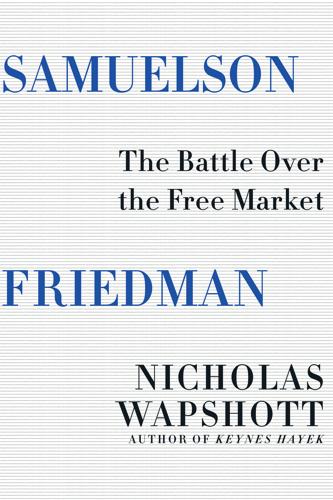
Samuelson Friedman: The Battle Over the Free Market
by
Nicholas Wapshott
Published 2 Aug 2021
Alan Goldsborough, in a cross-examination of Federal Reserve governor Marriner Eccles in a meeting of the House Committee on Banking and Currency. Eccles: “Under present circumstances there is very little, if anything, that can be done.” Goldsborough: “You mean you cannot push on a string.” Eccles: “That is a good way to put it.” 21.Owen Ullmann interview with Milton Friedman, “So, What’s New? The ‘New Economy’ Looks Like the Same Old Economy to the Nobel Laureate, Milton Friedman,” International Economy, March/April 2001, pp. 14–17. 22.Samuelson, Economics, 1st ed. (1948), p. 277. 23.Quoted on CBS 60 Minutes. https://www.cbsnews.com/news/bush-sought-way-to-invade-iraq/. 24.Interview with Friedman, Wall Street Journal, July 22, 2006. 25.John Hawkins interview with Friedman, Rightwingnews.com, September 15, 2003. 26.Louis Rukeyser et al. interview with Friedman, “Nobel Laureate Milton Friedman Discusses His Personal Views of How to Deal with the Economy,” Louis Rukeyser’s Wall Street, CNBC (television broadcast), September 20, 2002. 27.Nathan Gardels interview with Samuelson, New Perspectives Quarterly, January 16, 2006. 28.Ibid. 29.Ibid. 30.Alan Greenspan, “Rules vs. discretionary monetary policy” at the 15th Anniversary Conference of the Center for Economic Policy Research at Stanford University, Stanford, California, September 5, 1997. https://www.federalreserve.gov/boarddocs/Speeches/1997/19970905.htm. 31.Louis Rukeyser et al. interview with Friedman, September 20, 2002. 32.Friedman, “He has set a standard,” Wall Street Journal, January 31, 2006. 33.Ibid. 34.
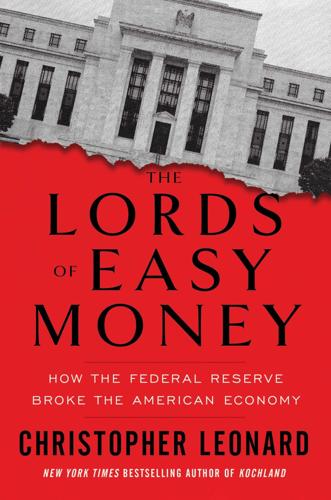
The Lords of Easy Money: How the Federal Reserve Broke the American Economy
by
Christopher Leonard
Published 11 Jan 2022
In 1999, shares of stock: Floyd Norris, “The Year in the Markets, 1999: Extraordinary Winners and More Losers,” New York Times, January 3, 2000; Chris Gaither and Dawn C. Chmielewski, “Fears of Dot-Com Crash, Version 2.0,” Los Angeles Times, July 16, 2006; David Kleinbard, “The $1.7 Trillion Dot.com Lesson,” CNNMoney, November 9, 2000; Alex Berenson, “Market Paying Price for Valuing New-Economy Hope Over Profits,” New York Times, December 21, 2000; Elizabeth Douglass, “Qualcomm Stock May Need Reality Check,” Los Angeles Times, November 18, 1999. The FOMC increased rates sharply: Gretchen Morgenson, “The Markets: Market Place; Shift in Stance by Federal Reserve Deals Blow to Wall Street,” New York Times, December 21, 2000; “Effective Federal Funds Rate,” taken from Economic Research Federal Reserve Bank of St.

The Wires of War: Technology and the Global Struggle for Power
by
Jacob Helberg
Published 11 Oct 2021
Economy in 72 Years,” Bloomberg, October 29, 2019, https://www.bloomberg.com/news/articles/2019-10-29/manufacturing-is-now-smallest-share-of-u-s-economy-in-72-years. 36 Thomas C. Mahoney and Susan Helper, “Next-Generation Supply Chains,” MForesight, July 18, 2017, http://mforesight.org/projects-events/supply-chains/. 37 Heather Long, “U.S. has lost 5 million manufacturing jobs since 2000,” CNN Business, March 29, 2016, https://money.cnn.com/2016/03/29/news/economy/us-manufacturing-jobs/index.html. 38 Duhigg and Bradsher, “How the U.S. Lost Out on iPhone Work.” 39 Jon Chavez, “Major magic not enough to keep restaurant open,” Toledo Blade, July 8, 2010, https://www.toledoblade.com/local/2010/07/08/Major-magic-not-enough-to-keep-restaurant-open.html. 40 Federica Cocco, “Most US manufacturing jobs lost to technology, not trade,” Financial Times, December 2, 2016, https://www.ft.com/content/dec677c0-b7e6-11e6-ba85-95d1533d9a62. 41 Kai-Fu Lee, AI Superpowers: China, Silicon Valley, and the New World Order (New York: Houghton Mifflin Harcourt, 2018), e-book, 207. 42 Duhigg and Bradsher, “How the U.S.
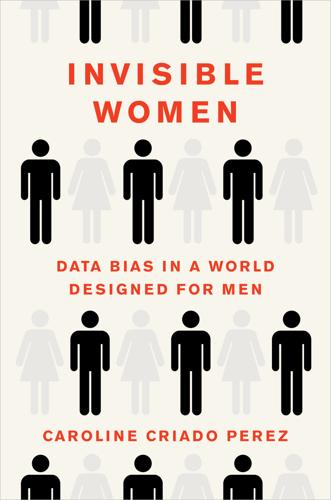
Invisible Women
by
Caroline Criado Perez
Published 12 Mar 2019
IR=T 107 https://www.elle.com/culture/career-politics/g28143/the-best-lactation-rooms-across-america/ 108 http://time.com/money/4972232/12-companies-with-the-most-luxurious-employee-perks/ 109 http://www.slate.com/blogs/xx_factor/2017/05/16/apple_s_new_head-quarters_apple_park_has_no_child_care_center_despite_costing.html 110 http://www.kff.org/other/poll-finding/kaiser-family-foundationnew-york-timescbs-news-non-employed-poll/ 111 https://www.flexjobs.com/blog/post/stats-about-remote-and-flexible-work-2017-predictions/ 112 https://www.nbcnews.com/business/business-news/why-are-big-companies-calling-their-remote-workers-back-office-n787101 113 https://timewise.co.uk/wp-content/uploads/2017/06/Timewise-Flexible-Jobs-Index-2017.pdf 114 Goldin, Claudia (2014), ‘A Grand Gender Convergence: Its Last Chapter,’ American Economic Review, American Economic Association, 104:4, 1091–119 115 https://fivethirtyeight.com/features/why-women-are-no-longer-catching-up-to-men-on-pay/ 116 European Parliament (2017), Gender Equality and Taxation in the European Union 117 http://www.undp.org/content/dam/undp/library/gender/Gender%20and%20Poverty%20Reduction/Taxation%20English.pdf 118 Schiebinger and Gilmartin (2010) 119 https://www.ft.com/content/60729d68-20bb-11e5-aa5a-398b2169cf79 120 http://www.economist.com/news/briefing/21599763-womens-lowly-status-japanese-workplace-has-barely-improved-decades-and-country 121 http://stats.oecd.org/index.aspx?queryid=54757 122 http://money.cnn.com/2016/10/16/news/economy/japan-companies-women-careers-nissan/index.html 123 http://www.economist.com/news/briefing/21599763-womens-lowly-status-japanese-workplace-has-barely-improved-decades-and-country 124 https://www.oecd.org/japan/japan-improving-the-labour-market-outcomes-of-women.pdf 125 https://ec.europa.eu/research/science-society/document_library/pdf_06/structural-changes-final-report_en.pdf 126 https://www.theatlantic.com/sexes/archive/2013/07/for-female-scientists-theres-no-good-time-to-have-children/278165/ 127 https://work.qz.com/1156034/nobel-prize-winner-christiane-nussleinvolhard-is-helping-women-scientists-pay-to-outsource-household-chores/ 128 http://genderpolicyreport.umn.edu/tax-proposals-a-missed-opportunityfor-addressing-implicit-gender-bias/; European Parliament (2017), Gender Equality and Taxation in the European Union 129 https://www.irs.gov/businesses/small-businesses-self-employed/deducting-business-expenses 130 http://fortune.com/2016/07/23/expense-policies-hurt-women/ 131 https://www.gingerbread.org.uk/policy-campaigns/publications-index/statistics/ 132 https://singlemotherguide.com/single-mother-statistics/ 133 Fawcett Society (2017), Does Local Government Work for Women?
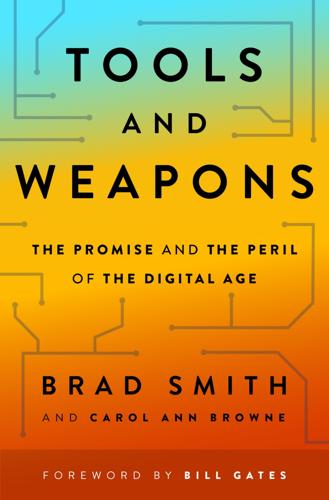
Tools and Weapons: The Promise and the Peril of the Digital Age
by
Brad Smith
and
Carol Ann Browne
Published 9 Sep 2019
And even if these rural communities were connected, the electric companies assumed American farmers, who had been particularly hard hit by the Depression, would never be able to pay for the monthly service. This lack of electricity not only denied farmers the convenience and comfort of the modern age, it also shut them out of the nation’s economic recovery. Those eager to plug into the nation’s new economy had to pay private electric companies exorbitant fees to stretch lines to their land. In Pennsylvania, John Earl George was told he’d have to pay $471 to the Pennsylvania Electric Company to extend a line 1,100 feet to his home in rural Derry Township. In 1939, $471 was the average annual wage in rural Pennsylvania.26 In the end, REA supported 417 cooperatives across the country, serving 288,000 households,27 and it sent Louisan and the electric circus on a four-year nationwide tour to teach farmers how to get the most from this new technology.

When Einstein Walked With Gödel: Excursions to the Edge of Thought
by
Jim Holt
Published 14 May 2018
Perhaps too much time was wasted in training employees to use computers; perhaps the sorts of activities that computers make more efficient, like word processing, don’t really add all that much to productivity; perhaps information becomes less valuable when it’s more widely available. Whatever the case, it wasn’t until the late 1990s that some of the productivity gains promised by the computer-driven “new economy” began to show up—in the United States, at any rate. So far, Europe appears to have missed out on them. The other way computers could benefit us is more direct. They might make us smarter, or even happier. They promise to bring us such primary goods as pleasure, friendship, sex, and knowledge.
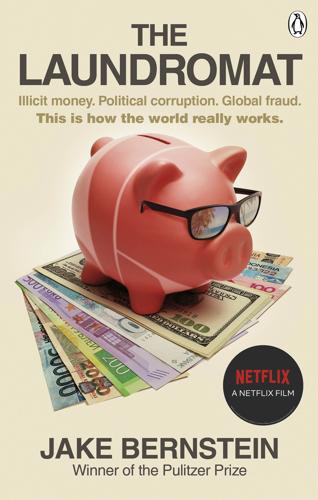
The Laundromat : Inside the Panama Papers, Illicit Money Networks, and the Global Elite
by
Jake Bernstein
Published 14 Oct 2019
Trillions of dollars left China, a fact easily ignored since an exponentially larger amount of foreign direct investment was flowing into the country.2 The offshore system also provided a convenient way for the newly wealthy to hide their money and disguise the receipt of illegal payments. Many of the winners in China’s new economy were connected to government officials. Among the most powerful were the so-called princelings, the children of China’s Communist elite, part of what has become known as the “Red Nobility” for those connected by blood or marriage to the country’s leadership, past and present. China does not require officials to disclose their assets publicly.
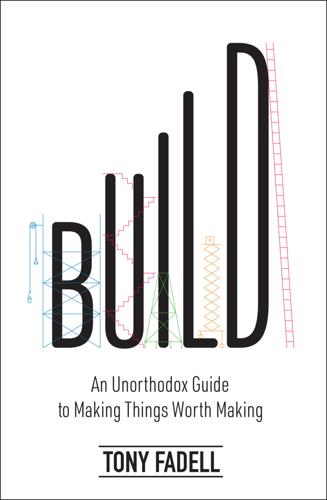
Build: An Unorthodox Guide to Making Things Worth Making
by
Tony Fadell
Published 2 May 2022
If everything aligns, if the timing is right, if you get incredibly lucky, you’ll fight to create a product you believe in, that has so much of you and your team bottled inside it, and it will sell. It will spread. It won’t just solve your customers’ pain points; it will give them superpowers. If you make something truly disruptive, truly impactful, it will take on a life of its own. It will create new economies, new ways of interacting, new ways of living. Even if your product doesn’t change the whole world, even if it has a modest scope and a smaller audience, it can still change an industry. Do something different. Shift customer expectations. Set the standard higher. It can make a market, a whole ecosystem, better.
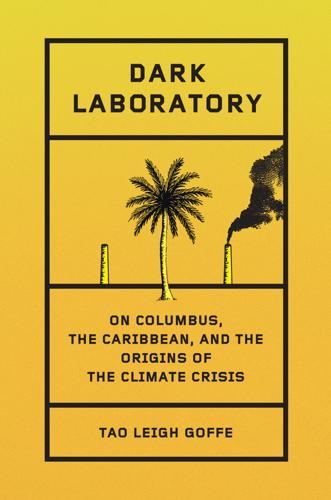
Dark Laboratory: On Columbus, the Caribbean, and the Origins of the Climate Crisis
by
Tao Leigh. Goffe
Published 14 Mar 2025
Laborers, clad in luminescent hard hats, wore masks or scarfs loosely over their noses and mouths. They looked like henchmen from the 1962 James Bond film Dr. No. Our guide glibly related that Montserratians had been ready for Covid from 1995, having worn N95 and respirator masks since then. Sand mining, a new economy heralded as the economic savior, has blurred the distinction between debris and the sedimented ash. We already know the consequences of this toxic inhalation. Some of the workers loosely cover their mouths with bandanas; others have decided that it might not make a difference, considering how much dust they inhale daily.

These Strange New Minds: How AI Learned to Talk and What It Means
by
Christopher Summerfield
Published 11 Mar 2025
Will a future AI be purely digital, living in your phone, or will it be embodied, like a sort of robotic butler gliding silently around your house? What will it be empowered to do – will it just give you advice, or autonomously take actions on your behalf? What sort of relationship will it have with you – what will the social boundaries be? How will AI systems interact with each other, and what sort of parallel new economy will this create? These questions have already provoked endless speculation among AI researchers, social scientists, philosophers, and everyone in between. But there is, of course, one thing of which we can be certain. The form factor for future AI will be shaped by whatever opportunities exist to monetize the emerging technology.

The Rise and Fall of American Growth: The U.S. Standard of Living Since the Civil War (The Princeton Economic History of the Western World)
by
Robert J. Gordon
Published 12 Jan 2016
I was skeptical, however, that the inventions of the computer age would turn out to be as important for long-run economic growth as electricity, the internal combustion engine, and the other “great inventions” of the late nineteenth century. My skepticism took the form of an article, also published in 2000, titled “Does the ‘New Economy’ Measure Up to the Great Inventions of the Past?” That paper pulled together the many dimensions of invention in the late nineteenth century and compared them systematically to the dot.com revolution of the 1990s. Thus was born Part I of this book with its analysis of how the great inventions changed everyday life.
…
It was there that I discovered Otto Bettmann’s little known but classic book The Bad Old Days: They Were Really Terrible, full of illustrations of the perils of nineteenth century life, from locomotive boilers blowing up to milk being diluted with water and chalk. Bettmann’s book more than any other source was the inspiration for my 2000 article, “Does the New Economy Measure Up to the Great Inventions of the Past?” In turn, the idea of extending the theme of the great inventions into a book-length project was first suggested to me by David Warsh, a distinguished journalist who specializes in keeping track of the economics profession and its evolving ideas, and by Seth Ditchk, economics editor of the Princeton University Press (hereafter PUP).

The Quest: Energy, Security, and the Remaking of the Modern World
by
Daniel Yergin
Published 14 May 2011
New cars sales in the United States were plummeting.16 “OIL DOT-COM” A few contrarian voices on Wall Street warned that these prices had become seriously divorced from reality. Edward Morse, a veteran analyst, in a paper titled “Oil Dot-com,” wrote: “As during the dotcom period, when ‘new economy’ stocks became popular, a growing band of Wall Street analysts who are significantly raising” their forecasts were “partially responsible for new investor flows, driving... prices to perhaps unsustainable levels.” He continued: “We are seeing the classic ingredients of an asset bubble. Financial investors tend to ‘herd’ and chase past performance....
…
It took a long prospectus—384 pages—to spell out all the risks.1 For their part, the international investors in the United States and Britain, and even those closer to China, in Singapore and Hong Kong, were skeptical. They worried about the China risk—uncertainty about the political stability and economic growth of the country. Also, this was an oil company at a time when the new economy—the Internet and Internet stocks—was booming. By contrast, the oil business was seen as quintessential old economy—stagnant, uninteresting, and stuck in what was thought to be the doldrums of permanent overcapacity and low prices. As 2000 began, the appetite of global investors appeared tepid.

In Europe
by
Geert Mak
Published 15 Sep 2004
The mother looked hopefully at the foreign guests: perhaps they would let themselves be seduced by their daughters and pay for it, in dollars, of course.’ At the same time, many people became exceedingly rich during this same period, particularly if they were young and good at playing the money markets. Part of the city's youth lived in a world that somewhat resembles that of the New Economy bubble of the late 1990s; school parties flooded with champagne, twenty-year-old millionaires supporting their parents. While the ‘old rich’ had saved their money, the ‘new rich’ spent theirs as fast as possible. That turned the world completely upside down. The old Germany, after all, had been a culture of the frugal.
…
But he has quite a few people working for him, it's a real company. His employees don't declare their earnings either. And they still live in their old Soviet apartments, which cost next to nothing. Almost everything they earn is disposable income. We estimate that approximately a fifth of the Russian population, about thirty million people, profit from this new economy in one way or another. Of course, that still leaves you with 120 million others.’ Chapter SIXTY-TWO Chernobyl THE COLD HOLDS NO SECRETS FOR THE RUSSIAN RAILWAYS. UPSY-DAISY, scoop a little more coal into the furnace and the train compartments turn into cozy living rooms, the corridors into warm loggias, the passengers eat and drink, someone sings a tune, and meanwhile the Moscow-Kiev Express barrels on through the moonlit night.
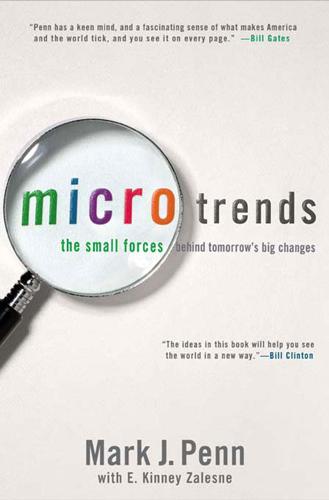
Microtrends: The Small Forces Behind Tomorrow's Big Changes
by
Mark Penn
and
E. Kinney Zalesne
Published 5 Sep 2007
In 1995, when I was working with President Clinton, Pat Buchanan got on the cover of TIME and Newsweek trumpeting the ideas that the economy was going down the tubes and no new good jobs were being created. We were becoming a nation of hamburger-flippers, he said, to nodding journalists. I asked the head of the White House Council of Economic Advisers to look into it, and he found that people actually were getting good New Economy jobs, led by the software sector. In his 1996 State of the Union speech, President Clinton said we had the best economy in thirty years—a statement that sent a flurry of reporters to check actual statistics rather than popular political movements and sweeping, politically motivated statements. The more people looked at the facts, the more they agreed, and six months later, there was near-unanimity that the economy was in great shape.
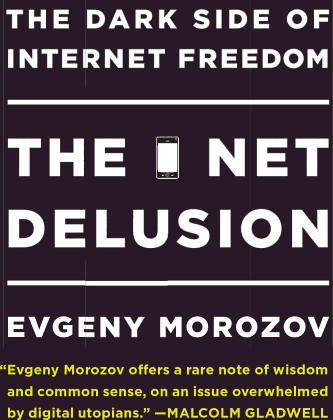
The Net Delusion: The Dark Side of Internet Freedom
by
Evgeny Morozov
Published 16 Nov 2010
Understanding how exactly various stakeholders—citizens, policymakers, foundations, journalists—can influence the way in which technology’s political future unfolds is a quintessential question facing any democracy. More than just politics lies beyond the scope of technological analysis; human nature is also outside its grasp. Proclaiming that societies have entered a new age and embraced a new economy does not automatically make human nature any more malleable, nor does it necessarily lead to universal respect for humanist values. People still lust for power and recognition, regardless of whether they accumulate it by running for office or collecting Facebook friends. As James Carey, the Columbia University media scholar, put it: “The ‘new’ man and woman of the ‘new age’ strikes one as the same mixture of greed, pride, arrogance and hostility that we encounter in both history and experience.”
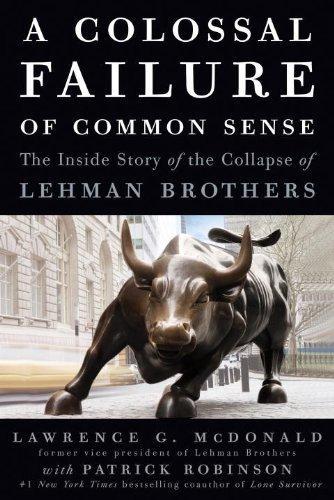
A Colossal Failure of Common Sense: The Inside Story of the Collapse of Lehman Brothers
by
Lawrence G. Mcdonald
and
Patrick Robinson
Published 21 Jul 2009
“Most of ’em have never earned a nickel, their P/E ratios are insane, and I am just waiting for the crash. You got a lick of sense, you’ll start shorting them.” I always used to protest about this. Always argued how different things were today and what a revolutionary time this was. “This is the new economy,” I told him. “Not so,” he once replied. “It’s just the same as the old one. And the same rules apply. And right now we seem to have about seven thousand dot-coms when the world probably needs about two hundred.” He’d been reading some report that claimed shopping malls were darn near obsolete.
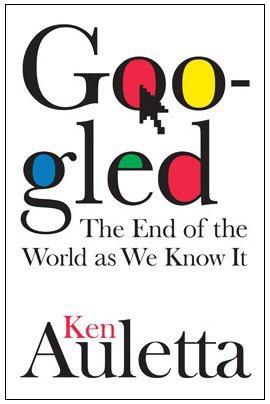
Googled: The End of the World as We Know It
by
Ken Auletta
Published 1 Jan 2009
“We can’t trade today’s analog dollars for digital pennies.” Zucker’s dollars-for-pennies claim is “not the right way to look at it,” said David Rosenblatt, Google’s then president, global display advertising, and the former CEO of DoubleClick. “That implies that the preservation of your existing business is more important than understanding what the new economy will be. My great-grandfather was in the ostrich-feather business. He went out of business in the early part of the twentieth century because ostrich feathers, which women wore attached to their hats and had worked well in carriages, no longer fit into automobiles. He could have said, ‘I need to find smaller feathers to preserve my business.’”
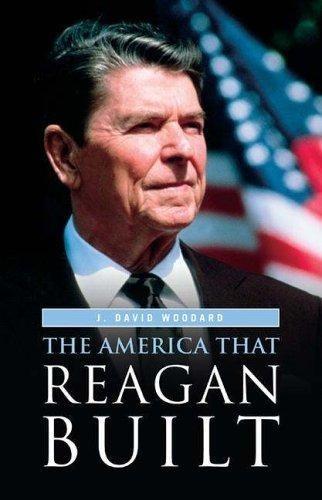
The America That Reagan Built
by
J. David Woodard
Published 15 Mar 2006
In 1996, the property tax roll in Santa Clara County increased by $5.2 billion; the next year those figures doubled, and they doubled again in 1998.2 The NASDAQ Composite Index of technology shares was at 500 in April 1991, at 1,000 in July 1995, surpassed 2,000 in July 1998, and soared to over 5,000 in March 2000. A bust would follow, but for a decade the ride took investors to dizzying heights. The stock market followed suit, and consumer confidence exploded. The new economy produced jobs, and no one knew the limit because the technology changed so fast. The so-called dot.com companies like Sun, SGI, Cisco, 3 Com, Netscape, and Yahoo pulled the American economy forward. By 1994, unemployment fell below 6 percent, and by April 2000 it was below 4 percent for the first time in three decades.3 The rich entrepreneurs gathered in the largest gains, of course, but everyone seemed to be better off.
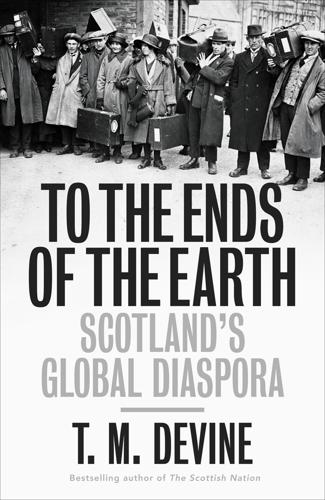
To the Ends of the Earth: Scotland's Global Diaspora, 1750-2010
by
T M Devine
Published 25 Aug 2011
The rural districts of Scotland were especially targeted because of their historic links with Canada and the country’s reputation for experienced farmers and skilled agricultural workers.44 Yet, even the revolution of communications and information would have been insufficient if it had not been for the gargantuan increase in demand from the industrializing countries of Europe for the raw materials and food produce of the new lands. It was the explosion in the export of timber, wool, mutton, cotton and other staples to feed the industries and rising populations of Europe which powered the new economies and so made them increasingly attractive places in which to settle and work. The transformation was fuelled by the massive export of capital from Britain after c.1850, a process in which Scotland had a leading part (see Chapter 11). Between 1865 and 1914, the UK invested over $5 billion in the USA alone, facilitating the construction of railways, the reclaiming of land and the building of towns without which large-scale settlement from the Old World would have been impossible.
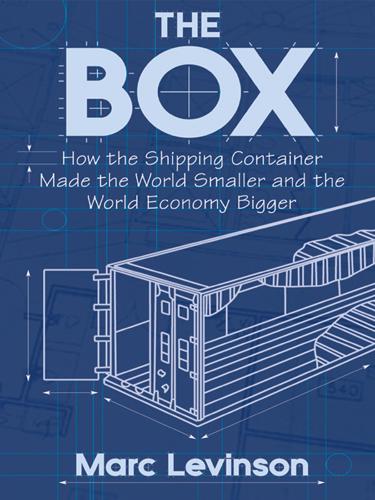
The Box: How the Shipping Container Made the World Smaller and the World Economy Bigger
by
Marc Levinson
Published 1 Jan 2006
Manufacturing was almost universally regarded as the bedrock of a healthy local economy in the 1960s, and much of the value of a port, aside from jobs on the docks, was that transportation-conscious manufacturers would locate nearby. As early as 1966, though, public officials in Seattle were sensing that their remote city, with little industry, might be able to develop a new economy based on distribution rather than on factories. The lack of population close at hand would be no obstacle; Seattle could become not merely a local port for western Washington but the center of a distribution network stretching from Asia to the U.S. Midwest. “Commodity distribution has grown out of the dependent sector to link production and consumption,” port planner Ting-Li Cho wrote presciently.
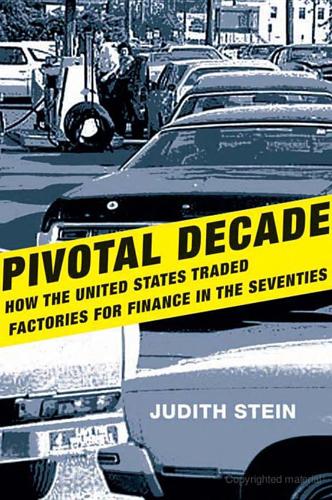
Pivotal Decade: How the United States Traded Factories for Finance in the Seventies
by
Judith Stein
Published 30 Apr 2010
The president’s victory was built on the improvement of the economy and the hubris of the Gingrich Republicans but did nothing to dislodge the Reagan ideology of tax cuts, deregulation, and free trade. The only item that Clinton added was the idea of deficit reduction, which the Gingrich Republicans converted to a mandatory balanced budget. NEW ECONOMY? The president had accepted Gingrich’s goal of a balanced budget in seven years, but he and the speaker sharply disagreed about how to get there. The booming economy and declining health care costs saved the day. The Dow rose from 3400, when Clinton took office, to over 10,000, levitated by the high-flying NASDAQ, the home of Microsoft, Intel, and numerous wannabes.
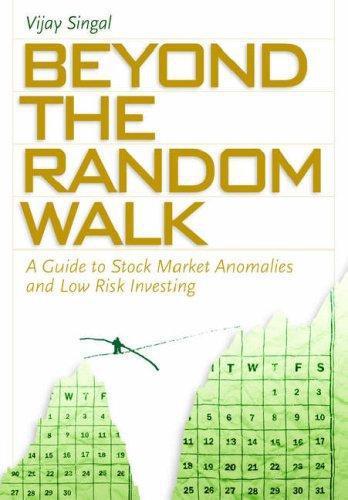
Beyond the Random Walk: A Guide to Stock Market Anomalies and Low Risk Investing
by
Vijay Singal
Published 15 Jun 2004
Arbitrageurs who took short positions in Internet stocks in 1998 or 1999 on the belief that the stocks were overvalued would have been wiped out before the prices eventually fell. In fact, many short sellers went bankrupt in the late 1990s 5 6 Beyond the Random Walk due to the ascent of the stock market. Even Warren Buffett, whom many regard as a smart investor, proclaimed that he had misread the new economy by not riding the technology wave. Today we know that he was correct to be skeptical of high Internet stock valuations, but at the time the prolonged period over which the mispricing seemed to persist caused him to accept defeat. Second, it is rare to find two assets with exactly the same risk.
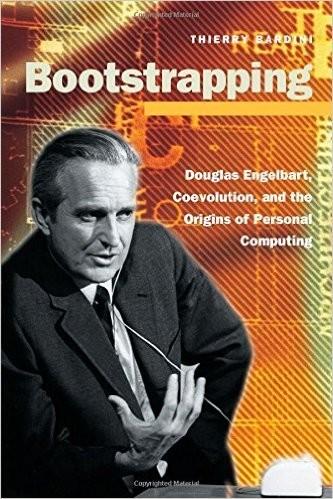
Bootstrapping: Douglas Engelbart, Coevolution, and the Origins of Personal Computing (Writing Science)
by
Thierry Bardini
Published 1 Dec 2000
Wiener found the origin of all cybernetics thinking in the realization of the machine-organism analogy on the basis of this shifting notion of time: "the modern automaton exists in the same sort of Bergsonian time as the living organism; and hence there is no reason in Bergson's consid- eration why the essential mode of functioning of the living organism could not be the same as that of the automaton of this type" (19 61 [1948],30-44). Geoffrey Bowker has said that cybernetics created a "new economy of sci- ences [that] challenged the traditional hierarchy, which reduced all knowledge epistemologically to physics" (1993, I 18). According to Bowker, by means of the creation of new "universalist" language (which he also considers as a form of "imperialist rhetoric"), with its roots in industrial and technological think- ing, "biological ideas could be imported into physics" (ibid., I 19).
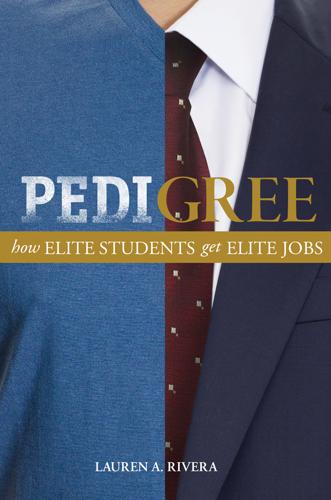
Pedigree: How Elite Students Get Elite Jobs
by
Lauren A. Rivera
Published 3 May 2015
As the video continued, more buildings appeared, though now interspersed with familiar skylines from around the world—London, Paris, Sydney: “We are a global firm.” Then, Rio, Shanghai, and Istanbul: “Emerging markets are crucial to our business.”32 Young employees spoke about traveling, the chance they were given to “see the world” and learn firsthand about the new economies that would become future stars on the international stage. In addition to being portrayed as competitive and glamorous, the work was described as fun. Much like Devin, who claimed never to have been bored by his job, employees in the video used words such as “exciting” and a “rush.” They stressed how much they were “learning every day.”
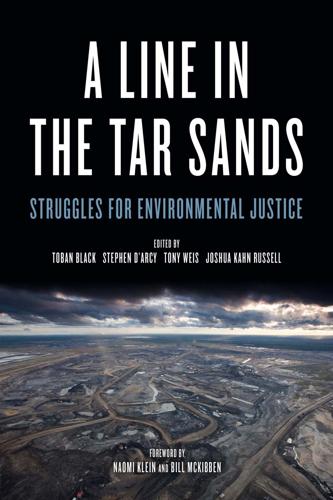
A Line in the Tar Sands: Struggles for Environmental Justice
by
Tony Weis
and
Joshua Kahn Russell
Published 14 Oct 2014
The climate crisis is here and now. To continue business as usual in the face of it is like ignoring the advance of an enemy army. If the labour movement is to have a future, it will have to be as part of a wider movement for a transition to sustainability. The goal of such a movement will have to be a new economy that protects the environment while it provides for the needs of the world’s people. Labour has been critical of corporate short-term thinking, maximizing profits on a quarterly basis and not looking to the future. Yet labour manifests similar short-term thinking when it comes to climate and sustainability.
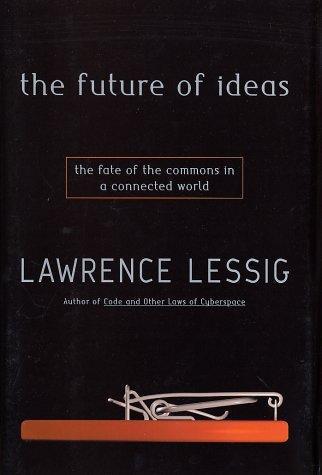
The Future of Ideas: The Fate of the Commons in a Connected World
by
Lawrence Lessig
Published 14 Jul 2001
Tomes have been written about how far it should extend in law. But my aim is to push its embrace in the context of creativity. In this domain, at least, our presumption should be libertarian. And we should build that presumption into the architecture of the space. AS THE DOT.COMS crash and the pundits ask whether there was anything really new in the new economy of the Internet, it is useful to frame just what this new space has given us so far. That is my aim in the balance of this chapter. I want to show how we already have something new, or at least originally did. My hope is to link instances of innovation to changes in the layers of control that the Internet effected.
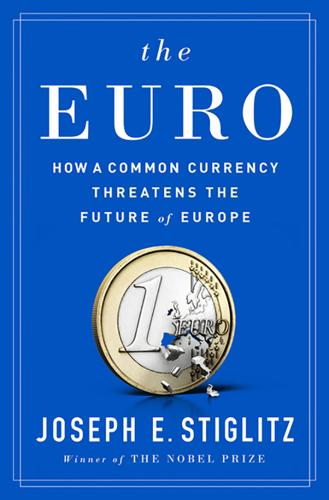
The Euro: How a Common Currency Threatens the Future of Europe
by
Joseph E. Stiglitz
and
Alex Hyde-White
Published 24 Oct 2016
It pulled people out of the rural sector to fight the war, and to urban areas to make armaments required for the war. After the war, the government provided free higher education to all who had fought (which was essentially every young person)—to ensure that they had the skills required for the “new economy.” In the last half-century, the US government has once more played a central role, with its major investments in technology.18 But again as we saw in chapter 5, the kinds of industrial policies that have worked so well around the world19 are largely precluded within the eurozone; and the austerity measures imposed by the Troika have forced a scaling back in public expenditures that might have facilitated such a structural transformation.
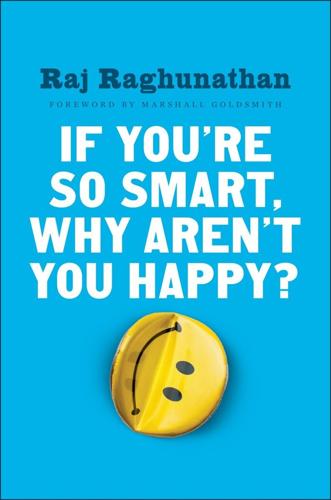
If You're So Smart, Why Aren't You Happy?
by
Raj Raghunathan
Published 25 Apr 2016
As a result, firms exhibited the types of behaviors—hypercompetition, lack of trust, Machiavellianism—that are associated with a scarcity orientation. While the firms that exhibited these types of scarcity-oriented behaviors may have been more likely to survive in the old economy, it appears that firms that exhibit a different—more abundance-oriented—type of behavior are likely to thrive in the emerging new economy. Sisodia and his coauthors find, for example, that in the period between 1992 and 2012, firms that exhibited conscious business practices—such as taking a “multiple-stakeholder” view that improves everyone’s well-being and not just the company’s profits—made a whopping 110 percent more profits than those that did not exhibit these practices!
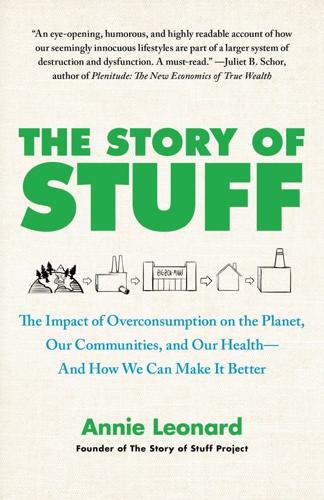
The Story of Stuff: The Impact of Overconsumption on the Planet, Our Communities, and Our Health-And How We Can Make It Better
by
Annie Leonard
Published 22 Feb 2011
Interview with Dara O’Rourke, April 2009. 50. Göransson, Jönsson, and Persson, “Extreme Business Models,” p. 55. 51. Interview with Dara O’Rourke, April 2009. 52. Larenaudie, “Inside the H&M Fashion Machine.” 53. Keisha Lamothe, “Online retail spending surges in 2006,” CNNMoney.com, January 4, 2007 (money.cnn.com/2007/01/04/news/economy/ online_sales/?postversion=2007010410). 54. Stacy Mitchell, Big-Box Swindle: The True Cost of Mega-Retailers and the Fight for America’s Independent Businesses (Boston: Beacon Press, 2007), p. 12. 55. Speech by Jeff Bezos at MIT, November 25, 2002 (mitworld.mit.edu/video/1/). 56. Ibid. 57.
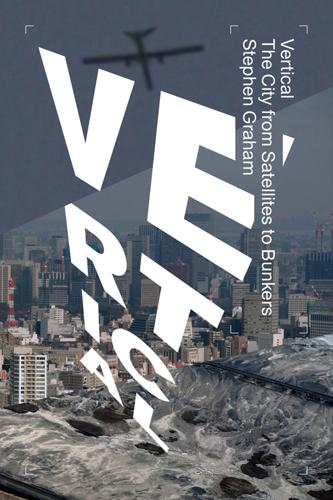
Vertical: The City From Satellites to Bunkers
by
Stephen Graham
Published 8 Nov 2016
Social and architectural theorist Ben Bratton has drawn close parallels between the operation of al-Qaeda as a kind of ‘transnational firm’ or ‘figurative corporation’ bent on what he calls architectural ‘destructural works’ and Osama bin Laden’s father’s immense construction conglomerate.66 ‘It is not surprising’, Bratton writes, ‘that this New Economy transnational firm [al-Qaeda] would be led by the son of one of the most powerful public works engineers in all of Saudi Arabia, of the man who literally built that kingdom, and would subcontract urban planners, like Mohammed Atta, to carry out its plans.’ Reflecting on such a situation, he continues, ‘it’s not just fitting skills to tasks, nor ironic coincidence, it is a spiritual politics of space.’67 And yet, as we saw with our earlier discussion of the construction of the World Trade Center, the profound parallels between skyscraper construction and skyscraper terrorism run deeper still.
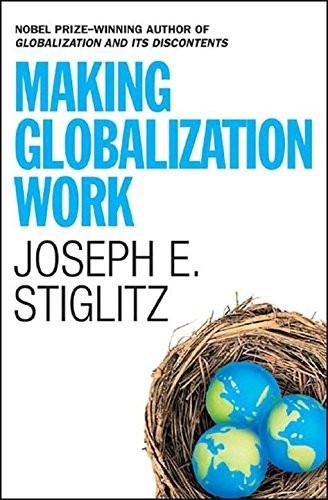
Making Globalization Work
by
Joseph E. Stiglitz
Published 16 Sep 2006
I remember in the late 1990s, when there had not been an economic recession in America for longer than the usual four years that separates one recession from the next, even Alan Greenspan, chairman of the U.S. Federal Reserve Board, seemed to boast we had entered into a new era. New technology had led to a new economy in which recessions were a thing of the past. But no sooner had these ideas become widely accepted than the U.S. economy sank into the recession of 2001. So, too, today in the global economy: the fact that there has not been a crisis for several years does not mean all is well with the global economy.
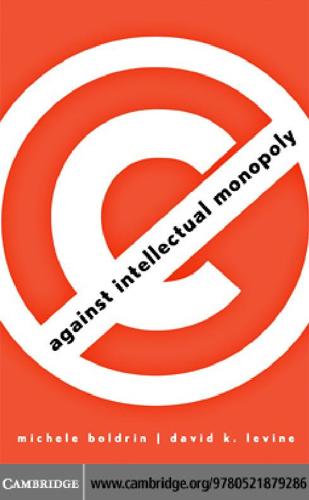
Against Intellectual Monopoly
by
Michele Boldrin
and
David K. Levine
Published 6 Jul 2008
Even Schumpeter himself admitted, “It is certainly as conceivable that an all-pervading cartel system might sabotage all progress as it is that it might realize, with smaller social and private costs, all that perfect competition is supposed to realize.”32 The Idea Economy It is often suggested that ideas are becoming increasingly important as a component of the economy. Pundits and academics alike theorize about the new economy, the weightless economy, the global information economy, and so forth. They cast images of a world where machines, besides reproducing themselves, produce all kinds of material goods and services as well, while humans engage in creative activities and in the exchange of ideas. Although this sounds fascinating, like every utopia, it is mostly a pipedream: any reader of Karl Marx’s Grundrisse would recognize his P1: KNP head margin: 1/2 gutter margin: 7/8 CUUS245-07 cuus245 978 0 521 87928 6 May 21, 2008 16:55 172 Against Intellectual Monopoly description of communism to match closely that of an idea economy.33 The question is, which kind of institutional arrangements are advocated for travel to these gardens of utopia, and are the flowers of such gardens as enchanting as their advocates tell us?
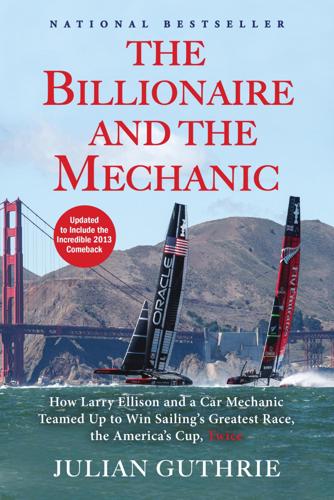
The Billionaire and the Mechanic: How Larry Ellison and a Car Mechanic Teamed Up to Win Sailing's Greatest Race, the Americas Cup, Twice
by
Julian Guthrie
Published 31 Mar 2014
Webvan, the Foster City–based grocery home-delivery service created by executives who had no experience in supermarkets—yet attracted funding from companies including Goldman Sachs, Benchmark Capital, Sequioa Capital, and Yahoo—filed for bankruptcy in 2001 after burning through hundreds of millions of dollars to buy a fleet of trucks, build automated warehouses, and expand aggressively nationwide. “The bubble went on and on and my confidence was beginning to waver,” Larry said. He had begun to think perhaps he was wrong: Maybe profits didn’t mean a thing. Maybe it was all clicks and eyeballs and maybe he should retire. “The companies were saying it was a new economy, that making money wasn’t the thing,” Larry said to Catz. “The bubble was kind of group insanity. I would hear, ‘Yes, but don’t you love the Webvan idea?’ As a customer, sure, I love it. I especially love that John Doerr and Kleiner Perkins are subsidizing my salad, but the company will never make money.”
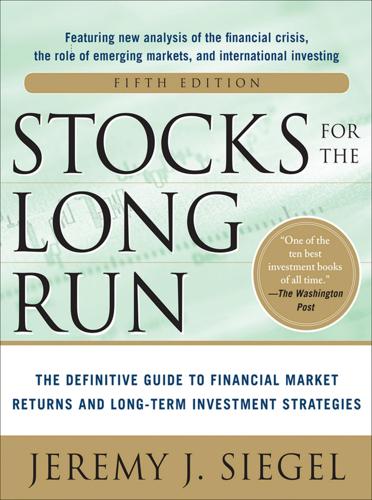
Stocks for the Long Run 5/E: the Definitive Guide to Financial Market Returns & Long-Term Investment Strategies
by
Jeremy Siegel
Published 7 Jan 2014
He said the experts think the Internet is the wave of the future. I’m selling some of our stocks that just aren’t moving, and then I’m getting into the Internet stocks like AOL, Yahoo!, and Inktomi. Jennifer: I’ve heard that those stocks are very speculative. Are you sure you know what you’re doing? Dave: Allan says that we are entering a “New Economy,” spurred by a communications revolution that is going to completely change the way we do business. Those stocks that we owned are Old Economy stocks. They had their day, but we should be investing for the future. I know these Internet stocks are volatile, and I’ll watch them very carefully so we won’t lose money.

Water: A Biography
by
Giulio Boccaletti
Published 13 Sep 2021
It was also testament to the new role that public finance would have to play in engineering the modern landscape. The project was expensive. Its financing stretched the resources of all involved and had to be pieced together from multiple sources: a third was financed with a gift from the emperor, a quarter from the central government, while the remainder was to be raised by local taxation. The new economy, powered by rivers and canals, and with its need for collective commitments, set the stage for a new politics of water. The Power of Rivers Spreads On the other side of the Pacific, American leaders of the Progressive Era embraced hydropower with a passion. With regulation after regulation, they promoted the development of American rivers for electricity production.
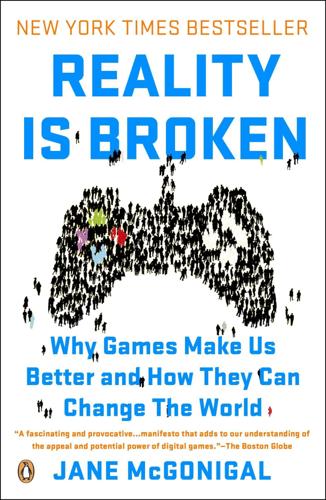
Reality Is Broken: Why Games Make Us Better and How They Can Change the World
by
Jane McGonigal
Published 20 Jan 2011
We need a more sustainable engagement economy—an economy that works by motivating and rewarding participants with intrinsic rewards, and not more lucrative compensation. So if not money or prizes, then what will most likely emerge as the most powerful currency in the crowdsourcing economy? I believe that emotions will drive this new economy. Positive emotions are the ultimate reward for participation. And we are already hardwired to produce all the rewards we could ever want—through positive activity, positive achievements, and positive relationships. It’s an infinitely renewable source of incentive to participate in big crowd projects.
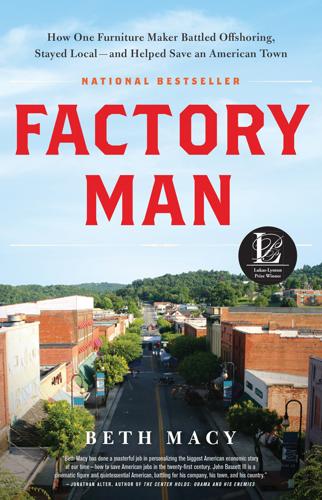
Factory Man: How One Furniture Maker Battled Offshoring, Stayed Local - and Helped Save an American Town
by
Beth Macy
Published 14 Jul 2014
Displaced factory workers not faring well: Based on the work of economist Lori Kletzer of the University of California, Santa Cruz, published in “Globalization and Its Impact On American Workers,” University of California, Santa Cruz, and Peterson Institute for International Economics, written as pre-conference paper, “Labor in the New Economy,” May 2007 (revised). Workers pledge support of antidumping petition: Denise Becker, “Workers Rally in Fight Against Chinese Imports,” Greensboro News and Record, July 30, 2003. Paul Toms’s initial support of petition: Denise Becker, “Furniture Industry Looking to D.C.,” Greensboro News and Record, July 16, 2003.

Servants: A Downstairs History of Britain From the Nineteenth Century to Modern Times
by
Lucy Lethbridge
Published 18 Nov 2013
They were resolutely unsympathetic to the ‘self-conscious revivals of peasant arts which are now being recommended to the poor by a certain type of philanthropist’, wrote Sturt.5 The greatest visible change in the Bourne during the early years of the twentieth century was the proliferation of suburban villas that had sprung up on the edge of the village. In the new economy of rural life, it was very often the new villa on which village livelihoods now depended. These middle-class households had gardens that needed tending and ‘even the cheaper villas . . . need their cheap drudges’. Other traditional sources of income were increasingly insecure: machinery was gradually replacing labourers; large laundries were replacing washerwomen working at home.
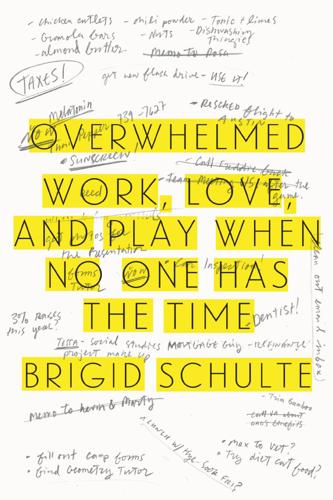
Overwhelmed: Work, Love, and Play When No One Has the Time
by
Brigid Schulte
Published 11 Mar 2014
* * * About the time I was exploring the roots of the overwhelm at work, Facebook COO Sheryl Sandberg made a splash by admitting she left the office at 5:30 to be home for dinner with her two children. I’d heard about high-tech firms’ famous flexible work styles—one former Google exec told me people could work from a beach in Hawaii as long as work got done on time. Sandberg’s confession seemed a hopeful sign that perhaps the new economy jobs of Silicon Valley were liberated from the grip of the ideal worker. Could Silicon Valley, I wondered, lead the way for the rest of the work world? It took less than a day of reporting to come to this disappointing conclusion: God, I hope not. The young, testosterone-fueled geek culture has revved up the ideal worker standard to a superhuman level.
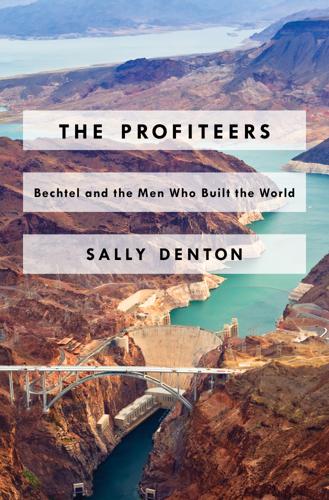
The Profiteers
by
Sally Denton
All of that came on the heels of the dot-com crash, which resulted in Bechtel writing off $200 million in bad investments, wiping out a third of the company’s net worth. “One of the most tightly controlled and conservatively managed companies in the world, Bechtel fell head over heels for the same new-economy sirens that created Enron and the dot-com debacle,” wrote King and McCoy. Still, Riley seemed oblivious to the disastrous turn of events and continued the full support of his protégé Unruh. But by late 2002, Riley could no longer disguise or hide the precariousness of the situation, and in November the company cut the value of its stock by a quarter—setting off alarms among some fifty management partners who owned 60 percent of the company’s shares.

Twitter and Tear Gas: The Power and Fragility of Networked Protest
by
Zeynep Tufekci
Published 14 May 2017
Klein and Daniel Lee Kleinman, “The Social Construction of Technology: Structural Considerations,” Science, Technology and Human Values 27, no. 1 (2002): 28–52. 24. Massimo Ragnedda and Glenn W. Muschert, The Digital Divide: The Internet and Social Inequality in International Perspective (New York: Routledge, 2013); Eszter Hargittai, “The Digital Divide and What to Do about It,” in New Economy Handbook, ed. Derek C. Jones (San Diego: Academic Press, 2003), 821–39. 25. John Perry Barlow, “A Cyberspace Independence Declaration,” 1996, https://w2.eff.org/Censorship/Internet_censorship_bills/barlow_0296.declaration. 26. In fact, “exclusion” in a digital world implies a whole host of differences from living in a predigital one where nobody was included.

Jihad vs. McWorld: Terrorism's Challenge to Democracy
by
Benjamin Barber
Published 20 Apr 2010
The ancient capitalist economy in which products are manufactured and sold for profit to meet the demand of consumers who make their unmediated needs known through the market is gradually yielding to a postmodern capitalist economy in which needs are manufactured to meet the supply of producers who make their unmediated products marketable through promotion, spin, packaging, and advertising. Whereas the old economy, mirroring hard power, dealt in hard goods aimed at the body, the new economy, mirroring soft power, depends on soft services aimed at the mind and spirit (or aimed at undoing the mind and spirit). This wedding of telecommunications technologies with information and entertainment software can be called for short the infotainment telesector. The goods sector is captured by the infotainment telesector, whose object is nothing less than the human soul.
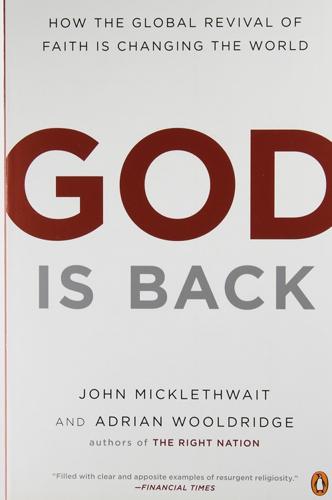
God Is Back: How the Global Revival of Faith Is Changing the World
by
John Micklethwait
and
Adrian Wooldridge
Published 31 Mar 2009
The church pockets a staggering $1.6 billion in membership fees, collected by the state through the tax system. It has been rare for Swedes to opt out, though that seems to be changing. In Denmark 83 percent of the population is officially linked to the Folkekirke (people’s church); fewer than 2 percent attend church regularly.53 Alongside this old religious economy, a new economy, based on personal choice, is growing. Together Evangelicals, charismatics and Pentecostals accounted for 8.2 percent of Europe’s population in 2000, nearly double the proportion in 1970, according to the World Christian Encyclopedia. Pentecostalism is France’s fastest-growing religion. London’s immigrant-packed East End is thought to have twice as many Pentecostal congregations as Church of England ones.

Who Owns England?: How We Lost Our Green and Pleasant Land, and How to Take It Back
by
Guy Shrubsole
Published 1 May 2019
Title Land (acres) Farm subsidies 1873 2001 Total 2015 Single area payments Duke of Buccleuch and Queensberry 460,108 270,700 £1,643,510 £707,036 Duke of Grafton 25,773 11,000 £835,559 £495,320 Duke of Westminster 19,749 129,300 £815,805 £462,775 Duke of Devonshire 198,572 73,000 £768,623 £218,856 Duke of Beaufort 51,085 52,000 £688,097 £345,075 Duke of Bedford 86,335 23,020 £543,233 £431,163 Duke of Marlborough 23,511 11,500 £526,549 £284,468 Duke of Norfolk 49,866 46,000 £449,166 £259,605 Duke of Richmond, Lennox, and Gordon 286,411 12,000 £379,085 £253,038 Duke of Roxburghe 60,418 65,600 £361,919 £175,938 Duke of Rutland 70,137 26,000 £358,430 £314,531 Duke of Northumberland 186,397 132,200 £327,403 £133,553 Duke of Sutherland 1,358,545 12,000 £191,802 £170,419 Duke of Atholl 201,640 148,000 £172,436 £60,287 Duke of Fife (Title did not exist then) 1,500 £169,905 £144,364 Duke of Argyll 175,114 60,800 £120,097 £0 Duke of Wellington 19,116 31,700 £80,878 £66,486 Duke of Montrose 103,447 8,800 n/a n/a Duke of Somerset 25,387 2,000 n/a n/a Duke of Hamilton 157,368 12,000 n/a n/a Duke of Abercorn 78,662 15,000 n/a n/a Duke of St Albans 8,998 4,000 n/a n/a Duke of Manchester 27,312 0 n/a n/a Duke of Leinster 73,100 0 n/a n/a Totals 3,747,051 1,148,120 £8,432,497 £4,522,914 Organisations campaigning on land issues • Land Justice Network – activists’ network that advocates for land reform and organises demonstrations www.landjustice.uk • Land Workers Alliance – a grassroots union representing farmers, growers and land-based workers landworkersalliance.org.uk • Three Acres and a Cow – a travelling show telling the history of land rights and protest in folk song and story threeacresandacow.co.uk • Shared Assets – a think-and-do-tank that supports people managing land for the common good www.sharedassets.org.uk • The Land – an occasional magazine about land rights www.thelandmagazine.org.uk • Friends of the Earth – environmental campaigning group friendsoftheearth.uk • Shelter – housing and homelessness charity www.shelter.org.uk • New Economics Foundation – think tank proposing ideas for a new economy where people really take back control neweconomics.org • IPPR – centre-left think tank advocating land reform • Civitas – centre-right think tank advocating land reform • Who Owns Scotland – campaigner Andy Wightman’s fantastic maps and blog about Scottish land ownership, one of the inspirations for this book www.whoownsscotland.org.uk For more about Who Owns England, including blogs, interactive maps and tips about exploring land ownership, visit whoownsengland.org FOOTNOTES 3.
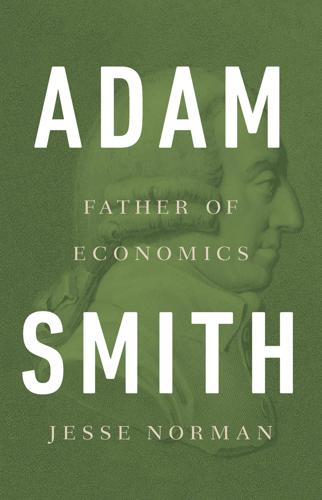
Adam Smith: Father of Economics
by
Jesse Norman
Published 30 Jun 2018
Longman 1755 Hutchison, Terence W., Before Adam Smith: The Emergence of Political Economy 1662–1776, Basil Blackwell 1988 Hutton, Will, The State We’re In, Jonathan Cape 1995 James, Oliver, Selfish Capitalism, Random House 2008 Jevons, W. S., The Theory of Political Economy, Macmillan 1888 Kaletsky, Anatole, Capitalism 4.0: The Birth of a New Economy, Bloomsbury 2010 Kay, John, Other People’s Money: Masters of the Universe or Servants of the People?, Profile Books 2015 Kay, John, The Truth about Markets: Why Some Nations are Rich but Most Remain Poor, Allen Lane 2003 Kennedy, Gavin, Adam Smith: A Moral Philosopher and his Political Economy, Palgrave Macmillan 2008 Kerr, Robert, Memoirs of the Life, Writing and Correspondence of William Smellie, John Anderson 1811 Keynes, John Maynard, Essays in Biography, W.

The Future Is Asian
by
Parag Khanna
Published 5 Feb 2019
As the Euro-Japan FTA comes into effect, more European and Japanese cars will cross the Indian Ocean, the Eurasian landmass, and even the Arctic to reach each other’s markets, elevating Japan’s incentive to throw its weight into the Belt and Road Initiative. Books Kinokuniya, the stylish Japanese bookstore chain, has become a prominent landmark in major Asian cities from Dubai to Singapore. In place of the old corporate culture known for seniority rather than meritocracy, new-economy companies such as the e-commerce pioneer Rakuten are promoting a more entrepreneurial and diverse workforce to match that of their investments such as Lyft and Pinterest in the United States and PriceMinister in France. Rakuten requires English competence, and at Uniqlo, English is the official workplace language.
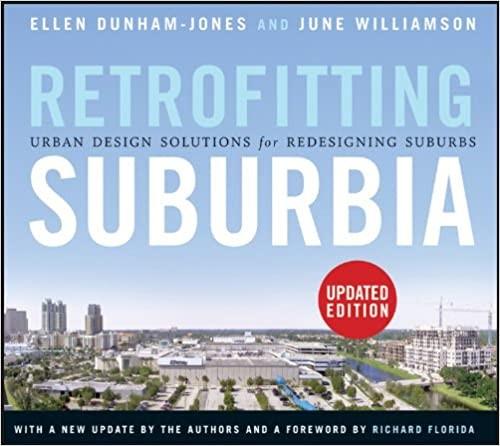
Retrofitting Suburbia, Updated Edition: Urban Design Solutions for Redesigning Suburbs
by
Ellen Dunham-Jones
and
June Williamson
Published 23 Mar 2011
At first, Karahan Companies had trouble filling the 375,000 square feet of retail. The gradual construction of 1,600 apartments and townhomes and 550,000 square feet of office space in the project’s first 75 acres achieved the critical mass needed to make it highly successful. The apartments and townhouses have proved very popular, especially with the younger, single, “new economy” workers and their preference for more urban lifestyles. A 2004 USA Today article cites several residents in their twenties happy with their walkable commutes and nightlife. Certainly the interest Legacy Town Center has spawned in numerous blogs and discussions of the bar scene in local papers testifies to its popularity.
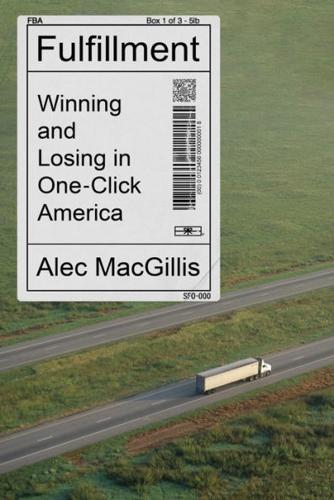
Fulfillment: Winning and Losing in One-Click America
by
Alec MacGillis
Published 16 Mar 2021
Millions of new good-paying jobs were created, greater access to information promised a renewal of our democracy and social progress,” said the subcommittee’s chairman, David Cicilline, a Rhode Island Democrat. “Each of these American companies have contributed immense technological breakthroughs and economic value to our country. They were started on shoestring budgets, in dorm rooms and garages, and are a testament to our core values as a country. But in an effort to promote and continue this new economy, Congress and antitrust enforcers allow these firms to regulate themselves with little oversight. As a result, the Internet has become increasingly concentrated, less open, and growing really hostile to innovation and entrepreneurship.” He noted that Amazon controlled nearly half of all online commerce in the United States, that half of American families now had an Amazon Prime account, that Amazon’s closest competitor, eBay, controlled less than 6 percent of the market for online commerce.
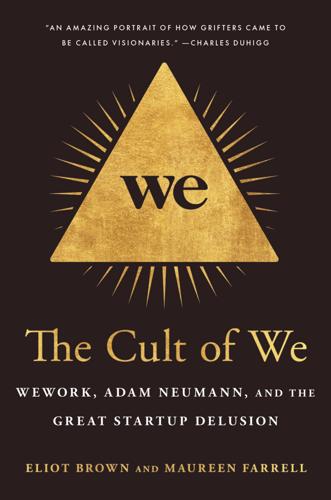
The Cult of We: WeWork, Adam Neumann, and the Great Startup Delusion
by
Eliot Brown
and
Maureen Farrell
Published 19 Jul 2021
Most expected the naming rights would go to one of the region’s giant tech companies, like Salesforce or Google. It was Dimon, though, who pounced. The bank paid at least $15 million a year for the twenty-year rights: it would be called the Chase Center, a monument to the old order in the heart of the capital of the new economy. * * * — To the extent that JPMorgan had any personal connection to founders in Silicon Valley, it was largely because of one banker—Noah Wintroub. Lanky, often bearded, and frequently clad in the casual attire and vests of tech entrepreneurs, Wintroub was promoted to the role of vice-chairman in 2015 at the age of thirty-eight.
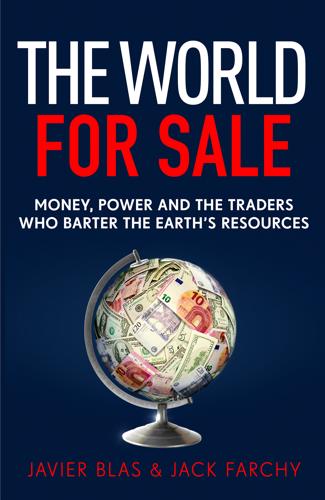
The World for Sale: Money, Power and the Traders Who Barter the Earth’s Resources
by
Javier Blas
and
Jack Farchy
Published 25 Feb 2021
‘What he had to do to get this contract was to pay a ridiculously small commission to the appropriate parties,’ said an executive at a major oil company at the time. ‘And sometimes the required brown envelopes would be passed.’ 65 No doubt brown envelopes or ‘commissions’ had always been part of doing business in far-flung parts of the world. But the oil crises of the 1970s created a new economy of corruption: the global oil industry was newly nationalised, and the people in charge of deciding who could secure a contract were no longer executives of large oil companies but badly paid government officials. And suddenly, thanks to the soaring oil price, they had the power to allot contracts that were worth many millions of dollars to a shrewd oil trader.

The Controlled Demolition of the American Empire
by
Jeff Berwick
and
Charlie Robinson
Published 14 Apr 2020
The Club of Rome is just another one of their deceptive creations, so their words and intentions must be scrutinized and double-checked based on a long record of greed, corruption, and utter destruction. “The Club of Rome is focusing on its new program on the root causes of the systemic crisis by defining and communicating the need for, the vision and the elements of a new economy, which produces real wealth and wellbeing; which does not degrade our natural resources and provides meaningful jobs and sufficient income for all people.” – Description from the Club of Rome website, ClubOfRome.org. If an organization like The Club of Rome declares its intentions, interpreting its true meaning helps when the text is inverted.

Doppelganger: A Trip Into the Mirror World
by
Naomi Klein
Published 11 Sep 2023
The accelerated need for growth has made our economic lives more precarious, leading to the drive to brand and commodify our identities, to optimize our selves, our bodies, and our kids. That same imperative set the rules (or lack thereof) that allowed a group of profoundly underwhelming tech bros to take over our entire information ecology and build a new economy off our attention and outrage. It’s also the logic behind the offloading of Covid response onto the individual (wear your mask, get your jab), to the exclusion of those bigger-ticket investments in strengthening public schools, hospitals, and transit systems. Elites who benefit greatly from these priorities are the same ones who bankroll political and media projects devoted to pitting nonrich people against one another based on race, ethnicity, and gender expression—making them less likely to unite based on common economic and class interests.
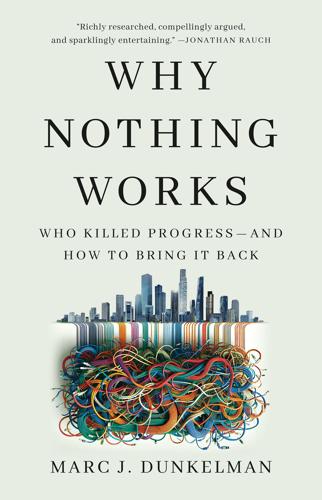
Why Nothing Works: Who Killed Progress--And How to Bring It Back
by
Marc J Dunkelman
Published 17 Feb 2025
The GOP, which dominated Congress, was tied at the hip to the industrial interests that prevailed throughout the Northeast, the mid-Atlantic, and much of the Midwest—as such, they had no intention of abandoning the doctrine of laissez-faire.44 The Democratic Party, on the other hand, was steeped in the populist doctrines taking hold across the South and the nation’s agricultural heartland—it had no substantive answer save for vilifying corporations. The ups and downs of the new economy were so uneven and unpredictable—the future so hard to fathom—that many Americans began searching for new ways to settle things down. The nation was going through something akin to what the journalist George Packer would later term an “unwinding.”45 And so, along those lines, a whole range of ideas, new and old, began to make their way through the body politic—socialism, anarchism, racism, antisemitism, temperance, religious fundamentalism, among others.46 Herbert Croly, who would go on to become a close advisor to Theodore Roosevelt and to found the New Republic, wrote in 1890 that Western civilization had been subject to three major transformations—the Protestant Reformation in the 1500s, the birth of democracy in the 1700s, and now the industrial revolution.47 And it was from that sense of both fear and possibility—a combination of both nostalgia for the nineteenth century’s simpler rhythms and an almost utopian sense of hope for what might emerge in the twentieth—that a new brand of politics began to emerge.48 But if the movement that would come to be known as progressivism was ready to strike out in a new direction, it wasn’t entirely clear where its ideology would point.
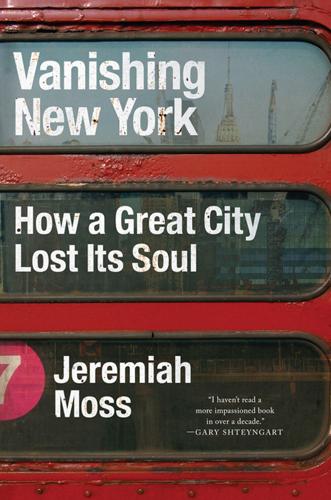
Vanishing New York
by
Jeremiah Moss
Published 19 May 2017
The Island at the Center of the World: The Epic Story of Dutch Manhattan and the Forgotten Colony That Shaped America. New York: Vintage, 2005. Smith, Neil. “Gentrification Generalized: From Local Anomaly to Urban ‘Regeneration’ as Global Urban Strategy.” In Melissa S. Fisher et al., Frontiers of Capital: Ethnographic Reflections on the New Economy. Durham, NC: Duke University Press, 2006. ———. “New Globalism, New Urbanism: Gentrification as Global Urban Strategy.” Antipode 34, no. 3 (2002). ———. The New Urban Frontier: Gentrification and the Revanchist City. London and New York: Routledge, 1996. Soffer, Jonathan. Ed Koch and the Rebuilding of New York.
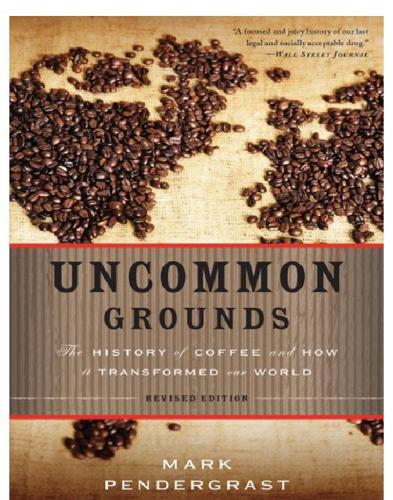
Uncommon Grounds: The History of Coffee and How It Transformed Our World
by
Mark Pendergrast
Published 2 Jan 2000
The ads attempted to rise above the fray to promote all coffee as an uplifting experience. Fighting back against Taster’s Choice, General Foods brought out a new Maxwell House Freeze-dried Coffee, backed by a $20 million ad budget, though the company insisted it had no plans to phase out Maxim. With high coffee prices no longer in the news, the new economy blends such as High Yield, Master Blend, and Folgers Flaked faltered, since they tasted even worse than the regular brands. Sanka provided the only real bright spot for General Foods, where it long had dominated the U.S. decaffeinated field—so much so that many restaurants listed “Sanka” on the menu instead of “decaf.”
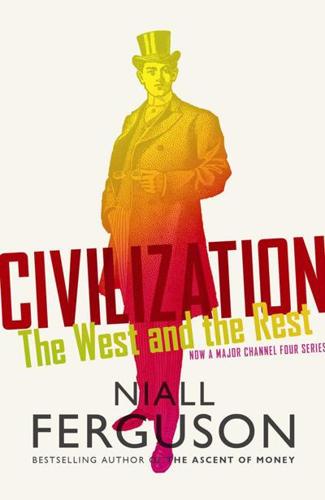
Civilization: The West and the Rest
by
Niall Ferguson
Published 28 Feb 2011
In 1931 – when the US economy was in the grip of blind panic – the big studios released Charlie Chaplin’s City Lights, Howard Hughes’s The Front Page and the Marx Brothers’ Monkey Business. The previous decade’s experiment with the Prohibition of alcohol had been a disastrous failure, spawning a whole new economy of organized crime. But it was only more grist for the movie mills. Also in 1931, audiences flocked to see James Cagney and Edward G. Robinson in the two greatest gangster films of them all: The Public Enemy and Little Caesar. No less creative was the live, recorded and broadcast music business, once white Americans had discovered that black Americans had nearly all the best tunes.
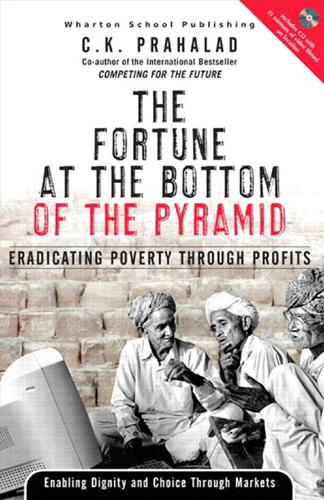
The fortune at the bottom of the pyramid
by
C. K. Prahalad
Published 15 Jan 2005
ICICI is also researching the possibility of implementing a smart-card-based payment system to eliminate the costs associated with cash handling. “The two key challenges that must be overcome to extend banking to the rural and poor population are elimination/reduction of cash handling and innovation of lowcost delivery channels.”34 Smart cards effectively harness the technology advances of the new economy and apply it to the old economy. “By combining the features of a handy credit/debit card with the advantages of . . . storage capacity . . . the smart card provides secure identification, a store of value and an ability to function off line while maintaining an audit trail of all the transactions.”35 Smart cards were launched in October 2000 by ICICI at the Infosys Campus in Bangalore and at Manipal Academy of Higher Education (MAHE) to create a cashless economy.

How to Change the World: Reflections on Marx and Marxism
by
Eric Hobsbawm
Published 5 Sep 2011
The first of these was of no great interest to Marx and Engels, except insofar as it led (in British rather than French thought) to political economy. We shall consider this below. The second evidently influenced them very much. The programmatic aspect also consisted of two elements: a variety of proposals to create a new economy on the basis of co-operation, in extreme cases by the foundation of communist communities; and an attempt to reflect on the nature and the characteristics of the ideal society which was thus to be brought about. Here again, Marx and Engels were uninterested in the first. Utopian community-building they rightly regarded as politically negligible, as indeed it was.
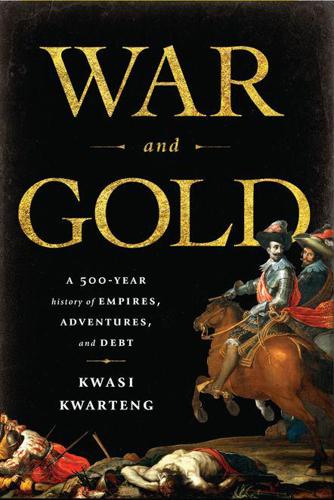
War and Gold: A Five-Hundred-Year History of Empires, Adventures, and Debt
by
Kwasi Kwarteng
Published 12 May 2014
The forecasts Greenspan alluded to pointed to a world of make-believe, in which the United States had eliminated its entire national debt. The problem with such optimistic prognostications was that the seeds of doubt were already manifest in 2001. As the London Economist concluded, the ‘only possible economic justification of Mr Greenspan’s view’ was that ‘the new economy has produced a productivity miracle’. Greenspan’s optimism could only be predicated on ‘a permanent increase in the underlying rate of productivity growth’. The Economist was more cautious: ‘such a miracle may be occurring’, but ‘no one is sure’. The magazine argued with admirable circumspection that to ‘justify ten years’ worth of huge tax cuts on the basis of a guess about productivity growth derived from a few quarters’ figures can only be considered a reckless gamble’.
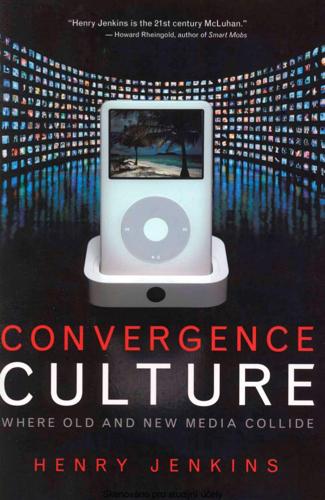
Convergence Culture: Where Old and New Media Collide
by
Henry Jenkins
Published 31 Jul 2006
A n d , of course, once you distribute v i a the Web, television instantly becomes global, paving the w a y for international producers to sell their content directly to A m e r i c a n consumers. Google and Yahoo! began cutting deals w i t h media producers i n the hope that they might be able to profit from this new economy i n television downloads. A l l of this came too late for Global Frequency, and so far the producers of The West Wing and Arrested Development have not trusted their fates to such a subscription-based model. Yet many feel that sooner or later some producer w i l l test the waters, m u c h as A B C - D i s n e y d i d w i t h its video i P o d announcement.

Ghost Fleet: A Novel of the Next World War
by
P. W. Singer
and
August Cole
Published 28 Jun 2015
fips=wotc&trk=p3. 13 ever since Chinese special operations forces: Dean Cheng, “The Chinese People’s Liberation Army and Special Operations,” Special Warfare 25, no. 3 (July–September 2012), accessed March 18, 2014, http://www.dvidshub.net/publication/issues/10629. 14 renminbi, the Chinese currency: Xinhua, “RMB to Be Global Reserve Currency by 2030: Economist,” China Daily, April 9, 2014, accessed August 19, 2014, http://www.chinadaily.com.cn/china/2014-04/09/content_17420923.htm. 14 “sail with our own oil”: Mark Thompson, “U.S. to Become Biggest Oil Producer — IEA,” CNN, November 12, 2012, accessed November 12, 2012, http://money.cnn.com/2012/11/12/news/economy/us-oil-production-energy/index.html?iid=HP_LN&hpt=hp_c2. 14 “heightening regional tensions”: CNN wire staff, “Obama Announces WTO Case Against China over Rare Earths,” CNN, March 13, 2012, accessed March 14, 2012, http://www.cnn.com/2012/03/13/world/asia/china-rare-earths-case/index.html?
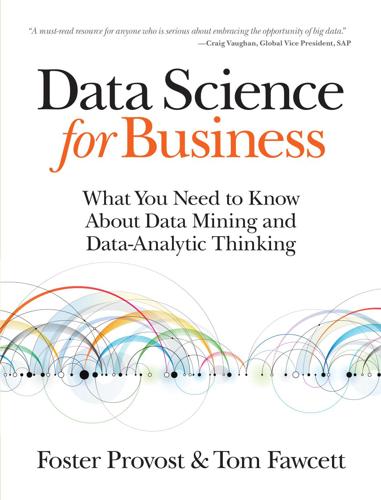
Data Science for Business: What You Need to Know About Data Mining and Data-Analytic Thinking
by
Foster Provost
and
Tom Fawcett
Published 30 Jun 2013
Machine Learning (in press; published online: 30 May 2013. DOI 10.1007/s10994-013-5375-2). Poundstone, W. (2012). Are You Smart Enough to Work at Google?: Trick Questions, Zen-like Riddles, Insanely Difficult Puzzles, and Other Devious Interviewing Techniques You Need to Know to Get a Job Anywhere in the New Economy. Little, Brown and Company. Provost, F., & Fawcett, T. (1997). Analysis and visualization of classifier performance: Comparison under imprecise class and cost distributions. In Proceedings of the Third International Conference on Knowledge Discovery and Data Mining (KDD-97), pp. 43–48 Menlo Park, CA.

Terms of Service: Social Media and the Price of Constant Connection
by
Jacob Silverman
Published 17 Mar 2015
In what amounts to an amplifying effect, popularity accrues to those who can impart the impression of being popular, which is one reason why offline hierarchies often translate well to social media and why celebrities receive hundreds of responses for even the briefest or most banal post. Fame is self-reinforcing and algorithmically desirable. If your job requires you to be online all day, or you have particular information about how Klout or Facebook’s algorithms work, or you happen to have a vibrant social network, then you’re going to do better in this new economy of reputation and visibility. You may still find yourself on the hamster wheel of online influence, always producing more content to stay visible and relevant, but you’ll receive more rewards than those who can’t keep up, don’t know how, or prefer to withdraw altogether. But what happens to these types of people?
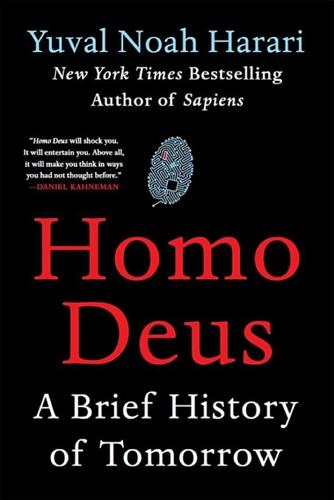
Homo Deus: A Brief History of Tomorrow
by
Yuval Noah Harari
Published 1 Mar 2015
Larry Elliott, ‘Richest 62 People as Wealthy as Half of World’s Population, Says Oxfam’, Guardian, 18 January 2016, retrieved 9 February 2016, http://www.theguardian.com/business/2016/jan/18/richest-62-billionaires-wealthy-half-world-population-combined; Tami Luhby, ‘The 62 Richest People Have as Much Wealth as Half the World’, CNN Money, 18 January 2016, retrieved 9 February 2016, http://money.cnn.com/2016/01/17/news/economy/oxfam-wealth/. 10 The Ocean of Consciousness 1. Joseph Henrich, Steven J. Heine and Ara Norenzayan, ‘The Weirdest People in the World’, Behavioral and Brain Sciences 33 (2010), 61–135. 2. Benny Shanon, Antipodes of the Mind: Charting the Phenomenology of the Ayahuasca Experience (Oxford: Oxford University Press, 2002). 3.
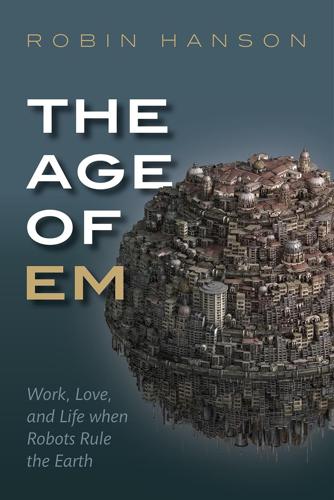
The Age of Em: Work, Love and Life When Robots Rule the Earth
by
Robin Hanson
Published 31 Mar 2016
Anticipating this transition, human workers seeking to avoid harm could try to move their wealth early from an ability to earn wages into other forms of wealth likely to retain value past the transition, such as stocks, patents, or real estate. Even a smooth anticipated transition could be sudden by historical standards, however. In just a few years ems might go from being a small niche product to dominating a new economy growing much faster than the old one. During the early industrial revolution, new industries grew quickly and rewarded their investors well relative to old industries such as farming. Investors then could have used financial mechanisms such as stocks and bonds to diversify and insure themselves against this risk.

Goddess of the Market: Ayn Rand and the American Right
by
Jennifer Burns
Published 18 Oct 2009
In a time when leading intellectuals assumed that large corporations would continue to dominate economic life, shaping their employees into soulless organization men, Rand clung to the vision of the independent entrepreneur. Though it seemed anachronistic at first, her vision has resonated with the knowledge workers of the new economy, who see themselves as strategic operators in a constantly changing economic landscape. Rand has earned the unending devotion of capitalists large and small by treating business as an honorable calling that can engage the deepest capacities of the human spirit. At the same time, Rand advanced a deeply negative portrait of government action.

Connectography: Mapping the Future of Global Civilization
by
Parag Khanna
Published 18 Apr 2016
The cost of financing technology companies has also plummeted. Venture capitalists and Wall Street banks now coexist in a much larger funding ecosystem alongside family offices, angel investors, and crowd-funding platforms such as Kickstarter, collectively delivering more capital more effectively than cumbersome public markets did in the past. But the new economy needs the old economy: Digital services advance through modernized infrastructure. It is the combination of improved physical infrastructure and e-commerce that makes the supply chain world an increasingly seamless physical-virtual hybrid marketplace of goods, services, payments, and delivery. This can go global: Alibaba’s fusion of e-commerce, logistics, and lending has made it a supply chain giant that has invested in partner firms from Israel to Singapore, with huge scope for growth in the United States.
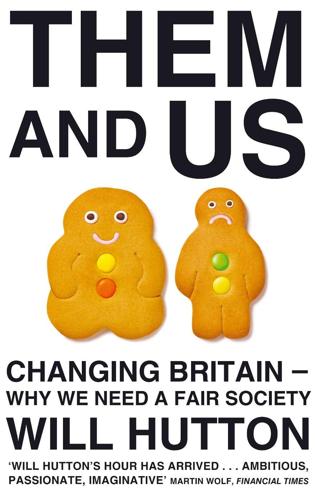
Them And Us: Politics, Greed And Inequality - Why We Need A Fair Society
by
Will Hutton
Published 30 Sep 2010
And fairness, whether in common law or in the day-to-day running of our lives, is in our collective DNA. Britain might have turned a corner. We are starting to understand the link between fairness, prosperity and the good life. Now we just have to deliver it. After all, we deserve better. NOTES Chapter One: The Lost Tribe 1 See the Financial Times series ‘The UK’s New Economy’, at http://www.ft.com/indepth/new-uk-economy. 2 John Plender, ‘To Avoid a Backlash, Executives Must Act on Pay’, Financial Times, 2 April 2010, at http://www.ft.com/cms/s/0/dabef092-3e7d-11df-a706-00144feabdc0.html?catid=9&SID=google. 3 Speech to the RSA, 30 March 2010. 4 Andrew Haldane, ‘Banking Size and Returns: Some Charts’, Presentation to the Future of Finance Group, November 2009. 5 Piergiorgio Alessandri and Andrew G.
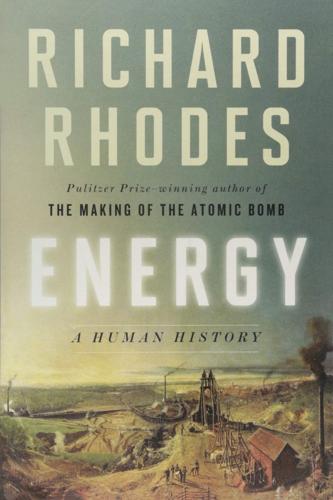
Energy: A Human History
by
Richard Rhodes
Published 28 May 2018
Davies Giddy changed his name to Gilbert in 1817 to inherit the substantial estates of his wife’s uncle, who wanted the Gilbert family name perpetuated. He served as president of the Royal Society from 1827 to 1830. SIX UNCONQUERED STEAM! The year 1800, the turn of a new century, hinged in Britain between the old organic economy and the new economy of industry powered by fossil fuel. In America, with a population of 5.3 million, only half that of Britain, a new generation began advancing westward in horse-drawn wagons. The new nation’s rivers were its highways: steam there would first drive steamboats. Britain, in contrast, eruptive with steam and braided with canals, looked beyond wagon and water carriage to the railway.

The Sinner and the Saint: Dostoevsky and the Gentleman Murderer Who Inspired a Masterpiece
by
Kevin Birmingham
Published 16 Nov 2021
The story of a murdered pawnbroker reads like a story of retribution, an attack on financial predation and the growing precarity that made it possible. The glut of pawnbrokers in an informal lending society suggests that Russia’s social fabric was fraying, that too many people lacked adequate social connections, and that even well-connected people were vulnerable. And so a new economy was emerging, and a new set of people was working at the ragged edges. Dostoevsky was all too familiar with the world of debt profiteers, the Wiesbaden pawnbrokers who would lend on his watch, the Petersburg pawnbrokers who took his clothes and furniture, the debt speculators who bought up his promissory notes at a discount, people like Bocharov and Stellovsky, lying in wait.
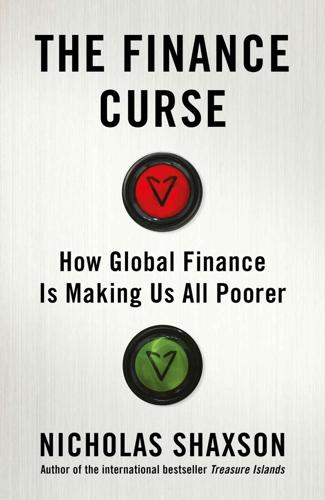
The Finance Curse: How Global Finance Is Making Us All Poorer
by
Nicholas Shaxson
Published 10 Oct 2018
In November 1999 this new breed of American anti-regulators brought down their biggest trophy kill, the repeal of the Glass-Steagall Act, a singularly effective piece of antitrust legislation which had for six and a half decades prevented banks from gambling with their depositors’ money. ‘This historic legislation,’ gushed Summers at the repeal ceremony in 1999, ‘will better enable American companies to compete in the new economy.’ Summers was by then US Treasury secretary and Rubin had moved onto the board of the newly merged Citigroup, which was to be the biggest beneficiary of the deregulation.28 Then, in 2000, came another giant deregulatory splurge: the Commodity Futures Modernisation Act (CFMA), which explicitly removed the US government’s right to regulate over-the-counter derivatives such as CDSs and other exotic financial instruments.
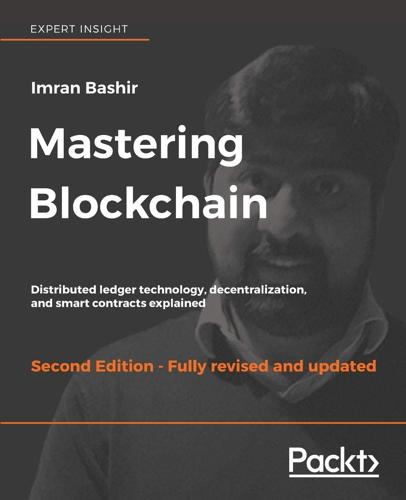
Mastering Blockchain, Second Edition
by
Imran Bashir
Published 28 Mar 2018
It is thought that due to the rapid development and progress being made in blockchain technology, many applications will evolve. Some of these advancements have already been realized, while others are anticipated in the near future based on the current rate of advancement in blockchain technology. The three levels discussed here were initially described in the book Blockchain: Blueprint for a New Economy by Melanie Swan, O'Reilly Media, 2015 as blockchain tiers categorized by applications in each category. This is how blockchain is evolving, and this versioning shows different tiers of evolution and usage of blockchain technology. In fact, all blockchain platforms, with limited exceptions, support these functionalities and applications.
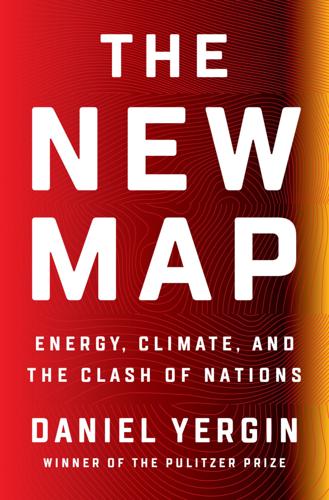
The New Map: Energy, Climate, and the Clash of Nations
by
Daniel Yergin
Published 14 Sep 2020
As the decade proceeded, the economy rebounded, the foundations of a market economy were taking shape, and optimism came with it. There was talk of a chudo—a Russian economic miracle—invoking the “economic miracles” in Western Europe and Japan after World War II.8 But then in August 1998, the Asian financial crisis engulfed Russia. The ruble collapsed, as did oil prices, drying up government revenues. The new economy stopped working and people weren’t paid. The credibility of the Yeltsin presidency was shattered. Yeltsin himself was a spent force. * * * — In 1976, the Leningrad Evening News reported that a previously unknown local “judoist” had won a judo competition and had “for the first time joined the ranks of champions.”

Radical Uncertainty: Decision-Making for an Unknowable Future
by
Mervyn King
and
John Kay
Published 5 Mar 2020
Similarly, investors were right to recognise that the successes of Japanese manufacturers in the 1970s and 1980s not only led to that country’s emergence as a major economic power but were a precursor to a wider phenomenon of growth in emerging market economies. This did not, however, remotely justify the values attached to Japanese stocks and property as the asset price bubble inflated. The same overreach and reaction to it was repeated almost immediately in other emerging markets in the decade that followed, in the ‘new economy’ bubble of 1999, and during the convergence of interest rates across the Continent which followed the adoption of the euro. And in all these cases investors lost very large amounts of money as greater realism finally set in. The collapse of a narrative is a more rapid process than its transmission.
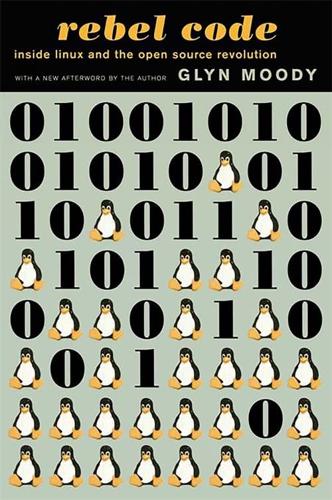
Rebel Code: Linux and the Open Source Revolution
by
Glyn Moody
Published 14 Jul 2002
They therefore reflect the sense of excitement of that time, when it seemed that the open source approach not only would change the way software was written but might lead to the emergence of a significant new business sector based around these free programs. Since then, the dot-com bubble has burst, wiping out many of the highly fragile New Economy start-ups and humbling even the bellwether online names. Against this background, it would have been extraordinary if open source companies, which had benefited as much as any from the preceding enthusiasm, had emerged unscathed. Intimately entwined with the now out-of-favor Internet culture, and predicated as they were on novel business plans and unconventional software, such companies looked doubly dubious to nervous investors.

The Quiet Coup: Neoliberalism and the Looting of America
by
Mehrsa Baradaran
Published 7 May 2024
Robert L. Hale, “Coercion and Distribution in a Supposedly Non-coercive State,” Political Science Quarterly 38, no. 3 (1923): 473. 9. Robert L. Hale, “Bargaining, Duress, and Economic Liberty,” Columbia Law Review 43 (1943): 625. 10. Jedediah Purdy, “Neoliberal Constitutionalism: Lochnerism for a New Economy,” Law and Contemporary Problems 77, no. 4 (2014): 197. 11. West Coast Hotel Co. v. Parrish, 300 U.S. 379, 391 (1937). 12. Richard Nixon, telephone conversation with John Mitchell, October 20, 1971, American RadioWorks. 13. John Jeffries, Justice Lewis F. Powell (New York: Fordham University Press, 2020), 234. 14.

The omnivore's dilemma: a natural history of four meals
by
Michael Pollan
Published 15 Dec 2006
Whether this is a good or bad thing people will disagree. Joel Salatin and his customers want to be somewhere that that juggernaut can't go, and it may be that by elevating local above organic, they have found exactly that place. By definition local is a hard thing to sell in a global marketplace. Local food, as opposed to organic, implies a new economy as well as a new agriculture—new social and economic relationships as well as new ecological ones. It's a lot more complicated. Of course, just because food is local doesn't necessarily mean it will be organic or even sustainable. There's nothing to stop a local farmer from using chemicals or abusing animals—except the gaze or good ••••2 5 7 25 8 * THE O M N I VO R E ' S D I L E M M A word of his customers.

Oil: Money, Politics, and Power in the 21st Century
by
Tom Bower
Published 1 Jan 2009
In a choreographed performance, they announced that daily production would be reduced by 2.1 million barrels a day. The cut would be welcomed by the oil majors, which were equally anxious to earn a higher income. Economists calculated that the inevitable price increase would cost consumers $480 billion in one year, but that the “New Economy” of advanced technology, flexibility of labor, increased efficiency and low inflation could absorb higher oil prices. Days later, Brent oil rose to $15. Experts speculated that the oil majors might have overreacted to the low prices by dismissing thousands of their workforce. Adding to the confusion, Mark Moody-Stuart explained that Shell would only consider projects “which fly at $14,” and would let them “sleep easy in their beds at $10.”
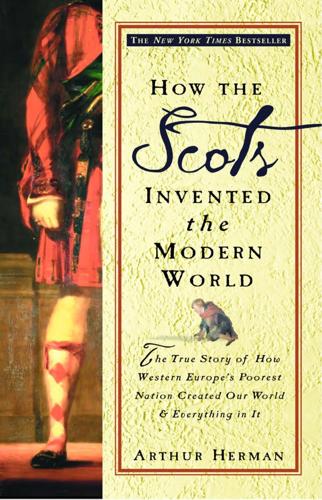
How the Scots Invented the Modern World: The True Story of How Western Europe's Poorest Nation Created Our World and Everything in It
by
Arthur Herman
Published 27 Nov 2001
Scotland and the Scots were stuck in the mean and unproductive patterns of the past, and they knew it. By 1695 the Scottish ruling class assembled in Parliament in Edinburgh decided to do something about it. Their plan was simple and straightforward. Scotland would compete at the English level by doing as the English had done: creating a new economy by legislation. The same Parliament that passed the Blasphemy Act and the School Act also established a Bank of Scotland, closely modeled on the highly successful Bank of England, founded the year before (although it was much smaller, with a starting capital of only 100,000 pounds sterling, compared to the Bank of England’s almost 600,000 pounds).
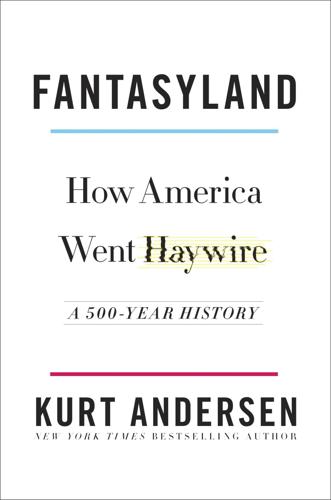
Fantasyland: How America Went Haywire: A 500-Year History
by
Kurt Andersen
Published 4 Sep 2017
But that’s just one way of explaining it, the one that comfortingly focuses all blame on government and a small class of the rich and powerful and deceitful. The deeper causes were more widespread and unconscious, the fantastical wishfulness affecting at least a large minority of Americans, maybe a majority. In the late 1990s, the smart people decided the old rules didn’t apply because digital technology had created a New Economy. Companies with no revenues were worth billions of dollars, and paying 175 times earnings for a share of the average tech stock didn’t seem mad. Why not buy bigger and bigger houses, why save money, why not go deeper into debt? The price of the average house was bound to just keep doubling every ten years.
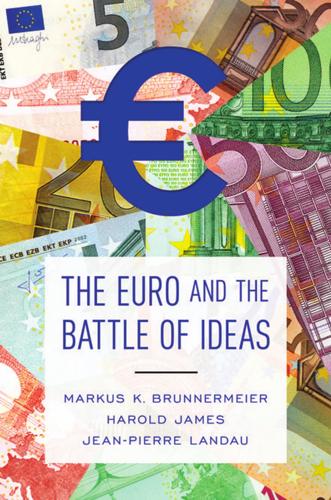
The Euro and the Battle of Ideas
by
Markus K. Brunnermeier
,
Harold James
and
Jean-Pierre Landau
Published 3 Aug 2016
Last accessed January 4, 2016, from http://www.bloomberg.com/news/2011-07-10/strauss-kahn-saga-exposes-flaws-in-europe-s-greek-debt-crisis-management.html. 34. See, for example, George Georgiopoulos and Ingrid Melander, “Greece Default Hangs in Balance,” Financial Post, September 19, 2011. http://business.financialpost.com/news/economy/greece-told-shrink-state-to-avoid-default-2. 35. Wroughton, Schneider, and Kyriakidou, “IMF’s Greek Misadventure.” 36. Larry Elliott, Phillip Inman, and Helena Smith, “IMF Admits: We Failed to Realise the Damage Austerity Would Do to Greece,” Guardian, June 5, 2013. Last accessed January 4, 2016, from http://www.theguardian.com/business/2013/jun/05/imf-underestimated-damage-austerity-would-do-to-greece; International Monetary Fund, “Greece: Ex Post Evaluation of Exceptional Access under the 2010 Stand-by Arrangement,” IMF Country Report No. 13/156, July 2013.

MacroWikinomics: Rebooting Business and the World
by
Don Tapscott
and
Anthony D. Williams
Published 28 Sep 2010
It seems there is growing consensus that we are finally entering a very different economy. Economist Robert Reich asks, “What will it look like? Nobody knows. All we know is the current economy can’t ‘recover’ because it can’t go back to where it was before the crash.” Instead he suggests, “we should be asking when and how the new economy will begin.” The upheaval is now spreading to other sectors—from the universities, health care, and science to energy, transportation, and government. Many old media empires are crumbling. The continuing collapse of many newspapers in the United States is a storm warning of more to come. As of this writing in May 2010, the Tribune Company, owner of the Los Angeles Times and Chicago Tribune, is bankrupt, as is the owner of The Philadelphia Inquirer.
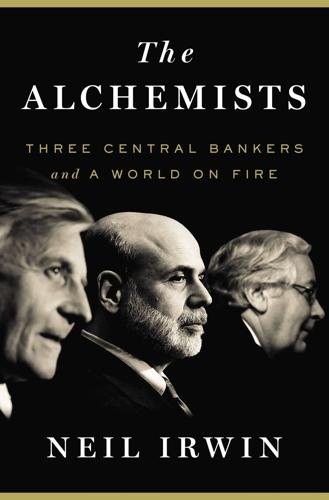
The Alchemists: Three Central Bankers and a World on Fire
by
Neil Irwin
Published 4 Apr 2013
These ideas weren’t outlandish given what the world was experiencing. Consider the events in the United States just a few years before. The stock market had ascended to too-good-to-be-true heights throughout the late 1990s, rising more than 20 percent each year from 1995 to 1999. Investors had convinced themselves of the emergence of a “New Economy” promising both perpetual prosperity and astonishing returns on even the most ill-planned ventures that happened to have “.com” in their names. Just as that bubble was bursting and reality was setting in, in September 2001 the United States suffered a devastating terrorist attack that created a wave of fear and panic across the land, instigated years of war, and even destroyed some of the physical infrastructure of the U.S. financial system by rendering much of lower Manhattan inaccessible.

Superintelligence: Paths, Dangers, Strategies
by
Nick Bostrom
Published 3 Jun 2014
Let us now turn our attention to some of the entities that we have so far classified as “capital”: machines that may be owned by human beings, that are constructed and operated for the sake of the functional tasks they perform, and that are capable of substituting for human labor in a very wide range of jobs. What may the situation be like for these workhorses of the new economy? If these machines were mere automata, simple devices like a steam engine or the mechanism in a clock, then no further comment would be needed: there would be a large amount of such capital in a post-transition economy, but it would seem not to matter to anybody how things turn out for pieces of insentient equipment.
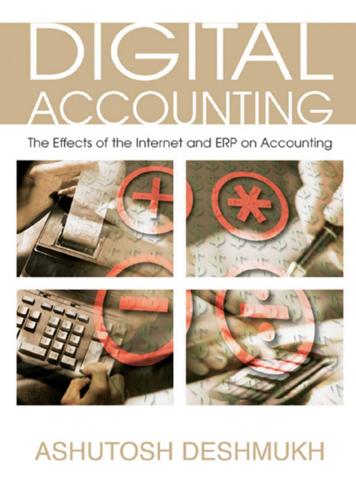
Digital Accounting: The Effects of the Internet and Erp on Accounting
by
Ashutosh Deshmukh
Published 13 Dec 2005
The financial results are matched with management forecasts, and corrective actions, if required, are undertaken. The initial push for faster closing of the books came in the 1990s, as markets criticized companies who did not have visibility into their financial statements. Cisco achieved closing of the books in less than 24 hours and became a symbol of the new economy of financial management. The intervening years saw a decline of the importance of virtual close, since formidable difficulties were encountered in this endeavor. However, now the days of pro-forma financial reporting are over, and GAPP-based reporting is valued again. New SEC requirements specify that 10-Ks must be filed within 60 days (instead of 90 days) after the close of the fiscal year and 10-Qs must be filed within 35 days (instead of 45 days).
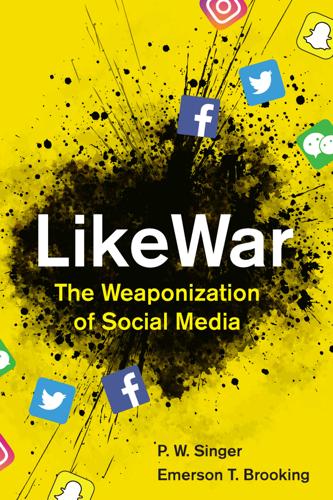
Likewar: The Weaponization of Social Media
by
Peter Warren Singer
and
Emerson T. Brooking
Published 15 Mar 2018
fips=wotc&trk=p3. 18 ever since Chinese special operations forces: Dean Cheng, “The Chinese People’s Liberation Army and Special Operations,” Special Warfare 25, no. 3 (July–September 2012), accessed March 18, 2014, http://www.dvidshub.net/publication/issues/10629. 19 renminbi, the Chinese currency: Xinhua, “RMB to Be Global Reserve Currency by 2030: Economist,” China Daily, April 9, 2014, accessed August 19, 2014, http://www.chinadaily.com.cn/china/2014-04/09/content_17420923.htm. 20 “sail with our own oil”: Mark Thompson, “U.S. to Become Biggest Oil Producer—IEA,” CNN, November 12, 2012, accessed November 12, 2012, http://money.cnn.com/2012/11/12/news/economy/us-oil-production-energy/index.html?iid=HP_LN&hpt=hp_c2. 21 “heightening regional tensions”: CNN wire staff, “Obama Announces WTO Case Against China over Rare Earths,” CNN, March 13, 2012, accessed March 14, 2012, http://www.cnn.com/2012/03/13/world/asia/china-rare-earths-case/index.html?hpt=hp_t2. 22 “depend on rare-earth materials”: “What Are the Rare Earths?

Dawn of the Code War: America's Battle Against Russia, China, and the Rising Global Cyber Threat
by
John P. Carlin
and
Garrett M. Graff
Published 15 Oct 2018
A month after the Mafiaboy attacks, the Justice Department launched a website, cybercrime.gov, meant to herald its new efforts online.89 Yet at the same time, it seemed hard to get worked up over a tech-savvy teen who wasn’t legally old enough to drive. The DDoS attacks underscored the perilous weakness of the internet, even as the dot-com boom drove millions of people to the web and online commerce soared. A 15-year-old boy had knocked the world’s top website offline. “We now know that the internet wasn’t designed to shoulder a new economy, and we’ll need some fundamental improvements before a teenager will have any problem clogging up web sites,” wrote tech journalist Kevin Poulsen two months after the Mafiaboy attacks. “Mafiaboy isn’t the innocent child who pointed out that the Emperor has no clothes; he’s one of many guilty children who pointed it out by throwing things at the Emperor’s privates—a more serious offense.”90 That April, just a couple months into the new administration of George W.

There Is Nothing for You Here: Finding Opportunity in the Twenty-First Century
by
Fiona Hill
Published 4 Oct 2021
Bishop Auckland’s predicament in the 1980s was soon emblematic of hundreds if not thousands of towns across regions of the United States. Left to their own devices, without targeted and sustained state intervention, they simply could not adapt and modernize. They ended up as permanent losers, not winners, in the new economy, and in a state of perpetual decay. Initially in the United States, after the fall of the Berlin Wall in 1989 and then the collapse of the USSR in 1991, there was no sense that America too was in postindustrial decline. The idea that the West had won the Cold War and capitalism had prevailed over communism deflected attention from the troubles of America’s old manufacturing centers and their displaced workers.
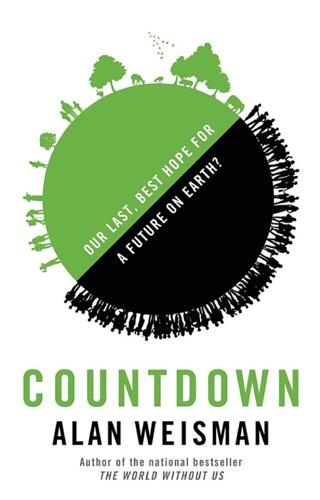
Countdown: Our Last, Best Hope for a Future on Earth?
by
Alan Weisman
Published 23 Sep 2013
“Iran’s Population-Control Programs Are User-Friendly.” Los Angeles Times, May 10, 1998. Zia-Ebrahimi, Reza. “Self-Orientalization and Dislocation: The Uses and Abuses of the ‘Aryan’ Discourse in Iran.” Iranian Studies, vol. 44, no. 4 (2011): 445–72. Chapter Thirteen: Shrink and Prosper BOOKS Daily, Gretchen C., and Katherine Ellison. The New Economy of Nature: The Quest to Make Conservation Profitable. Washington, DC: Island Press, 2002. Daly, Herman E. Beyond Growth: The Economics of Sustainable Development. Boston: Beacon Press, 1996. _______, and Joshua Farley. Ecological Economics. Washington, DC: Island Press, 2010. Dyson, Tim. Population and Development: The Demographic Transition.
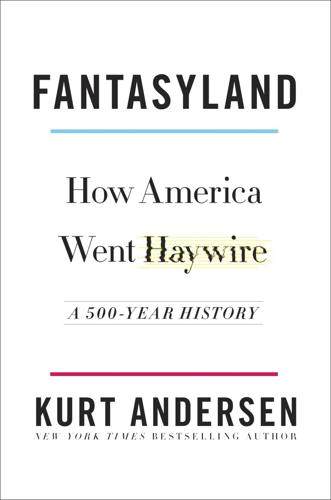
Fantasyland
by
Kurt Andersen
Published 5 Sep 2017
But that’s just one way of explaining it, the one that comfortingly focuses all blame on government and a small class of the rich and powerful and deceitful. The deeper causes were more widespread and unconscious, the fantastical wishfulness affecting at least a large minority of Americans, maybe a majority. In the late 1990s, the smart people decided the old rules didn’t apply because digital technology had created a New Economy. Companies with no revenues were worth billions of dollars, and paying 175 times earnings for a share of the average tech stock didn’t seem mad. Why not buy bigger and bigger houses, why save money, why not go deeper into debt? The price of the average house was bound to just keep doubling every ten years.
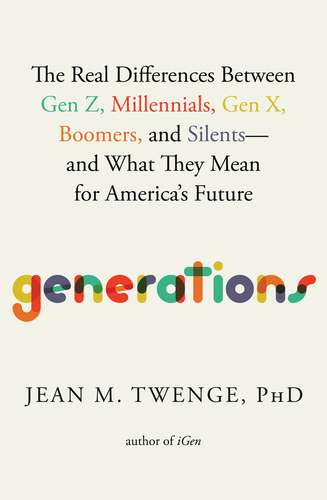
Generations: The Real Differences Between Gen Z, Millennials, Gen X, Boomers, and Silents—and What They Mean for America's Future
by
Jean M. Twenge
Published 25 Apr 2023
He moved around for a while before finding work at a steel mill in Baltimore, one of the last steel mills in the country. In 2012, that mill closed as well. At 59, Bambino was again looking for work, but it was an uphill battle. “Nobody wants to hire an old guy,” he said. His story is one among many, as Boomers without college educations fell victim to the new economy. In the 1989 documentary Roger and Me, Michael Moore (b. 1954) returns to his hometown of Flint, Michigan, to find that thousands of autoworkers have been laid off and that many of the town’s residents are descending into abject poverty. The film’s title refers to Roger Smith, chief executive officer of General Motors at the time, whom Moore repeatedly tries to confront about the displaced autoworkers, many of whom were being evicted from their homes.

Beyond the Wall: East Germany, 1949-1990
by
Katja Hoyer
Published 5 Apr 2023
Written in typical socialist style, directly addressing its listeners, the song has rightly been categorized as propaganda. But to dismiss it as the work of the SED to which the German youth was involuntarily subjected is wrong. Many East Germans who were young during this period describe the pride with which they began to build a new economy for themselves and many sang this song with genuine enthusiasm. For all the can-do spirit of its young people, the GDR was already losing the game of catch-up before the two German opponents had even begun to play. The problem was not work ethic, and not even the central planning aspect of the GDR’s young economy (after all, most Western countries still fixed prices, wages and rations for years to come).

The Survival of the City: Human Flourishing in an Age of Isolation
by
Edward Glaeser
and
David Cutler
Published 14 Sep 2021
As noted above, the overall unemployment rate rose from 3.5 percent in February to 14.7 percent in April. It settled down at 10.2 percent in July and remained at 6.7 percent through December. That overall figure hides dramatic differences between the old economy, which is as robust to pandemic as it was in 1918, and the new economy, which is not. The unemployment rate among leisure and hospitality workers was 25 percent in July 2020. The unemployment rate was only 5.7 percent among farmers and 8.6 percent among manufacturing workers. Some thought that the economic decline was caused by a hysterical governmental response to the pandemic: the lockdown regulations that made it impossible for businesses to keep going.
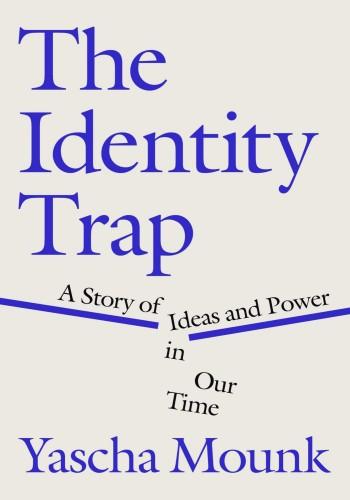
The Identity Trap: A Story of Ideas and Power in Our Time
by
Yascha Mounk
Published 26 Sep 2023
Although both of these articles still state there are improvements to be made, they also recognize the efforts to make schools and corporations more inclusive. GO TO NOTE REFERENCE IN TEXT harder for first-generation: See, for example, Ross Perlin, Intern Nation: How to Earn Nothing and Learn Little in the Brave New Economy (New York: Verso, 2012). GO TO NOTE REFERENCE IN TEXT “strong and slow boring”: Max Weber, “Politics as a Vocation,” in From Max Weber: Essays in Sociology, trans. and ed. H. H. Gerth and C. Wright Mills (New York: Oxford University Press, 1946), 27. GO TO NOTE REFERENCE IN TEXT treated with special consideration: For a more detailed account of the origins of these claims, see parts I and II.
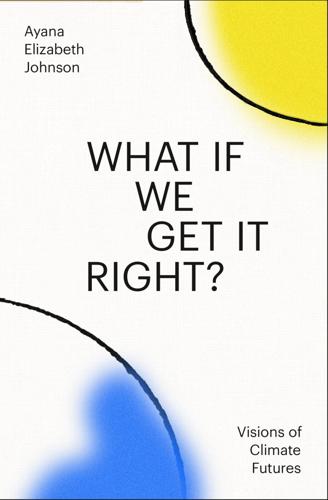
What If We Get It Right?: Visions of Climate Futures
by
Ayana Elizabeth Johnson
Published 17 Sep 2024
Ayana: When you think about what the world looks like when we get it right, what else comes to mind? Abbie: I don’t want to minimize how hard it is to imagine a different future in the communities that are so tied to fossil fuels or other polluting industries. That’s where the jobs are and it ripples out to everyone. So, I don’t want to minimize the project of imagining a new economy and a new way forward. Ayana: You have to imagine the just transition along with it. Abbie: You do. And I understand why people who are at the frontlines of this transition have a lot of distrust around the words “just transition.” It hasn’t been laid out. The project of the next few years is regionally envisioning what a different future is, and being clear-eyed about the economic imperative to achieving that vision.
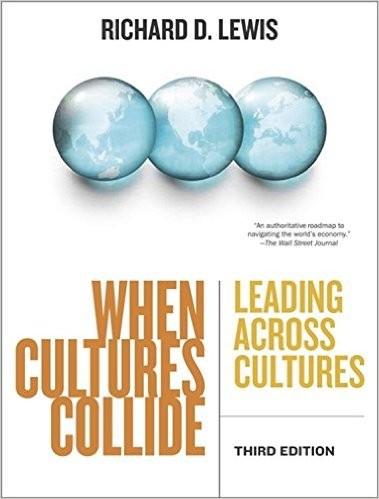
When Cultures Collide: Leading Across Cultures
by
Richard D. Lewis
Published 1 Jan 1996
The South Korean miracle is beginning to show signs of both maturity and age and is changing the focus of its economy from low-cost, low-technology production to high-tech, high-value-added, capital-intensive products. The strength of ROK’s large conglomerates (chaebols) and the industriousness of its businesspeople and workers suggest that it will successfully make the transition to a new economy appropriate to current twenty-first century conditions. On account of its proximity to China, Korea has been, and still is, strongly influenced by the teaching of Confucius. (A description of the basic tenets of Confucianism is given in Chapter 57.) Hahn is something different and more peculiarly Korean.
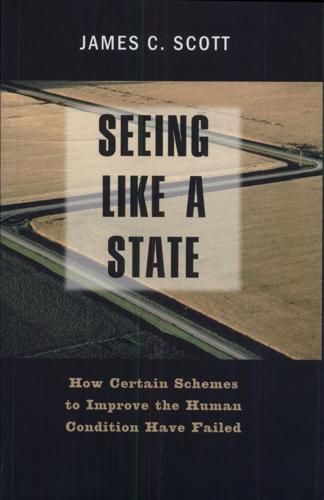
Seeing Like a State: How Certain Schemes to Improve the Human Condition Have Failed
by
James C. Scott
Published 8 Feb 1999
Literary versions of this ideology are apparent in Sinclair Lewis's Arrotvsmith and Ayn Rand's Fountainhead, works from very different quadrants of the political spectrum. 43. Rabinbach, The Human Motor, p. 452. For Rathenau's writings, see, for example, Von kommenden Dingen (Things to come) and Die Neue Wirtschaft (The new economy), the latter written after the war. 44. Walther Rathenau, Von kommenden Dingen (1916), quoted in Maier, "Between Taylorism and Technocracy," p. 47. Maier notes that the apparent harmony of capital and labor in wartime Germany was achieved at the cost of an eventually ruinous policy of inflation (p. 46). 45.

Appetite for America: Fred Harvey and the Business of Civilizing the Wild West--One Meal at a Time
by
Stephen Fried
Published 23 Mar 2010
Gossip columnist Hedda Hopper immediately dubbed it the “newest rendezvous in town … so pleasant there it’s a joy to miss your train. No one wants to catch one.” Unfortunately, Hedda was right—a lot of people didn’t want to catch the train anymore. The Super Chief itself was successful. So was a new economy train called the Scout, which even had a car for women and children traveling alone, with a Santa Fe “Courier-Nurse” to help out. (It quickly became known, in the words of one corporate historian, as “a rolling nightmare of diapers, midnight feedings and a constant parade of women moving back and forth to the diner seeking warm bottles of milk.”)

In Pursuit of Privilege: A History of New York City's Upper Class and the Making of a Metropolis
by
Clifton Hood
Published 1 Nov 2016
This debate gained added force because the panic coincided with a controversial plan to open a New York City branch of the Philadelphia-based Bank of the United States, a project that seemed especially ominous because one of its proposed directors had been a partner in Duer’s botched speculation. A few of the correspondents who participated in this exchange argued that capitalistic institutions like the new bank branch would promote regional economic development and provide a modern financial structure. Most, however, expressed uneasiness that the new economy was elevating miscreants like Duer who seemingly lacked the moral character and leadership skills that had been instilled in members of the established upper class from birth. The country had managed to escape social disorder after the Revolution, but the speculative economy seemed to be blowing the lid off.
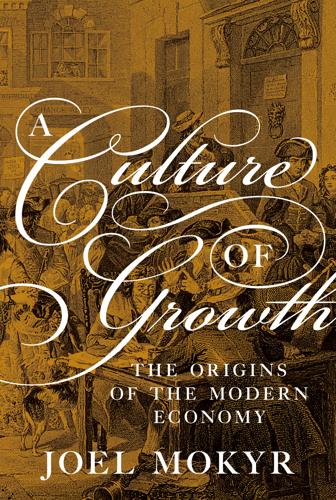
A Culture of Growth: The Origins of the Modern Economy
by
Joel Mokyr
Published 8 Jan 2016
Instead of “wisdom,” more and more highly educated people were in search of the “material details of the world as perceived by the senses,” driven by financial interests and the “warm hope of material progress” (Cook, 2007, p. 41). For the decisions that had to be made by merchants, he argues, factual knowledge was essential. To take advantage of the new economies of exchange one had to value facts: the quality of a wine, the therapeutic power of an exotic herb, the price of sugar (Cook, 2007, p. 17). In a leap of faith, Cook then proceeds to argue that trust and credibility, aimed at discovering and accumulating knowledge of the material world, were the values of both the hard-headed merchant and those of the naturalist and physician.
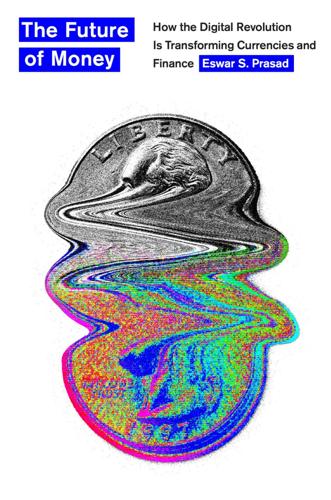
The Future of Money: How the Digital Revolution Is Transforming Currencies and Finance
by
Eswar S. Prasad
Published 27 Sep 2021
The numbers on loan amounts come from Citibank’s 2018 report Bank of the Future: The ABCs of Digital Disruption in Finance, March 2018, https://www.citibank.com/commercialbank/insights/assets/docs/2018/The-Bank-of-the-Future/; and Kevin Hamlin, “Mini-loans Have Spurred a Business—and Debt—Boom in China,” Bloomberg, October 29, 2019, https://www.bloomberg.com/graphics/2019-new-economy-drivers-and-disrupters/china.html. See also Evelyn Cheng, “Singles Day Sales Hit a Record High as Chinese Buyers Rack Up Their Credit Card Bills,” CNBC, November 15, 2019, https://www.cnbc.com/2019/11/15/singles-day-sales-hit-record-high-as-chinese-buyers-rack-up-credit-card-bills.html. Some of the intricacies of the on- and off-balance-sheet operations of Huabei and Jiebei are discussed at https://finance.sina.com.cn/roll/2020-02-06/doc-iimxyqvz0769786.shtml (in Chinese); http://database.caixin.com/2019-10-26/101475667.html (in Chinese); and Wu Hongyuran, Hu Yue, and Han Wei, “In Depth: Cheers and Fears in $283 Billion Bank-Tech Lending Tie-Up,” Caixin, October 27, 2019, https://www.caixinglobal.com/2019-10-27/in-depth-cheers-and-fears-in-283-billion-bank-tech-lending-tie-up-101475874.html.
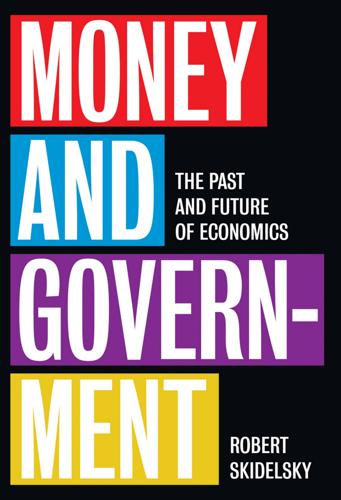
Money and Government: The Past and Future of Economics
by
Robert Skidelsky
Published 13 Nov 2018
PSBR fell from an average of 7.5 per cent of GDP (1952–9) to 6.6 per cent (1960–69). The national debt fell from 150 per cent to 50 per cent of GDP over the period. By the 1960s the state was spending close to 40 per cent of national income. It was what Keynes called the ‘semi-socialised’ character of the new economy, represented by the enlarged public sector, which brought stability to the economy, despite the erratic character of actual fiscal policy. European economies and Japan had unusually high rates of economic growth in the 1950s because they were able to exploit the ‘advantages of backwardness’. The main problem for countries such as Germany, Japan and Italy was shortage of supply, not of demand, much of their capital equipment having been destroyed in the war.
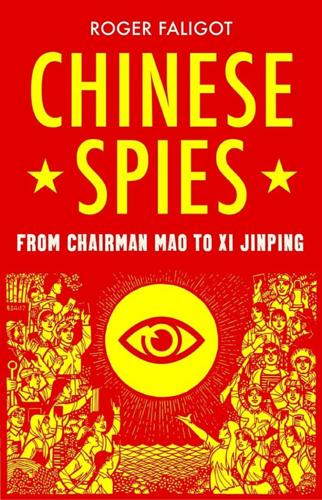
Chinese Spies: From Chairman Mao to Xi Jinping
by
Roger Faligot
Published 30 Jun 2019
He also emphasized that the traditional vectors of information, part of the Chinese intelligence system since 1949, continue to be important: for example, the confidential economic reports produced by the Xinhua News Agency and various ministries now working online. Just a few days before we met, I had managed to get hold of a manual for how to gather intelligence on the internet, published by Tsinghua University’s IT department. It illustrated the huge revolution of cadre training and technological surveillance in the new economy. What Professor Liu explained to me was fairly comprehensive. All that was lacking was an explanation of how intelligence useful for state affairs and national security was coming out of the private sector in the first place—and the role of the army in a growing number of cases concerning commerce and industry.

Flight of the WASP
by
Michael Gross
Indeed, he left neither Brussels nor his ministerial position, but he did get involved in politics as a conservative white Republican committed to economic expansion for personal profit, and he was willing to go easy on the South and avoid the subject of race when possible. South Carolina’s Sea Islands had already joined the new economy. After they were occupied by the North in 1861, whites had fled, and ten thousand slaves had sacked the cotton plantations and taken up subsistence farming. A few years later, the Treasury auctioned off some of the land for nonpayment of taxes—and military and government officers joined speculators in snapping it up, hoping to revive the plantation system with paid, as opposed to slave, labor.
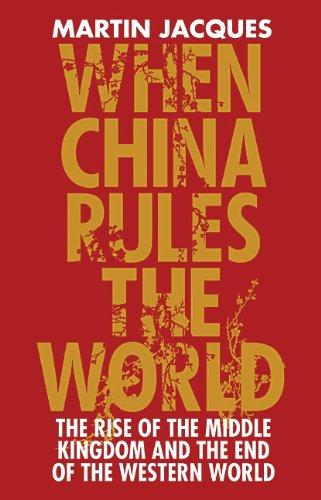
When China Rules the World: The End of the Western World and the Rise of the Middle Kingdom
by
Martin Jacques
Published 12 Nov 2009
The reason for the virtual disappearance of traditional attire is not obvious; after all, it is not the case in India, where the sari and salwar-kameez (Punjabi suit) for women and the kurta-pajama (loose top and trousers) and bund-gala (jacket) for men, for instance, remain ubiquitous, notwithstanding the fact that Western styles of dress are common, especially in the ‘new economy’ urban centres like Bangalore. In Japan, Western dress began to spread after the Meiji Restoration. Western clothes were worn by government servants and at official ceremonies, but it was not until much later that they became popular amongst ordinary people. During wartime austerity between 1930 and 1945, simplified Japanese clothes replaced the kimono, which was seen as impractical.
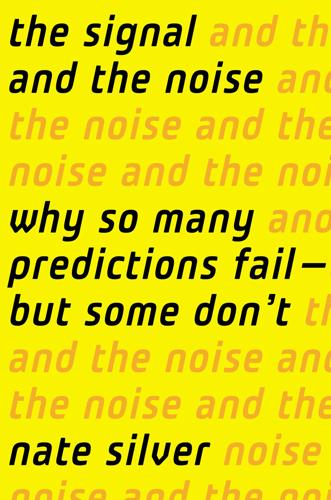
The Signal and the Noise: Why So Many Predictions Fail-But Some Don't
by
Nate Silver
Published 31 Aug 2012
Economy Tipping into Recession,” Economic Cycle Research Institute, September 30, 2011. http://www.businesscycle.com/reports_indexes/reportsummarydetails/1091. 53. Chris Isidore, “Forecast Says Double-Dip Recession Is Imminent,” CNNMoney; September 30, 2011. http://money.cnn.com/2011/09/30/news/economy/double_dip_recession/index.htm. 54. Economic Cycle Research Institute, “U.S. Economy Tipping into Recession,” September 30, 2011. http://www.businesscycle.com/reports_indexes/reportsummarydetails/1091. 55. Achuthan and Benerji, Beating the Business Cycle, Kindle locations 192–194. 56.

After Tamerlane: The Global History of Empire Since 1405
by
John Darwin
Published 5 Feb 2008
British overseas banks, insurance companies and shipping took the lion’s share of the newtraffic between continents. British shipping agents and steamers became ubiquitous. After 1870, London added foreign investment to its arsenal – a reaction to the fact that the British economy was now growing more slowly than the ‘new’ economies overseas. From then until 1914, London was the source of more than half the capital that was sent out of Europe. Much of it went into transport systems that would open new markets and connect newproducers. By 1913, over 40 per cent of British capital abroad had gone into railways – state-controlled (as in Australia and India) or private.72 The stream of sterling had other important effects.
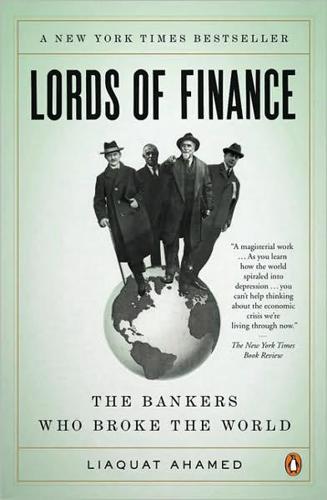
Lords of Finance: The Bankers Who Broke the World
by
Liaquat Ahamed
Published 22 Jan 2009
Not every stock went up in the rise. From the very start, the 1920s market had been as bifurcated as the underlying economy—the “old economy” of textiles, coal, and railroads struggling, as coal lost out to oil and electricity, and the new business of trucking bypassing the railways while the “new economy” of automobiles and radio and consumer appliances grew exponentially. Of the thousand or so companies listed on the New York Stock Exchange, as many went down as went up. The first signs that other, more psychological, factors might be at play emerged in the middle of 1927 with the Fed easing after the Long Island meeting.
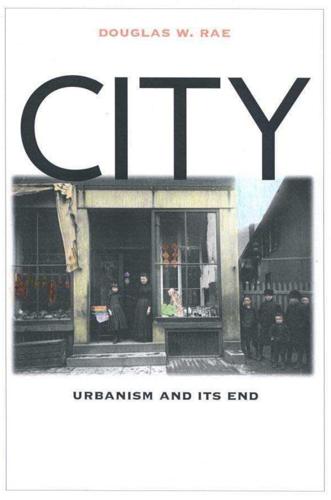
City: Urbanism and Its End
by
Douglas W. Rae
Published 15 Jan 2003
This was the decision by A&P’s John Hartford in 1912 to roll out a low-end version: “In 1912 [he persuaded the firm’s other owners] to try a new cash and carry ‘economy’ store, as opposed to the deliveries 237 E N D O F U R B A N I S M and charge accounts that were popular at the time. Competing against one of the company’s most profitable stores nearby, the tiny store drove the larger one out of business in just six months! Within two years, 1,600 of the new economy stores opened, an average of almost three per day. By 1916, sales had more than doubled.”37 These stores, typically just 40 by 30 feet, proliferated along the arterials of New Haven and almost every other city in the region. Each carried a predetermined array of 300 standard items, many of them manufactured privately as store label brands for A&P (8 O’Clock Coffee being the most famous surviving instance).
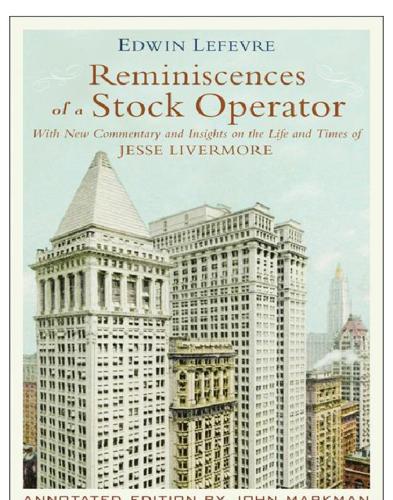
Reminiscences of a Stock Operator
by
Edwin Lefèvre
and
William J. O'Neil
Published 14 May 1923
He was among the few in the buggy-whip set to transition to autos, and created General Motors in 1908 by consolidating 13 small car makers and 10 parts makers, including Cadillac, Buick, and Oldsmobile. Big investors in the new firm ousted him in 1911 over complaints about his risk taking, but he then started a new economy-car firm with famed racer Louis Chevrolet, and later managed to win back GM through a clever series of stock transactions: Leading the bull pool himself, he acquired shares in the company cheaply during a weak spot in the economy, and then manipulated the stock from $82 in January 1916 to $558 in December that year.
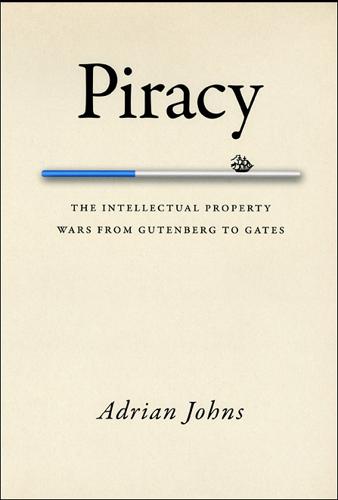
Piracy : The Intellectual Property Wars from Gutenberg to Gates
by
Adrian Johns
Published 5 Jan 2010
In the press it rivaled and then subsumed the lamentations emanating from the entertainment industry about pirated music, movies, and books, as they came to be redefined as subspecies of software. With the growth of the Internet, fears of identity theft, phishing, and the like – culminating in spectacular feats like the pirate multinational NEC – merged with those of piracy proper to make problems of credit and authenticity central to the very constitution of a global “new economy.” By the late 1970s, a fundamental fault line was emerging around digital creativity and intellectual property. Digerati themselves disagreed profoundly about the place of property in the new digital realm, and as that realm became increasingly a networked one those disagreements metastasized.
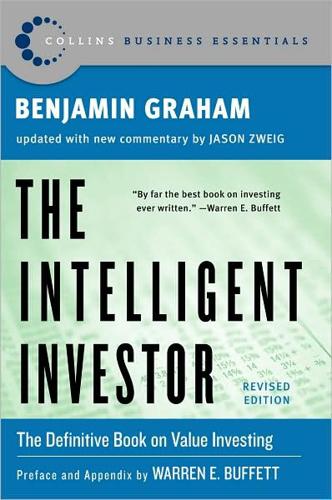
The Intelligent Investor (Collins Business Essentials)
by
Benjamin Graham
and
Jason Zweig
Published 1 Jan 1949
It then proceeded to lose 79.1% in 2000, 56.4% in 2001, and 13% in 2002—a cumulative collapse of 92%. That loss may have made Mr. Jacob’s investors even older and wiser than it made him. † Intriguingly, the disastrous boom and bust of 1999–2002 also came roughly 35 years after the previous cycle of insanity. Perhaps it takes about 35 years for the investors who remember the last “New Economy” craze to become less influential than those who do not. If this intuition is correct, the intelligent investor should be particularly vigilant around the year 2030. * Today’s equivalent of Graham’s “scarce exceptions” tend to be open-end funds that are closed to new investors—meaning that the managers have stopped taking in any more cash.

The Innovators: How a Group of Inventors, Hackers, Geniuses and Geeks Created the Digital Revolution
by
Walter Isaacson
Published 6 Oct 2014
Over the course of more than three decades, the federal government, working with private industry and research universities, had designed and built a massive infrastructure project, like the interstate highway system but vastly more complex, and then threw it open to ordinary citizens and commercial enterprises. It was funded primarily by public dollars, but it paid off thousands of times over by seeding a new economy and an era of economic growth. Tim Berners-Lee (1955– ). Marc Andreessen (1971– ). Justin Hall (1974– ) and Howard Rheingold (1947– ) in 1995. CHAPTER ELEVEN THE WEB There was a limit to how popular the Internet could be, at least among ordinary computer users, even after the advent of modems and the rise of online services made it possible for almost anyone to get connected.
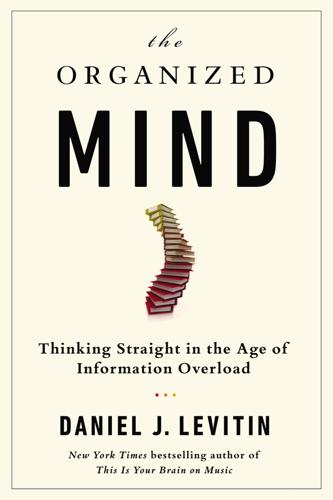
The Organized Mind: Thinking Straight in the Age of Information Overload
by
Daniel J. Levitin
Published 18 Aug 2014
And any fact of this sort that you haven’t committed to memory is just a few hundred milliseconds from finding through a Web search. Performing a quick check of the plausibility of numerical information is one of the easiest and most important parts of critical thinking. If someone says that 400 million people voted in the last U.S. federal election, that a new economy car has a top speed of four hundred miles per hour, or that so-and-so lost fifty pounds in two days with a juice fast, your general knowledge of the world and your inherent numeracy should raise a red flag about these numerical values. One of the most important skills, then, that we can teach our children is to think about numbers logically and critically, and enable this sort of querying and verification.

Money Changes Everything: How Finance Made Civilization Possible
by
William N. Goetzmann
Published 11 Apr 2016
Were stocks booming because of the invention of the radio, the widespread adoption of the automobile, the emergence of public air travel, and myriad other changes to modern life? In a period when old technology was losing and new technology was winning, perhaps investors placed a premium on companies that were ahead of the curve. That is also, of course, the story of the Tech Bubble of the 1990s. New economy stocks shot up in the expectation that they would become dominant companies. Nicholas tested his theory in an interesting way.16 He took all the patents by American companies in the 1920s and then looked decades into the future to see which patents turned out to be valuable. He calls this “knowledge capital.”

Four Battlegrounds
by
Paul Scharre
Published 18 Jan 2023
Holds Naval Exercises with Allies in Asia amid China Tension,” Reuters, July 21, 2020, https://www.reuters.com/article/us-india-usa/u-s-holds-naval-exercises-with-allies-in-asia-amid-china-tension-idUSKCN24M0RB. 76restructure global supply chains: Katrin Hille, “US and Taiwan to Work on Reshaping Supply Chains Away from China,” Financial Times, September 4, 2020, https://www.ft.com/content/64be66cd-91eb-4862-a8fe-7c998b2e4770. 76trilateral supply chain resilience initiative: Dipanjan Roy Chaudhurhy, “India-Japan-Australia Decide to Launch Resilient Supply Chain Initiative in the Indo-Pacific Region,” Economic Times, September 2, 2020, https://economictimes.indiatimes.com/news/economy/foreign-trade/india-japan-australia-decide-to-launch-resilient-supply-chain-initiative-in-the-indo-pacific-region/articleshow/77870346.cms. 76$2.2 billion to incentivize companies: David Arase, “Tokyo Prods Japanese Firms to Leave China,” interview by Mercy A. Kuo, The Diplomat, May 5, 2020, https://thediplomat.com/2020/05/tokyo-prods-japanese-firms-to-leave-china/; Isabel Reynolds and Emi Urabe, “Japan to Fund Firms to Shift Production Out of China,” Bloomberg, April 8, 2020, https://www.bloomberg.com/news/articles/2020-04-08/japan-to-fund-firms-to-shift-production-out-of-china. 76French pharmaceutical companies: Ail Laidi, “Covid-19 Forces France to Look at Relocating Its Pharmaceutical Industry,” France 24, May 14, 2020, https://www.france24.com/en/20200514-covid-19-forces-france-to-look-at-relocating-its-pharmaceutical-industry. 76reduce American dependency on China: Lin Yang, “Pandemic Exposes Perils of Global Reliance on China for Drug Supplies,” voanews.com, May 20, 2020, https://www.voanews.com/science-health/pandemic-exposes-perils-global-reliance-china-drug-supplies; David J.
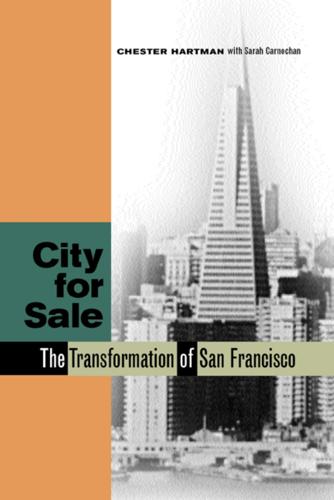
City for Sale: The Transformation of San Francisco
by
Chester W. Hartman
and
Sarah Carnochan
Published 15 Feb 2002
Some observers of the Bay Area situation are not so sanguine as to believe it couldn’t happen here.”215 The horrible consequences that squeezing out the poor may cause are captured eloquently in this summary paragraph by the BAC: “Imagine: a society in which everyone can afford to drive a BMW or Mercedes but there’s no one to pump the gas.”216 Whether there’s anyone left to pump the gas remains to be seen. As of early 2002, the dot-com tsunami has abated considerably and dramatically, giving rise to front-page headlines of the type gracing the March 26, 2001, New York Times: “With New Economy Chilling, San Francisco’s Party Fizzles,” and from the March 27, 2001, Wall Street Journal, “Home Prices Are Beginning to Decline in Upscale San Francisco Neighborhoods” (although the story reports the mind-boggling statistic that the median home price the month before was $512,500). Dot-com firms are folding by the dozens, relieving the office space crunch South of Market, in the Mission and elsewhere downtown.

The Marshall Plan: Dawn of the Cold War
by
Benn Steil
Published 13 Feb 2018
Tcherneva, Pavlina. “A Global Marshall Plan for Joblessness?” New Economic Perspectives. May 12, 2016. http://neweconomicperspectives.org/2016/05/global-marshall-plan-joblessness.html. Thompson, Mark. “Soros: Ukraine Needs EU Marshall Plan.” CNNMoney. March 12, 2014. http://money.cnn.com/2014/03/12/news/economy/ukraine-europe-soros/. Time. “Cotton’s Clayton.” August 17, 1936. Time. “The Year of Decision.” January 5, 1948. Time. “THE CONGRESS: Fateful Calendar.” January 12, 1948. Time. “The Best Bargain the American People Ever Bought.” April 11, 1949. Time. “I Am an Optimist.” June 4, 1990. Tóth, Csaba.

Britain at Bay: The Epic Story of the Second World War: 1938-1941
by
Alan Allport
Published 2 Sep 2020
Baldwin’s most important political achievement in the 1930s was to persuade enough working-class voters – half of them, roughly – that their interests coincided with those of men like Alfred Roberts.32 This was no mean feat at a time when 15 per cent of the nation’s insured workers, most of them manual labourers, were on the dole.33 He was able to take advantage of the ambivalent attitude that the manual workers of the booming new economy had about their place in the class structure in the 1930s. The employees of companies like Morris Motors and GEC, non-unionised and prospering under the National Government’s direction, did not feel any particular solidarity with the cotton weavers and coal miners of the beleaguered north. If (as they saw it) Lancashire and Tyneside’s workers, egged on by fanatical shop stewards, had fecklessly priced themselves out of their own jobs, then that was their problem, not Coventry’s.34 Labour and the trade unions, by this view, spoke for the selfish sectional interests of one strain of the working class alone.

Collapse
by
Jared Diamond
Published 25 Apr 2011
Chapter 16 Some books, published since 2001, that provide an overview of current environmental problems and an introduction to the large literature on this subject include: Stuart Pimm, The World According to Pimm: A Scientist Audits the Earth (New York: McGraw-Hill, 2001); Lester Brown's three books Eco-economy: Building an Economy for the Earth (New York: Norton, 2001), Plan B: Rescuing a Planet Under Stress and Civilization in Trouble (New York: Norton, 2003), and State of the World (New York: Norton, published annually since 1984); Edward Wilson, The Future of Life (New York: Knopf, 2002); Gretchen Daily and Katherine Ellison, The New Economy of Nature: The Quest to Make Conservation Profitable (Washington, D.C.: Island Press, 2002); David Lorey, ed., Global Environmental Challenges of the Twenty-first Century: Resources, Consumption, and Sustainable Solutions (Wilmington, Del: Scholarly Resources, 2003); Paul Ehrlich and Anne Ehrlich, One with Nineveh: Politics, Consumption, and the Human Future (Washington, D.C.: Island Press, 2004); and James Speth, Red Sky at Morning: America and the Crisis of the Global Environment (New Haven: Yale University Press, 2004).
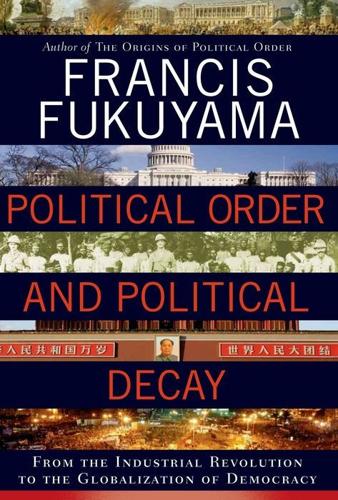
Political Order and Political Decay: From the Industrial Revolution to the Globalization of Democracy
by
Francis Fukuyama
Published 29 Sep 2014
Particularly in the United States, politicians intervened to weaken the power of trade unions and to otherwise increase the flexibility of labor markets. Individuals were advised to embrace disruptive change and were told that they would find better opportunities as knowledge workers doing creative and interesting things in the new economy. France and Italy stood at the other end of this spectrum, seeking to protect middle-class jobs by imposing onerous rules on companies attempting to lay off workers. By not recognizing the need for adjustment in work rules and labor conditions, they stopped job loss in the short run while losing competitiveness to other countries in the long run.
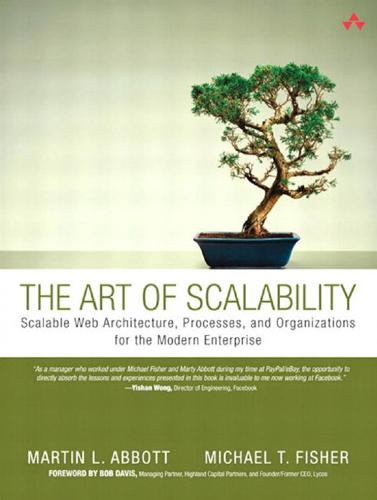
The Art of Scalability: Scalable Web Architecture, Processes, and Organizations for the Modern Enterprise
by
Martin L. Abbott
and
Michael T. Fisher
Published 1 Dec 2009
Are you increasing the switching costs for your suppliers? Are you changing the likelihood that your customers or suppliers will use substitutes rather than you or a competitor? Are you decreasing exit barriers for the competition or making it harder for new competitors to compete against you? Does this create new economies of scale for you? These are but some of the questions you should be able to answer to be comfortable with a build over a buy decision. In answering these questions, or going through a more formal analysis, recognize your natural bias toward believing that you can create competitive differentiation.
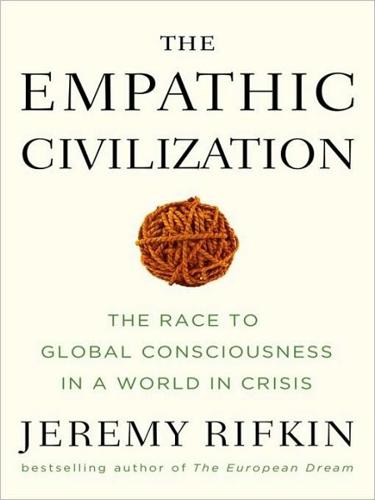
The Empathic Civilization: The Race to Global Consciousness in a World in Crisis
by
Jeremy Rifkin
Published 31 Dec 2009
Improved living conditions, brought on by industrial development, have shaken the foundation of the more traditional patriarchal worldview that characterized much of history. The Industrial Revolution spurred public schooling and mass literacy, preparing people for professional, technical, and vocational skills required by the new economy. These new industrial skills have liberated millions of individuals from older communal bonds by allowing them to contract for their own wage-labor and become more independent. The increasing differentiation of skills and wage-labor has nurtured a new sense of individual freedom and selfhood. As individuals in industrializing and urbanizing societies become more productive, wealthy, and independent, their values orientation shift from survival values to materialist values and eventually postmaterialist, self-expression values.
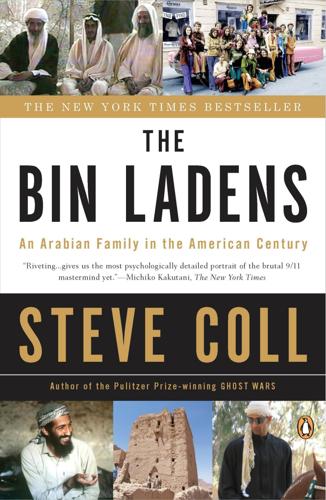
The Bin Ladens: An Arabian Family in the American Century
by
Steve Coll
Published 29 Mar 2009
Above all, his planes gave him freedom—to live as he wished, to go where he pleased. As one of his Lebanese friends summed it up: “Salem believed in his Learjet and his MU-2 and his jeans and guitar and harmonica.”27 IT WAS AN APPEALING CREED, but an expensive one. To live this way, Salem needed to adapt his family’s strategy to better profit from the new economy of the oil boom. European and American corporations swarmed into Saudi Arabia during the 1970s. They hawked televisions, telephones, fancy cars, air conditioners, and dishwashers—all the badges of modern consumerism. Saudi law required these firms to sell through local agents. Saudi merchant families competed to sign up agencies with the most desirable brands, a pathway to instant profits.

Fall Out: A Year of Political Mayhem
by
Tim Shipman
Published 30 Nov 2017
But what kind of Brexit is not. The choice: Tory reckless Brexit • Britain a low-wage tax haven • Workers’ rights ‘unsustainable’ (Liam Fox) Or a people’s Brexit • Access to the single market to protect jobs and living standards • Workers’ rights and consumer and environmental standards secured • Building a new economy – investing in infrastructure, skills, new technology, green industries Tories – evading scrutiny Seven years of Tory austerity, aided by LibDems, has meant: • Economic failure • Most families worse off • NHS and public services cut and plundered by privatisation • Housebuilding at its lowest since 1920s • Attacks on disabled and other vulnerable groups • Schools facing cuts and rising class sizes Tories – a Britain only for the richest – Tax handouts (2016–2022) • Corporation Tax – £63.8 billion • Inheritance Tax – £3.6 billion • Capital Gains Tax – £0.8 billion • Bank Levy – £5.4 billion Labour’s core theme Instead of a country run for the rich … Labour wants a Britain where all of us can lead richer lives Labour – 10-day policy ‘blitz’ just a taster • Free primary school meals to help learning and health • Increasing the carer’s allowance • Giving pensioners dignity and security • An environment for small businesses to grow • A £10 minimum wage • Ending high street bank closures Labour – a real alternative for Britain Core strategy for investment, job creation and upgrading the economy • A national investment bank • Regional investment banks • Modernising infrastructure • Creating a high-skill, high-tech, green economy • Employment rights for good jobs The challenge we face Polling advice: ‘Party is in a weak position with undecided and considerers, and simply attacking the Tories tends only to worsen our position.’
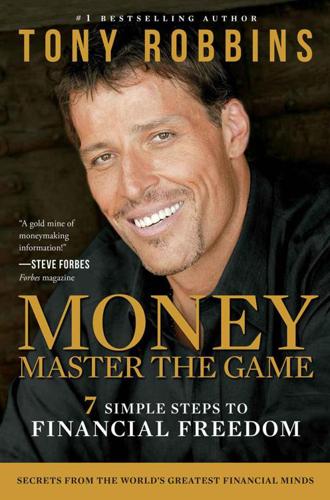
MONEY Master the Game: 7 Simple Steps to Financial Freedom
by
Tony Robbins
Published 18 Nov 2014
Today Ray is head of engineering development for Google. But I wanted to write a book that went beyond the psychology and science of achievement to come up with a real plan, with real tools that you could use to build a better future for yourself and your family. It would be a handbook, a blueprint, an owner’s manual for the new economy. As I began to reassociate to the power of a book, I thought, “I need to put these answers in a form that’s available to anyone.” And with today’s technology, this book has a few great advantages to help push you along the way. It has electronic segments where you can go online to see some of the men and women I interviewed and hear their words.

The Europeans: Three Lives and the Making of a Cosmopolitan Culture
by
Orlando Figes
Published 7 Oct 2019
Their biographies are woven through the narrative, which follows them around Europe (between them they lived at different times in France, Spain, Russia, Germany and Britain, and travelled widely through the rest of it), engages with those people whom they knew (almost everyone of any real importance on the European cultural scene), and explores those issues that affected them as artists and promoters of the arts. In their different ways, Turgenev and the Viardots were figures in the arts adapting to the market and its challenges. Pauline had been born into a family of itinerant singers, so commercial enterprise was in her blood; but she was extremely skilful in her exploitation of the new economy and, as a woman, unusually independent for this patriarchal age. Louis acted as her manager in the early years of their marriage. As the director of the Théâtre Italien, one of Europe’s major opera houses, he had quickly learned how to operate in a free market, but his business acumen was always moderated by an academic temperament.
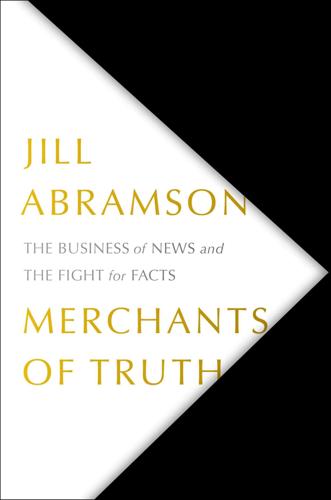
Merchants of Truth: The Business of News and the Fight for Facts
by
Jill Abramson
Published 5 Feb 2019
Mastromonaco was named to the senior position of chief operating officer and charged with creating a management structure, a job Smith described as “a nightmare for most status-quo managers.” What qualified her for the role, he said, was that “the only thing in this world crazier and more freaky than Vice right now is the U.S. government.” Despite her oversight, there was still chaos. With clients such as Facebook, Google, Dell, and other new-economy giants, Vice’s ad revenue and licensing fees were soaring, but its expenses were out of control and media analysts doubted whether the company was profitable. Because it was privately held—Smith controlled 90 percent—it didn’t have to file its finances publicly. Nonetheless investors kept coming to Brooklyn in their town cars.
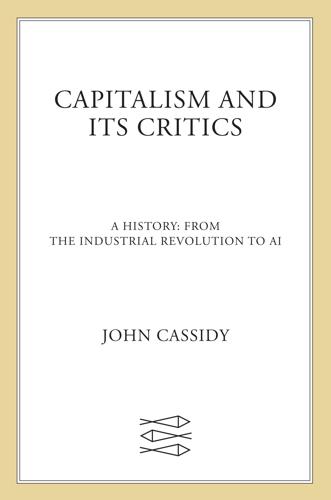
Capitalism and Its Critics: A History: From the Industrial Revolution to AI
by
John Cassidy
Published 12 May 2025
“How comes it,” he asked, “that a nation abounding more than any other in the rude materials of wealth, in machinery, dwellings, and food, in intelligent and industrious producers, with all the apparent means of happiness … should still pine in privation?”16 The answer, Thompson went on, was to be found in the basic structure of the new economy: the rigid dividing line between propertyless “producers” of wealth—i.e., the workers—and the property-owning elite of “capitalists,” who owned the factories and machinery used in the production process. “The tendency of the existing arrangement of things as to wealth is to enrich a few at the expense of the mass of the producers,” Thompson stated bluntly.17 Having defined the nature of the problem as he saw it, Thompson shifted into prescriptive mode, setting down fifteen “natural laws” on which “all just distribution of wealth ought to be founded.”

Chokepoints: American Power in the Age of Economic Warfare
by
Edward Fishman
Published 25 Feb 2025
GO TO NOTE REFERENCE IN TEXT given juicy, no-bid contracts: Karina Orlova, “Putin Looks Out for His Friends,” The American Interest, May 22, 2016, www.the-american-interest.com/2016/05/22/putin-looks-out-for-his-friends. GO TO NOTE REFERENCE IN TEXT world’s worst-performing economies: Mark Thompson, “Russia: One of the 10 Worst Economies in 2015,” CNN, January 26, 2016, money.cnn.com/2016/01/25/news/economy/russia-10-worst-emerging-economies/index.html. GO TO NOTE REFERENCE IN TEXT Inflation spiked to more: Holly Ellyat and Geoff Cutmore, “Why Russian Inflation Will Fall ‘Abruptly’ Next Year,” CNBC, October 13, 2015, www.cnbc.com/2015/10/13/russian-inflation-nabiullina-forecast.html.
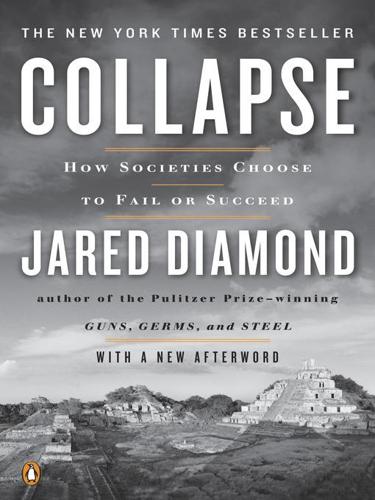
Collapse: How Societies Choose to Fail or Succeed
by
Jared Diamond
Published 2 Jan 2008
Chapter 16 Some books, published since 2001, that provide an overview of current environmental problems and an introduction to the large literature on this subject include: Stuart Pimm, The World According to Pimm: a Scientist Audits the Earth (New York: McGraw-Hill, 2001); Lester Brown’s three books Eco-economy: Building an Economy for the Earth (New York: Norton, 2001), Plan B: Rescuing a Planet Under Stress and Civilization in Trouble (New York, Norton: 2003), and State of the World (New York: Norton, published annually since 1984); Edward Wilson, The Future of Life (New York: Knopf, 2002); Gretchen Daily and Katherine Ellison, The New Economy of Nature: The Quest to Make Conservation Profitable (Washington, D.C.: Island Press, 2002); David Lorey, ed., Global Environmental Challenges of the Twenty-first Century: Resources, Consumption, and Sustainable Solutions (Wilmington, Del.: Scholarly Resources, 2003); Paul Ehrlich and Anne Ehrlich, One with Nineveh: Politics, Consumption, and the Human Future (Washington, D.C.: Island Press, 2004); and James Speth, Red Sky at Morning: America and the Crisis of the Global Environment (New Haven: Yale University Press, 2004).

Fodor's Hawaii 2012
by
Fodor's Travel Publications
Published 15 Nov 2011
In ancient times, this area was known for its bountiful fishing (especially lobster) and its seaside cliffs. Pu‘u Keka‘a, today incorrectly referred to as “Black Rock,” was a lele, a place in ancient Hawai‘i from which souls leaped into the afterlife. (Today this site is near the Sheraton Maui.) But times changed and the sleepy fishing village was washed away by the wave of Hawai‘i’s new economy: tourism. | 2435 Kā‘anapali Pkwy., Kā‘anapali | 96761. Whalers Village. While the kids hit Honolua Surf Company, mom can peruse Louis Vuitton, Coach, and several fine jewelry stores at this casual, classy mall fronting Kā‘anapali Beach. Pizza and Häagen-Dazs ice cream are available in the center courtyard.

Fodor's Hawaii 2013
by
Fodor's
Published 22 Jul 2012
In ancient times, this area was known for its bountiful fishing (especially lobster) and its seaside cliffs. Puu Kekaa, today incorrectly referred to as “Black Rock,” was a lele |a place in ancient Hawaii from which souls leaped into the afterlife. (Today this site is near the Sheraton Maui.) But times changed and the sleepy fishing village was washed away by the wave of Hawaii’s new economy: tourism. | Kaanapali | 96761. Whalers Village. While the kids hit Honolua Surf Company, Mom can peruse shops such as Louis Vuitton, Sephora, and Coach, as well as art galleries and several fine jewelry stores, at this casual, classy mall fronting Kaanapali Beach. Pizza and Häagen-Dazs ice cream are available in the center courtyard.

The Atlantic and Its Enemies: A History of the Cold War
by
Norman Stone
Published 15 Feb 2010
However, here was now an empire based on mountains of debt, with mountains of profit, from media of all sorts which could make or break governments. At around the same time, in London and New York, banks moved into the same world; vast fortunes began to appear from thin air. The Reagan-Thatcher era was associated with a new economy, in which industry of the classic sort meant a degree of backwardness, much as had happened with peasant agriculture in the later nineteenth century. Brazils and Koreas metal-bashed; Turkey produced 90 per cent of the televisions sold in England, and the main road from Istanbul to Kayseri and Antep was choked with container lorries bearing goods to central Europe.

This Sceptred Isle
by
Christopher Lee
Published 19 Jan 2012
Moreover, this increased trade had to be carried so there would be a need for more ships: the shipyards would do good business and the shipowners even more. Here then was a perfect example of the simplest economic rule of supply and demand. Even more than that, it was the establishment over a relatively short period of a new form of economics and a new economy for the British. This was British Empire plc. Was this the beginning of the British rape of colonized lands and people? We might as well ask if the agricultural system, from its manorial and feudal beginnings, was a rape of these lands and an exploitation of the poorest people? The answer is yes, of course it was.
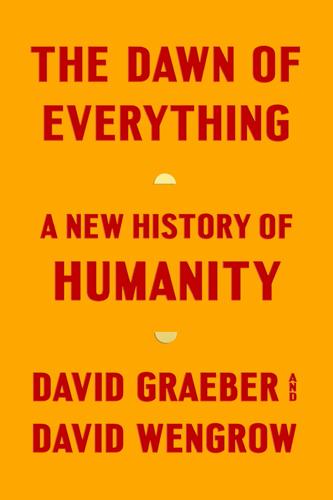
The Dawn of Everything: A New History of Humanity
by
David Graeber
and
David Wengrow
Published 18 Oct 2021
Still, whatever the reasons, over thousands of years such local innovations – everything from non-shattering wheat to docile sheep – were exchanged between villages, producing a degree of uniformity among a coalition of societies across the Middle East. A standard ‘package’ of mixed farming emerged, from the Iranian Zagros to the eastern shores of the Mediterranean, and then spread beyond it, albeit, as we’ll see, with very mixed success. But from its earliest beginnings, farming was much more than a new economy. It also saw the creation of patterns of life and ritual that remain doggedly with us millennia later, and have since become fixtures of social existence among a broad sector of humanity: everything from harvest festivals to habits of sitting on benches, putting cheese on bread, entering and exiting via doorways, or looking at the world through windows.

Rick Steves Florence & Tuscany 2017
by
Rick Steves
Published 8 Nov 2016
(It wasn’t what you believed, but with whom you were allied.) The names could mean something different depending on the particular place and time. Guelphs Ghibellines Supported Pope Supported Emperor Consisted of middle-class merchants and craftsmen Consisted of aristocrats of feudal order Favored an urban, new economy Based in a rural, traditional economy Wanted the independence of city-states under local Italian leaders Wanted the unification of small states under traditional dukes and kings By the 1200s, Florence was beginning to surpass its neighbors through shrewd diplomacy, military conquest, and sheer economic might.

The Cold War: A World History
by
Odd Arne Westad
Published 4 Sep 2017
A younger generation of secret police officers realized both that change was inevitable and that they had skills and information that would serve them well as individuals whatever the outcome of the political struggles at the top. By late 1990 a number of them were in touch with managers of enterprises planning to privatize or with foreigners hoping to invest in a new economy. Gorbachev’s main problem was therefore not disloyality in the “ministries of power” but the political contest going on within the Soviet leadership. As CPSU general secretary he was increasingly caught between two groups. His liberal advisers—Aleksandr Iakovlev, Georgii Shakhnazarov, Anatolii Cherniaev, and others—wanted him to ditch the Communist Party, call a snap union-wide presidential election, and contest it as a democratic socialist.

A History of Zionism
by
Walter Laqueur
Published 1 Jan 1972
According to this school of thought the workers had shown an inability to make ends meet in their agricultural settlements and even less aptitude in their building cooperatives and industrial enterprises. The Socialist leaders did not deny that there had been substantial deficits, but they argued that they had been engaged in pioneering work, building the foundations of a new economy, and that consequently profits could not be expected for a long time to come. Private enterprise would never have been ready to invest in projects which were of the greatest national importance but from which few if any immediate rewards could be expected. These arguments were rejected by the fourteenth and fifteenth Zionist congresses.
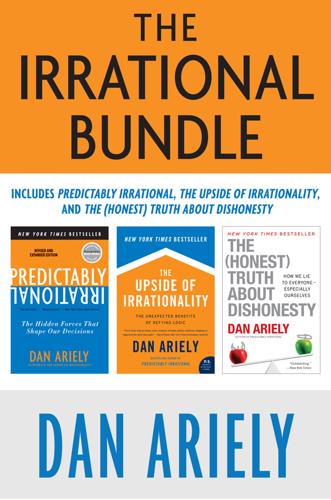
The Irrational Bundle
by
Dan Ariely
Published 3 Apr 2013
While I was talking to John, I was especially interested in his description of his own wishful blindness. Even though he consulted for Enron while the company was rapidly spinning out of control, he said he hadn’t seen anything sinister going on. In fact, he had fully bought into the worldview that Enron was an innovative leader of the new economy right up until the moment the story was all over the headlines. Even more surprising, he also told me that once the information was out, he could not believe that he failed to see the signs all along. That gave me pause. Before talking to John, I assumed that the Enron disaster had basically been caused by its three sinister C-level architects (Jeffrey Skilling, Kenneth Lay, and Andrew Fastow), who together had planned and executed a large-scale accounting scheme.
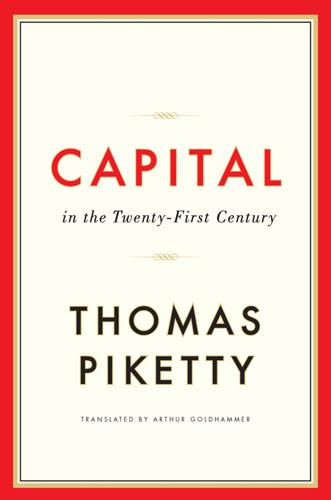
Capital in the Twenty-First Century
by
Thomas Piketty
Published 10 Mar 2014
For instance, the liberal economist Charles Dunoyer, who served as a prefect under the July Monarchy, had this to say in his 1845 book De la liberté du travail (in which he of course expressed his opposition to any form of labor law or social legislation): “one consequence of the industrial regime is to destroy artificial inequalities, but this only highlights natural inequalities all the more clearly.” For Dunoyer, natural inequalities included differences in physical, intellectual, and moral capabilities, differences that were crucial to the new economy of growth and innovation that he saw wherever he looked. This was his reason for rejecting state intervention of any kind: “superior abilities … are the source of everything that is great and useful.… Reduce everything to equality and you will bring everything to a standstill.”8 One sometimes hears the same thought expressed today in the idea that the new information economy will allow the most talented individuals to increase their productivity many times over.
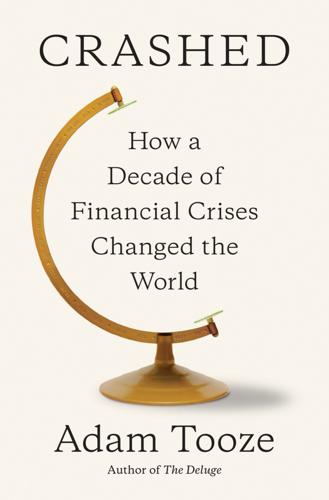
Crashed: How a Decade of Financial Crises Changed the World
by
Adam Tooze
Published 31 Jul 2018
A boast confirmed by economic analysis that suggests that the haircut was, in fact, minimal. J. Zettelmeyer, C. Trebesch and M. Gulati, “The Greek Debt Restructuring: An Autopsy,” Economic Policy 28, no. 75 (2013), 513–563. 62. For this and the following, “EU Leaders Must Now Persuade Investors That New Drive Can Work,” July 22, 2011, http://business.financialpost.com/news/economy/eu-leaders-must-now-persuade-investors-that-new-drive-can-work. 63. R. Milne and J. Wilson, “Deutsche Bank Hedges Italian Risk,” Financial Times, July 26, 2011. 64. V. Damiani, “Italian Prosecutor Investigates Deutsche Bank over 2011 Bond Sale,” Reuters, May 6, 2016. 65. T. E. Mann and N.

A History of Modern Britain
by
Andrew Marr
Published 2 Jul 2009
It was a time of immense optimism, despite warnings that the whole digital world would collapse because of the ‘millennium bug’ – the alleged inability of computers to deal with the last two digits in ‘2000’, which was taken very seriously at the time. In fact, the bubble was burst by its own excessive expansion, like any bubble, and after a pause and a lot of ruined dreams, the ‘new economy’ roared on again. By 2000, according to the Office of National Statistics, around 40 per cent of Britons had accessed the internet at some time. Cyber frenzy swept the country, and business; three years later, nearly half of British homes were connected. By 2004 the spread of broadband had brought a new mass market in downloading music and video online.
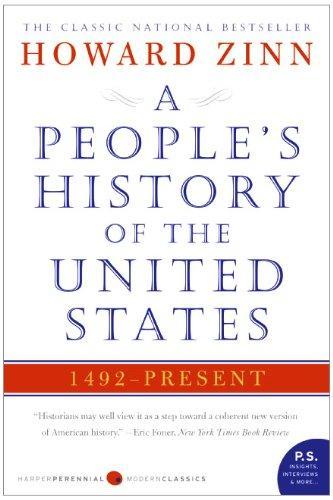
A People's History of the United States
by
Howard Zinn
Published 2 Jan 1977
It was in the 1820s and 1830s, Nancy Cott tells us (The Bonds of Womanhood), that there was an outpouring of novels, poems, essays, sermons, and manuals on the family, children, and women’s role. The world outside was becoming harder, more commercial, more demanding. In a sense, the home carried a longing for some utopian past, some refuge from immediacy. Perhaps it made acceptance of the new economy easier to be able to see it as only part of life, with the home a haven. In 1819, one pious wife wrote: “. . . the air of the world is poisonous. You must carry an antidote with you, or the infection will prove fatal.” All this was not, as Cott points out, to challenge the world of commerce, industry, competition, capitalism, but to make it more palatable.
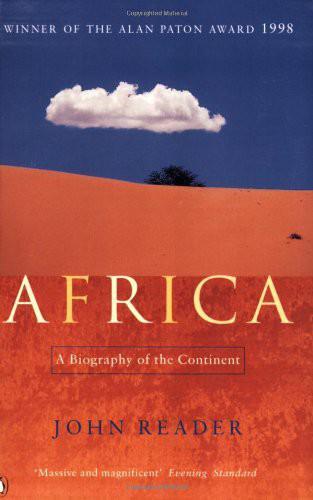
Africa: A Biography of the Continent
by
John Reader
Published 5 Nov 1998
During the colonial period, and especially under the apartheid rule which succeeded colonial government in South Africa, the spread of Bantu-speakers was commonly depicted31 as a mass movement of people and cattle, sweeping all before them, conquering new territory. In fact, there were no massive waves of migration into southern Africa. There was no conquest, but rather ‘a migratory drift’, and gradual territorial expansion which absorbed the region's earlier occupants into a new economy.32 In the cycles of change, success, and failure that no society can avoid, some of the Khoisan hunters and gatherers acquired cattle and became pastoralists; some Bantu herders lost their cattle and resorted to hunting and gathering. Everywhere, however, a recognition of property and ownership laid the foundations of an economy that was based on trade and a social order that respected wealth.
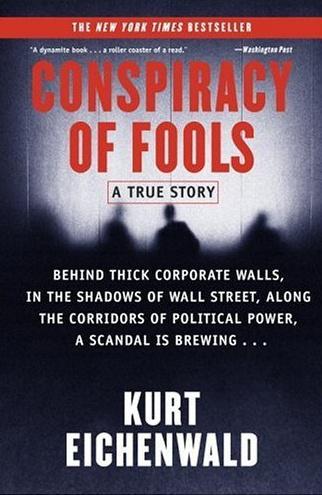
Conspiracy of Fools: A True Story
by
Kurt Eichenwald
Published 14 Mar 2005
And they felt sure management would work through it—with asset sales, restructurings, whatever. The billions of dollars in debts associated with those deals were mostly off balance sheet. That was the past. Enron had to move to the future. And they had a plan. Ramp up Enron Communications. The Internet was hot, the new economy was everything. Push hard, hire employees, invest plenty. That would catapult Enron ahead. But they needed somebody to take charge, to lead the troops onto the next battlefield. They knew exactly who it should be. At three on November 18, Enron’s directors gathered for a special meeting. Their mood was sharp with anticipation.
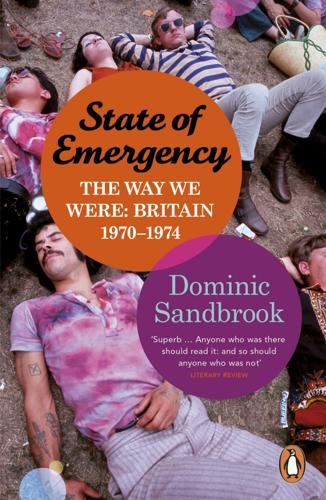
State of Emergency: The Way We Were
by
Dominic Sandbrook
Published 29 Sep 2010
In the long run, however, the title was more fitting than any of them realized.56 But it would be a misleading portrait of Britain that focused entirely on decline, decay and disappointment. Change brought prosperity as well as poverty: in East Anglia, for example, the growth of agri-business, the opening of the M11 motorway and the development of a new economy based on technology and computers brought unparalleled growth to old market towns such as Norwich and Ipswich. In Cambridge, the nation’s first science park opened in 1970 and proved a sensational success, hosting 25 technology firms by 1980 and more than 1,000 by the end of the century. Further east was an even more compelling success story: Felixstowe, already on its way to becoming the nation’s busiest container port, its workforce drawn from former agricultural labourers, its rapid growth a deterrent to the labour disputes that crippled London and Liverpool.
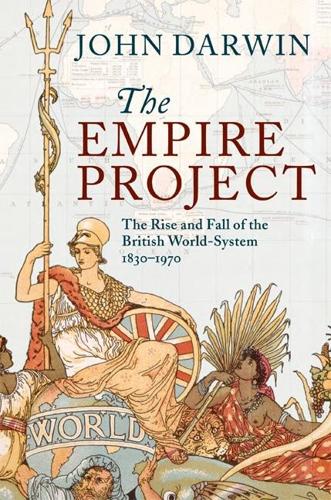
The Empire Project: The Rise and Fall of the British World-System, 1830–1970
by
John Darwin
Published 23 Sep 2009
London was the principal centre for insurance. Railway, mining and shipping enterprise also required the services of non-financial expertise: consulting engineers and other technical specialists. In short, there was scarcely any large commercial or financial venture linking Britain (and much of Continental Europe) to the ‘new economies’ of the wider world that, in one aspect or many, did not pass through a London agent. In a vast swathe of the world outside Europe and the United States, commercial development and even financial solvency turned upon decisions made in the City. Here was a plenitude of influence that matched that of Whitehall and Westminster, the political capital of the British system.

Crucible: The Long End of the Great War and the Birth of a New World, 1917-1924
by
Charles Emmerson
Published 14 Oct 2019
He calls for national rather than class consciousness to be the governing principle of society. He is dismissive of capitalists who fail to realise how crooked and corrupt capitalism has become. He pleads for the concept of the Volk–the ethno-national people of Germany–to be at the heart of building a new economy. The local reception is positive. Hitler’s speech is amongst the best received of the festival. He uses his moment in the limelight to make his pitch for ownership of the radical nationalist movement as a whole. ‘Our symbol’, he says, pointing to the swastika, ‘is not the symbol of an association; it is a victory banner’.
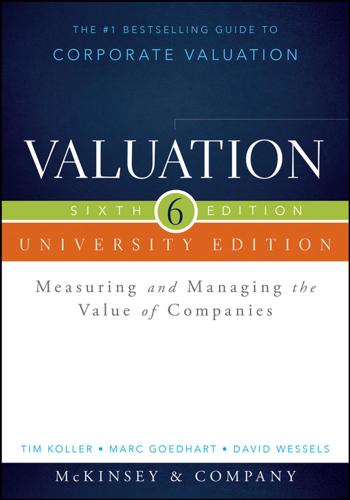
Valuation: Measuring and Managing the Value of Companies
by
Tim Koller
,
McKinsey
,
Company Inc.
,
Marc Goedhart
,
David Wessels
,
Barbara Schwimmer
and
Franziska Manoury
Published 16 Aug 2015
The events of the economic crisis that began in 2007, as well as the Internet boom and its fallout almost a decade earlier, have strengthened our conviction that the core principles of value creation are general economic rules that continue to apply in all market circumstances. Thus, the extraordinarily high anticipated profits represented by stock prices during the Internet bubble never materialized, because there was no “new economy.” Similarly, the extraordinarily high profits seen in the financial sector for the two years preceding the start of the 2007–2009 financial crisis were overstated, as subsequent losses demonstrated. The laws of competition should have alerted investors that those extraordinary profits couldn’t last and might not be real.

Costa Rica
by
Matthew Firestone
,
Carolina Miranda
and
César G. Soriano
Published 2 Jan 2008
Things didn’t remain quiet for long, however. With tourism on the rise in the 1990s, it wasn’t long before this modest mountain town became known for having access to some of the best white-water rafting on the planet. By the early 2000s, Turrialba was a simmering hot-bed of international rafters looking for Class-V thrills. But this new economy faced a troubled future. In the early part of the new millennium, the national power company (ICE) began to make good on a long-running plan to dam the lower Río Pacuare – the most popular stretch of white water in the country – to increase hydroelectric production. The dam, however, would destroy the rapids and, with them, part of Turrialba’s economy.
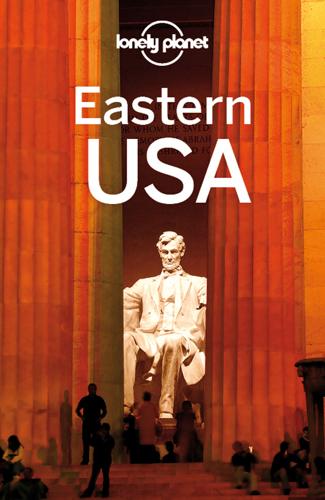
Eastern USA
by
Lonely Planet
Military spending and tax cuts created enormous federal deficits, which hampered the presidency of Reagan’s successor, George HW Bush. Despite winning the Gulf War – liberating Kuwait in 1991 after an Iraqi invasion – Bush was soundly defeated in the 1992 presidential election by Southern Democrat Bill Clinton. Clinton had the good fortune to catch the 1990s high-tech internet boom, which seemed to augur a ‘new economy’ based on white-collar telecommunications. The US economy erased its deficits and ran a surplus, and Clinton presided over one of America’s longest economic booms. Ronald Reagan broke ‘Tecumseh’s Curse’. Tecumseh was a Shawnee warrior from Ohio whom William Henry Harrison defeated at the Battle of Tippecanoe in 1811.
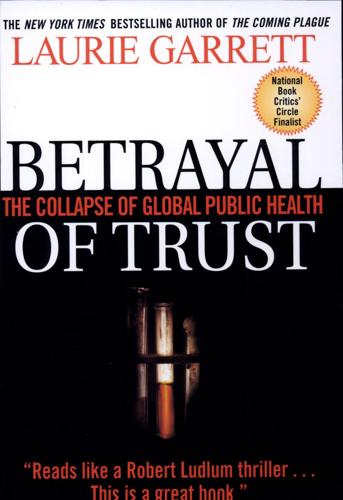
Betrayal of Trust: The Collapse of Global Public Health
by
Laurie Garrett
Published 15 Feb 2000
And sophisticated networks of gangsters and Gypsies, working with traditional drug traffickers from Nigeria, Afghanistan, Pakistan, and the Asian Golden Triangle, were moving across the newly porous borders behind the once-Iron Curtain. “If you look at stable economies [such as the United States] there has been little increase in drug use in recent years,” Bem said. “But these new economies are great opportunities for organized crime. And they are holding their prices way down at introductory levels.” Following universal rules of marketing, drug traffickers were creating clienteles in the region by selling everything from raw opium to heroin at rockbottom prices, more than tenfold lower than equivalent drug sales in New York City.
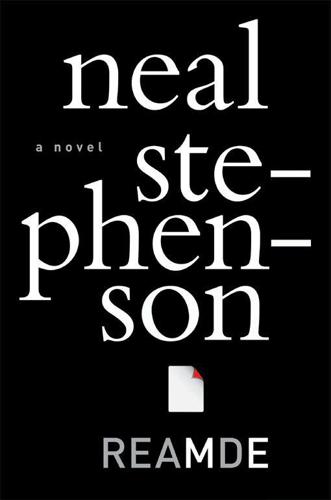
Reamde
by
Neal Stephenson
Published 19 Sep 2011
But there is a little snag. You see, the last Soviet soldier left Hungary in 1991. But there were other Russians who came in during the Cold War who took a little bit longer to leave.” “These guys,” Zula said, cocking her head in the direction of the neighboring plane. “Mafia, yes,” said Csongor. “So Step 1 of the new economy was that everything got very bad. Step 2 was that things got better and everyone obtained credit cards. And Step 3—” “Step 3 was credit card fraud,” said Peter. “Yes, and this was attempted in a number of different ways. Some better than others. The best of all ways is like this. A waiter in a restaurant has a little credit card reader in his pocket.

Ireland (Lonely Planet, 9th Edition)
by
Fionn Davenport
Published 15 Jan 2010
Outside the capital things are a little better, but not much: if you’re in a tourist hot zone, it’ll be reflected in the prices, which are only marginally better than in Dublin. * * * HOW MUCH? Irish Times €1.80 1km taxi fare €1.60 Cinema ticket €9.50 Admission to Gaelic football match €12-18 Aran sweater €55 * * * Although restaurants are closing down all over the country, the new economy hasn’t resulted in a marked decrease in the price of food. For less than €10, don’t expect much more than soup and what comes between two slices of bread. Very ordinary meals will cost €20 or more; the better restaurants won’t blink twice when charging €35 for fish in a fancy sauce. In Northern Ireland, the bite isn’t as deep.
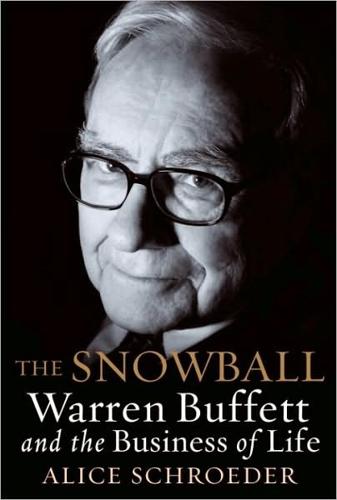
The Snowball: Warren Buffett and the Business of Life
by
Alice Schroeder
Published 1 Sep 2008
They were cashing in on all the leverage from the low interest rates the Federal Reserve had provided. So many people were raking in stock options and taking fees of two-and-twenty percent of other people’s money in private equity funds, hedge funds, and funds of funds, that billionaires were becoming as common as raccoons around a garbage can. A lot of the quick-bucks wealth of the new economy bothered Buffett because of the way it had been transferred in massive amounts from investors to middlemen without producing anything in return. The average investor was still getting—of course—the average return, but with all of these fees gouged out. One of Buffett’s least favorite ways for the rich to get richer was through stock options—since his famous “no” vote on the pay package at Salomon, no other board had ever asked him to serve on its compensation committee.

England
by
David Else
Published 14 Oct 2010
Today, however, it’s not the steel of the foundries, mills and forges that made the city’s fortune, or the canteens of cutlery that made ‘Sheffield steel’ a household name, but the steel of scaffolding and cranes, of modern sculptures and supertrams, and of new steel-framed buildings rising against the skyline. The steel industry that made the city famous is long since gone, but after many years of decline Sheffield is on the up again –like many of northern England’s cities it has grabbed the opportunities presented by urban renewal with both hands and is working hard to reinvent itself. The new economy is based on services, shopping and the ‘knowledge industry’ that flows from the city’s universities. This renaissance got off to a shaky start in 2000 when the city’s signature millennium project, the National Centre for Popular Music, closed down due to lack of visitors only 15 months after it opened.
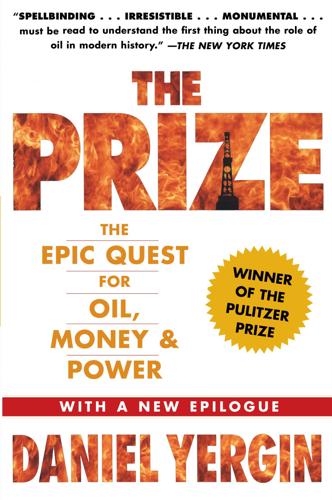
The Prize: The Epic Quest for Oil, Money & Power
by
Daniel Yergin
Published 23 Dec 2008
Despite the ferocity of the Standard assault, Nobel and the Rothschilds fought back fiercely and successfully, and Standard's executives watched with dismay as the region of what they ominously labeled "Russian competition" broadened across the map.[5] At 26 Broadway in New York City, some members of Standard's Executive Committee had been pushing for Standard to set up its own marketing companies in foreign countries, rather than sell to independent local merchants, so that it could compete more aggressively. Moreover, the development of bulk shipment in tankers brought new economies of scale to the business. John D. Rockefeller himself, exasperated with the slowness of decision, even wrote a chiding poem to the Executive Committee in 1885: We are neither old nor sleepy and must "Be up and doing, with a heart for any fate; Still achieving, still pursuing, learn to labor and to wait."

The Boundless Sea: A Human History of the Oceans
by
David Abulafia
Published 2 Oct 2019
The merger took place in 1934, the year that the Queen Mary was launched on the Clyde.20 This degree of government intervention was not unique: Dutch and German shipping companies were also shored up by the state, and in Germany government interference went a stage further, as Jews were forced out of their positions in the HAPAG company: ‘Jewish identity was purged from the collective memory of the firm, although the firm would have had no meaningful history without it.’21 Sir Percy Bates, chairman of Cunard White Star, looked back on the performance of the Queen Mary in 1941, when it and the Queen Elizabeth had been converted into troop ships, with proud nostalgia for its brief but brilliant pre-war career: I think the time has come for me to be more particular on the financial performance of Queen Mary . She is widely known as a masterpiece of British construction; it may not be equally appreciated that financially she has been very successful from the start, as the progress made in marine engineering has focused in Queen Mary a new economy in transportation across the Atlantic. Since 1922, when the full effect of the U.S. Immigration Quota Law first made itself felt, no steamer has ever made so much money in successive twelve months, as Queen Mary has done since being commissioned.22 It was not, though, simply a matter of profits.

The Rough Guide to Mexico
by
Rough Guides
Published 15 Jan 2022
Since then, Mazunte has been declared a reserve, and more sustainable, long-term ecotourism programmes have been encouraged. Centro Mexicano de la Tortuga Main road at the east end of the village • Wed–Sun 10am–2pm • Charge • Guided tours in Spanish every 15min • http://centromexicanodelatortuga.org The government-funded Centro Mexicano de la Tortuga is one of the programmes set up to create a new economy for Mazunte. It features an aquarium with some particularly large turtles and a turtle research centre; well worth the visit, especially as proceeds go towards the conservation of this majestic species. Cosméticos Naturales Main road through the village • Mon–Sat 9am–4pm, Sun 9am–2pm • http://cosmeticosmazunte.com Cosméticos Naturales, a cooperative of local families set up with help from companies such as The Body Shop, is another venture aiming to create a new sustainable economy.

1,000 Places to See in the United States and Canada Before You Die, Updated Ed.
by
Patricia Schultz
Published 13 May 2007
It was a time of transition in the Lehigh Valley, but the development of alternative industries and a vibrant preservation movement have combined to make a region that thrives today. Bethlehem is a mix of its three distinct eras, part 18th-century colonial museum, part 19th-and 20th-century industrial giant, and part 21st-century New Economy work-in-progress. But within the oldest section of town, off the north bank of the Lehigh River, lovely slate and brick sidewalks lead to 20-plus colonial-era buildings. The oldest, the Gemeinhaus, erected in 1741—and the largest 18th-century log building in the U.S.—is today the home of the Moravian Museum of Bethlehem.

Great Britain
by
David Else
and
Fionn Davenport
Published 2 Jan 2007
Today, however, it’s not the steel of the foundries, mills and forges that made the city’s fortune, or the canteens of cutlery that made ‘Sheffield steel’ a household name, but the steel of scaffolding and cranes, of modern sculptures and supertrams, and of new steel-framed buildings rising against the skyline. The steel industry that made the city famous is long since gone, but after many years of decline Sheffield is on the up again – like many of northern England’s cities it has grabbed the opportunities presented by urban renewal with both hands and is working hard to reinvent itself. The new economy is based on services, shopping and the ‘knowledge industry’ that flows from the city’s universities. Orientation The most interesting parts of Sheffield are clustered in the ‘Heart of the City’ district about 300m northwest of the train station (and immediately west of the bus station), a compact area outlined by Arundel Gate, Furnival St, Carver St, West St, Church St and High St.

USA Travel Guide
by
Lonely, Planet
Military spending and tax cuts created enormous federal deficits, which hampered the presidency of Reagan’s successor, George HW Bush. Despite winning the Gulf War – liberating Kuwait in 1991 after an Iraqi invasion – Bush was soundly defeated in the 1992 presidential election by Southern Democrat Bill Clinton. Clinton had the good fortune to catch the 1990s high-tech internet boom, which seemed to augur a ‘new economy’ based on white-collar telecommunications. The US economy erased its deficits and ran a surplus, and Clinton presided over one of America’s longest economic booms. In 2000 and 2004, George W Bush, the eldest son of George HW Bush, won the presidential elections so narrowly that the divided results seemed to epitomize an increasingly divided nation.